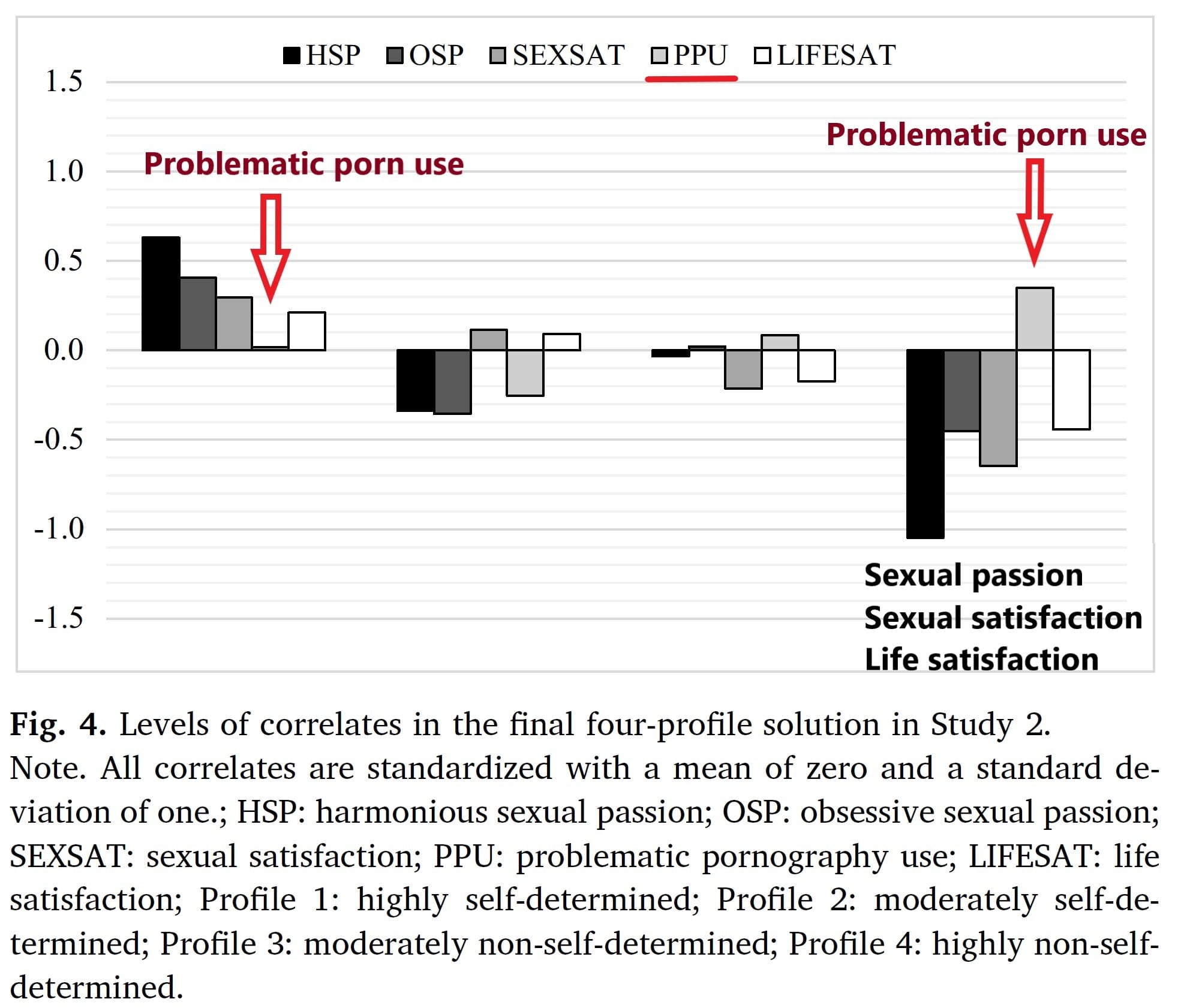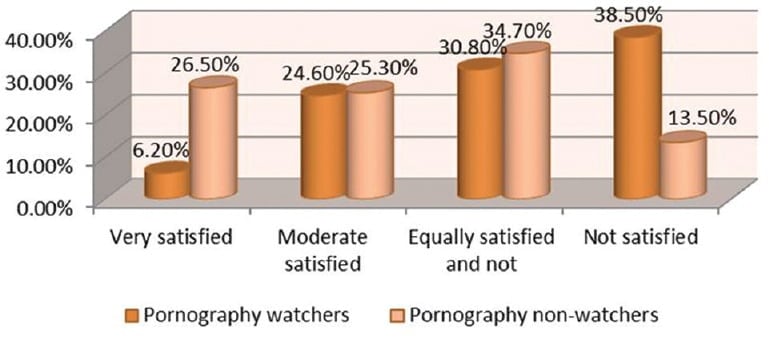Is Nicole Prause Influenced by the Porn Industry?
Introduction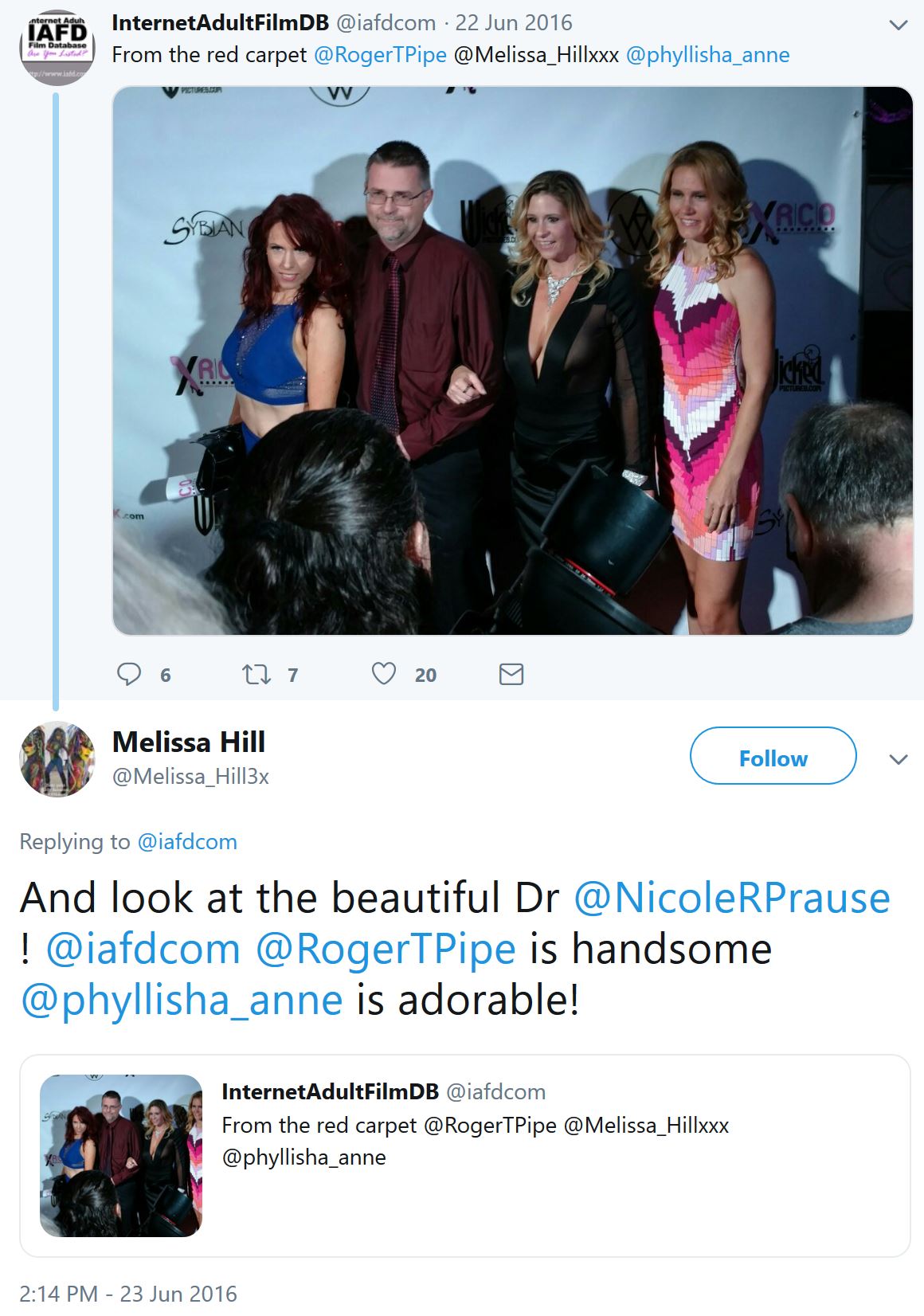
Is Nicole Prause Influenced by the Porn Industry?
In 2013 former UCLA researcher Nicole Prause began openly harassing, libeling and cyberstalking Gary Wilson. (Prause has not been employed by an academic institution since January, 2015.) Within a short time she also began targeting others, including researchers, medical doctors, therapists, psychologists, a former UCLA colleague, a UK charity, men in recovery, a TIME magazine editor, several professors, IITAP, SASH, Fight The New Drug, Exodus Cry, NoFap.com, RebootNation, YourBrainRebalanced, the academic journal Behavioral Sciences, its parent company MDPI, US Navy medical doctors, the head of the academic journal CUREUS, and the journal Sexual Addiction & Compulsivity (See – Numerous Victims of Nicole Prause’s Malicious Reporting and Malicious Use of Process)
While spending her waking hours harassing others, Prause cleverly cultivated – with zero verifiable evidence – a myth that she was “the victim” of most anyone who dared to disagree with her assertions surrounding porn’s effects or the current state of porn research (See: Nicole Prause’s fabrications of victim-hood exposed as groundless: she is the perpetrator, not the victim). To counter the ongoing harassment and false claims, YBOP was compelled to document some of Prause’s activities. Consider the following pages. (Additional incidents have occurred that we are not at liberty to divulge – as Prause’s victims fear further retribution.)
- Nicole Prause’s Unethical Harassment and Defamation of Gary Wilson & Others
- Nicole Prause’s Unethical Harassment and Defamation of Gary Wilson & Others (Page 2)
- Nicole Prause’s Unethical Harassment and Defamation of Gary Wilson & Others (Page 3)
- Nicole Prause’s Unethical Harassment and Defamation of Gary Wilson & Others (Page 4)
- Nicole Prause’s Unethical Harassment and Defamation of Gary Wilson & Others (Page 5)
- Victims of Nicole Prause’s Malicious Reporting and Malicious Use of Process.
- Nicole Prause & David Ley libelous claim that Gary Wilson was fired from Southern Oregon University
- Prause’s efforts to have Behavioral Sciences review paper (Park et al., 2016) retracted
- Article by University of Wisconsin student newspaper (The Racquet) posts false police report by Nicole Prause (March, 2019)
- Aggressive Trademark Infringement Waged by Porn Addiction Deniers (www.realyourbrainonporn.com)
- Nicole Prause, David Ley & @BrainOnPorn’s long history of harassing & defaming Alexander Rhodes of NoFap
- Prause’s efforts to silence Wilson foiled; her restraining order denied as frivolous & she owes substantial attorney fees in a SLAPP ruling
- Legal victories over serial harasser/defamer Nicole Prause: She’s the perpetrator, not the victim!
In the beginning Prause employed dozens of fake usernames to post on porn recovery forums, Quora, Wikipedia, and in the comment sections under articles. Prause rarely used her real name or her own social media accounts. That all changed after UCLA chose not to renew Prause’s contract (around January, 2015).
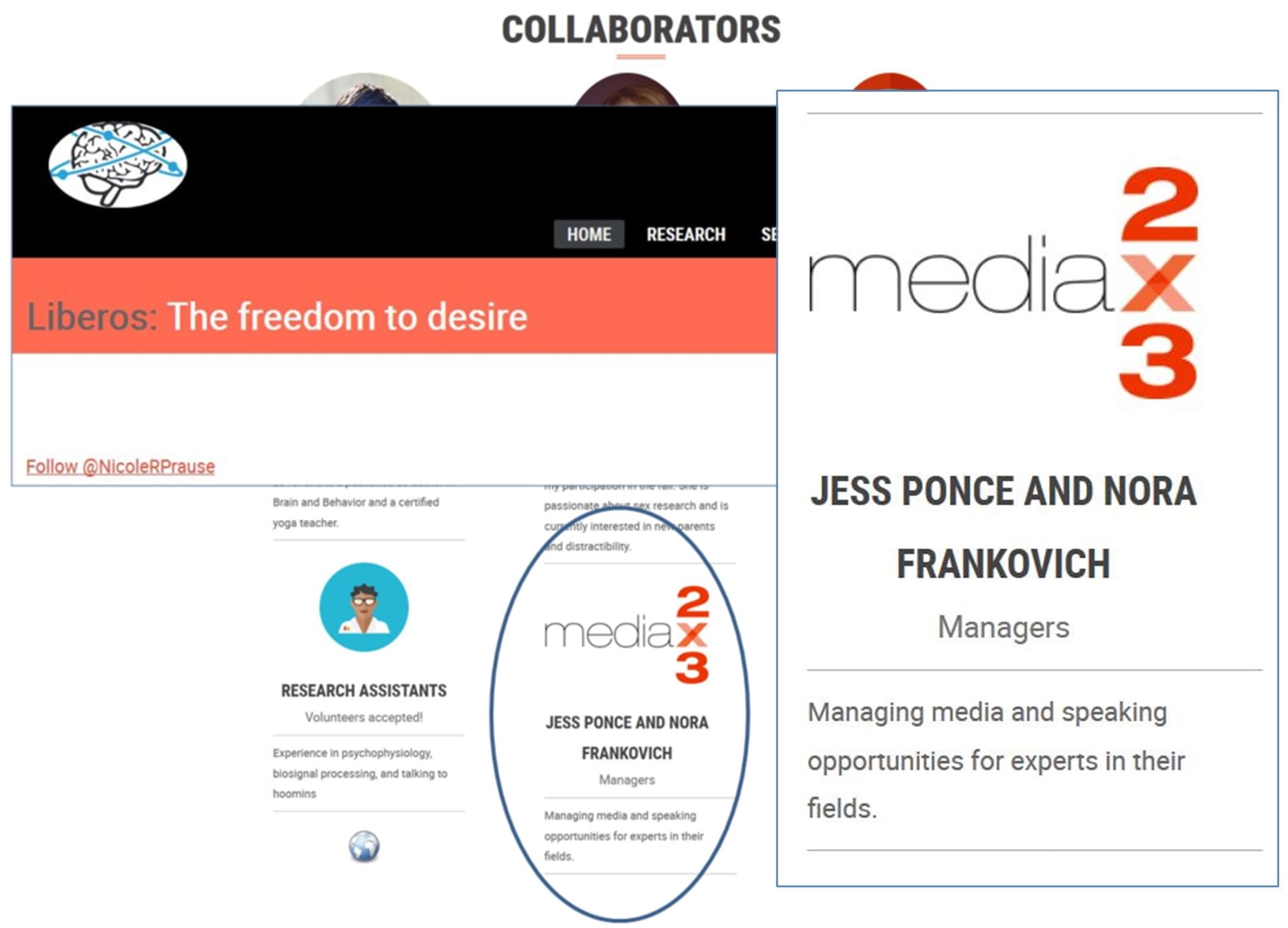 Freed from any oversight and now self-employed, Prause added two media managers/promoters from Media 2×3 to her company’s tiny stable of “Collaborators.” (Media 2×3 president Jess Ponce describes himself as a Hollywood media coach and personal branding expert.) Their job is to place articles in the press featuring Prause, and find her speaking engagements in pro-porn and mainstream venues. Odd tactics for a supposedly impartial scientist.
Freed from any oversight and now self-employed, Prause added two media managers/promoters from Media 2×3 to her company’s tiny stable of “Collaborators.” (Media 2×3 president Jess Ponce describes himself as a Hollywood media coach and personal branding expert.) Their job is to place articles in the press featuring Prause, and find her speaking engagements in pro-porn and mainstream venues. Odd tactics for a supposedly impartial scientist.
Prause began to put her name to falsehoods, openly cyber-harassing multiple individuals and organizations on social media and elsewhere. Since Prause’s primary target was Gary Wilson (hundreds of social media comments along with behind the scenes email campaigns), it became necessary to monitor and document Prause’s tweets and posts. This was done for her victims’ protection, and crucial for any future legal actions. Note: within months of this page going live, Prause became embroiled in two defamation lawsuits (Donald Hilton, MD & Nofap founder Alexander Rhodes), a trademark infringement case, and a trademark squatting case.
It soon became apparent that Prause’s tweets and comments were rarely about sex research, neuroscience, or any other subject related to her claimed expertise. In fact, the vast majority of Prause’s posts could be divided into two overlapping categories:
- Indirect support of the porn industry: Defamatory & ad hominem comments targeting individuals and organizations that she labeled as “anti-porn activists” (often claiming to be a victim of these individuals and organizations). Documented here: page 1, page 2, page 3, and page 4.
- Direct support of the porn industry:
- direct support of the FSC (Free Speech Coalition), AVN (Adult Video News), porn producers, performers, and their agendas
- countless misrepresentations of the state of pornography research and attacks on porn studies or porn researchers.
This page contains a sampling of tweets and comments related to #2 – her vigorous support of the porn industry and its chosen positions. After years of sitting on the evidence, YBOP is of the view that Prause’s unilateral aggression has escalated to such frequent and reckless defamation (falsely accusing her many victims of “physically stalking her,” “misogyny,” “encouraging others to rape her,” and “being neo-Nazis“), that we are compelled to examine her possible motives.
This page is divided into 4 main sections:
- SECTION 1: Nicole Prause & the porn industry:
- Falsely accusing others of saying the porn industry funds some of her research (but no one said that)
- In 2015 the Free Speech Coalition offers Prause assistance: she accepts and immediately attacks Prop 60 (condoms in porn)
- The Free Speech Coalition allegedly provided subjects for a Prause study that she claims will “debunk” porn addiction
- Prause’s direct support for porn & sex industry (FSC, AVN, XBIZ, xHamster, PornHub, BackPage.com, etc.)
- Prause’s intimate relationships with porn industry performers, directors, producers, etc.
- Evidence that Nicole Prause attends porn industry awards (XRCO, AVN)
- SECTION 2: Was Nicole Prause “PornHelps”? (PornHelps website, @pornhelps on Twitter, comments under articles). All accounts deleted once Prause was outed as “PornHelps.”
- SECTION 3: Examples of Nicole Prause supporting porn industry interests via misrepresentation of the research & attacking studies/researchers.
- SECTION 4: “RealYBOP”: Prause, Daniel Burgess and associates create a biased website and social media accounts to support a pro-porn industry agenda, and to harass & defame those who say anything negative about porn.
Please note: There is unequivocal evidence that the porn industry funded the sexology profession for decades. Sexology’s agenda still appears to serve the porn industry. Thus, the evidence on this page should be viewed in a larger context. See Hugh Hefner, the International Academy of Sex Research, and Its Founding President to understand how porn-industry friendly sexologists influenced the Kinsey Institute. Prause is a Kinsey grad.
Update (November, 2019): Finally, some accurate media coverage on serial false accuser, defamer, harasser, trademark infringer, Nicole Prause: “Alex Rhodes of Porn Addiction Support Group ‘NoFap’ Sues Obsessed Pro-Porn Sexologist for Defamation” by Megan Fox of PJ Media and “Porn wars get personal in No Nut November”, by Diana Davison of The Post Millennial. Davison also produced this 6-minute video about Prause’s egregious behaviors: “Is Porn Addictive?”.
Update (August, 2020): Gary Wilson wins lawsuit against serial harasser, defamer, cyberstalker Nicole Prause. Details – Legal victory exposes Prause as the perpetrator, not the victim: her efforts to silence Wilson foiled as her restraining order is denied as fraudulent and she owes substantial attorney fees in a anti-SLAPP ruling.
Update (January, 2021): Prause filed a second frivolous legal proceeding against me in December, 2020 for alleged defamation. At a hearing on January 22, 2021 an Oregon court ruled in my favor and charged Prause with costs and an additional penalty. This failed effort was one of a dozen lawsuits Prause publicly threatened and/or filed in the previous months. After years of malicious reporting, she has escalated to threats of actual lawsuits to try to silence those who reveal her close ties to the porn industry and her malicious conduct, or who have made sworn statements in the 3 defamation suits currently active against her.
SECTION 1: Nicole Prause & the porn industry
Falsely accusing others of saying the porn industry funds some of her research
One of Prause’s favorite tactics is to falsely accuse others of saying that the porn industry has funded some of her research (all of which reaches pro-porn conclusions). This unfounded accusation plays well to her Twitter followers (many of whom are in the industry) and feeds into her fabricated mythology of victimhood. However, Prause has never provided any actual documentation of anyone stating that she is funded by the porn industry.
Here are a few examples of this ruse before we expose Prause’s cozy relationship with the porn industry. First, an excerpt from a baseless cease & desist letter sent to Linda Hatch PhD:

Linda Hatch never said Prause was funded by the porn industry, and Prause provided no documentation in support of either of her allegations. See: Prause silencing people with fake “no contact” demands and spurious cease & desist letters
Another bogus cease & desist letter, to Gary Wilson:
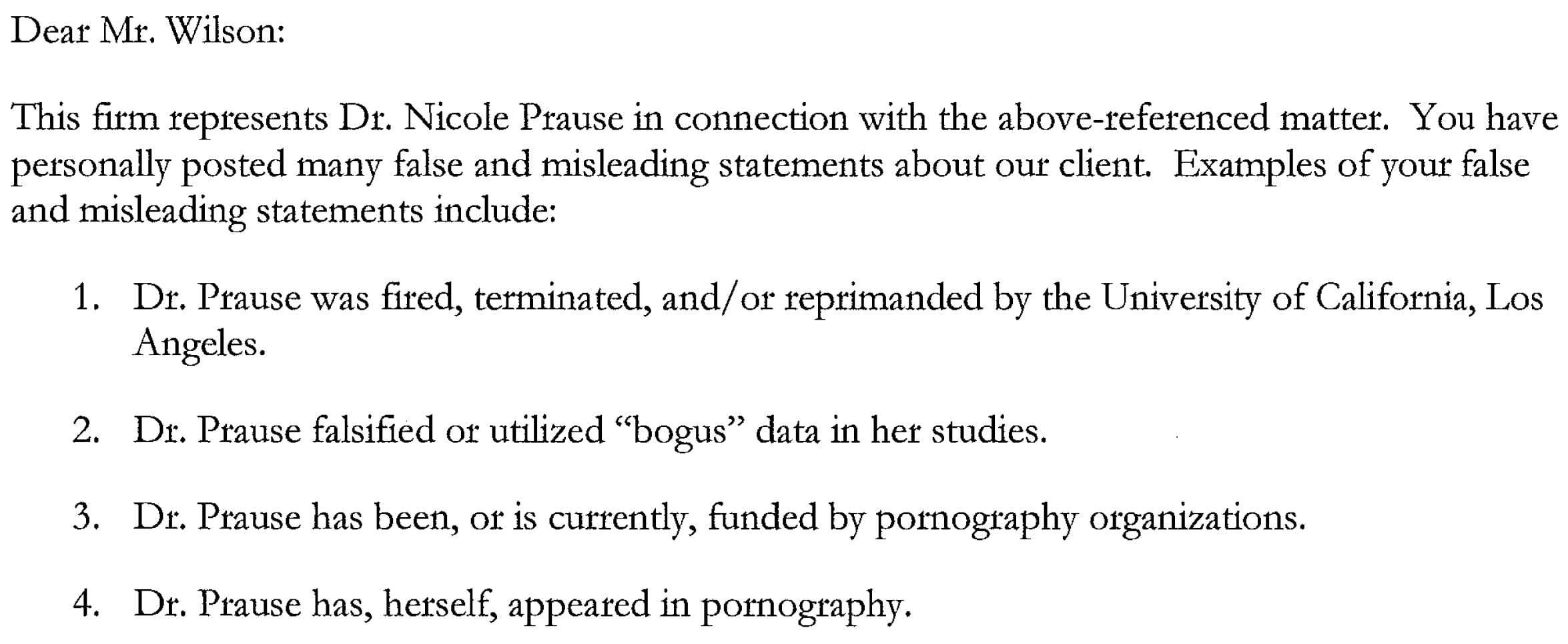
All four claims in the above cease & desist letter are groundless. Completely fabricated by Prause. See: October, 2016 – Prause publishes her spurious October, 2015 “cease and desist” letter. Wilson responds by publishing his letter to Prause’s lawyer.
Prause has posted many tweets like this one, claiming that “activists” say she or other scientists are funded by the porn industry (Prause has never linked to a single example):
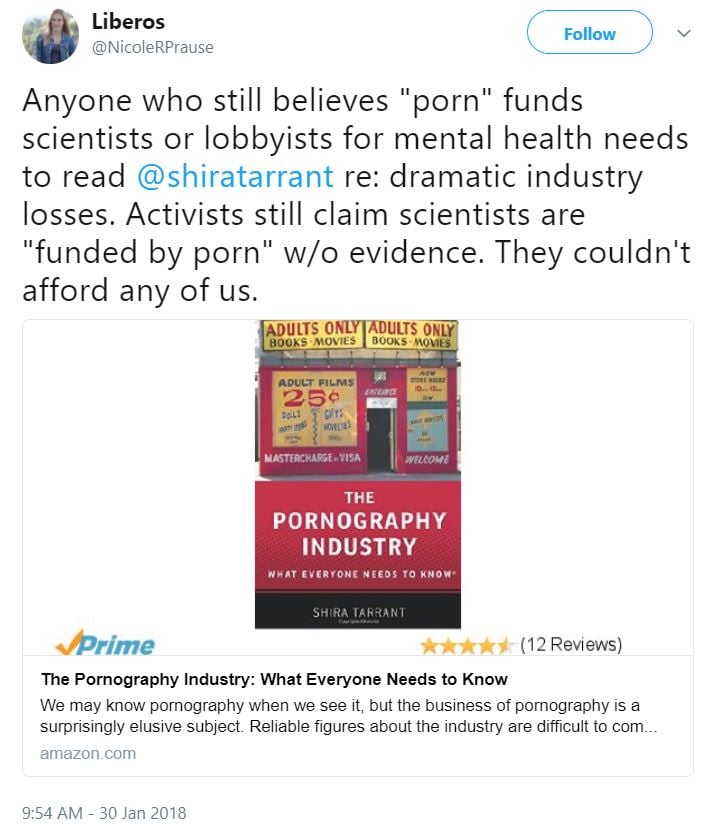
Another such tweet:
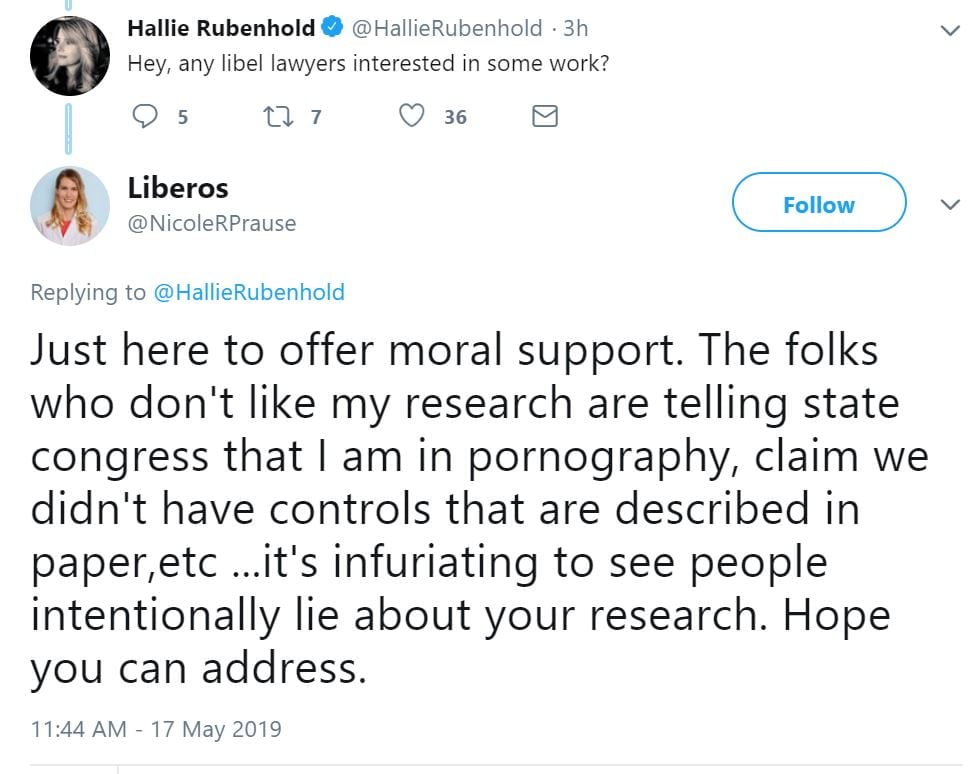
Notice how she never provides documentation to support her assertions.
Finally, several 2018 tweets targeted FTND containing the same text and same two screenshots: 1) an excerpt from a Politico article asserting that FTND was “seeded with millions of dollars from the Mormon Church”; 2) an excerpt from an email that may or may not have been sent by FTND:
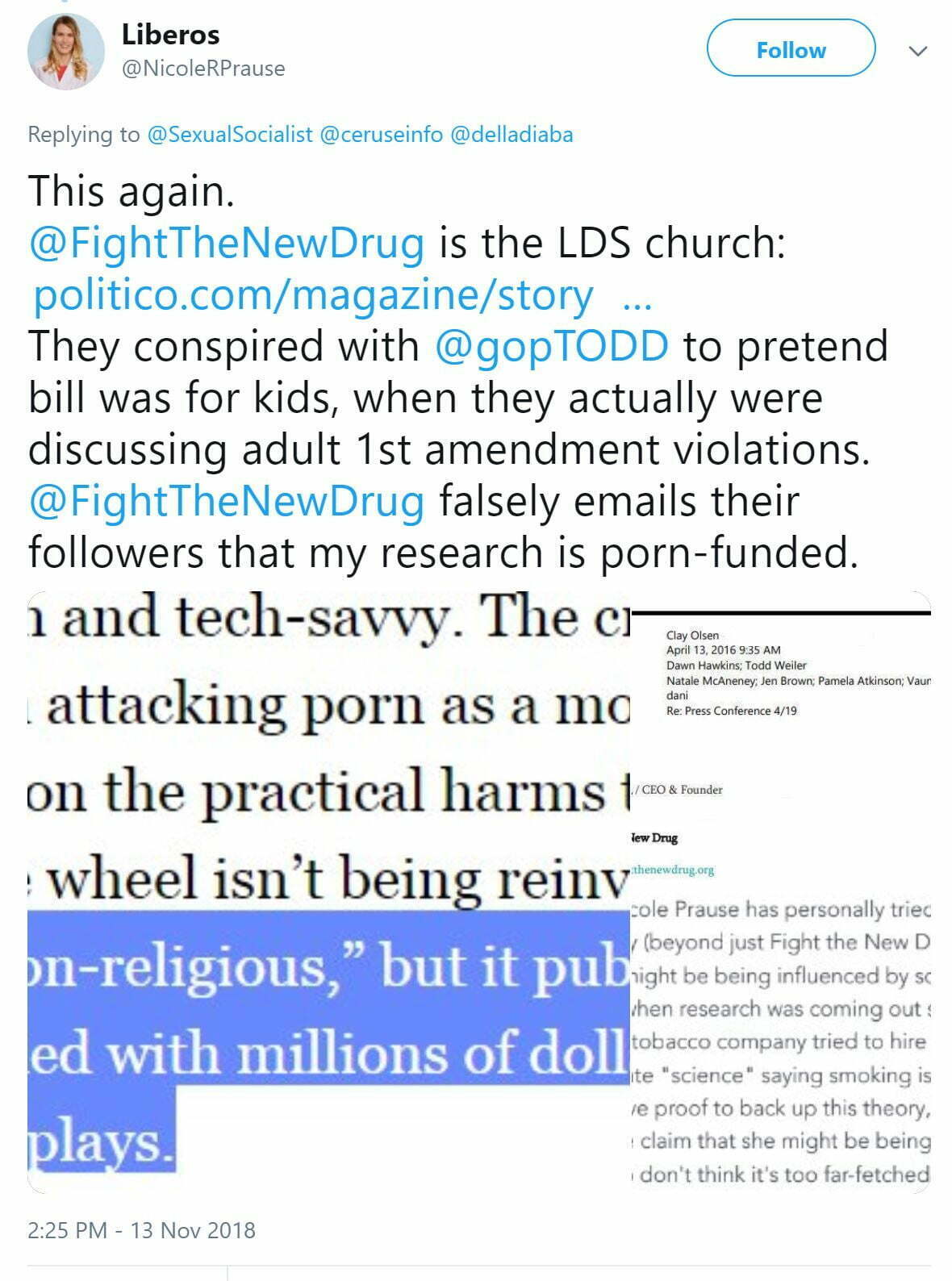
Over the years we have seen FTND state that it has received no funding from the Mormon Church. Not surprisingly, Politico provided no documentation for this assertion (not even a link to another hit piece). Was it simply fabricated, or fed to Politico by one of the two press relations experts on the tiny staff of Prause’s company?
Apart from offering no support for her Mormon-funding assertion, Prause’s screenshots of the purported email are a bit curious. Instead of providing a screenshot of an entire email, Prause provides a screenshot of a letterhead, and a second screenshot of an out-of-context paragraph.
The letterhead:
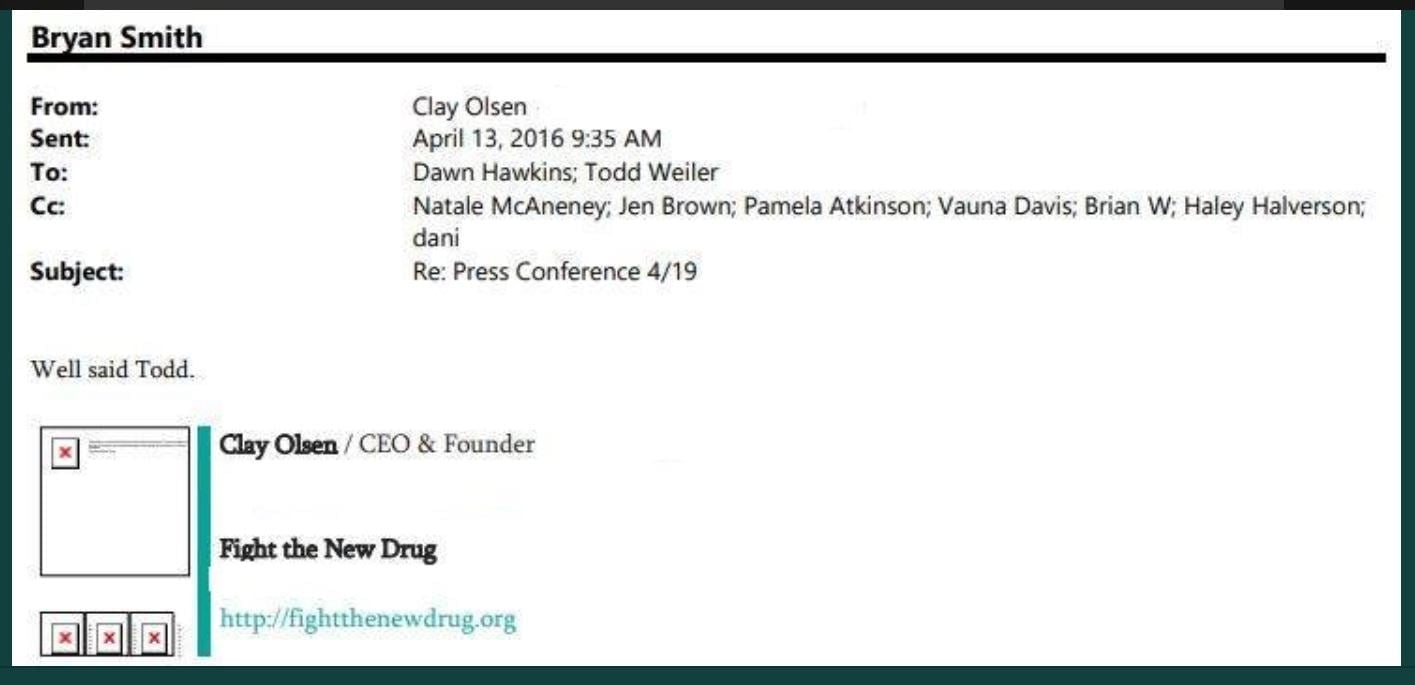
The out-of-context paragraph, which did not, in fact, state that Prause’s research was funded by the porn industry:

Instead of saying Prause’s research was funded by the porn industry, the email wondered if Prause had been “influenced by someone within the porn industry.” Mind you, this email is dated April, 2016, before Nicole Prause exponentially increased her harassment and libel (as documented on the pages listed above).
While there’s no evidence of any of Prause’s victims stating that Prause receives funding from the porn industry, anyone might be forgiven for wondering if she is indeed influenced by the porn industry. The Prause pages on this website are just the tip of a very large Prause Iceberg. She has posted thousands of times, attacking everyone and anyone who suggests porn might cause problems. (Prause recently purged her twitter account of 3,000 or more incriminating tweets.) She has defended the industry at every turn, much as a paid industry thought-leader could be expected to do.
Clearly Prause, who lives in LA, enjoys a cozy relationship with the pornography industry. See this image of her (far right) apparently taken on the red carpet of the X-Rated Critics Organization (XRCO) awards ceremony. According to Wikipedia,
“The XRCO Awards are given by the American X-Rated Critics Organization annually to people working in adult entertainment and it is the only adult industry awards show reserved exclusively for industry members.[1]“

Photos taken at the 2016 XRCO awards (Prause & hall of fame porn star Melissa Hill at bottom-left):

In 2015 the Free Speech Coalition offers Prause assistance, she accepts and immediately attacks California’s prop 60 (condoms in porn).
California Proposition 60 (2016 election) would have mandated condom use in porn films. It was supported by AIDS Healthcare Foundation (AHF), a nonprofit HIV/AIDS care and advocacy organization, and vehemently opposed by porn producers and interestingly enough, Nicole Prause and colleague David Ley. In the run up to the 2016 election, Prause and Ley seemed obsessed with defeating Prop 60, while relatively unconcerned about graver issues such as health care, immigration, or jobs. Both Prause and Ley spent considerable effort tweeting and re-tweeting attacks on Prop 60, and support for the Free Speech Coalition, the lobbying arm for the porn industry (tweet1, tweet2, tweet3, tweet4, tweet5, tweet6, tweet7, tweet8, tweet9, tweet10, tweet11 – NOTE: Prause deleted many of these tweets in April, 2016).
On October 1, 2015 the FSC (which has spent millions on lawsuits that benefit the porn industry) offered Prause assistance with respect to her so-called “bullies.”
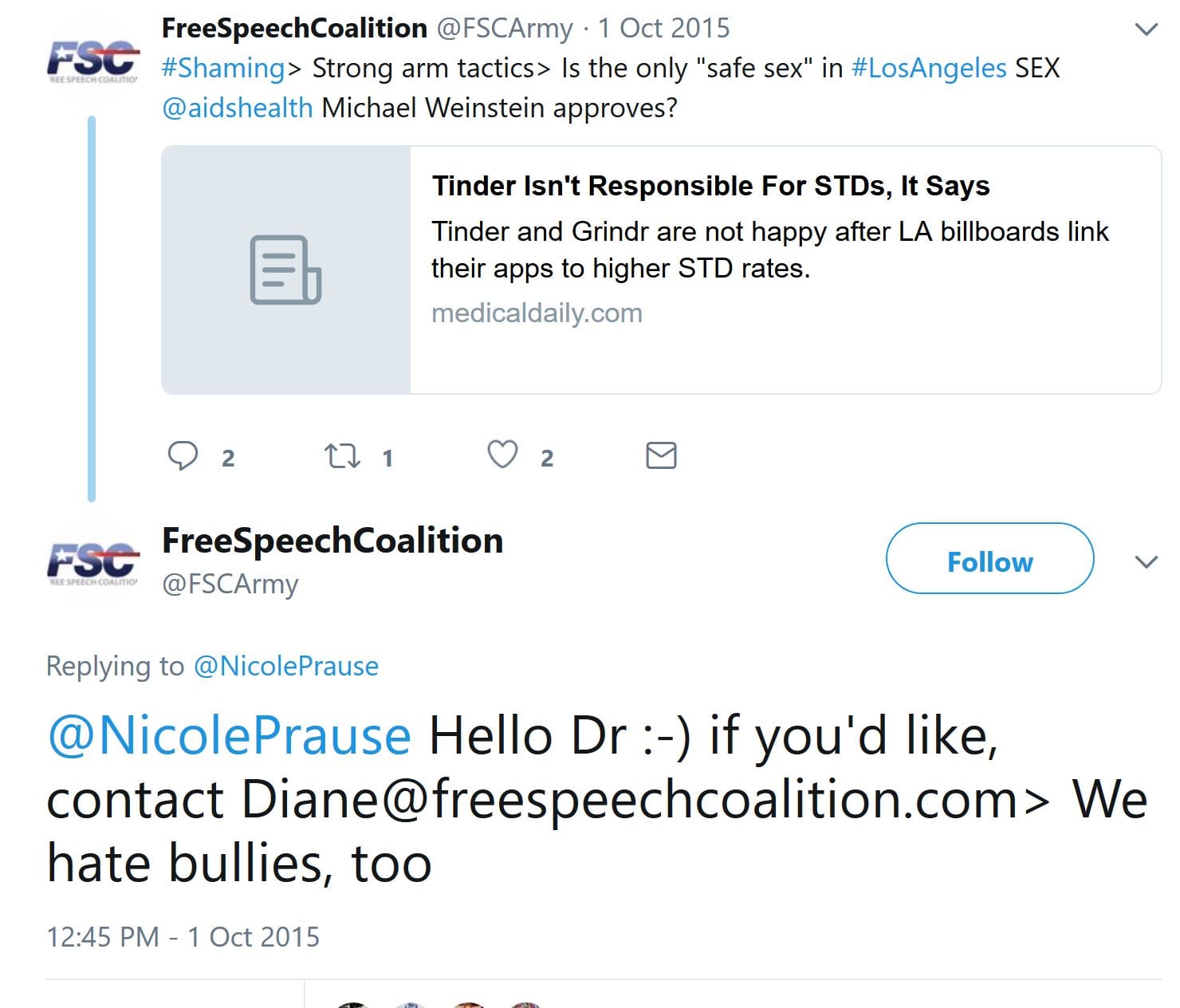
The real bully here was Prause, who had her first Twitter account permanently banned for harassment and cyber-stalking. (In violation of its own rules, Twitter allowed her to create a second Twitter account.) Instead of revealing the facts, Prause fabricated a tall-tale that John Adler MD (Stanford) somehow got her kicked off Twitter. Adler had nothing to with this. Lies upon lies.
Prause emailed the FSC to accept their “help” with her imaginary bullies. Prause then promptly begins to discuss with another industry account why condoms in porn are a bad idea (the porn industry’s position):

Prause then offers help to the FSC (is this the beginnings of a mutually beneficial relationship?):
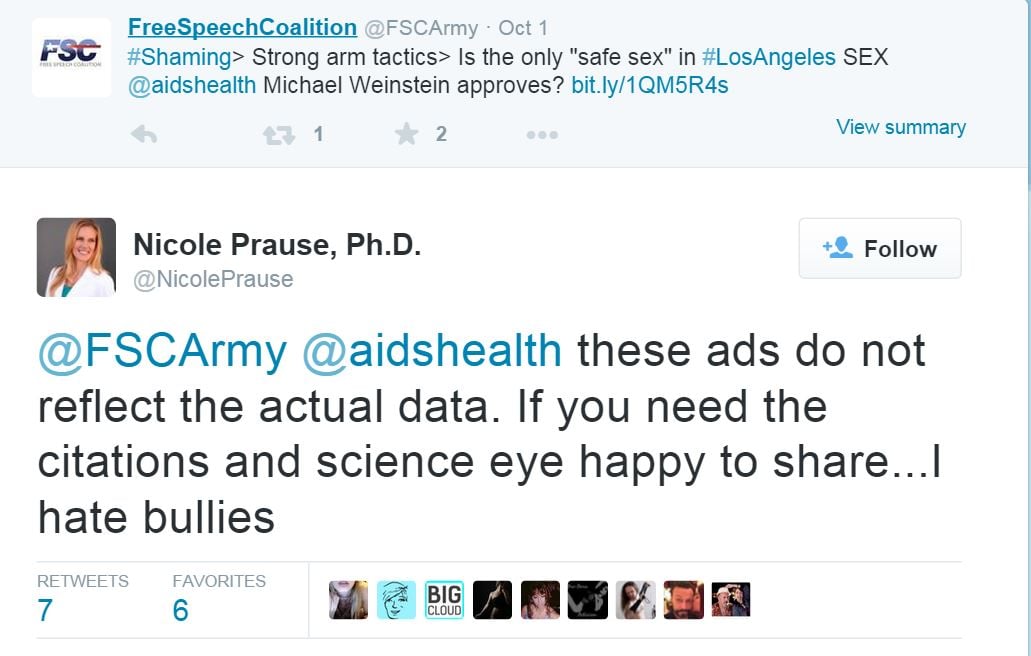
Since then, Prause has publicly assisted the FSC multiple times, including for example, supporting the FSC’s campaign against California’s ill-fated Proposition 60 (calling for condom use in porn):
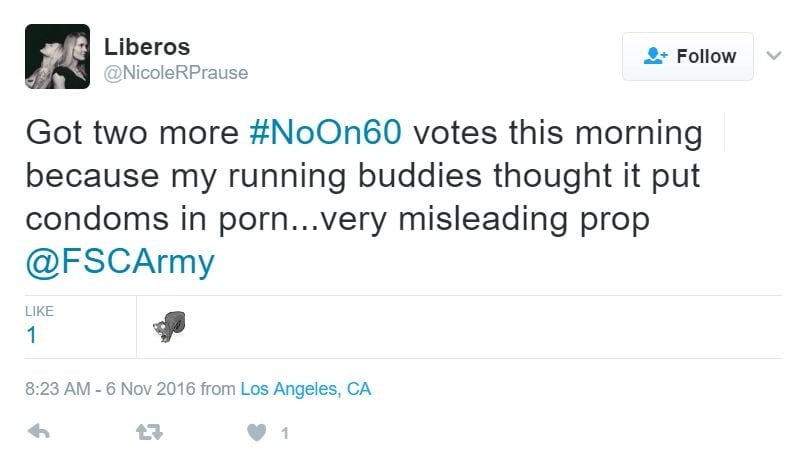
——————-
Here she retweets FSC propaganda. (Again, dozens of Prause’s incriminating pro-FSC tweets have since been deleted.):
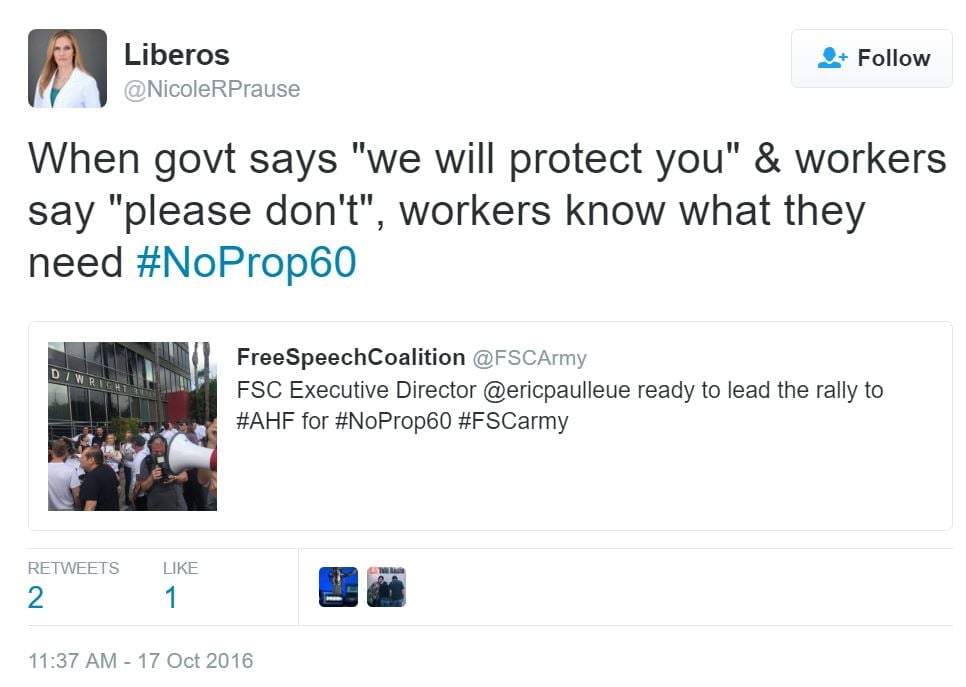
—————-
Smearing the AIDS Healthcare Foundation, while taking the side of porn industry reps:
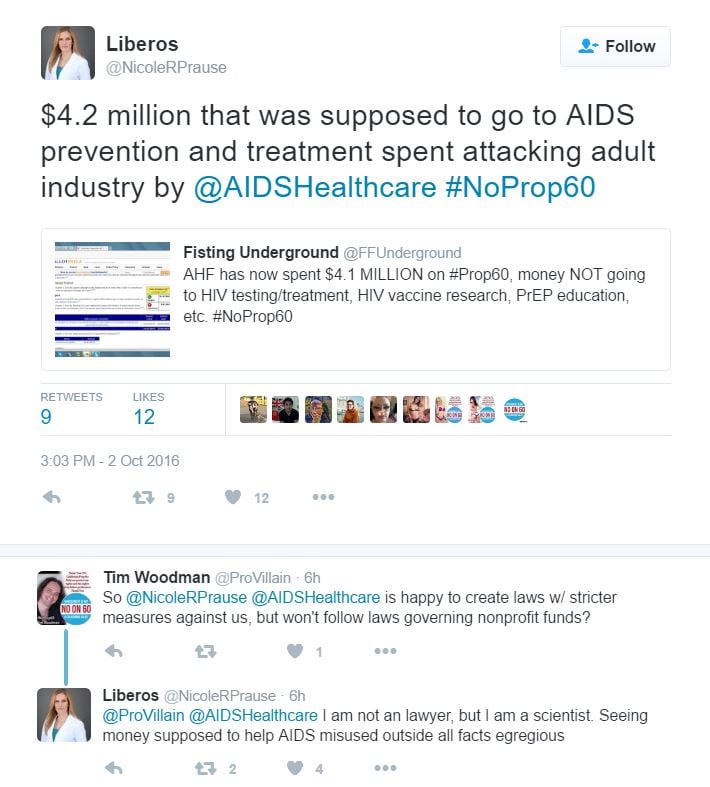
Another Prop 60 tweet:
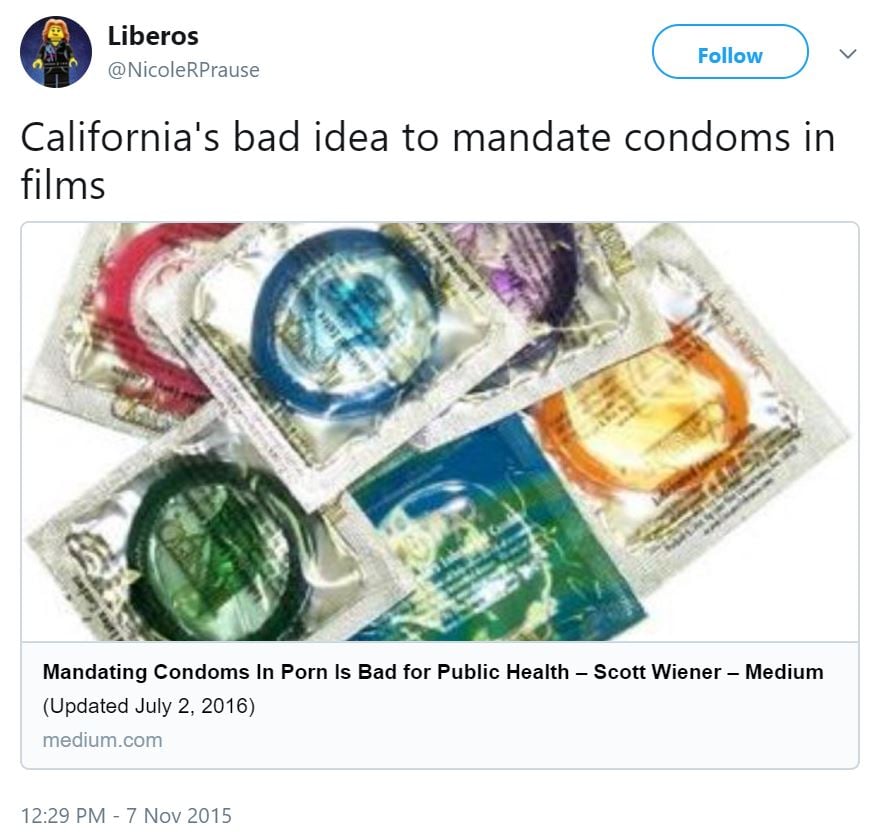
———————-
Yet another tweet in which Prause promotes AVN’s position on Prop 60:
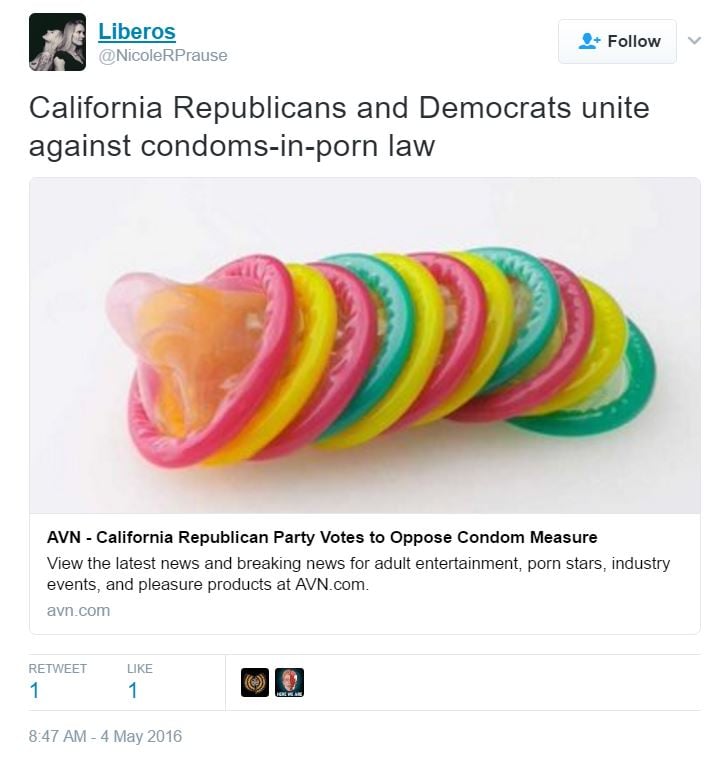
————————-
Prause retweets XBIZ propaganda, attacks AIDS Healthcare Foundation, which supports condoms in porn (prop 60): https://twitter.com/AIDSHealthcare
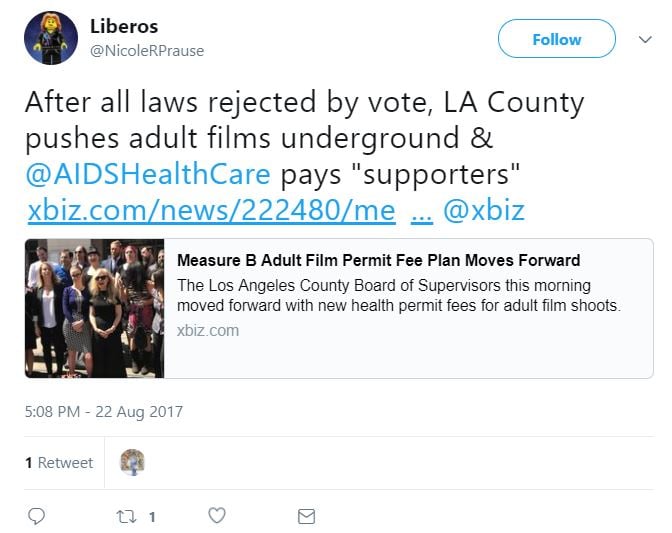
In support of the porn industry, Prause retweets porn-producer propaganda. Prause attacks AIDS Healthcare Foundation (which supports prop 60):
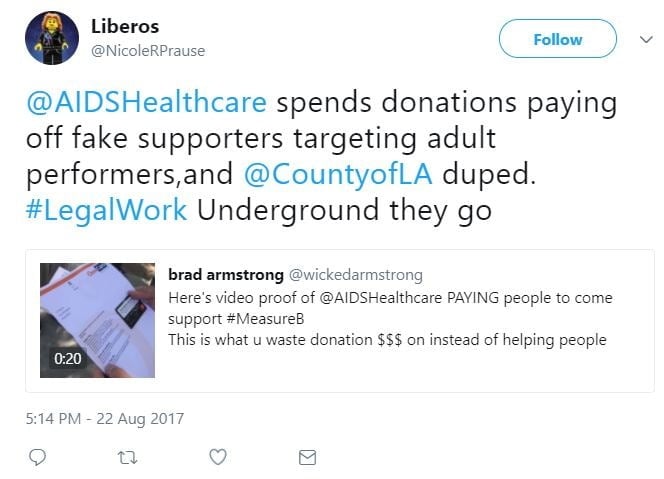
—————–
Tagging FSC, retweeting porn industry propaganda about prop 60:
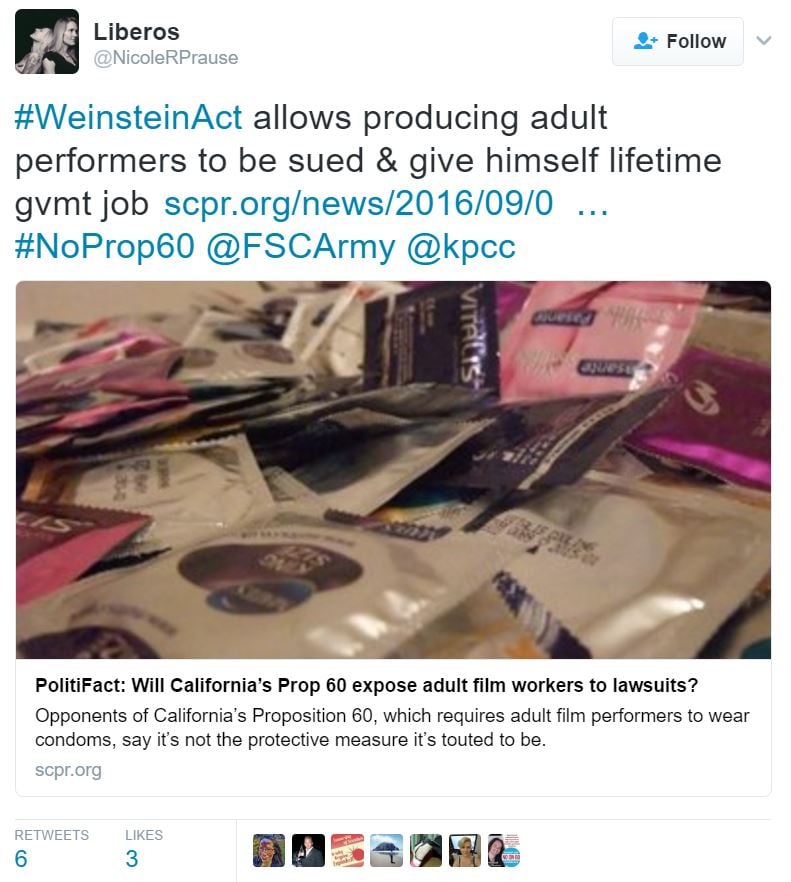
—————–
Tagging FSC while attacking a UCLA medical doctor who supported the use of condoms for porn performers (prop 60):
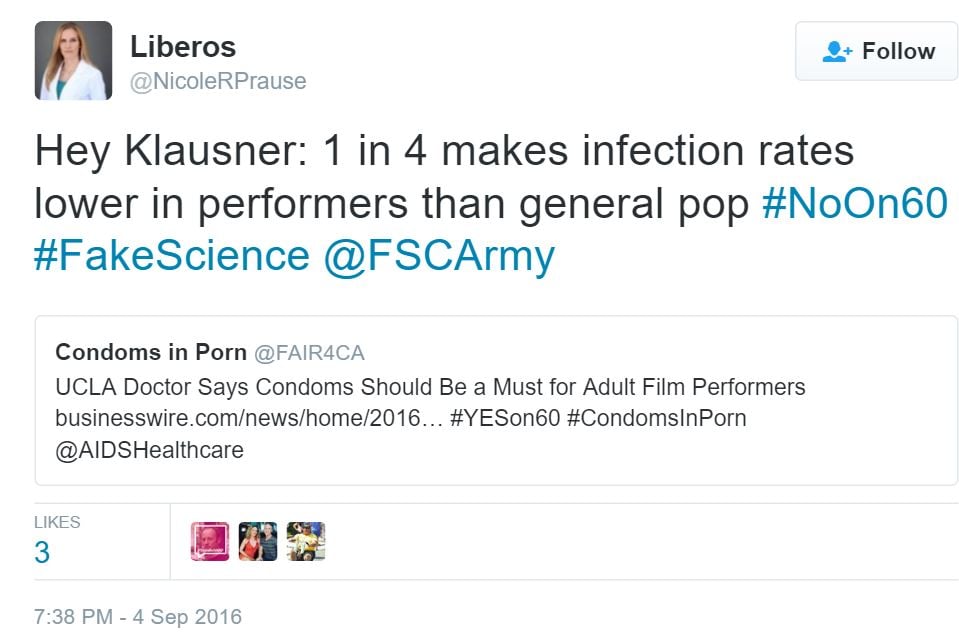
———————–
More about Prause’s pro-FSC actions in this section: November, 2016: Prause asks VICE magazine to fire infectious disease specialist Keren Landman, MD for supporting Prop 60 (condoms in porn). In a series of tweets, Prause joins an “adult actor” in attacking a Keren Landman, a medical doctor specializing in infectious disease.
Here’s what is most egregious: Prause tells VICE magazine to fire expert Dr. Landman for writing an article supporting Prop 60:
Freelancer? While Prause’s degree is in statistics, Keren Landman MD is a researcher, medical epidemiologist, and infectious disease specialist who once worked for the U.S. Centers for Disease Control and Prevention. HIV infection is one of her specialties, having published several papers in the field. Once again, we have Prause personally attacking experts in a field, while simultaneously failing to support her position with empirical evidence. (Does anyone believe Prause’s claim that “every independent scientist opposes Prop 60″?) Whatever anyone thinks about Prop 60, Dr. Landman’s position is supported by research, and Nicole Prause’s is not.
Prause tells the world how she voted:
Prause enters a thread where Gary Wilson had already tweeted, bragging about her role in defeating prop 60 (Prause and her presumed alias RealYBOP often troll Wilson’s twitter threads – even though Wilson has blocked both accounts):
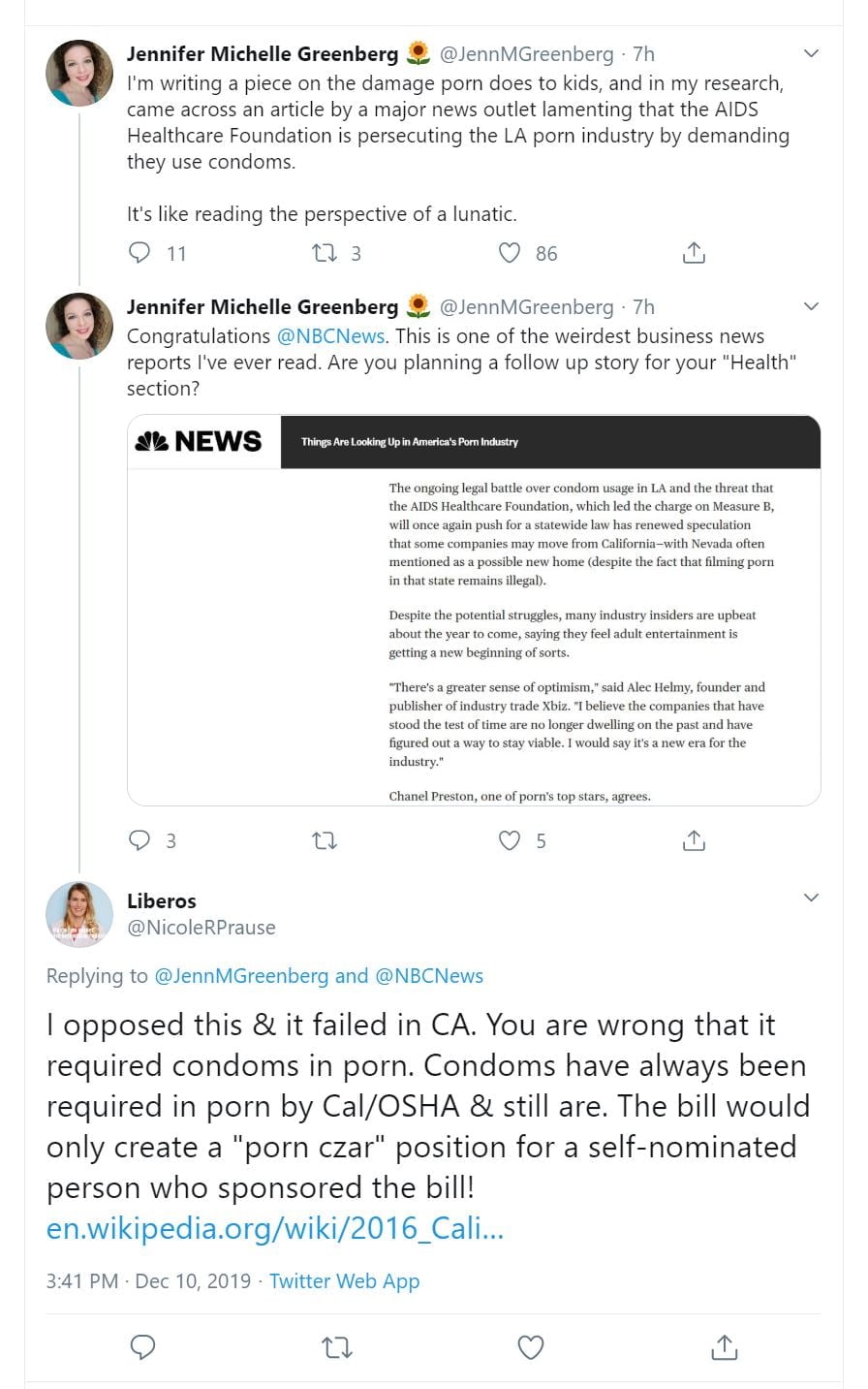
The Free Speech Coalition allegedly provided subjects for a Nicole Prause study that she claims will “debunk” porn addiction.
Does Prause’s relentless support for the porn industry arise from a quid pro quo, or more than one? Certainly, a public exchange of favors occurred in 2015 when the Free Speech Coalition (porn industry lobby) offered Prause assistance and she accepted. Immediately she attacked Prop 60 (condoms in porn, which the industry didn’t want).
A second possible quid pro quo occurred in 2016. Prause was given a bucket-load of money to produce a hired-gun study on the heavily tainted and very commercial “Orgasmic Meditation” (OM) scheme (apparently under investigation by the FBI). Orgasmic Meditation, an MLM pseudo-cult that charges big bucks to teach men how to stroke a women’s clitorises. Prause pictured here monitoring a couple engaging in OM:
We are not sure, but the study on clitoris diddling (OM) may have hit a predictable snag: the challenge of finding female subjects who want their genitals rubbed while being hooked up to machines and monitored by researchers. To reach her target of 250 OM couples, it appears that Prause may have obtained porn performers as subjects through porn industry interest group the Free Speech Coalition. The favor to the FSC? Then, almost two years later, Prause publicly began proclaiming that her upcoming OM study (which previously had nothing to do with porn) would debunk porn addiction. As of this writing (November, 2020) the OM study has yet to appear.
All the details and documentation:
Adult performer Ruby the Big Rubousky, Vice President of the Adult Performers Actors Guild, stated that Prause obtained porn performers as study subjects through the most prominent porn industry interest group/lobby, the Free Speech Coalition. (Prause has since deleted this Twitter thread).
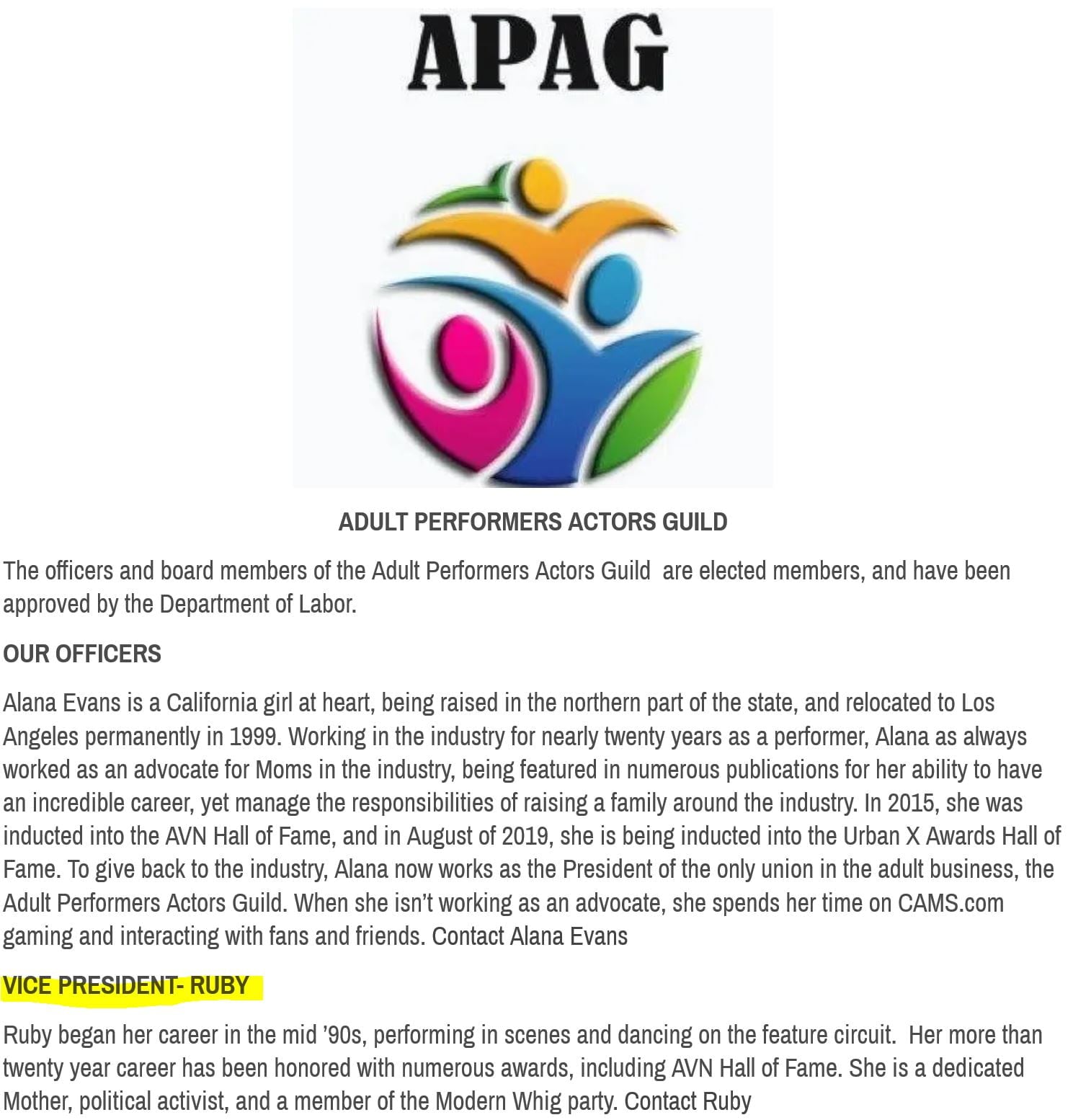
The study (or studies) in question is said to be funded by OneTaste, a for-profit company that charged $4,300.00 for a 3-day workshop to learn clitoral manipulation. As described in this Bloomberg.com expose, OneTaste offered several different packages:
Currently, students pay $499 for a weekend course, $4,000 for a retreat, $12,000 for the coaching program, and $16,000 for an “intensive.” In 2014, OneTaste started selling a yearlong $60,000 membership, which lets buyers take all the courses they want and sit in the front row.
Here’s the official description this OM study and the funder, from page 3 of Nicole Prause’s 20-page CV (notice that Prause lists herself as “principal investigator”):
In court documents, tweets, and a lie-filled letter threatening me (Gary Wilson), Prause is now bizarrely stating that I defamed her by stating that her first Orgasmic Meditation study was funded by the OneTaste Foundation. Perhaps she is currently being funded by the newly created apparent-affiliate “Institute of OM Foundation,” but her CV doesn’t lie – even though Prause does.
Greg Siegle’s CV also lists OneTaste as funding their Orgasmic Meditation research:
As recently operational as May, 2020 the now defunct OneTaste website featured Prause & Siegle as “researching” Orgasmic Meditation:
A 2017 Yoga Journal article also names OneTaste as the funder for the OM study:
It’s well established that Prause regularly lies, defames, and even perjures herself, but why tell such an easily debunked falsehood? She’s probably trying to distance herself from “OneTaste,” which funded her research and was exposed in the Bloomberg article as a shady operation, perhaps even a sex cult.
It appears that OM is trying to distance itself from the discredited “OneTaste.” In 2020, the OneTaste website disappeared (Internet archive version), and was replaced by the “Institute of OM.” The newer “OM” science page featuring Prause & Siegle closely resembles the former “OneTaste” science page:
Strategically, the new name contains neither “Orgasmic Meditation” nor “OneTaste,” two identifiers seen in numerous articles slamming OneTaste. It wasn’t just a new website as the hosts actually let “OneTaste” go, creating two new entities: INSTITUTE OF OM LLC and the “INSTITUTE OF OM FOUNDATION” (the latter of which apparently funds research). Interestingly, the Institute of OM Foundation was created 5 months after the Bloomberg expose’:
Bottom line: which ever entity is currently funding Prause’s Orgasmic Meditation research, OneTaste funded the initial OM studies by Prause & Siegle.
More on the Prause & Siegle study(s), now publicized on the newly formed Institute of OM Foundation website (with not a word on the site about discredited “OneTaste”):
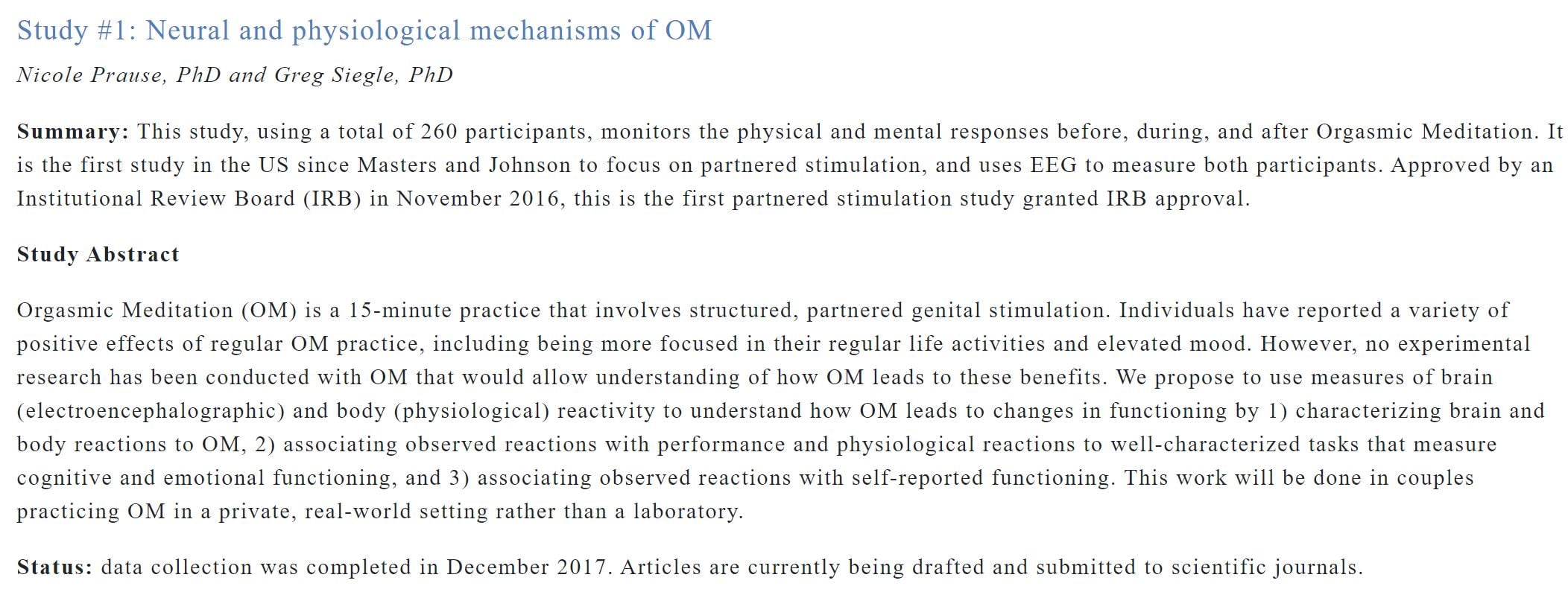
In the 2018 Bloomberg article Chief Executive Officer Joanna Van Vleck pretty much says that OneTaste was now dependent on Prause’s upcoming EEG studies about OM:
The newish CEO is betting that the study OneTaste has funded on the health benefits of OM, which has taken brain-activity readings from 130 pairs of strokers and strokees, will draw fresh crowds. Led by researchers from the University of Pittsburgh, the study is expected to yield the first of multiple papers later this year. “The science that’s coming out to back what this is and what the benefits are is going to be huge in terms of scaling,” Van Vleck says
Put simply, Prause was hired to bolster the commercial interests of the heavily tainted and very controversial company, no matter what name it goes by (another article: The ‘fingering’ cult: A reader’s experience of OneTaste – is not very tasteful at all).
Again, to conduct the OM study Prause needed willing participants comfortable with being hooked up to machines, and having their genitals exposed and masturbated by a man as researchers observe their responses. It’s not hard to imagine it’s challenging to locate females willing to act as sexual guinea pigs in Prause’s office. Whatever the reasons, Ruby insisted that Prause obtained subjects for her OM study via the FSC, and that Prause had an ongoing relationship with the FSC:
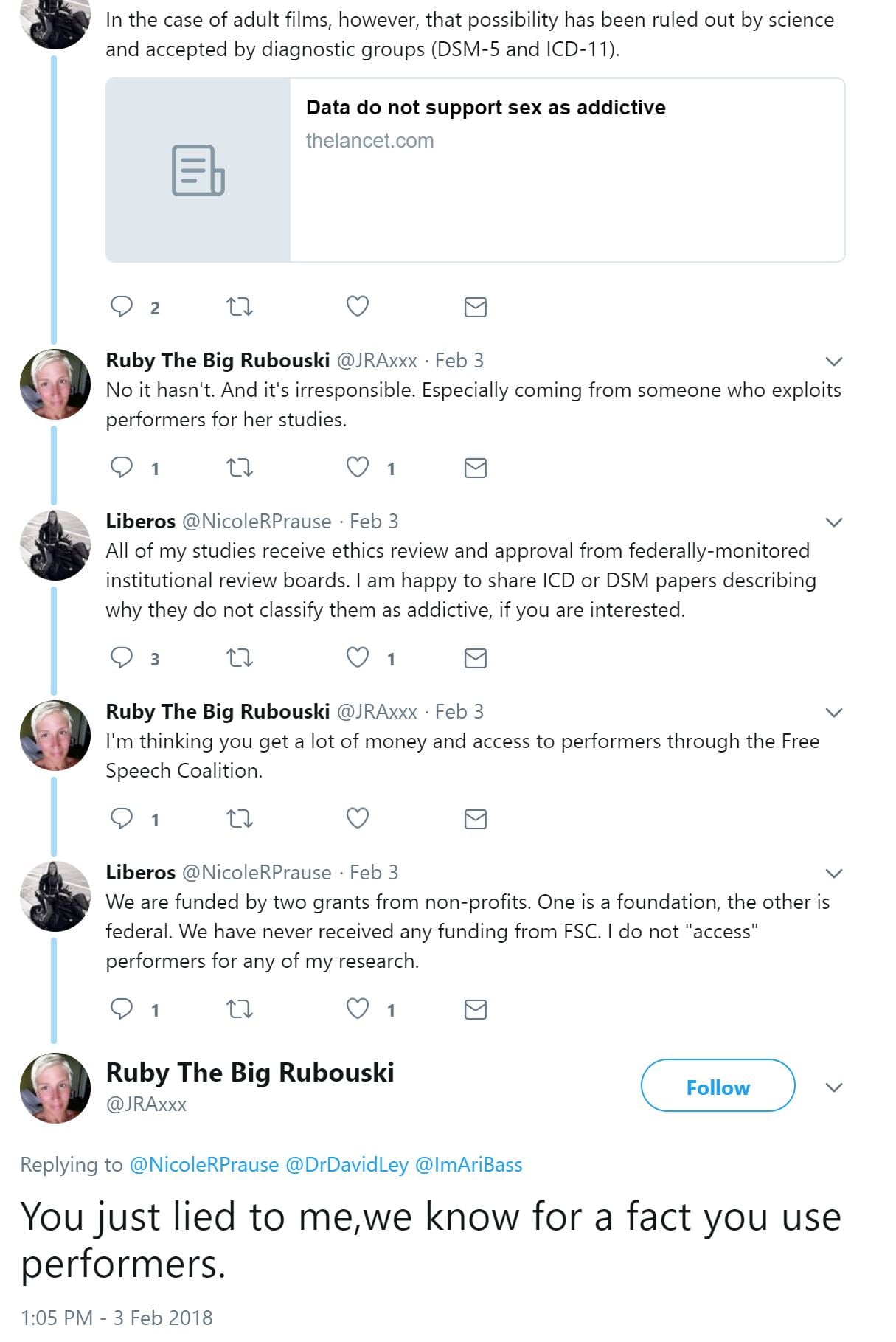
If the above is true, it reveals a very cozy working relationship between Prause and the FSC. A relationship that may have started in 2015, when Prause was publicly offered (and apparently accepted) assistance from the deep-pocketed FSC. This was immediately followed by Prause throwing her scientific weight behind some the FSC’s major agendas (Proposition 60, ‘porn stars are not damaged goods’, ‘porn addiction is a myth’, ‘porn is not public health crisis’, ‘watching porn is mostly beneficial’, etc.)
The plot thickens. Originally, the study was funded to explore only the benefits of “Orgasmic Meditation” – but it then mysteriously transformed into a study to debunk porn addiction (which would certainly serve the FSC’s interests)!
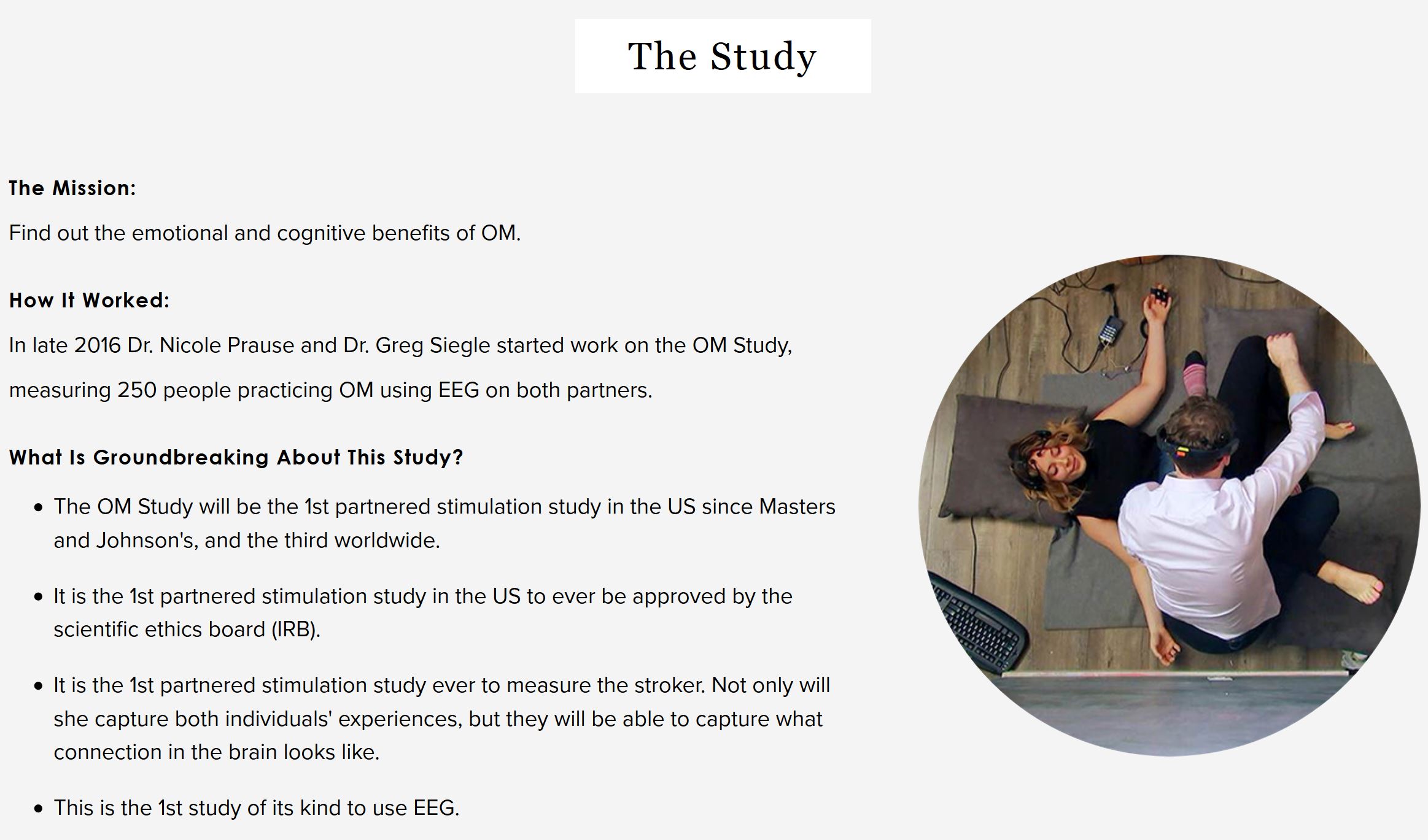
Although the study is still not out as of June, 2020, in 2017 Prause began crowing that her yet to be published Orgasmic Meditation study “falsified” porn and sex addiction. Yet the study appear to have had nothing to do with porn use and likely did not involve any actual porn addicts.
In her tweets and comments Prause revealed that she showed her clitoris-stroking couples “sex films” and the results (in her opinion) debunked the porn addiction model. In short, Prause’s OM study has apparently magically morphed from a “partnered sex” investigation into an anti-porn addiction, pro-porn industry paper. Below are a few examples of Prause claiming her upcoming “partnered sex” (OM) study debunks porn addiction.
Background: In spring of 2019, the World Health Organization released a new edition of its diagnostic manual, the ICD-11, with a diagnosis called “Compulsive sexual behavior disorder.” Prior to the release of the “implementation version,” a beta draft of the ICD-11 was put online, and made available for interested parties to comment on. (A simple sign-up is needed to view and participate.)
Astonishingly, Prause posted more comments in the beta-draft comment section than every other commenter combined. In the comments section under this new proposal, Prause posted three times about her OM study (partnered sex, N=250). Prause’s comments asserting that her OM study found no evidence of sexual compulsivity (she never does evidence of addiction, even when neuroscientists say that she has):

Another ICD-11 comment:
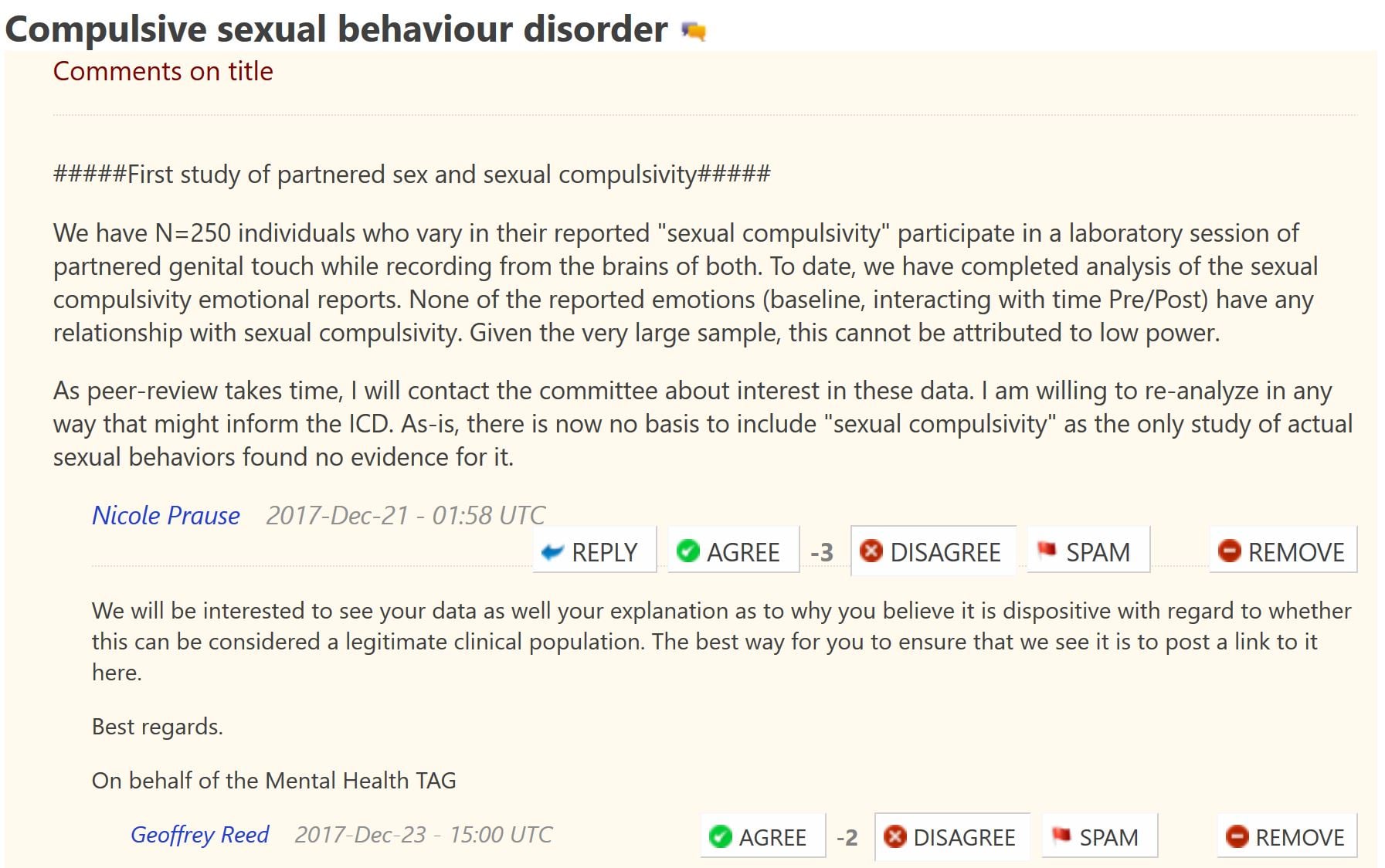
Another ICD-11 comment:

Her attempt failed, and the new ICD-11 contains a new diagnosis suitable for those suffering from porn addiction: “Compulsive Sexual Behavior Disorder.”
But she tried her hardest to head off the ICD-11’s CSBD diagnosis. In July, 2018, Prause let WHO, the APA, and AASECT know that her lone Orgasmic Meditation study had “falsified” the porn/sex addiction model:
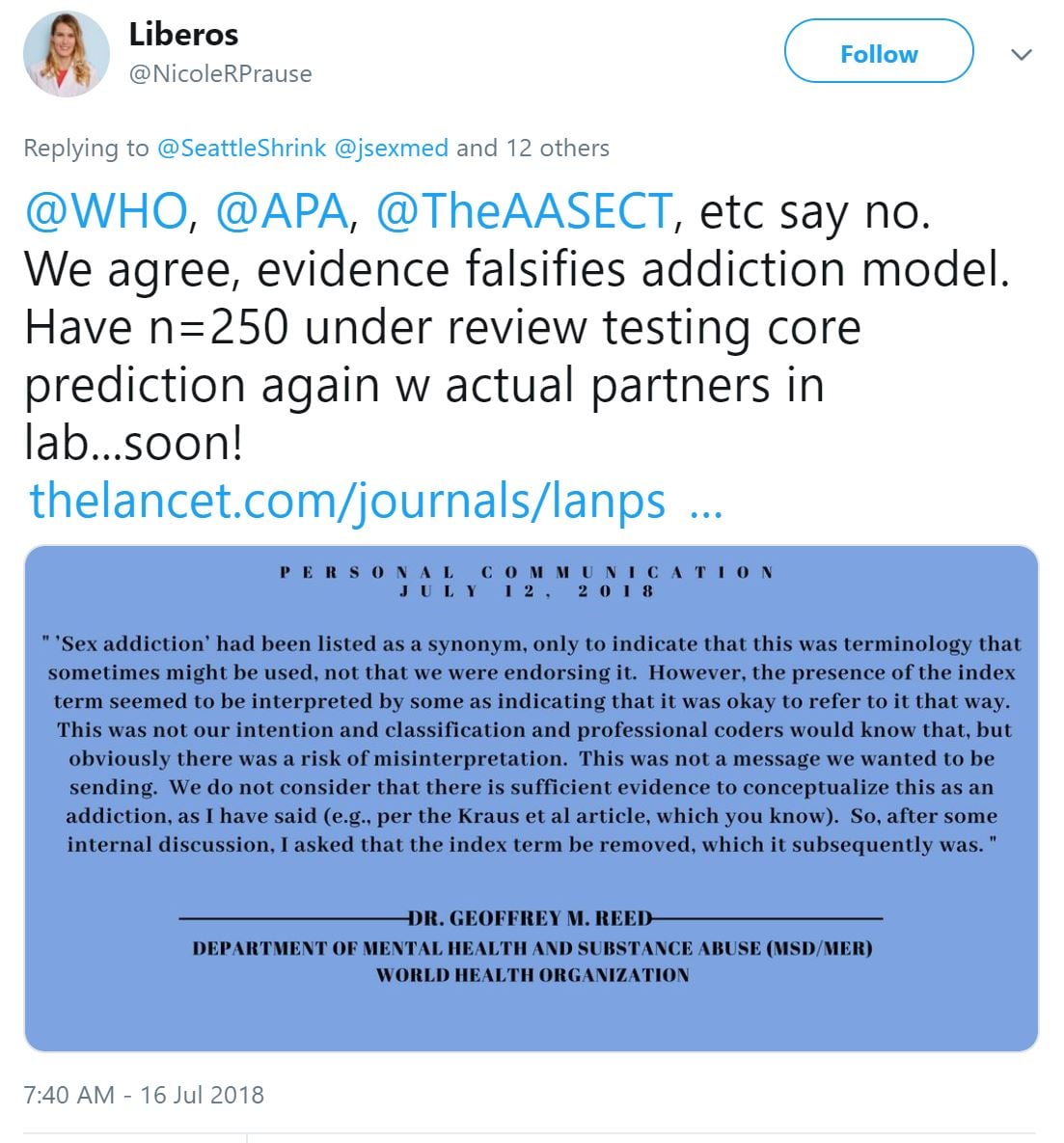
What legitimate researcher would ever claim to have debunked an entire field of research and to have “falsified” all previous studies with a single study that did not recruit porn addicts and wasn’t designed to assess the signs, symptoms and behaviors of an addiction? Prause had trumpeted similar claims of “falsification” in 2015 based on her own dubious work, and was ultimately greeted with 10 peer-reviewed analyses saying she “misinterpreted” her findings.
In this tweet Prause says her upcoming OM study will correct all the “lies” by sex addiction therapists:
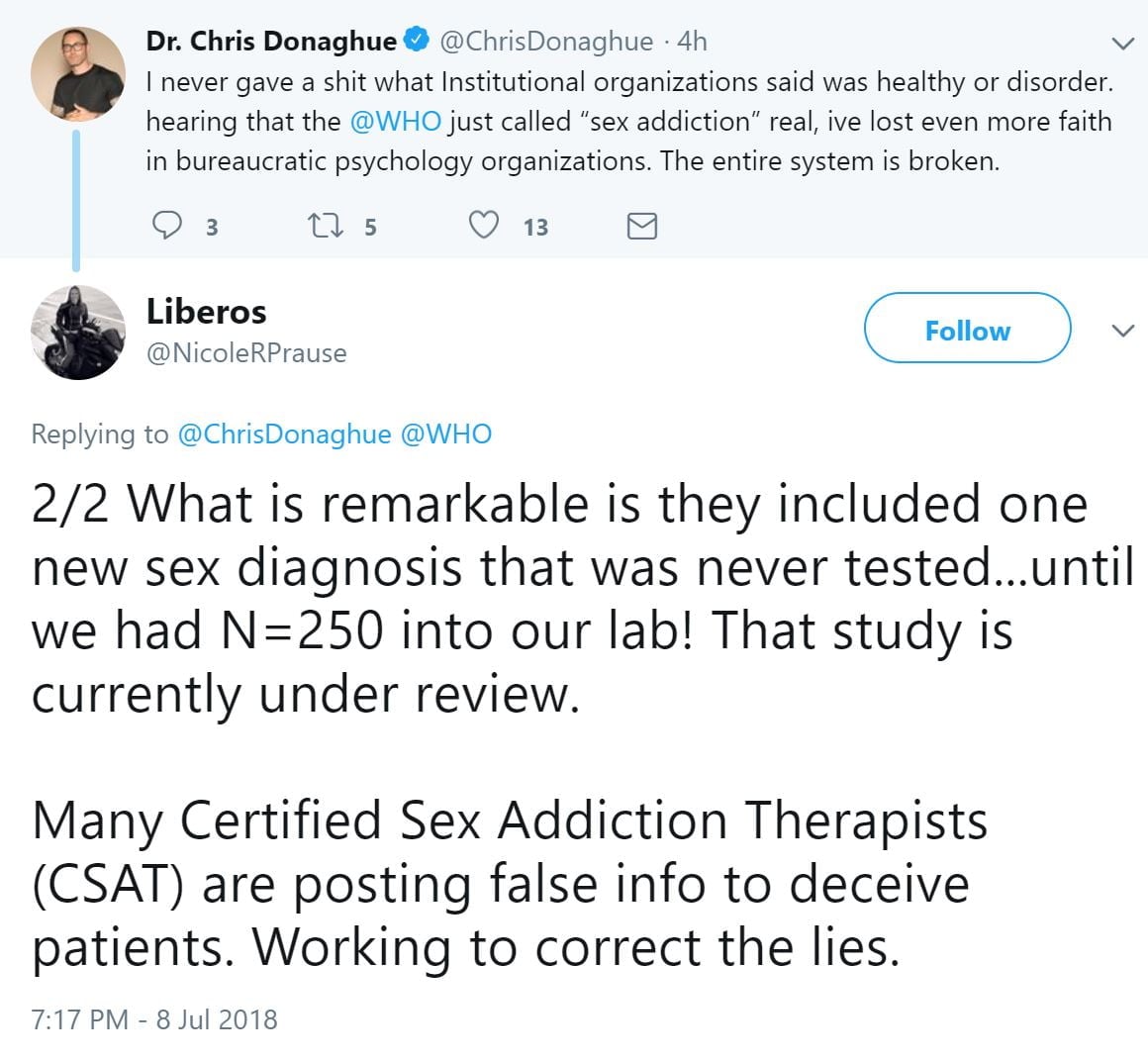
In this 2018 SLATE article, “Why Are We Still So Worried About Watching Porn?” by Marty Klein, Taylor Kohut, and Nicole Prause, we were even told that the World Health Organization should wait for Prause’s OM study:
More importantly, we have no laboratory studies about actual sexual behaviors in those who report this difficulty. The first study of partnered sexual behaviors in the laboratory, which tests the compulsivity model, is currently under peer review at a scientific journal. (Disclosure: One of this article’s co-authors, Nicole Prause, is the lead author of that study.) The World Health Organization should wait to see if any science supports their novel diagnosis before risking pathologizing millions of healthy people.
There several more examples of Prause telling the world that her upcoming “partnered sex” study will debunk porn and sex addiction…for all time.
After all her crowing that her upcoming Orgasmic Meditation study would debunk porn addiction, Prause pre-registers the OM study on March 27, 2018 as now assessing “addiction models of sex film viewing.” Most irregular.
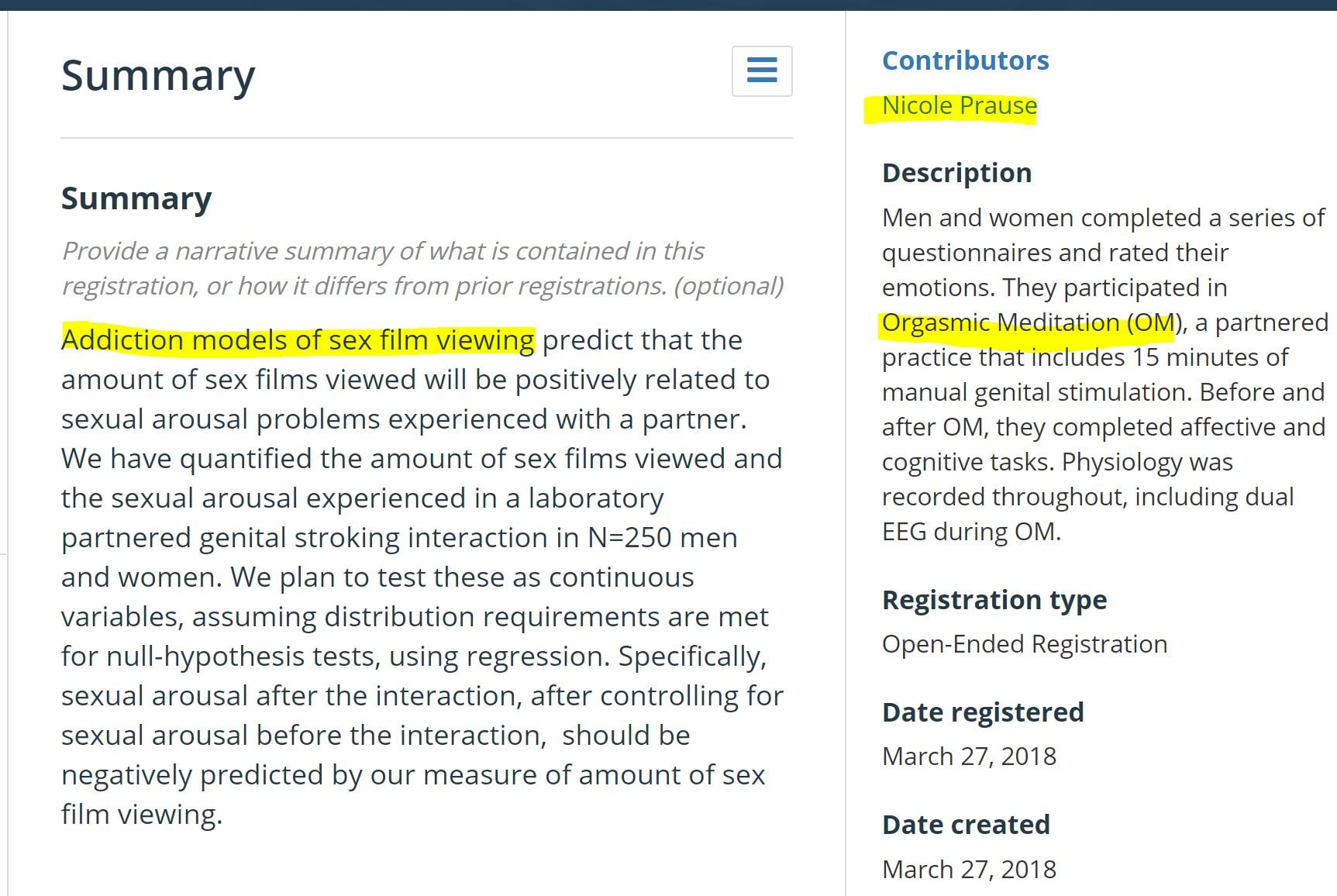
Contrary to what Prause did here, pre-registration means that prior to collecting actual data, you share the introduction and methods section of your paper with others. Prause is pre-registering her OM study 2 years after collecting data, and a year after boasting that her “findings’ debunked porn addiction. The journal that eventually publishes Prause’s OM study needs to look very closely into the unprofessional behavior surrounding this paper. So do ethics organizations.
What Prause is not telling anyone is that she may have used porn performers supplied by the lobbying arm of porn industry, the FSC. The same FSC that offered her help 3 years earlier when her Twitter account was permanently banned for harassment. (The victim of Prause’s Twitter-based harassment? The lead author of one of the most cited reviews of the literature on the porn addiction model: Neuroscience of Internet Pornography Addiction: A Review and Update (2015).)
Bottom line: Prause was offered, and appears to have accepted help from the FSC. Immediately, Prause used social media (and emails) to promote porn-industry interests, while simultaneously attacking research that reflected poorly on porn. Since then, she has waged an extensive war on individuals and organizations she labels as “anti-porn activists.”
Question: Does the University of Pittsburgh know how Prause has turned its study into a propaganda tool for the porn industry? The OM study apparently received its IRB approval through Pittsburgh and co-researcher Dr. Greg J. Siegle. Does the University know that Prause allegedly obtained subjects via the Free Speech Coalition? Does the University of Pittsburgh know about Prause’s close ties to the porn industry? Is the University of Pittsburgh aware of Prause’s long history of unethical, and sometimes illegal, behaviors (false police reports, defamation, false reports to governing boards) in support of the porn-industry agenda?
- 2020 – 10-part series by the BBC – The Orgasm Cult: In the search for wellness, how far would you go? Investigating wellness company One Taste and asking big questions about women’s health.
- 2021 – “Inside the multi-million dollar orgasm cult endorsed by Hollywood” (The Telegraph, UK)
Prause’s direct support for porn & sex industry (FSC, XBIZ, Xhamster, etc.).
This section contains a few examples of Prause directly supporting the FSC, AVN, porn producers, and porn websites
IMPORTANT TO NOTE: Instead of using her own account to misrepresent the science, Prause almost exclusively used her alias shill account @BrainOnPorn during 2019 and 2020. Over 1,000 additional examples are on these 3 pages:
- RealYourBrainOnPorn (@BrainOnPorn) tweets: Daniel Burgess, Nicole Prause & pro-porn allies collaborate on a biased website and social media accounts to support the porn industry agenda (beginning in April, 2019)
- RealYourBrainOnPorn (@BrainOnPorn) tweets DIRECTLY supporting the porn industry, especially Pornhub
- RealYourBrainOnPorn (@BrainOnPorn) tweets, page 2: Daniel Burgess, Nicole Prause & pro-porn allies collaborate on a twitter account to support the porn industry and to harass & defame anyone who speaks about porn’s negative effects
In April of 2019 Prause and Daniel Burgess created a trademark infringing site (“RealYourBrainOnPorn”) and its accompanying Twitter account. RealYBOP prominently features porn addiction deniers who openly function as an agenda-driven collective (RealYBOP “experts”)
In July of 2019, three of the better known RealYBOP “experts” began openly collaborating with the porn industry: David Ley, Justin Lehmiller and Chris Donaghue. All 3 are on the advisory board of the fledgling Sexual Health Alliance (SHA). In a blatant financial conflict of interest, David Ley and the SHA are being compensated by porn industry giant xHamster to promote its websites (i.e. StripChat) and to convince users that porn addiction and sex addiction are myths! See “Stripchat aligns with Sexual Health Alliance to stroke your anxious porn-centric brain.” In the xHamster/SHA maiden voyage Ley is going to tell xHamster customers what “medical studies truly say about porn, camming and sexuality”:
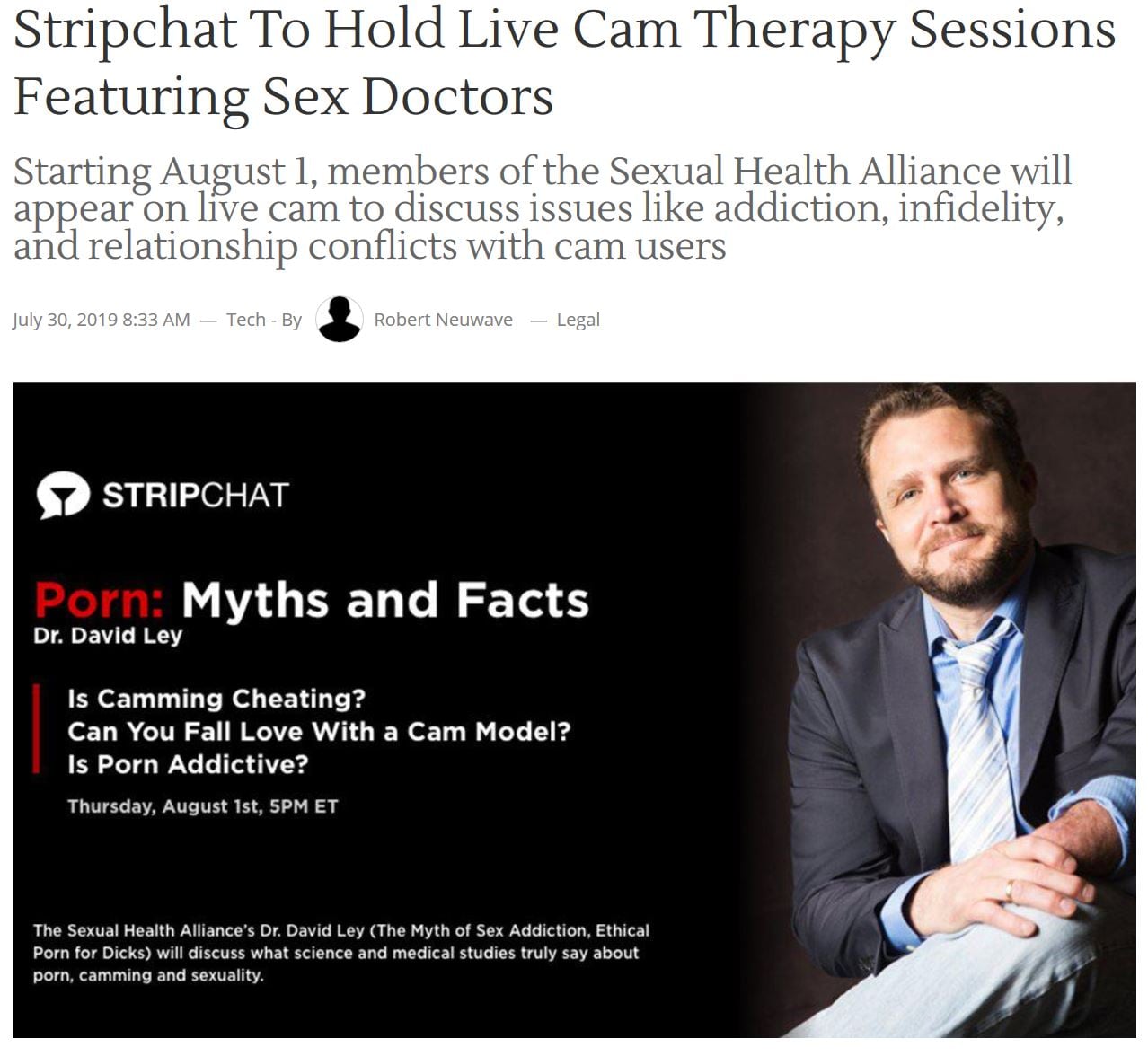
Will Ley tell xHamster customers that every study ever published on males (about 70) links more porn use to less sexual and relation satisfaction? Will Ley tell them that all 55 neurological studies on porn users/sex addicts report brain changes seen in drug addicts? Will he inform his audience that 50% of porn users report escalating to material they previously found uninteresting or disgusting? Somehow I doubt it. In their promotional tweet we are promised a slate of SHA brain experts to soothe users’ “porn anxiety” and “shame” (Ley and other SHA “experts” are light years away from being brain experts).
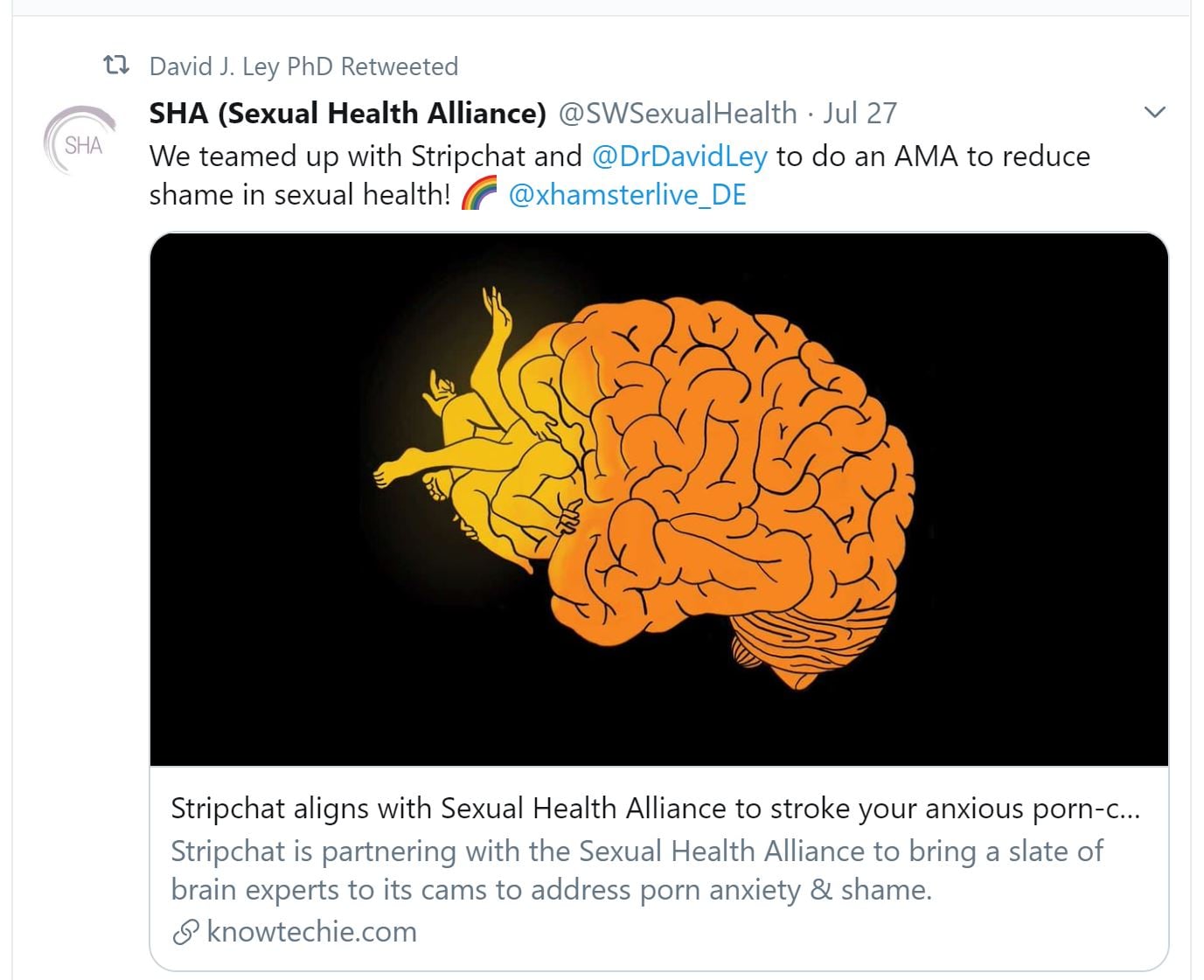
The official StripChat Twitter account reveals the true reason for paying SHA “experts”: to soothe their anxieties to prevent the loss of paying customers. The SHA will accomplish this by “talking about the latest research on sex, camming and addiction,” that is, cherry picking the work done by “their” researchers. Will Ley/SHA mention that hundreds of studies link porn use to myriad negative effects?
Another talk by David Ley, disparaging No-NutNovember (the real target is Nofap), and promoted by RealYBOP:
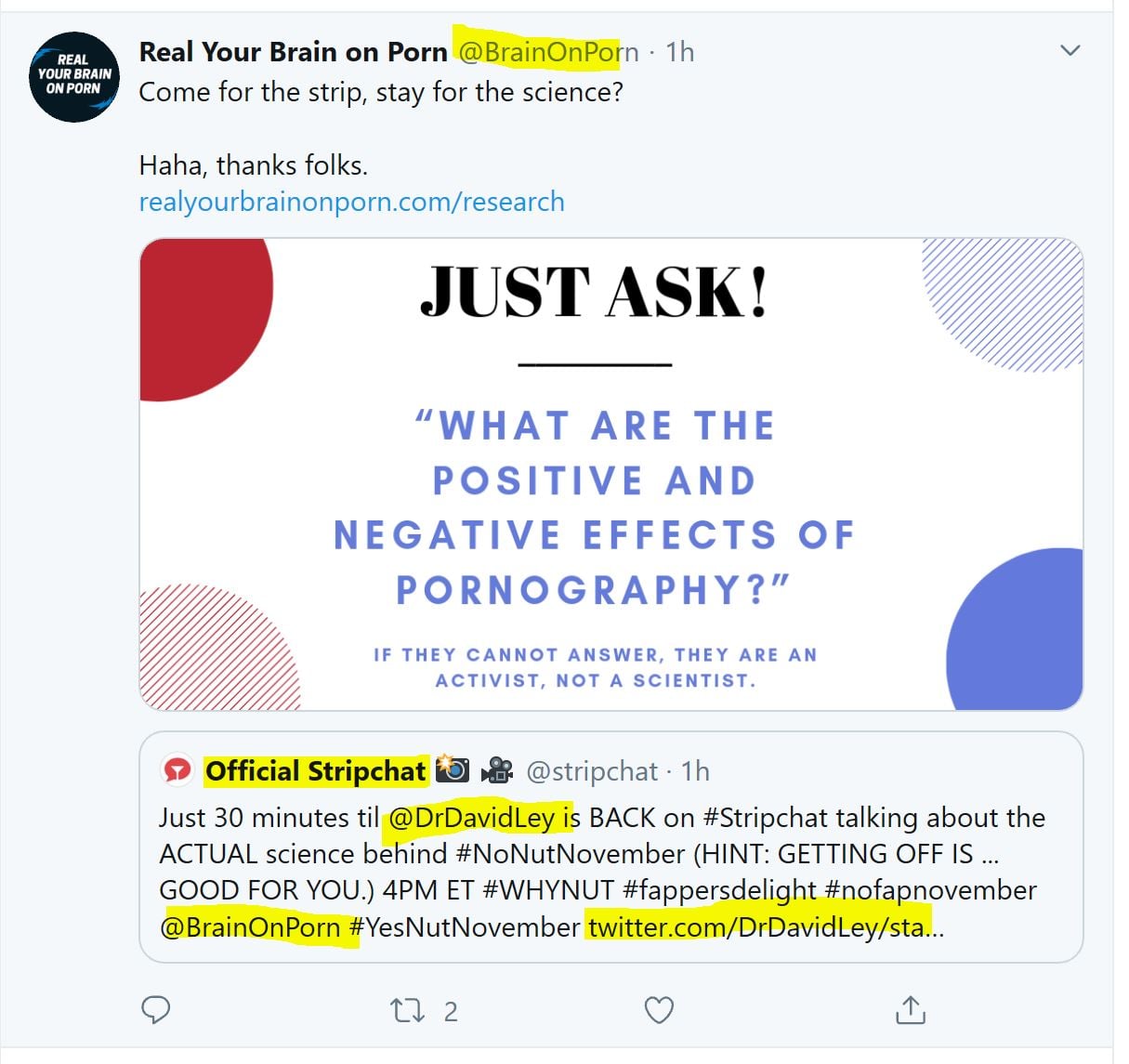
Look how RealYBOP (Nicole Prause alias) is tagged by Stripchat. Nothing suspicious here, folks:
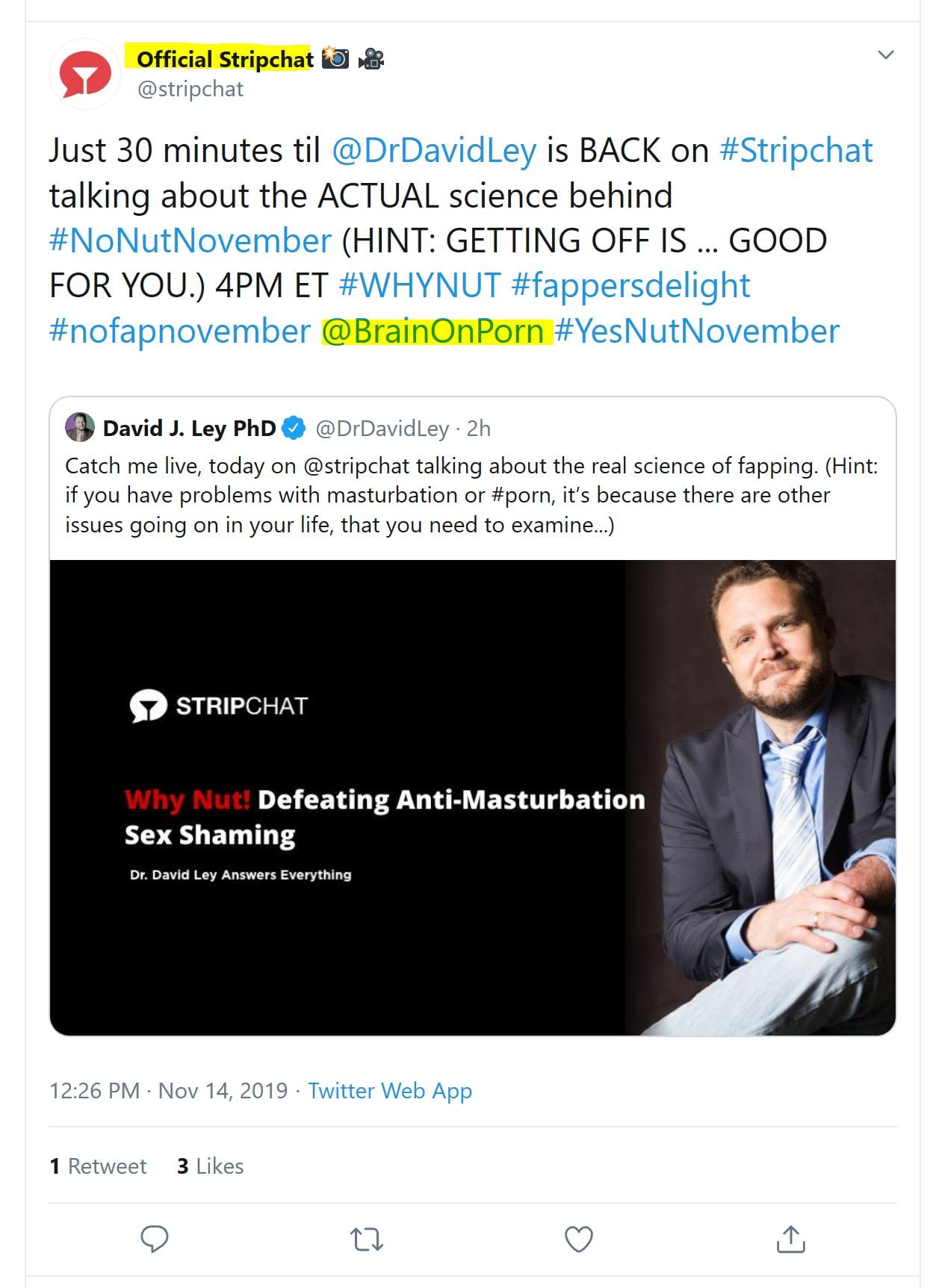
Put simply, the Prause/Burgess site contains members who are compensated by the porn industry to tell porn users porn addiction doesn’t exist and porn use never causes problems. Prause’s alias account (RealYBOP) promotes David Ley’s porn website chats.
On to tweets by Prause’s official twitter account.
—————-
Prause tags the FSC in her tweet attacking unfavorable research on porn performers:
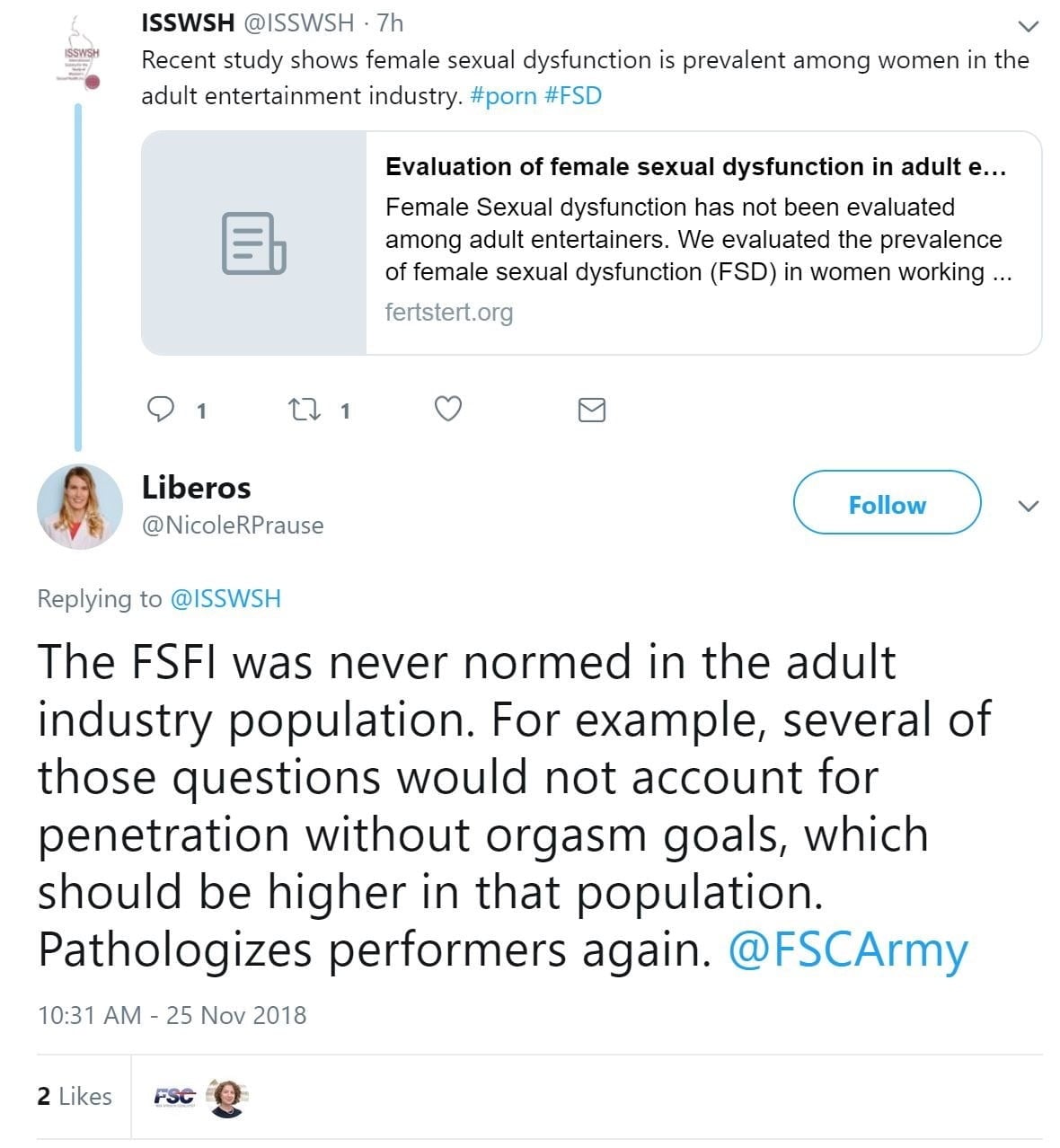
—————–
Informs the ACLU that she is ready to present research in support of porn industry’s position:
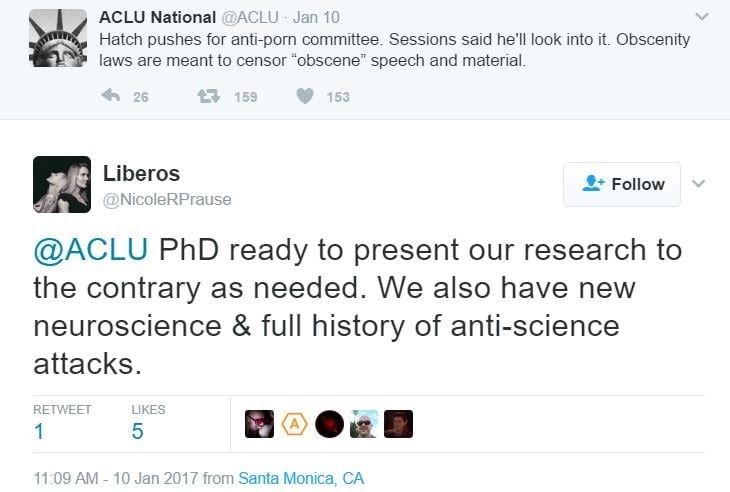
Follows it up with this tweet:
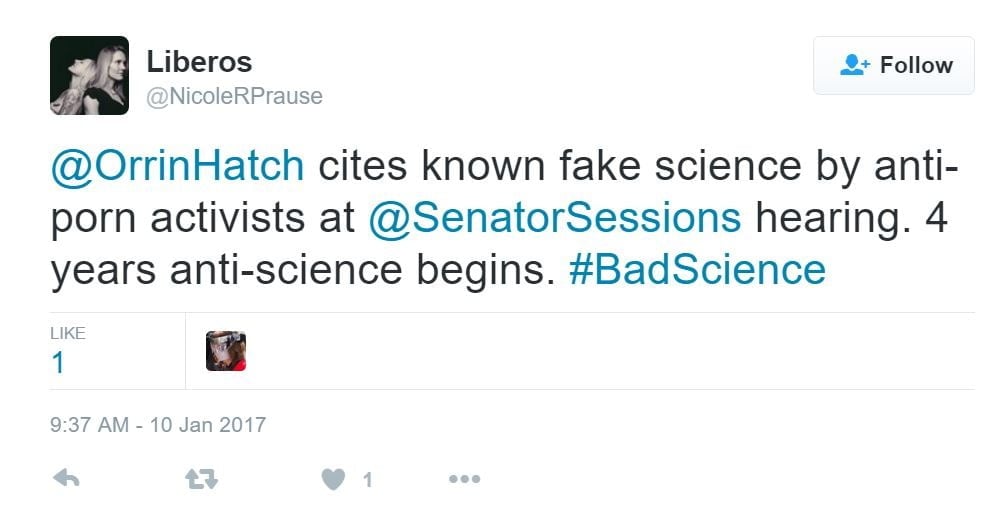
—————–
Retweeting an XBIZ article (which was tweeted by porn producer @MOXXX)
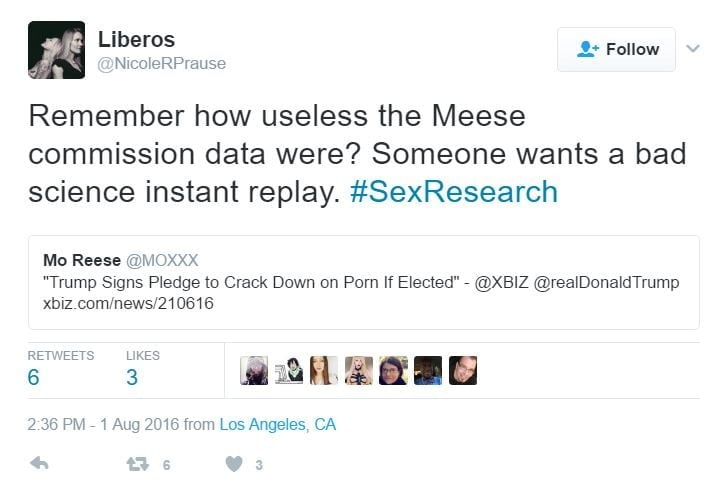
—————-
In a series of tweets Prause tags @XBIZ (The world leader in adult industry news), lending her support to their agendas:
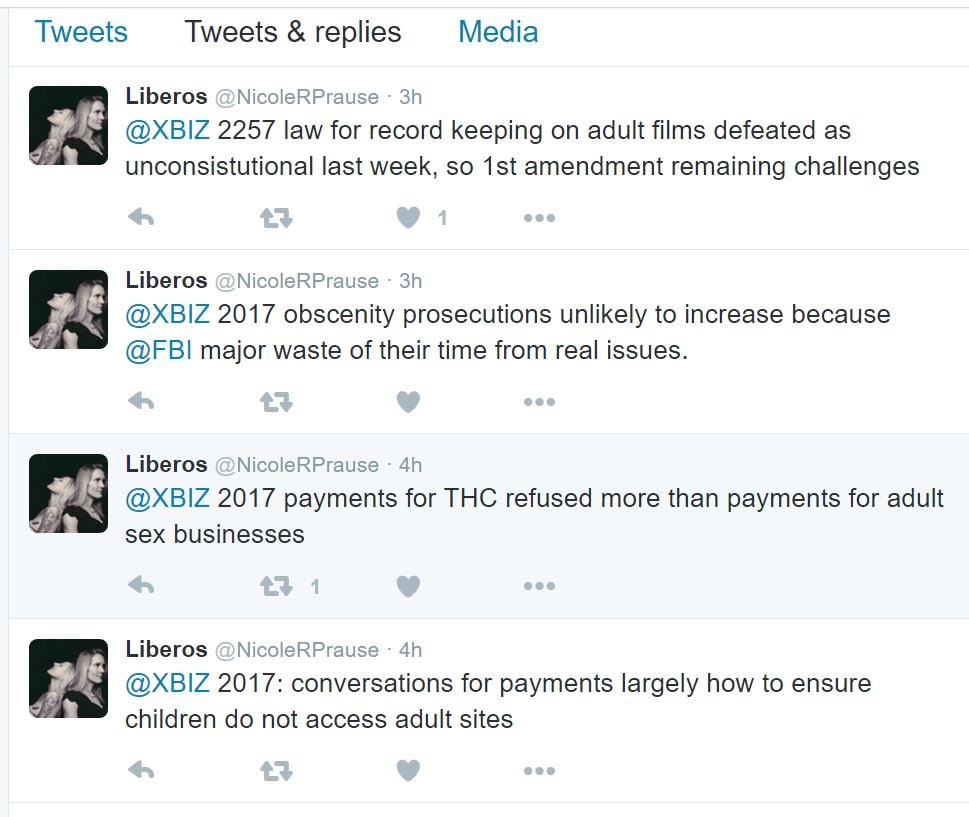
Prause retweets XBIZ, celebrating the demise of The Pink Cross Foundation (which was hated by the porn industry):

YBOP has no opinion on the Pink Cross Foundation.
——————–
Once again, Prause enters threads of porn performers to bolster their arguments:
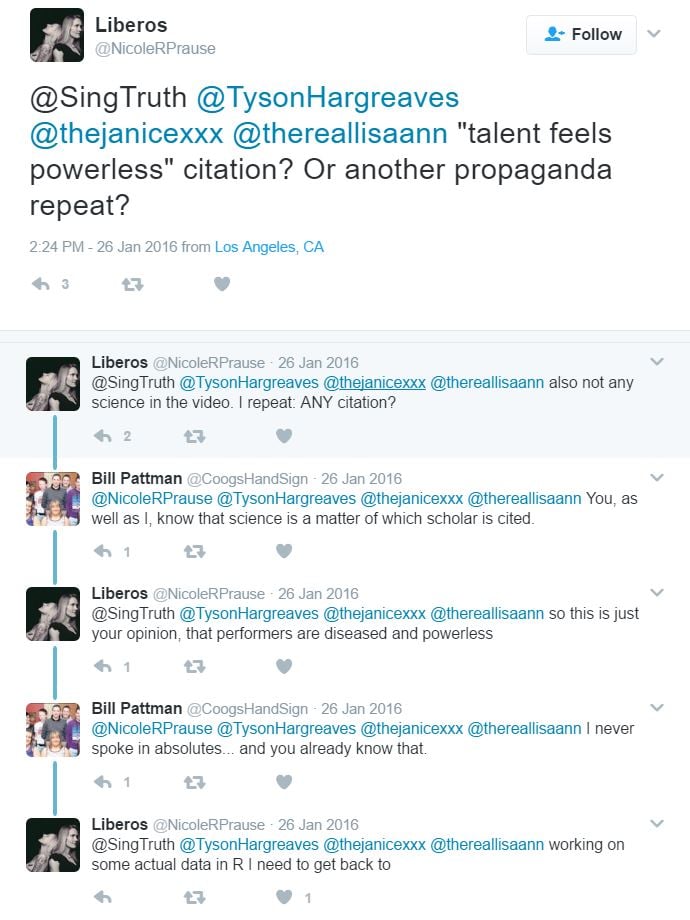
—————-
Prause tweet attacking studies reporting greater trauma in porn performers:
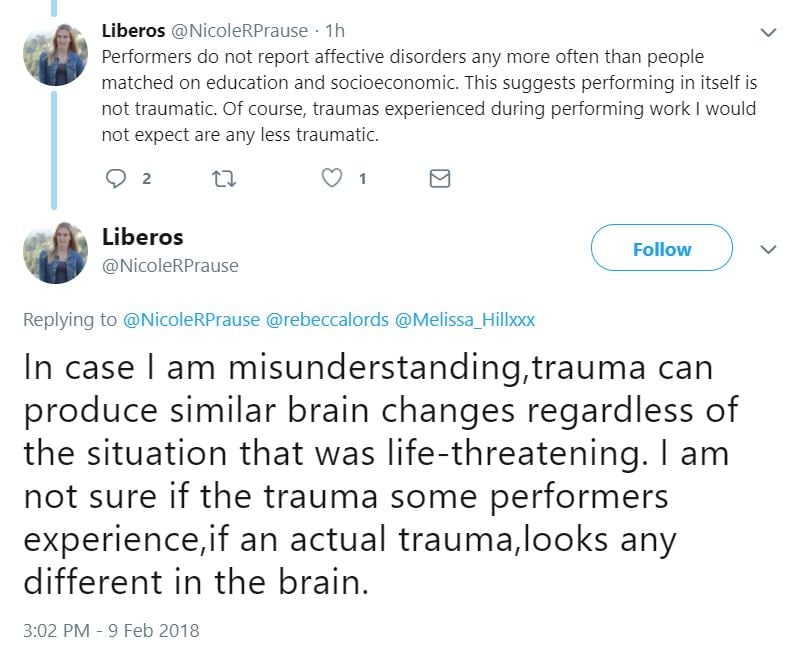
—————-
Once again retweeting the FSC, and lending her spin to the mix. As usual, any science Prause disputes is disreputable, while her own heavily criticized research is indisputable, even when it opposes the preponderance of expert evidence:
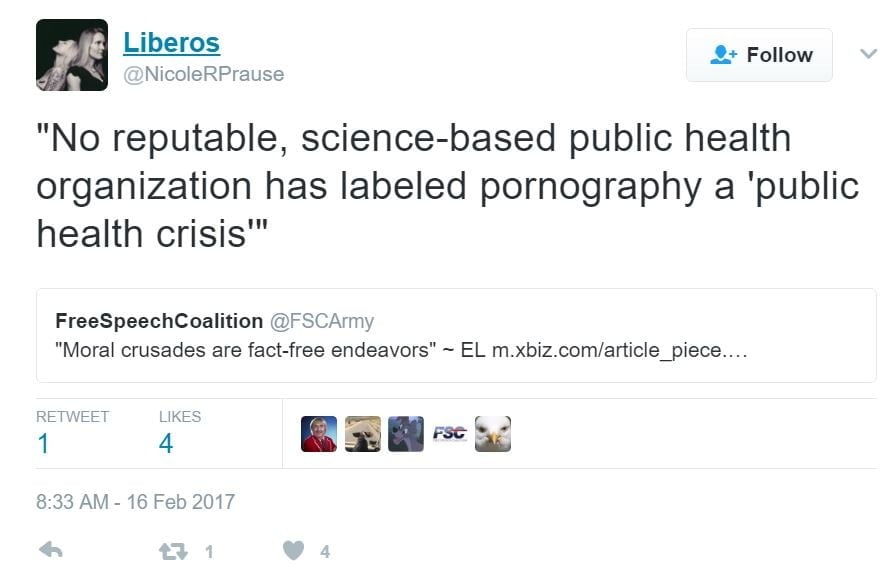
———————
Retweeting an FSC blog post and crowing about how she signed the FSC petition:
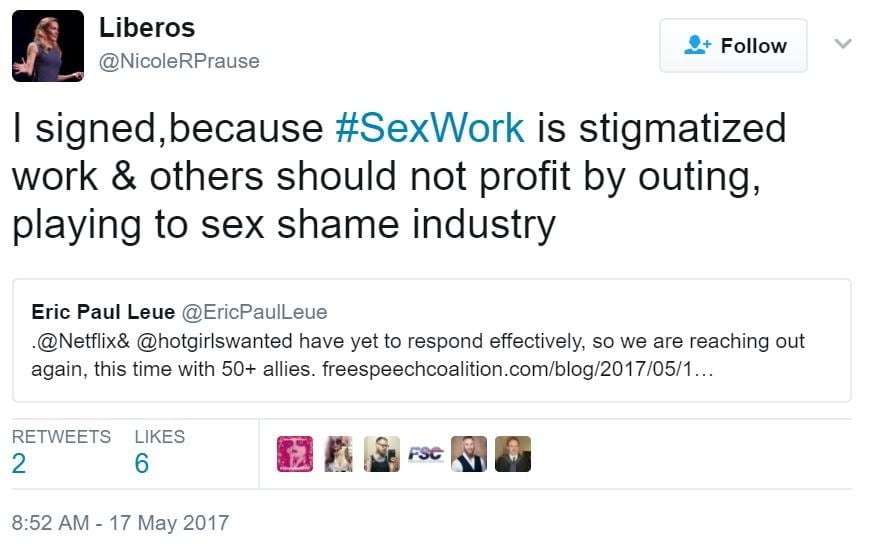
Eric Paul Leue is Executive Director of the Free Speech Coalition
——————–
Tweeting a dubious study:
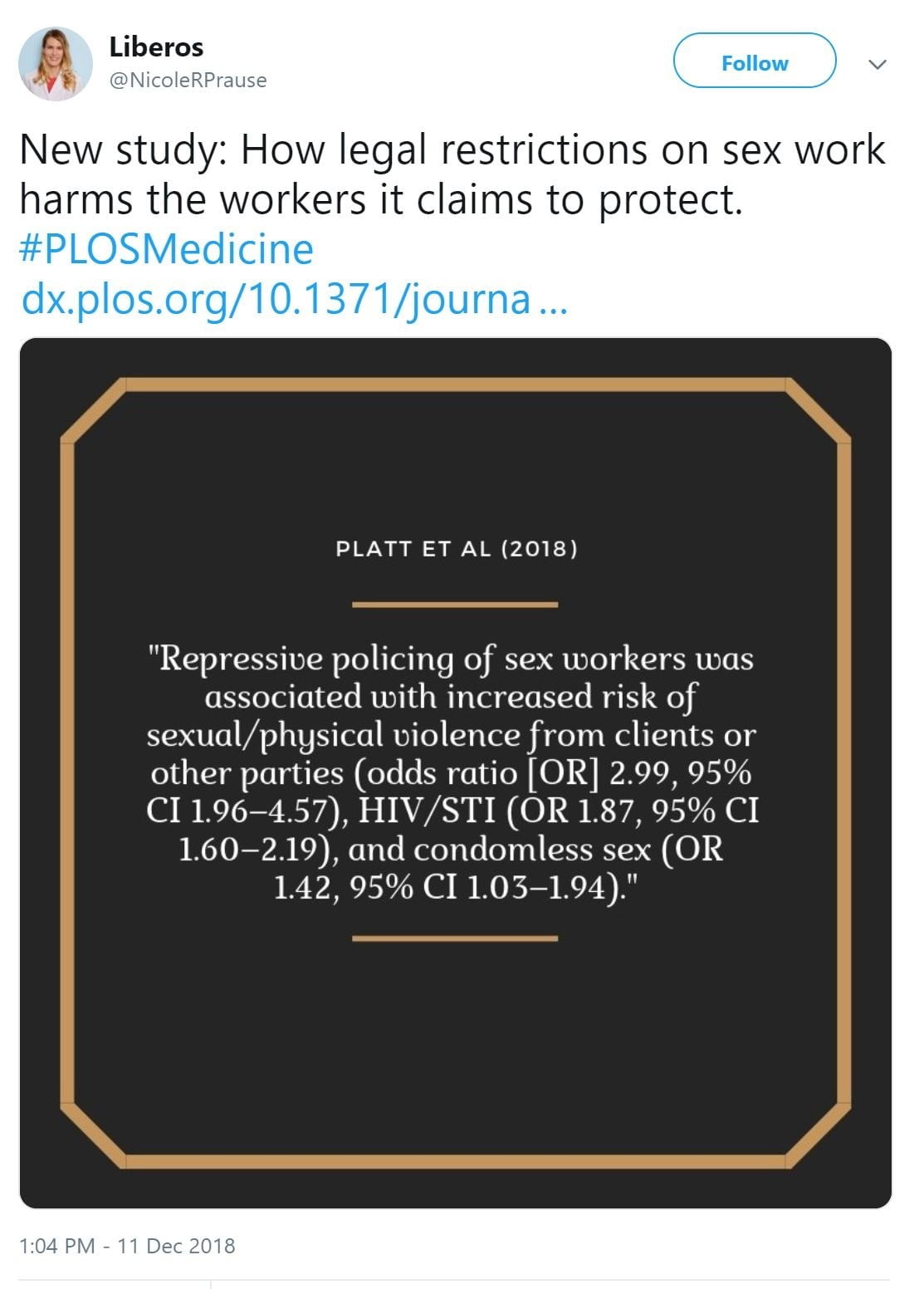
Goes hand in hand with this. Below is a screenshot of Prause’s original answer posted in response to this Quora question (Prause has since deleted her answer): How can I overcome masturbation and/or porn addiction? What are the best methods? Prause’s suggestion to visit a prostitute is in the last paragraph:
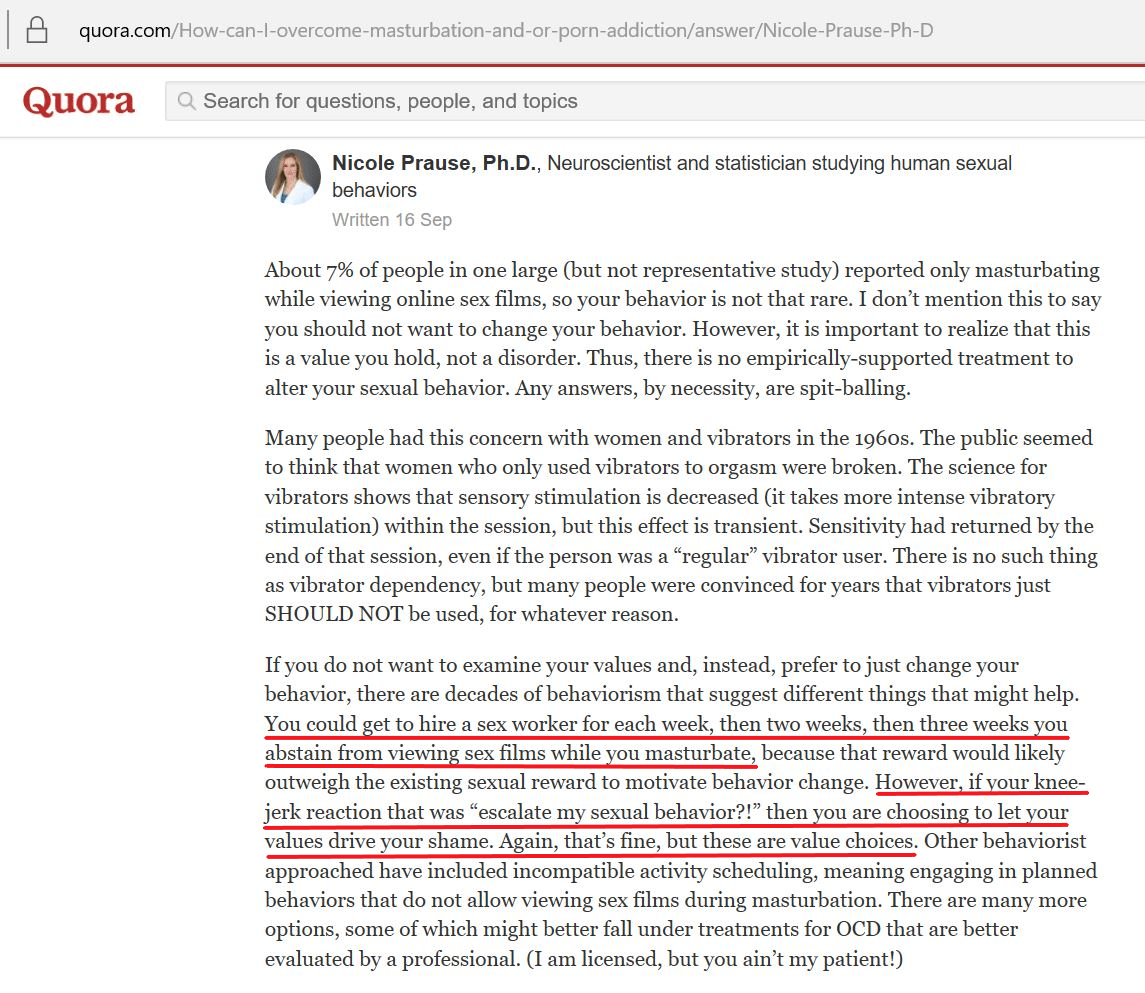
As far as we know it is a violation of ethics code for a California licensed psychologist to advise a patient to visit a prostitute. Prause lied in the Hilton defamation suit that she never posted the above.
——————–
Prause re-tweeting AVN, who was complaining about Dallas rejecting their convention:
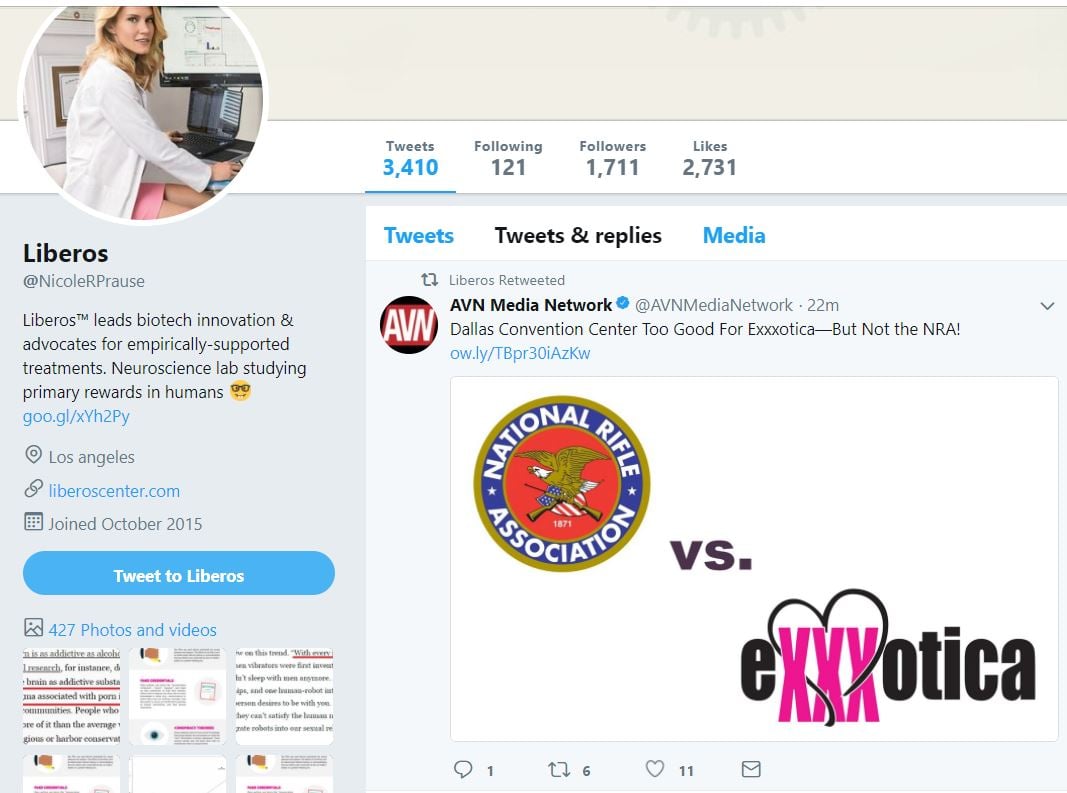
In this tweet, Prause attacks a grad student who is trying to gather data about porn performers:
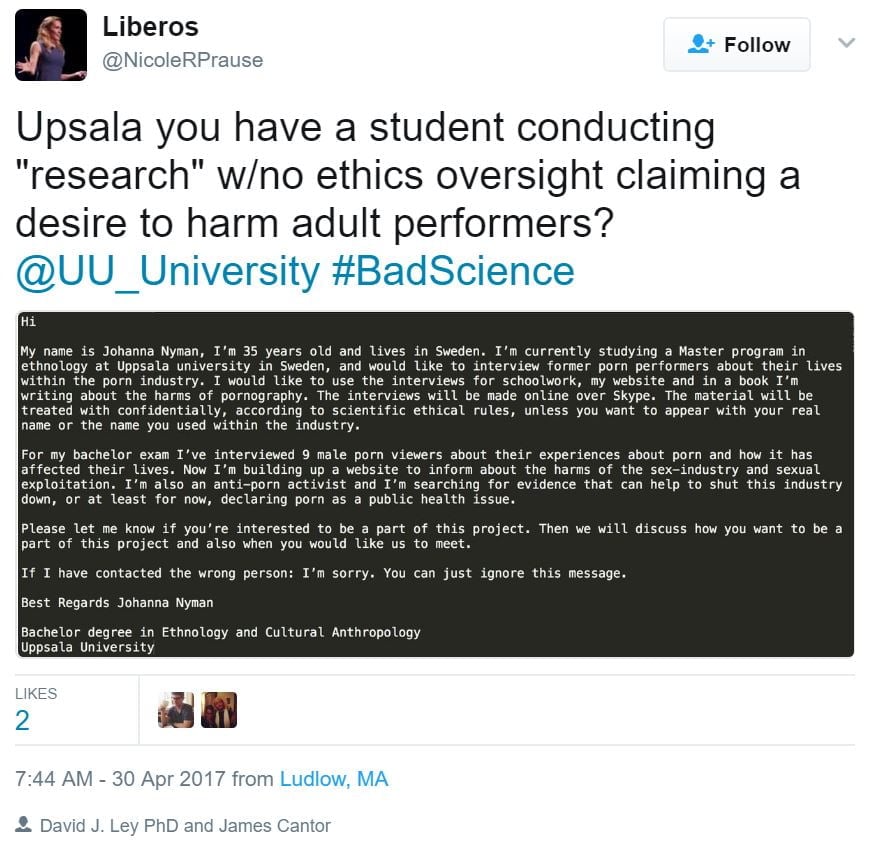
Prause reported her to the university.
——————
Retweeting AVN news:

——————
Again, citing a single outlier study, with a very small sample, to support the porn industry’s contention that performers are doing fine:

——————–
Retweeting porn industry propaganda, telling the world that there is no sexism in the porn industry:
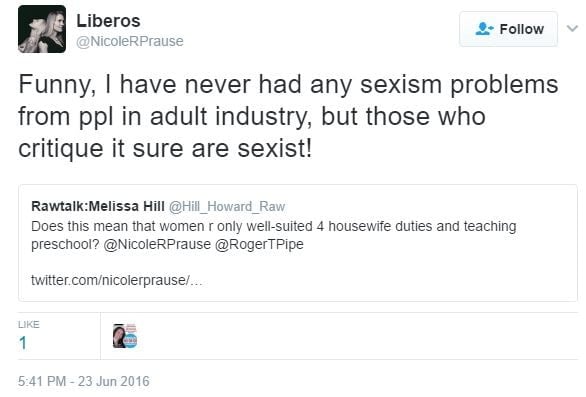
Prause contends that porn-recovery sites are sexist – as is everyone who disagrees with her or anyone who critiques her studies or assertions.
—————————-
Prause’s obsessive cyber-stalking and defamation of Alexander Rhodes and Nofap continue. Apparently, Prause’s expensive PR firm and query bombardment of media outlets resulted in yet another hit piece, published by Fatherly.com (written by Lauren Vinopal). The “journalist” did little more than copy and paste Prause’s Twitter threads, quoting her as the world’s expert on everything related to Nofap.com, reddit/nofap, and men trying to quit porn. First, here’s the barrage of unprovoked tweets, which mirrors previous unsupported drivel in this same “quitting porn causes fascism” (huh?) press campaign. Prause’s first tweet is on the Xhamster thread smearing Nofap. Prause falsely states that Rhodes “worked with” VICE founder Gavin McGinnes:
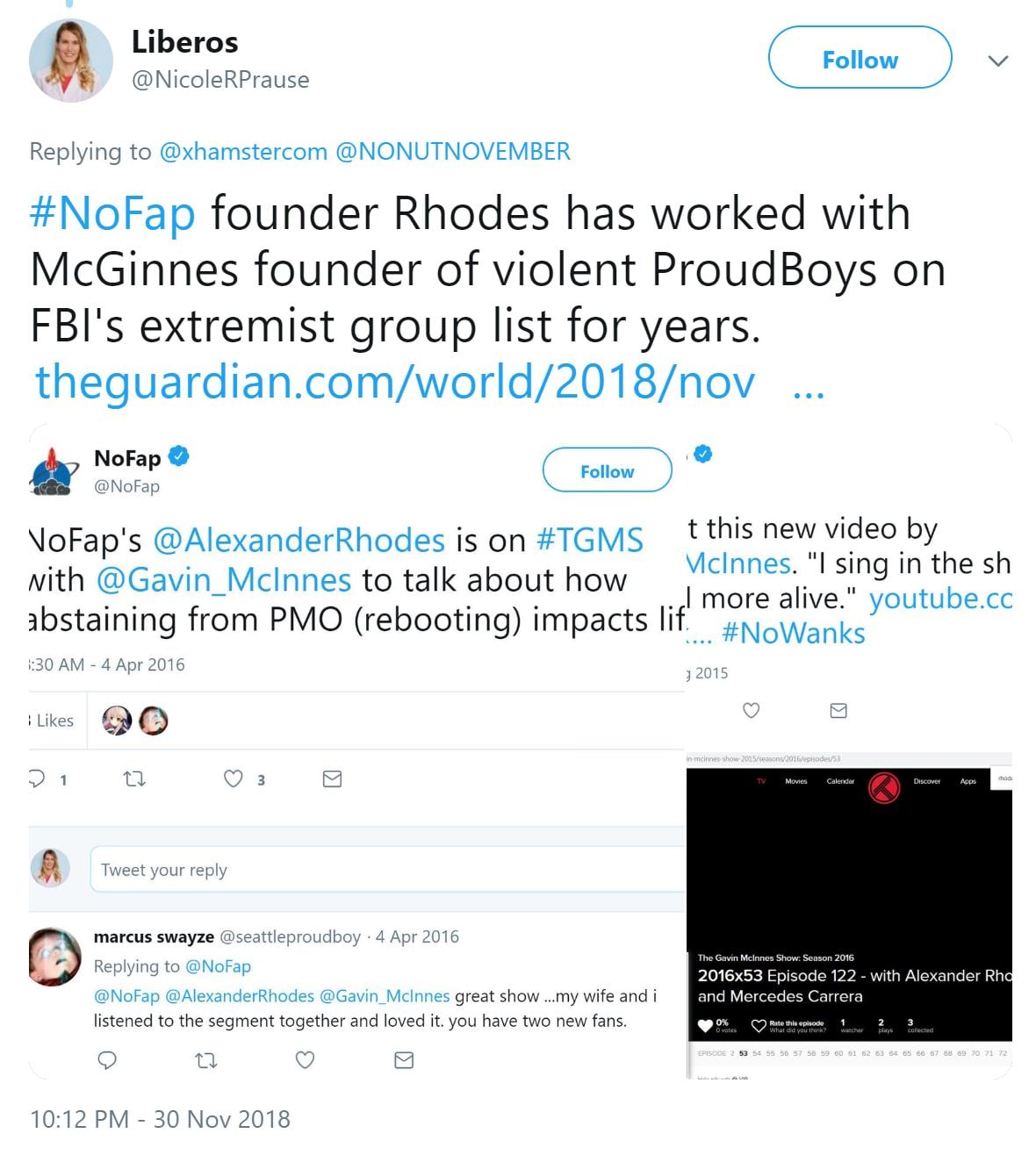
Rhodes was interviewed once, years ago, by McGinnes – before the existence of “Proud Boys.” (McInnes has since publicly divorced himself from Proud Boys.) In any case, as Alexander Rhodes explained on Twitter, at the time of the interview, as far as he and others knew McGinnes was simply the co-founder of VICE Media. Rhodes never promoted or worked with McGinnes – or Proud Boys.
On the other hand, Prause joined Xhamster’s thread with the above tweet. Does this mean she is “working with” a major porn site to attack a porn-recovery forum (again)? This occurred after Xhamster complained to the world that NoNut November was affecting its bottom line:
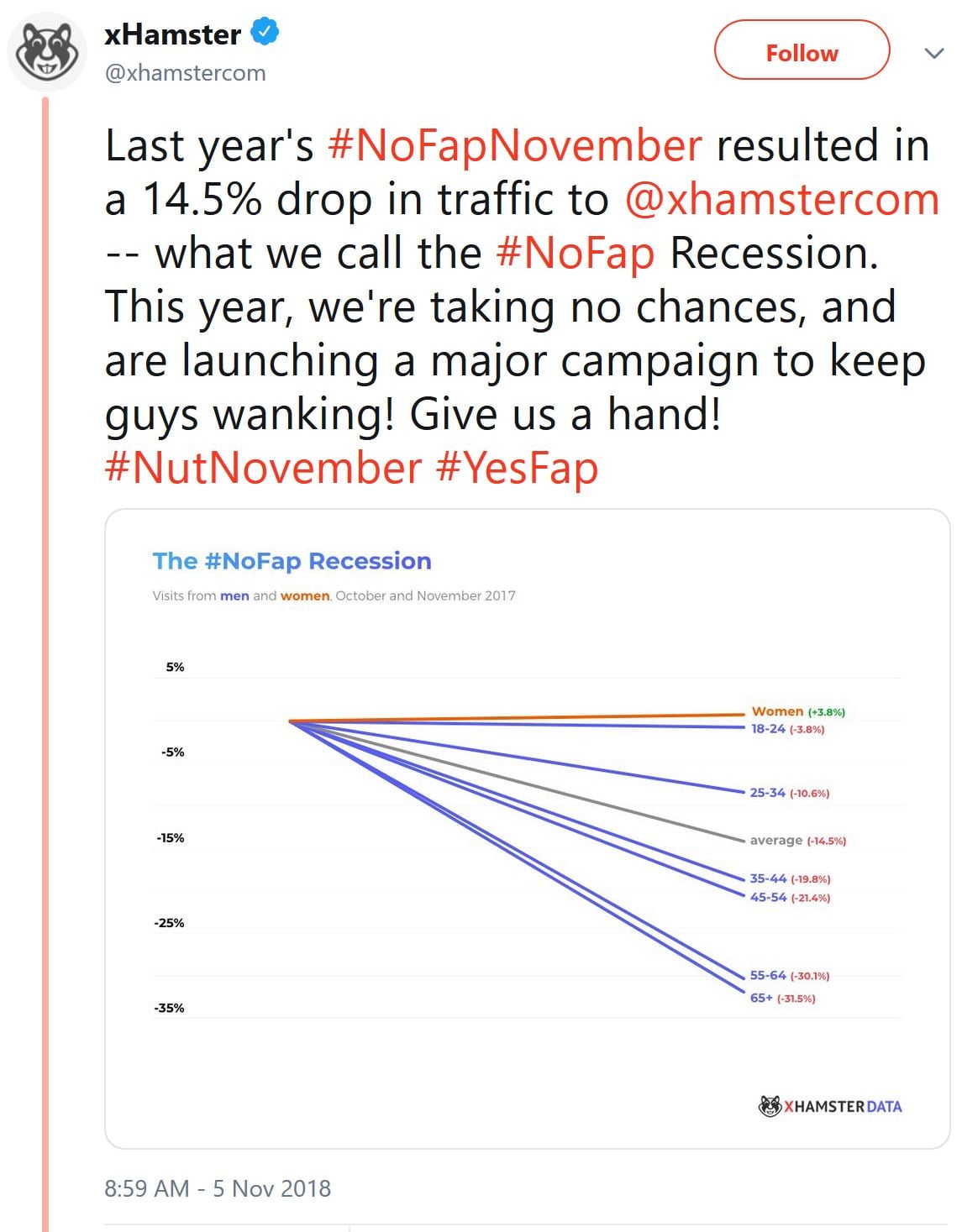
Here’s a second Prause tweet in the Xhamster thread, where she spreads more of her toxic misinformation and tells Xhamster to Direct Message her:
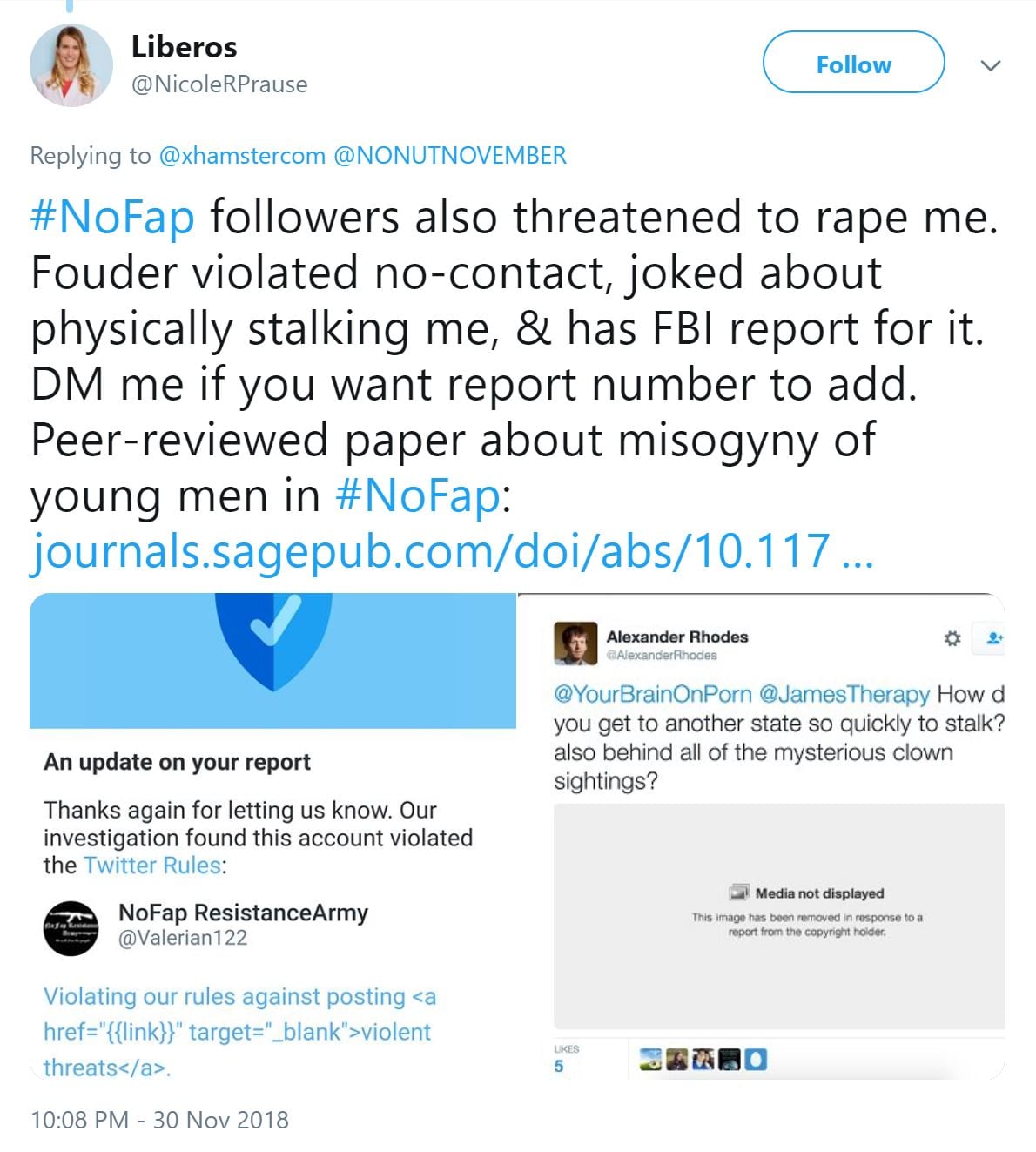
The FBI confirmed that Prause has been lying about her claims to have filed FBI reports: November, 2018: FBI affirms Nicole Prause’s fraud surrounding defamatory claims. Prause is also lying when she says Gary Wilson physically stalked her: Los Angeles Police Department and UCLA campus police confirm that Prause lied about filing police reports on Gary Wilson.
What is true? Nicole Prause appears to be “working with” Xhamster to spread falsehoods about Nofap, Alex Rhodes, and Gary Wilson.
On the same day Prause repeats her lies on a Sarah Manavis thread promoting the Manavis article attacking Nofap, supporting Xhamster, and parroting everything Prause has tweeted in the previous 3 weeks:

It’s highly suspicious that Sarah Manavis somehow knew about a random xHamster Twitter thread, that her hit piece closely mirrors Prause talking points, and that Manavis did not contact Alexander Rhodes for comment. Did Prause “work with” Sara Manavis behind the scenes?
A few days later Prause crows about the Fatherly.com piece she helped with:
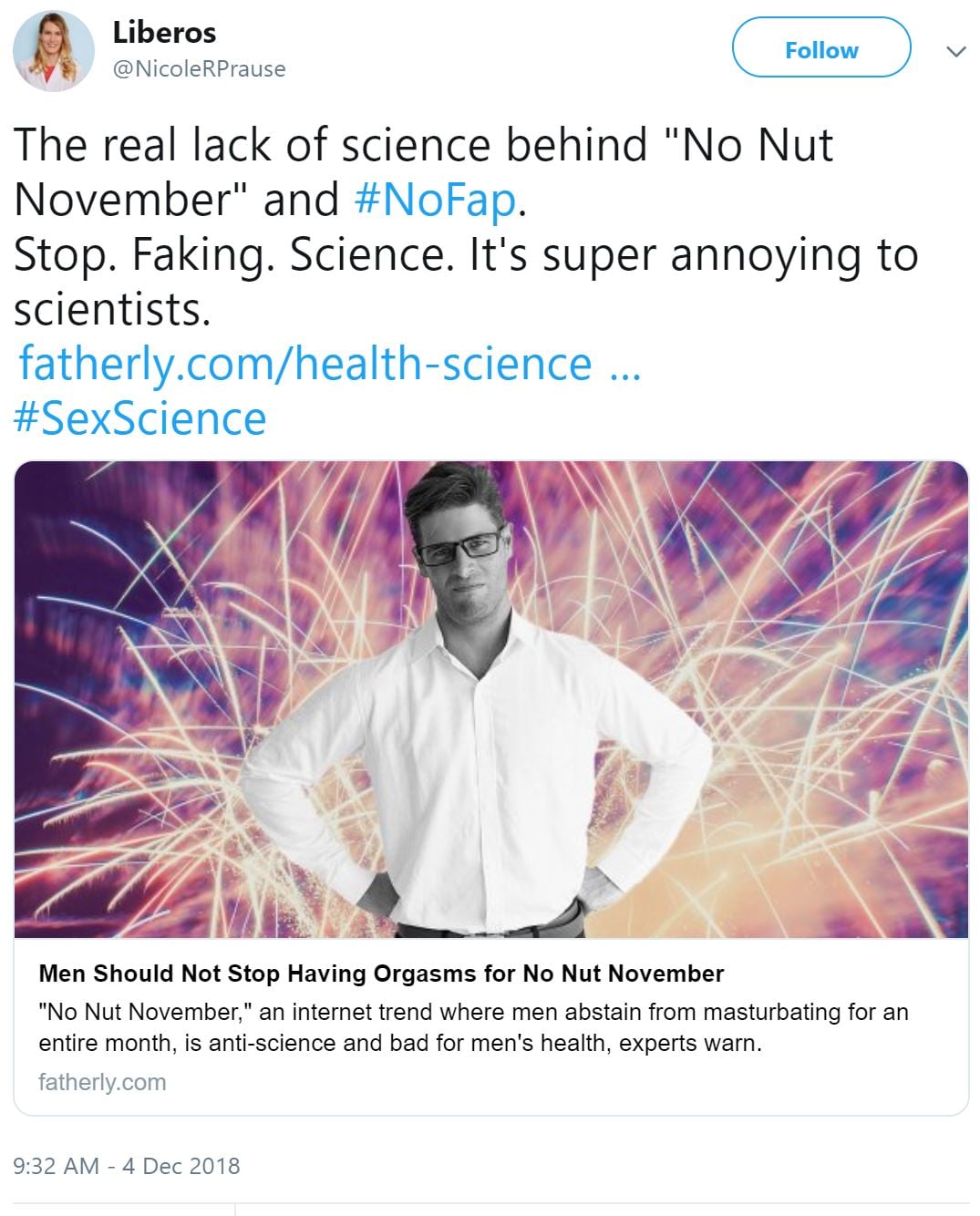
Thus, the Fatherly.com article rests on Ley & Prause’s Psychology Today article labeling porn recovery forum as fascists, Sarah Manavis’s hit-piece, and all of Prause tweets and Psychology Today comments. The Fatherly.com hit-piece liberally quotes Prause as the world’s expert on Nofap.com and men who quit porn:
“I think ‘No Nut November’ is largely anti-science,” psychophysiologist and neuroscientist Nicole Prause, told Fatherly. “The new designation, and it is hardly a tradition, appears supported most by the for-profit NoFap company, some religious organizations, and groups like Proud Boys. These are largely known for their very young male members and misogyny.”
More lies as NoFap.com had nothing to do with NoNutNovember, and claims that there’s a link between quitting porn and misogyny are the exact opposite of what the research shows and what men on the forums report.
Gotta give it up to Prause. It appears that with the aid of her PR firm, and apparently Xhamster, her tireless work paid off. It all started with Ley’s (and her) inflammatory Psychology Today blog post… and eventually mushroomed into a propaganda meme that “the little ol’ porn industry is the victim of evil younguns who no longer watch porn.” Sadly, this fabricated meme has now been recklessly pumped up by irresponsible “journalists” who are able to disregard facts, common sense, and peer-reviewed studies.
—————————-
Prause tagged by PornHub. Very buddy-buddy convo:
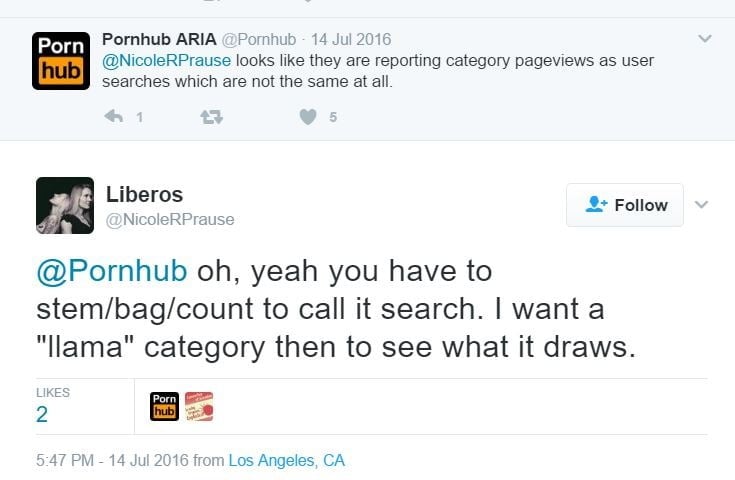
—————–
Prause offers to testify on the side of porn producers, against a proposed Utah bill opening porn producers to lawsuits:
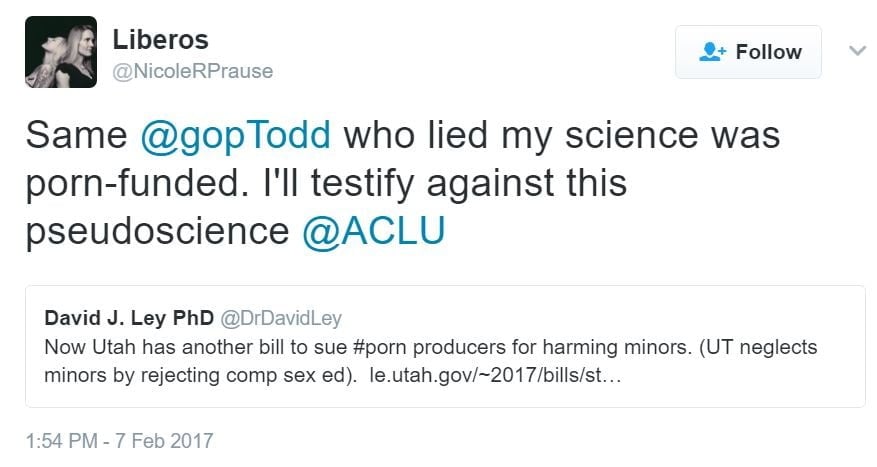
Note: One can be funded (or supported in alternative avenues) without direct funding of research (such as access to subjects willing to engage in sex while being monitored in a lab).
—————–
More direct support for porn industry views:
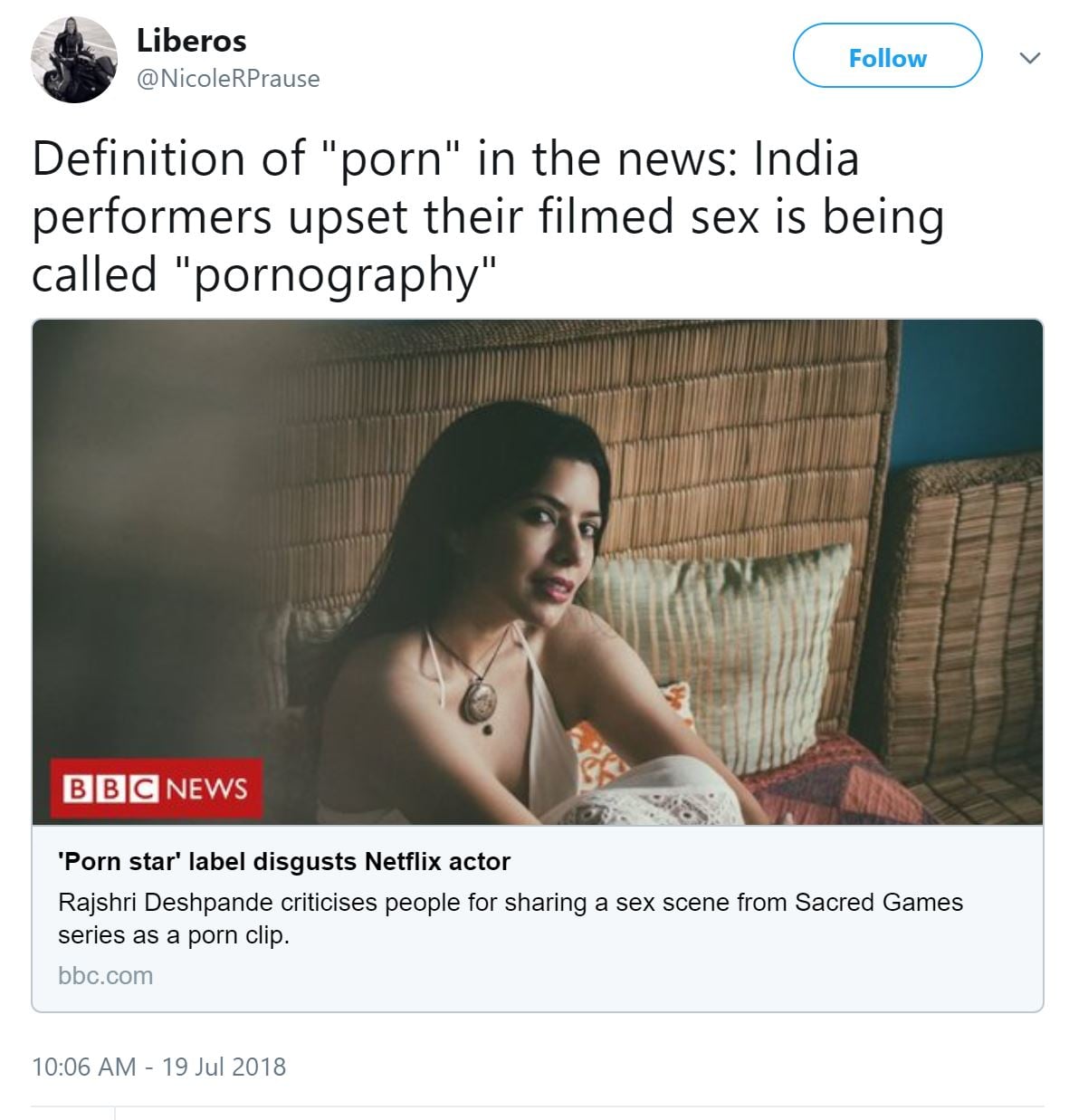
——————
Retweeting xHamster:
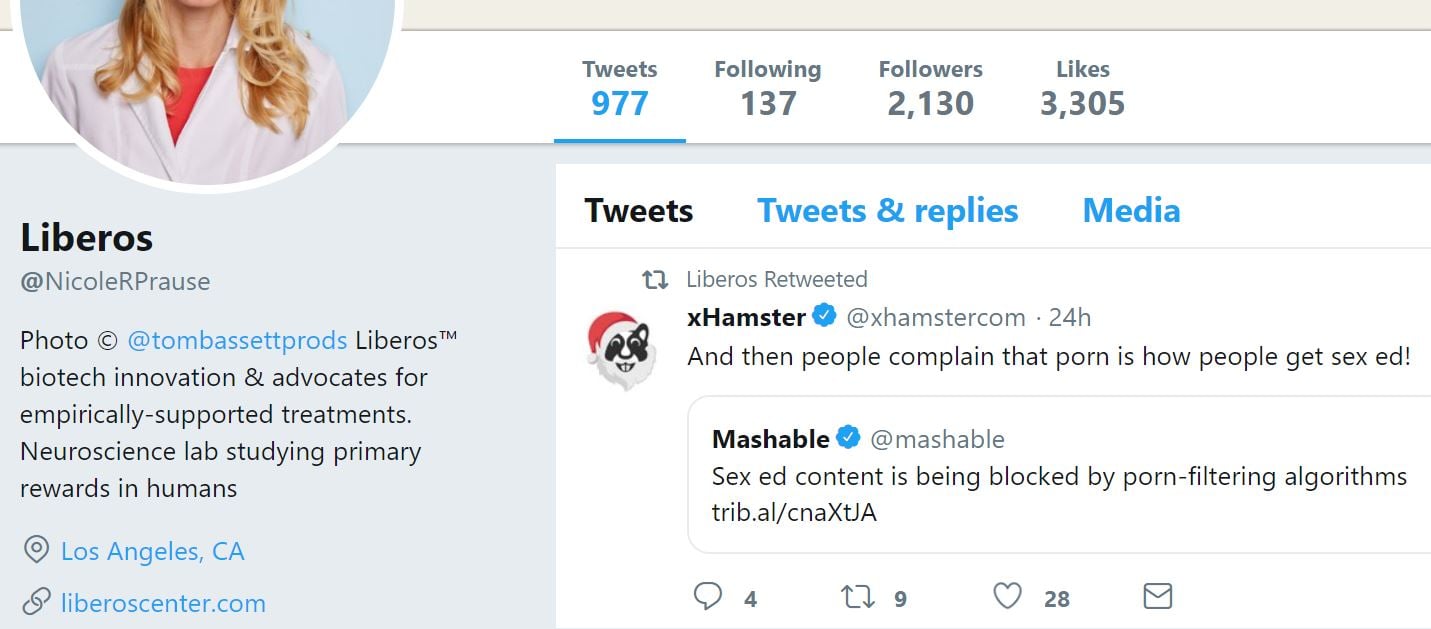
——————–
Supporting the porn industry’s agenda once again, Prause says August Ames’s depression was not related to her work (she died by suicide). Whether it was or wasn’t why does Prause feel compelled to defend the porn industry?

Prause also states that she will help adult performers locate “providers who have the proper training” (code for never saying that working in porn might lead to poorer emotional outcomes). Note that Prause tells performers to report any therapist who suggests that working in porn might cause problems.
The next day Prause continues to support the porn industry on this same thread:
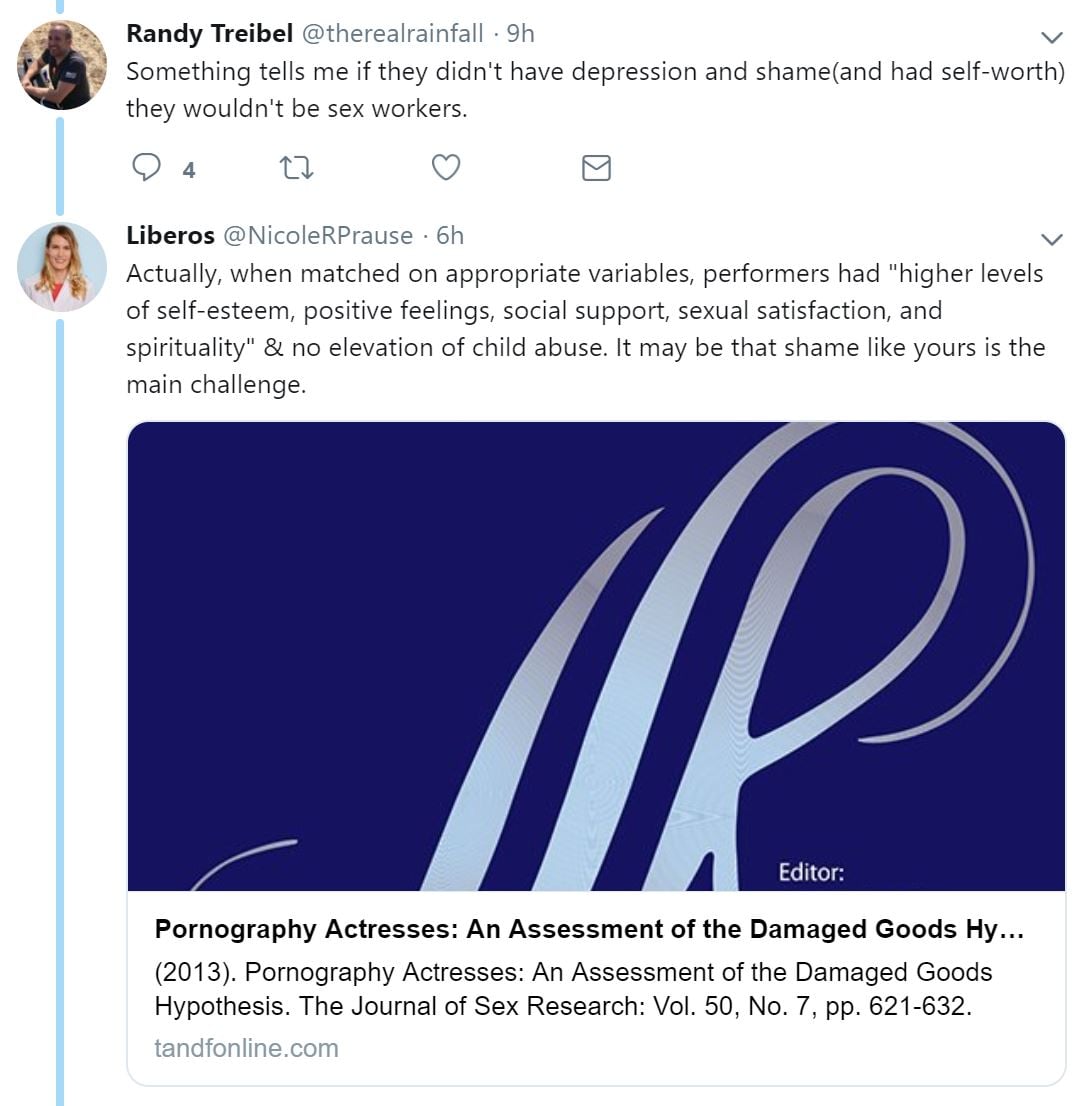
The back and forth continues, with Prause claiming she receives zero money from porn (why did she feel compelled to announce this?):
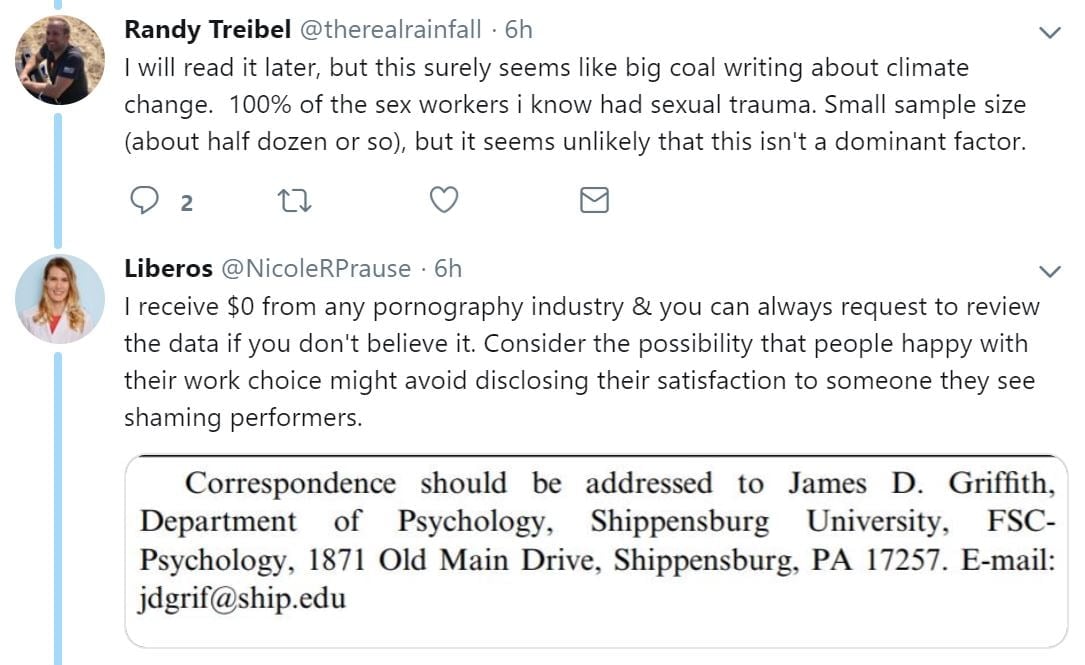
Prause continues the debate, adding that “it is extremely rare for studies to include even an assessment of benefits of sex films viewing or participation.“
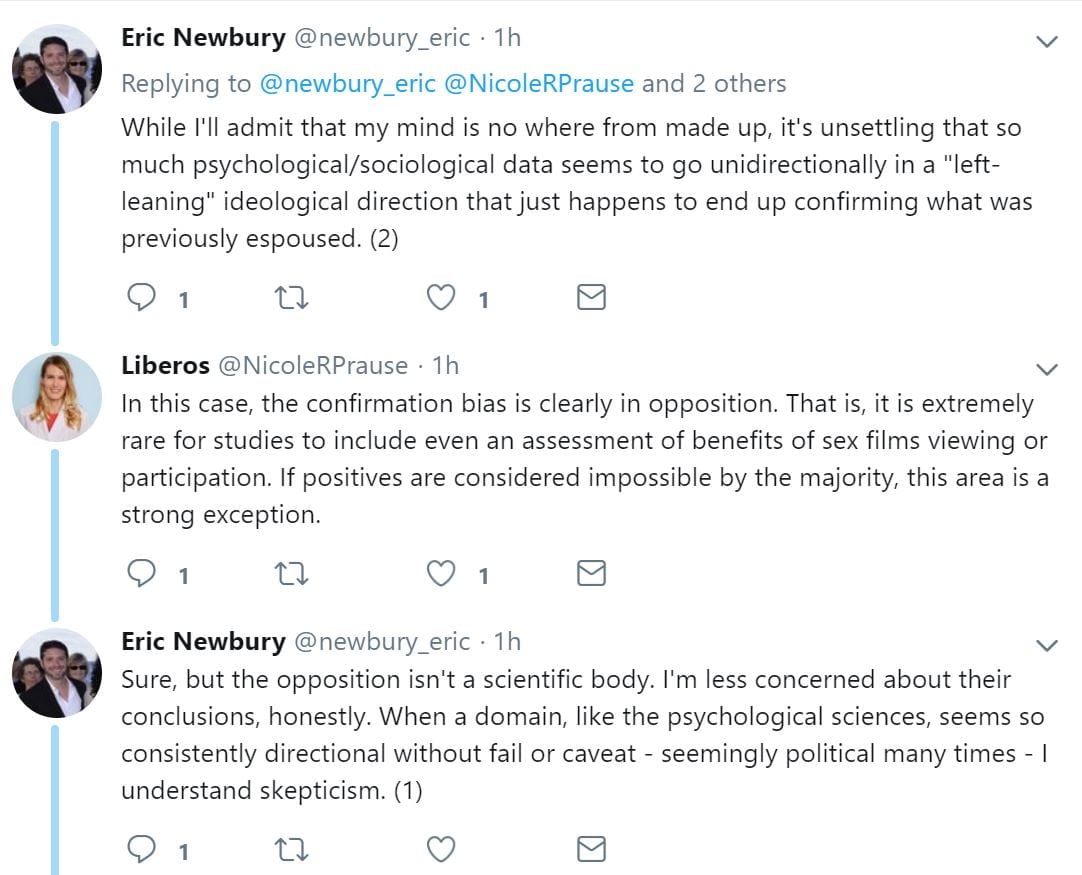
Prause’s assertion is nonsense. Many studies assess correlations between porn use and positive outcomes…. but they rarely find such correlations. For example, greater sexual or relationship satisfaction is clearly a positive outcome, yet, as far as we know all studies involving males have reported more porn use linked to poorer sexual or relationship satisfaction: Over 75 studies link porn use to less sexual and relationship satisfaction.
——————–
In a twitter thread where Prause defamed Gary Wilson and Alexander Rhodes, an individual responded with a link to this very page (Is Nicole Prause Influenced by the Porn Industry?), and tweeted a screenshot of Prause and her porn-star buddies. Prause responded with disingenuous gibberish to explain away her close relationship with so many names in the porn industry:
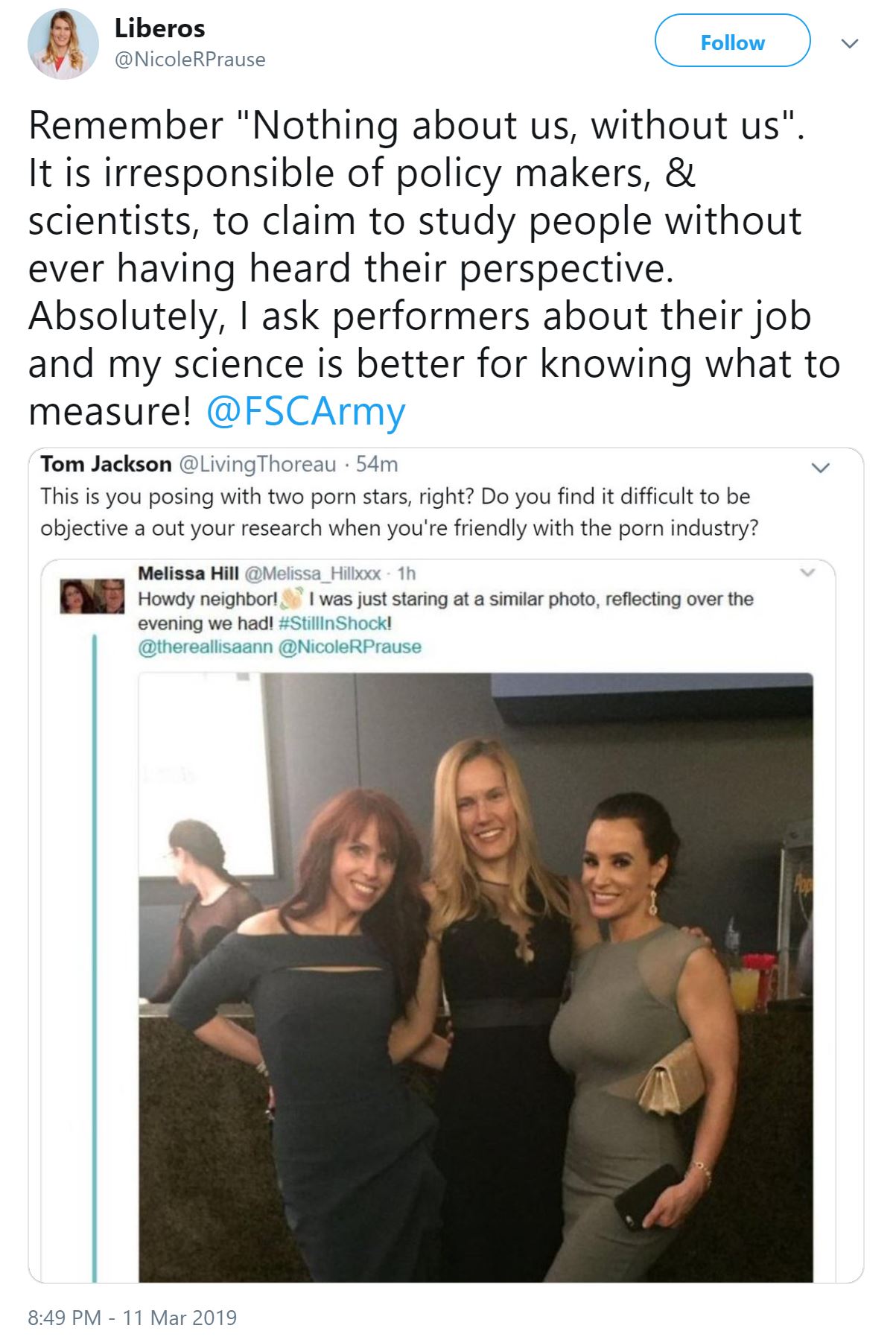
Prause is not studying, and has never studied, an aspect of the porn industry – including the performers. Propaganda.
——————-
A large percentage of Prause’s Quora comments were direct and indirect attacks on Gary Wilson (ultimately Prause was banned for harassing Wilson: March 5, 2018 – Prause permanently banned from Quora for harassing Gary Wilson). In this Quora answer Prause responds as if she is an expert on a career in porn:
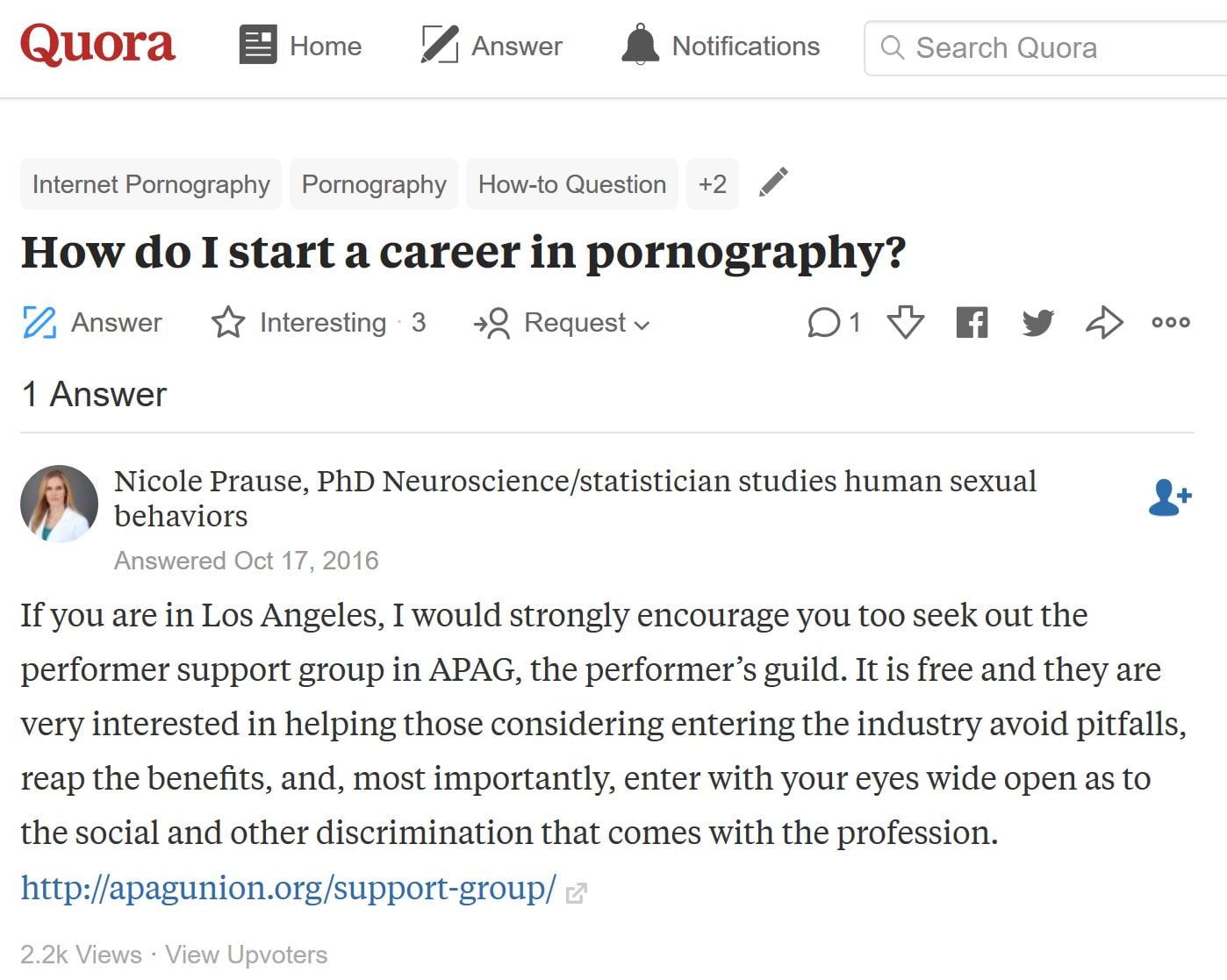
———————
Here she answers again as if she is an expert on the porn industry. Prause’s propaganda is that porn industry is poor, and that many “harassers” say her research is funded by the porn industry:
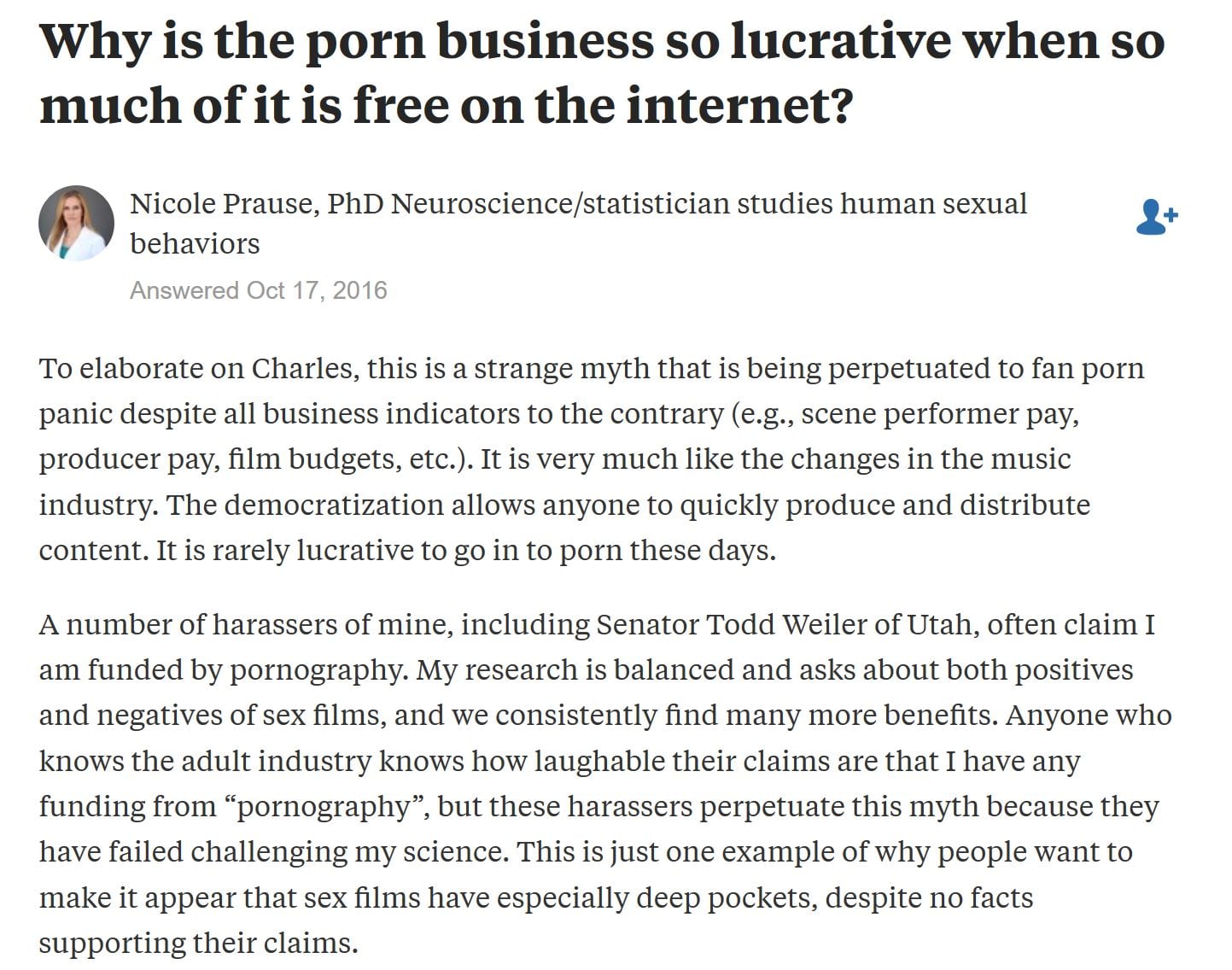
Prause has never provided any documentation of anyone saying she is funded by the porn industry. The claim that her science has not been challenged is laughable as there are 14 peer-reviewed critiques of her flawed studies and her unsupported claims about them: Questionable & Misleading Studies.
—————–
Add to the above examples, hundreds of social media attacks (many more examples in section 3 below) and behind the scenes harassment of any researcher, person, or organization reporting less than stellar effects of porn use or performing in porn. Just a few examples of 2,000 or more similar tweets (most of which have since been deleted):
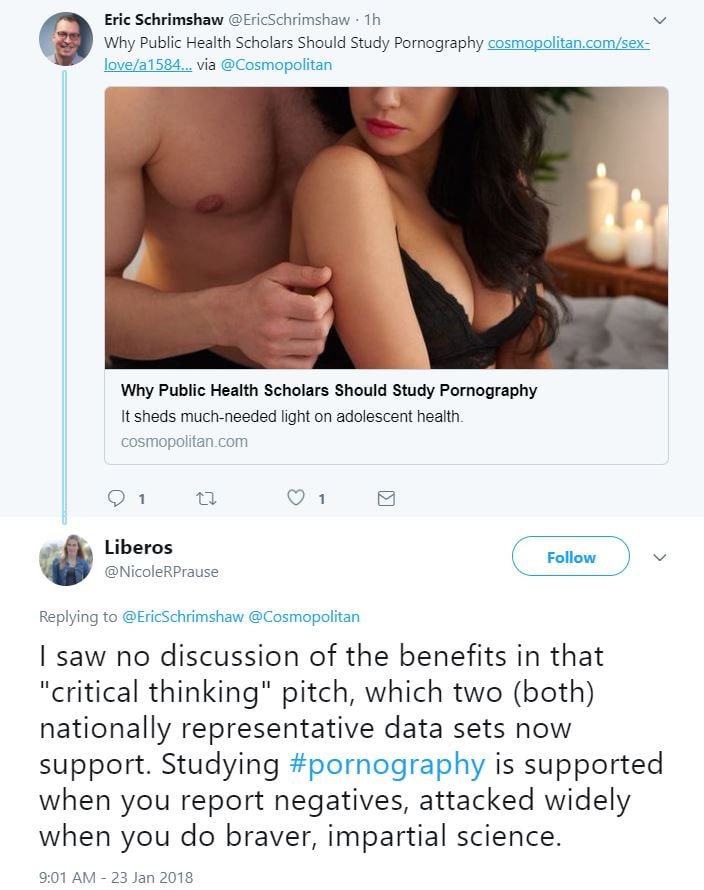
Nonsense. The vast preponderance of legitimate studies on porn report negative outcomes: https://www.yourbrainonporn.com/research/
—————
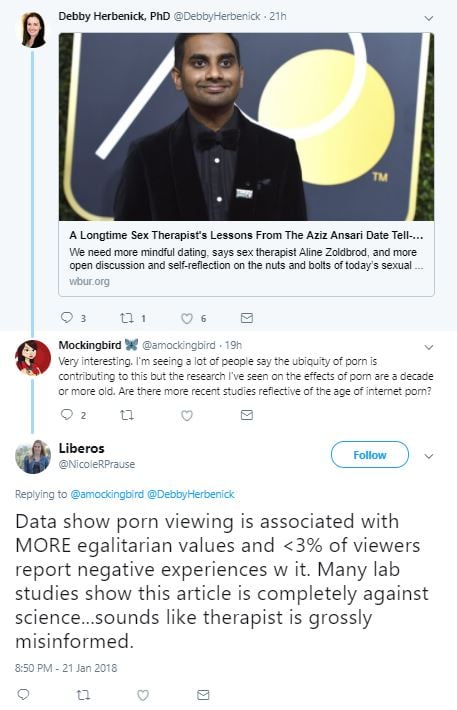
The only study that Prause can cite that reported more so-called egalitarian views is a Taylor Kohut study with some very creative methodology apparently employed to produce the desired results: Critique of “Is Pornography Really about “Making Hate to Women”? Pornography Users Hold More Gender Egalitarian Attitudes Than Nonusers in a Representative American Sample” (2016). In reality, Kohut’s findings are contradicted by nearly every other published study on the subject (see this list of over 35 studies linking porn use to sexist attitudes, objectification and less egalitarianism). See this 2016 review of the literature: Media and Sexualization: State of Empirical Research, 1995–2015.
—————–
Why does RealYBOP chronically posts tweets in support of the porn industry, when RealYBOP claims to be concerned about porn’s effects on the users?
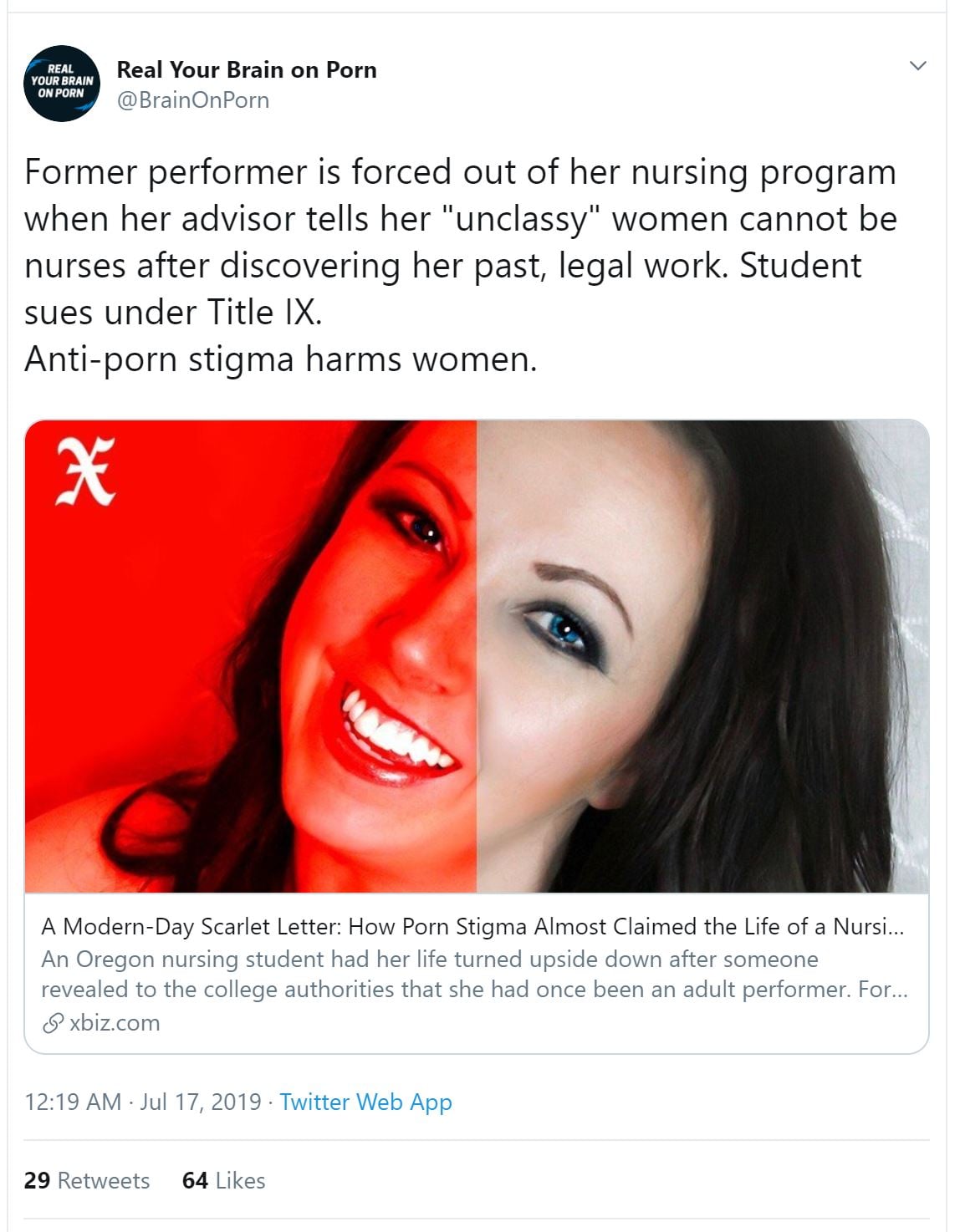
The answer is obvious. RealYBOP is likely Prause.
——————
RealYBOP trolling the New York Times OBGYN Jen Gunter because she’s not a fan of porn. RealYBOP links to an article by Free Speech Coalition employee Lotus Lain. Helping out the porn industry whenever possible:
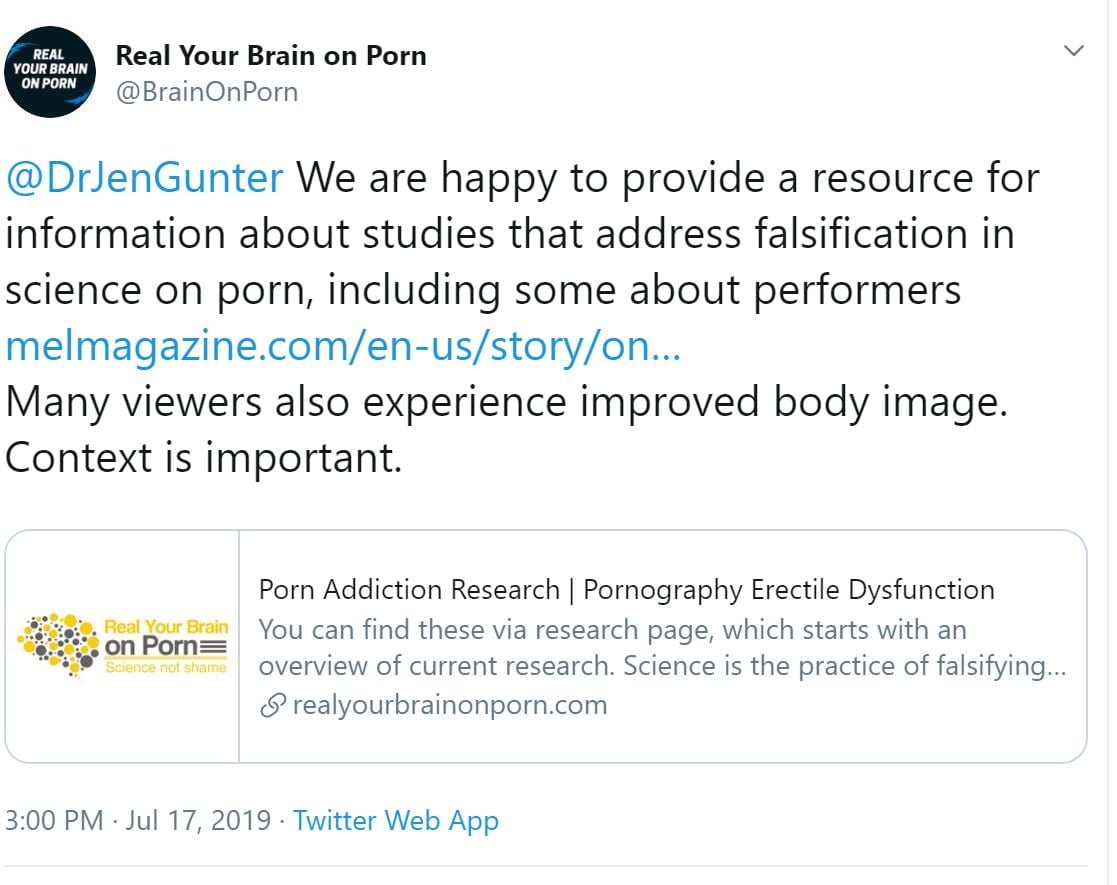
RealYBOP claims that “Many viewers also experience improved body image” are debunked here: Body Image Section.
————————
Prause & Ley disparaging the Gottman’s, while supporting porn industry
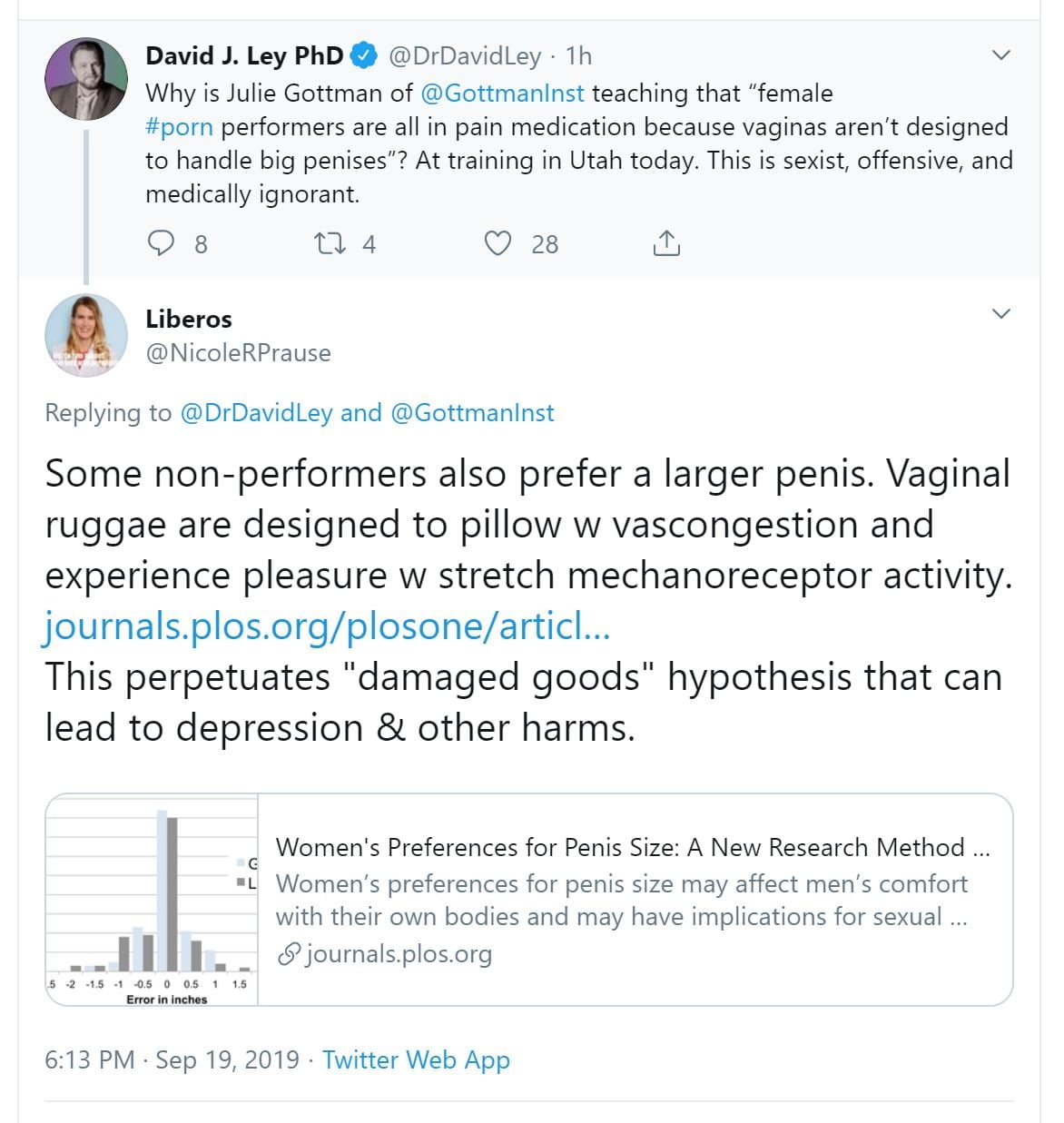
—————————
Support for BackPage:
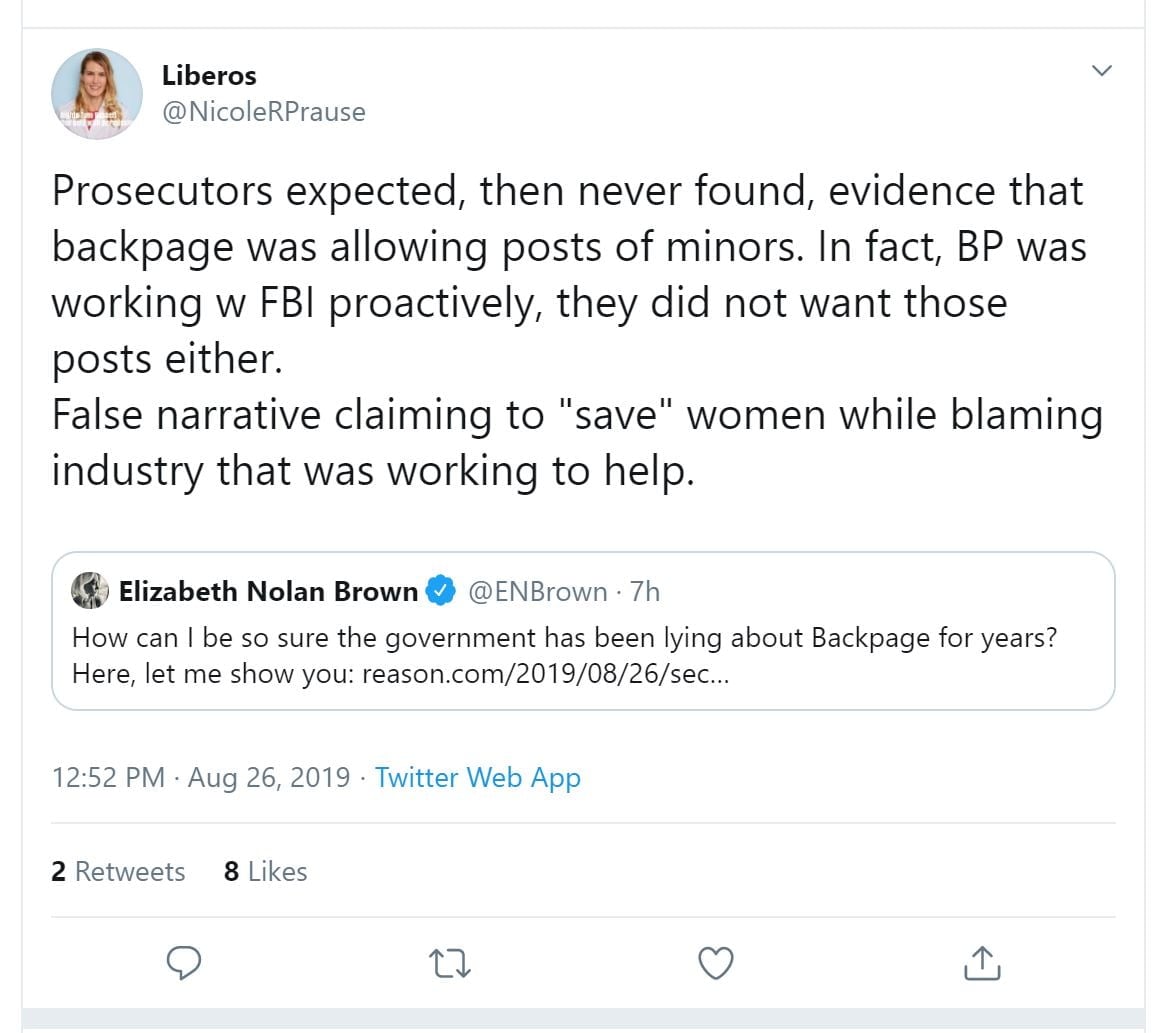
No surprise that Prause and Daniel Burgess’s legal counsel is Wayne B. Giampietro, who was one of the primary lawyers defending backpage.com. Backpage was shut down by the federal government “for its willful facilitation of human trafficking and prostitution.” (see this USA Today article: 93-count indictment on sex trafficking charges revealed against Backpage founders). The indictment charged backpage owners, along with others, of conspiring to knowingly facilitate prostitution offenses through the website. Authorities contend some of the trafficked people included teenage girls. For details on Giampietro’s involvement see – https://dockets.justia.com/docket/illinois/ilndce/1:2017cv05081/341956. In an odd turn of events, backpage.com assets were seized by Arizona, with Wayne B. Giampietro LLC listed as forfeiting $100,000.
———————
Comments on a retweet of porn industry lawyer disparaging actor Jon Hamm who opened up about his experience working in the porn industry.
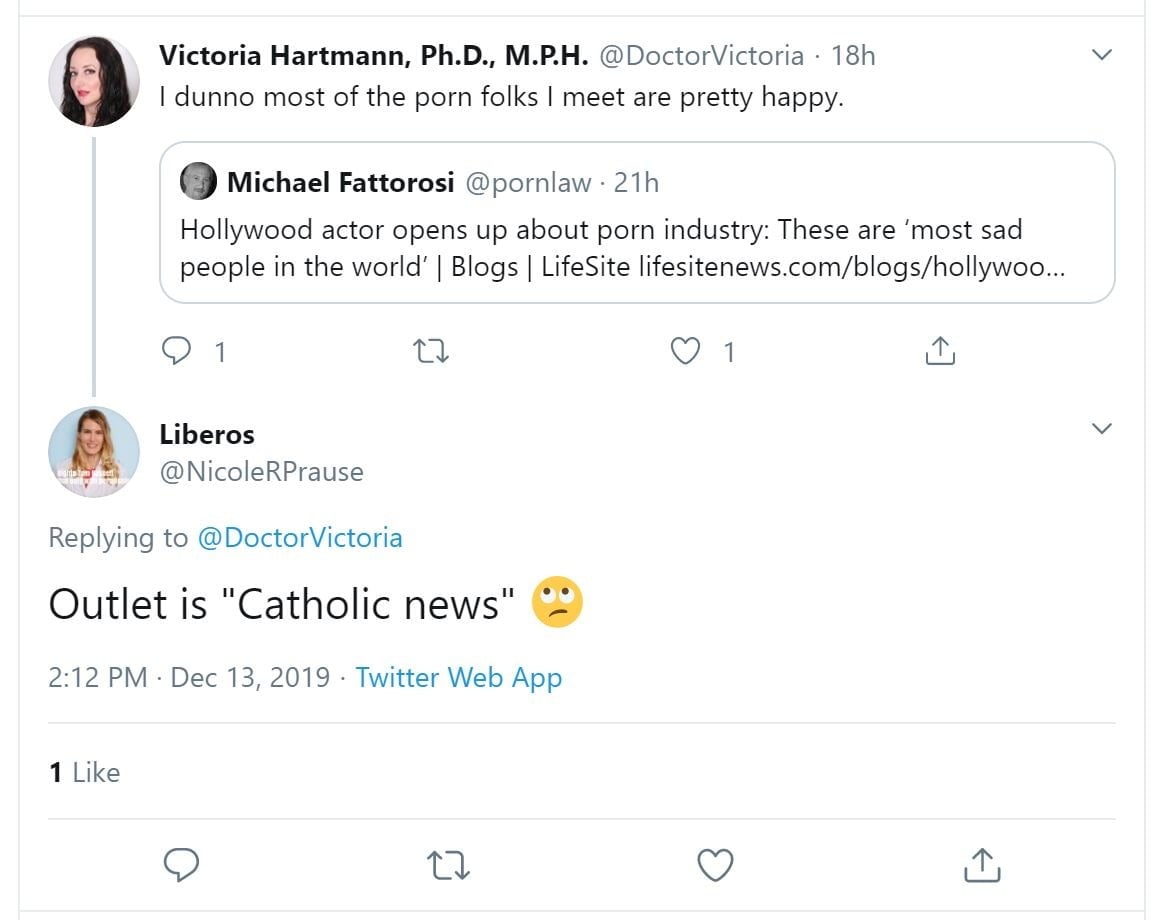
———————-
RealYBOP promoting this porn studio’s films: https://twitter.com/adulttimecom
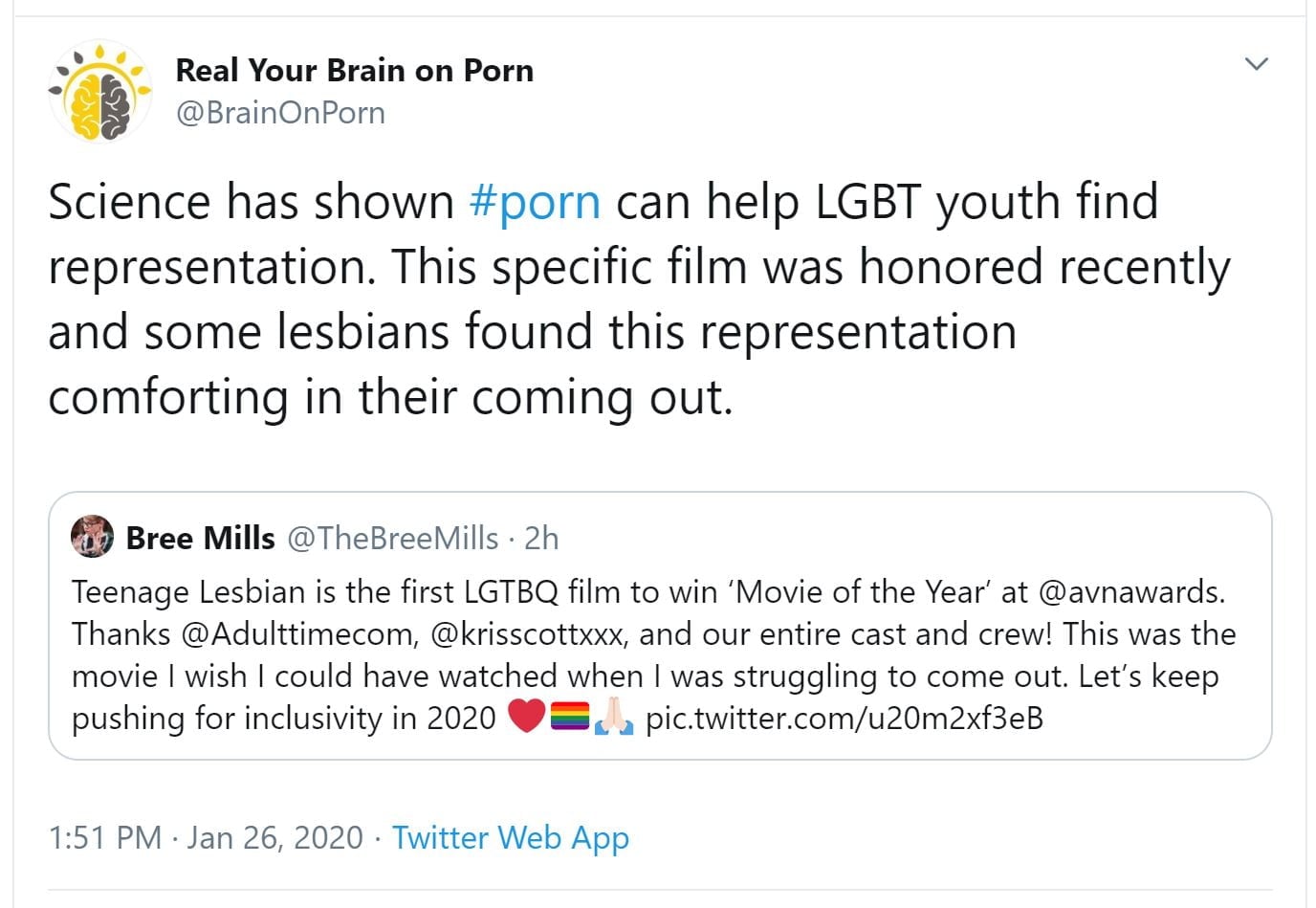
——————
Direct promotion of porn industry: chummy with well known porn star & director Tommy Pistol
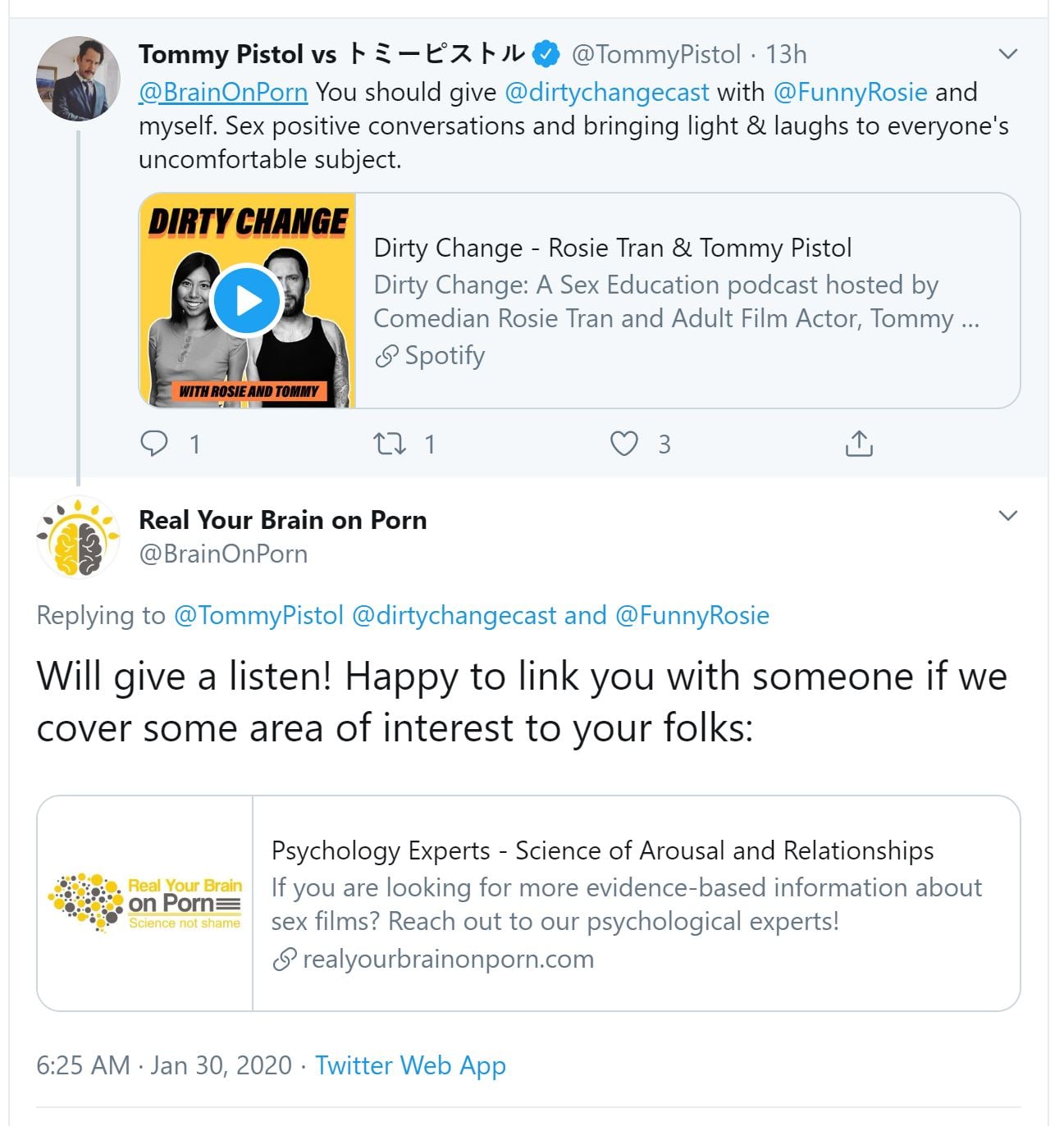
——————————–
RealYBOP retweeting article (i.e. propaganda) by XBIZ (note how RealYBOP/Prause calls everyone anti-porn extremists):
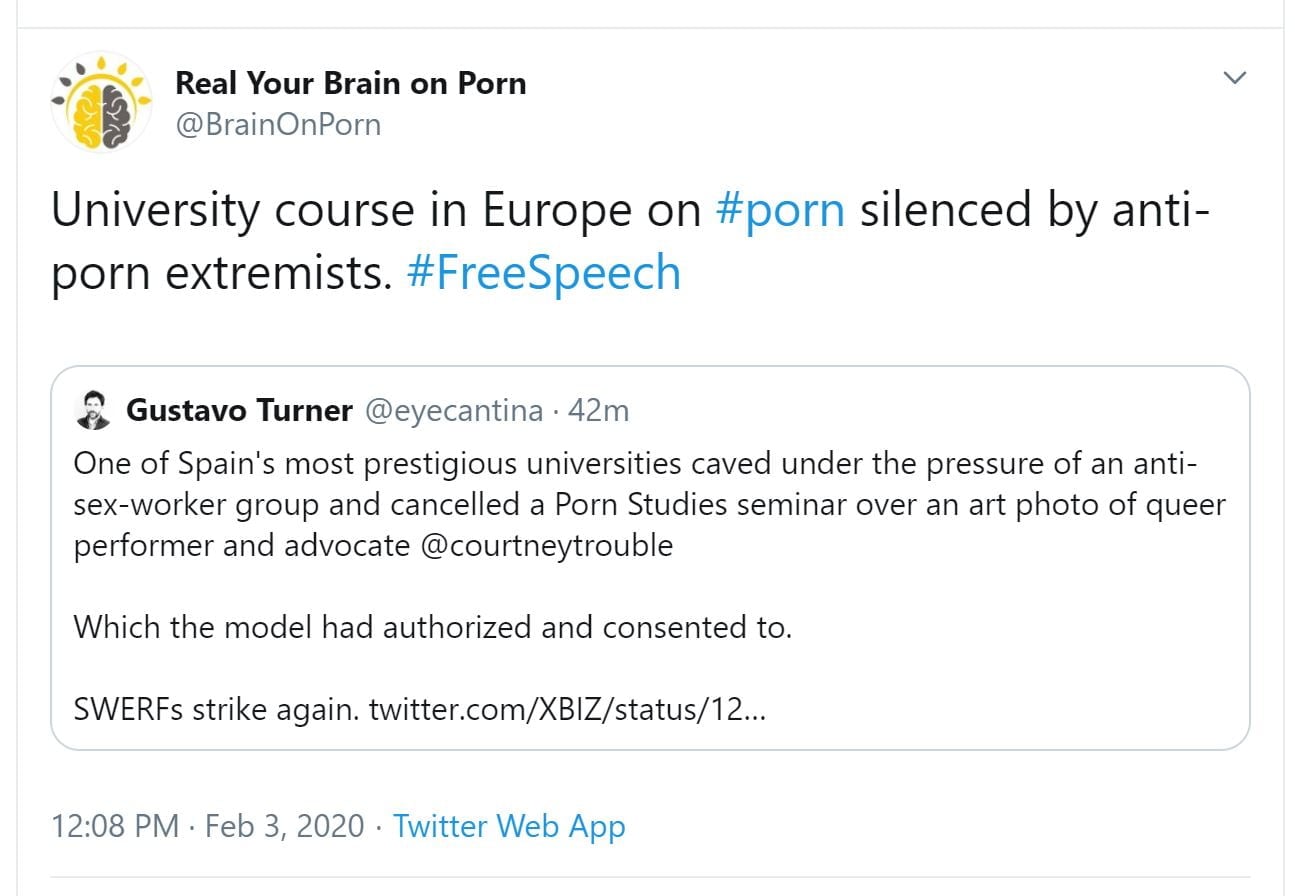
——————–
RealYBOP (an alias) – Direct support of former porn site owner, turned pro-porn activist Barnett:
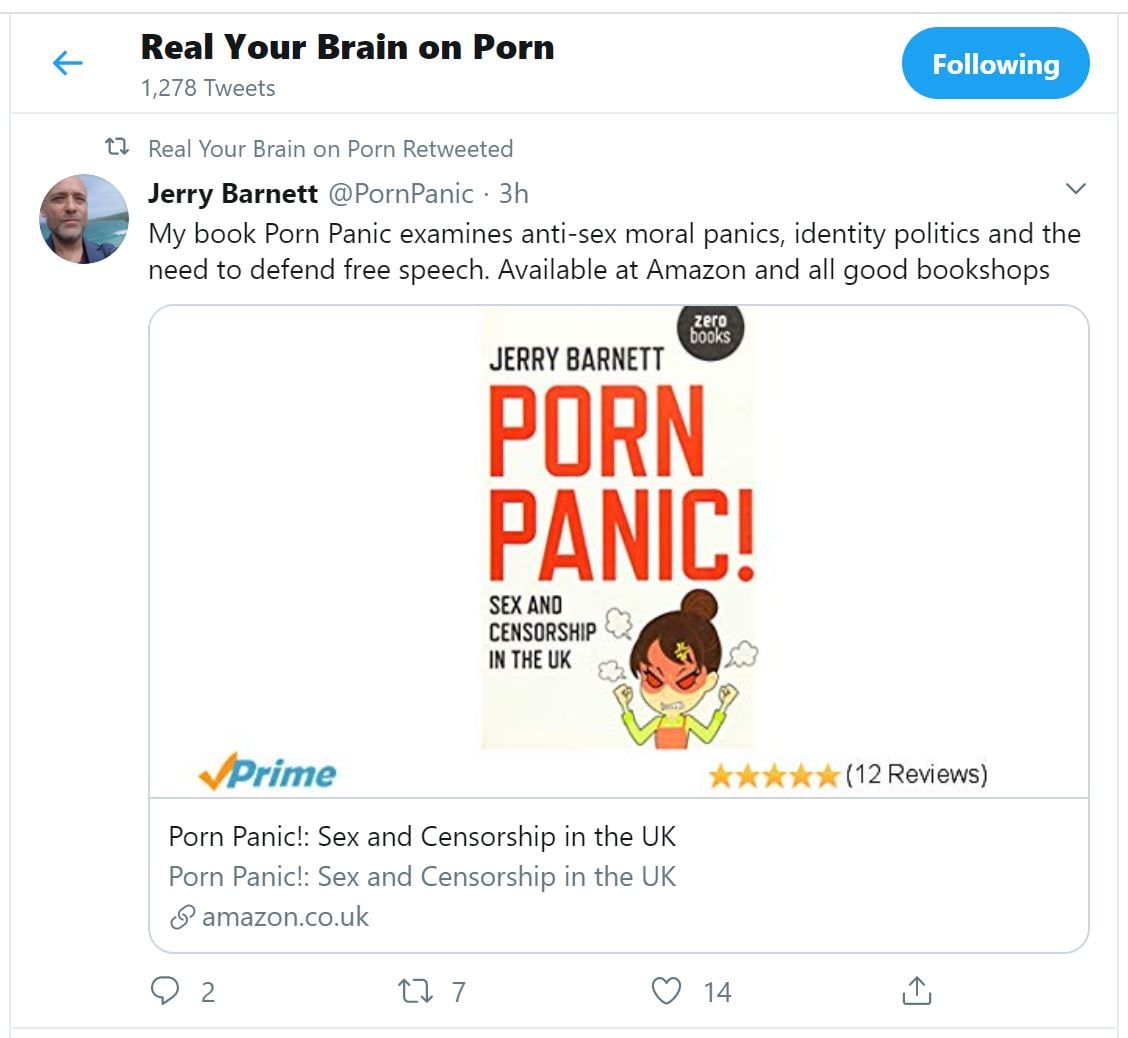
—————————–
Support for prostitution:
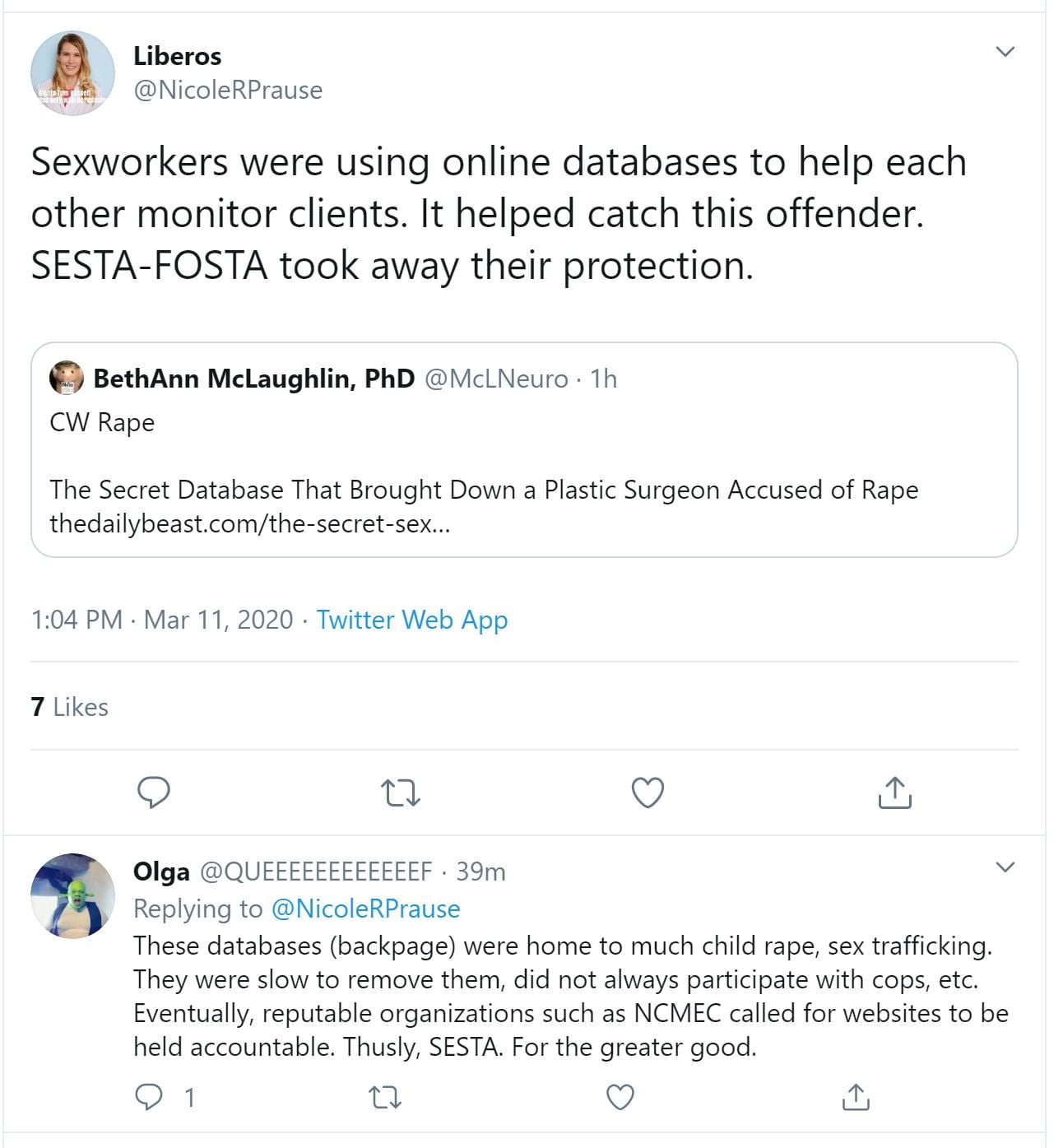
No surprise that Prause and Daniel Burgess’s legal counsel is Wayne B. Giampietro, who was one of the primary lawyers defending backpage.com. Backpage was shut down by the federal government “for its willful facilitation of human trafficking and prostitution.” (see this USA Today article: 93-count indictment on sex trafficking charges revealed against Backpage founders). She continues to defend her lawyer’s former client (BackPage.com):
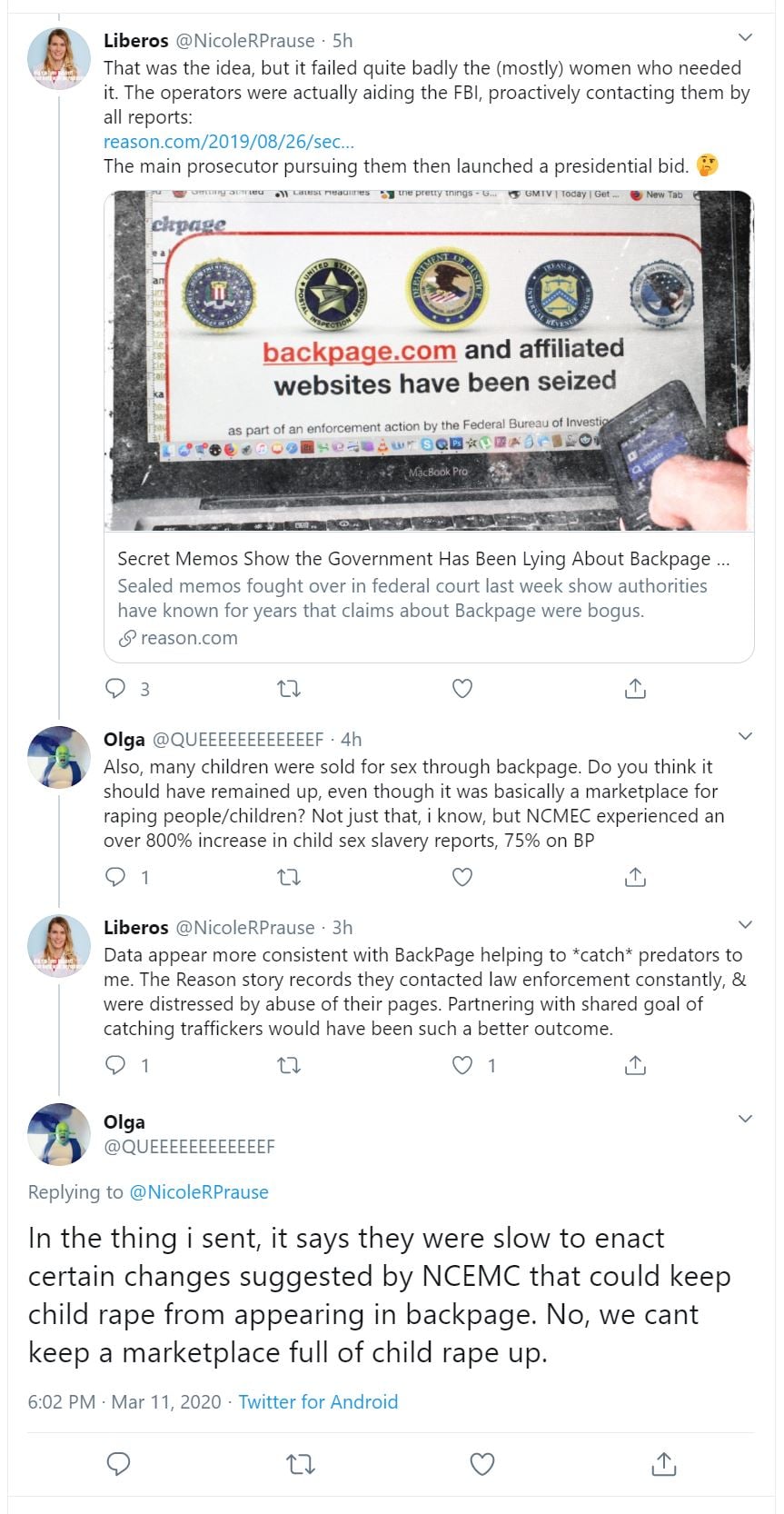
————————–
PornHub was under tremendous scrutiny in early March, with a petition gathering hundreds of thousands of signatures:
People have been calling on me to start a petition to shut down Pornhub and hold its executives accountable. Here it is. Please sign and share. https://t.co/llzoBsr1Jd
— Laila Mickelwait (@LailaMickelwait) February 11, 2020
Politicans started getting involved, asking for an investigation
“Lawmakers from both sides of the aisle are criticizing the adult video giant Pornhub[‘s]…role in perpetuating sex trafficking on the internet.”Pornhub’s failure to remove nonconsensual pornography from its website is destroying lives,"@RepSpeier https://t.co/60vKLhArpv
— Laila Mickelwait (@LailaMickelwait) March 11, 2020
RealYBOP and its members went to twitter in support of PornHub. First, it begins with RealYBOP misrepresenting the study it cited (the table tweeted is irrelevant to the study’s findings) to say that porn is not abusive.
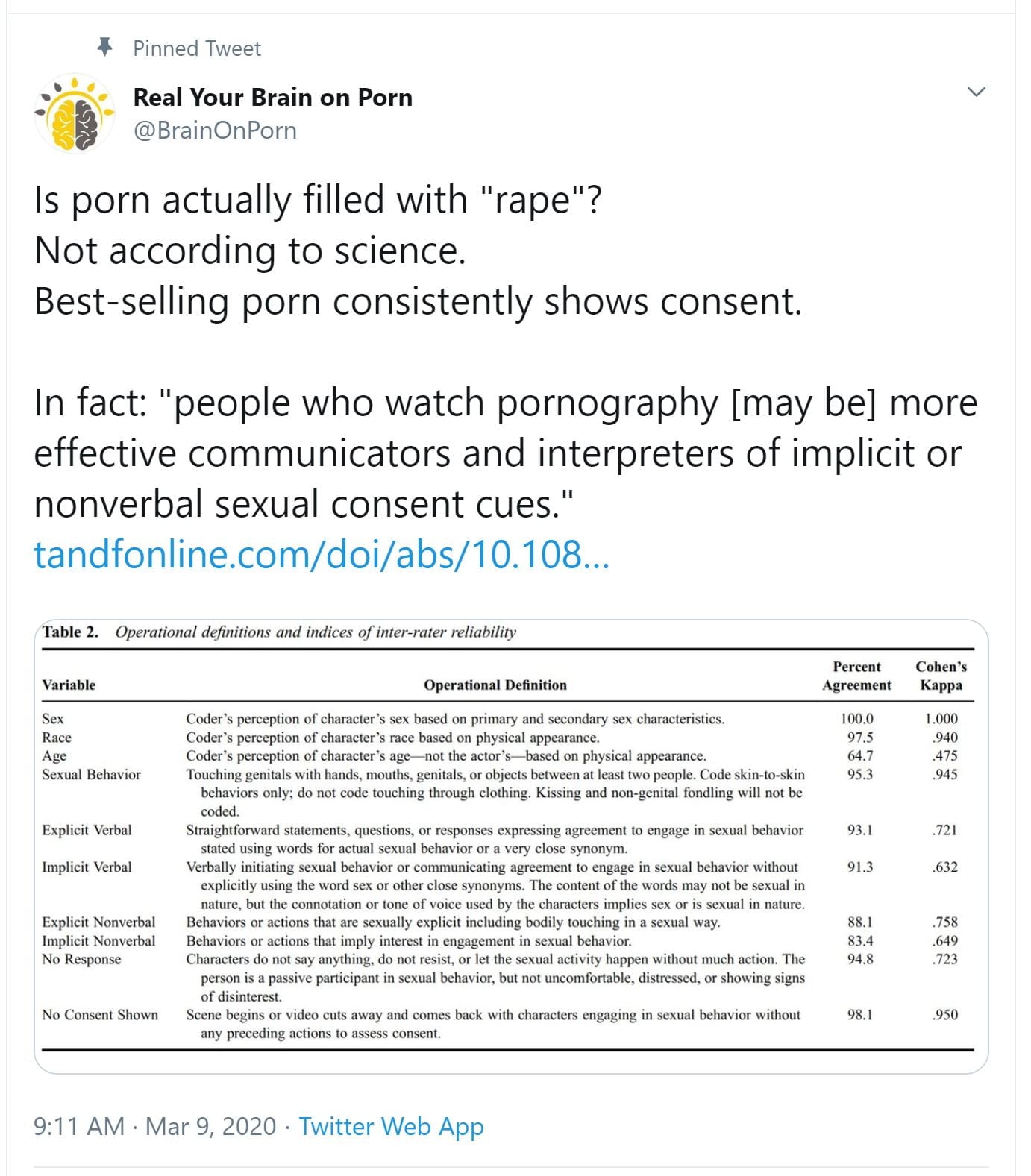
The abstract with the actual findings:
We found that the films either directly or indirectly supported several sexual scripts: Explicit Verbal Consent Isn’t Natural, Women are Indirect/Men are Direct, Sex Can Happen Without Ongoing Communication, Lower-Order Behaviors Don’t Need Explicit Consent, and People Receiving Sexual Behaviors Can Consent by Doing Nothing. Further research is needed to examine whether viewers are acquiring, activating, or applying these scripts. Sex education programs could benefit from acknowledging how consent communication is modeled in pornography and by teaching about pornography literacy.
RealYBOP continues. In response to Laila’s efforts, RealYBOP tweets a Tracy Clark-Flory hit piece. Why is RealYBOP concerned with poor little ol’ Porn Hub and not with Pornhub posting videos of trafficking victims being raped and abused? Because RealYBOP is a shill for the porn industry. PornHub is involved with actual misogyny, not the fabricated misogyny conjured up by RealYBOP.
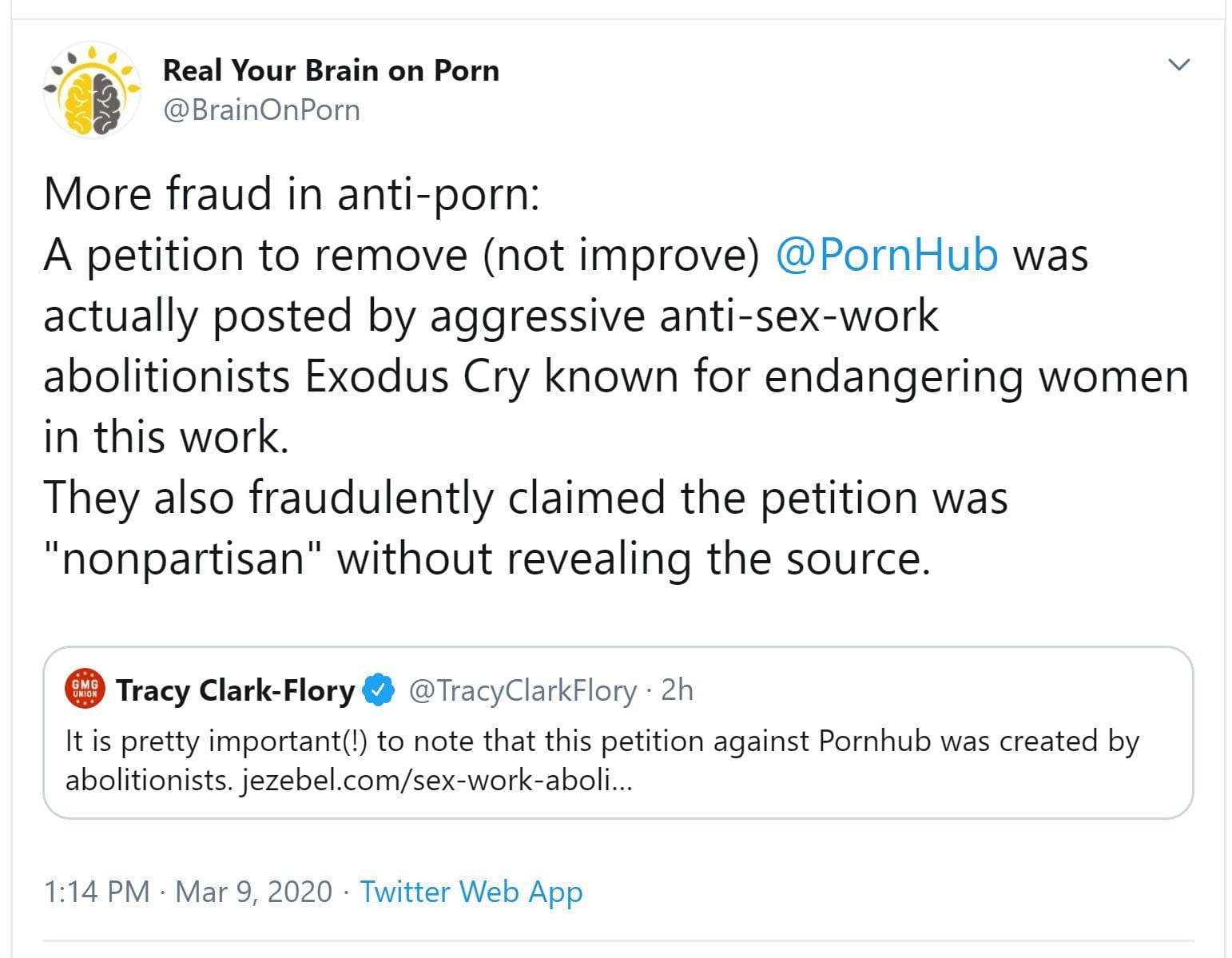
March 10: legislators from the US and Canada ask for an investigation of Pornhub
Yesterday, Senators & Members of Parliament in Canada & the US wrote to their governments about MindGeek & #childexploitation, #sextrafficking, & sexual assault. This reflects the urgency of this across borders & parties. pic.twitter.com/n1giZ5F3Lr
— Arnold Viersen, MP (@ArnoldViersen) March 10, 2020
Guess who comes to PornHubs defense? RealYBOP twitter and RealYBOP members! First, RealYBOP member and close Prause ally, David Ley defends PornHub (even a sex worker castigates Ley – but he knows where is bread is buttered)
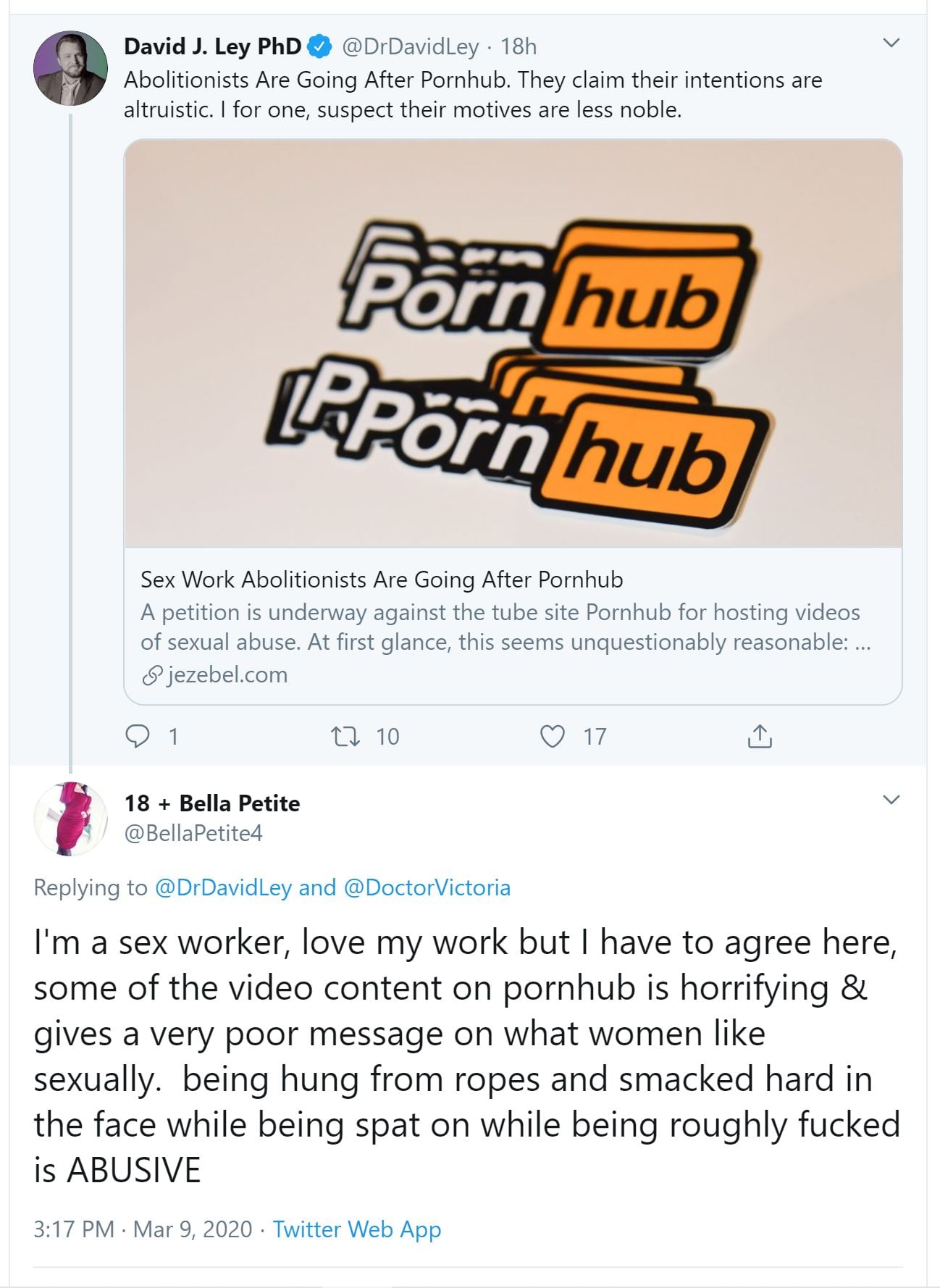
RealYBOP retweets another David Ley tweet in support of Pornhub:
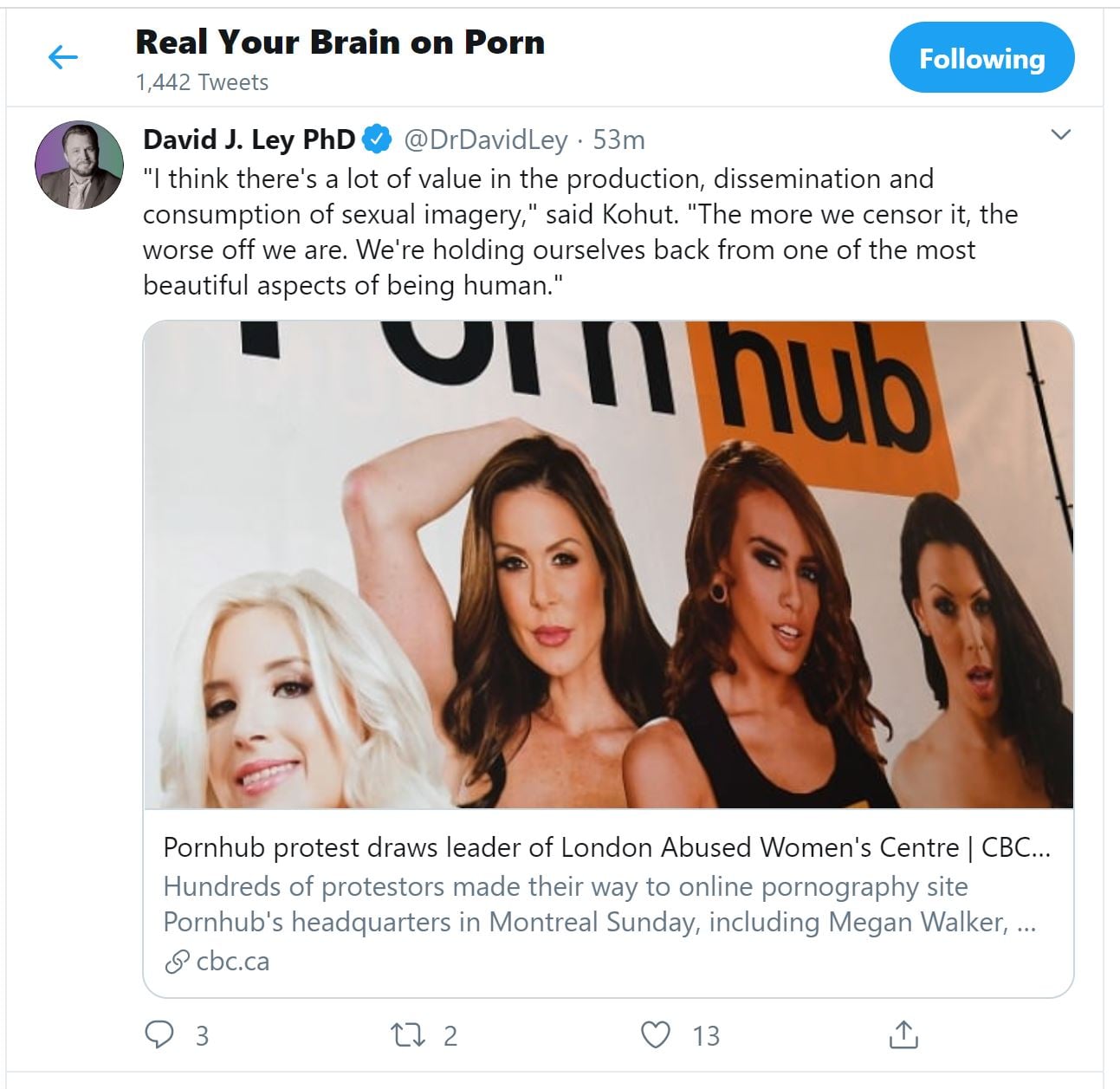
RealYBOP tweets RealYBOP member Taylor Kohut’s support for Pornhub:
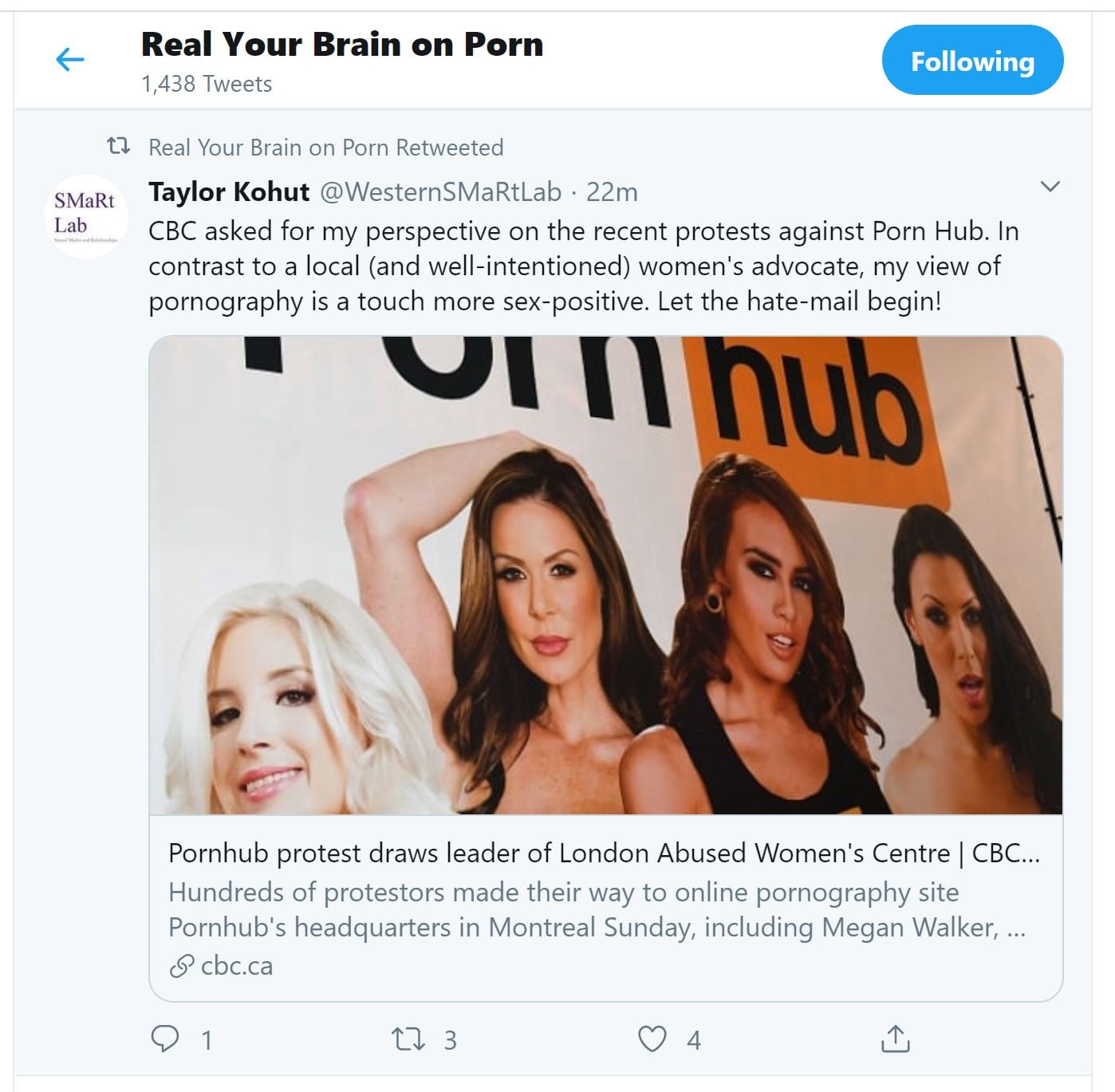
Here are some gems by Kohut from the CBC article:
I don’t believe there is any woman that would willingly expose herself to today’s pornography, which is very brutal,” said Walker.
“I want the government to indicate that there’s no difference between trafficking, prostitution and pornography. They’re all one and the same.”
That’s an idea that Taylor Kohut, a research associate in the Department of Psychology at Western University, calls “profoundly ridiculous.”
Kohut studied how pornography influences the way people feel, think and behave for more than a decade.
“I don’t think porn is inherently evil or exploitive or dehumanizing or degrading. I don’t think it must contribute to anti-woman attitudes and acts,” he explained.
“If the real goal is to reduce trafficking of women and children, I think focusing on pornography is rather naïve and misguided and erotophobic … There are definitely alternative ways to get at the issue.”
Though his own research doesn’t reveal a connection between porn use and anti-woman outcomes, Kohut said some correlations have been reported by others.
“The field lacks methodological rigour and there are clear political influences that have likely contributed to a degree of confirmation bias, on all sides,” he explained.
“Putting it all together, there is no clear evidence that pornography causes negative attitudes toward women or sexual violence. And my personal interpretation of the available evidence is that it does not.”
He suggests the solution to outlaw or extremely censor pornography would be unrealistic and a “tremendous loss.”
He compares Pornhub’s struggle to the one Facebook has with disseminating false information.
“How do you control and regulate that when your customers are essentially building your content? It’s a difficult and technical social challenge.”
Kohut is dead wrong about porn use and negative attitudes about women. As mentioned numerous times, RealYBOP member Taylor Kohut’s paper contained some very creative methodology apparently employed to produce the desired results. In reality, Kohut’s findings are contradicted by nearly every other published study. See this 2016 review of the literature: Media and Sexualization: State of Empirical Research, 1995–2015. The abstract:
The goal of this review was to synthesize empirical investigations testing effects of media sexualization. The focus was on research published in peer-reviewed, English-language journals between 1995 and 2015. A total of 109 publications that contained 135 studies were reviewed. The findings provided consistent evidence that both laboratory exposure and regular, everyday exposure to this content are directly associated with a range of consequences, including higher levels of body dissatisfaction, greater self-objectification, greater support of sexist beliefs and of adversarial sexual beliefs, and greater tolerance of sexual violence toward women. Moreover, experimental exposure to this content leads both women and men to have a diminished view of women’s competence, morality, and humanity.
Real simple: RealYBOP and its “experts” are taking the side of Pornhub over sex-trafficking victims. RealYBOP’s true allegiance is not in doubt – the porn industry.
RealYBOP attacks Exodus Cry. Propaganda 101 – if you can’t defend your position, defame the messenger. RealYBOP calling anti-porn activists “hate groups” while supporting Pornhub’s disgusting practice of allowing videos of sex trafficking victims.
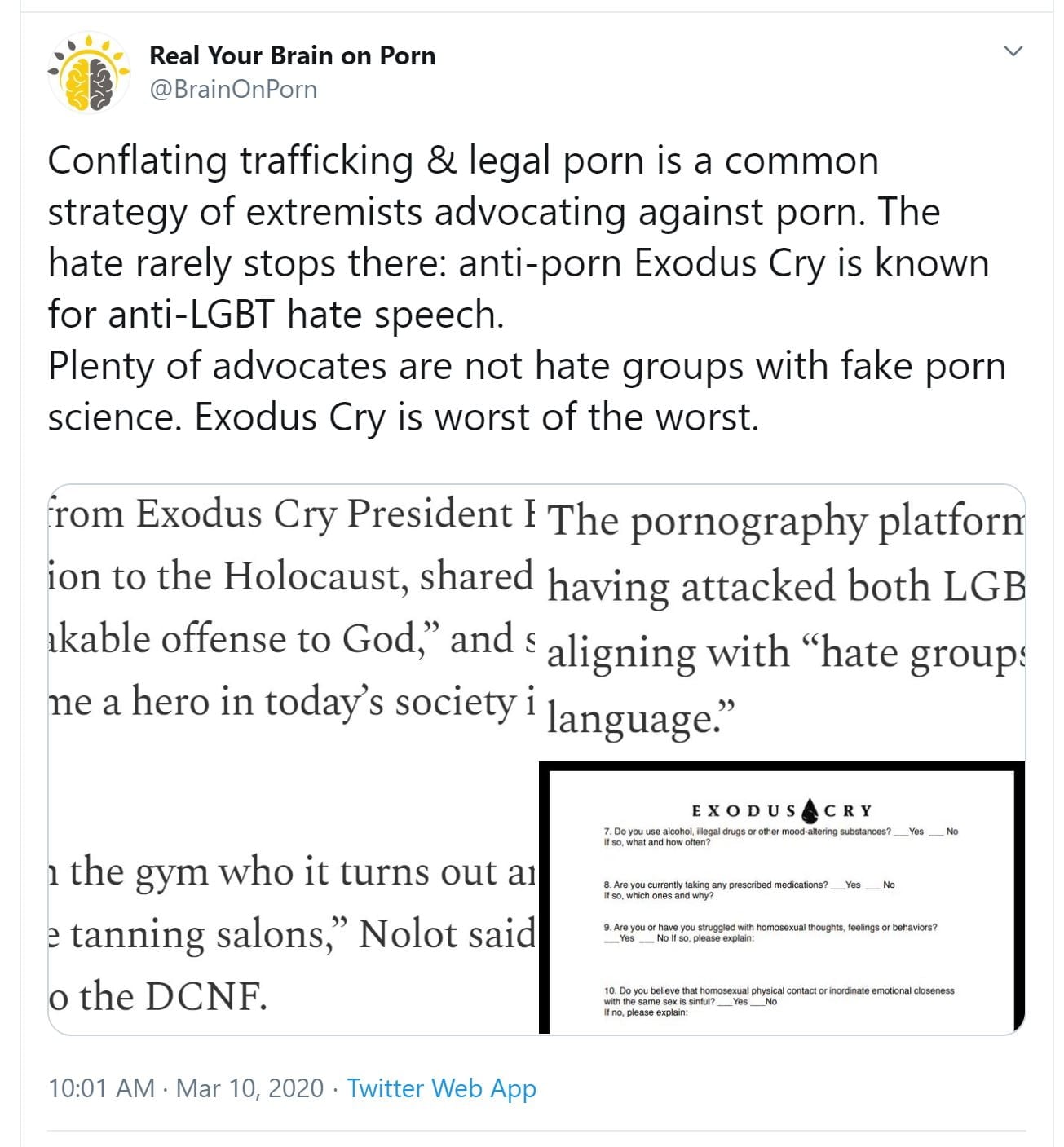
Note that Prause has defamed and harassed Exodus Cry and Laila Mickelwait in the past: February, 2019: Prause falsely accuses Exodus Cry of fraud. Asks Twitter followers to report the non-profit to the Missouri attorney general (for spurious reasons), Appears to have edited the CEO’s Wikipedia page.
RealYBOP propaganda in support of pornhub continues
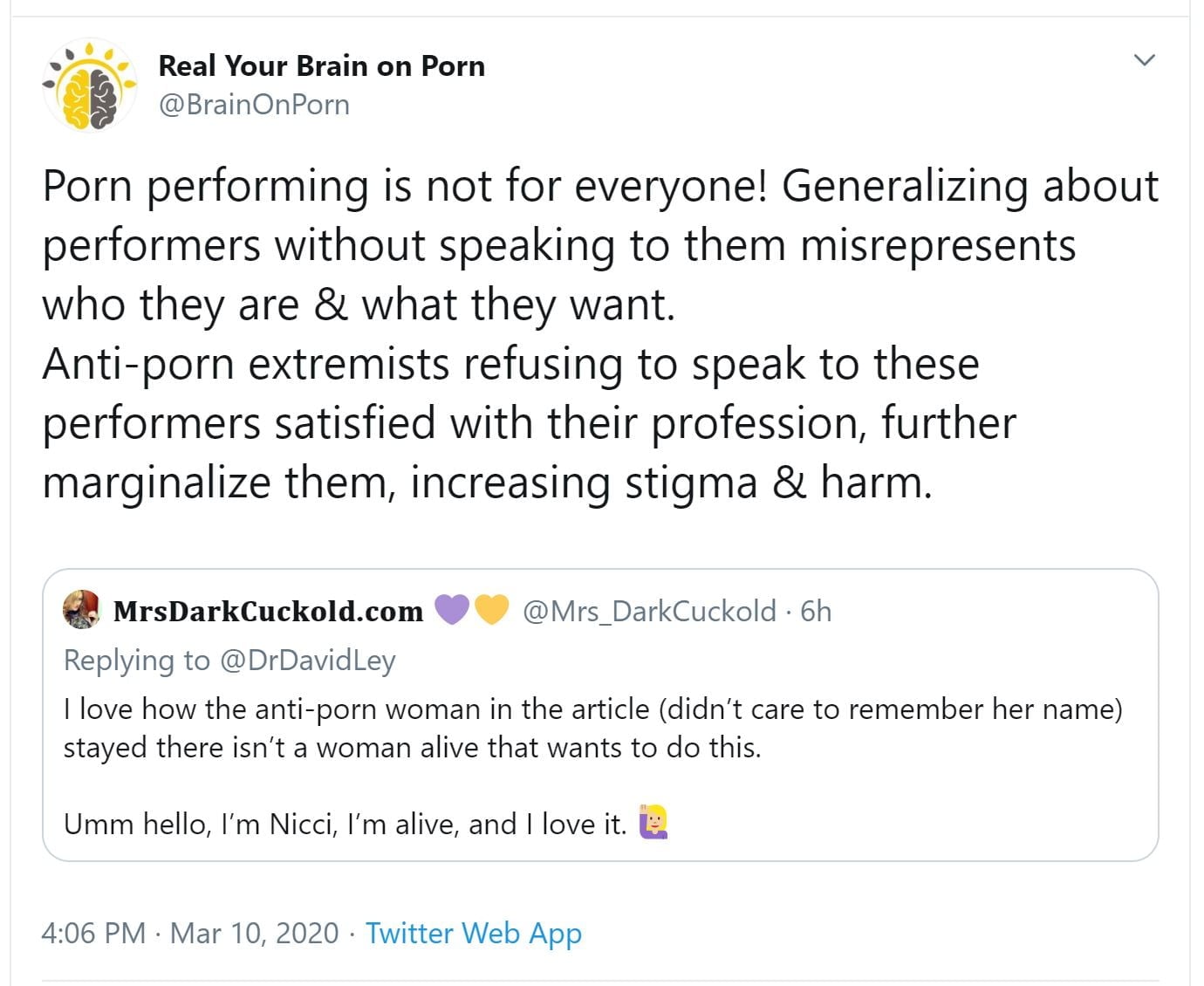
————————
A tweet in support of porn site “YouPorn”:
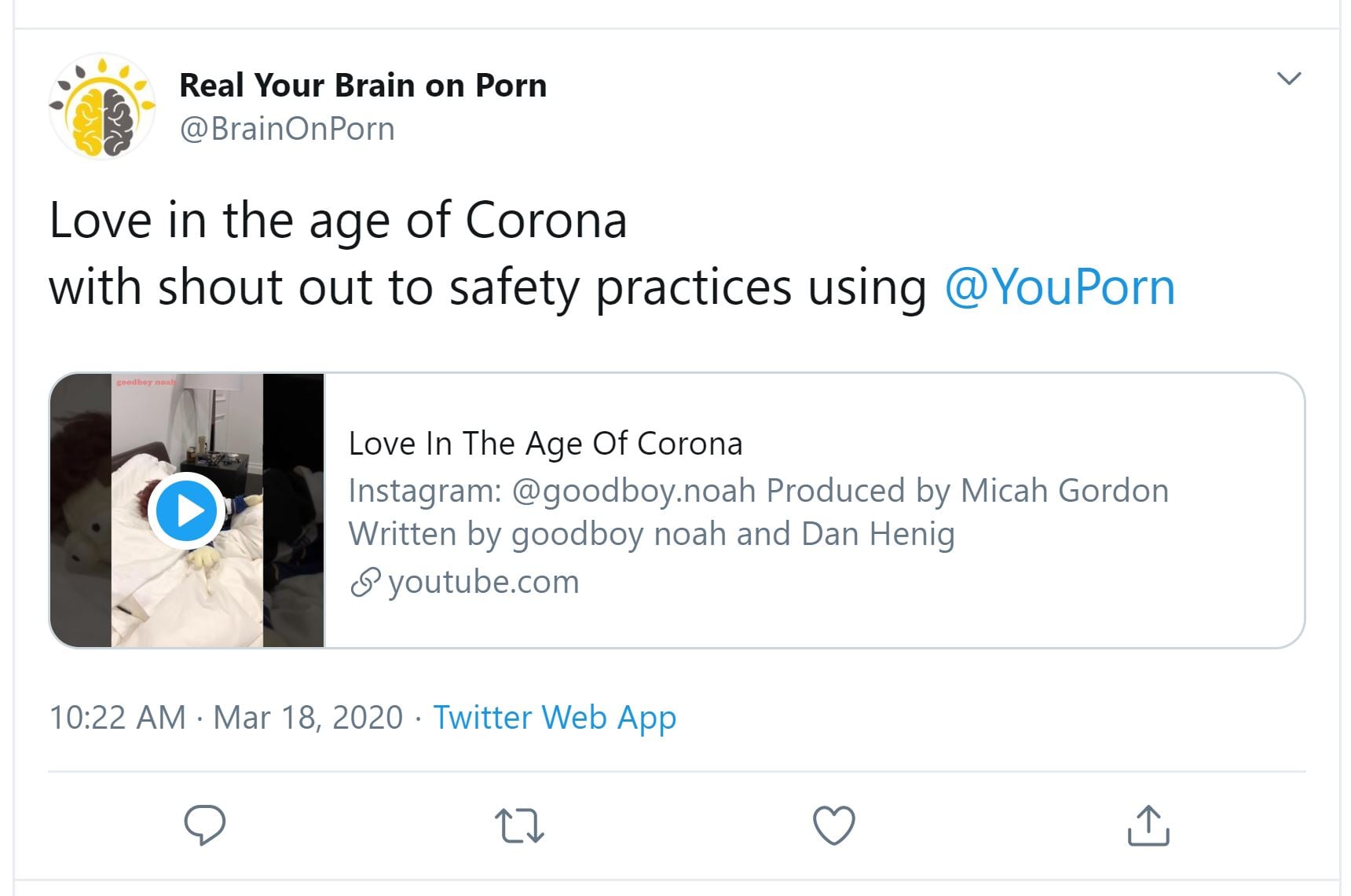
———————–
While PornHub is being exposed as having videos of sex trafficking victims, RealYBOP is out there defending MindGeek:
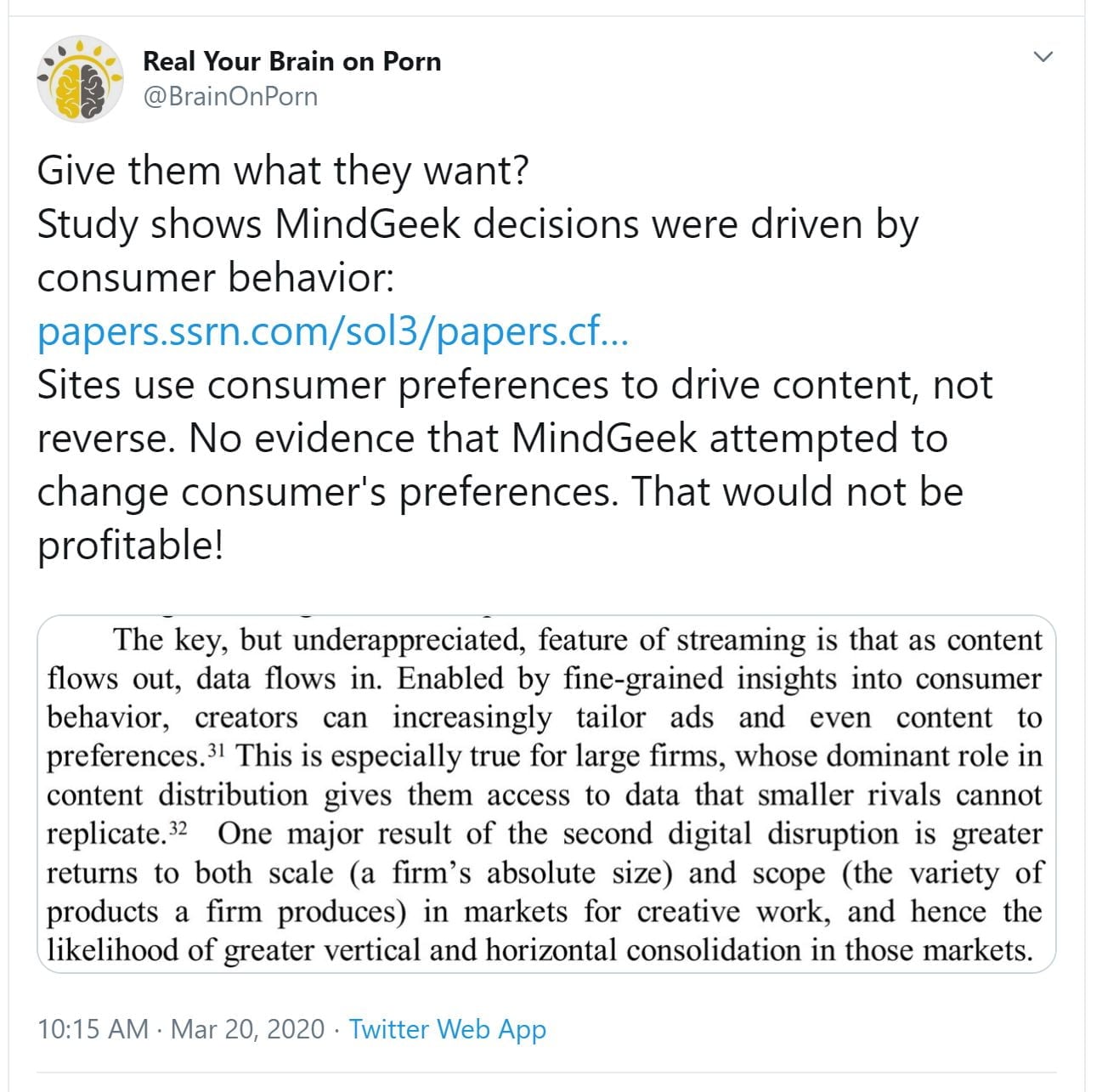
More love for PornHub:

—————————–
March 25, 2020: A second tweet attacking NoFap. This one features a hit-piece by XBIZ (revealing once again RealYBOP’s close alliance with the porn industry). Is it coincidence that a few hours before the XBIZ article RealYBOP disparaged the National Review and NoFap on twitter? Did RealYBOP have anything to do with XBIZ writing this article? Inquiring minds want to know.
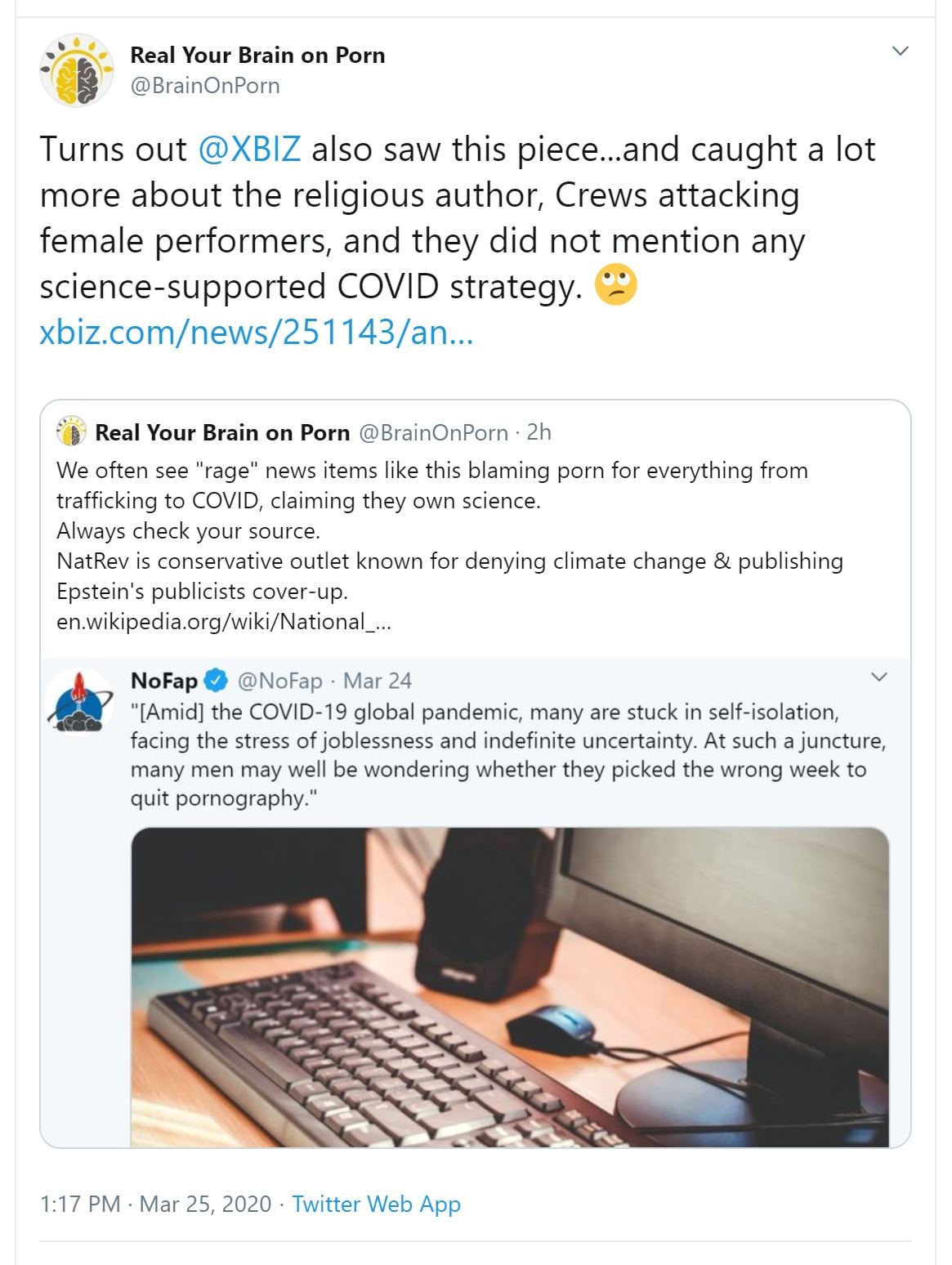
—————————-
Tweeting about the AVN convention in Las Vegas
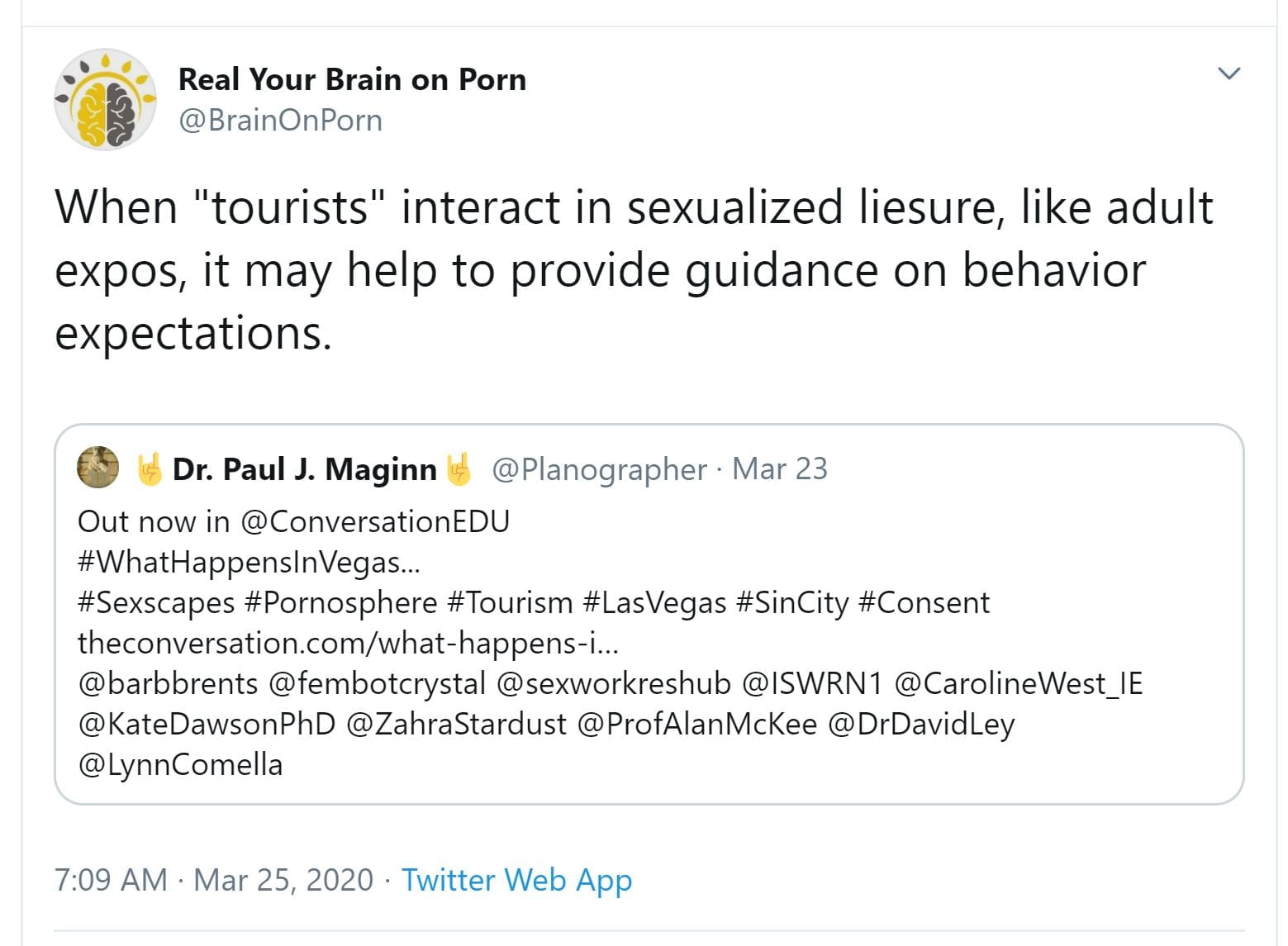
—————————-
Retweeting XBIZ hit-piece, in support of the porn industry:
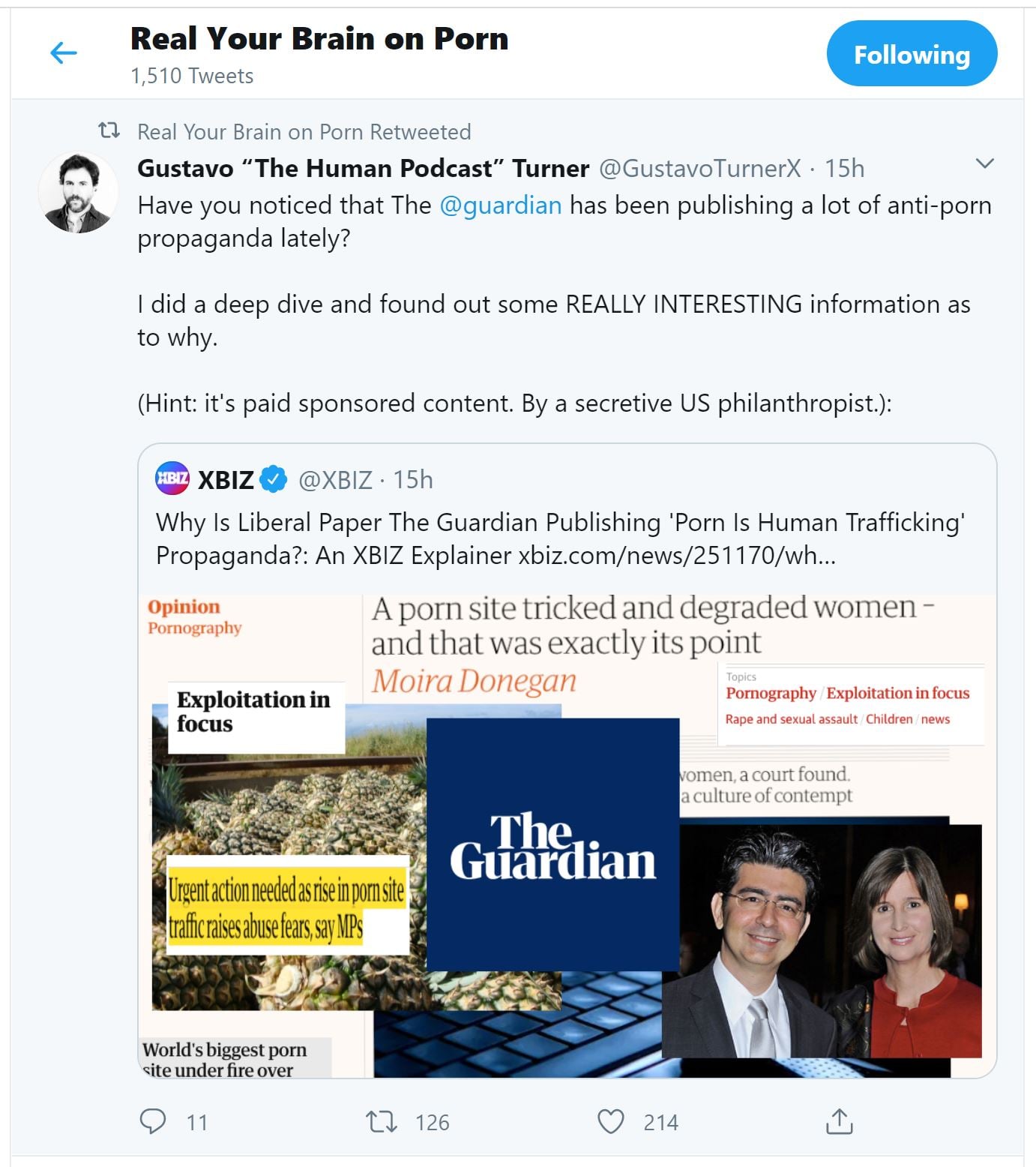
XBIZ article is a convoluted mess trying to discredit theguardian.org. But what XBIZ neglects to mention is that the nefarious theguardian.org is not only supported by Humanity United but a host of other players including none other than the Open Society Foundation. I doubt if any entity on the plant has done more to normalize commercial sexual exploitation than OSF/Soros. So the article is built on a house of cards.
——————–
Promoting pornhub, who has been monetizing rape and sex trafficking videos on its platform:
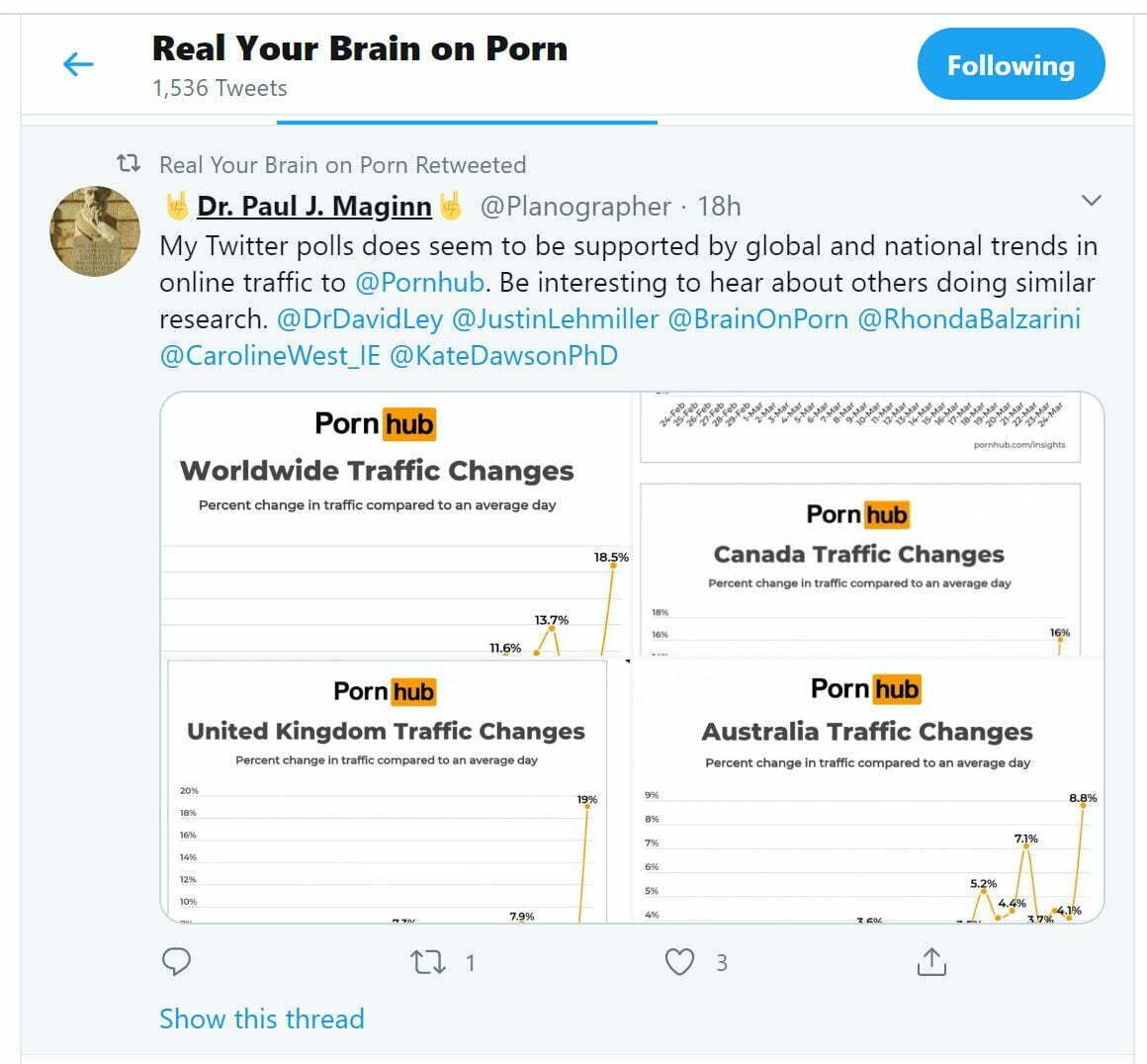
Pornhub was the first account to tweet about RealYBOP!
—————————-
Promoting Pornhub, even when it is under investigation for regularly hosting child porn and rape videos! The ever loyal RealYBOP.

—————————-
RealYBOP trolling a feminist who is critical of Pornhub for monetizing sex trafficking & actual rape videos:
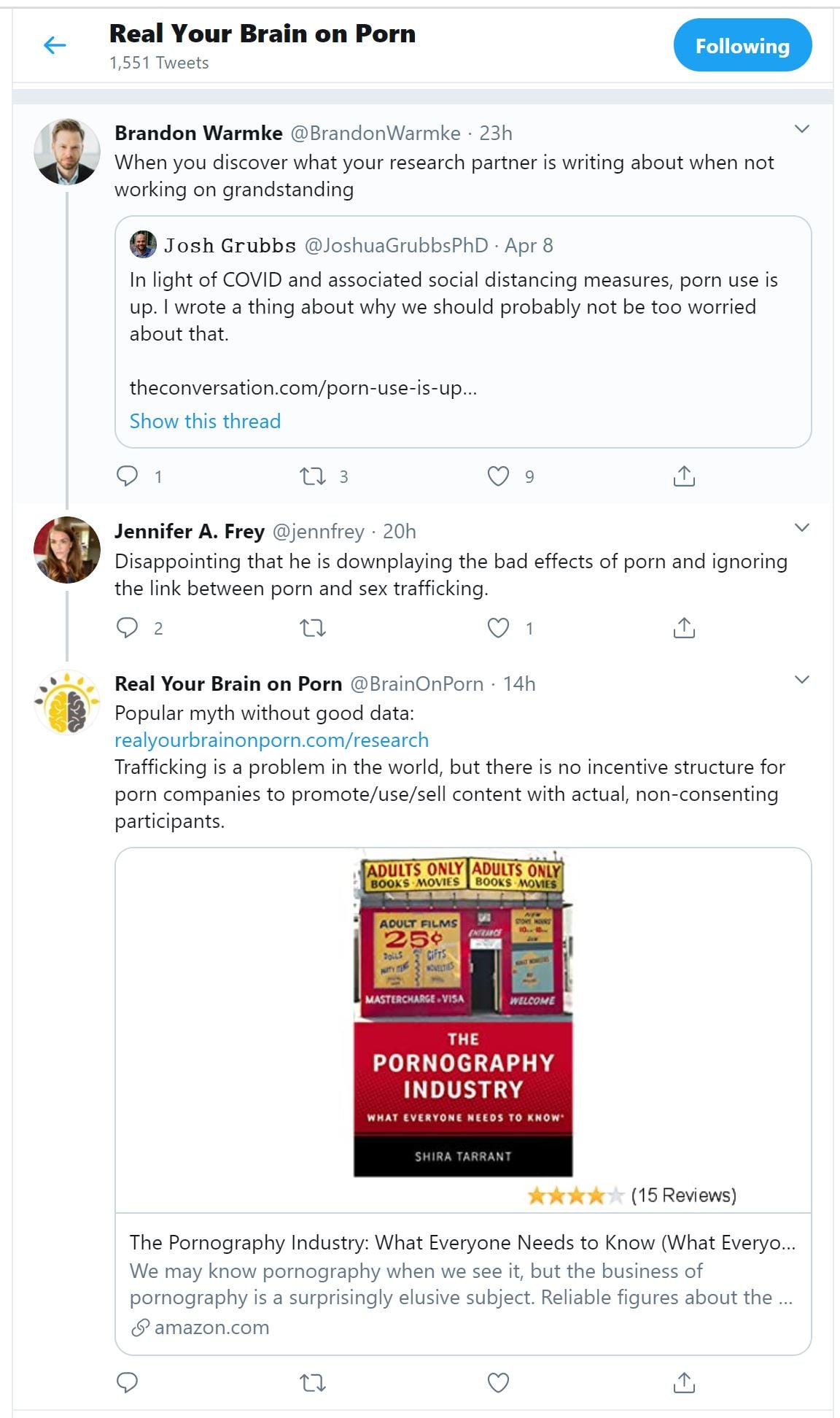
—————————–
RealYBOP (@BrainOnPorn) pushing the propaganda envelope for the porn industry:
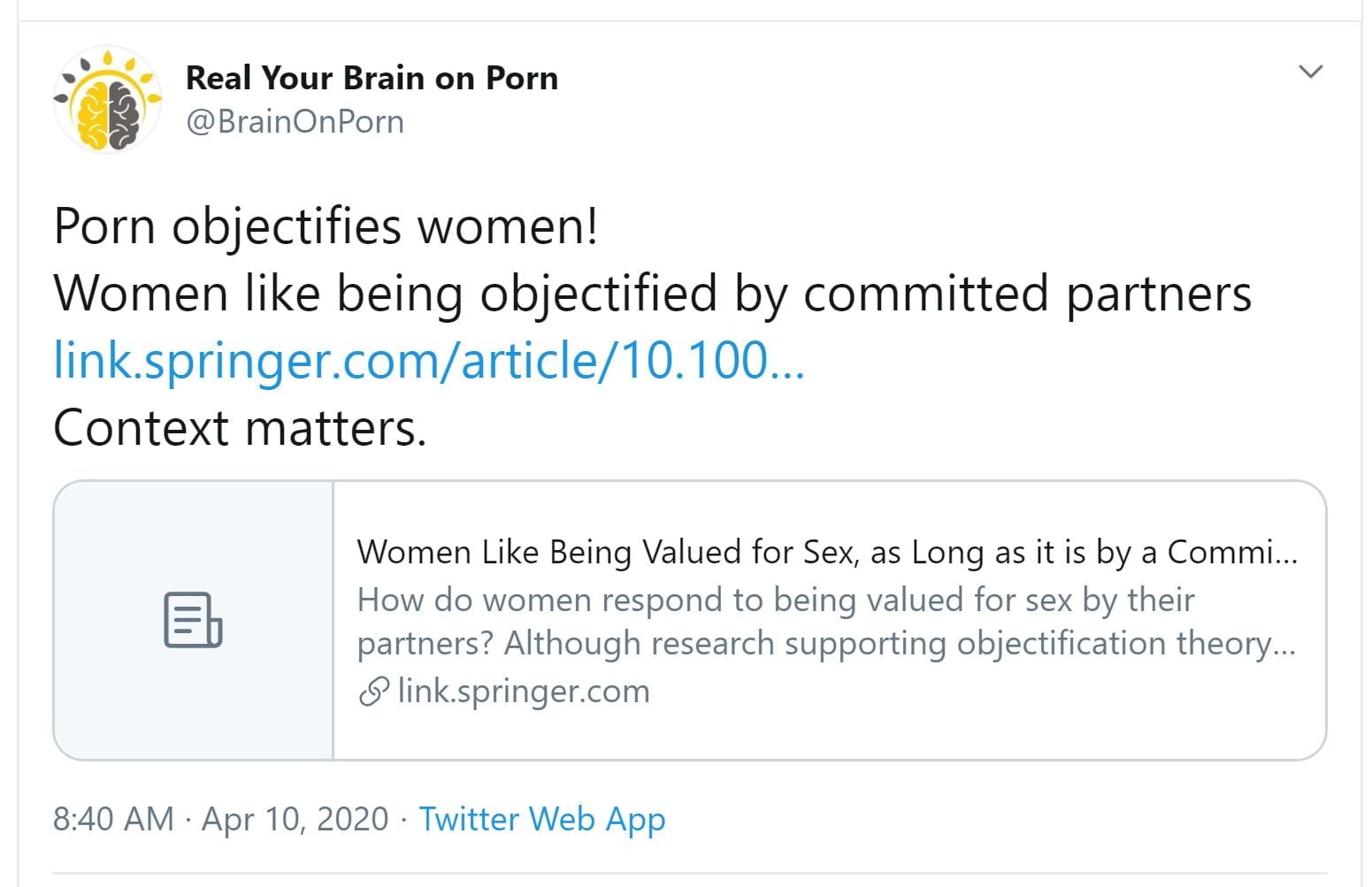
———————-
Talk about supporting the porn industry agenda. Laughable.
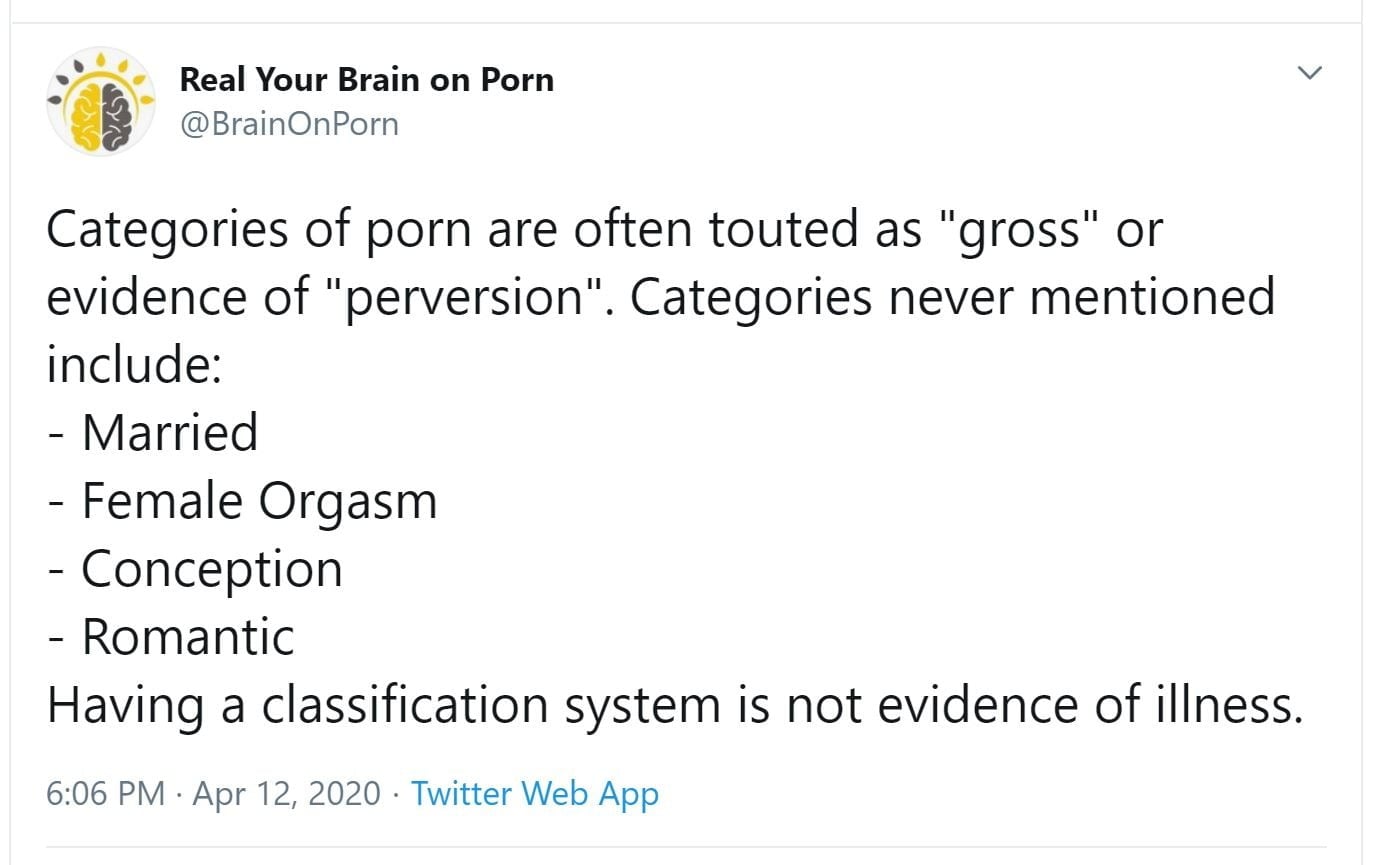
How about categories like these RealYBOP – https://twitter.com/LailaMickelwait/status/1251171998895652867
———————–
RealYBOP directly supporting Mindgeek, owner of Pornhub. Here’s Laila’s original tweet which RealYBOP attacks:
The CEO of Mindgeek who owns Pornhub just started following me. After I tweeted about it he immediately changed his name and location. #Traffickinghub pic.twitter.com/9NhOMMMFxZ
— Laila Mickelwait (@LailaMickelwait) April 19, 2020
Here RealYBOP attacks Laila & defends Mindgeek’s CEO (RealYBOP lies when she claims the account isn’t Mindgeek’s CEO (we have additional evidence that it is!)
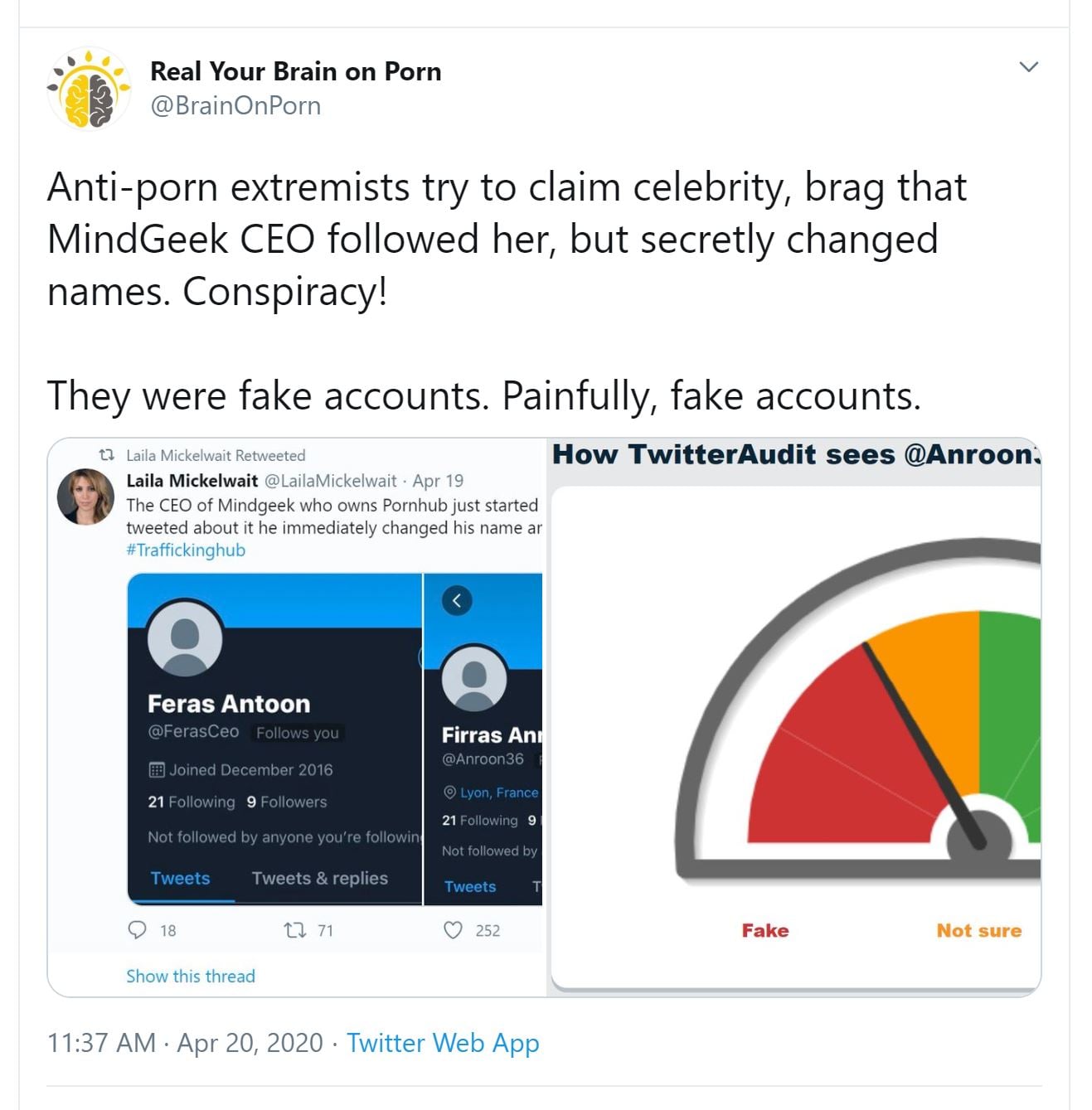
————————–
April 23, 2020: WOW. Direct support for Pornhub, while attempting to disparage NoFap (who is suing RealYBOP for defamation):
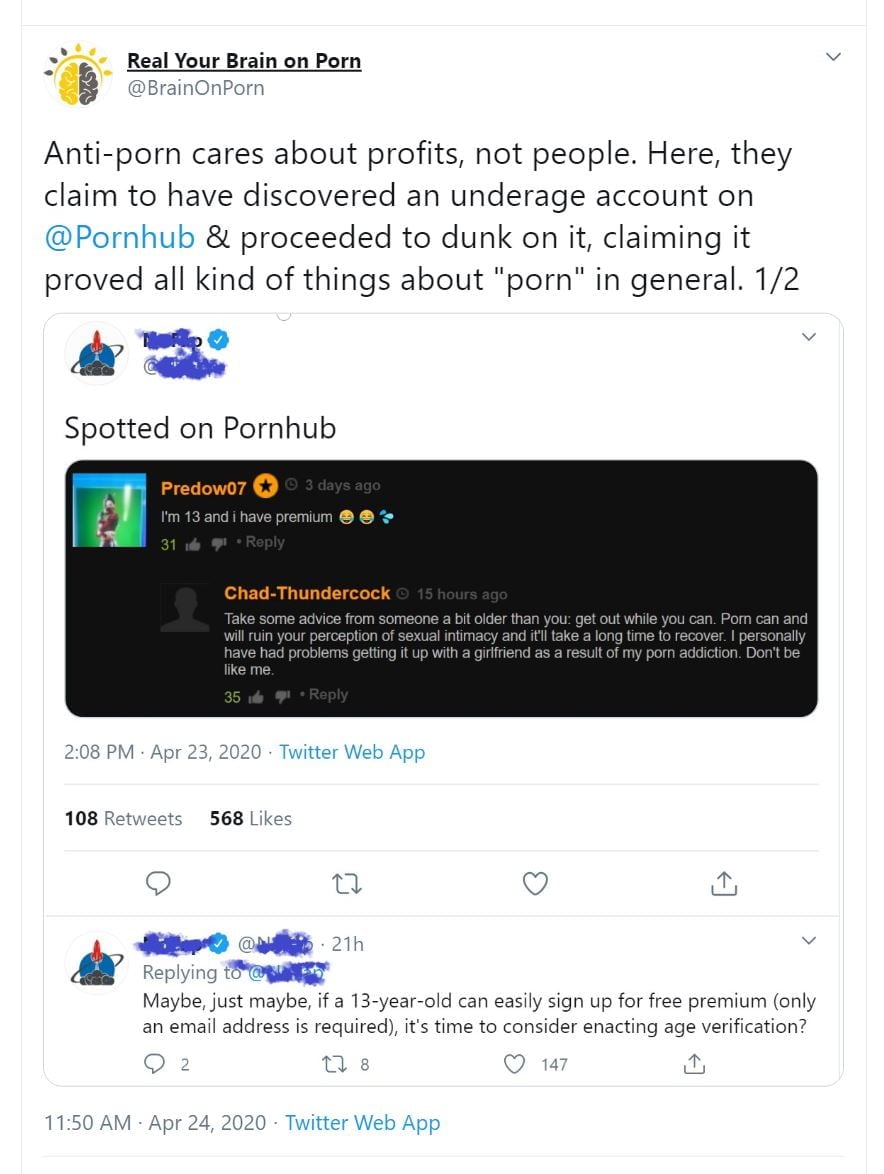
Damn, RealYBOP scouring PornHub as if she is a moderator.
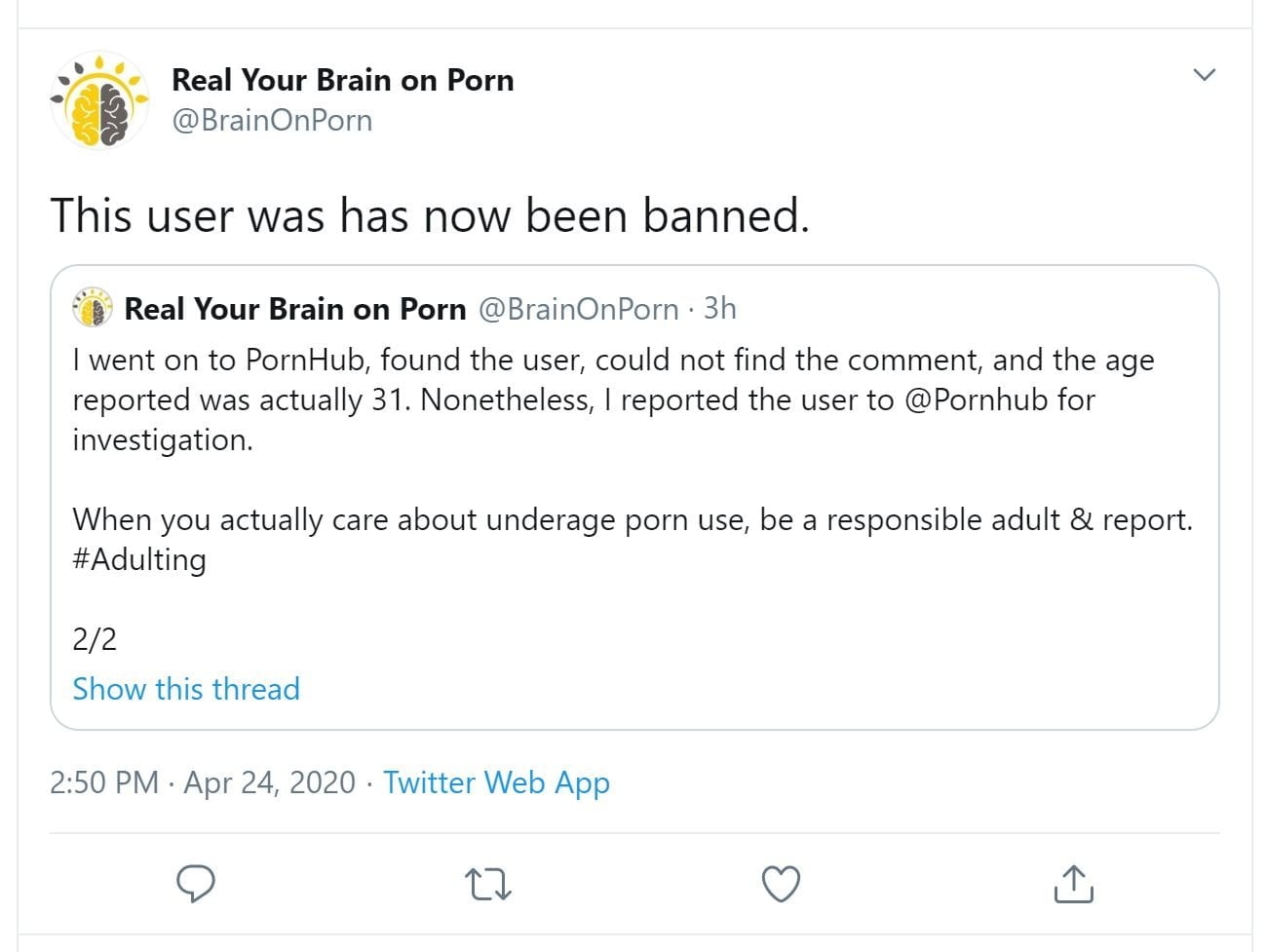
——————————–
Tweets XBIZ propaganda by XBIZ news editor Gustavo Turner
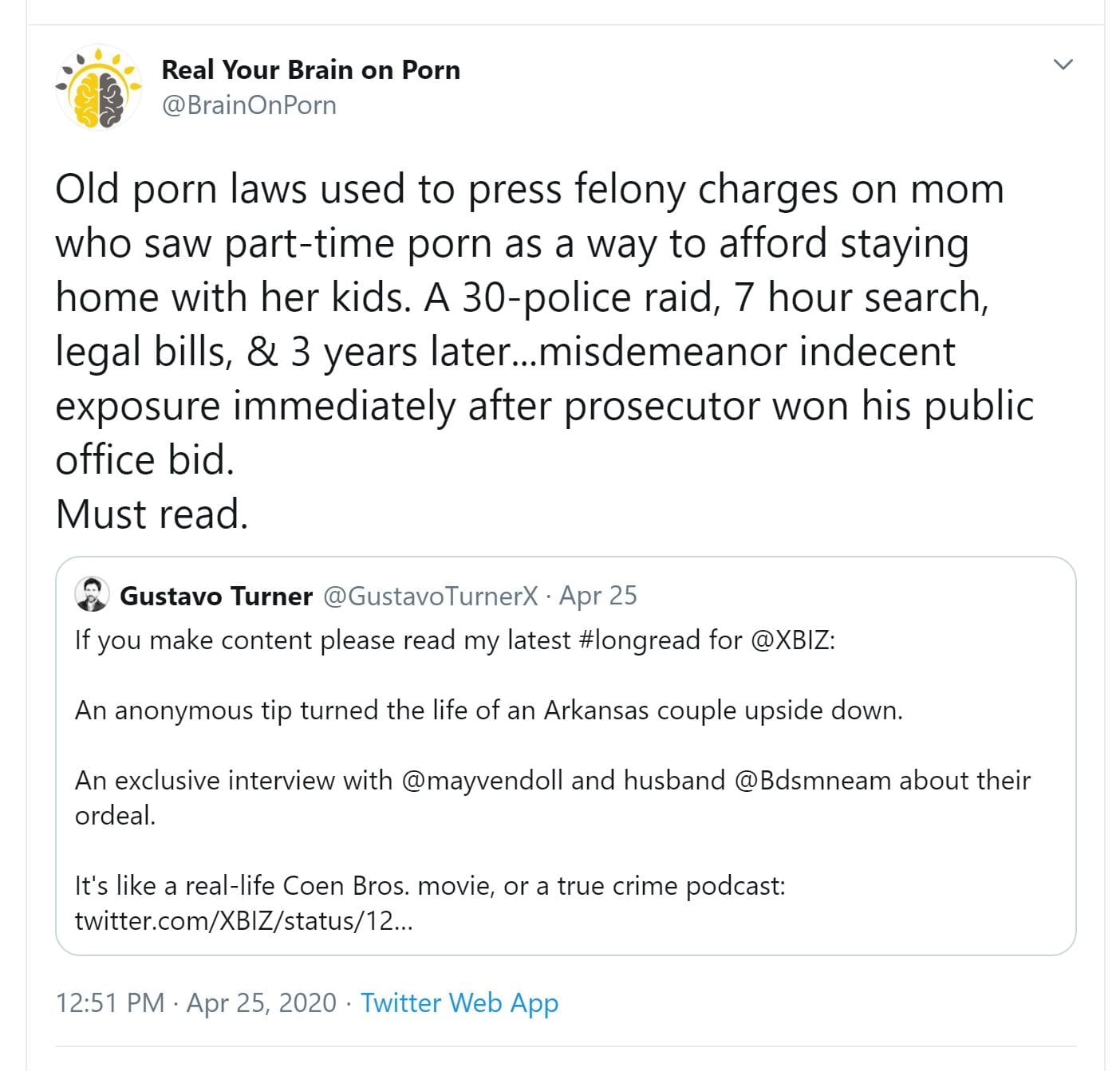
—————————
Tweets a “sex worker’s ” propaganda in support of PornHub:
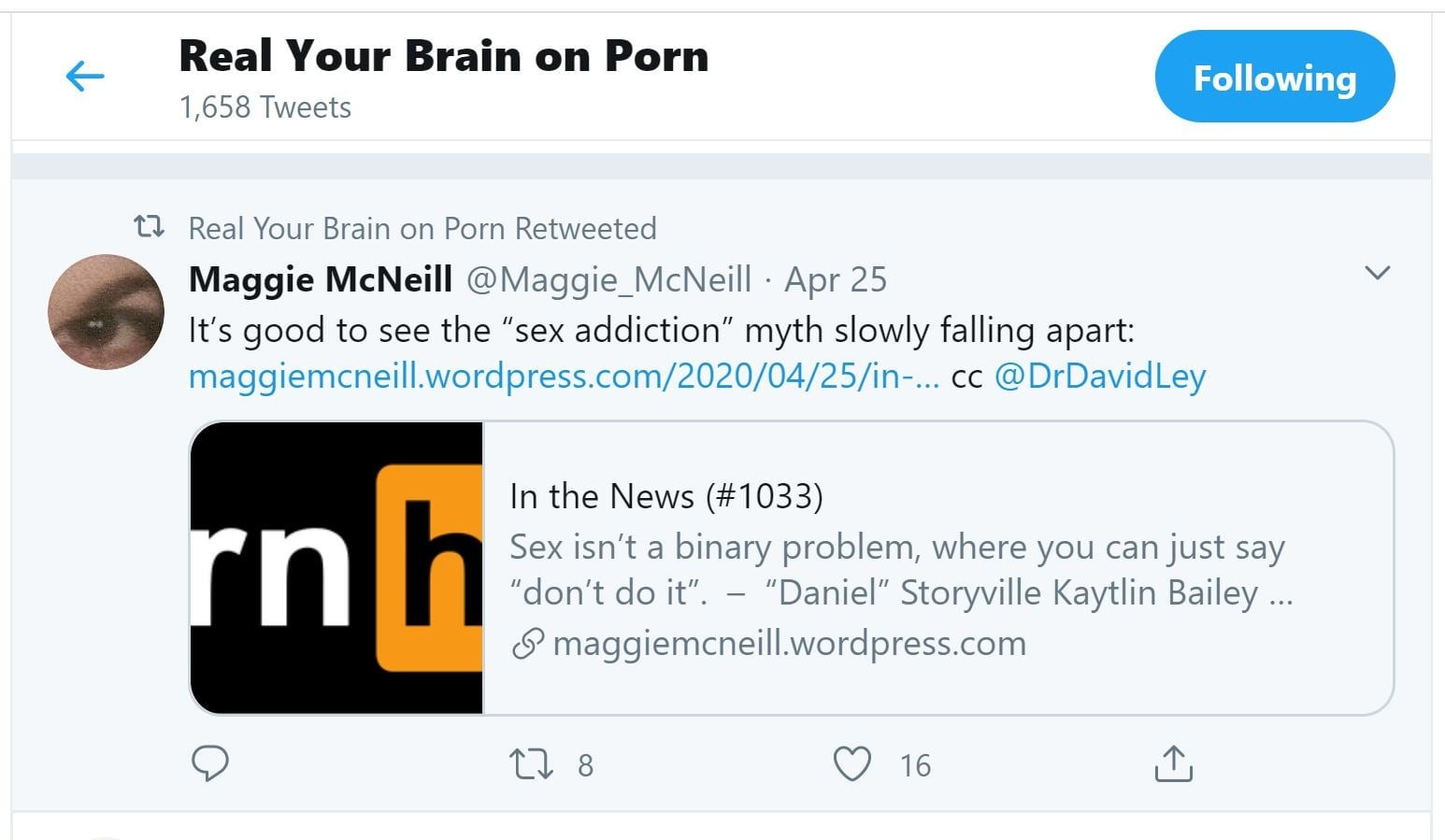
Uhh, nope, there are now 50 neuroscience-based studies providing strong support for the addiction model as their findings mirror the neurological findings reported in substance addiction studies.
—————————
Continued support for pornhub (which is being outed as hosting numerous child porn videos):
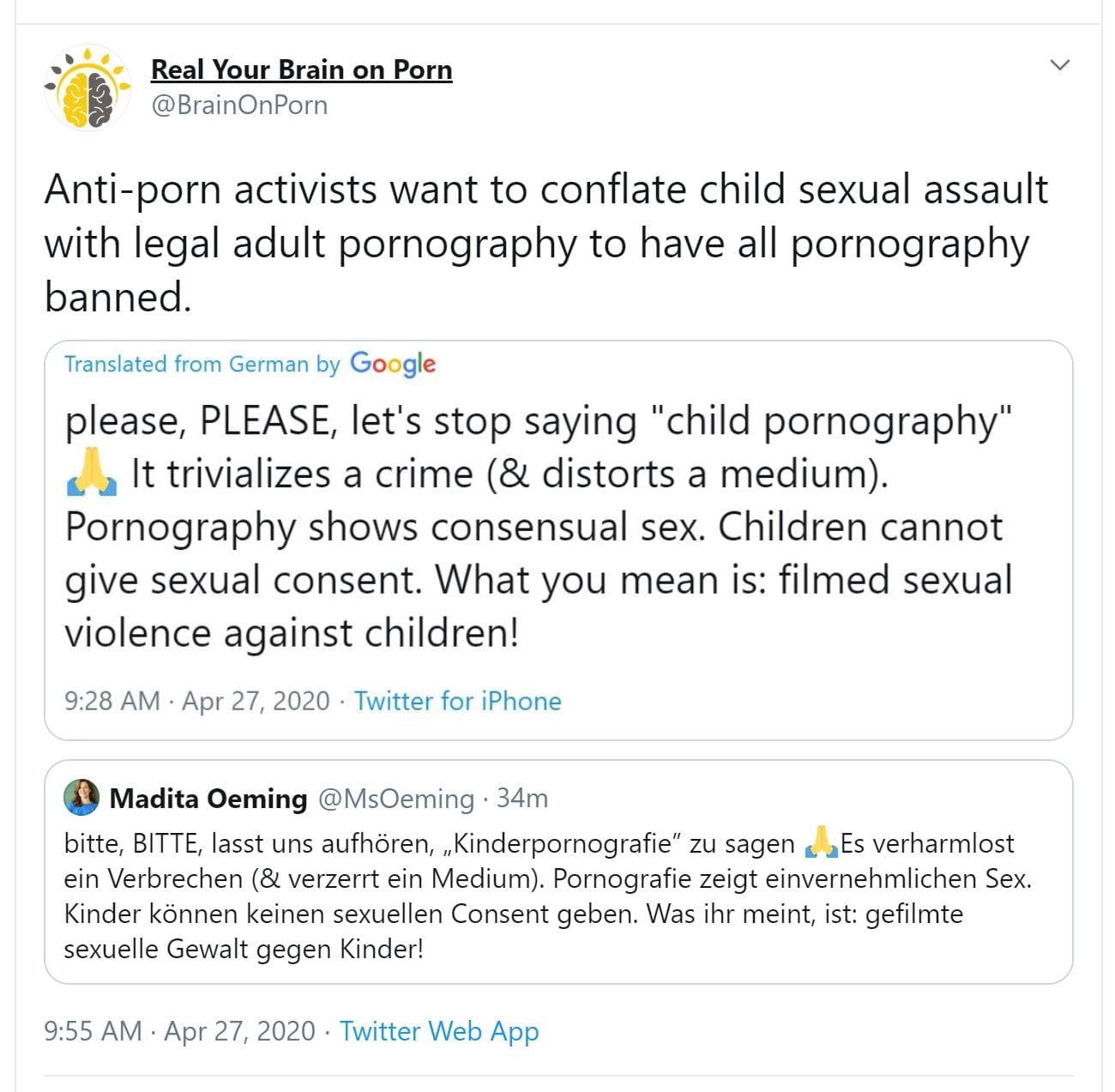
It’s clear that Prause and Ley are chums with many porn industry insiders. Yet, ee have always suspected that both communicate behind the scenes, assisting the porn industry with its propaganda and its attacks on Prause usual targets. This January, 2020 XBIZ hit-piece by RealYBOP buddy Gustavo Turner is proof positive that RealYBOP (run by Prause) is collaborating directly with the porn industry: The XBIZ article acknowledges RealYourBrainOnPorn as their source for lies about YBOP. XBIZ claims that YBOP is “murkily funded”. Pure bullshit, as I have stated for 10 years that YBOP receives no funding or ad revenues. In addition, my share of the proceeds from my book go to charity.
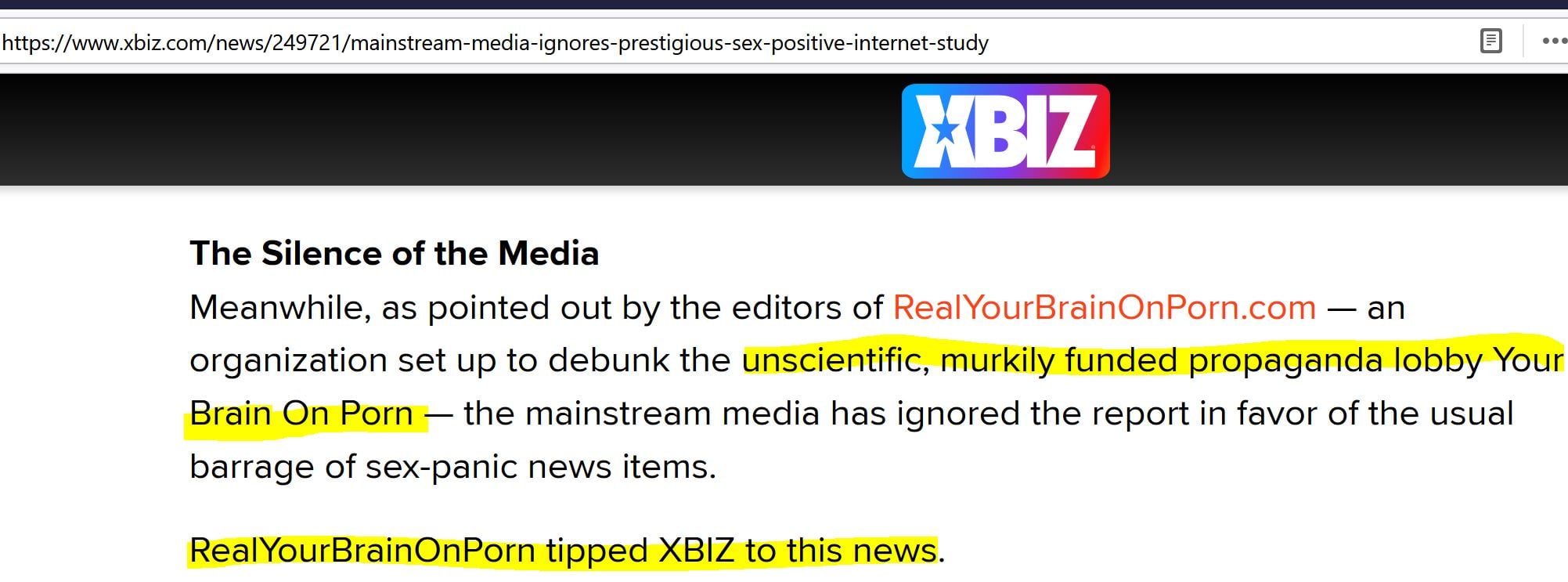
Oh, as for the XBIZ/RealYBOP claim that YBOP is “unscientific”, see the main YBOP research page containing links to about 1,000 studies reporting myriad negative outcomes related to porn use. In reality, porn industry shill RealYBOP is the unscientific “organization”. This page exposes RealYBOP’s so-called research page as nothing more than a handful of cherry-picked, often irrelevant papers (many are not real studies), and its egregious omissions.
——————————
Spreading porn industry propaganda

————————
Retweeting propaganda from XBIZ.
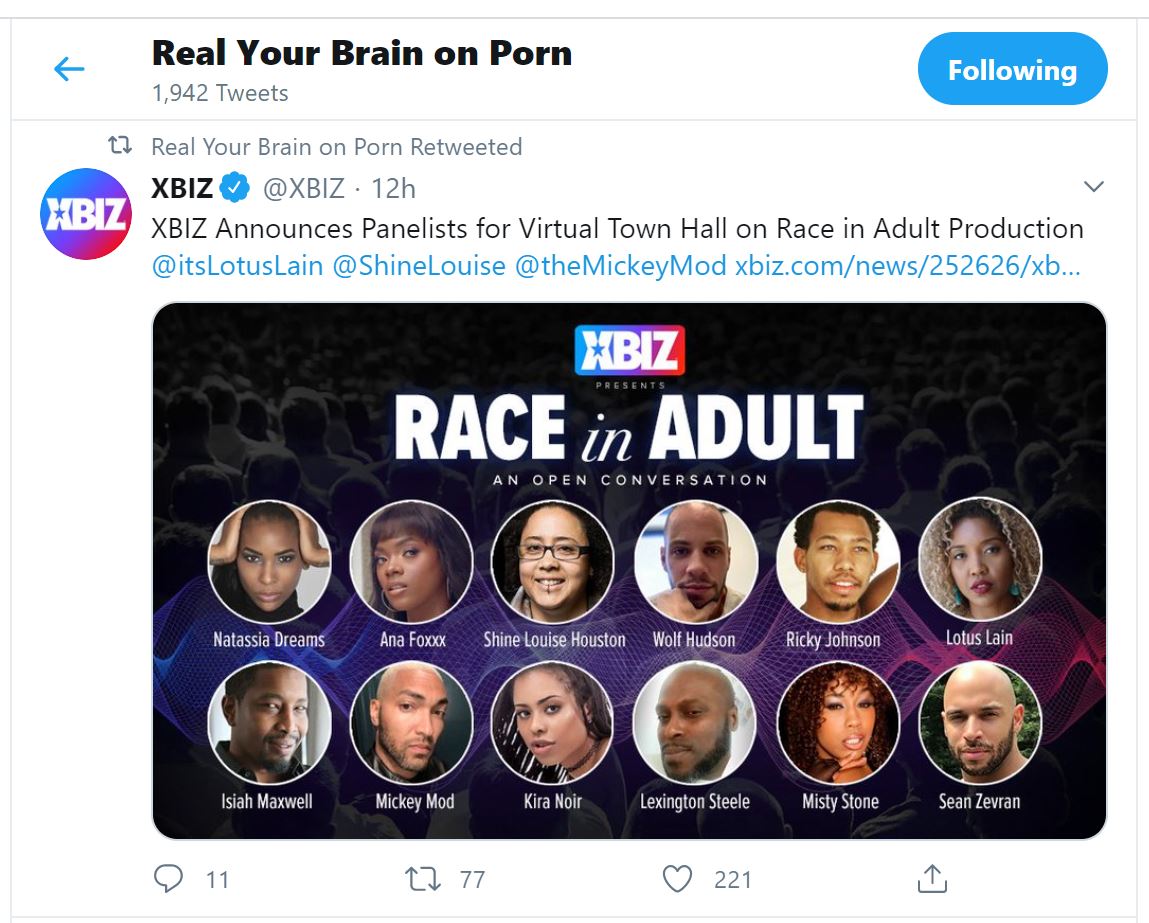
RealYBOP complicit in covering up the truth:
Racism is rife in porn so don't believe Pornhub's latest propaganda about being onside with #BlackLivesMatter. Dr. @GailDines of @CultureReframed speaks with Dr. Carolyn West about how common racism is in porn. https://t.co/9SqSIwTel8
— Liz Walker (@LizWpresents) June 11, 2020
—————————
Retweeting XBIZ propaganda
———————-
Retweeting XBIZ propaganda:
———————-
Retweets porn star upset at my tweet:
—————
RealYBOP directly supporting PornHub’s criminal activity (hosting child porn and sex trafficking videos):
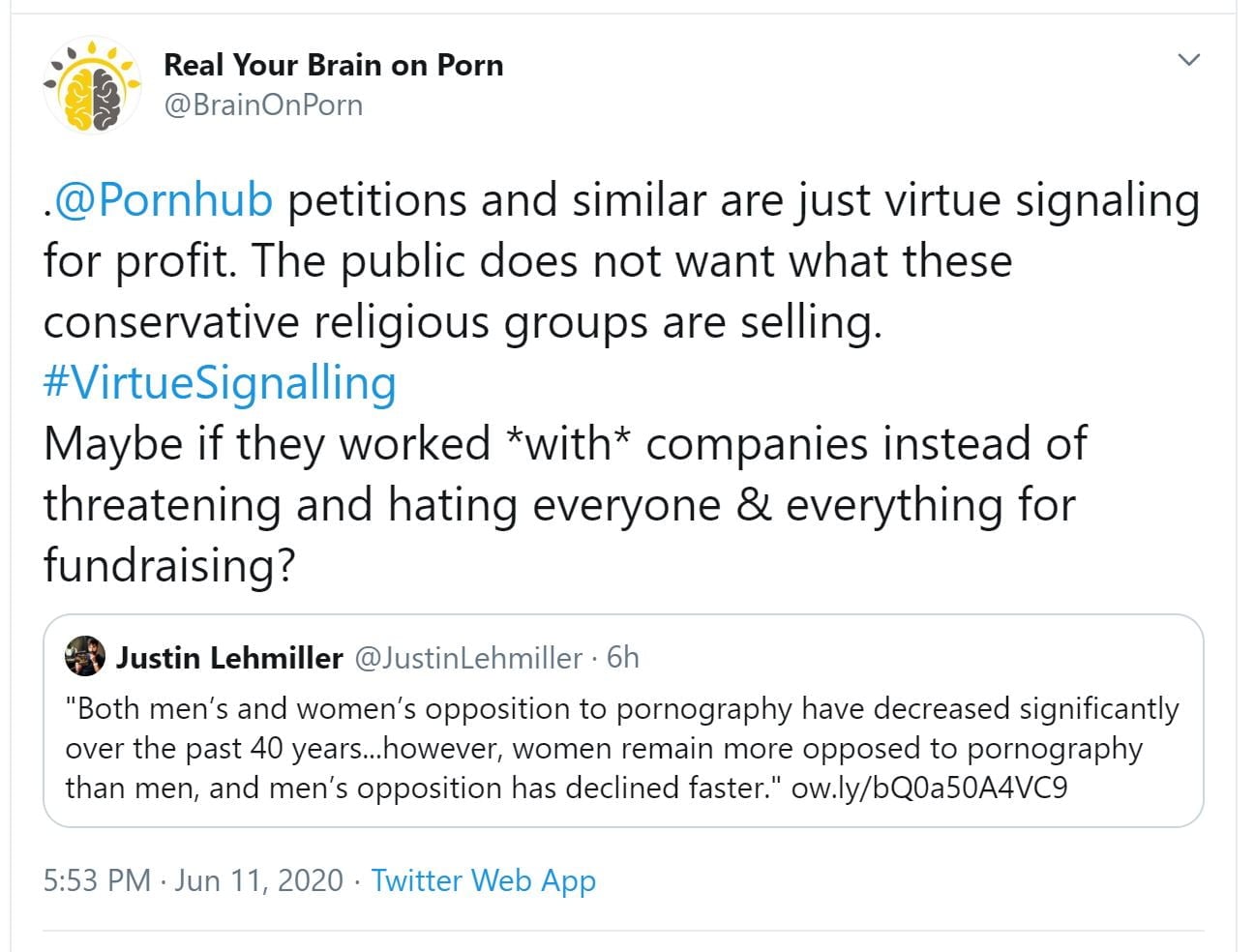
————————–
Supporting “sex work
——————————
Supporting Jerry Barnett (who once ran a porn site), falsely stating that porn use is overwhelmingly positive for most everyone!
Her article is completely debunked here: Debunking “Why Are We Still So Worried About Watching Porn?”, by Marty Klein, Taylor Kohut, and Nicole Prause (2018).
————————
Reteeting XBIZ hit-piece attacking many of NP’s usual targets:
————————-
Celebrating the downfall of Sasse’s and Merkley’s bill, titled the Stop Internet Sexual Exploitation Act, would impose this restriction on all platforms and require consent forms to be uploaded for every individual appearing in the video. It would also mandate that sites hosting pornographic content prohibit video downloads, set up a 24-hour hotline for people to video removals, and require the removal of the videos within two hours of victims flagging them.
———————-
On a podcast Prause is asked about the campaign to hold Pornhub accountable for profiting off of child abuse and sex trafficking videos (Laila Mickelwait is spearheading the expose’ of Pornhub’s reckless and illegal content). Prause is seems to be letting Pornhub off the hook. She used her RealYBOP alias to attack Laila and defend Pornhub. See – RealYourBrainOnPorn (@BrainOnPorn) tweets DIRECTLY supporting the porn industry, especially Pornhub
————————-
So, tubes sites, with hard core porn, have led to all sorts of wonderful benefits (cites nothing):
————————-
2 tweets supporting decriminalization of prostitution:
——————
2 tweets supporting sex work, specifically camming:
Lying that Laila was involved in claimed death threats. Why is Prause harassing Kristof, who exposed Pornhub’s illegal and vile activities?
How disgusting is it that Prause tweets lies under a video by a victim of Pornhub?
————————————–
Prause’s intimate relationships with porn industry performers, directors, producers, etc.
Section exposing Prause’s close relationships with porn performers and producers. Prause’s “lab” and residence are in the heart of Los Angeles.
Prause posing, sandwiched by two well known porn stars:

—————-
Well-known porn actor/producer welcomes Prause to Twitter (July, 2014). Several hashtag comments on her looks (why didn’t she call him out for misogyny?)
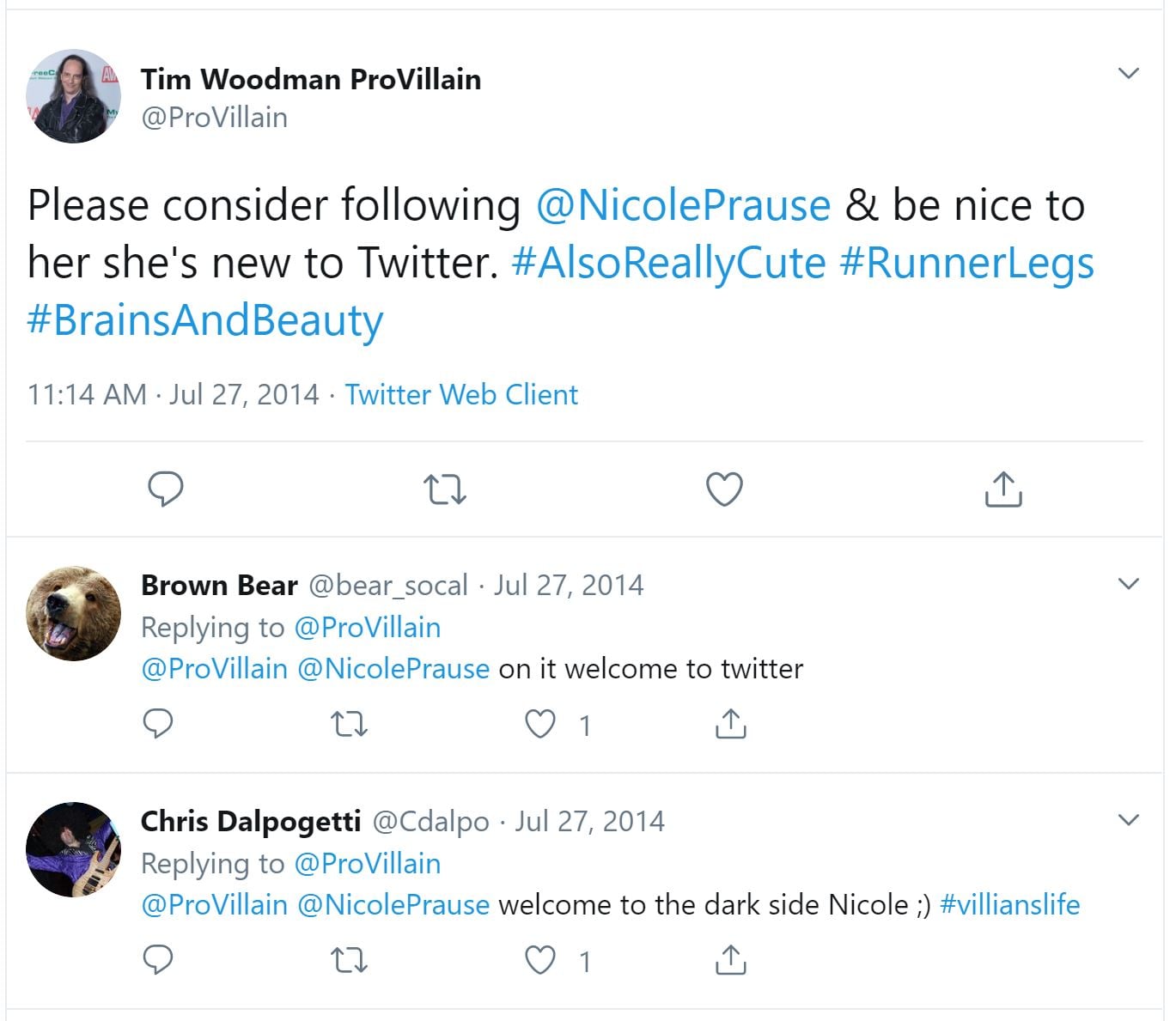
—————–
July, 2014: Porn producer saying it was so nice to meet Nicole Prause. Prause’s tweet is unavailable because her old twitter account was permanently banned for harassment.
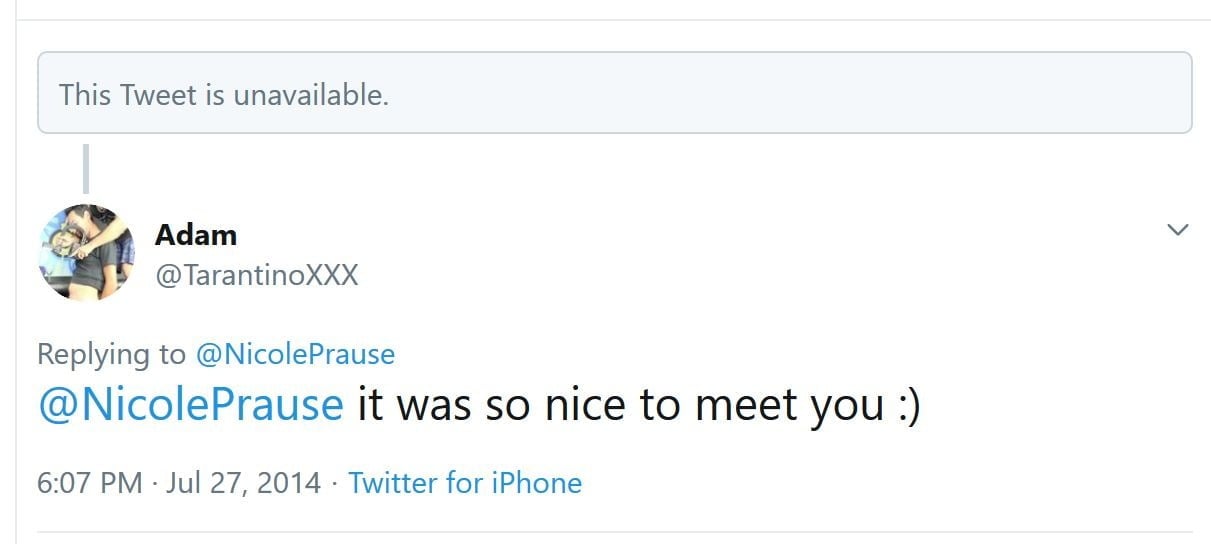
—————
August, 2014: Porn actor/producer (Tim Woodman) tagging Melissa Hill & Prause, saying he wished he could have gone.
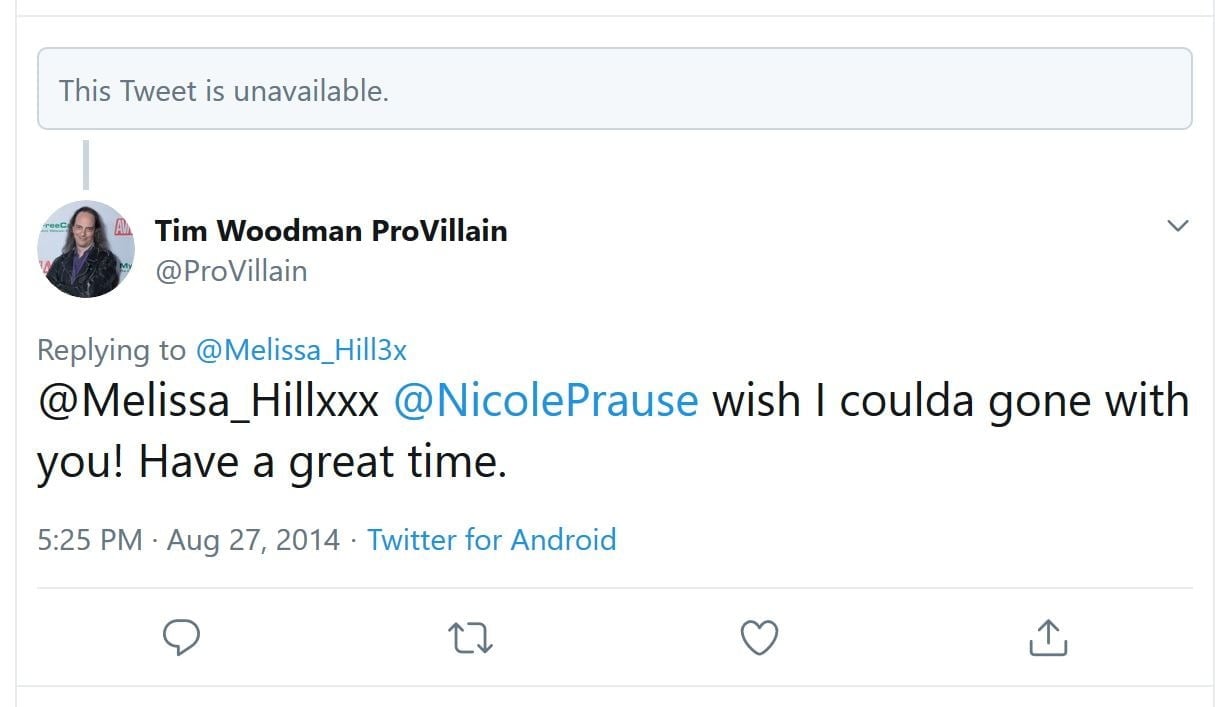
Prause’s tweet is unavailable because her old Twitter account was permanently banned for harassment.
—————–
Porn producer/writer flirting with Prause (why didn’t she call him out for misogyny?). RedditIAmA – I’m Adam Christopher / Tarantino XXX Adult Film Writer/Director for TarantinoXXX.com and I have a challenge for the real Quentin Tarantino AMA.
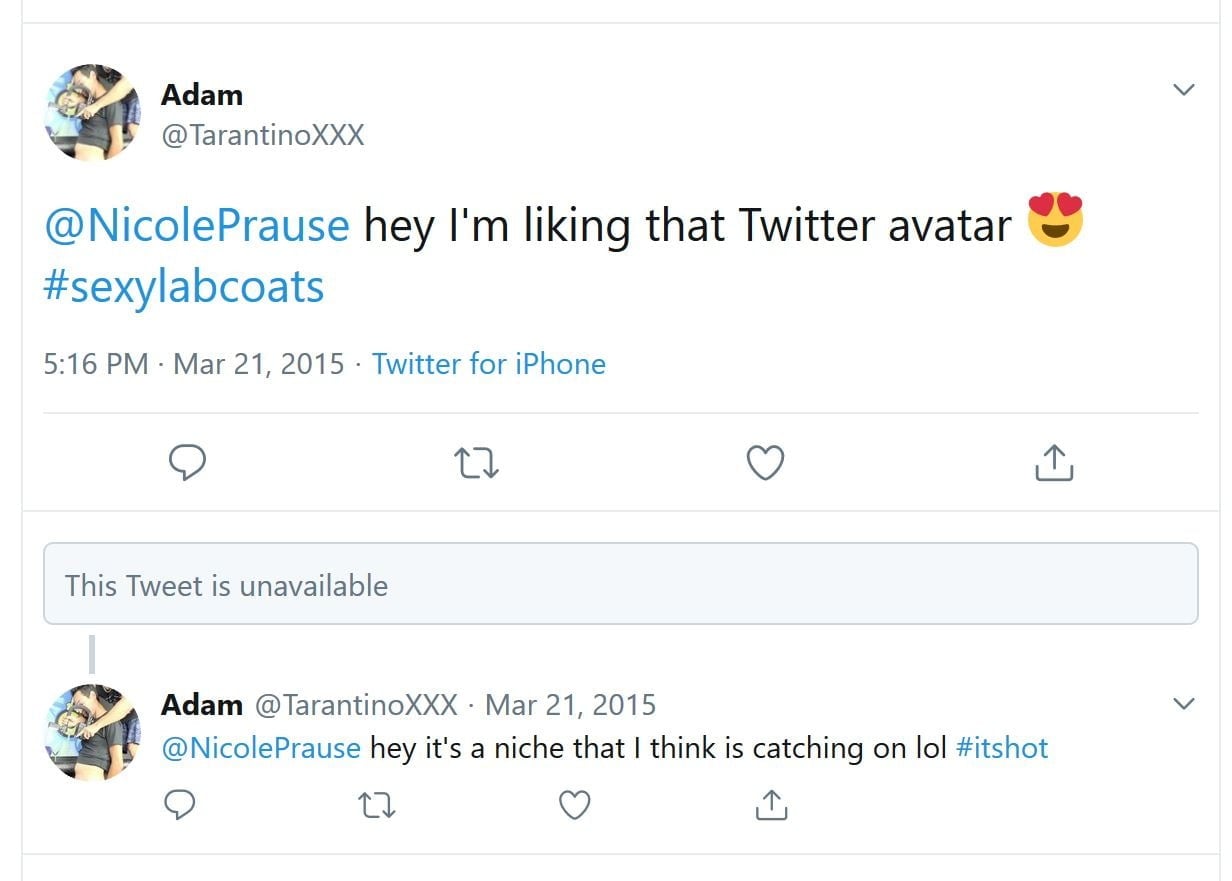
Prause’s tweet is unavailable because her old Twitter account was permanently banned for harassment.
—————–
Porn producer/director again, with an intimate exchange:
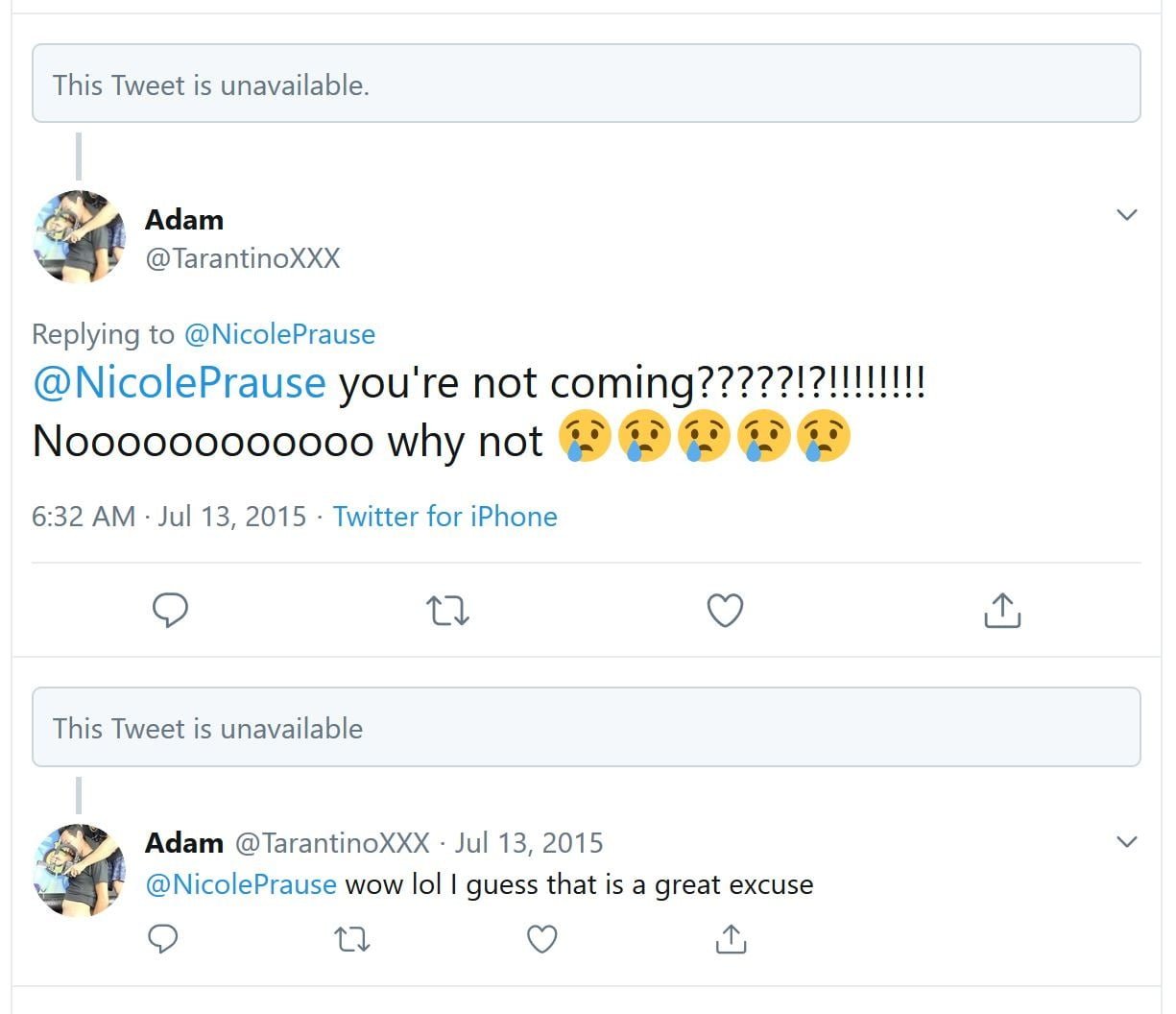
—————–
Prause presents “Science over Stigma” to an adult performers gathering:
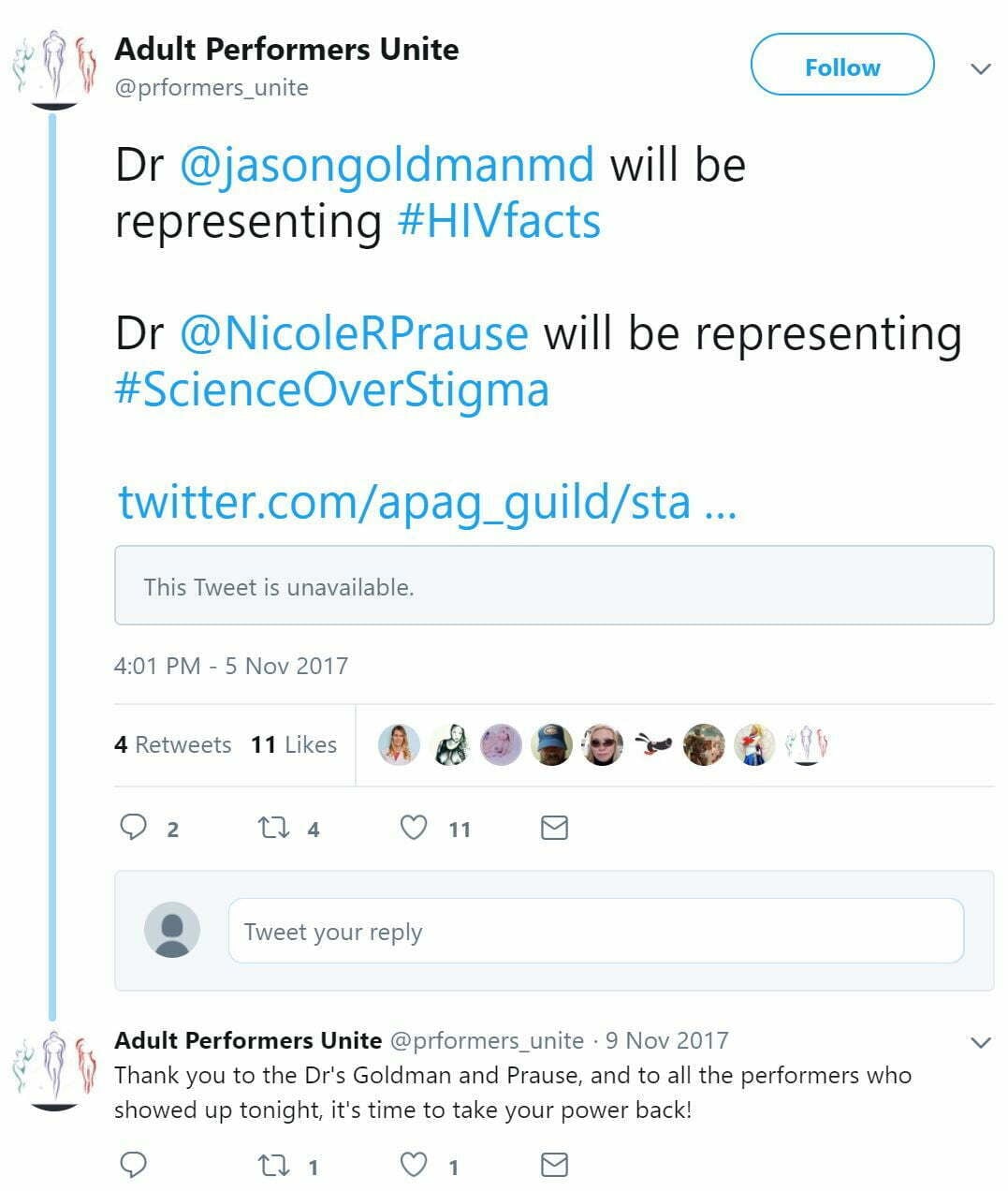
————–
Prause describing her time spent with another pornography legend:
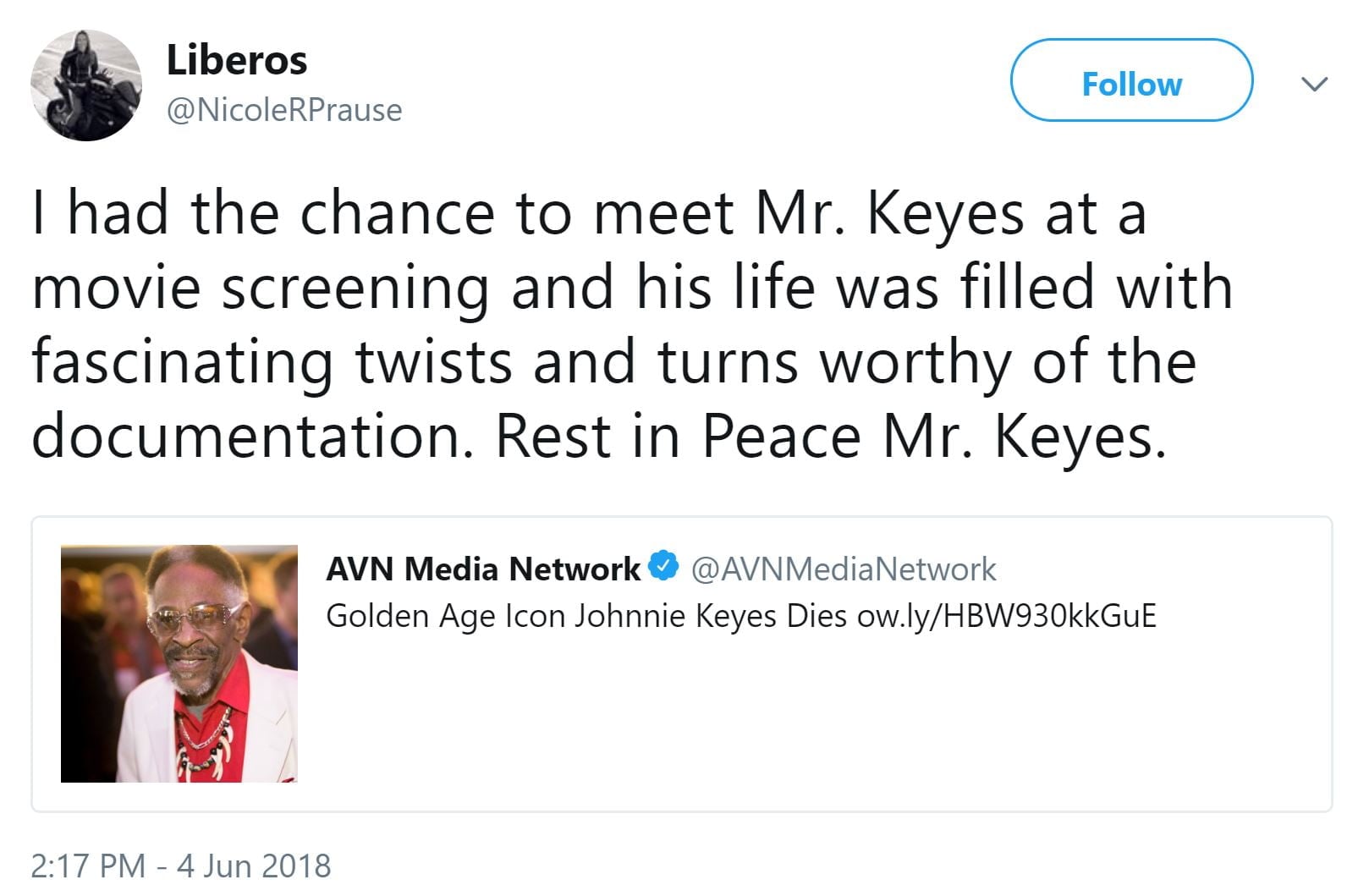
——————-
Why would a supposedly impartial researcher be tweeting about a porn performer union?
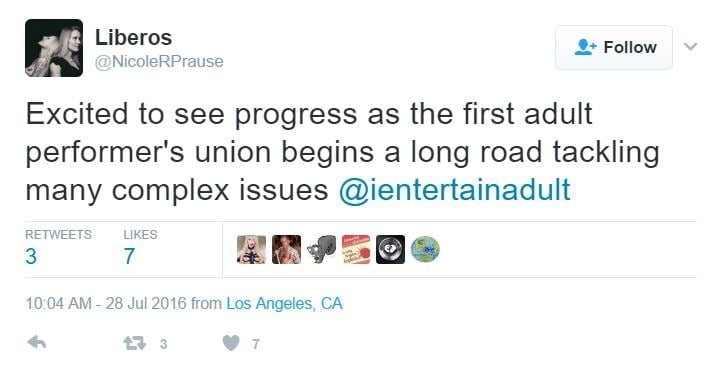
——————
Prause provides advice to an adult performer:
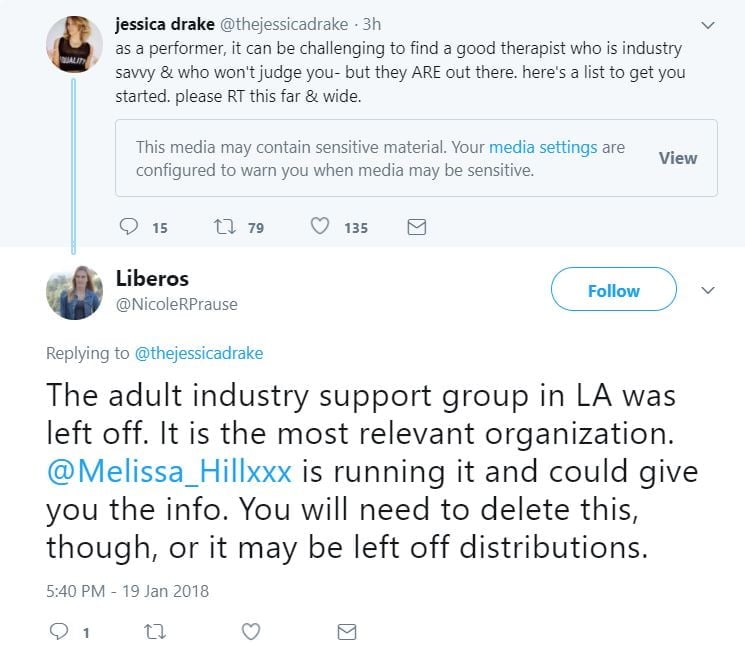
——————-
Again interacting with performers, as if she has inside connections:
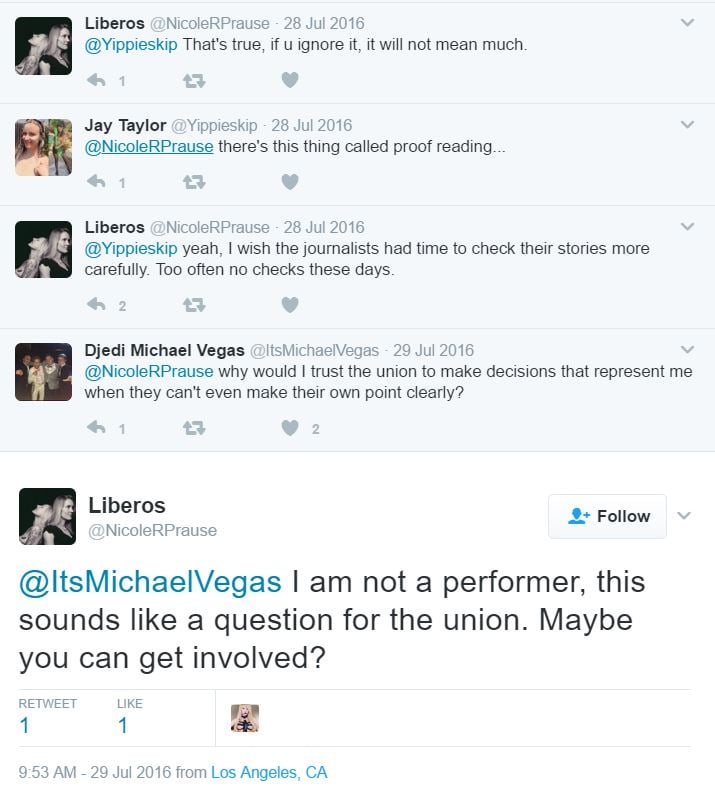
———————
Prause tweeting an article where she defends porn & sex workers, and lets us know about the true nature of being in porn:

Retweeted by FSC and porn producers.
——————–
On the Twitter thread of two porn performers, Prause tells them that porn stars do not have more emotional problems and that performing porn is not harmful (as if causation could be demonstrated):
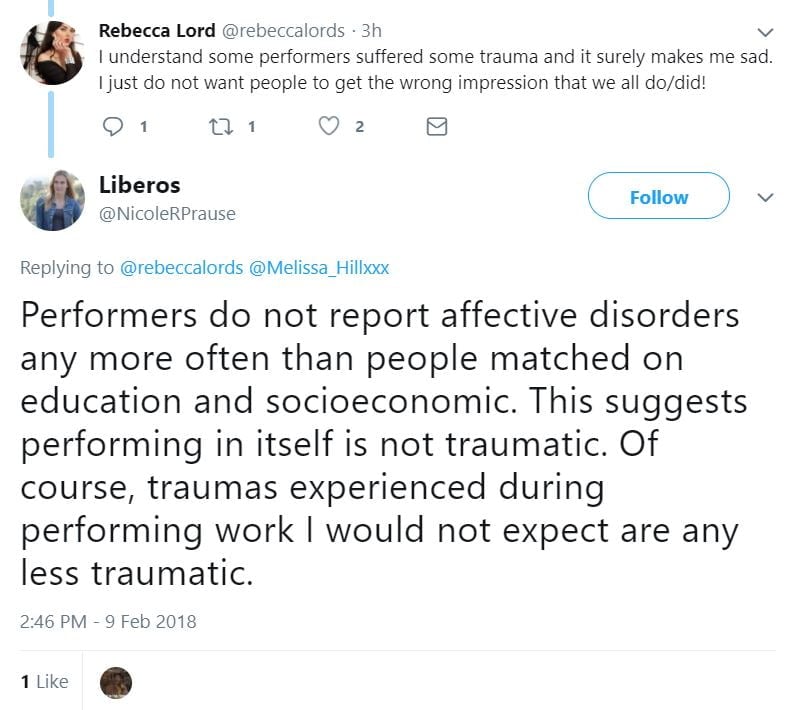
Note: Prause cites no studies to support her assertions.
——————–
Major porn producer calling Prause “our superheroine.” Prause takes a bow for her noble services.

—————–
Close Prause ally David Ley also admits to knowing several porn producers (we have many more Ley tweets confirming his close ties to the porn-industry)
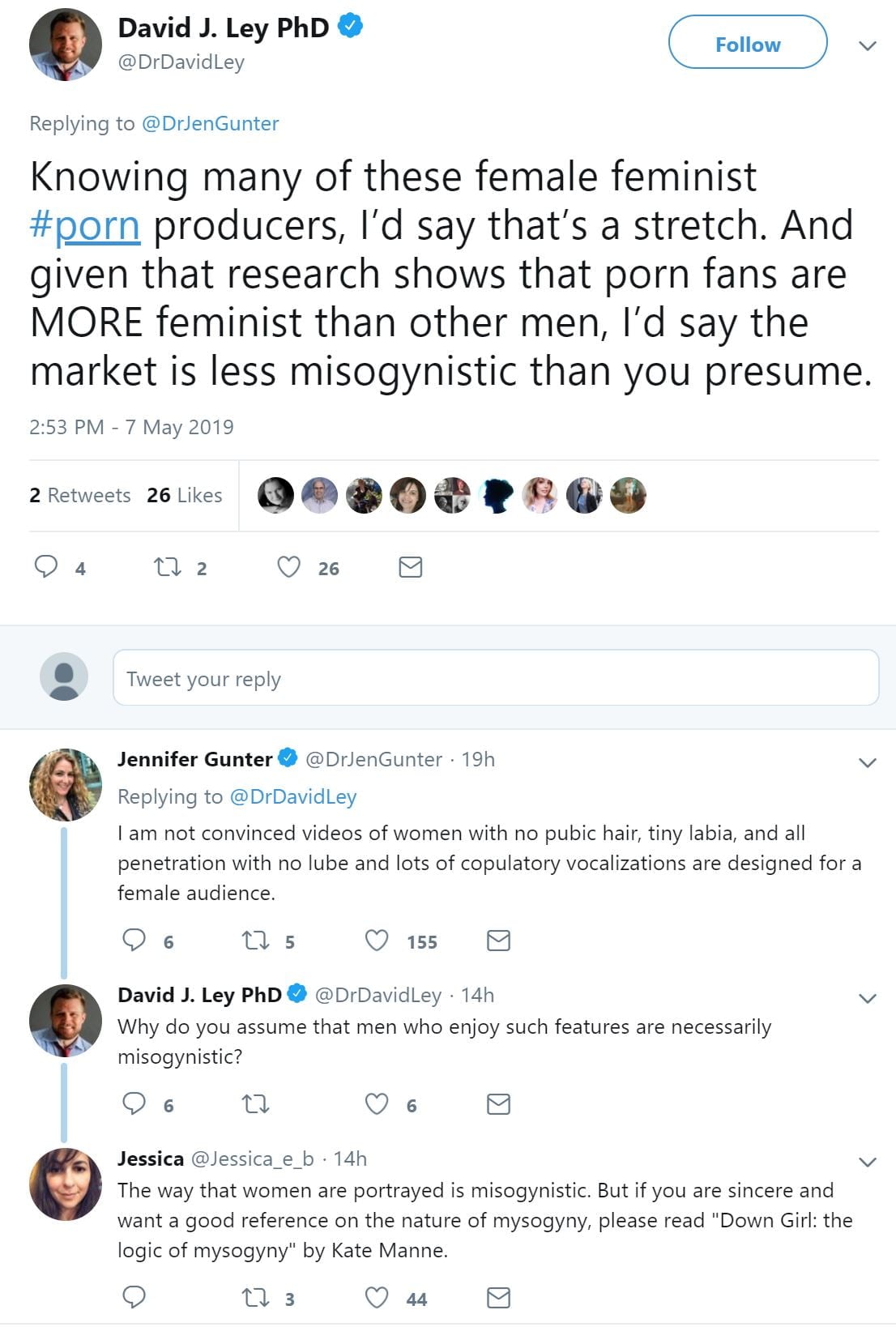
—————
In a very personal tweet, Prause sends her condolences to the family of William Margold, the former director of the Free Speech Coalition who was a co-founder of X-Rated Critics Organization (XRCO):
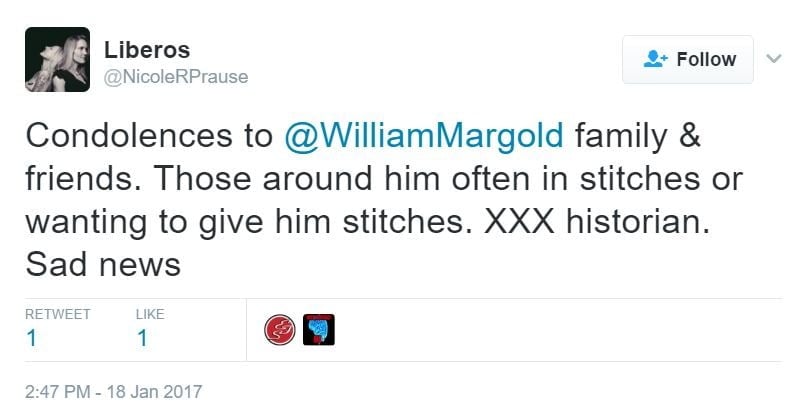
FYI – During the initial broadcast of NBC’s Tomorrow Coast-to-Coast with Tom Snyder, Marigold said he would consider performing a sex scene with his own daughter. When asked if he would allow his daughter to enter the porn business, Margold replied, “Not until she’s eighteen. And then I might even work with her myself.”
—————-
Convo with porn performer/producer claiming that “anti-porn” is misogynist, yet porn performers are not:
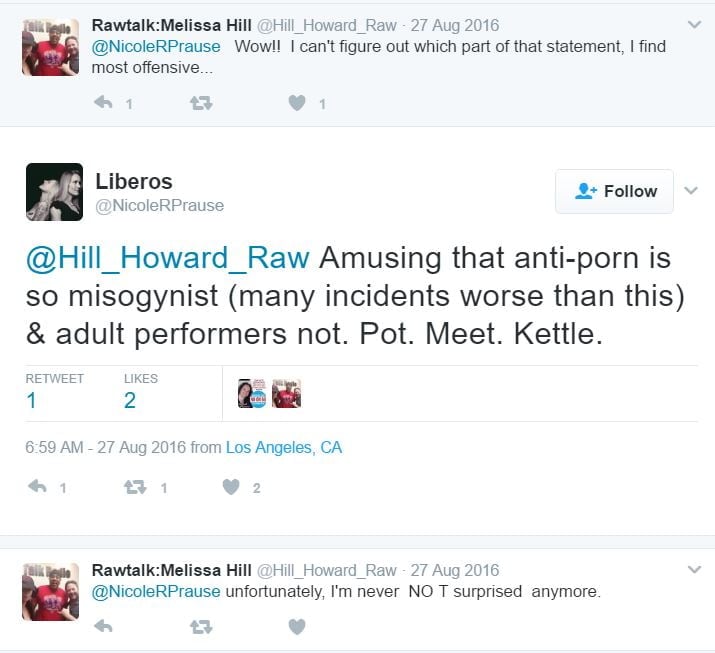
—————–
Prause tweets an article by porn producer “Ms Naughty.”
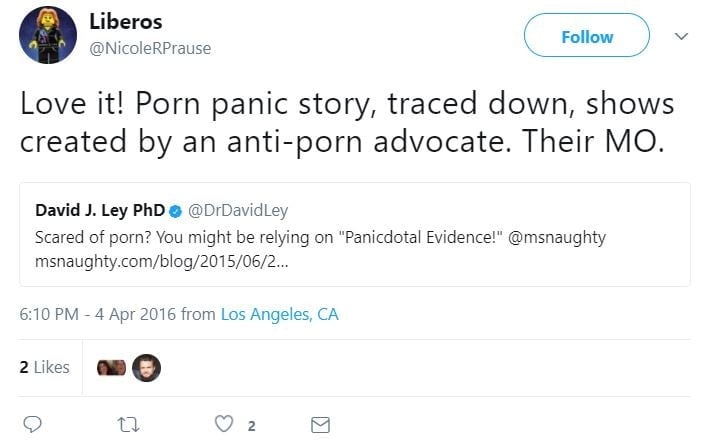
The porn producer (Ms Naughty) is attempting to smear Susan McLean, a federal government cyber-safety adviser, who is concerned about young people mimicking what they see online. The Daily Mail article covering this. Prause calls it a “panic story.”
—————
Promoting AVN/porn show:

——————–
In 2017, she claims to be “an (unpaid) board member for the porn performers union“:
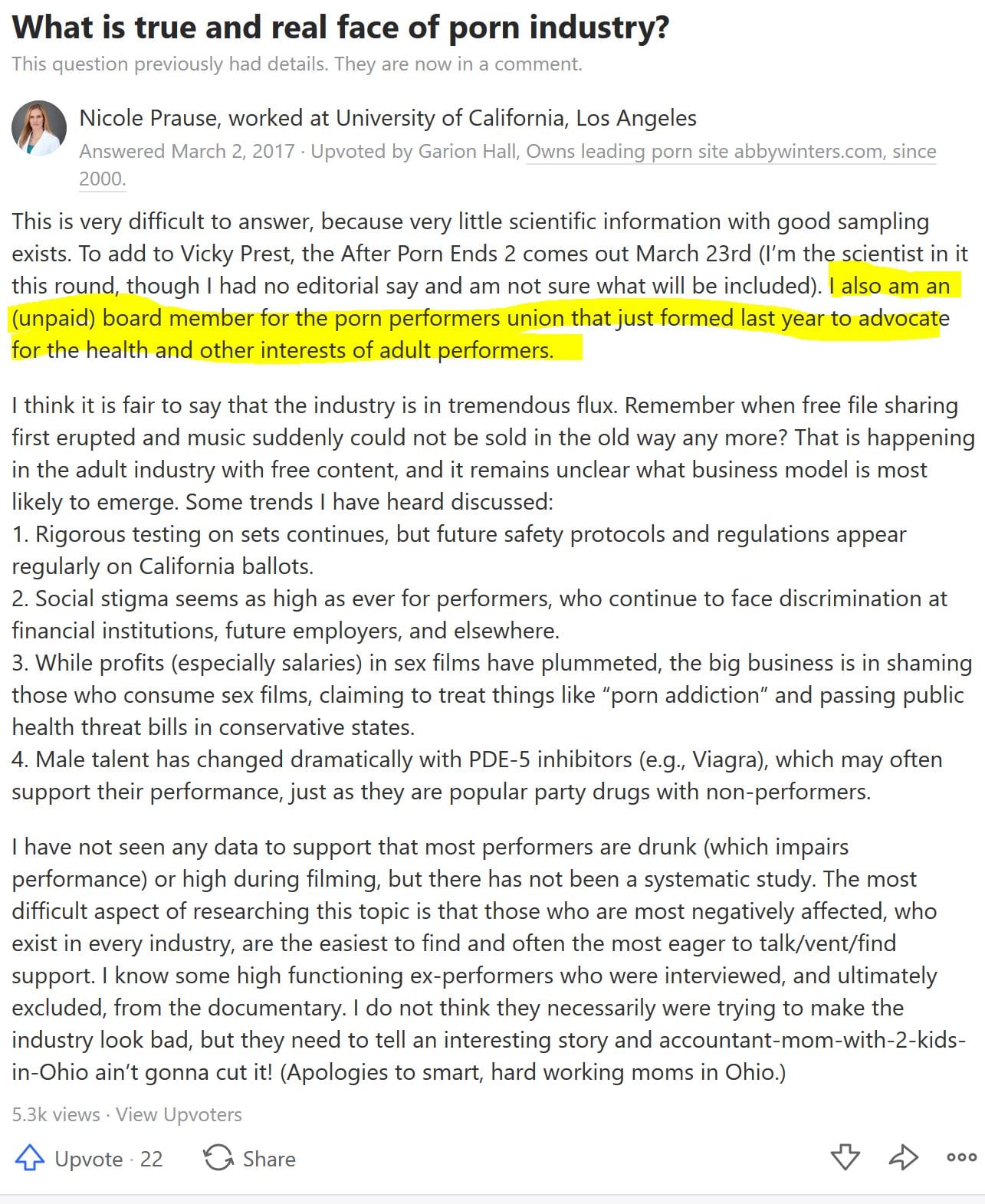
My goodness. On the board of a porn star union. Talk about an intimate relationship with the porn industry.
——————–
Prause cheers on porn director Mike Quazar (over 500 porn films), telling him to “PREACH” the truth about porn’s effects:
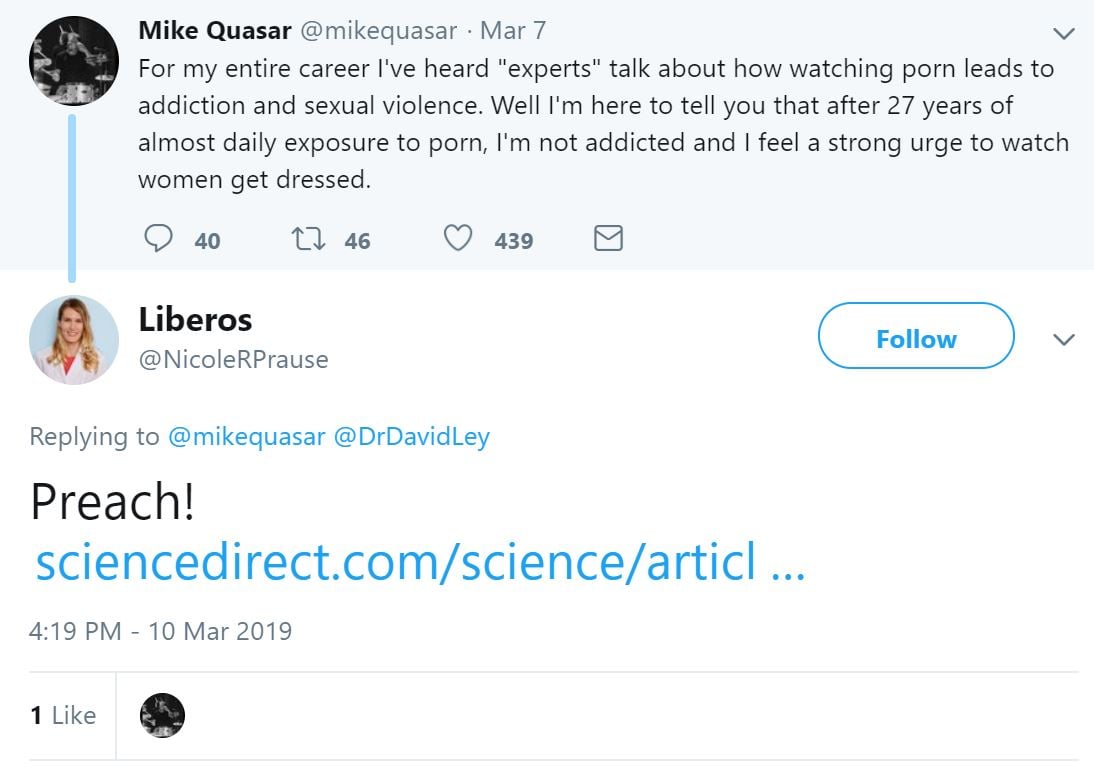
Prause’s link goes to her lone, flawed anomalous EEG study: Prause et al., 2015. The results: Compared to controls “individuals experiencing problems regulating their porn viewing” had lower brain responses to one-second exposure to photos of vanilla porn. Prause claims these results “debunk porn addiction.” What legitimate scientist would claim that their lone anomalous study has debunked a well established field of study? Lower EEG readings mean that subjects are paying less attention to the pictures. Put simply, frequent porn users were desensitized to static images of vanilla porn. They were bored (habituated or desensitized). See this extensive YBOP critique. Eight peer-reviewed papers agree that this study actually found desensitization/habituation in frequent porn users (consistent with addiction): Peer-reviewed critiques of Prause et al., 2015.
————————–
As stated in the introduction, Prause began openly harassing, libeling and cyberstalking Gary Wilson in 2013. In one of her most egregious, yet revealing incidents, Prause prepared a libelous blog piece, which she posted on an adult industry website. (Original url: http://mikesouth.com/scumbags/dr-nicole-prause-destroys-yourbrainonporn-dont-fall-22064/). The site describes itself as follows:
Mike South adult industry blog, the premier destination for adult industry news since 1998. Mike South was a small-time porn producer, who won two AVN awards, turned adult news blog pioneer. South was cited on a host of major news sites, and Gawker.com acknowledged him as “the gonzo king of porn gossip.”
Below is screenshot of Prause’s defamatory post, which was removed from MikeSouth.com right after Wilson tweeted this. Prause working directly with Mike South provides clear evidence of Prause’s porn-industry connections.
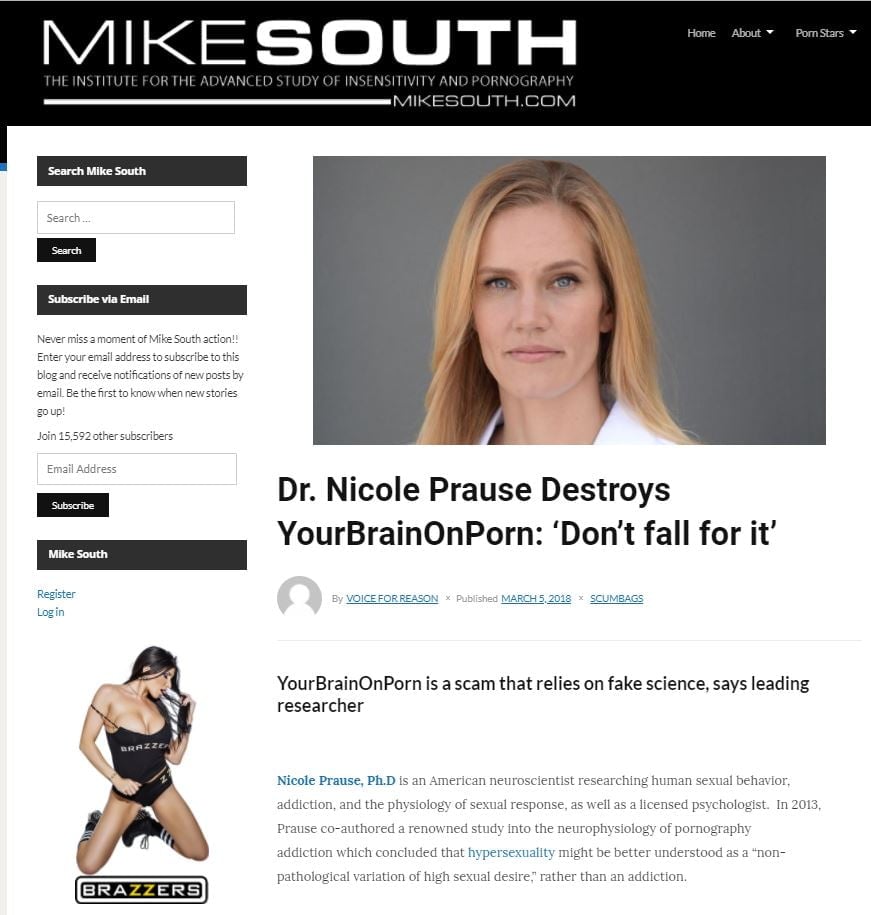
On the same day, Prause also posted this same porn-industry blog post on Quora. This resulted in her being permanently banned for harassment. In her defamatory piece, she knowingly, falsely stated that,
[Gary Wilson] claims to have been a “professor in Biology.” In reality, he was supposed to be an undergrad instructor, not a professor, for a lab section at Southern Oregon University. He was fired without pay immediately before completing even a quarter.
In her defamatory articles, tweets, and Quora posts Prause has knowingly and falsely stated that Gary Wilson claimed to be “professor in biology” or a “neuroscientist,” or otherwise “faked” his credentials. These 2 sections have already exposed Prause’s claims as lies:
- Ongoing – Prause falsely claims that Wilson has misrepresented his credentials
- February, 2019: Confirmation that Prause lied to the organizers of the European Society for Sexual Medicine conference, causing the ESSM to cancel Gary Wilson’s keynote address.
In short, Gary was an Adjunct Instructor at Southern Oregon University and taught human anatomy, physiology and pathology at other venues. Although careless journalists and websites have assigned him an array of titles in error over the years (including a now-defunct page on a website that pirates many TEDx talks where anyone can describe a speaker without contacting them first) he has always stated that he taught anatomy, pathology and physiology (YBOP About us page). He has never said he had a PhD or was a professor.
More details on this page: Libelous Claim that Gary Wilson Was Fired (March, 2018)
———————
May, 2019: tweet to porn performers, also acting as an intermediary between porn performers and national publication.
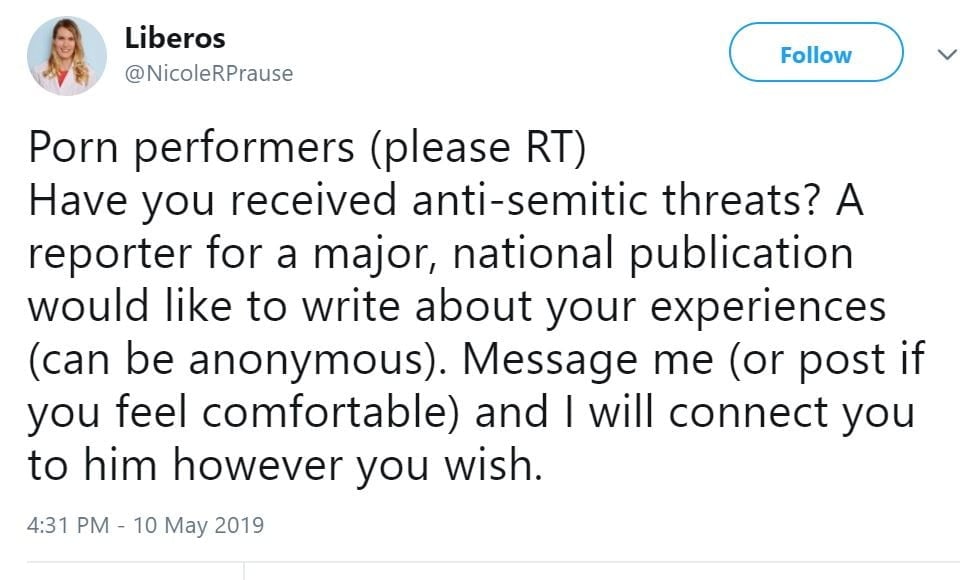
———————-
Prause promotes her interview on EAN (“Europe’s first choice for the erotic trade”):
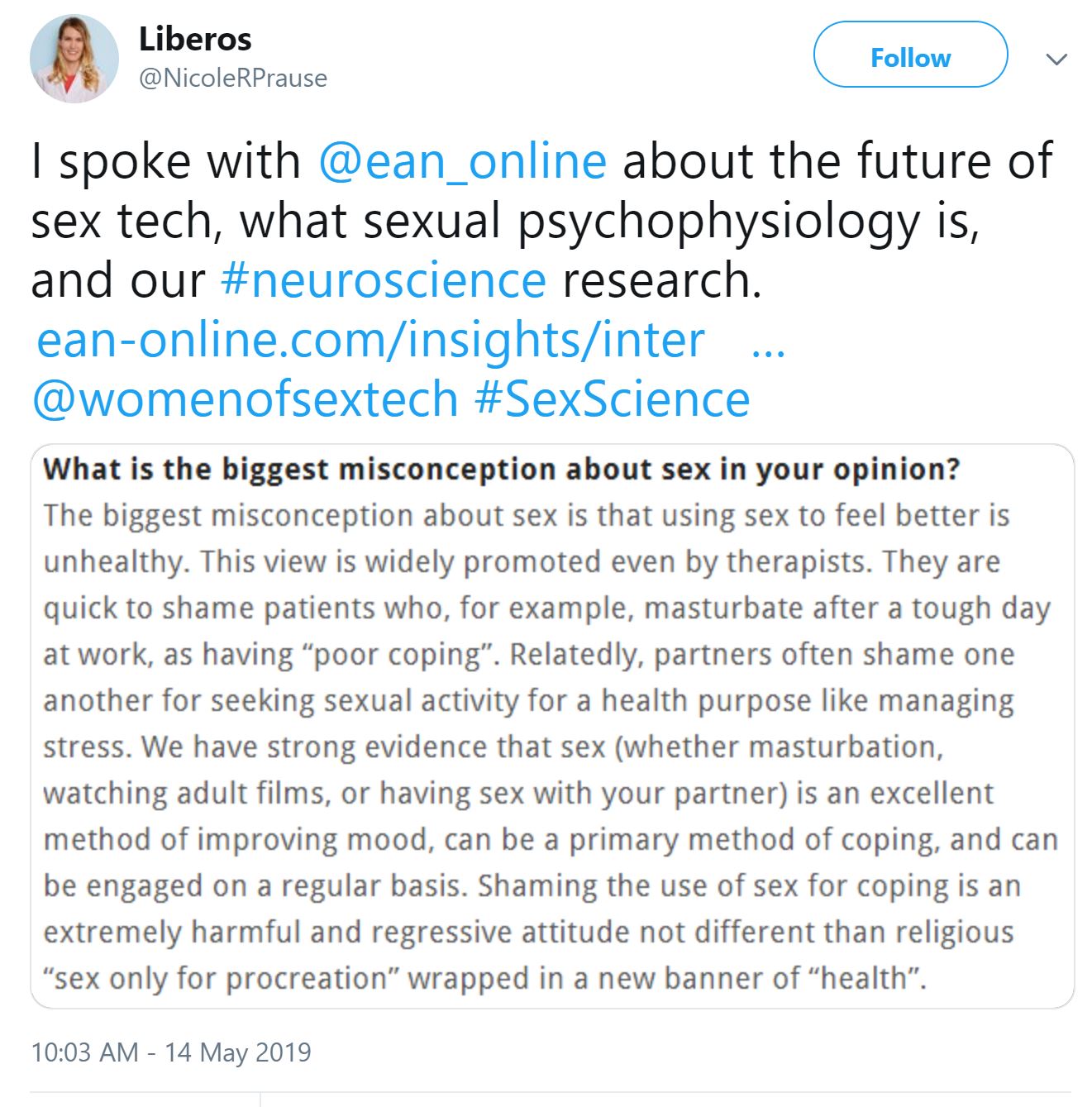
Screenshot: Prause interview featured on the EAN front page:

———————
More promotion of the porn industry:
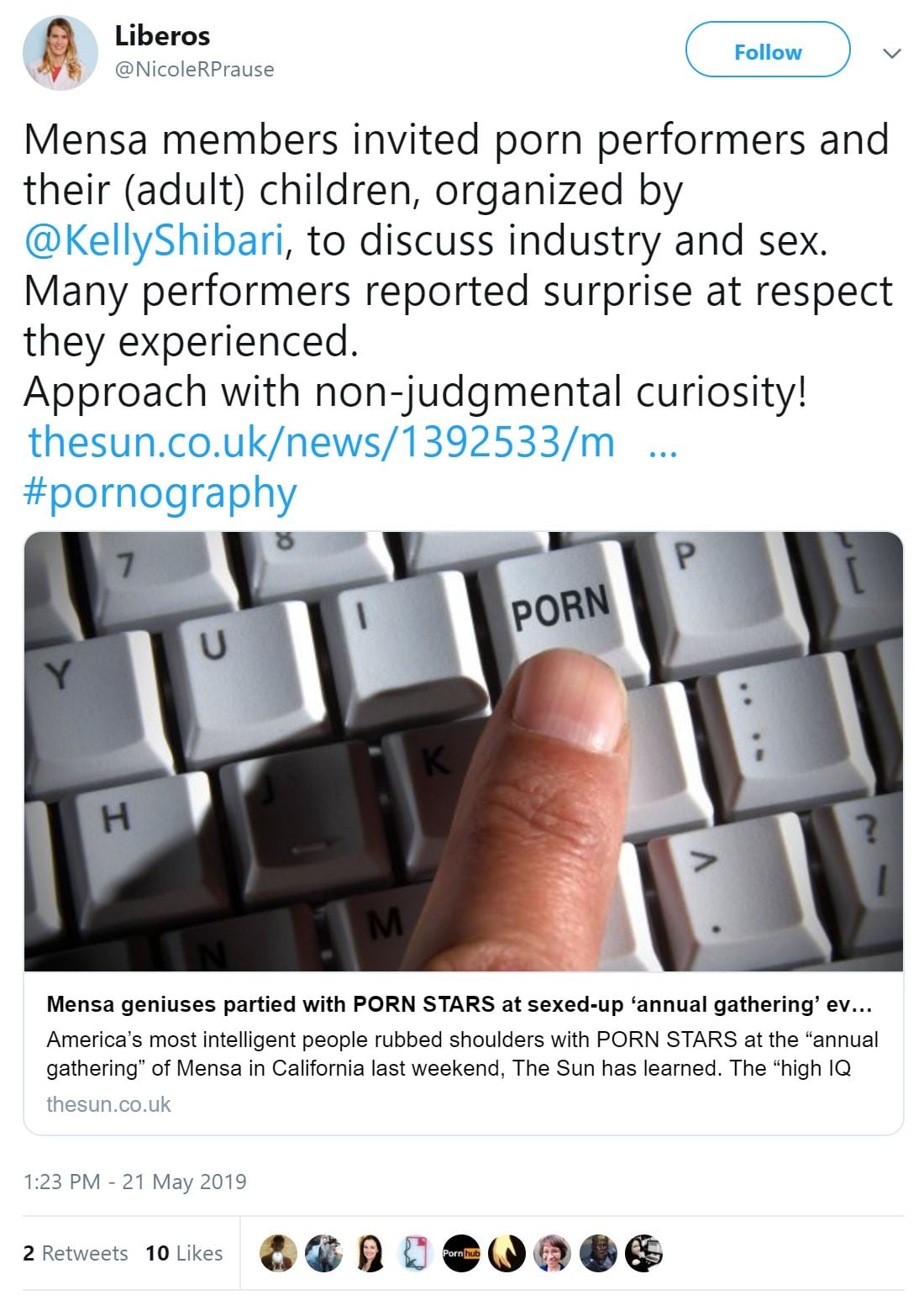
One of the first to retweet was PornHub.
———————
Prause twitter alias “RealYBOP” retweets pornography producer’s tweet, and tweets emotional support:
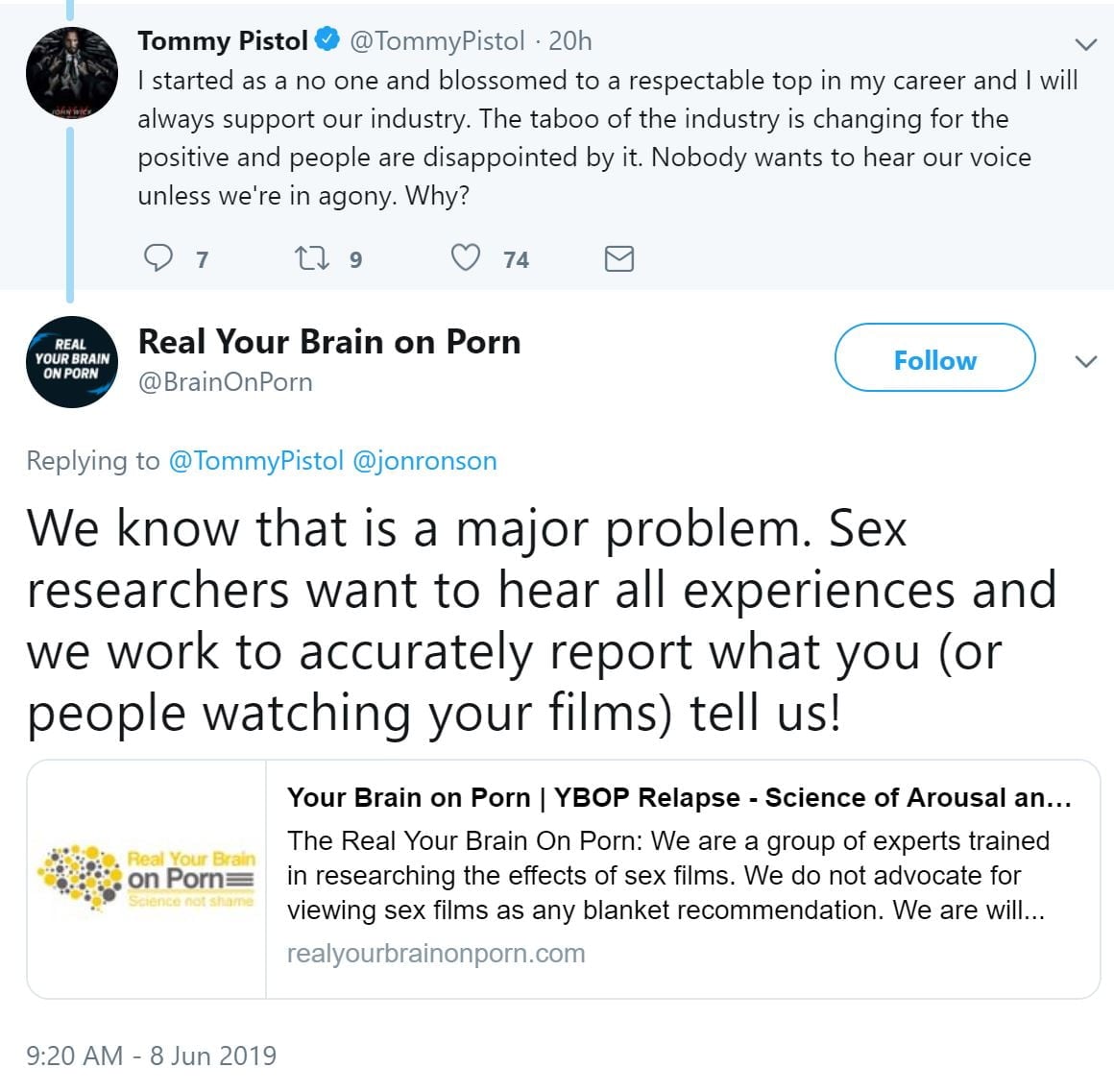
———————-
Porn performers ask Prause for assistance and she responds:
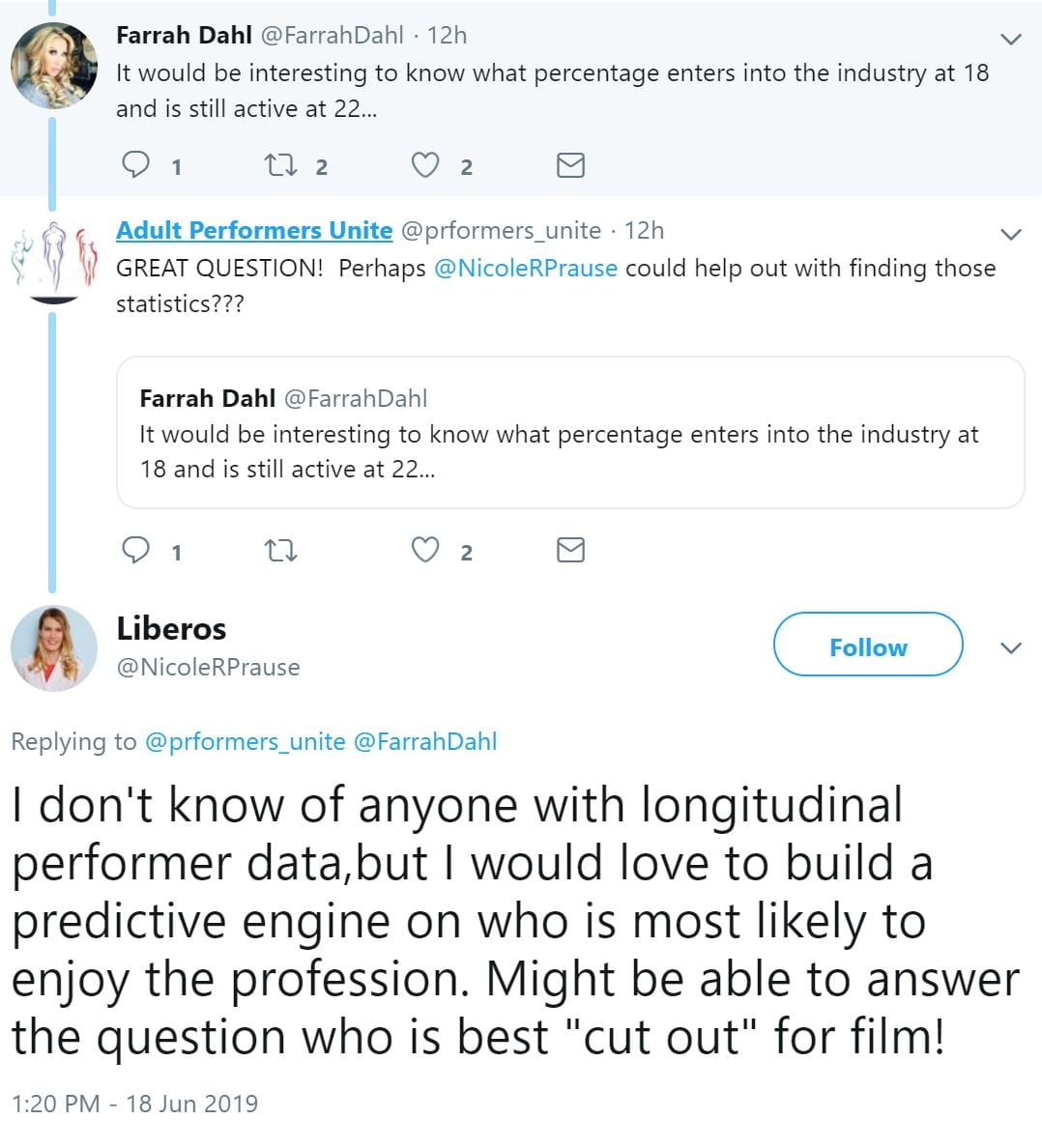
————————-
Tweet to one of the most prolific porn producers in LA – Mike Quasar.
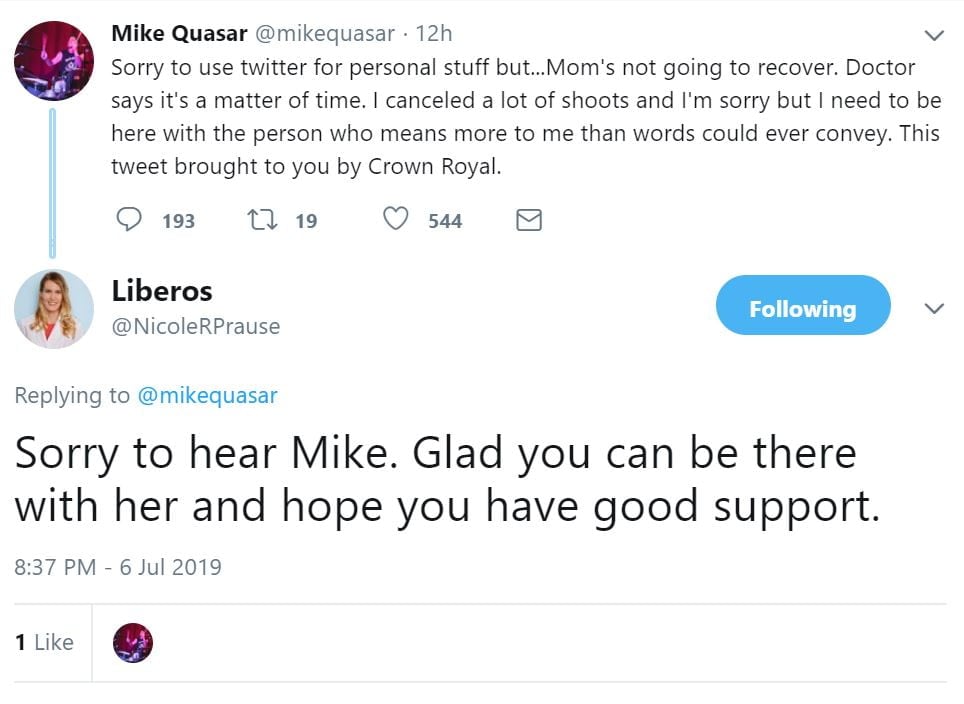
—————————
Back ground on Prause tweet: On May 8, 2019 Donald Hilton, MD filed a defamation per se lawsuit against Nicole Prause & Liberos LLC. On July 24, 2019 Donald Hilton amended his defamation complaint to highlight (1) a malicious Texas Board of Medical Examiners complaint, (2) false accusations that Dr. Hilton had falsified his credentials, and (3) affidavits from 9 other Prause victims of similar harassment (John Adler, MD, Gary Wilson, Alexander Rhodes, Staci Sprout, LICSW, Linda Hatch, PhD, Bradley Green, PhD, Stefanie Carnes, PhD, Geoff Goodman, PhD, Laila Haddad.)
It’s important to know that much of Prause’s “justification” for defaming Don Hilton arises from Hilton stating that Prause attended porn-industry awards (which Prause denies). Because Prause and Ley chronically cite Hilton’s religious faith as disqualifying him from commenting on science, Hilton (the author of multiple peer-reviewed papers) felt it was necessary to point out their biases (in hopes of refocusing the debate on the research evidence). While thousands of social media postings substantiate Prause’s pro-porn biases, Hilton chose the time-saving route in his presentations: tweets of Prause attending porn industry awards or indicating she had or would attend in the future (the screenshots are in the next section: Evidence that Nicole Prause attends porn industry awards (XRCO, AVN)).
In Prause’s false account from her Motion to Dismiss the Hilton Lawsuit she claimed that image of her attending 2016 X-Rated Critics Organization (XRCO) awards ceremony was really taken a year later “at the premier of the documentary film After Porn Ends 2”. Prause is lying, yet she seems to be resting her entire defense on this already falsified fairy tale. In one of her twitter rampages (where she threatened numerous accounts with lawsuits), Prause pinned a tweet announcing all the porn industry groups and individuals that were coming to her aid:
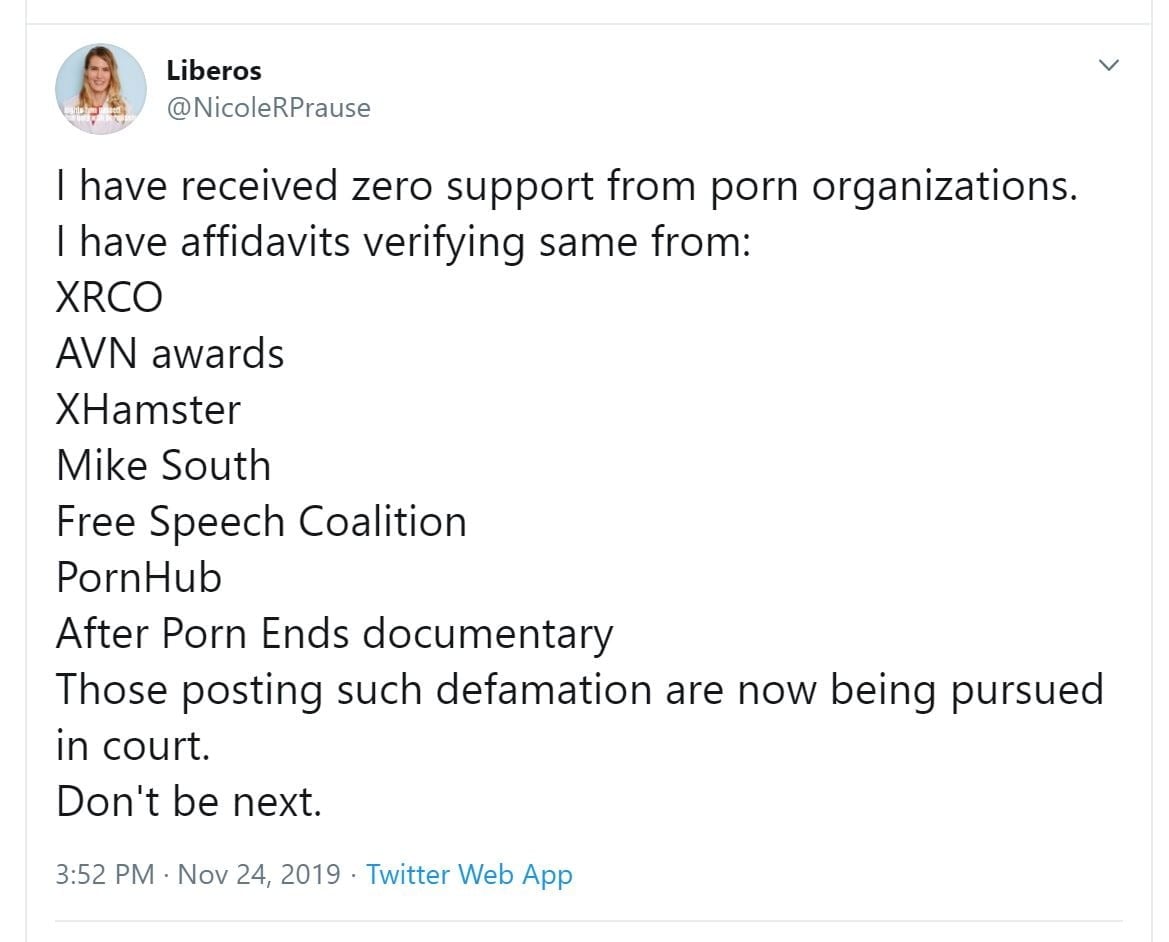
If any bit of evidence shows Prause intimate relationship with the porn industry, the above certainly does. She has all the big porn players at her beck and call.
——————-
1/1/20: Friendly conversation with well-known porn performer/producer Tim Woodman:
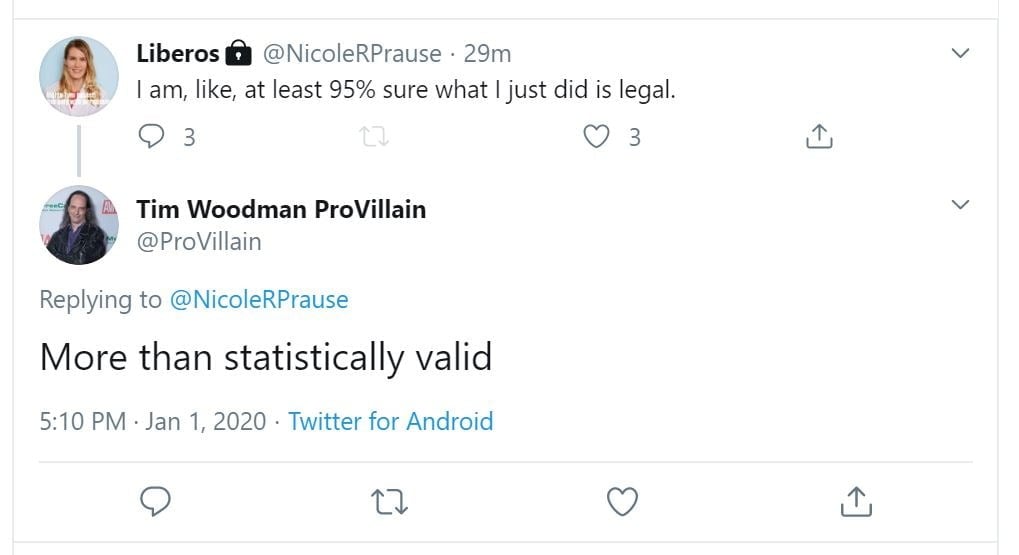
——————
1/26/20: Prause alias twitter account congratulating “Wicked Pictures” on its AVN awards:
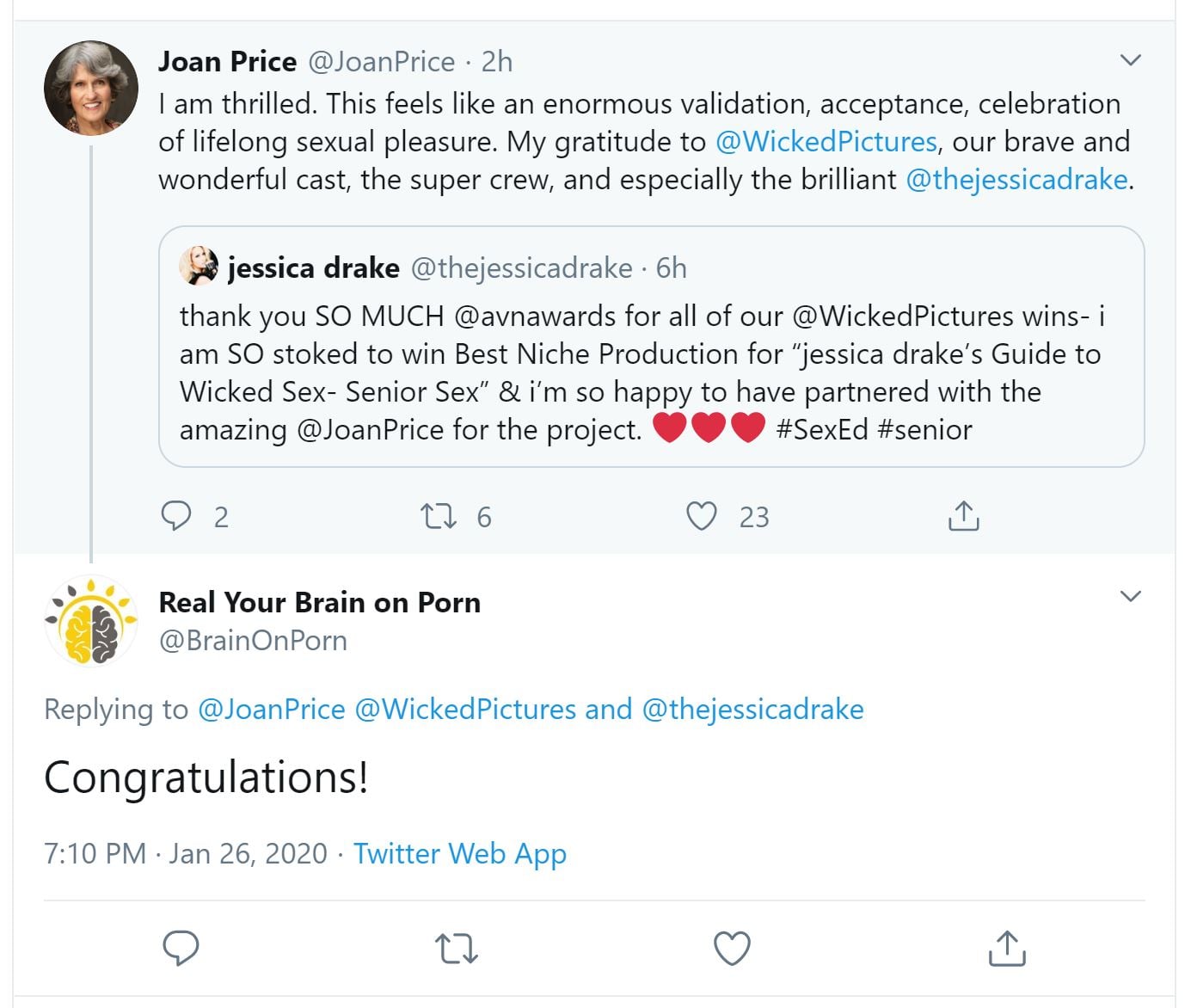
———————
Supporting “sex work” (prostitution, porn, etc.)
———————
Evidence that Nicole Prause attends porn industry awards/events (XRCO, AVN)
There is no doubt that Prause attended 2016 X-Rated Critics Organization (XRCO) awards ceremony. According to Wikipedia,
The XRCO Awards are given by the American X-Rated Critics Organization annually to people working in adult entertainment and it is the only adult industry awards show reserved exclusively for industry members.[1]

You can see photos and read more about the 2016 XRCO awards in this AVN article. From the article:
If there’s one thing the 32nd annual XRCO Awards Show proved, it’s that porn has not forgotten how to party. A major contingent of the industry’s biggest luminaries packed OHM nightclub at the Hollywood & Highland complex to sardine-like capacity for what was easily the organization’s most jubilant gala in years. Harking back to the free-wheeling porn megabashes of the pre-recession era, it was a genuine celebration for the ages and a rousing reminder that the commonwealth of adult is very much alive and vibrantly kicking.
On the XRCO site, the 2016 awards show is described as an “ADULT INDUSTRY ONLY event – no tickets – no fans – admission is based on recognition at the door or via RESERVATIONS”
Another pic of Prause with porn industry buddies:

Good times at the 2016 XRCO:

Prause at a reserved table with porn industry friends:
Watch this 20-minute video of the 2016 XRCO awards (pretty racy). Prause can be seen around the 6:10 mark sitting at a table with porn star buddy Melissa Hill:
UPDATE: Deletion of the above 4-year old XRCO awards video occurred not long after it was placed on this YBOP page. Nothing suspicious about that. We are wondering if Prause asked XRCO officials to remove the video? Did XRCO help her out? After all, Prause attending the 2016 XRCO is a hotly disputed item the Hilton defamation suit. It’s important to note that the XRCO awards video was originally found and tweeted by Diana Davison in response to Prause threatening Davison with a lawsuit (largely because Davison exposed Prause as lying about attending the 2016 XRCO Awards):
That she lied about attending the XRCO event and she's threatening to sue people who say they've seen a picture of her there. Also, falsely accusing people of stalking just for doing research and defending themselves.
— Diana Davison (@d2davison) November 25, 2019
———————-
From her tweets, it appears that Prause has also attended the Adult Video News Awards:
In June, 2015 Prause describes hearing Jeanne Silver’s (a porn star) story “at AVN” (we must assume the Adult Video News Awards, because a Google search for Adult Video News returns mostly the AVN awards; second was the AVN expo).
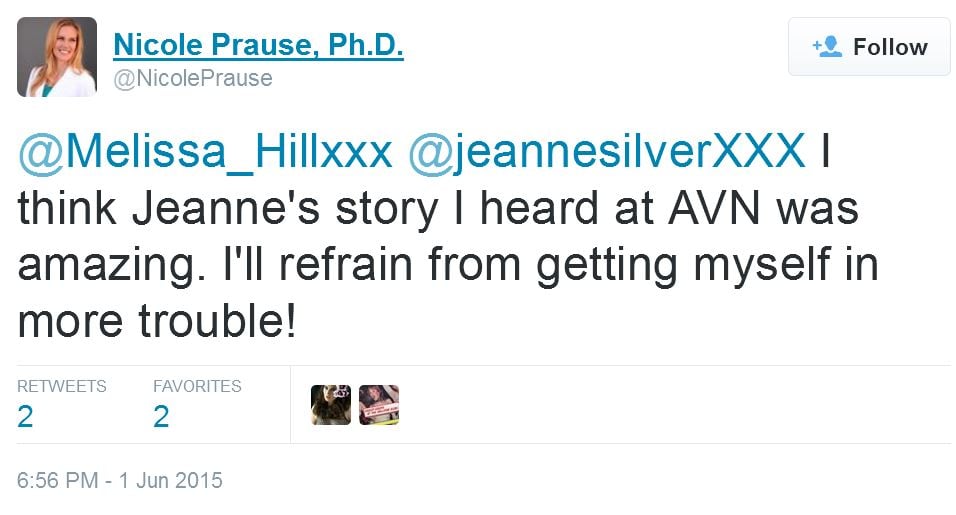
————————-
Trolling PornHarms, Prause offers free t-shirts to others willing to troll with her. The t-shirts are a tasteless parody of the FTND porn kills love t-shirts. The 3 winners are porn stars!
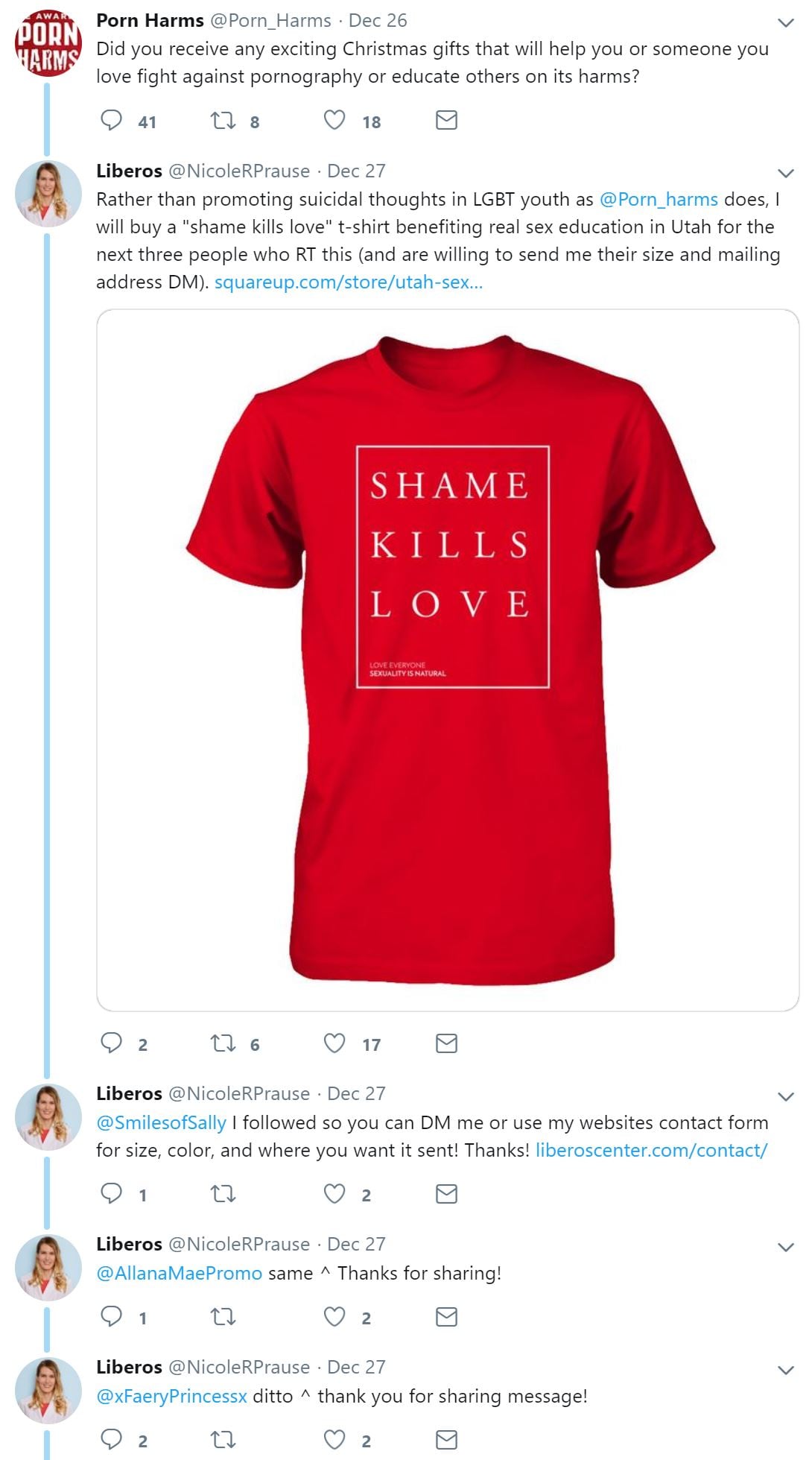
One of the porn stars (Avalon) is from Australia. She tells Prause that it’s too expensive to ship a t-shirt to her. Prause asks Avalon if she would like to pick up her t-shirt at “the AVN” (we must assume the Adult Video News Awards, because a Google search for Adult Video News returns mostly the AVN awards; second was the AVN expo). The only logical conclusion is that Prause will be attending AVN awards, the AVN EXPO, or both.
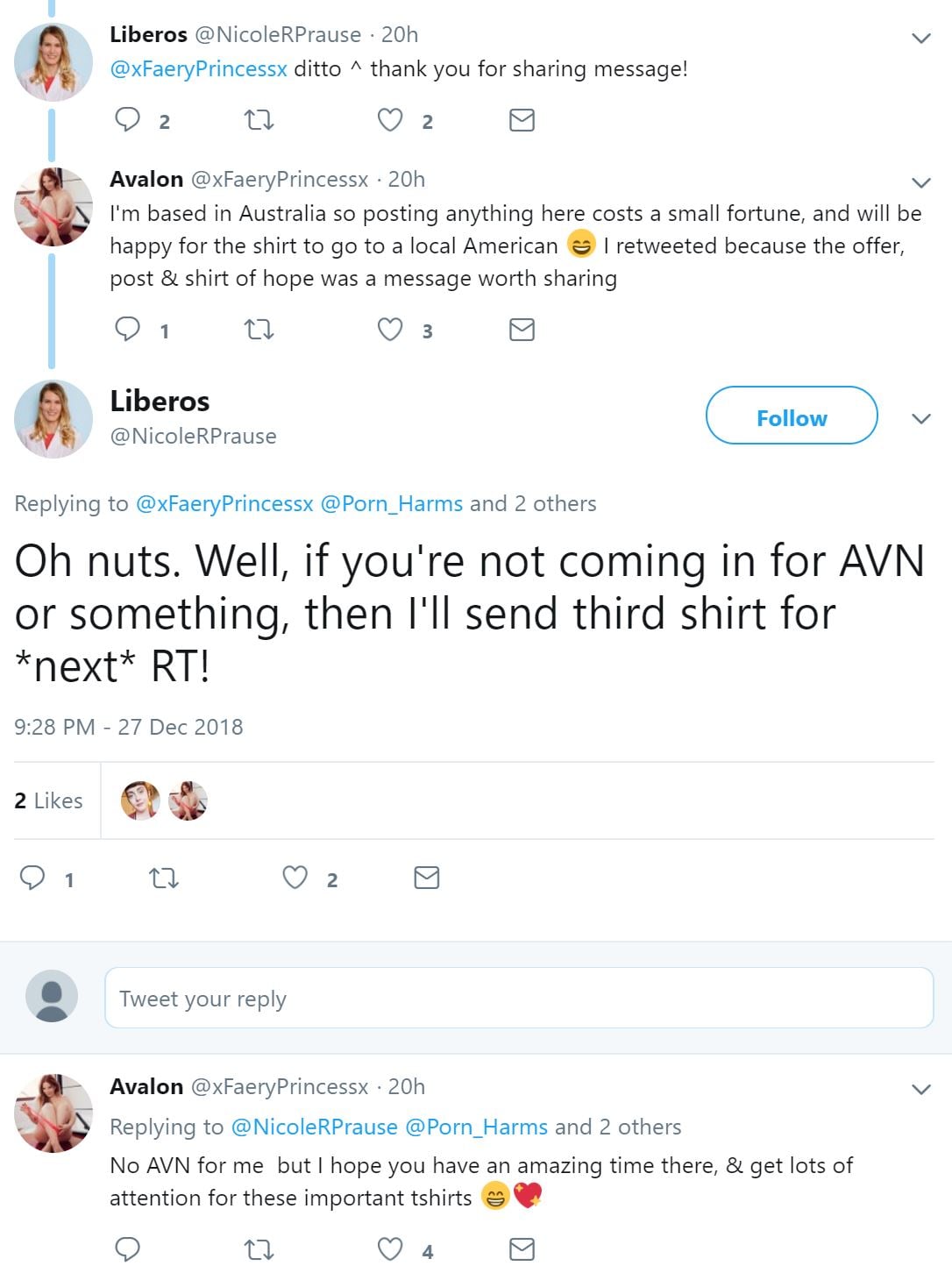
Avalon tells Prause to have an amazing time at the AVN.
—————————
And on and on it goes with Nicole Prause and the porn industry.
Is it any surprise that FTND, or anyone else, might wonder if Prause, a former academic with a long history of harassing authors, researchers, therapists, reporters and others who dare to report evidence of harms from internet porn use, who lives in LA, who has obtained study subjects through the FSC, who hangs out with big names in the industry, who attends porn industry award ceremonies, and who has publicly been offered (and accepted) support by the FSC, might be influenced by the porn industry?
Again, no one has claimed Prause receives direct funding from the FSC or the “porn industry”. In fact, it seems most unlikely that the FSC would make any such arrangements directly, let alone make them public, even if they did exist. Nor has anyone stated that Prause is “in the porn industry” or “has, herself appeared in pornography“, as she falsely asserted in her bogus cease and desist letters, and in her response to Don Hilton, MD’s defamation lawsuit against her. Sections documenting these false assertions:
- October, 2016 – Prause publishes her spurious October, 2015 “cease and desist” letter. Wilson responds by publishing his letter to Prause’s lawyer.
- Ongoing – Prause silencing people with fake “no contact” demands and spurious cease & desist letters
- May, 2019: Prause triggers defamation per se lawsuit with bogus sexual harassment claim against Donald Hilton, MD
- July, 2019: Donald Hilton amends defamation lawsuit to include affidavits from 9 other victims of Prause, Texas Board of Medical Examiners complaint, incorrectly accusing Dr. Hilton of falsifying his credentials.
——————————–
Update: In her thread supporting pornhub and attacking NoFap, RealYBOP (Prause alias account) tweeted an XBIZ article targeting Julie Bindel. RealYBOP falsely claims that Julie Bindel attended XRCO. This is a bald-faced lie as Bindel attended the XBIZ awards, which is open to the public. Funny that RealYBOP’s tweet exposes her lie as the screenshot says that Bindel attended the XBIZ awards.
Context: Julie Bindel is a prominent anti-porn, anti-prostitution, rad feminist. In her filings in the Don Hilton defamation suit against her, Prause perjures herself on numerous occasions, claiming she has never attended a porn awards show.
It’s important to know that much of Prause’s “justification” for defaming Don Hilton arises from Hilton stating that Prause attended porn-industry awards (which Prause denies). Because Prause and Ley chronically cite Hilton’s religious faith as disqualifying him from commenting on science, Hilton (the author of multiple peer-reviewed papers) felt it was necessary to point out their biases (in hopes of refocusing the debate on the research evidence). While thousands of social media postings substantiate Prause’s pro-porn biases, Hilton chose a time-saving route in his presentations: tweets of Prause attending porn industry awards or indicating she had or would attend in the future (the screenshots were obtained from this page: Evidence that Nicole Prause attends porn industry awards (XRCO, AVN)).
The purpose of RealYBOP’s tweet is to give the impression that anyone (incuding anti-porn feminists) can attend the XRCO awards. RealYBOP is lying as Bindel did attend XRCO, Prause did attend, and the “X-Rated Critics Organization annually to people working in adult entertainment and it is the only adult industry awards show reserved exclusively for industry members”.
Notice how RealYBOP, Ley, and JamesF often work as a defamation team:
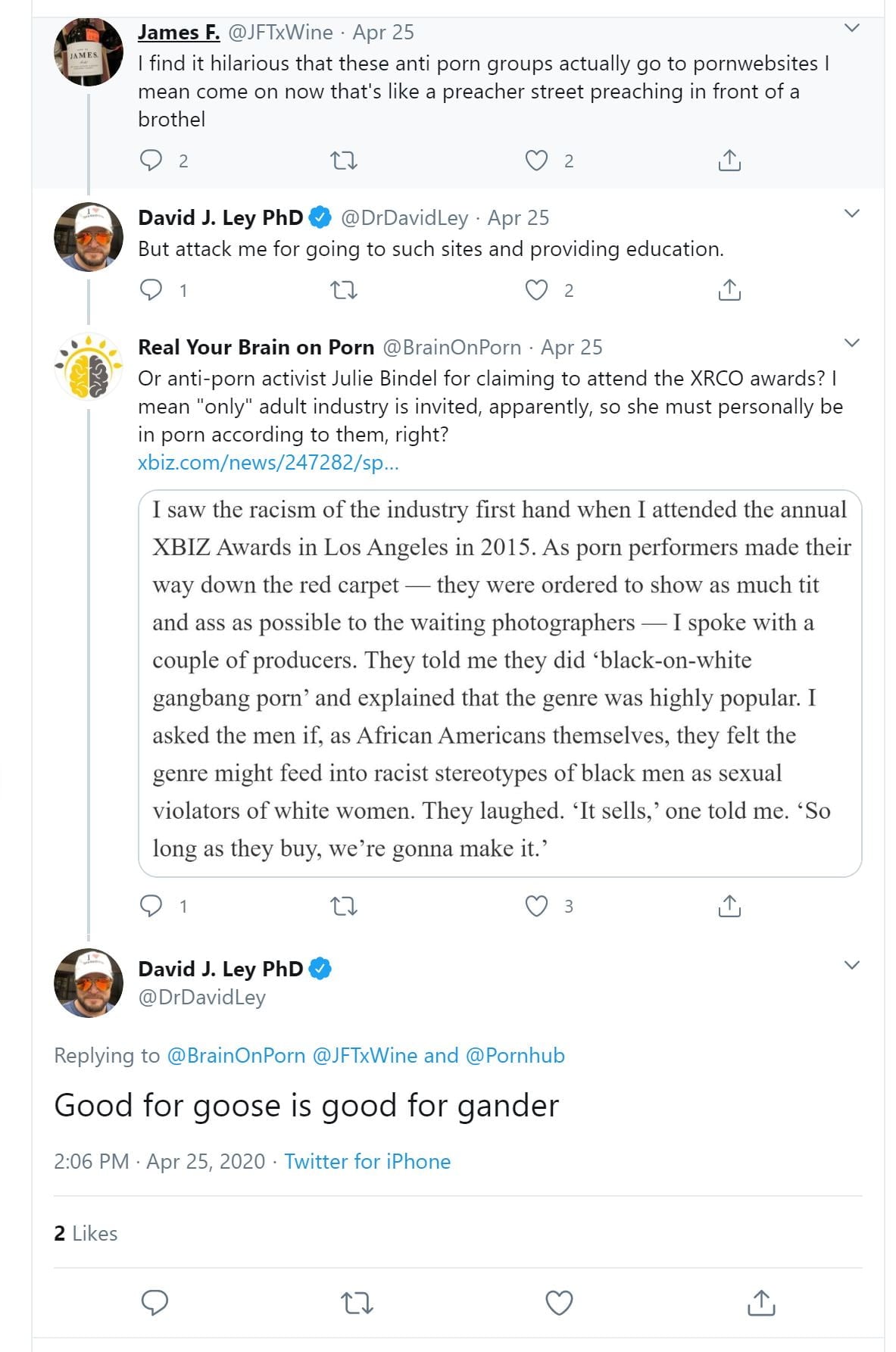
Lying comes easy for these guys.
Months later:
Now that Prause’s porn-industry shill Twitter account (@BrainOnPorn) was permanently banned for targeted harassment and abuse. she is forced to tweet the same lies with her personal account. Here she is, gain, this time falsely claiming she was accused of attending XBIZ – when it was really the XRCO.
—————————–
SECTION 2: Was Nicole Prause “PornHelps?” (PornHelps website, on Twitter, comments under articles) All accounts deleted once Prause was outed as “PornHelps.”
Nicole Prause created a username called “PornHelps,” which had its own Twitter account (@pornhelps) and a website promoting the porn industry as well as outlier studies reporting the “positive” effects of porn. “PornHelps” chronically badgered the same people and organizations that Prause also often attacked. In fact, Prause would team up with her apparent alias PornHelps to attack individuals on Twitter and elsewhere in tandem with her other identities. Some of the Prause/PornHelps coordinated attacks are documented in these Prause-page sections:
- March, 2015 (ongoing): Prause and her sock puppets (including “PornHelps”) go after Gabe Deem
- June, 2016: Prause and her sock puppet PornHelps claim that respected neuroscientists are members of “anti-porn groups” and “their science is bad”
- July, 2016: Prause & sock puppet “PornHelps” attack Alexander Rhodes, falsely claiming he faked porn-induced sexual problems
- July, 2016: Nicole Prause & “PornHelps” falsely accuse TIME editor Belinda Luscombe of lying and misquoting
The @pornhelps twitter account and PornHelps website were suddenly deleted when it became apparent to everyone that Prause was behind both. While many of us being attacked knew “PornHelps” was really Nicole Prause, the following @pornhelps tweet left no doubt:
Prause, a Kinsey grad, calls herself a neuroscientist, and appears to have started college about 15 years earlier than the above 2016 tweet. In response to several ad hominem attacks by “PornHelps,” which perfectly mirrored many of Prause’s usual comments, “PornHelps” was confronted in the comments section of Psychology Today with this and other evidence: https://www.psychologytoday.com/us/comment/887468#comment-887468
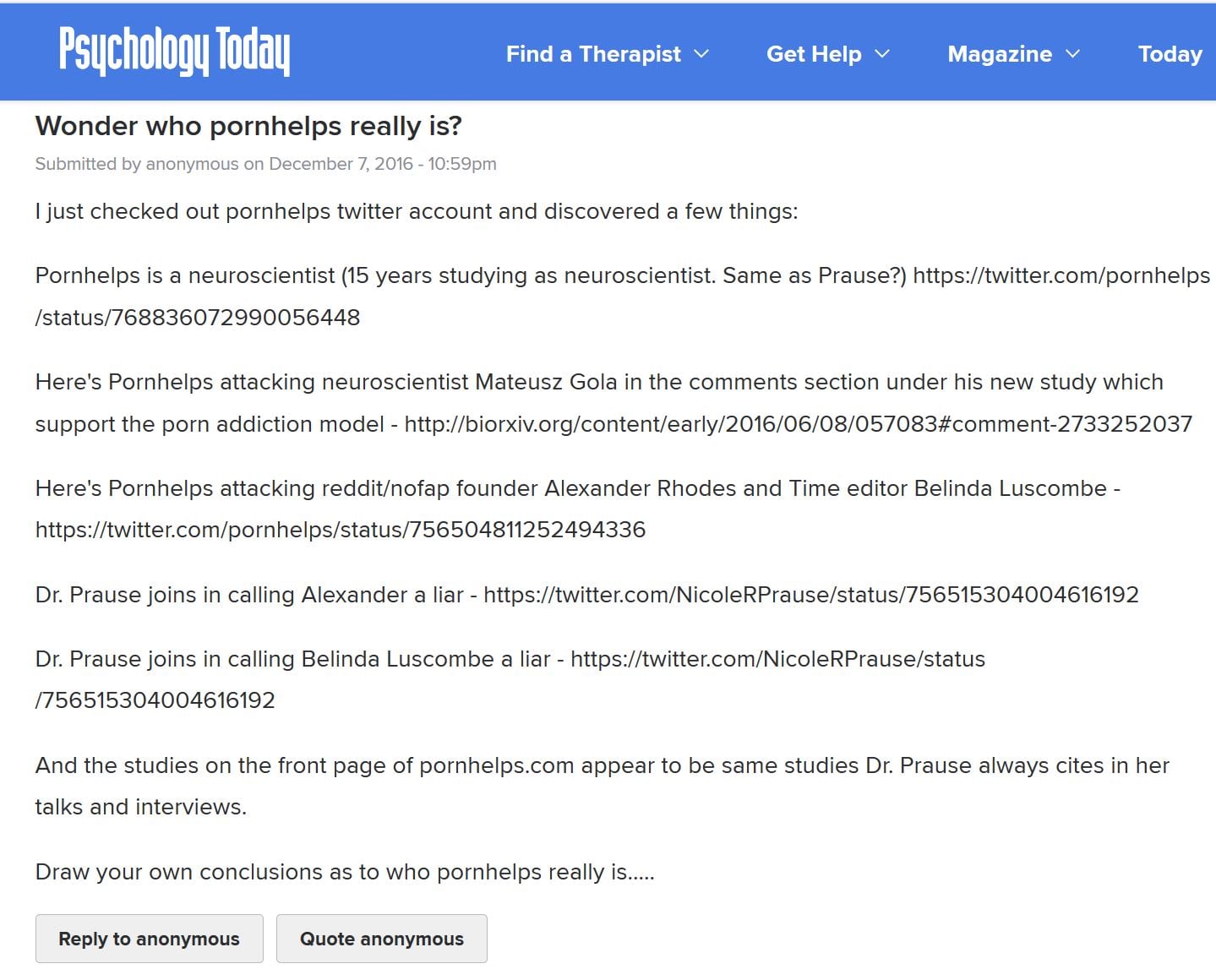
Within a few days of the above Psychology Today comment the PornHelps website and @pornhelps Twitter account vanished without a trace. All that remains of PornHelps are a smattering of comments on various sites and this abandoned disqus account, listing 87 comments. (80-page PDF of numerous aliases Prause used to defame and harass Gary Wilson).
Want more confirmation that PornHelps was really Prause? The following comments, tweets, and coincidences make it apparent. PornHelps disqus account posted 87 times:

———————————-
Here Prause and Russell J. Stambaugh simultaneously comment under an article about porn. Prause & Stambaugh are close allies and often comment together in pre-planned assaults in comment sections.
A more recent coordinated attack by Prause, Stambaugh, and 3 other members of Prause’s harassment brigade is documented in this section: May 30, 2018 – Prause falsely accuses FTND of science fraud, and implies that she has reported Gary Wilson to the FBI twice. (Addendum: Gary Wilson filed a freedom of information request with the FBI and the FBI confirmed that Prause was lying. No report has ever been filed on Wilson. See – November, 2018: FBI affirms Nicole Prause’s fraud surrounding defamatory claims)
———————————-
Much of this Prause/PornHelps coordinated attack on researchers is chronicled here: June, 2016: Prause and her sock puppet PornHelps claim that respected neuroscientists are members of “anti-porn groups” and “their science is bad.” But let us re-examine the evidence that Prause is “PornHelps.”
Nicole Prause, a Kinsey grad, in a tweet about this study posted for commentary (since published in Neuropsychopharmacology), falsely claimed that its 9 researchers (including top researchers in the addiction neuroscience field) were members of “anti-porn groups,” and that their new study was “bad science.” Prause’s tweet (pictured here) appeared on the same page as the study (Can pornography be addictive? An fMRI study of men seeking treatment for problematic pornography use), but was later deleted.
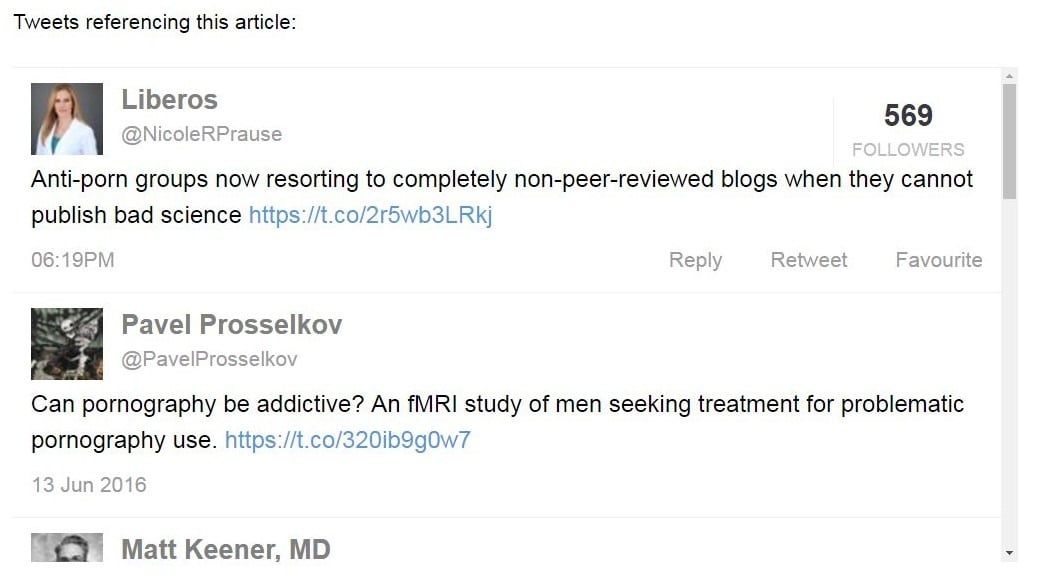
At the same time that Prause tweeted the above, “PornHelps” began posting in the comments section below the paper. See a few of PornHelps’ comments below. How does PornHelps know so much about research methodology and statistics? (Prause’s PhD was in stats):
————————–
————————
———————————
And here’s more confirmation that PornHelps is Prause. The PornHelps comments under an NPR interview of Prause are nearly identical to Prause’s usual spin about the claimed benefits of porn:
Nearly identical in this article quoting Prause – with her usual spin:
———————————-
Now a taste of Prause (as PornHelps) attacking Wilson on various websites: promoting porn and misrepresenting the current state of the research. (Note: PornHelps was very busy attacking others on PT and other websites, and of course, via Twitter).
Here’s Pornhelps going after Wilson, mirroring Prause’s language in many comments (“stalker,” “massage therapist,” “fake,” etc.)
Look familiar? Prause is the only commenter who calls Wilson a cyberstalker and a massage therapist (other than her sidekick David Ley):
———————————-
Here PornHelps is discussing Prause’s EEG study – Modulation of Late Positive Potentials by Sexual Images in Problem Users and Controls Inconsistent with “Porn Addiction” (Prause et al., 2015)
Pornhelps knows an awful lot for a porn industry hack!
———————————-
This comment about Wilson can be found under Prause’s 2016 op-ed – Op-ed: Anti-porn school program misrepresents science.
Again, Prause is the only commenter who calls Wilson a cyberstalker and massage therapist (other chum David Ley). The truth of Prause’s op-ed – Op-ed: Who exactly is misrepresenting the science on pornography? (2016)
————————–
The following are some of the over 20 comments under the Prause op-ed by PornHelps. Prause’s #2 obsession after Gary Wilson is FTND, which Prause posted numerous times. The comments perfectly mirror Prause tweets misrepresenting the research and attacking FTND. PornHelps “discus” account has posted 87 comments
————————-
———————
———————
———————–
———————
————————
———————-
———————
——————-
——————
——————
PornHelps mentions the same Australian study that Prause tweets all the time:
——————
——————
——————
——————
——————-
Here PornHelps mirrors dozens of Prause tweets or comments – both naming the exact same findings from outlier studies.
————————
———————-
Another example of Prause/PornHelps attacking Wilson (while teaming up with David Ley). Many more examples can be found on this page.
———————-
More evidence. We start with a tweet by the author of the TIME cover story, “Porn and the Threat to Virility,” Belinda Luscombe:
This was followed by @pornhelps calling both Alexander and Belinda liars. @NicoleRPrause eventually chimed in to call TIME journalist Luscombe a liar (more in the next section). The back and forth contains too many tweets to post here, but most can be found in these threads: Thread 1, Thread 2, Thread 3. Below is a sampling of @pornhelps’s unstable-sounding tweets falsely claiming that Alexander faked his story of porn-induced sexual problems (all later deleted):
- @luscombeland @nytimes “Brave”? Faking a problem to promote his business? You failed to verify any part of his story
- @GoodGuypervert @luscombeland exaggerating makes them money, esp in his case. These guys are mostly unemployed, no college…got $$$ somehow
- @AlexanderRhodes & @luscombeland are creating fake panic to sell their wares. Disgusting.
- @AlexanderRhodes @luscombeland @GoodGuypervert uh-oh, he’s gone full ad-hominem BC he got caught faking to make money off young scared men.
- @AlexanderRhodes @luscombeland @GoodGuypervert then I await your proof that any of your claims actually happened to you, fake profiteer.
Alexander answered several times, with no resolution. Eventually Belinda tweeted the following:
Pornhelps responds, seeing if a lie will stick: “I heard you got blackballed for false reporting.” Eventually Prause’s “NicoleRPrause” Twitter account chimes in calling Luscombe a liar (below). Hmm…how did @NicoleRPrause know about this Twitter thread? Another bit of evidence suggesting Nicole Prause masqueraded as @pornhelps.
In this same Twitter thread Pornhelps (who is Prause) tweeted about a just published David Ley interview of Nicole Prause.
In the Ley interview Prause claims to have unpublished data falsifying any connection between “porn addiction” and penile injures (Prause also said she will never publish the data). It’s important to know that both Prause and Pornhelps had been saying that Alexander lied about his masturbation-induced penile injury and porn-induced sexual problems.
Is it any coincidence that 3 days after multiple @pornhelps tweets called Alexander a liar, Ley and Prause publish a Psychology Today blog post directed at one of Alexander’s complaints (that he injured his penis from excessive masturbation)? Interestingly, their own data apparently showed that a fifth of those surveyed had experienced similar injuries. But again, Prause refuses to publish the data, while claiming her data somehow (inexplicably) prove that Alexander must be a liar. In any case Prause’s blog claims remain unsupported as she did not assess “porn addiction” or compulsive porn use in her subjects (read the comments section of Ley’s post).
———————-
Nicole Prause & “PornHelps” falsely accuse TIME editor Belinda Luscombe of lying and misquoting. Luscombe has been with TIME Magazine since 1995, becoming a senior editor in 1999. (See her Wikipedia page and her TIME page.) Luscombe spent a year investigating porn-induced sexual problems in young men, which resulted in the March, 31, 2016 TIME cover story “Porn and the Threat to Virility.” Both Prause and Ley have attacked the TIME article, even though both were featured in it and quoted (minimally).
Unfortunately for the public, usually Prause and Ley are the only “experts” featured in most mainstream porn-addiction articles, while the true addiction neuroscientists and their work are not even acknowledged to exist. Not this time. Two world renowned neuroscientists, who have published fMRI studies on porn users, were interviewed for the TIME article. So was a urologist, as well as several young men who have recovered from porn-induced erectile dysfunction. Put simply, the TIME article was more carefully researched than any other article on this subject, and its content reflected both reality and the (then) current state of the science. Since then, even more support for the possible link between internet porn use and sexual dysfunctions has come out in the peer-reviewed literature.
In response to Belinda’s earlier tweet (pictured above) about working the story for a year, we have @pornhelps, tweeting the following:
Pornhelps is psychic: she knows “for fact” how long Belinda worked on the story. Ten minutes later Prause tweets claiming Belinda misquoted her and “lied about her sources”:
As always, Prause provides no examples and no documentation. Not being tagged, how did Prause know about Belinda’s tweet or @pornhelps’s reply? Maybe Prause is psychic too?
Reality Check: It is Prause and @Pornhelps who are lying. As many can verify, Luscombe contacted Gary Wilson, Gabe Deem, Alexander Rhodes, Noah Church, David Ley, and others, during the year before the TIME cover story was published. In addition, Luscombe and several TIME Magazine fact-checkers contacted each individual several times to corroborate each interviewee’s claims.
We know that Wilson’s former employers were contacted, as were the girlfriends of the men with porn-induced sexual problems. Interviewees were also asked to deny or confirm claims given to TIME by David Ley and Nicole Prause. This was done in writing, often 2-3 times for each claim.
For example, Nicole Prause falsely claimed to TIME magazine that Gabe Deem masqueraded as a medical doctor to write this peer-reviewed critique of Prause & Pfaus 2015 (in fact written by a medical doctor/researcher). Even more astonishingly, Prause told TIME that UCLA had traced the “Richard A. Isenberg MD” critique (Letter to the Editor) to the young man’s computer. This outlandish attempt to defame Deem is all documented above.
In an attempt to end the conversation Belinda tweets the following on July 25:
“PornHelps” tweets two more unstable responses (Update – @pornhelps later deleted their twitter account as it became apparent that Prause often tweeted with this account):
No one responds to feed the troll.
———————-
SECTION 3: Examples of Nicole Prause supporting porn industry interests via misrepresentation of the research & attacking researchers/academic journals
Introduction
While this section is rather large, it’s just the tip of the Prause iceberg when it comes support of the porn industry agenda. Much of Prause’s pro-porn efforts are directed at defaming and harassing those she disagrees with. These extensive pages chronicle some of Prause’s efforts in that arena:
- Nicole Prause’s Unethical Harassment and Defamation of Gary Wilson & Others (Page 1)
- Nicole Prause’s Unethical Harassment and Defamation of Gary Wilson & Others (Page 2)
- Nicole Prause’s Unethical Harassment and Defamation of Gary Wilson & Others (Page 3)
- Nicole Prause’s Unethical Harassment and Defamation of Gary Wilson & Others (Page 4)
This section concerns itself with Prause’s efforts in another arena – misrepresenting the research, and attacking researchers & academic journals.
As chronicled here and elsewhere Dr. Prause has a long history of misrepresenting her own and others research. In addition, she chronically mischaracterizes the current state of porn research, while repeatedly tweeting a few cherry-picked (and often flawed) outlier studies. If you want to judge for yourself, this page contains links to hundreds of studies and several reviews of the literature: current state of the research on Internet porn addiction and porn’s effects. As you will see below, Prause often states that the effects of viewing pornography (“sex films”) are overwhelmingly positive. As you will see, Prause’s 4 most-often repeated, and blatantly false, talking points are:
- “Porn users are more egalitarian”
- “Porn has overwhelmingly positive effects on relationships”
- “Porn addiction has been falsified”
- “Porn viewing is associated with increased sexual response”
Nothing could be further from the truth than these assertions, as nearly every study reports the exact opposite. Moreover, Prause’s only support for these claims are 4 outlier studies (two by her, two by Taylor Kohut) that are not what they appear to be. Let’s examine each Prause assertion, the studies she cites, and what the research actually says.
1) “Porn users are more egalitarian”
Prause cites: Kohut et al., 2017. See Critique of “Is Pornography Really about Making Hate to Women? Pornography Users Hold More Gender Egalitarian Attitudes Than Nonusers in a Representative American Sample” (2016), Taylor Kohut, Jodie L. Baer, Brendan Watts
How did Taylor Kohut manage to achieve his anomalous results? His study framed egalitarianism as: (1) Support for abortion, (2) Feminist identification, (3) Women holding positions of power, (4) Belief that family life suffers when the woman has a full-time job, and oddly enough (5) Holding more negative attitudes toward the traditional family. Secular populations, which tend to be more liberal, have far higher rates of porn use than religious populations. By choosing these criteria and ignoring endless other variables, lead author Taylor Kohut knew he would end up with porn users scoring higher on his study’s carefully chosen criteria of what constitutes “egalitarianism.” Then he chose a title that spun it all.
Reality: nearly every study published links porn use to sexist or “un-egalitarian” views of women. Check out individual studies – over 25 studies link porn use to “un-egalitarian attitudes” toward women and sexist views – or the summary from this 2016 meta-analysis: Media and Sexualization: State of Empirical Research, 1995–2015. Excerpt:
The goal of this review was to synthesize empirical investigations testing effects of media sexualization. The focus was on research published in peer-reviewed, English-language journals between 1995 and 2015. A total of 109 publications that contained 135 studies were reviewed. The findings provided consistent evidence that both laboratory exposure and regular, everyday exposure to this content are directly associated with a range of consequences, including higher levels of body dissatisfaction, greater self-objectification, greater support of sexist beliefs and of adversarial sexual beliefs, and greater tolerance of sexual violence toward women. Moreover, experimental exposure to this content leads both women and men to have a diminished view of women’s competence, morality, and humanity.
2) “Porn has overwhelmingly positive effects on relationships”
Prause cites: Kohut et al., 2016. See Critique of “Perceived Effects of Pornography on the Couple Relationship: Initial Findings of Open-Ended, Participant-Informed, Bottom-Up Research” (2017), Taylor Kohut, William A. Fisher, Lorne Campbell.
The three main problems with this study are:
1- Kohut’s study was qualitative, not quantitative: it did not correlate porn use with any variable assessing sexual or relationship satisfaction.
2 – It did not contain a representative sample. Whereas most studies show that a tiny minority of females in long-term relationships use porn, in this study 95% of the women used porn on their own. And 83% of the women had used porn since the beginning of the relationship (in some cases for years). Those rates are higher than in college-aged men in studies around that time! In other words, the researchers appear to have skewed their sample to produce the results they were seeking. The reality? Cross-sectional data from the largest nationally representative US survey (General Social Survey) reported that only 2.6% of married women had visited a “pornographic website” in the last month. Data from 2004 (for more see Pornography and Marriage, 2014). While these rates may seem low, keep in mind that (1) it’s only married women, (2) represents all age groups, (3) it’s “once a month or more”: most studies ask “ever visited” or “visited in the last year.”
3- The study used “open ended” questions where the subject could ramble on and on about porn. Then the researchers read the ramblings and decided, after the fact, which answers were “important,” and how to present (spin?) them in their paper. In other words, the study did not correlate porn use with any variable assessing sexual or relationship satisfaction. Then the researchers had the gall to suggest that all the other studies on porn and relationships, which employed more established, scientific methodology and straightforward questions about porn’s effects were flawed. Is this really science? The lead author’s website and his attempt at fundraising raise a few questions.
Reality: In reality, over 70 studies have linked porn use to poorer sexual and relationship satisfaction (in the list of studies 1 & 2 are meta-analyses, study #3 had porn users attempt to quit using porn for 3 weeks, and studies 4 through 8 are longitudinal). While a few studies have correlated greater porn use in females to slightly greater sexual satisfaction, the vast majority of studies have not (see this list: Porn studies involving female subjects: Negative effects on arousal, sexual satisfaction, and relationships). As far as we know all studies involving males have reported porn use linked to poorer sexual or relationship satisfaction.
3) “Porn addiction has been falsified”
Prause cites: Her lone, flawed anomalous EEG study: Prause et al., 2015.
This study compared the 2013 subjects from Steele et al., 2013 to an actual control group (yet it suffered from the same methodological flaws named above). The results: Compared to controls “individuals experiencing problems regulating their porn viewing” had lower brain responses to one-second exposure to photos of vanilla porn. Prause claims these results “debunk porn addiction.” What legitimate scientist would claim that their lone anomalous study has debunked a well established field of study?
In reality, the findings of Prause et al. 2015 align perfectly with Kühn & Gallinat (2014), which found that more porn use correlated with less brain activation in response to pictures of vanilla porn. Prause et al. findings also align with Banca et al. 2015. Lower EEG readings mean that subjects are paying less attention to the pictures. Put simply, frequent porn users were desensitized to static images of vanilla porn. They were bored (habituated or desensitized). See this extensive YBOP critique. Nine peer-reviewed papers agree that this study actually found desensitization/habituation in frequent porn users (consistent with addiction): Peer-reviewed critiques of Prause et al., 2015
Because frequent porn users had lower EEG readings than controls, lead author Nicole Prause claims her anomalous study falsifies the porn addiction model. Prause proclaimed that her EEG readings assessed “cue-reactivity,” rather than habituation. Even if Prause were correct, she conveniently ignores the gaping hole in her “falsification” assertion: Even if Prause et al. 2015 had found less cue-reactivity in frequent porn users, 25 other neurological studies have reported cue-reactivity or cravings (sensitization) in compulsive porn users: 1, 2, 3, 4, 5, 6, 7, 8, 9, 10, 11, 12, 13, 14, 15, 16, 17, 18, 19, 20, 21, 22, 23, 24. Science doesn’t go with the lone anomalous study hampered by serious methodological flaws; science goes with the preponderance of evidence
Aside from the many unsupported claims in the press, it’s disturbing that Prause’s 2015 EGG study passed peer-review, as it suffered from serious methodological flaws: 1) subjects were heterogeneous (males, females, non-heterosexuals); 2) subjects were not screened for mental disorders or addictions; 3) questionnaires were not validated for porn use or porn addiction. A valid addiction “brain study” must:
- have homogenous subjects and controls,
- screen out other mental disorders and other addictions, and
- use validated questionnaires and interviews to assure the subjects are actually porn addicts.
Prause’s two EEG studies on porn users did none of these, yet she drew vast conclusions and published them widely.
Reality:
- This page lists every neuroscience-based study published on porn users or sex addicts: 54 neuroscience-based studies (MRI, fMRI, EEG, neuropsychological, hormonal). They provide strong support for the addiction model as their findings mirror the neurological findings reported in substance addiction studies.
- The real experts’ opinions on porn/sex addiction? This list contains 29 recent literature reviews & commentaries by some of the top neuroscientists in the world. All support the addiction model.
- Signs of addiction and escalation to more extreme material? Over 55 studies reporting findings consistent with escalation of porn use (tolerance), habituation to porn, and even withdrawal symptoms (all signs and symptoms associated with addiction).
- An official diagnosis? The world’s most widely used medical diagnostic manual, The International Classification of Diseases (ICD-11), contains a new diagnosis suitable for porn addiction: “Compulsive Sexual Behavior Disorder.”
Note: In this 2018 presentation Gary Wilson exposes the truth behind 5 questionable and misleading studies, including Prause et al., 2015; Kohut et al., 2016; and Kohut et al., 2017: Porn Research: Fact or Fiction?
4) “Porn viewing is associated with increased sexual response”
Prause cites: Prause & Pfaus 2015. It wasn’t a study on men with ED. It wasn’t a study at all. Instead, Prause claimed to have gathered data from four of her earlier studies, none of which addressed erectile dysfunction. It’s disturbing that this paper by Nicole Prause and Jim Pfaus passed peer-review as the data in their paper did not match the data in the underlying four studies on which the paper claimed to be based. The discrepancies are not minor gaps, but gaping holes that cannot be plugged. In addition, the paper made several claims that were false or not supported by their data. Prause & Pfaus 2015 as these 2 critiques expose, it cannot support a single claim it made, including Prause’s claim that they measured sexual response:
- In the same journal as the paper: Letter to the editor by Richard A. Isenberg MD (2015)
- Very extensive lay critique: Nothing Adds Up in Dubious Study: Youthful Subjects’ ED Left Unexplained (2015)
We begin with false claims made by both Nicole Prause and Jim Pfaus. Many journalists’ articles about this study claimed that porn use led to better erections, yet that’s not what the paper found. In recorded interviews, both Nicole Prause and Jim Pfaus falsely claimed that they had measured erections in the lab, and that the men who used porn had better erections. In the Jim Pfaus TV interview Pfaus states:
We looked at the correlation of their ability to get an erection in the lab.
We found a liner correlation with the amount of porn they viewed at home, and the latencies which for example they get an erection is faster.
In this radio interview Nicole Prause claimed that erections were measured in the lab. The exact quote from the show:
The more people watch erotica at home they have stronger erectile responses in the lab, not reduced.
Yet this paper did not assess erection quality in the lab or “speed of erections.” The paper only claimed to have asked guys to rate their “arousal” after briefly viewing porn (and it’s not clear from the underlying papers that this simple self-report was even asked of all subjects). In any case, an excerpt from the paper itself admitted that:
No physiological genital response data were included to support men’s self-reported experience”
In other words, no actual erections were tested or measured in the lab, which means that no such data or conclusions were peer-reviewed. “Sexual response” was never assessed!
The paper, Prause & Pfaus 2015, claimed to ask subjects to rate their arousal when watching porn – but even this could not have been accurately assessed. Dr. Isenberg’s Letter to the Editor (linked to above), which raised multiple substantive concerns highlighting the flaws in Prause & Pfaus , wondered how it could be possible for Prause & Pfaus to have compared different subjects’ arousal levels when three different types of sexual stimuli were used in the 4 underlying studies. Two studies used a 3-minute film, one study used a 20-second film, and one study used still images. It’s well established that films are far more arousing than photos, so no legitimate research team would group these subjects together to make claims about their responses. What’s shocking is that in their paper authors Prause and Pfaus unaccountably claim that all 4 studies used sexual films:
“The VSS presented in the studies were all films.”
This is false, as clearly revealed in Nicole Prause’s own underlying studies. This is another reason why Prause and Pfaus cannot claim that their paper assessed “arousal.” You must use the same stimulus for each subject to compare all subjects. Dr. Isenberg also asked how Prause & Pfaus 2015 could compare different subjects’ arousal levels when only 1 of the 4 underlying studies used a 1 to 9 scale. One used a 0 to 7 scale, one used a 1 to 7 scale, and one study did not report sexual arousal ratings. Once again Prause and Pfaus inexplicably claim that:
“Men were asked to indicate their level of “sexual arousal” ranging from 1 “not at all” to 9 “extremely.”
This statement, too, is false, as the underlying papers show. This is another reason why Prause and Pfaus cannot claim that their paper assessed “arousal” ratings in men. A study must use the same rating scale for each subject to compare the subjects’ results. In summary, all the Prause-generated headlines and claims about porn use improving erections or arousal, or anything else, are unsupported by her research.
Finally, Jim Pfaus is on the editorial board of The Journal of Sexual Medicine, which is the parent journal for “Sexual Medicine Open Access” – the publisher of Prause & Pfaus, 2015. Jim Pfaus spends considerable effort attacking the concept of porn-induced sexual dysfunctions. Co-author Nicole Prause is obsessed with debunking PIED having waged a 3-year war against this academic paper, while simultaneously harassing and libeling young men who have recovered from porn-induced sexual dysfunctions. Finally, it’s important to note that author Nicole Prause has close relationships with the porn industry and is obsessed with debunking PIED, having waged a 3-year war against this academic paper, while simultaneously harassing & libeling young men who have recovered from porn-induced sexual dysfunctions. See documentation: Gabe Deem #1, Gabe Deem #2, Alexander Rhodes #1, Alexander Rhodes #2, Alexander Rhodes #3, Noah Church, Alexander Rhodes #4, Alexander Rhodes #5, Alexander Rhodes #6, Alexander Rhodes #7, Alexander Rhodes #8, Alexander Rhodes #9, Alexander Rhodes #10, Alex Rhodes #11, Gabe Deem & Alex Rhodes together #12, Alexander Rhodes #13, Alexander Rhodes #14, Gabe Deem #4, Alexander Rhodes #15.
Reality:
- This list contains over 40 studies linking porn use/porn addiction to sexual problems and lower arousal to sexual stimuli. The first 7 studies in the list demonstrate causation, as participants eliminated porn use and healed chronic sexual dysfunctions.
- In addition to the studies below, this page contains articles and videos involving over 160 experts (urology professors, urologists, psychiatrists, psychologists, sexologists, MDs) who acknowledge and have successfully treated porn-induced ED and porn-induced loss of sexual desire.
- Over 80 studies link porn use to lower sexual and relationship satisfaction. ALL studies involving males have reported more porn use linked to poorer sexual or relationship satisfaction.
- Over 60 studies reporting findings consistent with escalation of porn use (tolerance), habituation to porn: all directly, or indirectly, connecting more porn with decreased sexual response.
- Higher levels of porn use are not related to higher sexual desire. Quite the opposite: At least 25 studies falsify the claim that sex & porn addicts “just have high sexual desire.”
Historical ED rates: Erectile dysfunction was first assessed in 1940s when the Kinsey report concluded that the prevalence of ED was less than 1% in men younger than 30 years, less than 3% in those 30–45. While ED studies on young men are relatively sparse, this 2002 meta-analysis of 6 high-quality ED studies reported that 5 of the 6 reported ED rates for men under 40 of approximately 2%.
Nine studies since 2010: Ten studies published since 2010 reveal a tremendous rise in erectile dysfunctions. This is documented in this lay article and in this peer-reviewed paper involving 7 US Navy doctors – Is Internet Pornography Causing Sexual Dysfunctions? A Review with Clinical Reports (2016). In the 9 studies, erectile dysfunction rates for men under 40 ranged from 14% to 37%, while rates for low libido ranged from 16% to 37%. Other than the advent of streaming porn (2006) no variable related to youthful ED has appreciably changed in the last 10-20 years (smoking rates are down, drug use is steady, obesity rates in males 20-40 up only 4% since 1999 – see this study).
Blatant misrepresentation is a long-standing pattern as Prause mislead everyone about the 2013 EEG study that thrust her into the public’s consciousness: Steele et al., 2013.
On March 6th, 2013 David Ley and spokesperson Nicole Prause teamed up to write a Psychology Today blog post about Steele et al., 2013 called “Your Brain on Porn – It’s NOT Addictive.” Its oh-so-catchy title is misleading as it has nothing to do with Your Brain on Porn or the neuroscience presented there. Instead, David Ley’s March, 2013 blog post limits itself to a single flawed EEG study – Steele et al., 2013. Ley’s blog post appeared 5 months before Prause’s EEG study was formally published. Prause’s carefully orchestrated PR campaign resulted in worldwide media coverage with all the headlines claiming that sex addiction had been debunked(!). In TV interviews and in the UCLA press release Nicole Prause made two wholly unsupported claims about her EEG study:
- Subjects’ brains did not respond like other addicts.
- Hypersexuality (sex addiction) is best understood as “high sexual desire.”
Neither of those findings are actually in Steele et al. 2013. In fact, the study reported the exact opposite of what Nicole Prause claimed. These eight peer-reviewed analyses of Steele et al. describe the truth: Peer-reviewed critiques of Steele et al., 2013
All agree that Steele et al. actually found the following:
- Frequent porn users had greater cue-reactivity (higher EEG readings) to sexual images relative to neutral pictures (same as drug addicts do when exposed to cues related their addiction). Their brains looked exactly like addicts!
- Individuals with greater cue-reactivity to porn had less desire for sex with a partner (but not lower desire to masturbate to porn). This is a sign of both sensitization and desensitization.
Commenting under the Psychology Today interview of Prause, senior psychology professor emeritus John A. Johnson said:
“My mind still boggles at the Prause claim that her subjects’ brains did not respond to sexual images like drug addicts’ brains respond to their drug, given that she reports higher P300 readings for the sexual images. Just like addicts who show P300 spikes when presented with their drug of choice. How could she draw a conclusion that is the opposite of the actual results?”
The pattern of misrepresentation and false statements began in 2013 and continues to this day.
The below tweets and comments are limited to Prause’s biased representation of the science related to the effects of pornography.
It provides a glimpse into Prause’s unwavering alignment with and support of the porn industry. Note: Prause has yet to tweet a single study reporting negative outcomes related to porn… even though the vast preponderance of pornography studies report negative outcomes (see for yourself – https://twitter.com/NicoleRPrause/with_replies).
++++++++++++++++++++++++++++++++++++++++++++++++++++++++++++++++++++++++
IMPORTANT TO NOTE: Instead of using her own Twitter account to misrepresent the science, Prause almost exclusively used her alias shill account (@BrainOnPorn) during 2019 and 2020. Hundreds of additional examples are on these 3 pages:
- RealYourBrainOnPorn (@BrainOnPorn) tweets: Daniel Burgess, Nicole Prause & pro-porn allies collaborate on a biased website and social media accounts to support the porn industry agenda (beginning in April, 2019)
- RealYourBrainOnPorn (@BrainOnPorn) tweets DIRECTLY supporting the porn industry, especially Pornhub
- RealYourBrainOnPorn (@BrainOnPorn) tweets, page 2: Daniel Burgess, Nicole Prause & pro-porn allies collaborate on a twitter account to support the porn industry and to harass & defame anyone who speaks about porn’s negative effects
~~~~~~~~~~~~~~~~~~~~~~
—————–

Prause claimed porn addiction doesn’t exist, but 60 papers say otherwise.
—————–
Prause, who has not been affiliated with any academic institution for years, attacks Professor Gail Dines in a Tweet:
This public insult was part of a thread where Prause scathingly assailed a university student in Sweden for endeavoring to study abuse of porn performers (later deleted by Prause).
Another tweet calling both Gail Dines and Fight The New Drug (FTND) liars and “anti-LGBT” and “anti-woman”:
—————–
The same bogus falsification assertion:
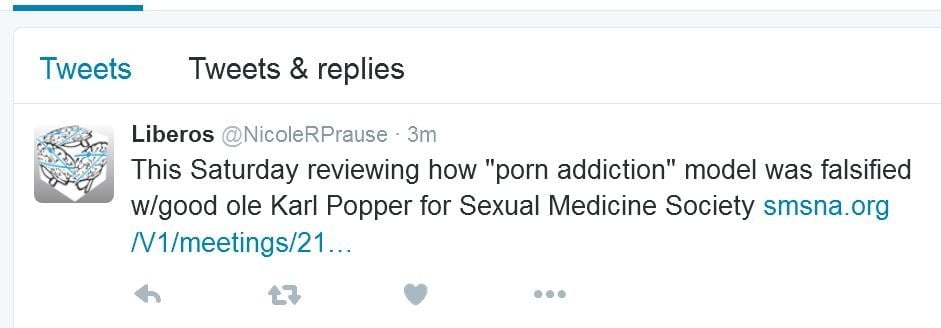
Prause cited her lone, anomalous, severely flawed, EEG for her support for “falsification.” See – How to recognize biased articles: They cite Prause et al. 2015 (falsely claiming it debunks porn addiction), while omitting over 3 dozen neurological studies supporting porn addiction (April, 2016).
—————–
This tweet concerns an internet porn study by Korean neuroscientists Seok and Sohn (PubMed indexed studies for Ji-woo Seok) – Gray matter deficits and altered resting-state connectivity in the superior temporal gyrus among individuals with problematic hypersexual behavior (2018). Prause falsely states that there were “no controls for literally any confound”:
Not so, but before we get to the truth it’s worth noting that her claim is very bold indeed, as 3 Prause studies on porn users failed to control for much of anything, including screening to establish that they were, in fact, addicted to porn (Prause et al., 2013, Steele et al., 2013, Prause et al., 2015). In fact, these 3 Prause studies chose to ignore numerous standard exclusion criteria normally employed in addiction studies, such as psychiatric conditions, other addictions, psychotropic medications, drug use, other compulsions, depression, religiosity, age, sexuality, gender, etc.
In reality, Seok & Sohn, 2018 carefully screened subjects for “sex addiction” (PHB). PHB was defined by two qualified clinicians based on clinical interviews using PHB diagnostic criteria set in previous studies, Table S1. Seok & Sohn also controlled for multiple variables. From Seok & Sohn, 2018:
We used the following exclusion criteria for PHB and control participants: age over 35 or under 18; other addictions such as alcoholism or gambling addiction, previous or current psychiatric, neurological, and medical disorders, homosexuality, currently using medication, a history of serious head injury, and general MRI contraindications (i.e., having a metal in the body, severe astigmatism, or claustrophobia).
In addition, Seok & Sohn 2018 assessed (controlled for) multiple psychological variables, including depression. From their study:
To identify comorbid tendencies among subjects with PHB, the Beck Depression Inventory (BDI) (Beck et al., 1996), Beck Anxiety Inventory (BAI) (Beck and Steer, 1990), and Barrett’s Impulsiveness Scale II (BIS-II), as adapted by Lee (1992) were administered. The score of BIS-II was used as a covariate to remove the effects of impulsivity. The BIS-II consists of 35 questions with dichotomized ‘‘yes” (1) or ‘‘no” (0) answers. The total score ranges from 0 to 35, with higher scores indicating greater levels of impulsivity. Information about the demographic and clinical characteristics of all participants is presented in Table 1.
Put simply, Prause lied outright.
———————–
A tweet about this study posted for commentary (since published in Neuropsychopharmacology), Prause falsely claimed that its 9 researchers (including top researchers in the addiction neuroscience field) were members of “anti-porn groups,” and that their new study was “bad science.” Prause’s tweet (pictured here) appeared on the same page as the study (Can pornography be addictive? An fMRI study of men seeking treatment for problematic pornography use), but was later deleted.

As usual her claims are entirely unfounded. First, it’s an excellent study, now formally published despite all the incomprehensible resistance. Second, its authors received first prize for this very research at the European Society for Sexual Medicine conference in 2016. Third, the authors have no affiliation with Prause’s imaginary “anti-porn groups” (which Prause never names).
For example, the lead author is Dr. Mateusz Gola, who is visiting scholar at UC San Diego, and has 50 or so publications to his name. Another author is Marc Potenza MD, PhD, of Yale University, who is considered by many to be one of the world’s preeminent addiction researchers (way out of Prause’s league). A PubMed search returns over 460 studies by Dr. Potenza.
—————–
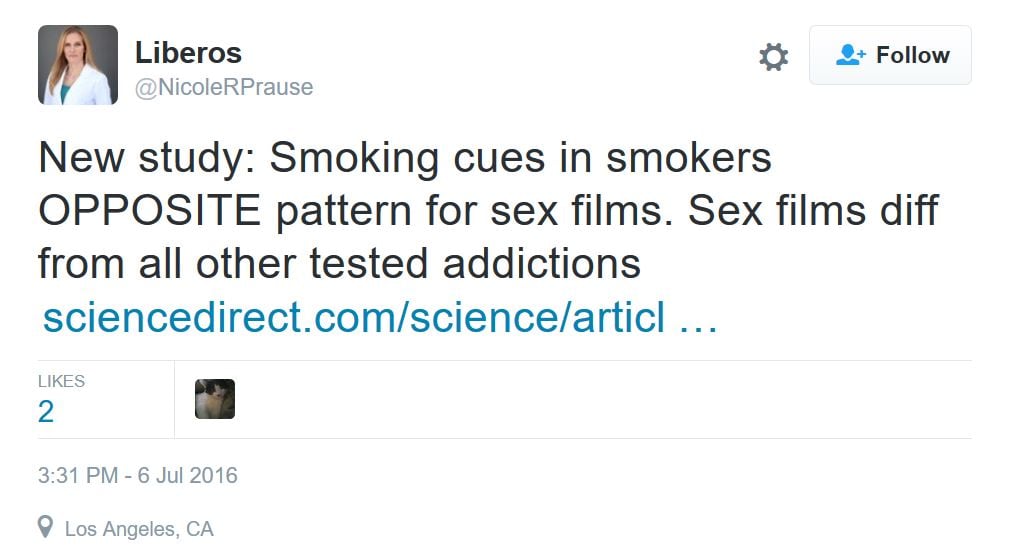
Nothing in this tweet is true. The study did not assess “sex films.” It only assessed smokers, which had higher p300 readings for cues. This is exactly what Prause found in her first EEG study on porn users: Peer-reviewed critiques of Steele et al., 2013
——————
Prause provides AASECT with talking points:
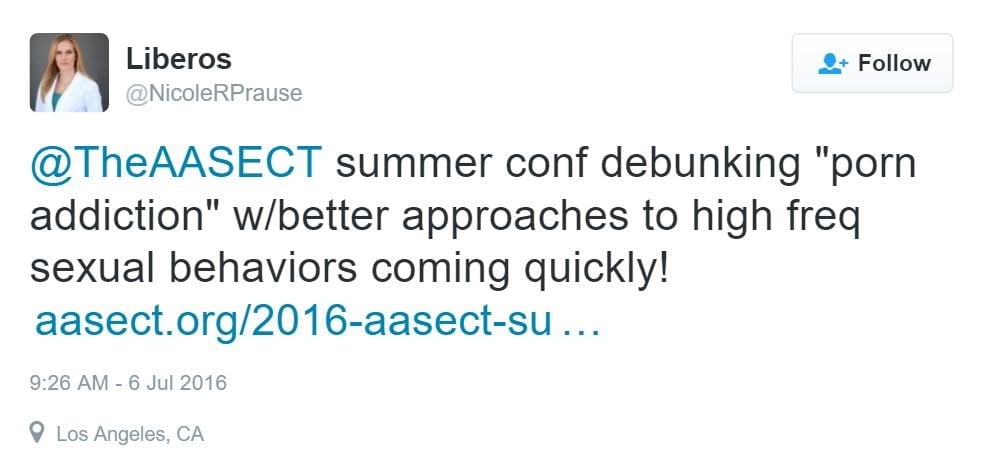
AASECT members don’t seem to know that Prause’s only evidence – her two EEG studies – have been critique 18 times in the peer-reviewed literature:
- Steele et al., 2013 (8 critiques): Peer-reviewed critiques of Steele et al., 2013. Also see this extensive YBOP critique.
- Prause et al., 2015 (10 critiques): Peer-reviewed critiques of Prause et al., 2015. Also see this extensive YBOP critique.
But there’s more. Prause presented a false picture of the state of the research to AASECT. Being overwhelmingly non-academics, AASECTers fell for it, and coughed up a press release declaring sex and porn addiction as officially debunked (!). Uh, no. First, AASECT is not a scientific organization and cited nothing to support the assertions in its own press release – rendering its support meaningless (not to mention the 55 neurological studies supporting the addiction model).
Most importantly AASECT’s proclamation was pushed through by Michael Aaron and a few other AASECT members using unethical “guerrilla tactics” as Aaron soon admitted in this Psychology Today blog post: Analysis: How the AASECT Sex Addiction Statement Was Created. An excerpt from this analysis Decoding AASECT’s “Position on Sex Addiction, summarized Aaron’s blog post:
Finding AASECT’s tolerance of the “sex addiction model” to be “deeply hypocritical”, in 2014 Dr. Aaron set out to eradicate support for the concept of “sex addiction” from AASECT’s ranks. To accomplish his goal, Dr. Aaron claims to have deliberately sowed controversy among AASECT members in order to expose those with viewpoints that disagreed with his own, and then to have explicitly silenced those viewpoints while steering the organization toward its rejection of the “sex addiction model.” Dr. Aaron justified using these “renegade, guerilla [sic] tactics” by reasoning that he was up against a “lucrative industry” of adherents to the “sex addiction model” whose financial incentives would prevent him from bringing them over to his side with logic and reason. Instead, to effect a “quick change” in AASECT’s “messaging,” he sought to ensure that pro-sex addiction voices were not materially included in the discussion of AASECT’s course change.
Dr. Aaron’s boast comes across as a little unseemly. People rarely take pride in, much less publicize, suppressing academic and scientific debate. And it seems odd that Dr. Aaron spent the time and money to become CST certified by an organization he deemed “deeply hypocritical” barely a year after joining it (if not before). If anything, it is Dr. Aaron who appears hypocritical when he criticizes pro-“sex addiction” therapists for having a financial investment in the “sex addiction model”, when, quite obviously, he has a similar investment in promoting his opposing viewpoint
Several commentaries and critiques expose AASECT’s proclamation for what it truly is:
- Alternative Facts: AASECT and the Anti Sex Addiction Rant
- The Revealing Backstory to the AASECT Position Statement on Sex/Porn Addiction
- Response to AASECT Position Statement
- Denial of Sex Addiction Hurts Our Clients
- Here’s to Hope for a Change
- How does the AASECT discounting of Sex & Porn Addiction affect the 12-step community?
- The sex addiction debate
—————–
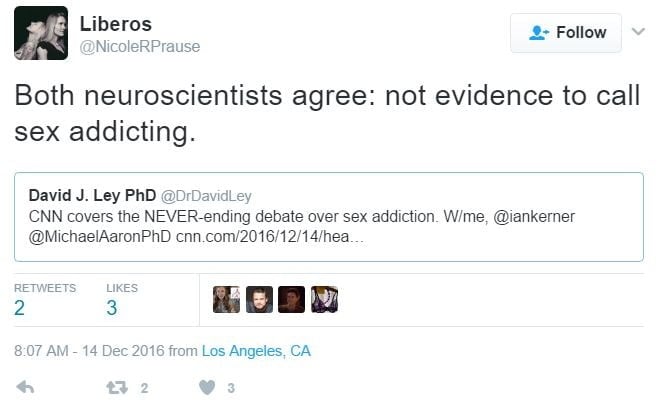
Another lie. The 2 neuroscientists were Prause and Valerie Voon of Cambridge University. Voon, who has published multiple brain studies on porn addicts, has published multiple reviews/commentaries where she stated that porn/sex addiction exists (see: Is excessive sexual behaviour an addictive disorder? 2017).
—————–
Attacking this Valerie Voon brain scan study on porn addicts:
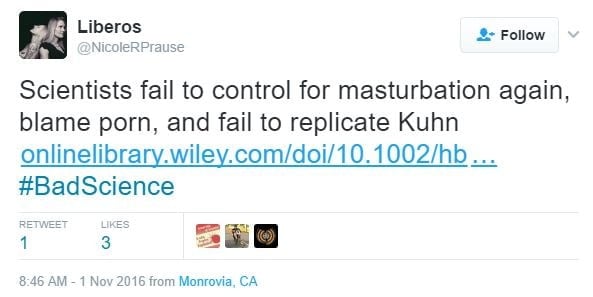
It didn’t fail to replicate anything as 1) the Kuhn subjects were not porn addicts (Voon’s were), and 2) the two studies looked at different parts of the brain.
What’s most interesting here is Prause’s common tactic of trying to shift the blame of brain changes away from porn use to masturbation. This is Prause’s usual tactic, which was written about here: Sexologists deny porn-induced ED by claiming masturbation is the problem (2016).
—————–
A tweet about ASAP science video: The Science of Pornography Addiction (SFW)
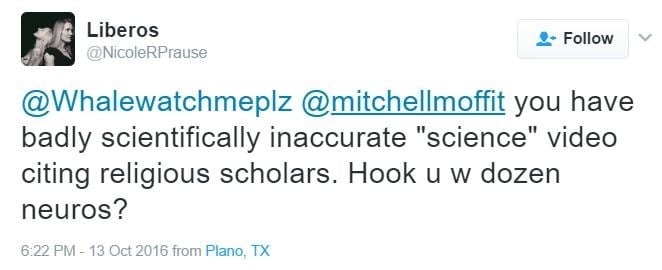
Prause lied: 1) It did not cite “religious scholars,” 2) She does not have a dozen neuro studies, as all 40 neuro studies support the porn addiction model (even Prause’s own EEG study)
—————–
Calls another neurological study on porn/sex addicts bad science, trying to blame anything but porn for the neurological findings:
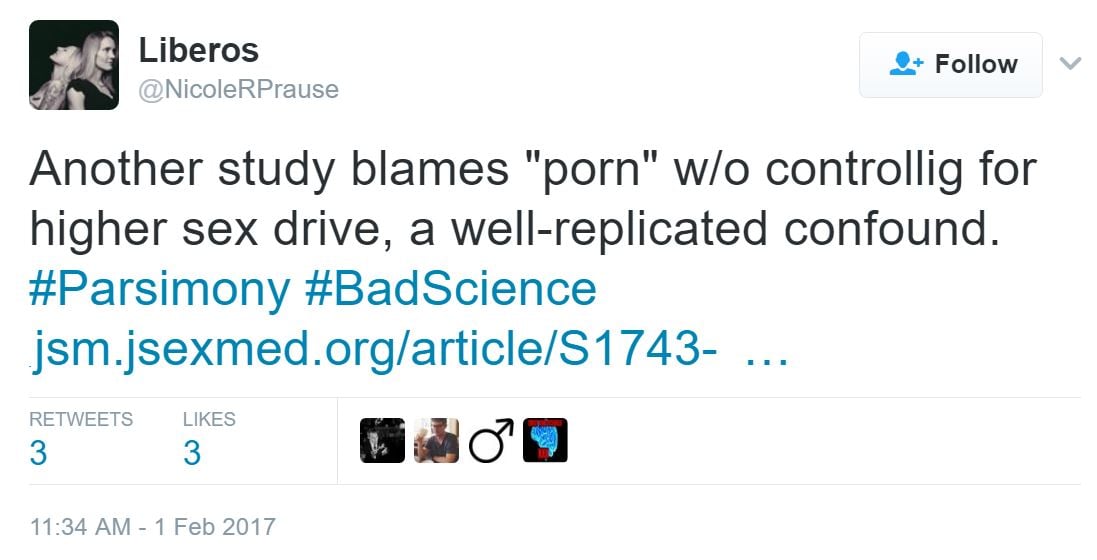
Note: Prause’s own severely flawed EEG studies have been heavily criticized for controlling for nothing. Her Steele et al., 2013 suffered from serious methodological flaws: 1) subjects were heterogeneous (males, females, non-heterosexuals); 2) subjects were not screened for mental disorders or addictions; 3) study had no control group for comparison; 4) questionnaires were not validated for porn use or porn addiction.
—————–
Tells NBC that writer needs to be removed, even though his article aligns with NIDA’s position and 6 decades of research:

Prause always attacks the concept of addiction, especially behavioral addictions. (Porn addiction is a behavioral addiction.)
—————–
Two falsehoods by Prause:
1) Porn is like other addictions, as 40 neuroscience-based studies reveal.
2) Studies do not find “mostly benefits” from porn use (she cites nothing).
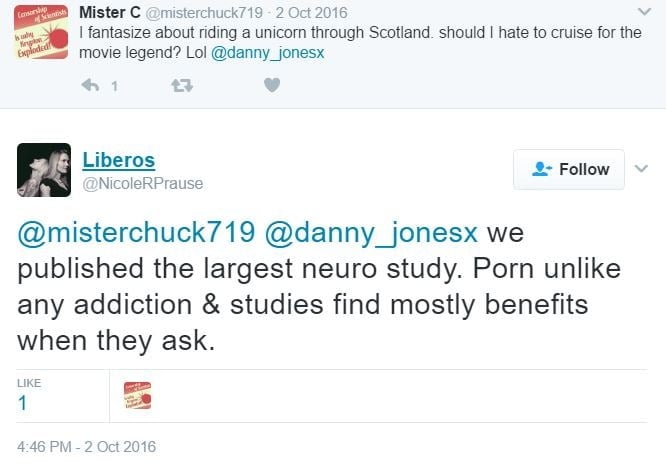
—————–
Falsehoods concerning the Gottman’s article:
1) The neuroscience was up to date.
2) Porn’s effects on couples are overwhelmingly negative.
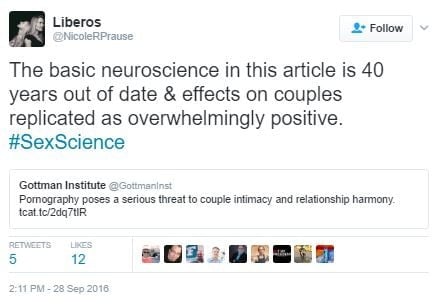
Almost 60 studies link porn use to less sexual and relationship satisfaction. As far as we know all studies involving males have reported more porn use linked to poorer sexual or relationship satisfaction. While a few studies correlated greater porn use in females to better (or neutral) sexual satisfaction, most have not (see this list: Porn studies involving female subjects: Negative effects on arousal, sexual satisfaction, and relationships).
—————–
Nothing would be more damaging to the porn industry than widespread recognition that porn is screwing up men’s sexuality!
Nicole Prause and David Ley are obsessed with debunking porn-induced ED, having waged a 3-year war against this academic paper, while simultaneously harassing and libeling young men who have recovered from porn-induced sexual dysfunctions.Finally, it’s important to note that author Nicole Prause has close relationships with the porn industry and is obsessed with debunking PIED, having waged a 3-year war against this academic paper, while simultaneously harassing & libeling young men who have recovered from porn-induced sexual dysfunctions. See documentation: Gabe Deem #1, Gabe Deem #2, Alexander Rhodes #1, Alexander Rhodes #2, Alexander Rhodes #3, Noah Church, Alexander Rhodes #4, Alexander Rhodes #5, Alexander Rhodes #6, Alexander Rhodes #7, Alexander Rhodes #8, Alexander Rhodes #9, Alexander Rhodes #10, Alex Rhodes #11, Gabe Deem & Alex Rhodes together #12, Alexander Rhodes #13, Alexander Rhodes #14, Gabe Deem #4, Alexander Rhodes #15.
The study Prause linked to had nothing to do with the content of her tweet (in was not about men thinking that internet porn caused their ED):
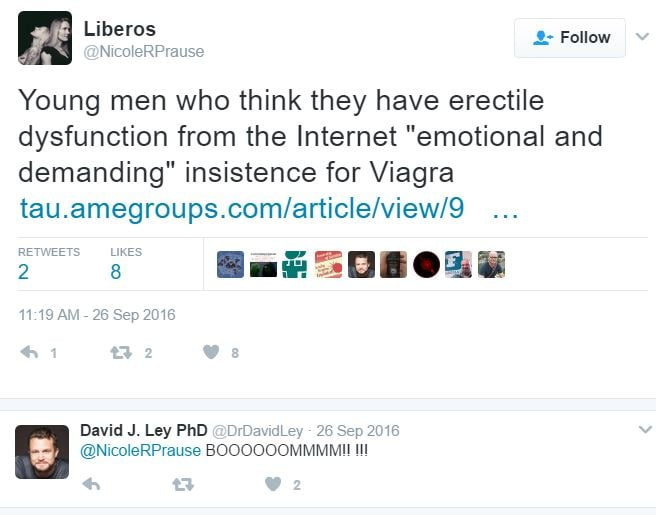
Reality concerning porn and sexual problems? This list contains 42 studies linking porn use/porn addiction to sexual problems and lower arousal to sexual stimuli. The first 7 studies in the list demonstrate causation, as participants eliminated porn use and healed chronic sexual dysfunctions. Almost 75 studies link porn use to less sexual and relationship satisfaction. (As far as we know all studies involving males have reported more porn use linked to poorer sexual or relationship satisfaction.) Over 60 studies reporting findings consistent with escalation of porn use (tolerance), habituation to porn, and even withdrawal symptoms (all signs and symptoms associated with addiction). Studies assessing young male sexuality since 2010 report historic levels of sexual dysfunctions, and startling rates of a new scourge: low libido. Documented in this lay article and in this peer-reviewed paper involving 7 US Navy doctors – Is Internet Pornography Causing Sexual Dysfunctions? A Review with Clinical Reports (2016). In addition to the above studies, this page contains articles and videos by over 160 experts (urology professors, urologists, psychiatrists, psychologists, sexologists, MDs) who acknowledge and have successfully treated porn-induced ED and porn-induced loss of sexual desire.
—————–
More instances of Prause attacking porn-induced sexual problems. Prause links to a lay article that quotes her:
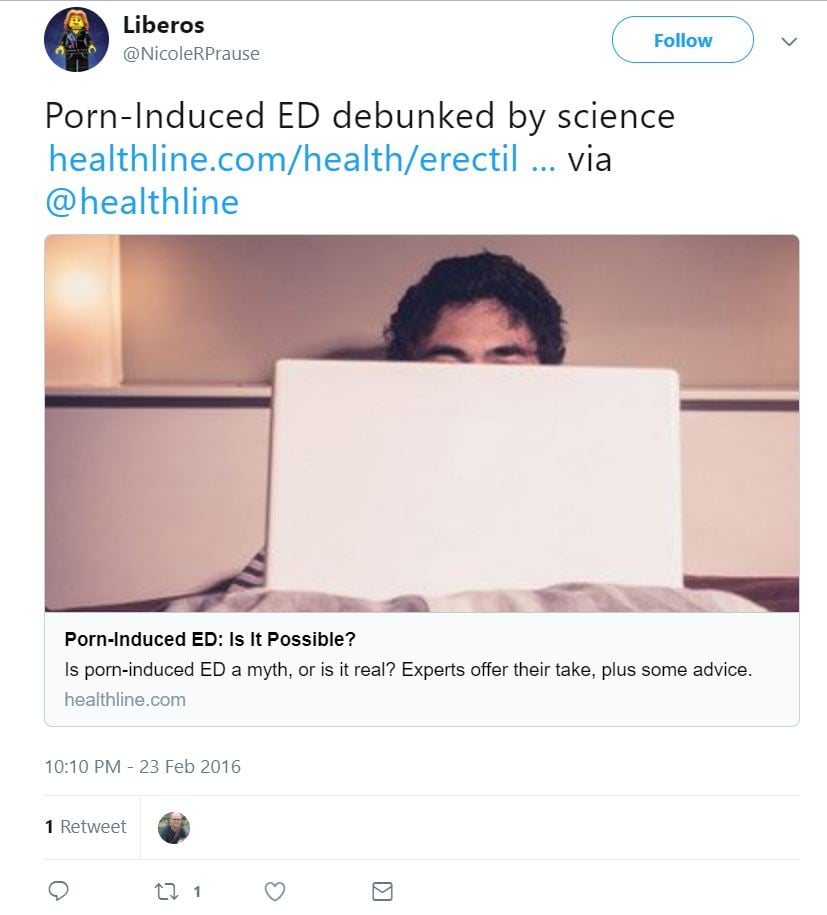
Prause and Jim Pfaus cobbled together a weak attempt to debunk porn addiction (Prause & Pfaus, 2015). Prause & Pfaus 2015 wasn’t a study on men with ED. It wasn’t a study at all. Instead, Prause claimed to have gathered data from four of her earlier studies, none of which addressed erectile dysfunction. It’s disturbing that this paper by Nicole Prause and Jim Pfaus passed peer-review as the data in their paper did not match the data in the underlying four studies on which the paper claimed to be based. The discrepancies are not minor gaps, but gaping holes that cannot be plugged. In addition, the paper made several claims that were false or not supported by their data.
Prause & Pfaus did not support its claims as these 2 critiques expose:
- In the same journal as the paper: Letter to the editor by Richard A. Isenberg MD (2015)
- Very extensive lay critique: Nothing Adds Up in Dubious Study: Youthful Subjects’ ED Left Unexplained (2015)
—————–
The article does not match Prause’s spin.
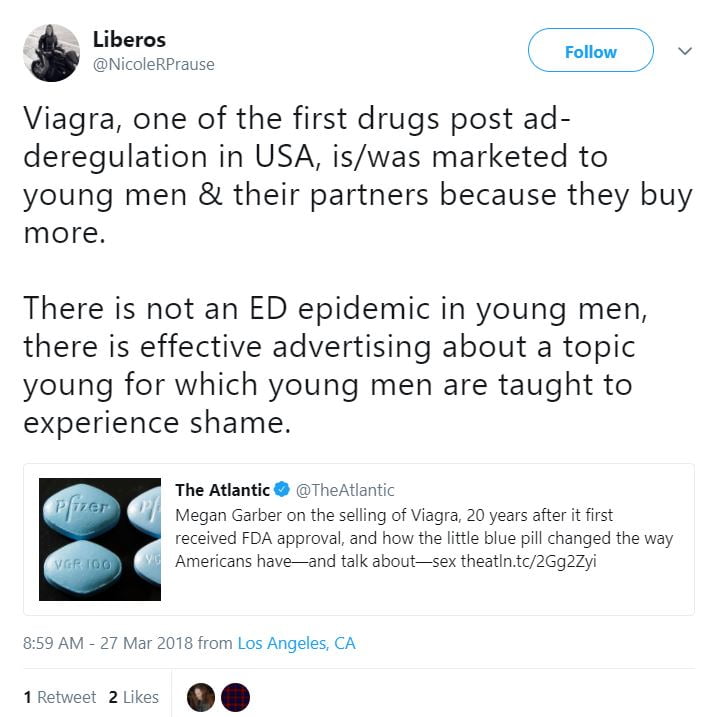
Yes, there is an epidemic: Documented in this lay article and in this peer-reviewed paper involving 7 US Navy doctors – Is Internet Pornography Causing Sexual Dysfunctions? A Review with Clinical Reports (2016)
—————–
Martin Daubney tweets an article featuring NHS sex expert who says porn is causing ED in you men: BBC: Easy access to online porn is ‘damaging’ men’s health, says NHS therapist. Psychosexual therapist Angela Gregory (2016).
Prause attacks, tagging porn industry supporter @PornPanic.
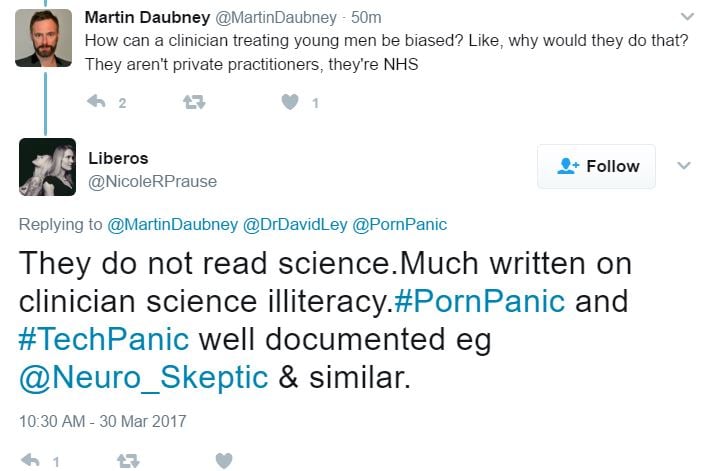
Next Prause calls the sex therapists “science illiterate” because they successful treat porn-induced sexual problems by having men stop using porn:
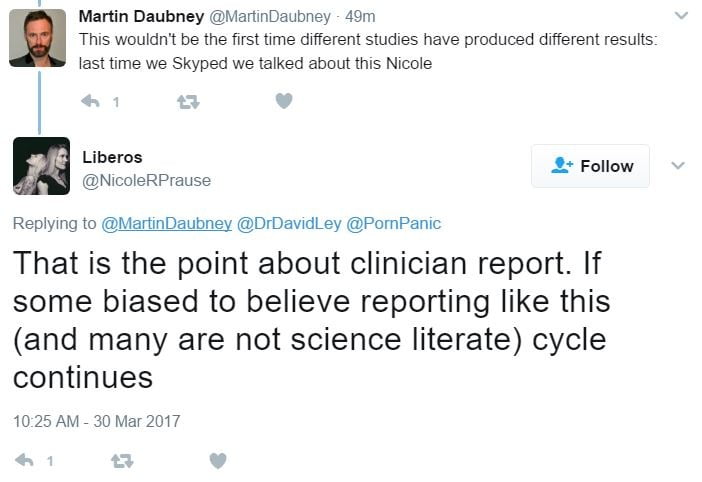
More from Prause, with a falsehood:
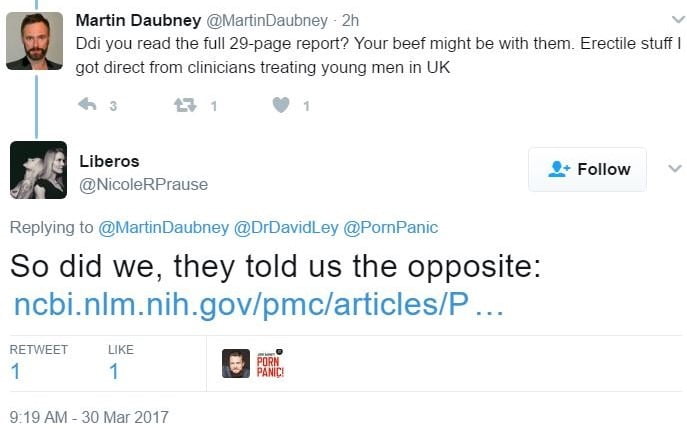
Daubney said that he got his material from a 29 page report by clinicians who treat young men. Prause replied that “we” (Prause & Pfaus 2015) also gathered data directly from clinicians who treat patients. That’s a lie. None were patients, and all were recruited via flyers! From Prause & Pfaus, 2015:
Nontreatment-seeking men (N = 280) reported their weekly average VSS viewing in hours.
Participants were solicited by flyers in the community and from psychology courses in Pocatello, Idaho and Albuquerque, New Mexico.
More. We are told that subjects and data for Prause & Pfaus were culled from four other studies, which have already been published:
Two hundred eighty men participated over four different studies conducted by the first author. These data have been published or are under review [33–36],
As noted, none of the four studies (study 1, study 2, study 3, study 4) assessed the relationship between porn use and erectile dysfunction. Only one study reported erectile functioning scores, for only 47 men. Lead author Prause tweeted several times about the study, letting the world know that 280 subjects were involved, and that they had “no problems at home.” However, the four underlying studies contained only 234 male subjects. While 280 appears once in this study’s Table 1 as the number of subjects reporting “intercourse partners last year,” so do the numbers 262, 257, 212 and 127. Yet, none of these numbers match anything reported in the 4 underlying studies, and only 47 men took the erection questionnaire.
—————–
An old Tracy Clark-Flory article
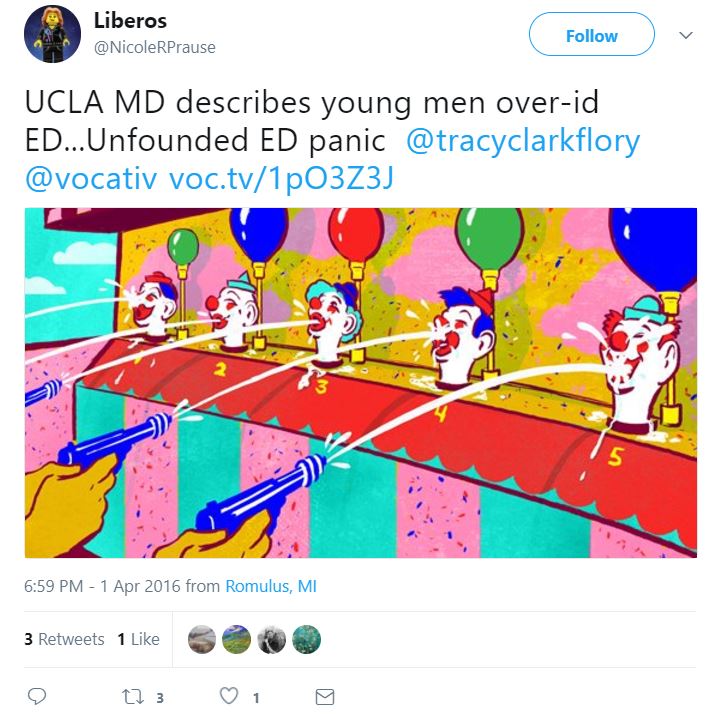
Doesn’t say anything about “unfounded ED panic.”
———————
Prause calls Paula Hall a “pseudoscientist” and misrepresents Hall’s views on a study:
Known “pseudoscientist”? That’s not even a real word. A month after Prause’s tweet Paula Hall was listed as a coauthor on this Cambridge University brain scan study of porn addicts (published in the journal Human Brain Mapping): Compulsive sexual behavior: Prefrontal and limbic volume and interactions, 2016. Prause doesn’t care for Hall because she has been featured in several articles and TV & radio shows discussing porn and sex addiction. Hall is the author of 3 books on porn/sex addiction.
—————–
Saying that Dan Savage killed Gail Dines (he didn’t, as he knows nothing about the research). Note how Prause goes to the extreme length of blaming masturbation for ED (no urologist agrees).
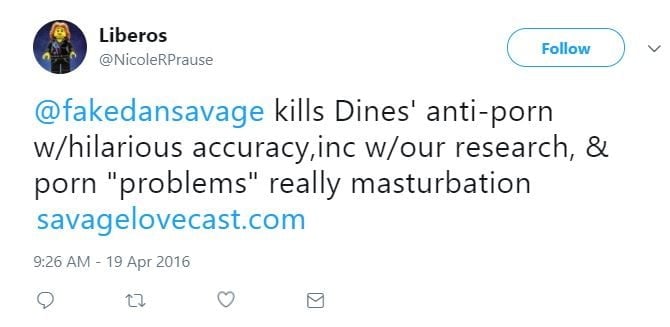
“Anything but porn” is Prause and Ley’s battle cry. See – Sexologists deny porn-induced ED by claiming masturbation is the problem (2016)
—————–
Prause makes it no secret that she vehemently opposes the concepts of sex and porn addiction. In the summer of 2014 Prause placed the following notice on her SPAN Lab website. You can read for yourself that Prause is encouraging all individuals being treated for sex addiction to report their therapists to the state board (it contains a handy hyperlink):
This is unprofessional, and also unethical as both the DSM and the ICD permit reimbursable diagnoses for the disorder. In case anyone missed this, Prause followed it up with this tweet:
A month later Prause reminds us all again to report our local sex addiction therapist. It’s free and easy!
Prause doesn’t stop with tweets directed at a profession. She ups her game, falsely accusing psychotherapists of fraudulent therapy. Isn’t this rather reckless for a psychologist, especially given that (1) diagnoses of compulsive sexual behavior can be made using the World Health Organization’s ICD-10 and (2) Section F52.8 of the DSM itself recognizes the diagnostic validity of excessive sex drive as a valid, reimbursable disorder? In short, Prause is mistaken and behaving unethically.
———————–
Prause and her expensive PR firm are very successful at placing articles in media outlets. In the Daily Dot article, Prause is the world’s expert on porn-induced ED. Guess what? It doesn’t exist:
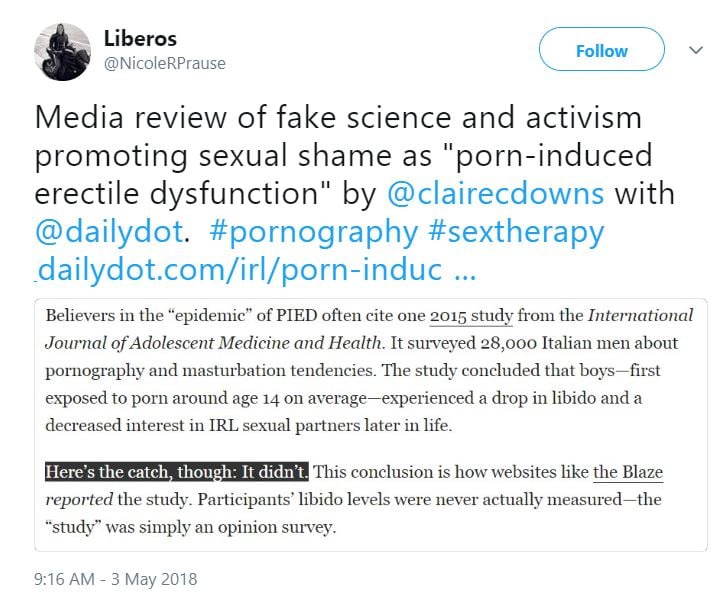
YBOP completely dismantles the Daily Dot article: Debunking “Should you be worried about porn-induced erectile dysfunction?” – by The Daily Dot’s Claire Downs. (2018).
—————–
Prause, Ley, and Justin Lehmiller of Playboy magazine, often collaborate to “debunk” porn addiction or porn induced problems. This April, 2018 blog post by Justin Lehmiller, has been tweeted multiple times by Prause and Ley. One example:
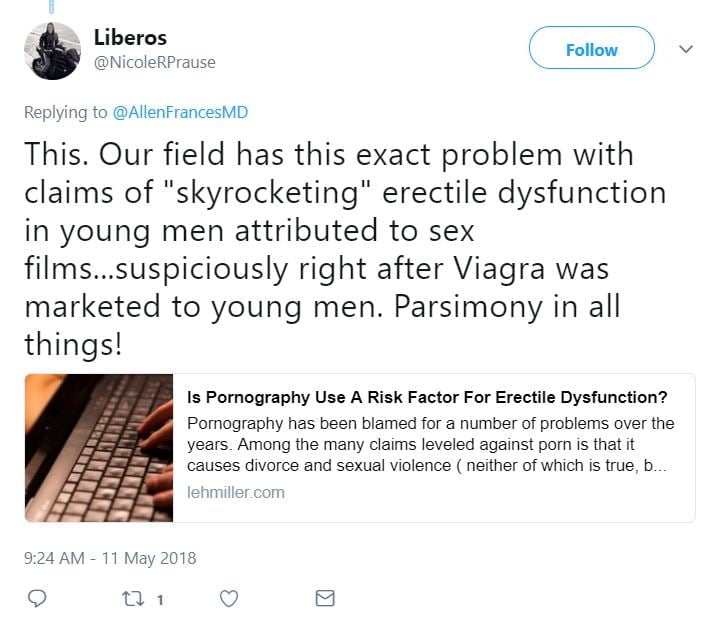
It shouldn’t surprise anyone that Playboy writer Lehmiller is a close ally of Prause, having featured her in at least ten of his blog posts. These and many other Lehmiller blogs perpetuate the same false narratives: porn use causes no problems and porn addiction/porn-induced sexual dysfunctions do not exist. YBOP exposes the Lehmiller article as a sham: Debunking Justin Lehmiller’s “Is Erectile Dysfunction Really on the Rise in Young Men” (2018)
—————–
The scientists in question are US Navy urologists who presented data at 2017 American Urological Association Conference – Study sees link between porn and sexual dysfunction (2017)
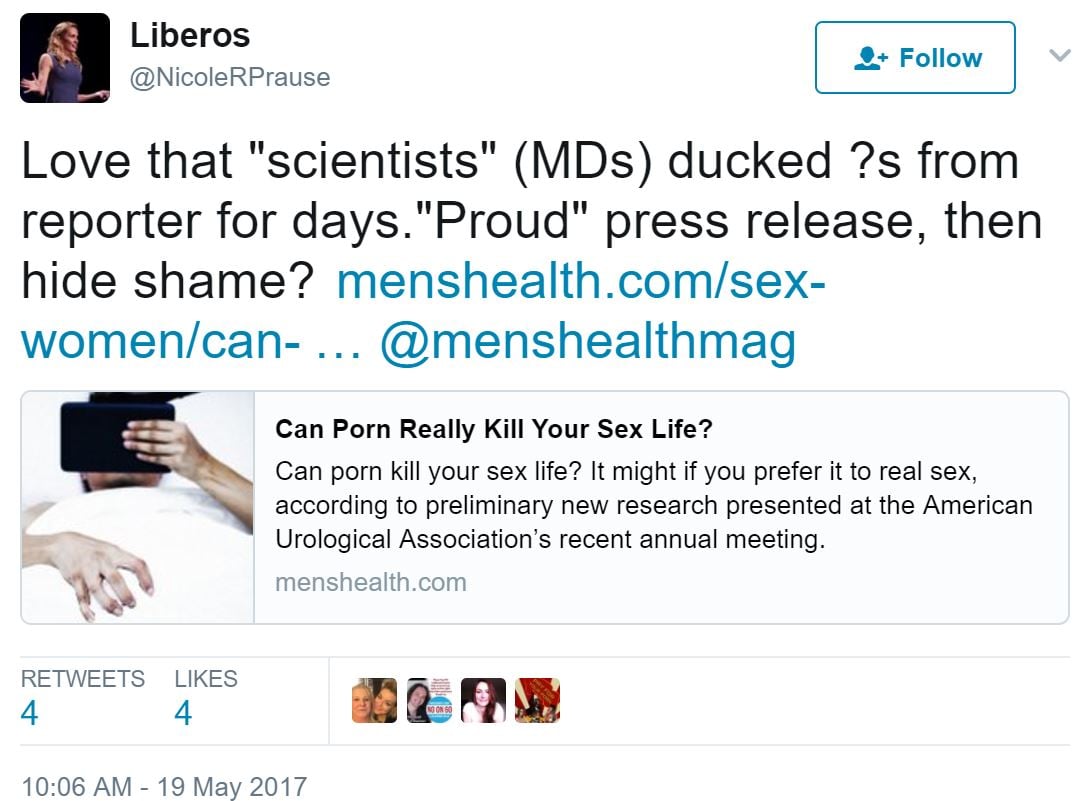
They didn’t hide from anyone (Prause did not attend the conference). Two of the urologists were also on the MDPI paper that Prause has been trying to have retracted: From 2015 through 2018: Prause’s efforts to have Behavioral Sciences review paper (Park et al., 2016) retracted
The story is long, complex and unbelievable – including Prause reporting all 7 doctors on the paper to their medical boards… with fabricated and spurious charges. The medical boards ignored Prause’s malicious harassment.
—————–
Prause is falsely claiming that ED rates for men under 40 have not increased in the last 10-15 years. She does this because widespread internet porn is the only variable that could account for this change. Prause’s motto is “anything but porn”:
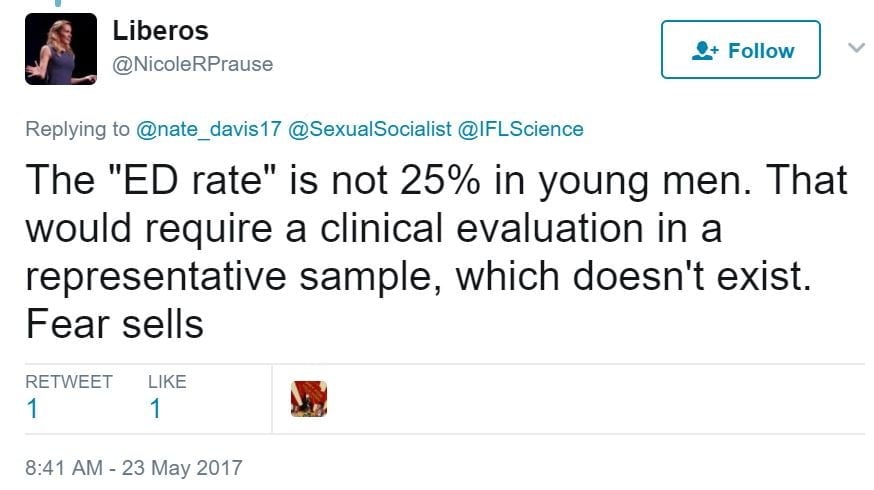
Prause is lying. Studies assessing young male sexuality since 2010 report historic levels of sexual dysfunctions, and startling rates of a new scourge: low libido. Documented in this lay article and in this peer-reviewed paper involving 7 US Navy doctors – Is Internet Pornography Causing Sexual Dysfunctions? A Review with Clinical Reports (2016)
Historical ED rates: Erectile dysfunction was first assessed in 1940s when the Kinsey report concluded that the prevalence of ED was less than 1% in men younger than 30 years, less than 3% in those 30–45. While ED studies on young men are relatively sparse, this 2002 meta-analysis of 6 high-quality ED studies reported that 5 of the 6 reported ED rates for men under 40 of approximately 2%. The 6th study reported figures of 7-9%, but the question used could not be compared to the 5 other studies, and did not assess chronic erectile dysfunction: “Did you have trouble maintaining or achieving an erection any time in the last year?”
At the end of 2006 free, streaming porn tube sites came on line and gained instant popularity. This changed the nature of porn consumption radically. For the first time in history, viewers could escalate with ease during a masturbation session without any wait.
Nine studies since 2010: Nine studies published since 2010 reveal a tremendous rise in erectile dysfunctions. In the 9 studies, erectile dysfunction rates for men under 40 ranged from 14% to 37%, while rates for low libido ranged from 16% to 37%. Other than the advent of streaming porn (2006) no variable related to youthful ED has appreciably changed in the last 10-20 years (smoking rates are down, drug use is steady, obesity rates in males 20-40 up only 4% since 1999 – see this study). The recent jump in sexual problems coincides with the publication of numerous studies linking porn use and “porn addiction” to sexual problems and lower arousal to sexual stimuli.
—————–
Now she calls the same US Navy urologists who presented data at 2017 American Urological Association Conference “activists” (Study sees link between porn and sexual dysfunction (2017). The same urologists she has harassed and libeled for 3 years running – From 2015 through 2018: Prause’s efforts to have Behavioral Sciences review paper (Park et al., 2016) retracted.
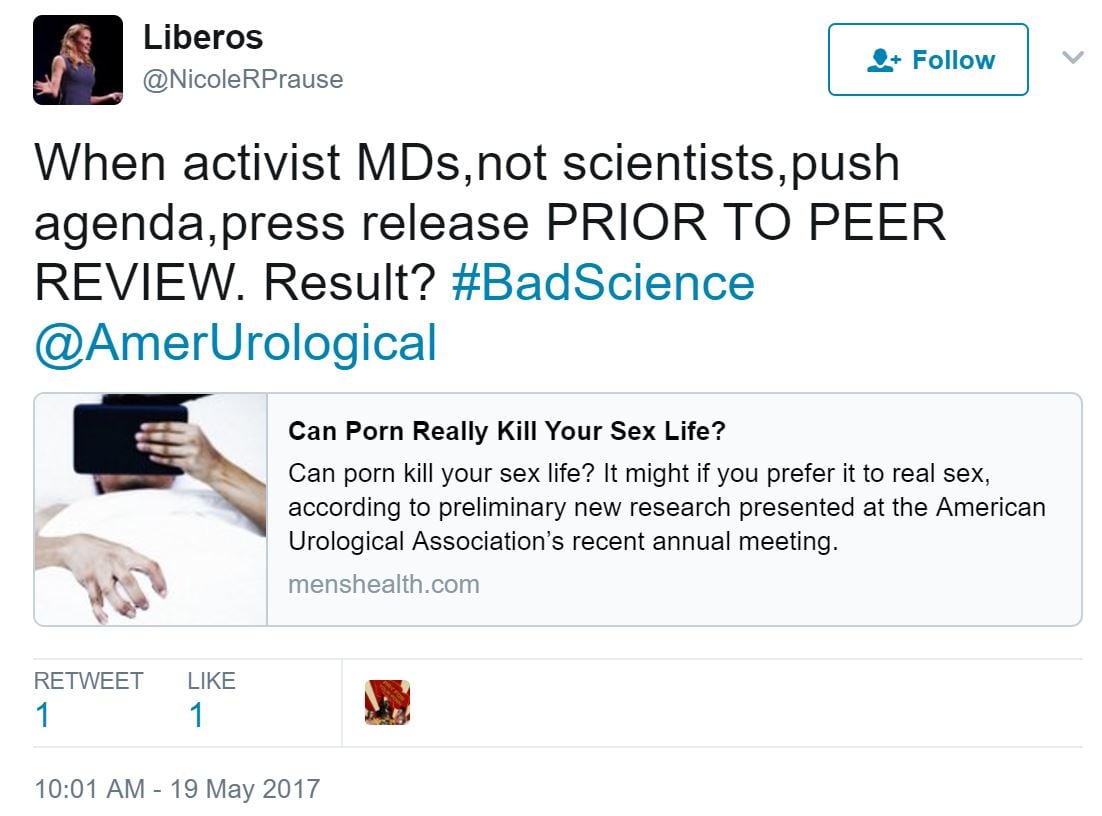
It is normal procedure to present yet-to-be-published data at conferences. Prause has done it several times. Check this out: On March 6th, 2013 David Ley and spokesperson Nicole Prause teamed up to write a Psychology Today blog post about Steele et al., 2013 called “Your Brain on Porn – It’s NOT Addictive.” Its oh-so-catchy title is misleading as it has nothing to do with Your Brain on Porn or the neuroscience presented there. Instead, David Ley’s March, 2013 blog post limits itself to a single flawed EEG study – Steele et al., 2013. Ley’s blog post appeared 5 months before Prause’s EEG study was formally published. A month later (April 10th) Psychology Today editors unpublished Ley’s blog post due to controversies surrounding its unsubstantiated claims and Prause’s refusal to provide her unpublished study to anyone else.
The Ley and Prause PT blog post misrepresented nearly everything about Prause EEG study: Peer-reviewed critiques of Steele et al., 2013
—————–
Prause was so obsessed with the above US Navy conference presentation she fabricated a nonsensical “press release,” attempting to debunk data she hadn’t seen. Her “press release” has nothing to do with the Navy report or its data (yet she “debunked” it):
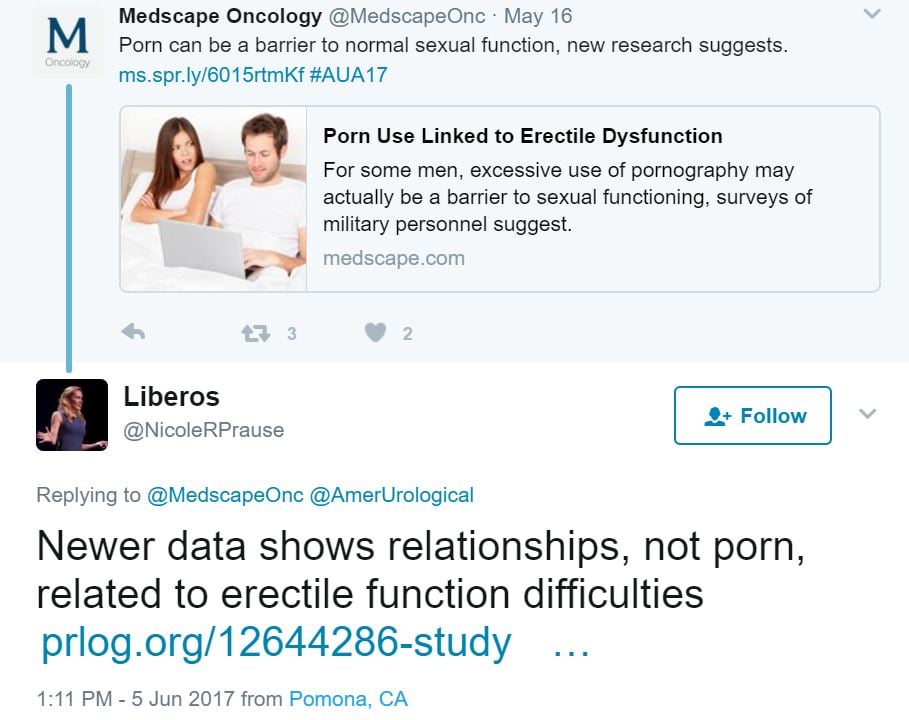
More of the same:
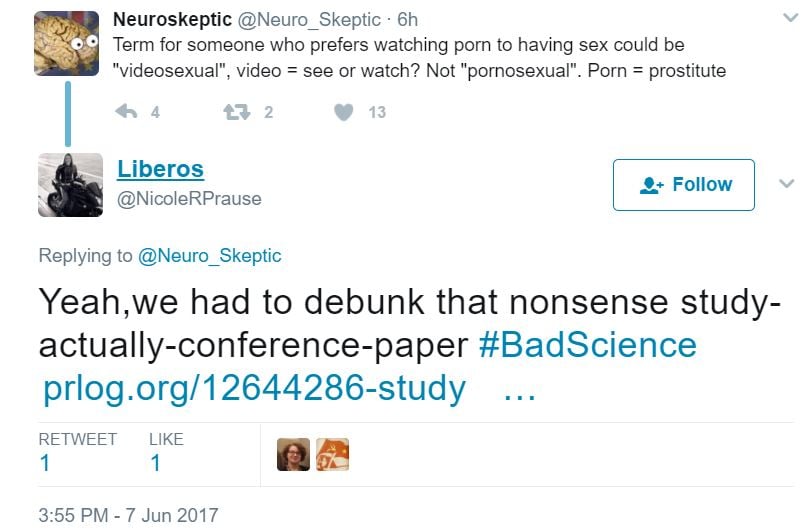
More of the same:
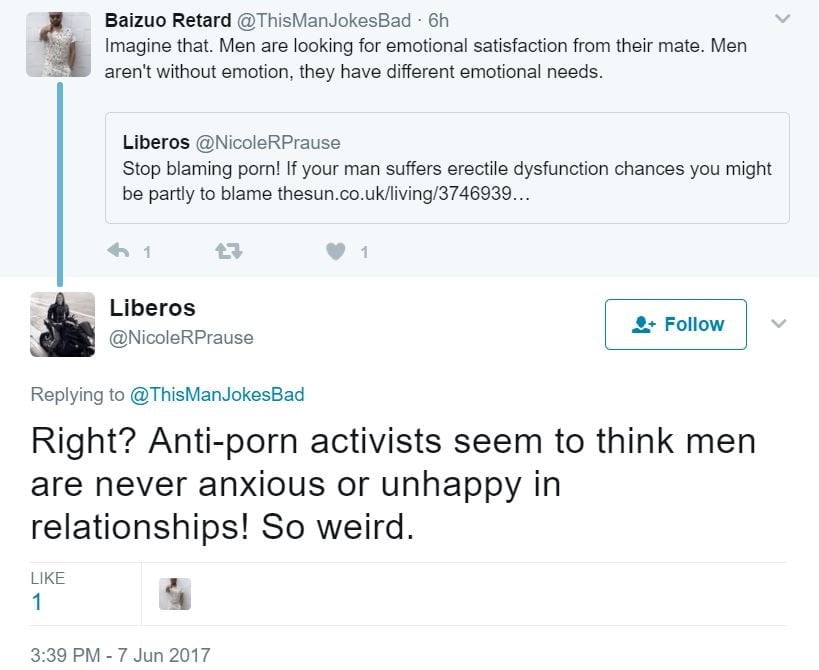
Once again, we have actual studies to consider, not “press releases” engineered by Prause. This list contains over 40 studies linking porn use/porn addiction to sexual problems and lower arousal to sexual stimuli. The first 7 studies in the list demonstrate causation, as participants eliminated porn use and healed chronic sexual dysfunctions. Over 90 studies link porn use to less sexual and relationship satisfaction. (As far as we know all studies involving males have reported more porn use linked to poorer sexual or relationship satisfaction.) Over 60 studies reporting findings consistent with escalation of porn use (tolerance), habituation to porn, and even withdrawal symptoms (all signs and symptoms associated with addiction).
—————–
Prause falsely claims that her cobbled together, inconsistent data from 4 earlier studies showed causation (Prause & Pfaus, 2015). Absolute nonsense.
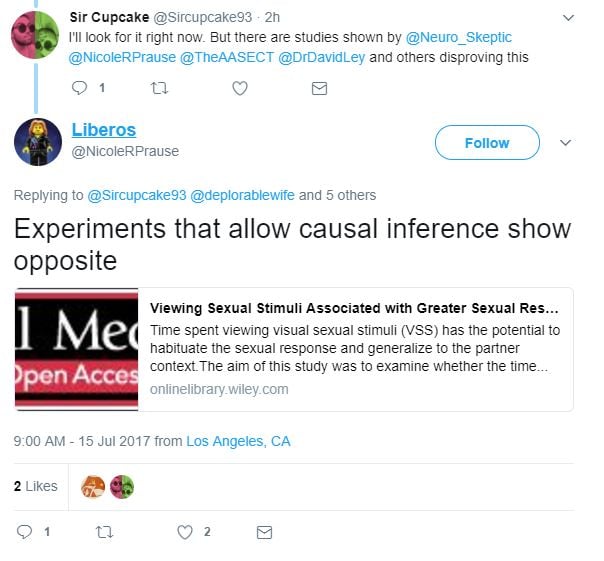
Prause and Jim Pfaus. Prause & Pfaus 2015 wasn’t a study on men with ED. It wasn’t a study at all. Instead, Prause claimed to have gathered data from four of her earlier studies, none of which addressed erectile dysfunction. It’s disturbing that this paper by Nicole Prause and Jim Pfaus passed peer-review as the data in their paper did not match the data in the underlying four studies on which the paper claimed to be based. The discrepancies are not minor gaps, but gaping holes that cannot be plugged. In addition, the paper made several claims that were false or not supported by their data. Prause & Pfaus did not support its claims as these 2 critiques expose:
- In the same journal as the paper: Letter to the editor by Richard A. Isenberg MD (2015)
- Very extensive lay critique: Nothing Adds Up in Dubious Study: Youthful Subjects’ ED Left Unexplained (2015)
—————–
Taking on feminist Naomi Wolf. Prause falsely states that there are 3 “experimental” studies debunking porn induced ED. There are none.

In reality, the first 7 studies in this list of 45 demonstrate causation, as participants eliminated porn use and healed chronic sexual dysfunctions. These are the only experimental studies capable of assessing porn-induced ED.
—————–
Prause on Quora – before she was banned for harassing Gary Wilson:
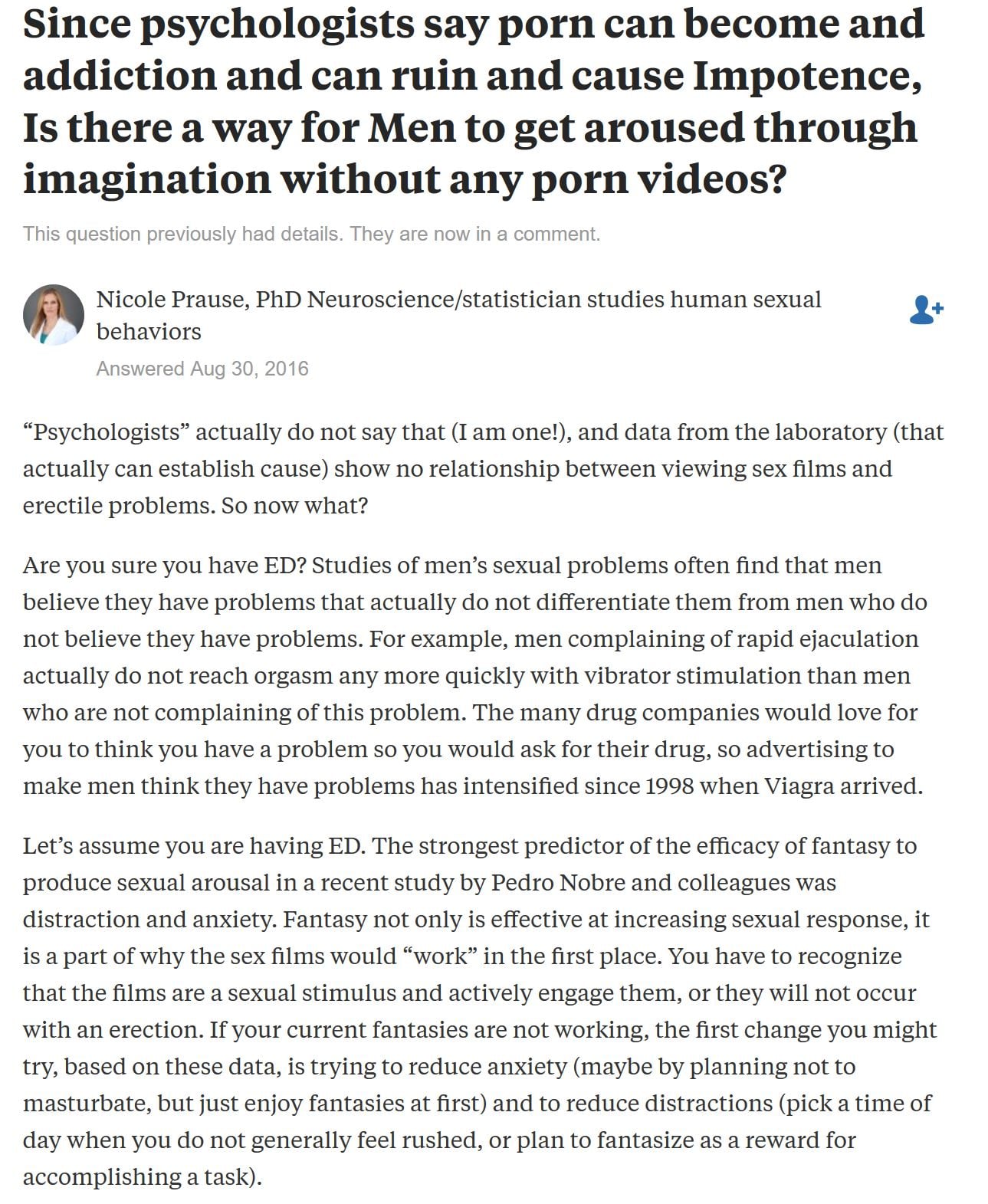
—————–
Once again, Prause falsely states that there are “experimental” studies debunking porn induced ED. She doesn’t cite any, because there are none.
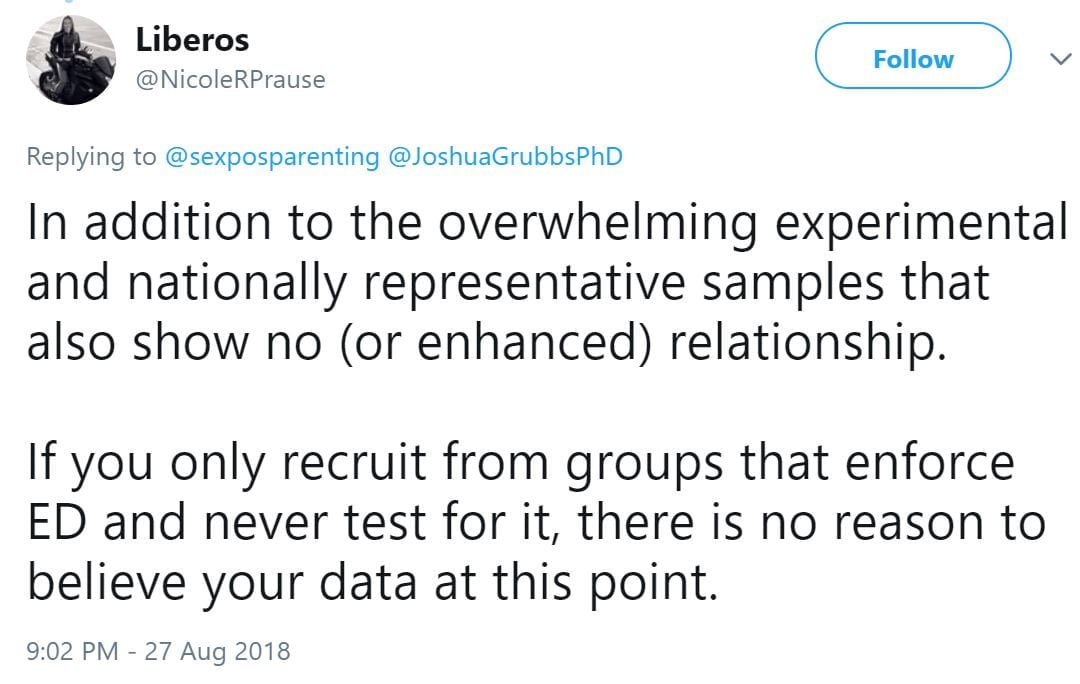
In reality, the first 6 studies in this list of 28 demonstrate causation, as participants eliminated porn use and healed chronic sexual dysfunctions. These are the only existing experimental studies capable of assessing porn-induced ED.
—————–
Prause tweets a Guardian article where she is quoted as saying ED rates in men under 40 have not increased:
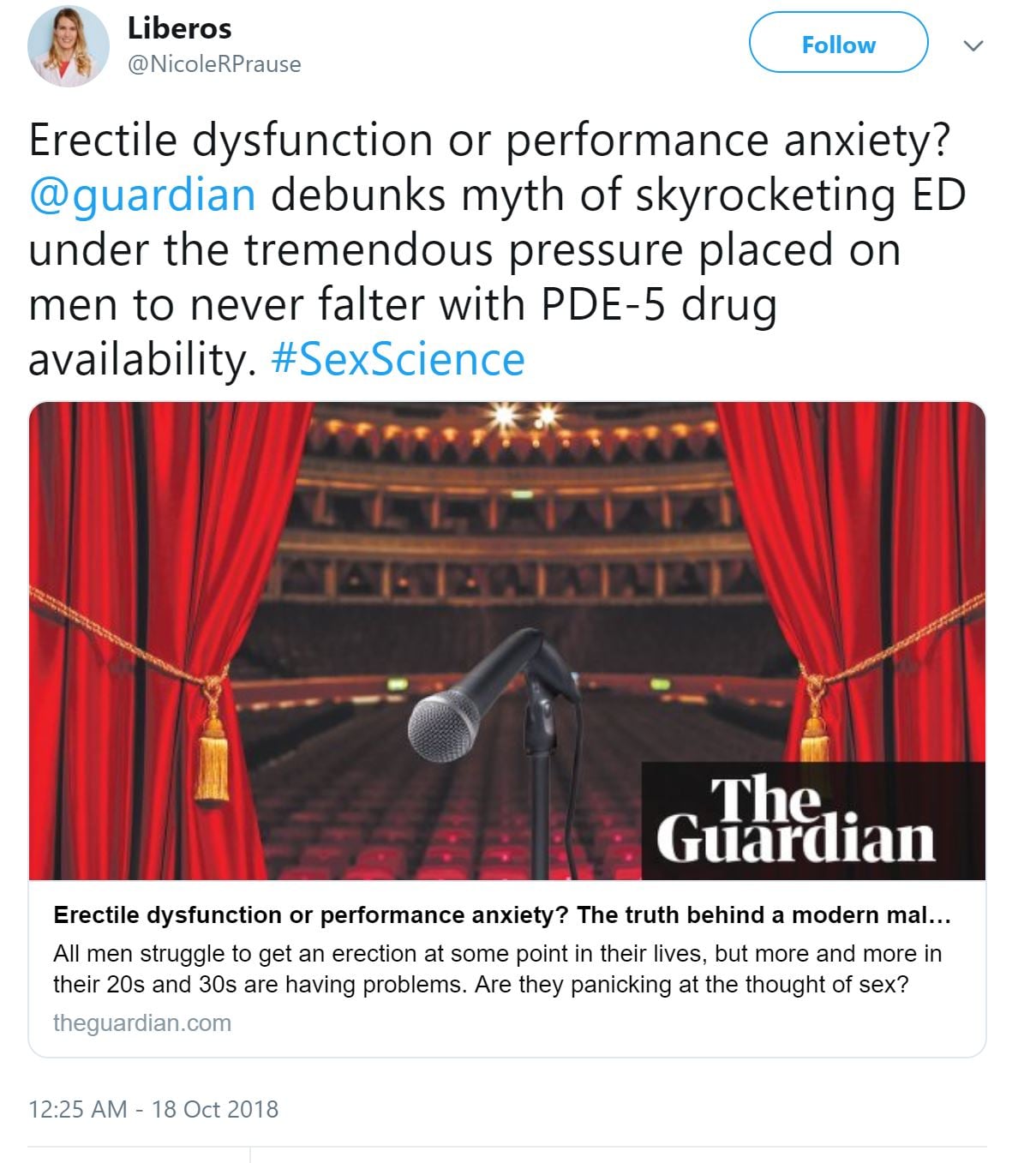
Not only does Prause fail to cite any support for her claims, the experts (Prause is not an expert on ED and does not treat patients) believe otherwise. A few excerpts:
Many believe erectile dysfunction (ED), also known as impotence, is becoming more prevalent in young men. A recent study of 2,000 British men found that 50% of those in their 30s reported difficulties in getting and maintaining an erection…..
Medical professionals report that many more young men are coming to them complaining of ED. “I have been treating patients for 30 years, and there’s no doubt that we’re seeing more young men today than we used to,” says Dr Douglas Savage of the Centre for Men’s Health, based in Harley Street and Manchester. “Often, these are men who appear to be super-healthy: they’re slim, they exercise, they’re young, and you think: ‘Why on earth have these people got sexual difficulties?’”……
Reality? Studies assessing young male sexuality since 2010 report historic levels of sexual dysfunctions, and startling rates of a new scourge: low libido. Documented in this lay article and in this peer-reviewed paper involving 7 US Navy doctors – Is Internet Pornography Causing Sexual Dysfunctions? A Review with Clinical Reports (2016)
—————–
Again, there have been NO “experimental” studies debunking porn induced ED. Prause claims that studies prove that porn DOES NOT cause ED or anorgasmia. Not so, as no study can prove a negative.
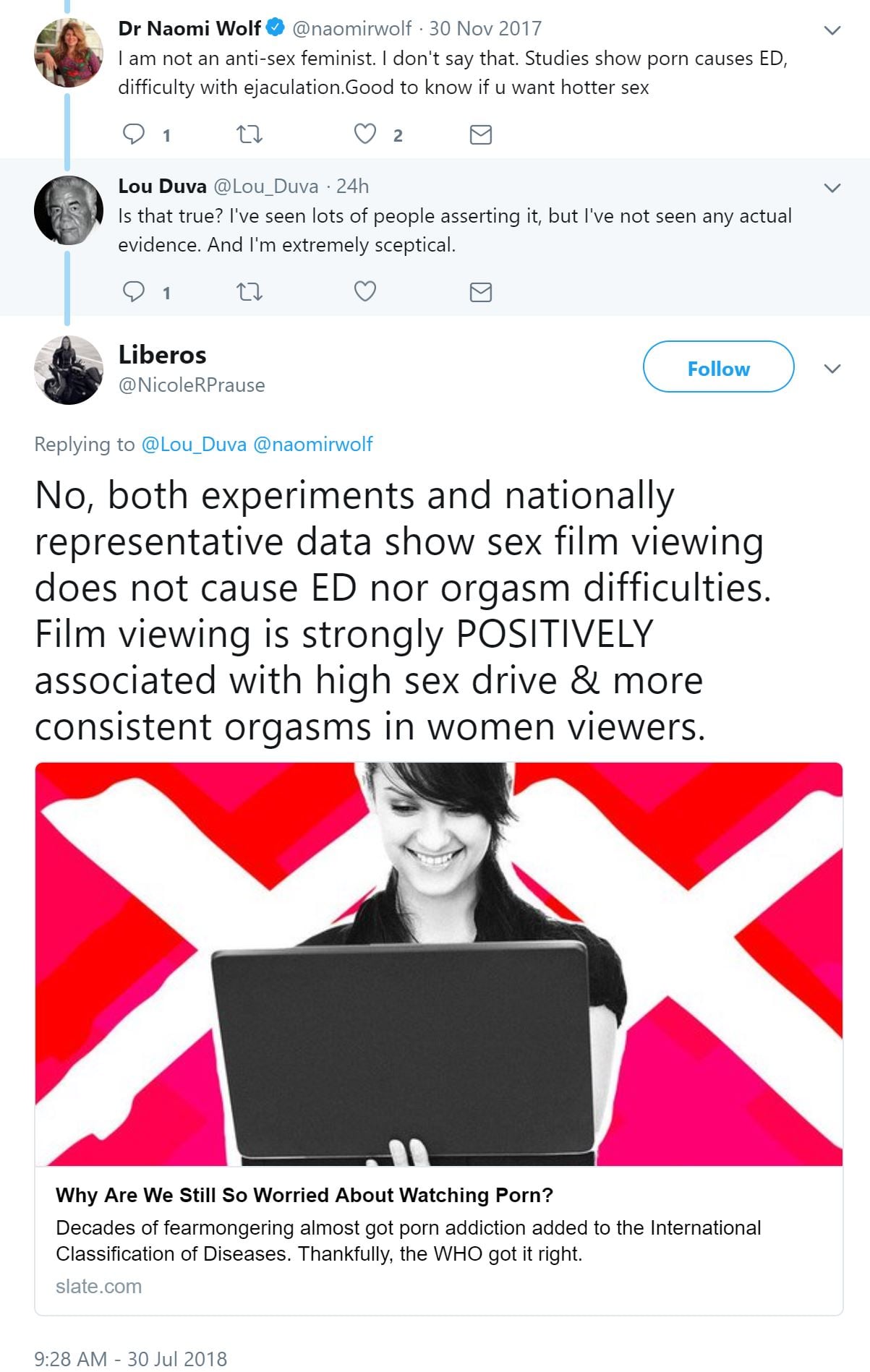
No, porn viewing is not consistently associated with high sex drive. Here’s a list of studies debunking her unsupported talking point that “high sexual desire” explains away porn or sex addiction: At least 25 studies falsify the claim that sex & porn addicts “just have high sexual desire.”
As for Prause’s link, the following debunks nearly every naysayer talking point and cherry-picked study. It’s YBOP’s extensive critique of this Prause-penned commentary – Debunking “Why Are We Still So Worried About Watching Porn?,” by Marty Klein, Taylor Kohut, and Nicole Prause (2018).
—————–
Trying to smear an upcoming study by Josh Grubbs and Gola.
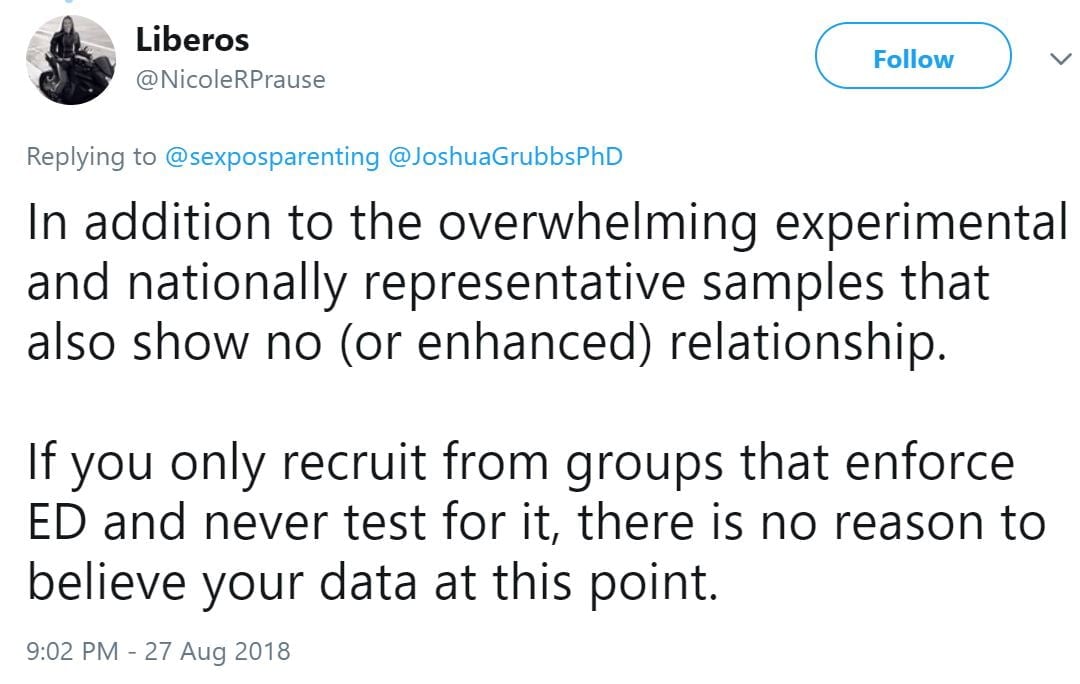
Again, there have been NO “experimental” studies debunking porn induced ED.
—————–
Prause on Quora supporting pornography and attacking any suggestions of porn causing negative effects (before she was banned for harassing Gary Wilson). Prause falsely asserts that the effects of “sex films” (she’s the only human to use that term instead of “pornography”) are overwhelmingly positive:
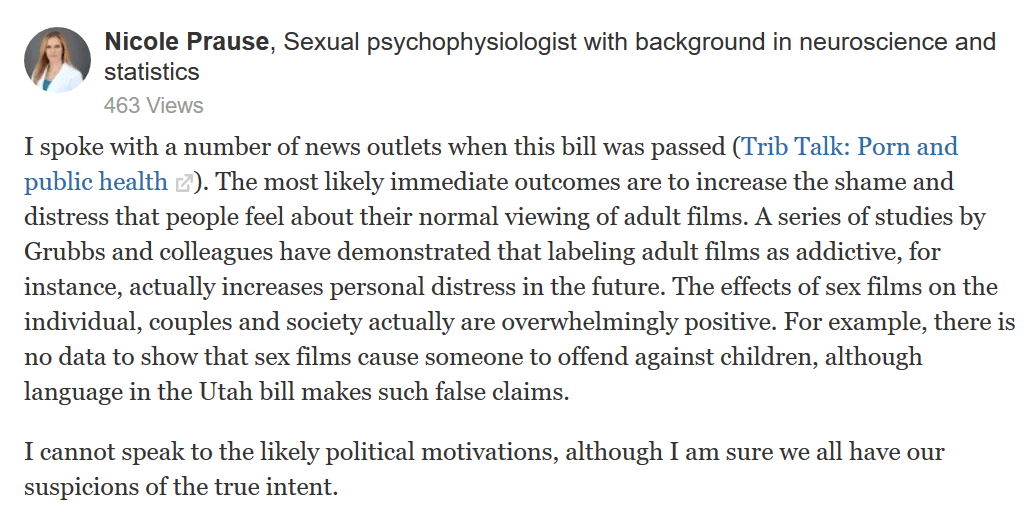
Prause cites no studies, no meta-analysis, because she’s telling a fib.
—————–
Two birds with one stone: 1) She claims to have debunked porn addiction; and 2) Anyone who disagrees with her is a misogynist:
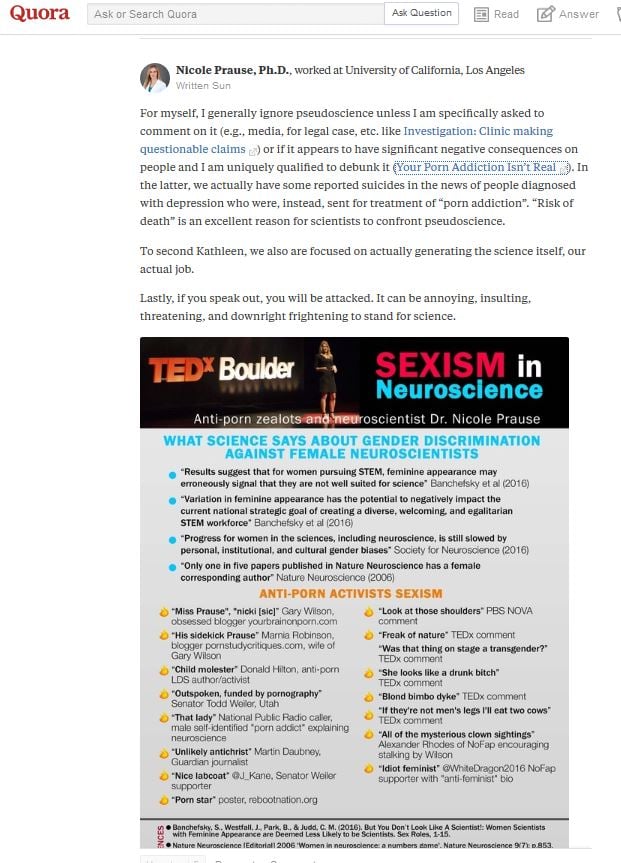
Her only evidence of “misogyny” by any person named in the info-graphic is Gary Wilson accidentally typing “Miss” in a reply to Prause asking Wilson about the size of his penis.
—————–
Attacking YBOP and Gary Wilson’s TEDx talk, while saying that porn doesn’t cause ED or addiction.

Prause had another 30 comments about Gary Wilson, before she was banned for defaming him. By the way, here’s comprehensive empirical support for “The Great Porn Experiment” (2012), which is Gary’s TEDx talk.
- Empirical support for “The Great Porn Experiment” – TEDx Glasgow (2012): Slides 1-17
- Empirical support for “The Great Porn Experiment” – TEDx Glasgow (2012): Slides 18-35
——————–
On Quora, trying to debunk porn addiction and porn-induced ED (Prause then commented 10 times, posting this answer all over Quora):
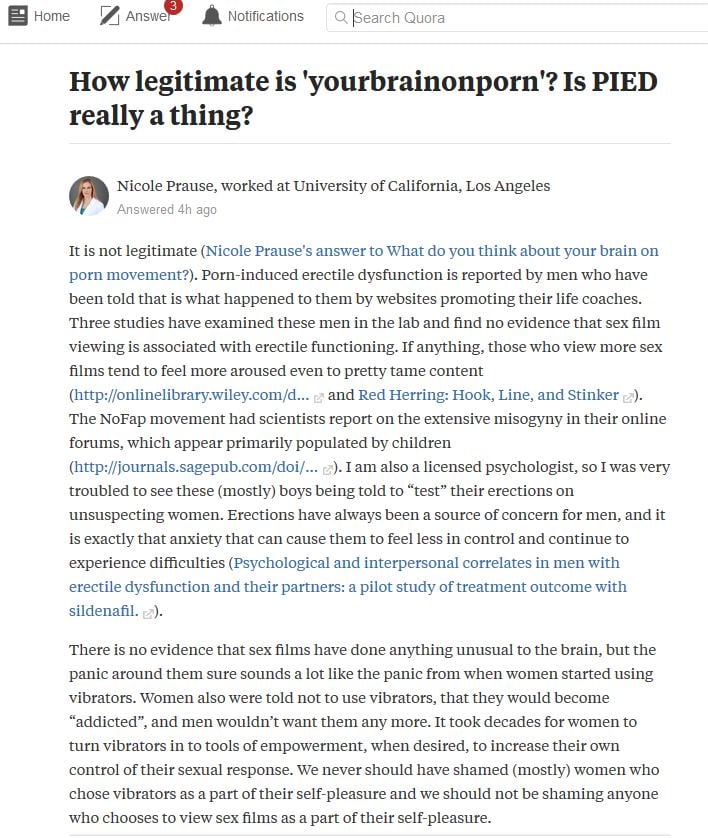
Prause cites her response to this peer-reviewed take-down of her Frankenpaper “disproving” porn-induced erectile dysfunction: Peer-reviewed analysis by Richard A. Isenberg MD (2015). If you want see the ends that Prause will go to in journals, see her unprofessional response – Dismantling the Prause & Pfaus reply to Richard A. Isenberg (“Red Herring: Hook, Line, and Stinker“)
Full expose on Prause & Pfaus: Nothing Adds Up in Dubious Study: Youthful Subjects’ ED Left Unexplained – by Gabe Deem (2015)
—————–
Another Quora post saying porn-induced ED does not exist, and falsely stating that she has data that PROVE it does not exist (she doesn’t):
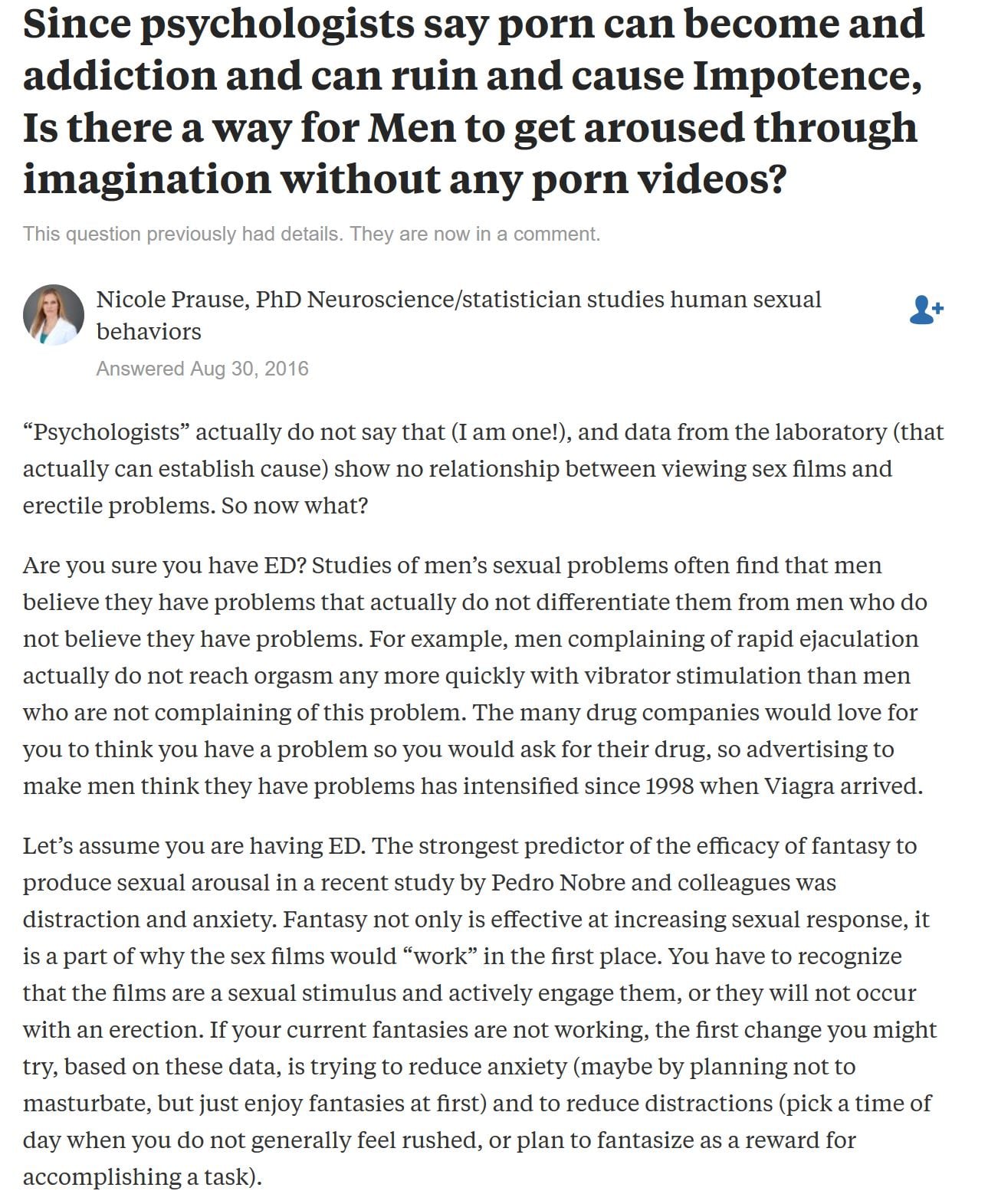
What legitimate researcher would troll Quora, answering questions of people who really need help, with nothing but her unsupported propaganda?
—————–
On Quora, supporting the industry’s agenda, while definitively stating that porn use is “overwhelmingly positive” for us all:
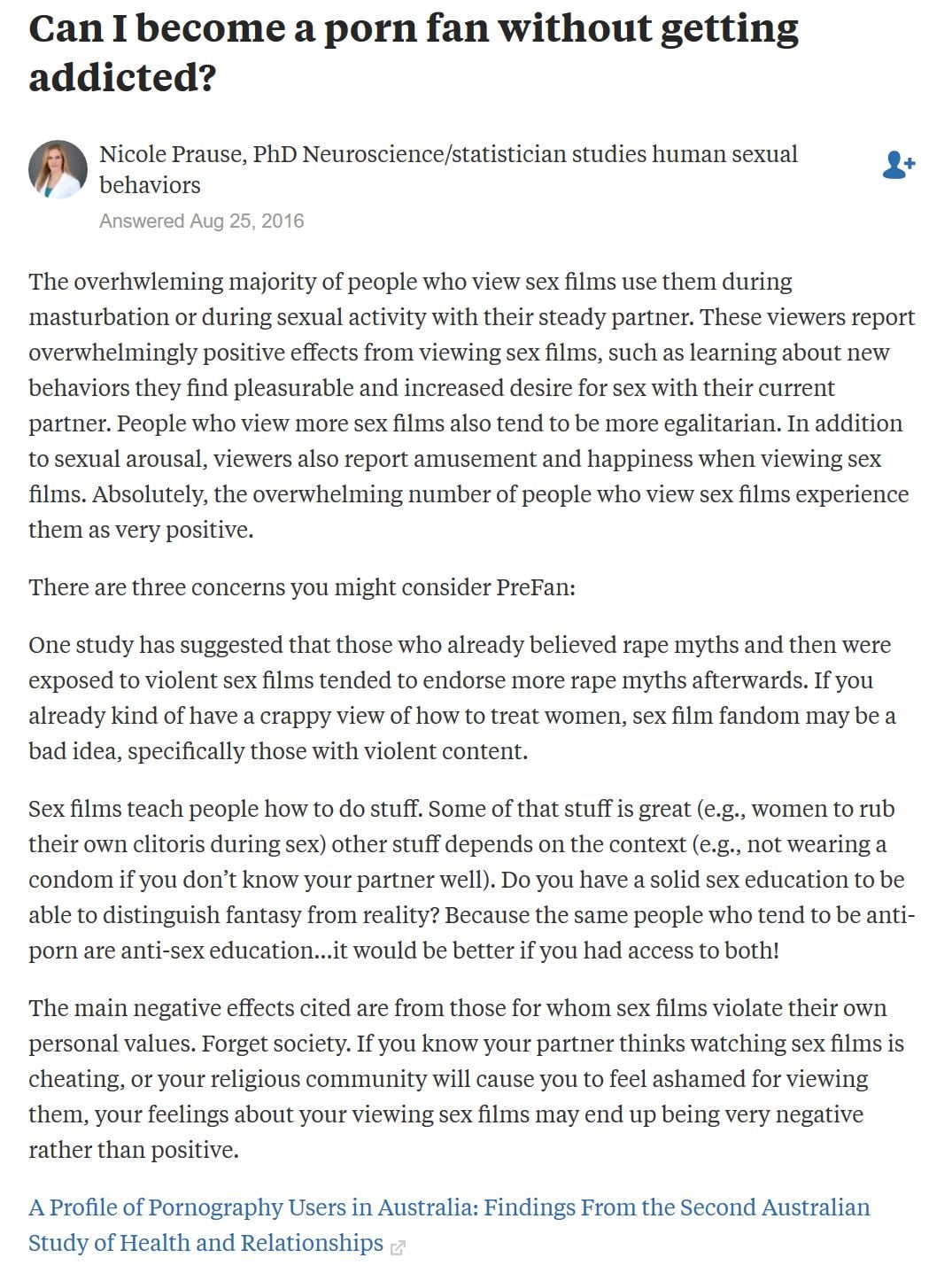
Prause links to one of her cherry-picked Aussie studies: A Profile of Pornography Users in Australia: Findings From the Second Australian Study of Health and Relationships (2016). In the past, Prause has claimed that only 2% of participants felt that porn was leading to adverse effects. In reality, 17% of males & females aged 16-30 reported that using pornography had a bad effect on them.
Prause’s claims about porn viewers being more egalitarian were only reported in a solitary study by a Prause collaborator, Taylor Kohut: Critique of “Is Pornography Really about “Making Hate to Women”? Pornography Users Hold More Gender Egalitarian Attitudes Than Nonusers in a Representative American Sample” (2016).
Taylor Kohut framed egalitarianism as: (1) Support for abortion, (2) Feminist identification, (3) Women holding positions of power, (4) Belief that family life suffers when the woman has a full-time job, and oddly enough (5) Holding more negative attitudes toward the traditional family. Secular populations, which tend to be more liberal, have far higher rates of porn use than religious populations. By choosing these criteria and ignoring endless other variables, lead author Taylor Kohut knew he would end up with porn users scoring higher on his study’s strategically chosen criteria for what constitutes “egalitarianism.” Then he chose a title that spun it all.
In reality, Kohut’s findings are contradicted by nearly every other published study (see this list of over 25 studies linking porn use to sexist attitudes, objectification and less egalitarianism). An excerpt from this 2016 review of the literature: Media and Sexualization: State of Empirical Research, 1995–2015.:
Sexually objectifying portrayals of women are a frequent occurrence in mainstream media, raising questions about the potential impact of exposure to this content on others’ impressions of women and on women’s views of themselves. The goal of this review was to synthesize empirical investigations testing effects of media sexualization. The focus was on research published in peer-reviewed, English-language journals between 1995 and 2015. A total of 109 publications that contained 135 studies were reviewed. The findings provided consistent evidence that both laboratory exposure and regular, everyday exposure to this content are directly associated with a range of consequences, including higher levels of body dissatisfaction, greater self-objectification, greater support of sexist beliefs and of adversarial sexual beliefs, and greater tolerance of sexual violence toward women. Moreover, experimental exposure to this content leads both women and men to have a diminished view of women’s competence, morality, and humanity.
That’s Prause: trolling social media outlets with a single flawed, cherry-picked study, while omitting every other study published on the subject.
—————–
On Quora, supporting the industry’s agenda, while definitively stating that porn use is “overwhelmingly positive” for us all:
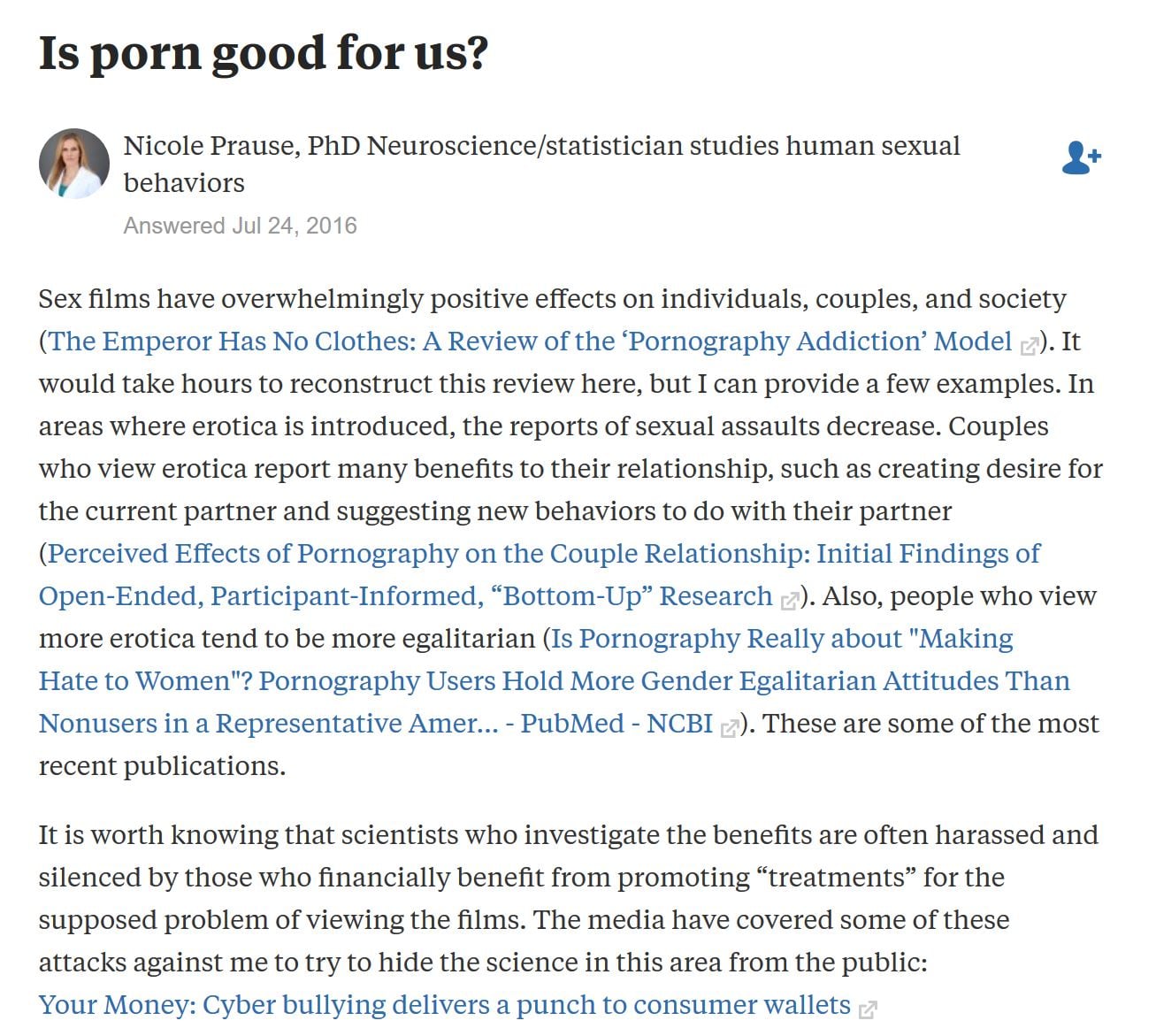
Prause cited 3 papers to support her assertions that porn use has overwhelming positive effects (not true):
1) Ley & her 2014 narrative review (not a genuine review of literature). The following is a very long analysis of paper #3, which goes line-by-line, showing all the shenanigans Ley & Prause incorporated in their “review”: The Emperor Has No Clothes: A Fractured Fairytale Posing As A Review. It completely dismantles the so-called review, and documents dozens of misrepresentations of the research they cited. The most shocking aspect of the Ley review is that it omitted ALL the many studies that reported negative effects related to porn use or found porn addiction! Yes, you read that right. While purporting to write an “objective” review, Ley & Prause justified omitting hundreds of studies on the grounds that these were correlational studies. Guess what? Virtually all studies on porn are correlational, even those they cited, or misused!
2) Taylor Kohut’s “Is Pornography Really about “Making Hate to Women”? Pornography Users Hold More Gender Egalitarian Attitudes Than Nonusers in a Representative American Sample” (2016). Debunked above.
3) Taylor Kohut’s skewed qualitative paper, which is thoroughly dismantled here: Perceived Effects of Pornography on the Couple Relationship: Initial Findings of Open-Ended, Participant-Informed, “Bottom-Up” Research (2016), Taylor Kohut, William A. Fisher, Lorne Campbell. Was the intention behind this Taylor Kohut study to (attempt to) counter the nearly 60 studies linking porn use to negative effects on relationships? The two main problems with this study are:
- It does not contain a representative sample. Whereas most studies show that a tiny minority of females in long-term relationships use porn, in this study 95% of the women used porn on their own. And 83% of the women had used porn since the beginning of the relationship (in some cases for years). Those rates are higher than in various studies in college-aged men! In other words, the researchers appear to have skewed their sample to produce the results they were seeking. The reality? Cross-sectional data from the largest nationally representative US survey (General Social Survey) reported that only 2.6% of married women had visited a “pornographic website” in the last month. Data from 2000, 2002, 2004 (for more see Pornography and Marriage, 2014).
- The study used “open ended” questions where the subject could ramble on and on about porn. Then the researchers read the ramblings and decided, after the fact, what answers were “important,” and how to present (spin?) them in their paper. In other words, the study did not correlate porn use with any variable assessing sexual or relationship satisfaction. Then the researchers had the gall to suggest that all the other studies on porn and relationships, which employed more established, scientific methodology and straightforward questions about porn’s effects were flawed. Is this really science? The lead author’s website and his attempt at fundraising raise a few questions.
In reality, almost 60 studies have linked porn use to poorer sexual and relationship satisfaction (In the list of studies 1 & 2 are meta-analyses, study #3 had porn users attempt to quit using porn for 3 weeks, and studies 4 through 8 are longitudinal). While a few studies have correlated greater porn use in females to slightly greater sexual satisfaction, the vast majority of studies have not (see this list: Porn studies involving female subjects: Negative effects on arousal, sexual satisfaction, and relationships). As far as we know all studies involving males have reported porn use linked to poorer sexual or relationship satisfaction.
—————–
On Quora, porn use is overwhelmingly positive, again:
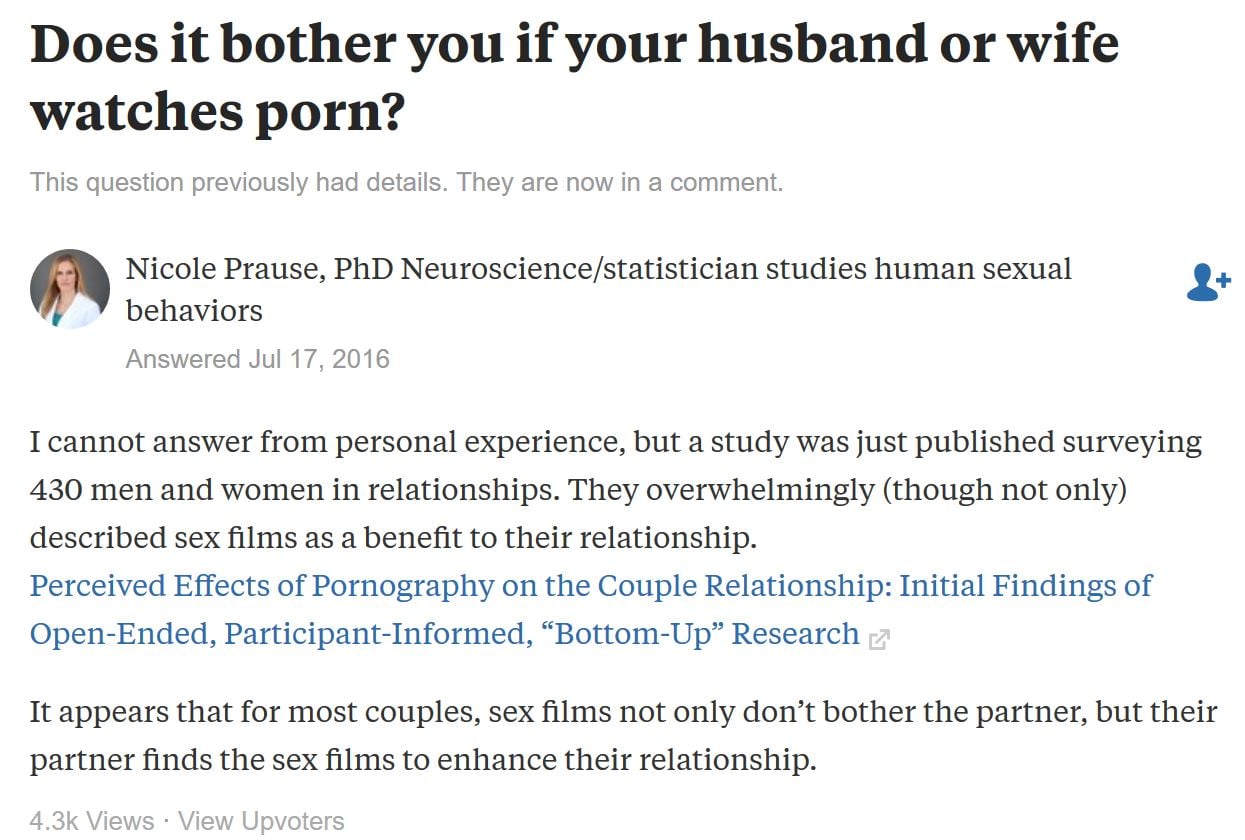
Citing the same non-quantitative, cherry-picked study debunked in the previous section: Perceived Effects of Pornography on the Couple Relationship: Initial Findings of Open-Ended, Participant-Informed, “Bottom-Up” Research (2016), Taylor Kohut, William A. Fisher, Lorne Campbell.
—————–
On Quora she tells the world that her lone, flawed, 2015 study debunked porn addiction:
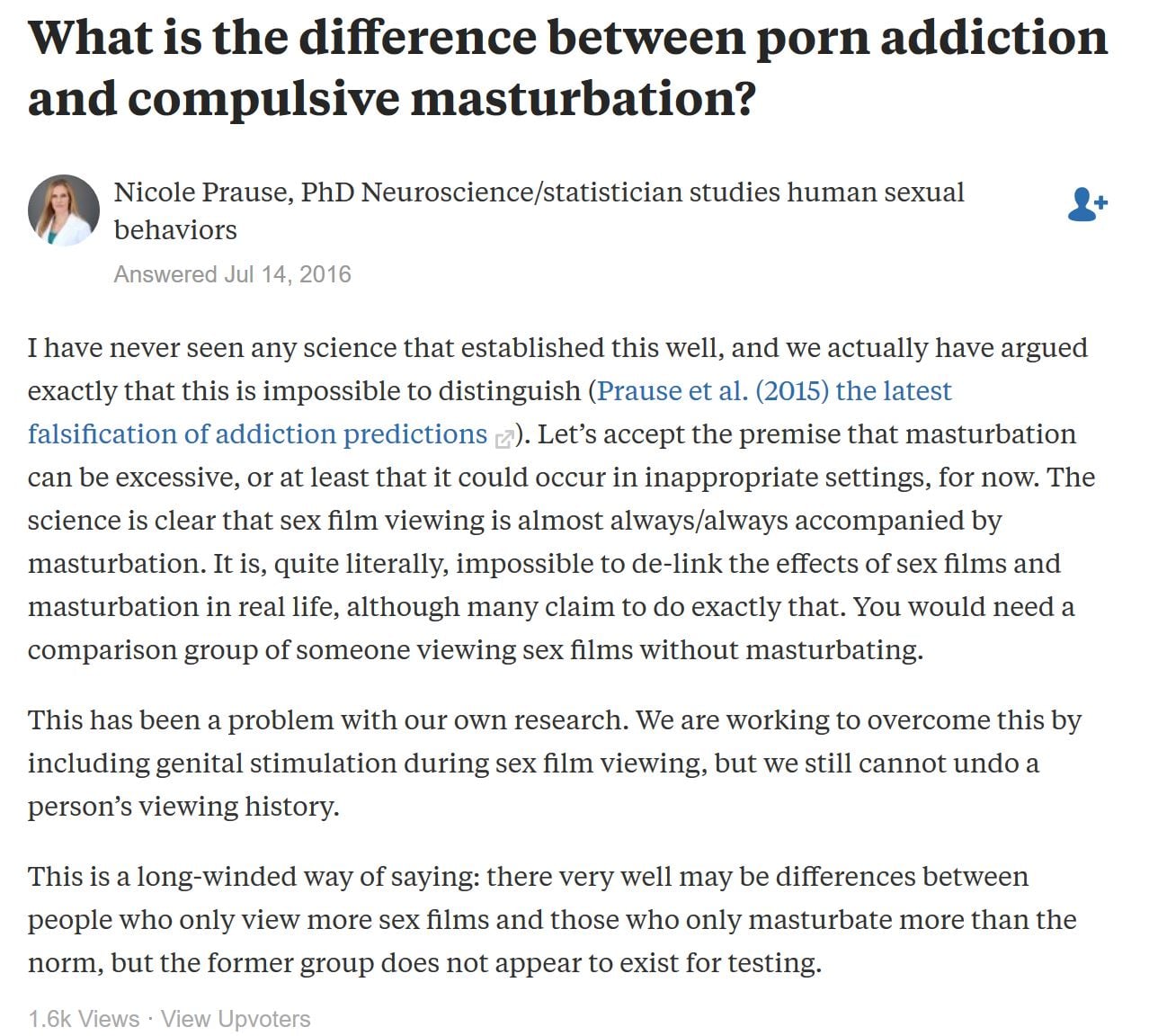
Prause falsified nothing in her short response to neuroscientist Matuesz Gola’s critical analysis of their 2015 EEG study (Prause et al., 2015). The YBOP critique dismantles Prause et al. line by line, claim by claim, citation by citations: Critique of: Letter to the editor “Prause et al. (2015) the latest falsification of addiction predictions“ (2016),
—————–
On Quora, attacking porn addiction and porn-induced sexual problems. No studies from labs have shown that “sex films’ are not addictive. All neurological studies support the addiction model.
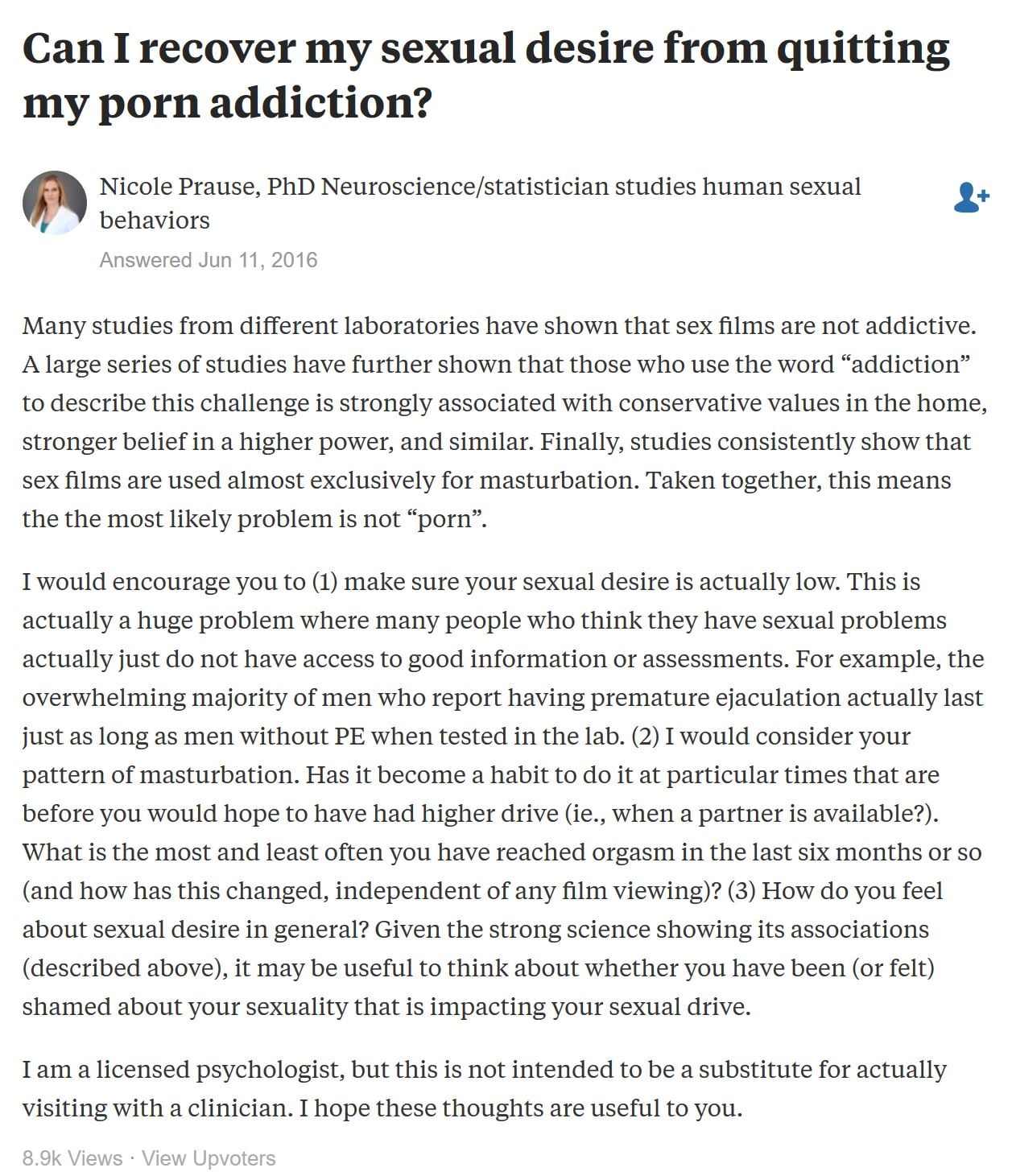
Reality? 27 studies linking porn use/porn addiction to sexual problems and lower arousal to sexual stimuli. The first 5 studies in the list demonstrate causation, as participants eliminated porn use and healed chronic sexual dysfunctions.
—————–
On Quora, attacking porn-induced sexual problems.
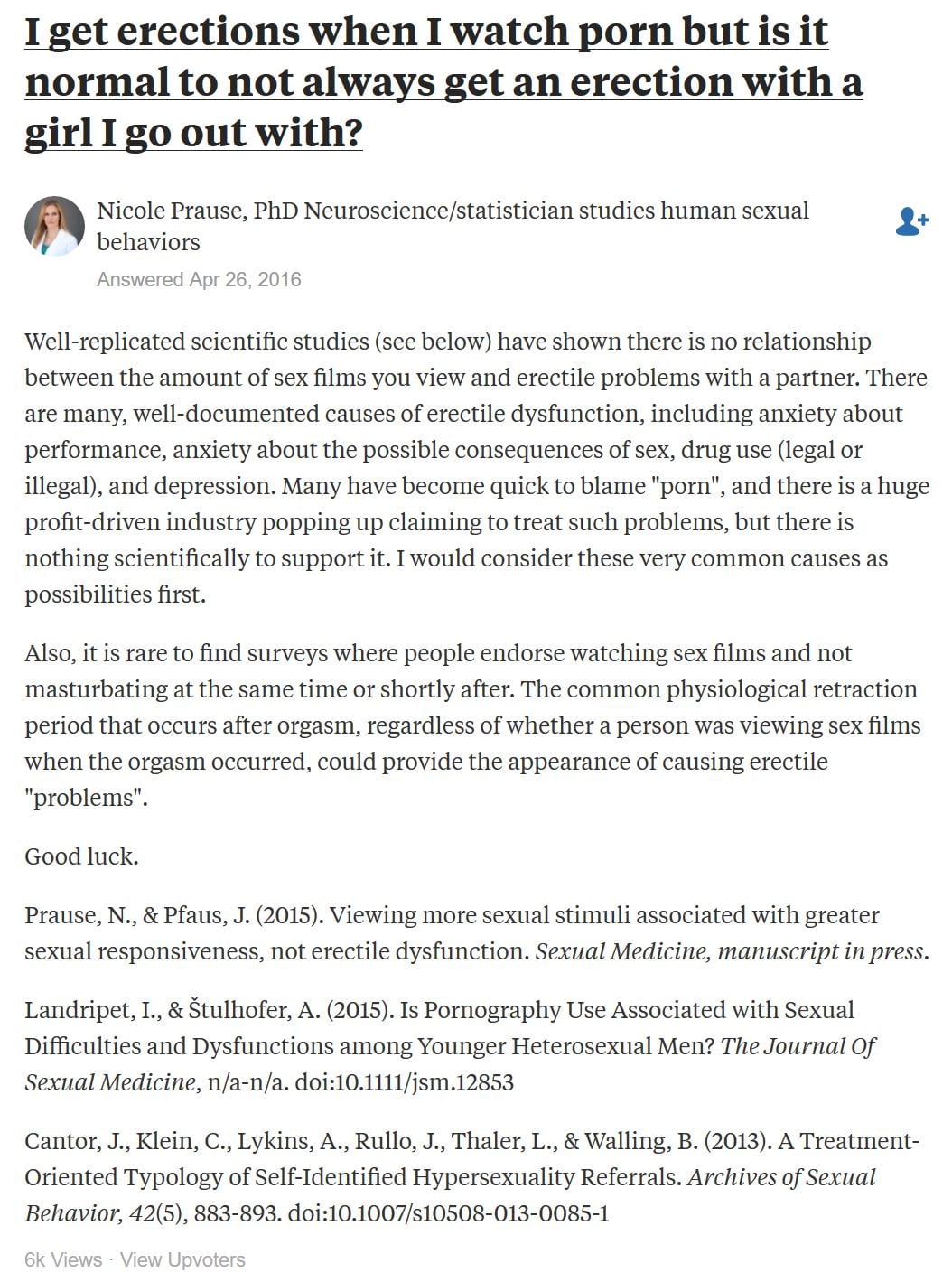
The 3 studies she cited did not find what Prause claims:
1) Prause & Pfaus 2015 (described above). Prause & Pfaus did not support its claims, as these 2 critiques expose:
- In the same journal as the paper: Letter to the editor by Richard A. Isenberg MD (2015)
- Very extensive lay critique: Nothing Adds Up in Dubious Study: Youthful Subjects’ ED Left Unexplained (2015)
2) Prause claimed that Landripet & Štulhofer, 2015 found no relationships between porn use and sexual problems. This is not true, as documented in both this YBOP critique and the review of the literature. Also, Landripet & Štulhofer’s paper omitted three significant correlations they presented to a European conference (excerpts from their abstract):
Reporting a preference for specific pornographic genres were significantly associated with erectile (but not ejaculatory or desire-related) male sexual dysfunction.
Increased pornography use was slightly but significantly associated with decreased interest for partnered sex and more prevalent sexual dysfunction among women.
Like Prause & Pfaus 2015 this paper was criticized in the peer-reviewed literature: Comment on: Is Pornography Use Associated with Sexual Difficulties and Dysfunctions among Younger Heterosexual Men? by Gert Martin Hald, PhD
3) Citing this next paper really exposes Prause for what she is: Sutton, Stratton, Pytyck, Kolla, & Cantor, 2015 was a study on men (average age 41.5) seeking treatment for hypersexuality disorders, such as paraphilias and chronic masturbation or adultery. 27 were classified as “avoidant masturbators,” meaning they masturbated (typically with porn use) one or more hours per day or more than 7 hours per week. 71% of the compulsive porn users reported sexual functioning problems, with 33% reporting delayed ejaculation (often a precursor to porn-induced ED). What sexual dysfunction do 38% of the remaining men have? The study doesn’t say, and the authors have ignored repeated requests for details. Bottom line: Prause is citing a study where 71% of the compulsive porn users reported sexual problems – as evidence that porn use doesn’t cause sexual performance problems!
—————–
On Quora, saying her lone, flawed study debunked porn addiction (Prause et al., 2015):
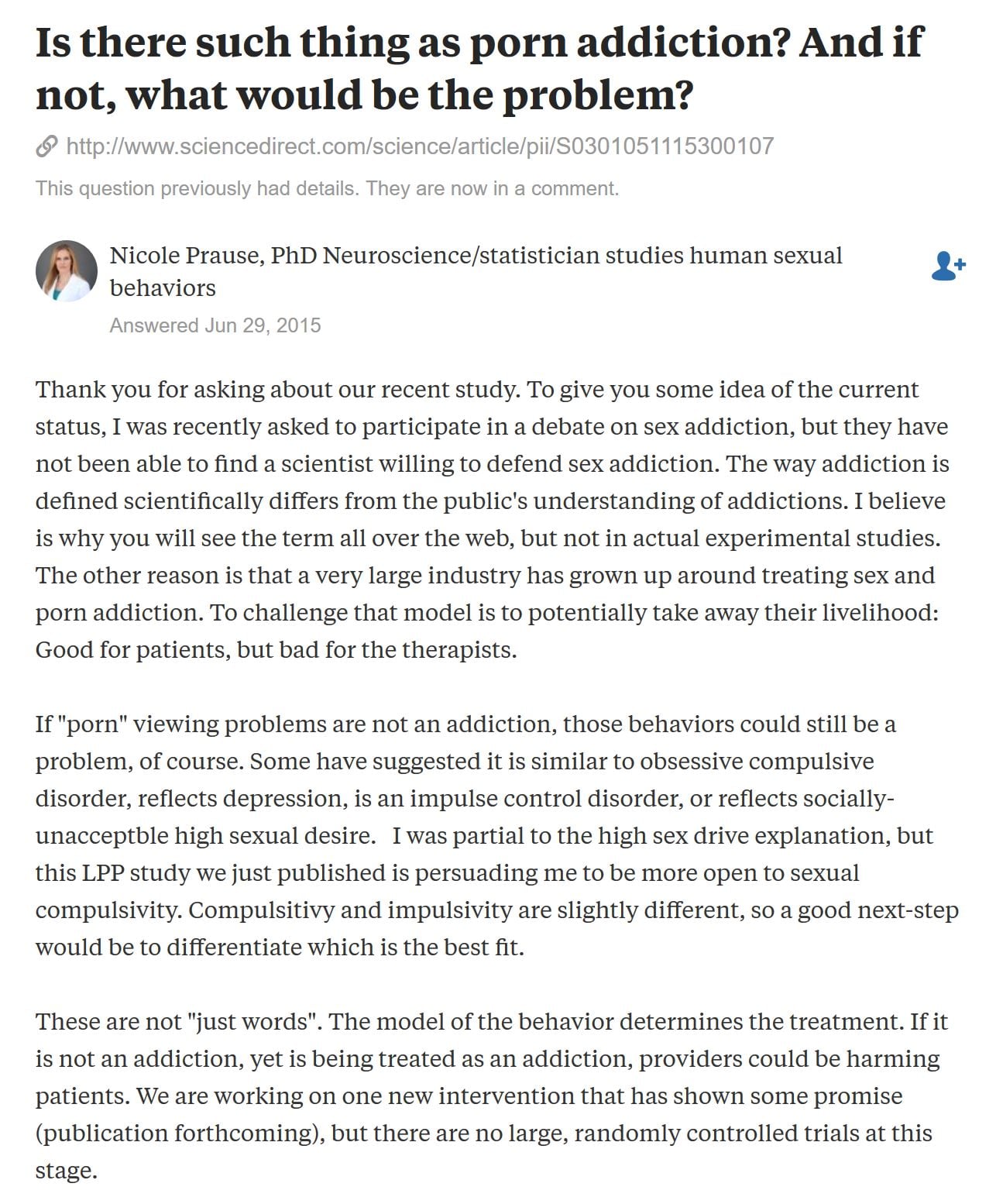
What legitimate scientist would claim that their lone, anomalous study has debunked a well established field of study? In reality, the findings of Prause et al. 2015 align perfectly with Kühn & Gallinat (2014), which found that more porn use correlated with less brain activation in response to pictures of vanilla porn. Prause et al. findings also align with Banca et al. 2015 which is #13 in this list. Moreover, another EEG study found that greater porn use in women correlated with less brain activation to porn. Lower EEG readings mean that subjects are paying less attention to the pictures. Put simply, frequent porn users were desensitized to static images of vanilla porn. They were bored (habituated or desensitized). See this extensive YBOP critique. Ten peer-reviewed papers agree that this study actually found desensitization/habituation in frequent porn users (consistent with addiction): Peer-reviewed critiques of Prause et al., 2015
Because this paper reported less brain activation to vanilla porn (pictures) related to greater porn use, it is listed as supporting the hypothesis that chronic porn use down regulates sexual arousal. Put simply, chronic porn users were bored by static images of ho-hum porn (its findings parallel Kuhn & Gallinat., 2014). These findings are consistent with tolerance, a sign of addiction. Tolerance is defined as a person’s diminished response to a drug or stimulus that is the result of repeated use.
Because frequent porn users had lower EEG readings than controls, lead author Nicole Prause claims her anomalous study falsifies the porn addiction model. Prause proclaimed that her EEG readings assessed “cue-reactivity,” rather than habituation. Even if Prause were correct she conveniently ignores the gaping hole in her “falsification” assertion: Regardless of her claims about Prause et al. 2015 finding less cue-reactivity in frequent porn users, 26 other neurological studies have reported cue-reactivity or cravings (sensitization) in compulsive porn users: 1, 2, 3, 4, 5, 6, 7, 8, 9, 10, 11, 12, 13, 14, 15, 16, 17, 18, 19, 20, 21, 22, 23, 24, 25, 26, 27. Science doesn’t go with the lone, anomalous study hampered by serious methodological flaws; science goes with the preponderance of evidence (which does not support her claims).
—————–
Tweets an article based on Prause’s lone, flawed, 2015 study she claimed “debunked” porn addiction:
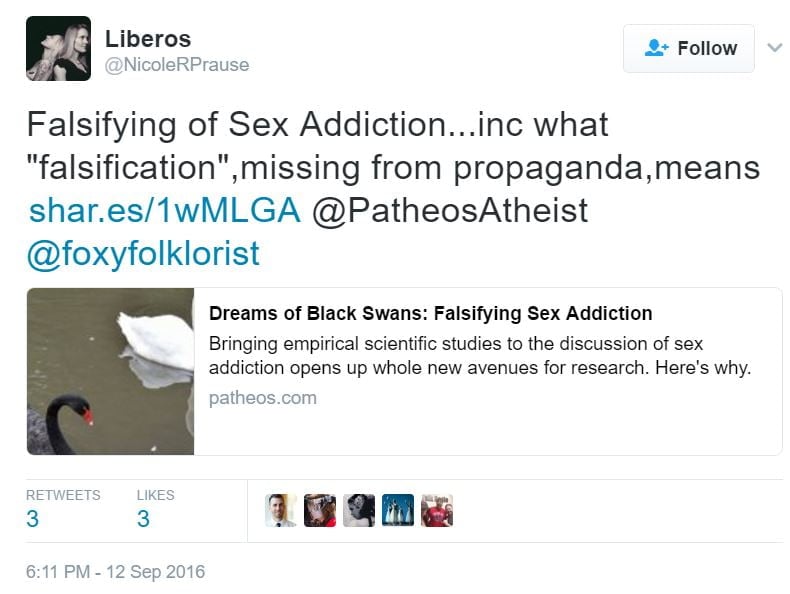
Ten Peer-reviewed critiques of Prause et al., 2015. All agree that Prause actually found desensitization or habituation – consistent with addiction.
—————–
Tweeting Ley’s old book, which falsifies nothing.
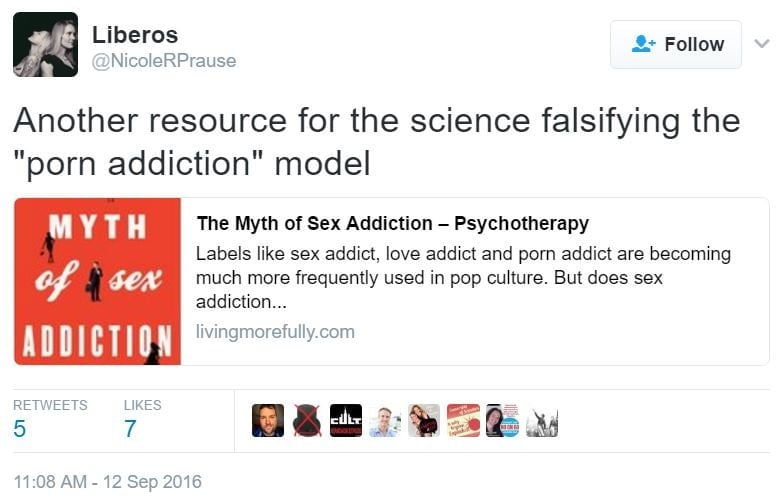
—————–
Tries to blames masturbation, instead of porn, for negative effects:
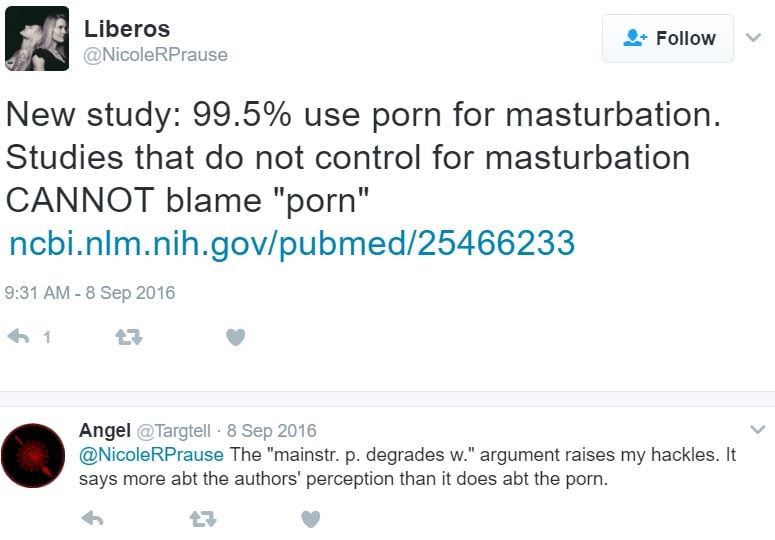
For more, see – Sexologists deny porn-induced ED by claiming masturbation is the problem (2016)
—————–
Prause et al., 2015, again which actually support the porn addiction model!
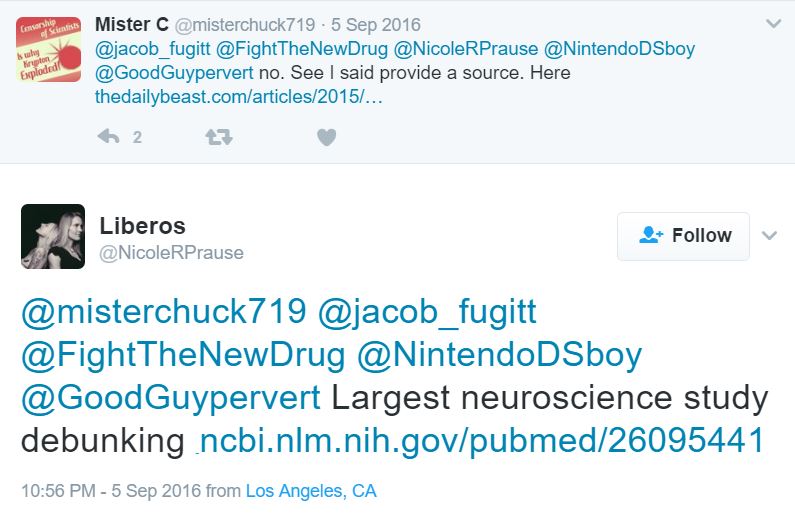
—————–
Here she claims that believing in porn addiction is analogous to believing vaccines cause autism:
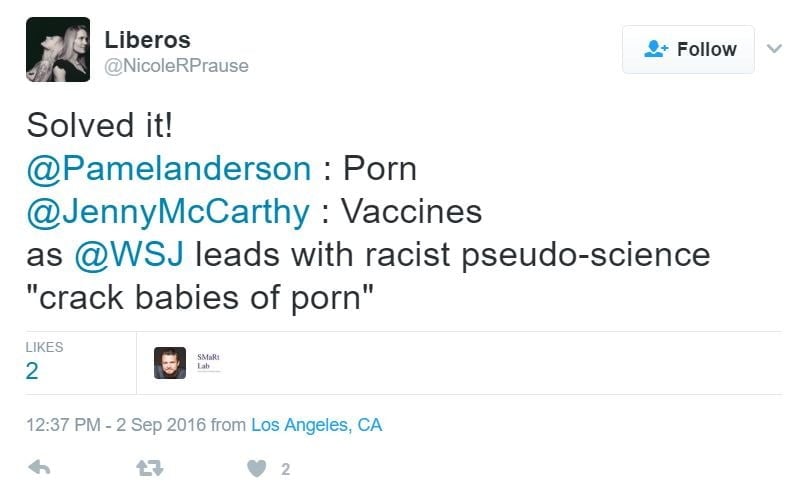
—————–
Doesn’t debunk a thing.

Article’s main argument is that greater porn use has led to fewer rapes. Claim is patently false as documented here: Rape rates are on the rise, so ignore the pro-porn propaganda (2018)
—————–
Another attack on Pamela Anderson by Daily Beast, which has a long history of pumping out counter articles within a day of porn-related news:
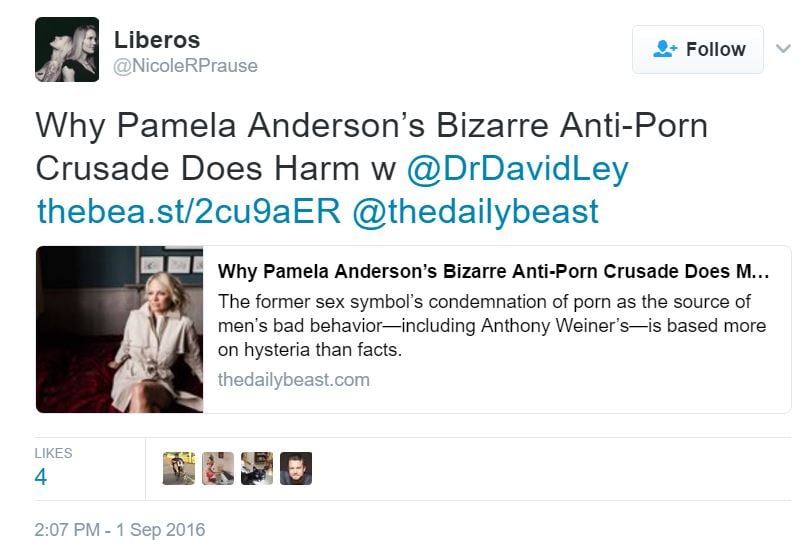
—————–
Attacks a study she doesn’t like:
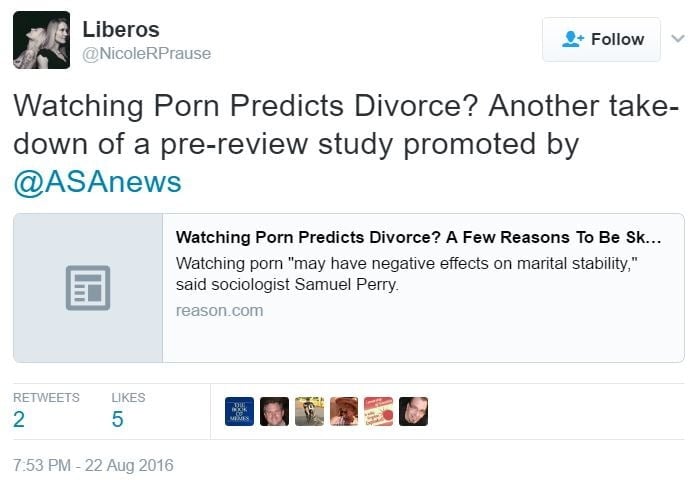
Problem is, the findings match almost 80 studies linking porn use to less sexual and relationship satisfaction. Get this: all studies involving males have reported more porn use linked to poorer sexual or relationship satisfaction.)
—————–
Attacking and spinning above study:
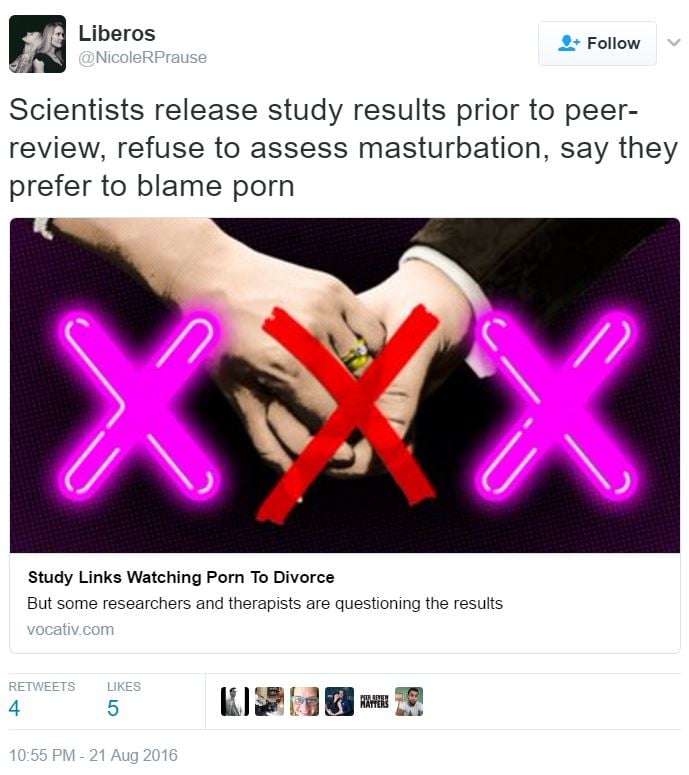
—————–
This Maxim article was published to counter NHS sex therapists and doctors in these 2 articles:
- How internet porn is creating a generation of men desensitised to real life sex. Dr Andrew Smiler, Dr Angela Gregory (2016)
- BBC: Easy access to online porn is ‘damaging’ men’s health, says NHS therapist. Psychosexual therapist Angela Gregory (2016)
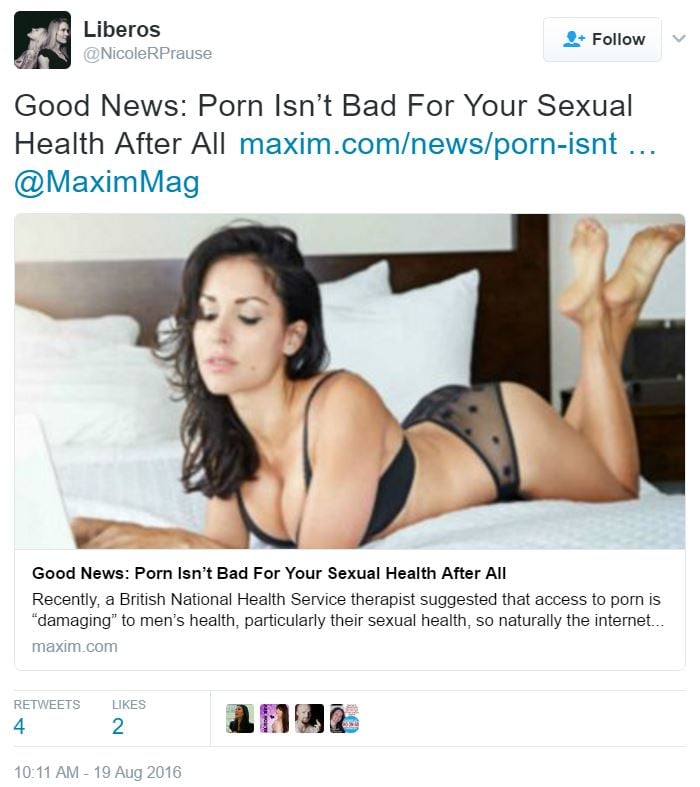
Article only cites one study to support the claim that porn isn’t bad for you – the most egregious study ever published on porn – using a suspect instrument called the PCES. YBOP thoroughly exposes what the researchers did to get their results: Self-Perceived Effects of Pornography Consumption (2008), Hald GM, Malamuth NM (the PCES)
And here: Critique of the “Pornography Consumption Effect Scale,” by Gary Wilson (7-minute video presentation)
—————–
More unsupported propaganda by a college student:
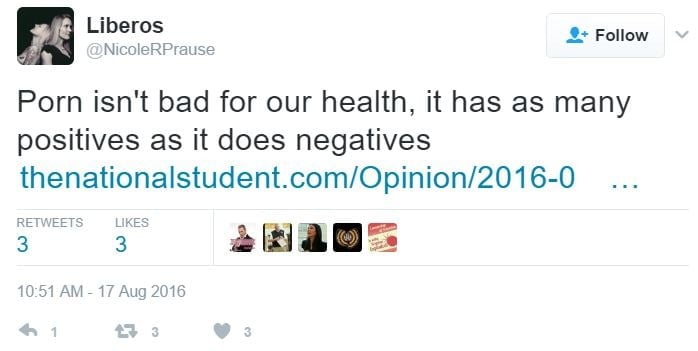
Reality:
- Porn and sexual problems? This list contains 45 studies linking porn use/porn addiction to sexual problems and lower arousal to sexual stimuli.
- Porn’s effects on relationships? Almost 80 studies link porn use to less sexual and relationship satisfaction.
- Porn use affecting emotional and mental health? Over 55 studies link porn use to poorer mental-emotional health & poorer cognitive outcomes.
—————–
Prause attacking NHS experts, yet she doesn’t treat patients:
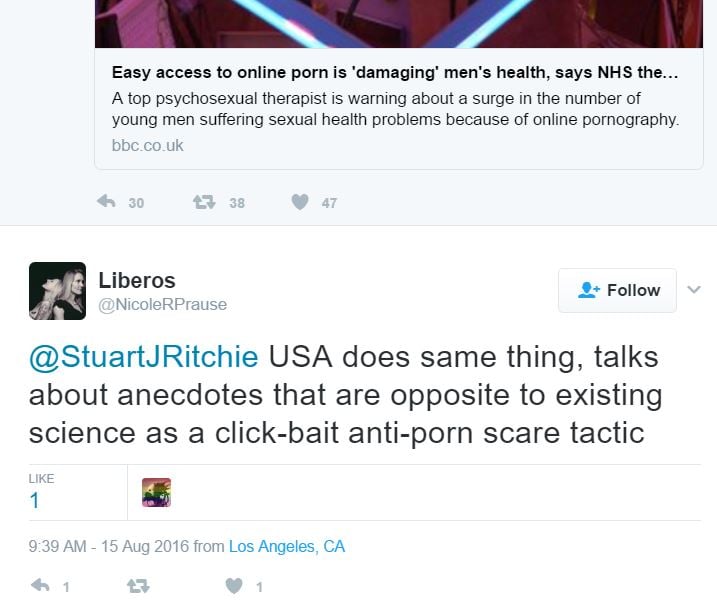
Prause upset by these articles:
- How internet porn is creating a generation of men desensitised to real life sex. Dr Andrew Smiler, Dr Angela Gregory (2016)
- BBC: Easy access to online porn is ‘damaging’ men’s health, says NHS therapist. Psychosexual therapist Angela Gregory (2016)
—————–
Attacking NHS experts, using Taylor Kohut’s skewed qualitative paper, which is thoroughly dismantled here: Perceived Effects of Pornography on the Couple Relationship: Initial Findings of Open-Ended, Participant-Informed, “Bottom-Up” Research (2016), Taylor Kohut, William A. Fisher, Lorne Campbell.
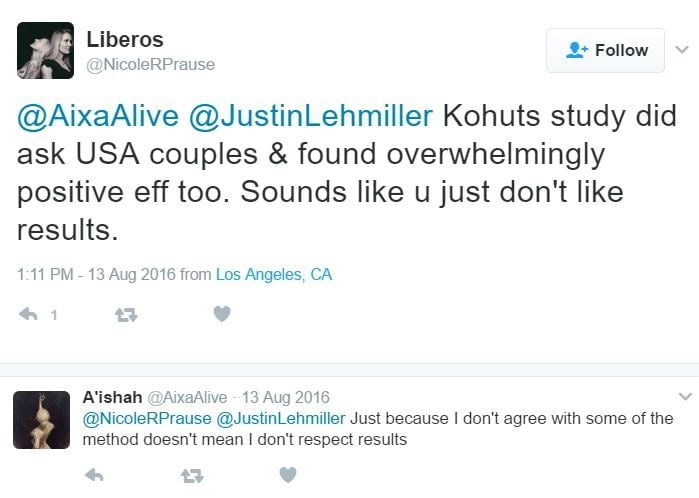
The intention behind Kohut’s study was to counter the over 80 studies linking porn use to negative effects on relationships, with a qualitative study. That’s all Prause has to tweet.
—————–
One of Prause’s most ridiculous claims is that viewing puppies play is neurological and hormonally no different than masturbating internet porn:
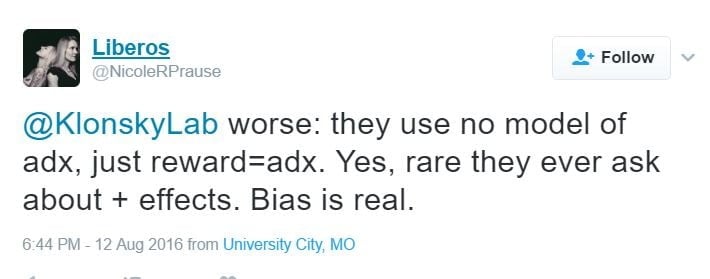
No neuroscientist agrees with her assertion that watching puppies is neruologically no diferent than viewing streaming porn. Don Hilton, MD wrote an article debunking this and other baseless talking points: Correcting Misunderstandings About Neuroscience and Problematic Sexual Behaviors. Tweeting to same person that “they” (neuroscientists who publish studies on porn users and sex addicts) use no model. She falsey asserts that “reward = addiction”.
Utterly ridiculous as the four major brain changes induced by addiction are described by George F. Koob and Nora D. Volkow in their landmark review. Koob is the Director of the National Institute on Alcohol Abuse and Alcoholism (NIAAA), and Volkow is the director of the National Institute on Drug Abuse (NIDA). Their review was published in The New England Journal of Medicine: Neurobiologic Advances from the Brain Disease Model of Addiction (2016). The paper describes the major brain changes involved with both drug and behavioral addictions, while stating in its opening paragraph that sex addiction exists:
We conclude that neuroscience continues to support the brain disease model of addiction. Neuroscience research in this area not only offers new opportunities for the prevention and treatment of substance addictions and related behavioral addictions (e.g., to food, sex, and gambling)….
The Volkow & Koob paper outlined four fundamental addiction-caused brain changes, which are: 1) Sensitization, 2) Desensitization, 3) Dysfunctional prefrontal circuits (hypofrontality), 4) Malfunctioning stress system. All 4 of these brain changes have been identified among the many neurological studies listed on this page:
- Studies reporting sensitization (cue-reactivity & cravings) in porn users/sex addicts: 1, 2, 3, 4, 5, 6, 7, 8, 9, 10, 11, 12, 13, 14, 15, 16, 17, 18, 19, 20, 21, 22, 23, 24, 25, 26, 27.
- Studies reporting desensitization or habituation (resulting in tolerance) in porn users/sex addicts: 1, 2, 3, 4, 5, 6, 7, 8.
- Studies reporting poorer executive functioning (hypofrontality) or altered prefrontal activity in porn users/sex addicts: 1, 2, 3, 4, 5, 6, 7, 8, 9, 10, 11, 12, 13, 14, 15, 16, 17, 18, 19.
- Studies indicating a dysfunctional stress system in porn users/sex addicts: 1, 2, 3, 4, 5.
—————–
One of Prause’s favorite studies that she regularly tweets, and blatantly misrepresents:
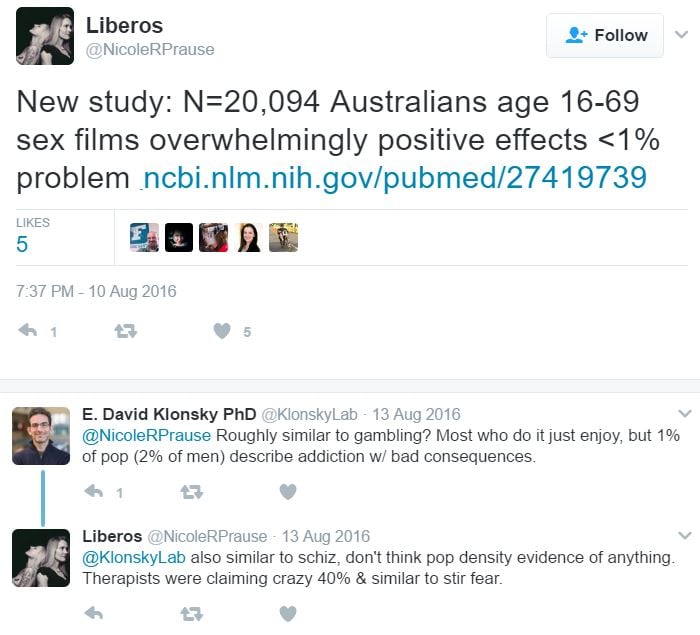
Prause links to one her favorite cherry-picked Aussie studies: A Profile of Pornography Users in Australia: Findings From the Second Australian Study of Health and Relationships (2016). In reality, 17% of males & females aged 16-30 reported that using pornography had a bad effect on them. Table from study:

—————–
Attacking a study she does not like – which showed escalation of porn use over time: Deviant Pornography Use: The Role of Early-Onset Adult Pornography Use and Individual Differences” (2016).
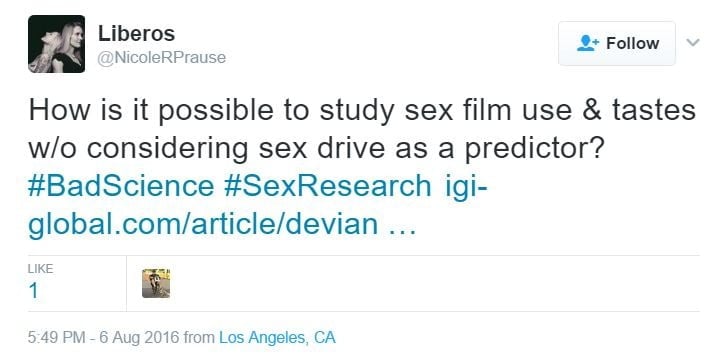
Excerpts from study:
Results indicated that adult + deviant pornography users scored significantly higher on openness to experience and reported a significantly younger age of onset for adult pornography use compared to adult-only pornography users.
Finally, the respondents’ self-reported age of onset for adult pornography significantly predicted adult-only vs. adult + deviant pornography use. That is today, adult + deviant pornography users selfreported a younger age of onset for nondeviant (adult-only) pornography compared to the adult-only pornography users. Overall, these findings support the conclusion drawn by Seigfried-Spellar and Rogers (2013) that Internet pornography use may follow a Guttman-like progression in that deviant pornography use is more likely to occur after the use of nondeviant adult pornography.
Many more studies reporting findings consistent with escalation or habituation – Over 30 studies reporting findings consistent with escalation of porn use (tolerance), habituation to porn, and even withdrawal symptoms (all signs and symptoms associated with addiction).
—————–
Retweeting an XBIZ article (which was tweeted by porn producer @MOXXX)

—————–
Attacking the concept of “porn as a public health problem”:
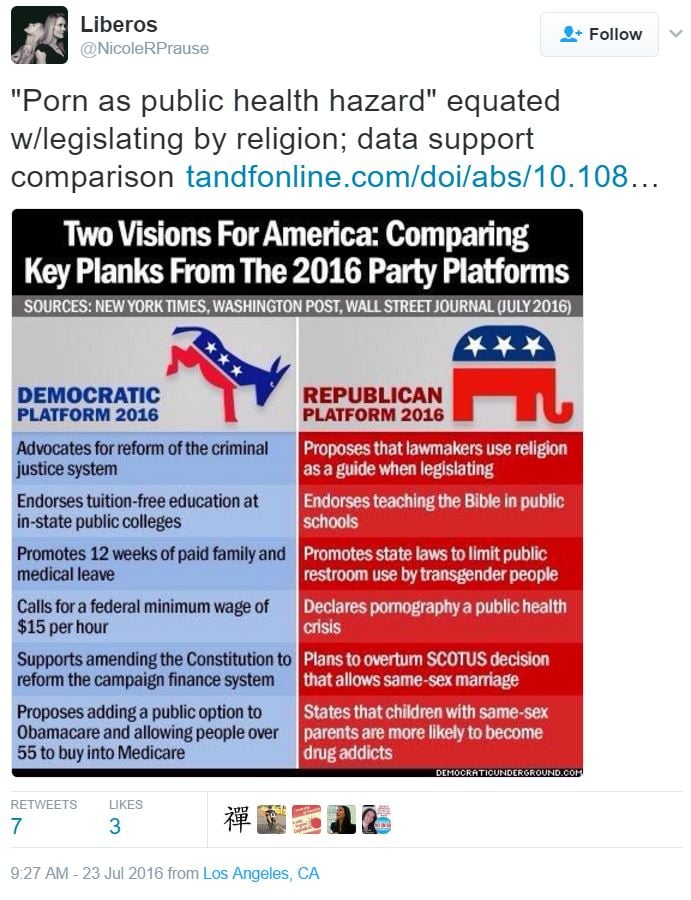
—————–
Prause tweet’s Taylor Kohut’s skewed qualitative paper, which is thoroughly dismantled here: Perceived Effects of Pornography on the Couple Relationship: Initial Findings of Open-Ended, Participant-Informed, “Bottom-Up” Research (2016), Taylor Kohut, William A. Fisher, Lorne Campbell.
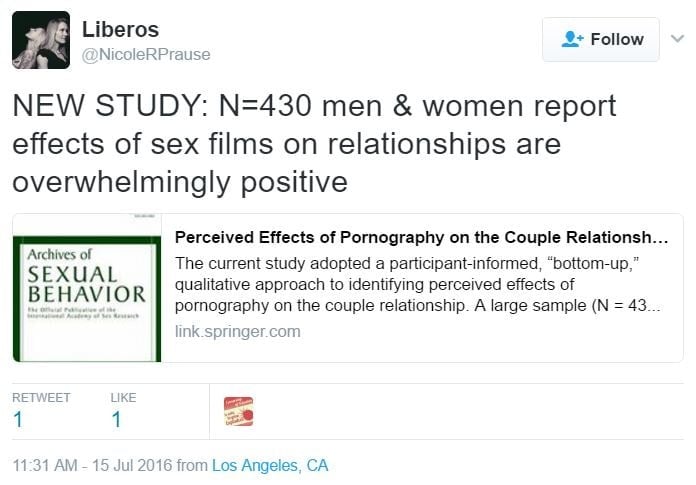
Was the intention behind this Taylor Kohut study to (attempt to) counter the nearly 60 studies linking porn use to negative effects on relationships? As far as we know all studies involving males have reported more porn use linked to poorer sexual or relationship satisfaction. While a few studies correlated greater porn use in females to better (or neutral) sexual satisfaction, most have not (see this list – Porn studies involving female subjects: Negative effects on arousal, sexual satisfaction, and relationships).
—————–
Attacking the concept of porn as a public health problem:
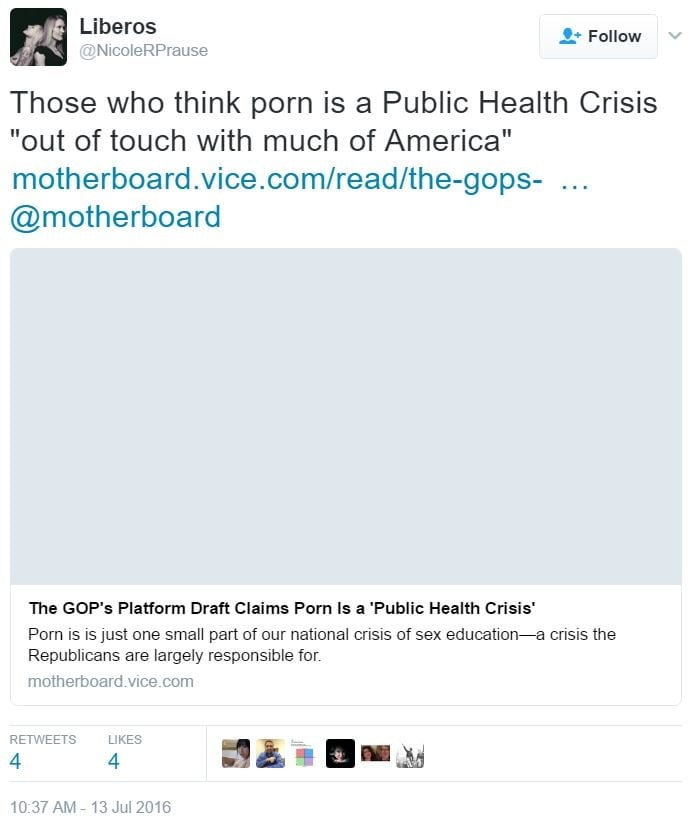
—————–
Attacking concept of porn as a public health problem:
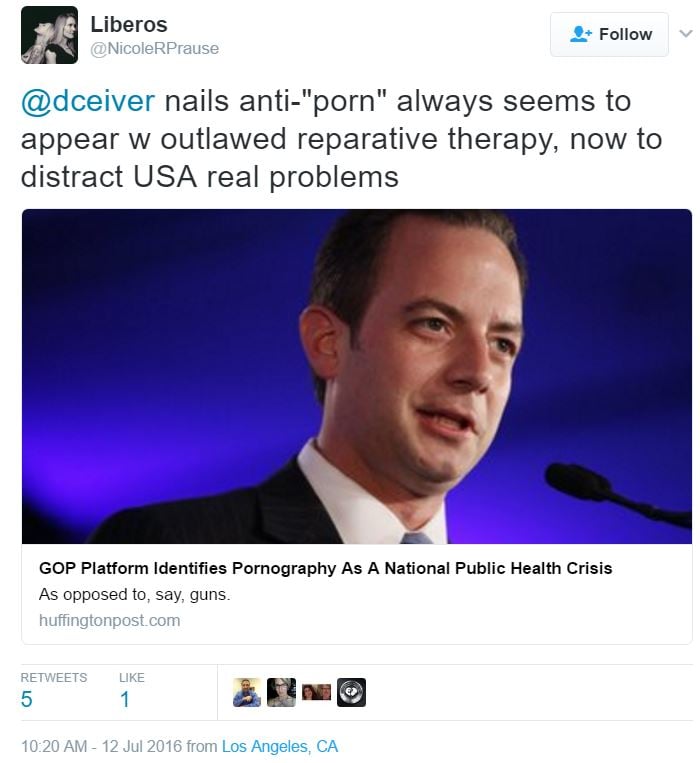
Tries to paint treating porn addiction as no different from “reparative therapy” (trying to turn gay people straight). Prause and Ley have a long history of falsely accusing sex addiction therapists of reparative therapy (including several therapists that they didn’t know were gay!): 2015 & 2016: Prause falsely accuses sex addiction therapists of reparative therapy
—————–
Tweeting an article that featured quotes by Prause, and false claims about her paper: Prause & Pfaus 2015
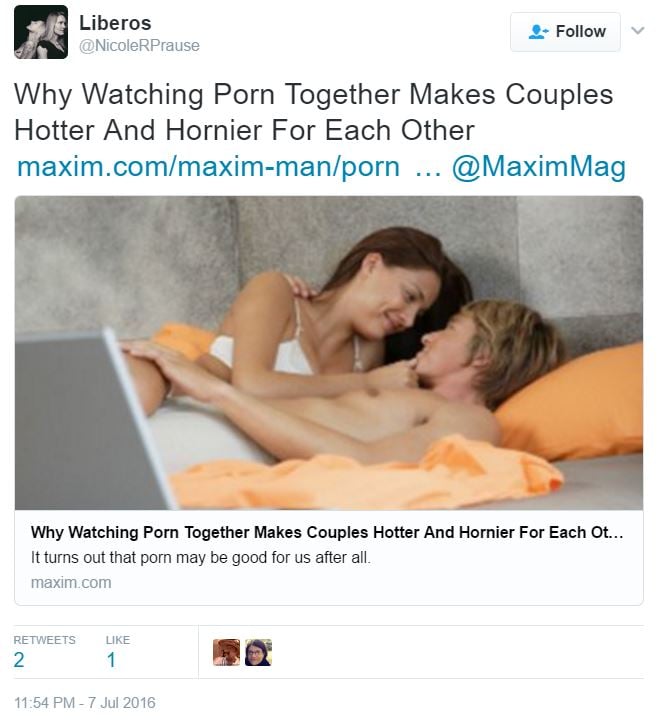
Prause & Pfaus 2015 did not support its claims, including the above claim of greater arousal with more porn use. See this formal critique – Letter to the editor by Richard A. Isenberg MD (2015), and a very extensive lay critique – Nothing Adds Up in Dubious Study: Youthful Subjects’ ED Left Unexplained (2015).
In reality, both Nicole Prause and Jim Pfaus were caught lying about their paper (which stole bits and pieces from 4 earlier Prause studies – none of which involved Pfaus). Many journalists’ articles about this study claimed that porn use led to better erections, yet that’s not what the paper found. In recorded interviews, both Nicole Prause and Jim Pfaus falsely claimed that they had measured erections in the lab, and that the men who used porn had better erections. In the Jim Pfaus TV interview Pfaus states:
We looked at the correlation of their ability to get an erection in the lab.
We found a liner correlation with the amount of porn they viewed at home, and the latencies which for example they get an erection is faster.
In this radio interview Nicole Prause claimed that erections were measured in the lab. The exact quote from the show:
The more people watch erotica at home they have stronger erectile responses in the lab, not reduced.
Yet this paper did not assess erection quality in the lab or “speed of erections.” The paper only claimed to have asked guys to rate their “arousal” after briefly viewing porn (and it’s not clear from the underlying papers that this simple self-report was even asked of all subjects). In any case, an excerpt from the paper itself admitted that:
No physiological genital response data were included to support men’s self-reported experience.
In other words, no actual erections were tested or measured in the lab, which means that no such data or conclusions were peer-reviewed! The media bought the falsehoods.
—————–
Tweeting friend and Playboy writer, Justin Lehmiller’s 5 facts, which aren’t facts at all
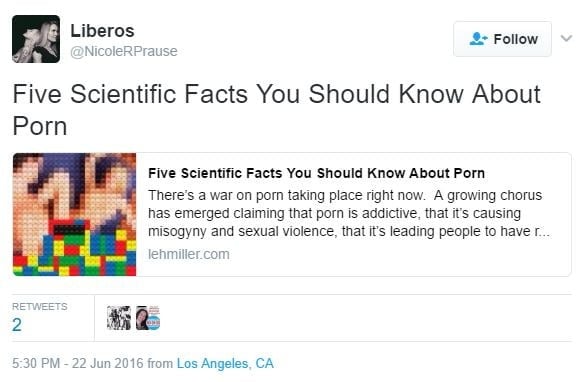
And what studies support Lehmiller’s 5 “facts”? The same 4 studies tweeted over and over by Prause, and described over a dozen times above. Two Prause papers and two Kohut papers:
- Prause & Pfaus 2015
- Modulation of Late Positive Potentials by Sexual Images in Problem Users and Controls Inconsistent with ‘Porn Addiction’ (Prause et al., 2015)
- Perceived Effects of Pornography on the Couple Relationship: Initial Findings of Open-Ended, Participant-Informed, “Bottom-Up” Research (Kohut et al., 2017)
- Critique of “Is Pornography Really about “Making Hate to Women”? Pornography Users Hold More Gender Egalitarian Attitudes Than Nonusers in a Representative American Sample” (Kohut et al., 2016)
This is pretty much all Prause has: 4 flawed, dubious outliers, authored by 2 agenda-driven researchers. The vast preponderance of legitimate studies on porn report negative outcomes: https://www.yourbrainonporn.com/research/
—————–
Claiming her short “letter to the editor” has falsified porn addiction:
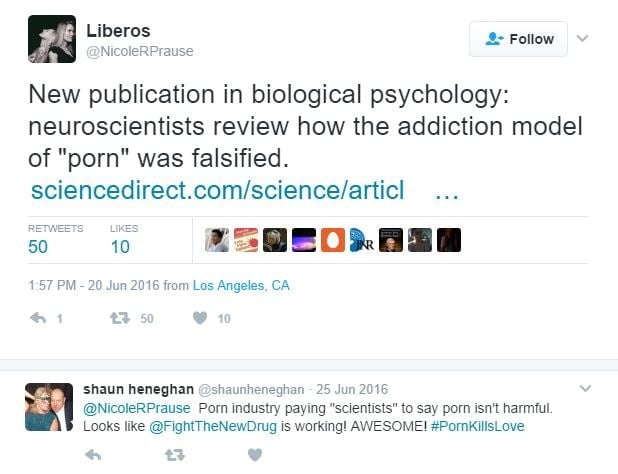
Prause falsified nothing in her brief response to neuroscientist Matuesz Gola’s critical analysis of their 2015 EEG study (Prause et al., 2015). This YBOP critique dismantles Prause et al. line by line, claim by claim, citation by citation: Critique of: Letter to the editor “Prause et al. (2015) the latest falsification of addiction predictions“ (2016),
—————–
Tweeting a college student’s take:
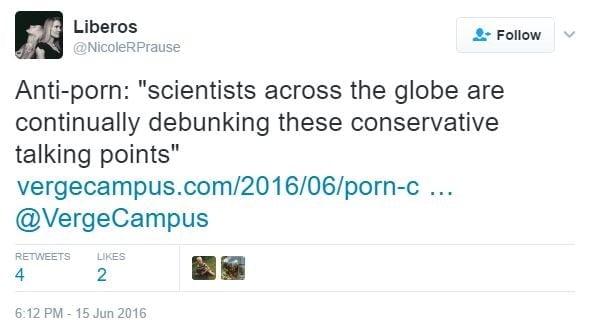
The student’s article has zero citations to support “global debunking.”
—————–
Her talk “debunking” porn-induced ED
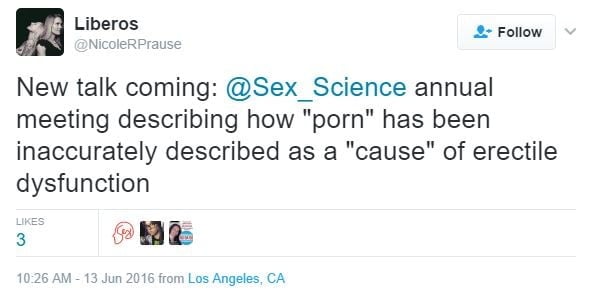
—————–
Prause and Ley have dozens of tweets about the Josh Grubbs “perceived addiction” studies:
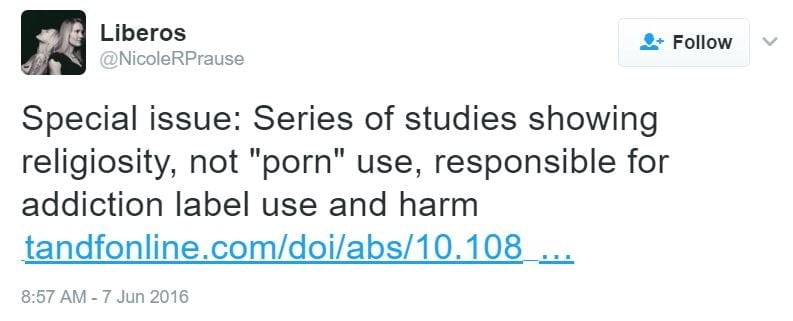
The Grubbs studies, and claims about the studies, do not hold up to scrutiny. For much more see:
- Research Suggests the Grubbs, Perry, Wilt, Reid Review is Disingenuous (“Pornography Problems Due to Moral Incongruence: An Integrative Model with a Systematic Review and Meta-Analysis”) 2018
- Is Joshua Grubbs pulling the wool over our eyes with his “perceived porn addiction” research? (2016)
- New study invalidates the Grubbs CPUI-9 as an instrument to assess either “perceived pornography addiction” or actual pornography addiction (2017)
- Religious People Use Less Porn and Are No More Likely to Believe They Are Addicted (2017)
—————–
More cherry-picking:
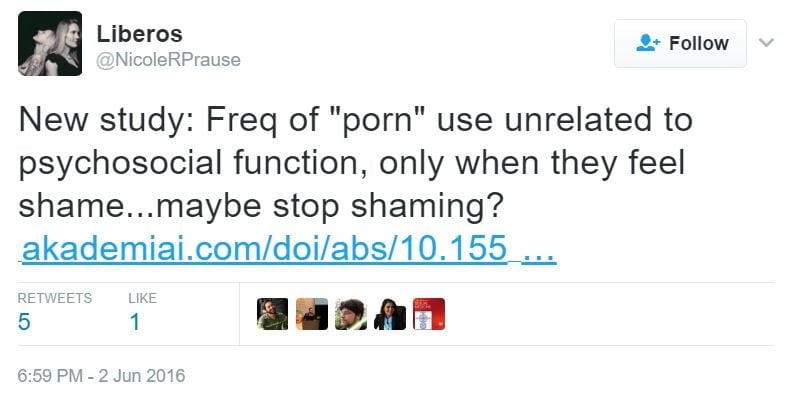
Why didn’t Prause tweet any of these 60 studies linking porn use to poorer mental-emotional health & poorer cognitive outcomes?
—————–
Here she misrepresents a study that never identified who was religious or conservative. It was solely based on Google trend searches for each state, for a few selected words (i.e. Porn, XXX, Gay, Sex)
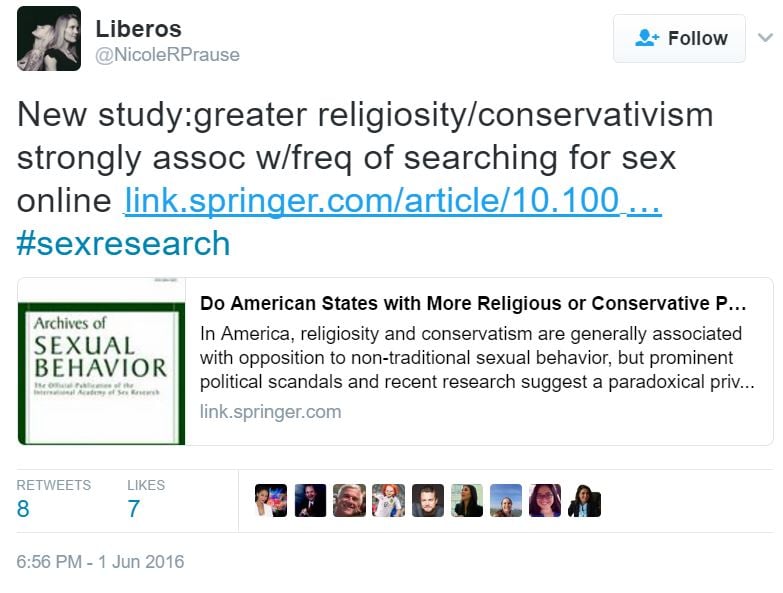
Using statewide aggregate data was deemed useless and found to produce unreliable results in a 2017 study: In Social Desirability Bias in Pornography-Related Self-Reports: The Role of Religion. In it, researchers tested the hypothesis that religious individuals are more likely to lie about their porn use to researchers and in anonymous survey studies.
First, a backward glance. The “lying” hypothesis rested on a few studies analyzing all state-by-state frequency of Google searches for term such as “sex,” “porn,” “XXX,” and the like. These state-level studies reported that conservative or religious (“red”) states search frequently more porn-related terms. The authors of these studies suggested that their findings meant that (1) religious individuals watch more porn than the non-religious, and (2) religious porn users must therefore be lying about their porn use to researchers and in anonymous surveys.
But could “just lying” really explain why nearly every study that employed anonymous surveys had found lower rates of porn use in religious individuals (study 1, study 2, study 3, study 4, study 5, study 6, study 7, study 8, study 9, study 10, study 11, study 12, study 13, study 14, study 15, study 16, study 17, study 18, study 19, study 20, study 21, study 22, study 23, study 24)? Should we believe the many anonymous surveys? Or only the two state-level Google search trend studies (MacInnis & Hodson, 2015; Whitehead & Perry, 2017)?
When researchers tested the hypothesis that, “religious people are lying about their porn use,” they found no evidence supporting that assumption. In fact, their results suggested that religious people may be more honest than secular individuals about porn use. In short, the state-wide comparison approach is clearly a flawed way of researching this topic. It’s not as reliable as anonymous surveys in which each subject’s level of religiosity is identified.
From the abstract:
However, contrary to popular sentiment-and our own hypotheses-we found no evidence for and much evidence against the suggestion that religious individuals have a more pronounced social desirability bias against the reporting of pornography consumption than the irreligious. Interaction terms assessing that possibility were either nonsignificant or significant in the reverse direction.
From the conclusion:
These results do not fit the narrative that religious individuals are underreporting consumption or overstating their opposition to pornography to a degree greater than the less religious and suggest that, if anything, researchers have been underestimating religious opposition to and avoidance of consuming pornography.
Thus, rather than causing a shame-based self-labeling of normative porn use as “porn addiction,” religion appears to be protective against porn use (and thus problematic porn use).
So, what might explain increased searching for sex-related terms in “red states?” It’s highly unlikely that regular porn users enjoying an hour-long session use Google to search for the relatively innocuous terms (“XXX,” “sex,” “porn”) that the researchers investigated. They would head directly to their favorite tube sites (probably bookmarked).
On the other hand, young people who are curious about sex or porn might employ such Google search terms. Guess what? The 15 states with the highest proportion of adolescents are “red states.” For more analysis concerning religion and porn use see this article: Is Utah #1 in Porn Use?
—————–
Prause likes the article because it quotes her and David Ley’s usual spin that porn can’t cause ED:
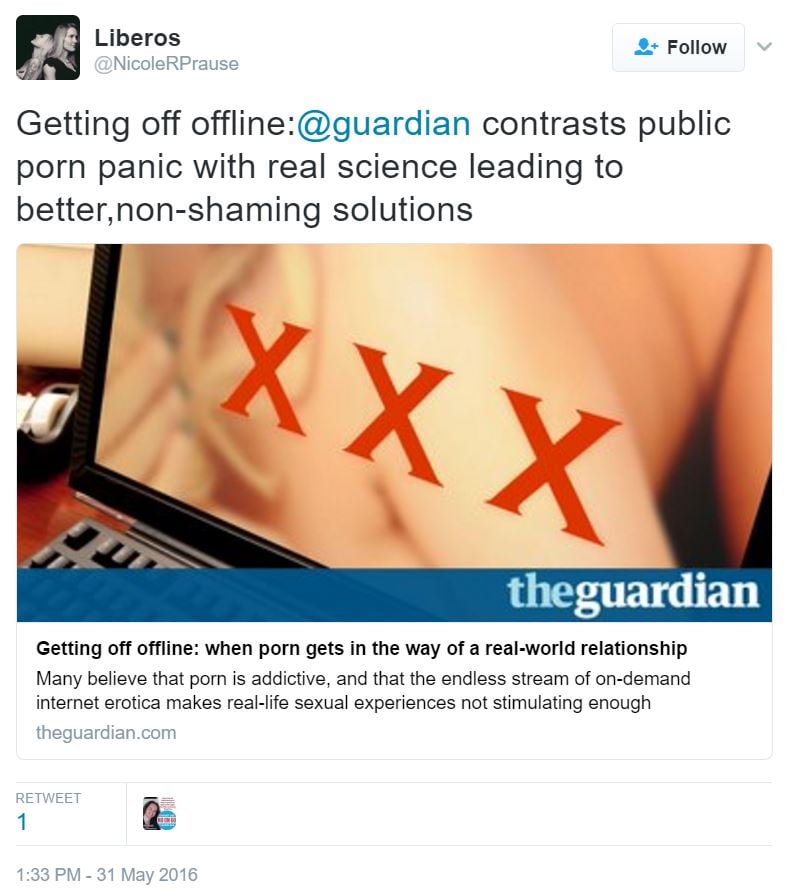
It’s usual fare for Prause to spin articles, but other than her citing her debunked paper, the article clearly shows that porn is causing problems. Critiques of Prause & Pfaus, 2015:
- Peer-reviewed critique of Prause & Pfaus, 2015 – by Richard A. Isenberg MD.
- Nothing Adds Up in Dubious Study: Youthful Subjects’ ED Left Unexplained – a critique of Prause & Pfaus, 2015 – by Gabe Deem
—————–
Attacks a speaker at a conference:
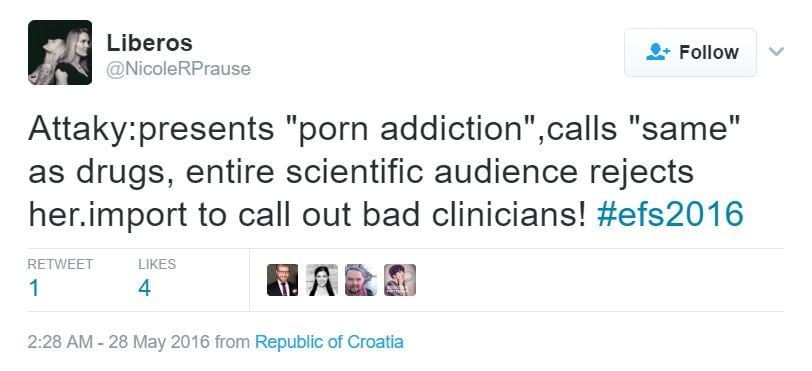
Spins about other speakers as saying “it’s not the porn” (who knows the truth of what was said?):
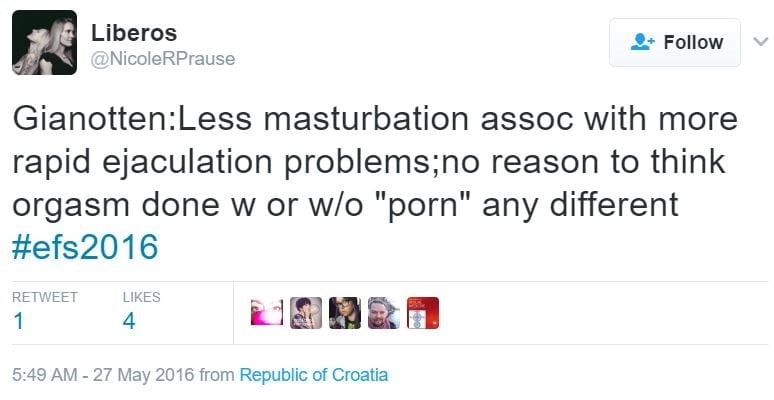
Spin about Bonner’s talk:
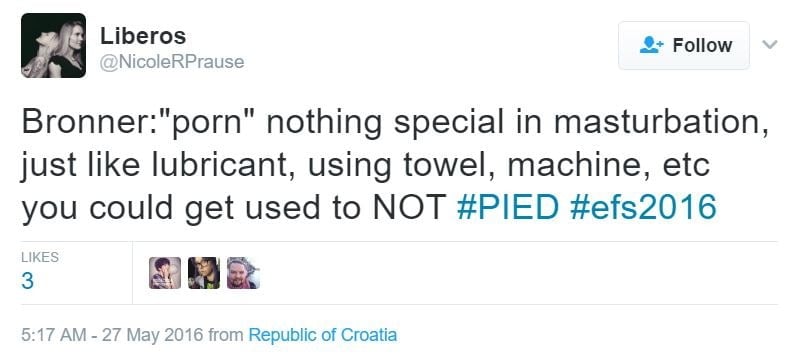
More spin about Bonner’s talk
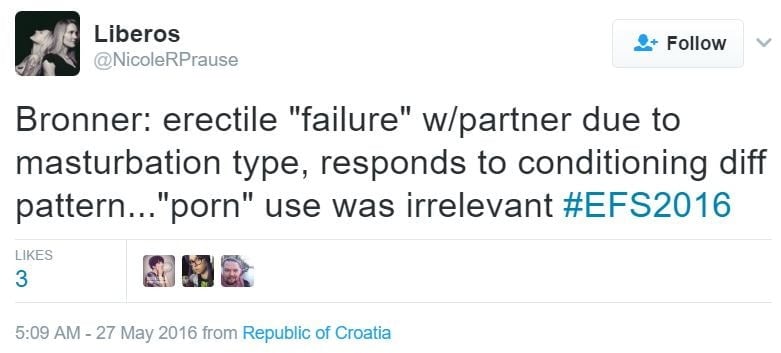
Bonner’s actual study: Unusual masturbatory practice as an etiological factor in the diagnosis and treatment of sexual dysfunction in young men (2014) – One of the 4 case studies in this paper reports on a man with porn-induced sexual problems (low libido, fetishes, anorgasmia). The sexual intervention called for a 6-week abstinence from porn and masturbation. After 8 months the man reported increased sexual desire, successful sex and orgasm, and enjoying “good sexual practices. Excerpts from the paper:
“When asked about masturbatory practices, he reported that in the past he had been masturbating vigorously and rapidly while watching pornography since adolescence. The pornography originally consisted mainly of zoophilia, and bondage, domination, sadism, and masochism, but he eventually got habituated to these materials and needed more hardcore pornography scenes, including transgender sex, orgies, and violent sex. He used to buy illegal pornographic movies on violent sex acts and rape and visualized those scenes in his imagination to function sexually with women. He gradually lost his desire and his ability to fantasize and decreased his masturbation frequency.”
In conjunction with weekly sessions with a sex therapist, the patient was instructed to avoid any exposure to sexually explicit material, including videos, newspapers, books, and internet pornography.
After 8 months, the patient reported experiencing successful orgasm and ejaculation. He renewed his relationship with that woman, and they gradually succeeded in enjoying good sexual practices.
Sounds like porn was the problem, in contradiction with Prause’s spin.
—————–
It’s really noteworthy that studies by Taylor Kohut, Nicole Prause, and Alexander Štulhofer never seem to report any problems related to porn use (alternatively any negative effects are buried deep in the in the paper and must fished out), while the preponderance of evidence published by others contradicts their findings.
Here Prause tweets about a Štulhofer talk where he complains about studies not asking about porn’s “positive effects”:
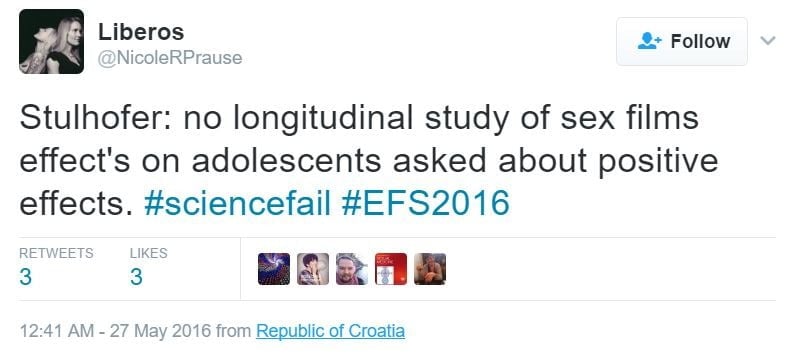
The positive effects of porn would be arousal and getting off – but no adolescent should require porn for that! Studies just ask about effects. The reason most studies aren’t reporting positive effects is because there are so few. Reality: we have over 280 studies on adolescents reporting that porn use is related to such factors as 3+ times higher risk of engaging in problem sexualized behavior, poorer academics, more sexist attitudes, more aggression, poorer health, poorer relationships, lower life satisfaction, viewing people as objects, increased sexual risk taking, less condom use, greater sexual violence, unexplained anxiety, greater sexual coercion, less sexual satisfaction, lower libido, greater permissive attitudes, social maladjustment, lower self-worth, lower health status, sexually aggressive behavior, addiction, greater gender role conflict, more avoidant and anxious attachment styles, antisocial behaviours, heavy drinking, fighting, ADHD symptoms, cognitive deficits, greater acceptance of pre- and extramarital sex, lower evaluation of marriage, promotion of the acceptance of male dominance and female servitude, less gender egalitarianism, more likely to believe rape myths and prostitution myth…. and a whole lot more. See: Pornography and Adolescents Studies
—————–
Attacking the concept of porn as a public health problem. Yet another article by Jesse Singal, with only spin and zero citations:
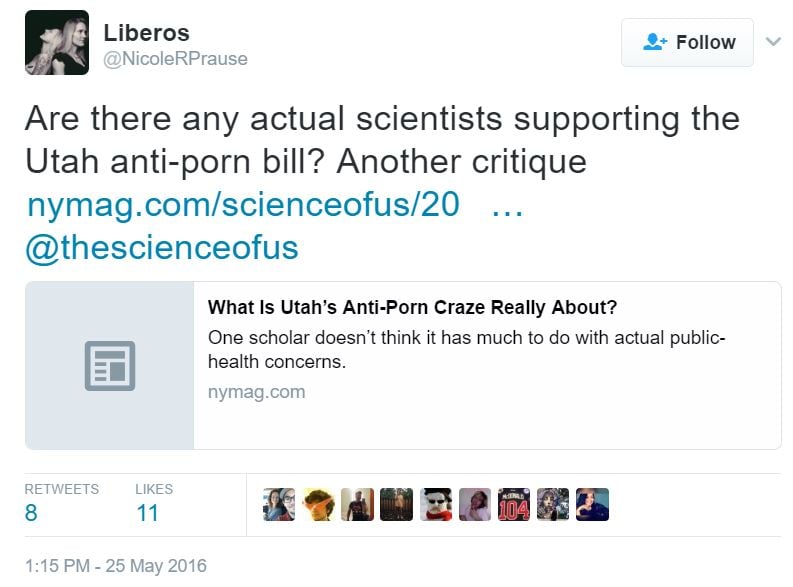
Judge for yourself. This page contains links to hundreds of studies and several reviews of the literature: current state of the research on Internet porn addiction and porn’s effects.
—————–
Attacking concept of porn as a public health problem, yet it only discusses the porn industry. Zero citations related to porn’s effects on the user:
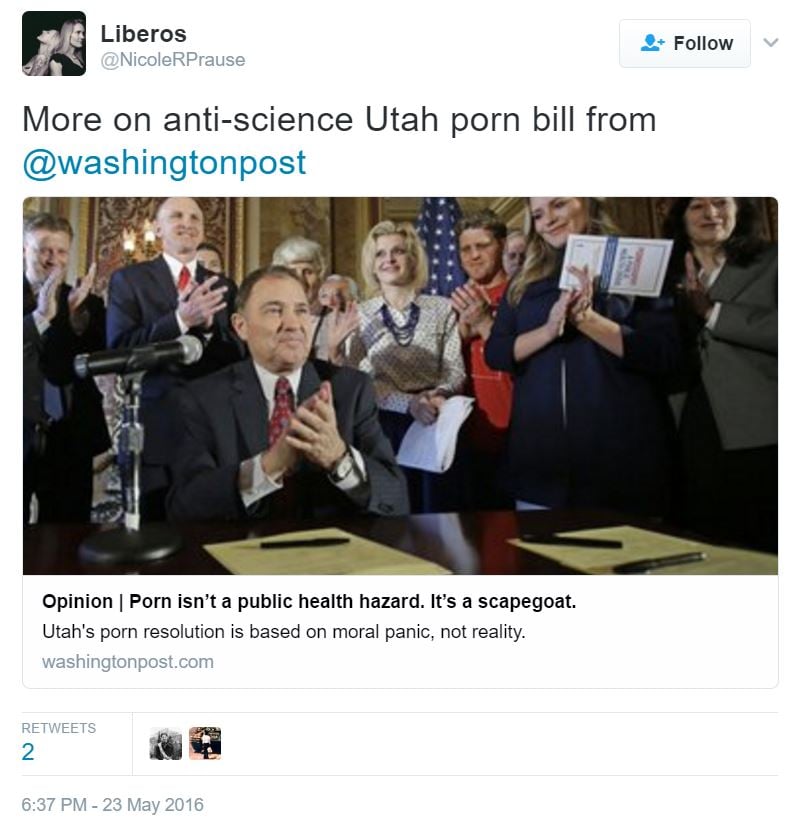
—————–
Article with Prause propaganda:

—————–
Article featuring Prause buddies, David Ley & Jim Pfaus, yet not one academic who studies porn addiction or porn’s effects:
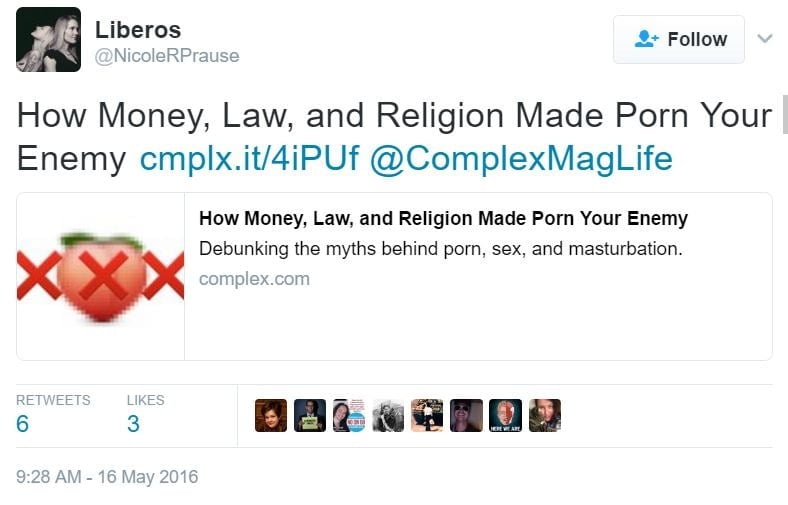
The author admits his source of info was a David Ley’s Psychology Today blog post trying to “debunk”:
In my search for answers, my attention was piqued by David Ley’s Psychology Today article, “We Must Rely on Good Science in Porn Debate.”
Ley’s article was an attempt to counter Philip Zimbardo’s Psychology Today blog post “Is Porn Good For Us or Bad For Us?” (2016). YBOP responded with facts and actual studies – Dismantling David Ley’s response to Philip Zimbardo: “We must rely on good science in porn debate” (March, 2016)
—————–
According to Prause porn isn’t addicting:
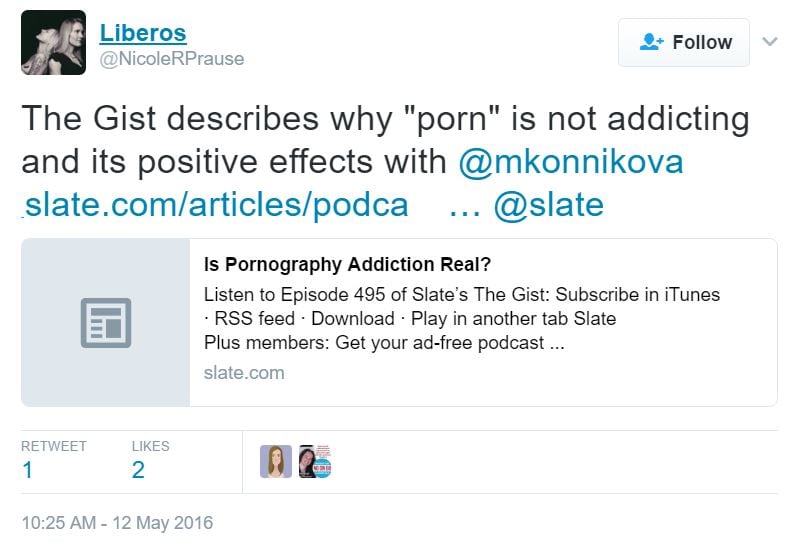
—————–
Reaches new low by using a man’s suicide to take a swipe at porn addiction:
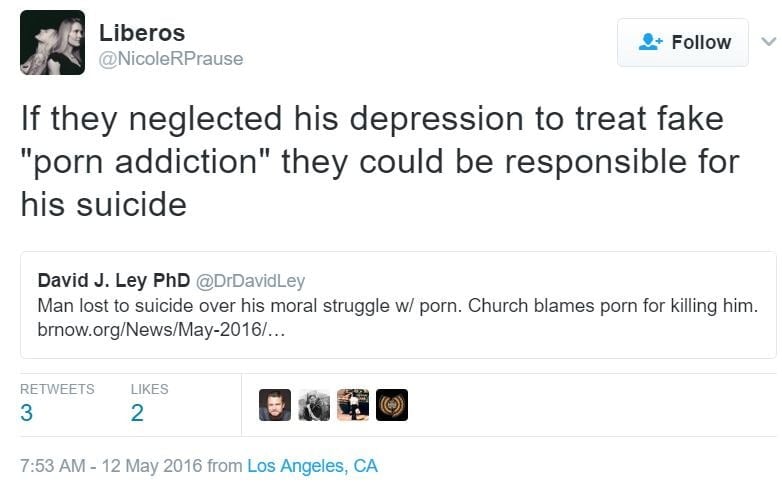
—————–
College student quotes David Ley:
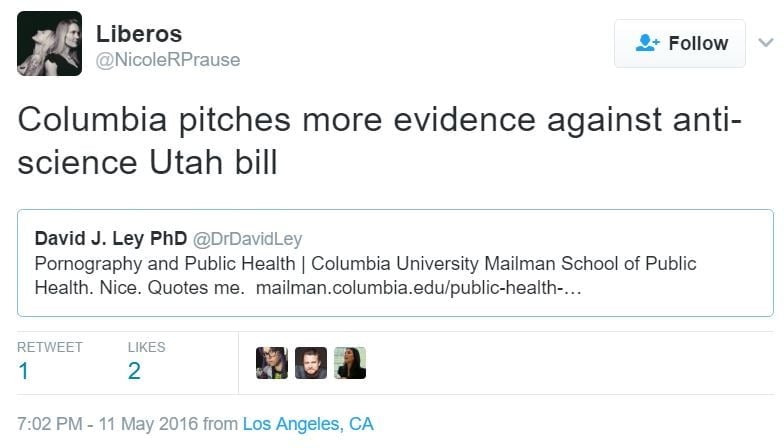
But no evidence.
—————–
“No evidence for compulsivity model”

That’s not what Prause said in this 2015 Quora answer:
If “porn” viewing problems are not an addiction, those behaviors could still be a problem, of course. Some have suggested it is similar to obsessive compulsive disorder, reflects depression, is an impulse control disorder, or reflects socially-unacceptble high sexual desire. I was partial to the high sex drive explanation, but this LPP study we just published is persuading me to be more open to sexual compulsivity.
Her comments reveal a deep ignorance about addiction, which involves both compulsivity and impulsivity. Regardless, the latest version of the World Health Organization’s medical diagnostic manual, The International Classification of Diseases (ICD-11), contains a new diagnosis suitable for diagnosing what is commonly referred to as ‘porn addiction’ or ‘sex addiction.’ It’s called “Compulsive Sexual Behavior Disorder” (CSBD).
—————–
What legitimate researcher would spends her time constructing graphs like this?
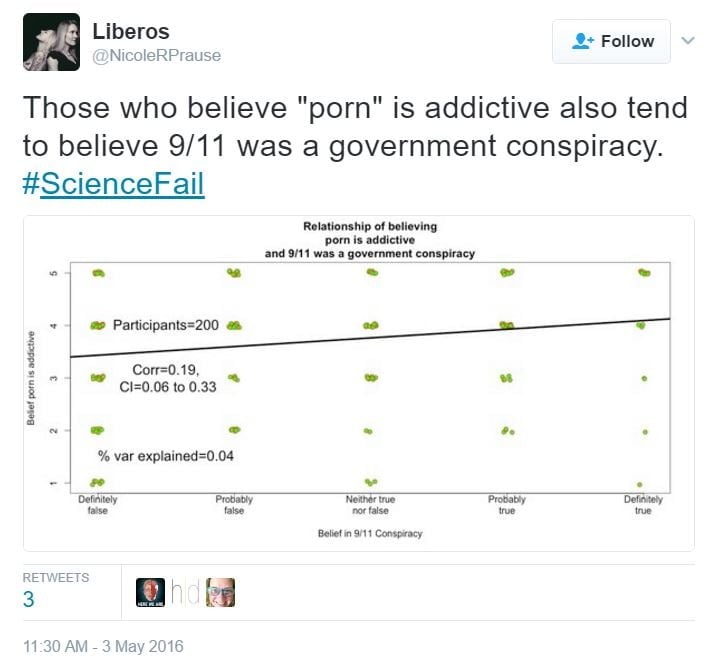
Or this?
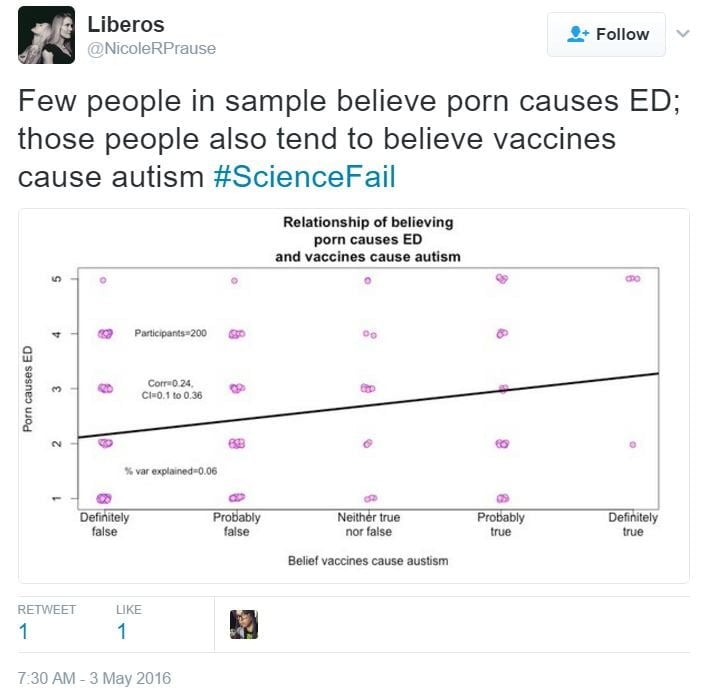
Or this?

The data supporting the above graphs are nowhere to be found. They were not “forthcoming.”
—————–
Let me guess…
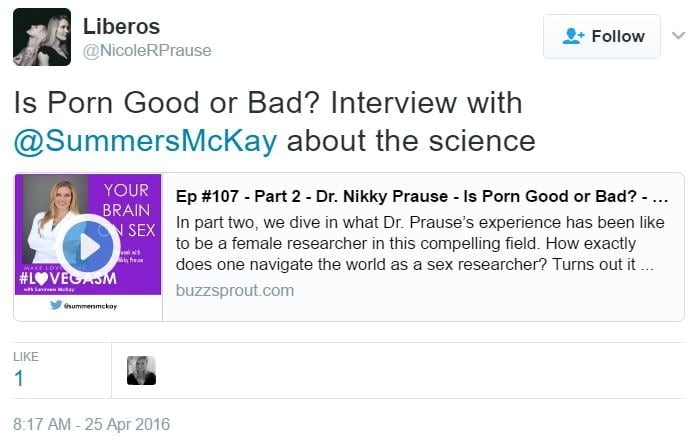
—————–
Attacking concept of porn as a public health problem:
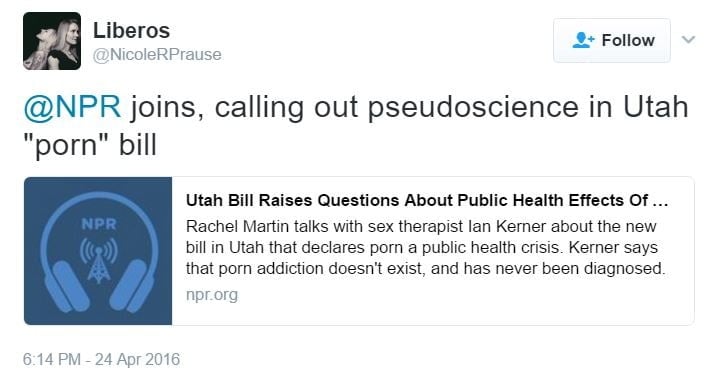
Ian Kerner is the spokesperson for AASECT. See this section for more on AASECT’s unsupported proclamation.
—————–
Attacking concept of porn as a public health problem:

On the same day:
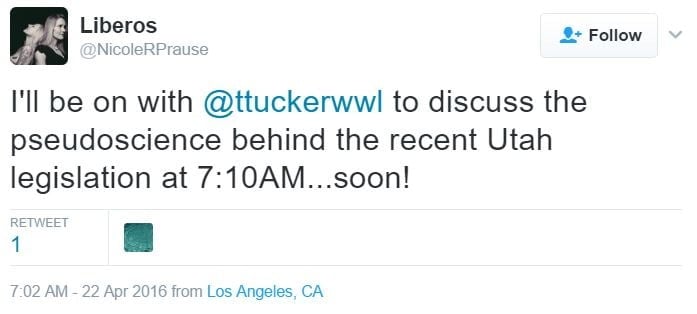
Always uses “pseudoscience,” yet Prause has never once Tweeted a genuine meta-analysis or review of the literature. I wonder why?
—————–
LadBible? There are not 4 studies finding “no relationship.”
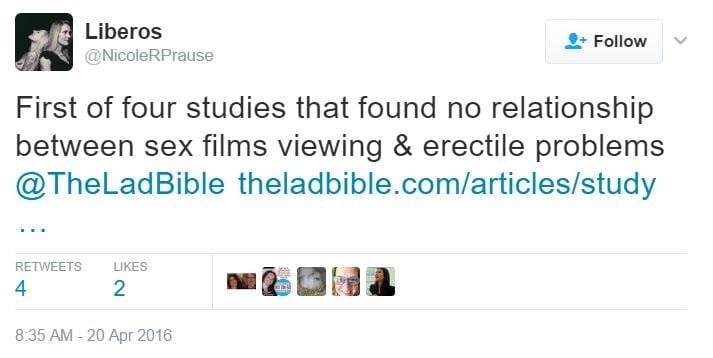
The LadBible study? Prause & Pfaus 2015. It did not support a single claim it made, as these 2 critiques expose:
- In the same journal as the paper: Letter to the editor by Richard A. Isenberg MD (2015)
- Very extensive lay critique: Nothing Adds Up in Dubious Study: Youthful Subjects’ ED Left Unexplained (2015)
—————–
Article by Andy Campbell, who has written several articles quoting Prause – including an article for Penthouse, featuring Prause:
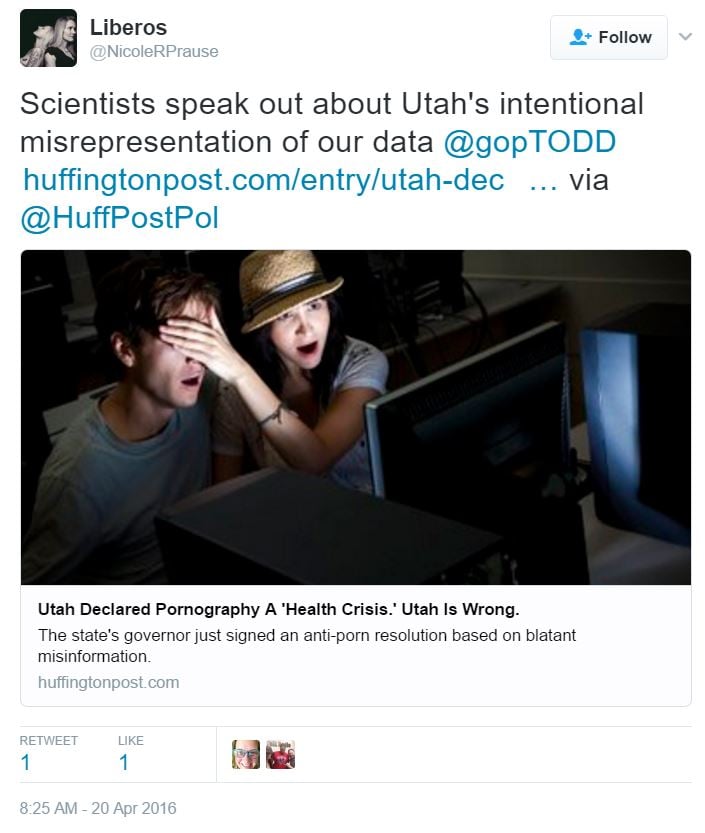
Prause misrepresented the article. There was nothing in the article about misrepresentation of data (though Campbell spun a tall tale, and omitted hundreds of studies finding porn use related to all sorts of problems).
—————–
More of the same by the ever eager Daily Dot:
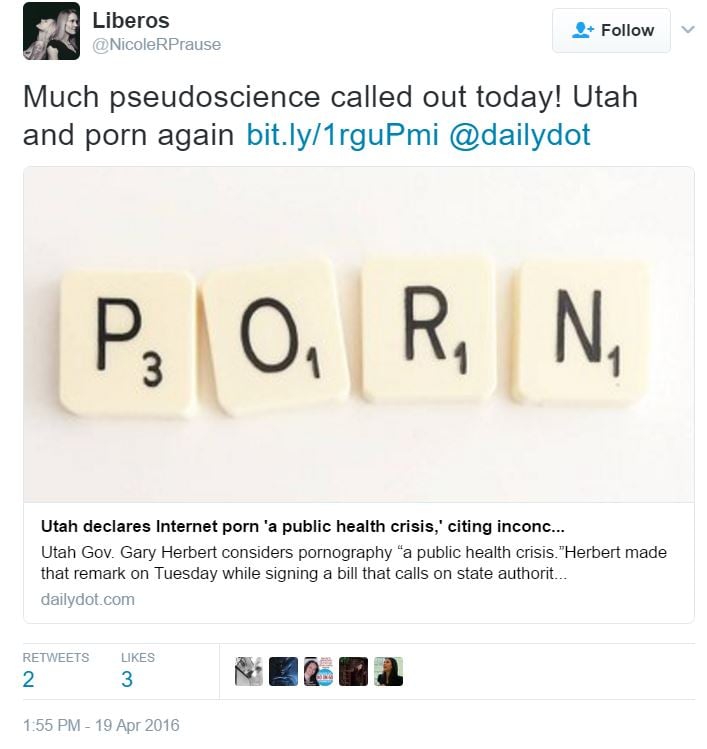
The very short article said nothing about pseudoscience, only that causation couldn’t be inferred in this solitary brain scan study: Brain Structure and Functional Connectivity Associated With Pornography Consumption: The Brain on Porn (Kuhn & Gallinat, 2014). In reality, 40 neuroscience-based studies (MRI, fMRI, EEG, neuropsychological, hormonal) provide strong support for the addiction model. The very short article quoted Prause, getting it all wrong about Prause et al., 2015 by saying it was a brain scan (fMRI) study:
In 2015, for instance, researchers at the University of California, Los Angeles, found that porn did not “light up” areas of the brain typically associated with addiction. The comparison, according to the study’s authors, may actually be harmful to patients.
Prause’s study was an EEG study assessing electrical activity on the scalp. No matter, 7 peer-reviewed papers agree that Prause et al., 2015 actually support the addiction model:
- Neuroscience of Internet Pornography Addiction: A Review and Update (2015)
- Decreased LPP for sexual images in problematic pornography users may be consistent with addiction models. Everything depends on the model (Commentary on Prause et al., 2015)
- Neurobiology of Compulsive Sexual Behavior: Emerging Science (2016)
- Should compulsive sexual behavior be considered an addiction? (2016)
- Is Internet Pornography Causing Sexual Dysfunctions? A Review with Clinical Reports (2016)
- Conscious and Non-Conscious Measures of Emotion: Do They Vary with Frequency of Pornography Use? (2017)
- Neurocognitive mechanisms in compulsive sexual behavior disorder (2018)
—————–
Same day as above. More attacks on concept of porn as a public health problem:
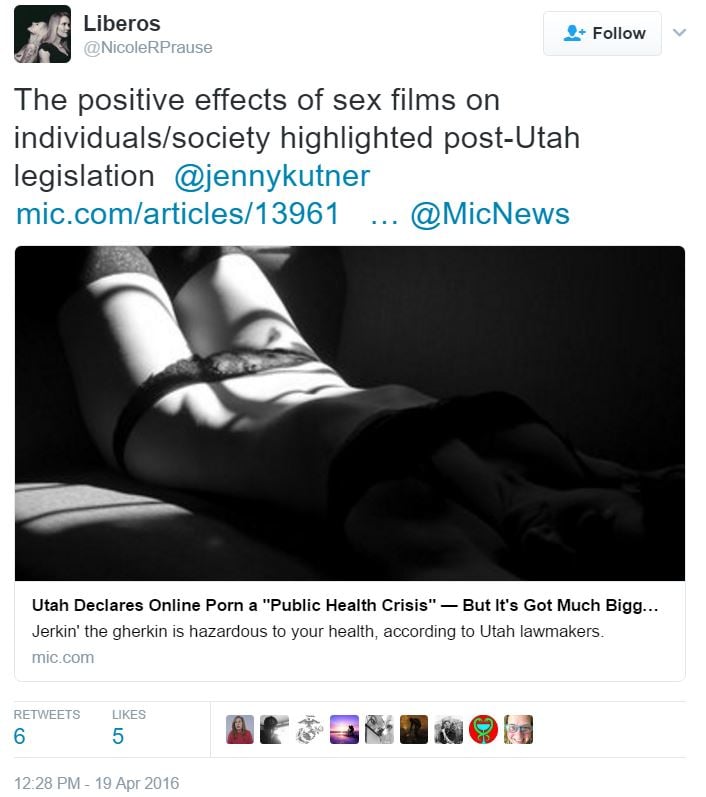
—————–
Same day. Prause’s obsession with denying porn as a public health problem continues:
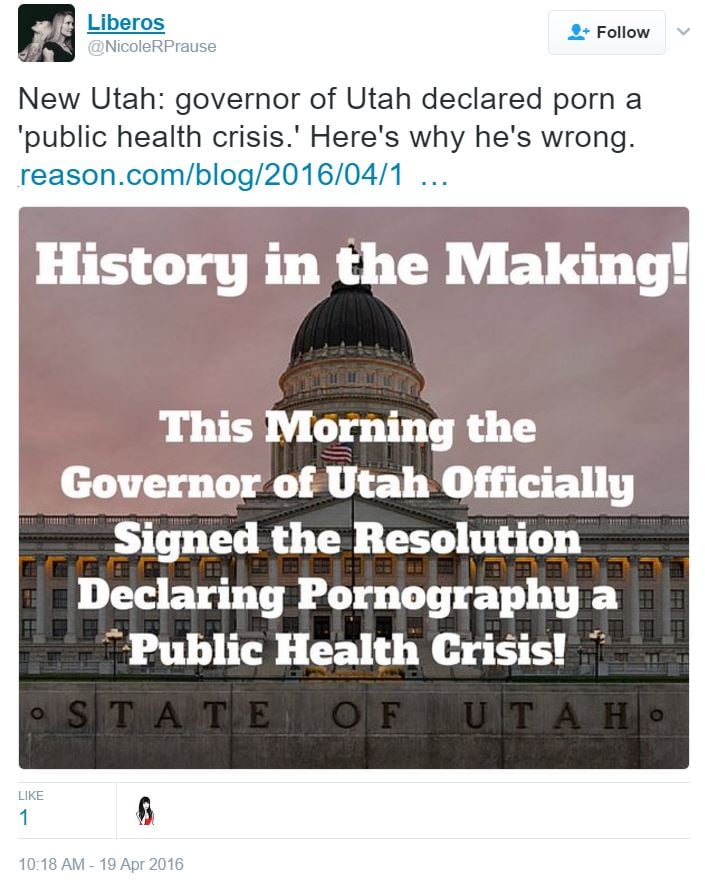
—————–
Prause offers to testify on the side of porn producers, against a proposed Utah bill opening porn producers to lawsuits:

Note: One can be funded (or supported via alternative avenues) without direct funding of research (such as via being given access to subjects willing to engage in sex while being monitored in a lab).
—————–
Randomly attacking porn-induced ED:
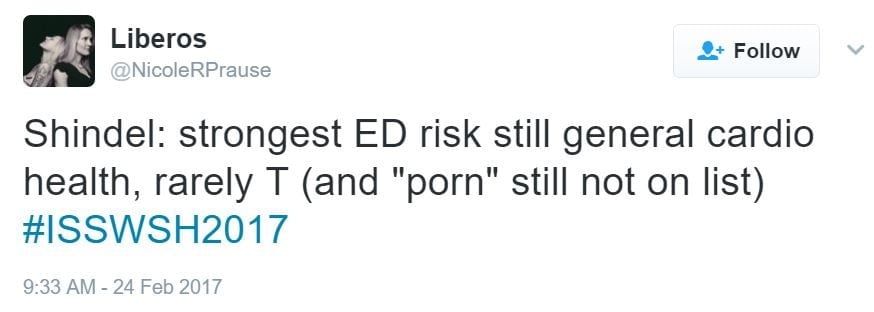
Porn-induced ED is mentioned by many experts. See 150 news articles by experts and caregivers warning of porn’s effects on sexual performance at Experts Who Recognize & Treat Porn-induced ED.
—————–
Attacking an article that says internet addiction is a thing (Prause attacks internet addiction because porn addiction is an Internet addiction subtype)
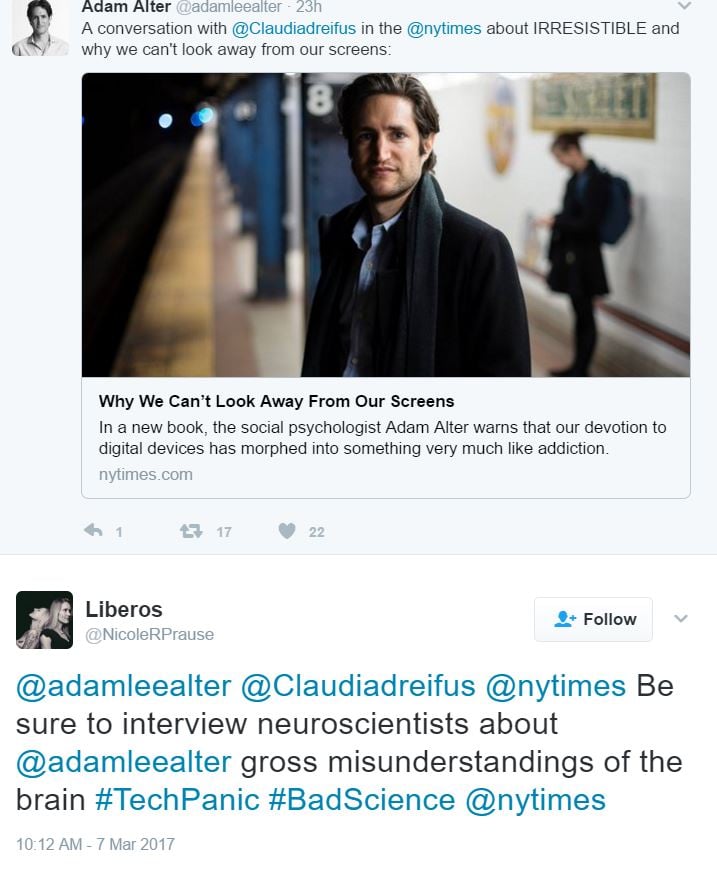
Nothing wrong with the science in the article.
Reality? List of over 380 Internet & Video Game Brain Studies – all support addiction model. Internet Gaming disorder is in the addiction section of the 11th Revision of the International Classification of Diseases (ICD-11)
—————–
Attacking MDs:
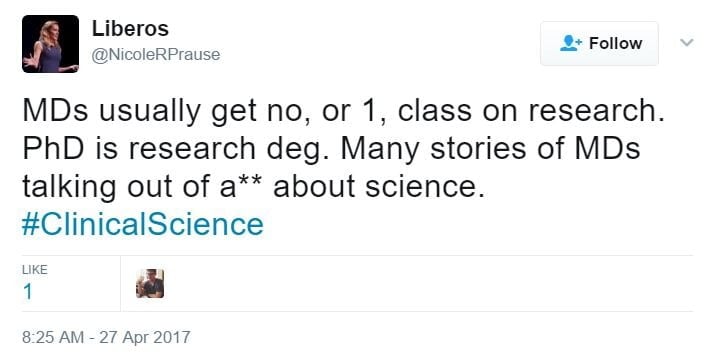
—————–
Two false statements: No evidence of withdrawal, and porn use is overwhelmingly positive.
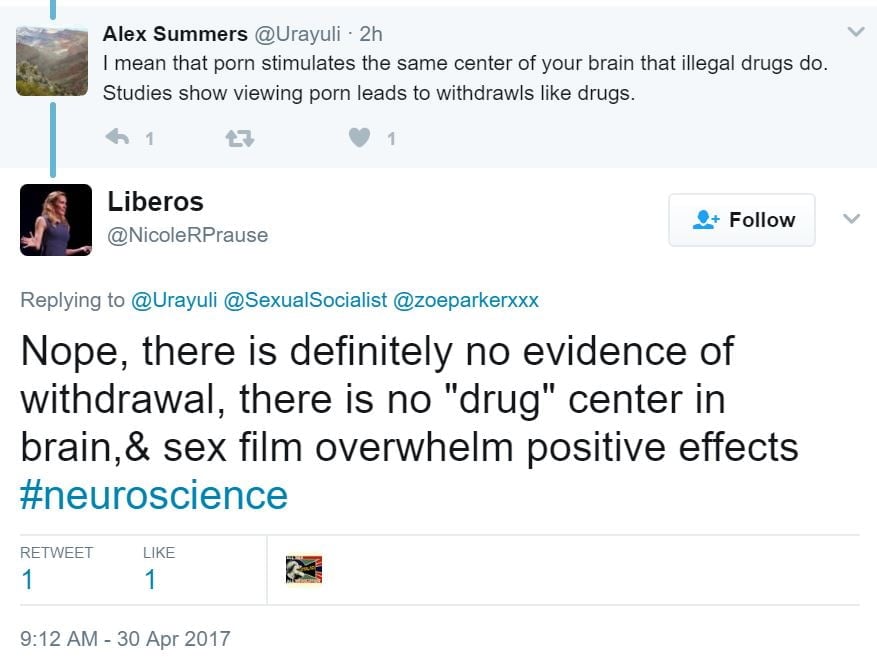
Internet porn research and numerous self-reports demonstrate that some porn users experience withdrawal and/or tolerance – which are also often characteristic of physical dependency. In fact, ex-porn users regularly report surprisingly severe withdrawal symptoms, which are reminiscent of drug withdrawals: insomnia, anxiety, irritability, mood swings, headaches, restlessness, poor concentration, fatigue, depression, and social paralysis, as well as the sudden loss of libido that guys call the ‘flatline’ (apparently unique to porn withdrawal). Another sign of physical dependency reported by porn users is inability to get an erection or to have an orgasm without using porn. As for studies – page with 14 studies reporting withdrawal symptoms in porn users.
—————–
Attacking this study: Till Porn Do Us Part? Longitudinal Effects of Pornography Use on Divorce (2017)
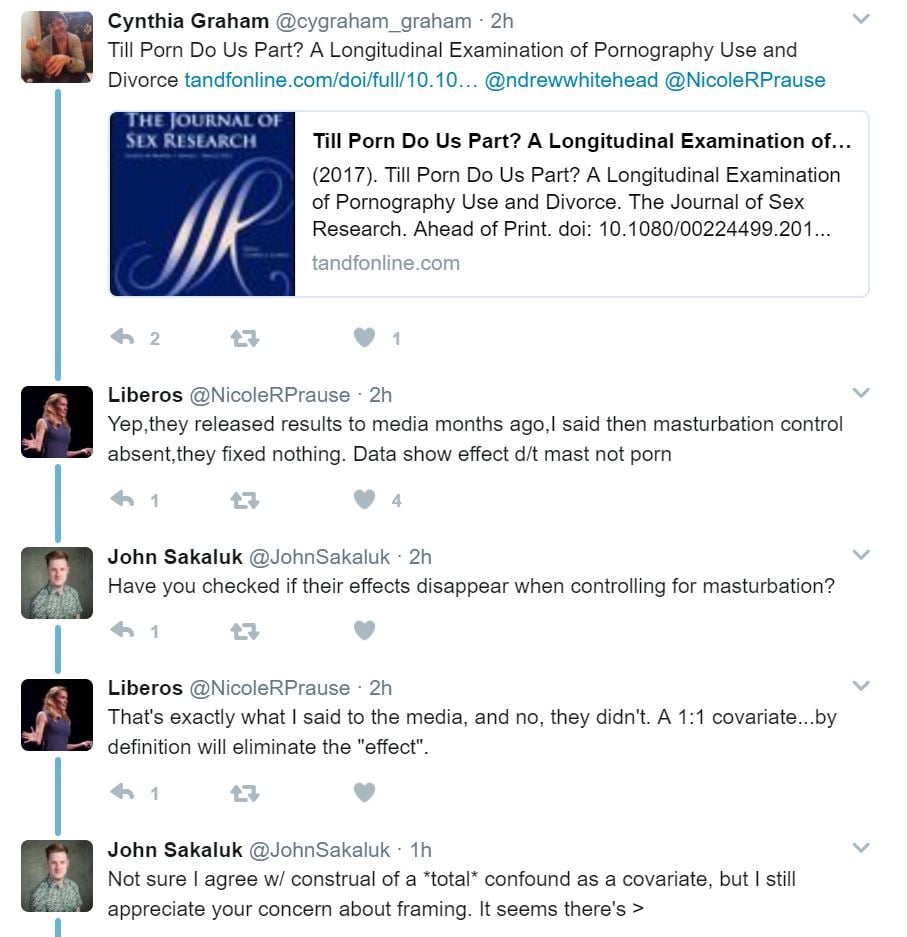
Red herring. Almost 60 studies link porn use to less sexual and relationship satisfaction. All studies involving males have reported more porn use linked to poorer sexual or relationship satisfaction. While a few studies correlated greater porn use in females to better (or neutral) sexual satisfaction, most have not (see this list: Porn studies involving female subjects: Negative effects on arousal, sexual satisfaction, and relationships).
—————–
Two falsehoods in one tweet:
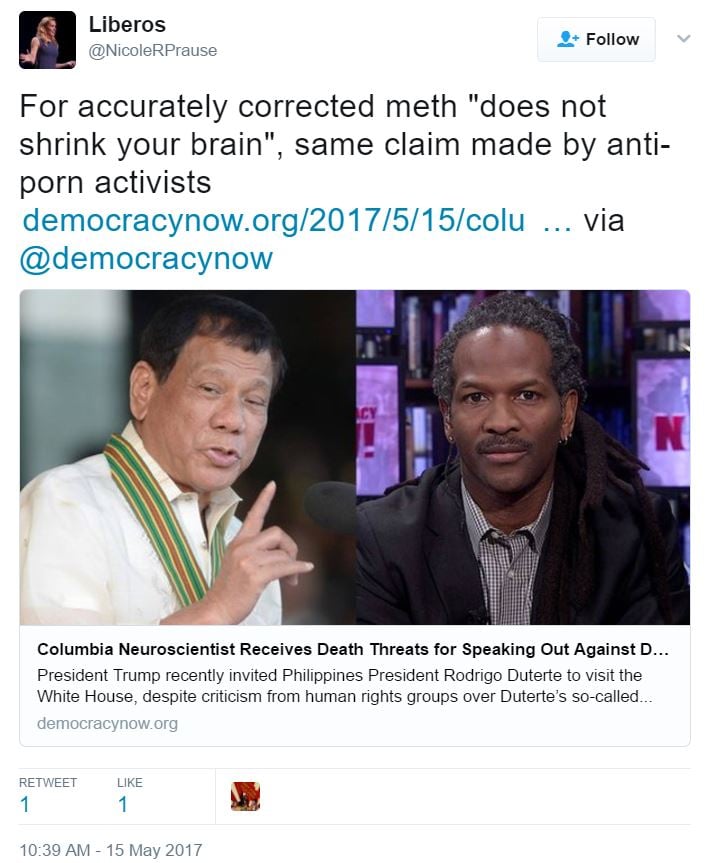
First, it’s well established that meth does shrink the brain. Second, this Max Planck Institute fMRI study reported 3 neurological findings correlating with higher levels of porn use: (1) less reward system grey matter (dorsal striatum), (2) less reward circuit activation while briefly viewing sexual photos, (3) poorer functional connectivity between the dorsal striatum and dorsolateral prefrontal cortex. The researchers interpreted the 3 findings as an indication of the effects of longer-term porn exposure. Said the study,
This is in line with the hypothesis that intense exposure to pornographic stimuli results in a down-regulation of the natural neural response to sexual stimuli.
Lead author Simone Kühn commenting in the Max Planck press release said:
We assume that subjects with a high porn consumption need increasing stimulation to receive the same amount of reward. That could mean that regular consumption of pornography more or less wears out your reward system. That would fit perfectly the hypothesis that their reward systems need growing stimulation.
—————–
Attacking concept of porn as a public health problem.
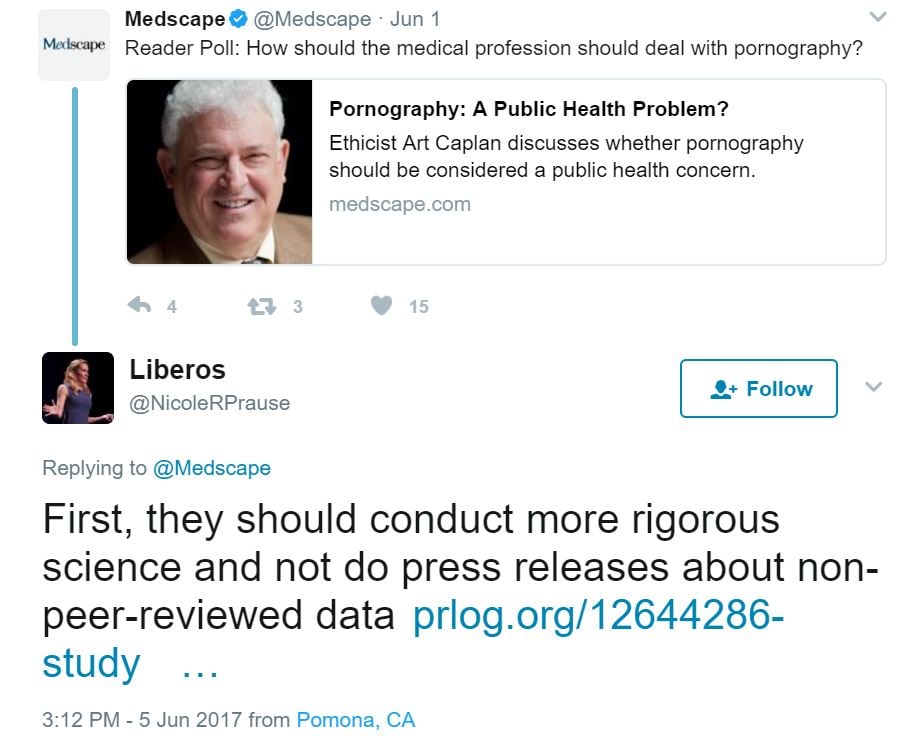
Video – https://www.medscape.com/viewarticle/880510
—————–
Prause keeps tweeting her self-generated press release, which debunks nothing:
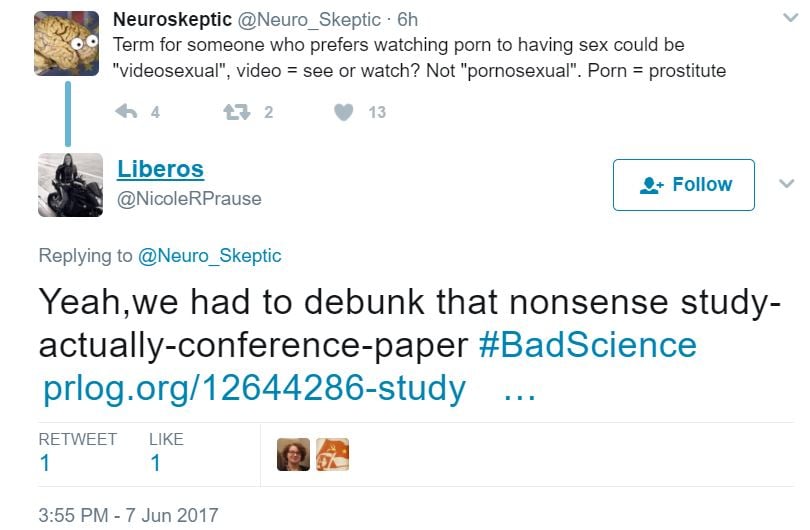
Who pays for this?
—————–
Prause doesn’t like it that another state passes a resolution:
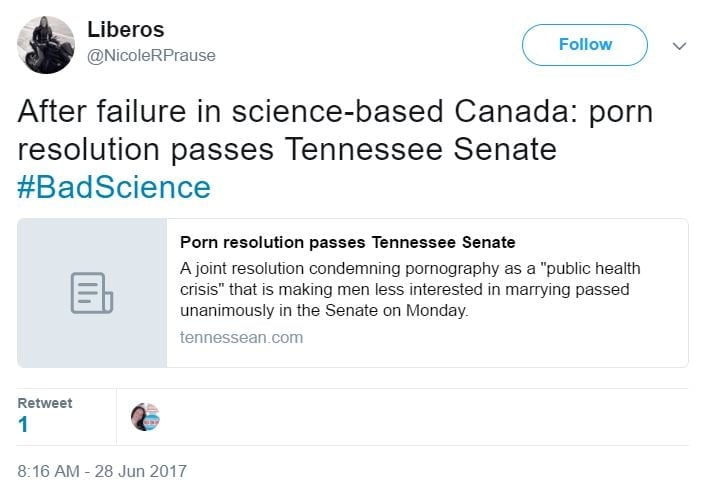
—————–
Prause falsely states that Prause & Pfaus was a “causal experiment” (it wasn’t even a true study):
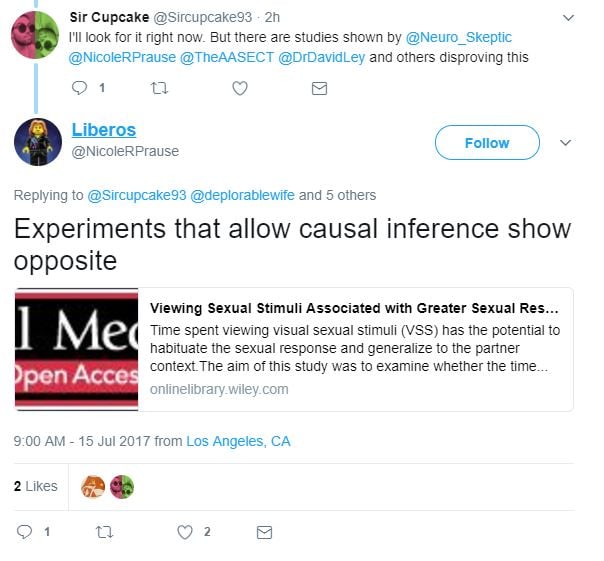
Prause & Pfaus 2015 wasn’t a study on men with ED. It wasn’t a study at all. Instead, Prause claimed to have gathered data from four of her earlier studies, none of which addressed erectile dysfunction. It’s disturbing that this paper by Nicole Prause and Jim Pfaus passed peer-review as the data in their paper did not match the data in the underlying four studies on which the paper claimed to be based. The discrepancies are not minor gaps, but gaping holes that cannot be plugged. In addition, the paper made several claims that were false or not supported by their data. Prause & Pfaus 2015 as these 2 critiques expose, it cannot support a single claim it made:
- In the same journal as the paper: Letter to the editor by Richard A. Isenberg MD (2015)
- Very extensive lay critique: Nothing Adds Up in Dubious Study: Youthful Subjects’ ED Left Unexplained (2015)
—————–
Prause keeps tweeting her self-generated press release that says it’s anything but porn:
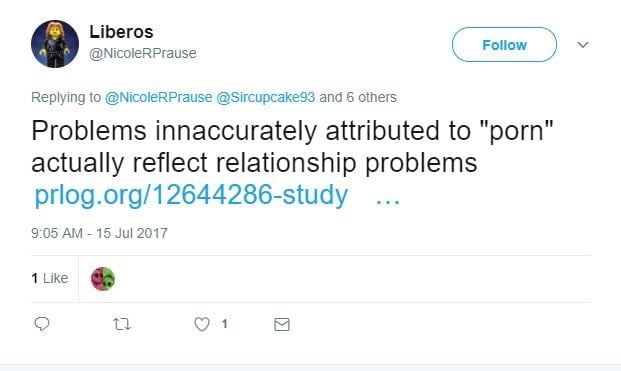
Almost 60 studies link porn use to less sexual and relationship satisfaction. All studies involving males have reported more porn use linked to poorer sexual or relationship satisfaction. In the first section of the above list studies 1 & 2 are meta-analyses, study #3 had porn users attempt to quit using porn for 3 weeks, and studies 4 through 9 are longitudinal. Their findings don’t match Prause PR.
—————–
Another incorrect statement:
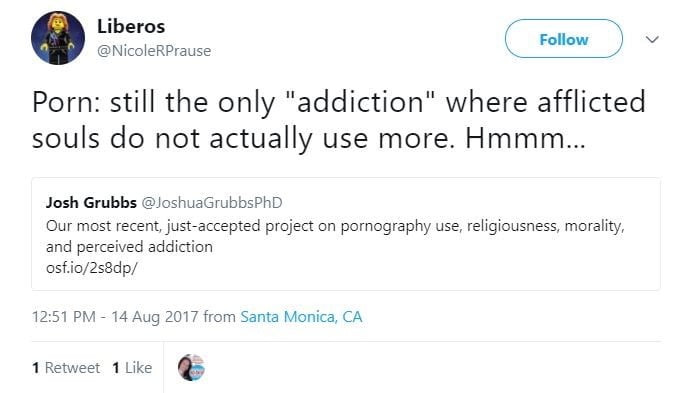
The above is about one the Josh Grubbs many CPUI-9 studies, which he labels as “perceived addiction.” Ley & Prause have falsely stated that Total CPUI-9 scores are not related to levels of porn use. But they are – robustly. Correlations from Grubbs most famous study show that all CPUI-9 sections are related to porn use:

If Grubbs’s inappropriate emotional distress questions are omitted, hours of use is always the strongest predictor of porn addiction. See much more of the smoke-and-mirrors created by Grubbs and his CPUI-9:
- Is Joshua Grubbs pulling the wool over our eyes with his “perceived porn addiction” research? (2016)
- Religious people use less porn and are no more likely to believe they are addicted (2017)
—————–
Article featuring Prause as the expert:
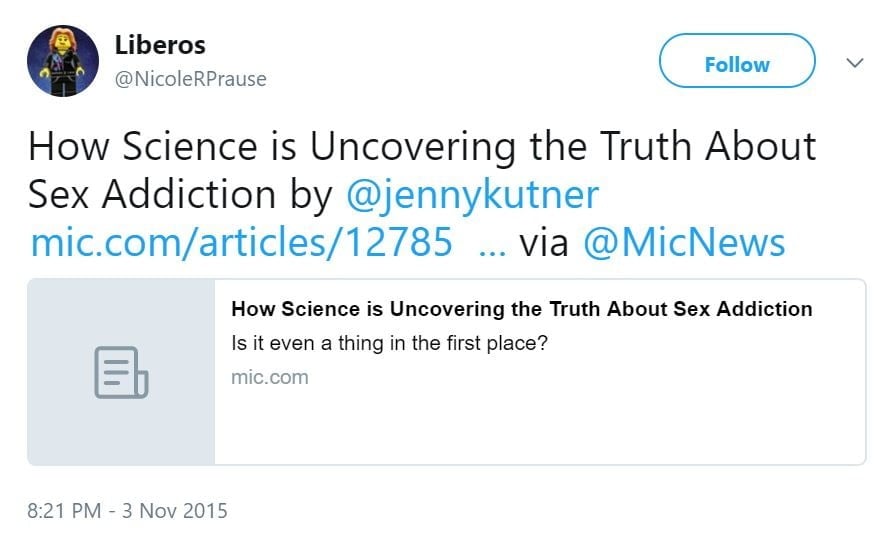
Article featured Steele et al., 2013. This EEG study was touted in the media by Prause as evidence against the existence of porn/sex addiction. Not so. Steele et al. 2013 actually lends support to the existence of both porn addiction and porn use down-regulating sexual desire. How so? The study reported higher EEG readings (relative to neutral pictures) when subjects were briefly exposed to pornographic photos. Studies consistently show that an elevated P300 occurs when addicts are exposed to cues (such as images) related to their addiction.
In line with the Cambridge University brain scan studies, this EEG study also reported greater cue-reactivity to porn correlating with less desire for partnered sex. To put it another way – individuals with greater brain activation to porn would rather masturbate to porn than have sex with a real person. Astonishingly, study spokesperson Prause claimed that porn users merely had “high libido,” yet the results of the study say the exact opposite (subjects’ desire for partnered sex was dropping in relation to their porn use).
Together these two Steele et al. findings indicate greater brain activity to cues (porn images), yet less reactivity to natural rewards (sex with a person). Both are hallmarks of an addiction. 8 peer-reviewed papers explain the truth: Peer-reviewed critiques of Steele et al., 2013. Also see this extensive YBOP critique.
Aside from the many unsupported claims in the press, it’s disturbing that Prause’s 2013 EGG study passed peer-review, as it suffered from serious methodological flaws: 1) subjects were heterogeneous (males, females, non-heterosexuals); 2) subjects were not screened for mental disorders or addictions; 3) study had no control group for comparison; 4) questionnaires were not validated for porn use or porn addiction.
—————–
Again, claiming that her solitary, flawed EEG study (which actually found habituation) has “falsified” the addiction model:
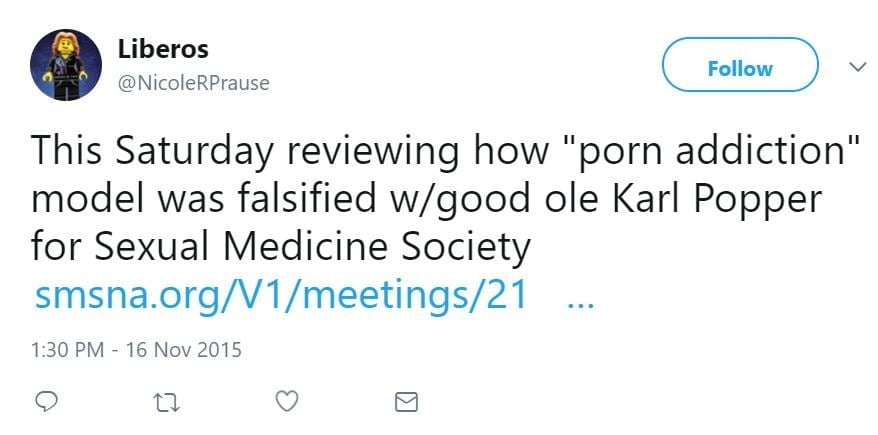
10 peer-reviewed papers say Prause is mistaken: her study actually found desensitization/habituation in frequent porn users (consistent with addiction): Peer-reviewed critiques of Prause et al., 2015.
—————–
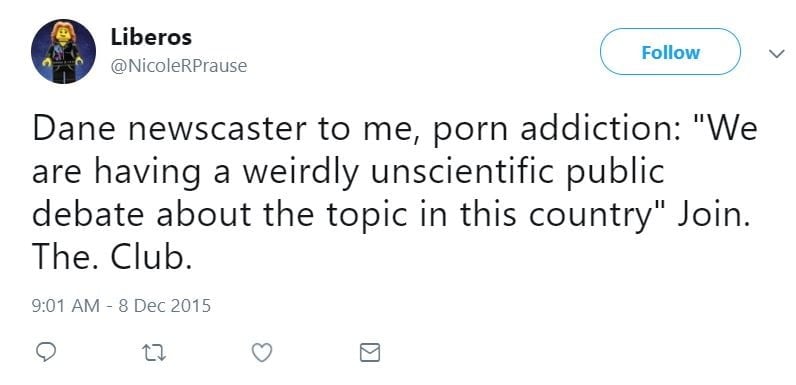
Unscientific? This page lists 55 neuroscience-based studies (MRI, fMRI, EEG, neuropsychological, hormonal). They provide strong support for the addiction model as their findings mirror the neurological findings reported in substance addiction studies. The real experts’ opinions on porn/sex addiction? This list contains 30 recent literature reviews & commentaries by some of the top neuroscientists in the world. All support the addiction model. Signs of addiction and escalation to more extreme material? Over 60 studies reporting findings consistent with escalation of porn use (tolerance), habituation to porn, and even withdrawal symptoms (all signs and symptoms associated with addiction).
—————–
In support of the porn industry:
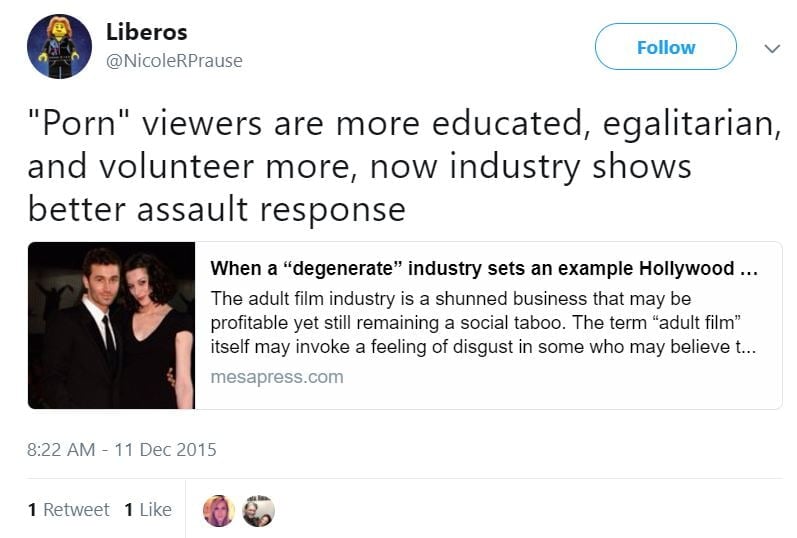
For more on “porn and egalitarianism” see over 40 studies link porn use to “un-egalitarian attitudes” toward women and sexist views – or the summary from this 2016 meta-analysis: Media and Sexualization: State of Empirical Research, 1995–2015. Excerpt:
The goal of this review was to synthesize empirical investigations testing effects of media sexualization. The focus was on research published in peer-reviewed, English-language journals between 1995 and 2015. A total of 109 publications that contained 135 studies were reviewed. The findings provided consistent evidence that both laboratory exposure and regular, everyday exposure to this content are directly associated with a range of consequences, including higher levels of body dissatisfaction, greater self-objectification, greater support of sexist beliefs and of adversarial sexual beliefs, and greater tolerance of sexual violence toward women. Moreover, experimental exposure to this content leads both women and men to have a diminished view of women’s competence, morality, and humanity.
—————–
Trying anything to dismiss a study she doesn’t like:
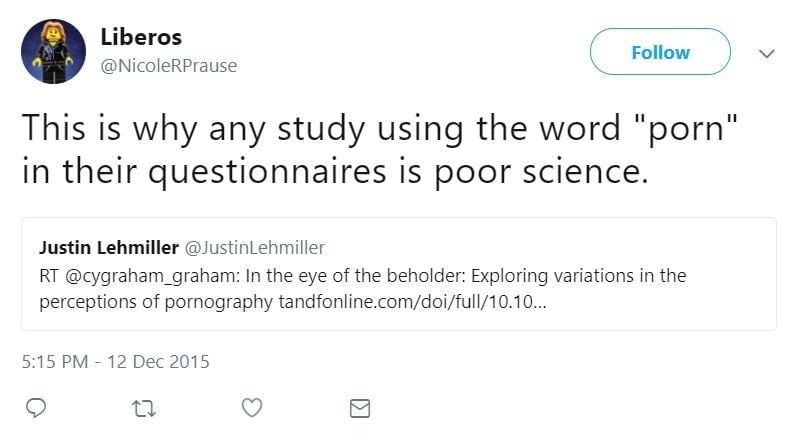
A Google Scholar search for ‘pornography’ returns 300,000 items.
—————–
Attacking another study she doesn’t appreciate, with yet another false statement:

Check for yourself – the phrase “may cause” is nowhere to be found in the full paper. Nor is the word “cause.”
Note: Prause has repeatedly and falsely claimed that her cobbled-together paper, Prause & Pfaus, 2015, showed causation! It didn’t.
—————–
Garbage science? The article in question.
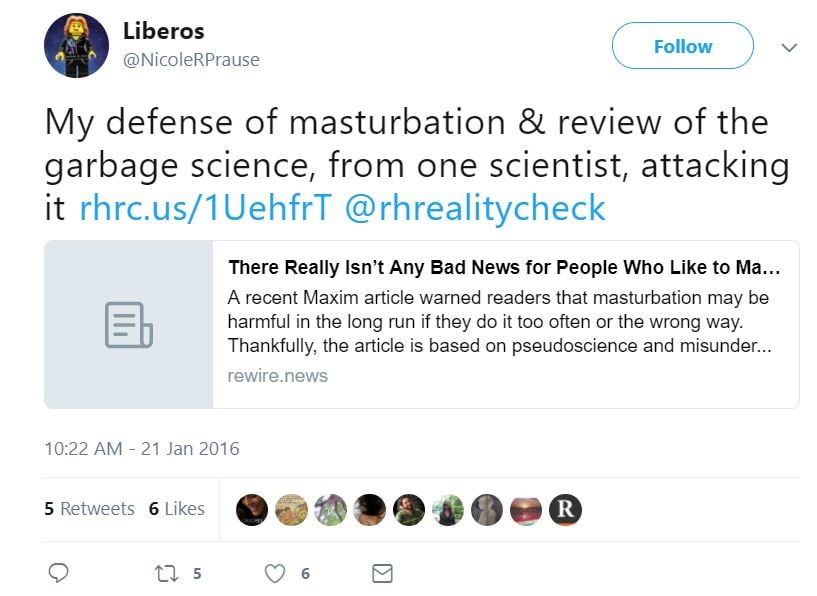
Surprising, as usually it’s Prause or Ley claiming that masturbation is really cause of porn-induced sexual problems, never porn: Sexologists deny porn-induced ED by claiming masturbation is the problem (2016).
—————–
The Standard-UK article cited by Prause in this tweet said nothing about porn, let alone “exactly like porn”:
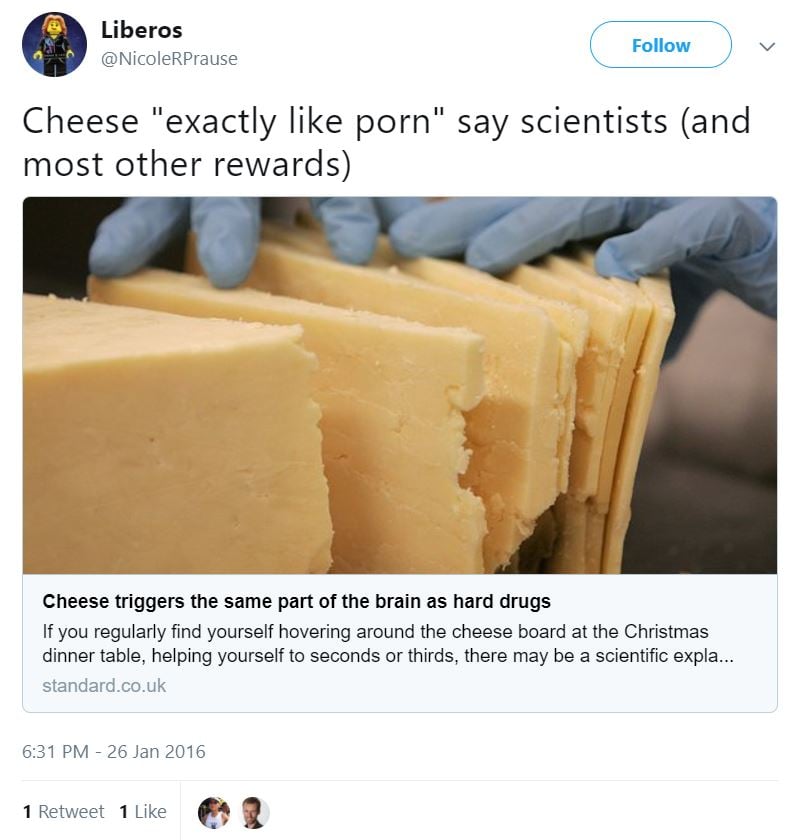
More falsehoods. What the article actually said:
Researchers from the University of Michigan have revealed that cheese contains a chemical found in addictive drugs. Using the Yale Food Addiction Scale, designed to measure a person’s cravings, the study found that cheese is particularly moreish because it contains casein. The chemical, which is found in all dairy products, can trigger the brain’s opioid receptors, producing a feeling of euphoria linked to those of hard drug addiction.
One of Prause’s core claims is that viewing puppies play, or eating cheese/chocolate are neurological & hormonally no different than masturbating internet porn. This talking point is meant to debunk any and all neurological studies on porn users. No actual neuroscientist agrees with Prause’s unsupported claim here. Don Hilton MD wrote an article debunking this and other baseless assertions: Correcting Misunderstandings About Neuroscience and Problematic Sexual Behaviors
—————–
Attacking concept of porn as a public health problem:
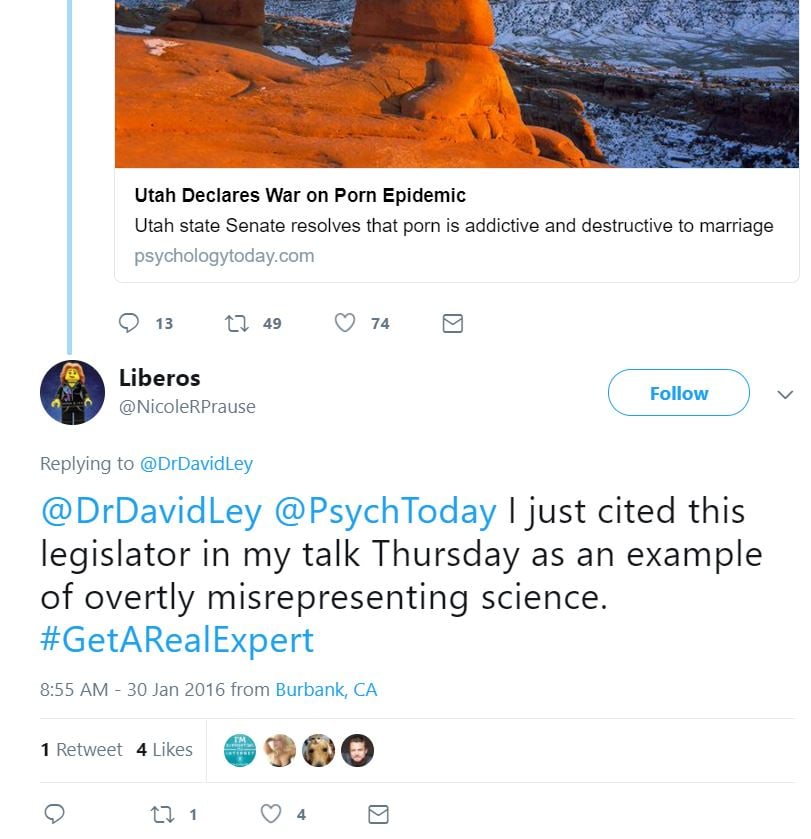
Everyone else misrepresents science (but never a specific example). Yet another example of Prause misrepresenting her own study.
—————–
A talk about her fabricated “anti-science” attacks
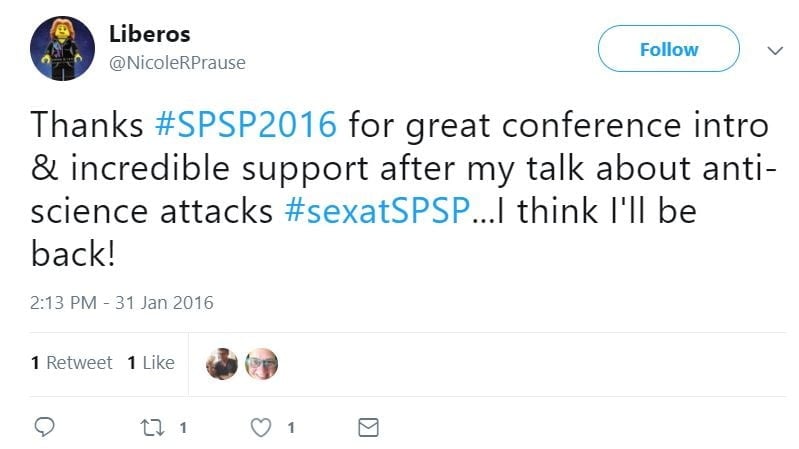
Did Prause mention that her best known papers have been critiqued 16 times in the peer-reviewed literature?
- Steele et al., 2013: 1, 2, 3, 4, 5, 6, 7.
- Prause et al., 2015: 1, 2, 3, 4, 5, 6, 7, 8.
- Prause & Pfaus, 2015. Letter to the editor by Richard A. Isenberg MD (2015)
—————–
Attacking the concept of porn as a public health problem (one-sided article quoting only Ley and Prause):
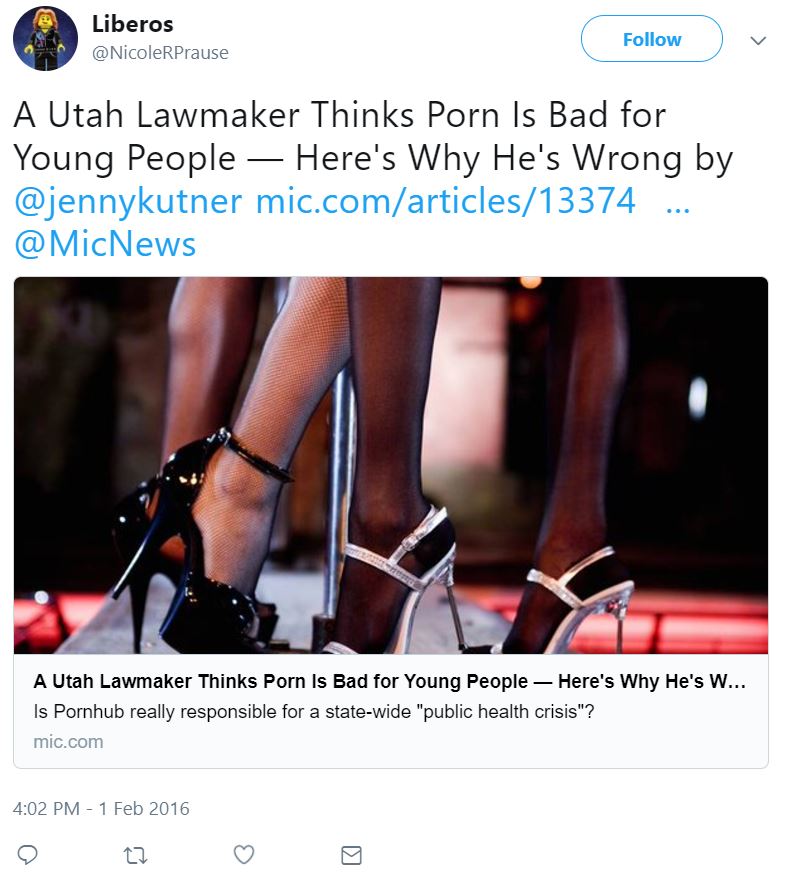
—————–
Attacking the concept of porn as a public health problem – yet another one-sided article quoting only Ley and Prause:
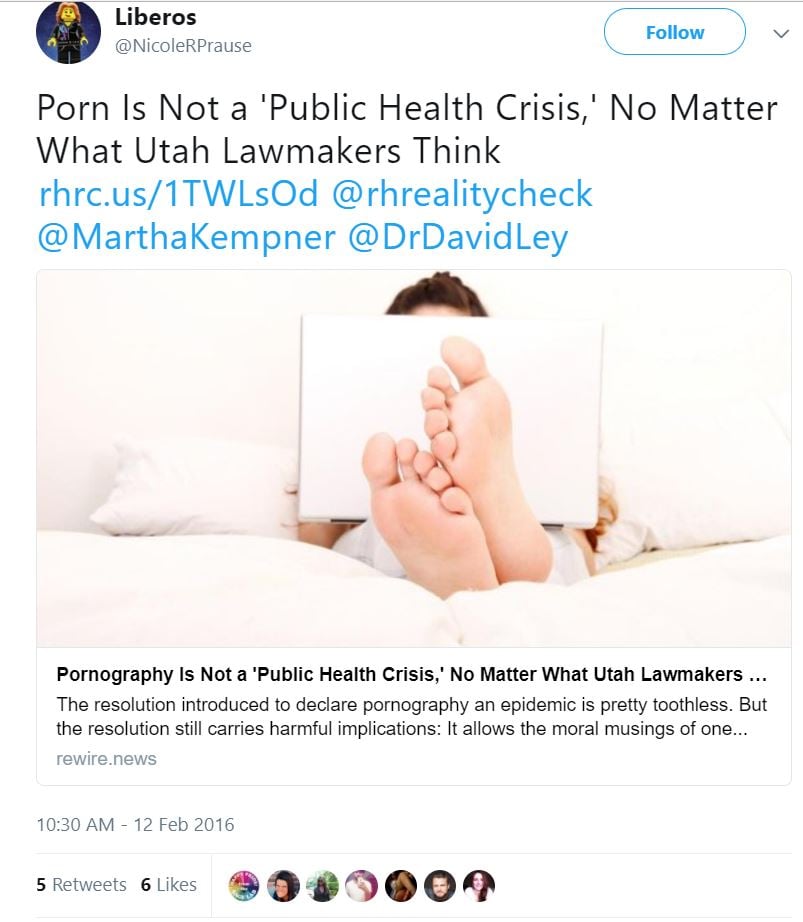
How do Ley & Prause get so many pro-porn industry articles into media outlets? Oh yeah.
—————–
Believe this? Links to her own site – Liberos:
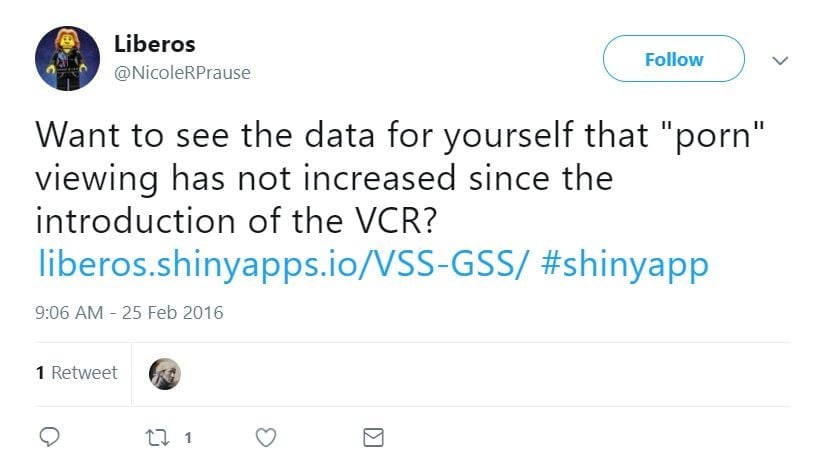
No else believes it, not even her close allies. A recent study, Young Australians’ use of pornography and associations with sexual risk behaviour (2017), on Australians ages 15-29 found that 100% of the men (82% of women) had viewed porn. Also, 69 percent of males and 23 percent of females first viewed porn at age 13 or younger. In addition this study reported that more frequent early pornography viewing correlated with current mental health problems.
—————–
Article featuring only David Ley and Prause’s solitary, flawed EEG study (which actually found habituation) has “falsified” the addiction model:
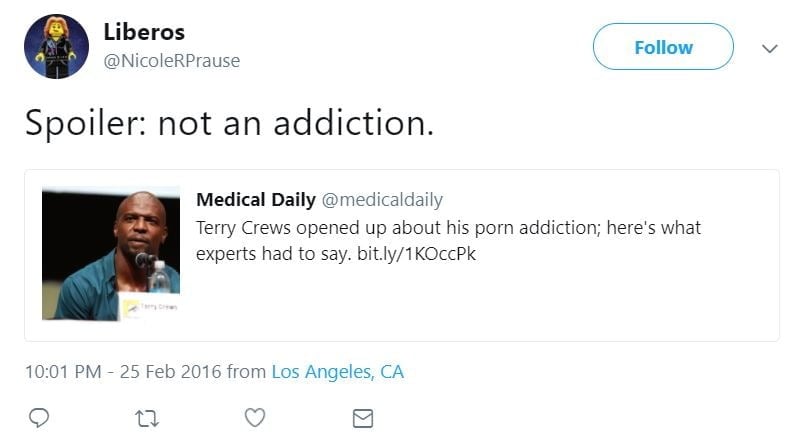
In response to proliferation of such biased articles in the press YBOP wrote this: How to recognize biased articles: They cite Prause et al. 2015 (falsely claiming it debunks porn addiction), while omitting over 3 dozen neurological studies supporting porn addiction (April, 2016).
—————–
Prause misrepresenting a paper by well respected academics: Should Compulsive Sexual Behavior be Considered an Addiction? (Kraus et al., 2016).
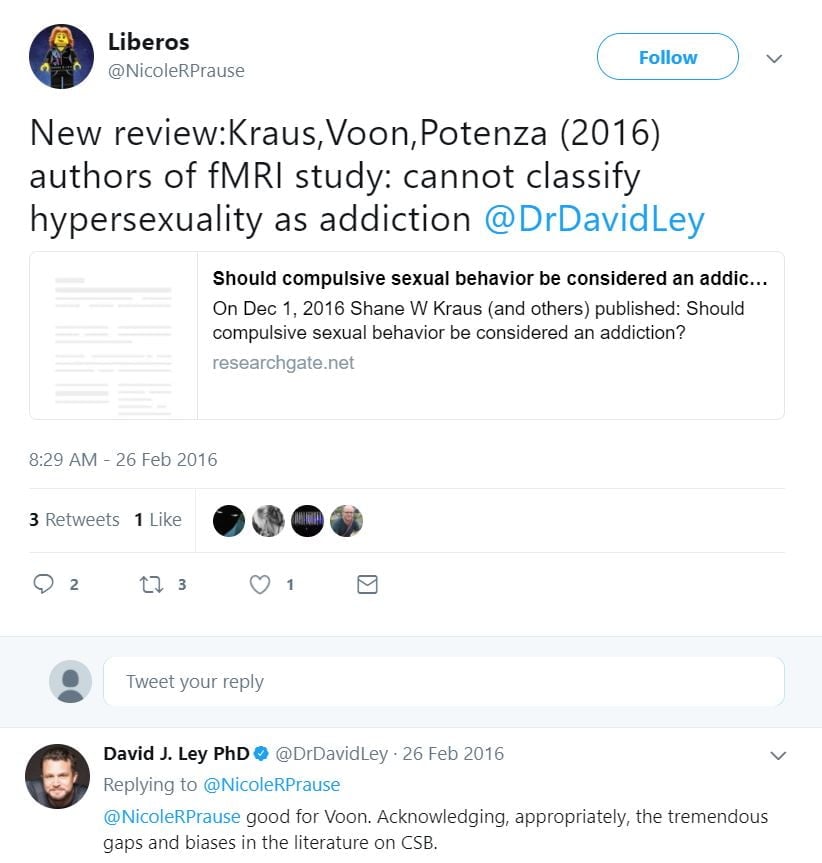
Actually, the paper said CSB (hypersexuality) looked like an addiction:
With the release of DSM-5, gambling disorder was reclassified with substance use disorders. This change challenged beliefs that addiction occurred only by ingesting of mind-altering substances and has significant implications for policy, prevention and treatment strategies. Data suggest that excessive engagement in other behaviors (e.g. gaming, sex, compulsive shopping) may share clinical, genetic, neurobiological and phenomenological parallels with substance addictions.
Another area needing more research involves considering how technological changes may be influencing human sexual behaviors. Given that data suggest that sexual behaviors are facilitated through Internet and smartphone applications, additional research should consider how digital technologies relate to CSB (e.g. compulsive masturbation to Internet pornography or sex chatrooms) and engagement in risky sexual behaviors (e.g. condomless sex, multiple sexual partners on one occasion).
Overlapping features exist between CSB and substance use disorders. Common neurotransmitter systems may contribute to CSB and substance use disorders, and recent neuroimaging studies highlight similarities relating to craving and attentional biases. Similar pharmacological and psychotherapeutic treatments may be applicable to CSB and substance addictions.
One year later the same scientists used stronger language: Is excessive sexual behaviour an addictive disorder? (Potenza et al., 2017) – Excerpts:
Research into the neurobiology of compulsive sexual behaviour disorder has generated findings relating to attentional biases, incentive salience attributions, and brain-based cue reactivity that suggest substantial similarities with addictions.
Compulsive sexual behaviour disorder seems to fit well with non-substance addictive disorders proposed for ICD-11, consistent with the narrower term of sex addiction currently proposed for compulsive sexual behaviour disorder on the ICD-11 draft website. We believe that classification of compulsive sexual behaviour disorder as an addictive disorder is consistent with recent data and might benefit clinicians, researchers, and individuals suffering from and personally affected by this disorder.
—————–
Another article taking a swipe at Terry Crews:
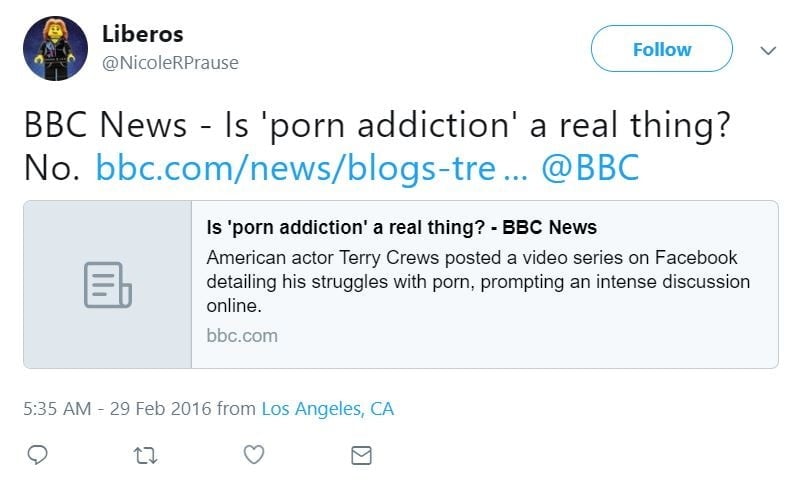
The only expert quoted: Prause. The only study mentioned: hers. See How to recognize biased articles: They cite Prause et al. 2015 (falsely claiming it debunks porn addiction), while omitting over 3 dozen neurological studies supporting porn addiction (April, 2016).
—————–
Prause gets another gig:
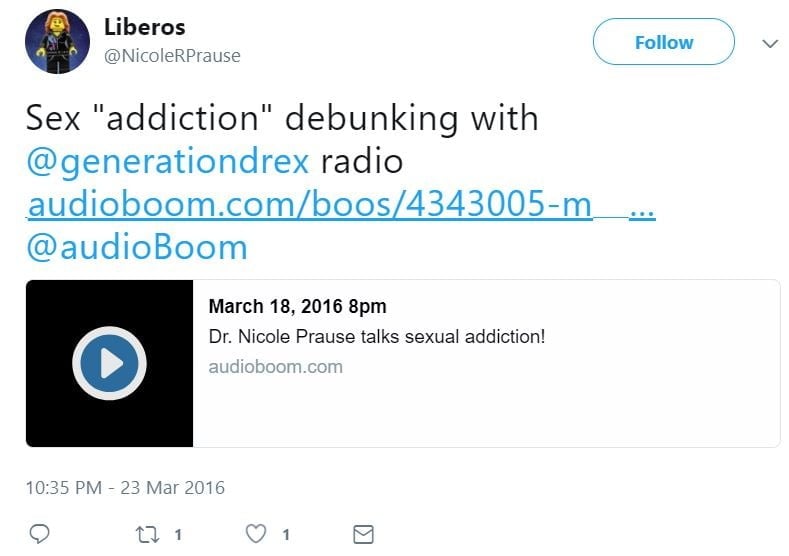
—————–
Attacking concept of porn as a public health problem:
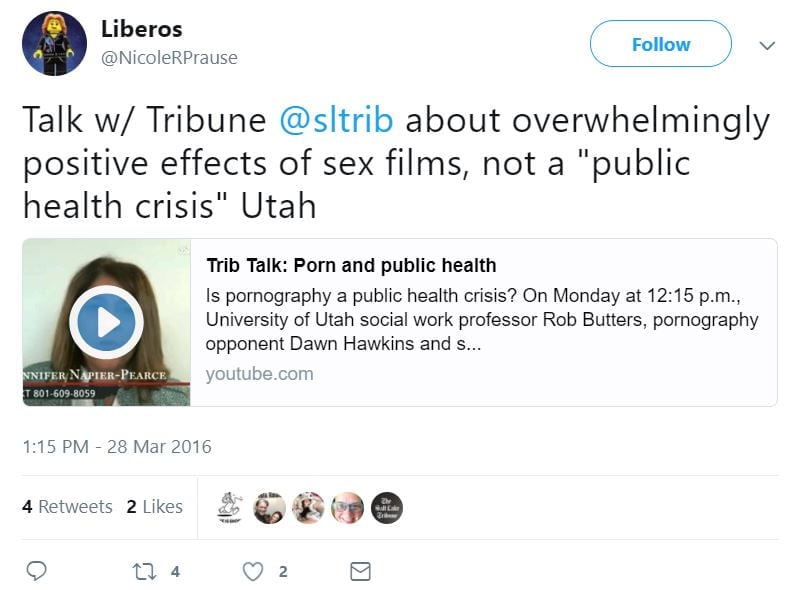
Judge for yourself. This page contains links to hundreds of studies and several reviews of the literature: current state of the research on Internet porn addiction and porn’s effects.
—————–
Prause gets yet another article, with her as the world’s authority, placed into a major publication:
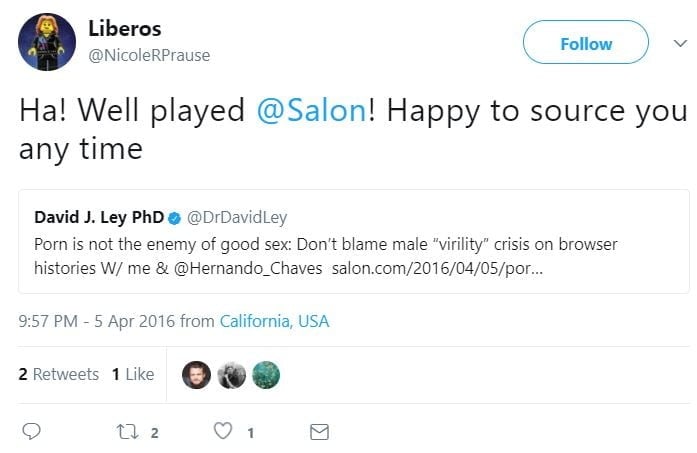
Does money buy press coverage?
—————–
Cherry-picked support for exaggerated claim:
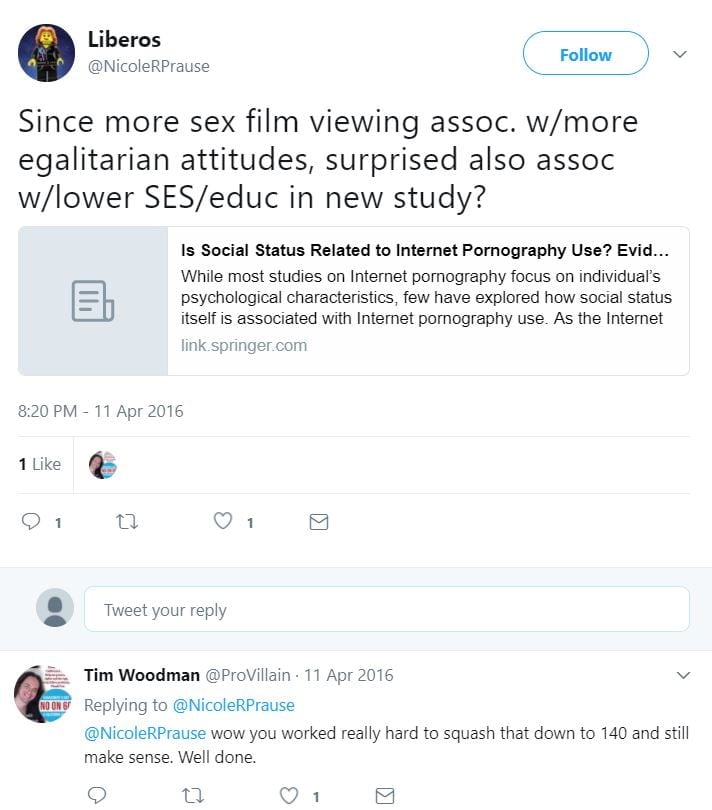
The truth: over 25 studies link porn use to “un-egalitarian attitudes” toward women and sexist views. View the summary from this 2016 meta-analysis of 135 studies: Media and Sexualization: State of Empirical Research, 1995–2015.
—————–
Yet another propaganda piece, smearing concept of porn as a public health problem, featuring non-academic Prause as the “expert”:
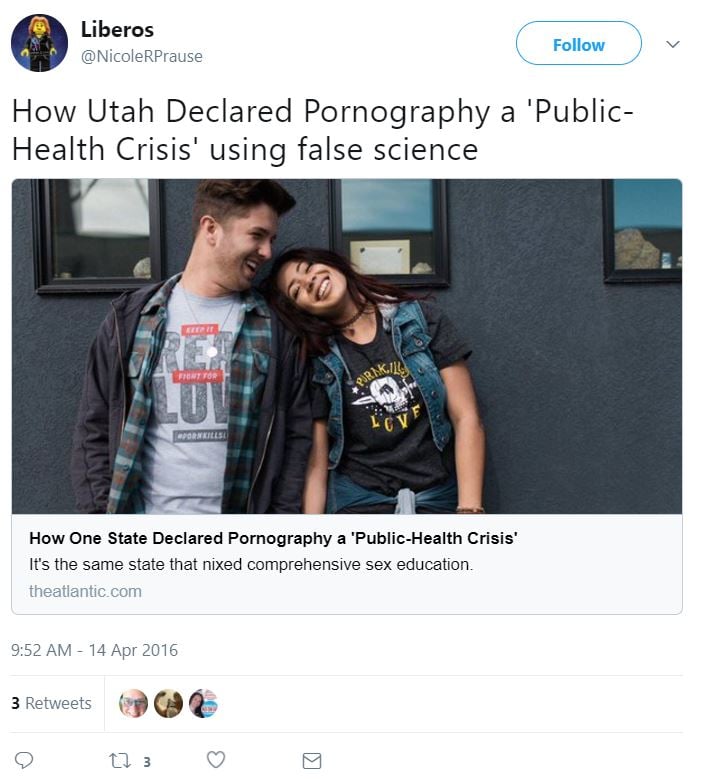
And of course featuring Prause’s solitary, flawed EEG study (which actually found habituation), while ignoring academics (40 neuroscience-based studies) providing strong support for the addiction model.
If you want to see several comments under the article by Prause (posting as ), see this page.
—————–
Prause claims all who believe porn can be harmful and addictive are “science-illiterate & misogynistic”
Link to twitter thread (which Prause later deleted)
—————–
Ley & Prause team up to misrepresent article, attack porn-addiction concept:
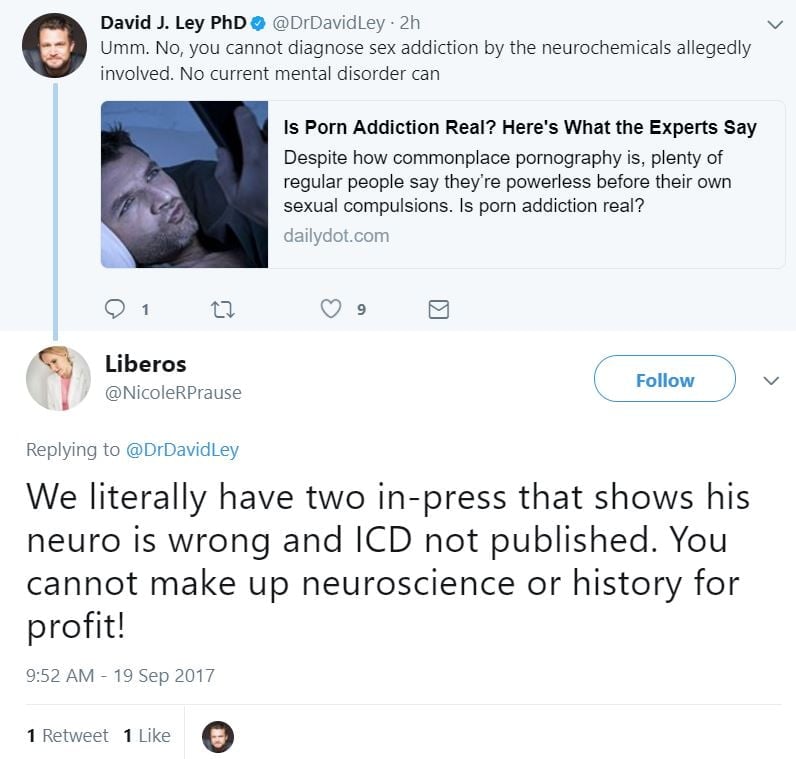
Nope. As of more than 2 years later, Prause had nothing in the press.
Another attack on the same article. No one fabricated neuroscience (as always Prause fails to provide an example):
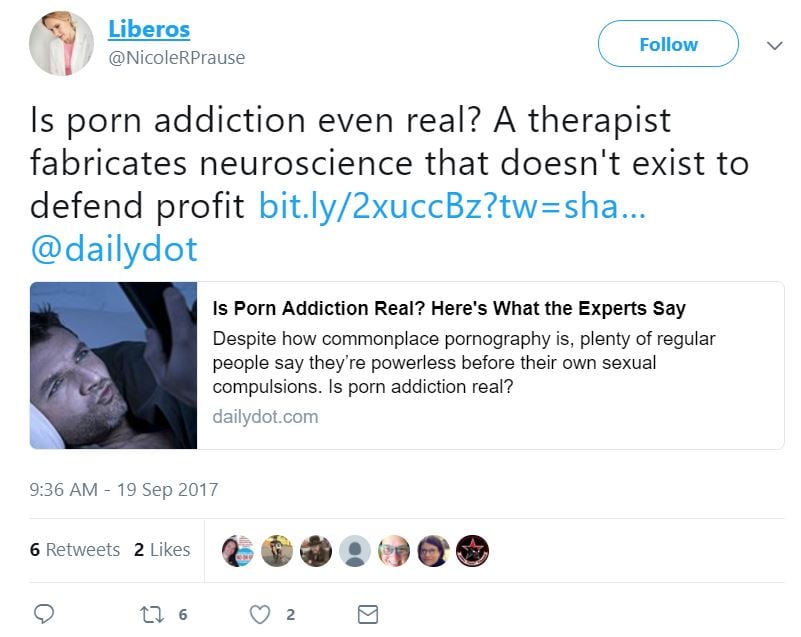
Yet another tweet about the same article. Prause successfully bullied the Daily Dot into removing the well known fact that the ICD-11 was to include “Compulsive Sexual Behavior Disorder.”
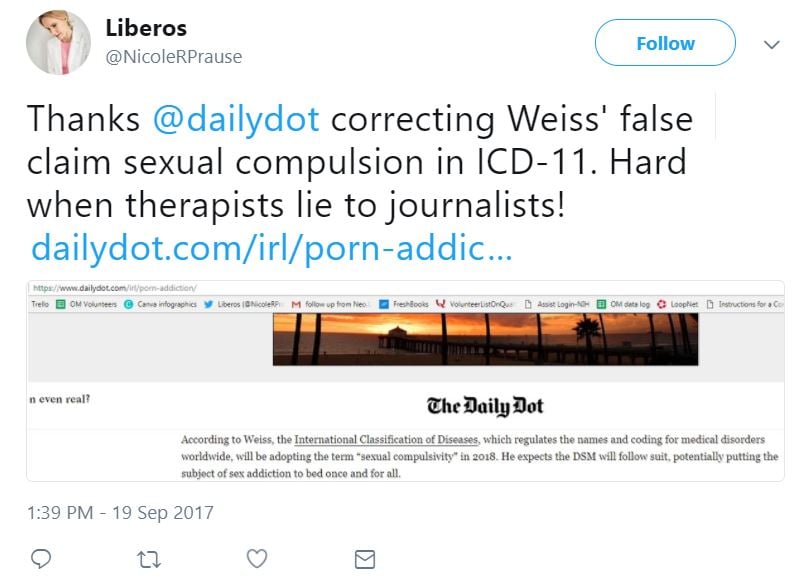
Sorry Daily Dot – it’s 2018 and The International Classification of Diseases (ICD-11) now contains a new diagnosis suitable for porn addiction or sex addiction: “Compulsive Sexual Behavior Disorder.”
Prior to the release of the “implementation version” a beta draft of the ICD-11 was also put online, and made available for interested parties to comment on. (A simple sign-up is needed to view and participate.) Prause spent the last 3 years obsessively posting on the ICD-11 beta draft site, doing her best to prevent the CSBD diagnosis from making it into the final manual (she failed). Prause posted more comments in the beta-draft comment section than everyone else combined.
—————–
Attacking concept of porn as a public health problem – article with Prause as the expert, telling fibs:
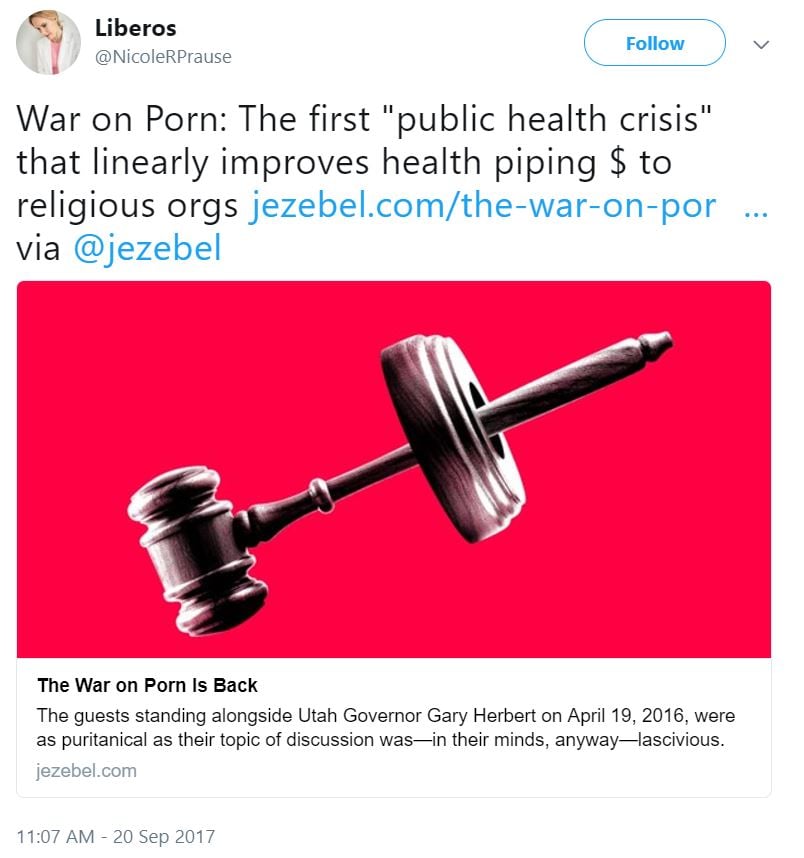
Excerpt from the article:
Prause submits, it can have actual benefits: “[Porn] lowers stress biomarkers, raises life satisfaction, increases verbal memory kills, improves marriage satisfaction, decreases cancer associated with male prostate because it encourages masturbation, and increases your libido.”
The above is pure nonsense. It is the exact opposite of what the preponderance of the research finds. Porn use is associated with:
- Higher stress biomarkers – PA Axis Dysregulation in Men With Hypersexual Disorder (Chatzittofis, 2015), The Role of Neuroinflammation in the Pathophysiology of Hypersexual Disorder (Jokinen et al., 2016)
- Lower life satisfaction – Over 55 studies link porn use to poorer mental-emotional health & poorer cognitive outcomes.
- Decreased verbal memory skills and poorer cognition – Can porn use affect memory and concentration?
- Poorer marriage satisfaction – Almost 60 studies link porn use to less sexual and relationship satisfaction. All studies involving males have reported more porn use linked to poorer sexual or relationship satisfaction.
- Decreased libido – This list contains 27 studies linking porn use/porn addiction to sexual problems and lower arousal to sexual stimuli.
—————–
Trying to counter 9 recent studies revealing historic levels of sexual dysfunctions, and startling rates of a new scourge: low libido, documented in this lay article and in this peer-reviewed paper involving 7 US Navy doctors – Is Internet Pornography Causing Sexual Dysfunctions? A Review with Clinical Reports (2016):
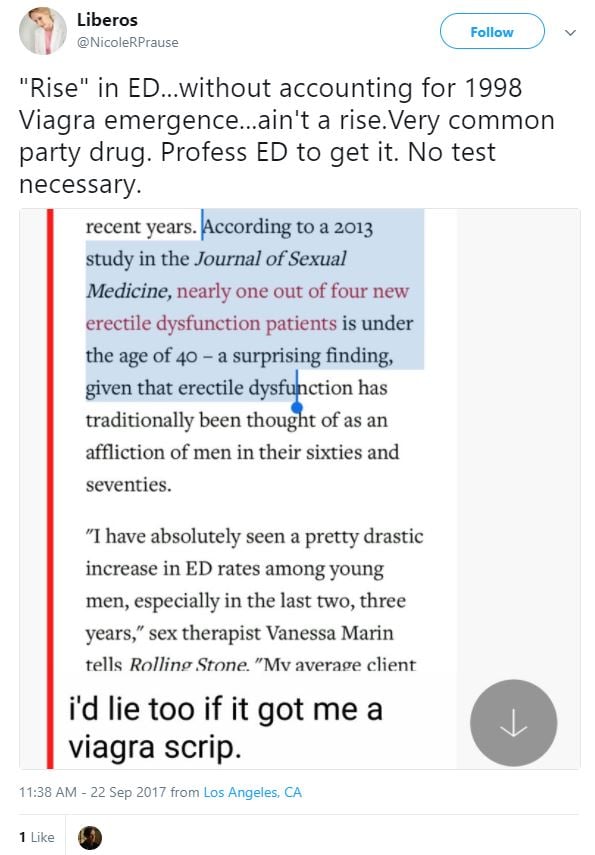
Sometimes Prause & Ley blame masturbation for chronic unexplained ED in young men, other times they blame Viagra. The vital insights is that ‘it’s anything but porn!’
Prause cited nothing as, once again, there is no empirical support for Ley’s claim that the introduction of Viagra led to men finally tell the truth in studies on sexual dysfunction. We are not talking about an increase in men visiting their doctors for ED medication. The ED rates refer only to peer-reviewed studies (usually anonymous surveys) on population-wide rates of sexual dysfunction. To put it another way, Prause is claiming that in every single study published between 1948 and 2010, in countries all over the world, the male participants consistently lied about their erectile functioning. Then in 2010 (13 years after Viagra was introduced) all young men, and only the young men, started to tell the truth in anonymous questionnaires about erectile functioning. That is absurd. Prause’s claim is like saying that the introduction of aspirin caused studies to report a 1000% increase in headaches among one age group that previously seldom had headaches.
—————–
Here, most porn research is bad research:
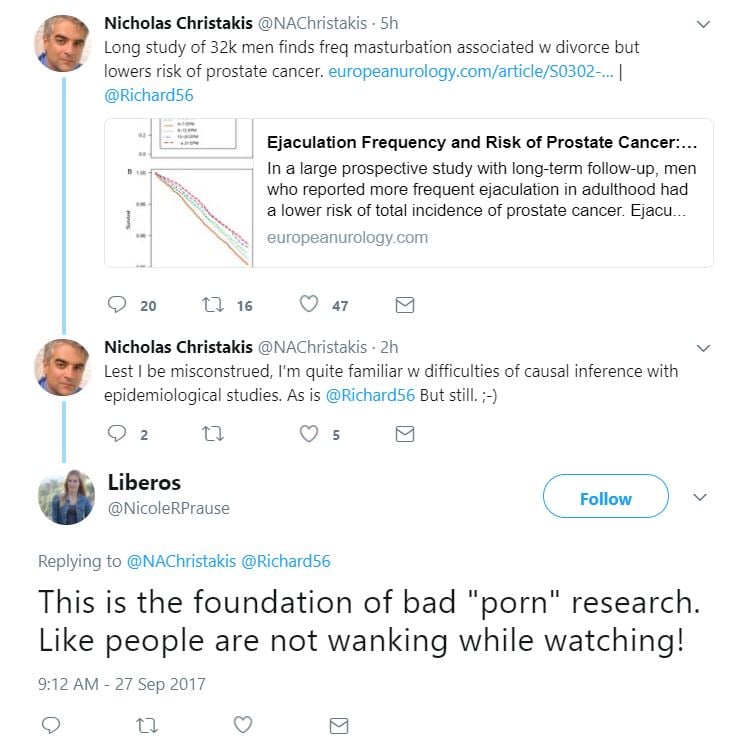
—————–
Makes claim, but offers no documentation:
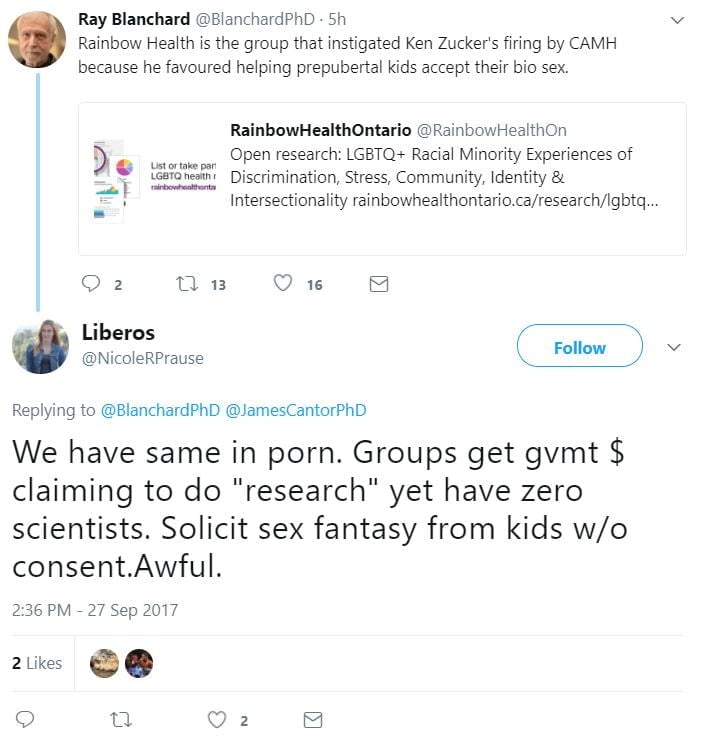
Prause has tweeted this many times, yet has never provided one iota of evidence.
—————–
Everything in this tweet to Mark Griffiths is fabricated:
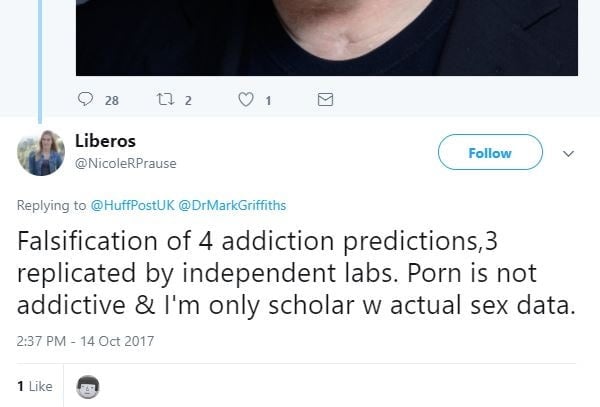
Prause is probably referring to the single paragraph stuffed into her thoroughly debunked “letter to the editor”: Critique of: Letter to the editor “Prause et al. (2015) the latest falsification of addiction predictions“ (2016). Prause claims about “actual sex data” is without support, and nowhere to be found.
—————–
Prause is trying to conflate the concept of porn as a public health problem with homophobia:
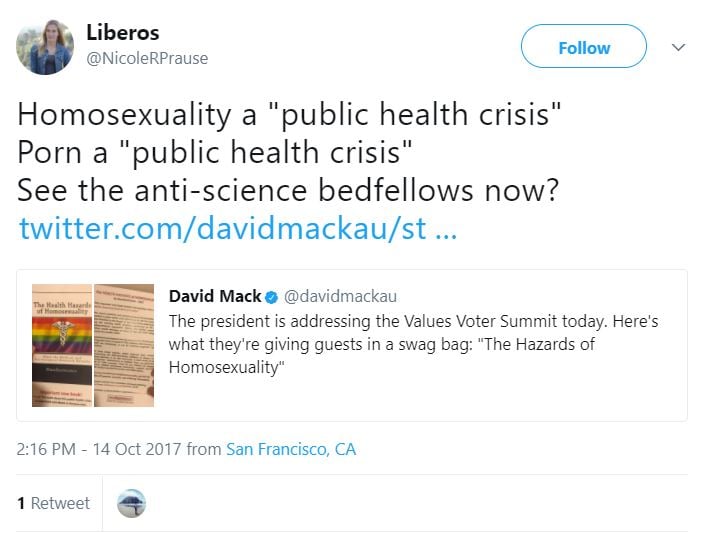
—————–
Trolling, name-calling, as we have come to expect:
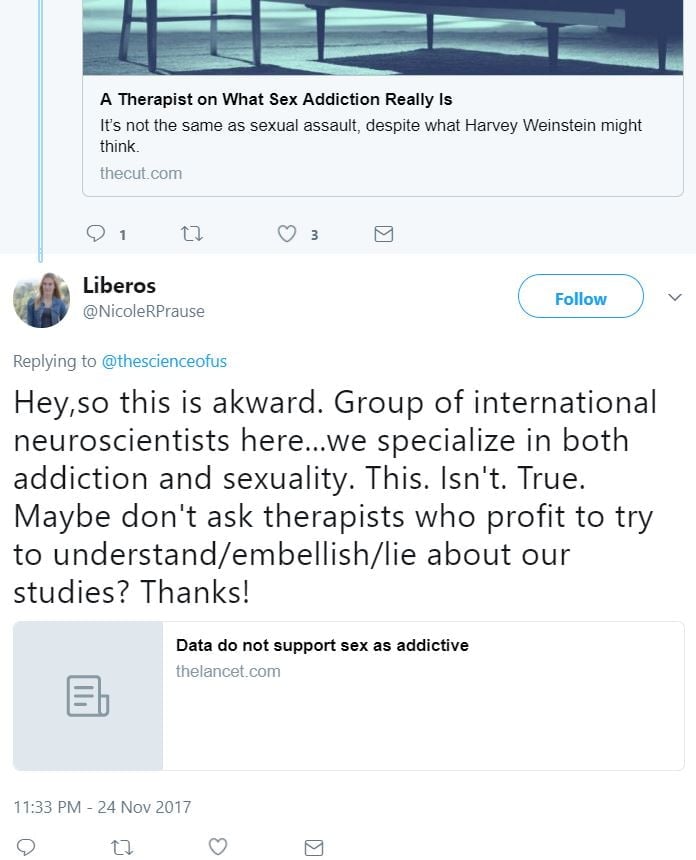
Hey, this is awkward: Everything in Prause’s 240-word letter to Lancet is completely debunked in this extensive critique: Analysis of “Data do not support sex as addictive” (Prause et al., 2017). Also awkward: The real experts’ opinions on porn/sex addiction? This list contains 20 recent literature reviews & commentaries by some of the top neuroscientists in the world. All support the addiction model.
—————–
Prause posts this 240-word letter to Lancet over and over and over…
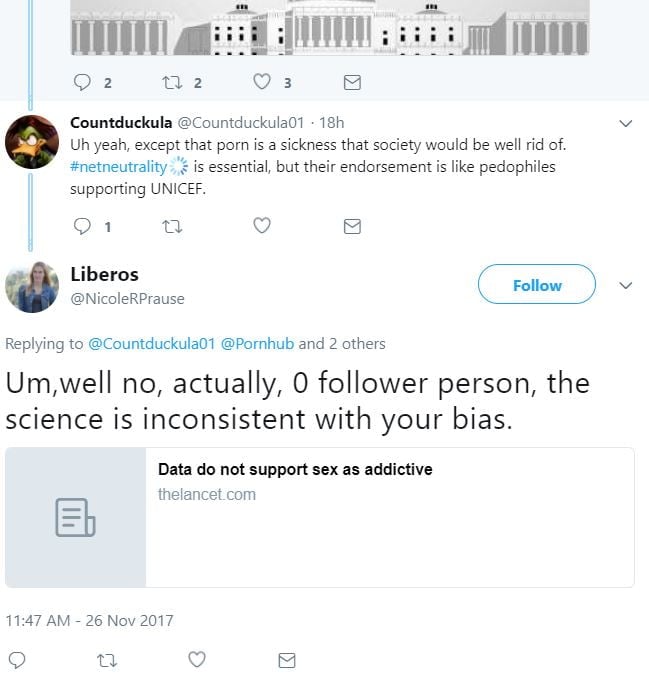
No matter how often one posts junk, it’s still junk. Everything in Prause’s 240-word letter to Lancet is completely debunked in this extensive critique: Analysis of “Data do not support sex as addictive” (Prause et al., 2017)
—————–
Yet another tweet that doesn’t reflect the content:
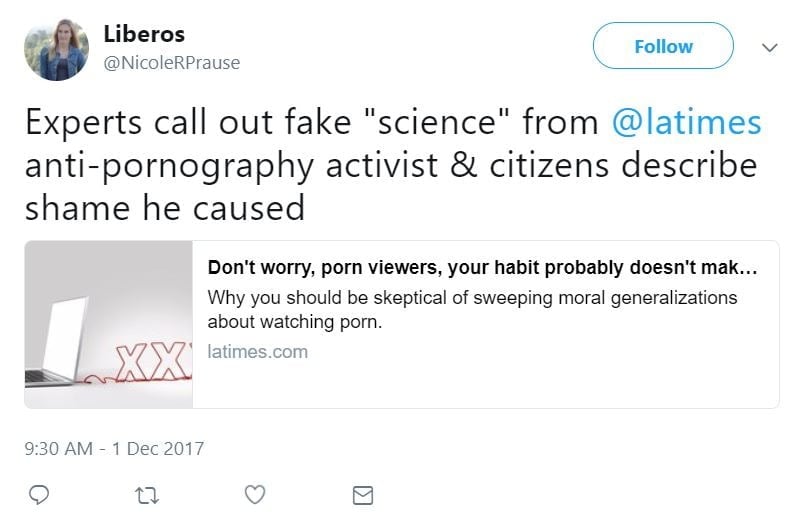
The “expert” is AASECT member and Prause ally, Doug Braun-Harvey. This is all he has:
Crippen engages in premature evaluation, a common malady that is treatable by learning from the hundreds of sexual scientists, educators and therapists who tirelessly study and attempt to apply sexual science to avoid sweeping morally biased positions.
Nothing about “fake science,” and not a single citation to support his claim.
——————
One of Prause’s primary tactics is to call anyone who disagrees with her a misogynist: this includes individual females and organizations run by females with a majority of female members (SASH and IITAP). Prause has an infographic naming several people as misogynists, which she has tweeted 50 times or so, and posted on Quora another 20 times:
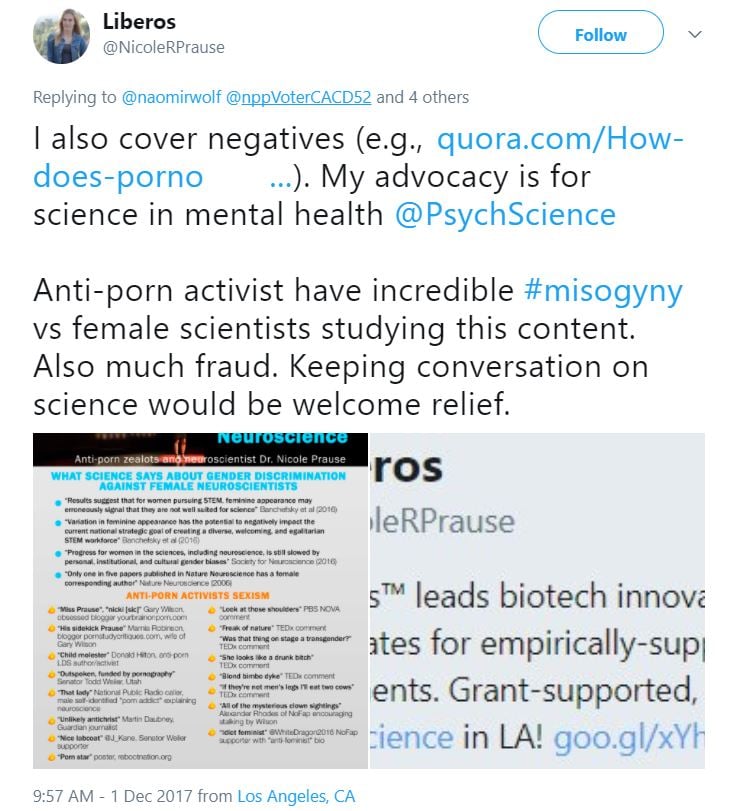
Prause knows the prime directive of propaganda: “Repeat a lie often enough and it becomes the truth.”
——————
Taking on feminist Naomi Wolf, Prause cites Taylor Kohut’s 2 dubious outliers:
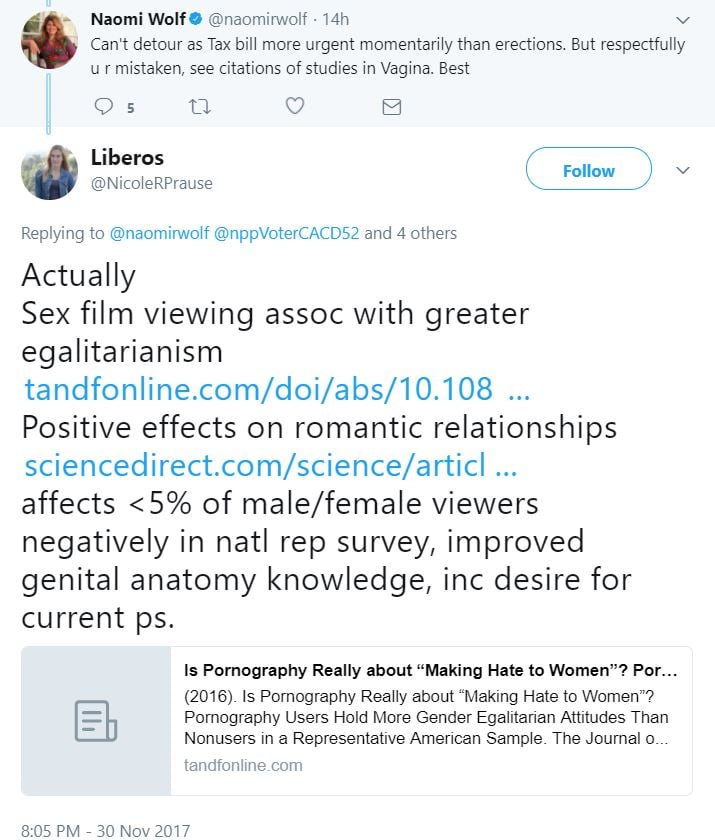
Both debunked:
- Critique of “Perceived Effects of Pornography on the Couple Relationship: Initial Findings of Open-Ended, Participant-Informed, Bottom-Up Research” (2017), Taylor Kohut, William A. Fisher, Lorne Campbell
- Critique of “Is Pornography Really about Making Hate to Women? Pornography Users Hold More Gender Egalitarian Attitudes Than Nonusers in a Representative American Sample” (2016), Taylor Kohut, Jodie L. Baer, Brendan Watts
Reality:
- Almost 70 studies link porn use to less sexual and relationship satisfaction. All studies involving males have reported more porn use linked to poorer sexual or relationship satisfaction.
- Porn use affecting beliefs, attitudes and behaviors? Check out individual studies – over 40 studies link porn use to “un-egalitarian attitudes” toward women and sexist views – or the summary of 135 studies from this 2016 meta-analysis: Media and Sexualization: State of Empirical Research, 1995–2015.
——————
Attacking a therapist’s book, then cites Marty Klein, who once boasted his very own webpage on the AVN’s Hall of Fame in recognition of his pro-porn advocacy serving the porn industry’s interests (since removed).

Zimbardo and Wilson dismantle Klein’s propaganda: More on porn: guard your manhood—a response to Marty Klein, by Philip Zimbardo & Gary Wilson (April, 2016)
——————
Attacks a study she doesn’t like as entirely false and shaming. Tweets her own cute picture of the 4 (not 5) kink organizations that put out proclamations opposing porn and sex addiction.
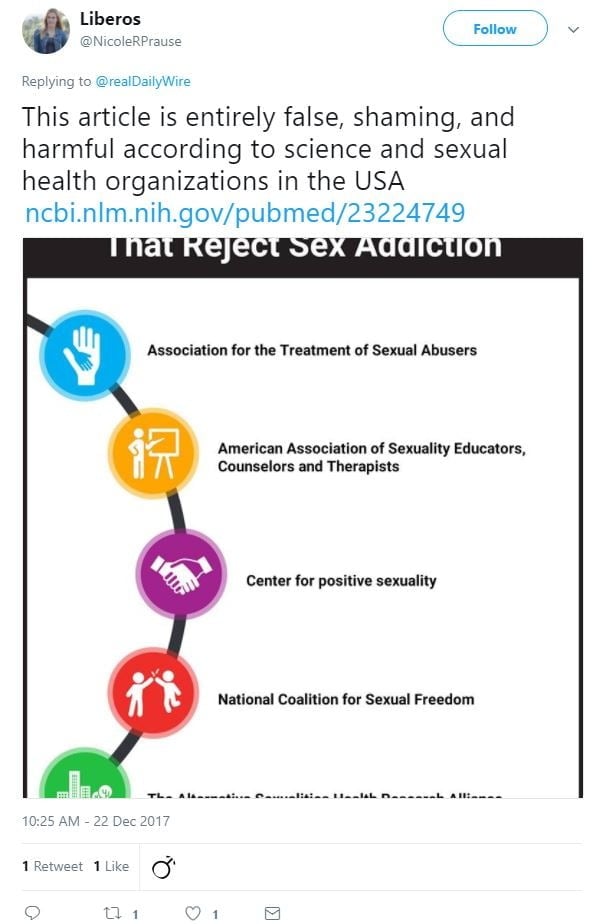
It was easy to debunk the kink organizations’ sloppy, poorly cited mish-mash: Dismantling the “group position” paper opposing porn and sex addiction (November, 2017)
——————
Ah yes, “fake news” sites:
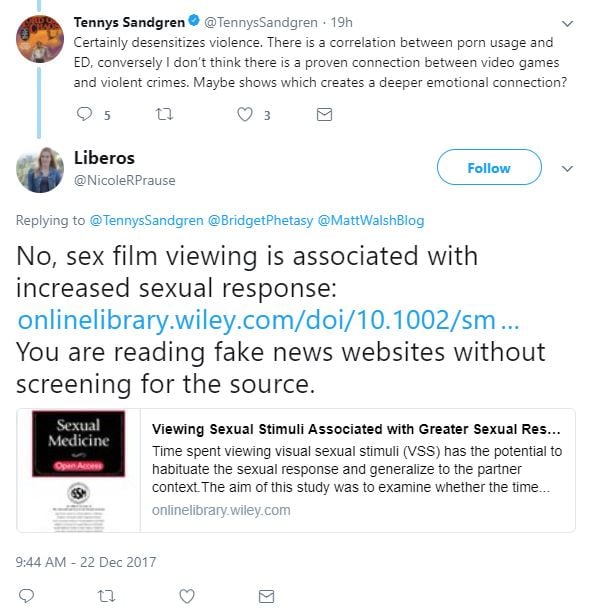
How about a fake study? Prause & Pfaus 2015 wasn’t a study on men with ED. It wasn’t a study at all. Instead, Prause claimed to have gathered data from four of her earlier studies, none of which addressed erectile dysfunction. It’s disturbing that this paper by Nicole Prause and Jim Pfaus passed peer-review as the data in their paper did not match the data in the underlying four studies on which the paper claimed to be based. The discrepancies are not minor gaps, but gaping holes that cannot be plugged. In addition, the paper made several claims that were false or not supported by their data. Prause & Pfaus 2015 as these 2 critiques expose, it cannot support a single claim it made:
- In the same journal as the paper: Letter to the editor by Richard A. Isenberg MD (2015)
- Very extensive lay critique: Nothing Adds Up in Dubious Study: Youthful Subjects’ ED Left Unexplained (2015)
As described above and here, both Nicole Prause and Jim Pfaus were caught lying about their paper (which stole bits and pieces from 4 earlier Prause studies – none of which involved Pfaus).
——————
Trolling, attacking this article.
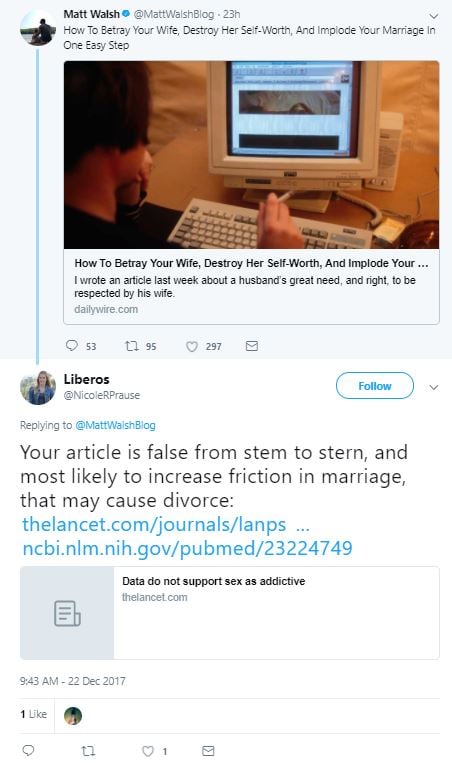
Prause cites her 240-word letter to Lancet, which is completely debunked in this extensive critique: Analysis of “Data do not support sex as addictive” (Prause et al., 2017). The real experts’ opinions on porn/sex addiction? This list contains 30 recent literature reviews & commentaries by some of the top neuroscientists in the world. All support the addiction model.
Prause also cites her own paper, which said:
Viewing the erotic films also induced greater reports of negative affect, guilt, and anxiety
Negative affect means negative emotions. Oops.
——————
A Štulhofer and Hald paper where they misrepresents their own findings:
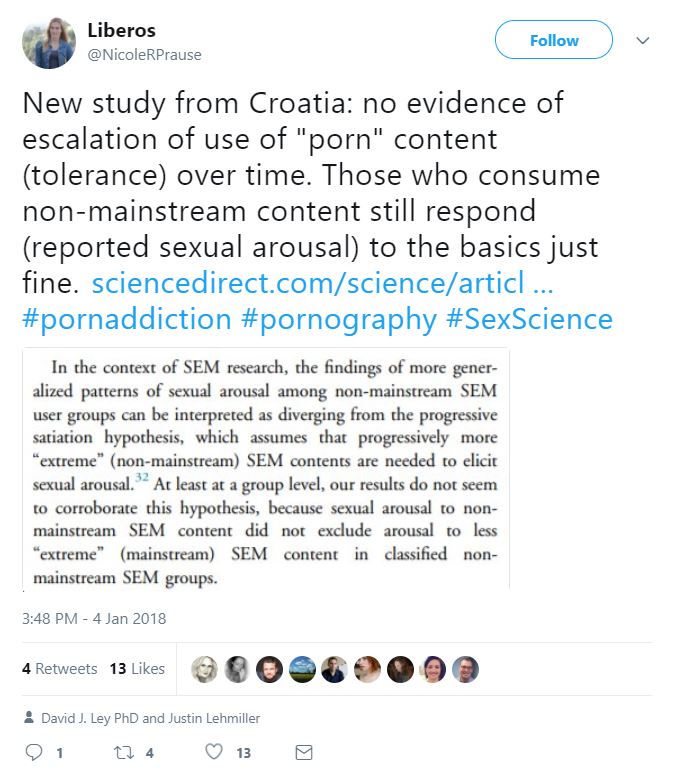
In reality, the study supports escalation of porn use. See our analysis here: “Sexual Arousal and Sexually Explicit Media (SEM): Comparing Patterns of Sexual Arousal to SEM and Sexual Self-Evaluations and Satisfaction Across Gender and Sexual Orientation” (2017).
Note: Gert Hald is responsible for the most egregious study ever published on porn – the PCES. YBOP thoroughly exposes what the researchers did to get their results: Self-Perceived Effects of Pornography Consumption (2008), Hald GM, Malamuth NM (the PCES).
Note: The Štulhofer paper attempting to debunk porn-related ED actually found a few correlations between ED and porn use, but hid them away. In addition, Štulhofer omitted three significant correlations between porn use and sexual problems that were presented to a European conference.
So it’s no surprise that they spun the results and methodology of their current paper.
——————
More spin:
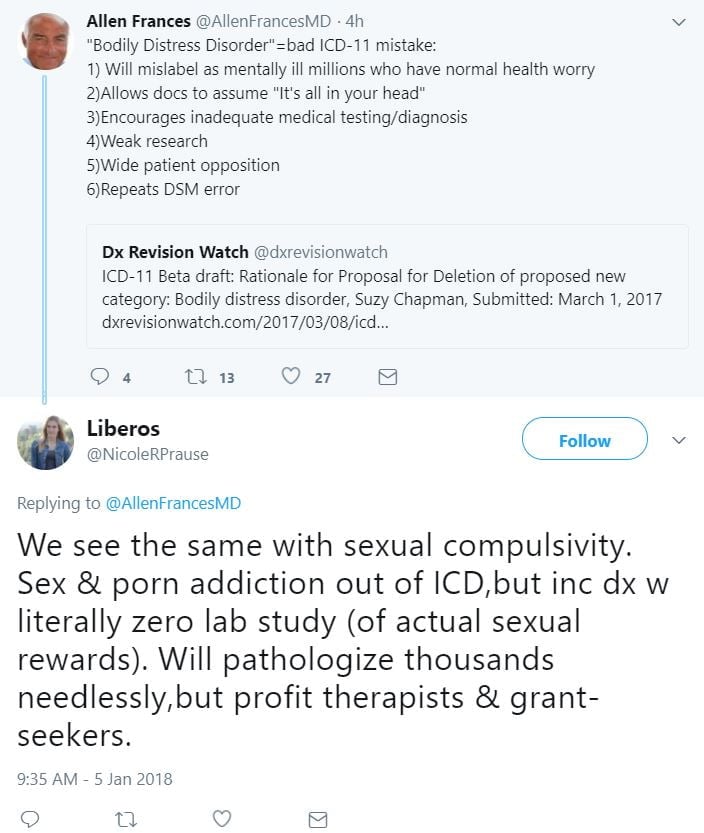
The deniers of porn addiction are agitated because the latest version of the World Health Organization’s medical diagnostic manual, The International Classification of Diseases (ICD-11), contains a new diagnosis suitable for diagnosing what is commonly referred to as ‘porn addiction’ or ‘sex addiction.’ It’s called “Compulsive Sexual Behavior Disorder” (CSBD). The first section of this extensive critique expose Prause’s falsehoods surrounding the ICD-11: Debunking “Why Are We Still So Worried About Watching Porn?” by Marty Klein, Taylor Kohut, and Nicole Prause (2018).
For an accurate account of the ICD-11, see this recent article by The Society for the Advancement of Sexual Health (SASH): “Compulsive Sexual Behaviour” has been classified by World Health Organization as Mental Health Disorder. It begins with:
Despite a few misleading rumors to the contrary, it is untrue that the WHO has rejected “porn addiction” or “sex addiction.” Compulsive sexual behavior has been called by a variety of names over the years: “hypersexuality”, “porn addiction”, “sex addiction”, “out-of-control sexual behavior” and so forth. In its latest catalogue of diseases the WHO takes a step towards legitimizing the disorder by acknowledging “Compulsive Sexual Behaviour Disorder” (CSBD) as a mental illness. According to WHO expert Geoffrey Reed, the new CSBD diagnosis “lets people know they have “a genuine condition” and can seek treatment.”
——————
Prause citing a solitary flawed Taylor Kohut study, while ignoring 135 other studies:
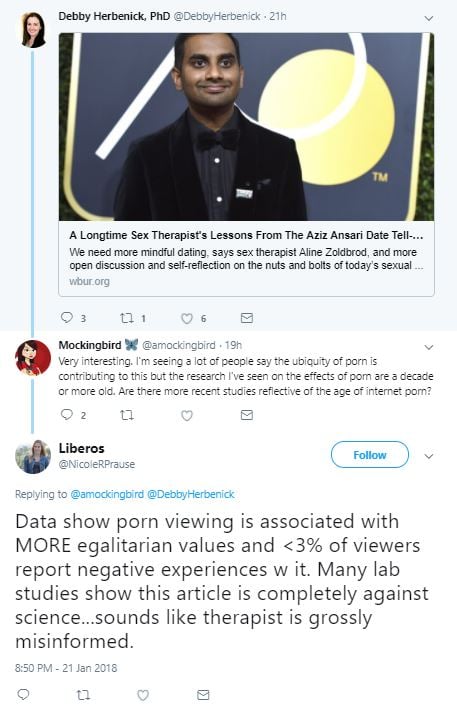
The Kohut study, exposed: Critique of “Is Pornography Really about Making Hate to Women? Pornography Users Hold More Gender Egalitarian Attitudes Than Nonusers in a Representative American Sample” (2016), Taylor Kohut, Jodie L. Baer, Brendan Watts.
In reality, Kohut’s findings are contradicted by nearly every other published study. Check out individual studies – over 25 studies link porn use to “un-egalitarian attitudes” toward women and sexist views – or the summary of 135 studies from this 2016 meta-analysis: Media and Sexualization: State of Empirical Research, 1995–2015.
——————
Attacking concept of porn as a public health problem:
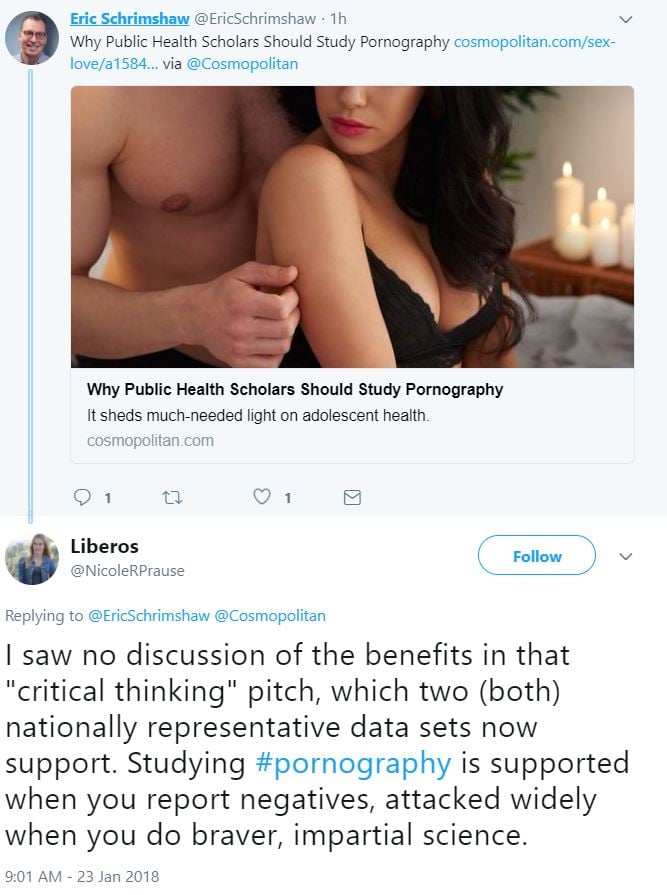
Again, Prause wants a discussion of porn’s so-called benefits. As documented in this section’s intro the 4 “benefits” she chronically claims, don’t exist.
——————
Again, with Prause and Ley leading the way, the deniers of porn addiction are agitated because the latest version of the World Health Organization’s medical diagnostic manual, The International Classification of Diseases (ICD-11), contains a new diagnosis suitable for diagnosing what is commonly referred to as ‘porn addiction’ or ‘sex addiction.’ It’s called “Compulsive Sexual Behavior Disorder” (CSBD). Nonetheless, in a bizarre “We lost, but we won” propaganda campaign, the deniers have been pulling out all the stops to spin this new diagnosis as a rejection of both “sex addiction” and “porn addiction.”
In 2018, Prause goes on multiple twitter rants trying futilely to convince the world that porn addiction and sex addiction were deliberately excluded from the ICD-11’s new diagnosis:
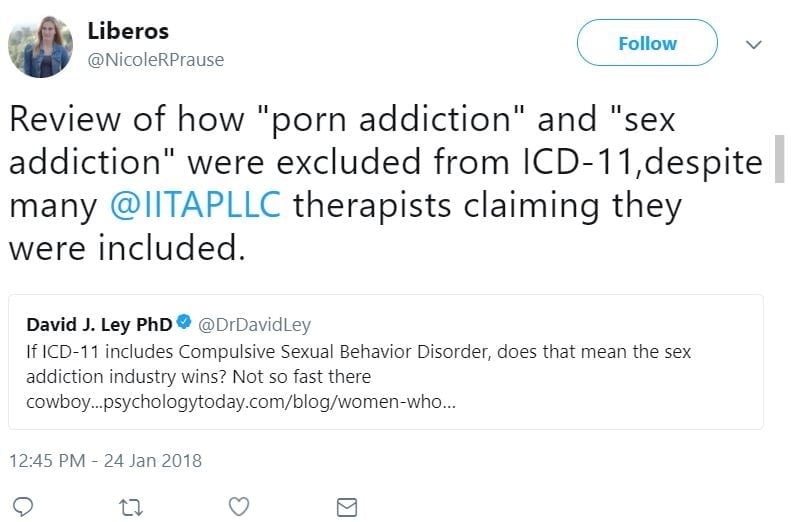
On the same day:
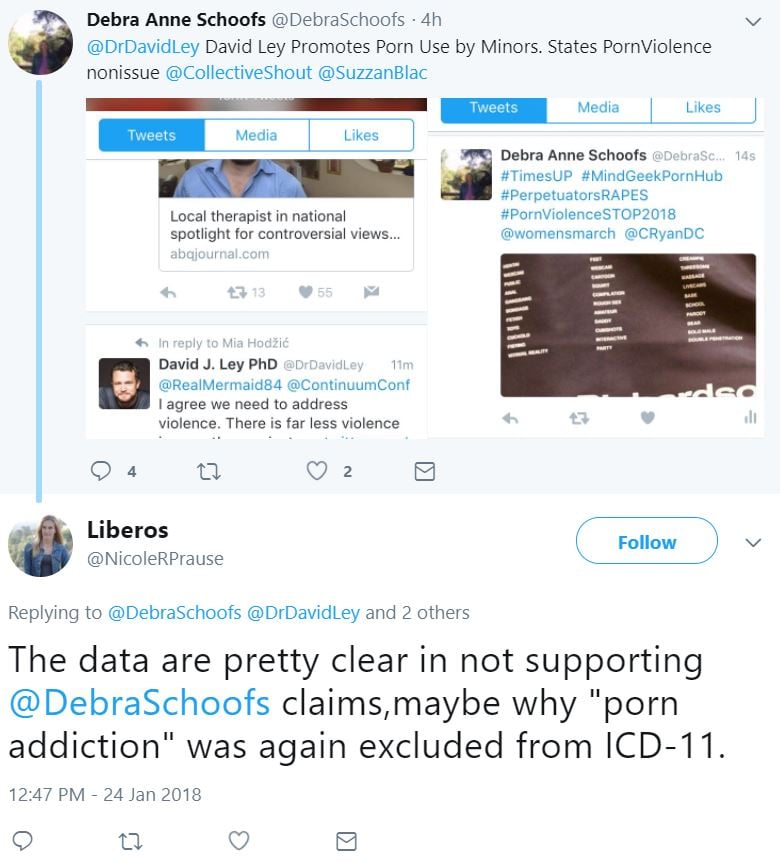
On the same day:
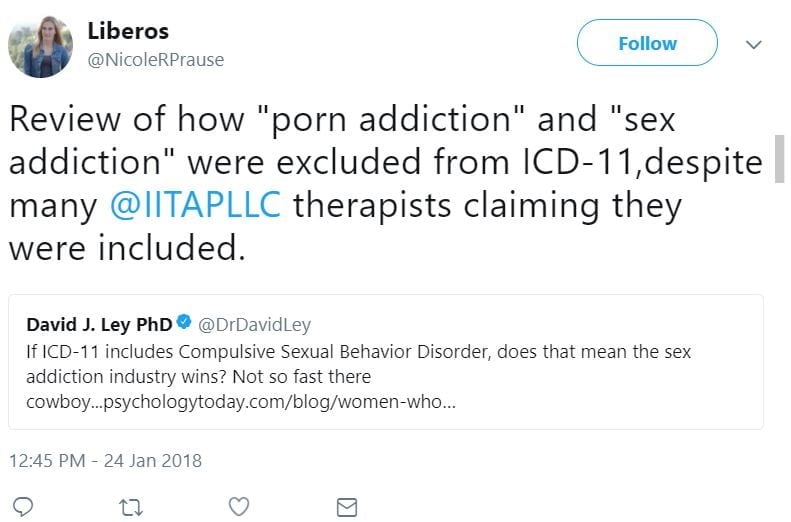
What the public may not know is that neither the ICD-11 nor the APA’s DSM-5 ever uses the word “addiction” to describe an addiction – whether it be gambling addiction, heroin addiction, cigarette addiction, or you name it. Both diagnostic manuals use the word “disorder” instead of “addiction” (i.e. “gambling disorder,” “nicotine use disorder,” and so on). Thus, “sex addiction” and “porn addiction” could never have been rejected, because they were never under formal consideration in the major diagnostic manuals. Put simply, there will never be a “porn addiction” diagnosis, just as there will never be a “meth addiction” diagnosis. Yet individuals with the signs and symptoms of consistent with either a “porn addiction” or a “methamphetamine addiction” can be diagnosed using the ICD-11’s provisions.
For a complete debunking of Prause’s claims, see: Debunking “Why Are We Still So Worried About Watching Porn?,” by Marty Klein, Taylor Kohut, and Nicole Prause (2018).
——————
Always spinning:
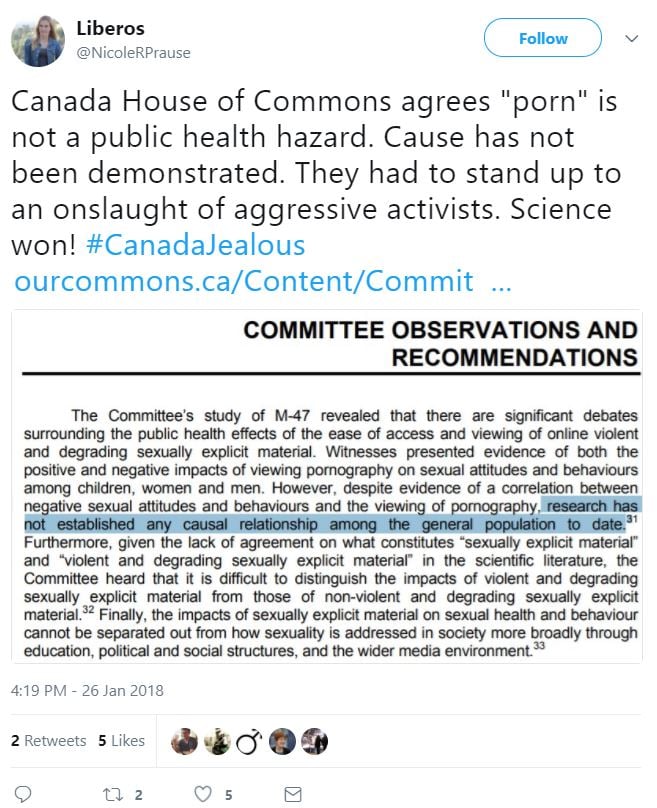
It was a small committee, not “the House of Commons.” The committee did not state that porn was not a public health hazard. It said that research has not established a causal relationship between porn and negative sexual attitudes and behaviors – as if cause can ever be established using the typical study methodology.
When confronted with hundreds of studies linking porn use to negative outcomes, a common tactic by pro-porn PhDs (and Canadian subcommittees) is to claim that “no causation has been demonstrated.” The reality is that when it comes to psychological and (many) medical studies, very little research reveals causation directly. For example, all studies on the relationship between lung cancer and cigarette smoking are correlative – yet cause and effect are clear to everyone but the tobacco lobby.
Due to ethical restrictions researchers are usually precluded from constructing experimental research designs that would prove whether pornography causes certain harms. Therefore, they use correlational models instead. Over time, when a significant body of correlational studies is amassed in any given research area, there comes a point where the body of evidence can be said to prove a point of theory, despite a lack of experimental studies. Put another way, no single correlation study may ever provide a “smoking gun” in an area of study, but the converging evidence of multiple correlational studies can establish cause and effect. When it comes to porn use, nearly every study published is correlative.
The majority of human studies on various addictions, including internet and porn addiction, are correlational. This page contains a growing list of studies strongly suggesting that internet use (porn, gaming, social media) causes mental/emotional problems, sexual problems, poorer relationships addiction-related brain changes, and other negative effects in some users. The lists of studies are separated into pornography studies and internet use studies. The 25 pornography studies are divided into 3 sections based on methodologies: (1) eliminating porn use, (2) longitudinal, (3) experimental exposure to porn (visual sexual stimuli).
——————
When Prause’s propaganda is challenged with a link to this page, she hits “block.”
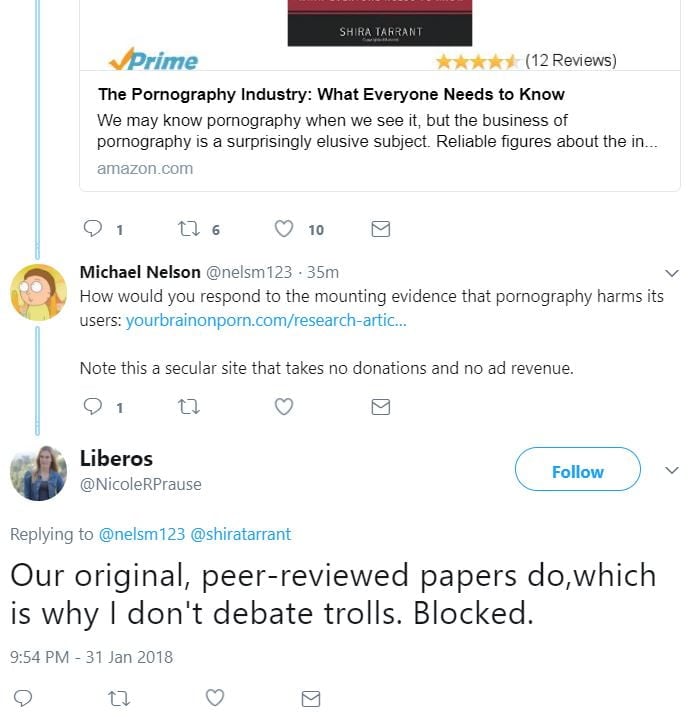
——————
Upset with another state declaring porn a public health problem, she got Andy Campbell to write a hit piece for Huffpost, and quote her (as mentioned above, Andy Campbell, has written several articles quoting Prause – including an article for Penthouse Magazine, featuring Prause)
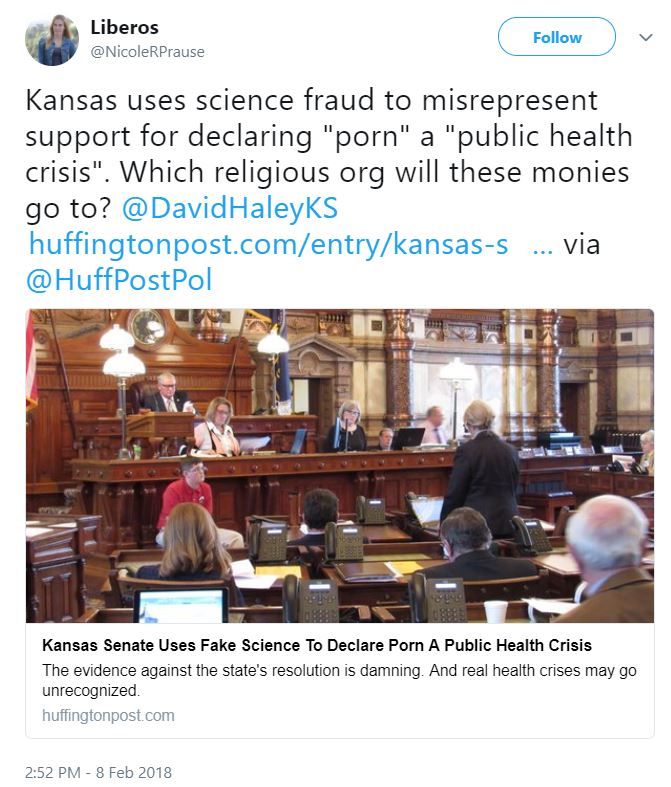
In the hit-piece we find Prause’s hilarious assertion that viewing images of puppies has exactly the same effect as watching hard core porn:
It’s true — pornography does that,” Dr. Prause said previously. “It’s also true with images of chocolate and images of puppies. You don’t see puppies being declared a public health hazard. These sex addiction studies are relying on ignorance, claiming that pornography is the same thing as cocaine and hoping you don’t know any different.
One of Prause’s core claims is that viewing puppies play, or eating cheese/chocolate are neurological & hormonally no different than masturbating internet porn. This talking point is meant to debunk any and all neurological studies on porn users. No actual neuroscientist agrees with Prause’s claim here. Don Hilton MD wrote an article debunking this and other silly assertions: Correcting Misunderstandings About Neuroscience and Problematic Sexual Behaviors.
Prause contradicts herself when she tweets as RealYBOP (August, 2018):
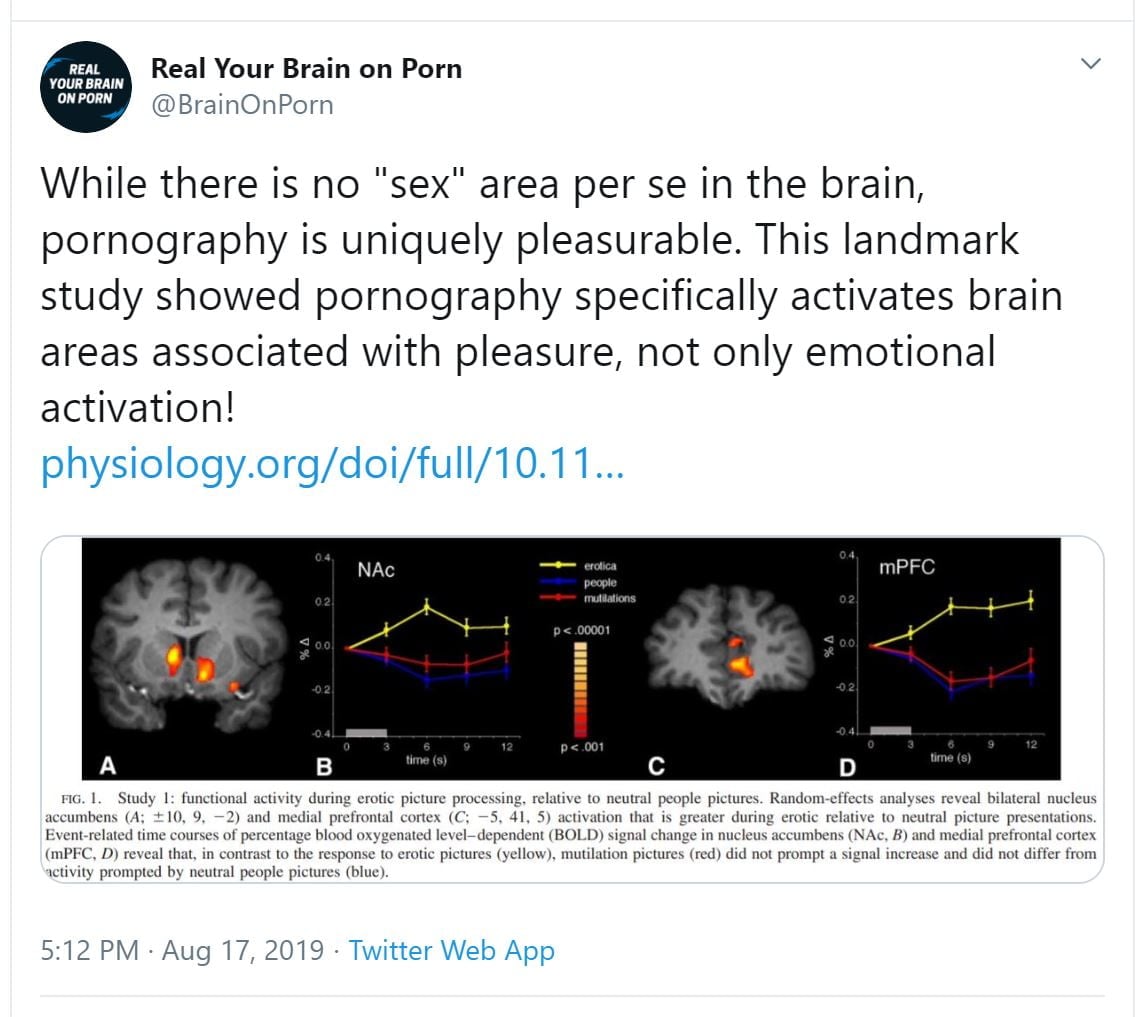
——————
Trolling a NY Times article with false claims:
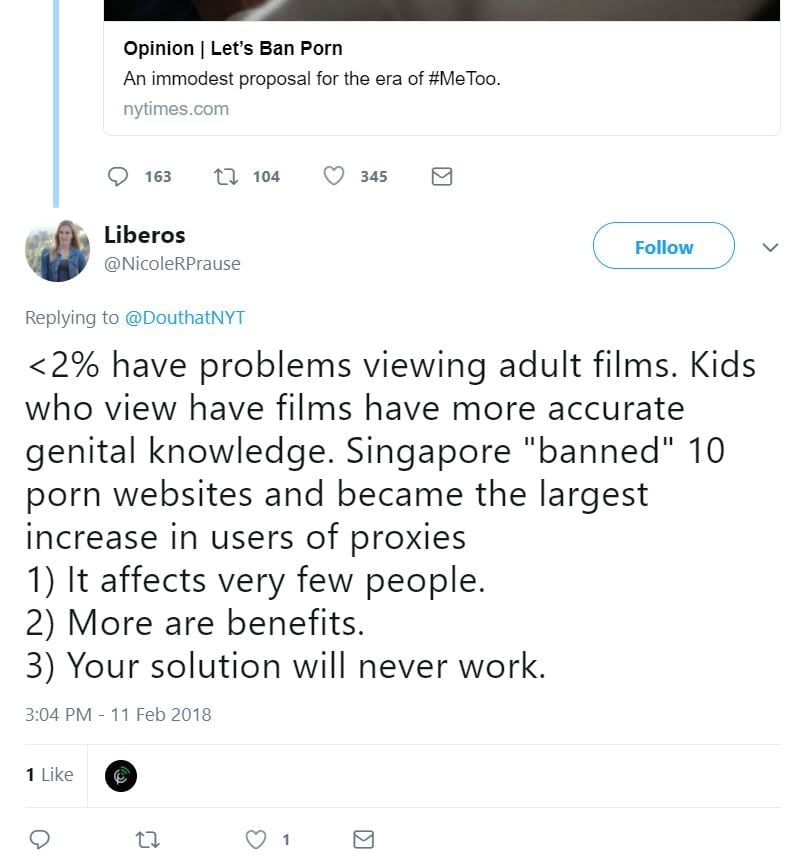
Linking to no studies, she tweets the same falsehoods to the author:
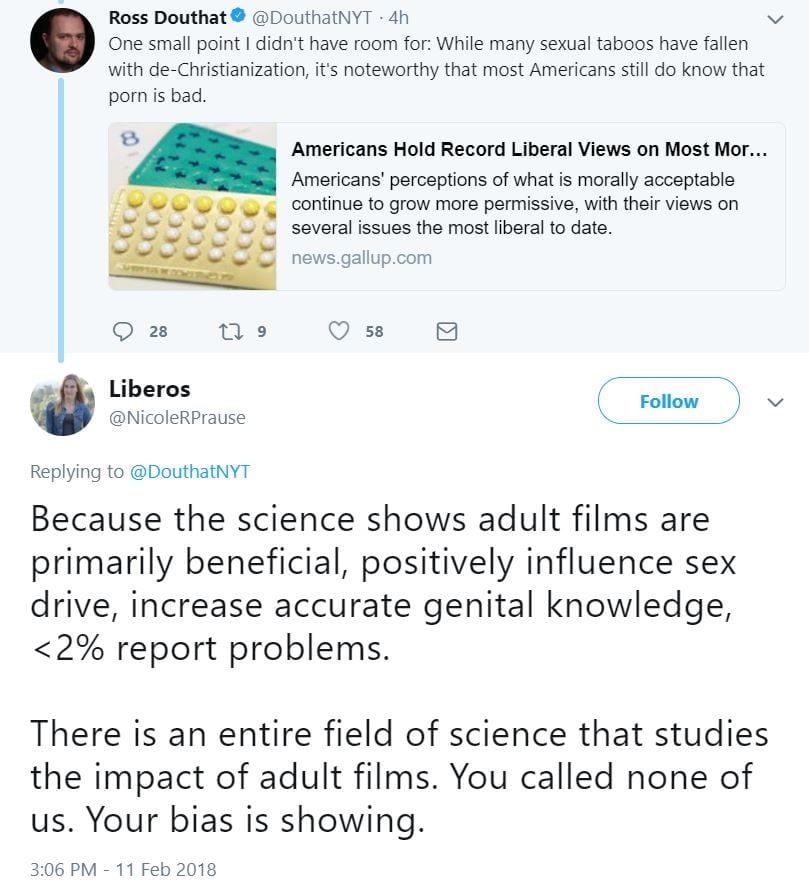
At other times Prause has trotted out her <2% claim, she cited this cherry-picked Aussie studies: A Profile of Pornography Users in Australia: Findings From the Second Australian Study of Health and Relationships (2016). In reality, 17% of males & females aged 16-30 reported that using pornography had a bad effect on them.
——————
Prause tweets a David Ley opinion piece, published in pro-porn Porn Studies Journal (see – ‘Porn Studies Journal’, Fiona Atwood and Clarissa Smith, 2013)
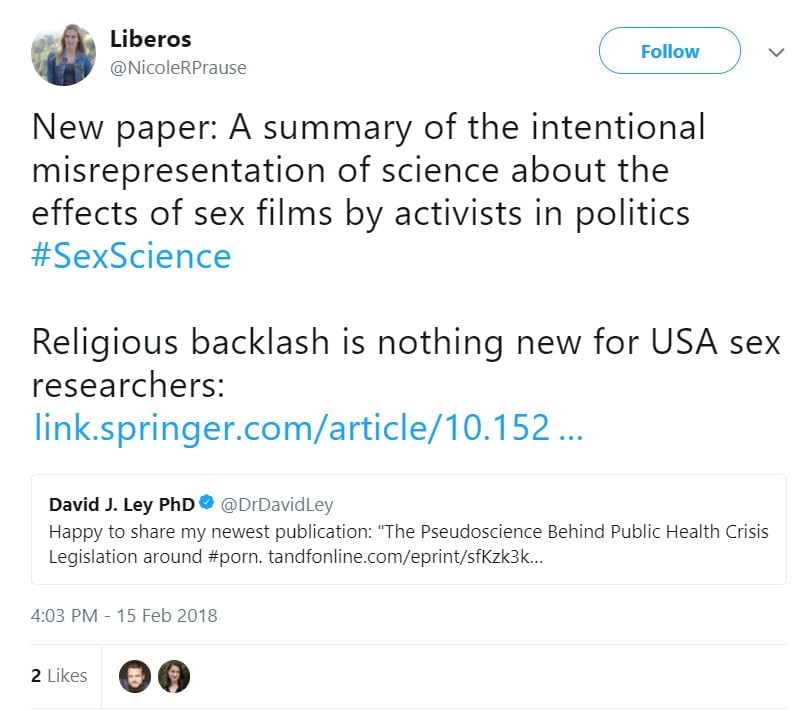
Ley pretty much “did a Prause,” misrepresenting the current state of the research science, while leading the reader to believe that a handful of cherry-picked/flawed studies represents the preponderance of evidence. Another tweet promoting David Ley’s masterpiece:
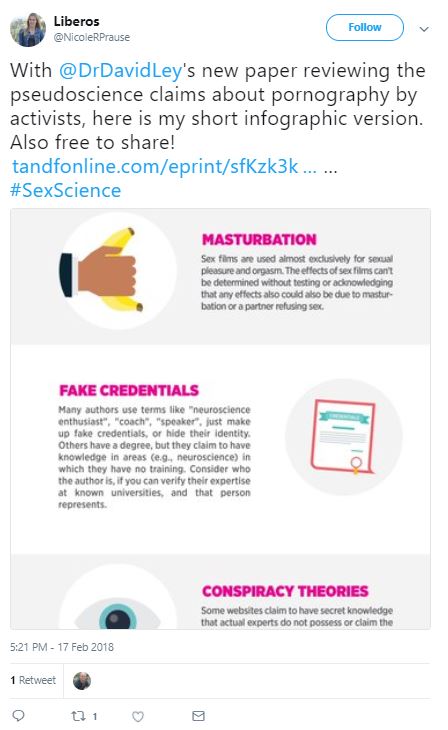
The above image is yet another info-graphic that Prause has tweeted or posted (on Quora) maybe 40 times. It lives on Prause’s Amazon page: https://s3-us-west-1.amazonaws.com/liberos.media/EvaluatingInformationAboutSexFilms.png. The info-graphic names multiple websites as “bad sources of information,” including YBOP, FTND, rebootnation and IITAP – basically most of Prause’s targets.
However, it only mentions 2 “good websites” for information: 1) Justin Lehmiller, who is employed by Playboy and has written 10 articles flattering Dr. Prause, and 2) AASECT, an non-academic organization that openly campaigns against porn addiction and porn-induced ED.
Oh yeah, Prause mentions a single article from 2014, where she is heavily quoted, as the third legitimate source of information on the effects of porn (“sex films”).
——————
Attacking concept of porn as a public health problem, with the cute little infographic:
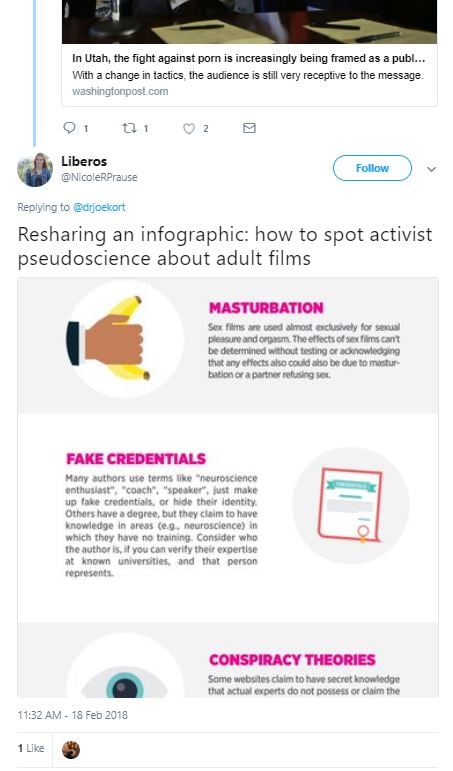
“Pseudoscience” is when you can’t post a single meta-analysis or review of the literature. Prause has never done so when attacking the concept of porn as a public health problem. Never.
——————
Attacking Florida’s attempt to pass a resolution, saying papers show “sex films” are overwhelmingly a positive influence on health:
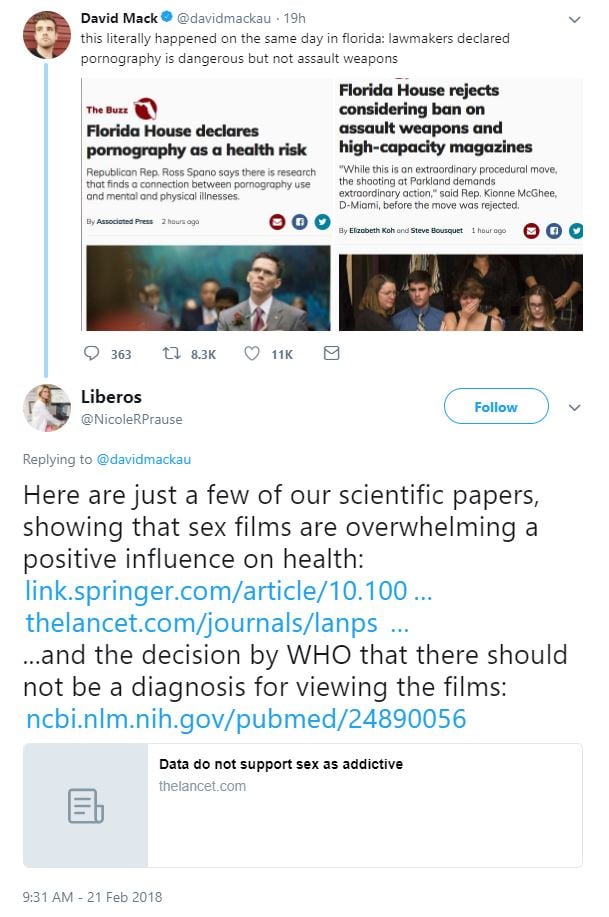
Here’s what Prause cited:
1) Prause’s 240-word letter to Lancet, which cited nothing to support Prause’s claims, and never said that “sex films” are overwhelmingly positive. Prause’s letter is completely debunked in this extensive critique: Analysis of “Data do not support sex as addictive” (Prause et al., 2017). The real experts’ opinions on porn/sex addiction? This list contains 20 recent literature reviews & commentaries by some of the top neuroscientists in the world. All support the addiction model.
2) A 5-year old narrative review, that certainly did not state that “sex films” are overwhelmingly positive. The Jon Grant paper, which Prause regularly misrepresents with a doctored picture of Grant’s paper, offers zero support for her claims.
——————
Prause tweets her misrepresentation of a 2014 Jon Grant paper:
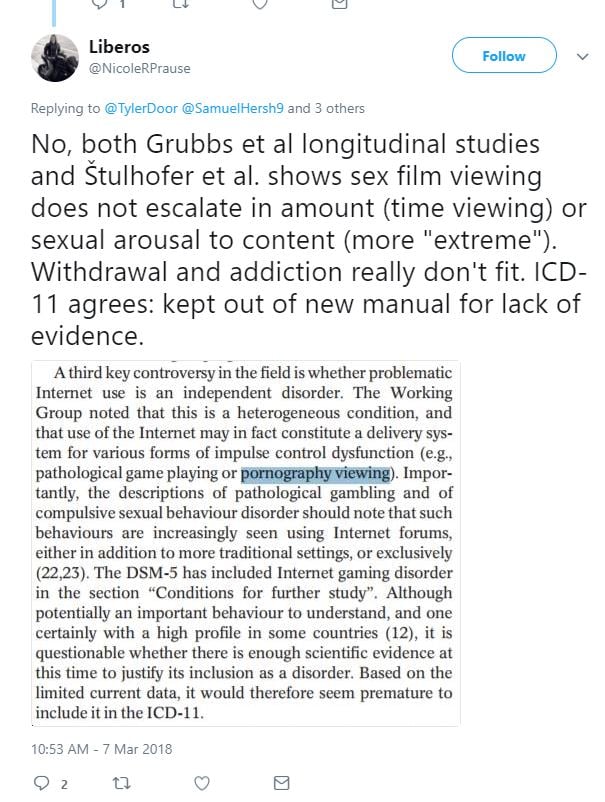
More on Prause misrepresenting Jon Grant’s paper. The following screenshot, circulating on pro-porn propagandist’s social media accounts (apparently created by Nicole Prause), features the core piece of purported “evidence” that the ICD-11 “rejected sex addiction and porn addiction.” Excerpting a 2014 Jon Grant commentary, and counting on short attention-spans, the propagandist expects you to read only what’s in the red boxes, hoping you will overlook what the paragraph actually states:
If you fell for the red-box illusion, you misread the above excerpt as:
…pornography viewing… questionable whether there is enough scientific evidence at this time to justify its inclusion as a disorder. Based on the limited current data, it would therefore seem premature to include it in the ICD-11.
Yet that’s pure deception. Here’s the Jon Grant 2014 paper: Impulse control disorders and “behavioural addictions” in the ICD-11. Read the entire paragraph and you will see that Jon Grant is talking about “Internet gaming disorder” not pornography. Grant believed it was questionable whether there was enough scientific evidence at that time to justify Internet Gaming Disorder’s inclusion as a disorder:
A third key controversy in the field is whether problematic Internet use is an independent disorder. The Working Group noted that this is a heterogeneous condition, and that use of the Internet may in fact constitute a delivery system for various forms of impulse control dysfunction (e.g., pathological game playing or pornography viewing). Importantly, the descriptions of pathological gambling and of compulsive sexual behaviour disorder should note that such behaviours are increasingly seen using Internet forums, either in addition to more traditional settings, or exclusively 22,23. The DSM-5 has included Internet gaming disorder in the section “Conditions for further study.” Although potentially an important behaviour to understand, and one certainly with a high profile in some countries 12, it is questionable whether there is enough scientific evidence at this time to justify its inclusion as a disorder. Based on the limited current data, it would therefore seem premature to include it in the ICD-11.
Without reading only the red squares, the above excerpt reveals that Jon Grant believes that internet pornography viewing can be an impulse control disorder, and it falls under the umbrella diagnosis of “Compulsive Sexual Behavior Disorder” (CSBD). This is the exact opposite of the “red square” illusion tweeted by the propagandists.
Even if Jon Grant had actually said that compulsive porn use could not be classified under Compulsive Sexual Behavior Disorders, it would be irrelevant as (1) the paper is over 4 years old, and (2) it’s just Grant’s two cents, not an official position paper by the World Health Organization. Moreover, a lot has changed in the intervening 4.5 years. By the way, Internet Gaming Disorder is now in WHO’s ICD-11, under addictive behaviors.
First, 33 of the 40 neurological studies on CSB subjects listed on this page were published after the 2014 Jon Grant paper. Second, Jon Grant was a co-author on this 2018 paper announcing (and agreeing with) the inclusion of CSBD in the upcoming ICD-11: Compulsive sexual behaviour disorder in the ICD‐11. Third, in his 2018 paper, “Compulsive sexual behavior: A nonjudgmental approach,” Jon Grant himself says that Compulsive Sexual Behavior is also called “sex addiction.”
——————
Attacking concept of porn as a public health problem, with the cute little infographic:
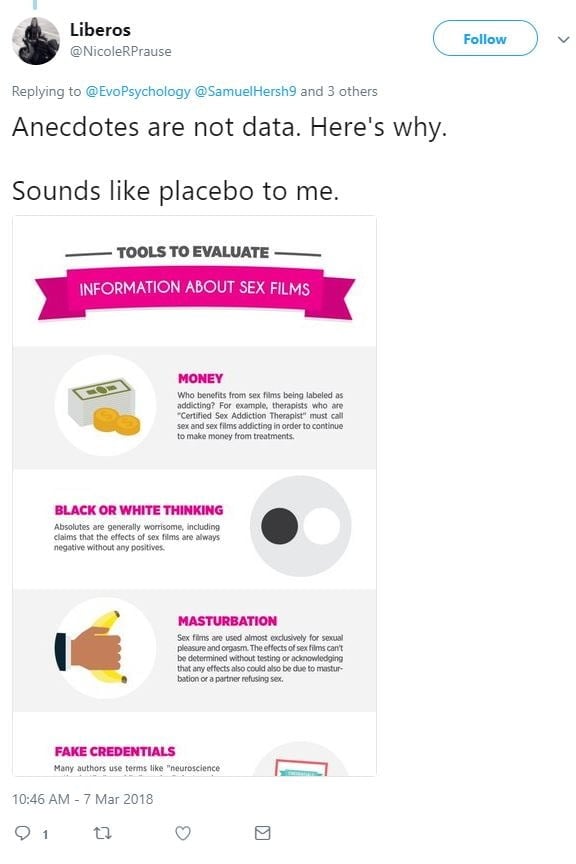
——————
Attacking concept of porn as a public health problem. Linking to yet another one-sided article where Prause is “the” expert:
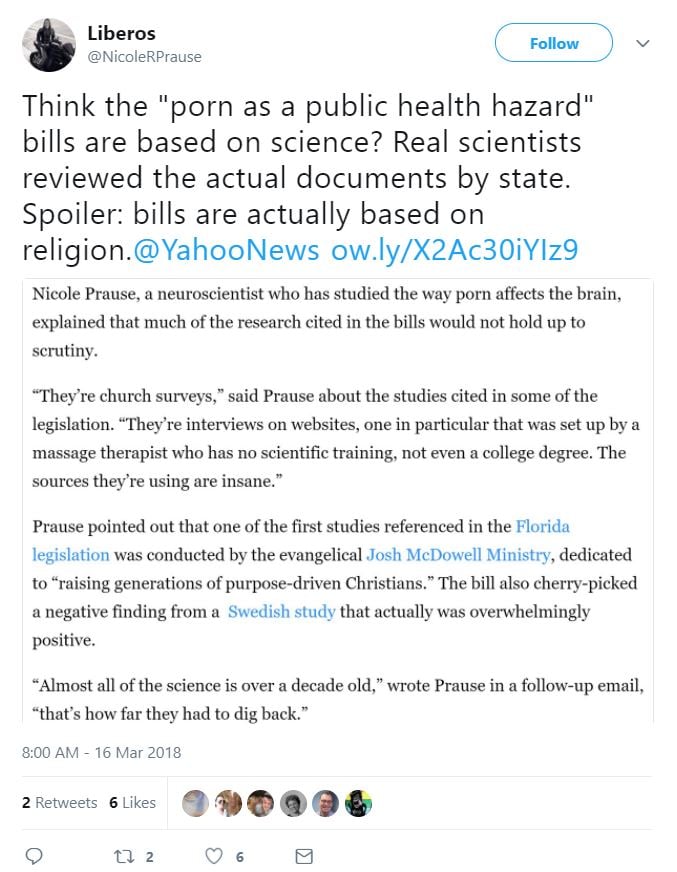
Prause, the accomplished cherry-picker, selects only a single adolescent study referenced in the legislation and claims it was cherry-picked. The truth about the porn use and adolescents? Check out this list of over 200 adolescent studies, or this 2012 review of the research – The Impact of Internet Pornography on Adolescents: A Review of the Research (2012). From the conclusion:
Increased access to the Internet by adolescents has created unprecedented opportunities for sexual education, learning, and growth. Conversely, the risk of harm that is evident in the literature has led researchers to investigate adolescent exposure to online pornography in an effort to elucidate these relationships. Collectively, these studies suggest that youth who consume pornography may develop unrealistic sexual values and beliefs. Among the findings, higher levels of permissive sexual attitudes, sexual preoccupation, and earlier sexual experimentation have been correlated with more frequent consumption of pornography…. Nevertheless, consistent findings have emerged linking adolescent use of pornography that depicts violence with increased degrees of sexually aggressive behavior. The literature does indicate some correlation between adolescents’ use of pornography and self-concept. Girls report feeling physically inferior to the women they view in pornographic material, while boys fear they may not be as virile or able to perform as the men in these media. Adolescents also report that their use of pornography decreased as their self-confidence and social development increase. Additionally, research suggests that adolescents who use pornography, especially that found on the Internet, have lower degrees of social integration, increases in conduct problems, higher levels of delinquent behavior, higher incidence of depressive symptoms, and decreased emotional bonding with caregivers.
——————
Harasses the author of an LA Times opinion piece that mentions porn & sex addiction:
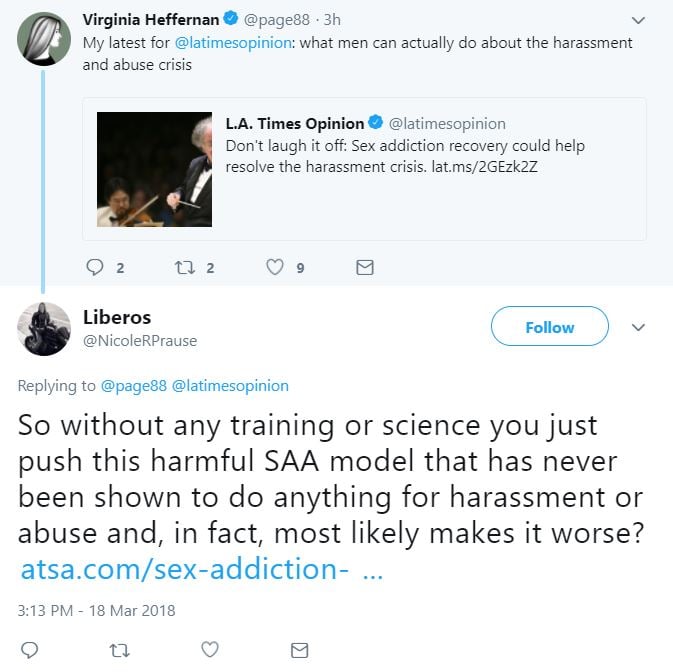
——————
Goes after Dr. Jordan Peterson for suggesting that porn may not be all that great for young men;
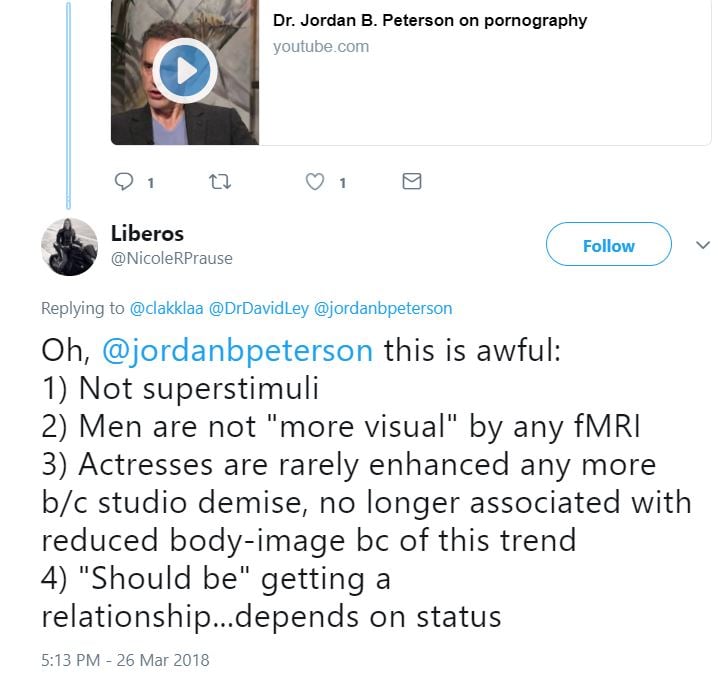
As for Prause’s claims #1) with respect to her phrase “Not superstimuli,” only a handful of people would know that Prause is attempting to discredit the concept of internet pornography as a supernormal stimulus. As Prause uses the term “superstimuli,” it’s clear she has no idea what Nobel laureate Nikolaas Tinbergen meant when he coined the actual term ‘supernormal stimulus’ (sometimes written as ‘supranormal’). We address Prause’s failed refutation in this section of YBOP’s critique of her 240-word letter: Analysis of “Data do not support sex as addictive” (Prause et al., 2017)
——————
Attacking concept of porn as a public health problem and cyber-stalking Senator Weiler:
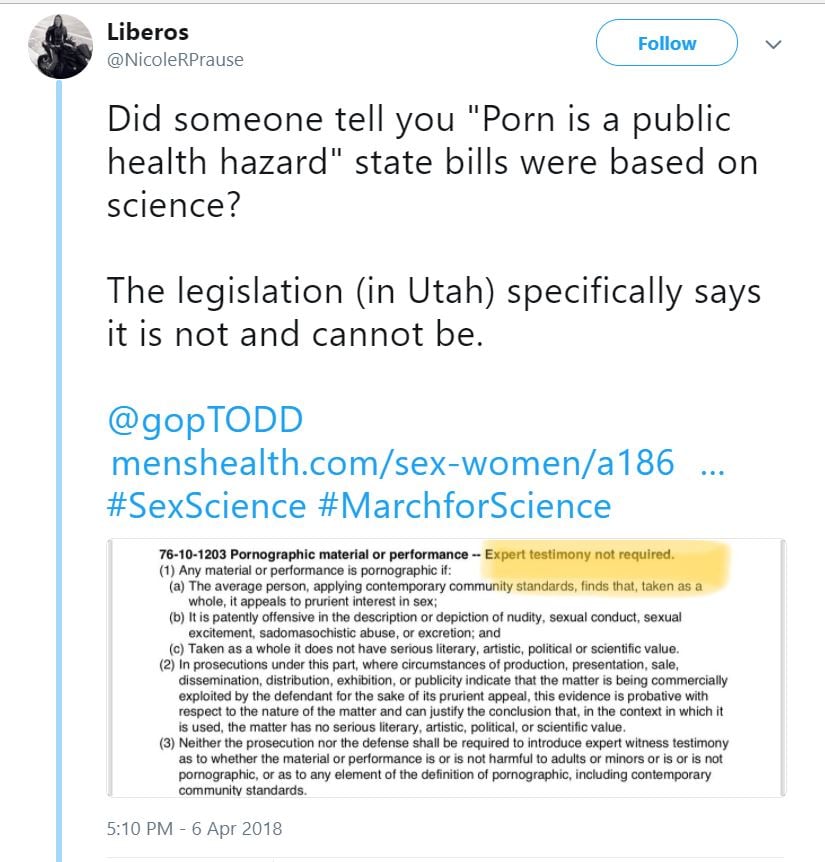
——————
Prause is just making stuff up as: 1) she never assessed drug use in her lab, 2) she only uses an EEG, which tells us nothing about how orgasm affects the reward system as it only assesses electrical activity on scalp, 3) all animal and fMRI studies find similarities between drug use (heroin, cocaine) and sexual/arousal orgasm.
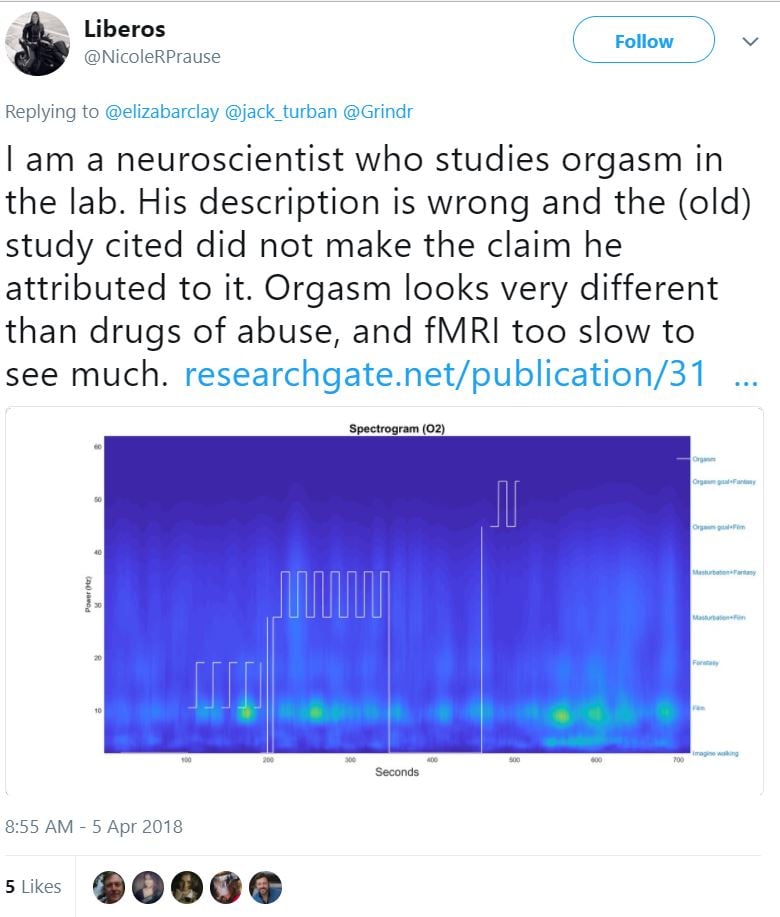
Reality: Sexual arousal and addictive drugs activate the exact same reward circuit nerve cells. In contrast, there’s only a small percentage of nerve-cell activation overlap between addictive drugs and other natural rewards such as food or water. Turning on the same nerve cells that make sexual stimulation so compelling helps explain why meth, cocaine, and heroin can be so addictive.
Interestingly, heroin addicts often claim that shooting up “feels like an orgasm.” Supporting their experience, ejaculation mimics the effects of heroin addiction on the same reward circuit nerve cells. Specifically, ejaculation shrinks the same dopamine producing nerve cells that shrink with chronic heroin use. This doesn’t mean sex is bad. It simply informs us that addictive drugs hijack the exact same mechanisms that urge us back into the bedroom for a romp.
Unlike other non-drug rewards (inviting food or sugar), but similar to drugs of abuse, sexual experience leads to a long-lasting changes in the numbers and types of reward-center glutamate receptors. Glutamate is the main neurotransmitter relaying information from key brain regions to the reward center.
In addition, both sex and drug use lead to the accumulation of DeltaFosB, a protein that activates genes involved with addiction. The molecular changes it generates are nearly identical for both sexual conditioning and chronic use of drugs. Whether it’s sex or drugs of abuse, high levels of DeltaFosB rewire the brain to crave “IT,” whatever “IT” is. Addictive drugs not only hijack the precise nerve cells activated during sexual arousal, they co-opt the same learning mechanisms that evolved to make us desire sexual activity.
——————
Prause is challenged to take on the substance of critics and avoid to ad hominem…so, predictably, Prause goes ad hominem:
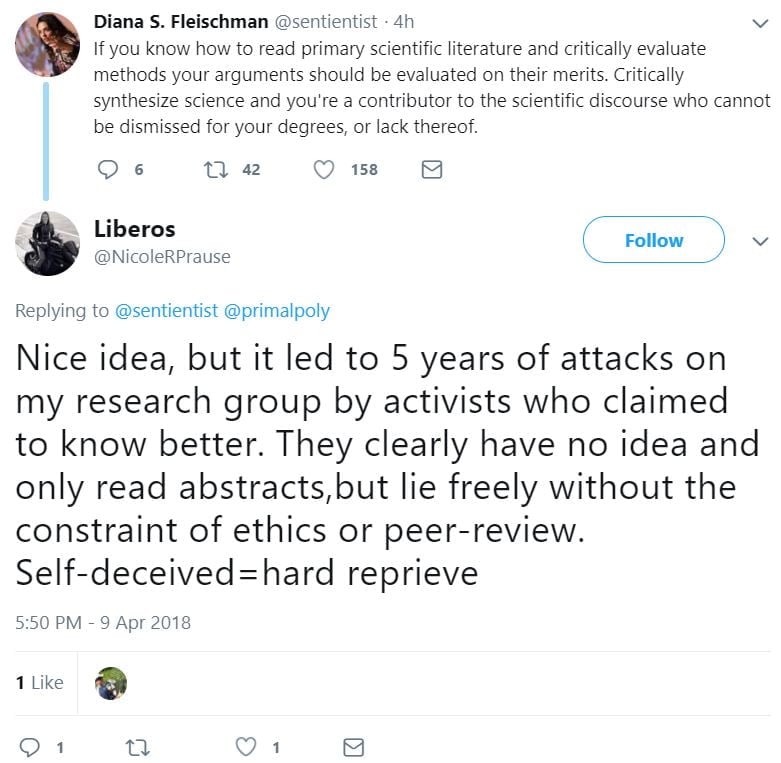
——————
Putting her stats degree to good use, Prause tags Josh Grubbs with her ad hominem attacks on anyone who believes in porn addiction:
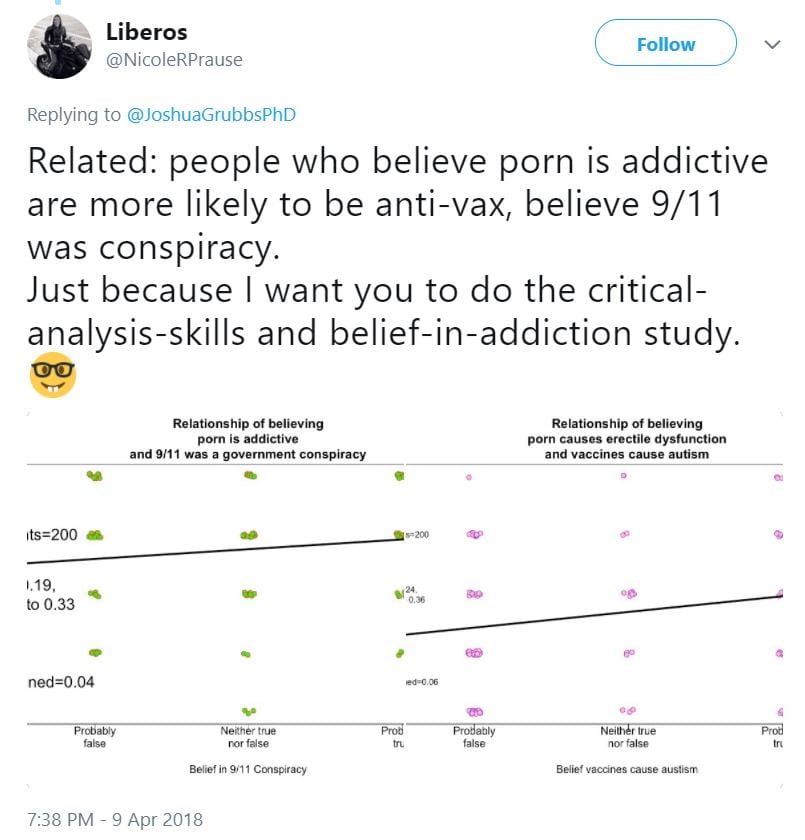
Prause has never released the source of her data.
——————
Any excuse to assert that porn addiction doesn’t exist:
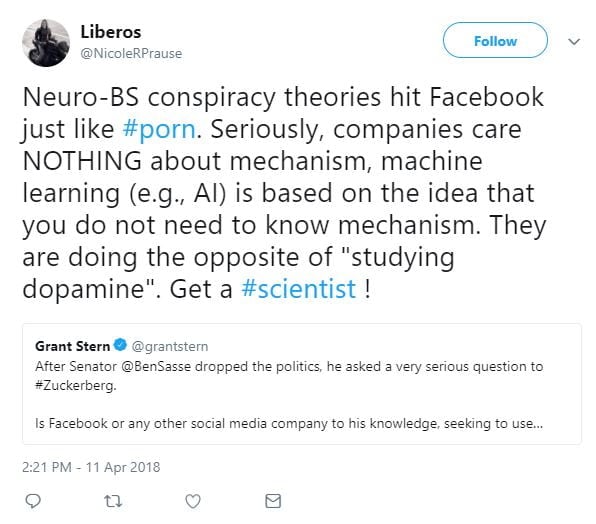
Prause doesn’t understand dopamine. PS – The results of 55 neurological studies on porn users/addicts are consistent with 370+ Internet addiction “brain studies,” some of which also include internet porn use.
——————
Random tweet about a 7 year-old paper, trying to connect it withporn/sex addiction:
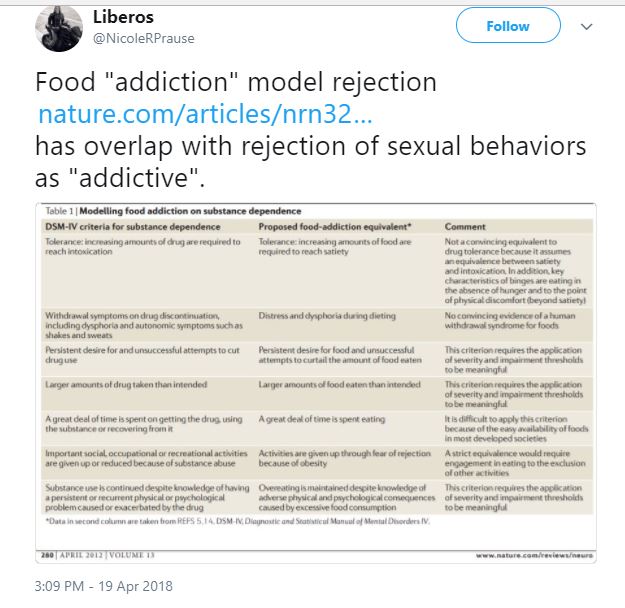
Reality: “food addiction” wasn’t rejected. An opinion piece in a journal cannot be construed as rejection (Prause acts as if there’s some official Office of Hypothesis Rejections). Fact: hundreds of neurological studies support the addiction model.
——————
Guess Prause is trying to say that withdrawal doesn’t occur with porn addicts.
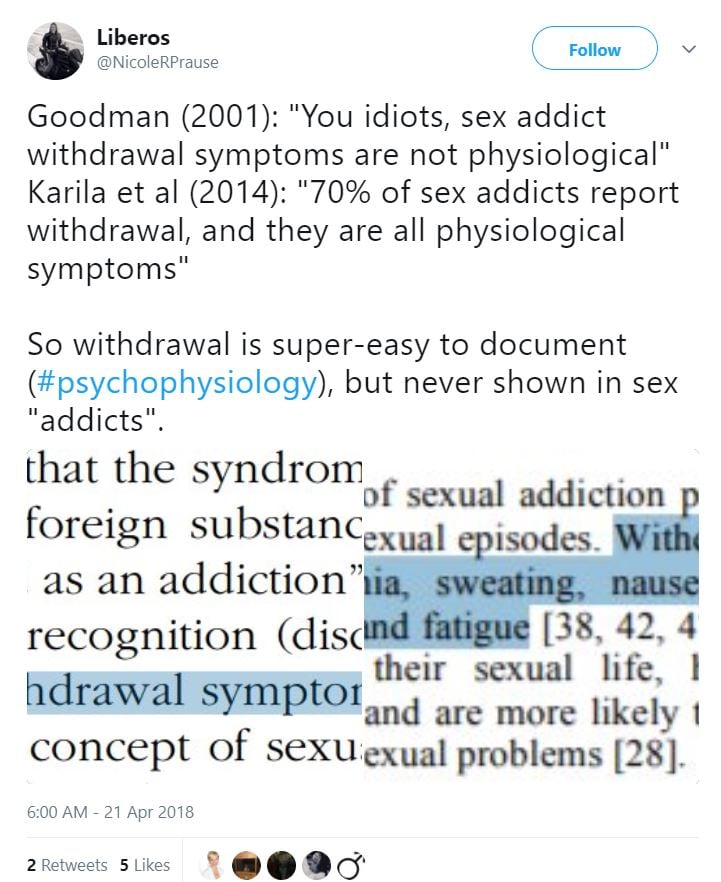
YBOP exposes Prause’s falsehoods in this section of YBOP’s critique of her 240-word letter: Analysis of “Data do not support sex as addictive” (Prause et al., 2017). More evidence of withdrawal in porn users: Prevalence, Patterns and Self-Perceived Effects of Pornography Consumption in Polish University Students: A Cross-Sectional Study.
——————
Trolling IITAP with easily debunked assertion about cue-reactivity:
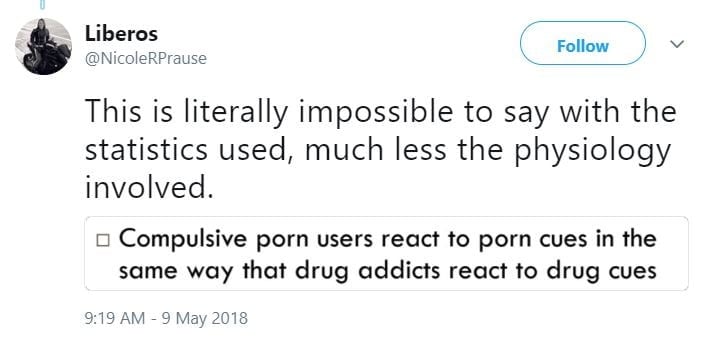
The core addiction brain change, sensitization, is assessed experimentally via cue-reactivity brain studies or strong cravings to use when exposed to cues. Studies reporting sensitization (cue-reactivity or strong cravings) in porn users/sex addicts: 1, 2, 3, 4, 5, 6, 7, 8, 9, 10, 11, 12, 13, 14, 15, 16, 17, 18, 19, 20, 21, 22, 23, 24, 25, 26, 27.
——————
Multiple false statements:
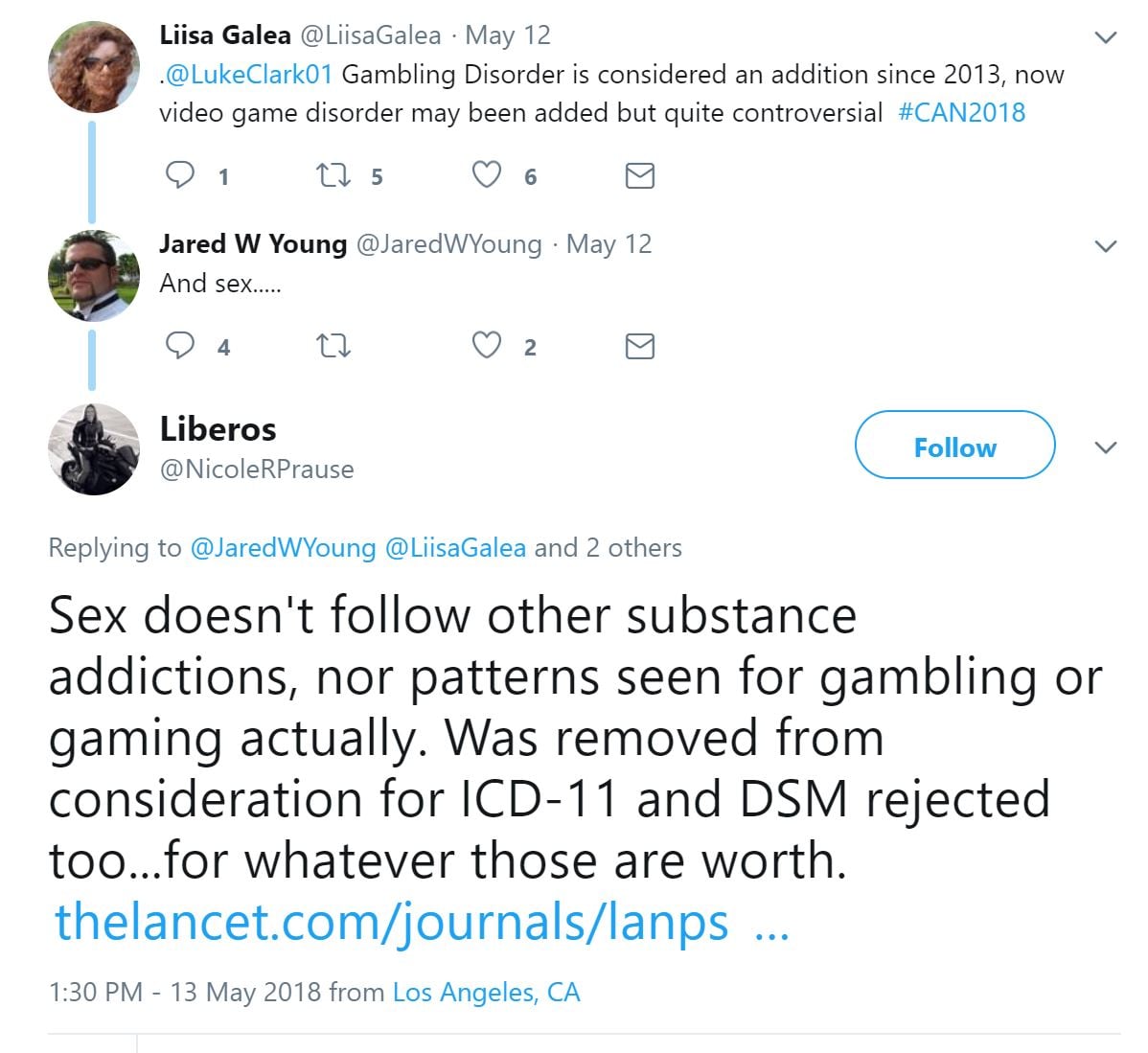
1- Brain changes in sex and porn addiction look nearly identical to those reported in drug addiction. This list contains 20 recent literature reviews and commentaries by some of the top neuroscientists in the world. All support the addiction model.
2 – Sex and porn addiction were not removed: Propagandists misrepresent peer-reviewed papers and ICD-11 search features to fuel false claim that WHO’s ICD-11 “rejected porn addiction and sex addiction” (2018)”; Debunking “Why Are We Still So Worried About Watching Porn?,” by Marty Klein, Taylor Kohut, and Nicole Prause (2018).
3 – Prause only cites her 240-word letter: Analysis of “Data do not support sex as addictive” (Prause et al., 2017)
——————
‘Overwhelmingly positive’, again…yet she never cites one of the many reviews of literature or meta-analysis. Because they don’t support her claims.
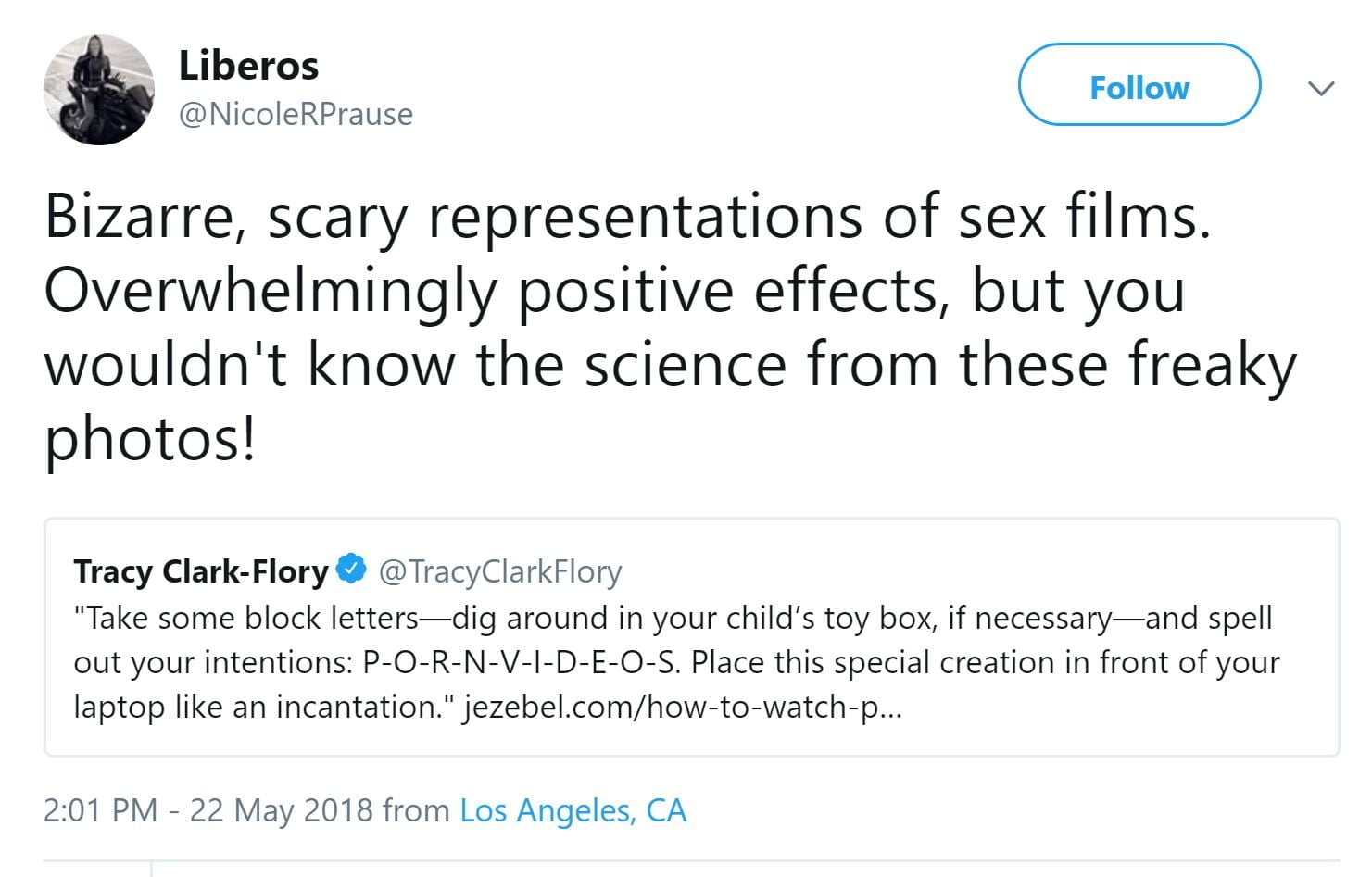
Tracy Clark-Flory has a long history of writing pro-porn propaganda pieces featuring Ley & Prause.
——————
Reaches back to David Ley and her 2014 propaganda piece (not a genuine review of literature), which was written in 2013:
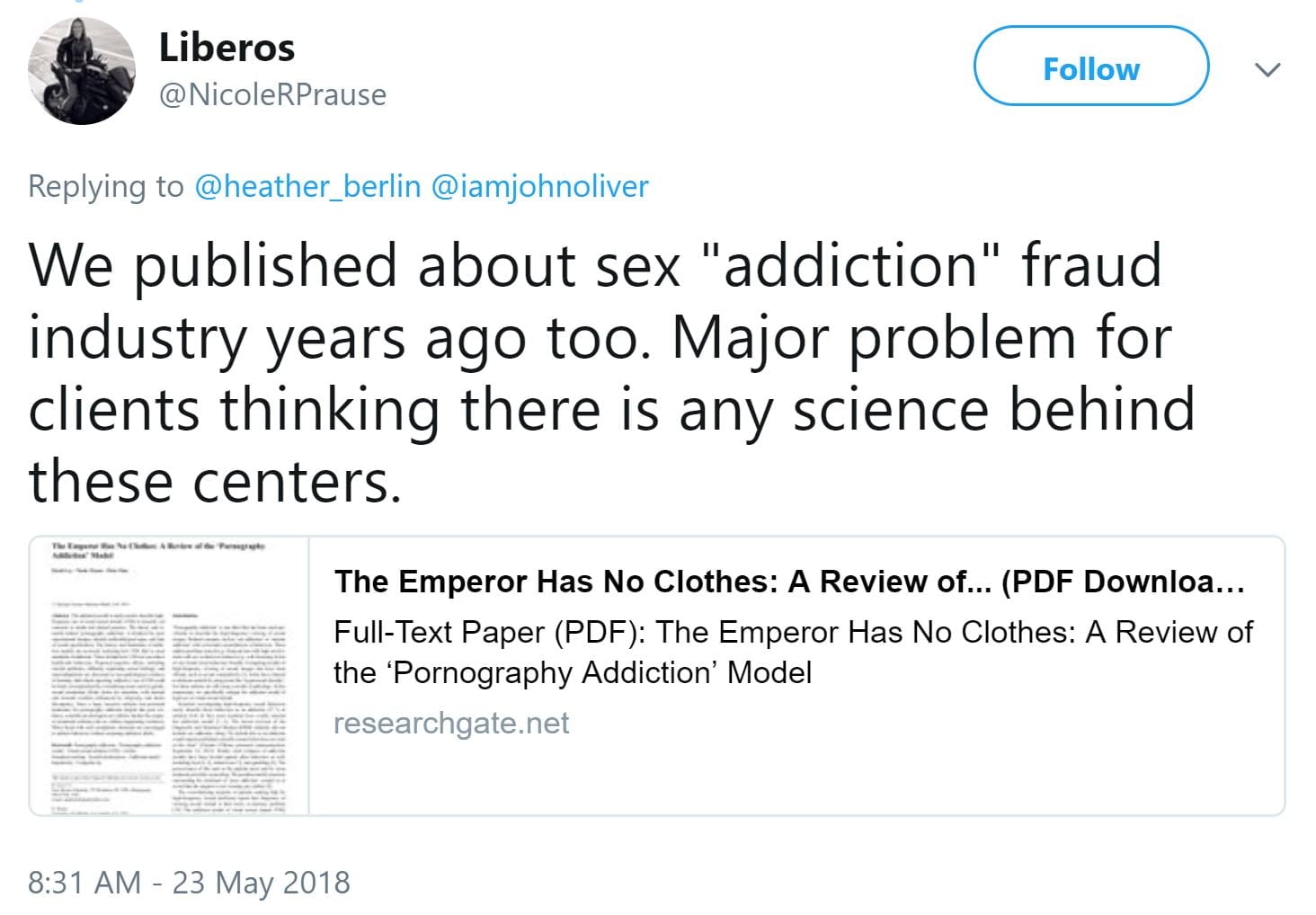
The following is a very long analysis of this paper, which goes line-by-line, showing all the shenanigans Ley & Prause incorporated in their “review”: The Emperor Has No Clothes: A Fractured Fairytale Posing As A Review. It completely dismantles the so-called review, and documents dozens of misrepresentations of the research they cited. The most astonishing aspect of their review is that it omitted all of the many studies that reported negative effects related to porn use or found porn addiction! Yes, you read that right. While purporting to write an “objective” review, Ley & Prause justified omitting hundreds of studies on the grounds that these were correlational studies. Guess what? Virtually all studies on porn are correlational, even those they cited, ormisrepresented.
——————
Prause & Ley have been on a 3-year campaign to associate YBOP and men in recovery with neo-Nazis. Just another attempt:
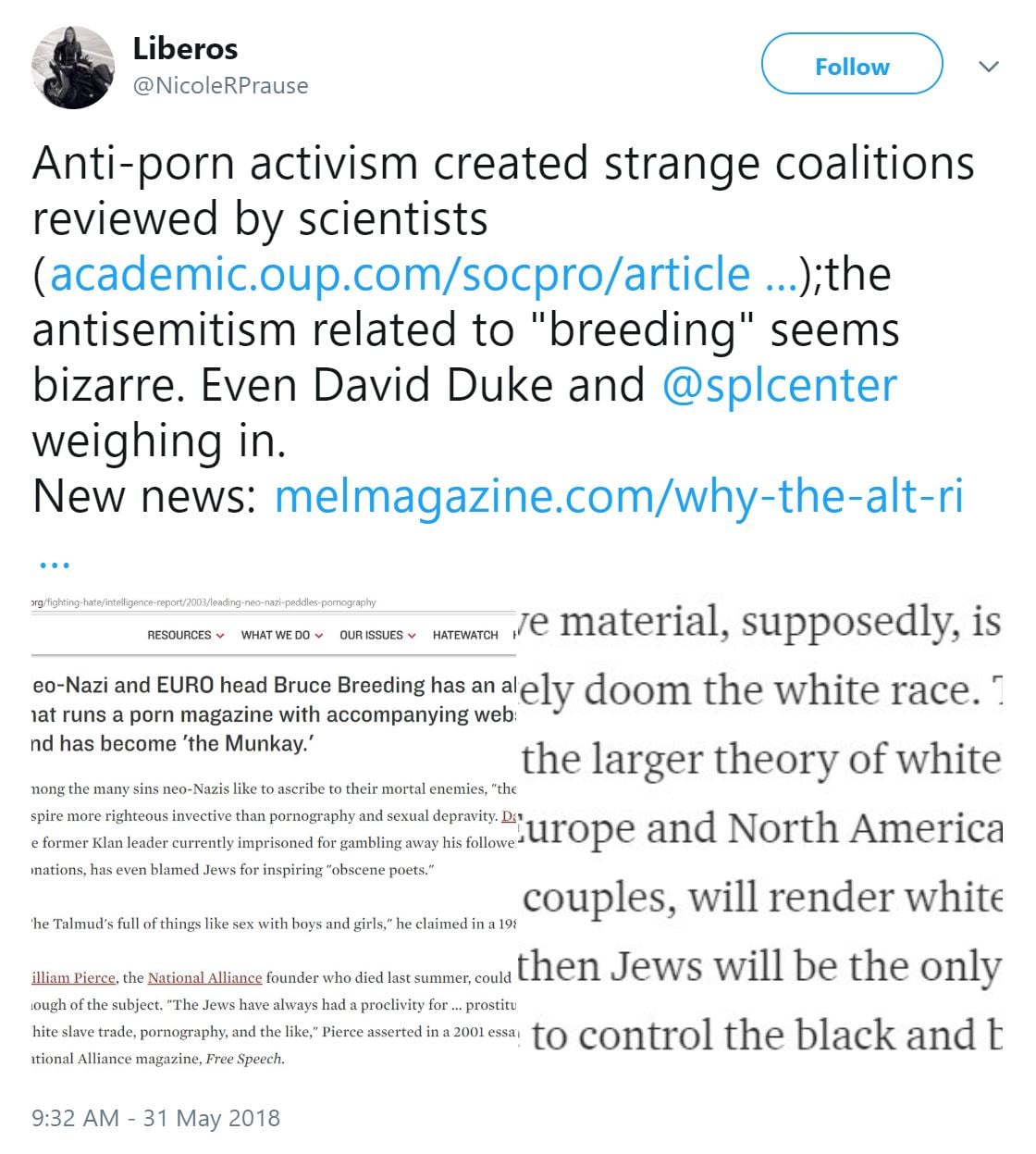
Just the tip of the iceberg. For more:
- October, 2018: Ley & Prause devise an article purporting to connect Gary Wilson, Alexander Rhodes and Gabe Deem to white supremacists/fascists (Prause attacks Rhodes & Nofap in the comments section)
- October, 2018: Prause follows-up the “fascist” article by attacking & libeling Alexander Rhodes and Nofap on twitter
- David Ley & Prause’s ongoing attempts to smear YBOP/Gary Wilson & Nofap/Alexander Rhodes by claiming links with neo-Nazi sympathizers
- November, 2018: Prause resumes her unprovoked, libelous attacks on NoFap.com & Alexander Rhodes
- December, 2018: Prause joins Xhamster to smear NoFap & Alexander Rhodes; induces Fatherly.com to publish a hit-piece where Prause is the “expert”
——————
In a pre-planned attacked, Prause and four of her usual side-kicks posted one star “reviews” on the Fight The New Drug Facebook page (reviews by her troupe of flying monkeys were all posted within a few hours each other: Tammy Johnson Ellis, Anthony Xavier Diaz, Russell Stambaugh, Patrick Powers).
This image with a rant says that she reported Gary Wilson. For the record, Gary has never received notice of any of Prause’s fictitious FBI or police reports, or done anything to merit them, and FTND relies on an array of respected academic scientists and peer-reviewed research. Wilson filed a freedom of information act (FOIA) request with the FBI and the FBI confirmed that Prause was lying; no report has ever been filed on Wilson. See – November, 2018: FBI affirms Nicole Prause’s fraud surrounding defamatory claims)
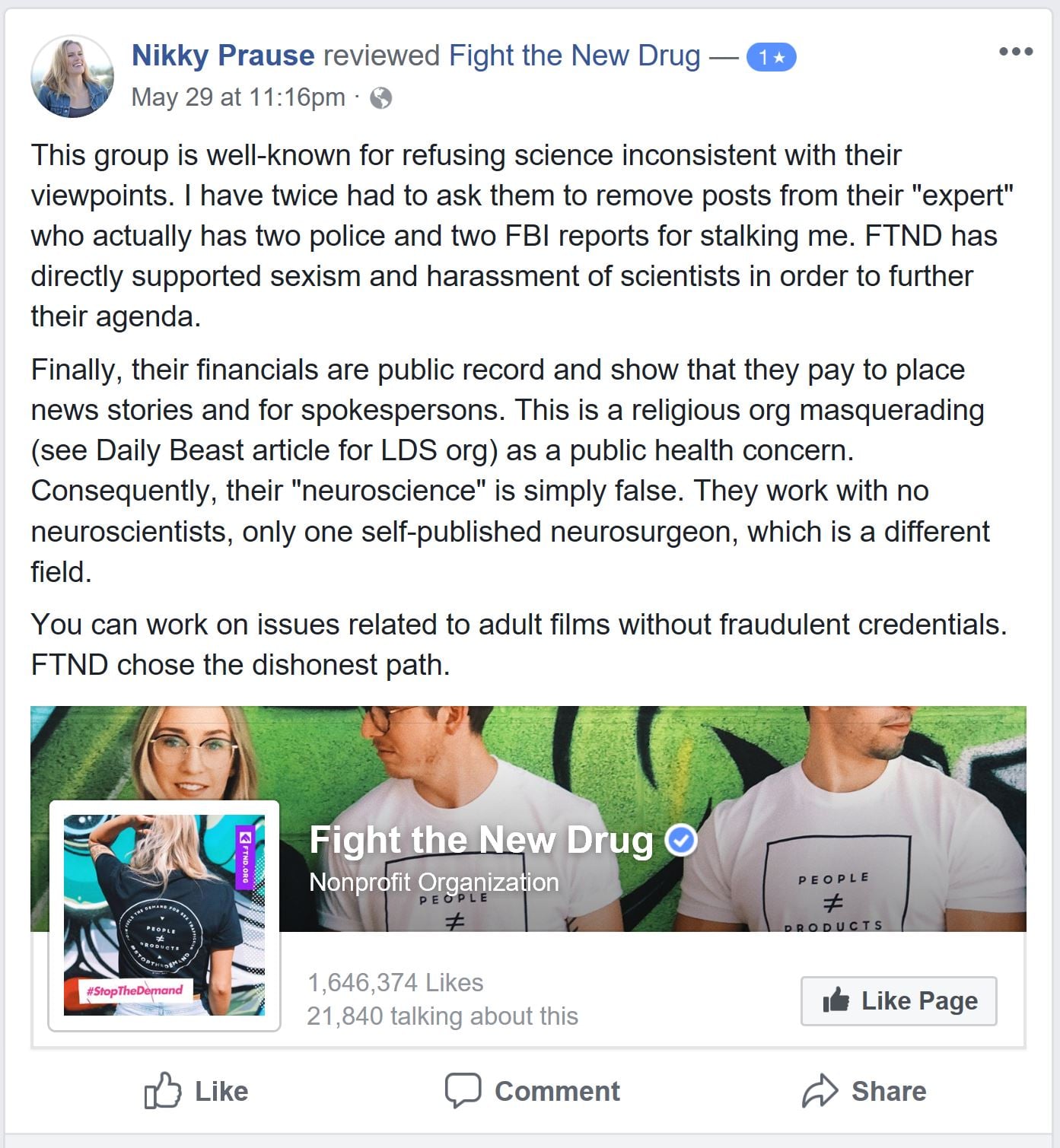
As for Prause’s assertion that Wilson is a misogynist, her only bit of proof is that Wilson accidentally wrote “Miss Prause” in his reply to a comment on YourBrainRebalanced where Prause (as RealScience) asks Wilson: “How small IS your penis Gary?”
Prause’s claim that “their neuroscience is simply false” is just more fiction from a practiced liar. Prause provides no examples of “false neuroscience,” while a reading of a FTND article such as “How Porn Can Become Addictive,” reveals peer-reviewed studies supporting every claim. Another example, found in the FTND FAQs (Is Porn Addiction Even A Real Thing?), contains links to about 200 supporting peer-reviewed papers.
Prause’s falsehoods concerning FTND are exposed in her Salt Lake Tribune Op-Ed attacking FTND. On the surface it appears legitimate as 7 PhD buddies of Prause signed off on it. However, upon closer examination we find that:
- It provides no examples of misrepresentation by “Fight The New Drug,” or anyone else.
- None of the claims are supported by citations.
- The 8 neuroscientists cited zero neuroscience-based studies.
- None of the researchers has ever published a study involving verified “porn addicts.”
- Some who signed the Op-Ed have histories of feverishly attacking the concept of porn and sex addiction (thus demonstrating stark bias).
- Most had collaborated earlier with the lead author of the Op-Ed (Prause) or her colleague (Pfaus).
In short, this 600-word Op-Ed is chock full of unsupported assertions meant to fool the lay public. It fails to support a single assertion as it cites only 4 papers – none of which have anything to do with porn addiction, porn’s effects on relationships, or porn-induced sexual problems.
Several experts in this field and I debunked its assertions and empty rhetoric in this relatively short response – Op-ed: Who exactly is misrepresenting the science on pornography? (2016). Unlike the “neuroscientists of the Op-Ed,” we cited several hundred studies and multiple reviews of the literature.
——————
Prause attacks renowned psychologist Philip Zimbardo:
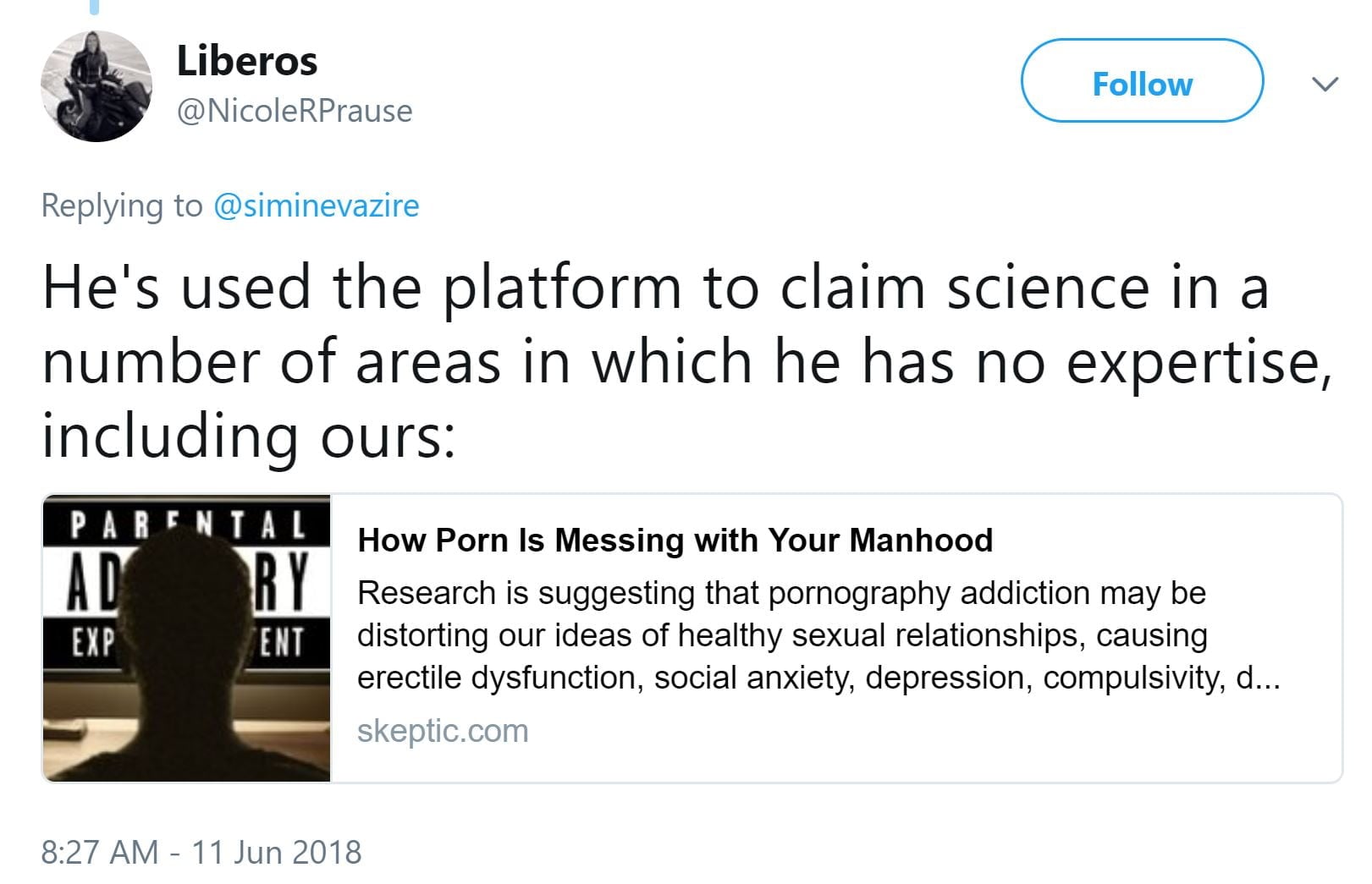
Prause attacked Zimbardo for multiple reasons:
- The Demise of Guys?: Philip Zimbardo: Excellent TED talk on (as the title says) the “demise” of young men. Zimbardo speaks of excessive Internet use (porn and video games) as “arousal addiction.” Note: in May 2019 the World Health Organization adopted “Gaming Disorder” and “Compulsive Sexual Behavior Disorder” as part of its latest diagnostic manual (the ICD-11), thus entirely vindicating Zimbardo and his warning.
- Philip Zimbardo’s Psychology Today blog post “Is Porn Good For Us or Bad For Us?” (2016).
- This book – Man, Interrupted: Why Young Men are Struggling & What We Can Do About It.
- Two articles co-authored by Phil Zimbardo and Gary Wilson:
- How porn is messing with your manhood, by Philip Zimbardo, Gary Wilson & Nikita Coulombe (March, 2016)
- More on porn: guard your manhood—a response to Marty Klein, by Philip Zimbardo & Gary Wilson (April, 2016)
——————
Publisher of Skeptic magazine, Michael Shermer, calls out an article about Zimbardo’s famous “Stanford Prison experiment” as a fraud. Prause trolls him, lying about Zimbardo “misrepresenting the science”:
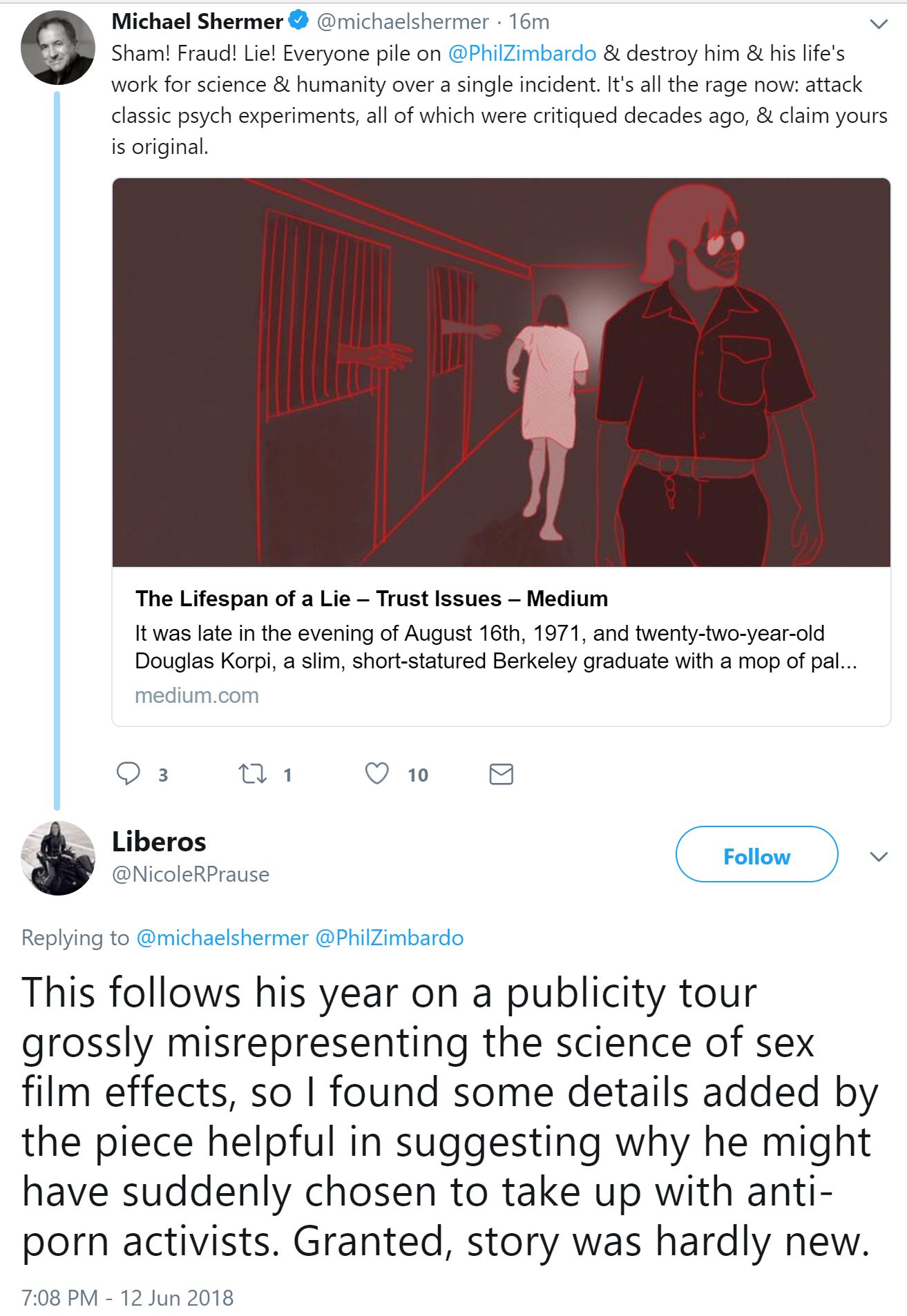
Note – Prause has never provided a single example of Zimbardo misrepresenting science or research. She can’t, because he hasn’t. In fact, the concerns Zimbardo raised about the ill effects of problematic internet porn use and excessive internet gaming have both since been codified as disorders in the upcoming ICD-11, which is the diagnostic manual of the World Health Organization.
The only “source” attempting to discredit Zimbardo came through a David Ley blog post, which was pure spin, and completely debunked here: Dismantling David Ley’s response to Philip Zimbardo: “We must rely on good science in porn debate” (March, 2016).
Shermer posted several defenses of the Stanford Prison Experiment. Tellingly, Prause says nothing in response:
- https://twitter.com/michaelshermer/status/1006717573105266689
- https://twitter.com/michaelshermer/status/1006718944244219904
- https://twitter.com/michaelshermer/status/1006720437642977280
- https://twitter.com/michaelshermer/status/1006724678172282880
- https://twitter.com/michaelshermer/status/1006727070737522688
Zimbardo responds to critics – What’s the scientific value of the Stanford Prison Experiment? Zimbardo responds to the new allegations against his work.
More Prause & Ley attacks, with childish memes and falsehoods:
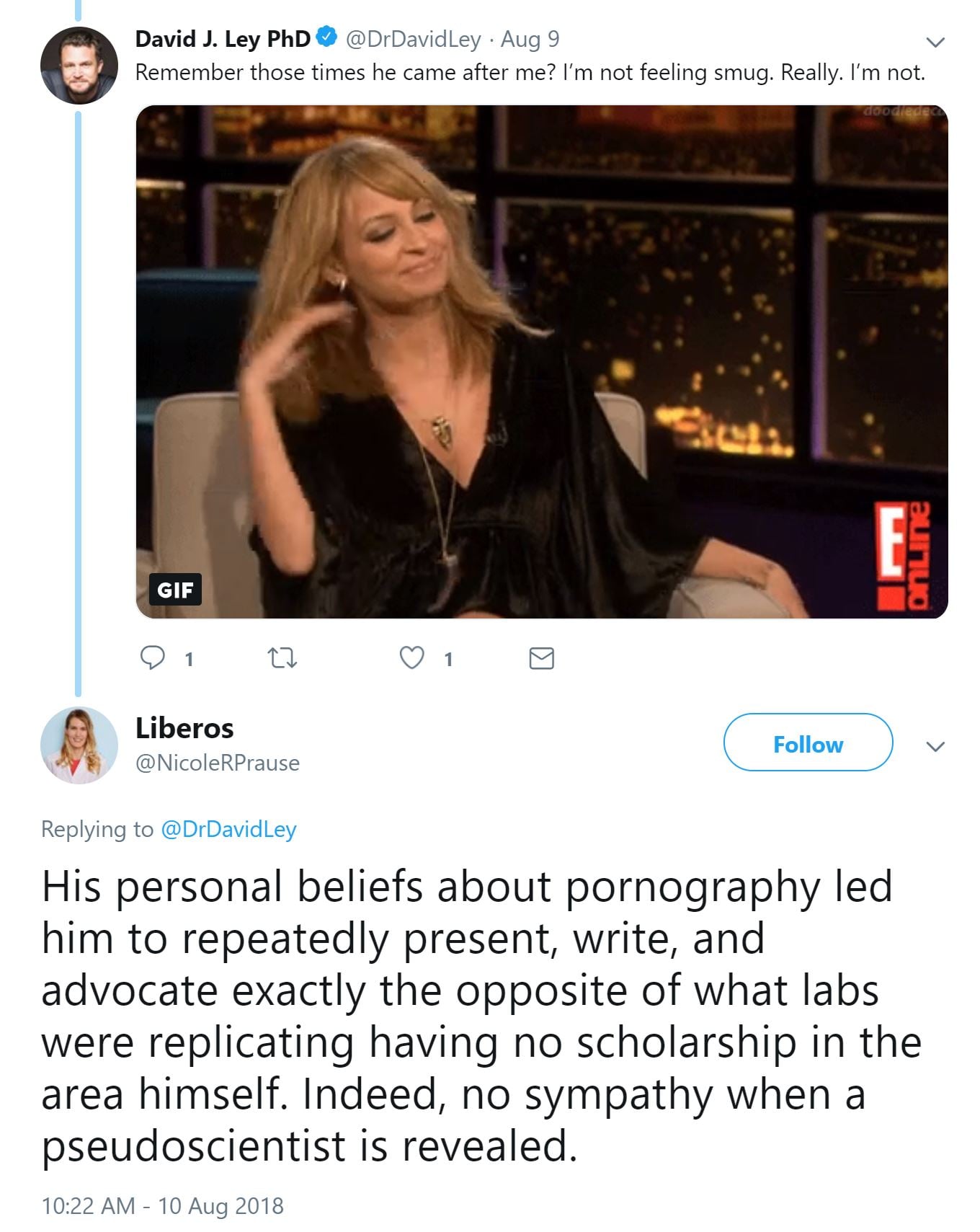
No Nicole, Zimbardo was aligned with the preponderance of research, but not with the 5 cherry-picked studies you tweet over and over and over….
More falsehoods from Prause:
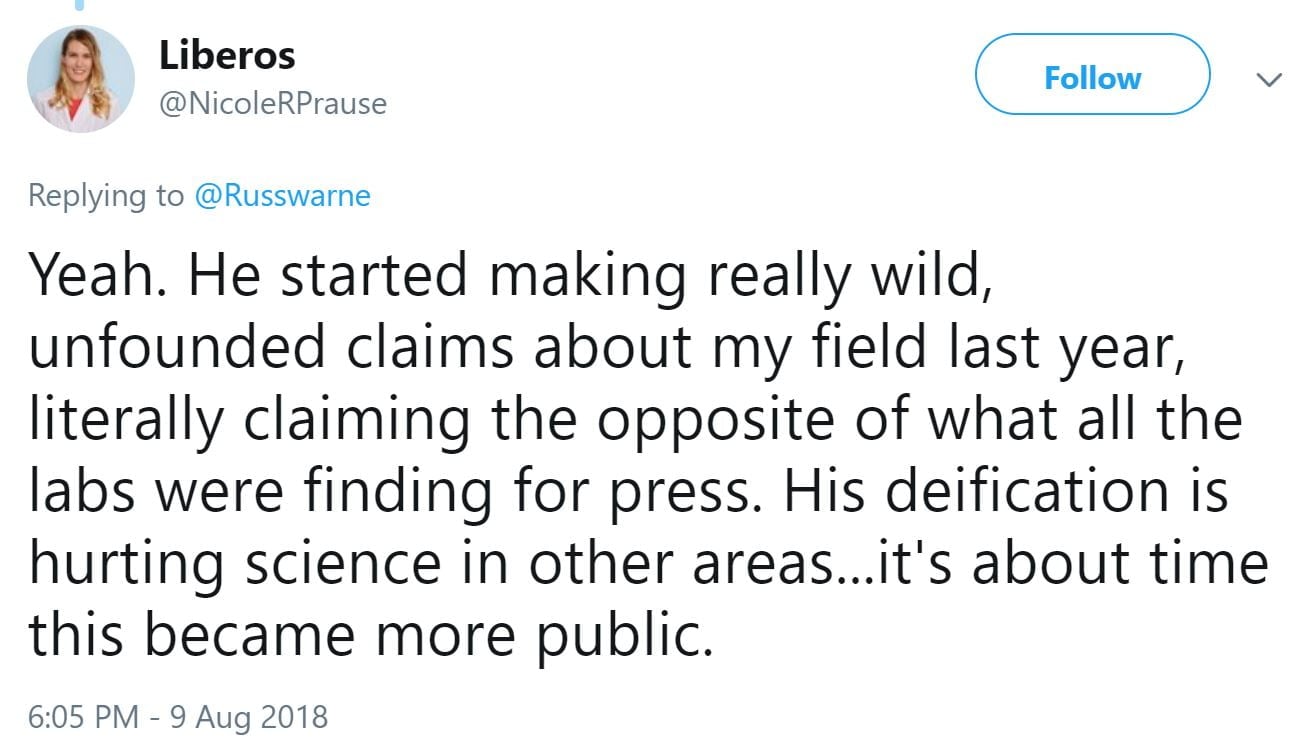
Unlike Prause, Zimbardo backed up his claims with citations. What’s missing from all the above tweets? A single example of a Zimbardo misrepresentation. Nada.
——————
Who are these experts? The International Classification of Diseases (ICD-11) contains a new diagnosis suitable for diagnosing what is commonly referred to as ‘porn addiction’ or ‘sex addiction.’ It’s called “Compulsive Sexual Behavior Disorder” (CSBD).
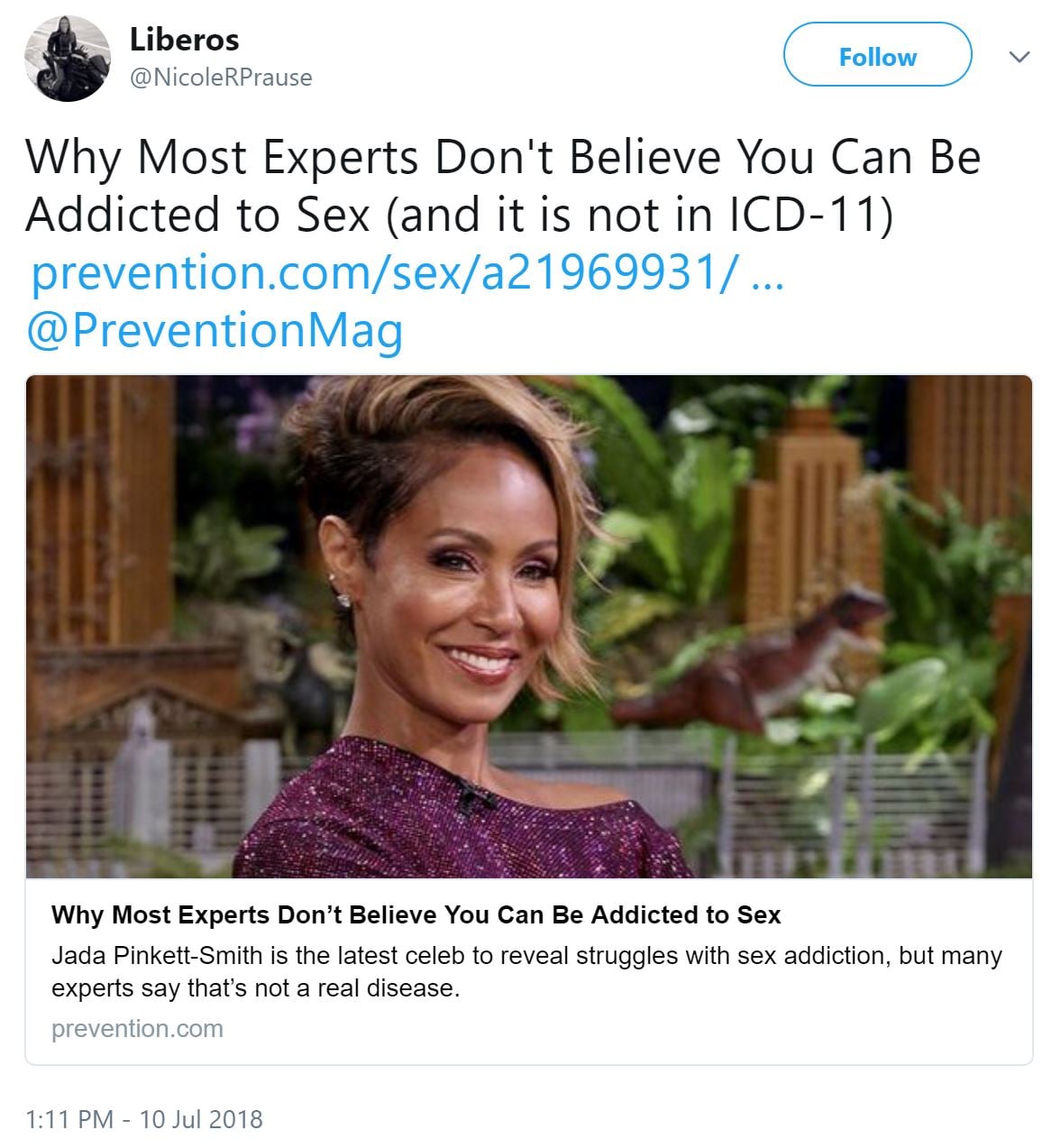
Nonetheless, in a bizarre “We lost, but we won” propaganda campaign, the deniers have been pulling out all the stops to spin this new diagnosis as a an outright rejection of both “sex addiction” and “porn addiction.” Here’s the CSBD diagnosis in its entirety taken directly from the ICD-11 manual. Fits sufferers of both “porn addiction” and “sex addiction.”
Compulsive sexual behaviour disorder is characterized by a persistent pattern of failure to control intense, repetitive sexual impulses or urges resulting in repetitive sexual behaviour. Symptoms may include repetitive sexual activities becoming a central focus of the person’s life to the point of neglecting health and personal care or other interests, activities and responsibilities; numerous unsuccessful efforts to significantly reduce repetitive sexual behaviour; and continued repetitive sexual behaviour despite adverse consequences or deriving little or no satisfaction from it. The pattern of failure to control intense, sexual impulses or urges and resulting repetitive sexual behaviour is manifested over an extended period of time (e.g., 6 months or more), and causes marked distress or significant impairment in personal, family, social, educational, occupational, or other important areas of functioning. Distress that is entirely related to moral judgments and disapproval about sexual impulses, urges, or behaviours is not sufficient to meet this requirement.
Be aware that neither the ICD-11 nor the DSM5 ever uses the word “addiction” to describe an addiction – whether it be gambling addiction, heroin addiction, cigarette addiction or you name it. Both diagnostic manuals use the word “disorder” instead of “addiction” (i.e. “gambling disorder” “nicotine use disorder,” and so on). Thus, “sex addiction” and “porn addiction” could never have been “rejected,” because they were never under formal consideration in the major diagnostic manuals. Put simply, there will never be a “porn addiction” diagnosis, just as there will never be a “meth addiction” diagnosis. Yet both pathologies can be diagnosed using the ICD-11’s provisions.
“Compulsive Sexual Behaviour Disorder” (CSB or CSBD) functions as an umbrella term for “sex addiction” and “porn addiction,” and any other term you have seen used to describe compulsive sexual behavior, such as “hypersexuality,” “cybersex addiction,” “out of control sexual behavior,” etc. – provided patients/clients meet the criteria for CSBD.
Below we provide more examples of Prause’s falsehoods and spin related WHO’s inclusion of “Compulsive Sexual Behavior Disorder” (CSBD) in the new ICD-11. A few points to keep is mind as your read Prause’s repetitive tweets:
- WHO did not reject porn or sex addiction, because neither was up for inclusion – only “Compulsive Sexual Behavior Disorder” was under formal consideration.
- Neither the ICD-11 nor the DSM5 ever uses the word “addiction” to describe any addiction: all addictions are called “disorders.”
- Prause chronically tweets her misrepresentation (and doctored picture) of Jon Grant’s 2014 paper – it offers zero support for her claims.
- Prause chronically tweets her 240-word letter to Lancet, which cited nothing to support Prause’s claims. Prause’s letter is completely debunked in this extensive critique: Analysis of “Data do not support sex as addictive” (Prause et al., 2017).
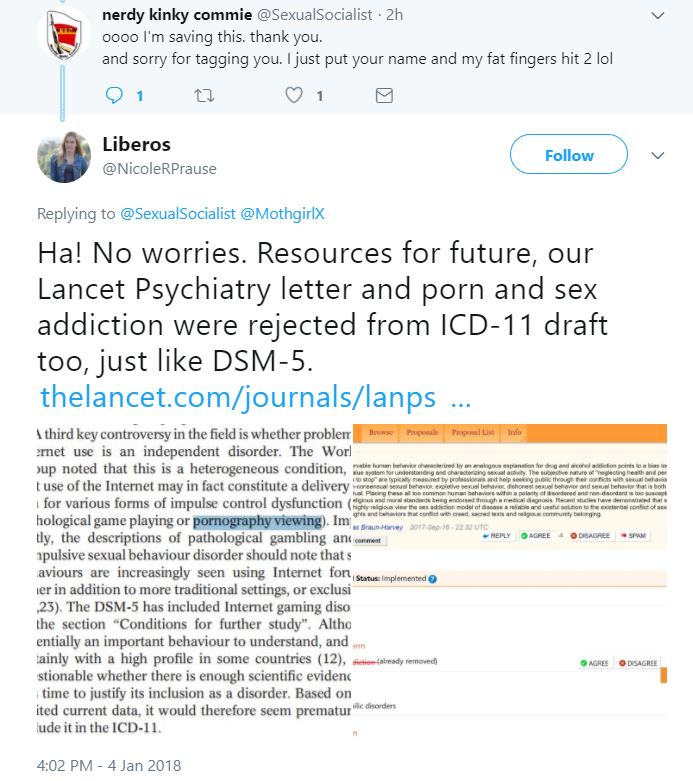
—
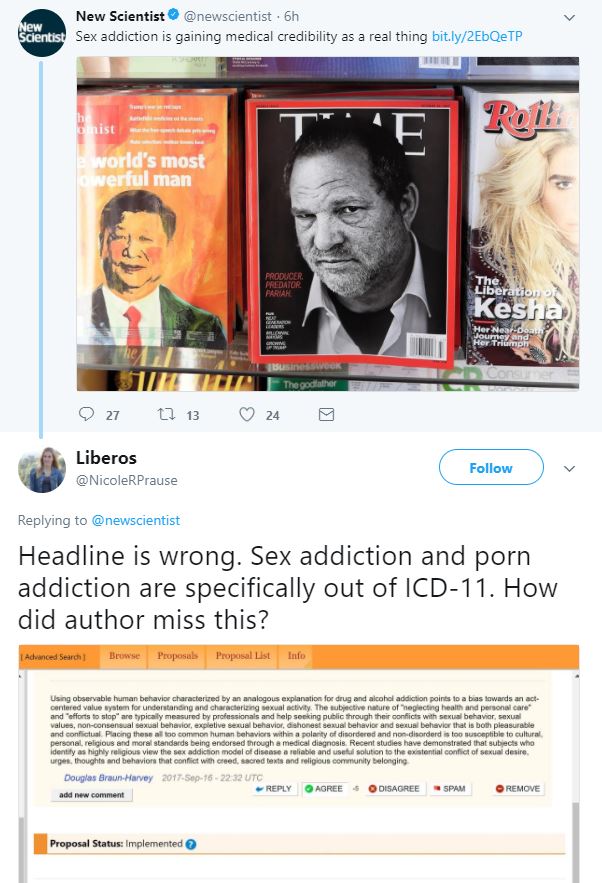
—
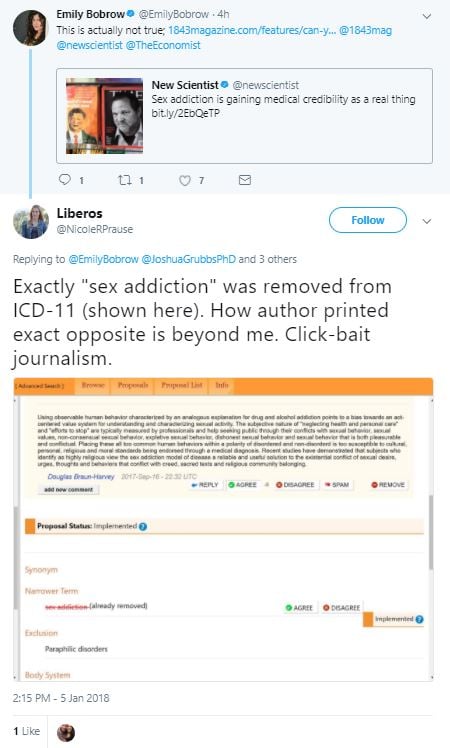
—
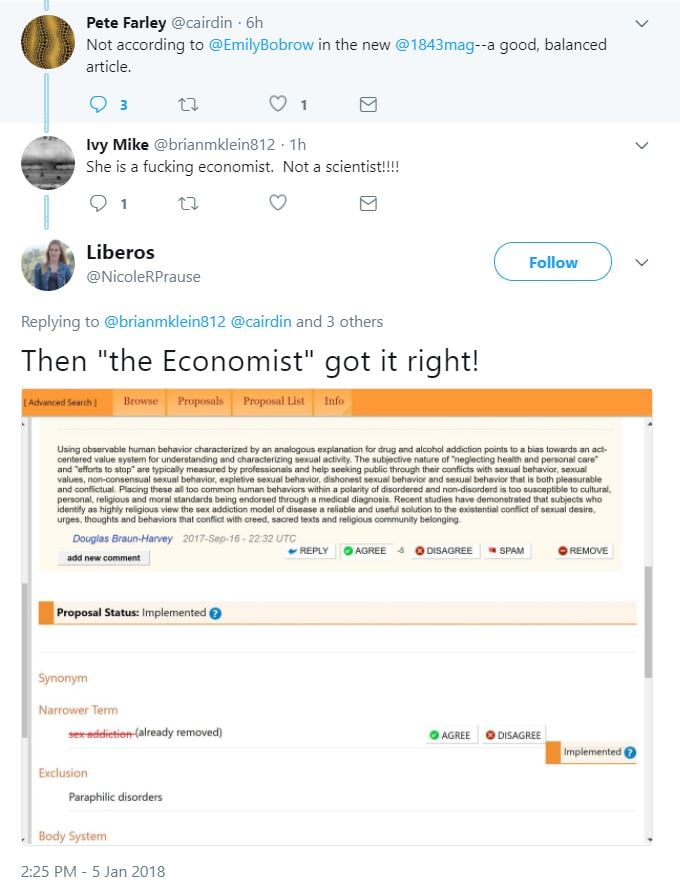
—
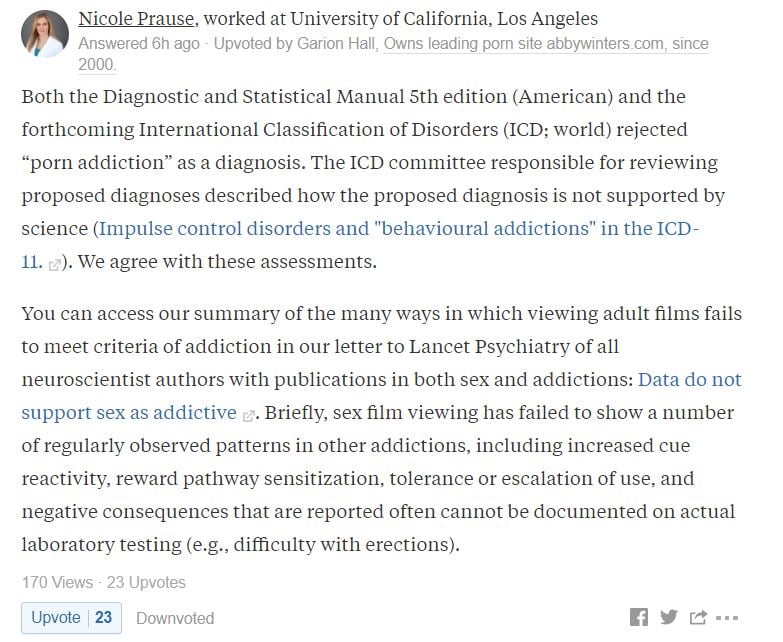
—
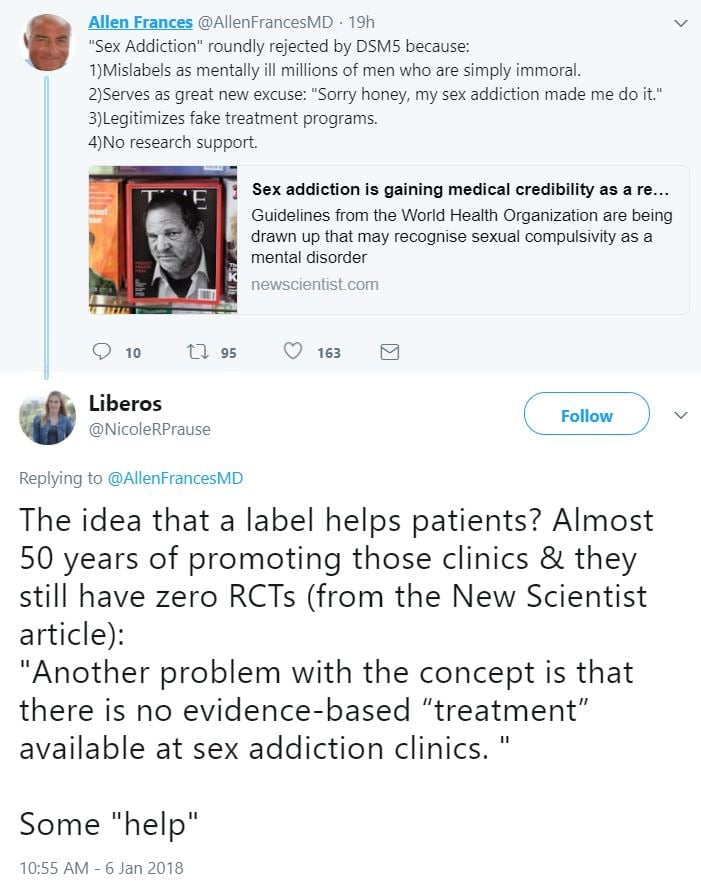
—
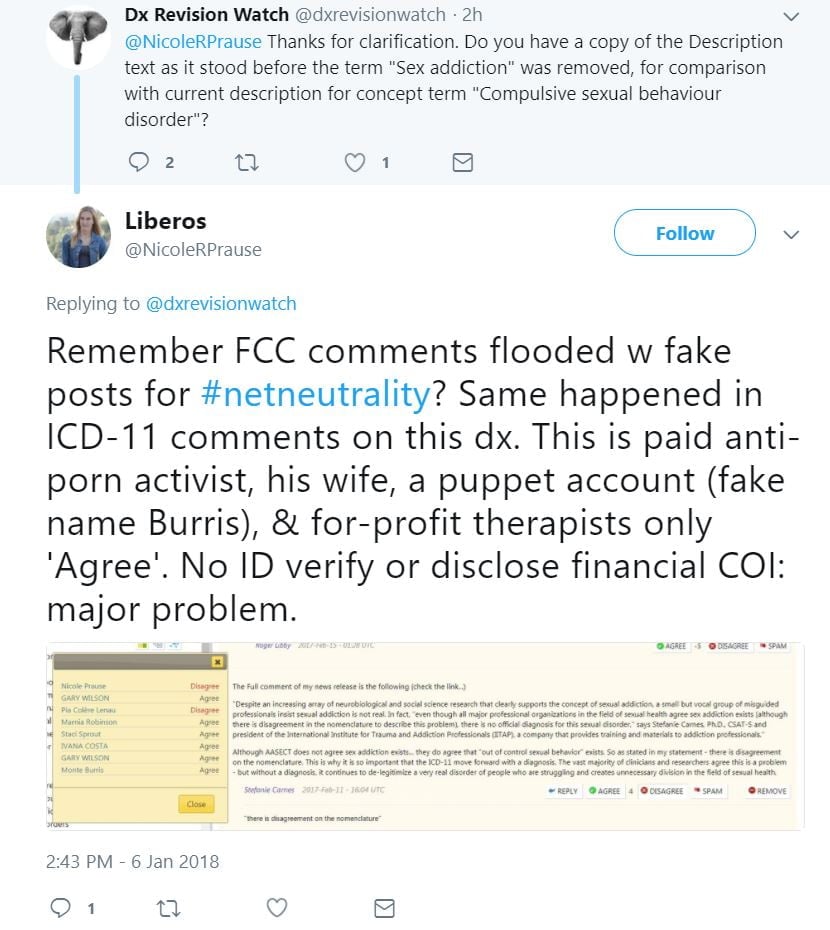
—
Cyberstalking Rob Weiss, who has published several peer-reviewed papers and multiple books:
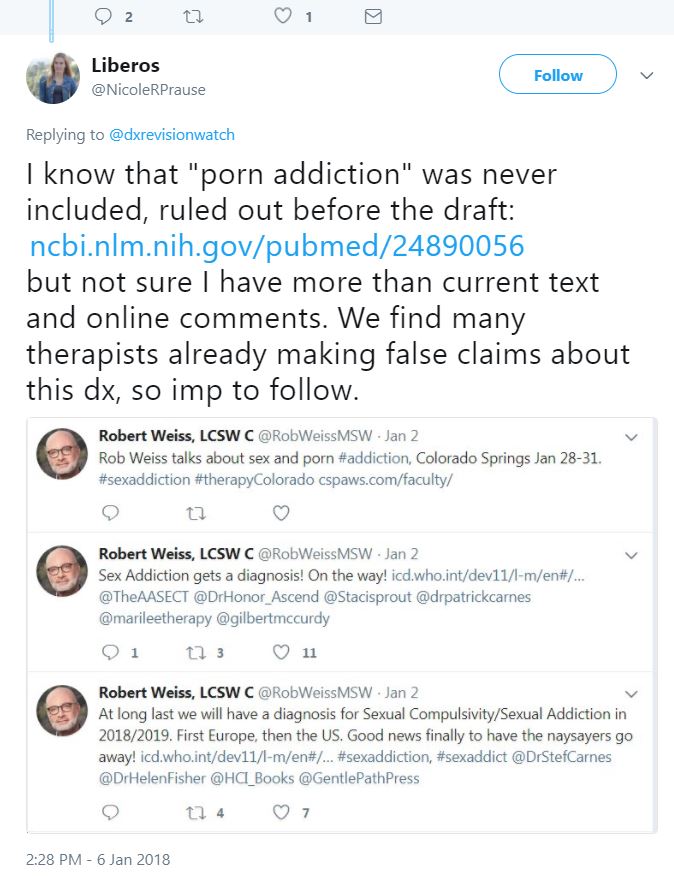
—
All the following tweets & comments contain Prause’s blatant misrepresentations of the 2014 Jon Grant paper:
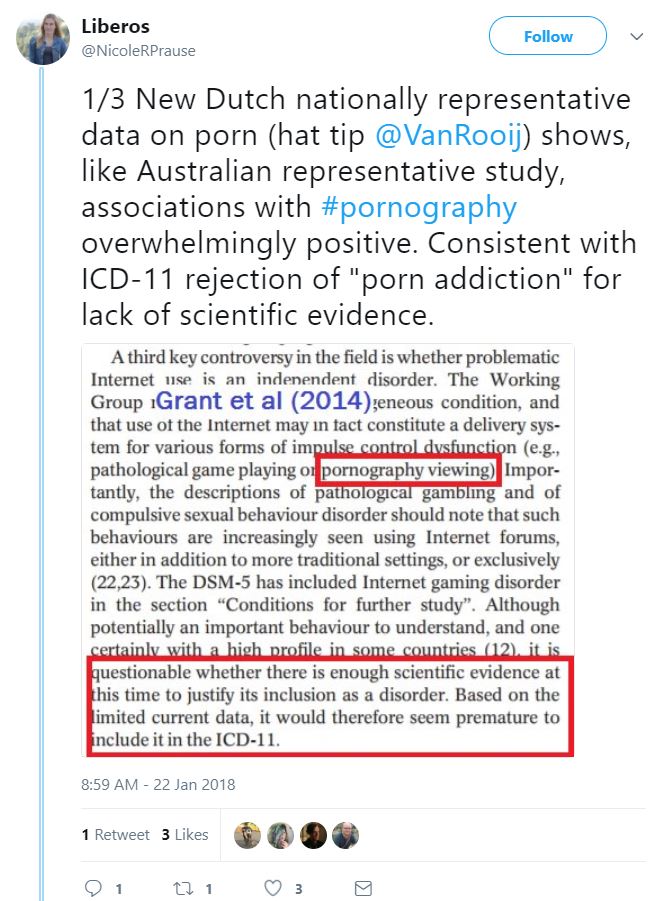
—

—
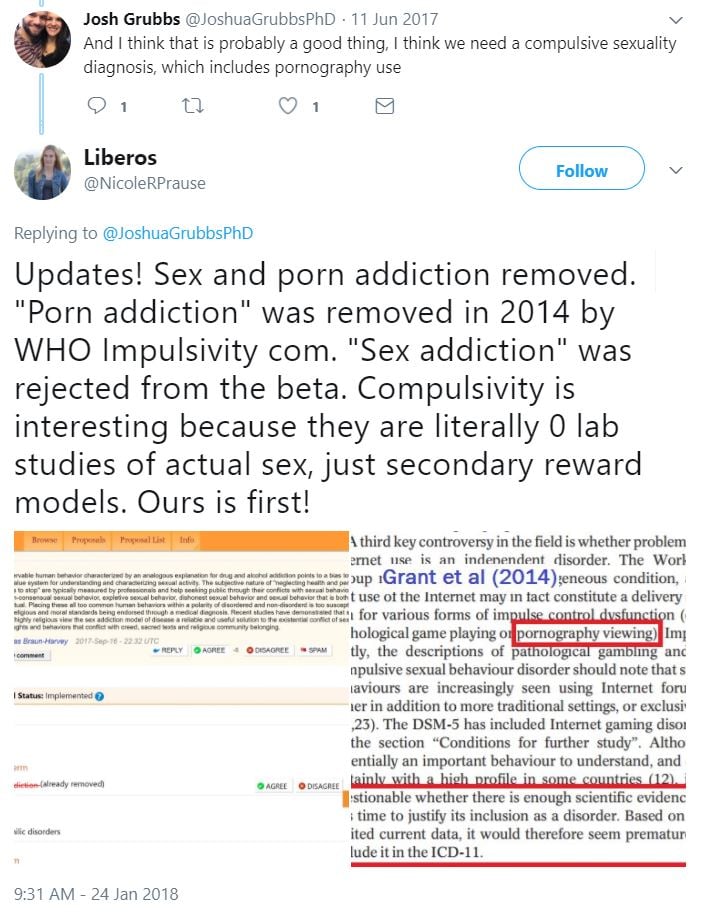
—

—
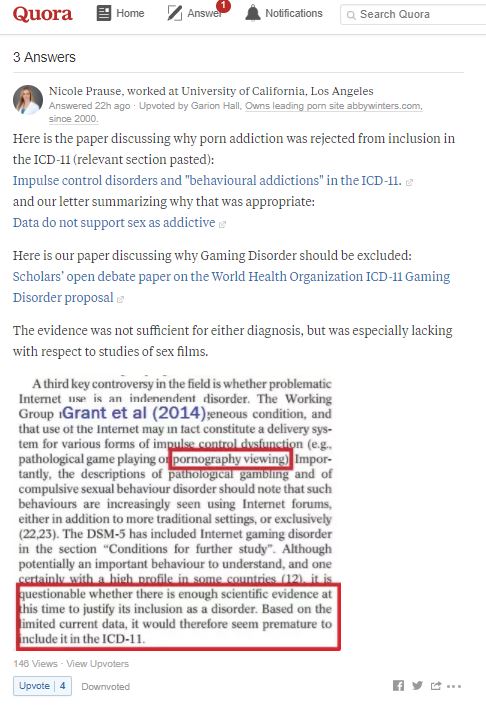
—
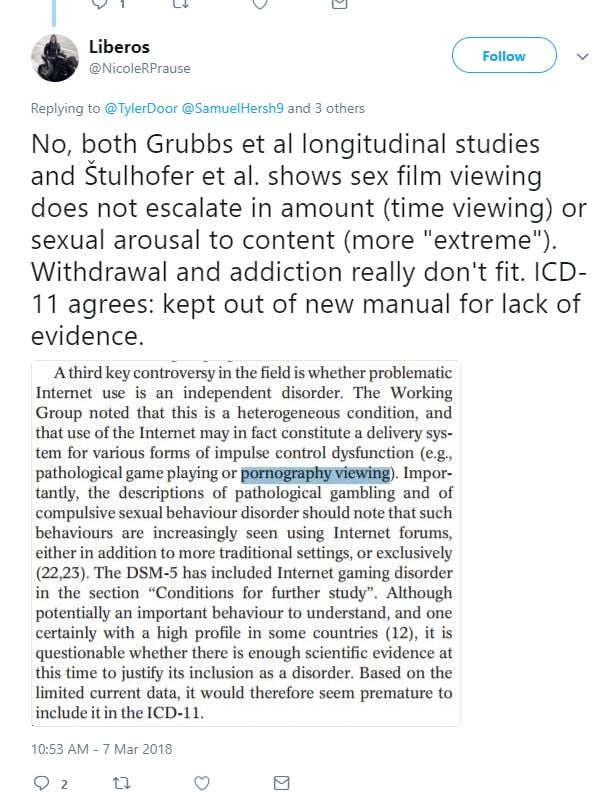
—
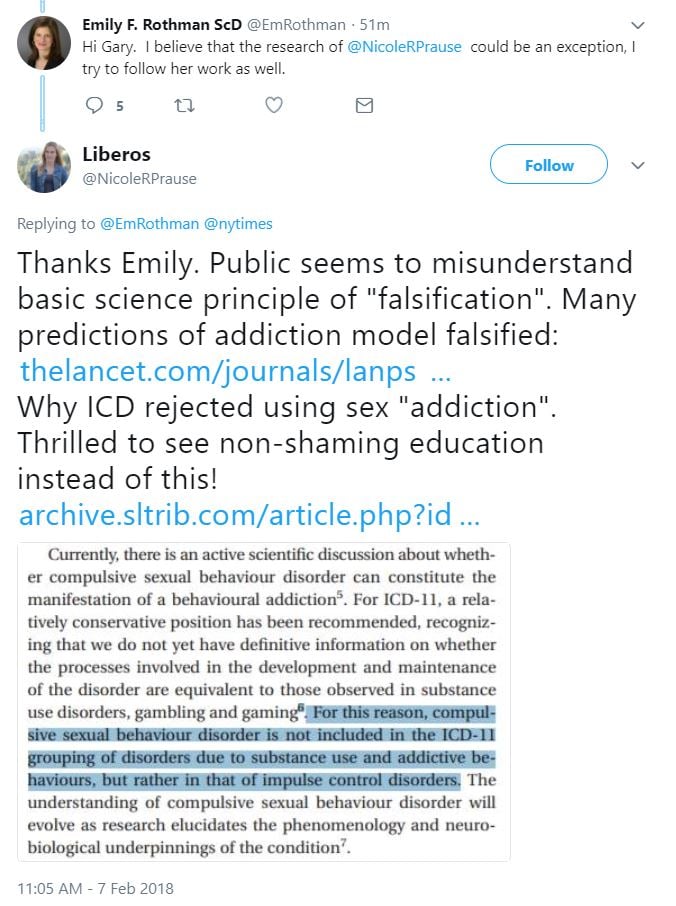
—
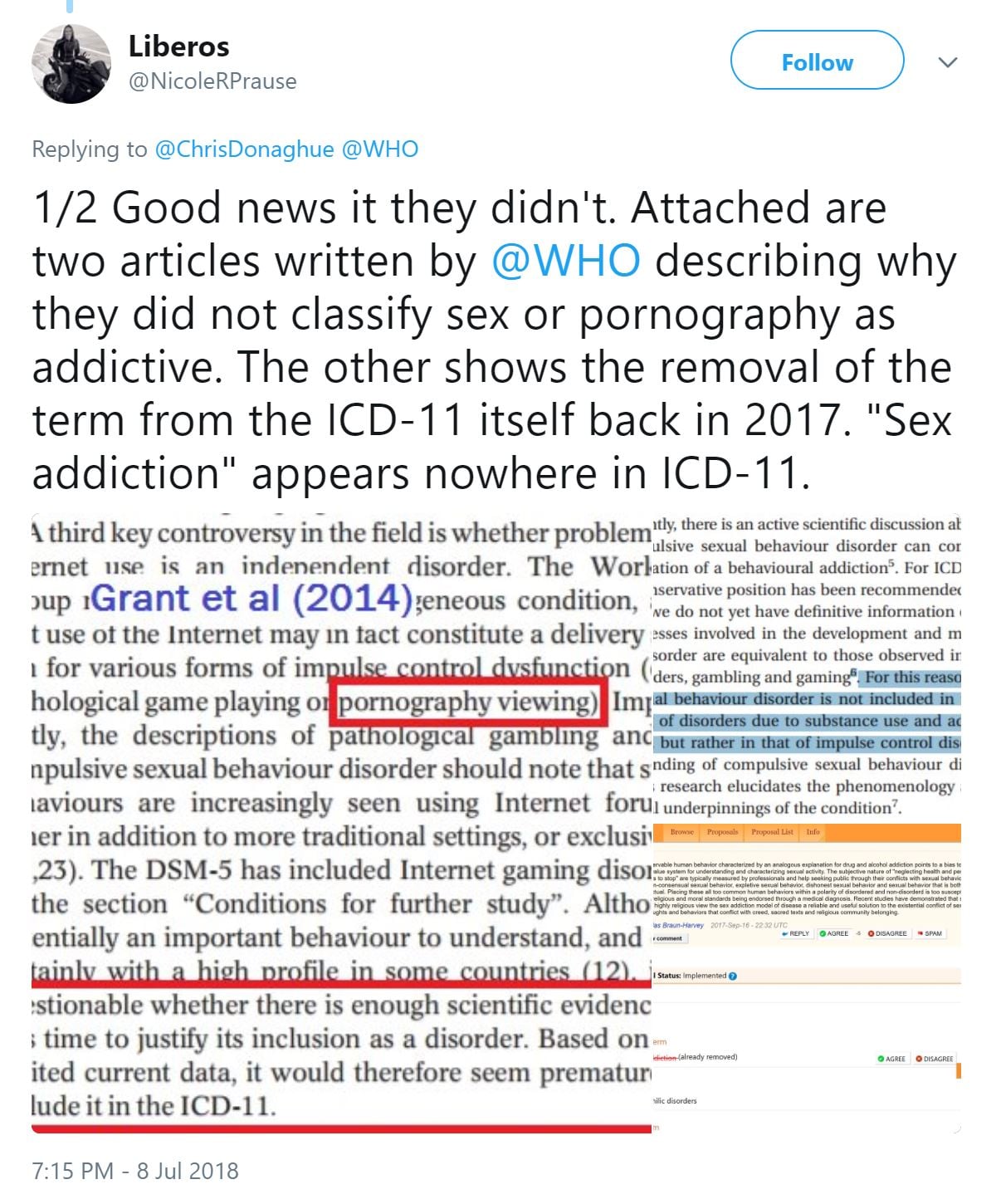
—
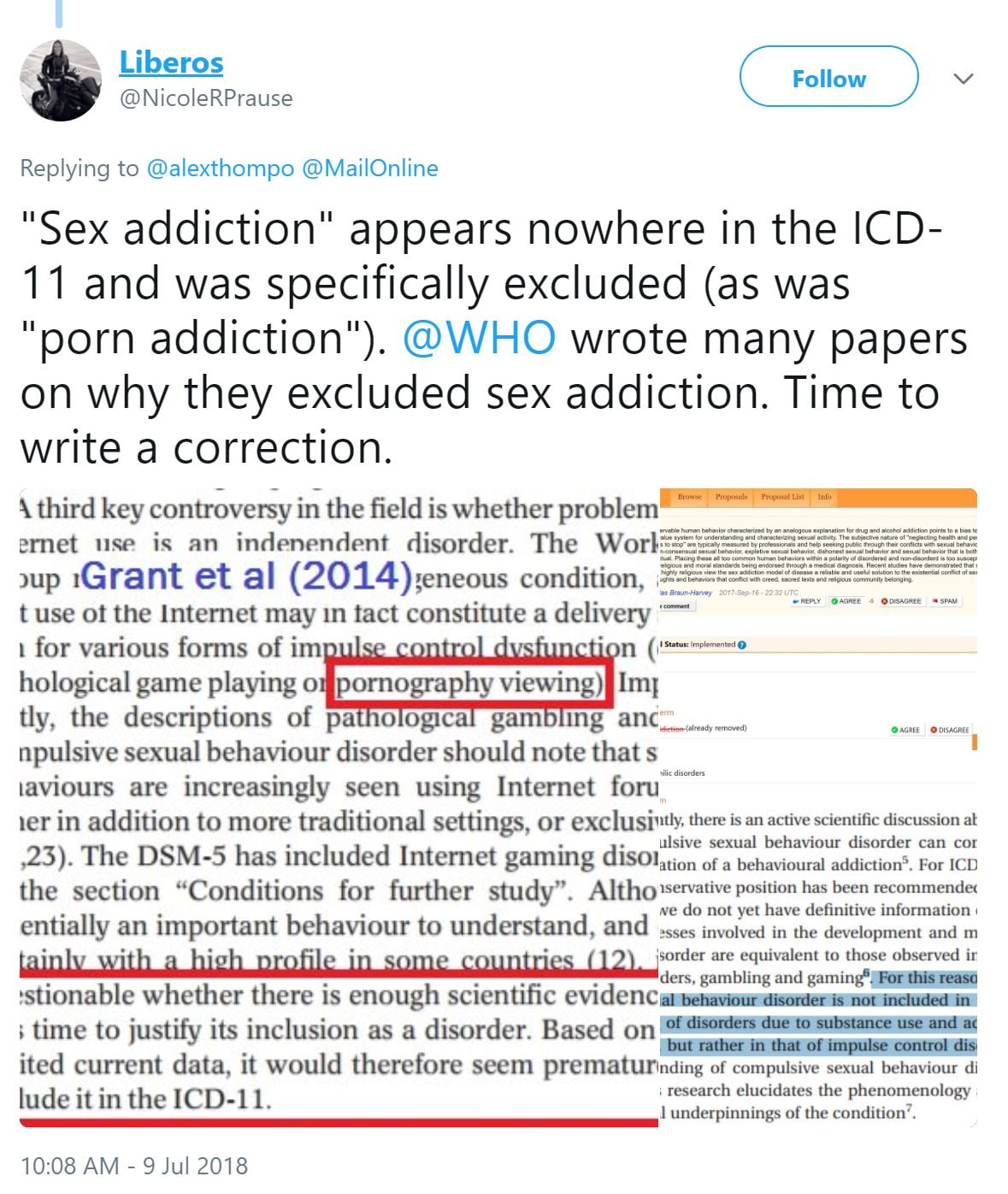
—
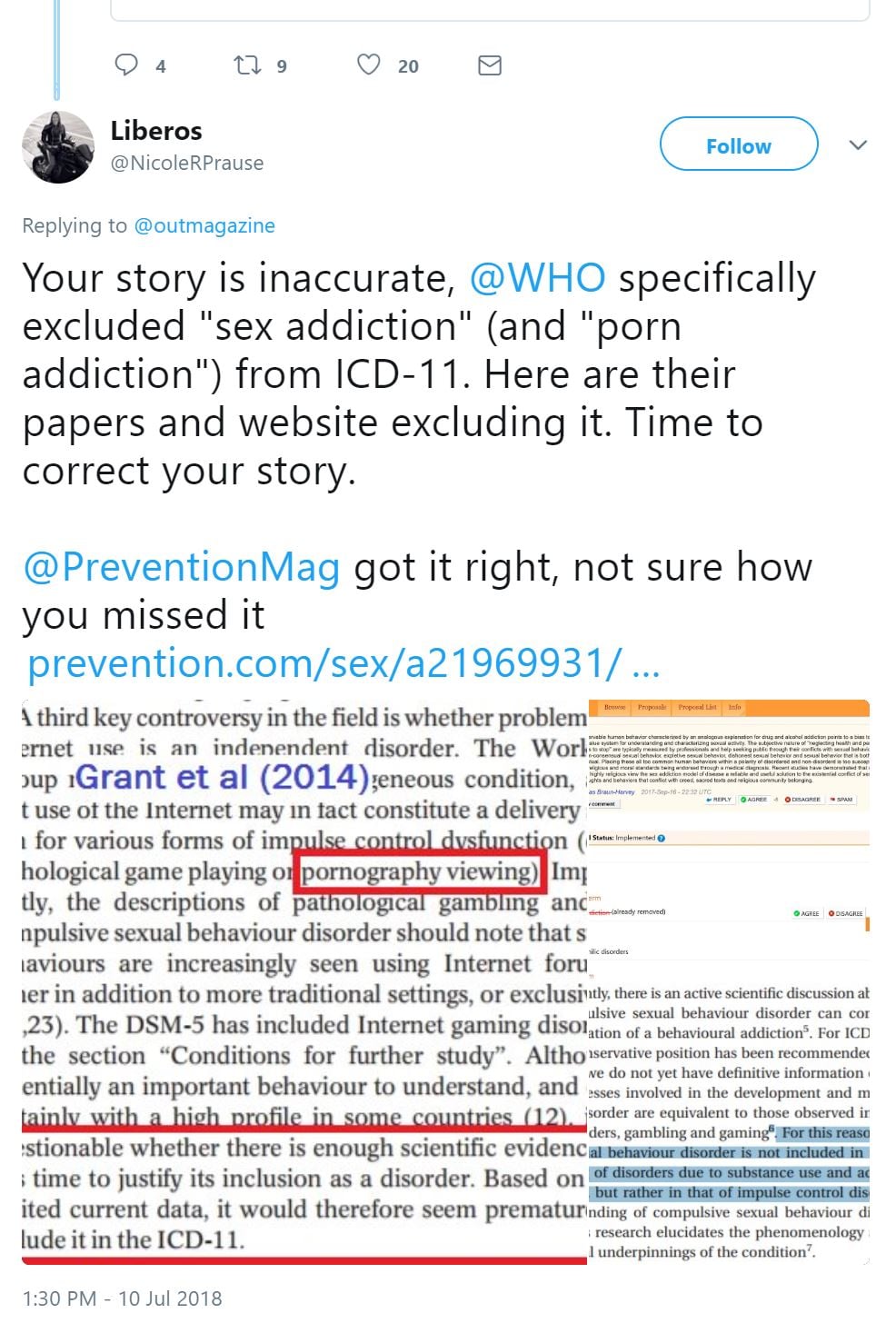
—
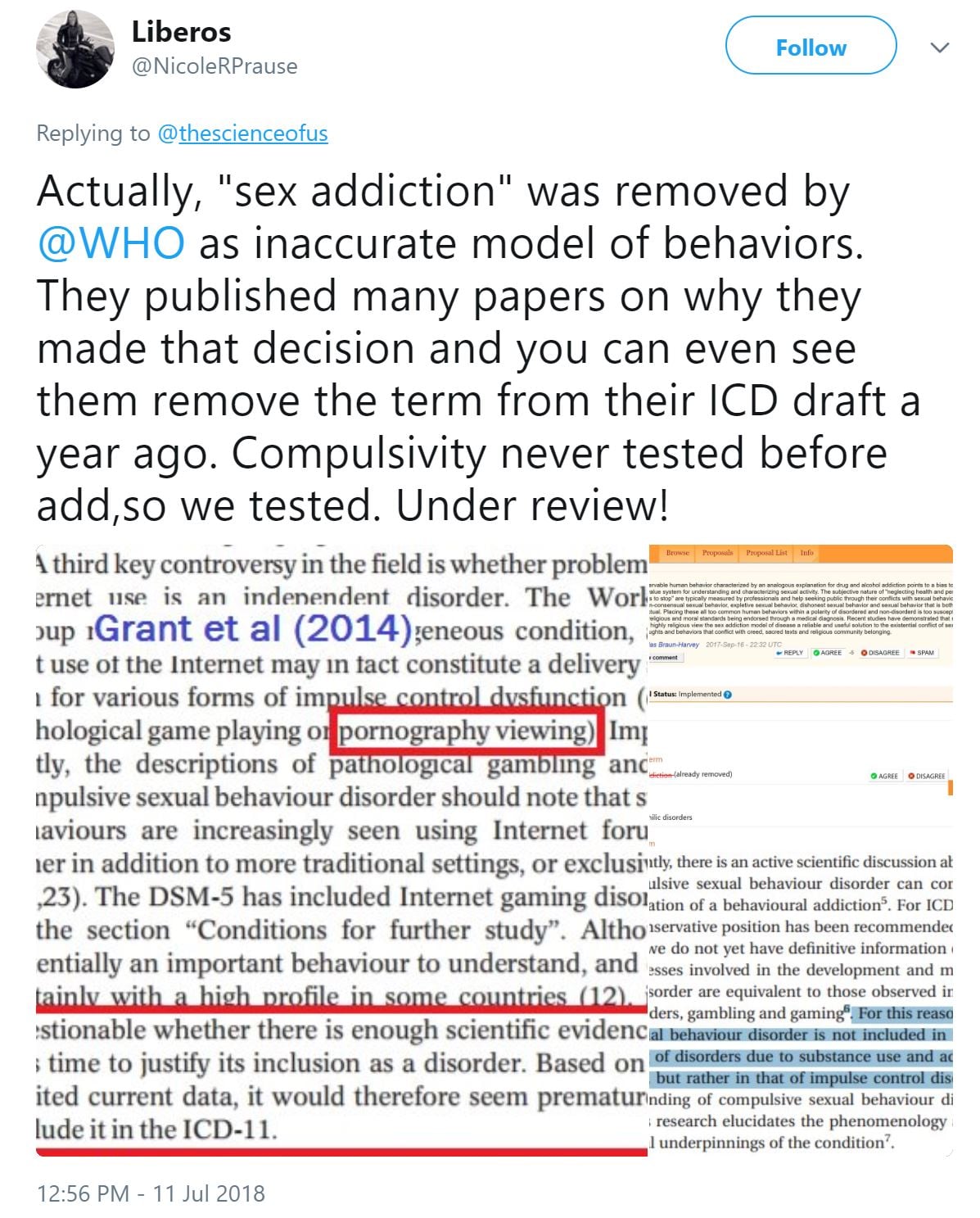
Copied and tweeted by one of her followers:
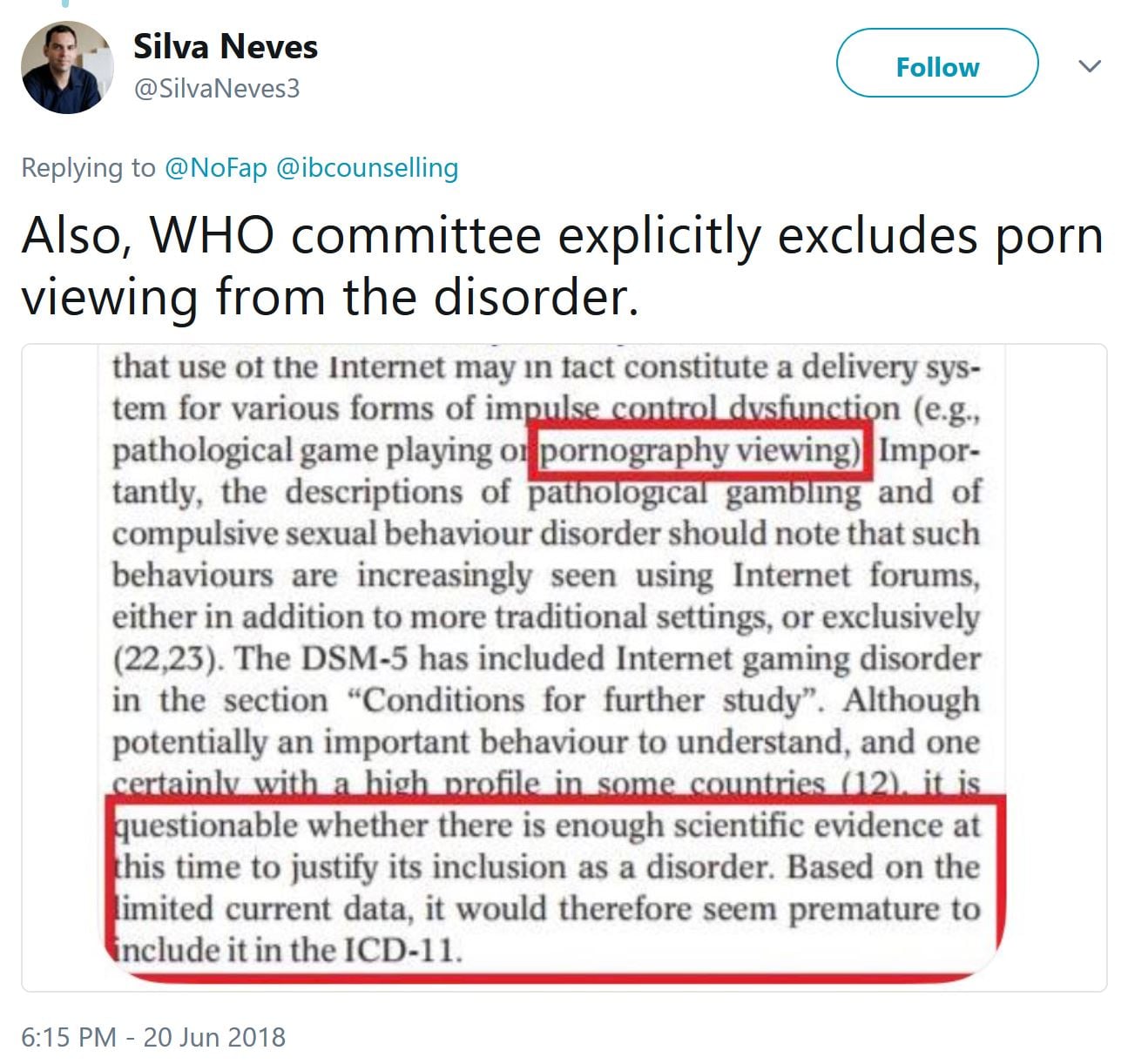
Again, all the above tweets are untrue, as exposed here: Propagandists misrepresent peer-reviewed papers and ICD-11 search features to fuel false claim that WHO’s ICD-11 “rejected porn addiction and sex addiction.” Here’s the Jon Grant 2014 paper: Impulse control disorders and “behavioural addictions” in the ICD-11. Read the entire paragraph and you will see that Jon Grant is talking about “Internet gaming disorder” not pornography. Grant believed it was questionable whether there was enough scientific evidence at that time to justify Internet Gaming Disorder’s inclusion as a disorder:
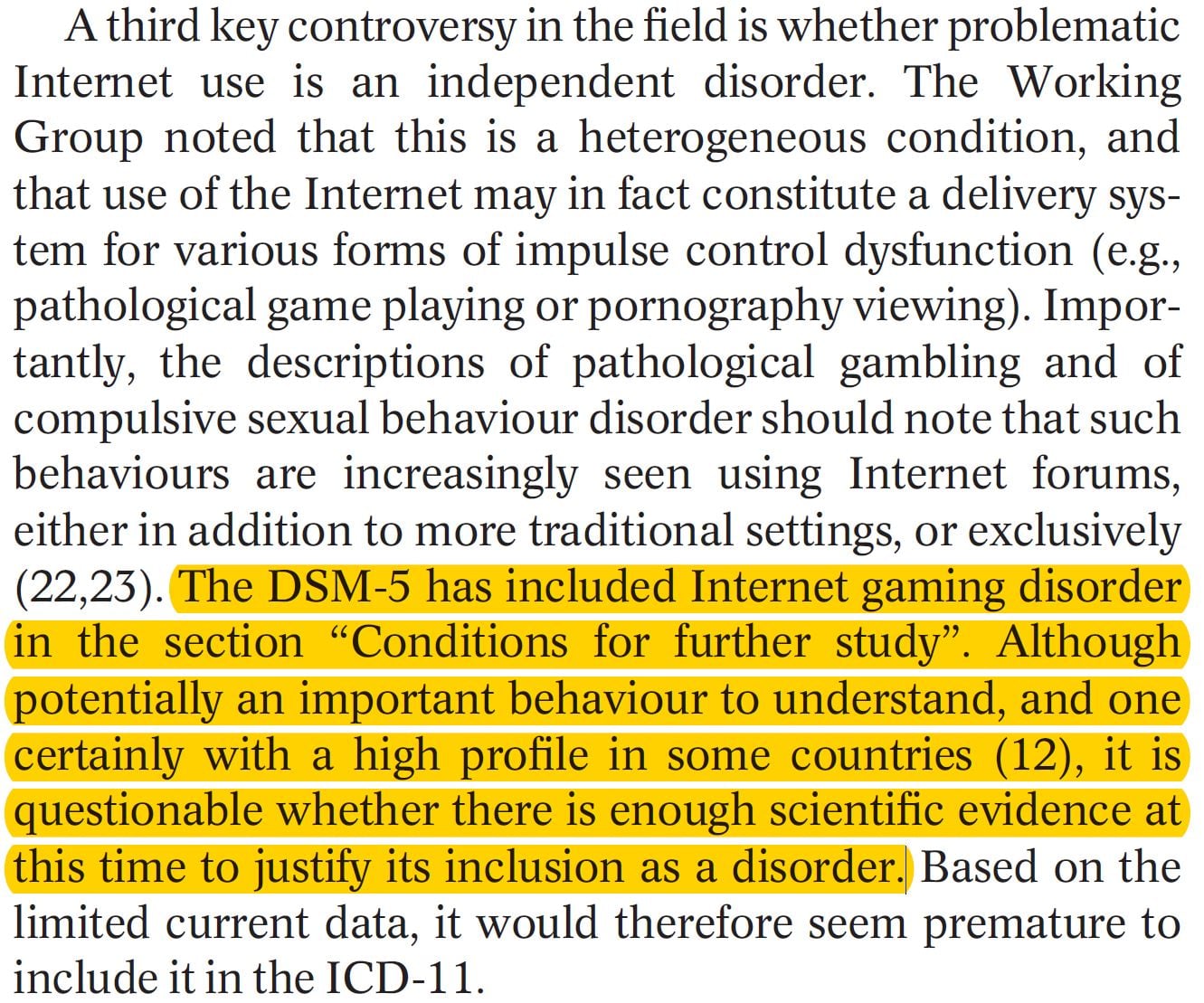
5 years and hundreds of studies later, Internet Gaming Disorder is now in WHO’s ICD-11, under addictive behaviors.
—
On to more obsessive tweeting & comments about the ICD-11 and CSBD… and the same falsehoods:

Tweeting David Ley’s article:
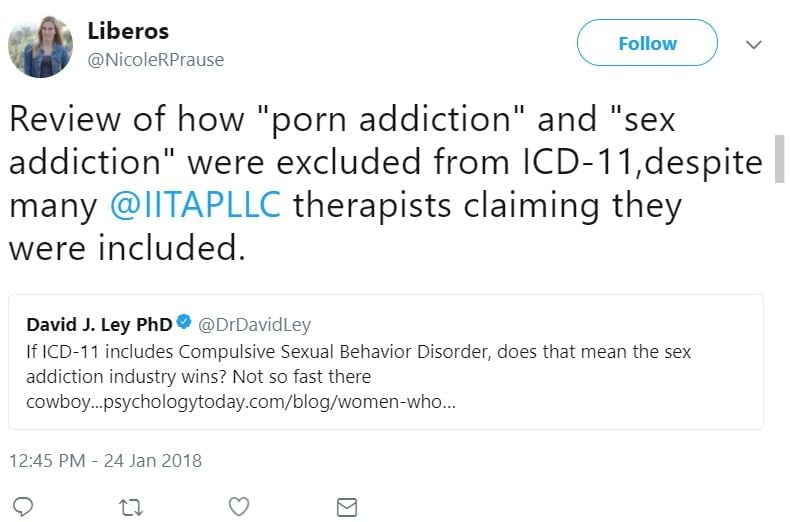
Commenting under David Ley’s article, making threats:
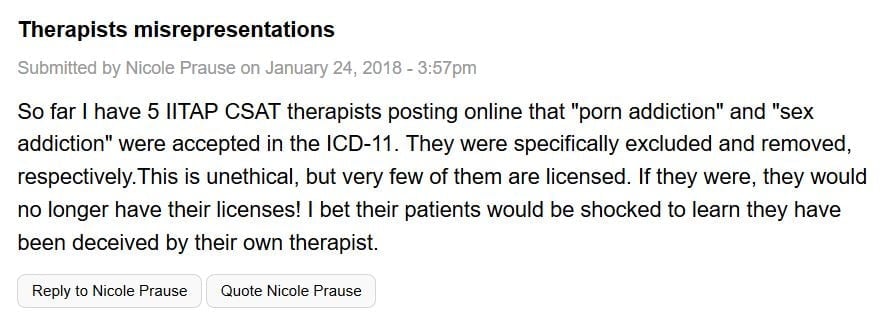
—
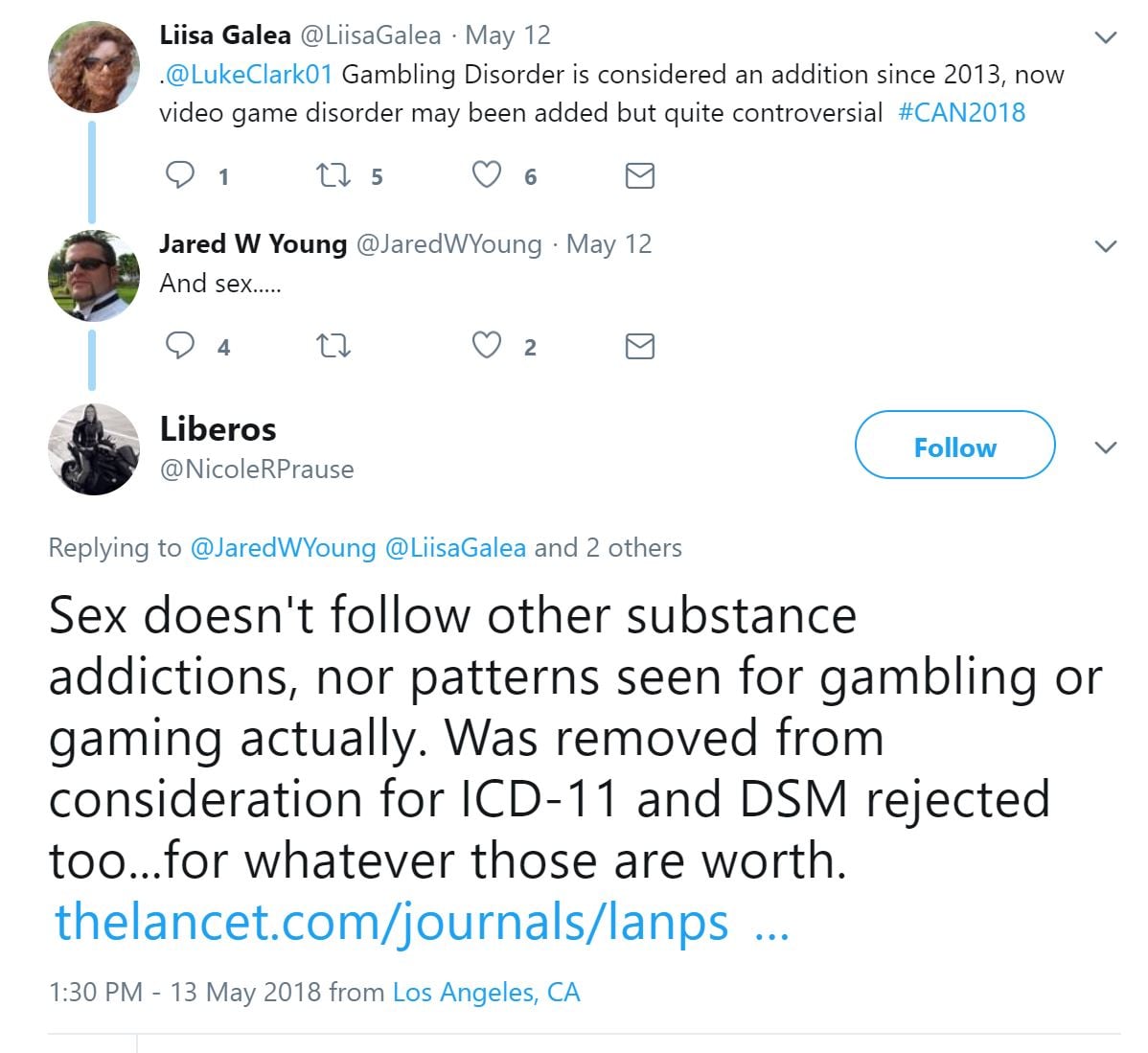
—
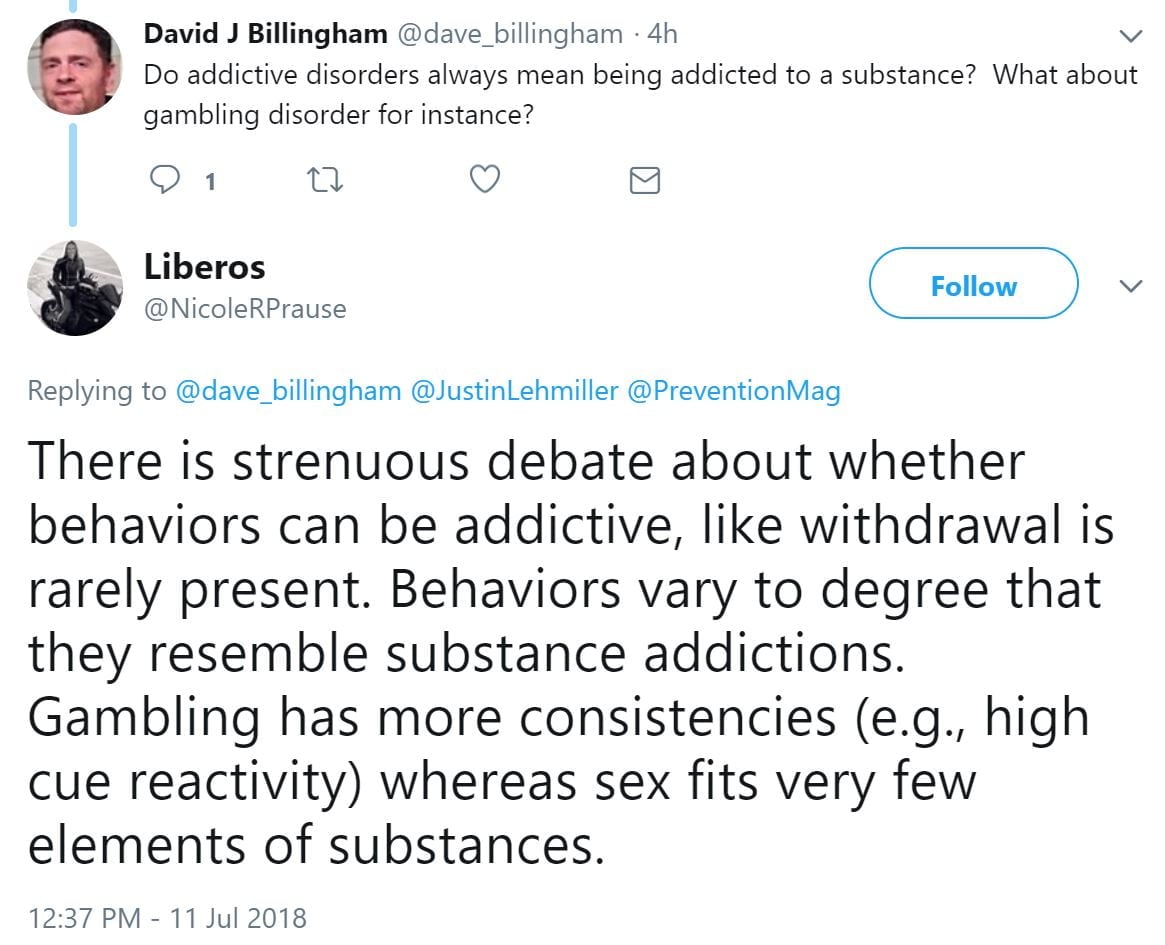
Trolling ATSAC:
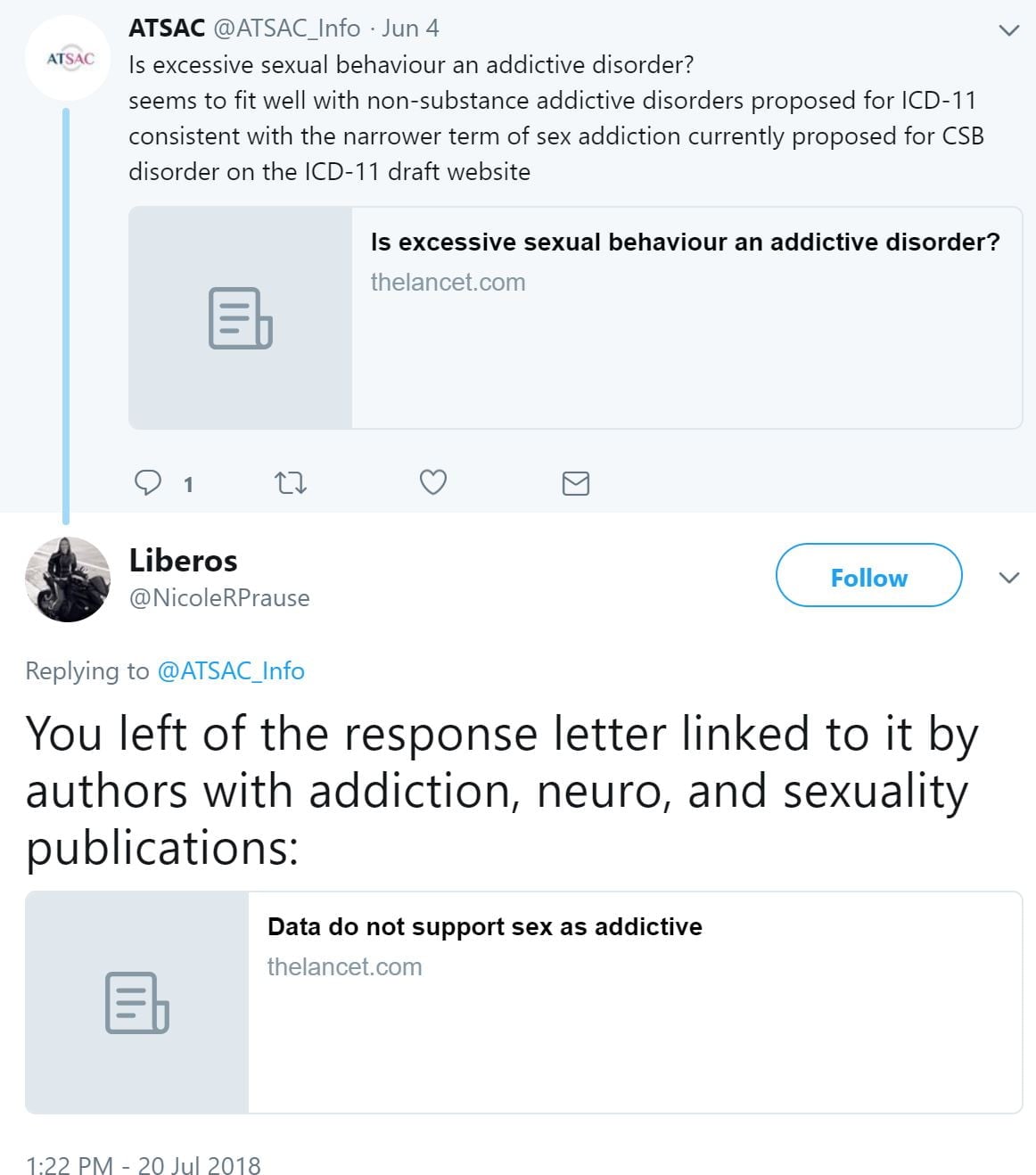
Trolling ATSAC again:
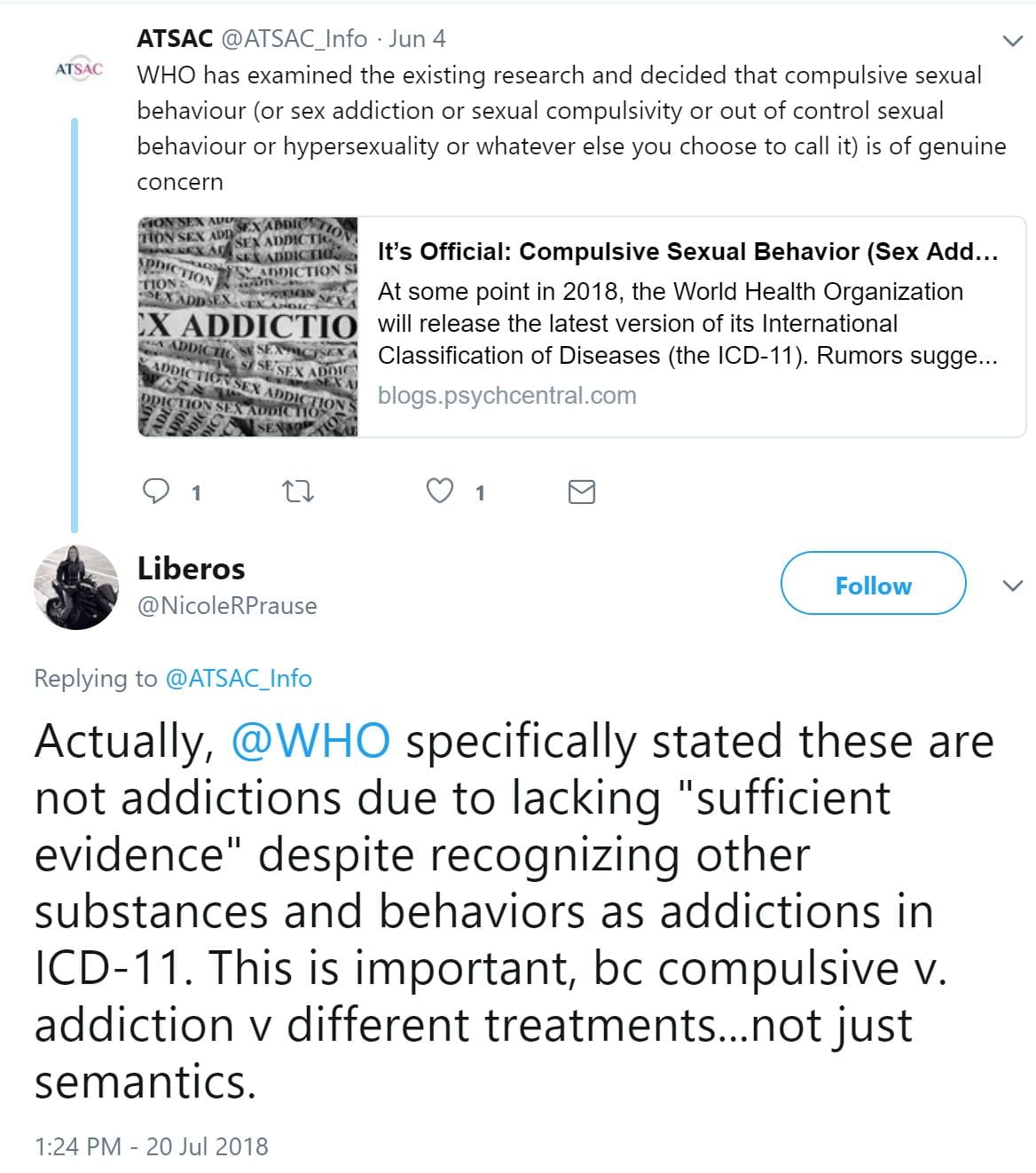
Trolling another article about CSBD in ICD-11, with a new infographic she made for the occasion:
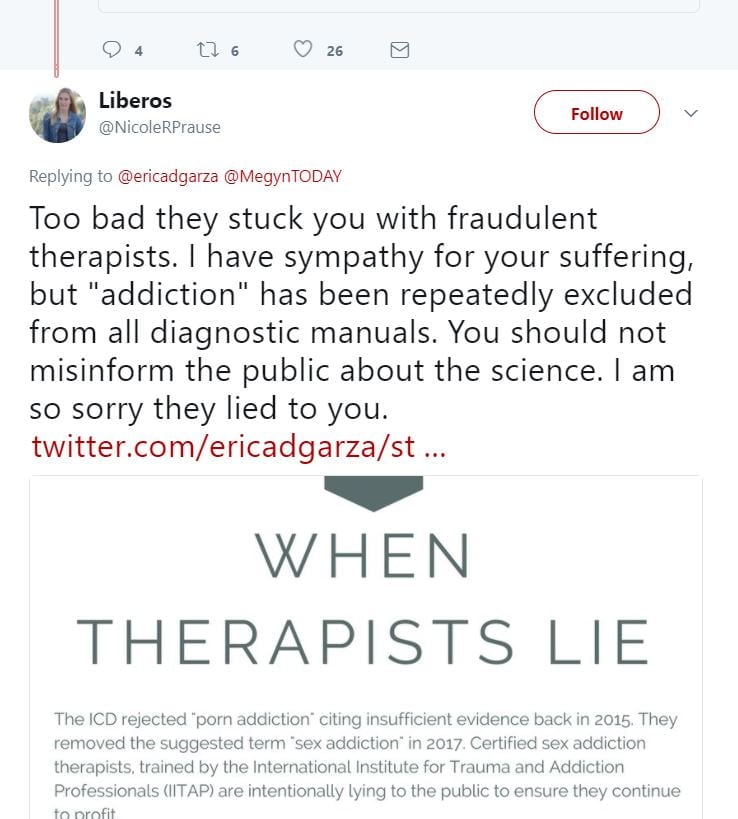
Slate article:
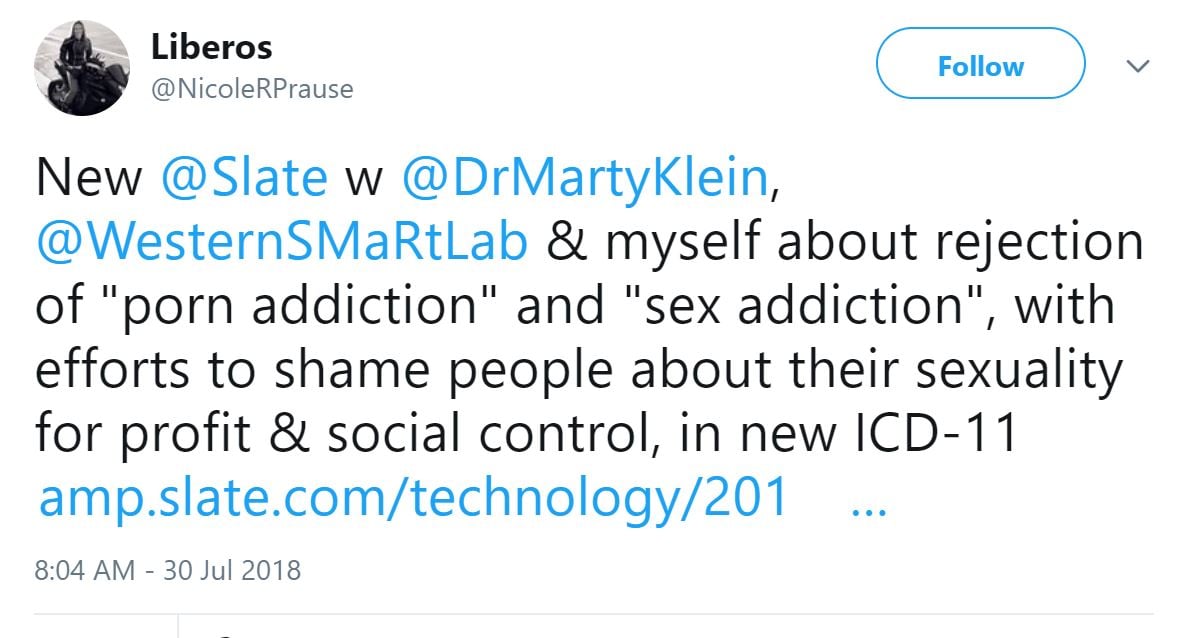
Afraid not – Debunking “Why Are We Still So Worried About Watching Porn? by Marty Klein, Taylor Kohut, and Nicole Prause (2018)
Prause keeps promising her Orgasmic Meditation data will debunk everything (it won’t).
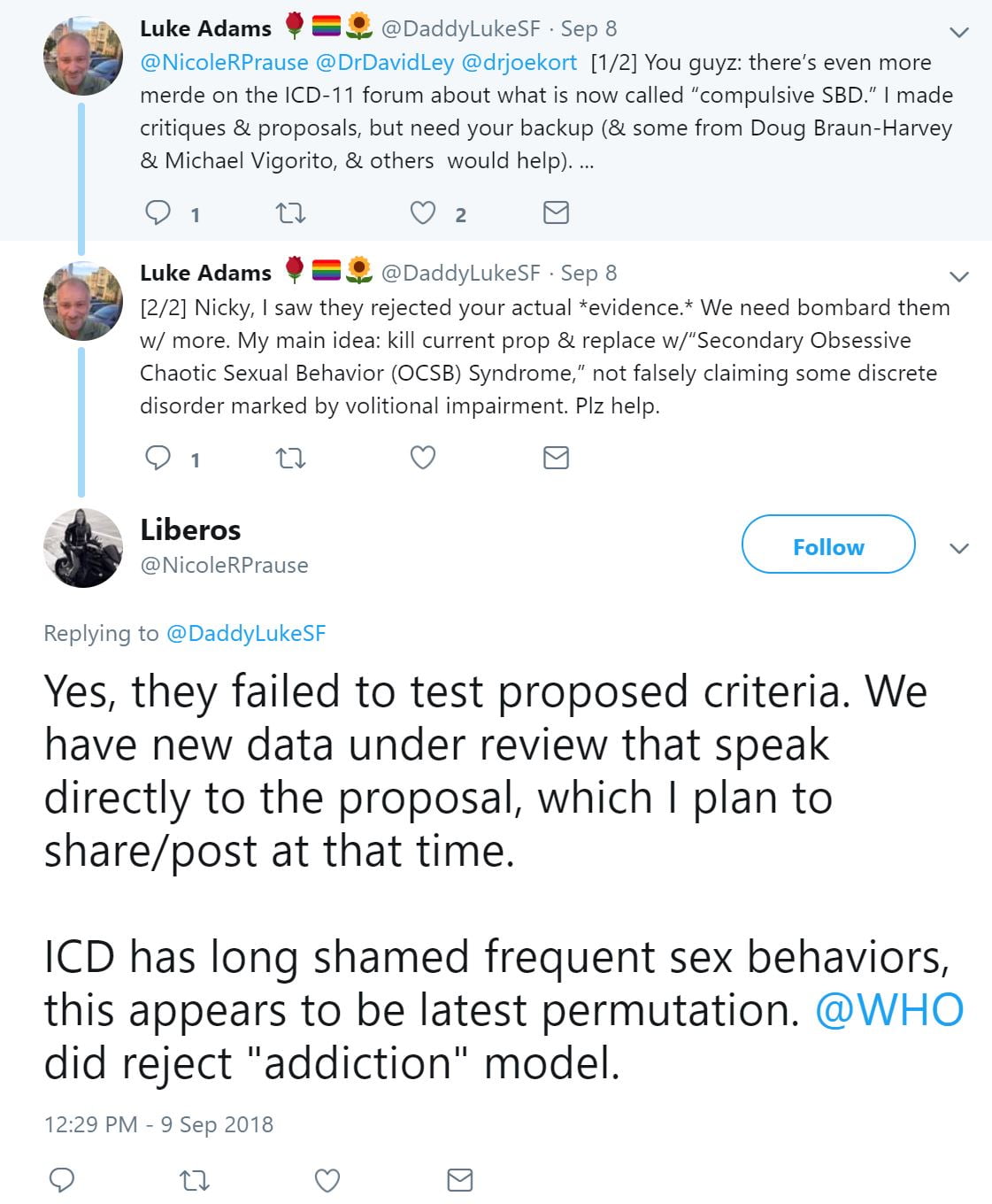
——————
Prause cites her Lancet letter with only 5 references – none of which have anything to do with the letter’s unsupported assertions:
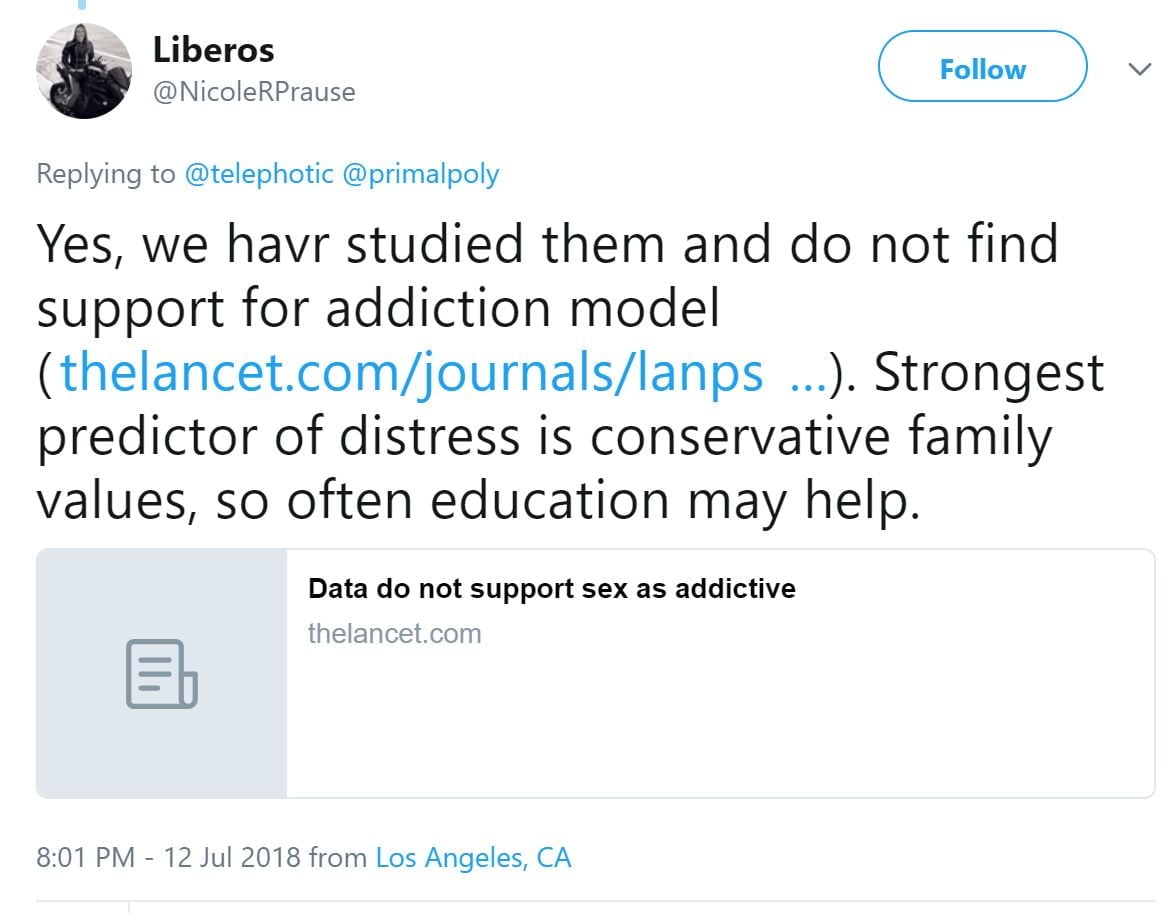
Everything in Prause’s 240-word letter to Lancet is completely debunked in this extensive critique: Analysis of “Data do not support sex as addictive” (Prause et al., 2017). The real experts’ opinions on porn/sex addiction? This list contains 20 recent literature reviews & commentaries by some of the top neuroscientists in the world. All support the addiction model.
——————
With WHO announcing that “Compulsive Sexual Behavior Disorder” (CSBD) is in the upcoming ICD-11, Prause trolls Twitter providing her unique brand of unsupported spin:
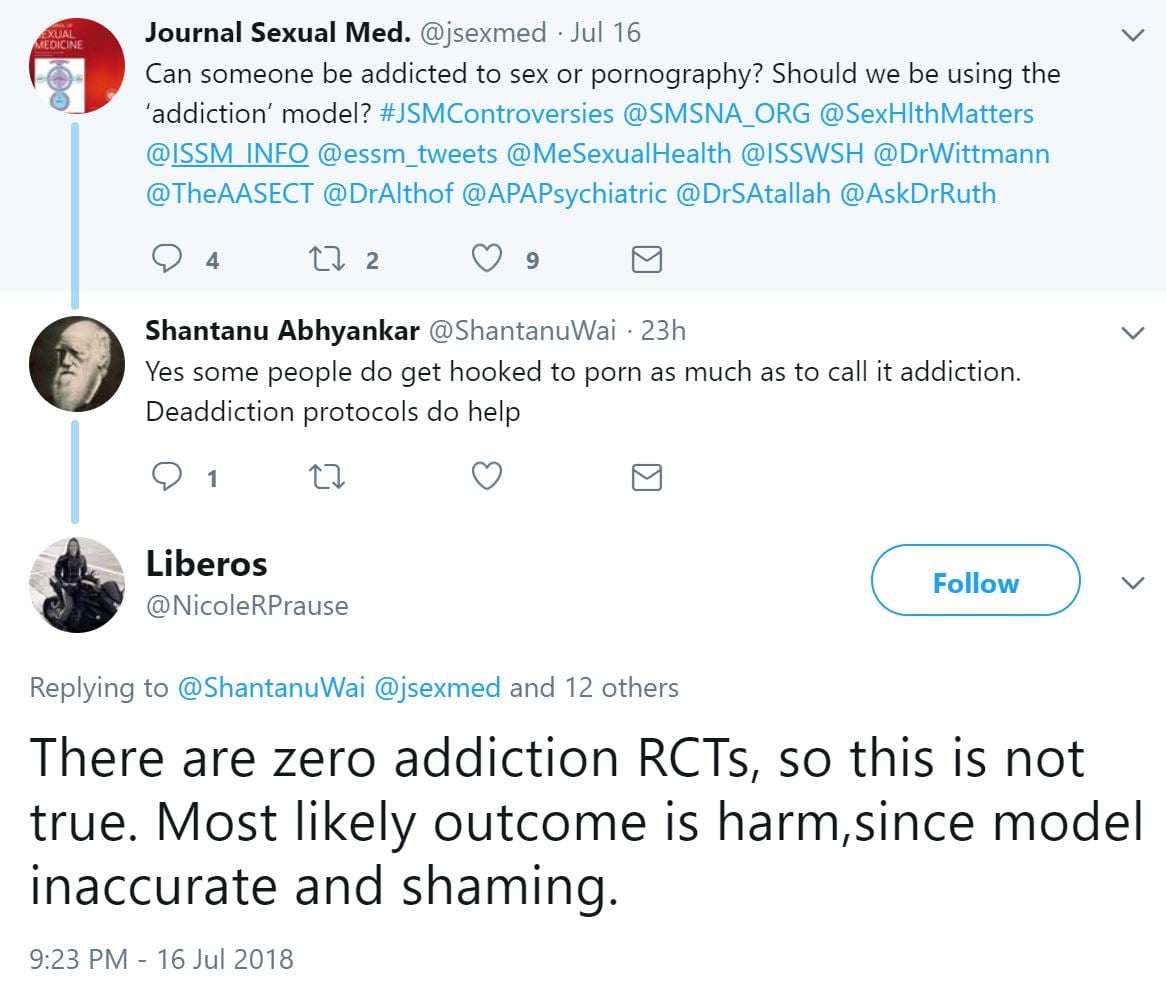
——————
Trolling. So proud of her 240-word letter to Lancet:
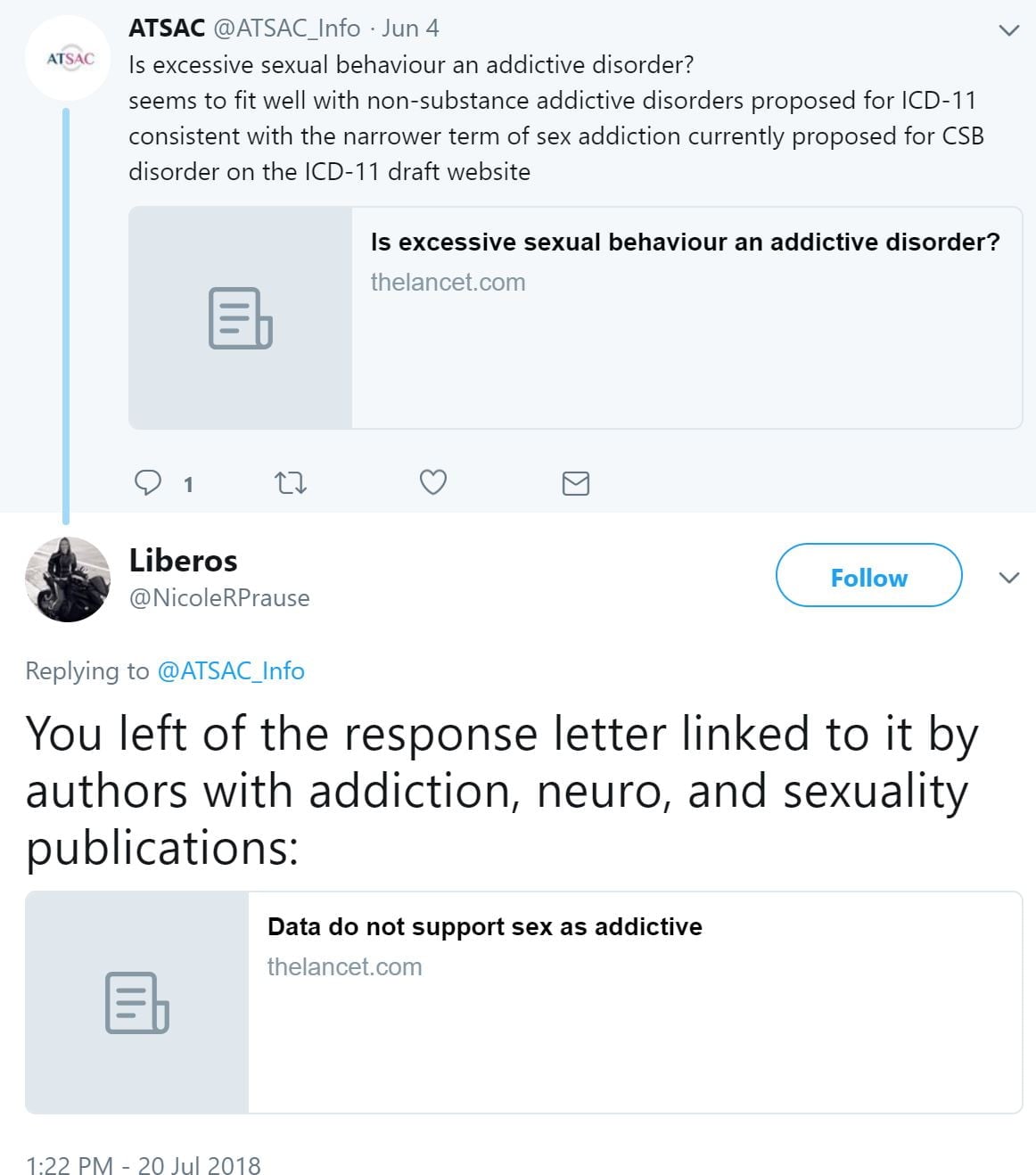
Completely debunked in this extensive critique: Analysis of “Data do not support sex as addictive” (Prause et al., 2017).
——————
Prause finds a year-old Naomi Wolf tweet she doesn’t like:
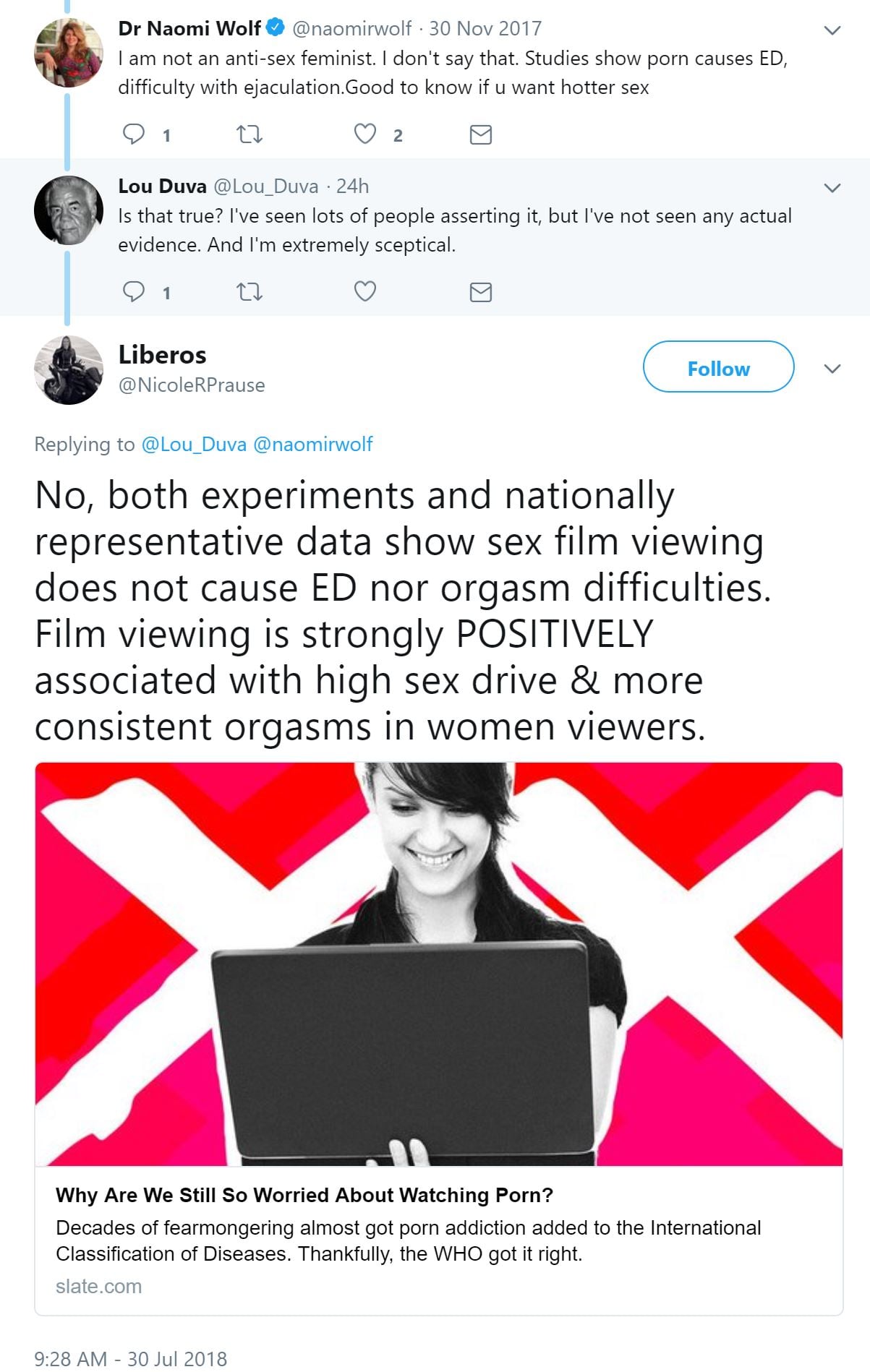
Prause, Ley and Klein have grossly misrepresented the current state of the research for the last few years. Now, they’ve conveniently bundled all the outlying, cherry-picked studies they regularly cite into the above article. YBOP goes line by line, claim by claim, citation by citation, debunking the entire Prause-Kohut-Klein magnum opus. Debunking “Why Are We Still So Worried About Watching Porn?” by Marty Klein, Taylor Kohut, and Nicole Prause (2018).
——————
Trolling an article that describes porn-induced ED:
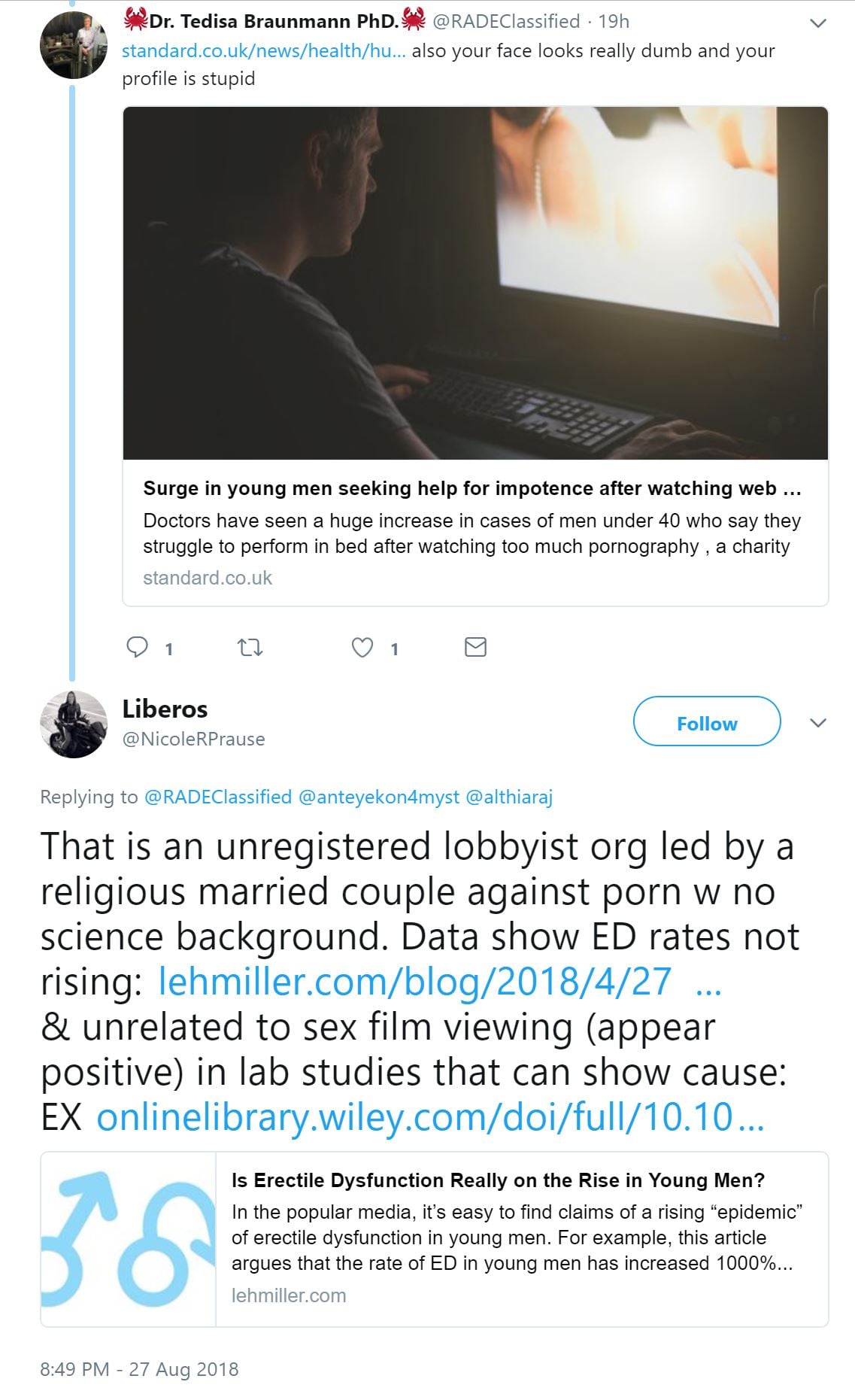
Prause cites Justin Lehmiller of Playboy to “debunk” porn induced problems. It shouldn’t surprise anyone that Playboy writer Lehmiller is a close ally of Prause, having featured her in at least ten of his blog posts. These and many other Lehmiller blogs perpetuate the same false narratives: porn use causes no problems and porn addiction/porn-induced sexual dysfunctions do not exist. YBOP exposes the above Lehmiller article as irresponsible: Debunking Justin Lehmiller’s “Is Erectile Dysfunction Really on the Rise in Young Men” (2018).
——————
Citing her magnum opus wherever she can, this time throwing in “church data,” “rejection of porn addiction,” “pseudoscience,” etc.
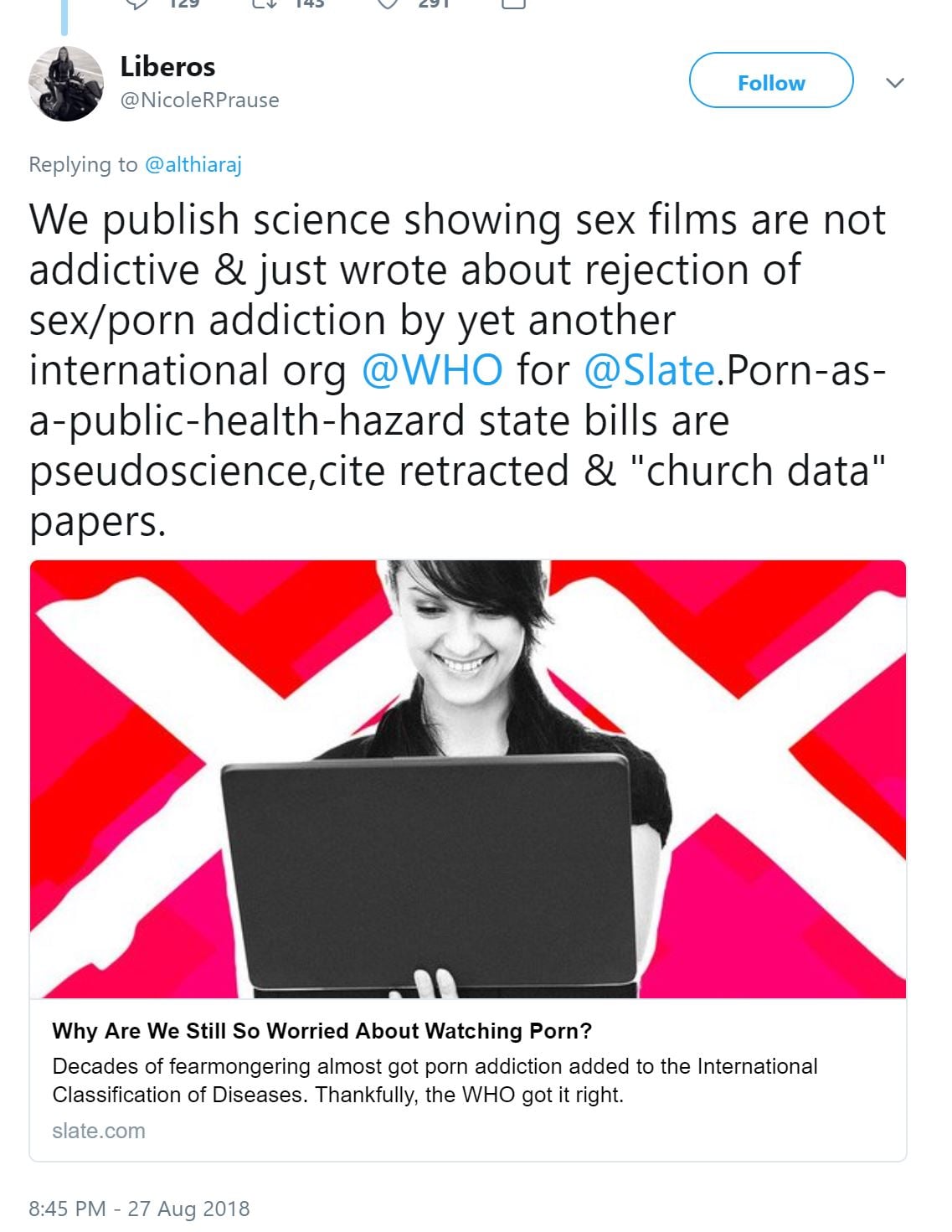
Thanks Dr. Prause for gathering all your debunking eggs into one basket, to be cracked here: Debunking “Why Are We Still So Worried About Watching Porn?” by Marty Klein, Taylor Kohut, and Nicole Prause (2018).
——————
Doesn’t like an upcoming study by Gola and Grubbs that may have correlated porn addiction with ED:
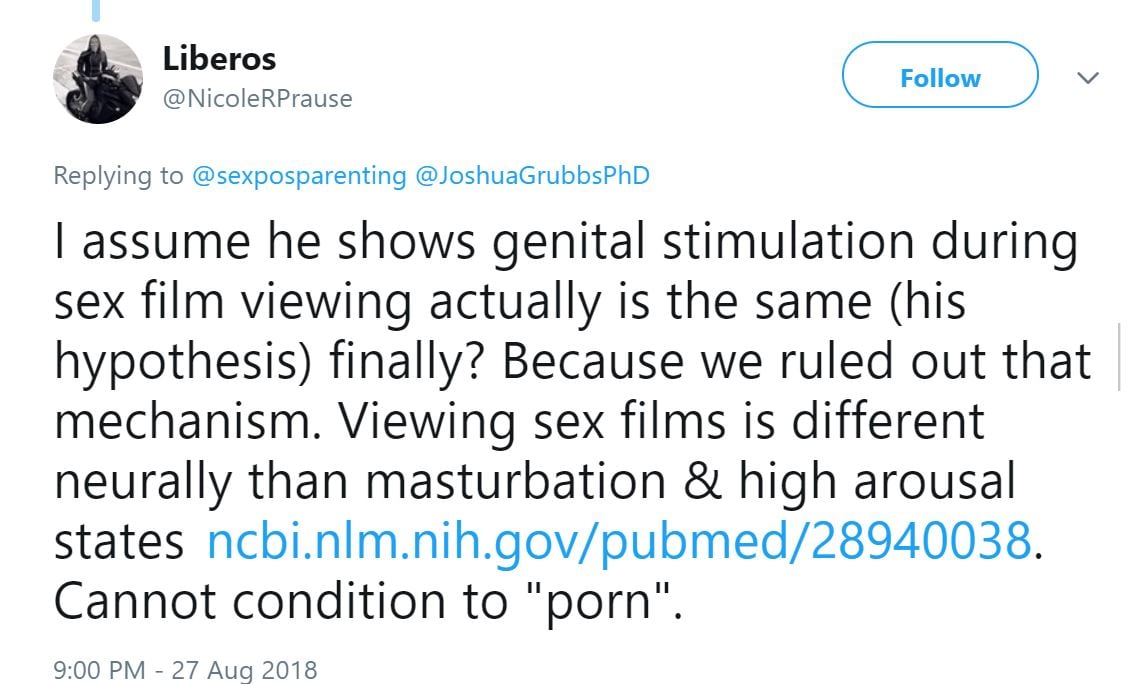
Prause says that viewing porn is way different neurally than masturbation or sex (citing her own letter to the editor – not even a study). It’s really irrelevant to PIED, but even her close ally, Janniko Georgiadis, says Prause is dead wrong. In a Georgiadis review of the literature (Functional Neuroanatomy of Human Cortex Cerebri in Relation to Wanting Sex and Having It) he says that watching porn is neurologically equivalent to having sex:
In the current conceptual framework, where sexual arousal is part of sexual consummation, having sex does not require physical genital contact either with another individual or masturbatory. Take the example of pornography. Thinking about ways to gain access to it, or actively searching for it, and perhaps experiencing desire during the process, is considered sexual wanting. Watching selected pornographic material, even without masturbation, can be considered “having sex” when there is genital arousal.
Oops.
Yes, one can condition to porn, as 0ver 30 studies reporting findings consistent with escalation of porn use (tolerance) & habituation to porn.
More on the upcoming study by Gola and Grubbs that may have correlated porn addiction with ED:
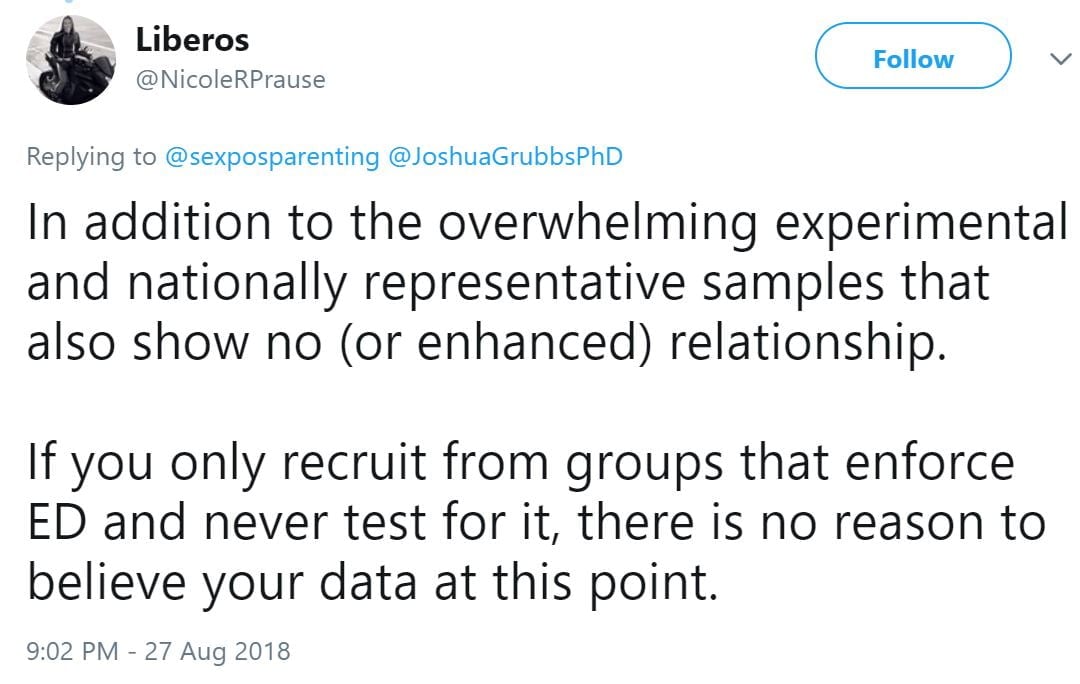
For the 30th time there are only 5 experimental studies on men with sexual problems: the first 5 list contains 27 studies linking porn use/porn addiction to sexual problems and lower arousal to sexual stimuli. These 5 studies demonstrate causation, as participants eliminated porn use and healed chronic sexual dysfunctions.
——————
Typical deception by Prause. She excerpts half of a single sentence from a 2 year-old review of the literature, to misrepresent what top neuroscientists believe: Should Compulsive Sexual Behavior be Considered an Addiction? (Kraus et al., 2016).
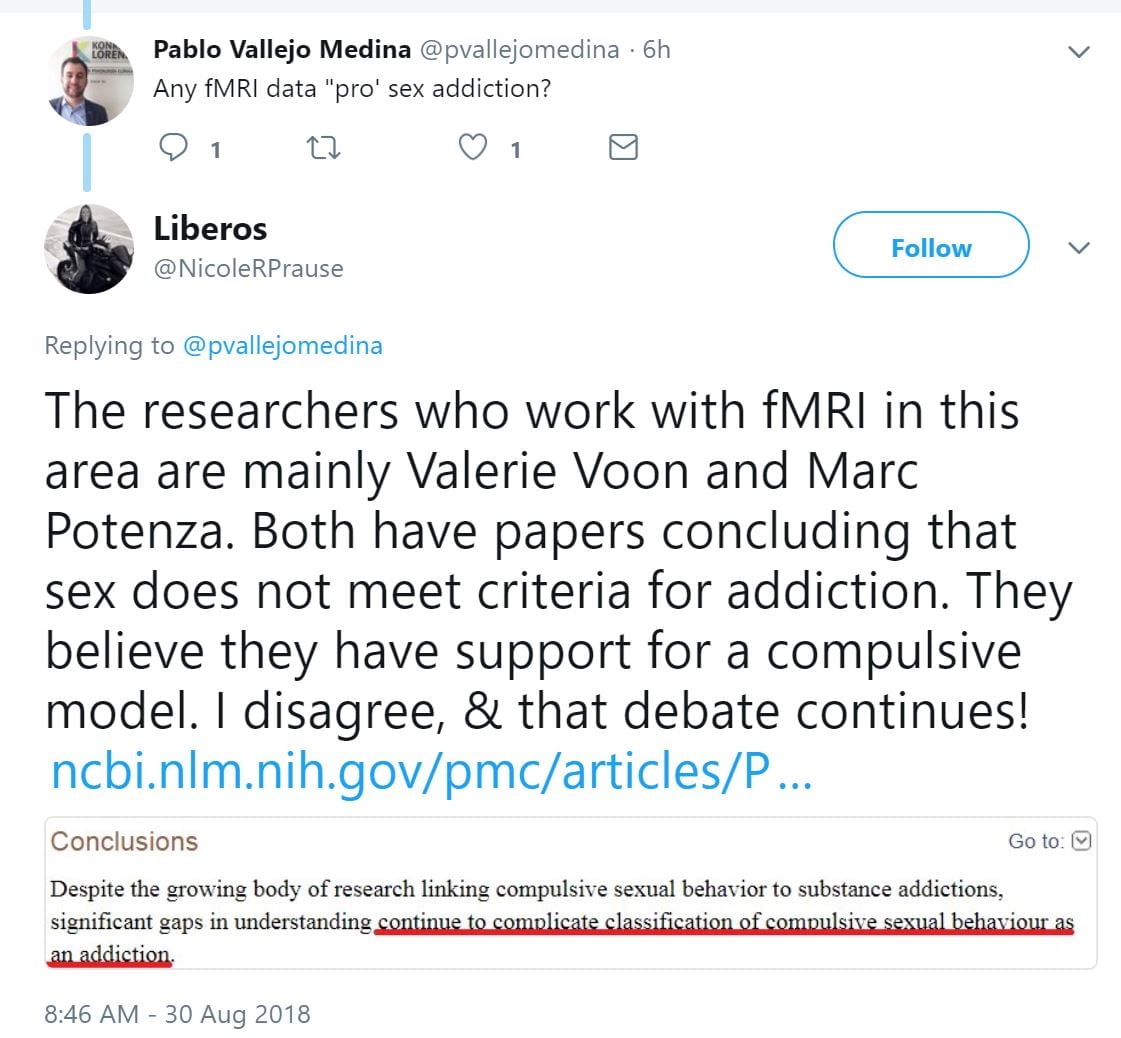
Actually, the 2016 paper said CSB (hypersexuality) looked like an addiction:
With the release of DSM-5, gambling disorder was reclassified with substance use disorders. This change challenged beliefs that addiction occurred only by ingesting of mind-altering substances and has significant implications for policy, prevention and treatment strategies. Data suggest that excessive engagement in other behaviors (e.g. gaming, sex, compulsive shopping) may share clinical, genetic, neurobiological and phenomenological parallels with substance addictions.
Another area needing more research involves considering how technological changes may be influencing human sexual behaviors. Given that data suggest that sexual behaviors are facilitated through Internet and smartphone applications, additional research should consider how digital technologies relate to CSB (e.g. compulsive masturbation to Internet pornography or sex chatrooms) and engagement in risky sexual behaviors (e.g. condomless sex, multiple sexual partners on one occasion).
Overlapping features exist between CSB and substance use disorders. Common neurotransmitter systems may contribute to CSB and substance use disorders, and recent neuroimaging studies highlight similarities relating to craving and attentional biases. Similar pharmacological and psychotherapeutic treatments may be applicable to CSB and substance addictions.
One year later the same scientists used stronger language: Is excessive sexual behaviour an addictive disorder? (Potenza et al., 2017) – Excerpts:
Research into the neurobiology of compulsive sexual behaviour disorder has generated findings relating to attentional biases, incentive salience attributions, and brain-based cue reactivity that suggest substantial similarities with addictions.
Compulsive sexual behaviour disorder seems to fit well with non-substance addictive disorders proposed for ICD-11, consistent with the narrower term of sex addiction currently proposed for compulsive sexual behaviour disorder on the ICD-11 draft website. We believe that classification of compulsive sexual behaviour disorder as an addictive disorder is consistent with recent data and might benefit clinicians, researchers, and individuals suffering from and personally affected by this disorder.
——————
The model is addiction, and it is being tested and validated:
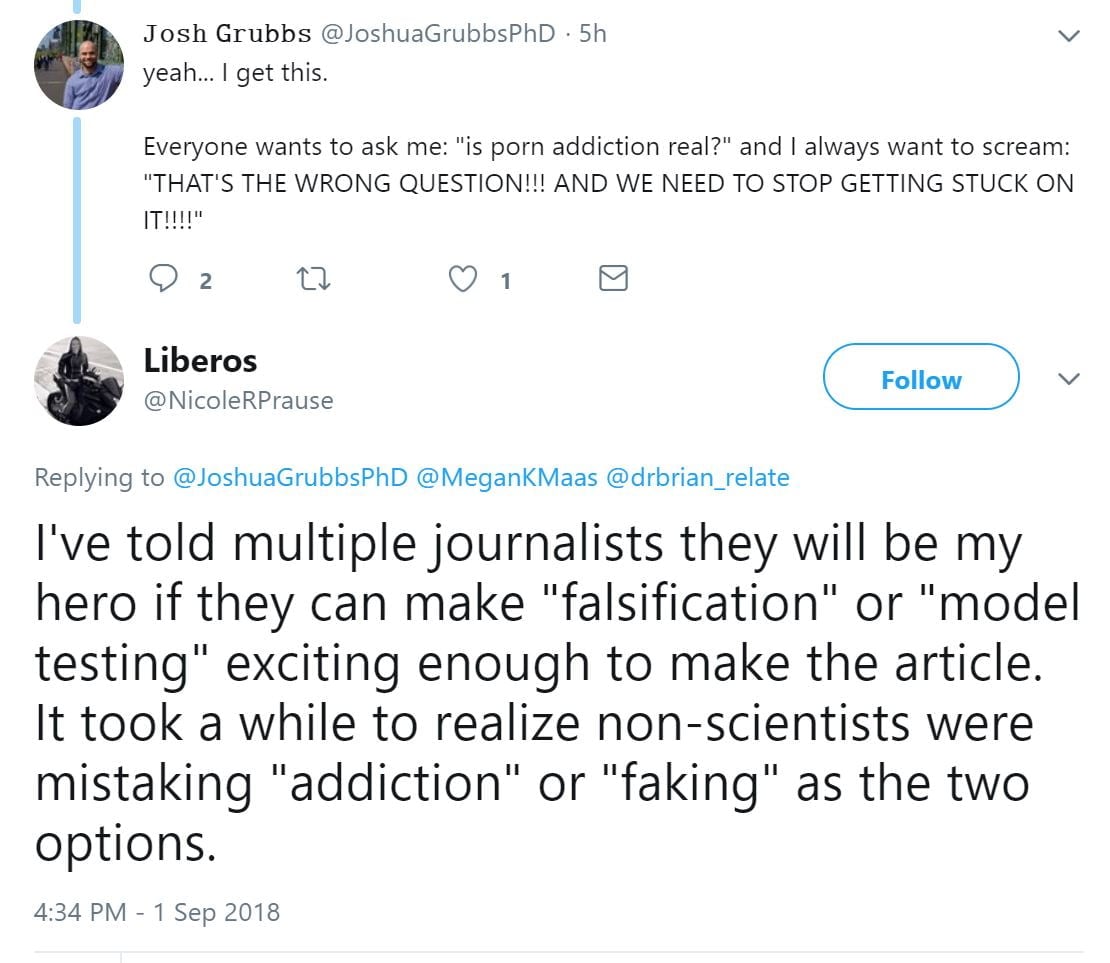
This page lists all 40 neuroscience-based studies that have been published on porn/sex addiction (MRI, fMRI, EEG, neuropsychological, hormonal). They provide strong support for the addiction model as their findings mirror the neurological findings reported in substance addiction studies.
——————
Here we have Prause, a non-academic, trolling a renowned researcher (Mark Griffiths), author of more publications on behavioral addictions than any other researcher (including a few on sex and porn addiction):
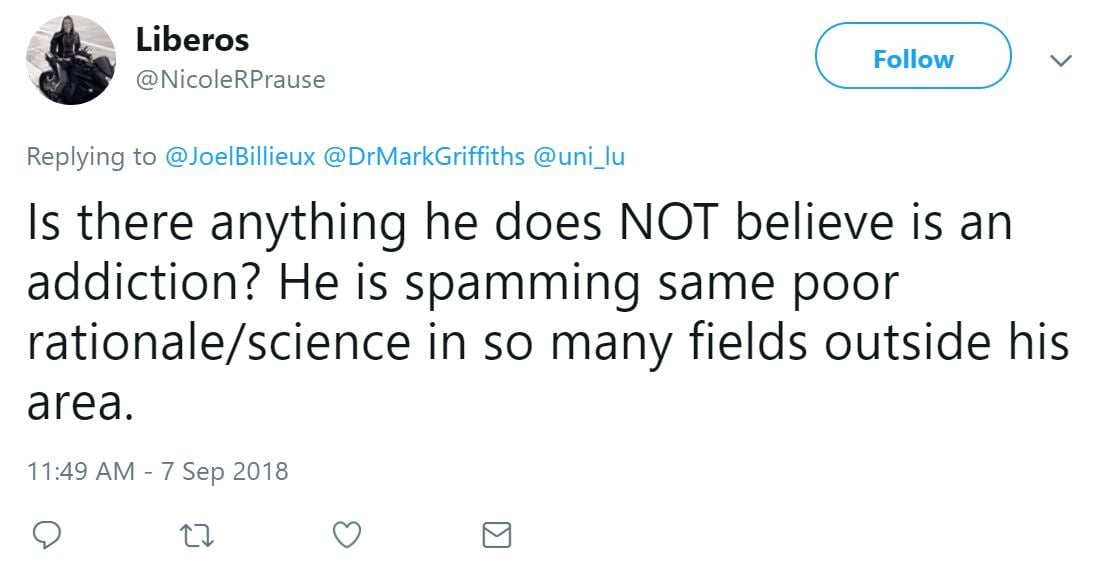
While Prause, in contrast, was hired to do research to bolster the commercial interests of the heavily tainted, but apparently lucrative, “Orgasmic Meditation” company.
——————
Trolling another researcher, trying to discredit her study (guess that makes Prause a misogynist herself):
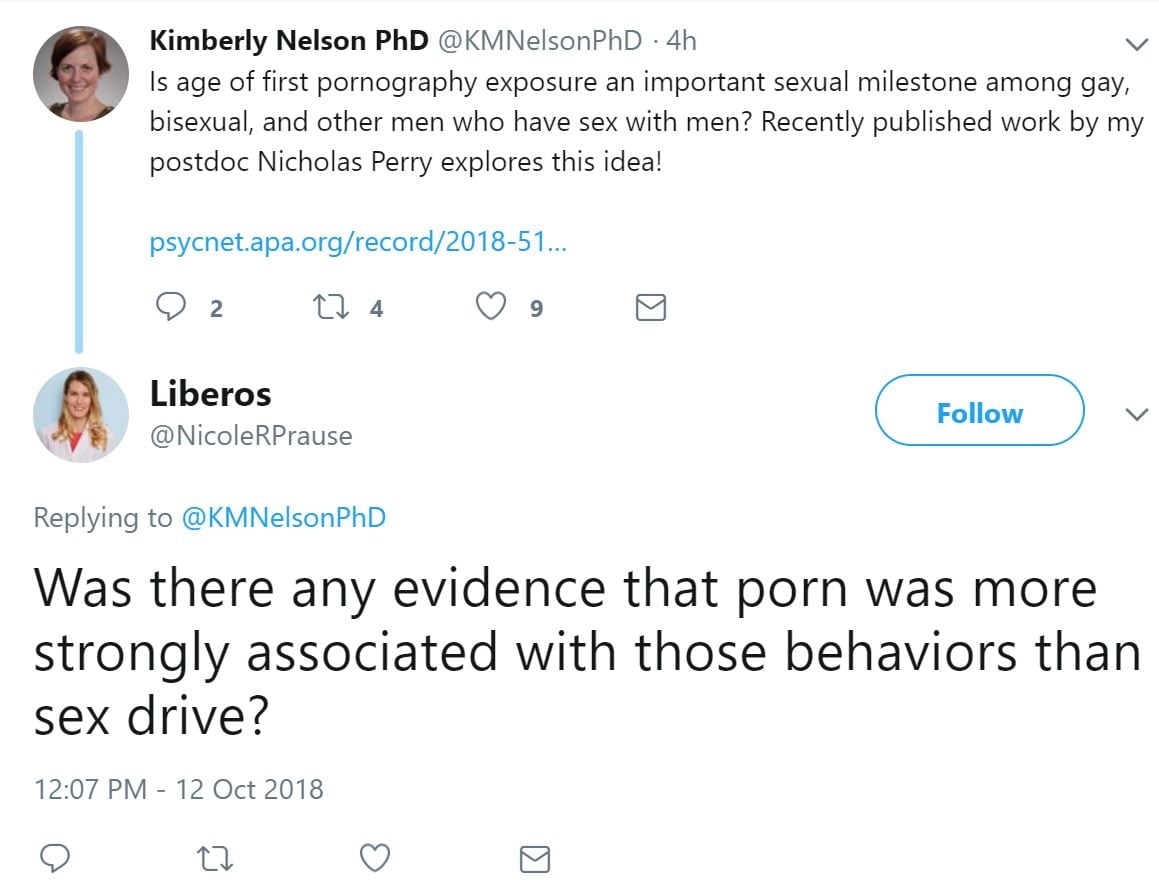
Conclusions: GBMSM who were exposed to SEM earlier in their lives report more sexual risk behavior as adults. SEM exposure in GBMSM is an important sexual development milestone deserving further research
——————
Prause tries to counter all the many studies linking porn use to poorer relationship satisfaction with a cherry-picked paper from Taylor Kohut’s lab:
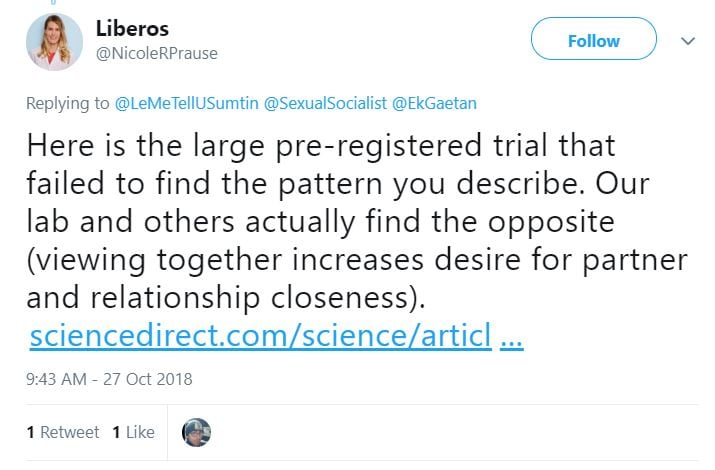
First, it’s absurd to claim that a solitary experimental study can demonstrate whether porn viewing really causes negative relationship effects. Experiments where college-aged guys view a few Playboy centerfolds (as in the study linked to by the authors) can tell you nothing about the effects of your husband masturbating to hard-core videos clips day after day for years on end. The only relationship studies that can “demonstrate if porn viewing really causes negative relationship effects” are longitudinal studies that control for variables or studies where subjects abstain from porn. To date, seven longitudinal relationship studies have been published that reveal the real-life consequences of ongoing porn use. All reported that porn use relates to poorer relationship/sexual outcomes.
On to the 2017 study Prause/Klein/Kohut linked to, and its easily dismissed results: Does exposure to erotica reduce attraction and love for romantic partners in men? Independent replications of Kenrick, Gutierres, and Goldberg (1989).
The 2017 study attempted to replicate a 1989 study that exposed men and women in committed relationships to erotic images of the opposite sex. The 1989 study found that men who were exposed to the nude Playboy centerfolds then rated their partners as less attractive and reported less love for their partner. As the 2017 study failed to replicate the 1989 findings, we are told that the 1989 study got it wrong, and that porn use cannot diminish love or desire. Whoa! Not so fast.
The replication “failed” because our cultural environment has become “pornified.” The 2017 researchers didn’t recruit 1989 college students who grew up watching MTV after school. Instead the new subjects grew up surfing PornHub for gang bang and orgy video clips.
In 1989 how many college students had seen an X-rated video? Not too many. How many 1989 college students spent possibly every masturbation session, from puberty on, masturbating to multiple hard-core clips in one session? None. The reason for the 2017 results is evident: brief exposure to a still image of a Playboy centerfold is a big yawn compared to what college men in 2017 have been watching for years. Even the authors admitted the generational differences with their first caveat:
1) First, it is important to point out that the original study was published in 1989. At the time, exposure to sexual content may not have been as available, whereas today, exposure to nude images is relatively more pervasive, and thus being exposed to a nude centerfold may not be enough to elicit the contrast effect originally reported. Therefore, the results for the current replication studies may differ from the original study due to differences in exposure, access, and even acceptance of erotica then versus now.
In a rare instance of unbiased prose even David Ley felt compelled to point out the obvious:
It may be that the culture, men, and sexuality have substantially changed since 1989. Few adult men these days haven’t seen pornography or nude women—nudity and graphic sexuality are common in popular media, from Game of Thrones to perfume advertisements, and in many states, women are permitted to go topless. So it’s possible that men in the more recent study have learned to integrate the nudity and sexuality they see in porn and everyday media in a manner which doesn’t affect their attraction or love for their partners. Perhaps the men in the 1989 study had been less exposed to sexuality, nudity, and pornography.
Keep in mind that this experiment doesn’t mean internet porn use hasn’t detracted from men’s attraction for their lovers. It just means that looking at “centerfolds” has no immediate impact these days. Many men report radical increases in attraction to partners after giving up internet porn. And, of course, there is also the longitudinal evidence cited above demonstrating the deleterious effects of porn viewing on relationships.
Finally, it’s important to note that the authors of the paper linked to are colleagues of Taylor Kohut at the University of Western Ontario. This group of researchers, headed by William Fisher, has been publishing dubious porn studies. They consistently produce results that on the surface appear to counter the vast literature linking porn use to myriad negative outcomes.
——————
Cites her Lancet letter with only 5 references – none of which have anything to do with the letter’s unsupported assertions:

Everything in Prause’s 240-word letter to Lancet is completely debunked in this extensive critique: Analysis of “Data do not support sex as addictive” (Prause et al., 2017). The real experts’ opinions on porn/sex addiction? This list contains 20 recent literature reviews and commentaries by some of the top neuroscientists in the world. All support the addiction model.
——————
Here Prause is peeved that a new study reports sex/porn addiction rates of 7-10%
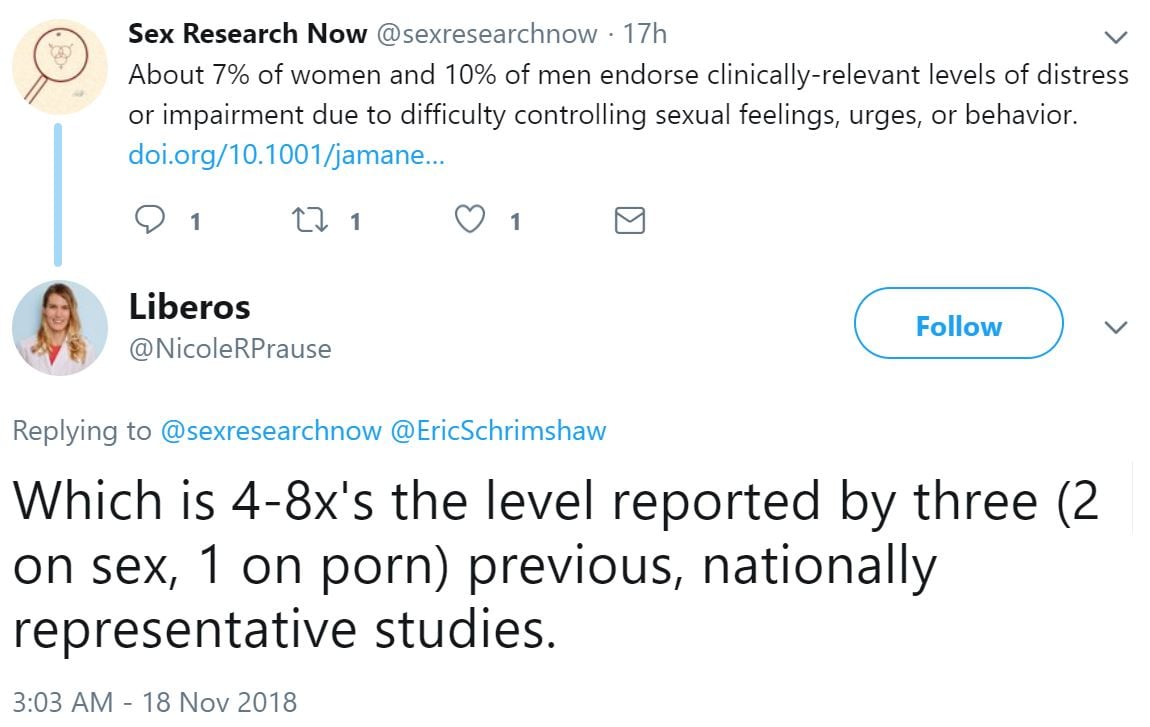
The Ley & Prause 2014 paper claimed that sex/porn addiction rates were about 0.5%. The paper they cited took its data from 2004, and did didn’t assess “addiction.” The study actually said:
Nearly 13% of men and 7% of women reported out of control sexual experiences (OCSE) in the past year. Few believed that OCSE had interfered with their lives (3.8% of all men and 1.7% of all women in the cohort).
——————
Random shaming of her own:
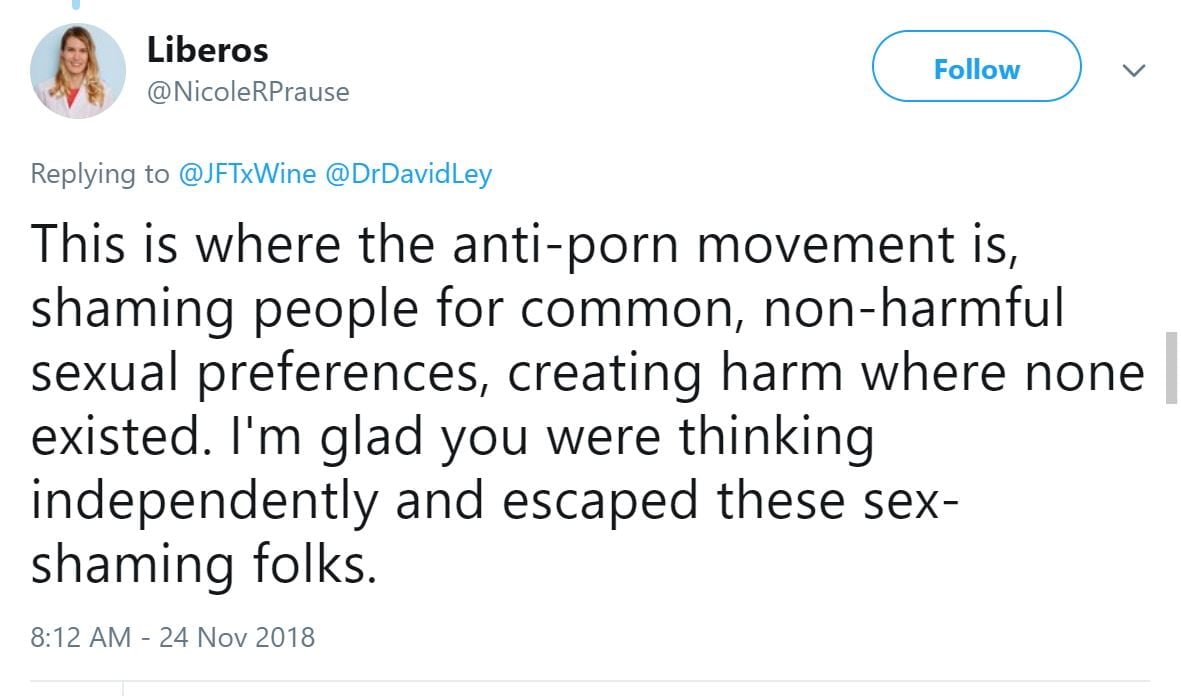
——————
Prause tweeting her SLATE article to Dan Rather. Yes, the Dan Rather
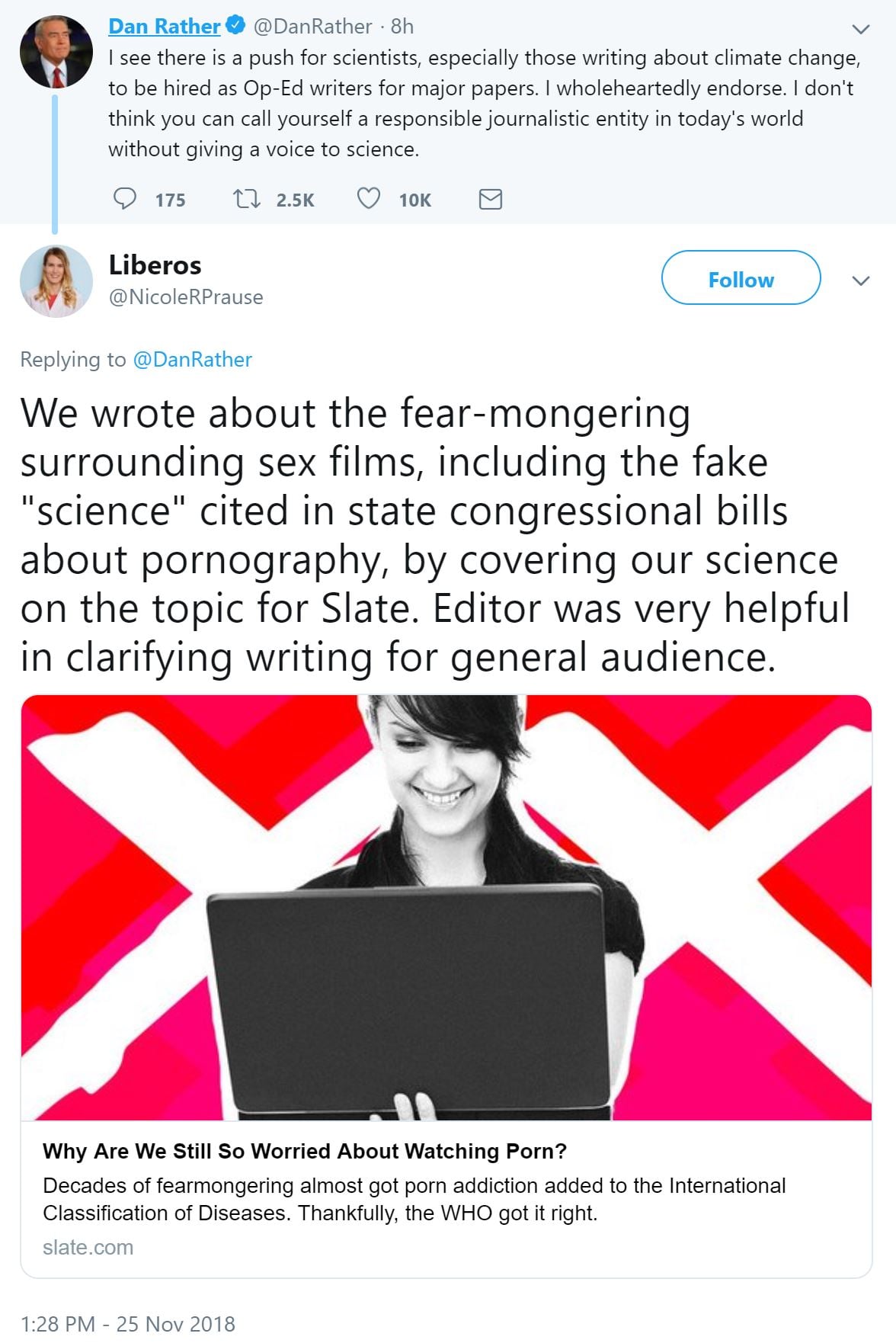
Dan didn’t get back to Nikky.
YBOP goes line by line, claim by claim, citation by citation, debunking the entire Prause-Kohut-Klein magnum opus. Debunking “Why Are We Still So Worried About Watching Porn?” by Marty Klein, Taylor Kohut, and Nicole Prause (2018).
——————
More attacks on the Gottman Institute – all because the Gottmans published an article suggesting that “pornography can hurt a couple’s relationship.”
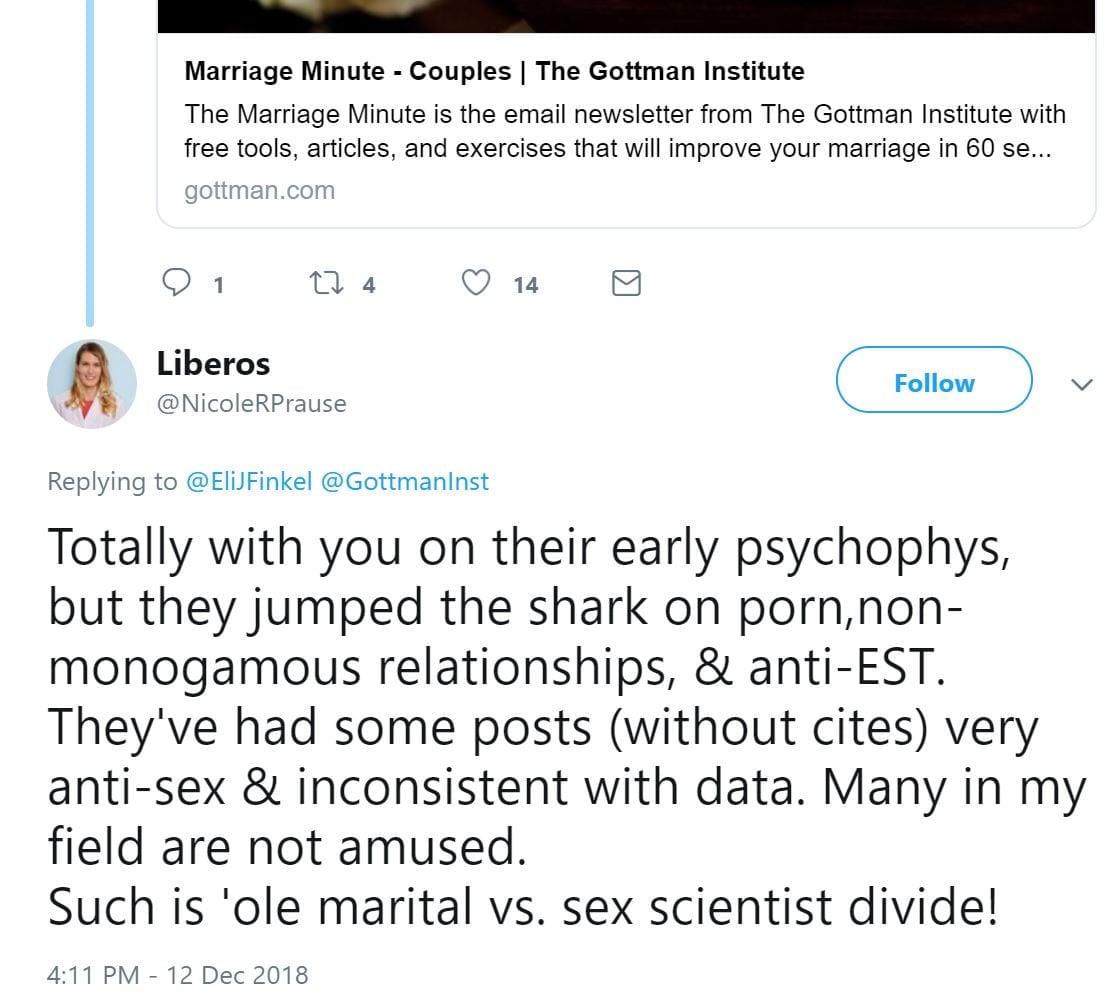
“Many in my field are not amused” – sounds a bit threatening. Inconsistent with data” – Oh really: 60 studies link porn use to less sexual and relationship satisfaction. All studies we know of involving males have reported more porn use linked to poorer sexual or relationship satisfaction.
——————-
Writes a “chapter” covering all her favorite talking points:
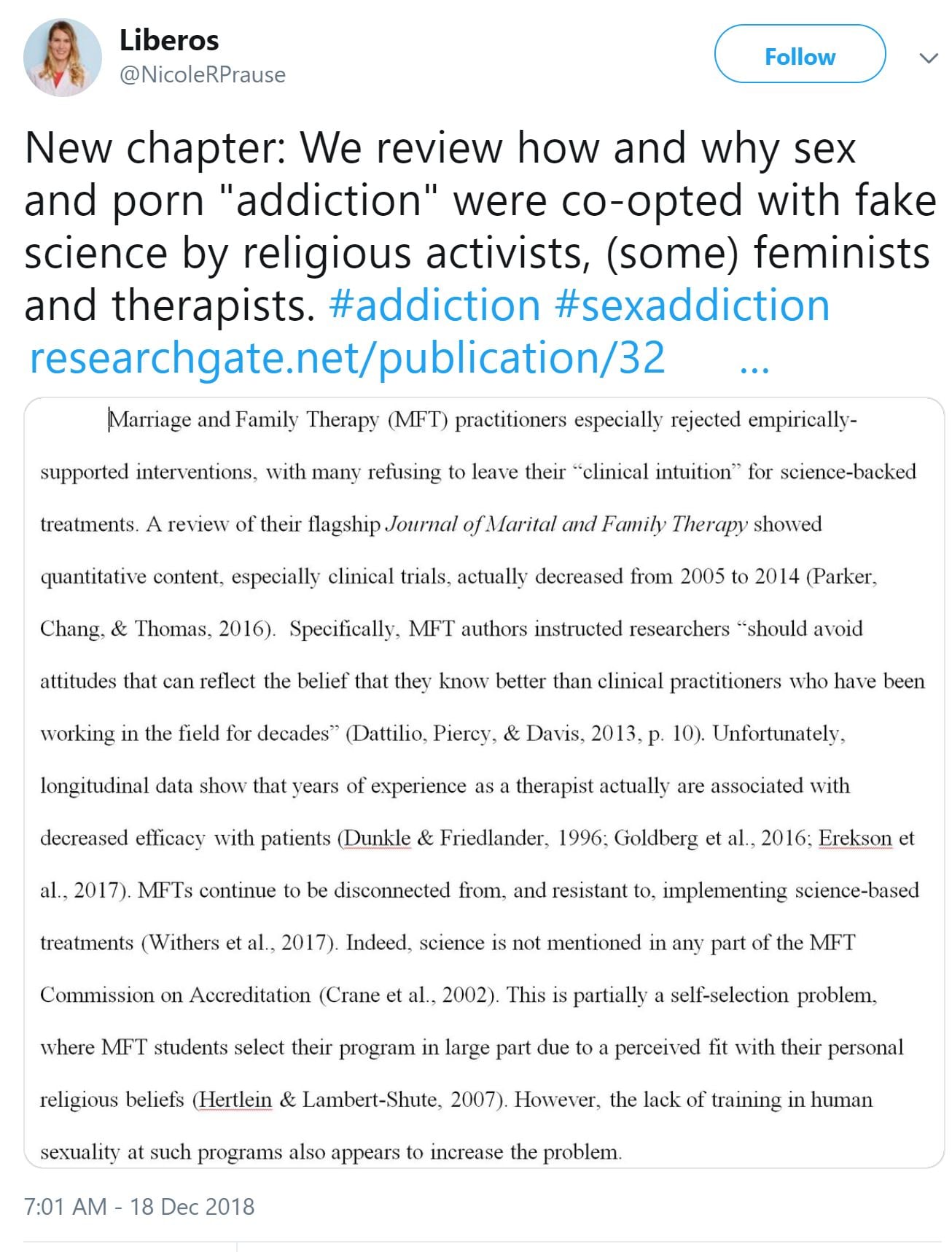
Question: where does she find the time to fabricate propaganda pieces for publication?
——————–
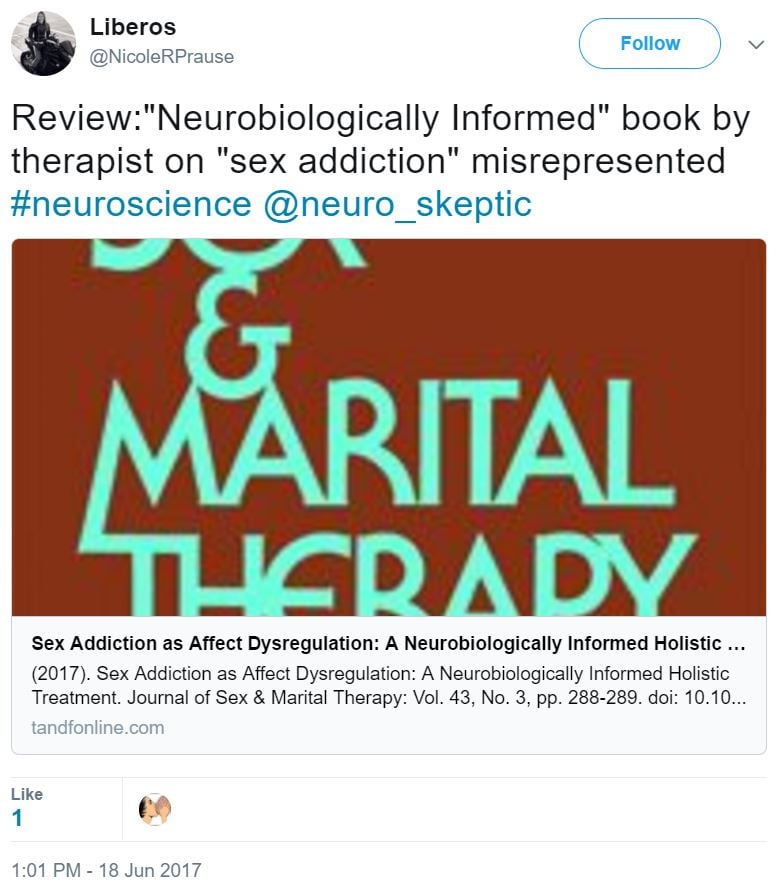
——————-
Trying to discredit a study she doesn’t like – Experimental effects of degrading versus erotic pornography exposure in men on reactions toward women: objectification, sexism, discrimination (2018)
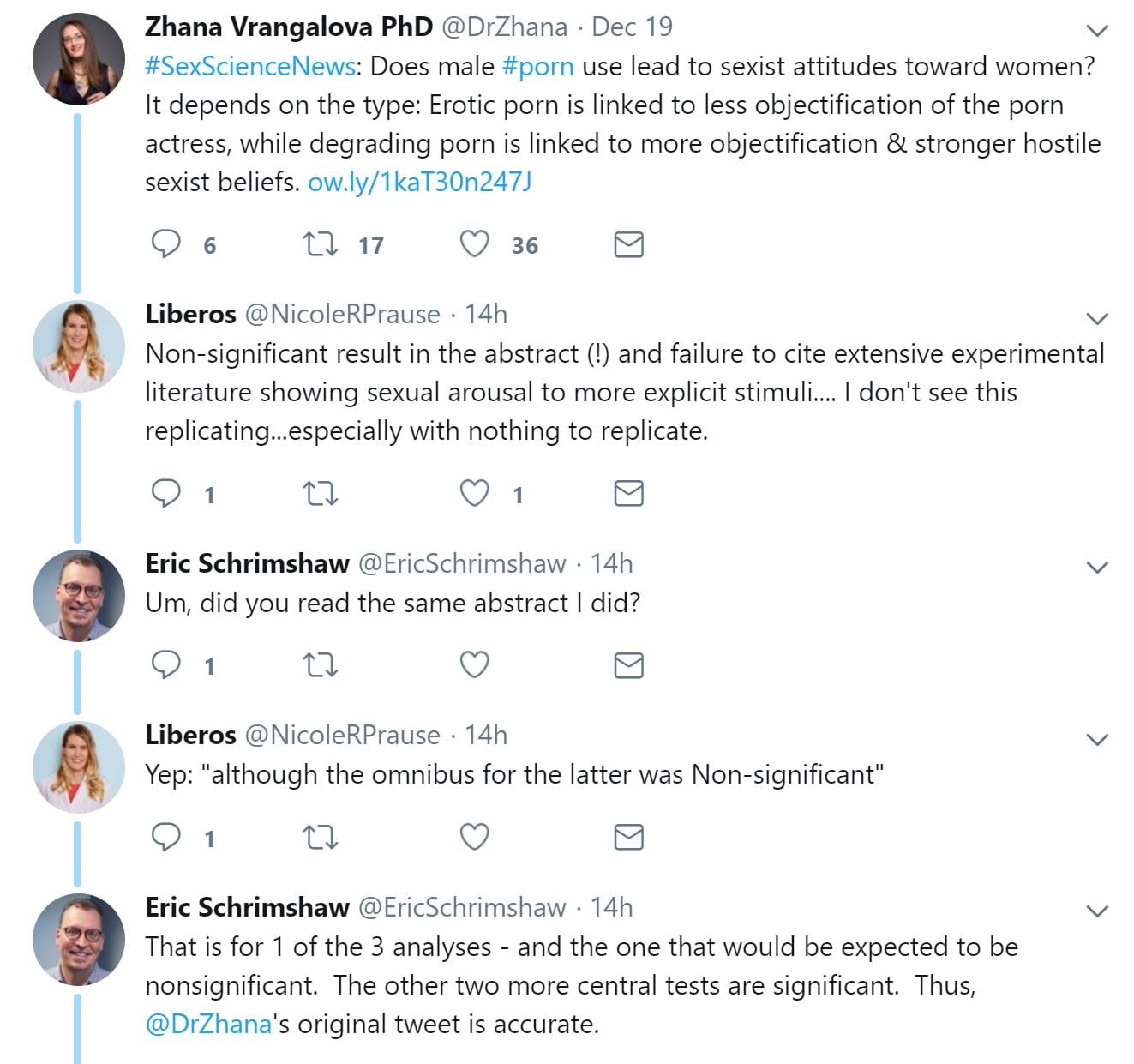
——————
Again, claiming “falsifications” when there are none:

As usual, Prause cites her 240-word letter to Lancet, which is completely debunked in this extensive critique: Analysis of “Data do not support sex as addictive” (Prause et al., 2017), and her SLATE article – Debunking “Why Are We Still So Worried About Watching Porn?” by Marty Klein, Taylor Kohut, and Nicole Prause (2018)
——————
Trolling PornHarms twitter account:
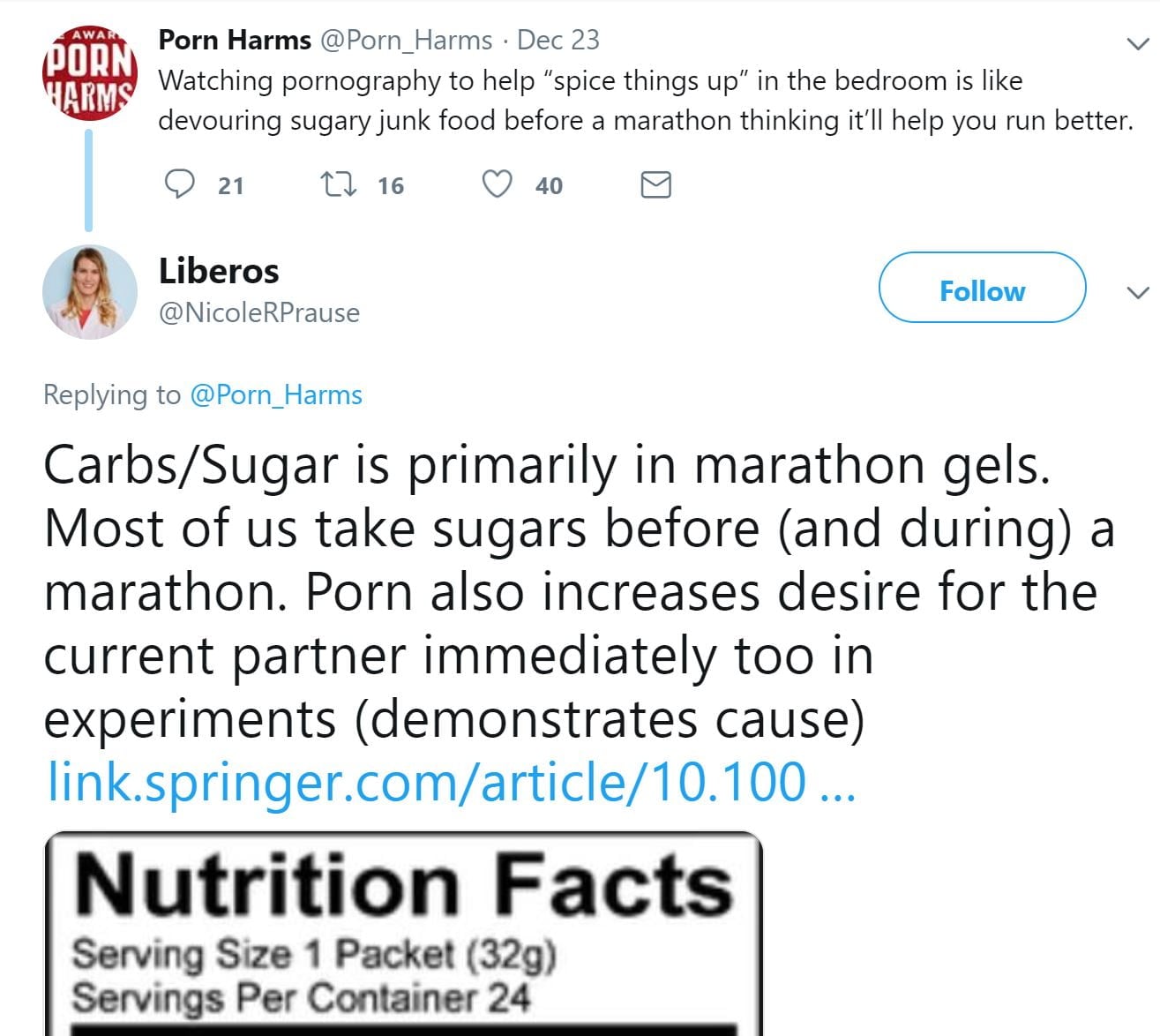
Prause is saying that porn increases desire for current partner, but all her study study found was that watching porn makes you horny. Prause didn’t mention that her study also reported that watching porn had immediate negative effects (oops):
“Viewing the erotic films also induced greater reports of negative affect, guilt, and anxiety”
She also omitted what’s really important – the long term effects of using porn: Over 60 studies link porn use to less sexual and relationship satisfaction, including all longitudinal studies – and every study we know of involving males has reported more porn use linked to poorer sexual or relationship satisfaction. Oops #2.
——————
Trolling PornHarms, again: Offering free t-shirts to others willing to troll with her.
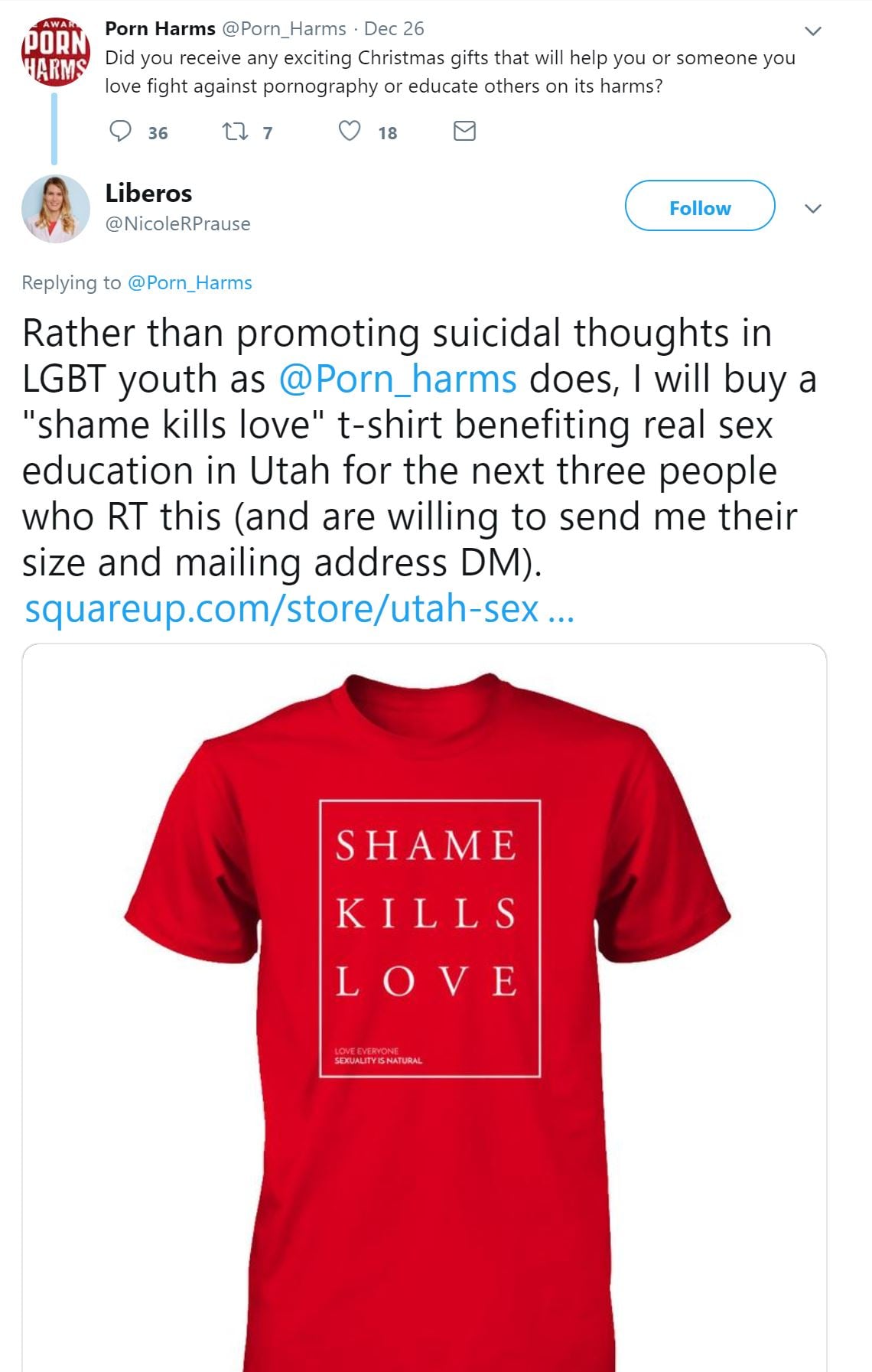
Follows up with free t-shirts to the other Twitter trolls:
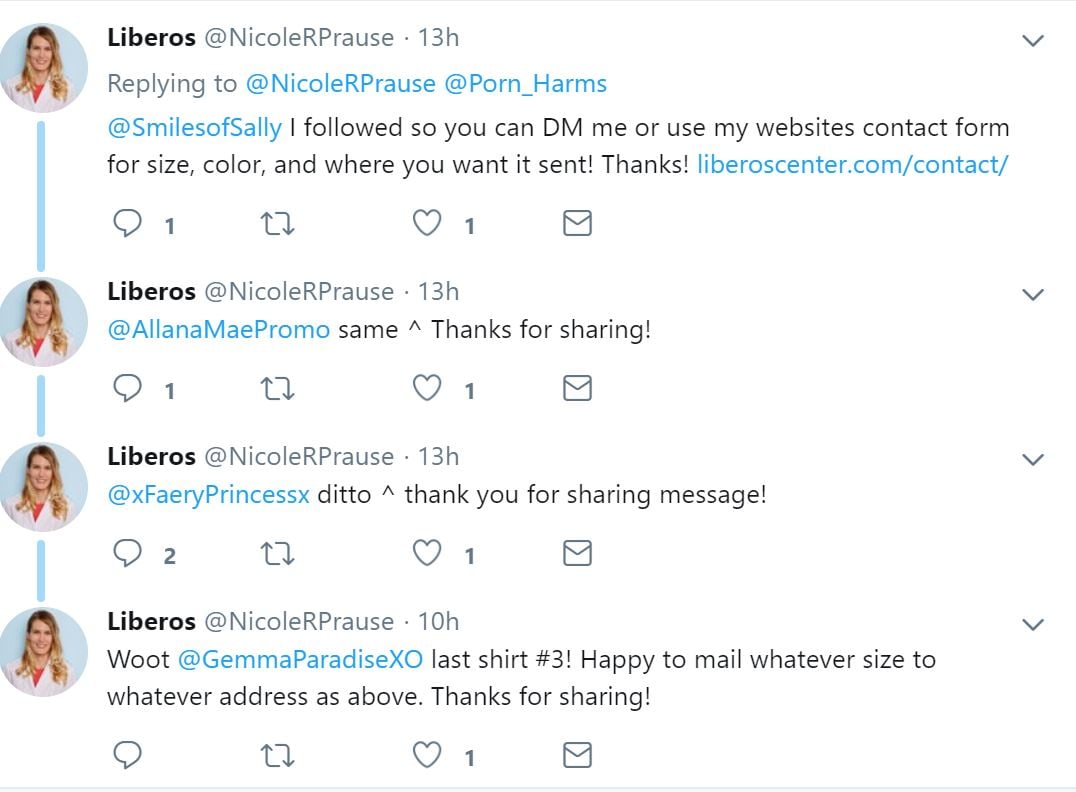
——————-
Responding to a year-old thread, with same cherry-picked papers debunked above:

David Ley joins in to support Prause:
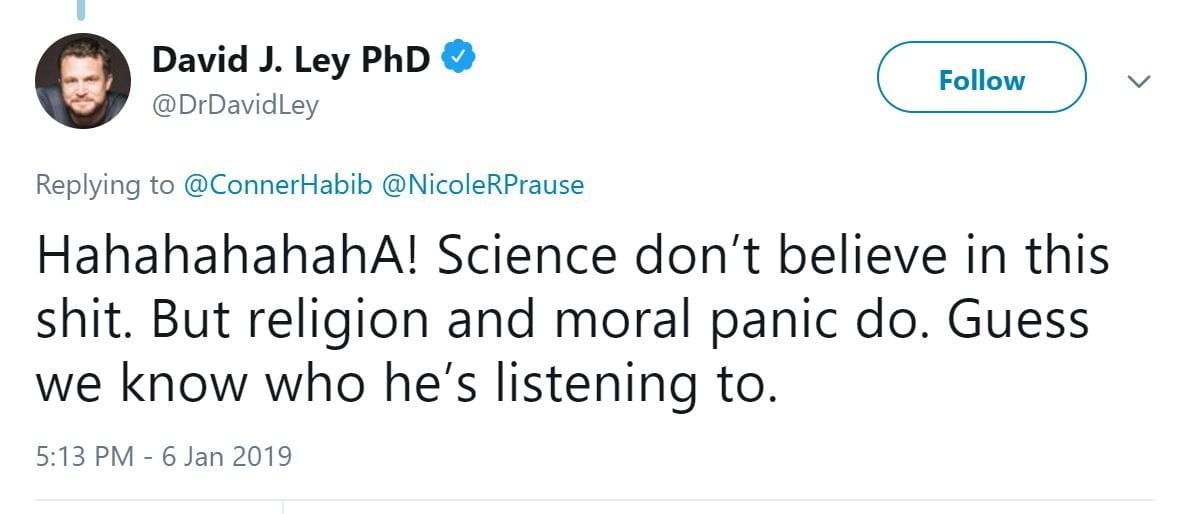
More trolling of porn-addiction Twitter account:
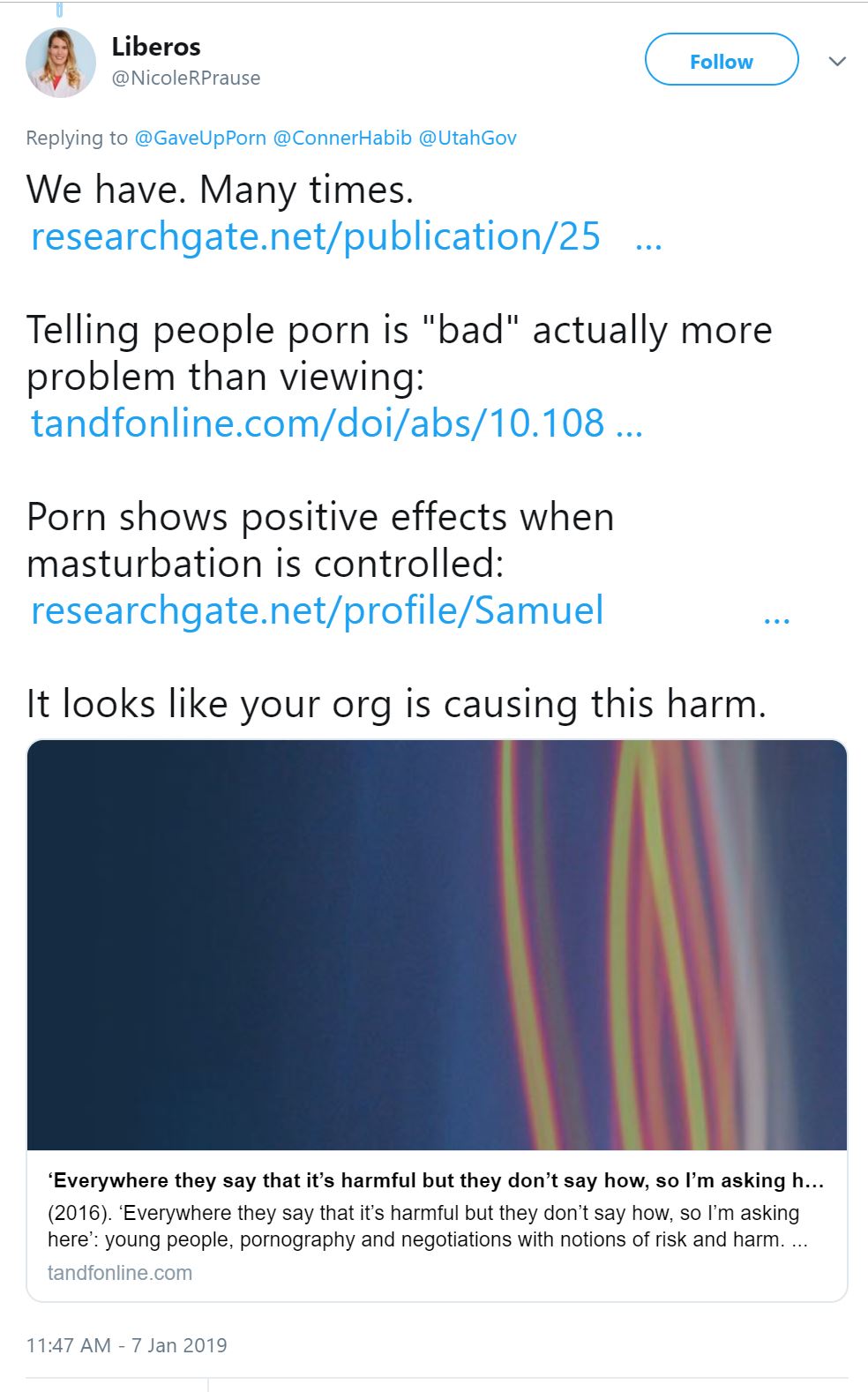
She cites 2014 paper by Leyand her, which is full of misrepresentations and purposely omitted every study that reported porn use related to negative outcomes (not kidding). Completely debunked here: The Emperor Has No Clothes: A Review of the ‘Pornography Addiction’ Model (2014), David Ley, Nicole Prause & Peter Finn
——————
“Pornaddiction recovery” tweets two YBOP lists, which causes Prause to tweet a paper by Gary Wilson and Navy doctors. Prause falsely claims that she badgered COPE into suggesting a retraction. See this page for more on this plot: From 2015 through 2018: Prause’s efforts to have Behavioral Sciences review paper (Park et al., 2016) retracted
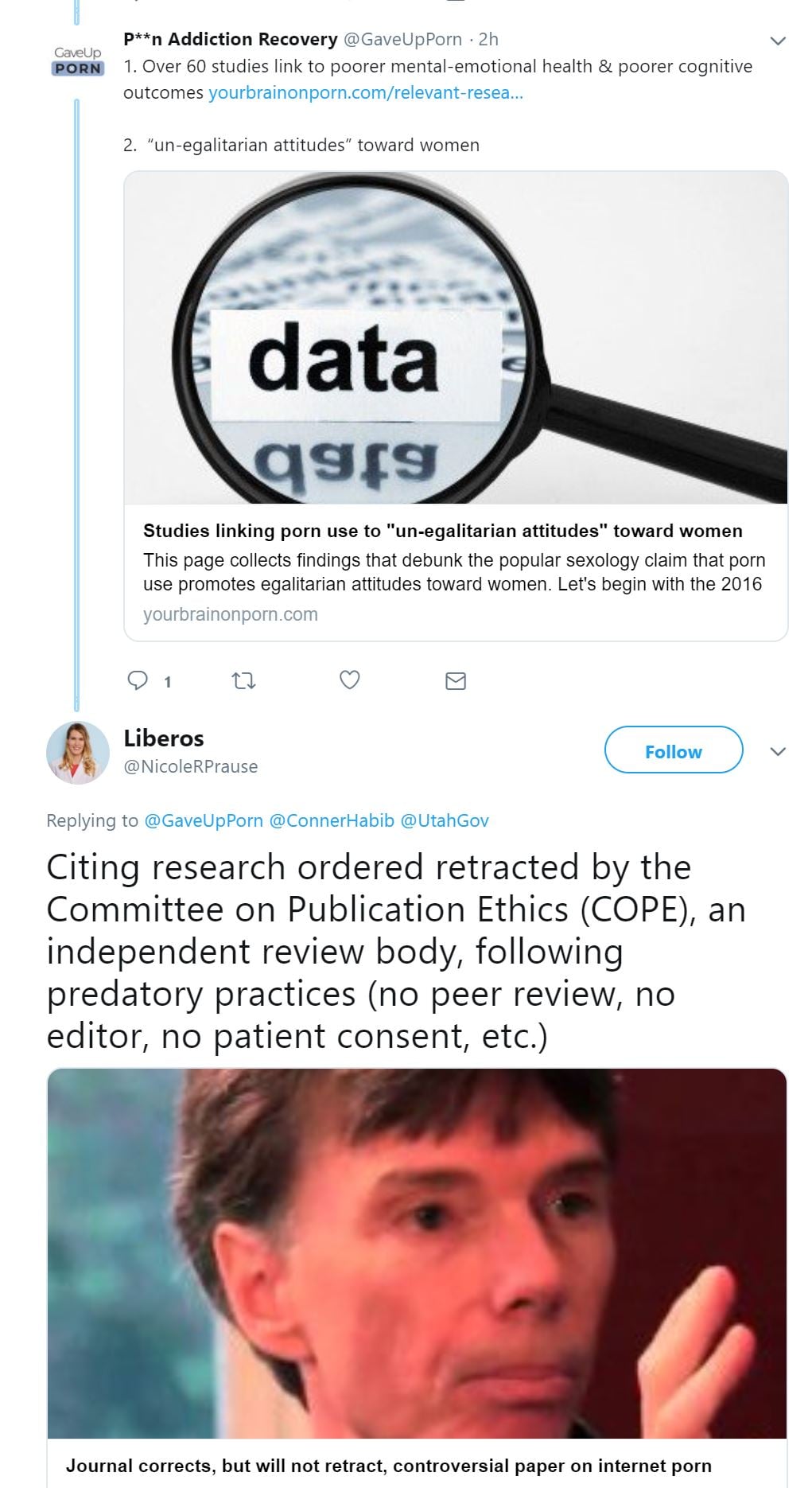
As explained elsewhere, Prause is obsessed with MDPI because (1) Behavioral Sciences published two articles that Prause disagrees with (because they discussed papers by her, among hundreds of papers by other authors), and (2) Gary Wilson is a co-author of Park et al., 2016. Prause has a long history of cyberstalking and defaming Wilson, chronicled in this very extensive page. The two papers:
- Neuroscience of Internet Pornography Addiction: A Review and Update (Love et al., 2015)
- Is Internet Pornography Causing Sexual Dysfunctions? A Review with Clinical Reports (Park et al., 2016)
Prause immediately insisted that MDPI retract Park et al., 2016. The professional response to scholarly articles one disapproves of is to publish a comment outlining any objections. Behavioral Sciences’s parent company, MDPI, invited Prause to do this. She declined. Instead of publishing a formal comment, she unprofessionally turned to threats and social media (and most recently the Retraction Watch blog) to bully MDPI into retracting Park et al., of which I am a co-author with 7 US Navy physicians (including two urologists, two psychiatrists and a neuroscientist). In addition, she informed MDPI that she had filed complaints with the American Psychological Association. She then filed complaints with all the doctors’ medical boards. She also pressured the doctors’ medical center and Institutional Review Board, causing a lengthy, thorough investigation, which found no evidence of wrongdoing on the part of the paper’s authors. Prause also complained repeatedly to COPE (Committee on Publication Ethics). COPE finally wrote MDPI with a hypothetical inquiry about retraction, based on Prause’s narrative that the “patients weren’t consented.” MDPI thoroughly re-investigated the consents obtained by the doctors who authored the paper, as well as US Navy policy around obtaining consents. On and on Prause went, including employing multiple aliases to edit MDPI Wikipedia pages inserting falsehoods about Wilson, his coauthors. and the paper. For much more, see: From 2015 through 2019: Prause’s efforts to have Behavioral Sciences review paper (Park et al., 2016) retracted.
Below are examples of Prause (as Sciencearousal) inserting her usual drivel. First, she tried to insert a mistake by the Norwegian Register, who accidentally downgraded MDPI’s rating from the normal “1” to a “0”.

The downgraded rating was a clerical error, and had long been resolved on the MDPI Wikipedia page. Prause knows the zero rating was a clerical error,
————————–
Prause continues her defense of porn, ending with defamation and harassment of Gary Wilson, falsely claiming that her name appears 82,000 times on YBOP (in addition to lying about reporting Wilson to the FBI and LAPD):
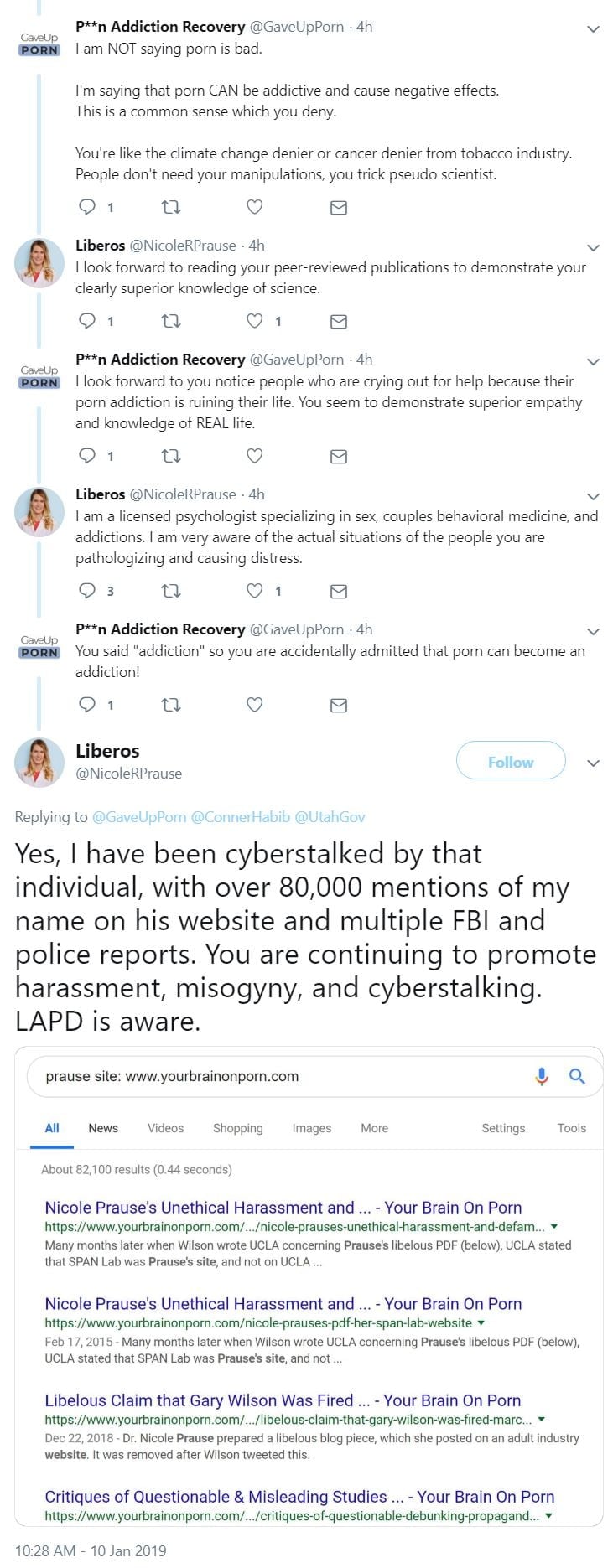
As for the 82,000 instances of “Prause” on www.yourbrainonporn.com, this is false. As explained in this section, Prause cleverly employed improper syntax to achieve 82,000. The proper syntax for such a Google search is to not have a space between “site:” and a URL, so “site:www.yourbrainonporn.com” is fine, but “site: wwwyourbrainonporn.com” would search across the internet for either wwwyourbrainonporn.com or the or Prause or both. Put simply, a proper search for “YBOP” – “Prause” site:www.yourbrainonporn.com – returns only 871 instances. Most instances of “Prause” are found on the pages chronicling her obsessive, unrelenting cyber-harassment:
- Nicole Prause’s Unethical Harassment and Defamation of Gary Wilson & Others
- Nicole Prause’s Unethical Harassment and Defamation of Gary Wilson & Others (page 2)
- John A. Johnson on Steele et al., 2013 (and Johnson debating Nicole Prause in comments section under PT article)
- Libelous Claim that Gary Wilson Was Fired (March, 2018)
- Prause’s efforts to have Behavioral Sciences review paper (Park et al., 2016) retracted
- “Critique of Prause Study” Rory C. Reid, Ph.D., LCSW (July 2013)
- “Real Scientist” posting on or around December 18th 2013 (CBC)
- YBOP analysis – A critique of “Steele et al., 2013″: The study’s EEG findings support the porn addiction model.
As for the other claims, Dr. Prause never reported me to the FBI or UCLAPD, as documented in these 2 sections. She is lying and has been for years. No did the LAPD ever contact me in connection with her bogus LAPD report:
————————–
Falsely claims that “sex and porn are not diagnosable as addictions,” yet she knows that The International Classification of Diseases (ICD-11) contains a new diagnosis suitable for porn or sex addiction: “Compulsive Sexual Behavior Disorder.” An article where Prause is the world’s authority on everything sexual:
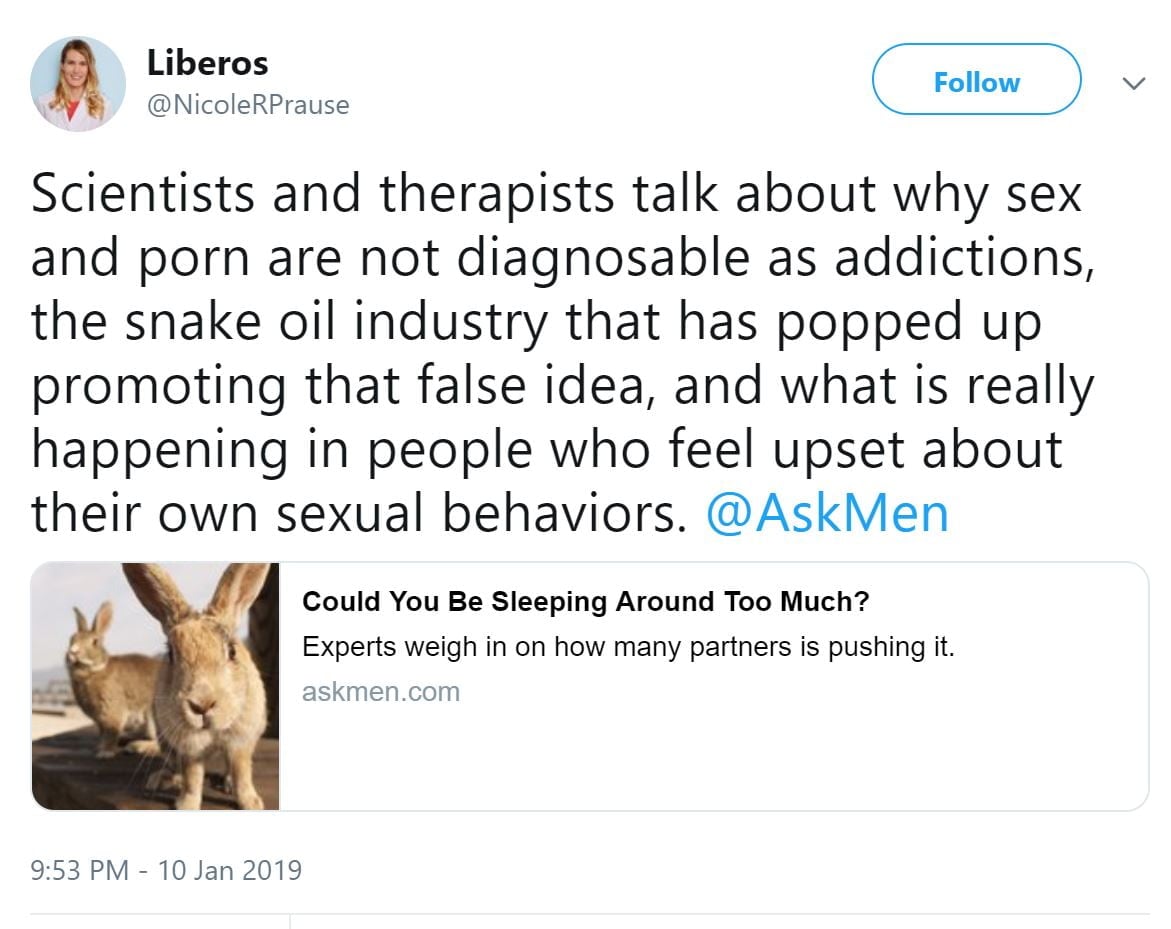
She makes the following false statement in the article:
“Our own neuroscience data shows that the more sexual partners you have, the more responsive your brain is to sexual cues (images) with no upper bound. That is, the brain does not become numb, habituate, or start to show ill effects, even for individuals with higher numbers of partners,” she explains.
In her two EEG studies on frequent porn users she actually found habituation – the opposite of her claim:
1) Sexual Desire, not Hypersexuality, is Related to Neurophysiological Responses Elicited by Sexual Images (Steele et al., 2013) – [greater cue-reactivity correlated with less sexual desire: sensitization and habituation] – This EEG study was touted in the media as evidence against the existence of porn/sex addiction. Not so. Steele et al. 2013 actually lends support to the existence of both porn addiction and porn use down-regulating sexual desire. How so? The study reported higher EEG readings (relative to neutral pictures) when subjects were briefly exposed to pornographic photos. Studies consistently show that an elevated P300 occurs when addicts are exposed to cues (such as images) related to their addiction.
In line with the Cambridge University brain scan studies, this EEG study also reported greater cue-reactivity to porn correlating with less desire for partnered sex. To put it another way – individuals with greater brain activation to porn would rather masturbate to porn than have sex with a real person. Shockingly, study spokesperson Nicole Prause claimed that porn users merely had “high libido,” yet the results of the study say the exact opposite (subjects’ desire for partnered sex was dropping in relation to their porn use).
2) Modulation of Late Positive Potentials by Sexual Images in Problem Users and Controls Inconsistent with “Porn Addiction” (Prause et al., 2015) – A second EEG study from Nicole Prause’s team. This study compared the 2013 subjects from Steele et al., 2013 to an actual control group (yet it suffered from the same methodological flaws named above). The results: Compared to controls “individuals experiencing problems regulating their porn viewing” had lower brain responses to one-second exposure to photos of vanilla porn. The lead author claims these results “debunk porn addiction.” What legitimate scientist would claim that their lone anomalous study has debunked a well established field of study?
In reality, the findings of Prause et al. 2015 align perfectly with Kühn & Gallinat (2014), which found that more porn use correlated with less brain activation in response to pictures of vanilla porn. Prause et al. findings also align with Banca et al. 2015. Moreover, another EEG study found that greater porn use in women correlated with less brain activation to porn. Lower EEG readings mean that subjects are paying less attention to the pictures. Put simply, frequent porn users were desensitized to static images of vanilla porn. They were bored (habituated or desensitized). See this extensive YBOP critique. Ten peer-reviewed papers agree that this study actually found desensitization/habituation in frequent porn users (consistent with addiction): Peer-reviewed critiques of Prause et al., 2015
————————–
To dismiss studies she doesn’t like her favorite tactic is to claim the studies did not “control for” X, Y, or Z.
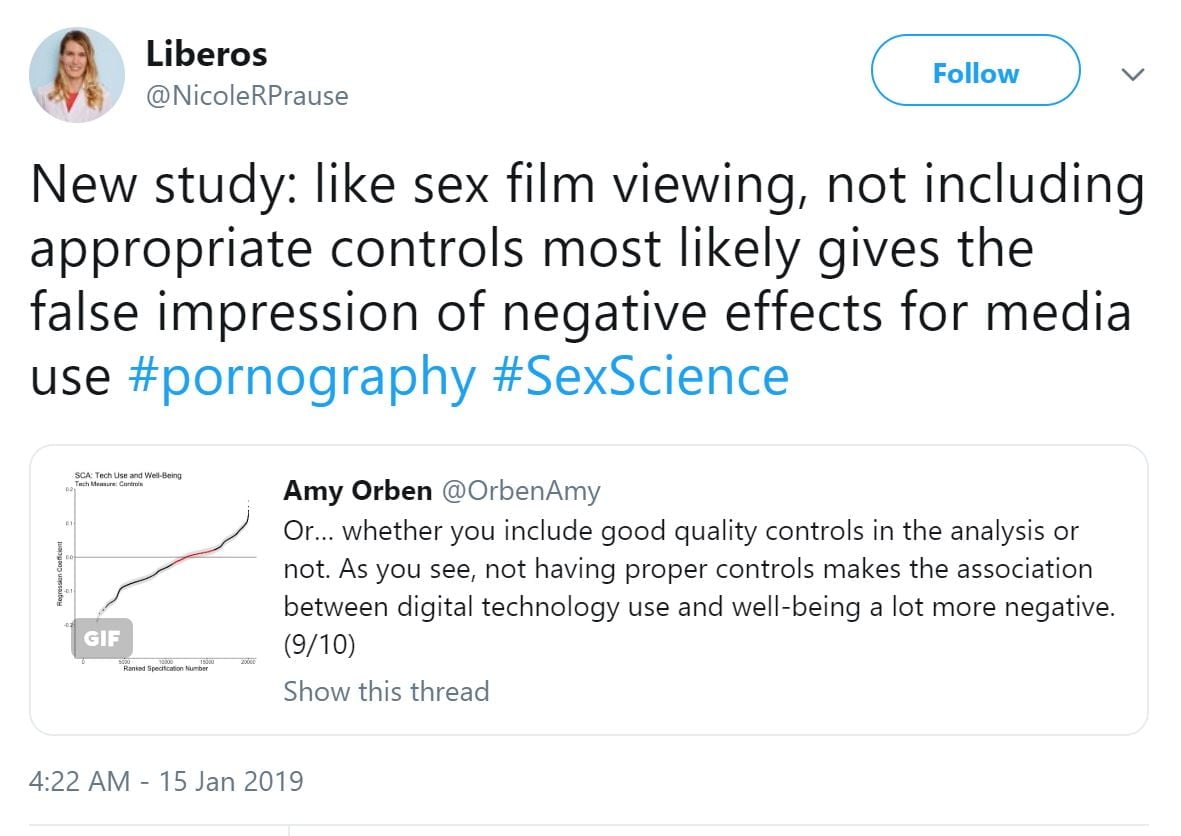
While controlling for certain variables may be important, it also used by researchers to achieve desired results. The irony: Prause’s two most famous studies (see above) failed to control for even the basics. Her two EEG studies did not employ standard methodology:
- Sexual Desire, not Hypersexuality, is Related to Neurophysiological Responses Elicited by Sexual Images (Steele et al., 2013) – Aside from the many unsupported claims in the press, it’s disturbing that Prause’s 2013 EGG study passed peer-review, as it suffered from serious methodological flaws: 1) subjects were heterogeneous (males, females, non-heterosexuals); 2) subjects were not screened for mental disorders or addictions; 3) study had no control group for comparison; 4) questionnaires were not validated for porn use or porn addiction. Steele at al. is so badly flawed that only 3 of the 20 literature reviews & commentaries bother to mention it: one critiquing it as unacceptable, while two cite it as correlating cue-reactivity with less desire for sex with a partner (signs of addiction).
- Modulation of Late Positive Potentials by Sexual Images in Problem Users and Controls Inconsistent with “Porn Addiction” (Prause et al., 2015) – A second EEG study from Prause’s team. This study compared the 2013 subjects from Steele et al., 2013 to an actual control group (yet it suffered from the same methodological flaws named above).
————————-
Same false claims about WHO’s ICD-11 “rejecting sex and porn addiction”:
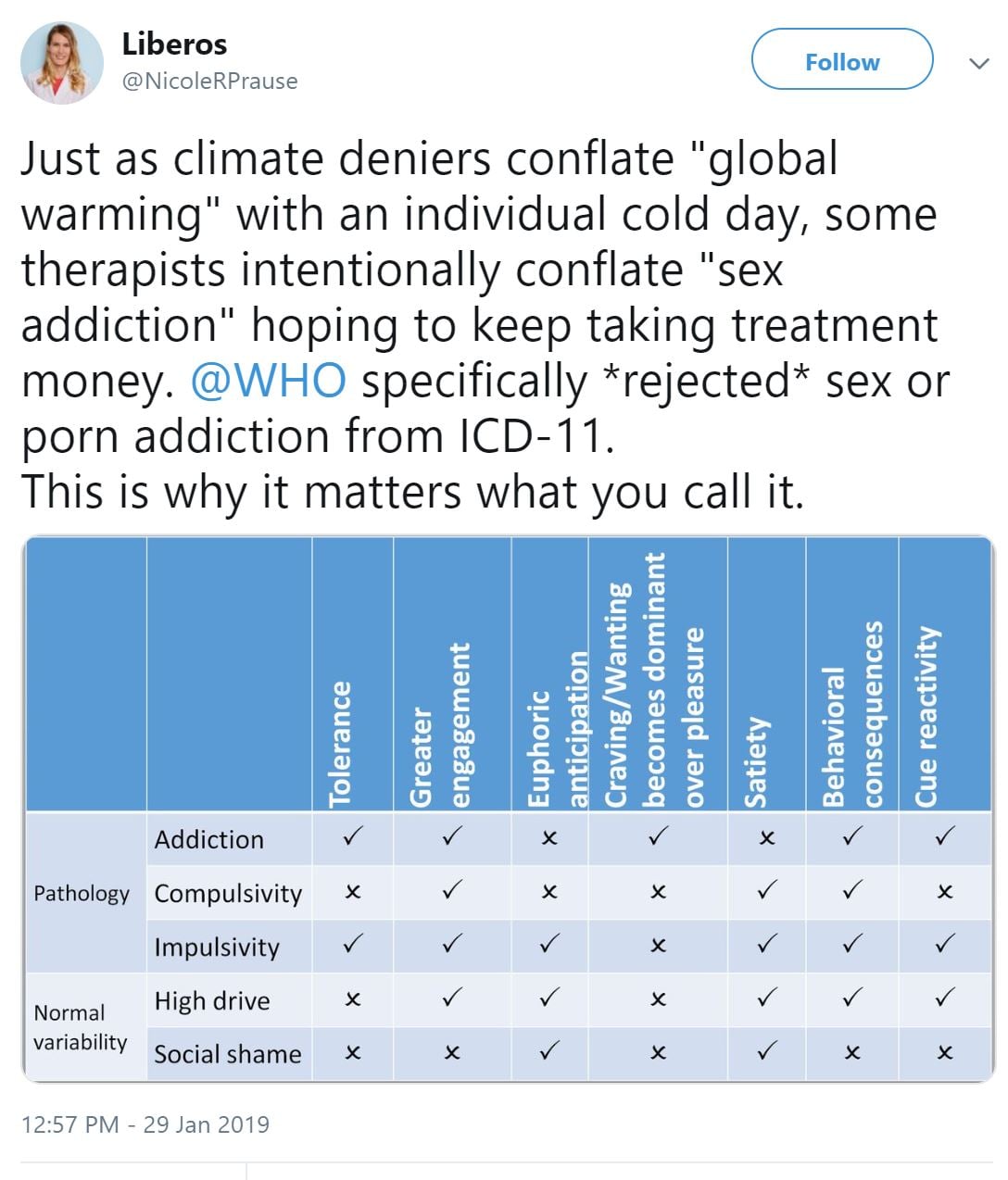
The first section of this extensive critique exposes Prause’s falsehoods surrounding the ICD-11: Debunking “Why Are We Still So Worried About Watching Porn?” by Marty Klein, Taylor Kohut, and Nicole Prause (2018).
————————-
Out of the blue, Prause tweets a 1996 study that produced an obvious finding: Masturbating to porn was more arousing than masturbating to fantasy.
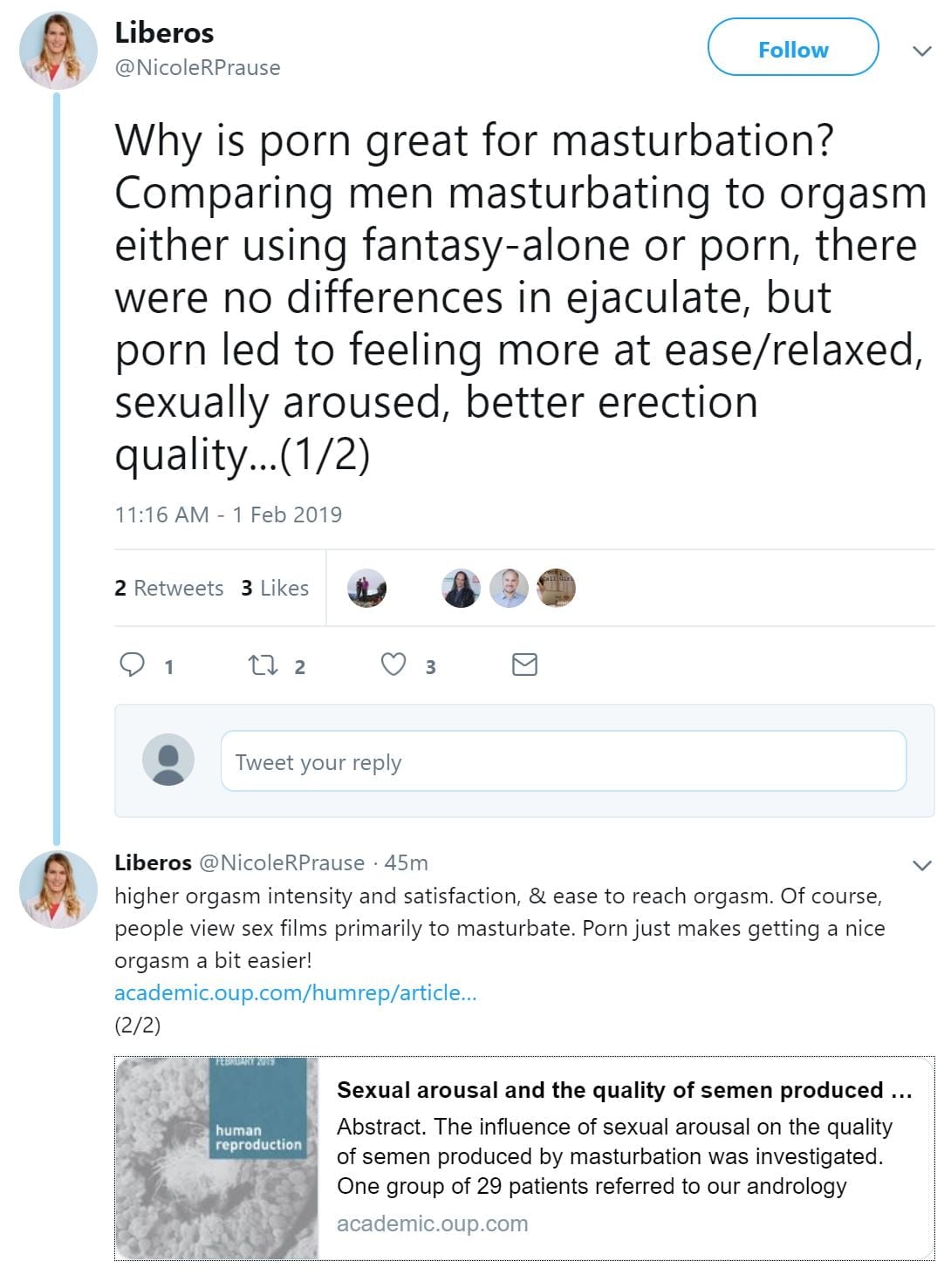
Never misses a chance to promote the porn industry’s agenda.
————————-
Giving up porn destroyed a man’s marriage?
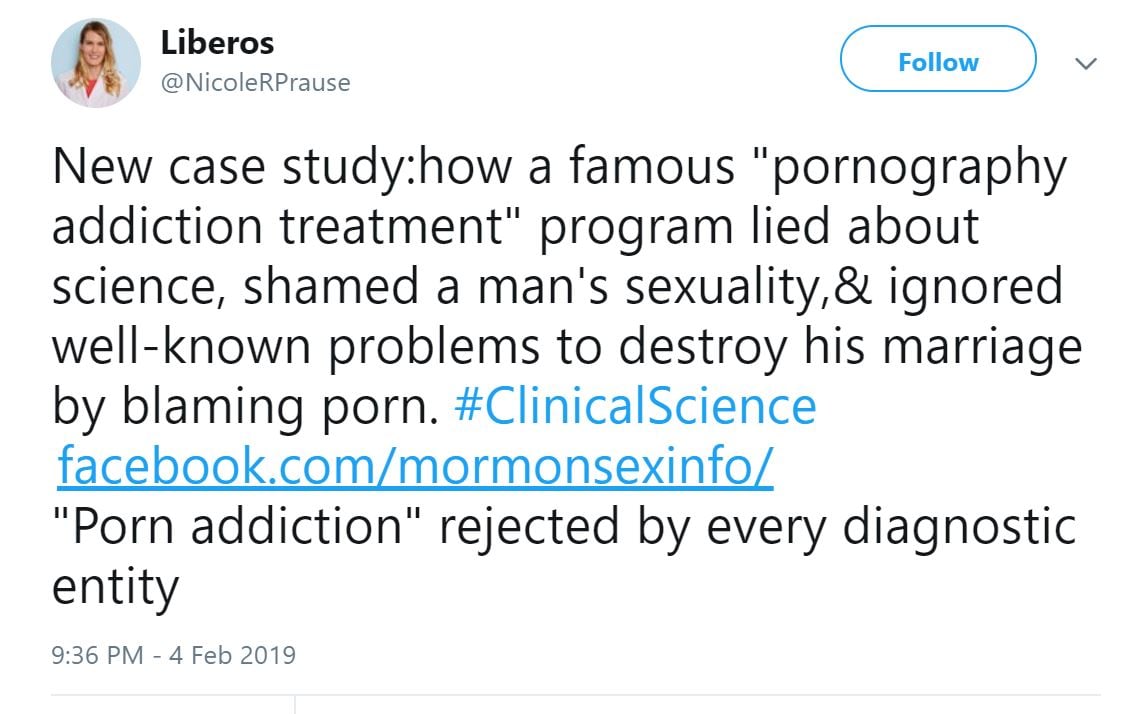
Once again, Prause falsely states that porn addiction was “rejected,” when in fact the ICD-11 just created a new diagnosis suitable for porn and sex addiction. See: Debunking “Why Are We Still So Worried About Watching Porn?“ by Marty Klein, Taylor Kohut, and Nicole Prause (2018)
————————-
Out of nowhere, Prause enters a thread to cite her two favorite cherry-picked papers from Taylor Kohut’s lab:
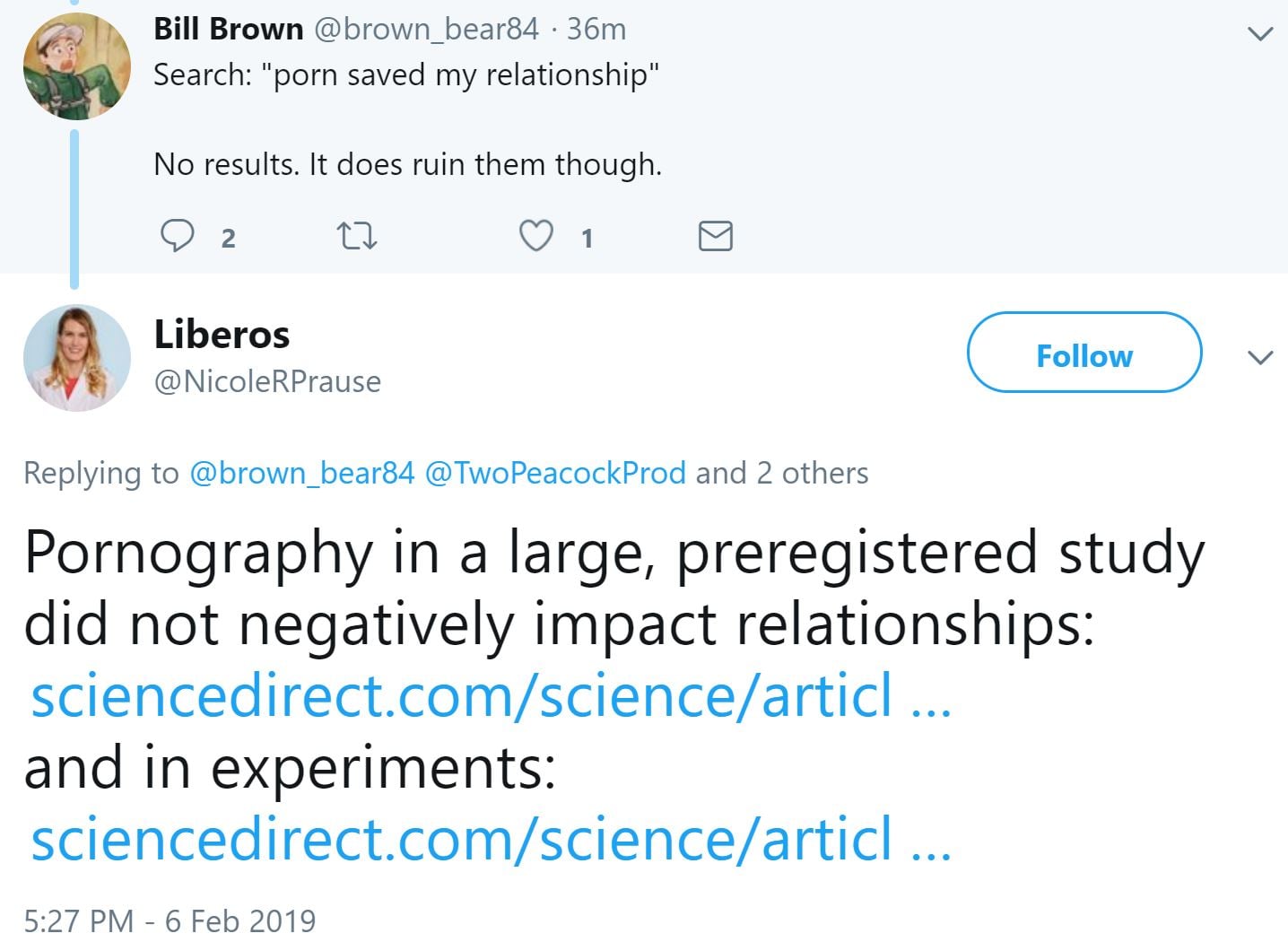
The 2 papers Prause cited were previously debunked:
- As described in the intro, Taylor Kohut’s skewed qualitative paper, which is thoroughly dismantled here: Perceived Effects of Pornography on the Couple Relationship: Initial Findings of Open-Ended, Participant-Informed, “Bottom-Up” Research (2016), Taylor Kohut, William A. Fisher, Lorne Campbell.
- Does exposure to erotica reduce attraction and love for romantic partners in men? Independent replications of Kenrick, Gutierres, and Goldberg (1989) study 2
Porn’s actual effects on relationships? Over 60 studies link porn use to less sexual and relationship satisfaction. As far as we know all studies involving males have reported more porn use linked to poorer sexual or relationship satisfaction.
———————–
Promoting her propaganda piece that asserts porn addiction doesn’t exist:
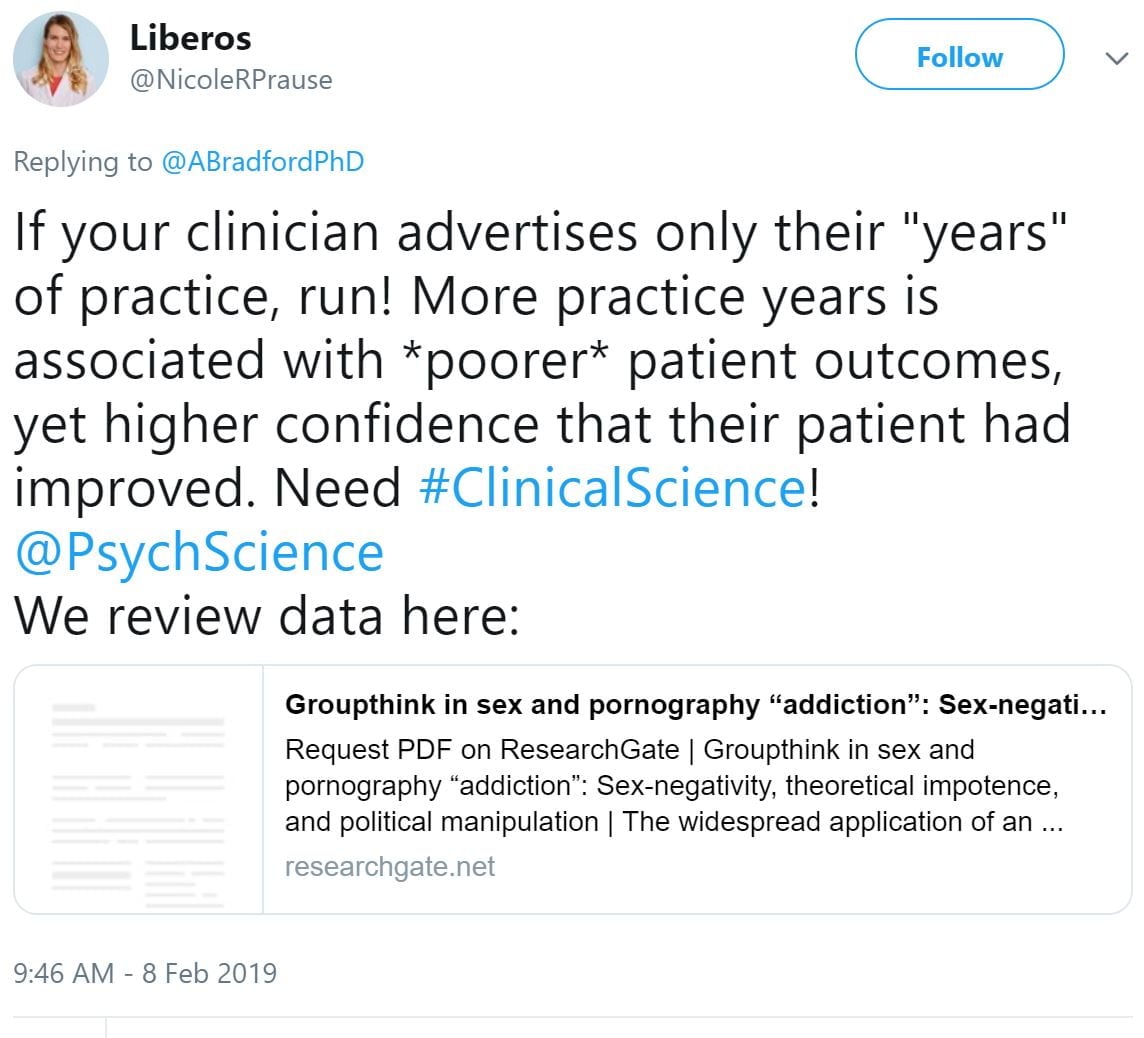
——————-
Retweeting David Ley’s junk-science paper in which he attempts to discredit porn as a public health problem:

—————–
Trolling Twitter, looking for an excuse to post her two debunked articles:
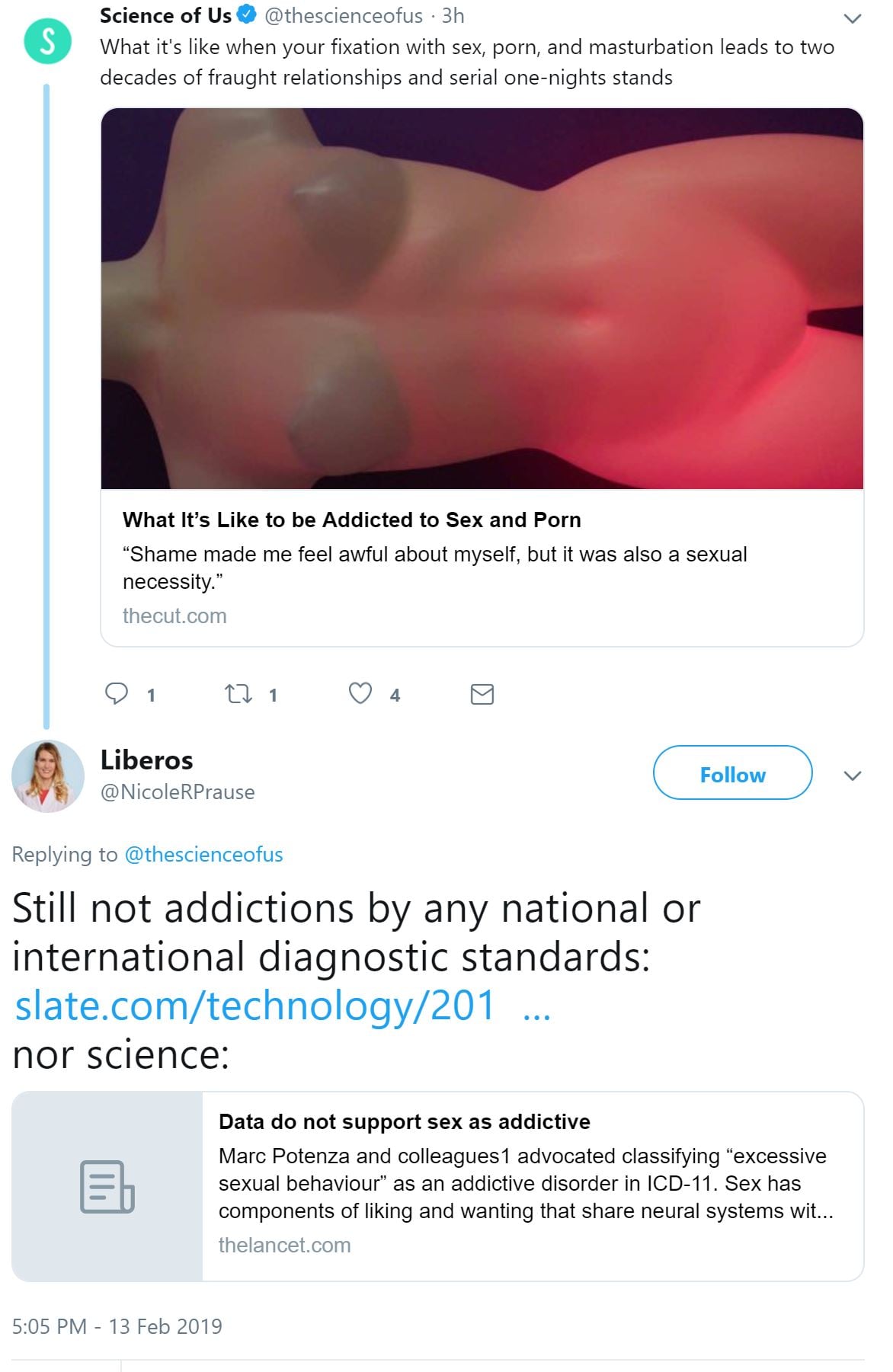
Prause’s two articles are thoroughly discredited in the following critiques:
- Slate magazine: For a debunking of nearly every talking point and cherry-picked study see this extensive critique: Debunking “Why Are We Still So Worried About Watching Porn?” by Marty Klein, Taylor Kohut, and Nicole Prause (2018).
- Lancet letter: Everything in Prause’s 240-word letter to Lancet is completely debunked in this extensive critique: Analysis of “Data do not support sex as addictive” (Prause et al., 2017). Also awkward: The real experts’ opinions on porn/sex addiction? This list contains 21 recent literature reviews & commentaries by some of the top neuroscientists in the world. All support the addiction model.
—————–
February 16, 2016. Tweeting her Lancet letter…. again:
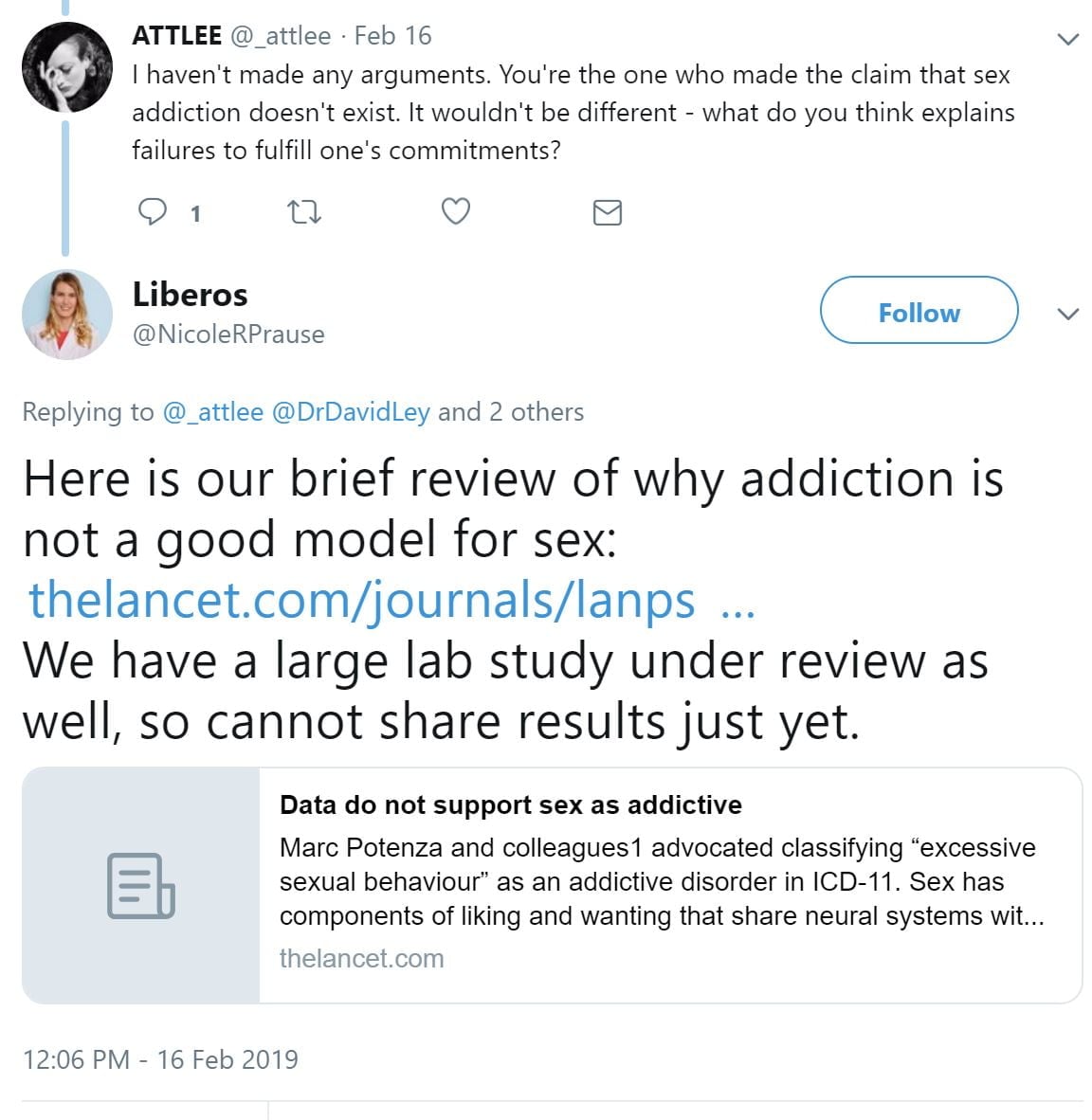
Everything in Prause’s 240-word letter to Lancet is completely debunked in this extensive critique: Analysis of “Data do not support sex as addictive” (Prause et al., 2017).
——————-
More tweets on the same day: February 16, 2019.
Some background. Prause is obsessed with MDPI because (1) Behavioral Sciences published two articles that Prause disagrees with (because they discussed papers by her, among hundreds of papers by other authors), and (2) Gary Wilson is a co-author of Park et al., 2016. Prause has a long history of cyberstalking and defaming Wilson, chronicled in this very extensive page. The two papers:
- Neuroscience of Internet Pornography Addiction: A Review and Update (Love et al., 2015)
- Is Internet Pornography Causing Sexual Dysfunctions? A Review with Clinical Reports (Park et al., 2016)
The second paper (Park et al.) didn’t analyze Prause’s research. It cited findings in 3 of her papers. At the request of a reviewer during the peer-review process, it addressed the third, a 2015 paper by Prause & Pfaus, by citing a scholarly piece in a journal that heavily, accurately criticized the paper. (There was not enough space in Park et al. to address all the weaknesses and unsupported claims in Prause & Pfaus, 2015).
Prause immediately insisted that MDPI retract Park et al., 2016. The professional response to scholarly articles one disapproves of is to publish a comment outlining any objections. Behavioral Sciences’s parent company, MDPI, invited Prause to do this. She declined. It must be noted that Prause attacks Wilson and his website constantly and publicly.
Instead of publishing a formal comment, she unprofessionally turned to threats and social media (and then her chums at Retraction Watch blog) to bully MDPI so they would consider retracting Park et al., of which I am a co-author with 7 US Navy physicians (including two urologists, two psychiatrists and a neuroscientist). In addition, she informed MDPI that she had filed complaints with the American Psychological Association. She then filed complaints with the doctors’ medical boards. She also pressured the doctors’ medical center and Institutional Review Board, causing a lengthy, thorough investigation, which found no evidence of wrongdoing on the part of the paper’s authors. Prause also harassed and cyber-stalked MDPI and researchers who publish studies at the many MDPI journals. The breadth and intensity of Prause harassment and defamation forced Wilson to create an entire page devoted to Prause’s never ending campaign: From 2015 through 2018: Prause’s efforts to have Behavioral Sciences review paper (Park et al., 2016) retracted.
Prause tuning up again when she found a tweet mentioning Is Internet Pornography Causing Sexual Dysfunctions? A Review with Clinical Reports. (everything Prause says in the following tweets are lies, as documented in the above page). Prause is challenged, and responds with her lone biased study that purportedly found that porn stars have better psychological health than the general population:

More of the same thread:
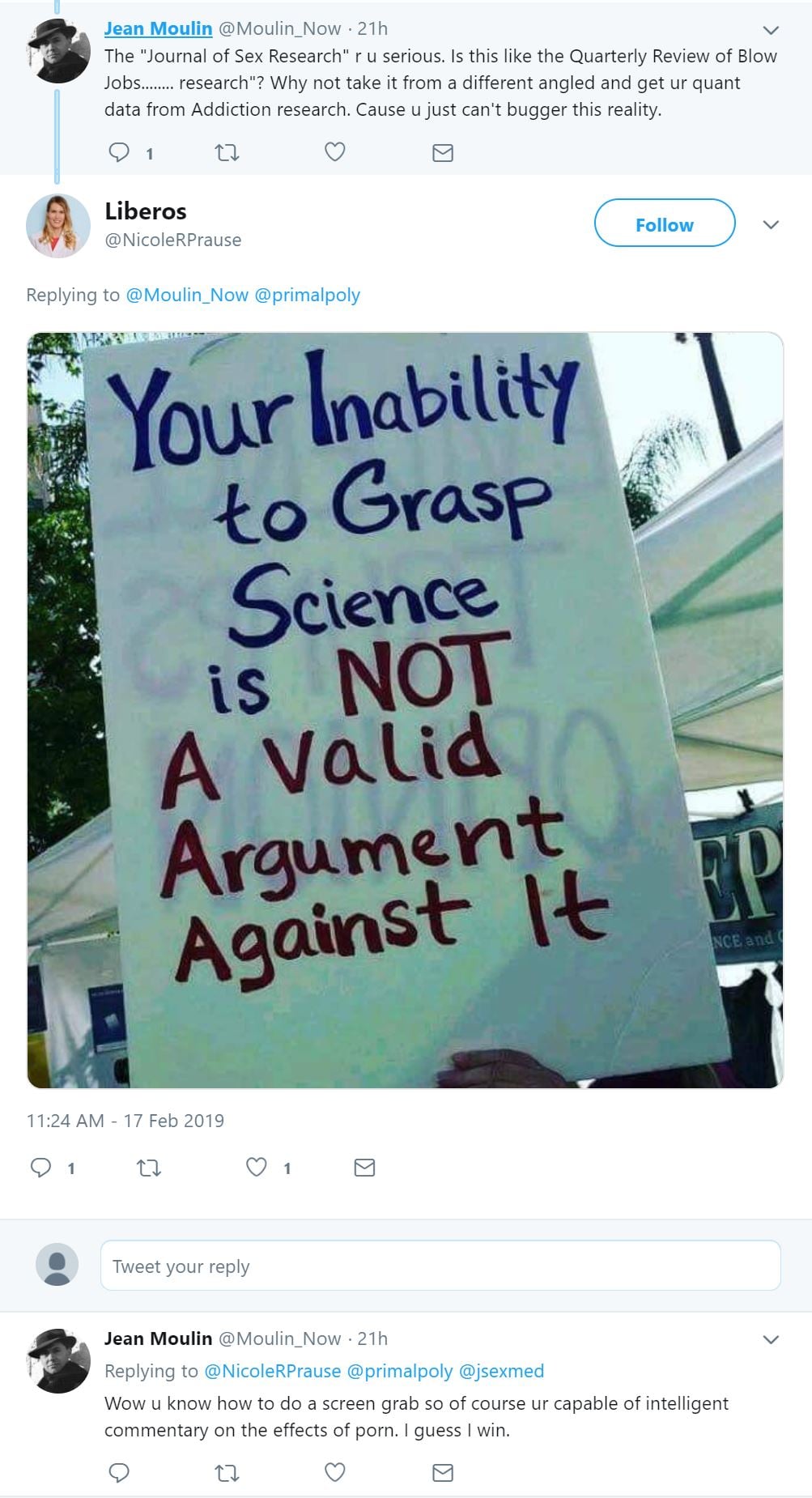
——————
Randomly attacking the concept of porn addiction in a bizarre tweet:
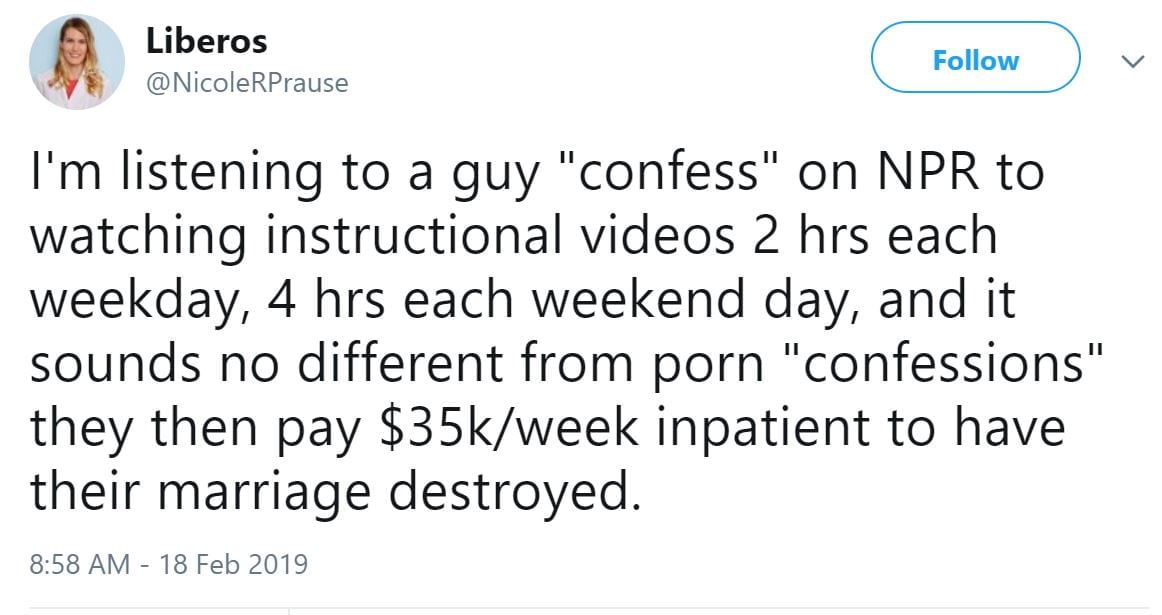
—————-
Joining Ley in Attacking a conference featuring speakers she has previously defamed and harassed:
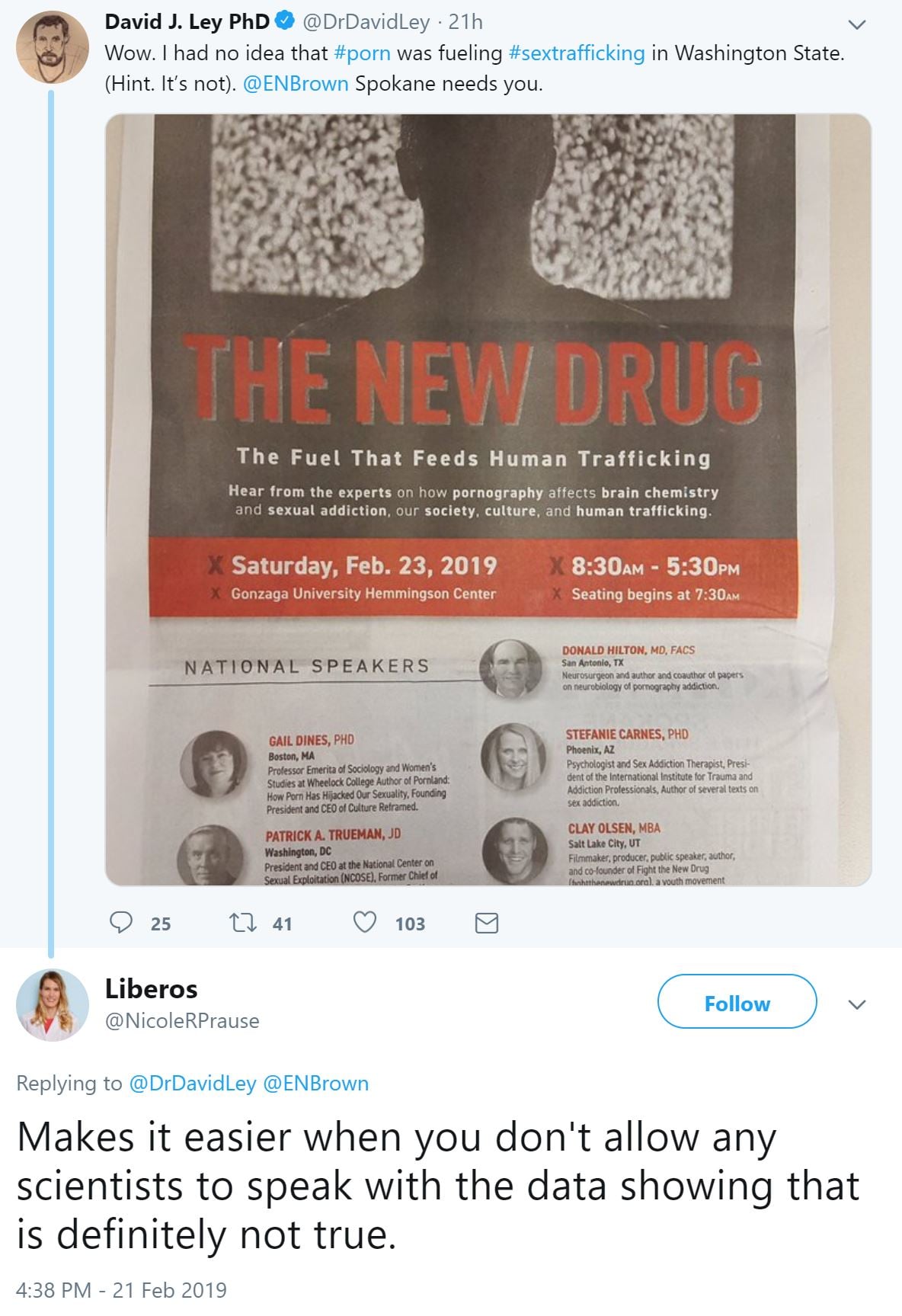
We have seen her “data”: 5 cherry-picked studies that fail to support her assertions (see intro). A few sections of the Prause pages chronicling her harassment and defamation of the speakers:
- December 2013: Prause posts on YourBrainRebalanced & asks Gary Wilson about the size of his penis (kicking off Prause’s campaign of calling Wilson, and many others, misogynists)
- Fall 2014: Documentation of Prause lying to film producers about Gary Wilson and Donald L. Hilton Jr., MD
- Others – Prause falsely accuses Donald Hilton, MD
- Others – November, 2016: Prause falsely claims to have sent cease & desist letters to panelists on the Mormon Matters podcast
- May 20, 2018: Ley & Prause falsely claim that Gary Wilson & Don Hilton gave evidence in a case by Chris Sevier
- Others – 2015 & 2016: Prause falsely accuses sex addiction therapists of reparative therapy
- Ongoing – Prause silencing people with fake “no contact” demands and spurious cease & desist letters
- Others – December, 2016: Prause reports Fight the New Drug to the State of Utah (tweets over 50 times about FTND)
- Others – April, 2017: Prause insults Professor Gail Dines, PhD, perhaps for joining the “Op-ed: Who exactly is misrepresenting the science on pornography?”
- Others – May, 2017: Prause attacks SASH (Society for the Advancement of Sexual Health)
- Others – May 24-27, 2018: Prause creates multiple sock-puppets to edit “Sex Addiction” & “Porn Addiction” Wikipedia pages
- Others – September, 2017: Prause claims all who believe porn can be harmful and addictive are “science-illiterate & misogynistic”
- Others – January 24, 2018: Prause files groundless complaints with Washington State against therapist Staci Sprout
- Others – January 29, 2018: Prause threatens therapists who would diagnose sexual behavior addicts using the upcoming “Compulsive sexual behavior disorder” diagnosis in the ICD-11
- May 30, 2018: Prause falsely accuses FTND of science fraud, and implies that she has reported Gary to the FBI twice
- Others – May 24-27, 2018: Prause creates multiple sock-puppets to edit “Sex Addiction” & “Porn Addiction” Wikipedia pages
- Others – January, 2019: Prause falsely accuses gay IITAP therapist of practicing conversion (reparative) therapy
More tweets about the conference, calling the speakers and anyone attending “flat-earthers”:
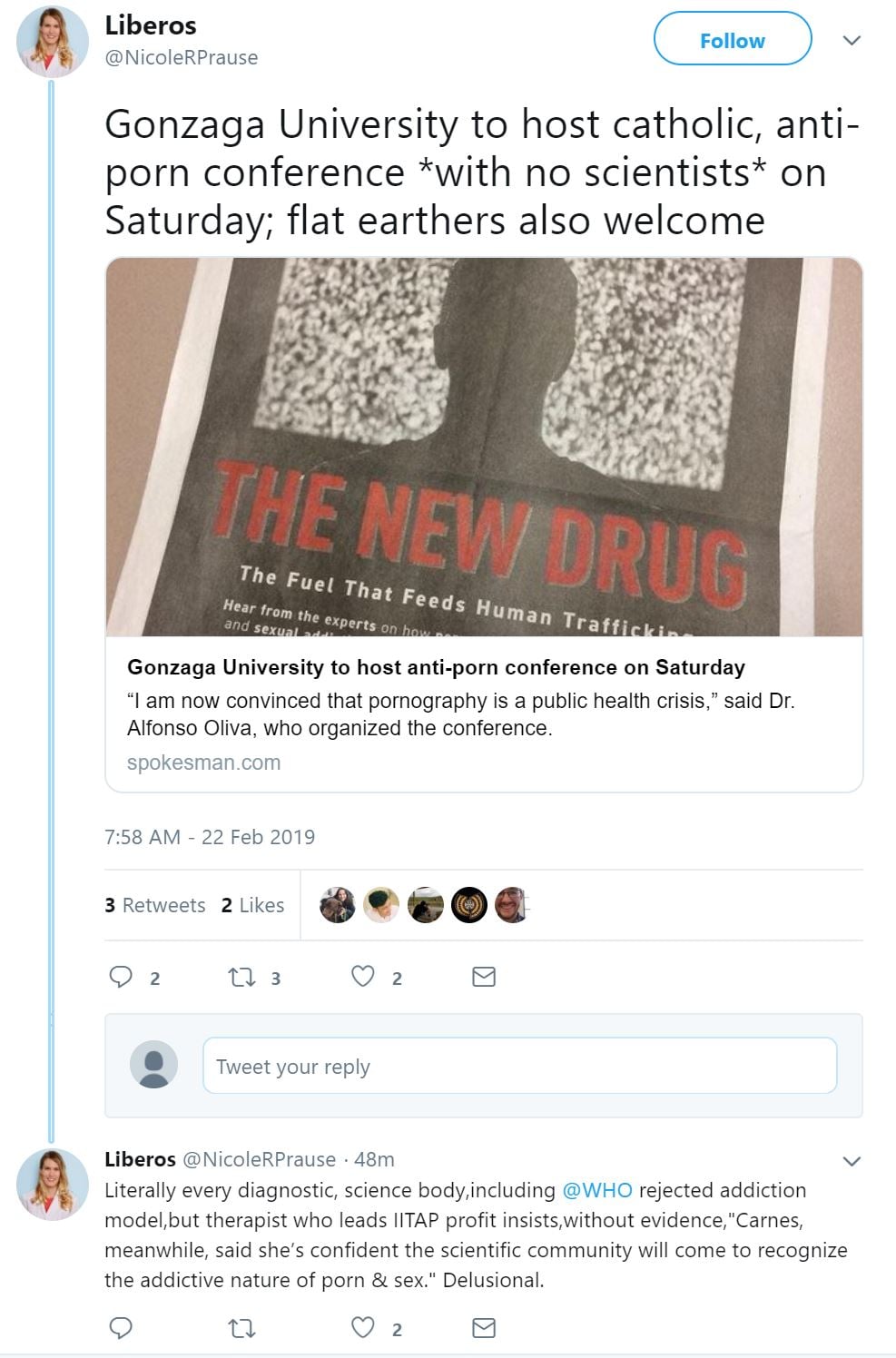
Again, falsely states that WHO rejected addiction model, when they only formally considered “Compulsive Sexual Behavior Disorder.”
—————–
Trolling a random thread by someone she doesn’t know, she cites her Lancet & Slate articles, telling us that neuroscientists disagree:
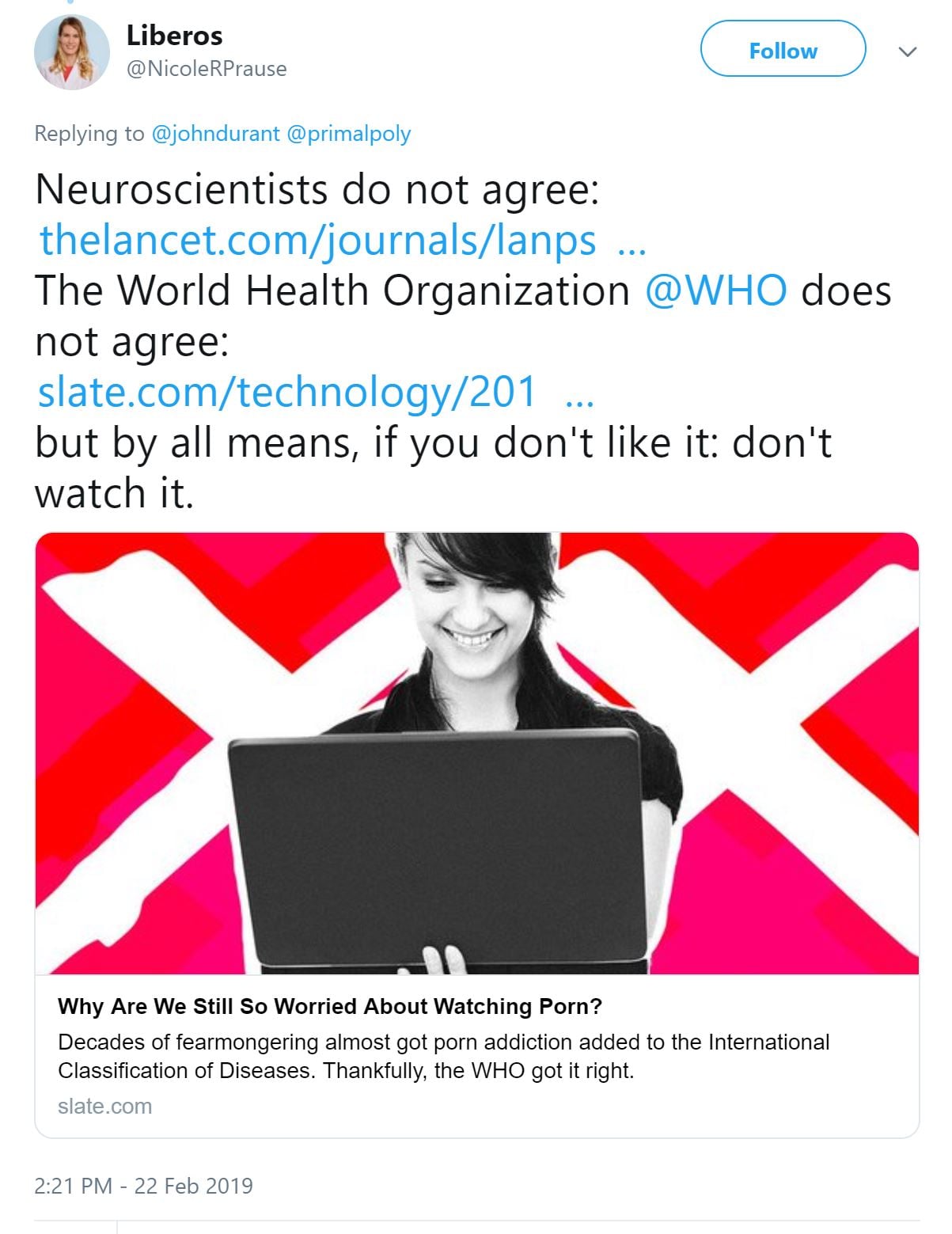
Prause’s two articles are thoroughly dismantled in the following critiques:
- Slate magazine: For a debunking of nearly every talking point and cherry-picked study see this extensive critique: Debunking “Why Are We Still So Worried About Watching Porn?” by Marty Klein, Taylor Kohut, and Nicole Prause (2018).
- Lancet letter: Everything in Prause’s 240-word letter to Lancet is completely debunked in this extensive critique: Analysis of “Data do not support sex as addictive” (Prause et al., 2017). Also awkward: The real experts’ opinions on porn/sex addiction? This list contains 21 recent literature reviews & commentaries by some of the top neuroscientists in the world. All support the addiction model.
——————-
Prause trolling a PhD, citing a dubious cherry-picked paper:
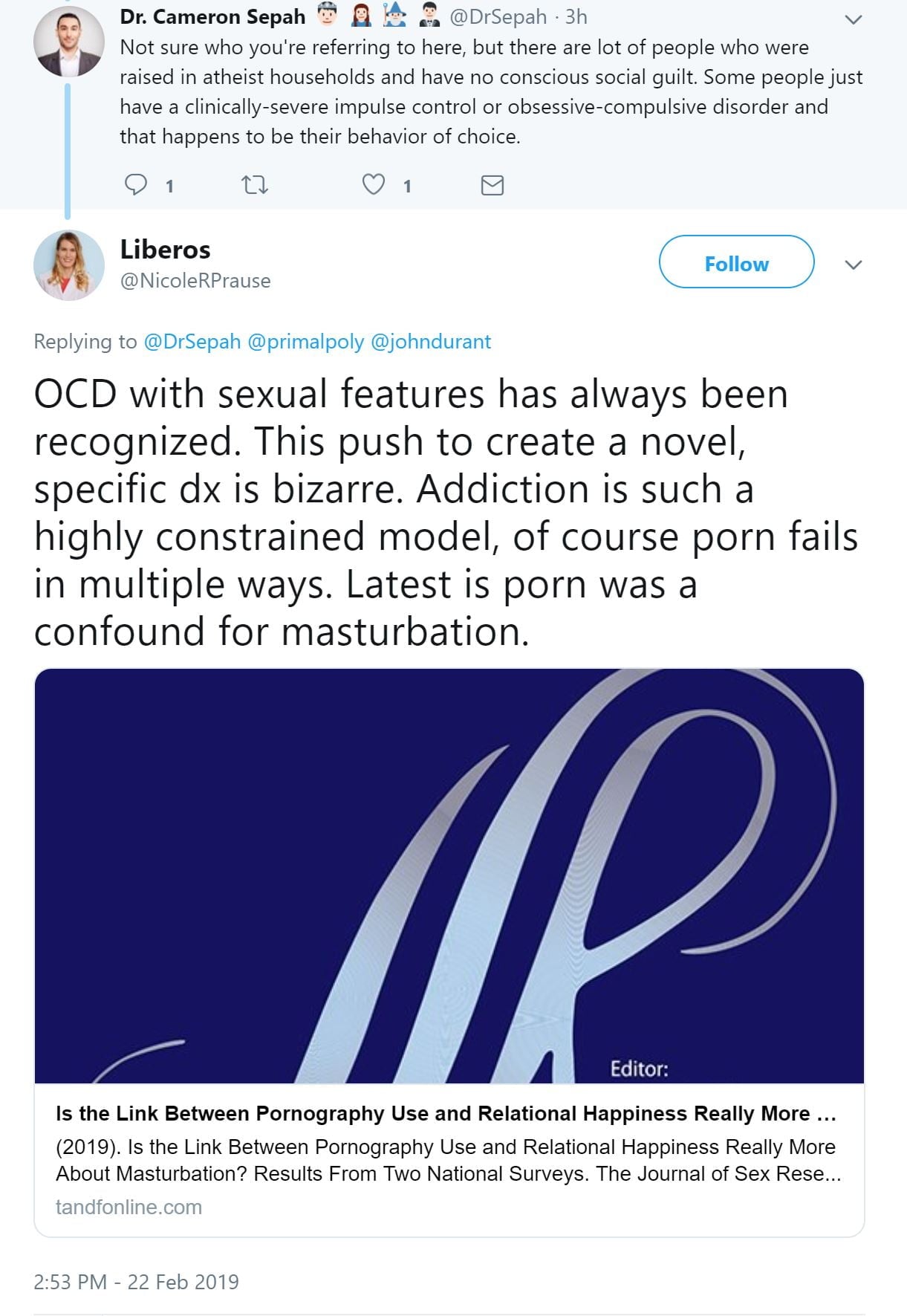
The paper claimed that masturbation was the main variable related to poorer relationships. What Prause is not telling us is that
- Porn was also related to poorer relationships
- The researcher did not have an accurate of masturbation frequency – he just guessed. So the paper is worthless.
More of the same drivel:
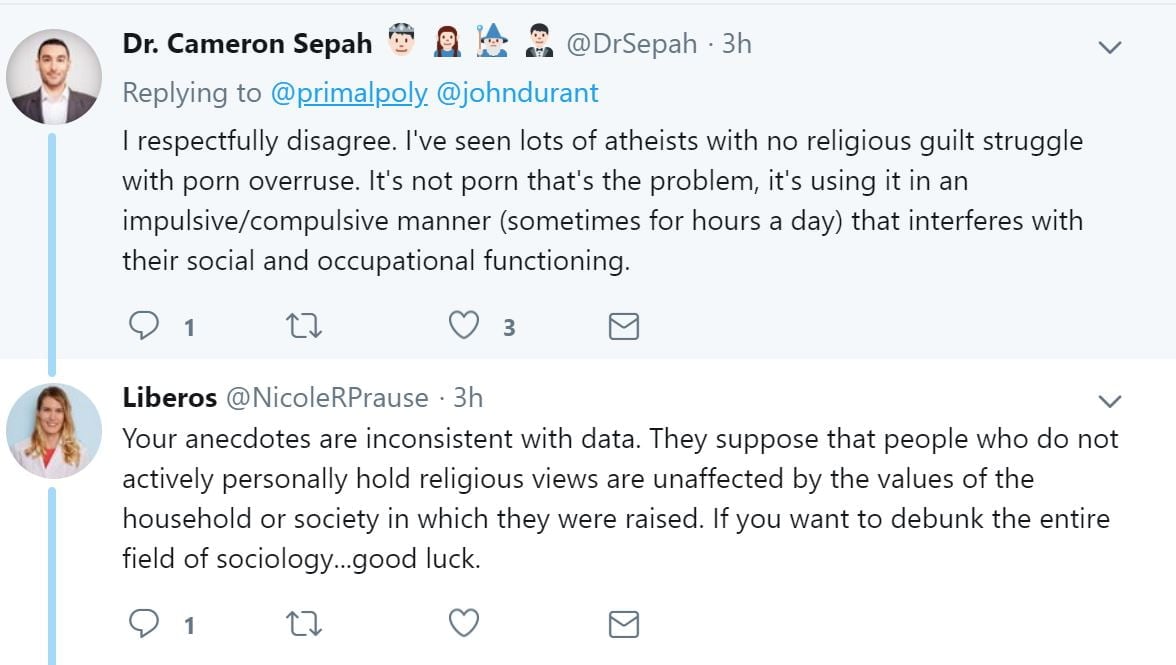
Debunked in this article. Always defending porn… always.
——————-
This appears to start with Prause trolling the Twitter thread of anti-sex trafficking, radical feminist Laila Mickelwait, who is associated with Exodus Cry. Prause informs the Twitter-sphere that her new orgasmic meditation study debunks anything and everything one might claim about porn’s negative effects:
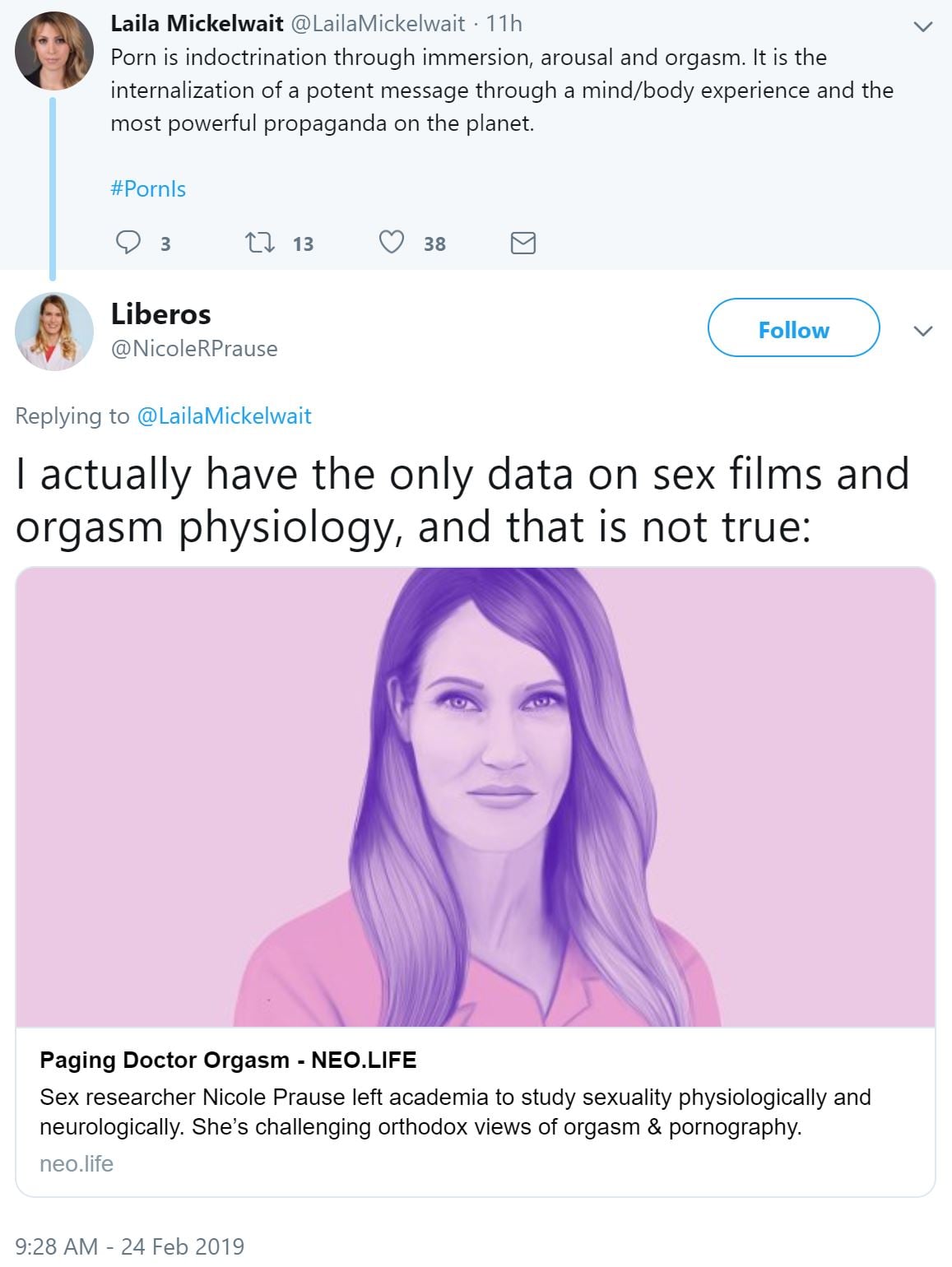
The irony is that it appears that Prause may have obtained porn performers as subjects through the most prominent porn industry interest group, the Free Speech Coalition. FSC-obtained subjects were allegedly used for the study, which she was hired to perform in order to bolster the commercial interests of the heavily tainted, but apparently lucrative, “Orgasmic Meditation” company. Moreover, its likely that none of Prause’s subjects (all females) were actual porn addicts. In addition, and self reported strength of orgasm while being masturbated by a guy (that’s “orgasmic meditation”) tells us nothing about porn addiction.
The next day Prause attacks anti-sex trafficking non-profit Exodus Cry. Prause lies about the CEO’s salary calling it “six-figure,” when what she tweeted shows it’s really a five-figure salary. This from a person who claims to be an expert statistician.
Prause ask her followers “to contact the attorney general for fraud.” As always Prause never describes the so-called “fraud” perpetuated on the public. In fact, Prause has never provided one iota of documentation to support her chronic allegations of fraud by the many victims she harasses and defames. It is Prause who is engaging in fraud.
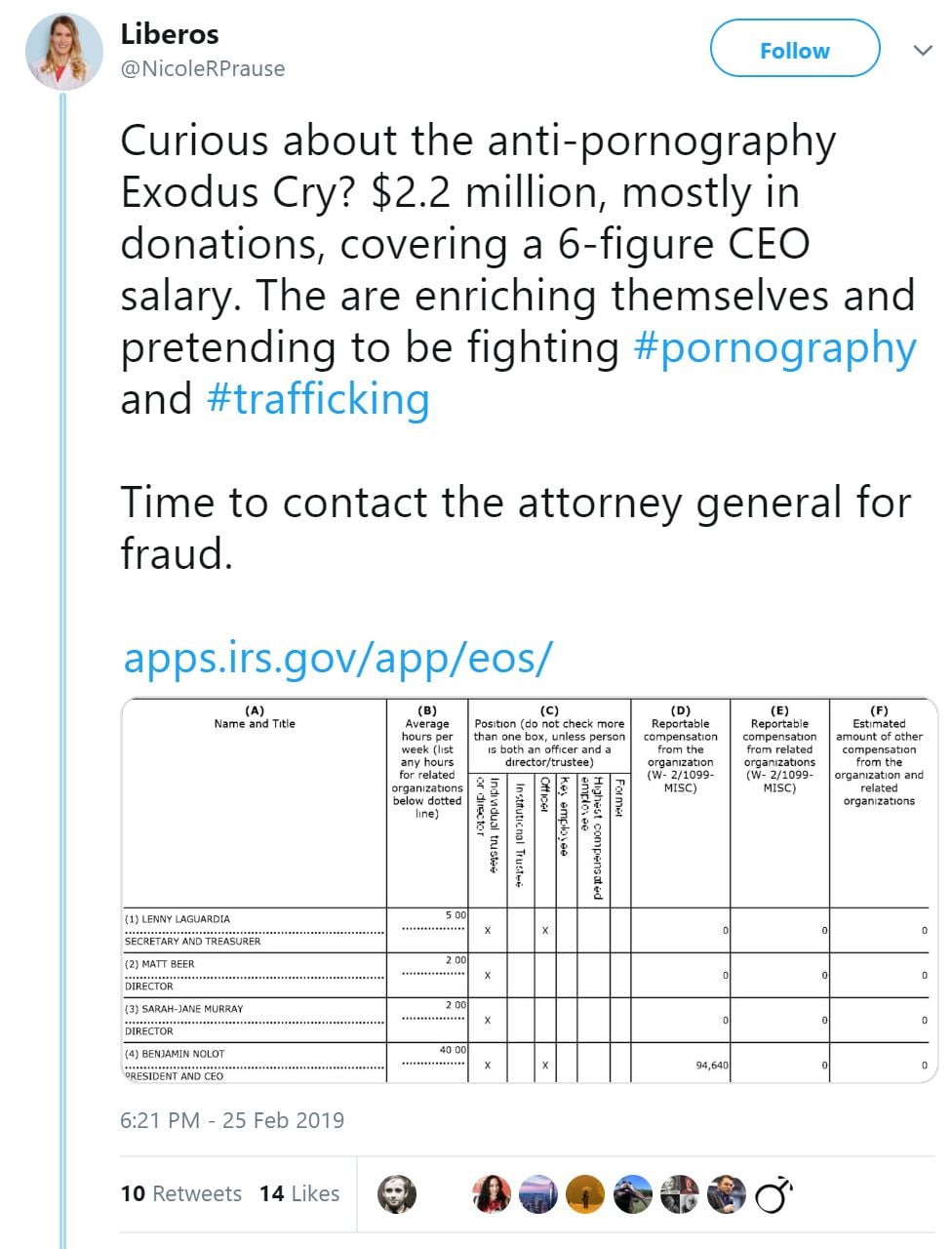
Prause then asks her followers to file spurious complaints against Exodus Cry. Even providing a link for convenience.
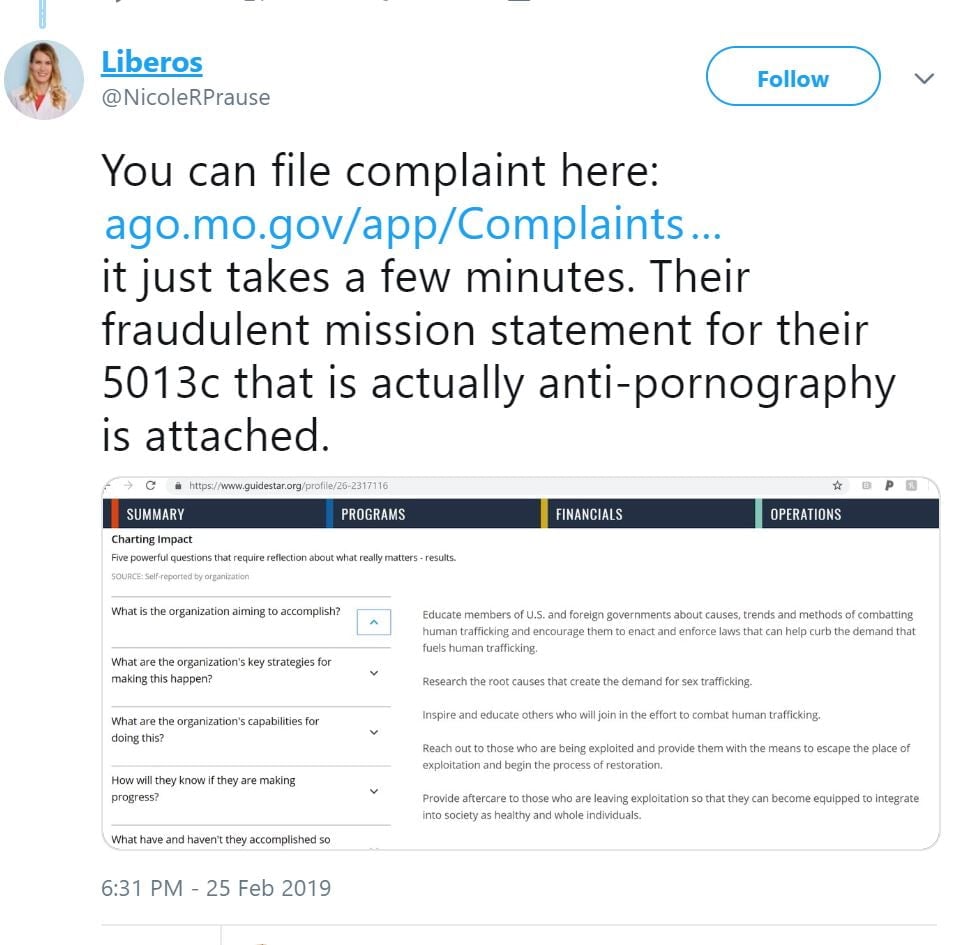
The next day she tweets again. Funny how Prause supports the multi-billion dollar porn industry while attacking an anti-sex trafficking organization for paying their CEO a modest salary.
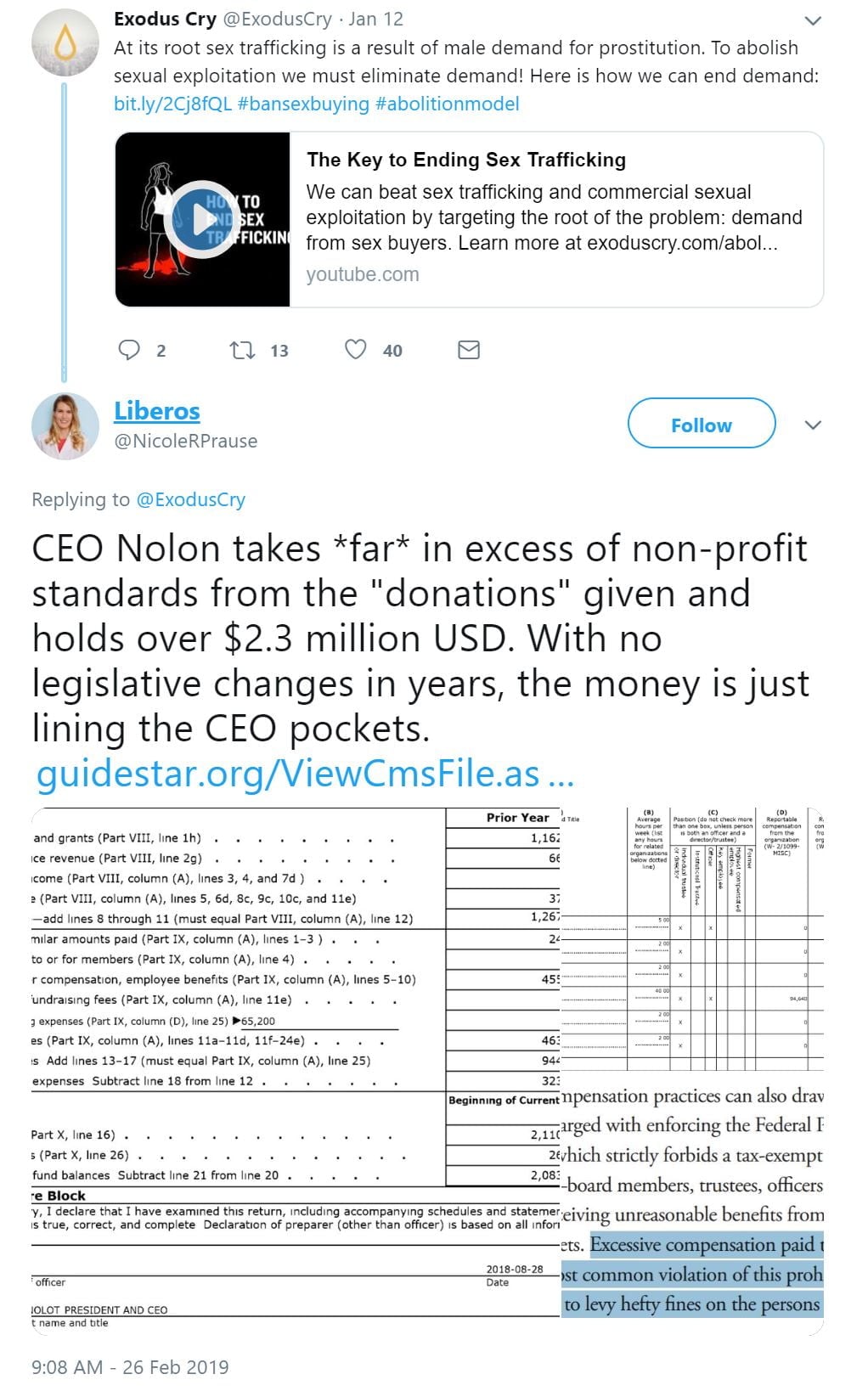
You have ask yourself why 80% of the tweets by a “researcher” consist of libelous attacks on those who suggest that porn may have negative effects.
——————
On the same thread as the above tweets attacking Exodus Cry, Prause, David Ley, and Brian Watson openly conspire to produce a hit piece about the National Center on Sexual Exploitation
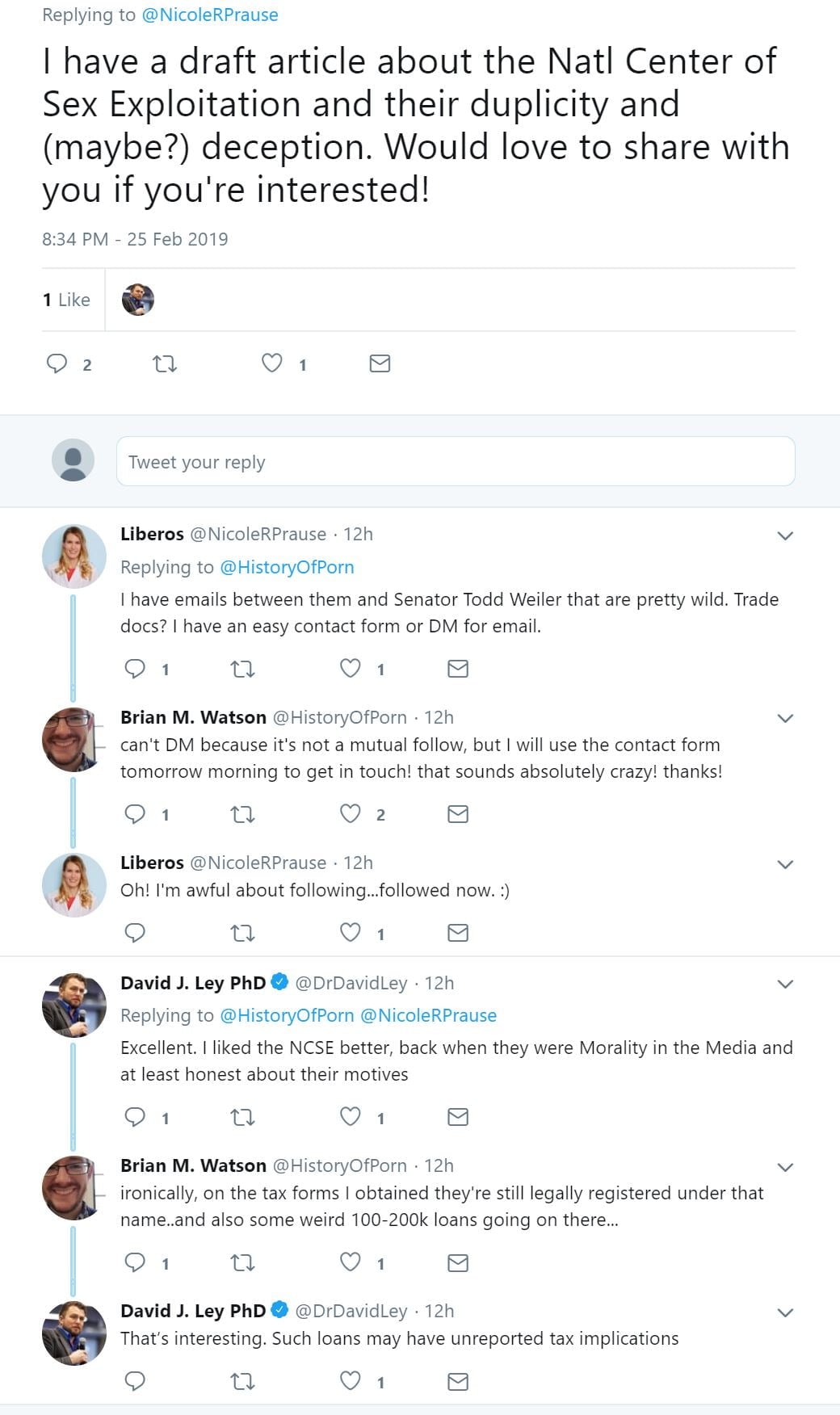
Brain Watson is associated with the Kinsey Institute, and published “Annals of Pornographie: How Porn Became Bad” which according to its blurb – “reveals, for the first time, exactly how pornography went from being beautiful to being bad.”
——————-
Prause and David Ley teaming up for more attacks on the Gottman Institute – all because the Gottman’s published an article suggesting that “pornography can hurt a couple’s relationship.”
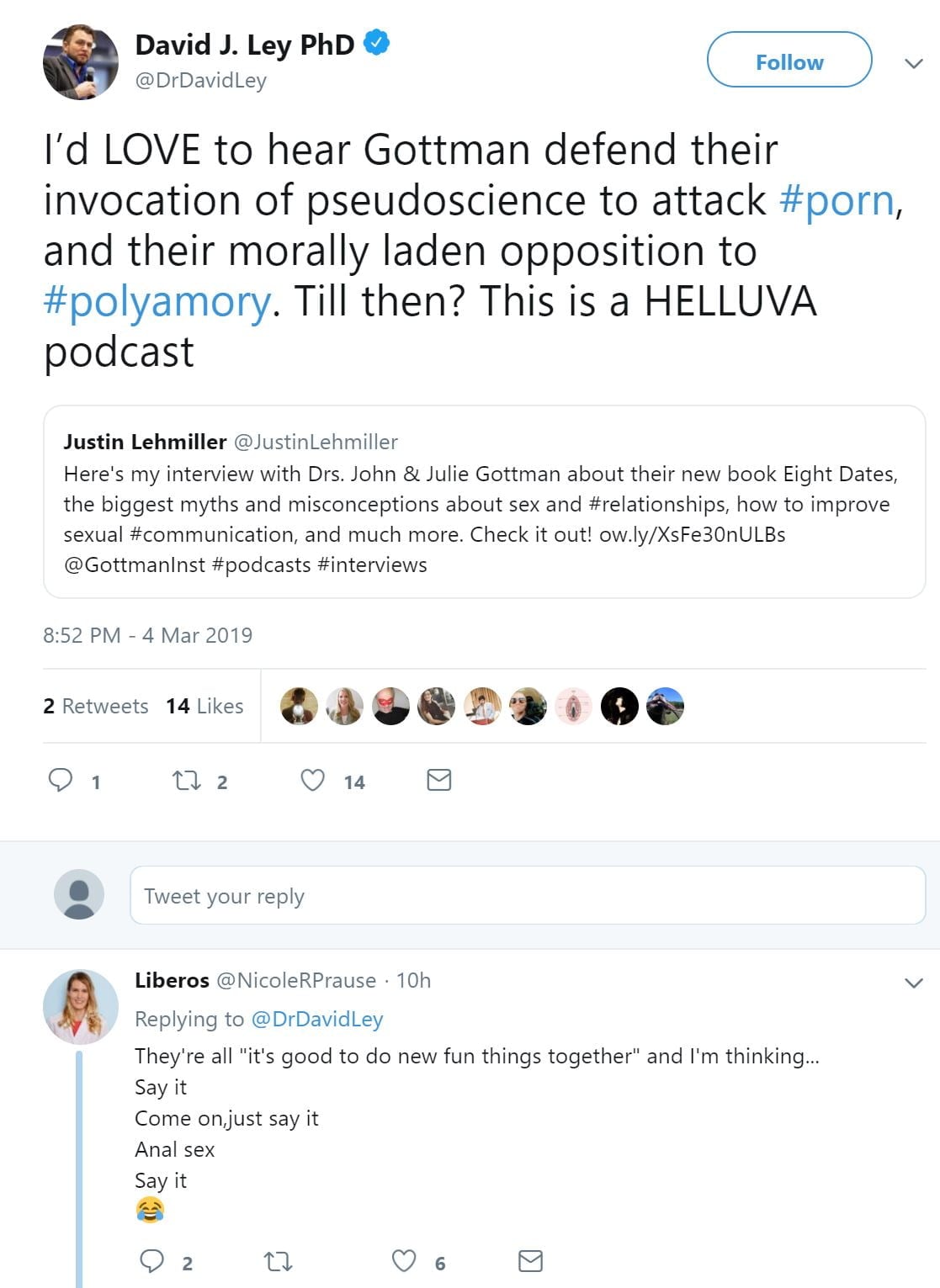
They can only engage in ad hominem attacks, because nearly every published study supports the Gottmans’ thesis that porn is not all that great for relationships.
- Over studies link porn use to less sexual and relationship satisfaction. All studies involving males have reported more porn use linked to poorer sexual or relationship satisfaction.
——————-
Prause tweets her new commentary on another paper. As expected, she claims that porn use is great and never causes problem. Porn is even OK for children! An excerpt from Prause’s paper (VSS = porn):
Curiously, Leonhardt et al. presumed the effects of VSS on children must be negative and require familial mitigation (“[family] can mitigate the influence of sexual media,”
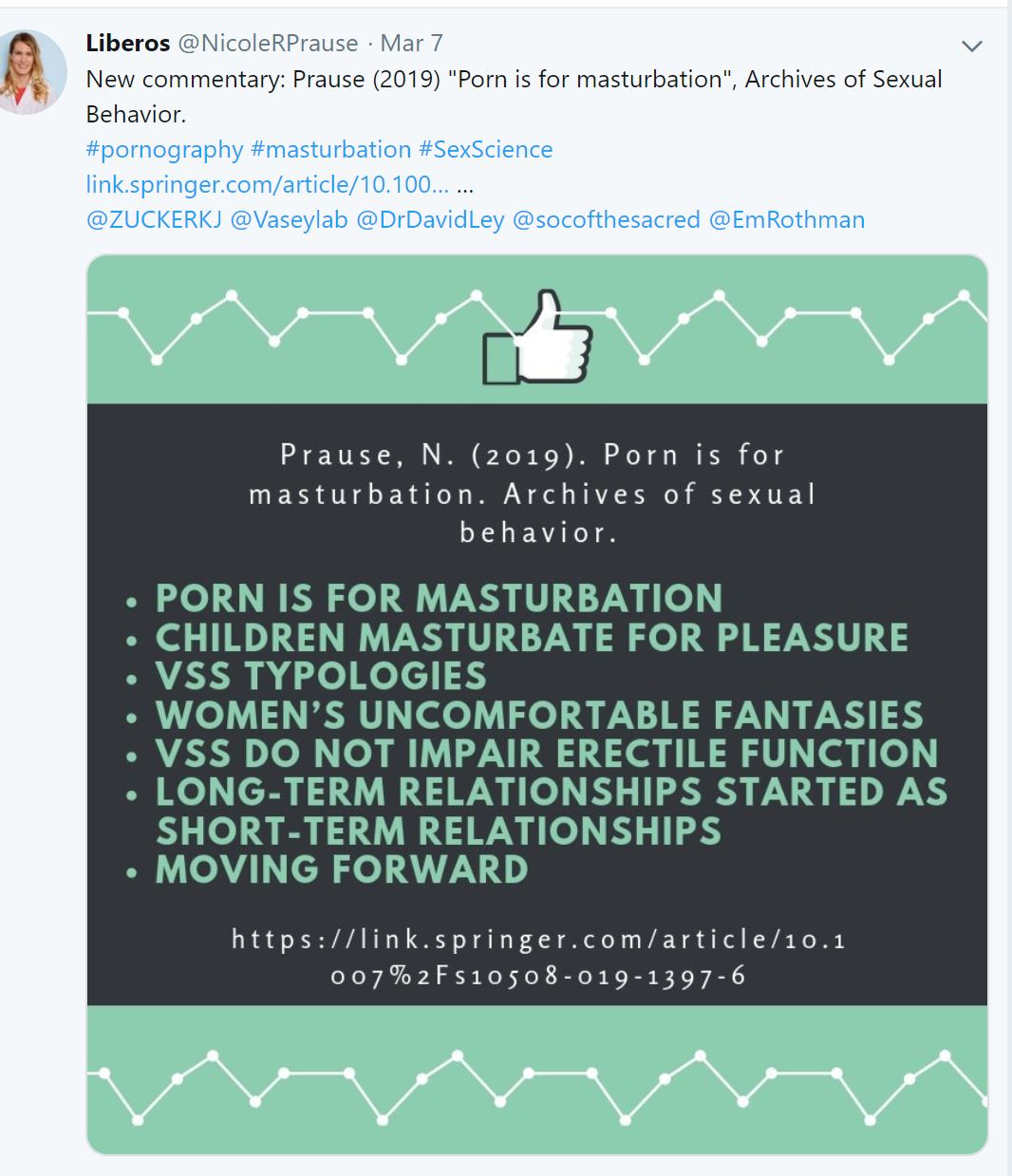
Besides the bits about porn being just fine for kids, its just a rehash of bits and pieces from these two Prause articles which YBOP thoroughly debunked:
- For a debunking of nearly every talking point and cherry-picked study see this extensive critique of SLATE article: Debunking “Why Are We Still So Worried About Watching Porn?” by Marty Klein, Taylor Kohut, and Nicole Prause (2018).
- Everything in Prause’s 240-word letter to Lancet is completely debunked in this extensive critique: Analysis of “Data do not support sex as addictive” (Prause et al., 2017).
—————–
Nicole Prause & David Ley go on a cyber-harrasment & defamation rampage in response to this article in The Guardian: Is porn making young men impotent?
Prause and Ley were upset because The Guardian article accurately portrayed porn-induced ED. As explained on these pages, Prause & Ley are obsessed with debunking PIED, having waged a 3-year war against this academic paper, while simultaneously harassing and libeling young men who have recovered from porn-induced sexual dysfunctions. See documentation: Gabe Deem #1, Gabe Deem #2, Alexander Rhodes #1, Alexander Rhodes #2, Alexander Rhodes #3, Noah Church, Alexander Rhodes #4, Alexander Rhodes #5, Alexander Rhodes #6, Alexander Rhodes #7, Alexander Rhodes #8, Alexander Rhodes #9, Alexander Rhodes #10, Alex Rhodes #11, Gabe Deem & Alex Rhodes together #12, Alexander Rhodes #13, Alexander Rhodes #14, Gabe Deem #4, Alexander Rhodes #15.
Prause tweets 3 papers (not actual studies) while defaming Alexander Rhodes of Nofap:
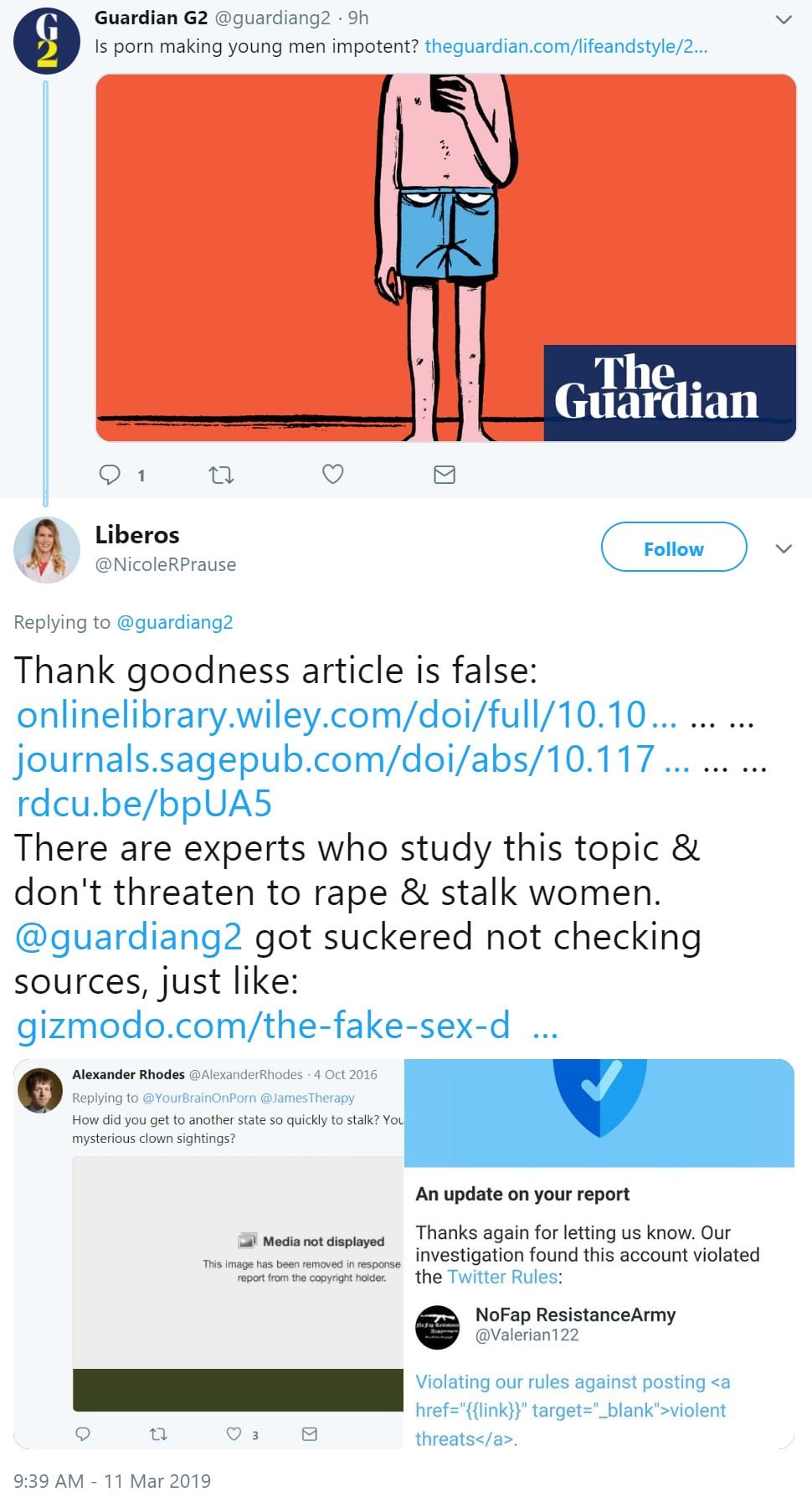
Prause tweets exact same nonsense to the author of the article, Amy Fleming. (Fleming eventually makes her Twitter account private due to ongoing harassment from Prause and her fellow bullies, such as Brain Watson and David Ley)
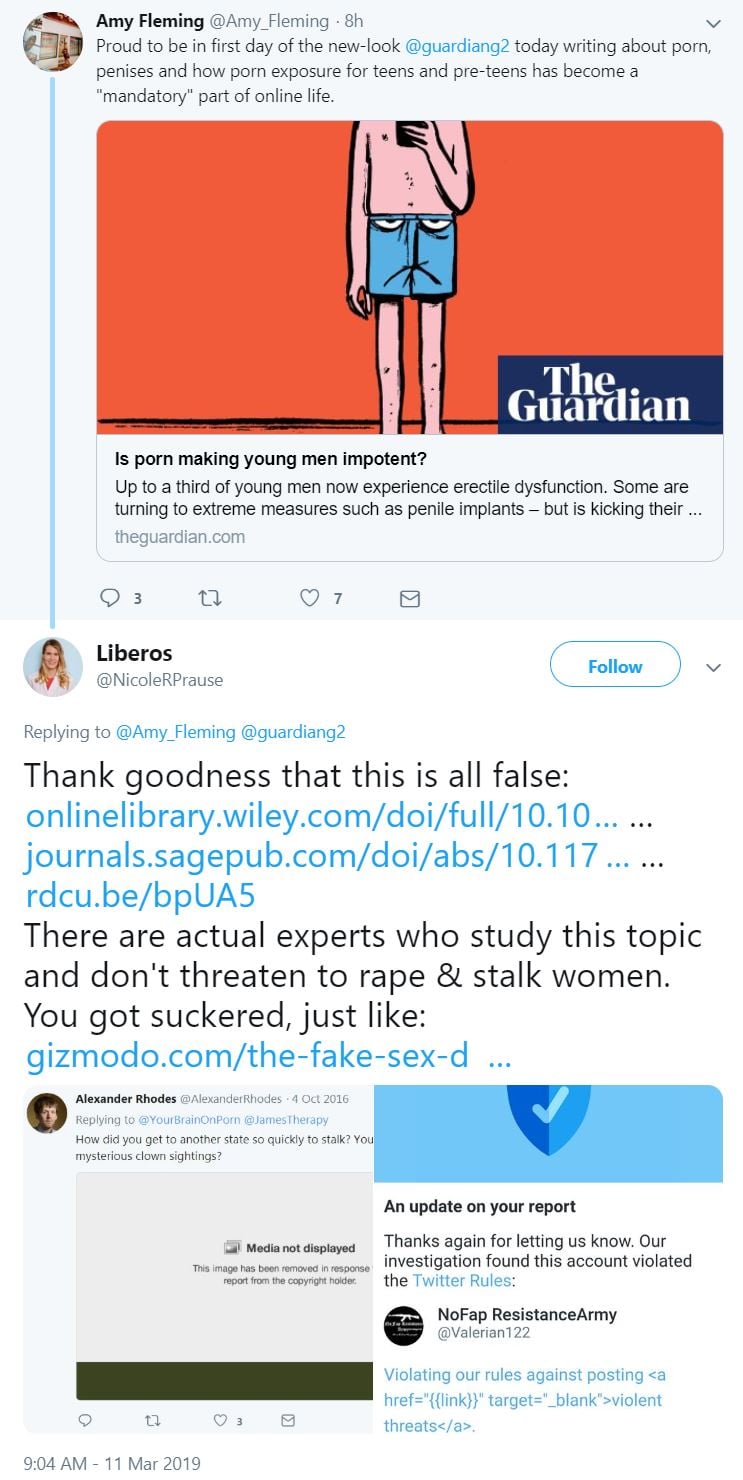
Prause tweets again, adding her usual pack of lies about Rhodes, including her lie that she has reported Rhodes to the FBI (see – December, 2018: FBI confirms that Nicole Prause lied about filing a report on Alexander Rhodes):
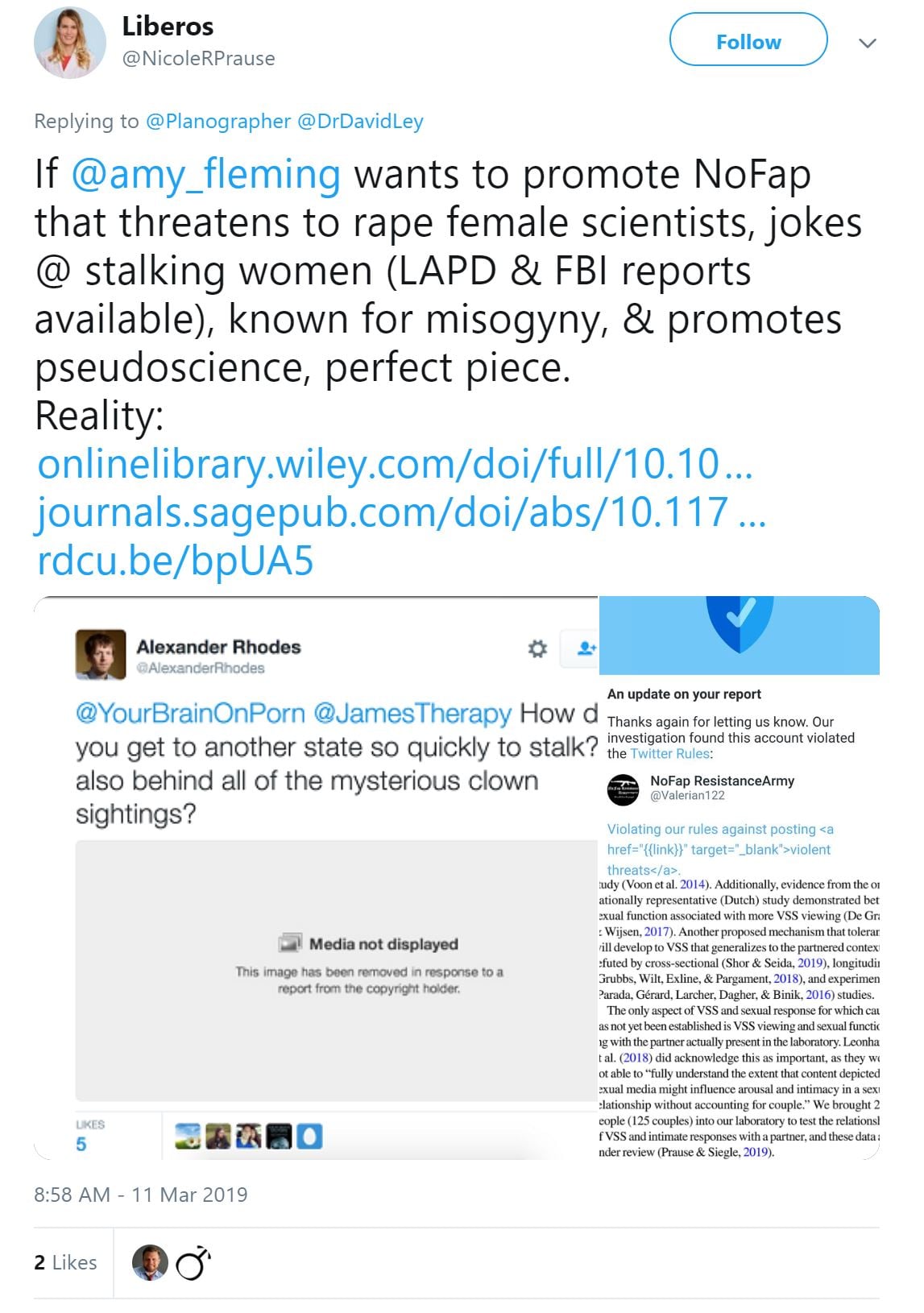
Another tweet by Prause, harassing journalist Amy Fleming:
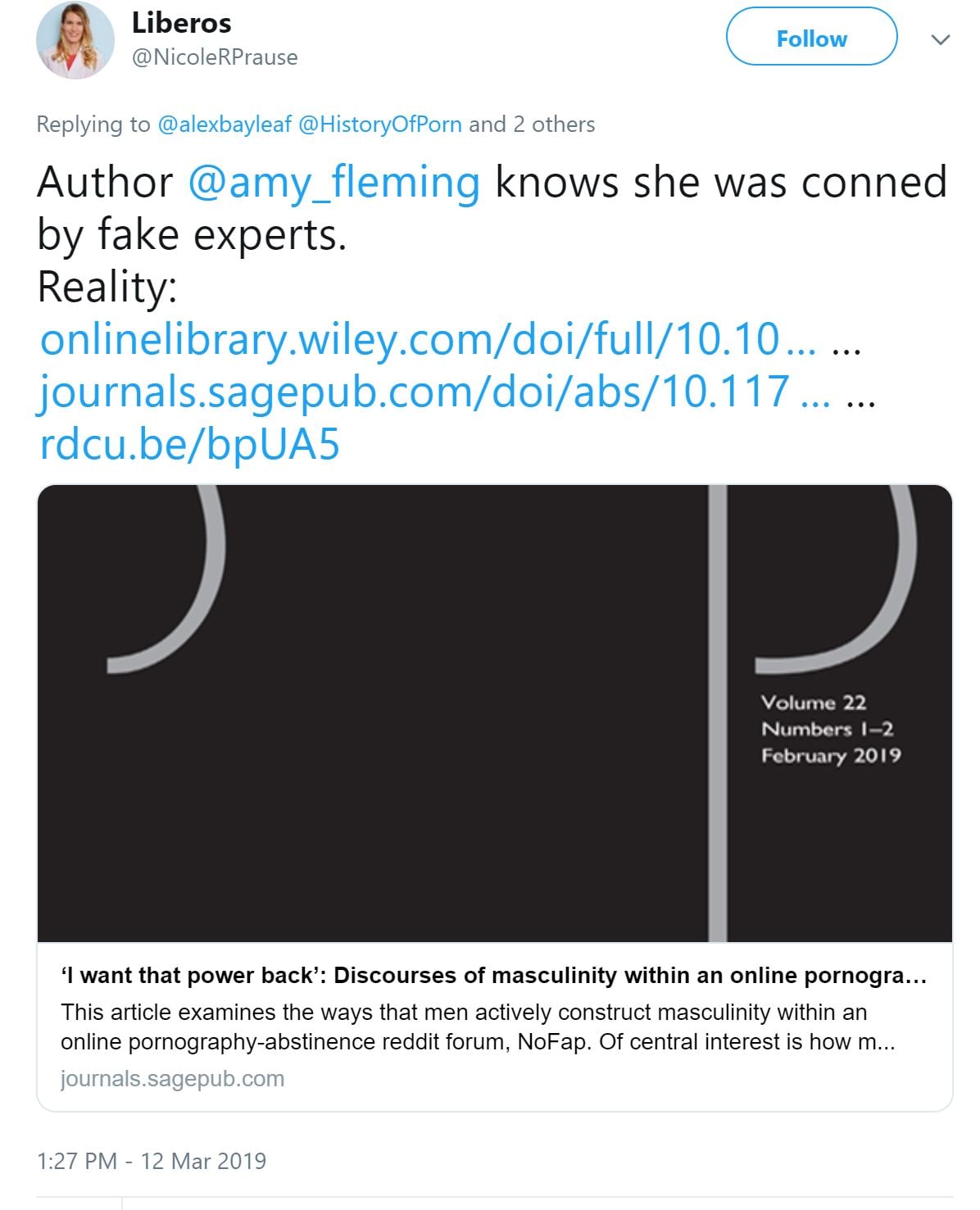
All the above is fiction, and a disgusting attempt at misinforming the public. The follwing sections chronicle Prause and ally David Ley’s long history of cyberstalking Alexander Rhodes, including Prause lying about filing FBI reports on Wilson and Rhodes (and David Ley retweeting these lies):
- Others – July, 2016: Prause & David Ley attack NoFap founder Alexander Rhodes
- Others – July, 2016: Prause & sock puppet “PornHelps” attack Alexander Rhodes, falsely claiming he faked porn-induced sexual problems
- Others – May 24-27, 2018: Prause creates multiple sock-puppets to edit the NoFap Wikipedia page
- October, 2018: Ley & Prause devise an article purporting to connect Gary Wilson, Alexander Rhodes and Gabe Deem to white supremacists/fascists (Prause attacks Rhodes & Nofap in the comments section)
- Others – October, 2018: Prause follows-up the “fascist” article by attacking & libeling Alexander Rhodes and Nofap on twitter
- Ongoing – David Ley & Prause’s ongoing attempts to smear YBOP/Gary Wilson & Nofap/Alexander Rhodes by claiming links with neo-Nazi sympathizers
- Others – October, 2018: Prause tweets that she has reported “serial misogynist” Alexander Rhodes to the FBI.
- November, 2018: FBI affirms Nicole Prause’s fraud surrounding defamatory claims
- Ongoing – Los Angeles Police Department and UCLA campus police confirm that Prause lied about filing police reports on Gary Wilson
- Others – November, 2018: Prause resumes her unprovoked, libelous attacks on NoFap.com & Alexander Rhodes
- Others – December, 2018: Prause joins Xhamster to smear NoFap & Alexander Rhodes; induces Fatherly.com to publish a hit-piece where Prause is the “expert”
- Others – December, 2018: FBI confirms that Nicole Prause lied about filing a report on Alexander Rhodes
In her tweets, Prause linked to 3 dubious papers (not actual studies). Two papers are Prause’s own propaganda, which have already been extensively dismantled. The third paper is a hit piece on Nofap by a grad student from NZ. Prause’s links, followed by the debunking:
- Peer-reviewed critique of Prause & Pfaus, 2015 – by Richard A. Isenberg MD.
- Nothing Adds Up in Dubious Study: Youthful Subjects’ ED Left Unexplained – a critique of Prause & Pfaus, 2015 – by Gabe Deem
Reality:
- This list contains 35 studies linking porn use/porn addiction to sexual problems and lower arousal to sexual stimuli. The first 6 studies in the list demonstrate causation, as participants eliminated porn use and healed chronic sexual dysfunctions.
- In addition to the studies below, this page contains articles and videos by over 140 experts (urology professors, urologists, psychiatrists, psychologists, sexologists, MDs) who acknowledge and have successfully treated porn-induced ED and porn-induced loss of sexual desire.
David Ley joins Prause in the harassment of the journalist and unprofessional comments.
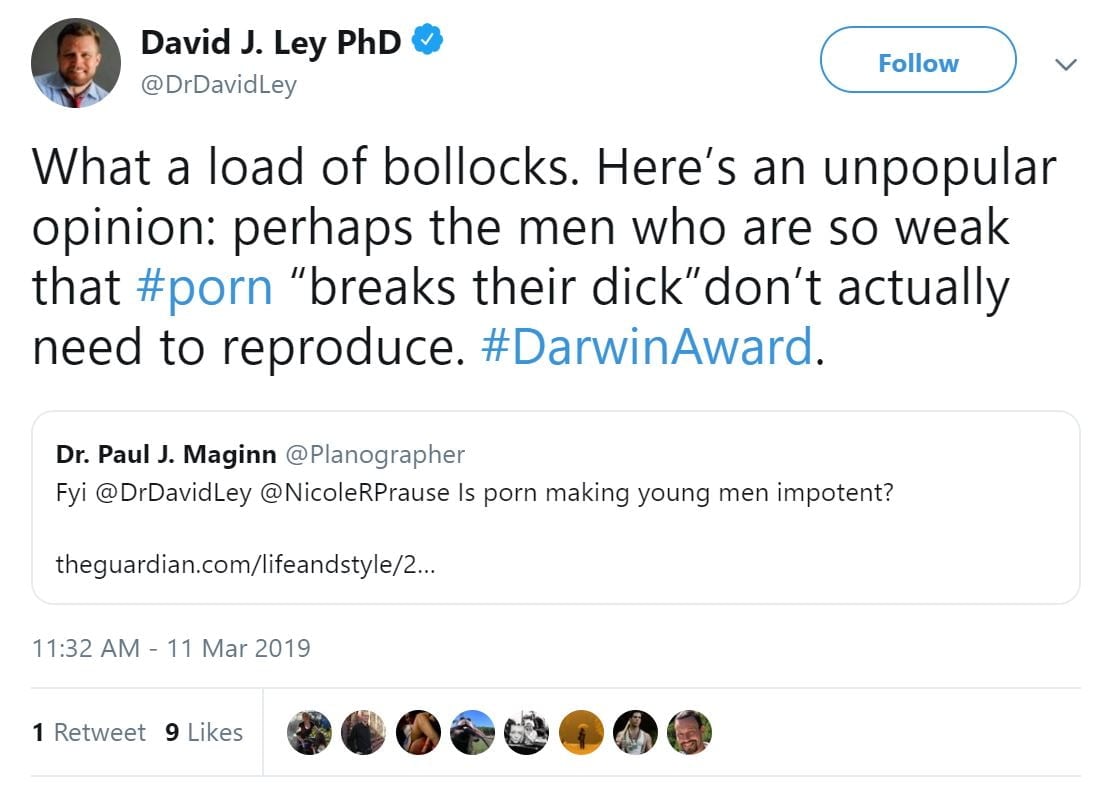
Brian Watson (Kinsey grad) joins Ley & Prause in the direct harassment of Guardian reporter Amy Fleming. Kinsey grad Brian Watson lies about the article citing NCOSE (it didn’t). In this tweet, Watson features his harassment.
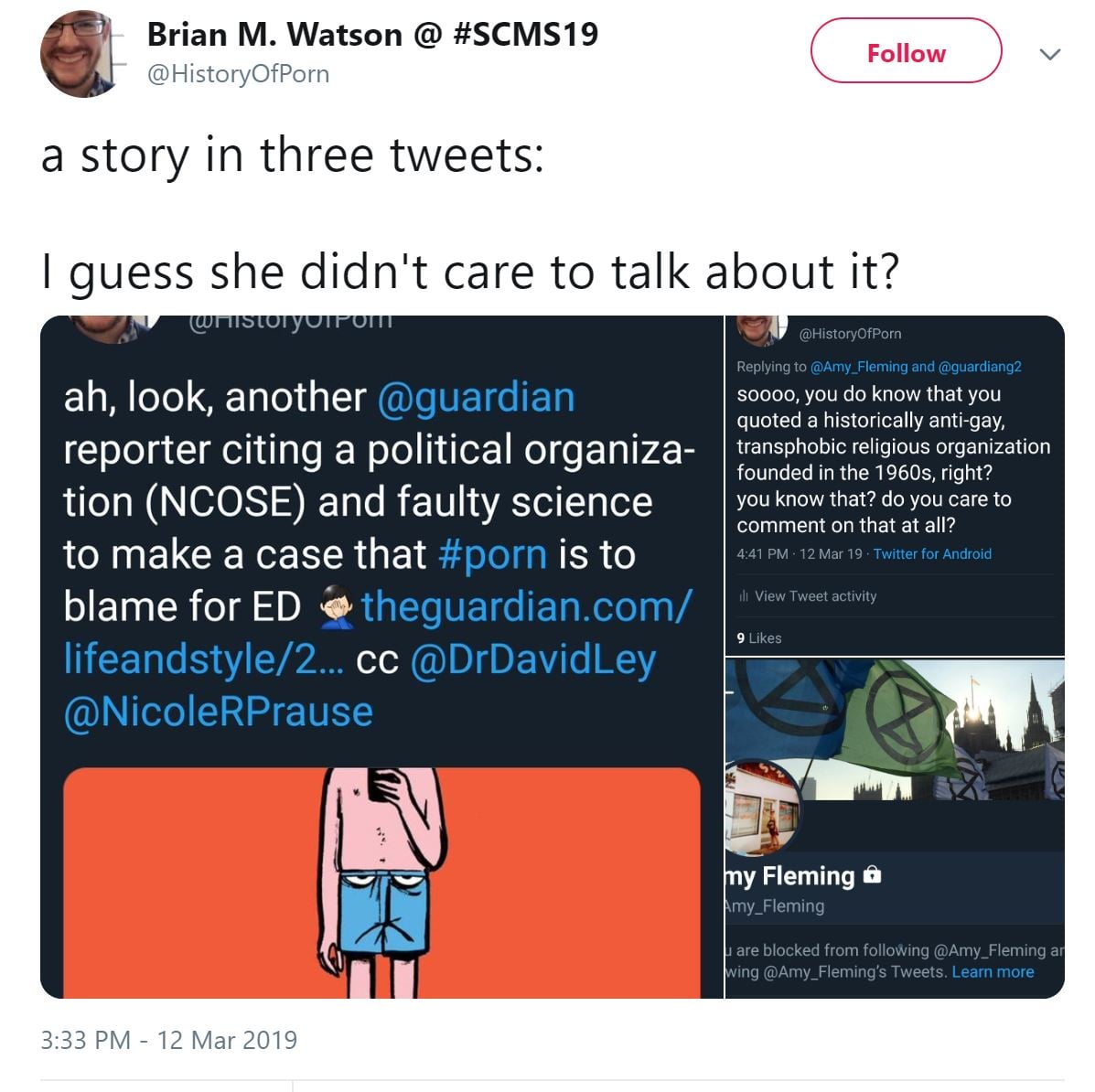
In reality, Fleming quoted from Alexander Rhodes’s talk given at a NCOSE event (hundreds of individuals have given talks at NCOSE). Watson is feebly attempting ad hominem by association (Rhodes is an atheist and politically literal), because Watson is incapable of addressing the content of the article.
More harassment by Watson, who is obsessed with a NCOSE talk given by Rhodes:
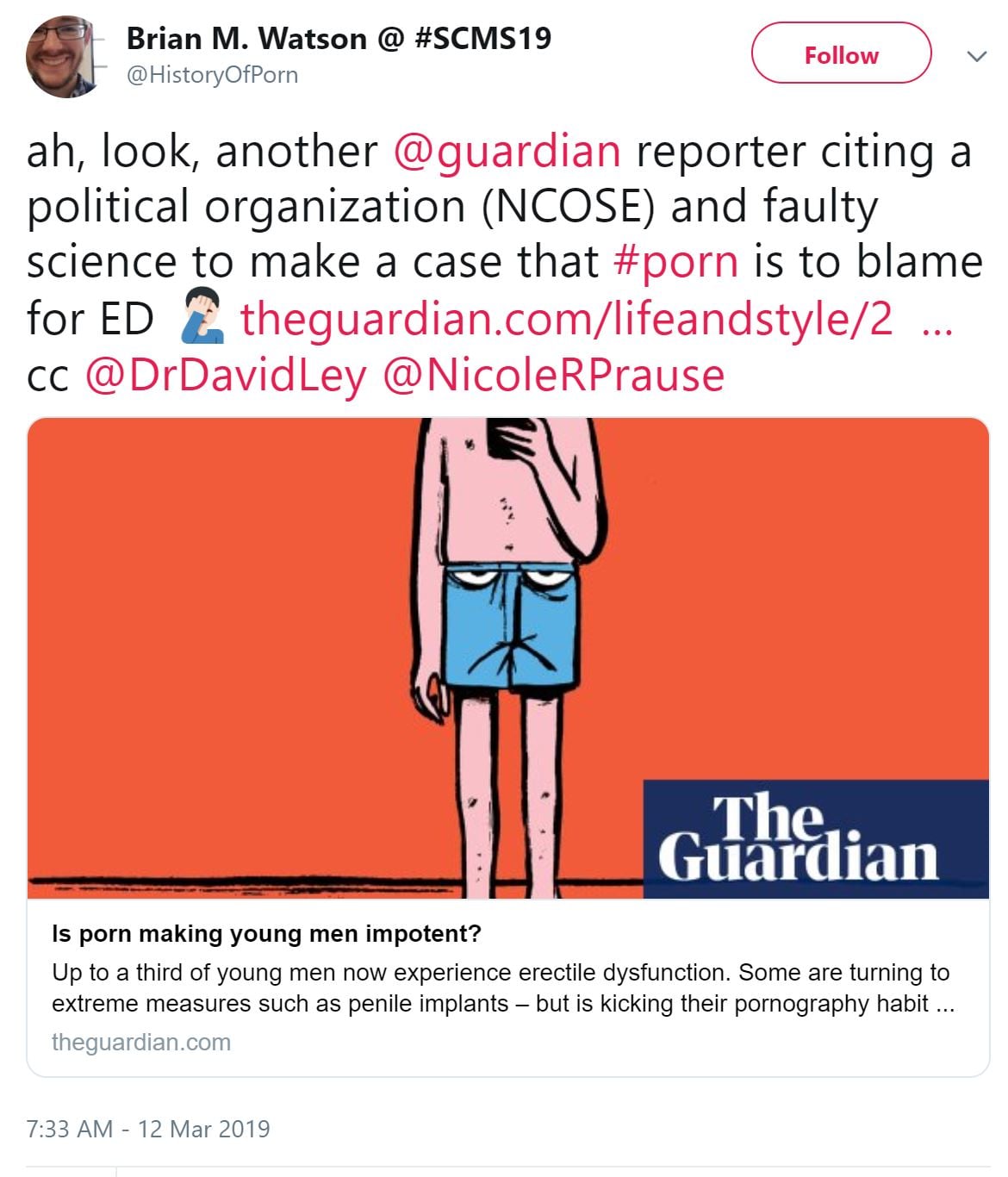
Nope, The Guardian article didn’t “cite” NCOSE. It quoted one sentence from a NCOSE talk by Rhodes who has been featured at conferences, on TV & radio, podcasts, and in over a hundred different media outlets.
——————
David Ley and Nicole Prause teaming up to misrepresent the science. Prause mentions her upcoming “Orgasmic Meditation” study: adult performer Ruby the Big Rubousky, who is vice president of the Adult Performers Actors Guild, has stated that Prause obtained porn performers as study subjects through the most prominent porn industry interest group, the Free Speech Coalition.
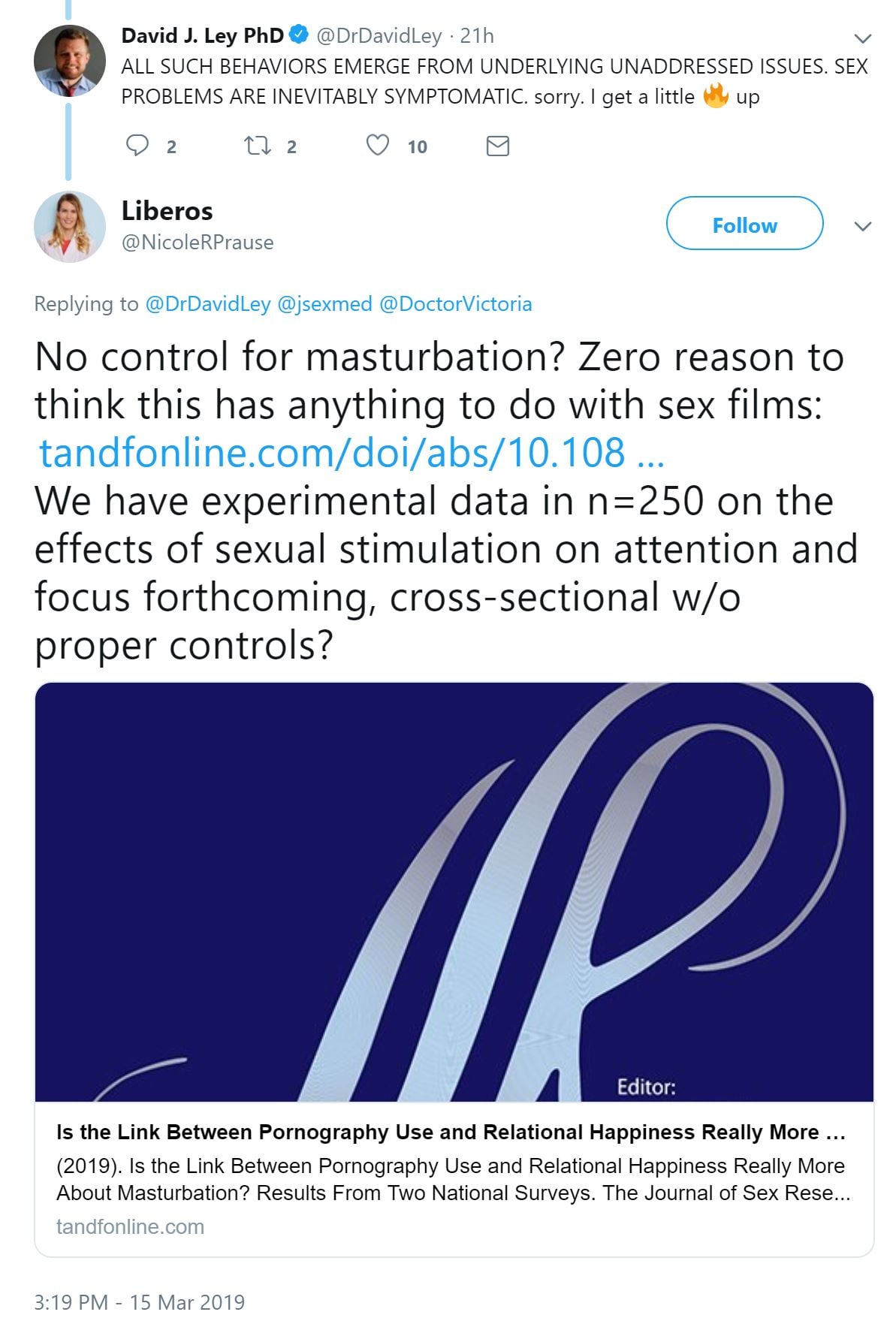
For more see – The Free Speech Coalition allegedly provided subjects for a Prause study that “debunks” porn addiction.
———————-
Trolling the BBC with an irrelevant excerpt form her pro-porn commentary:
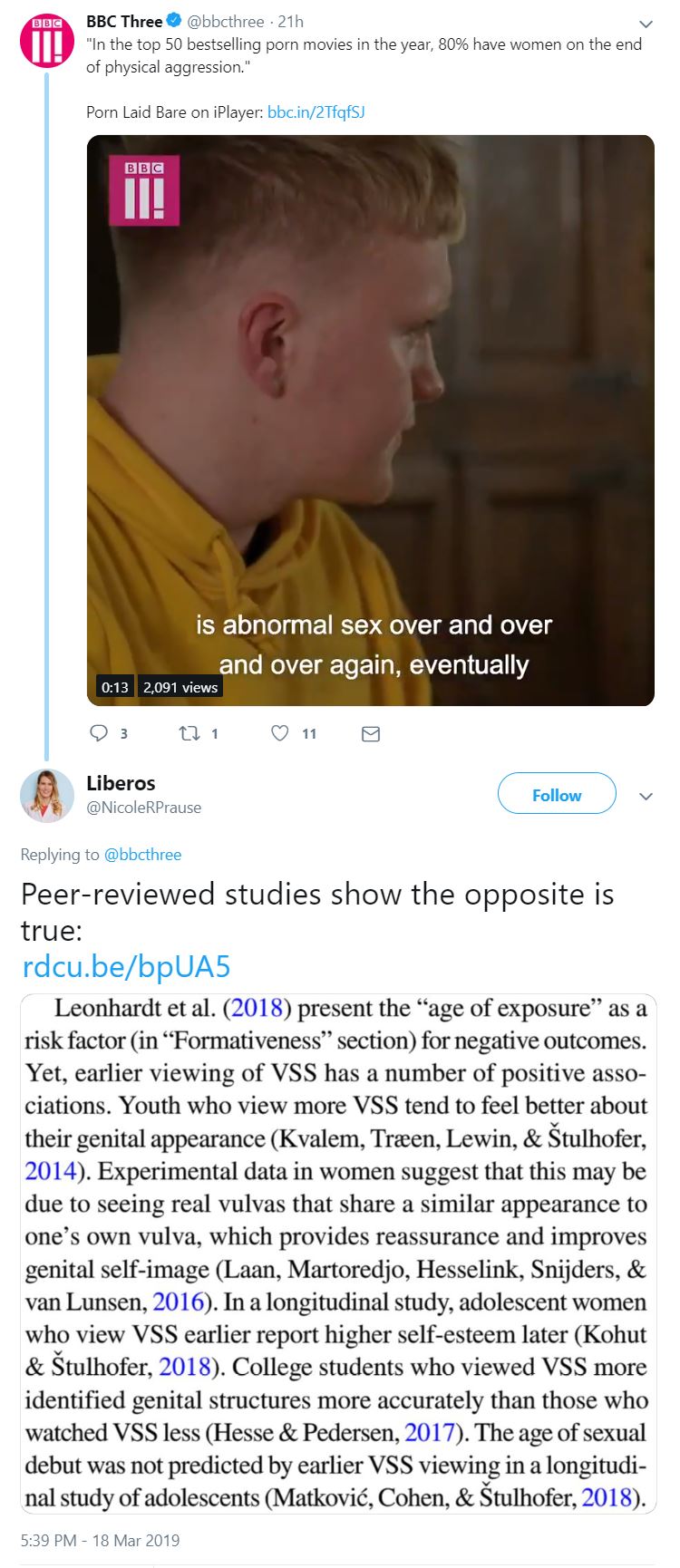
In response to BBC citing a study about the level of aggression in porn, Prause cites her commentary, posting a section that has nothing to do with the level of aggression in pornography videos. Her commentary is debunked here (including the section she posted): Critique of Nicole Prause’s “Porn Is for Masturbation” (2019)
———————-
Prause, David Ley and Geoffrey Miller tweet togther as trolls, mispresenting the ICD-11, and the state of the research:
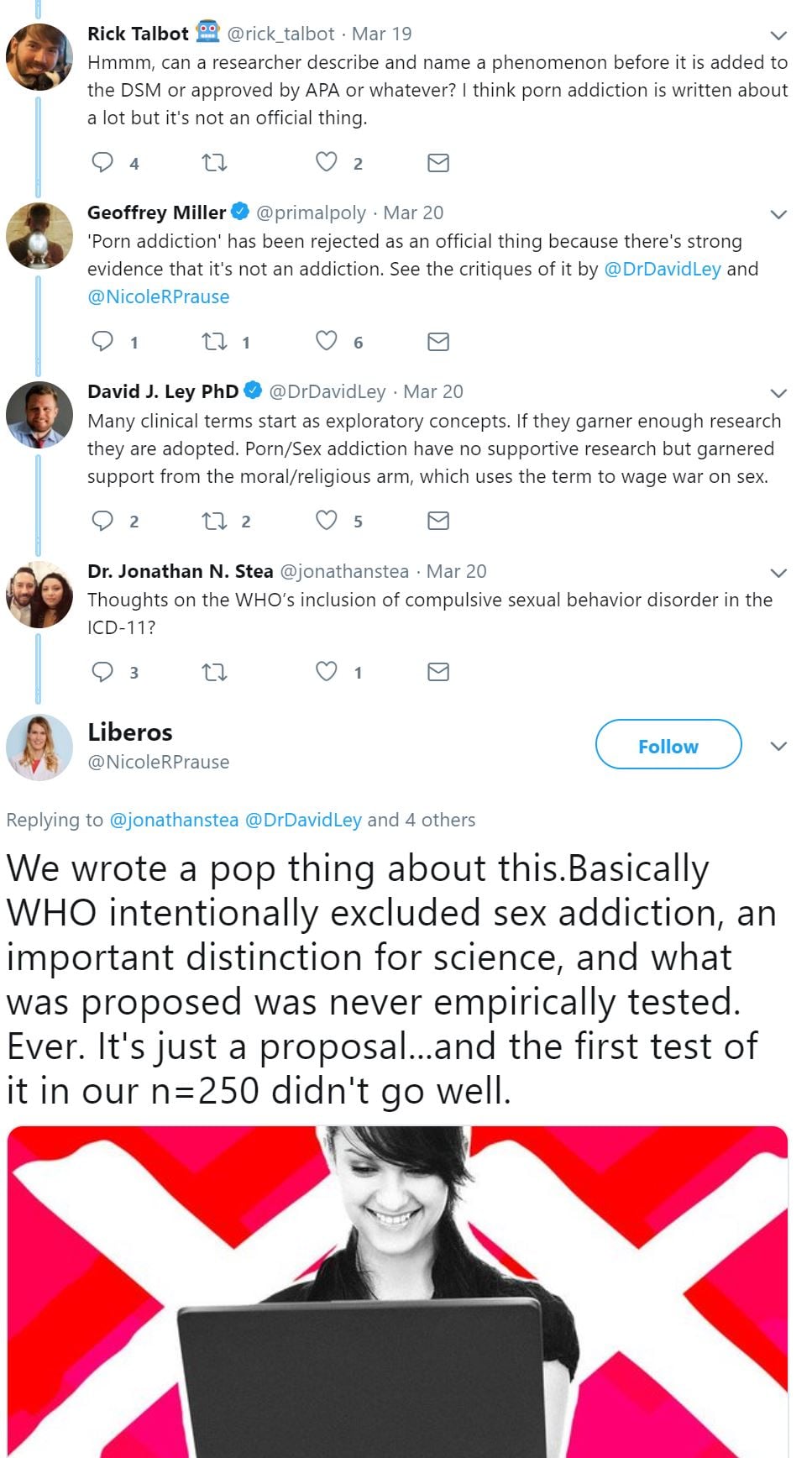
As usual Prause posts her already debunked SLATE article: – Debunking “Why Are We Still So Worried About Watching Porn?” by Marty Klein, Taylor Kohut, and Nicole Prause (2018)
—————————-
Ley and Prause troll an NPR podcast, telling the world that there are well-funded religious anti-porn groups, while ignoring the multi-billion dollar porn industry.
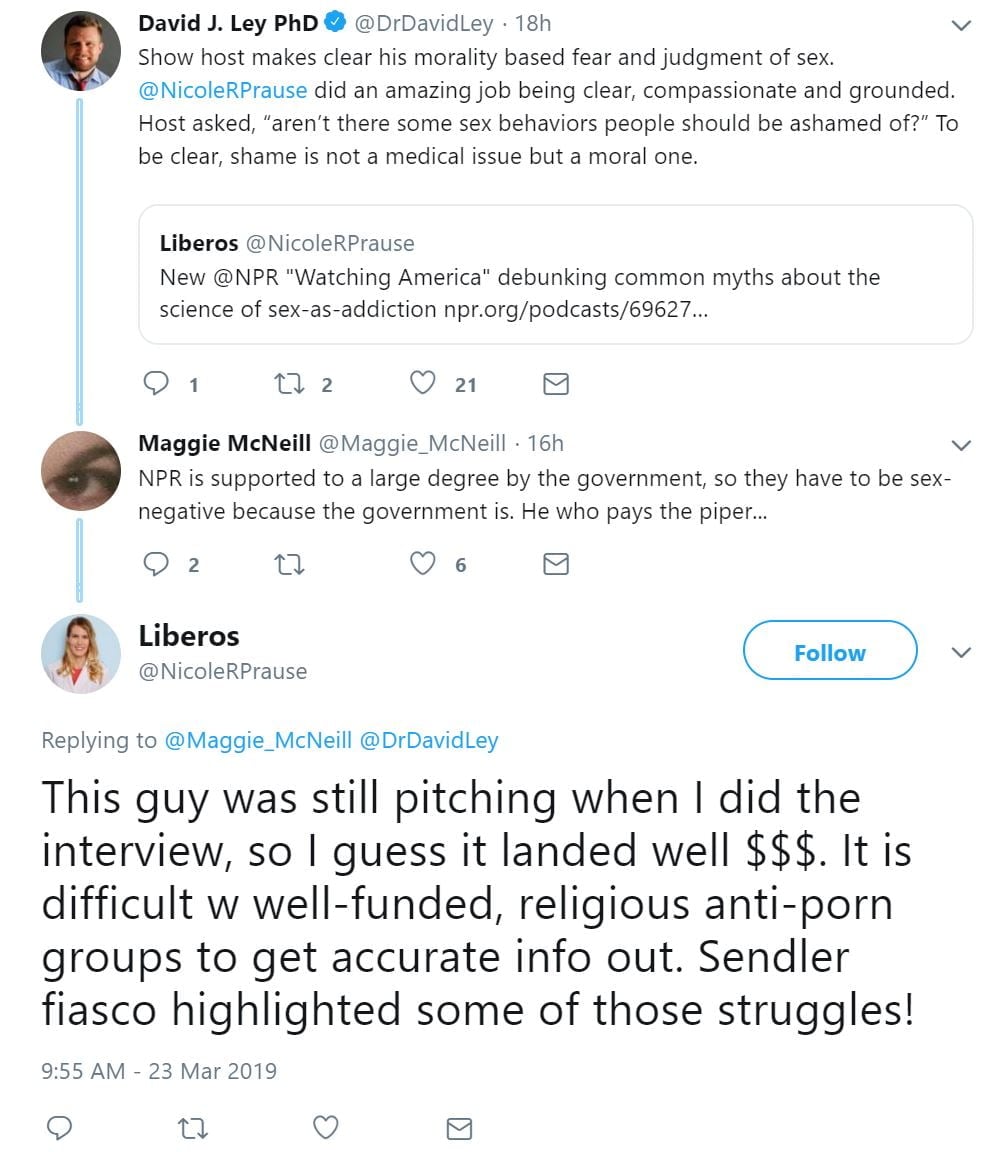
Prause omits a few details such as a porn performer union officer saying she obtained porn performers as subjects via the most prominent porn industry interest group, the Free Speech Coalition. Or the documented fact that in 2015 the Free Speech Coalition offered Prause “assistance.” Prause then immediately attacks Prop 60 (condoms in porn).
—————————-
Trolling a well known feminist with her debunked Lancet commentary. Probably because someone tweeted Wilson’s TEDx talk:
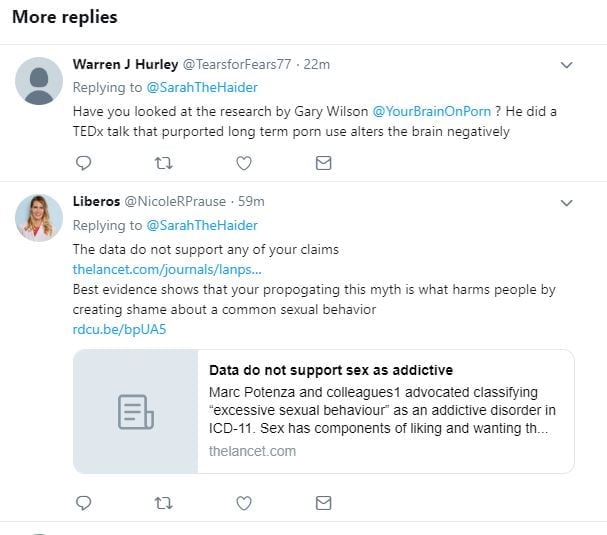
Everything in Prause’s 240-word letter to Lancet is completely debunked in this extensive critique: Analysis of “Data do not support sex as addictive” (Prause et al., 2017). The real experts’ opinions on porn/sex addiction? This list contains 21 recent literature reviews & commentaries by some of the top neuroscientists in the world. All support the addiction model.
Not surprisingly, David Ley joins Prause on the same thread to spread his verion of reality (which doesn’t match the preponderance of the research)
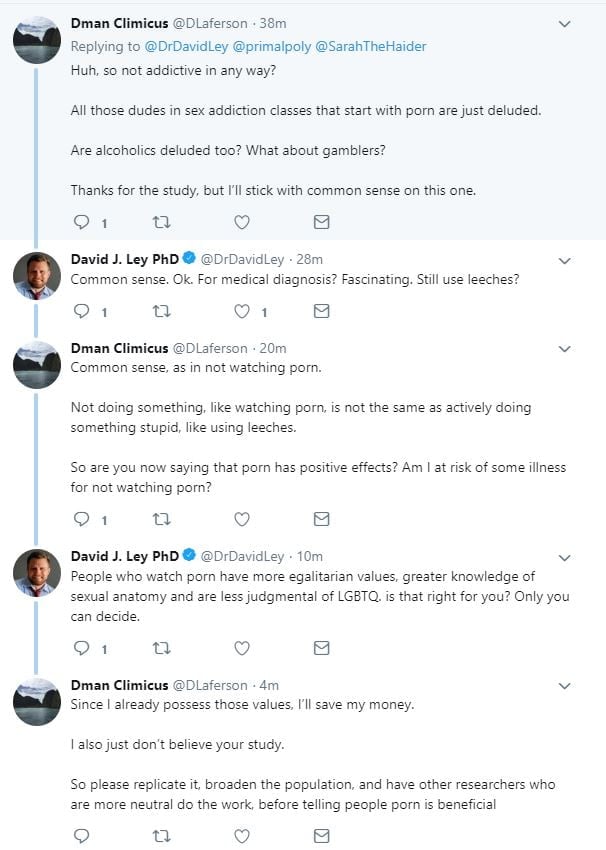
Dman Climicus doesn’t buy Ley’s propaganda. He shoudn’t, as over 25 studies link porn use to “un-egalitarian attitudes” toward women and sexist views. A summary from this 2016 meta-analysis exposes Ley as a liar – Media and Sexualization: State of Empirical Research, 1995–2015:
The goal of this review was to synthesize empirical investigations testing effects of media sexualization. The focus was on research published in peer-reviewed, English-language journals between 1995 and 2015. A total of 109 publications that contained 135 studies were reviewed. The findings provided consistent evidence that both laboratory exposure and regular, everyday exposure to this content are directly associated with a range of consequences, including higher levels of body dissatisfaction, greater self-objectification, greater support of sexist beliefs and of adversarial sexual beliefs, and greater tolerance of sexual violence toward women. Moreover, experimental exposure to this content leads both women and men to have a diminished view of women’s competence, morality, and humanity.
————————-
Trolling again, falsely stating the WE found that more porn use, in a few selected countries, was related to fewer reported rapes:
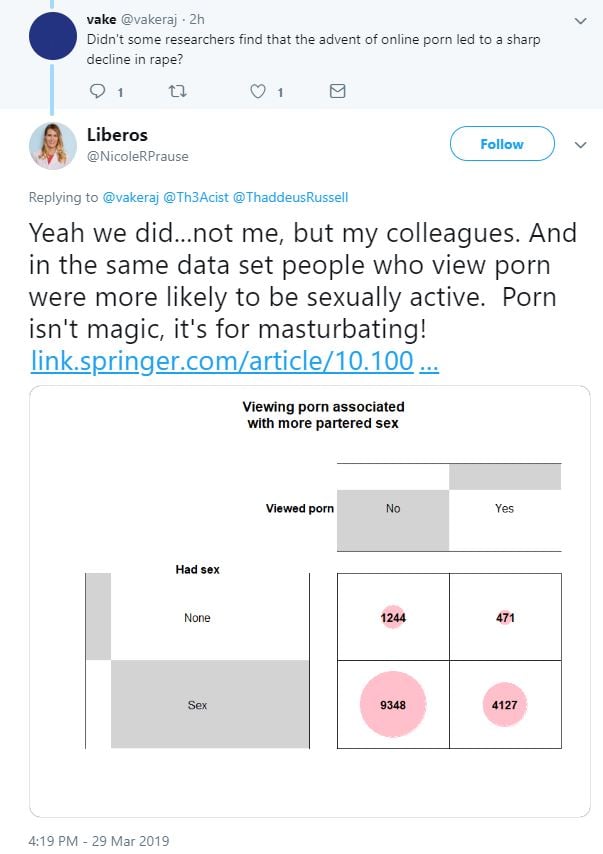
But that’s not really true. See – Rape rates are on the rise, so ignore the pro-porn propaganda (2018)
———————–
Once again, attacking the concept of “porn as a public health problem”:
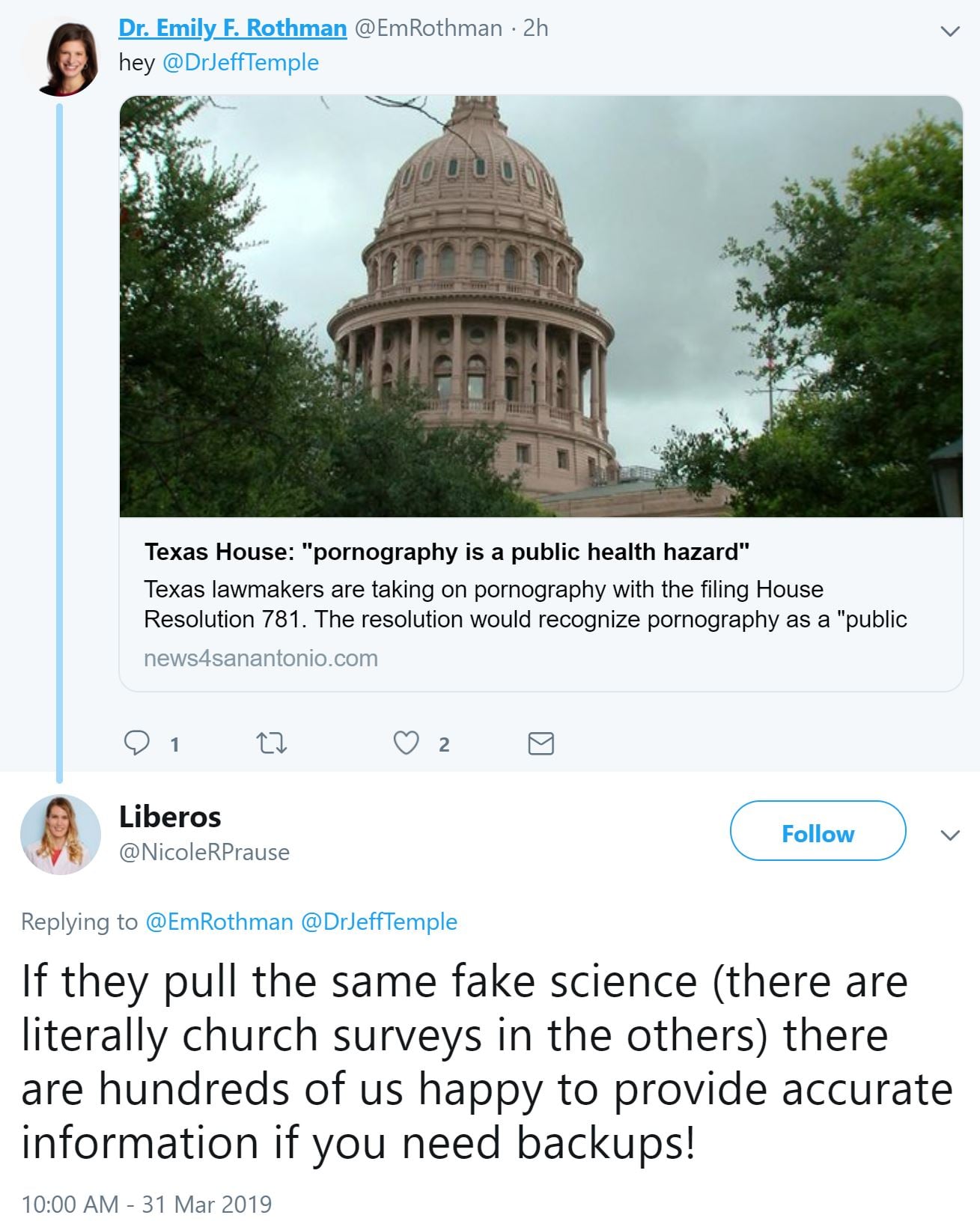
Cites nothing. Falsely claims “fake science.” Offers her help.
———————–
Two lies in one tweet: 1) No, treating porn addiction is not analogous to conversion therapy. 2) Wrong – the world’s most widely used medical diagnostic manual, The International Classification of Diseases (ICD-11), contains a new diagnosis suitable for porn addiction: “Compulsive Sexual Behavior Disorder.”
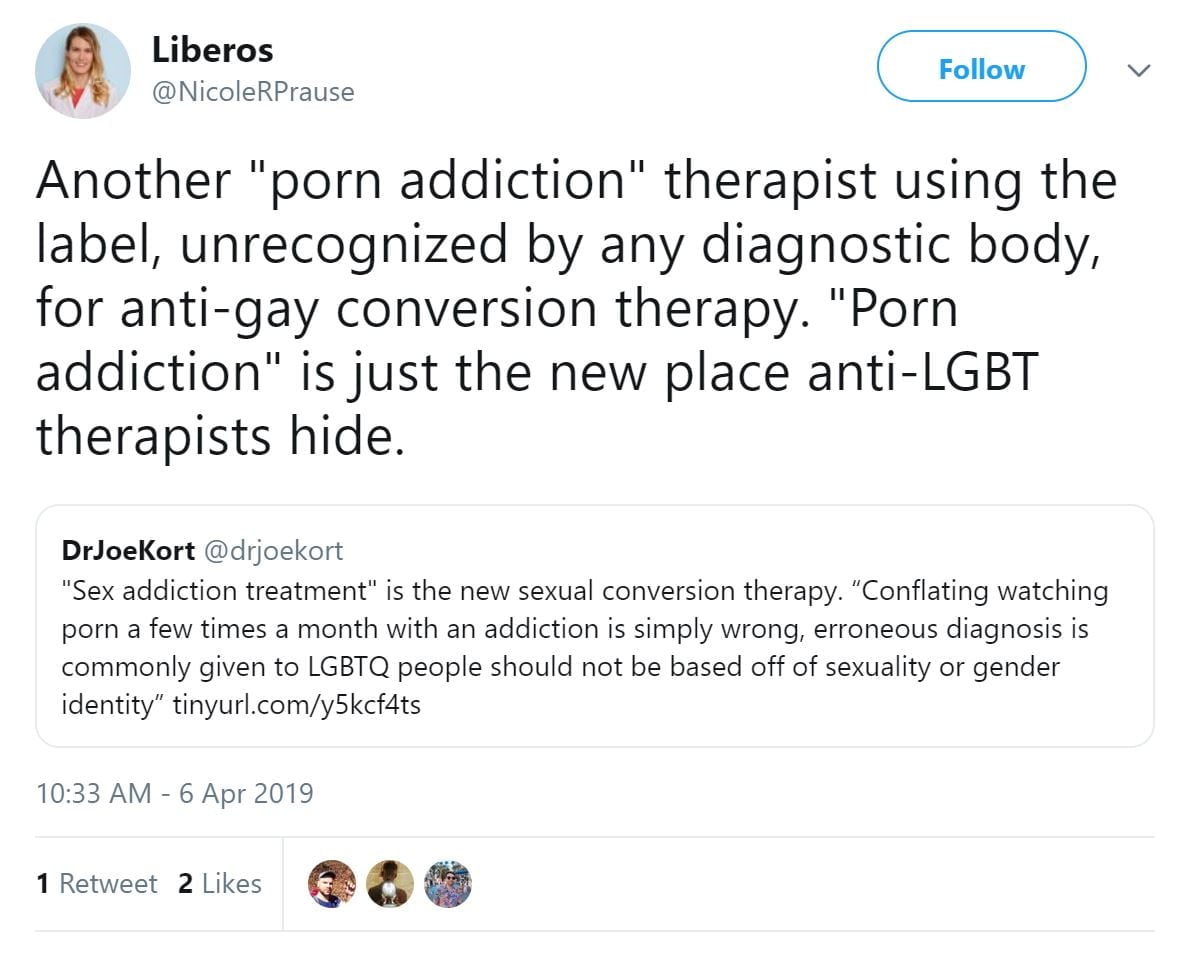
Close friend Joe Kort joins in:

In the same thread, Prause posts her 240-word letter to Lancet, which is completely debunked in this extensive critique: Analysis of “Data do not support sex as addictive” (Prause et al., 2017):
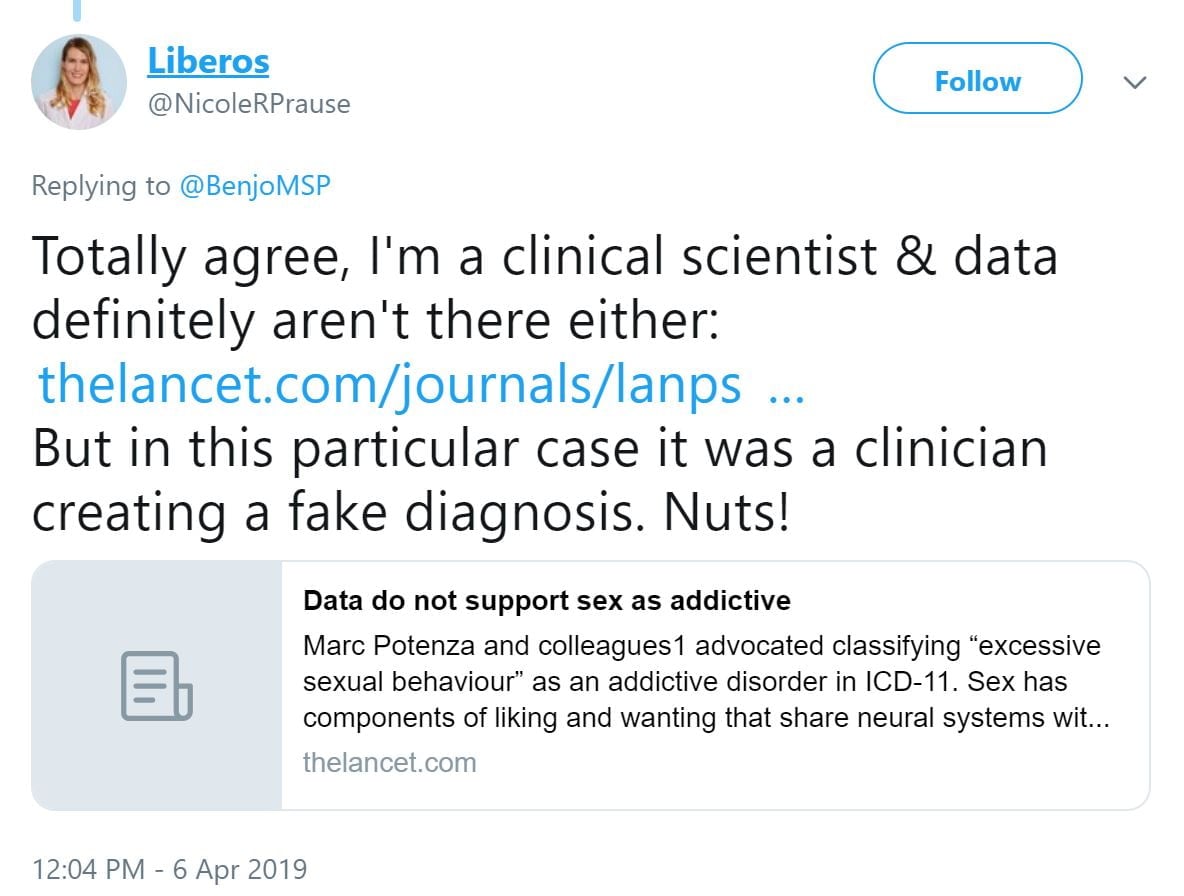
The real experts’ opinions on porn/sex addiction? This list contains 21 recent literature reviews & commentaries by some of the top neuroscientists in the world. All support the addiction model.
——————–
April, 2019 tweet misrepresents a new study:
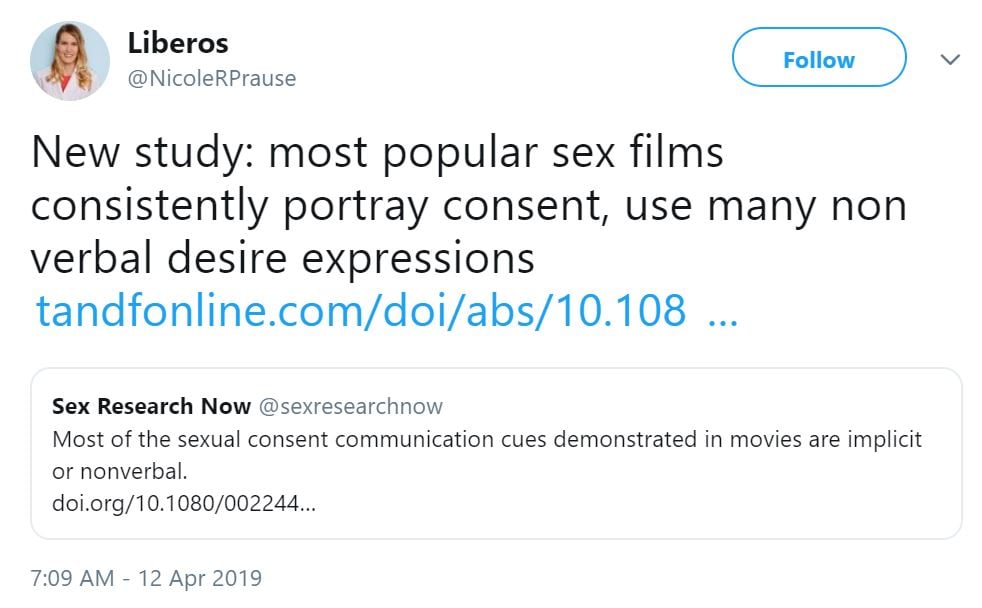
The study says nothing about “sex films” (“Sex films” is Prause’s phrase for porn. She never says porn). Excerpt from methodolgy section of the study:
“The goal of the current study was to evaluate sexual consent and refusal depictions portrayed in mainstream films that are readily consumed by young adults.”
———————–
Trolling a thread to cite a cherry-picked study and her own debunked opinion piece. First tweet claims that masturbation, not porn, is the problem (great talking point for the porn industry!):

After sophisticated statistical “modeling” the above Samuel Perry study proposed that masturbation, not porn use, is the real culprit in relationship problems. The gaping hole in Perry’s claim:
- Perry’s new analysis of his old data contains no specific, reliable data on masturbation frequency. Without that, his claim is little more than a hypothetical.
- Perry’s assertions are countered by over 70 studies linking porn use to lower sexual and relationship satisfaction (including 7 longitudinal studies). As far as we know all studies involving males have reported more porn use linked to poorer sexual or relationship satisfaction.
Prause continues, citing her own propaganda:
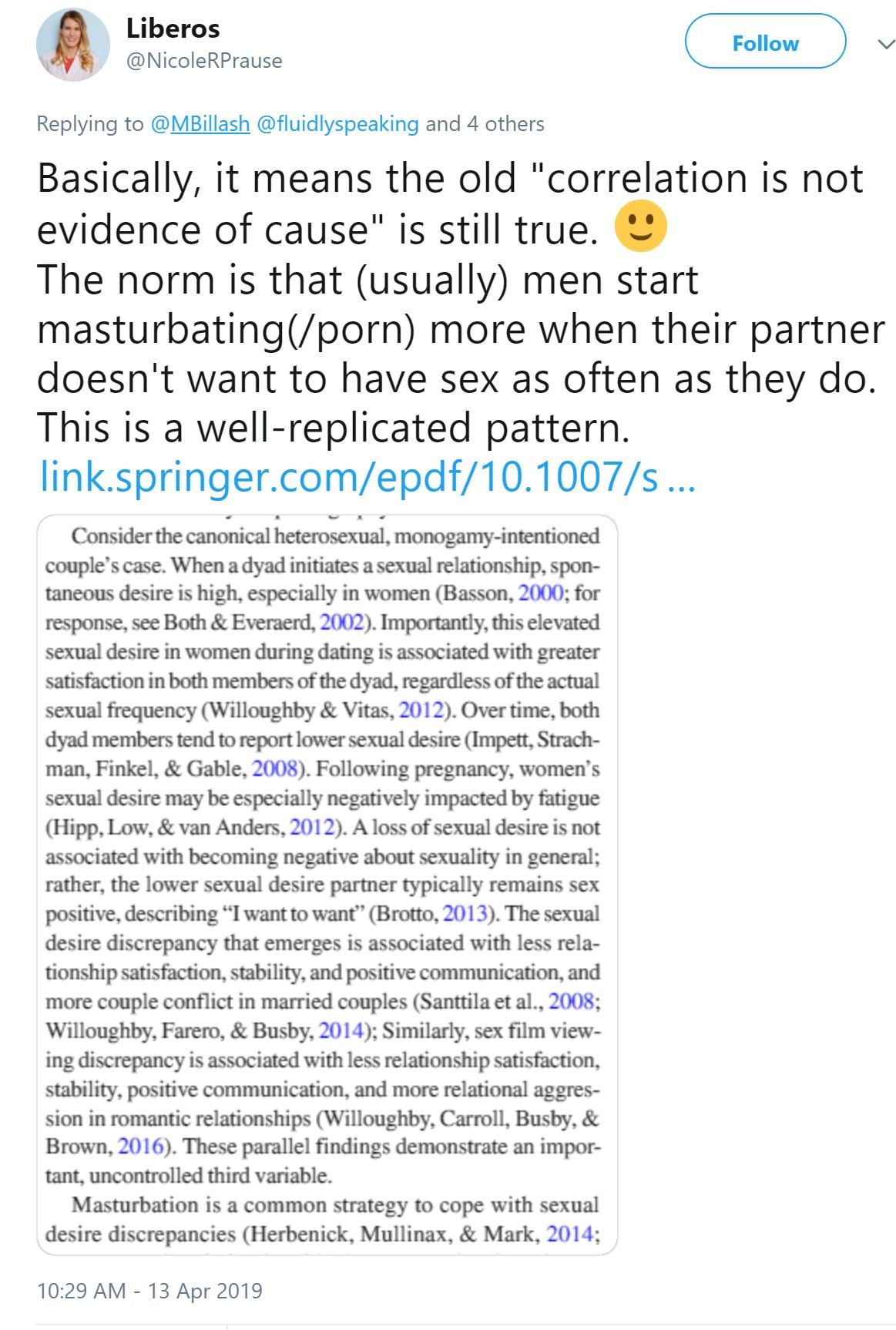
Her letter to the editor, with same-old unsupported assertions and cherry-picked papers, is debunked here: Critique of Nicole Prause’s “Porn Is for Masturbation” (2019)
In this back & forth on the same thread, she continues to say that porn can’t be the cause of any problems:
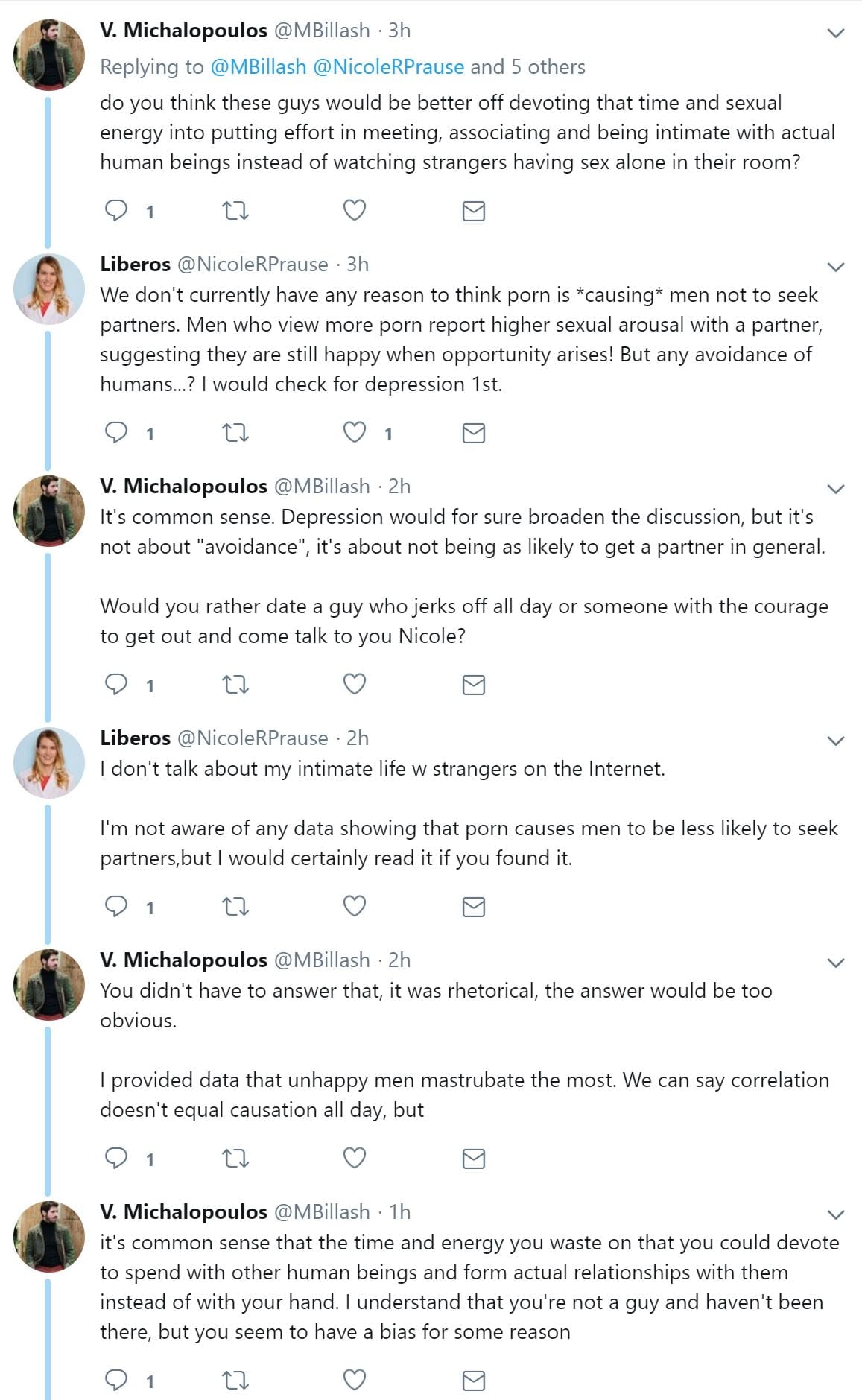
Prause makes 2 unsupported suggestions:
1) Men who view porn have higher sexual desire. Nope – At least 25 studies falsify the claim that sex & porn addicts “just have high sexual desire.” Even her own study debunked this claim: (Steele et al., 2013) – This EEG study was touted in the media as evidence against the existence of porn/sex addiction. Not so. Steele et al. 2013 actually lends support to the existence of both porn addiction and porn use down-regulating sexual desire. How so? The study reported higher EEG readings (relative to neutral pictures) when subjects were briefly exposed to pornographic photos. Studies consistently show that an elevated P300 occurs when addicts are exposed to cues (such as images) related to their addiction. In line with the Cambridge University brain scan studies, this EEG study also reported greater cue-reactivity to porn correlating with less desire for partnered sex. To put it another way – individuals with greater brain activation to porn would rather masturbate to porn than have sex with a real person. Shockingly, study spokesperson Prause claimed that porn users merely had “high libido,” yet the results of the study say the exact opposite (subjects’ desire for partnered sex was dropping in relation to their porn use).
2) “Not aware of any data that higher use of porn would cause men to be less likely to seek partners.” Really? Porn’s effects on relationships – Over 80 studies link porn use to less sexual and relationship satisfaction. As far as we know all studies involving males have reported more porn use linked to poorer sexual or relationship satisfaction.
——————
Prause tweets an article that defends porn stars who violate social media terms of use. The article, by pro-porn journalist Tracy Clark-Flory, outs a Twitter user who has been reporting porn stars for violating Instagram terms of use: posting porn and sexually explicit language.
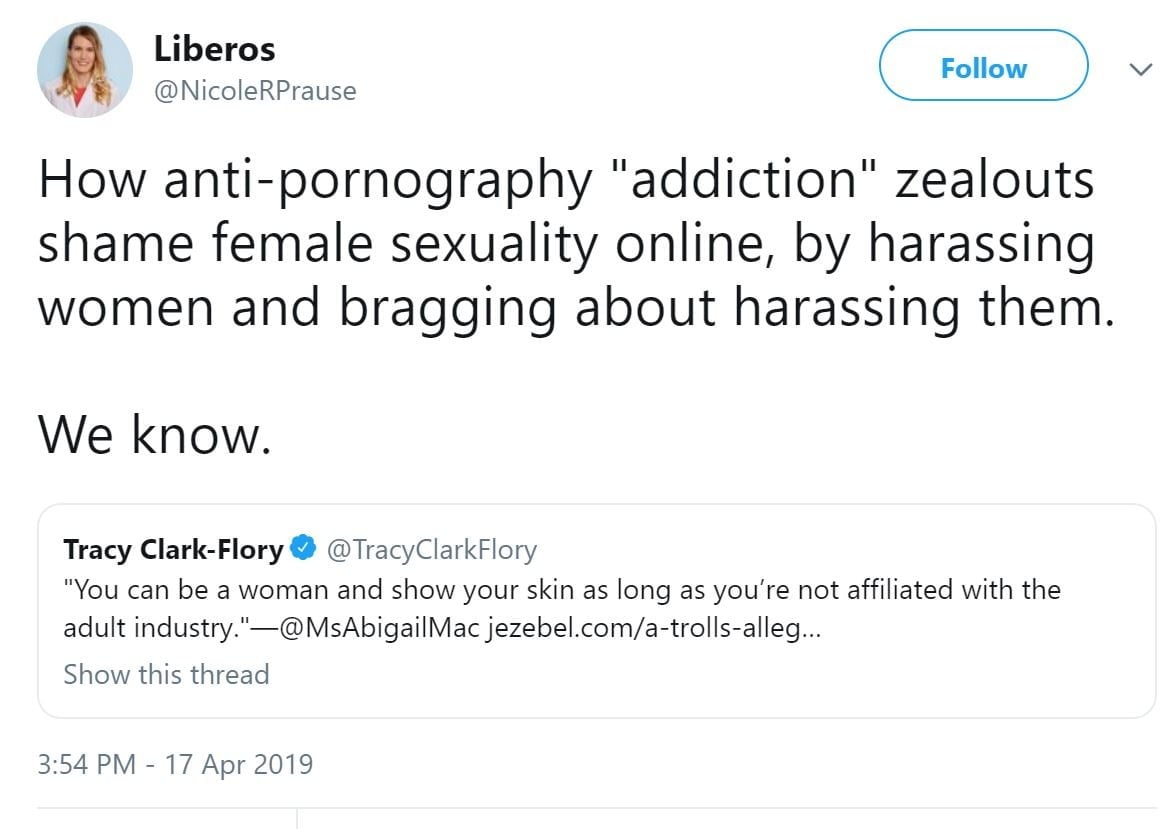
Don’t be fooled by Prause’s fake outrage and spin. Prause may not like it, but Facebook, Instagram and Twitter have no probelm with the Twitter user reporting violations.
———————-
Fabricating irrelevant nonsense in an attempt to discredit state resolutions proclaiming porn as a public health issue:
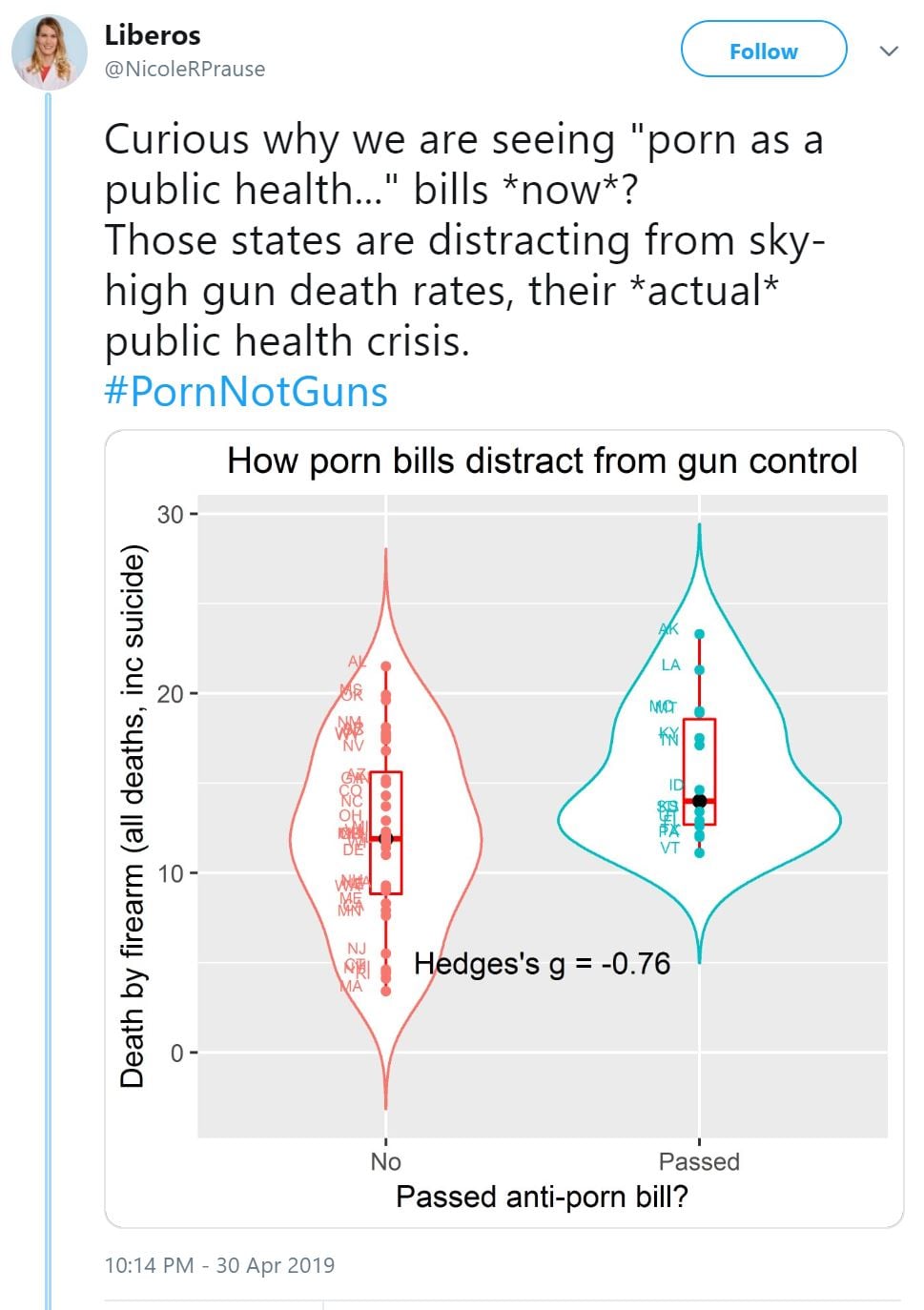
————————-
Since she’s been using the RealYBOP Twitter as her primary account, few tweets have appeared from @NicoleRPrause. But she decided to retweet an attack on state resolutions:
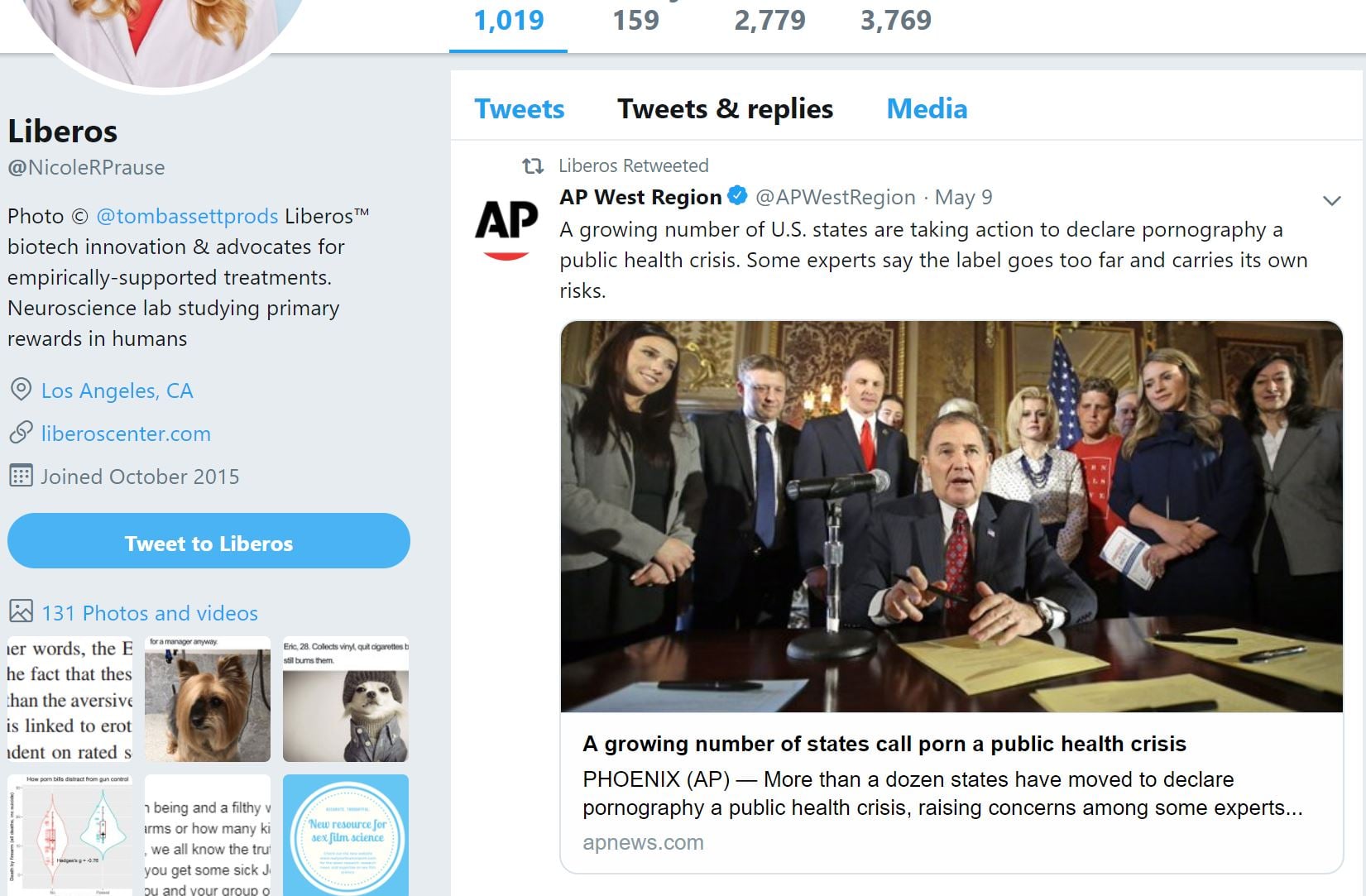
——————–
May 10, 2019: another attack on state resolutions:
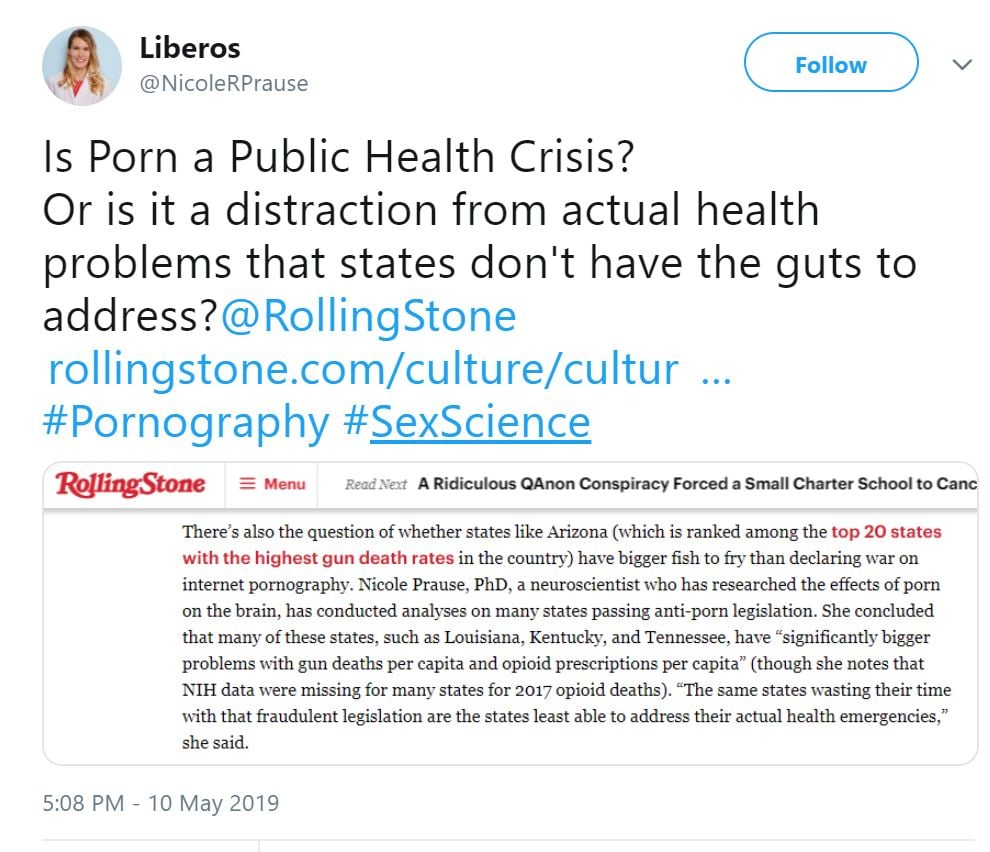
———————–
Onec again, disparaging state resolutions:
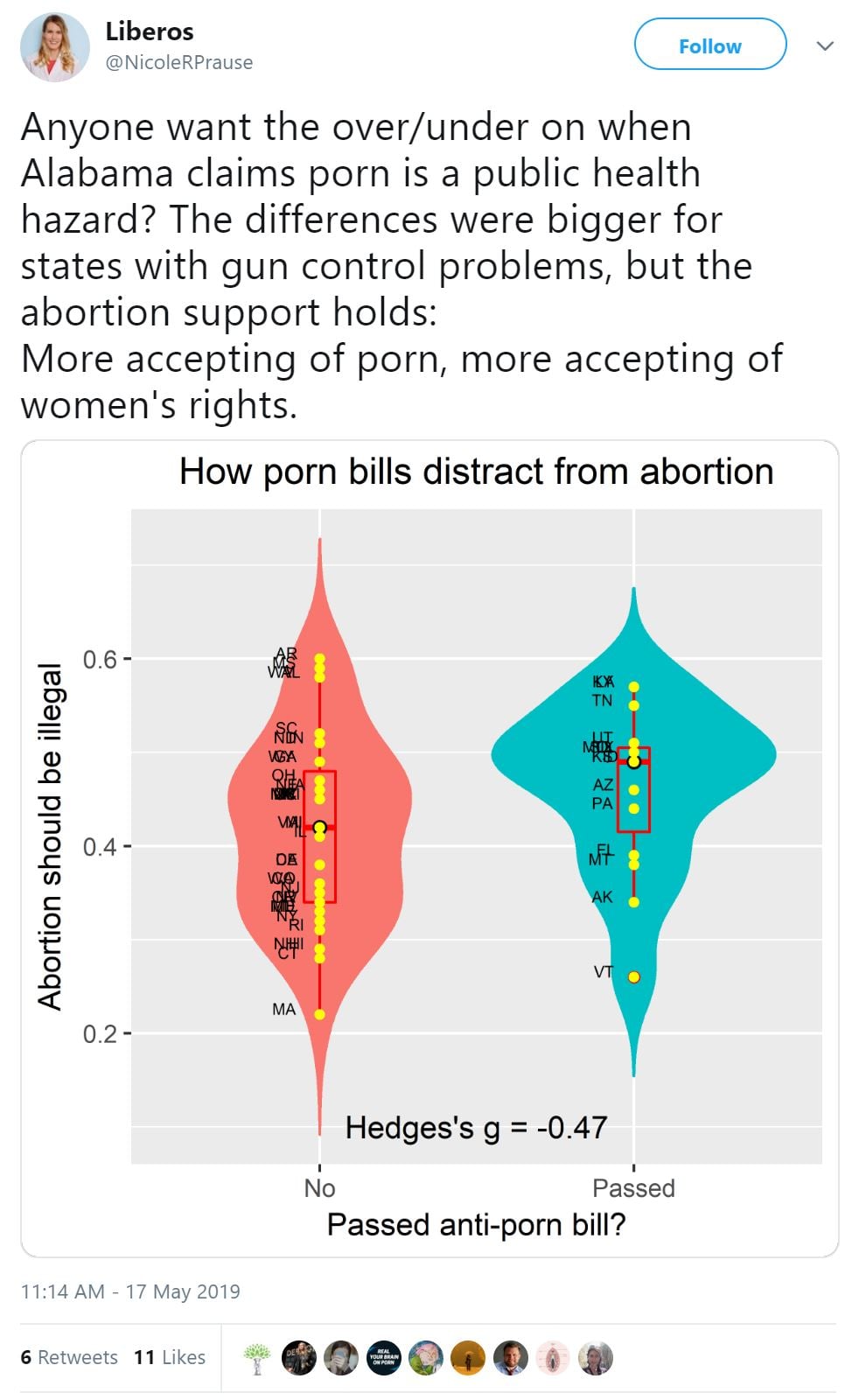
———————-
May 18, 2019. Going out her way to disparage state resolutions:
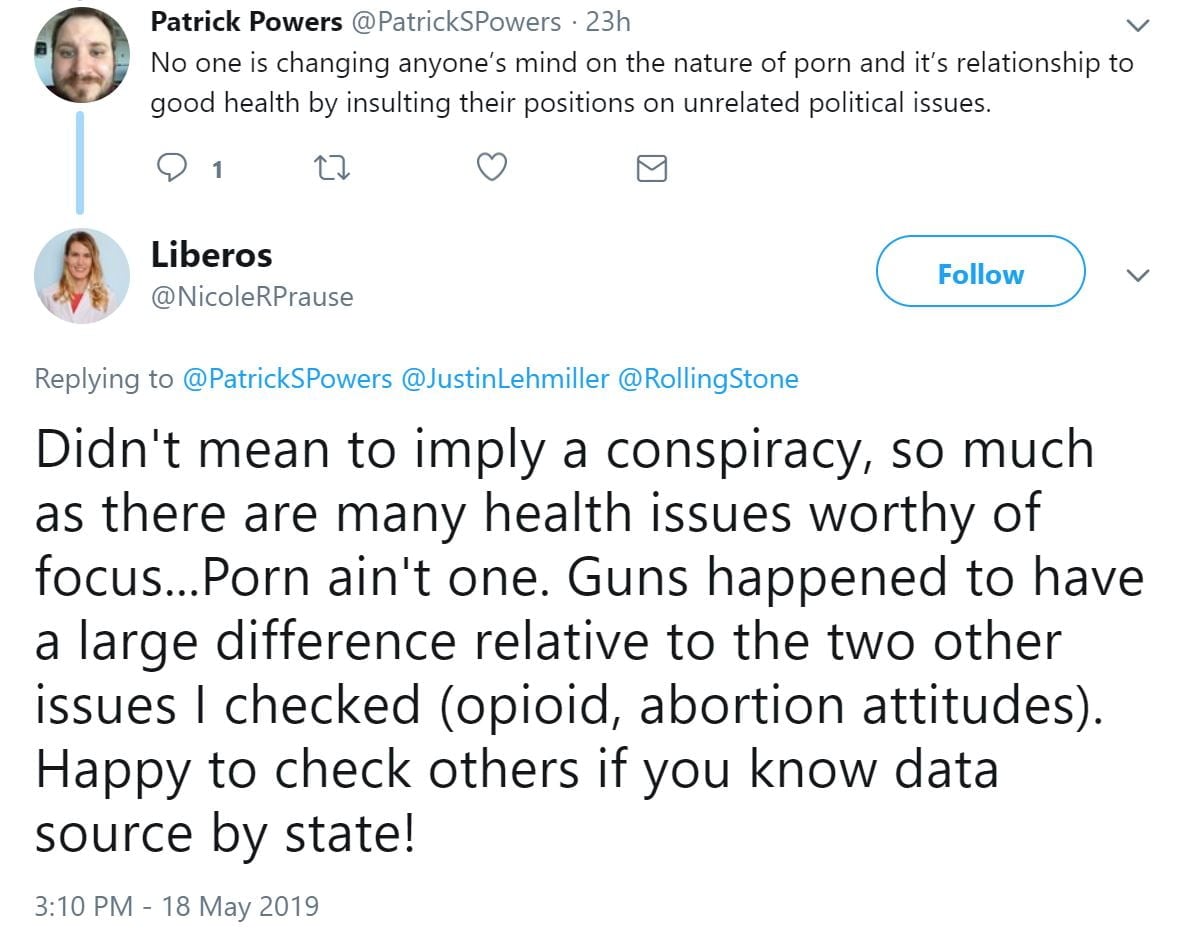
———————
Promoting porn use for masturbation (Prause never tweets a study reporting negative effects of porn, even though such studies are in the majority):
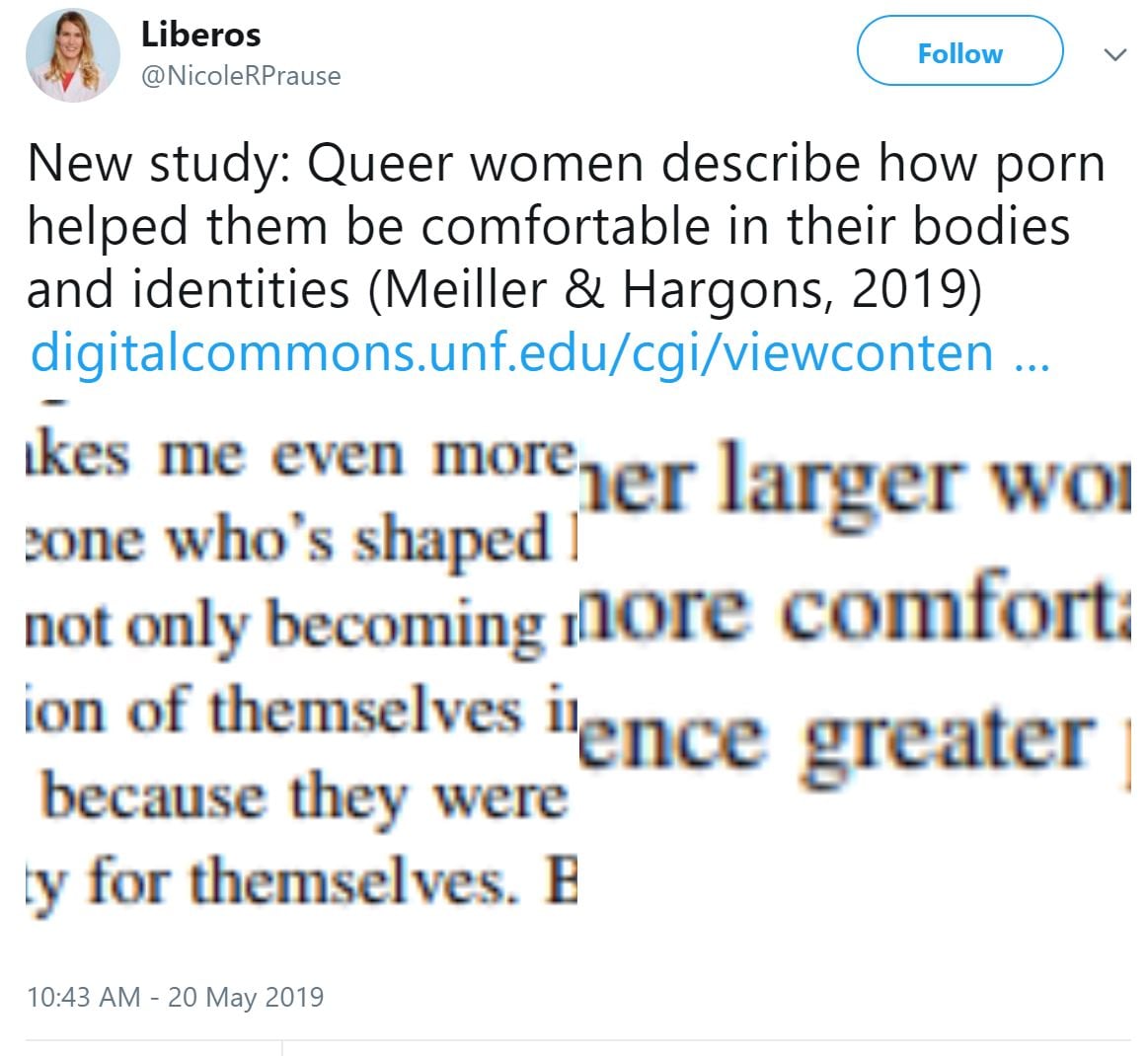
Prause cherry-picked. Excerpts not shared:
Having mixed feelings towards porn. Participants reflected on the negative ways porn has treated their identities, specifically as bisexual and queer women. Participants struggled with how to enjoy and feel comfortable in their use of porn during their masturbation, while understanding the larger societal impacts of the messages within porn. Joan
shared:I think there’s a real big stigma for women, much less queer women to look at porn, you know? It’s demeaning to women, it’s only made for men, especially if you’re a queer woman, you hear that one a lot
Joan went on to describe how she has started giving herself permission to look at porn and go against some of these messages. Gloria experienced guilt for looking at porn because “porn really informs a lot of straight people’s ideas about gay and lesbian sex, and I feel guilty for looking it up and getting o on it.” The conflicted feelings towards porn would result in feelings of guilt or decreased pleasure during masturbation for the women interviewed.
———————-
Tweets article quoting her, citing Prause et al., 2015, all to disparage porn addiction:
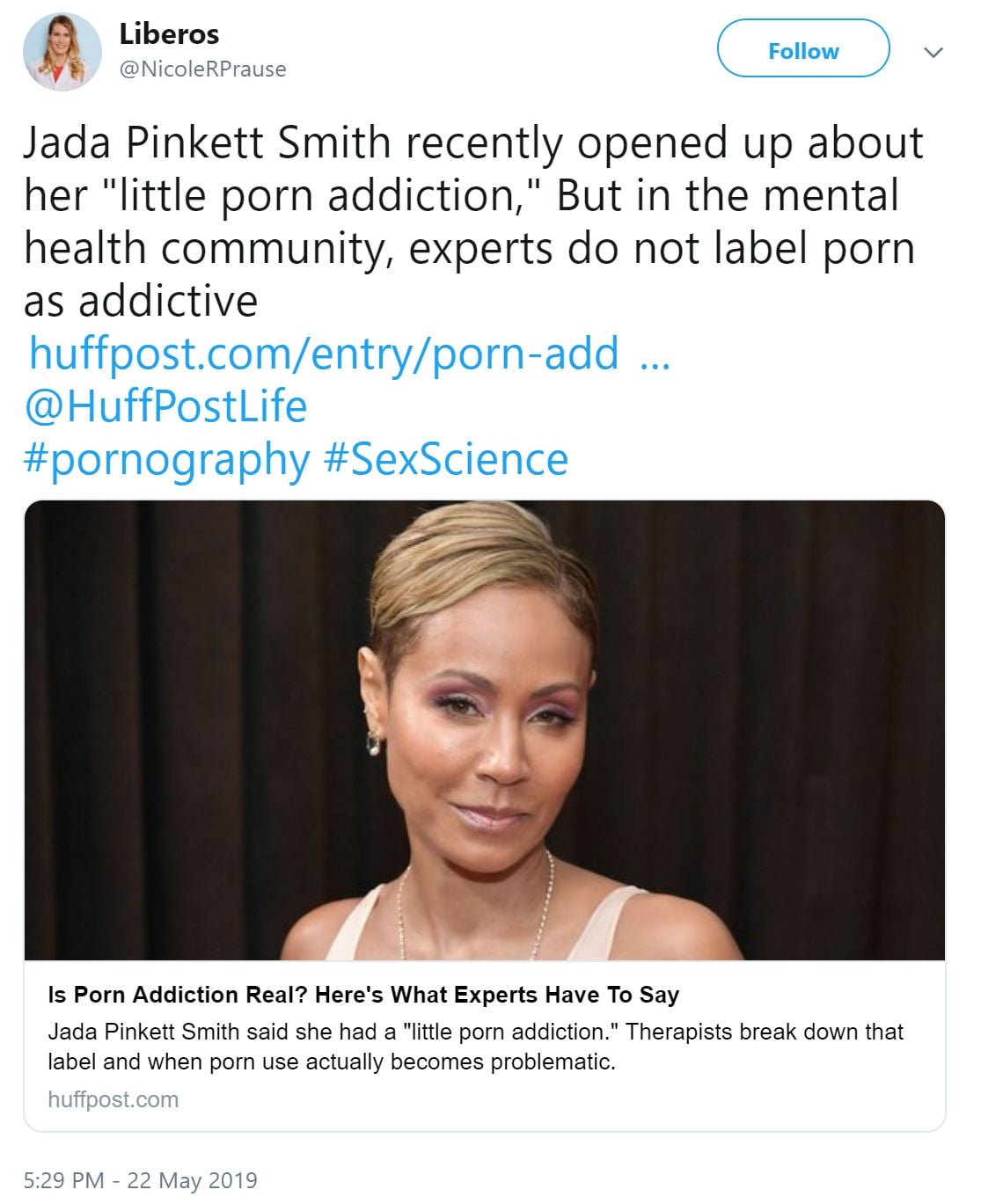
Problem: Prause et al., 2015, isn’t what it appears to be. While Prause boldly asserted that her lone, deeply flawed EEG study had debunked porn addiction, 10 peer-reviewed papers disagree. All eight papers do agree that Prause et al., 2015 actually found desensitization or habituation in the more frequent porn users (a phenomenon consistent with addiction): Peer-reviewed critiques of Prause et al., 2015
Reality: This page lists 55 neuroscience-based studies (MRI, fMRI, EEG, neuropsychological, hormonal). They provide strong support for the addiction model as their findings mirror the neurological findings reported in substance addiction studies. The real experts’ opinions on porn/sex addiction? This list contains 31 recent literature reviews and commentaries by some of the top neuroscientists in the world. All support the addiction model. Signs of addiction and escalation to more extreme material? Over 60 studies reporting findings consistent with escalation of porn use (tolerance), habituation to porn, and even withdrawal symptoms (all signs and symptoms associated with addiction).
———————
Prause and the deniers of porn addiction are agitated because the latest version of the World Health Organization’s medical diagnostic manual, The International Classification of Diseases (ICD-11), contains a new diagnosis suitable for diagnosing what is commonly referred to as ‘porn addiction’ or ‘sex addiction.’ It’s called “Compulsive Sexual Behavior Disorder” (CSBD). Nonetheless, in a bizarre “We lost, but we won” propaganda campaign, Prause continues spin this new diagnosis as a rejection of both “sex addiction” and “porn addiction.” Linking to RealYBOP:
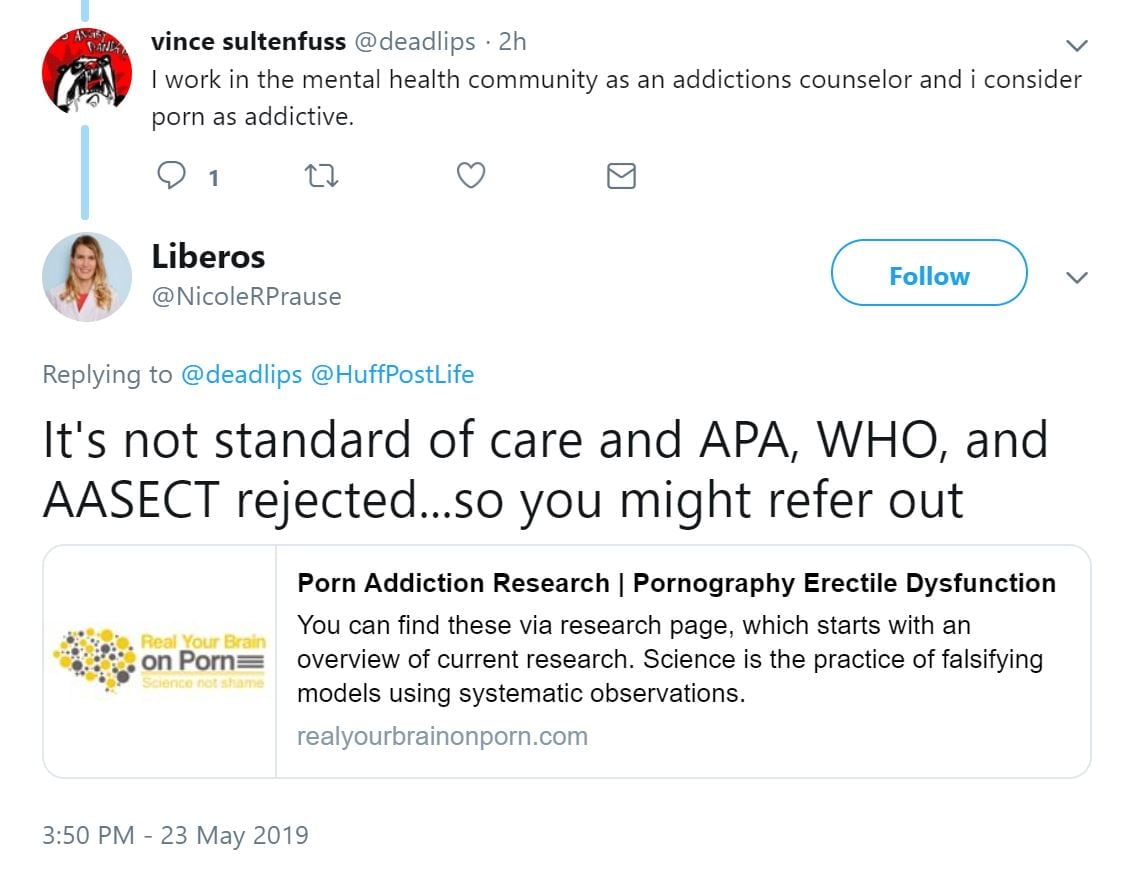
More drivel, linking to RealYBOP:
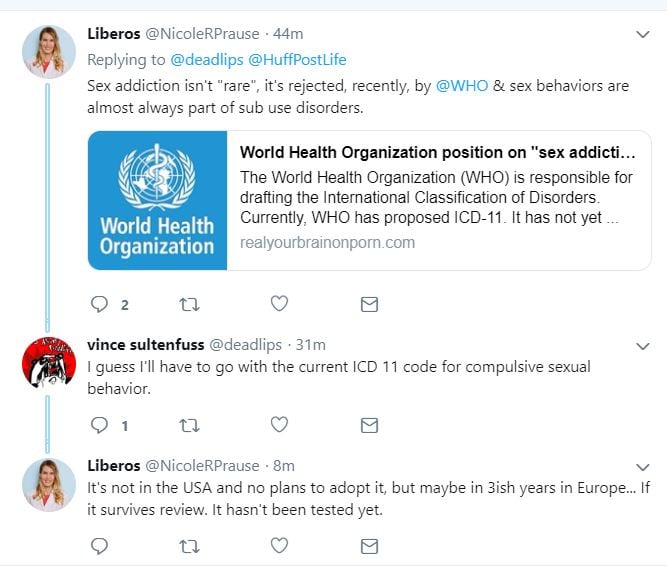
What the public may not know is that neither the ICD-11 nor the APA’s DSM-5 ever uses the word “addiction” to describe an addiction – whether it be gambling addiction, heroin addiction, cigarette addiction, or you name it. Both diagnostic manuals use the word “disorder” instead of “addiction” (i.e. “gambling disorder,” “nicotine use disorder,” and so on). Thus, “sex addiction” and “porn addiction” could never have been rejected, because they were never under formal consideration in the major diagnostic manuals. Put simply, there will never be a “porn addiction” diagnosis, just as there will never be a “meth addiction” diagnosis. Yet individuals with the signs and symptoms of consistent with either a “porn addiction” or a “methamphetamine addiction” can be diagnosed using the ICD-11’s provisions.
For a complete debunking of Prause’s absurd claims, see: Debunking “Why Are We Still So Worried About Watching Porn?” by Marty Klein, Taylor Kohut, and Nicole Prause (2018).
———————
Employing a logical fallacy to spread propaganda.
- A is claimed to be related to B.
- B is said to be related to C.
- C must therefore lead to D (but it doesn’t in this case)
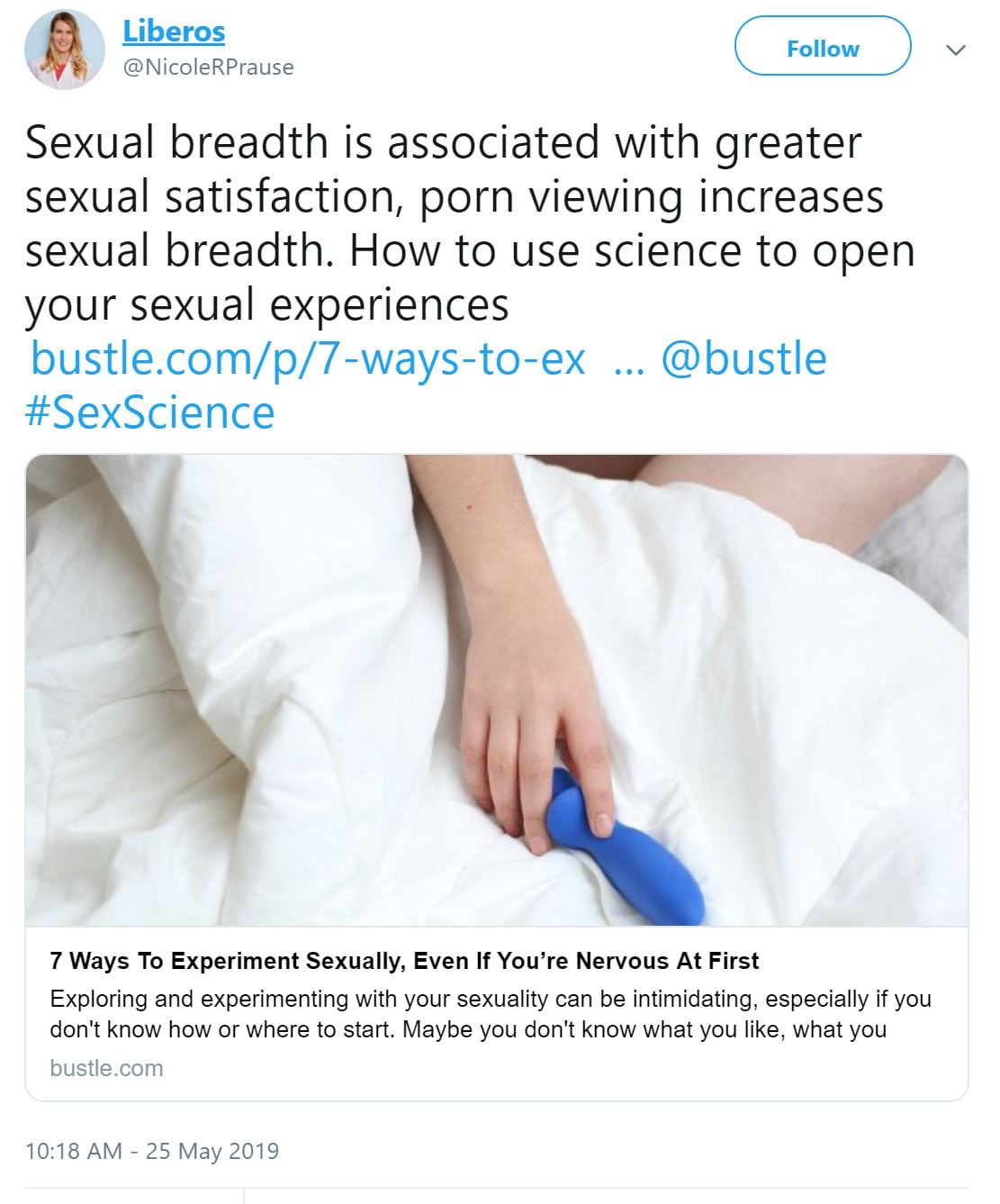
Reality? Over 75 studies link porn use to less sexual and relationship satisfaction. As far as we know all studies involving males have reported more porn use linked to poorer sexual or relationship satisfaction.
———————–
July, 2019. Prause even trolls ally Emily Rothman (who is a member of RealYBOP “expert” team). Prause attempts to cunter a study, with irrelevant drivel:
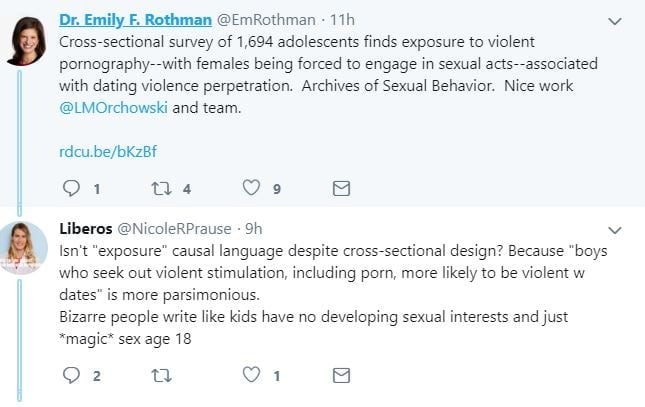
Claims exposure is causal language. What? No one claimed that kids have no developing interests. The convo continues:
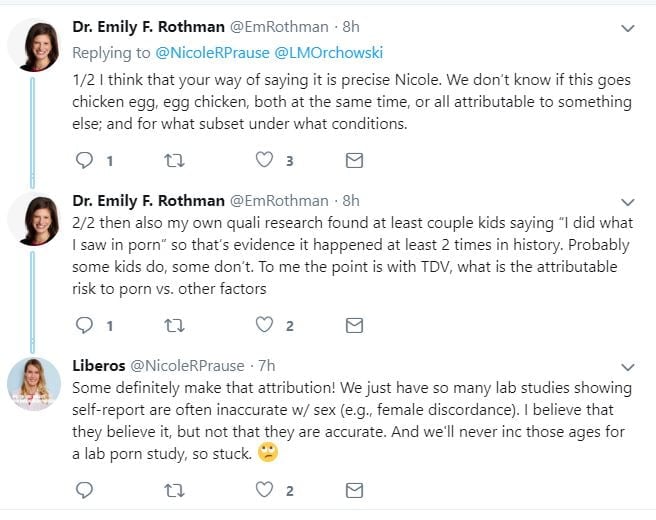
Prause is NOT referring to studies on porn use. She is referring to a couple of her own studies assessing whether anal contractions coincided with self-reported orgasm. This as nothing to do with the subject at hand. Incoherent drivel.
——————-
Misrepresenting a study. She doesn’t care the concept of the Coolidge effect because it was in Wilson’s TEDx talk.
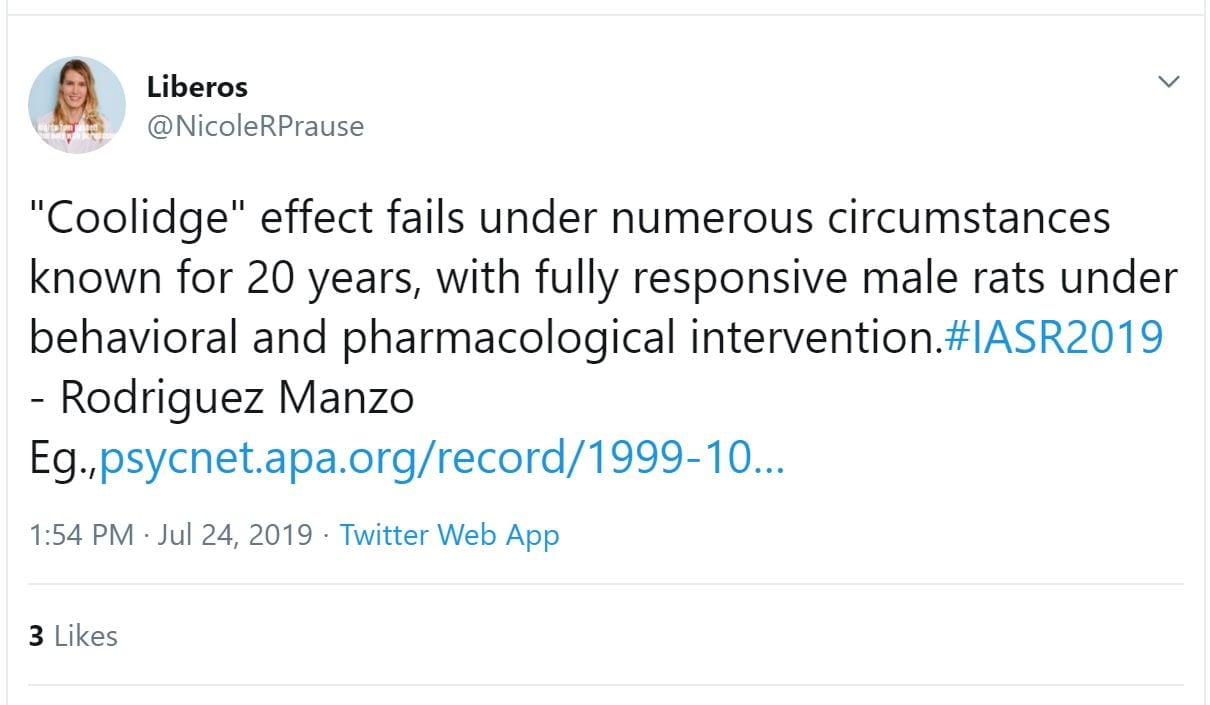
However, the study she linked to supports the Coolidge effect.
——————
Arguing with a gay Medical Doctor about sex and porn addiction (CSBD)
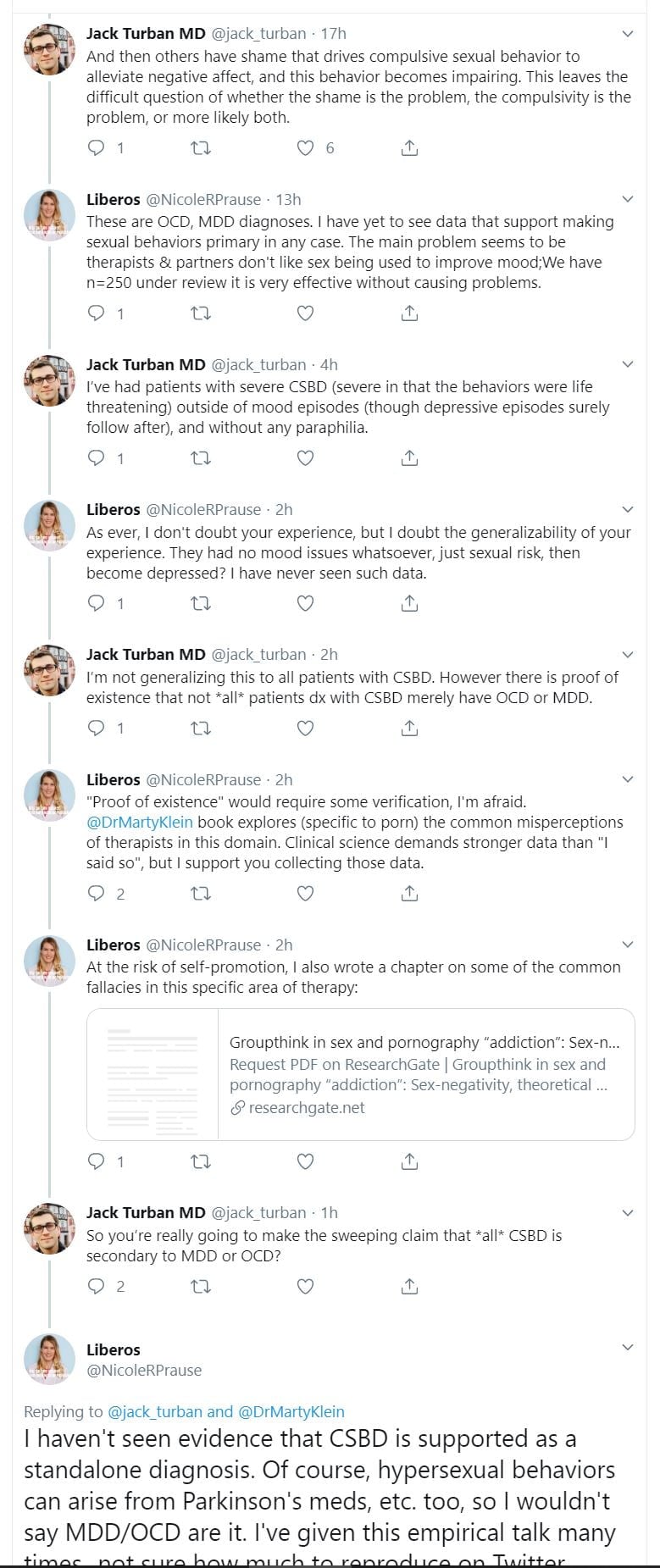
Prause claims that CSBD is really just OCD, but several studies have debunked her unsupported talking point.
—————-
Claims are countered by over 10 studies:
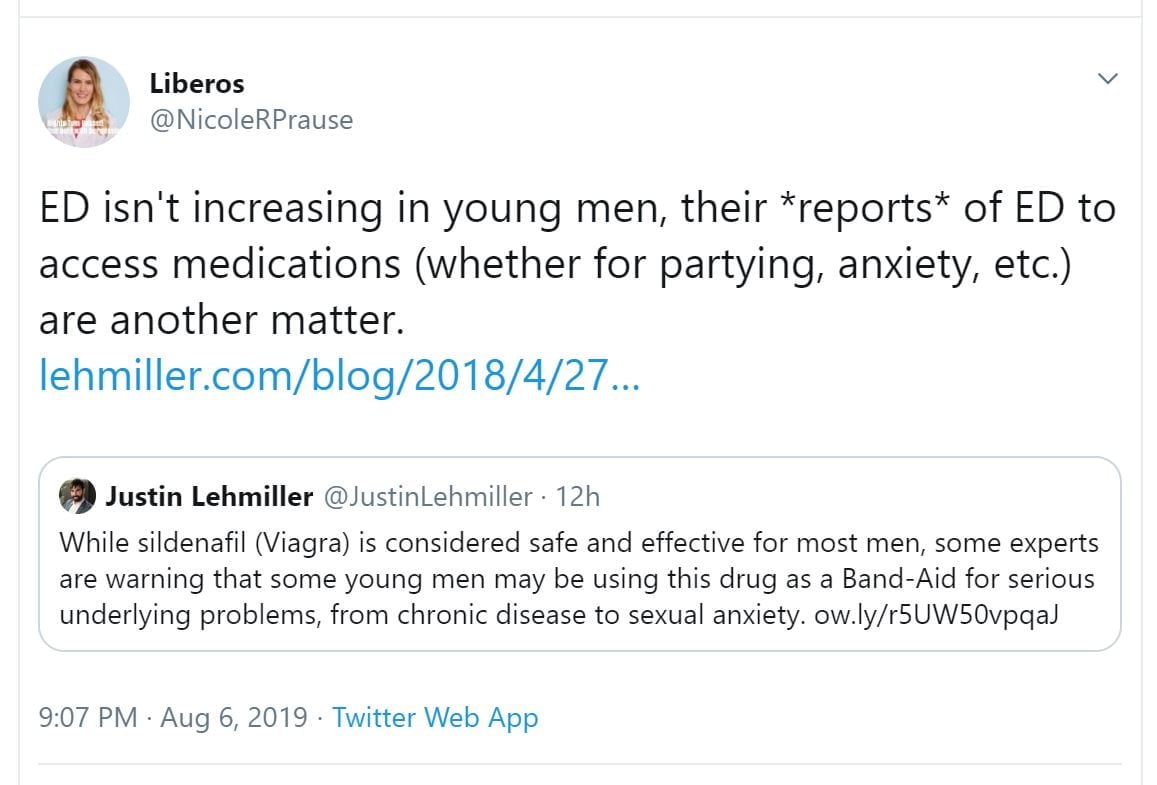
————————
Immediately attackS a study she doesn’t like: https://www.eurekalert.org/pub_releases/2019-09/tfg-sih091619.php
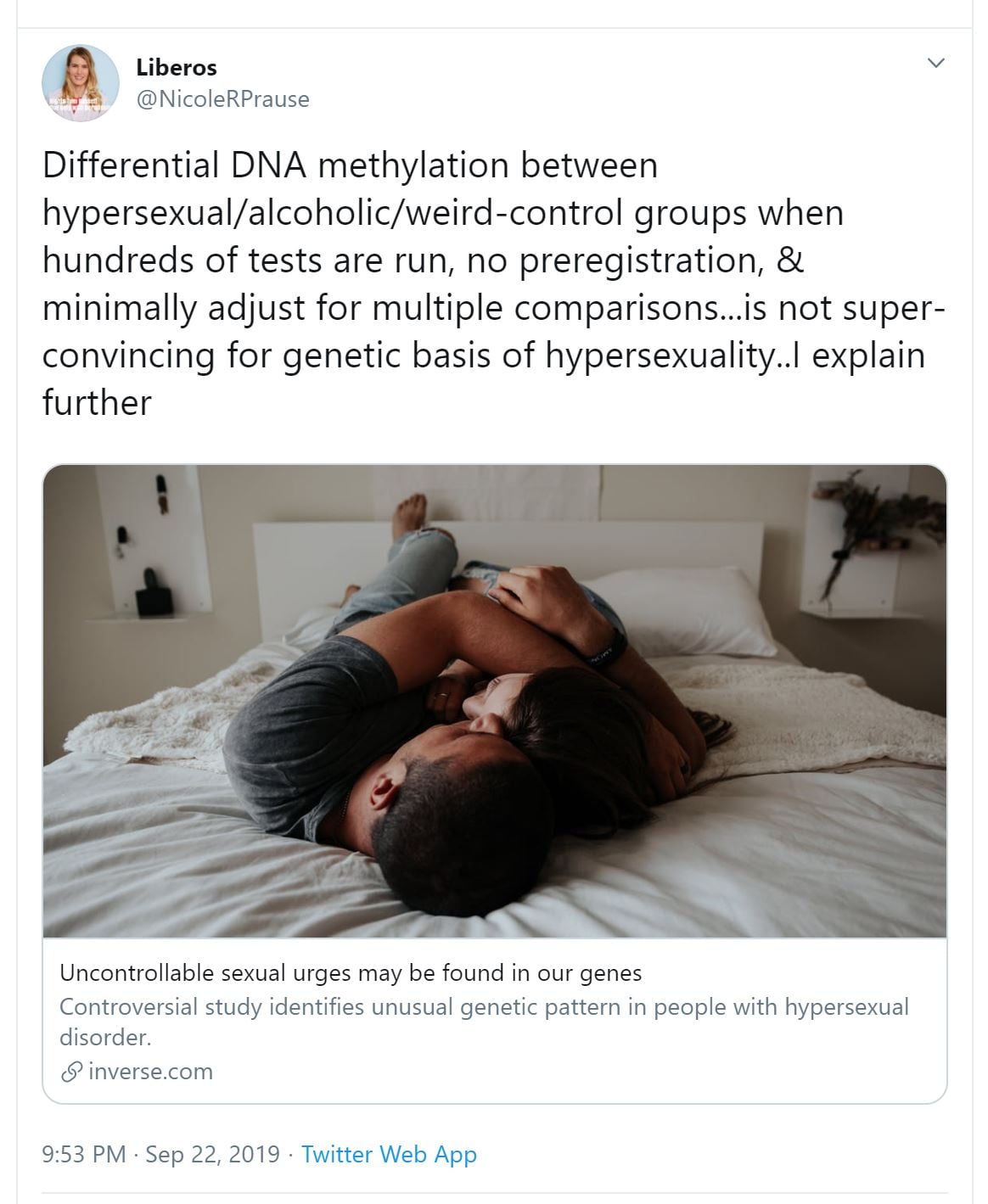
——————–
Disparages NCOSE for wanting school and public libraries to block porn sites:
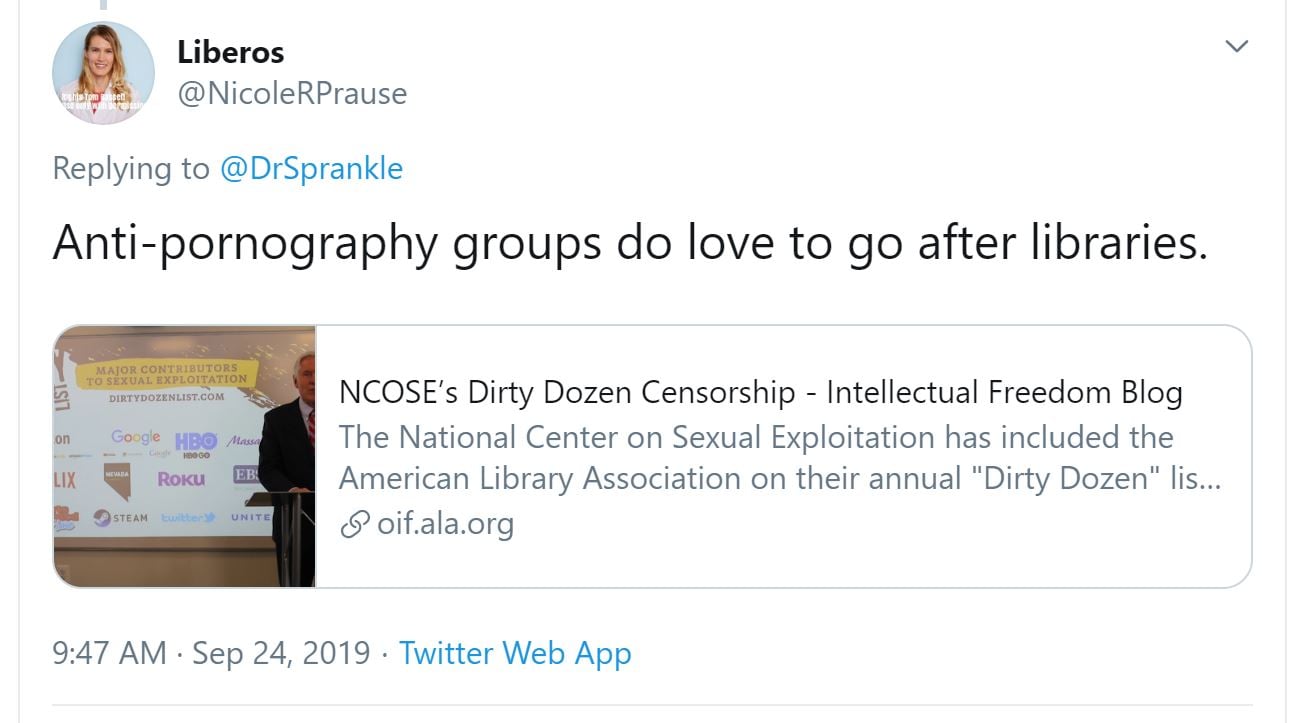
————————
Whines about a paper from British Board of Film Classification (BBFC), concerning age verification:
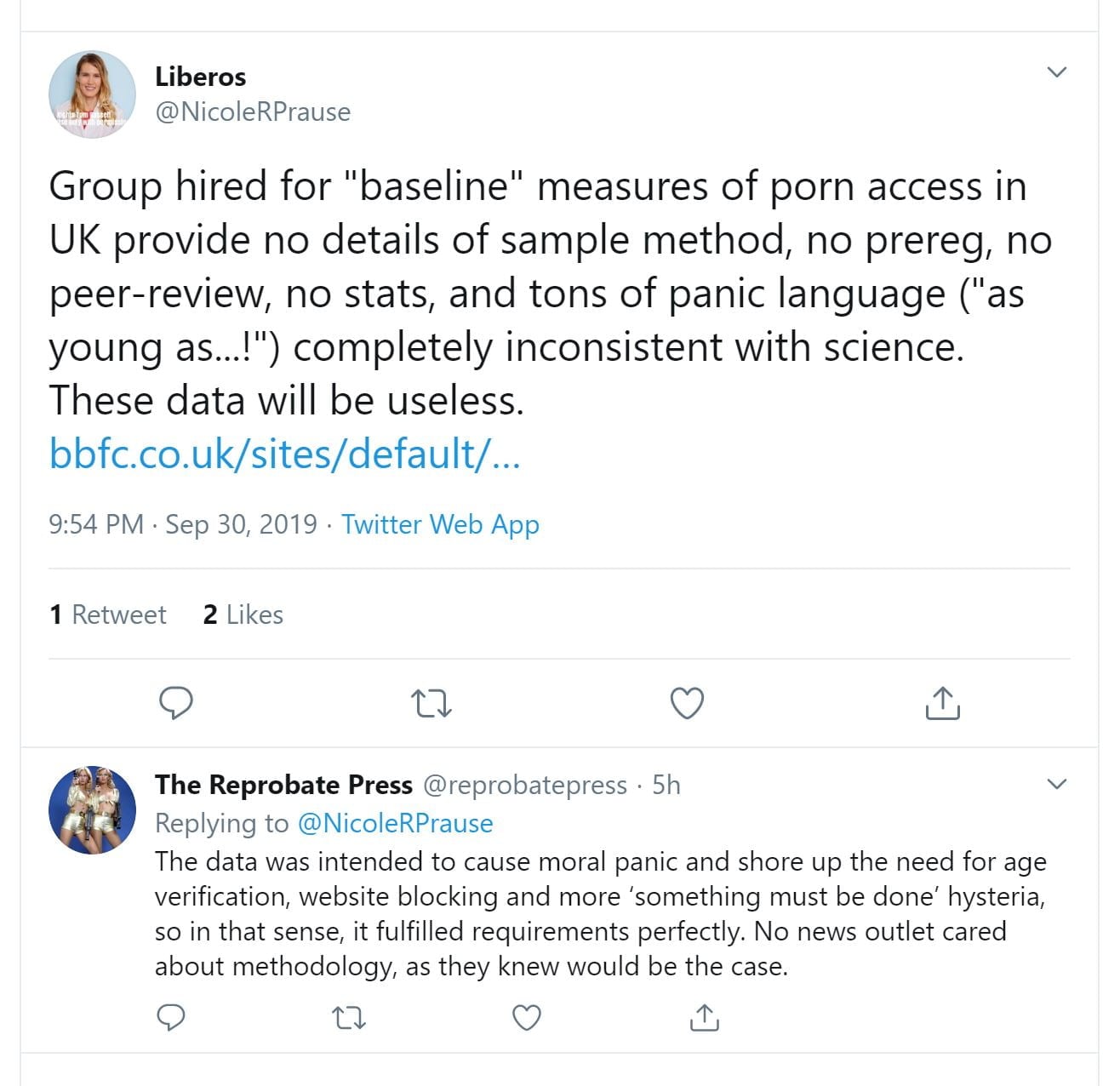
Is she upset that people under 18 will have trouble accessing porn?
———————-
Prause and Ley promote AVN hit-piece:
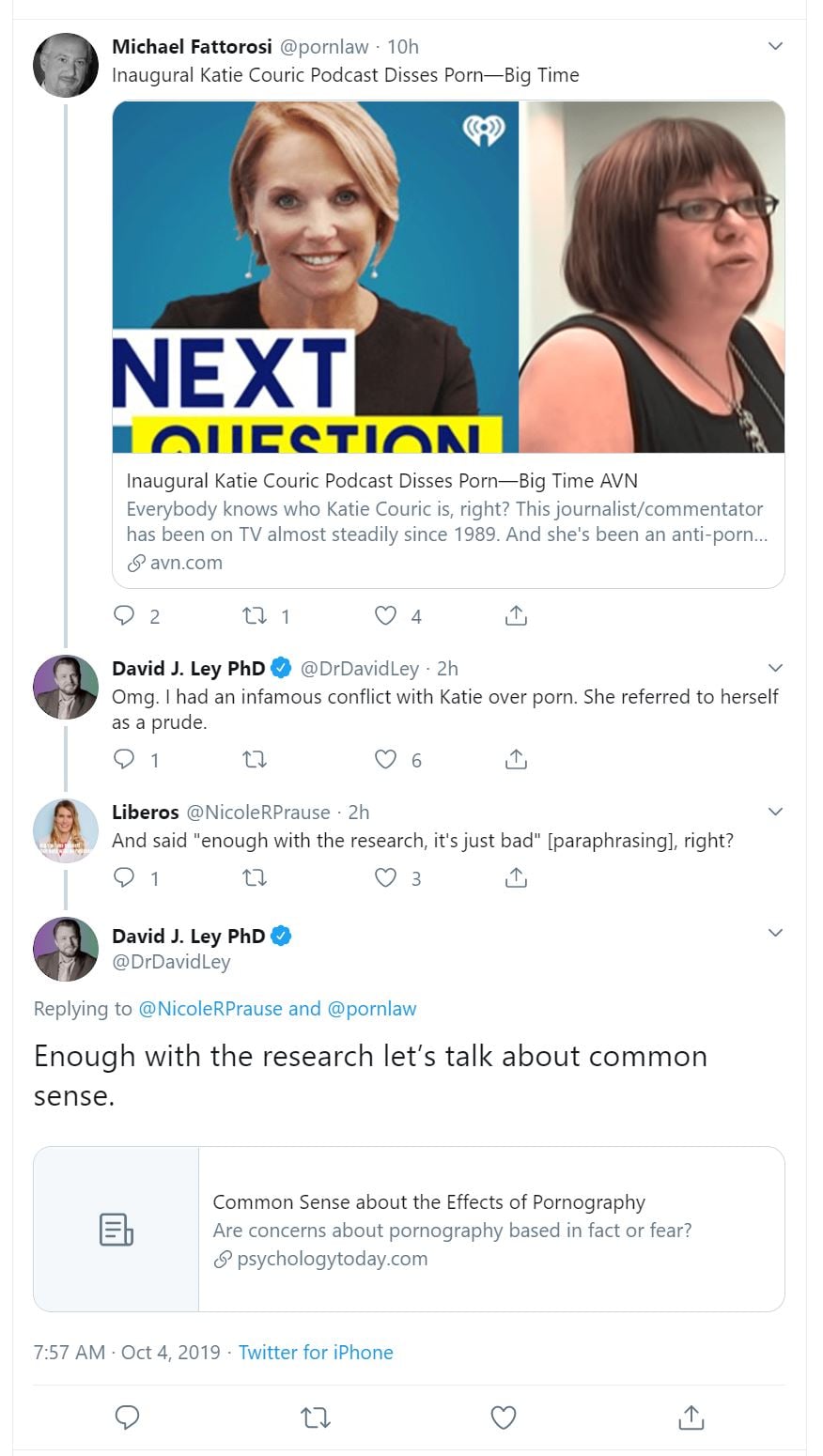
———————
Promoting Cindy Gallop, owner of a porn site:
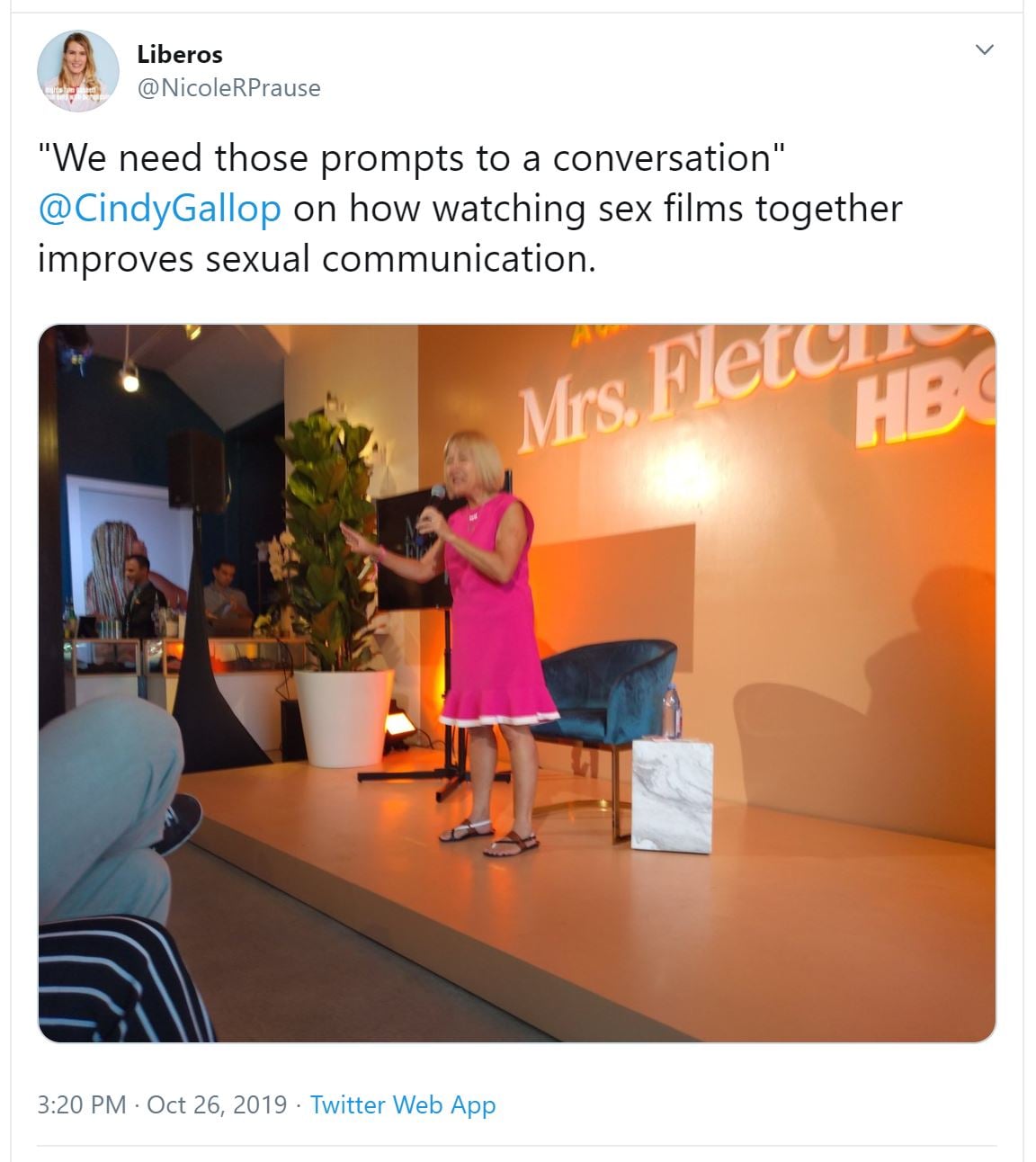
—————–
Same propaganda about ICD-11
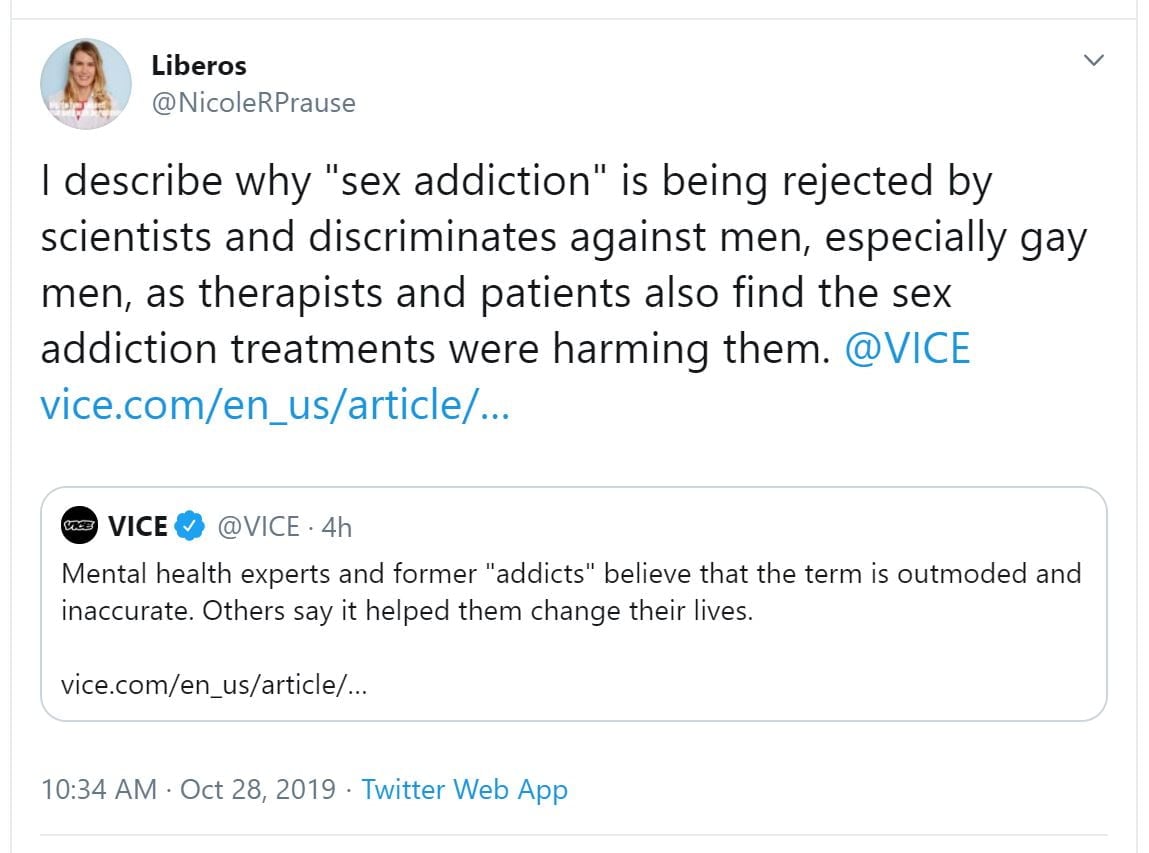
——————–
Says her 2015 study (Prause et al., 2015) has been replicated, when it has not (her “replication” link to goes to her letter to the editor (which is debunked here), not to a study (because none exist):
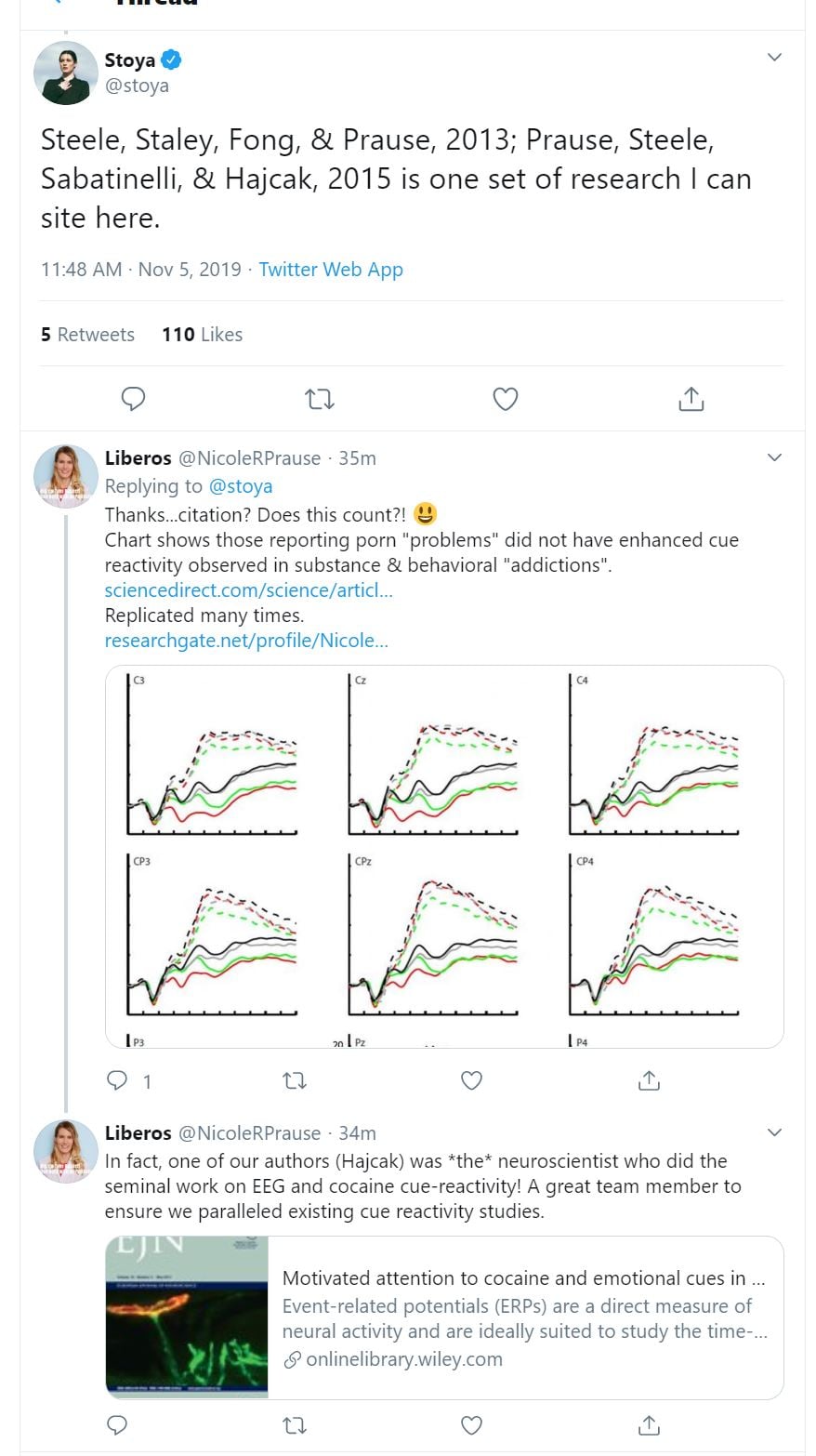
Prause et al., 2015, isn’t what it appears to be. While Prause boldly asserted that her lone, deeply flawed EEG study had debunked porn addiction, 9 peer-reviewed papers disagree. All 9 papers do agree that Prause et al., 2015 actually found desensitization or habituation in the more frequent porn users (a phenomenon consistent with addiction): Peer-reviewed critiques of Prause et al., 2015
——————-
Disparages Valerie Voon, brain scan studies on porn users, and sex addiction therapists:
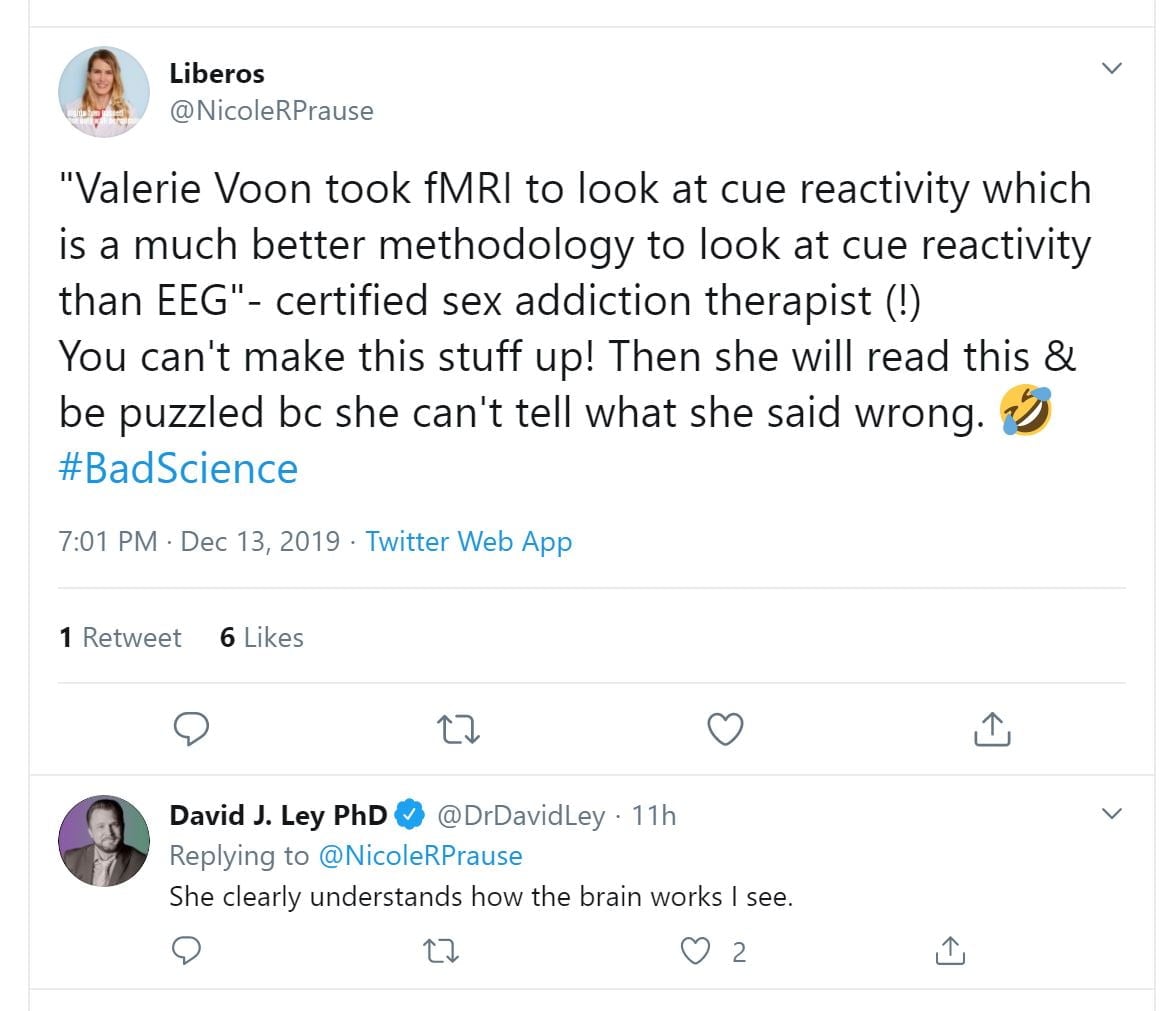
Do tell us how EEG’s are ‘better” than fMRI. I’m holding my breath.
———————-
A TEDx talk that cites zero studies:
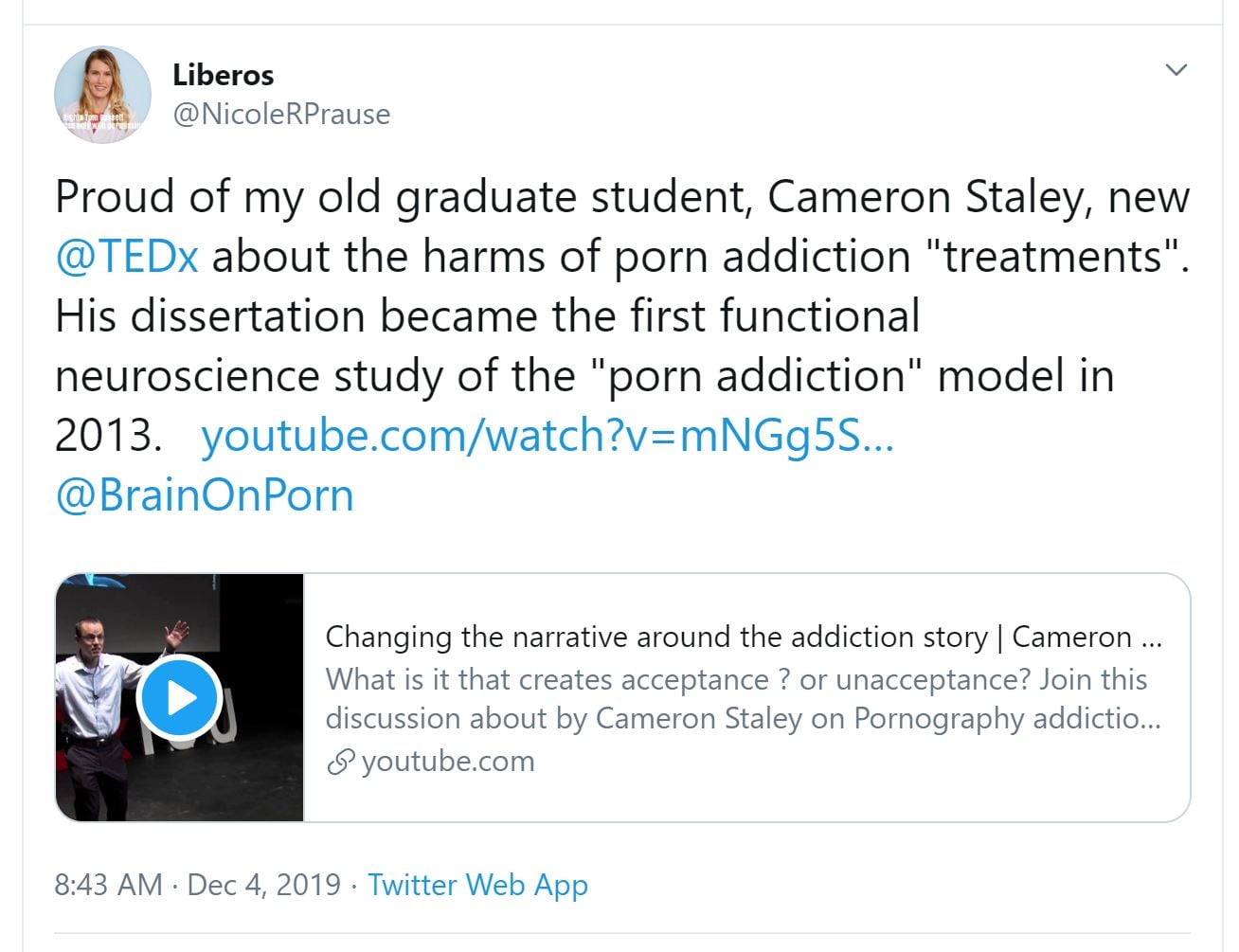
RE: Cameron Staley’s TEDx Talk. He was a grad student of Prause when he gathered data for Steele et al. 2013. Just a few his falsehoods in his TEDx talk where he cited zero studies to support his propaganda:
- Staley says his “mentor was a renowned sex researcher!” What? No one had heard of Prause before Steele et al. was published in July of 2013 (Prause misrepresented its findings).
- Staley lies about about the actual results of Steele et al, 2013. He states that “the subjects brains didn’t look like brains of addicts” – but he never tells us how their brains differed from addicts (because they did not). 8 peer-reviewed papers disagree with Staley, and point out that the subjects brains looked exactly like an addict- Peer-reviewed critiques of Steele et al., 2013 (greater cue reactivity correlated with less desire for sex with a partner). Note: Steele et al., did NOT have a control group!
- Staley gets into Grubbs “perceived porn addiction” study, falsely stating that Grubbs assessed belief in addiction.
- Staley says porn related problems do not constituean epidemic: nly our belief that viewing porn is a problem, is a problem.
- He says porn cannot cause PIED, even though 7 peer-reviewed papers report cases of men recovering by quitting porn. And 40 more studies link porn to sexual problems/lower arousal – including his own – Steele et al., 2013 (greater cue reactivity related to less desire to have sex with a partner).
- He says porn is not a problem for relationships, yet 80 studies link porn use to poorer sexual and relationship satisfaction.
Bottom line according to Staley – believe porn use is just fine and you will be just fine using porn. Unsupported propaganda refuted by hundreds of studies.
——————–
Trolling a sex expert’s thread to support the porn industry:

———————-
Tweeting about Prause et al., 2015. Nope, it was not replicated (notice she cannot link to the “replication”):
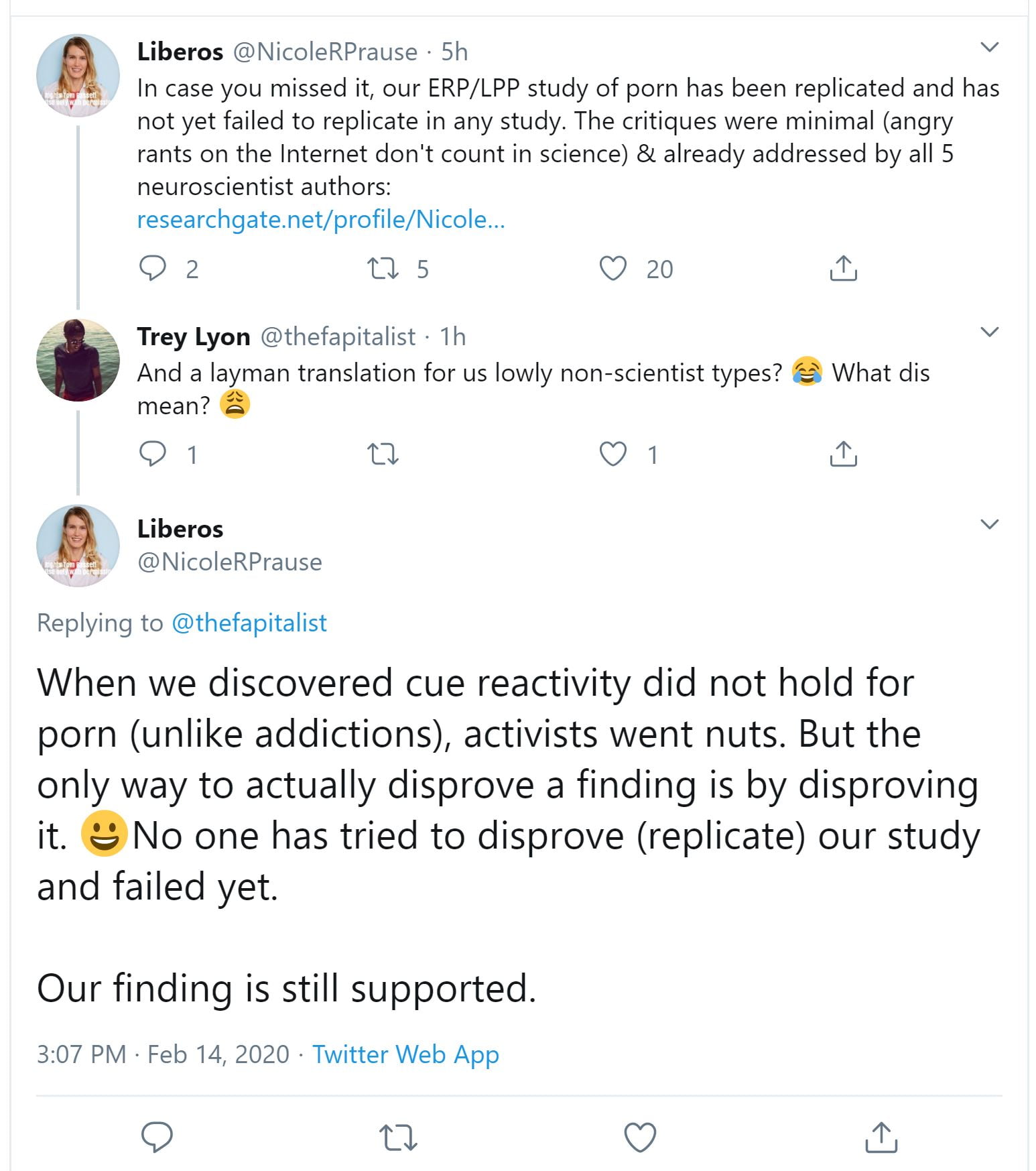
It wasn’t “angry” rants, but 10 peer-reviewed papers all saying that Prause’s flawed study supports addiction model. In truth, the findings of Prause et al. (lower EEG readings to vanilla porn) mean that subjects are paying less attention to the pictures. Put simply, frequent porn users were desensitized to static images of vanilla porn. They were bored (habituated or desensitized). See this extensive YBOP critique. 10 peer-reviewed papers agree that this study actually found desensitization/habituation in frequent porn users (consistent with addiction): Peer-reviewed critiques of Prause et al., 2015
Prause proclaimed that her EEG readings assessed “cue-reactivity” (sensitization), rather than habituation. Even if Prause were correct she conveniently ignores the gaping hole in her “falsification” assertion: Even if Prause et al. 2015 had found less cue-reactivity in frequent porn users, 26 other neurological studies have reported cue-reactivity or cravings (sensitization) in compulsive porn users: 1, 2, 3, 4, 5, 6, 7, 8, 9, 10, 11, 12, 13, 14, 15, 16, 17, 18, 19, 20, 21, 22, 23, 24, 25, 26, 27. Science doesn’t go with the lone anomalous study hampered by serious methodological flaws; science goes with the preponderance of evidence.
++++++++++++++++++++++++++++++++++++++++++++++
Prause closely monitors many of us. I tweeted this new rebooting study at 8pm – https://twitter.com/
I guess she meant “objective research” instead of “objective search”.She claims that other studies have assessed the effects of eliminating porn, and found nothing. This is a lie, as the first 10 studies on this page (section #1) report on participants who eliminated porn use: Over 90 Studies demonstrating internet use & porn use causing negative outcomes & symptoms, and brain changes. All 10 studies revealed benefits, such as healing chronic sexual dysfunctions, greater commitment to partners, better cognitive parameters.
———————
Claiming that giving up porn is harmful.
The paper she linked to does not says what she claims (it was only an opinion paper, not quantative).
——————————-
Lying that Laila was involved in claimed death threats. Why is Prause harassing Kristof, who exposed Pornhub’s illegal and vile activities?
How disgusting is it that Prause tweets lies under a video by a victim of Pornhub?
———————
Trolling threads to support porn industry agenda:
Not so. None of Prause’s studies addressed the above PET scans. Also – No study has yet attempted to replicate the PET scans (pictured below). She keeps trolling same thread:
No again. There are other “empirically supported” interventions, such as CBT.
——————-
More trolling to support porn industry agenda:
——————-
Just like @BrainOnPorn Prause is asserting that masturbation, not porn, is the real problem… citing nothing.
——————–
LOL. Tweets a 2005 opinion paper to “debunk” brain scan study findings on porn users and sex addicts.
Her followers are unaware that 55 neuroscience-based studies (MRI, fMRI, EEG, neuropsychological, hormonal) have been publsihed on porn users or sex addicts. All provide strong support for the addiction model as their findings mirror the neurological findings reported in substance addiction studies.
——————-
Lies about the research while attacking a study about pornhub. Links to a new site that is exact replica of RealYBOP
Ah yes, “correlation doesn’t equal causation” for all the studies we don’t like. But this wasn’t a “correlative” study.
Upset at the unflattering study on Ponrhub, Prause puts in extra work in a weak attempt to counter the results:
Then she trolls the author of the study, posting her lie-filled Medium rant:
More trolling, same lie-filled Medium rant.
Why is she so obsessed with this one study? Oh yeah, it’s about Pornhub.
——————-
Working with XBIZ to attack Laila Mickelwait:
See over 100 additional tweets by Prause defaming Mickelwait in a campaign to support Pornhub:
- Others – January, 2020: RealYBOP twitter (Prause) attacks Laila Mickelwait in its defense of Pornhub’s under-age looking porn and absence of age-verification.
- Others – Ongoing: Prause uses @BrainOnPorn and @NicoleRPrause to harass & defame Laila Mickelwait after she initiates the TraffickingHub campaign to hold Pornhub responsible for hosting child porn and videos of trafficked females (over 100 tweets). Prause falsely accuses Laila of supporting or sending rape & death threats.
- Others – March, 2021: Prause escalates into targeting Laila Mickelwait’s toddler.
————————————
Tweets podcast with VICE’s Samantha Cole, author of the hit-piece. Pornhub was exposed for complicity in mass child sexual abuse & trafficking. Visa, Mastercard & Discover cut off card processing. Grant Thornton, Heinz/Unilever & PayPal cut ties. Pornhub deleted 80% of its site (10 million videos) 5 lawsuits filed. Brought before the Canadian Parliament – and yet we have Prause tweeting in support PornHub’s executives!
——————–
+++++++++++++++++++++++++++++++++++++++++++++++++++++++++++++++++
Again – Instead of using her own account to misrepresent the science, Prause almost exclusively used her alias shill account @BrainOnPorn during 2019 and 2020. Hundreds of additional examples are on these 3 pages:
- RealYourBrainOnPorn (@BrainOnPorn) tweets: Daniel Burgess, Nicole Prause & pro-porn allies collaborate on a biased website and social media accounts to support the porn industry agenda (beginning in April, 2019)
- RealYourBrainOnPorn (@BrainOnPorn) tweets DIRECTLY supporting the porn industry, especially Pornhub
- RealYourBrainOnPorn (@BrainOnPorn) tweets, page 2: Daniel Burgess, Nicole Prause & pro-porn allies collaborate on a twitter account to support the porn industry and to harass & defame anyone who speaks about porn’s negative effects
———————–
SECTION 4: “RealYBOP”: Prause, Daniel Burgess & associates create a biased website and social media accounts to support the porn industry agenda and to defame & harass anyone who says anything negative about porn (beginning April, 2019)
Introduction
RealYBOP twitter (@BrainOnPorn) and realyourbrainonporn.com were developed as a tool by Nicole Prause and Daniel Burgess to attack Your Brain on Porn, Gary Wilson, and anyone else who critiques the porn industry or points out the negative effects of porn use.
Due to ongoing legal actions, YBOP was forced to collect what @BrainOnPorn tweets. This page documents the first year of RealYBOP tweets, and contains an extensive introduction providing context and events that have transpired, such as legal actions, RealYBOP Twitter being implicated in defamation lawsuits, and RealYBOP experts being paid by the porn industry: RealYourBrainOnPorn (@BrainOnPorn) tweets: Daniel Burgess, Nicole Prause & pro-porn allies collaborate on a biased website and social media accounts to support the porn industry agenda (beginning in April, 2019).
A second page documents @BrainOnPorn’s 2nd year of pro-porn industry tweets (beginning April 17, 2020): RealYourBrainOnPorn (@BrainOnPorn) tweets, page 2: Daniel Burgess, Nicole Prause & pro-porn allies collaborate on a twitter account to support the porn industry and to harass & defame anyone who speaks about porn’s negative effects.
A third page documents the unbelievable story of Prause, Burgess and David Ley magically “discovering” fake porn URLS inserted into the Wayback Machine archive of YBOP. These pages never existed on YBOP (as we prove). Anyone can manually insert URLs into the archives for any website on the net: Realyourbrainonporn (Daniel Burgess, Nicole Prause) defamation/harassment of Gary Wilson: They “discover” fake porn URLs in the Internet Wayback Archive (August, 2019)
While Daniel Burgess was the last known owner of the RealYBOP URL (www.RealYourBrainOnPorn.com), the most credible evidence points towards Nicole Prause creating and operating the RealYBOP website and Twitter account. @BrainOnPorn’s 18-month reign of terror ended with Twitter permanently banning it for targeted harassment and posting its victims personal information.
RealYBOP constantly engaged in harassment and defamation of those who speak about porn’s negative effects (maybe 1,500 such tweets in its 18 months of existence). We wonder who’s legally responsible for @BrainOnPorn‘s defamation and harassment? Is it only Nicole Prause, or only Daniel Burgess, or maybe both? Or could all of the RealYBOP “experts” be held legally and financially responsible?
This question is not trivial as Prause and the RealYBOP Twitter are now implicated in two defamation lawsuits (Donald Hilton, MD & Nofap founder Alexander Rhodes), a trademark infringement case, and a trademark squatting case. In fact, several of the RealYBOP tweets have been included in filings for the two defamation lawsuits, and in associated affidavits filed by other victims of Prause and RealYBOP Twitter (affidavit #1, affidavit #2, affidavit #3, affidavit #4, affidavit #5, affidavit #6, affidavit #7, affidavit #8, affidavit #9, affidavit #10, affidavit #11, affidavit #12, affidavit #13, affidavit #14, affidavit #15, affidavit #16).
While nearly every “RealYBOP” tweet supports the porn industry agenda, the tweets below this intro leave no doubt concerning RealYBOP’s true allegiance – directly supporting the porn industry – especially PornHub (Mindgeek).
Attempted trademark grab by Prause
In January 2019, Nicole Prause applied for YBOP’s well established trademarks, including Wilson’s actual URL (“YourBrainOnPorn.com”), with a view to displacing YBOP with her own version of his site. This was an outright censorship effort by Prause, who has been obsessively harassing and defaming Wilson for over 8 years.
Wilson challenged her application, which eventually failed, and the trademarks were registered in Wilson’s name in 2020.
Meanwhile, on March 13, 2019 (just a couple of months after the attempted trademark grab) Daniel A. Burgess registered the trademark-infringing domain name RealYourBrainOnPorn.com. The RealYBOP site announced its birth in a press release, which deceptively claimed to have been issued in Ashland, Oregon where Gary Wilson, host of YBOP, lives, and misinformed the public about the state of the research on problematic porn use.
Take a moment to imagine the chutzpah and malice it took to register a domain name that encompassed an existing, long established domain name (YourBrainOnPorn) and then to add “Real” to it as if the new creation were the genuine website…and then to begin tweeting and engaging in other social media under this deceptive name!
The organizers of the imposter site employed many tactics calculated to confuse the public. For example, the new site attempted to trick visitors, with the center of each page declaring “Welcome to the REAL Your Brain On Porn,” while the tab falsely proclaimed “Your Brain On Porn.” Also, to advertise their illegitimate site, the “experts” created a Twitter account (https://twitter.com/BrainOnPorn), YouTube channel, Facebook page, all employing the words “Your Brain On Porn.”
In addition, the “experts” created a reddit account (user/sciencearousal) to spam porn recovery forums reddit/pornfree and reddit/NoFap with promotional drivel, claiming porn use is harmless, and disparaging YourBrainOnPorn.com and Wilson. It’s important to note that Prause has a long documented history of employing numerous aliases to post on porn recovery forums. Her easily recognizable comments promote her studies, attack the concept of porn addiction, disparage Wilson and YBOP, belittle men in recovery, and defame porn skeptics.
In a further attempt to confuse the public, the press release announcing the infringing site falsely claims to originate from Wilson’s hometown – Ashland, Oregon. (None of the “experts” named at the new site live in Oregon, let alone in Ashland.) PDF of Cease & Desist letter to Nicole Prause – May 1, 2019
A closer look at the alliance
Regardless of its ultimate name, let’s look briefly at the site’s cast of characters. The new site’s faction of sexologists and their chums is not representative of the views of the preponderance of researchers doing research on the effects of today’s porn. (Nicole Prause, Marty Klein, Lynn Comella, David J. Ley, Emily F. Rothman, Samuel Perry, Taylor Kohut, William Fisher, Peter Finn, Janniko Georgiadis, Erick Janssen, Aleksandar Štulhofer, Joshua Grubbs, James Cantor, Michael Seto, Justin Lehmiller, Victoria Hartmann, Julia Velten, Roger Libby, Doug Braun-Harvey, David Hersh, Jennifer Valli, Joe Kort, Charles Moser)
Upon closer examination, almost half of the new site’s “experts” are non-academics, not employed by any university. Not one of the listed “experts” has ever published a neurological study on a group of porn addicted subjects (Compulsive Sexual Behavior Disorder subjects).
Who’s missing and why? Ask yourself: why are the researchers who authored the preponderance of the relevant evidence on porn’s effects excluded from the “experts” in this alliance?
How does the new site further the interests of the porn industry?
Next, let’s take a closer look at some of the ways the new website + related social media campaign further the interests of the porn (and sexual-enhancement drug?) industries.
The new site’s collection of cherry-picked, often irrelevant, papers misrepresent the preponderance of the research on porn’s effects. For example, these 55 neurological studies on porn users and CSBD subjects are missing from the “experts’” research list. So are studies revealing a link between porn overuse and a range of sexual dysfunctions. For details see Porn Science Deniers Alliance.
The fact is, the deniers are out of step with the experts who drafted the world’s most widely used medical diagnostic manual, The International Classification of Diseases (ICD-11). The porn industry is well served by a group of purported “experts” who boldly misrepresent the balance of existing research and ignore the preponderance of the research. The latter undercuts the new site’s agenda by pointing to measurable harms associated with porn overuse.
Prause denies involvement in these trademark-infringing social media accounts. However, simple observation, RealYBOP experts’ correspondence, WIPO’s report, and considerable evidence point to her management of these accounts
While Daniel A. Burgess registered www.RealYourBrainOnPorn.com, Prause’s numerous victims believe she orchestrated the content on RealYBOP and operated its social media accounts (especially the very active Twitter account which, before it was banned for harassment, obsessively harassed and defamed those who suggested porn might cause harms or that the porn industry has problems).
RealYBOP went live April 16, 2019, yet it wasn’t until Wilson’s attorneys filed a complaint with the World Intellectual Property Organization (WIPO) that we learned that Daniel A. Burgess owned the URL (July 8, 2019). Incidentally, Wilson’s attorneys requested the WIPO administrative review of the apparent misuse of his trademark in the RealYBOP URL as a possible route to having www.realyourbrainonporn.com transferred to Wilson as swiftly and economically as possible. Surprisingly, WIPO declined to rectify the situation, so Wilson had wait until his trademark registrations were official before at last gaining control of the infringing URL.
In the meantime, Prause “weaponized” the WIPO decision. She issued a misleading press release and constantly mischaracterized WIPO’s decision on Twitter. She portrayed Wilson as trying unsuccessfully to steal “their website” (The irony!) This propaganda campaign became part of her mythology that he, and others, wanted to silence “them” because we were afraid of “their science.” For his attempt to defend his trademarks from blatant infringement Prause smeared Wilson as “vicious to scientists.” Finally, Prause repeatedly referred to the administrative WIPO proceeding as a “lawsuit.” It was not a lawsuit. In fact, it was an attempt to make further legal proceedings unnecessary.
The RealYBOP “experts” said Prause ran the website
As initially no one knew Burgess was the official owner of the RealYBOP URL, Wilson’s attorneys were obliged to send cease and desist letters to all the “experts” listed on his infringing website (May 1, 2019). A handful of the “experts” replied, and a few named Prause as the operator of RealYBOP. Here, for example, is RealYBOP erstwhile “expert” Alan McKee replying our C&D letter:
Here’s former Indiana University colleague and co-author Peter Finn replying to our attorney’s C&D letter:
In fact, not one of the RealYBOP experts stated, or seemed to have any clue, that Daniel Burgess was involved when they responded to the cease & desist letters they received. Clearly, her “experts” thought they were dealing solely with Prause. (Prause’s merry band of RealYBOP “experts”: Marty Klein, Lynn Comella, David J. Ley, Emily F. Rothman, Samuel Perry, Taylor Kohut, William Fisher, Peter Finn, Janniko Georgiadis, Erick Janssen, Aleksandar Štulhofer, Joshua Grubbs, James Cantor, Michael Seto, Justin Lehmiller, Anna Randall, Victoria Hartmann, Julia Velten, Michael Vigorito, Doug Braun-Harvey, David Hersh, Jennifer Valli and Nicole Prause herself.)
The World Intellectual Property Organization (WIPO) found substantial evidence of Prause’s involvement with RealYBOP
The WIPO decision caused an unexpected delay in the transfer of the URL to Wilson (until the trademarks were formally registered in his name). The important point here is that the WIPO panelist also viewed Prause as a leading controller of the site: “Panel finds substantial evidence that Mr. Burgess, Dr. Prause, and Liberos LLC share involvement in the control of the website.” Excerpt from the WIPO opinion:
The Amended Complaint also names Dr. Nicole Prause and Liberos LLC [her company] as Respondents. They do not appear in the Registrar’s WhoIs database in relation to the Domain Name, but there are reasons to believe that Dr. Prause is a leading person in the “group of psychologists and scientists” that is responsible for the Respondent’s website, according to the Response. She is the second-listed expert on the site, with her affiliation shown as “Liberos”. Two of the experts who replied to the Complainant’s demand letter said they participated at her invitation. The law firm that responded on her behalf to the Complainant’s demand letter is the same law firm that represents the Respondent in this proceeding. Dr. Prause “DBA Liberos LLC” applied for United States trademark registration of YOUR BRAIN ON PORN. The online database of the California Secretary of State shows that Liberos LLC is a California limited liability company, for which Nicole Prause is the registered agent.
The Panel finds substantial evidence that Mr. Burgess, Dr. Prause, and Liberos LLC share involvement in the control of the website associated with the Domain Name, as well as common interests in this proceeding, and there has been no showing of material prejudice to them in the event that the proceeding continues with Dr. Prause and Liberos LLC as named Respondents. See WIPO Overview of WIPO Panel Views on Selected UDRP Questions, Third Edition (“WIPO Overview 3.0”), section 4.11.2.
Accordingly, the Panel allows the Complaint against multiple respondents as styled in the caption above and refers to these parties collectively hereafter as the “Respondent.”
As the arbitrator noted, both Prause and Daniel Burgess were indeed represented by Prause’s lawyer Wayne B. Giampietro of Poltrock & Giampietro. If Prause had no involvement in RealYBOP, why did her attorneys (who continued to represent her in connection with her infringement on Wilson’s trademarks) also represent Daniel Burgess?
Update (January, 2021): Gary Wilson now owns the RealYBOP URL. See press release – ATTENTION: YBOP acquires www.RealYourBrainOnPorn.com in trademark infringement settlement.
The RealYourBrainOnPorn Facebook page listed Prause’s phone number as the contact
Before the RealYBOP Facebook page vanished, Nicole Prause’s phone number was listed as the contact number. We have blacked out her phone number below to protect her privacy, but Prause has listed this same number on various other pages she controls online, including Twitter. (Unredacted copies can be provided to journalists.) In addition, the Facebook page below describes the owner as a “scientist” (singular) rather than “scientists.” The latter would be expected if RealYBOP were a true group effort, as Prause (as its manager) has claimed.
“RealYourBrainOnPorn” YouTube channel initially identified itself as Nicole Prause (thereby also identifying Prause as sockpuppet TruthShallSetSetYouFree)
Upset by a less than flattering Rebecca Watson video covering the Rhodes defamation lawsuit, Prause used her own account and the RealYBOP YouTube account to argue with commenters under the Watson video. The RealYBOP comment reads as if it was written by Prause, in the first person (“my license”, “I won”), when describing her so-called victories in the WIPO hearing, UCLA complaints, and complaints against her psychology license. The RealYBOP comment also links to 2 court documents Prause forced Reason.com to add to this article about Hilton v. Prause. (The court ignored Prause lie-filled documents and refused to dismiss the case.)
Prause claims of victimhood are pure fabrications. She is the perpetrator, not the victim.
Soon after her onslaught against Watson on YouTube and Twitter, the RealYBOP YouTube channel changed its name to “TruthShallSetYouFree,” which resulted in the above comment changing usernames:
Prause still uses her amended YouTube alias (TruthShallSetYouFree) to disparage and defame her usual targets, while spreading claims of her victimhood.
PornHub was the first account to retweet this, suggesting a coordinated effort between PornHub and the RealYBOP account!
We start with the very first tweet by the new RealYBOP. Notice that about half of the retweets were by accounts associated with the porn industry. As the RealYBOP account had no followers yet, this means these fans were likely notified via email.
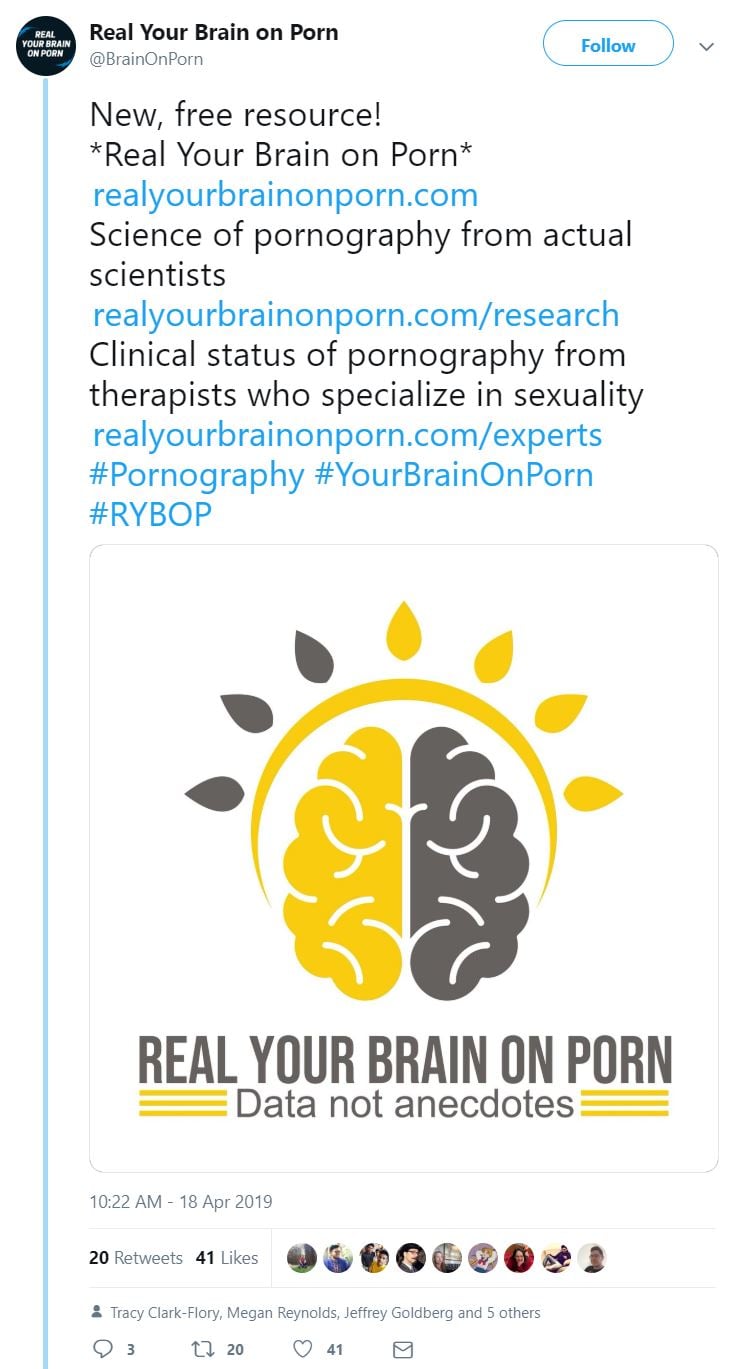
It appears that PornHub was the very first twitter account to retweet RealYBOP’s initial tweet:
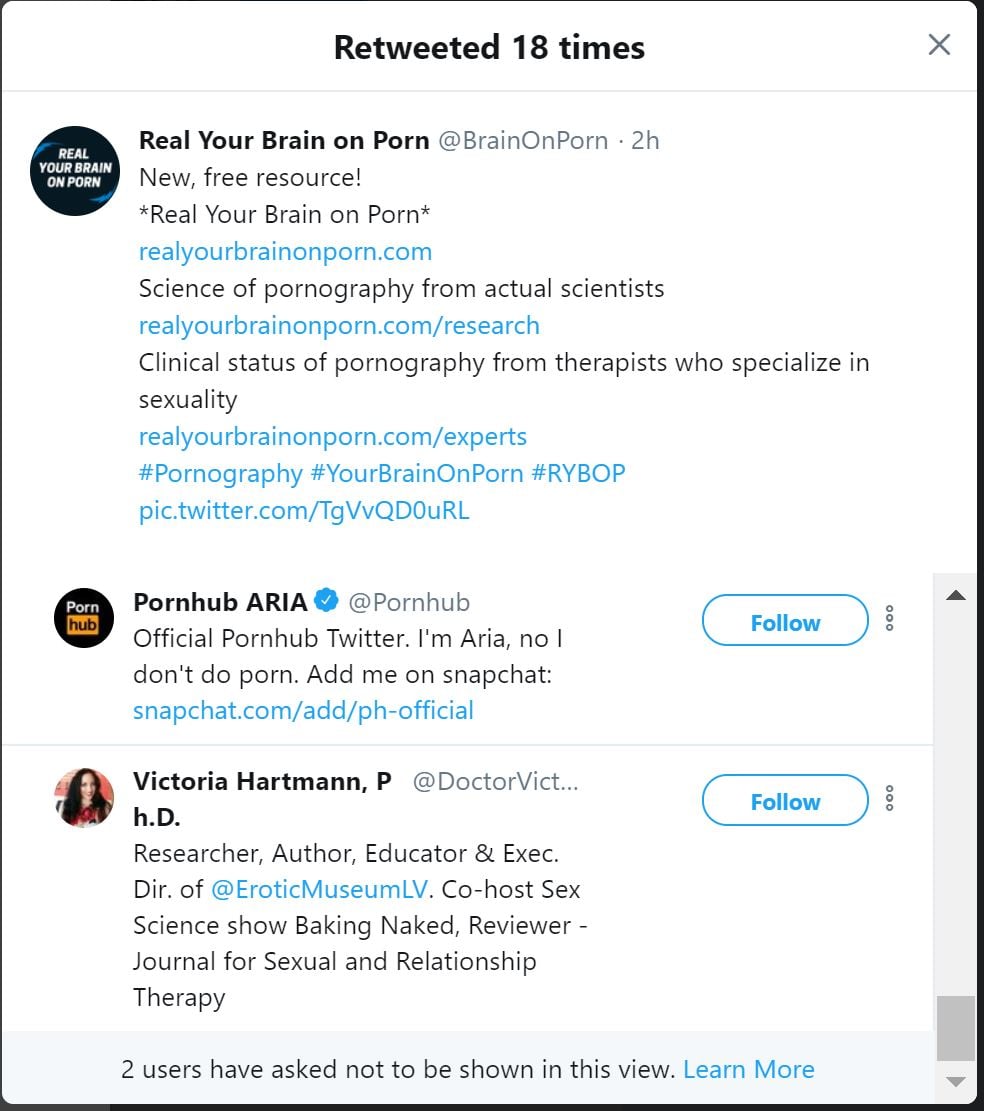
Is this evidence that RealYBOP’s Twitter and website are cozy with the porn industry?
+++++++++++++++++++++++++++++++++++++++++++++++++++++
RealYourBrainOnPorn (@BrainOnPorn) tweets DIRECTLY supporting the porn industry, especially Pornhub
As stated above, two main pages document most, but not all, of RealYBOP’s Tweets supporting the porn industry:
- RealYourBrainOnPorn (@BrainOnPorn) tweets: Daniel Burgess, Nicole Prause & pro-porn allies collaborate on a biased website and social media accounts to support the porn industry agenda (beginning in April, 2019).
- RealYourBrainOnPorn (@BrainOnPorn) tweets, page 2: Daniel Burgess, Nicole Prause & pro-porn allies collaborate on a twitter account to support the porn industry and to harass & defame anyone who speaks about porn’s negative effects.
While nearly every “RealYBOP” tweet supports the porn industry agenda, the tweets below leave no doubt concerning RealYBOP’s true allegiance – directly supporting the porn industry – especially PornHub (Mindgeek).
———————————–
RealYBOP being very cozy with porn producer (https://www.provillain.com/):
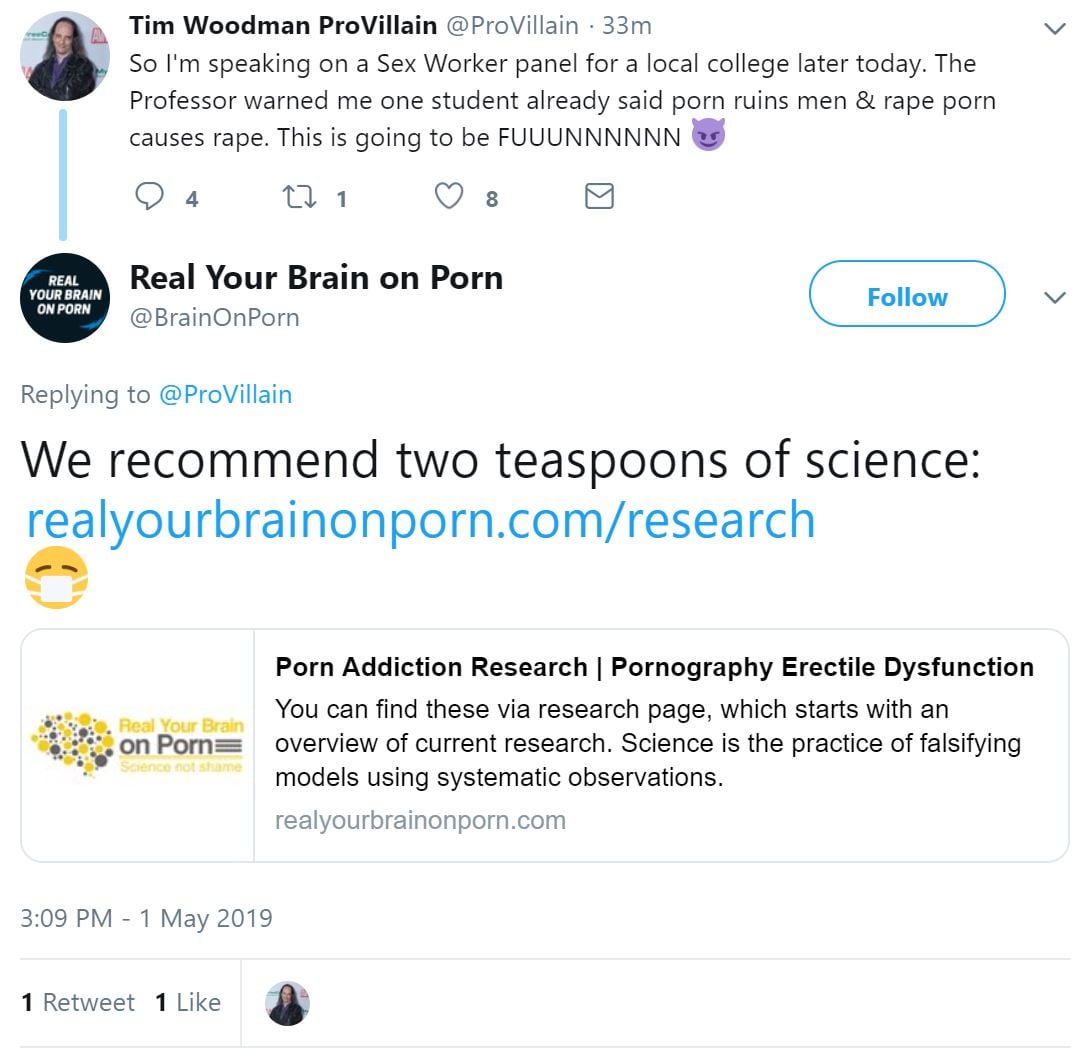
—————————–
More propaganda serving the porn industry’s agenda:
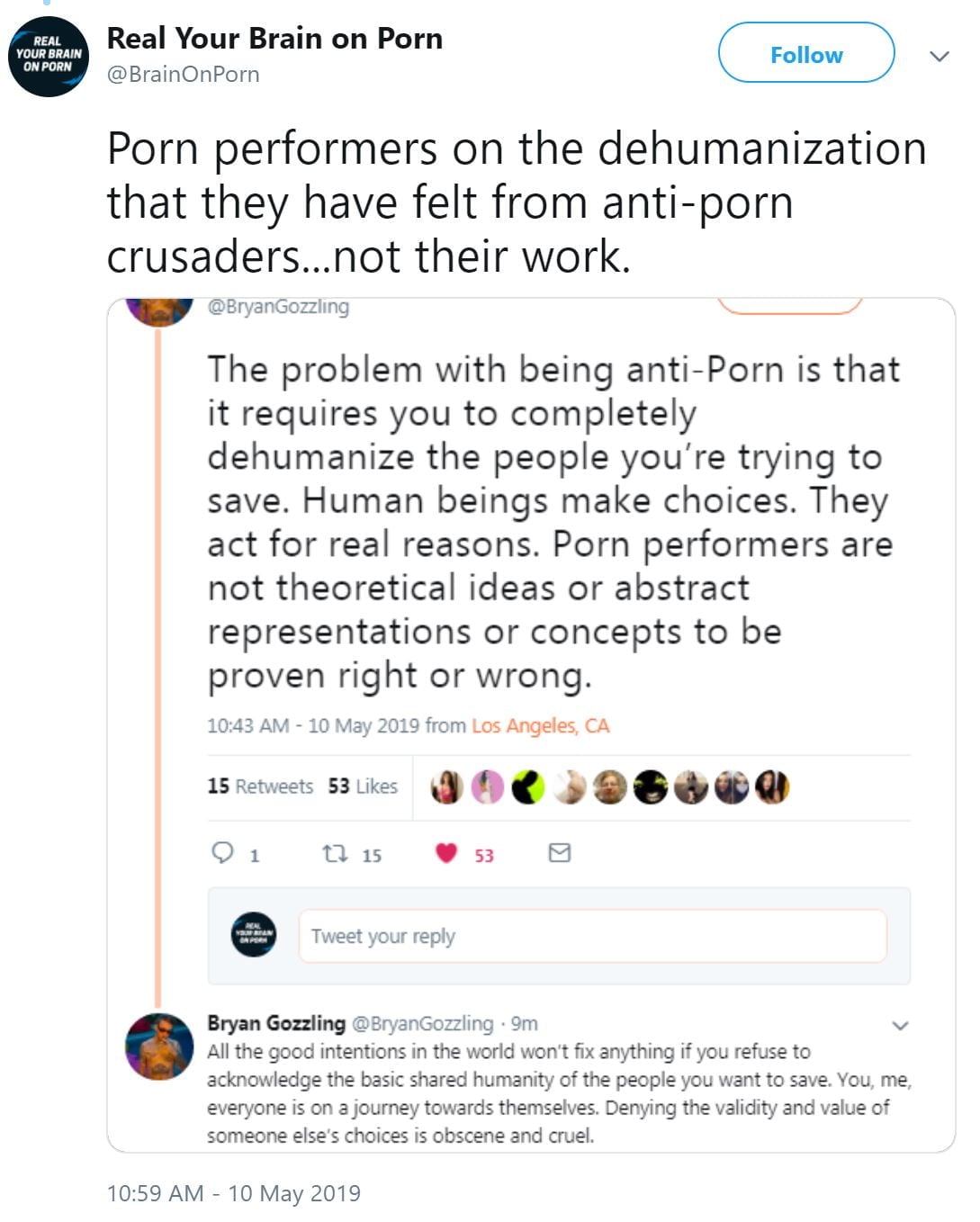
———————–
RealYBOP links to the Xhamster thread where (in December, 2018) Prause defamed Alexander Rhodes of NoFap. (For details, see December, 2018: Prause joins Xhamster to smear NoFap & Alexander Rhodes; induces Fatherly.com to publish a hit-piece where Prause is the “expert”.)
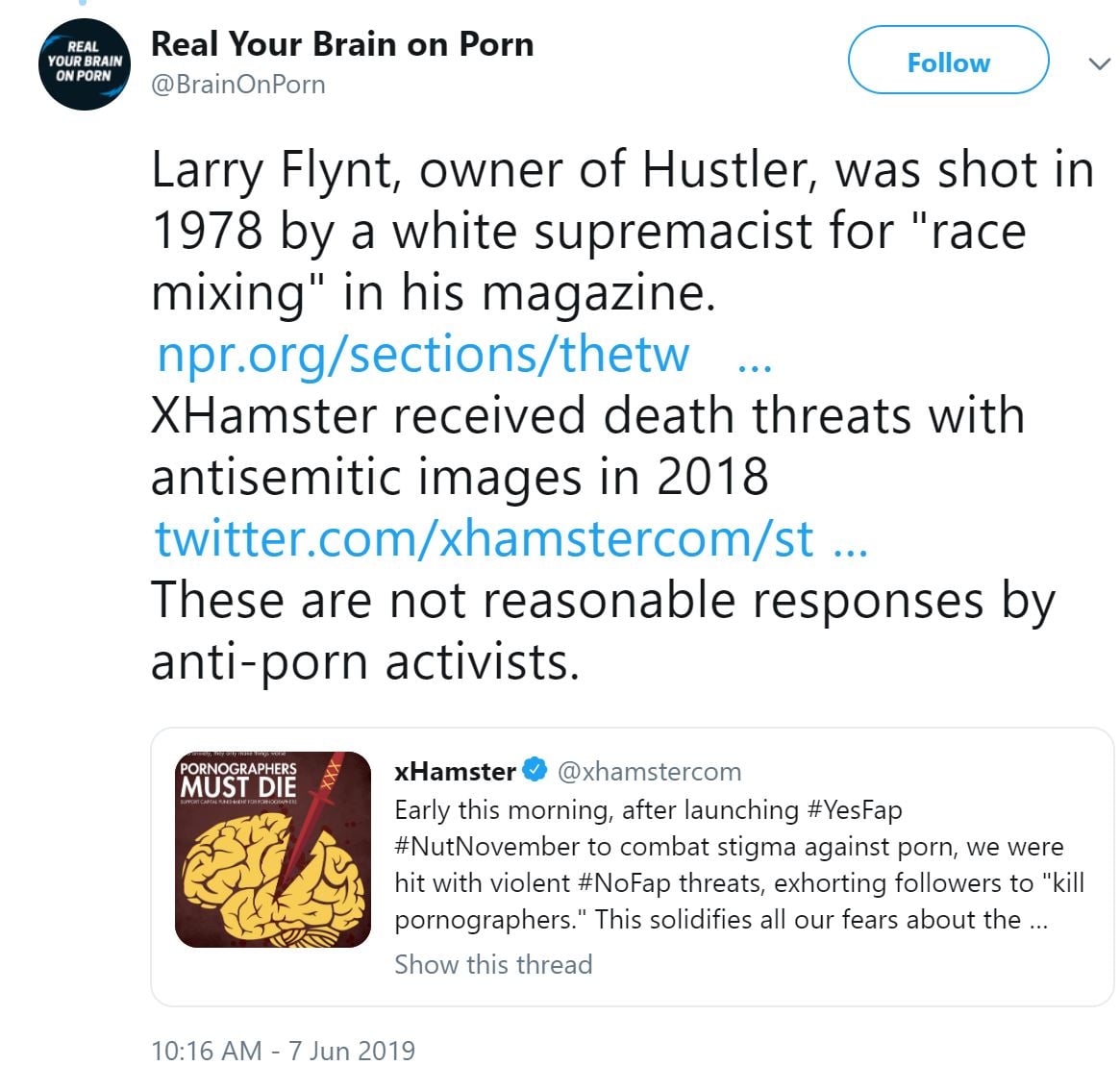
———————–
RealYBOP re-tweets porn performer, once again confirming its pro-porn industry agenda (while taking a swipe at “activists”):
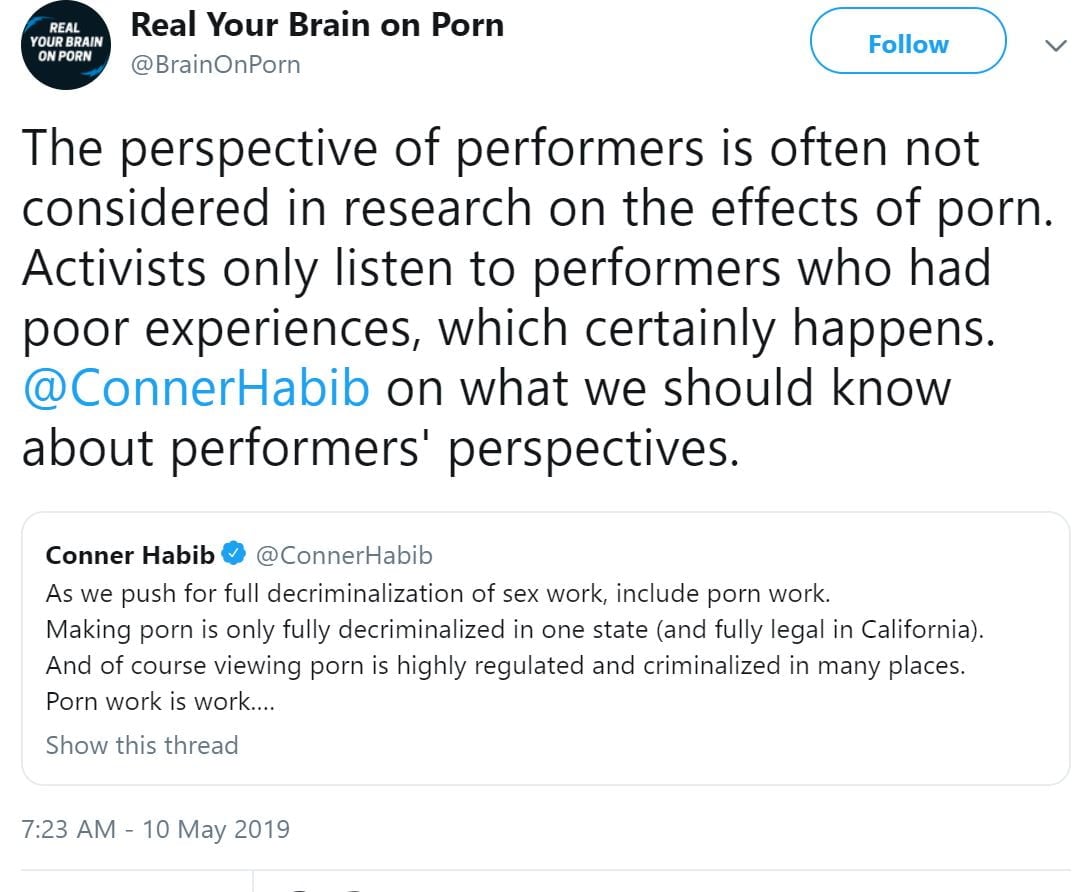
If the illegitimate website (RealYBOP) is suppose to be about porn’s possible effects on users, why does RealYBOP regularly tweet propaganda for the porn industry?
——————–
Is RealYBOP supporting sex trafficking (via their support for BackPage)? What does BackPage have to do with the effects of porn on the user?
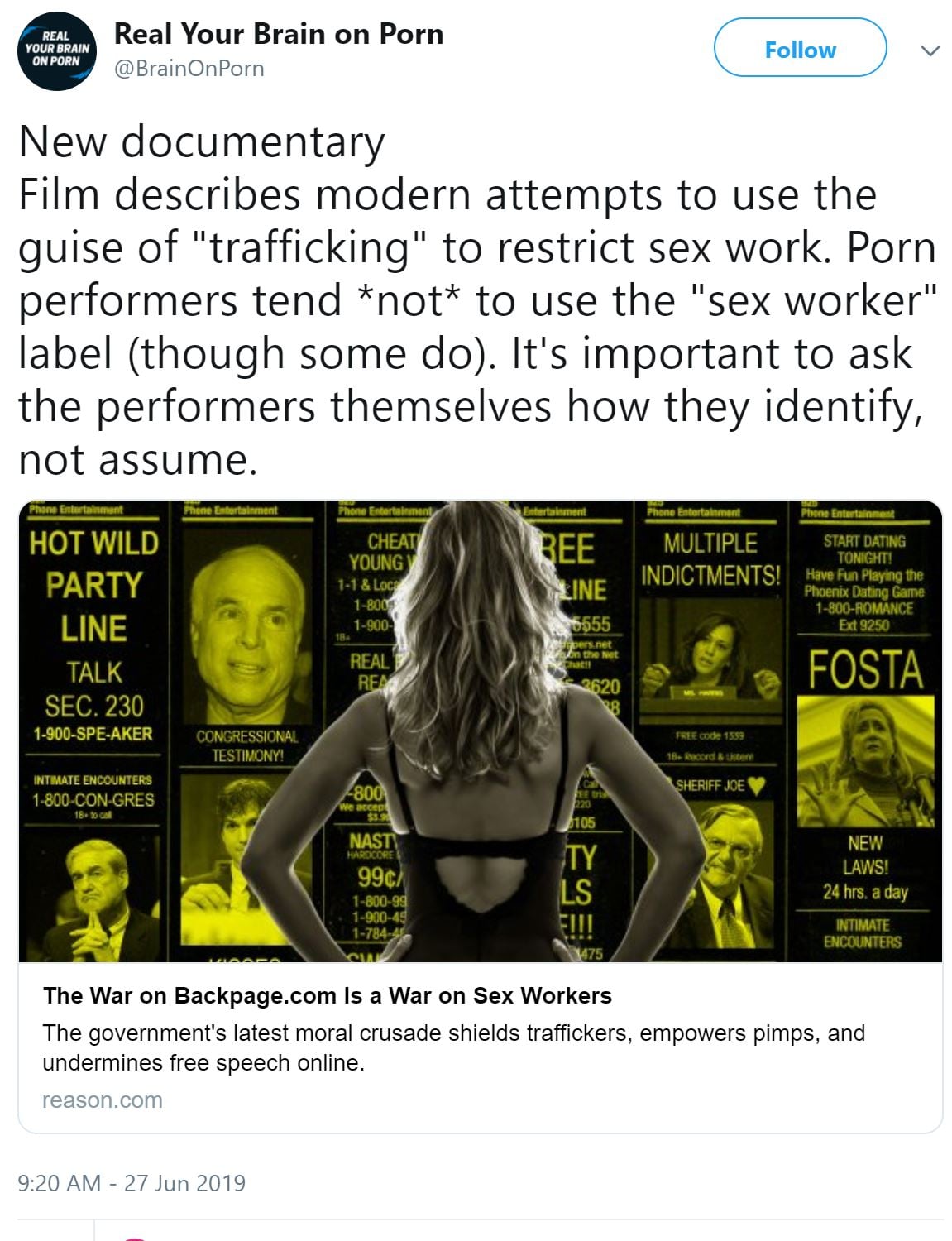
——————–
RealYBOP promoting a paid porn site, implying we should get our sex education from streaming tube sites
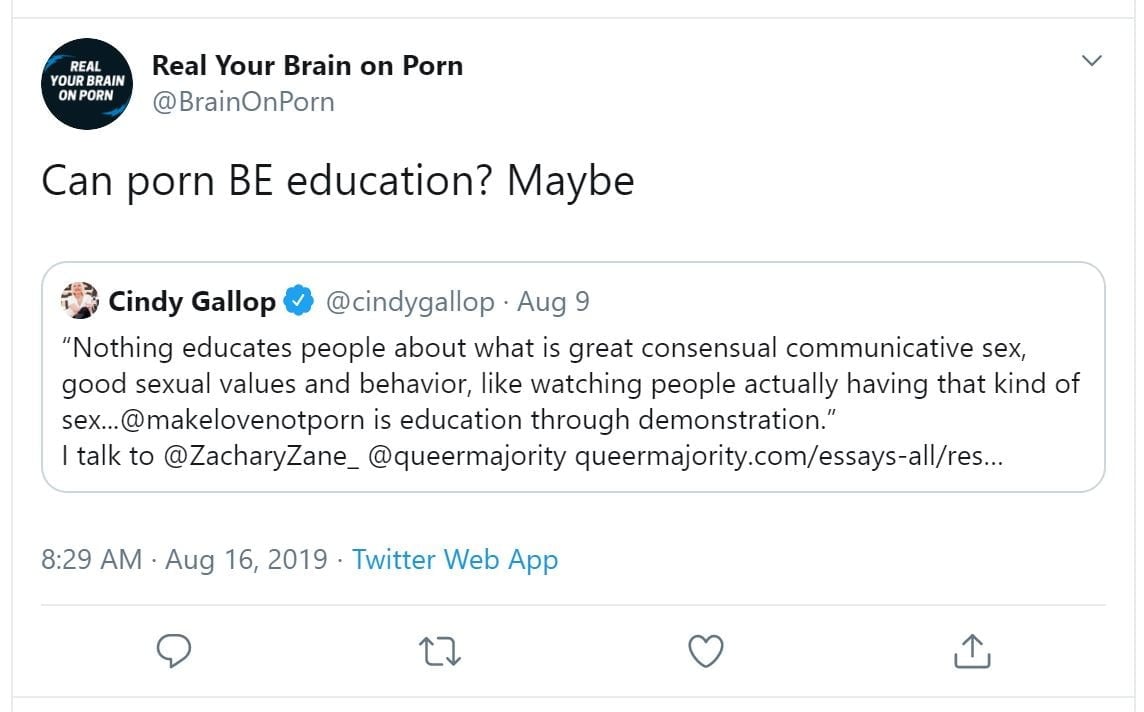
Continues, pimping a paid porn site as the cure for ED and other troubles:

——————
RealYBOP member Hartmann & RealYBOP twitter disparaging feminist Julie Bindel and her article, promoting an XBIZ article:
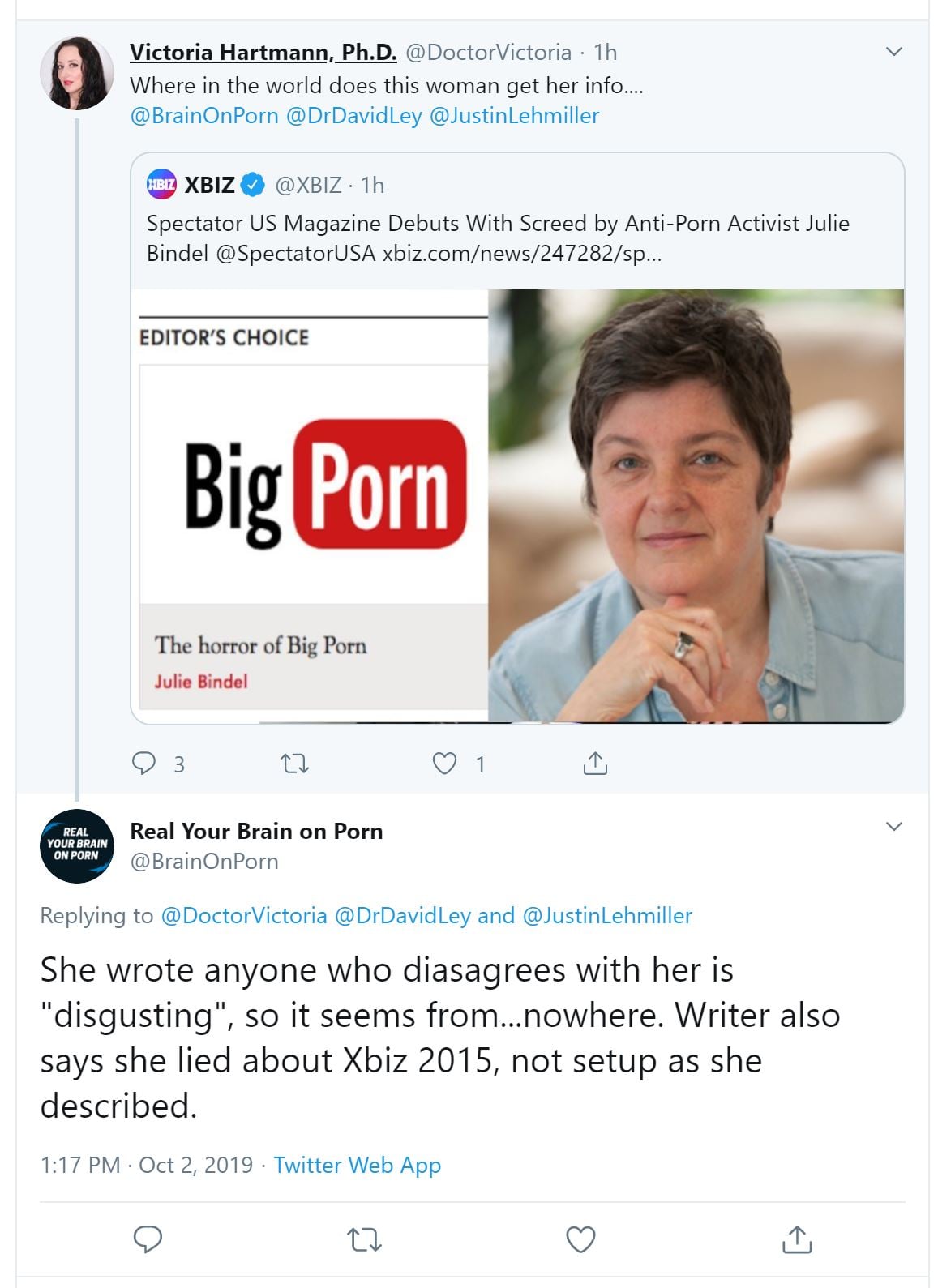
They no longer hide their intimate relationships with the porn industry.
——————-
Direct promotion of porn industry: chummy with well known porn start and director Tommy Pistol

————————
RealYBOP promoting a strip club:
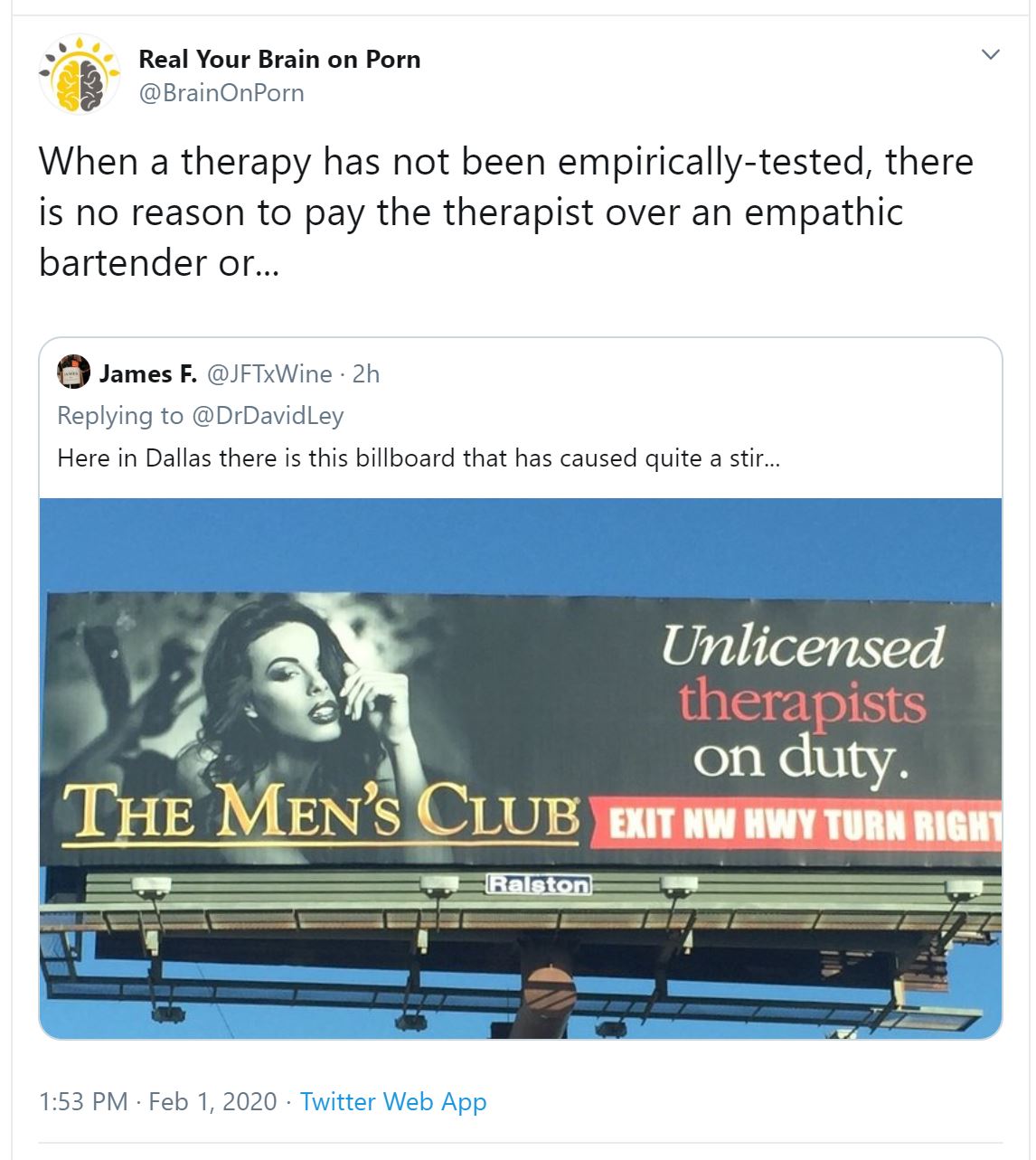
———————————————
Context: RealYBOP trolls yet another account it has blocked (Laila Mickelwait) to defend pornhub (Laila Mickelwait has also filed an affidavit in Rhodes v. Prause). Here’s Laila’s very popular tweet, posted 1/31/20:
Laila continues the next day with facts and concerns
Who would be against age verification? Who would be for porn vids featuring young females who look and act like they are 13-14? RealYBOP, it appears.
RealYBOP spends its Saturday night gathering “evidence” and tweeting a defense of Pornhub and other adult sites.
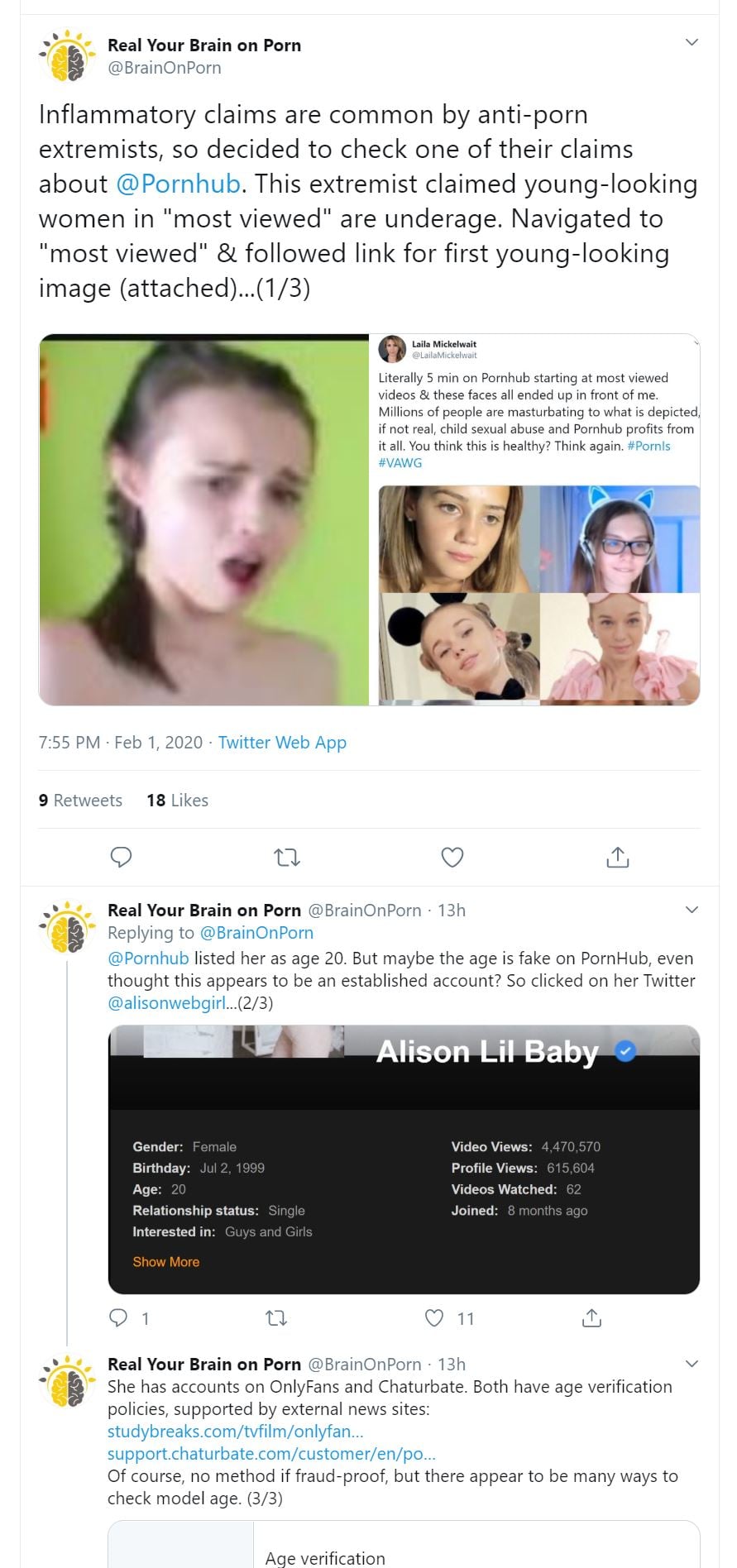
As always, RealYBOP misrepresents what we say, while evading key points. The point of the Tweet is Pornhub has no age verification. Which RealYBOP confirmed and then confirmed she also found the girls most viewed video. It is completely irrelevant that other sites might have some form of ID check (which is questionable). So everything is A-ok because you can hunt around the internet trying to find these thousands of underage appearing girls and try to verify their age that way?
————————-
RealYBOP retweeting article (i.e. propaganda) by XBIZ (calls everyone anti-porn extremists):

———————
Lies about Fight The New Drug, linking to AVN as its trusted source
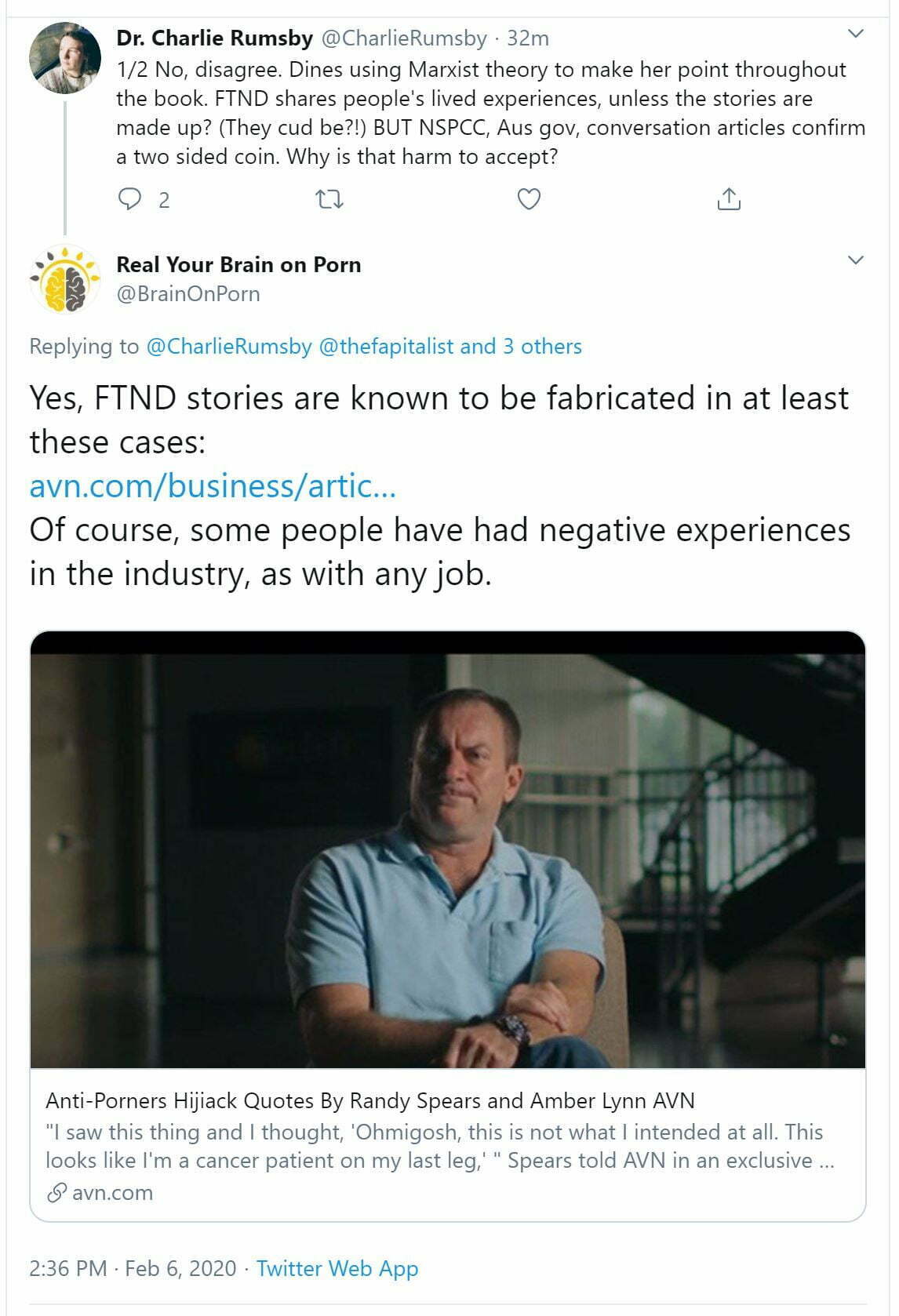
Prause chronically defames and harasses FTND.
—————————
RealYBOP (Prause) retweeting the most prominent porn industry interest group, the Free Speech Coalition.
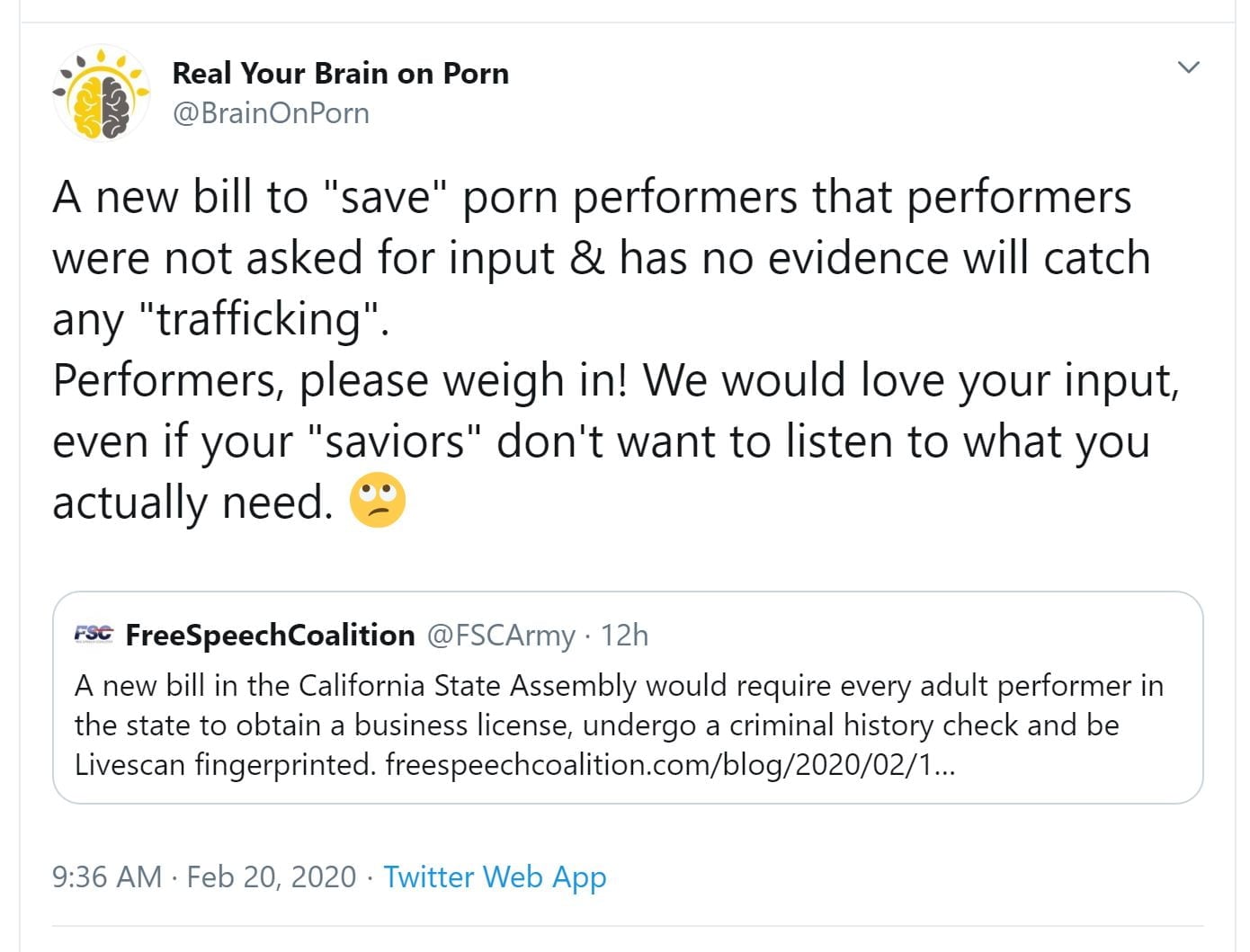
Prause has a cozy history with the FSC:
- In 2015 the Free Speech Coalition offers Prause assistance: she accepts and immediately attacks Prop 60 (condoms in porn)
- The Free Speech Coalition allegedly provided subjects for a Prause study that “debunks” porn addiction
————————
Porn industry shill RealYBOP tweeting propaganda by porn industry representative XBIZ (while attacking FTND):
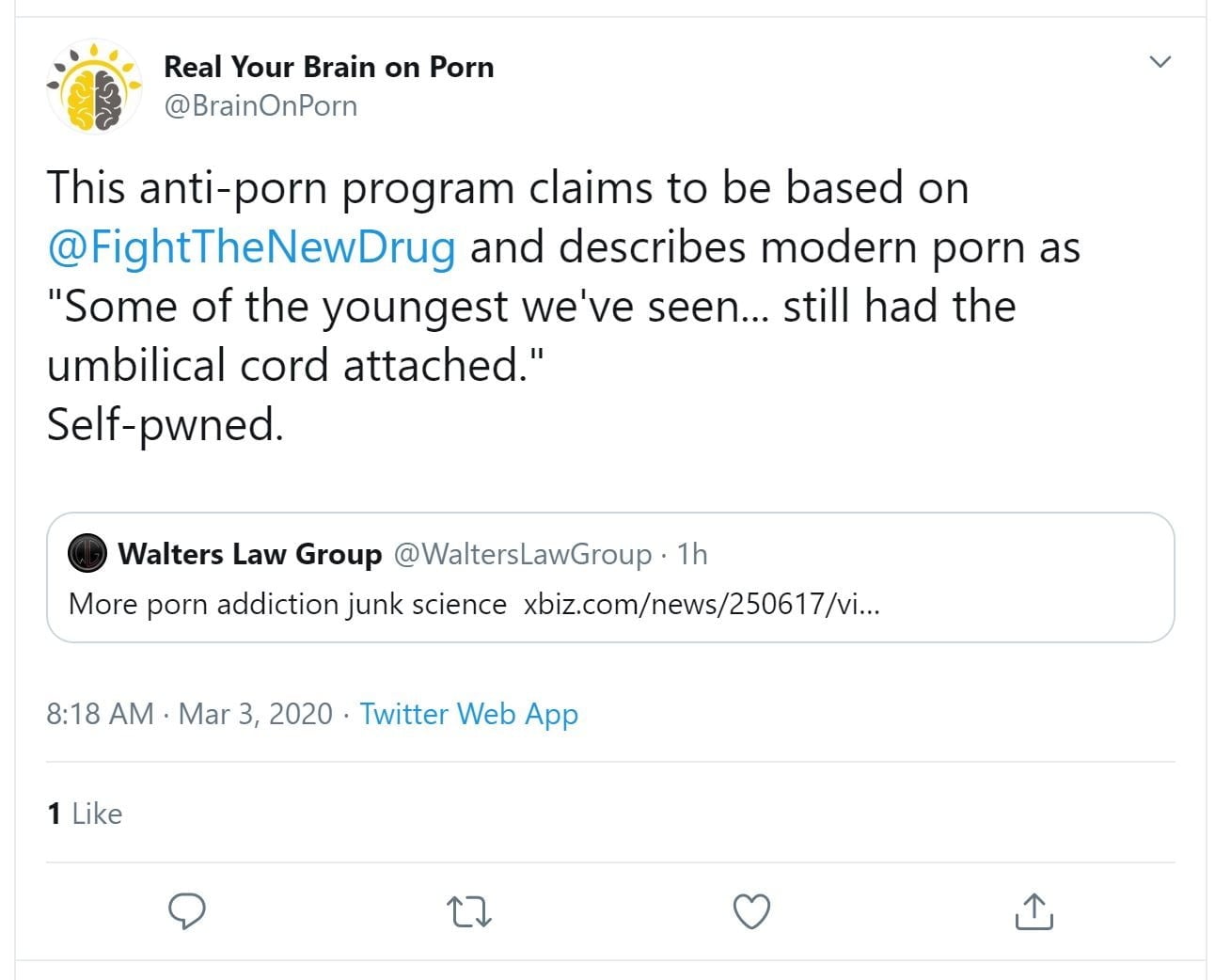
Original news segment: https://wset.com/news/local/pornography-the-new-gateway-drug
———————-
RealYBOP tweets RealYBOP member Taylor Kohut’s support for Pornhub:

While PornHub is being exposed as having videos of sex trafficking victims, RealYBOP is out there defending MindGeek:

More love for PornHub:

—————————
Tweeting about the AVN convention in Las Vegas

———————–
Retweeting XBIZ hit-piece, in support of the porn industry:

XBIZ article is a convoluted mess trying to discredit theguardian.org. But what XBIZ neglects to mention is that the nefarious theguardian.org is not only supported by Humanity United but a host of other players including none other than the Open Society Foundation. I doubt if any entity on the plant has done more to normalize commercial sexual exploitation than OSF/Soros. So the article is built on a house of cards.
————————
Complaining that porn industry and prostitution are exempt:
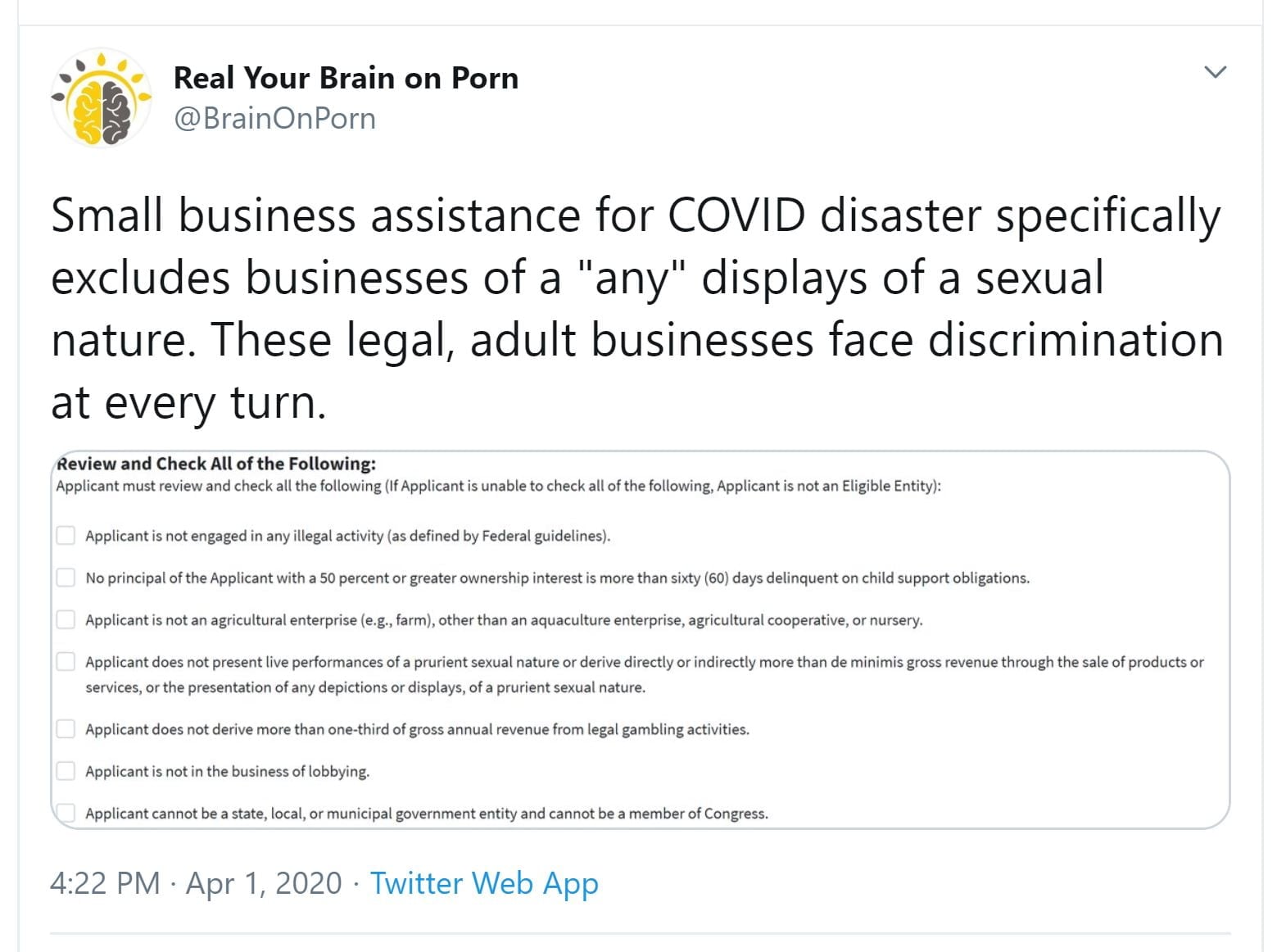
———————————-
Promoting pornhub, who has been monetizing rape and sex trafficking videos on its platform:

Pornhub was the first account to tweet about RealYBOP!
———————————-
Promoting pornhub, even when it is under investigation for regularly hosting child porn and rape videos! The ever loyal RealYBOP.

—————————–
RealYBOP trolling a feminist who is critical of Pornhub for monetizing sex trafficking videos:

RealYBOP is lying, when she claims porn sites don’t contain rape and sex trafficking vids. Scroll through this account, and be prepared to be sick to your stomach. https://twitter.com/LailaMickelwait RealYBOP is defending pornhub!!
————————–
Tweets XBIZ propaganda by XBIZ news editor Gustavo Turner

————————–
Tweets a “sex worker’s” propaganda in support of PornHub:

Uhh, nope, there are now ~50 neuroscience-based studies providing strong support for the addiction model, as their findings mirror the neurological findings reported in substance addiction studies.
—————————
Continued support for Pornhub (which is being outed as hosting numerous child-porn videos):

——————–
Promotes article by a prostitute, “blasting the anti-sex-trafficking pimps”. Sure.
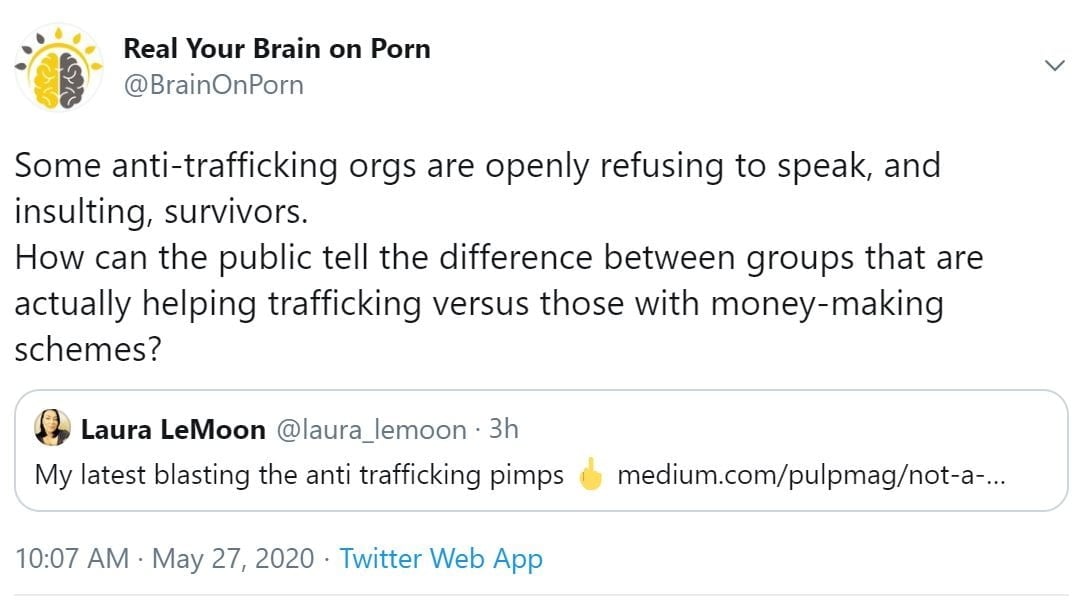
No surprise that Prause and Daniel Burgess’s legal counsel is Wayne B. Giampietro, who was one of the primary lawyers defending backpage.com. Backpage was shut down by the federal government “for its willful facilitation of human trafficking and prostitution.” (see this USA Today article: 93-count indictment on sex trafficking charges revealed against Backpage founders).
————————-
Retweets propaganda by XBIZ (which is defending PornHub)
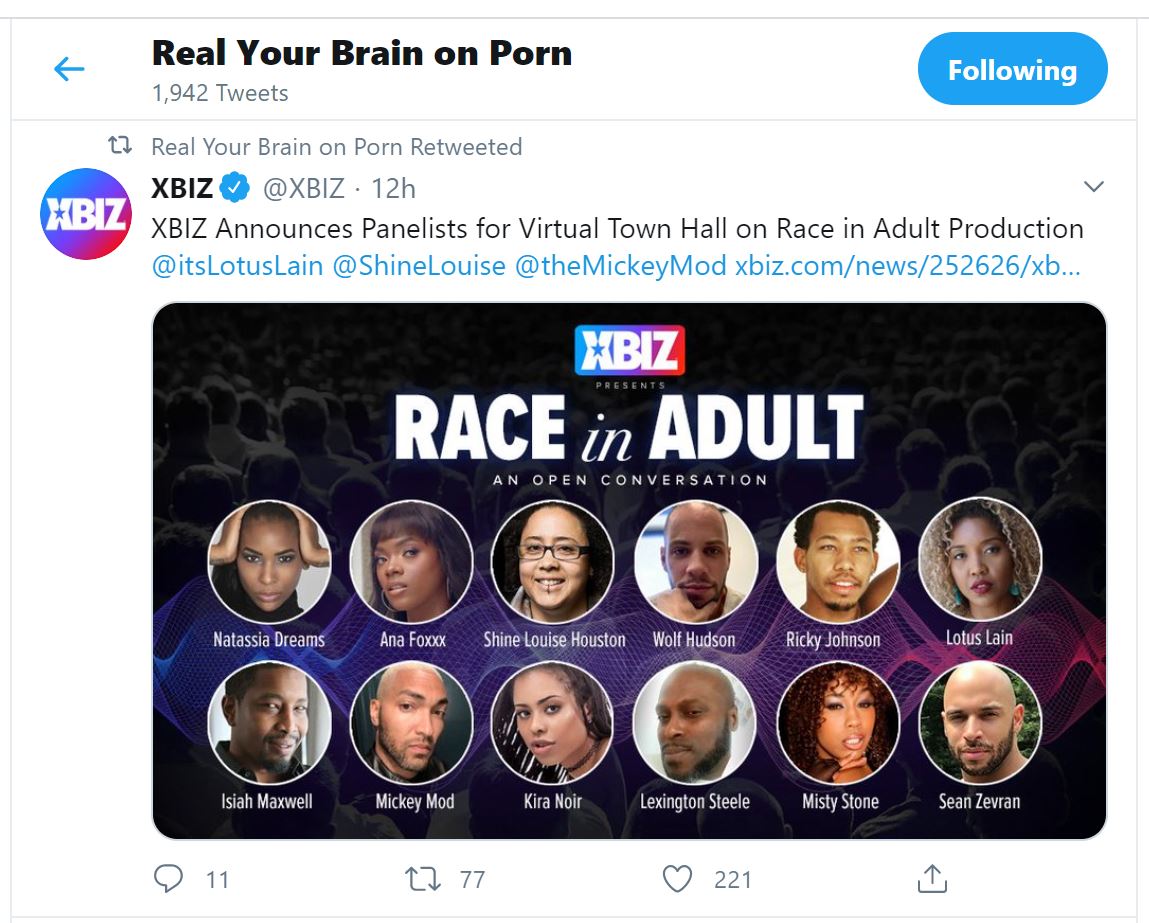
Reality check about pornhub:
———————–
WOW. RealYBOP no longer hides the fact that she is a porn-industry shill. She attacks the petition to hold Pornhub accountable for hosting child porn and sex trafficking videos
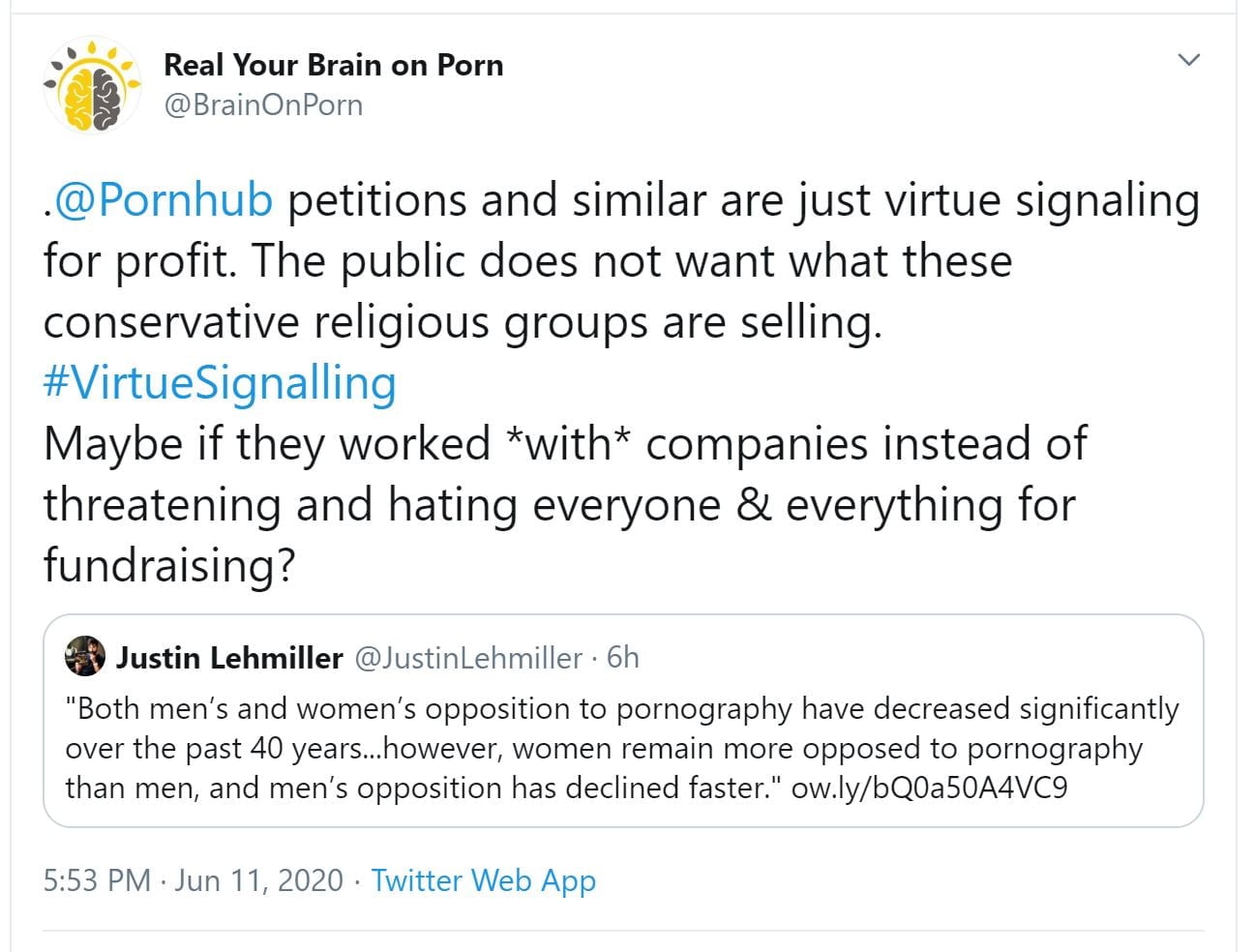
————————-
Retweets “The adult industry support network”:
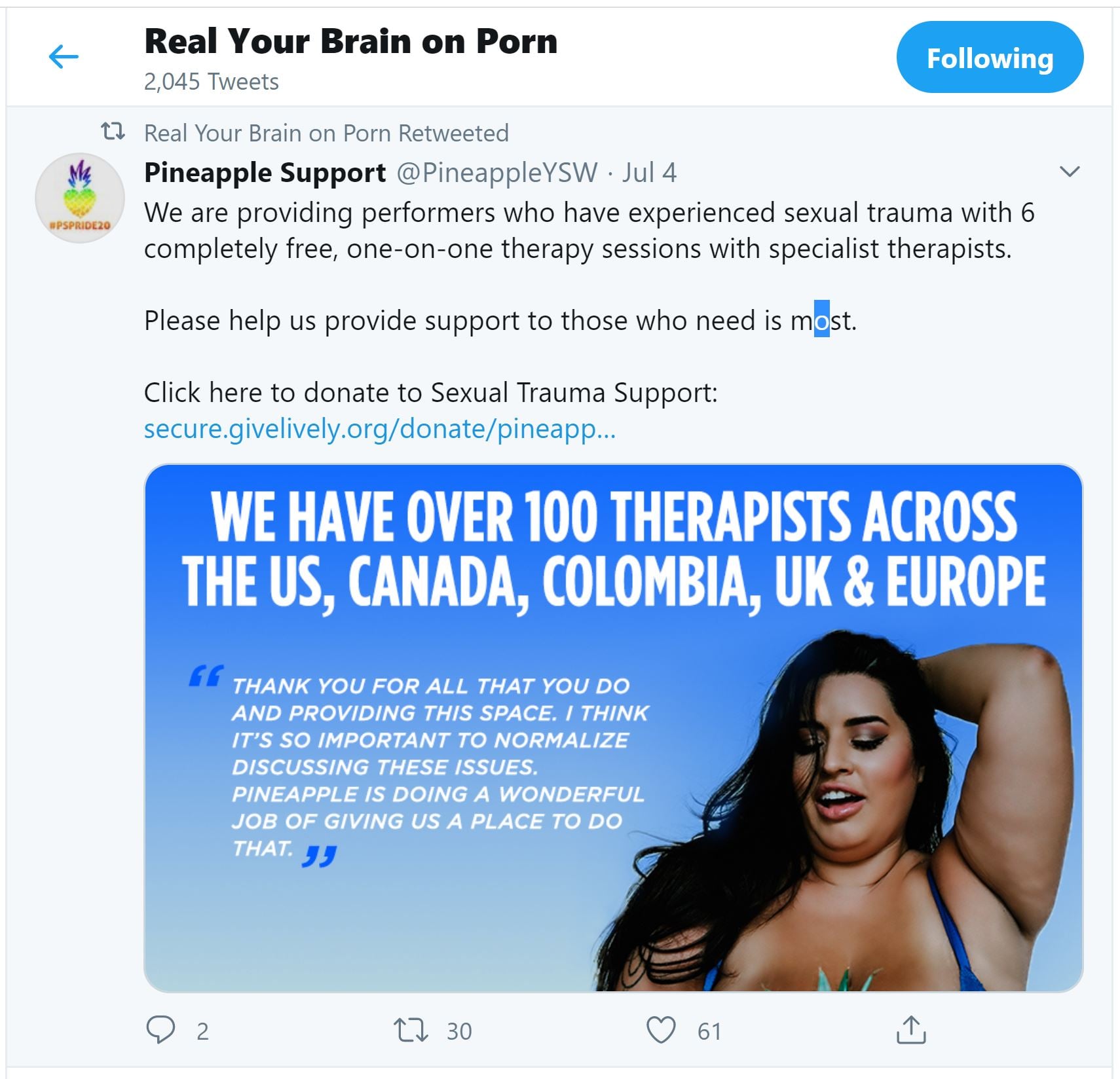
Again, why is a site claiming to be about the effects of porn on users tweeting about the porn industry and performers?
———————————-
Re-tweets a porn producer:
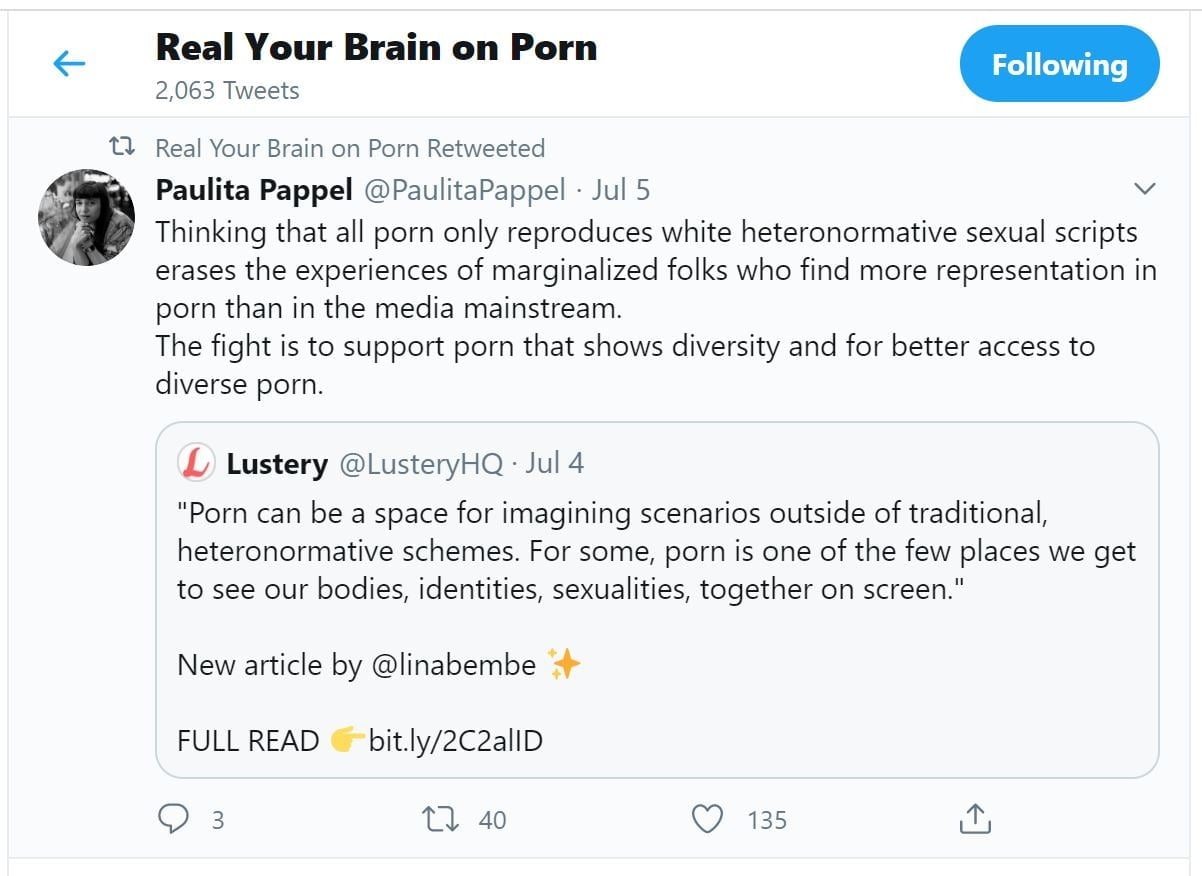
———————————–
RealYBOP trolls a thread to provide direct support for Pornhub. RealYBOP also lies about Exodus Cry, and tries to diminish their campaign to educate the world that pornhub hosts videos of child porn and actual rape:
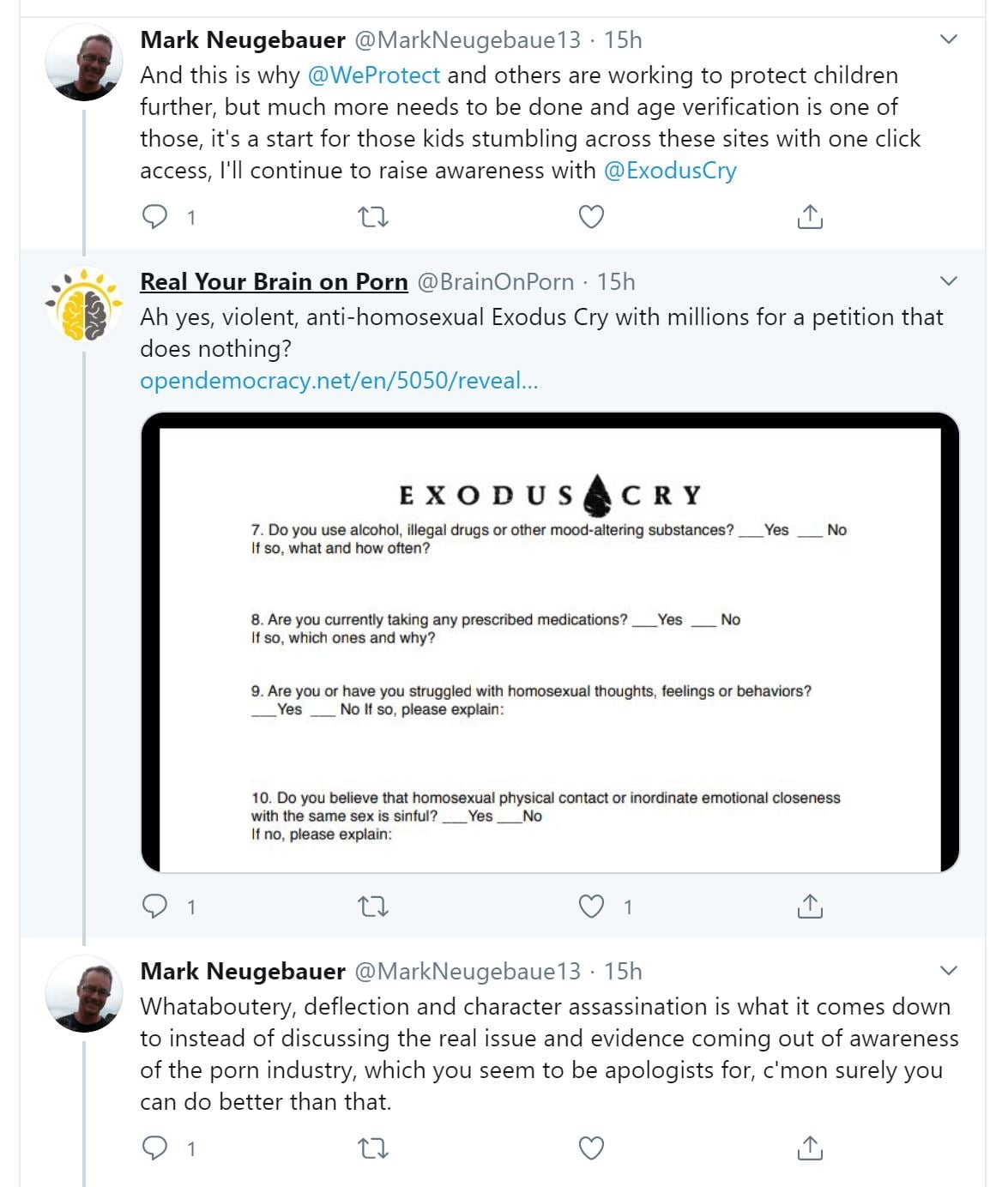
RealYBOP is supporting pornhub, which hosts child porn and sex trafficking videos. Nice.
In same thread, RealYBOP defends pornhub while defaming FTND:
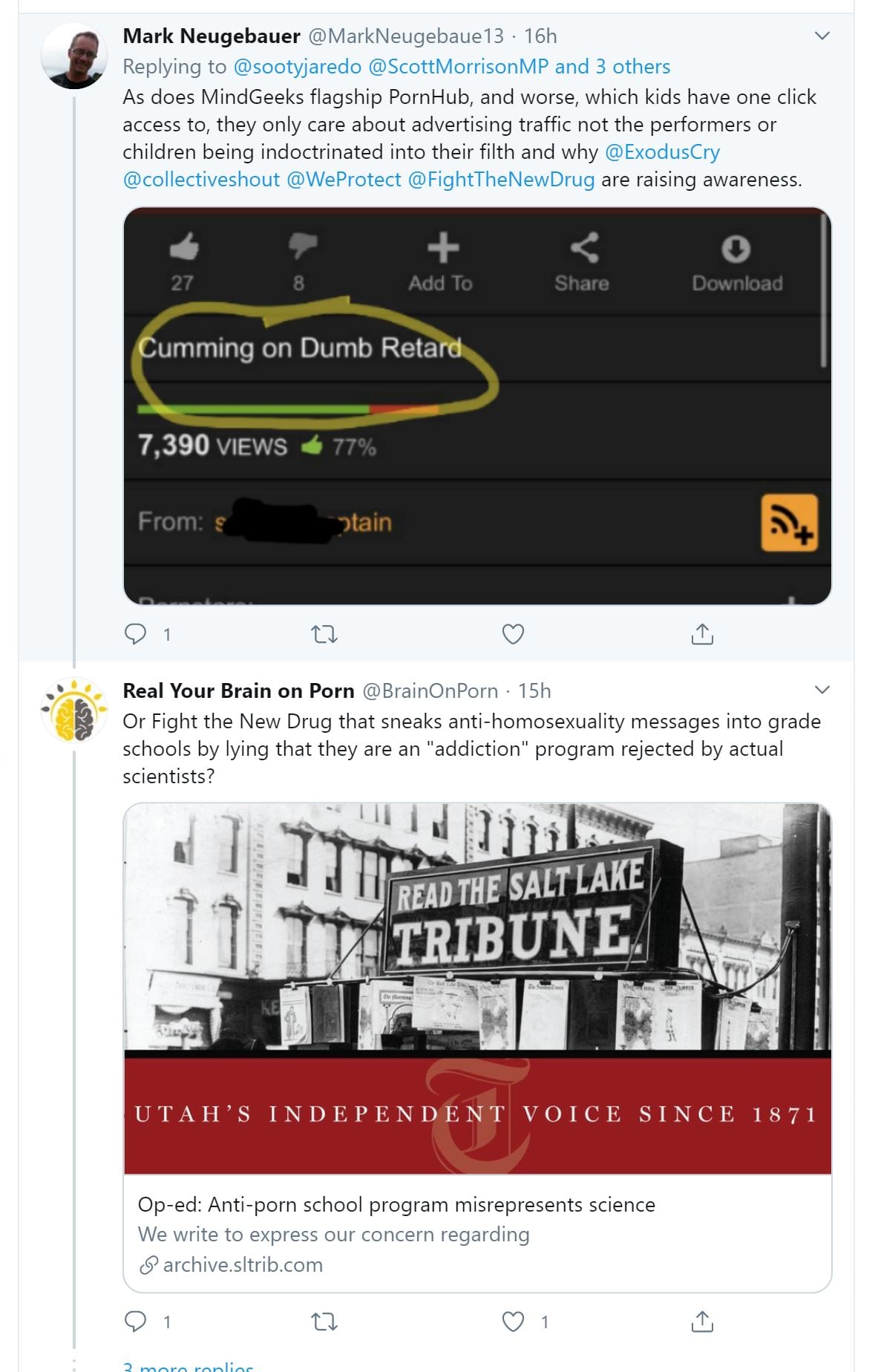
RealYBOP tweets her joke of an op-ed for the 100th time. The 600-word Op-Ed is chock full of unsupported assertions meant to fool the lay public. It fails to support a single assertion as it cites only 4 papers – none of which have anything to do with porn addiction, porn’s effects on relationships, or porn-induced sexual problems. Several experts in this field debunked its assertions and empty rhetoric in this relatively short response – Op-ed: Who exactly is misrepresenting the science on pornography? (2016). Unlike the “neuroscientists of the Op-Ed,” they cited several hundred studies and multiple reviews of the literature.
——————————-
July 13, 2020: RealYBOP trolling 6-week-old thread to defame Exodus Cry and to support Pornhub. RealYBOP once again tweeting the comment by an anonymous troll (and not a Nofap member), that was removed by nofap mods. One deleted comment, by an unknown troll – that is all RealYBOP has – which means she will tweet it over and over again.
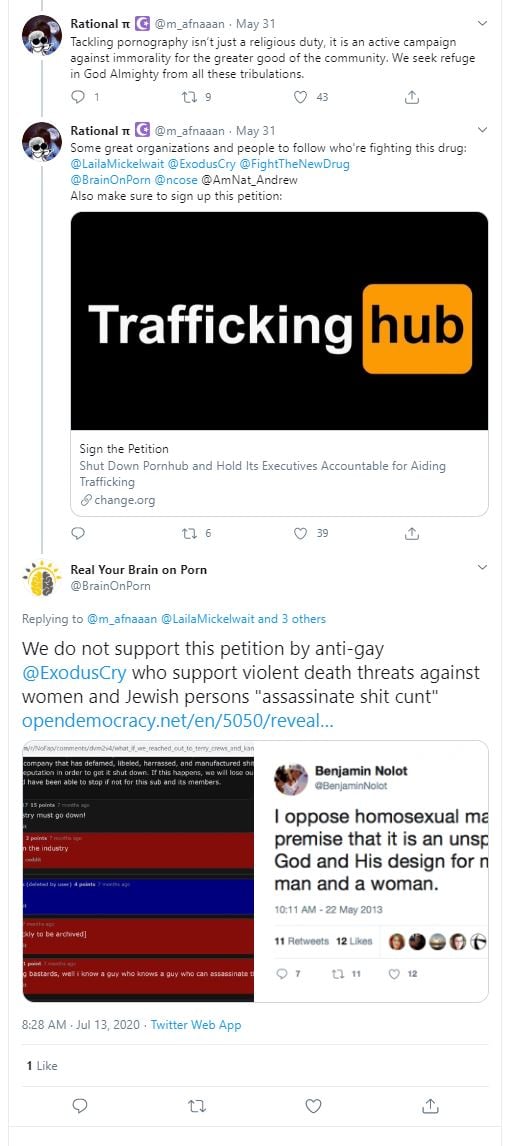
————————
RealYBOP just making stuff up, attacking Terry Crews (while disparaging FTND) for tweeting that PornHub needs to be defunded for hosting child porn and sex trafficking videos. RealYBOP is directly supporting Pornhub!
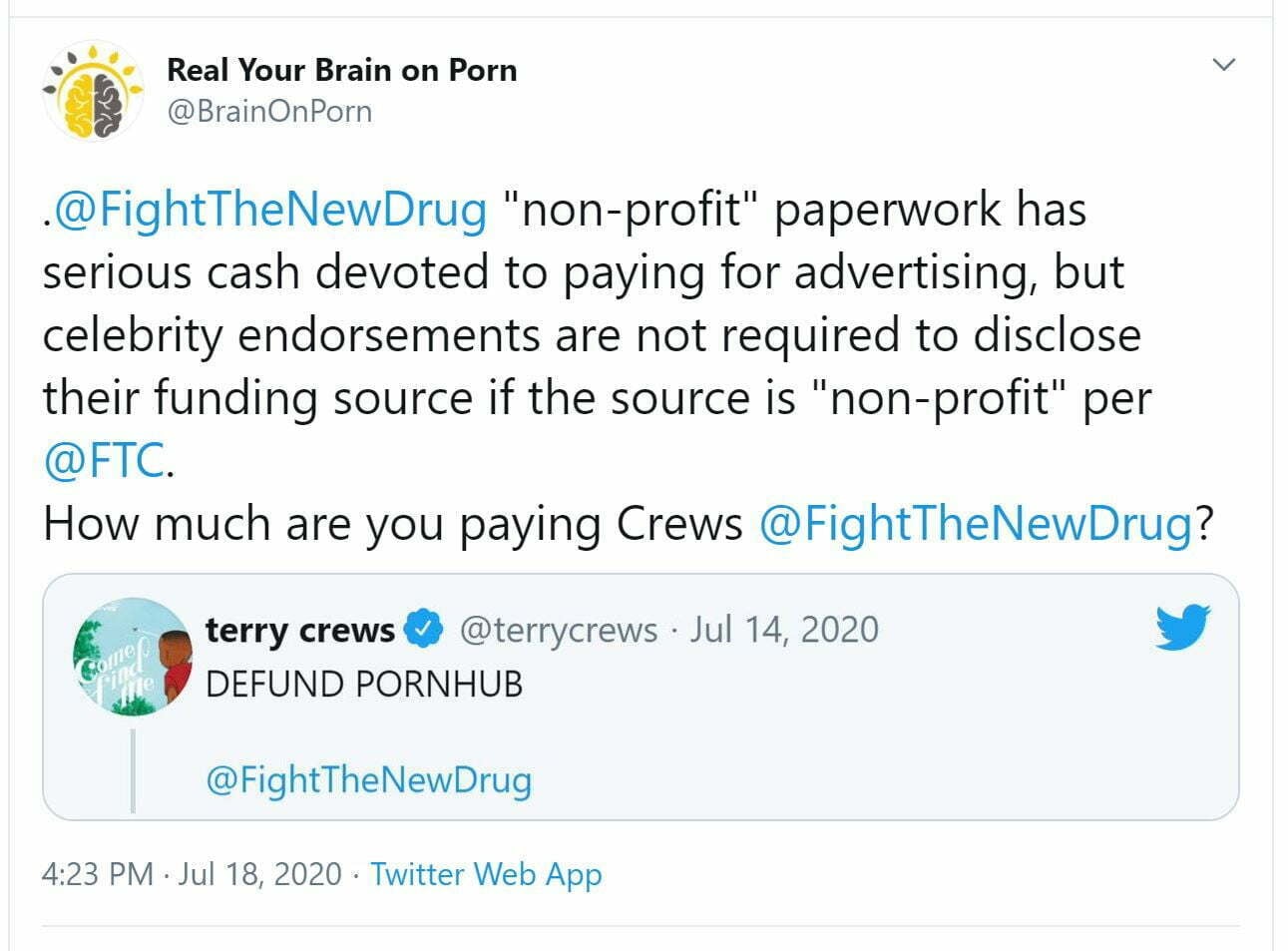
———————————-
RealYBOP retweets Gustavo Turner of XBIZ:
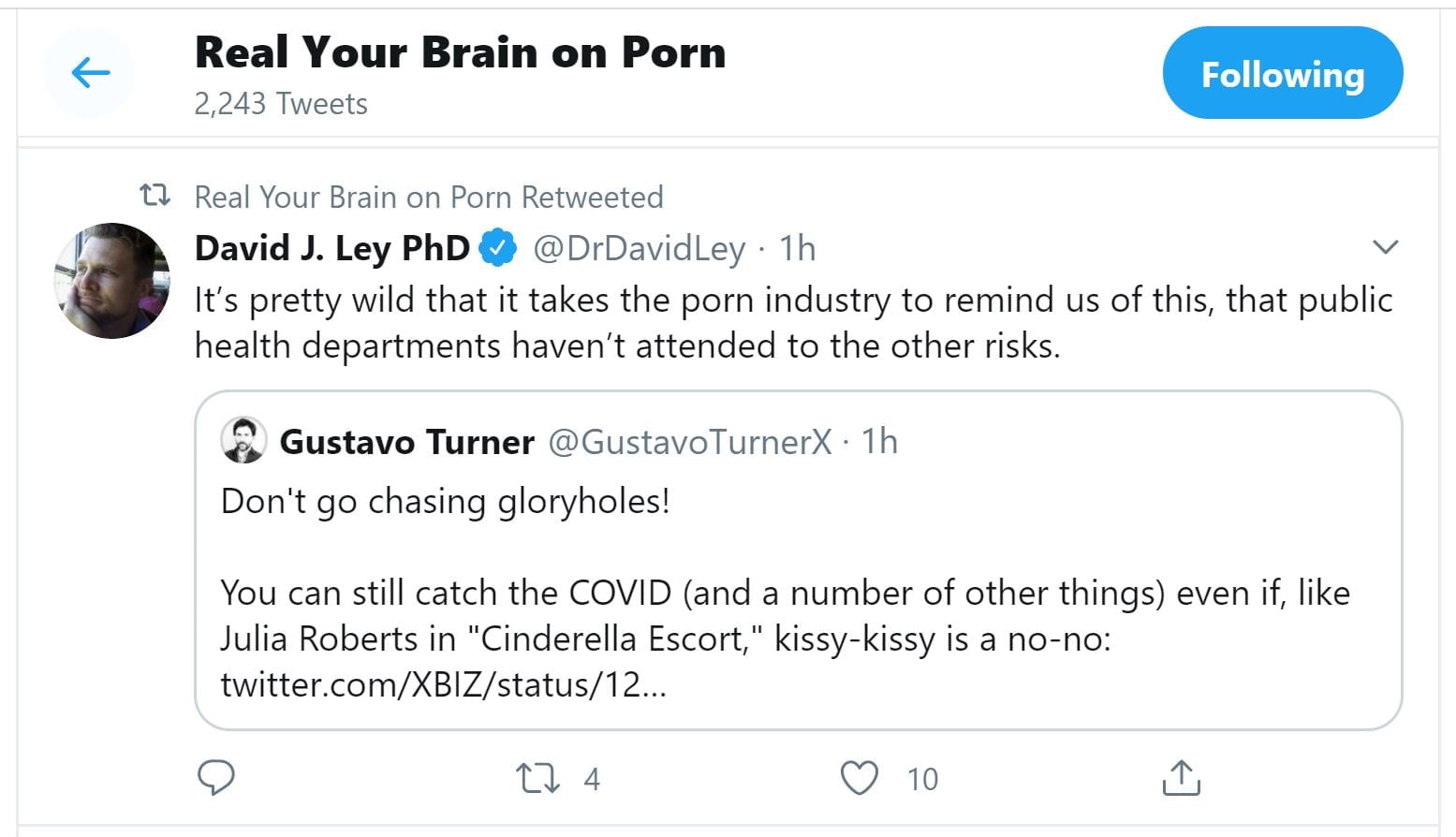
————————————-
July 25, 2020: RealYBOP retweets porn industry ally comments under RealYBOP attack on Nofap:
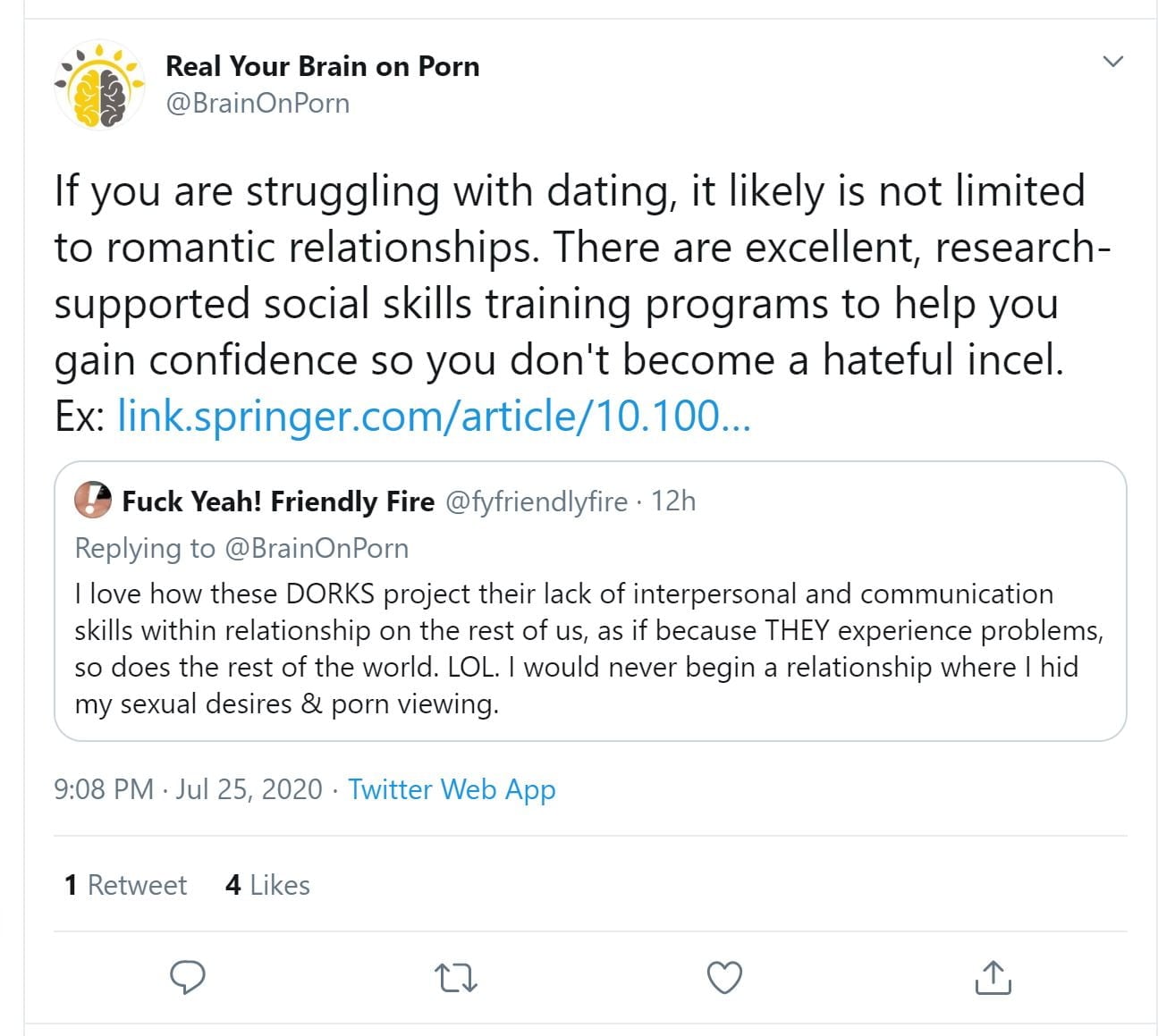
RealYBOP and porn industry twitter account @fyfriendlyfire often collaborate to troll RealYBOP’s usual victims.
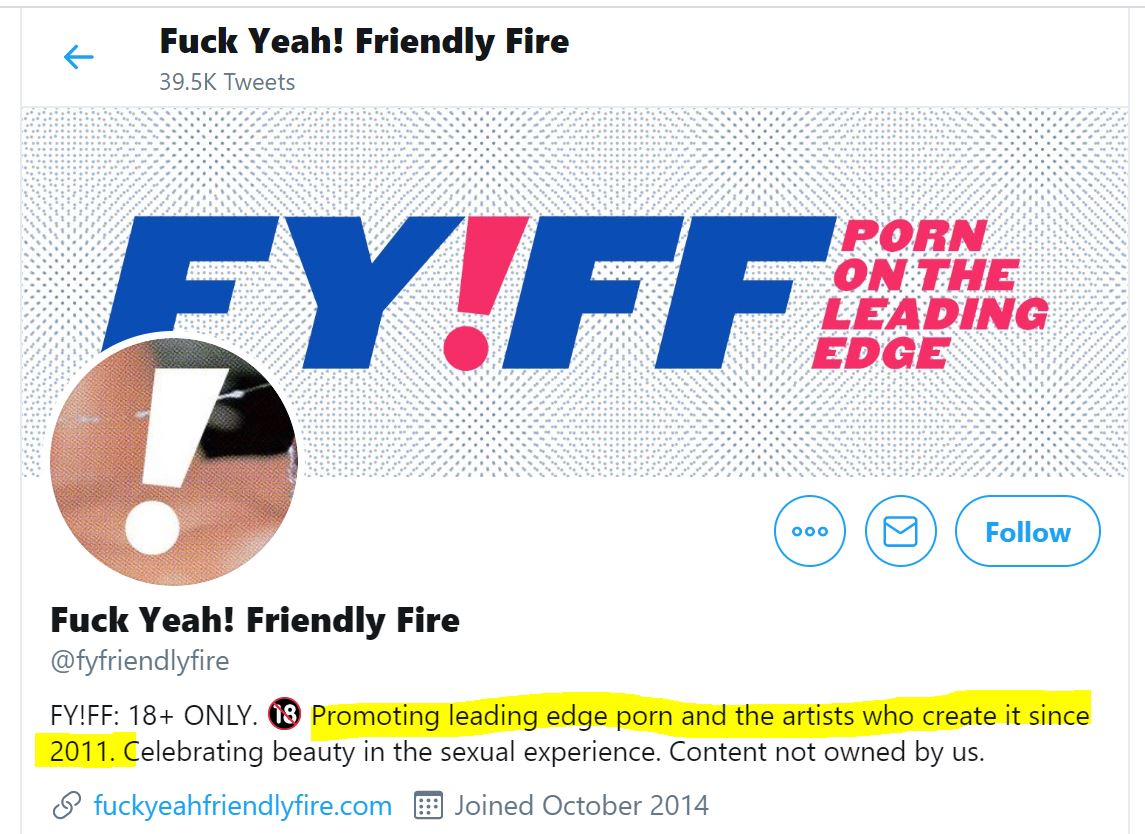
—————————–
RealYBOP retweets sex worker “advocate” take on one of my tweets:
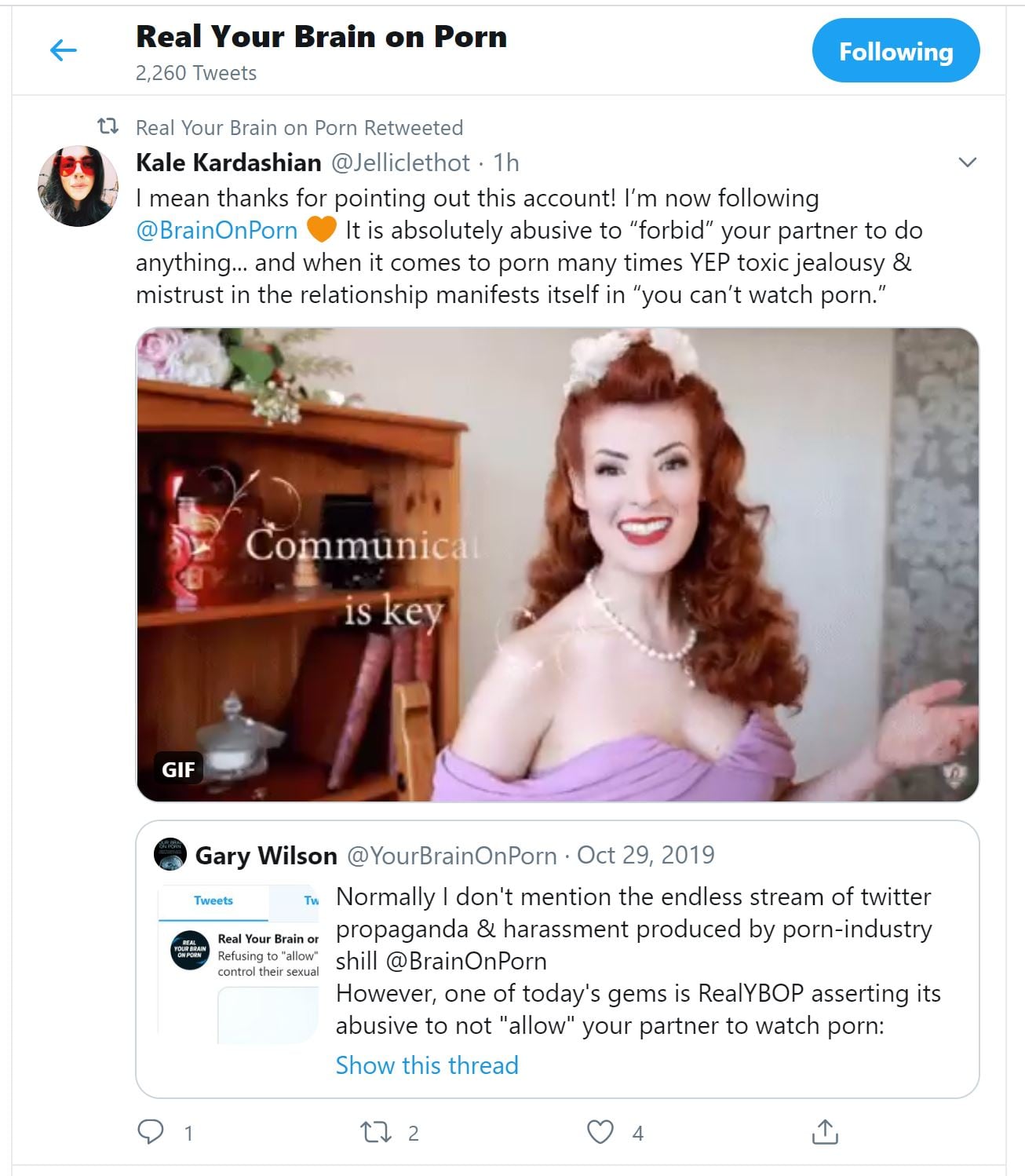
RealYBOP = supporter of the porn industry and of prostitution.
————————————-
RealYourBrainOnPorn (Pornhub’s BFF) is targeting Lala Mickelwait again with an insane tweet trying to connect Exodus Cry to outlandish conspiracy theories. The melmagazine says nothing about Exodus Cry. RealYBOP will stop at nothing to defend Pornhub, including defamation & harassment.
——————————–
Promoting Cindy Gallop’s porn site
————————-
Not studies, but commentaries by advocates of porn use (including a few by PhD’s being paid by big porn):
—————————
Retweeting its close ally, XBIZ:
———————
RealYBOP attacks TraffickingHub, the the campaign to hold Pornhub responsible for hosting child porn and sexual abuse videos (initiated by Laila Mickelwait).
A few months after RealYBOP/Prause’s online cyberstalking and defamation of Laila and Exodus Cry, the NY Times published an investigative articles fully supporting the claims put forth by TraffickingHub & Laila: The Children of Pornhub – Why does Canada allow this company to profit off videos of exploitation and assault?. This was only the beginning for @BrainOnPorn, as it escalated into full on cyberstalking, lies and defamation – all in support of PornHub’s agenda. A few more examples:
Below, RealYBOP directly supports Mindgeek, owner of PornHub by targeting the following tweet by Laila Mickelwait. (Mickelwait’s petition to hold PornHub accountable for unconscionable and illegal content posted to its site has garnered over a million signatures.)
Here is RealYBOP attacking Laila, while defending Mindgeek’s CEO. Note: RealYBOP lies when asserting the account isn’t that of Mindgeek’s CEO.

———————
Here RealYBOP goes complete wacko to disparage Exodus Cry:
RealYBOP trolls traffickinghub supporter:
More support of Pornhub (no comments about how much money Mindgeek takes in):
Trolling threads of traffickinghub supporters, posting EC budget, as if that has anything to do with pornhub.
RealYBOP tweeted that Laila did not attend USC. Merritt calls out RealYBOP for her lie:
RealYBOP posts financials, falsely implying something shady is occurring. RealYBOP says the trafficking hub petition does noting. Boy was RealYBOP wrong: https://traffickinghub.com/
Merritt post protest against pornhub, RealYBOP goes on the attack:
RealYBOP engages in defamation per se, falsely stating Laila asks men to threaten and stalk females. The 4 screenshots says nothing about anyone being stalked, let alone being told so by Laila.
More defamation, falsely claims Laila threatened numerous female scholars. The screenshots are of anonymous internet comments. Nothing related to Laila.
RealYBOP goes absolutely bonkers, with multiple instances of defamation per se:
RealYBOP says the petition will do nothing, yet it caused Pornhub to delete over half of its videos, put new regulations in place, and caused lawmakers to initiate bills and investigations. What happened to RealYBOP? The website was taken down for trademark infringement, while the twitter was permanently banned for harassment!
More insane assertions. No wonder Prause is being sued by multiple parties.
RealYBOP keeps doing Pornhub’s bidding:
Obsessive cyberstalking continues:
After 10 tweets targeting Laila and traffickinghub campaign on September 30, RealYBOP starts up gain on October 1 with more lies:
More defamation per se:
More lies by RealYBOP. In the tweet RealYBOP links to WIPO, which was about the trademark infringement of YBOP. News flash – WIPO doesn’t matter as I now own the URL for RealYBOP: ATTENTION: YBOP acquires www.RealYourBrainOnPorn.com in trademark infringement settlement.
RealYBOP’s insanity continues:
Same, more lies. Screenshots have nothing to do with anyone, just random internet comments.
No wonder Prause is being sued for defamation:
- July, 2019: Donald Hilton amends defamation lawsuit to include affidavits from 9 other victims of Prause, Texas Board of Medical Examiners complaint, incorrectly accusing Dr. Hilton of falsifying his credentials.
- Others – October, 2019: NoFap founder Alexander Rhodes files a defamation lawsuit against Nicole Prause / Liberos LLC.
- September, 2020: Aaron Minc, JD announces his defamation lawsuit against Nicole Prause (Minc owns the law firm representing Alex Rhodes).
More lies and cyberstalking: Laila is not fundraising for other groups (Prause is being sued for libeling NoFap)
LOL – Now RealYBOP is falsely stating I committed perjury. Funny how her screenshots contain no examples, yet I have documented dozen of example of Prause perjuring herself: Nicole Prause & David Ley commit perjury in defamation lawsuit (September, 2019). Hmm.. how did RealYBOP obtain screenshots of Prause FBI online complaints – that named no one, including me? Oh yeah, RealYBOP is Prause.
My twitter thread debunking Prause’s lies:
Hilarious – @BrainOnPorn (Nicole Prause) has tweeted 20 times today that I lied when I said an FOIA request to the FBI proved she lied about filing an FBI report on me and Alex Rhodes
The FBI caught Nikky in a lie. All FBI docs in this section: https://t.co/3R4uJMd1WQ— Gary Wilson (@YourBrainOnPorn) October 7, 2020
Just gets nuttier:
More Prause perjury exposed in my legal victory, where the courts ruled that I was not a stalker, and that Prause was the perpetrator – Prause’s efforts to silence Wilson foiled; her restraining order denied as frivolous & she owes substantial attorney fees in a SLAPP ruling.
RealYBOP (now “Anti-YBOP”, but still @BrainOnPorn) questioning a victim of Pornhub, Avri Sapir
Avri Sapir responds to RealYBOP’s disgusting smear:
RealYBOP tries again to incite her followers to report Exodus Cry to the state of Missouri (just as Prause did a year earlier – February, 2019: Prause falsely accuses Exodus Cry of fraud. Asks Twitter followers to report the non-profit to the Missouri attorney general (for spurious reasons), Appears to have edited the CEO’s Wikipedia page.). No one knows, including RealYBOP, what violation Exodus Cry committed.
Direct support of PornHub:
Finally, Prause no longer hides behind her alias account:
She immediately goes back to her alias, pointing out obvious: EC wants to end sex trafficking.
More hit-pieces loaded with falsehoods:
More cyberstalking in support of Pornhub:
More cyberstalking of Traffickinghub supporters:
Entering threads of traffickinghub supporters, spreading misinformation
RealYBOP assaults on traffickinghub and Laila end here as RealYBOP twitter was permanently banned for harassment:
It looks like Nicole Prause's porn-industry shill account @BrainOnPorn has been suspended for hateful abuse and targeted harassment.
Wonder if this is permanent? Should be.
Also gone is its trademark infringing website – https://t.co/WfgWlKA1JL pic.twitter.com/577LfflIzq— Gary Wilson (@YourBrainOnPorn) October 24, 2020
Epilogue: a 2021 Op-ed in Washington Times by Laila Mickelwait describing the disgusting activities of Pornhub and its operatives (such as RealYBOP) – The end of Pornhub’s campaign of intimidation.
—————————-
The Canadian Parliament might disagree
————————————————————–
For much more related to the RealYBOP website and Twitter
- RealYourBrainOnPorn (@BrainOnPorn) tweets: Daniel Burgess, Nicole Prause & pro-porn allies collaborate on a biased website and social media accounts to support the porn industry agenda (beginning in April, 2019).
- RealYourBrainOnPorn (@BrainOnPorn) tweets, page 2: Daniel Burgess, Nicole Prause & pro-porn allies collaborate on a twitter account to support the porn industry and to harass & defame anyone who speaks about porn’s negative effects.
- Porn Science Deniers Alliance (AKA: “RealYourBrainOnPorn.com” and “ScienceOfArousal.com”)
- Cease and desist letter to Daniel A. Burgess for trademark infringement of YourBrainOnPorn (September, 2020)
- Cease and Desist Letter to Nicole R Prause & Liberos LLC for Illegal Trademark Infringement of Your Brain On Porn and www.yourbrainonporn.com
- ATTENTION: YBOP acquires www.RealYourBrainOnPorn.com in trademark infringement settlement
- Addressing unsupported claims, personal attacks and defamation by Daniel A. Burgess, LMFT (Feb-March, 2018)
- Aggressive Trademark Infringement Waged by Porn Addiction Deniers (www.RealYourBrainOnPorn.com)


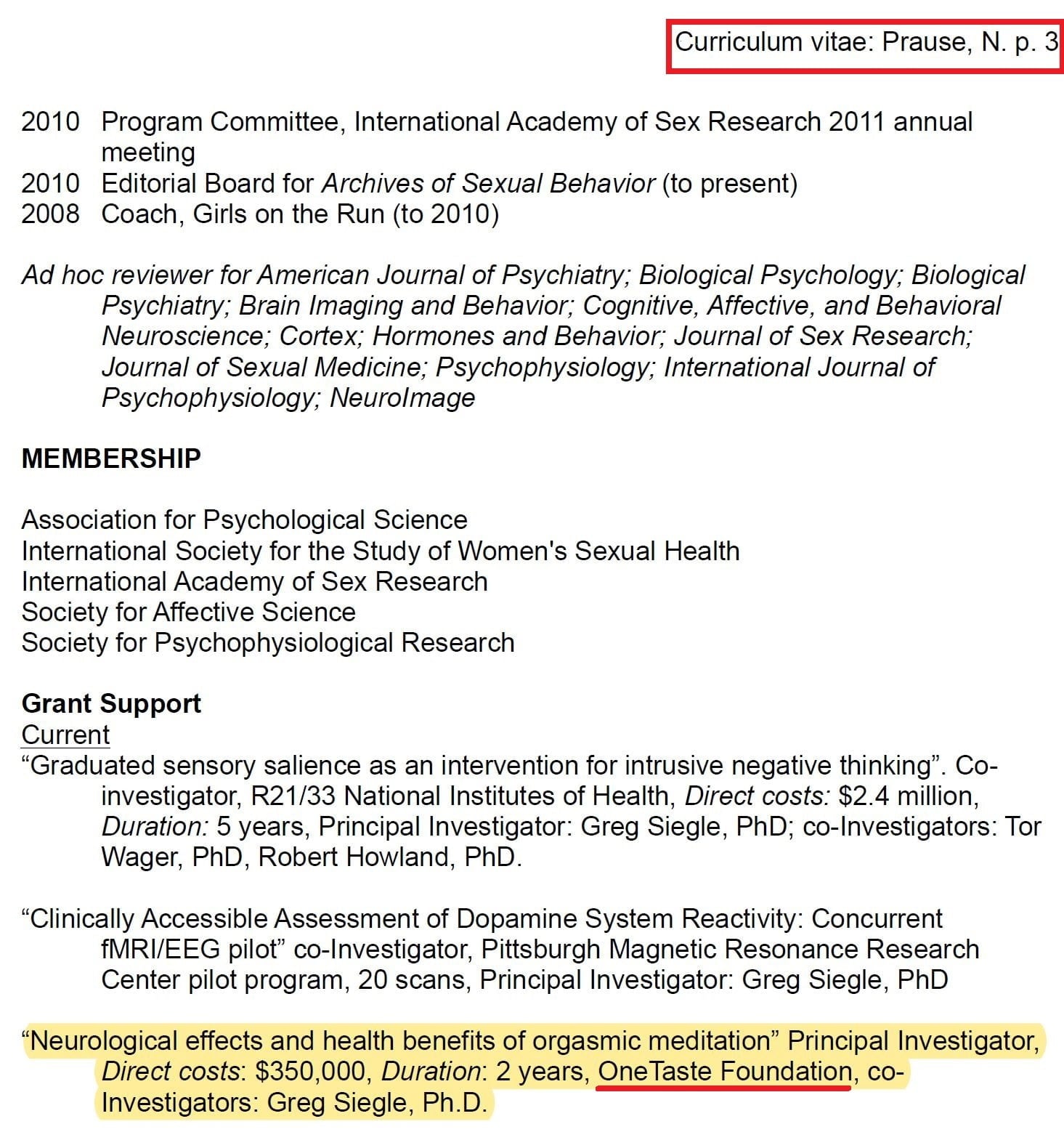
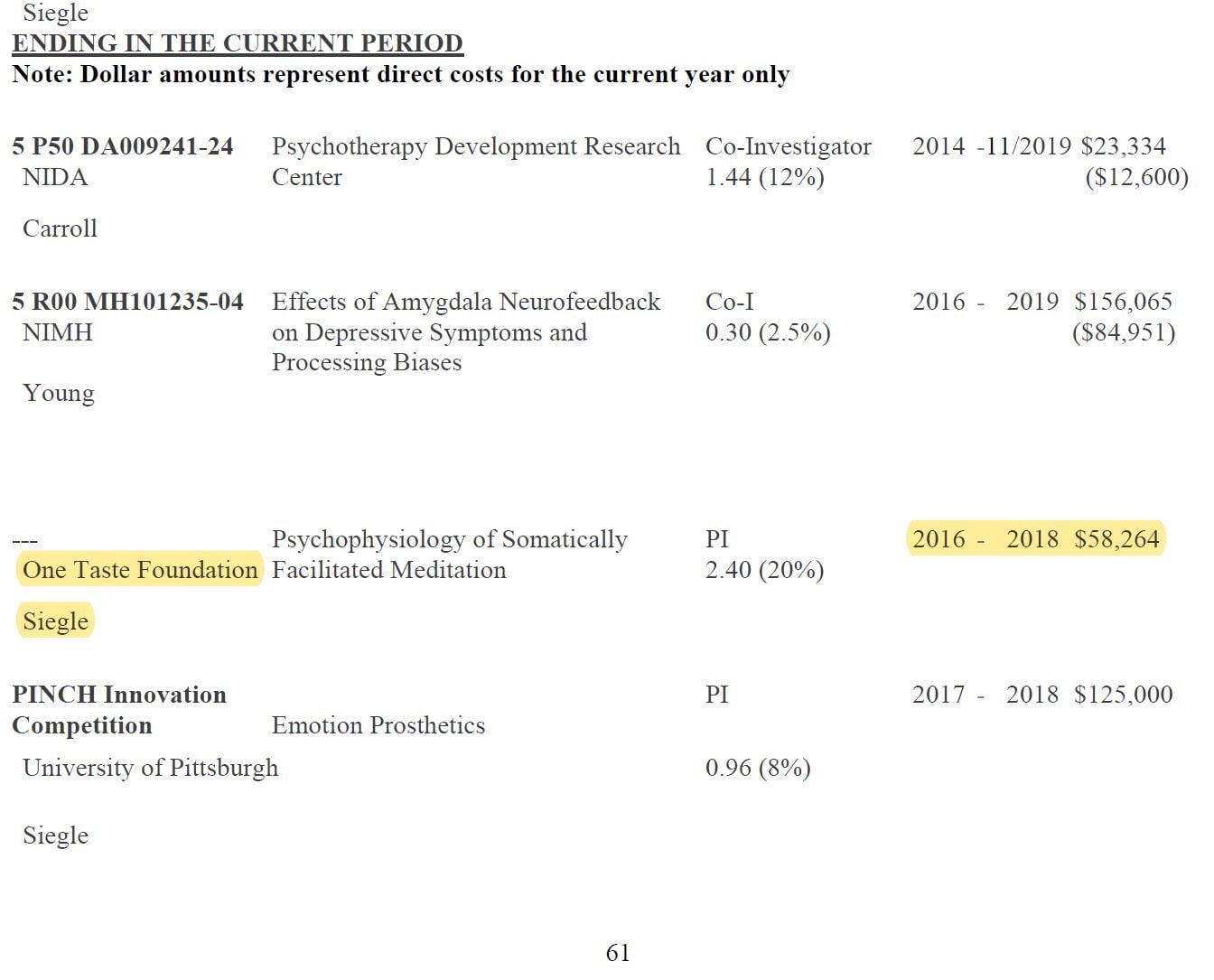
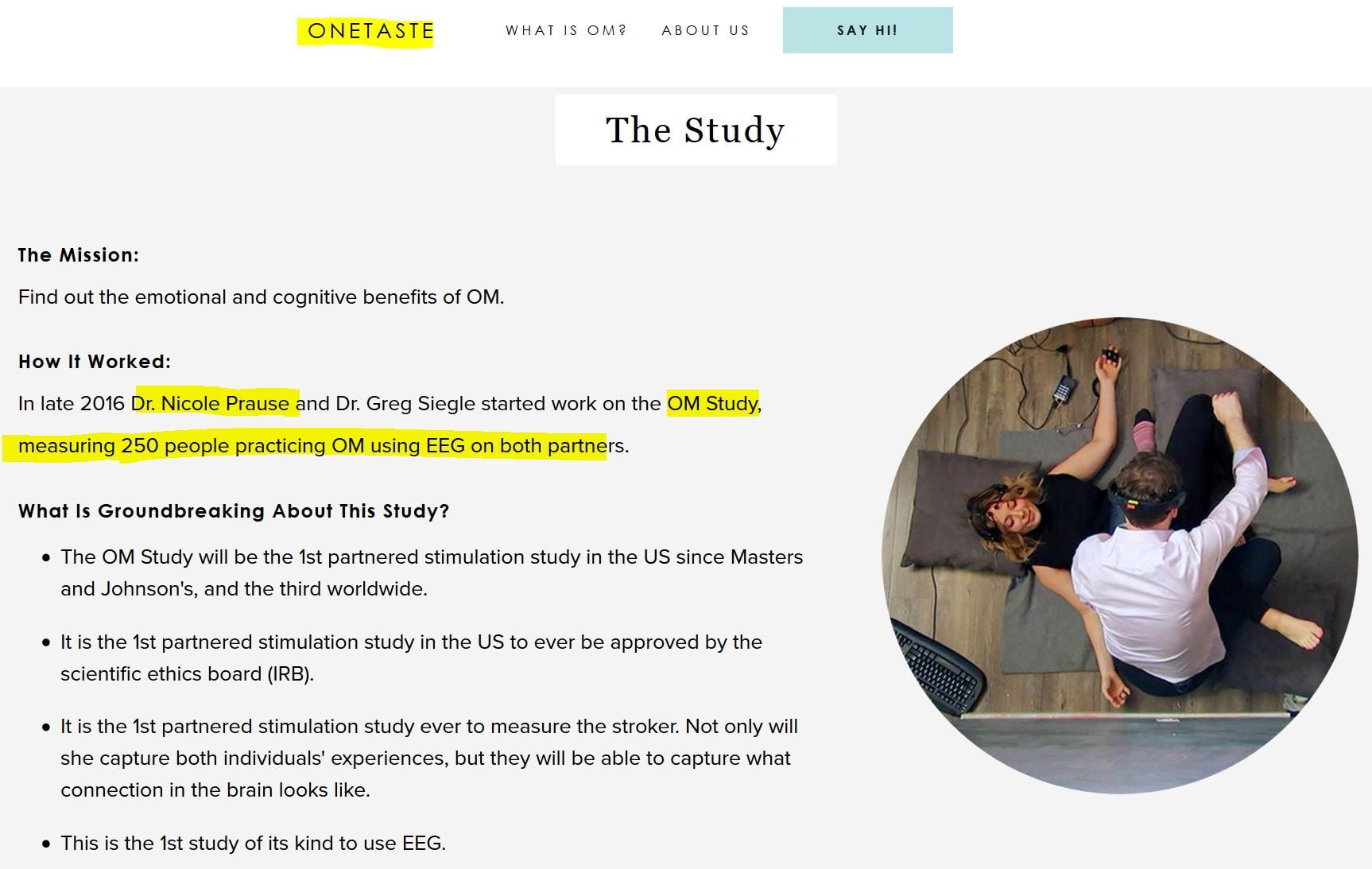
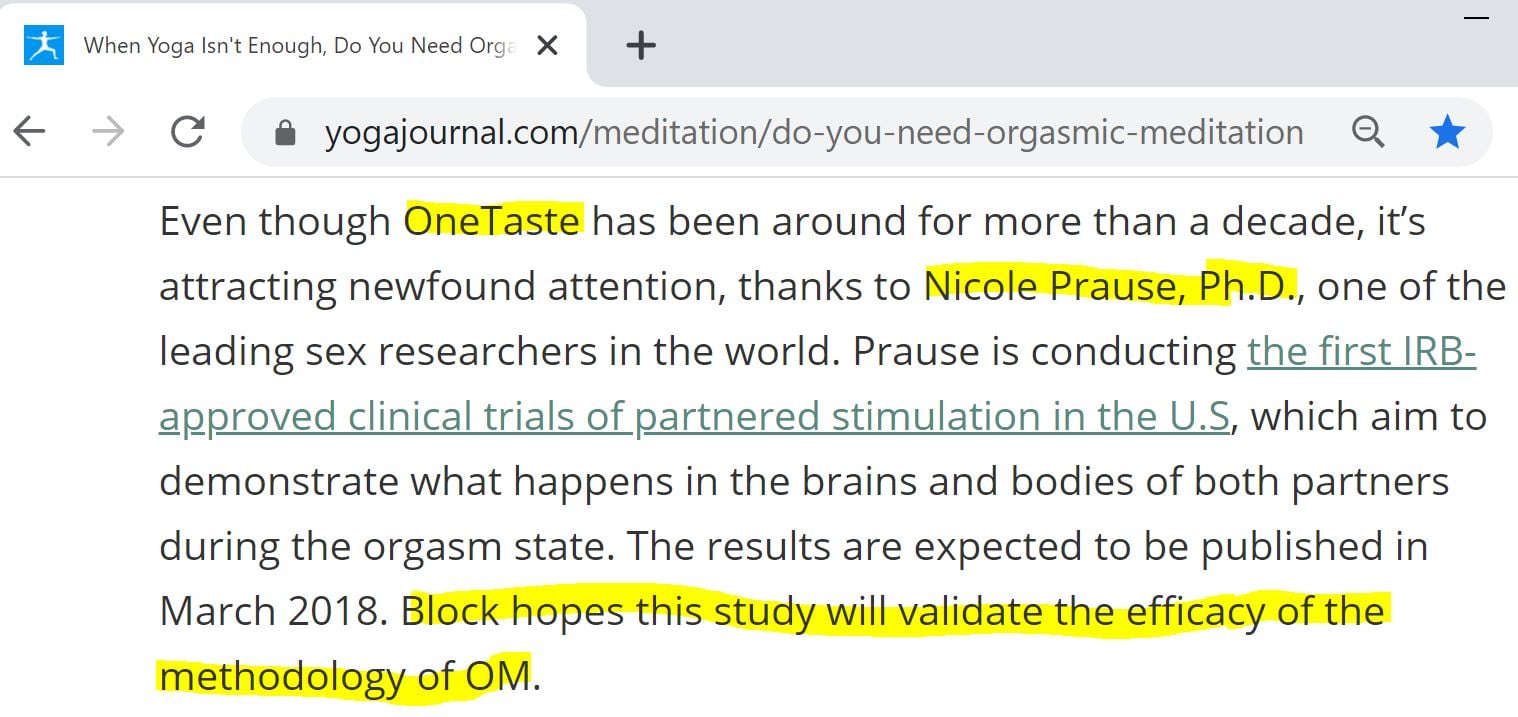
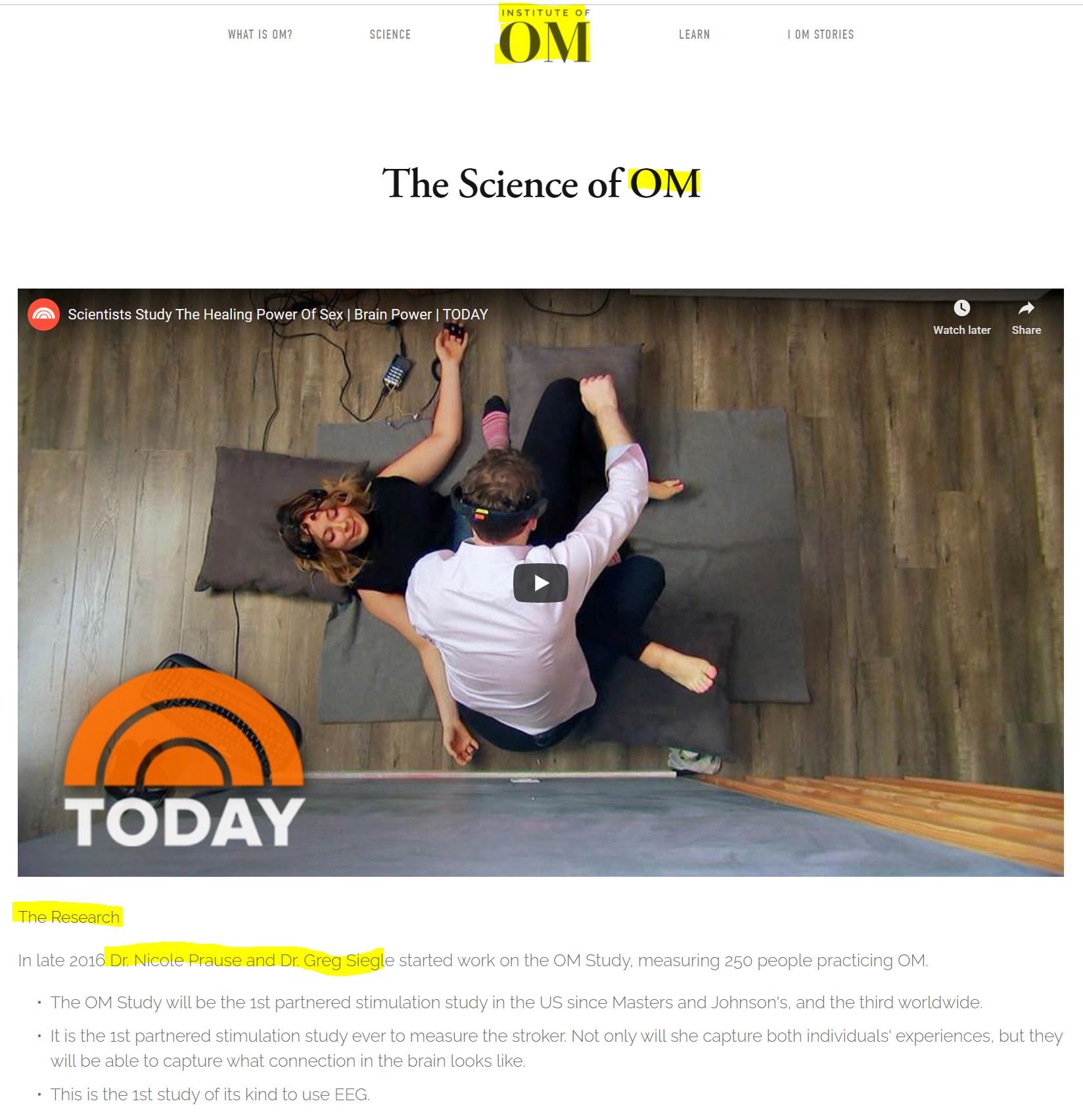
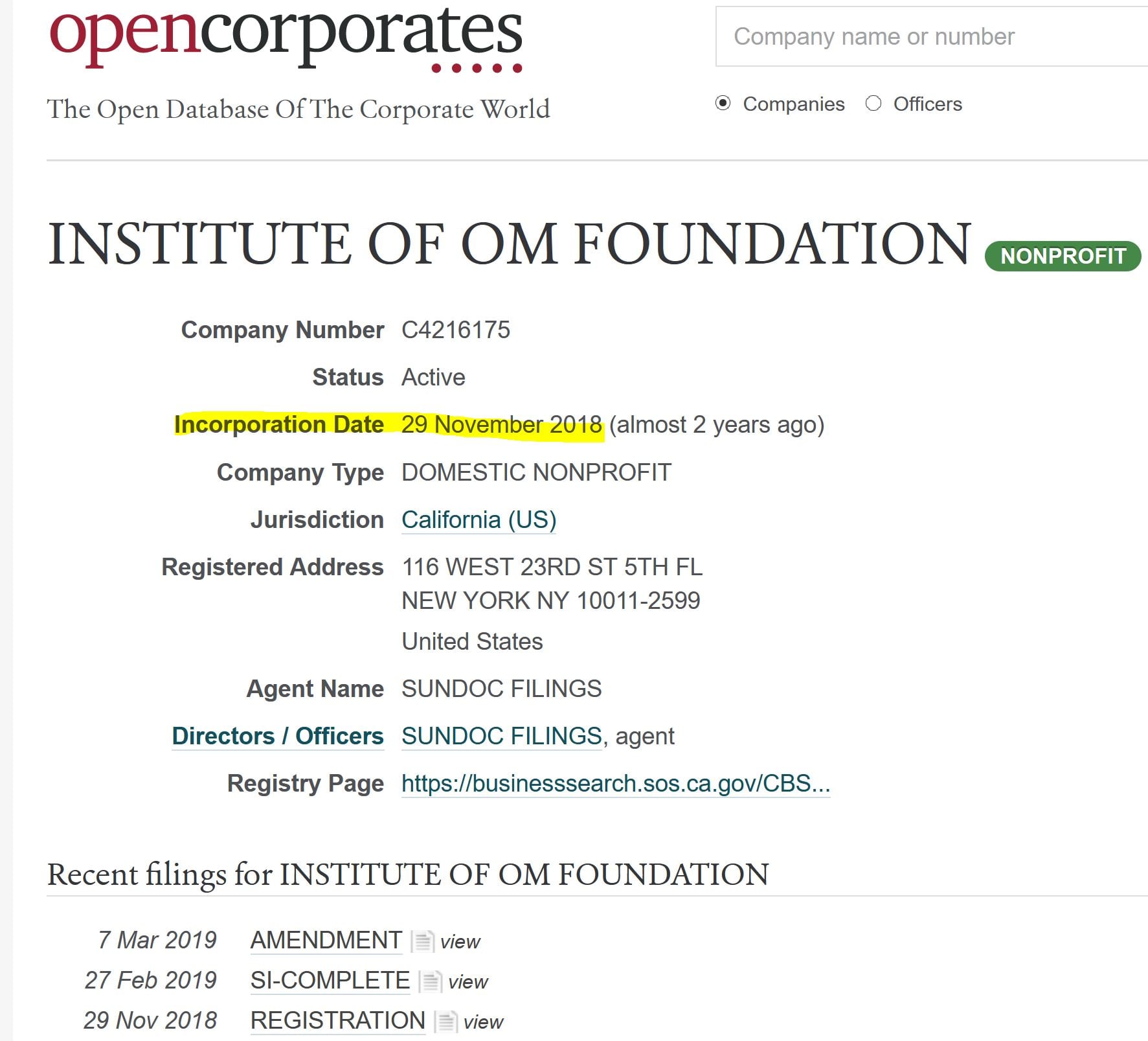
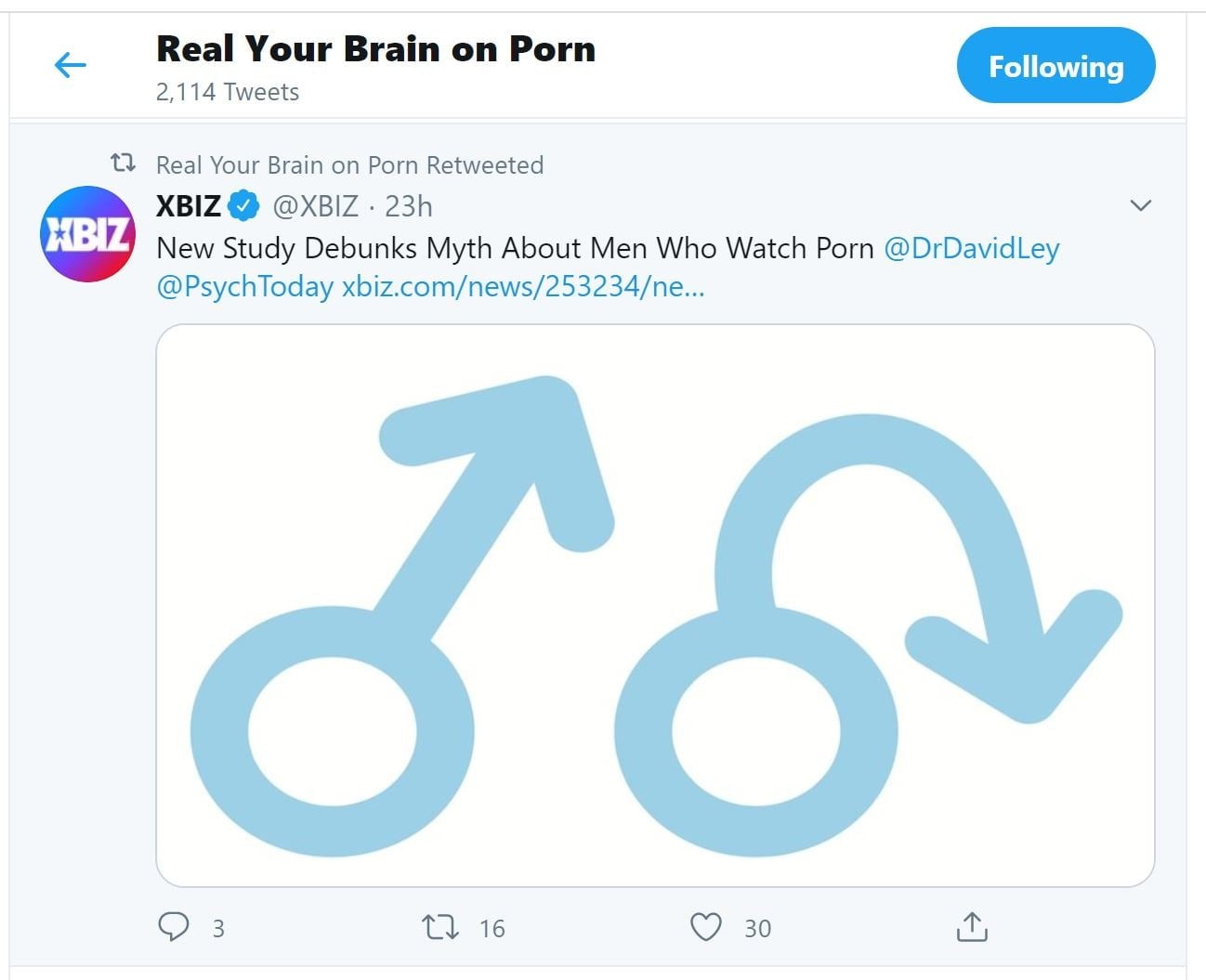


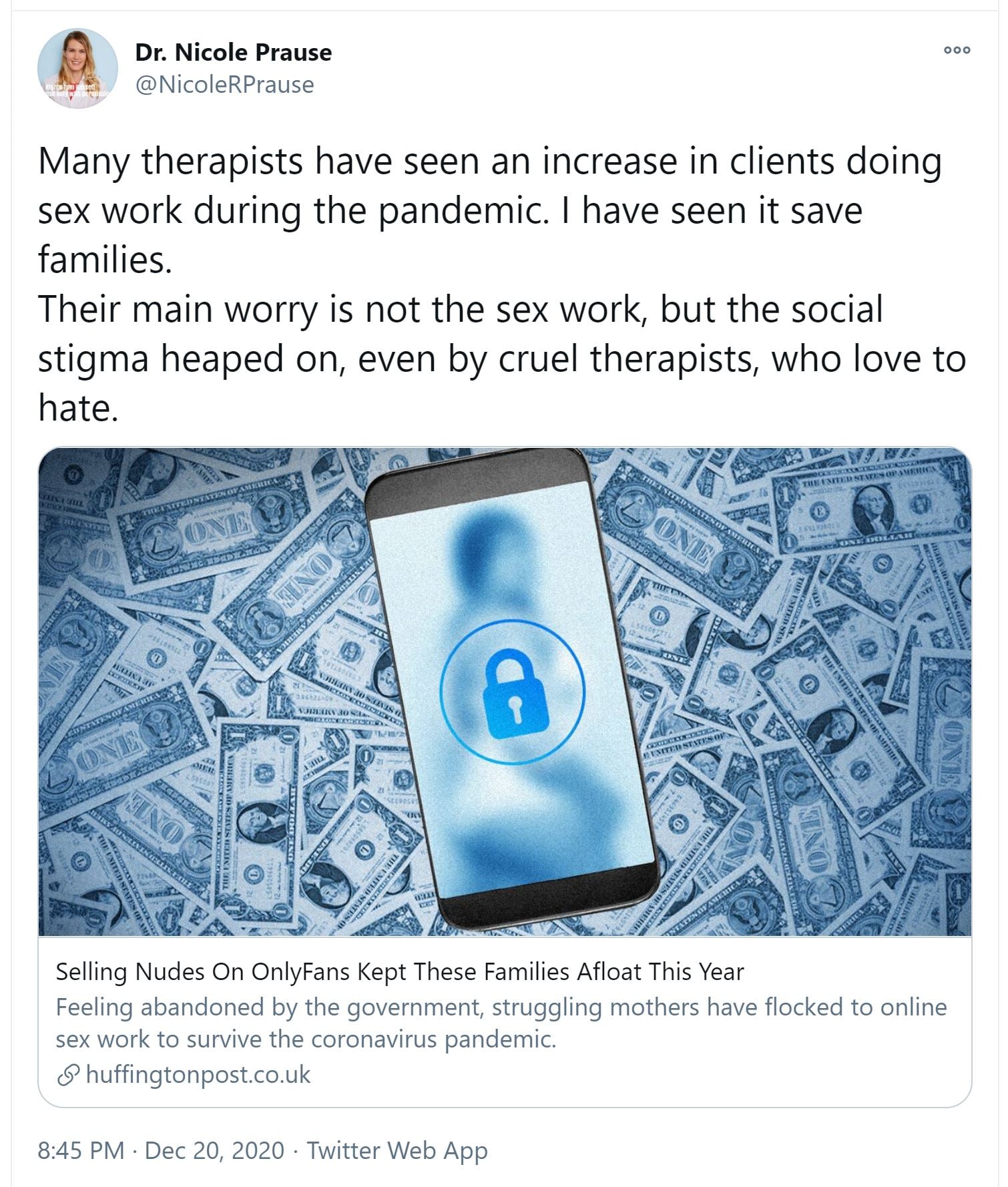
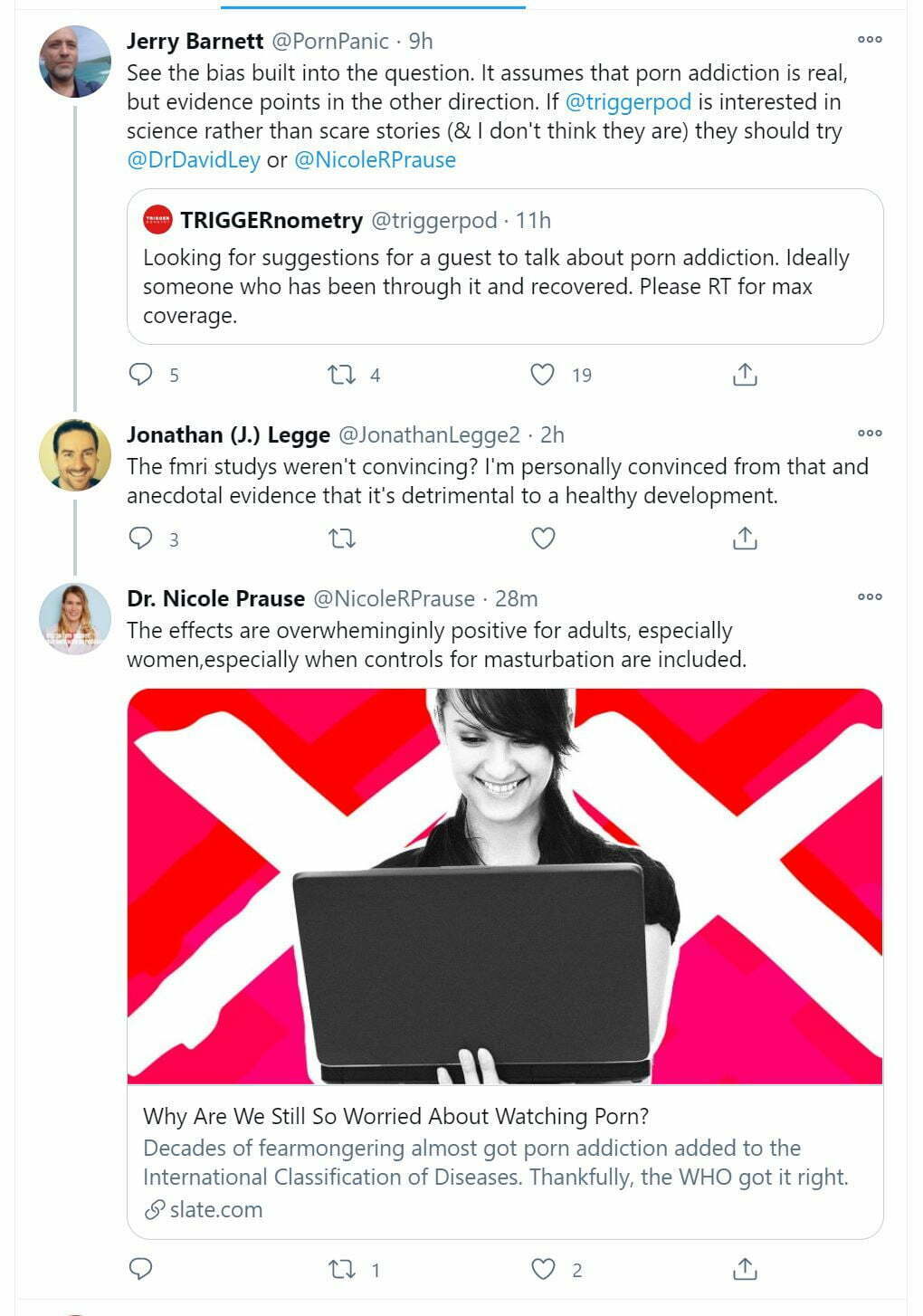
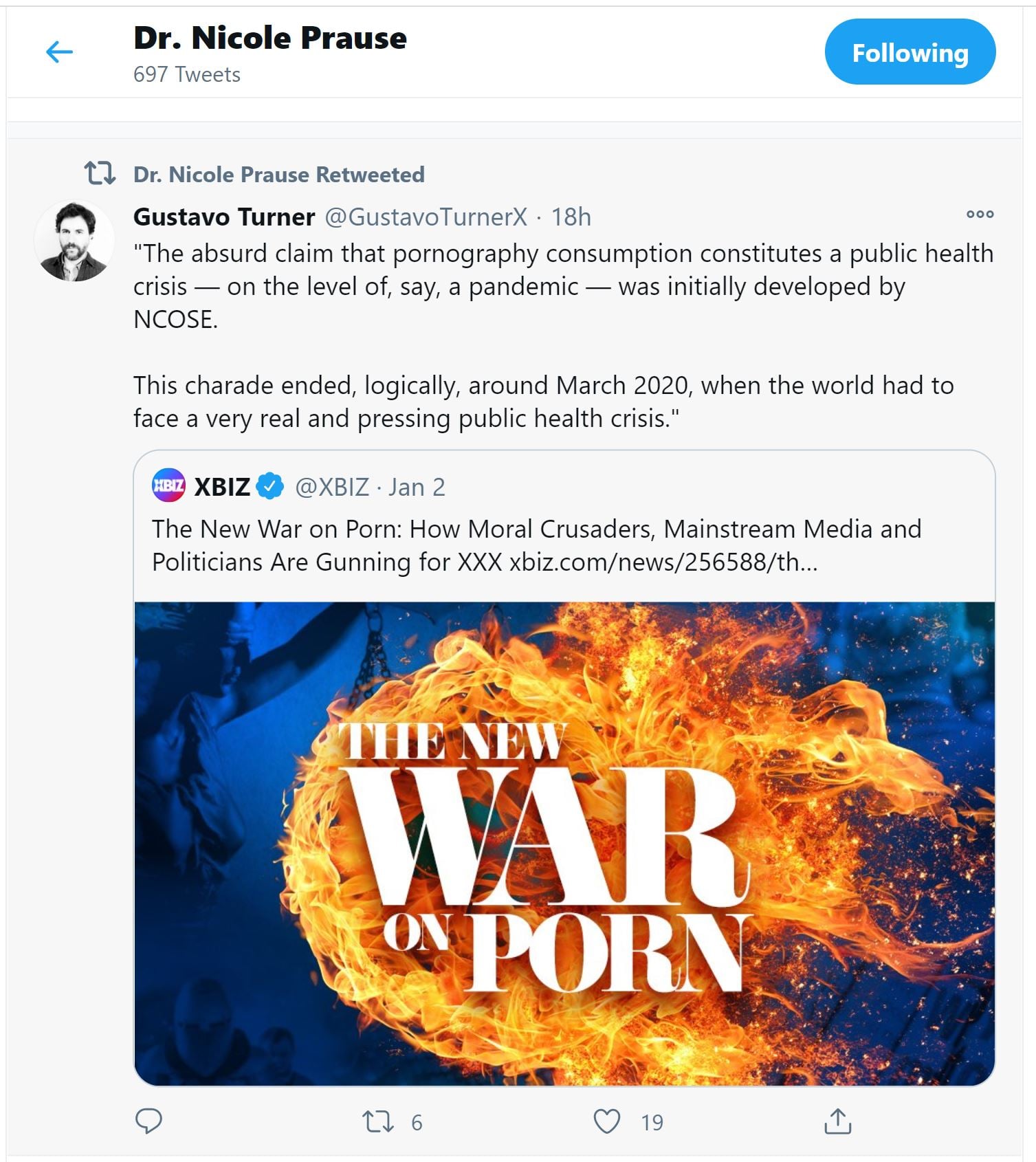
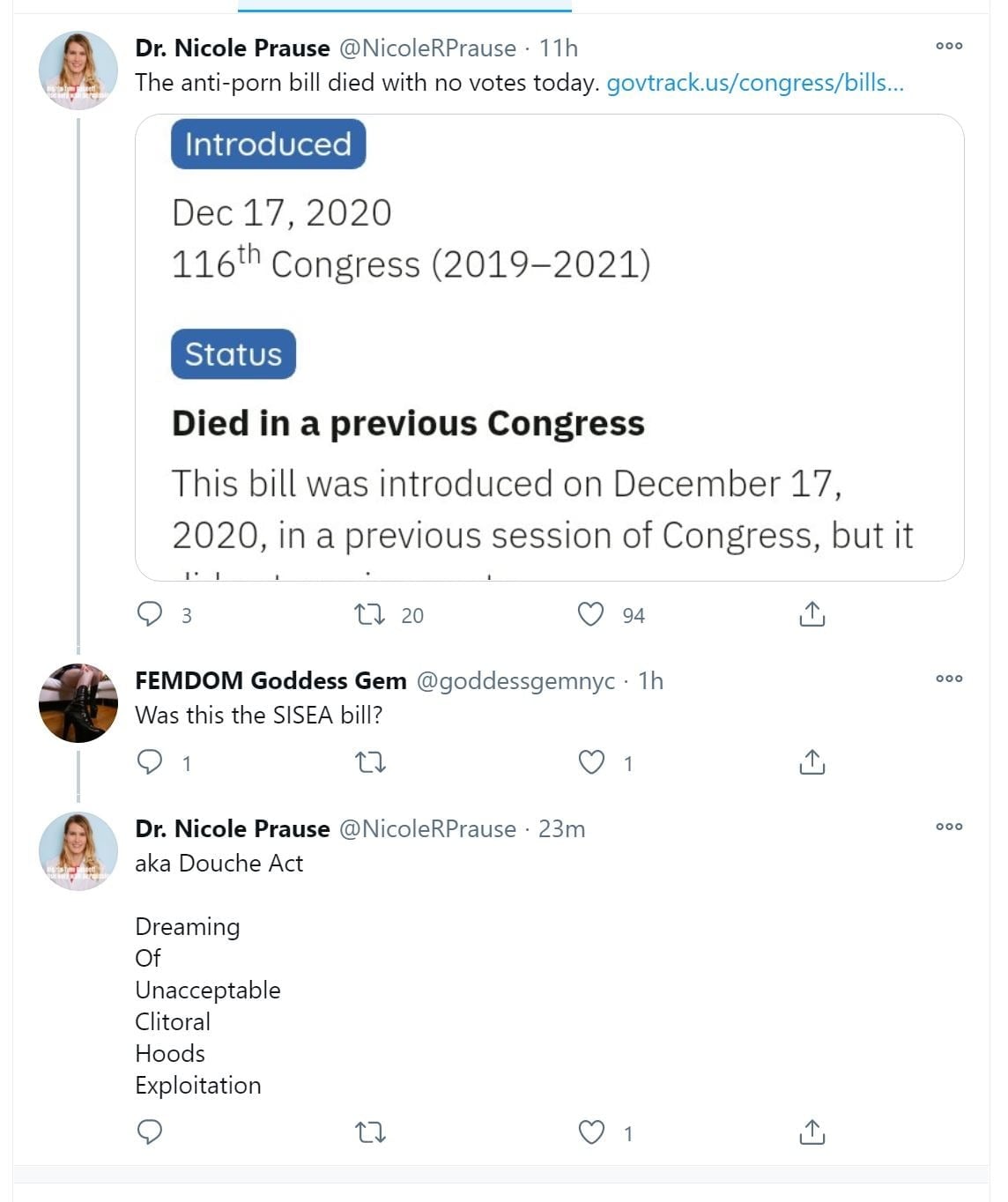
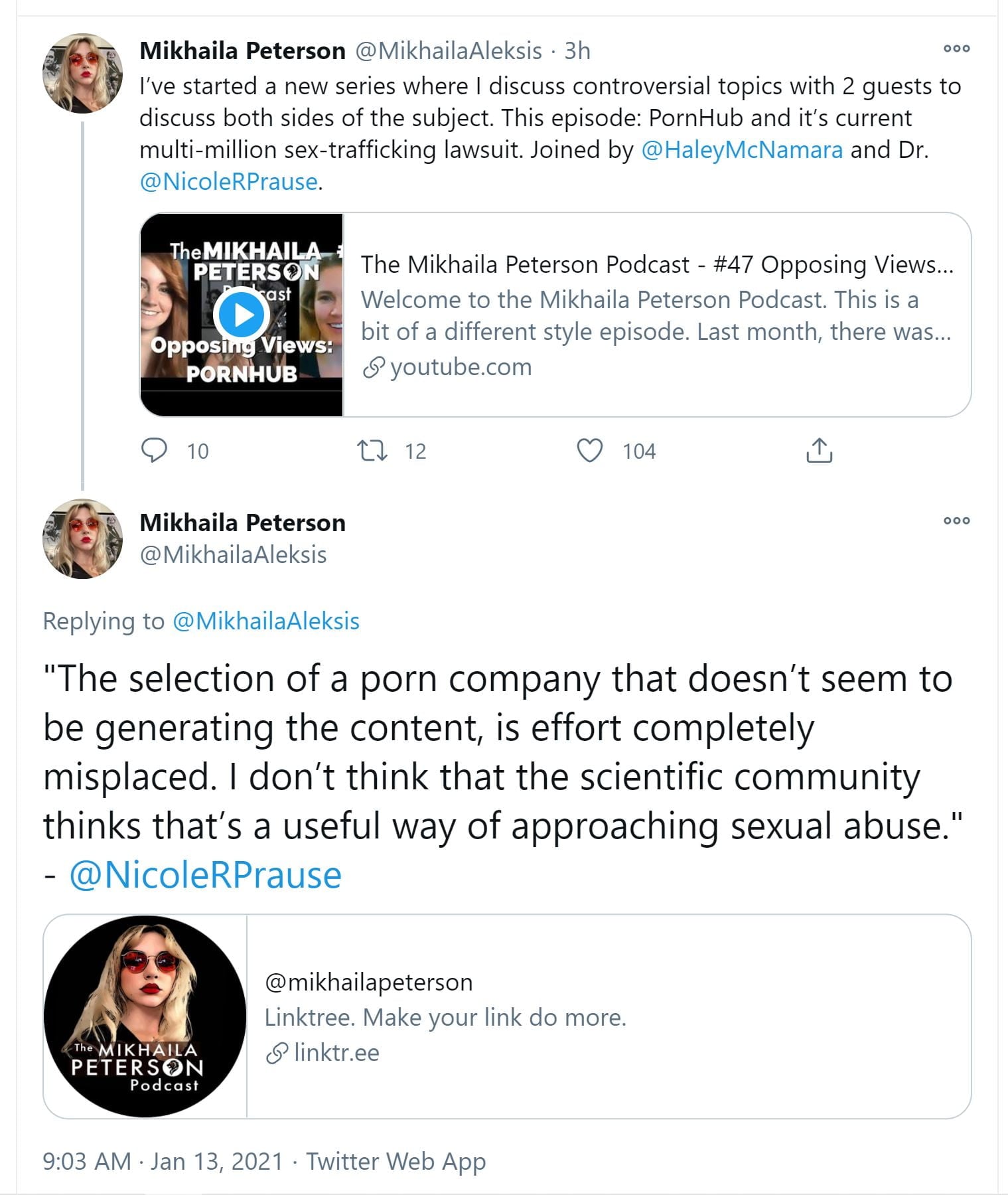
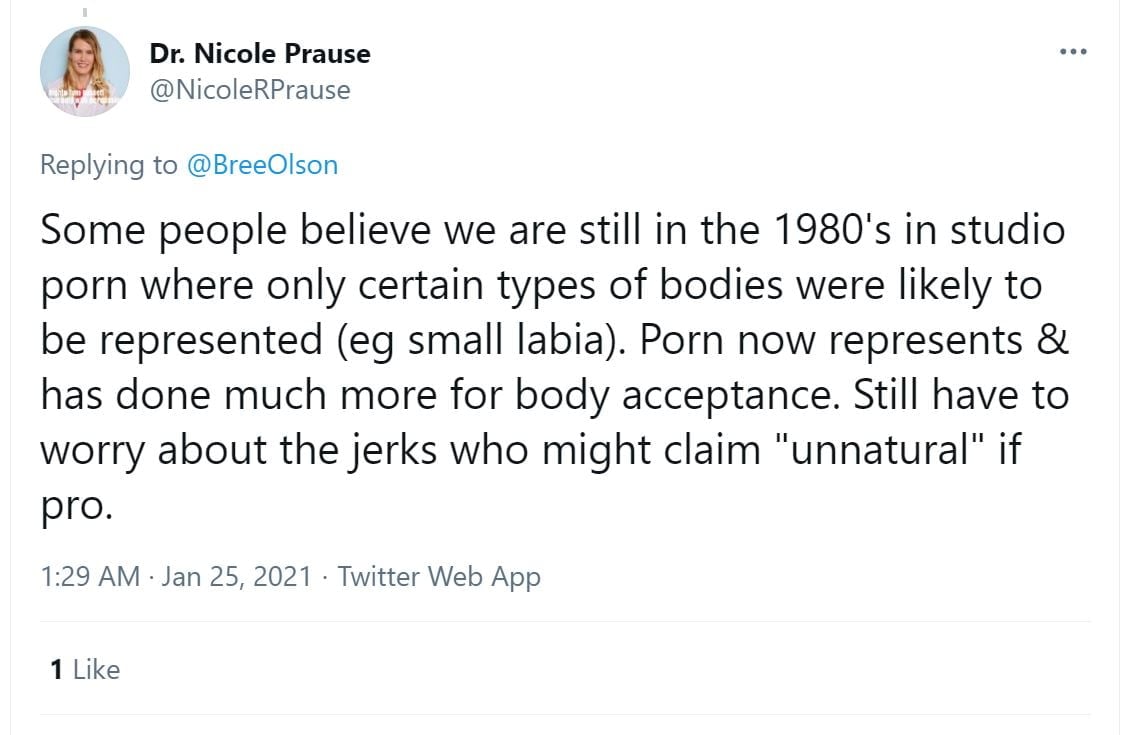
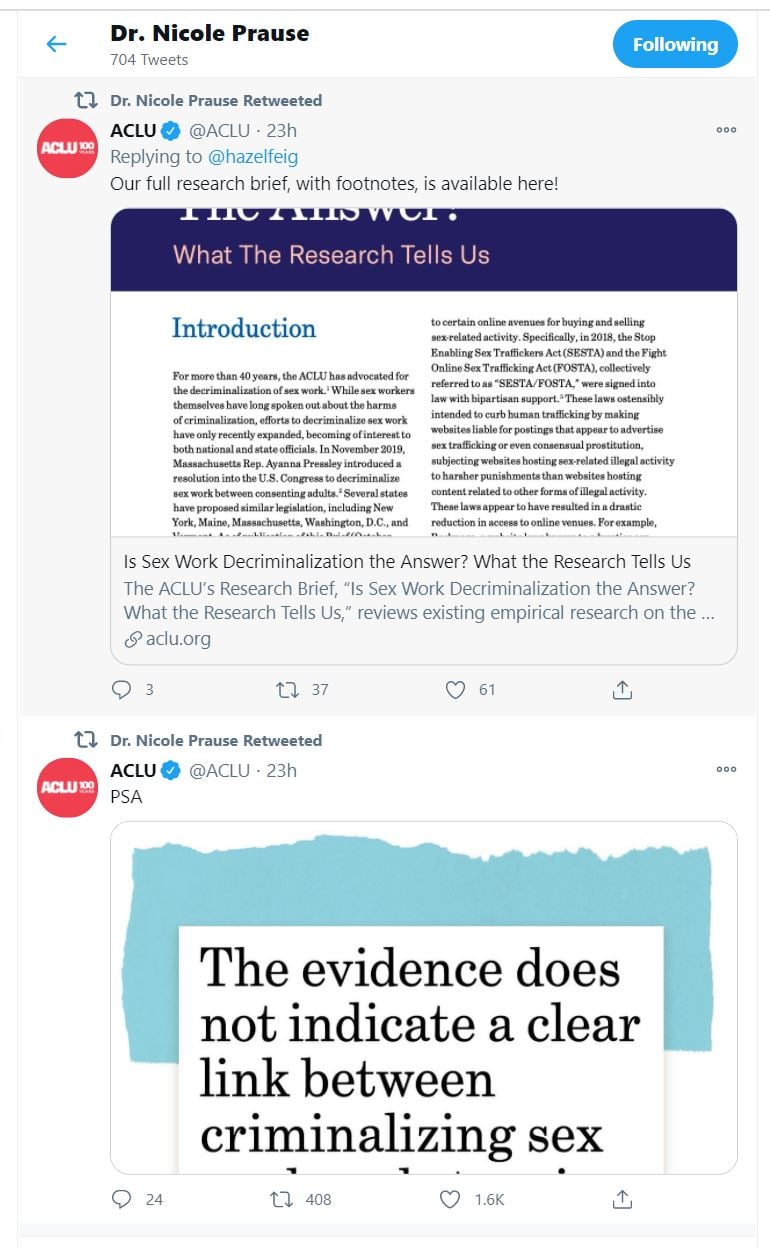
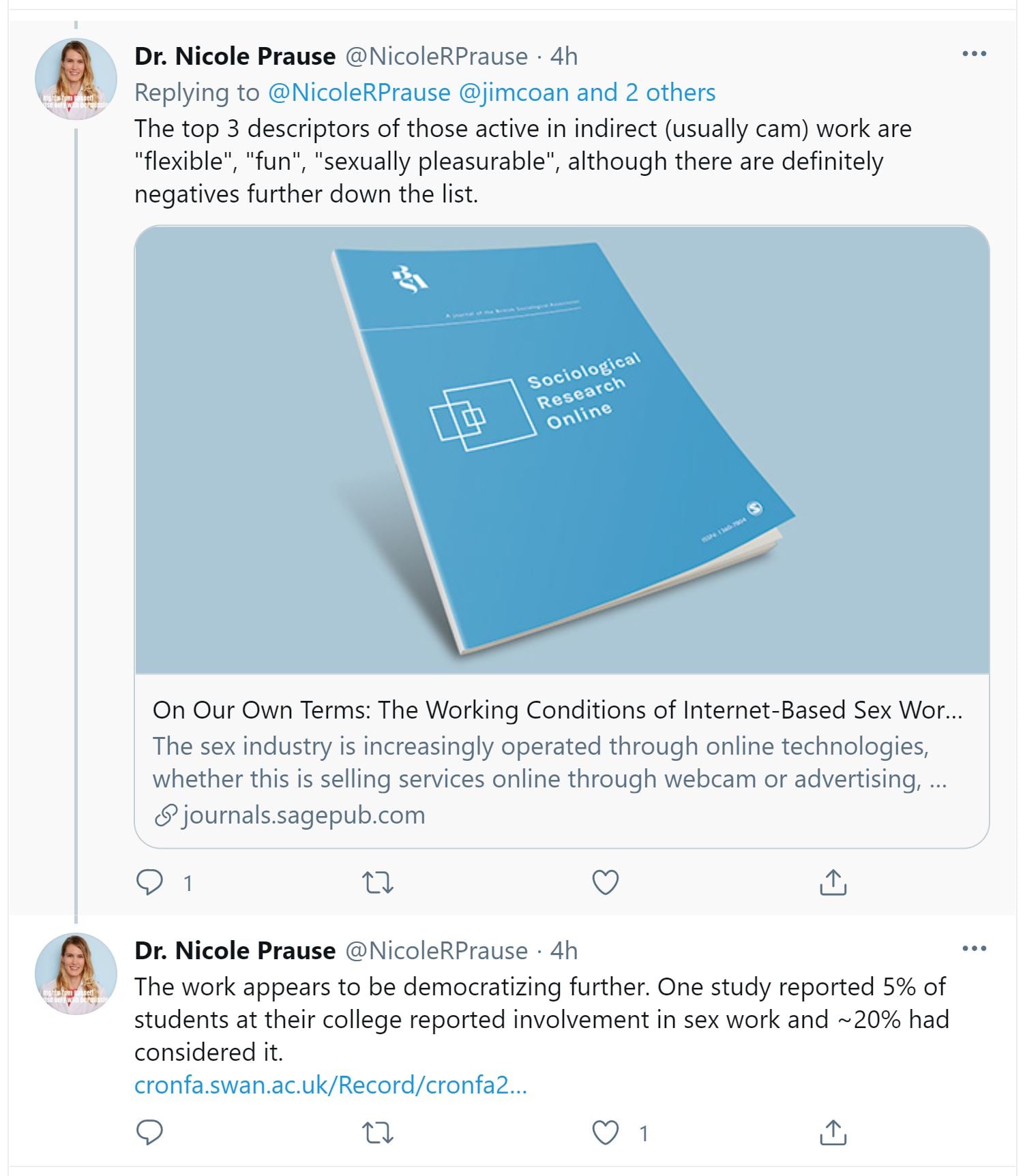
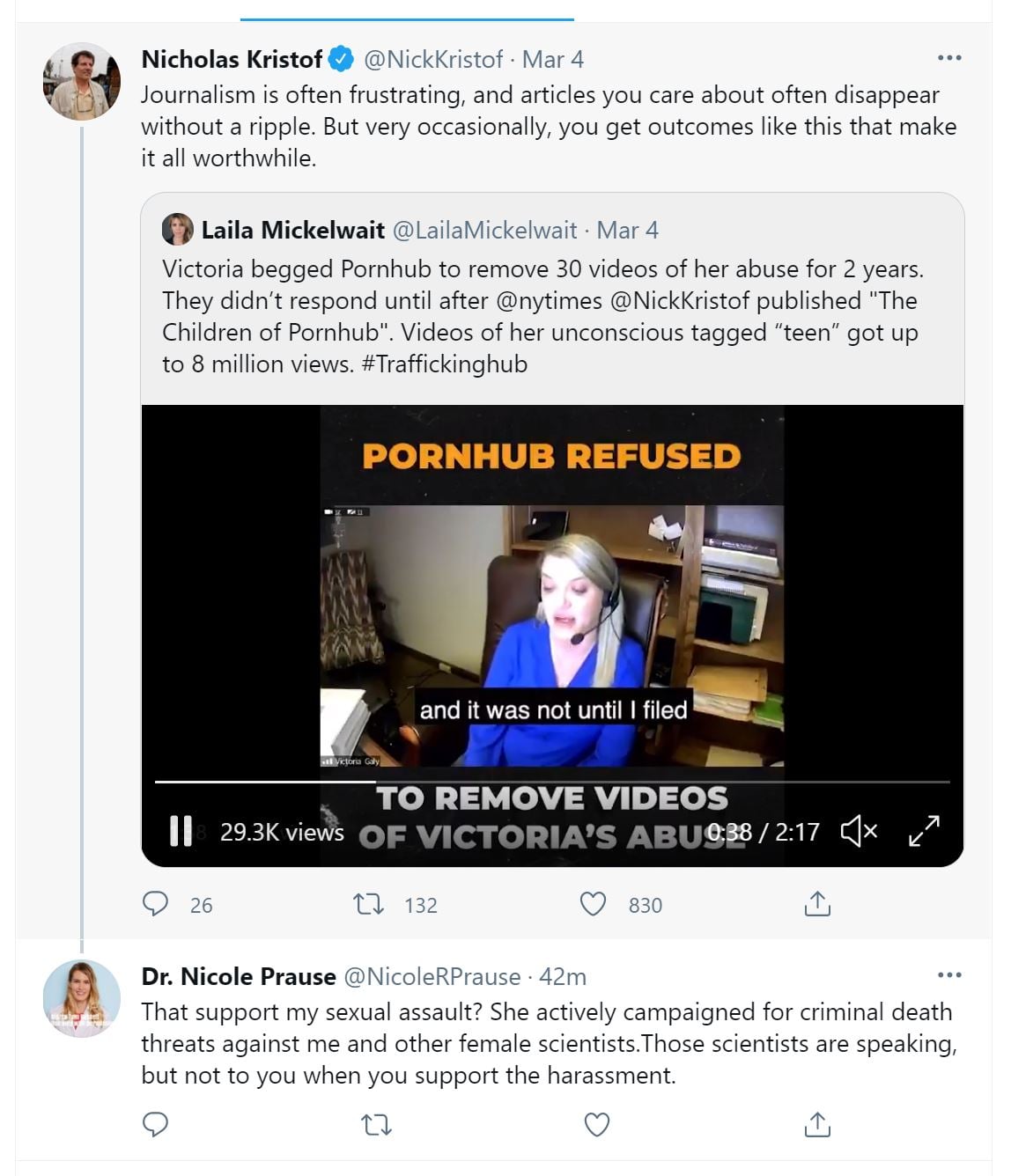



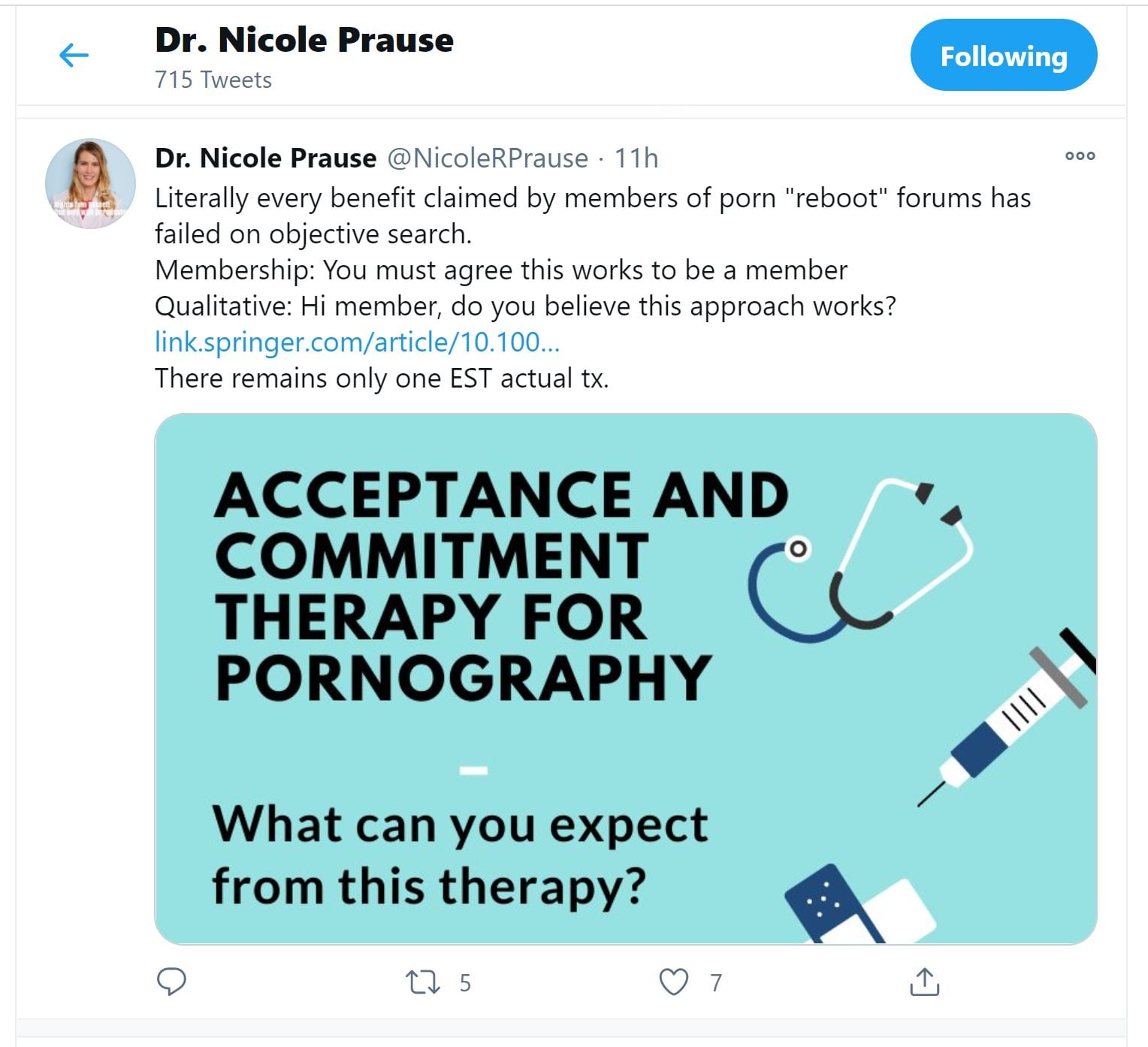
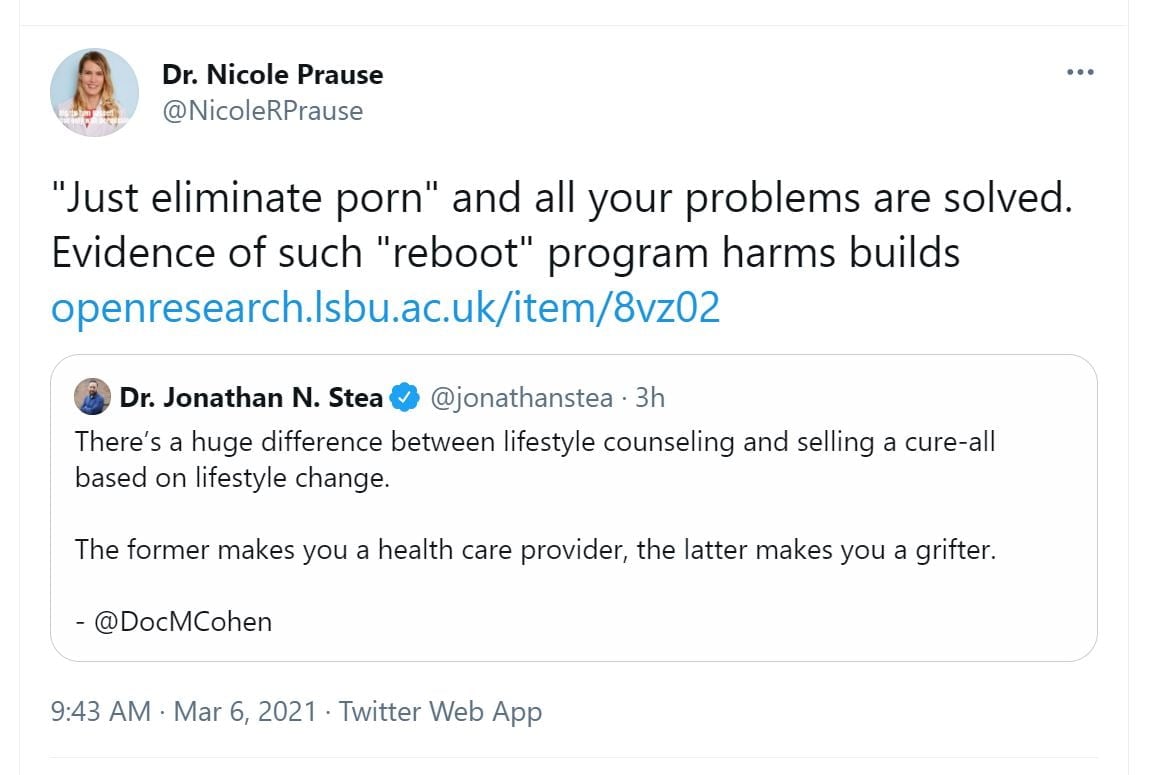
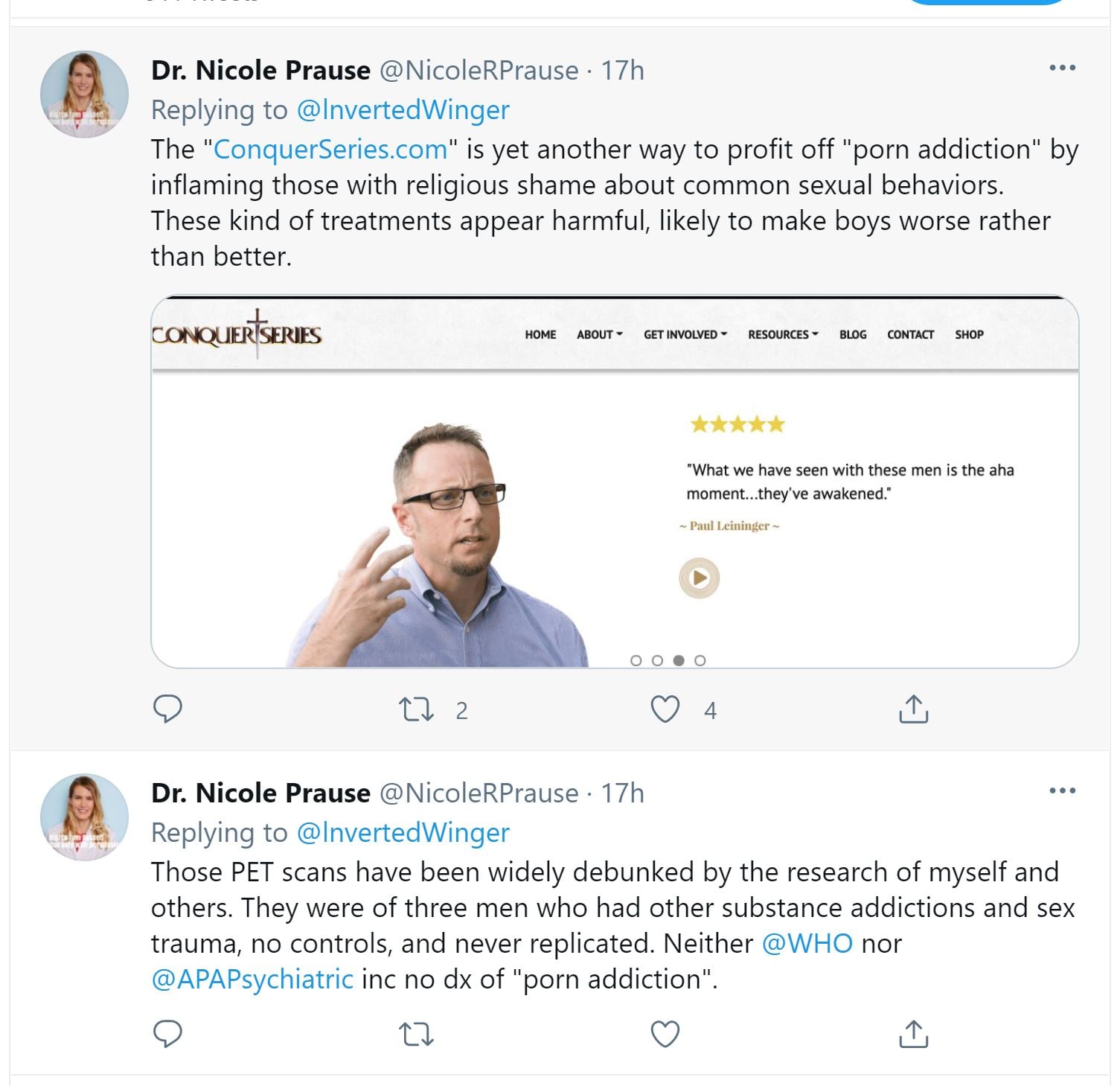
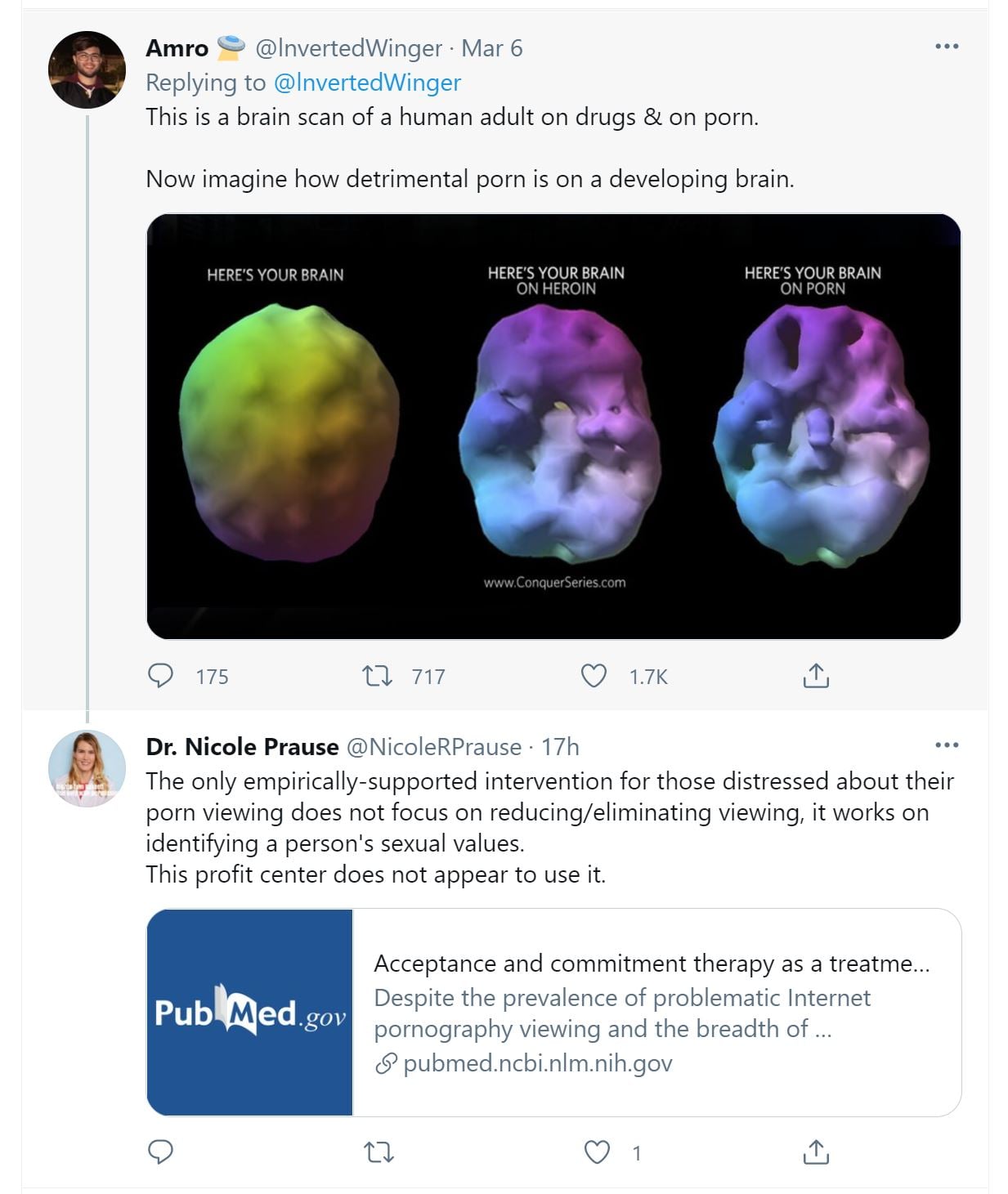
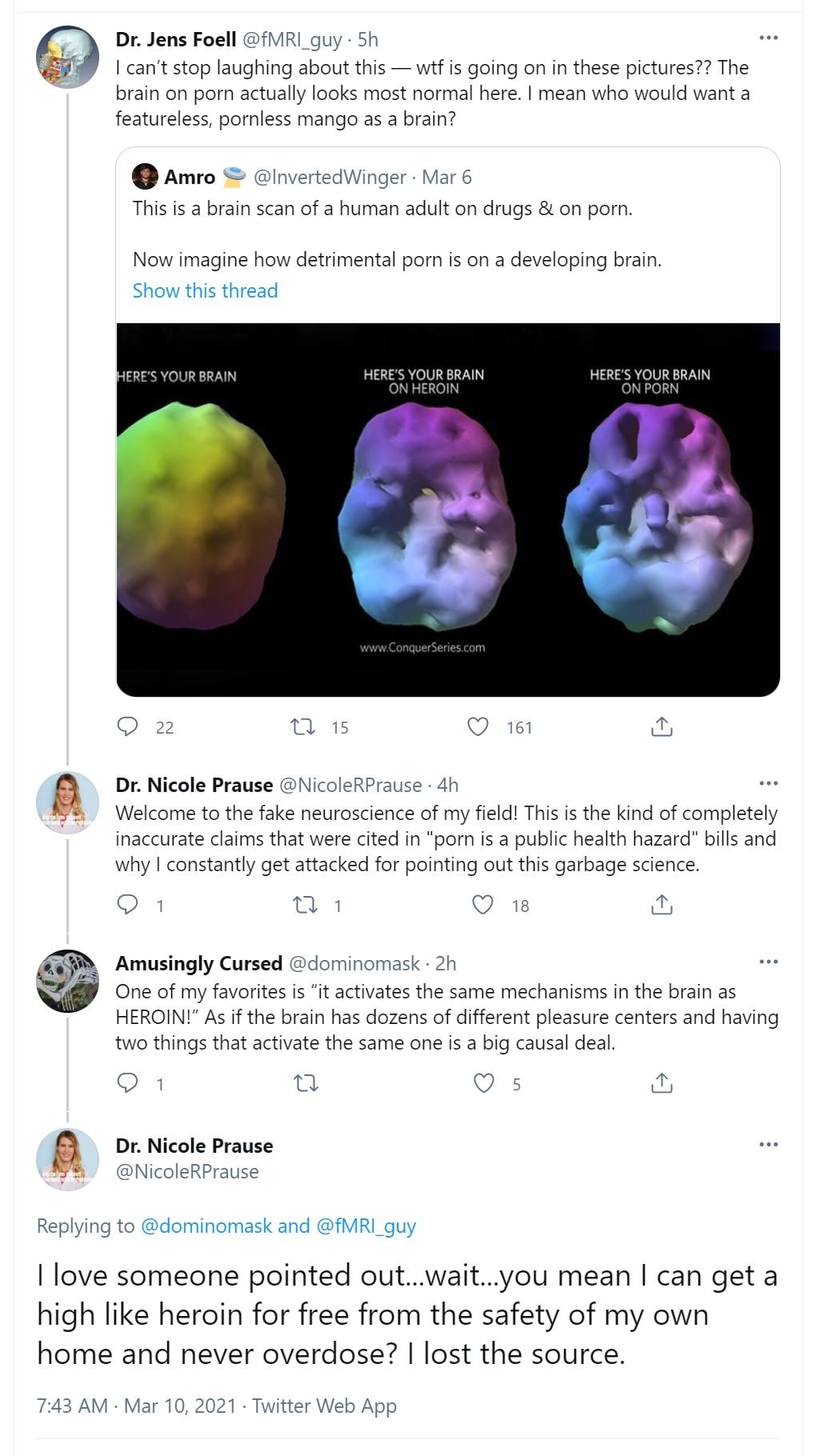
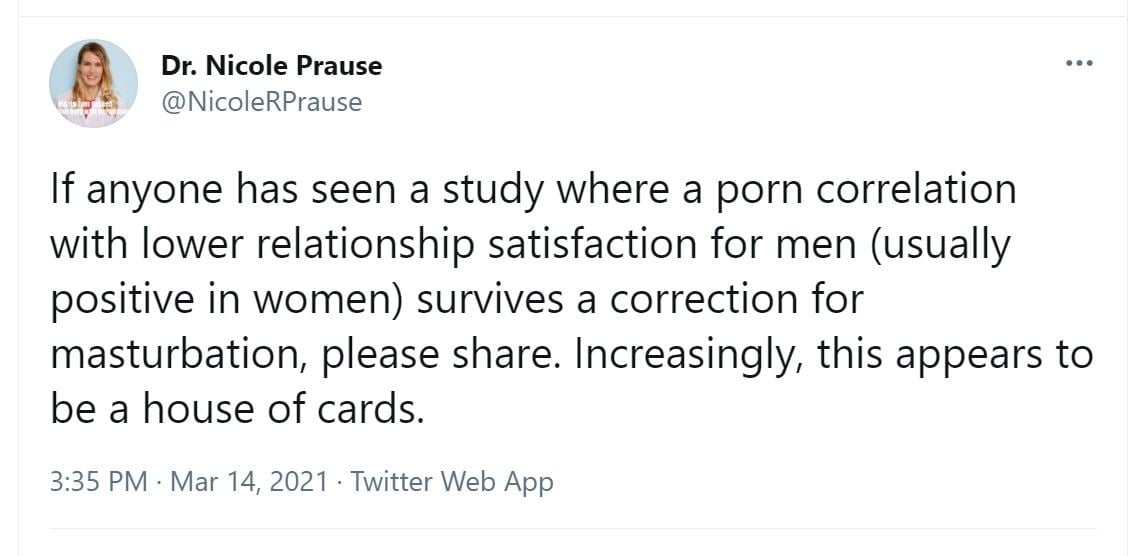
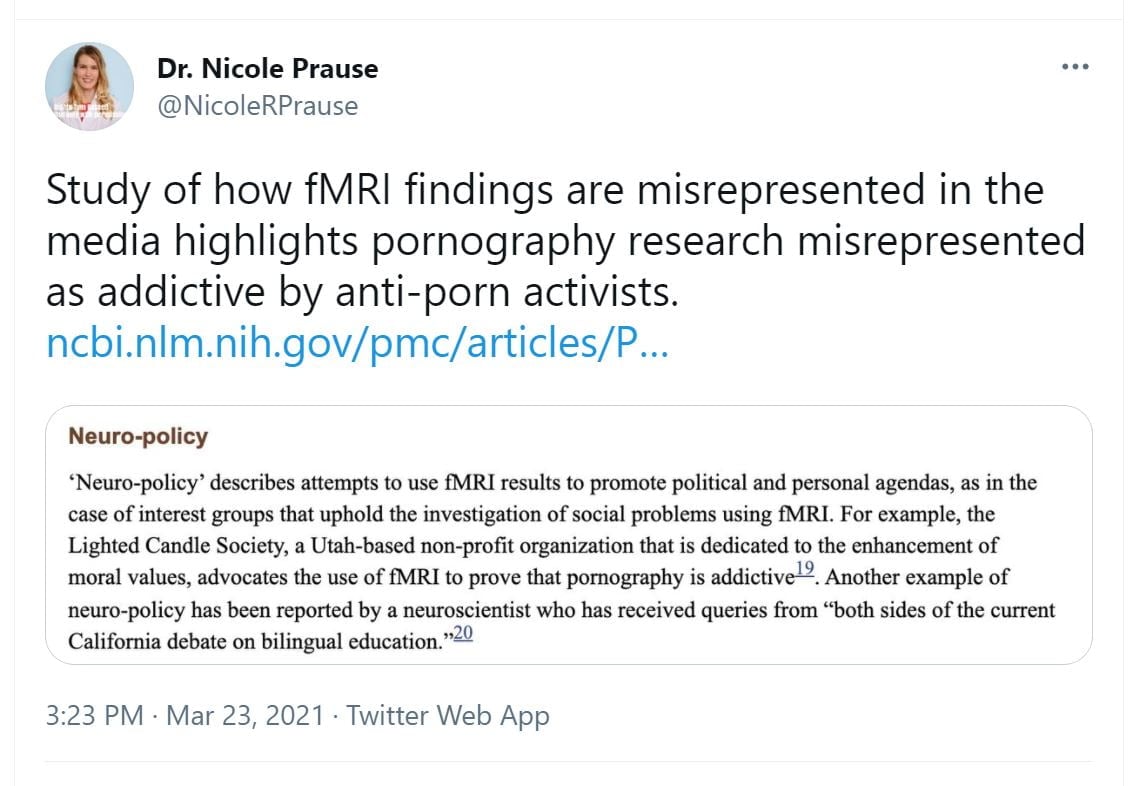
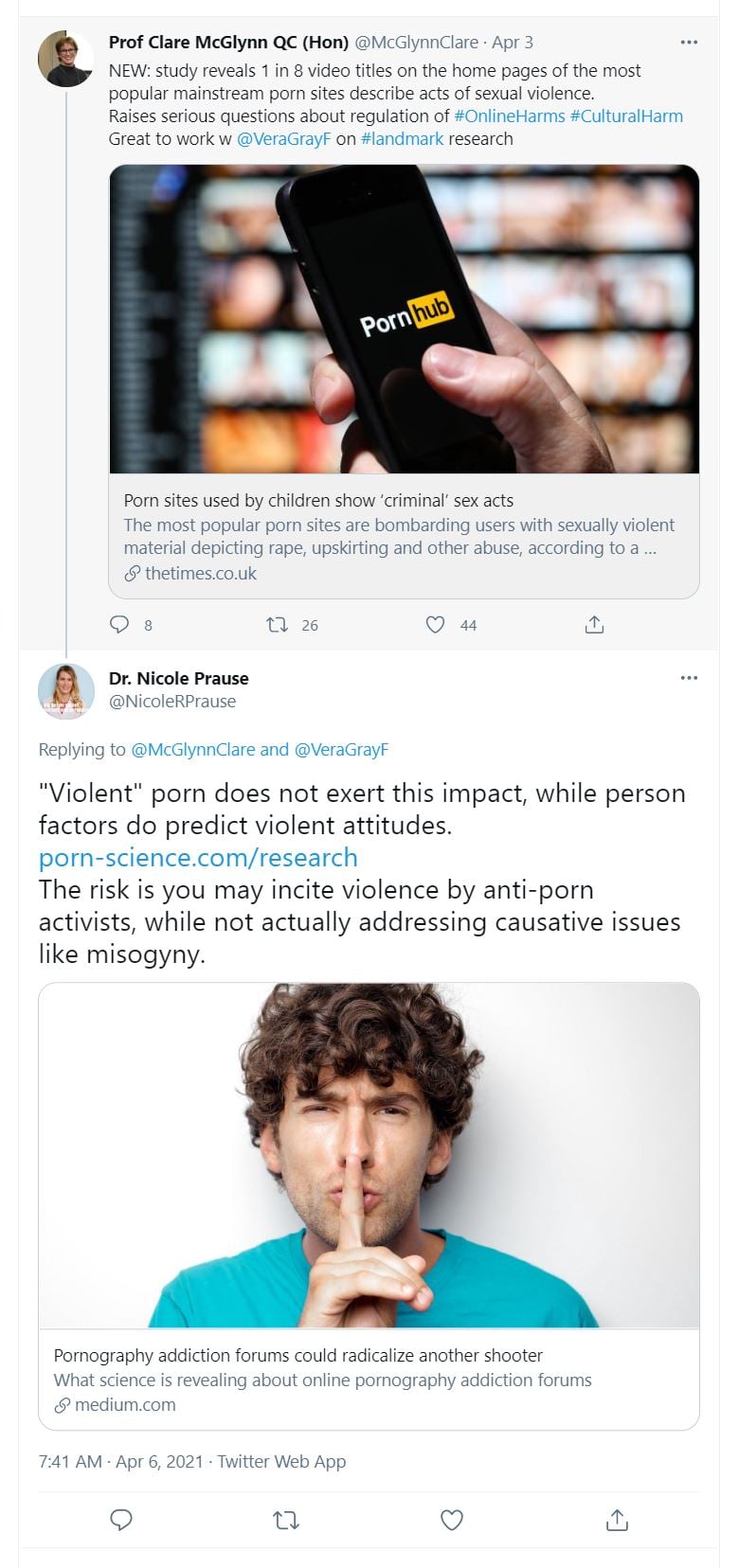
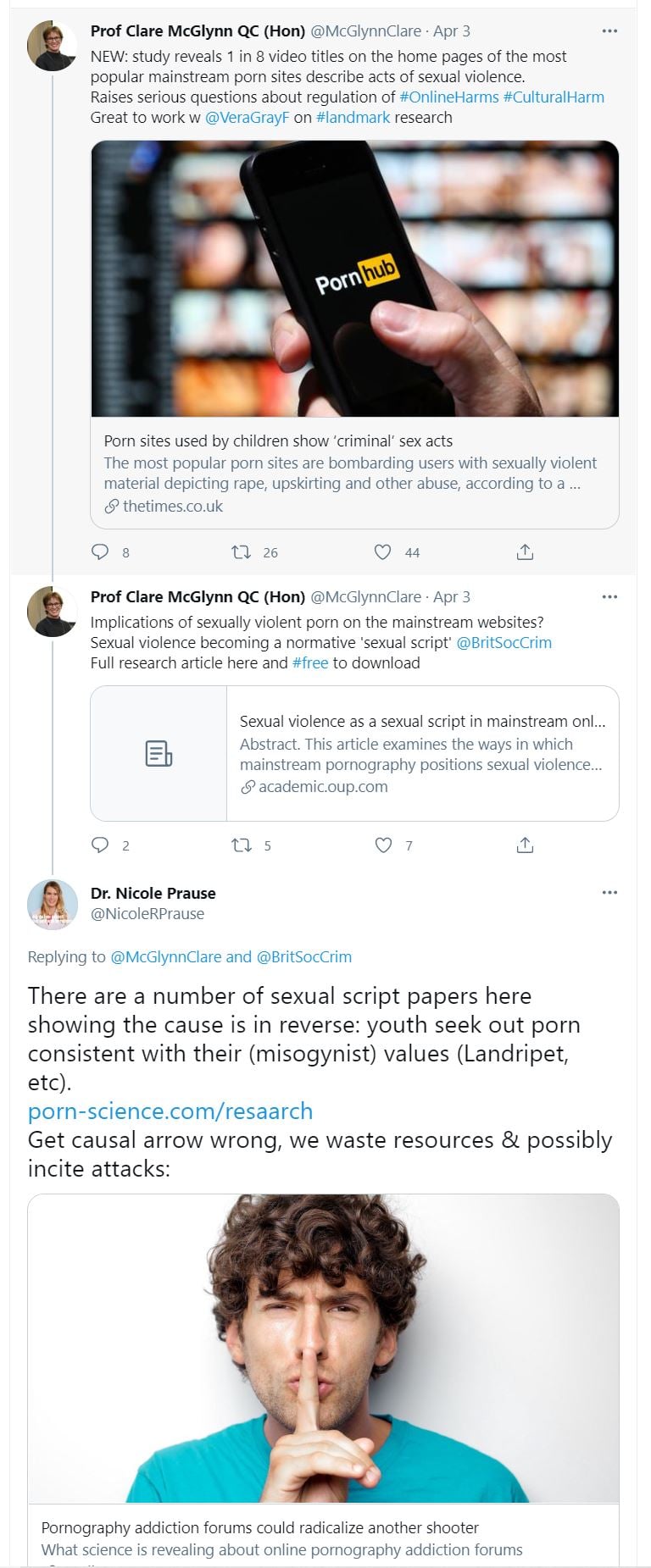
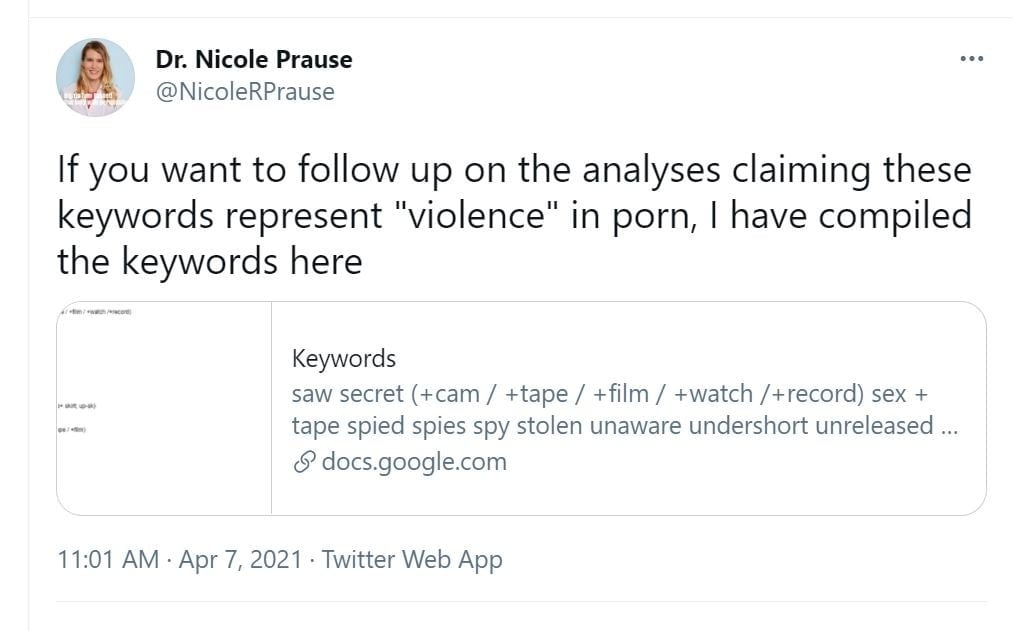
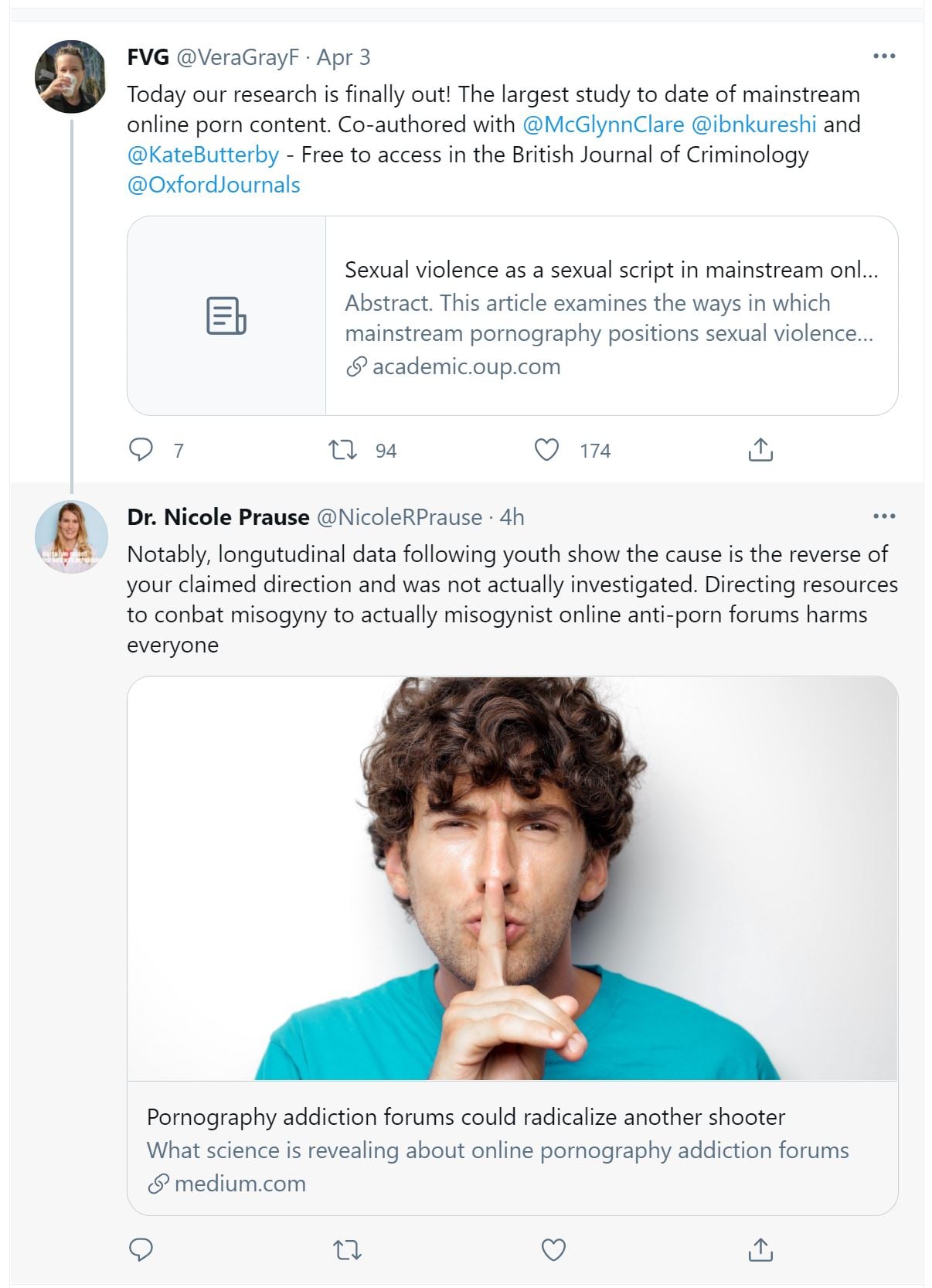

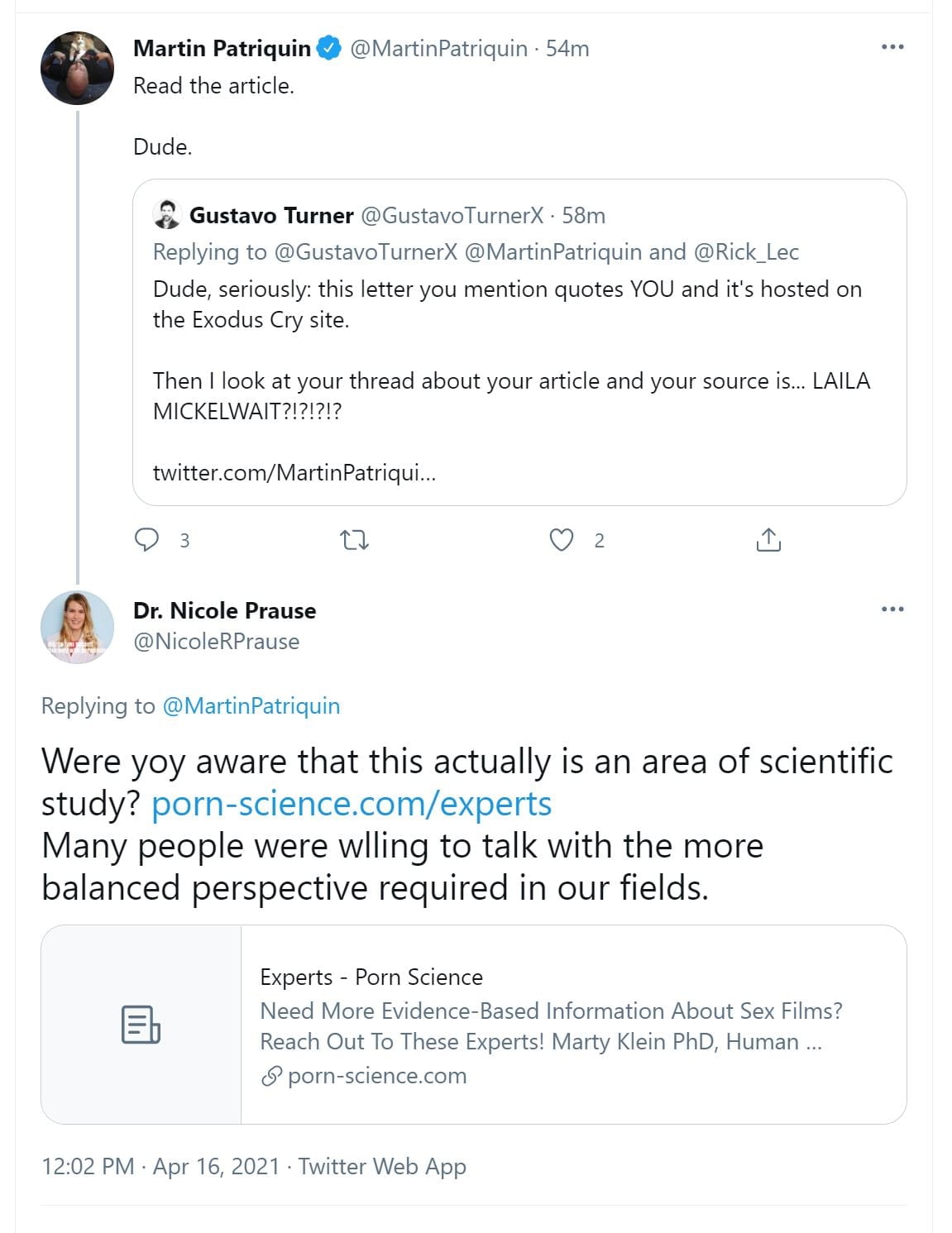

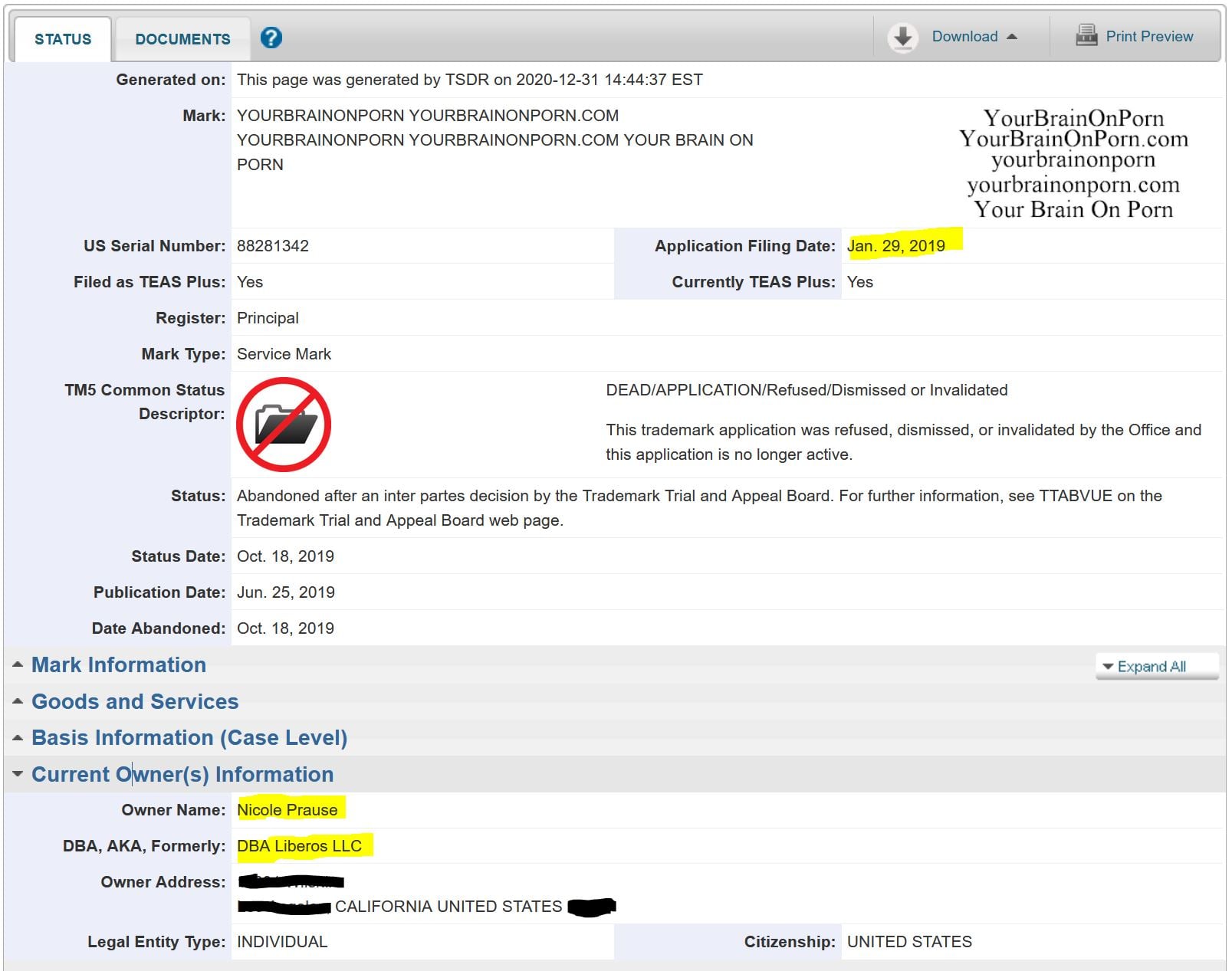
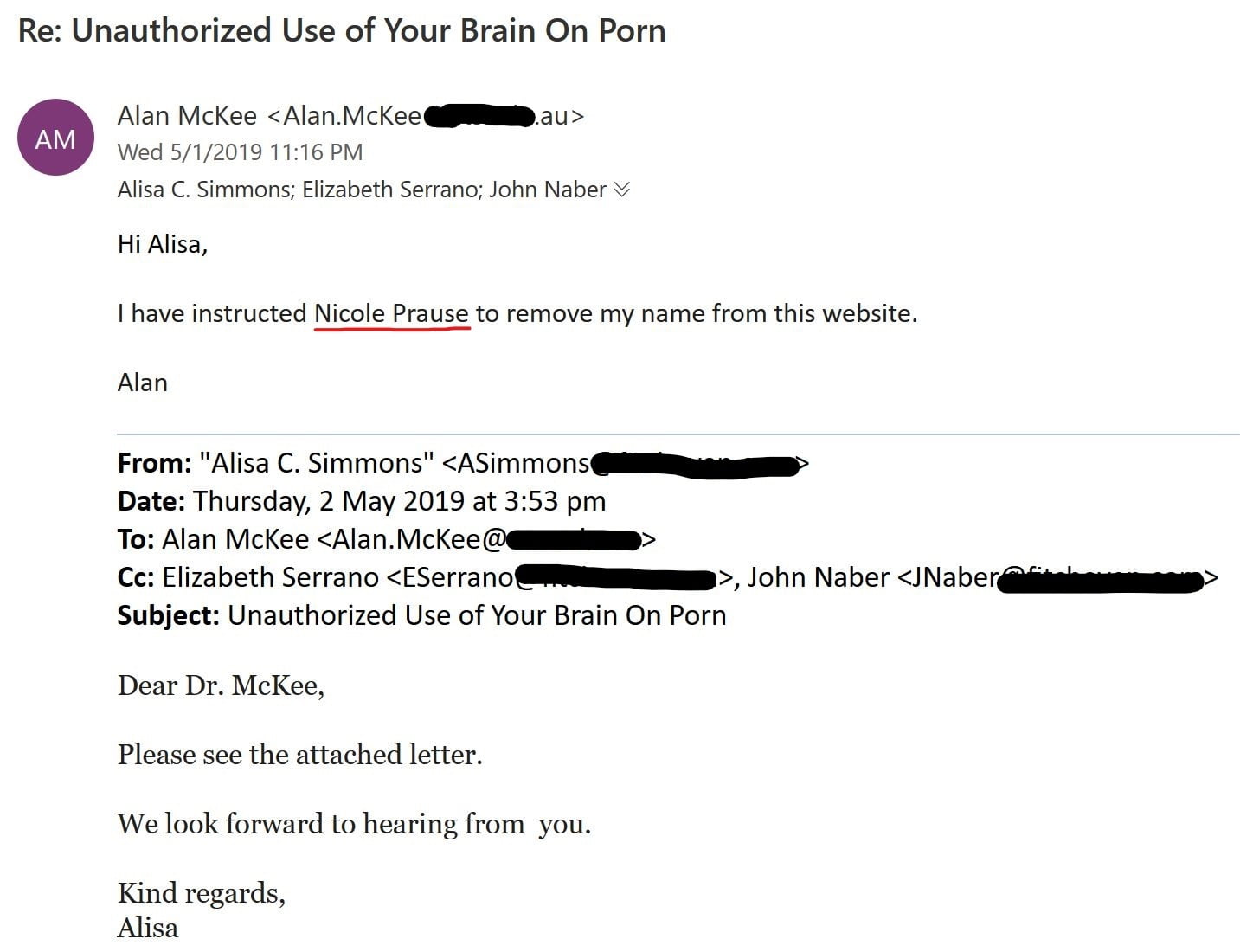

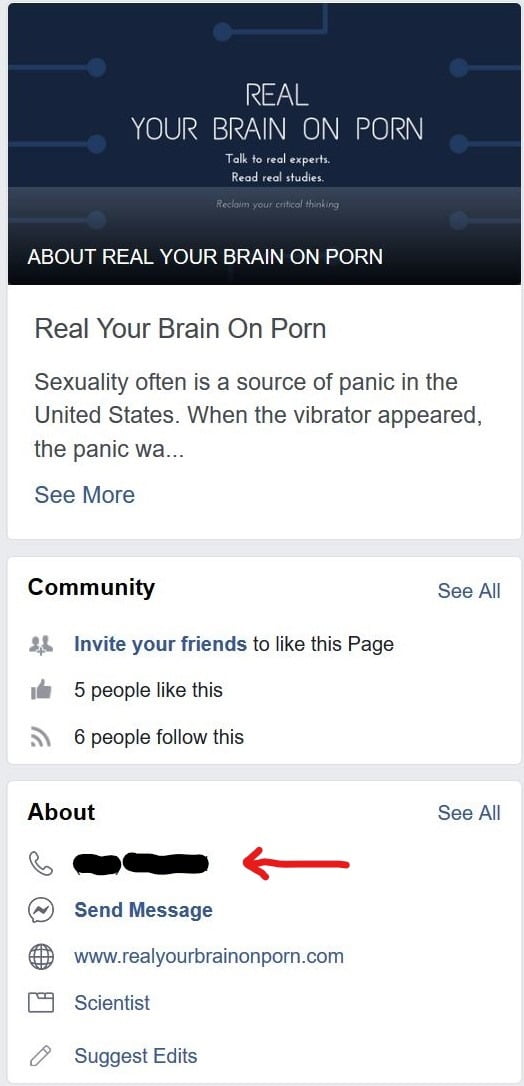
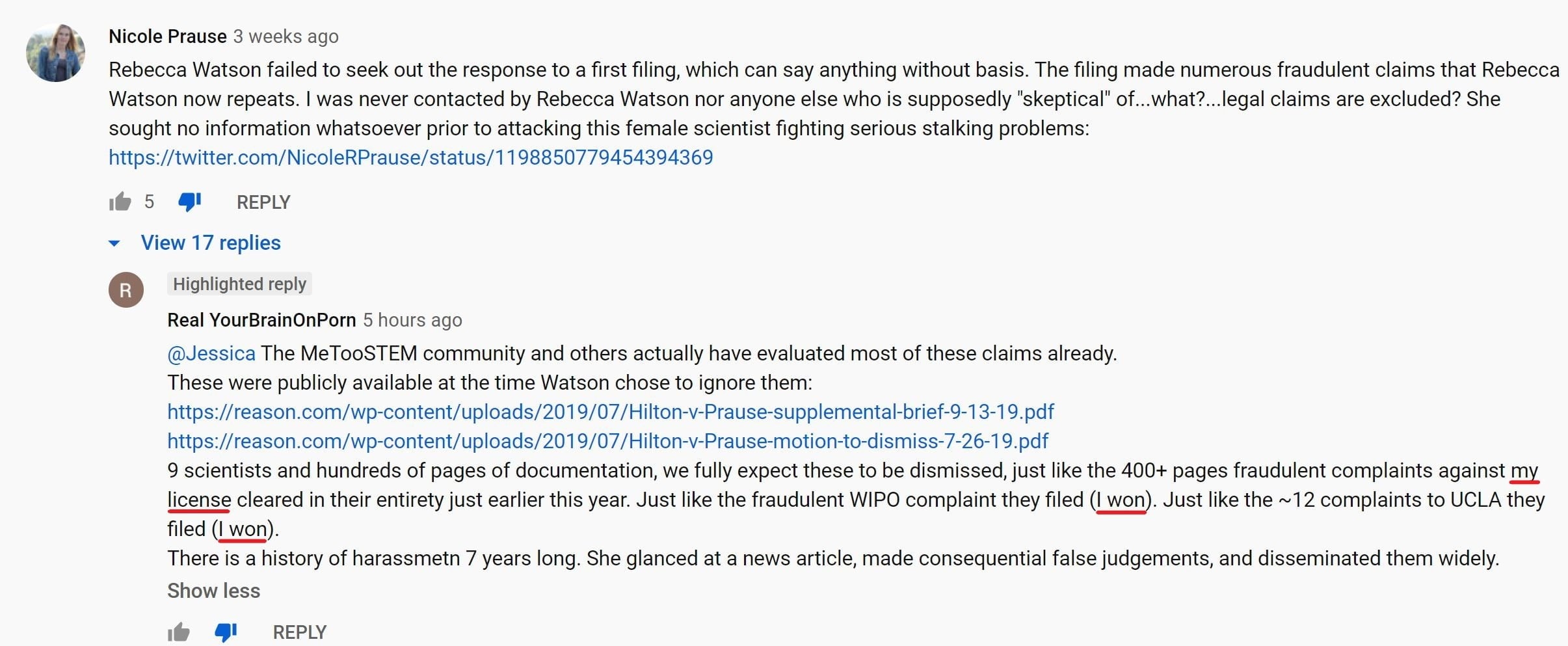


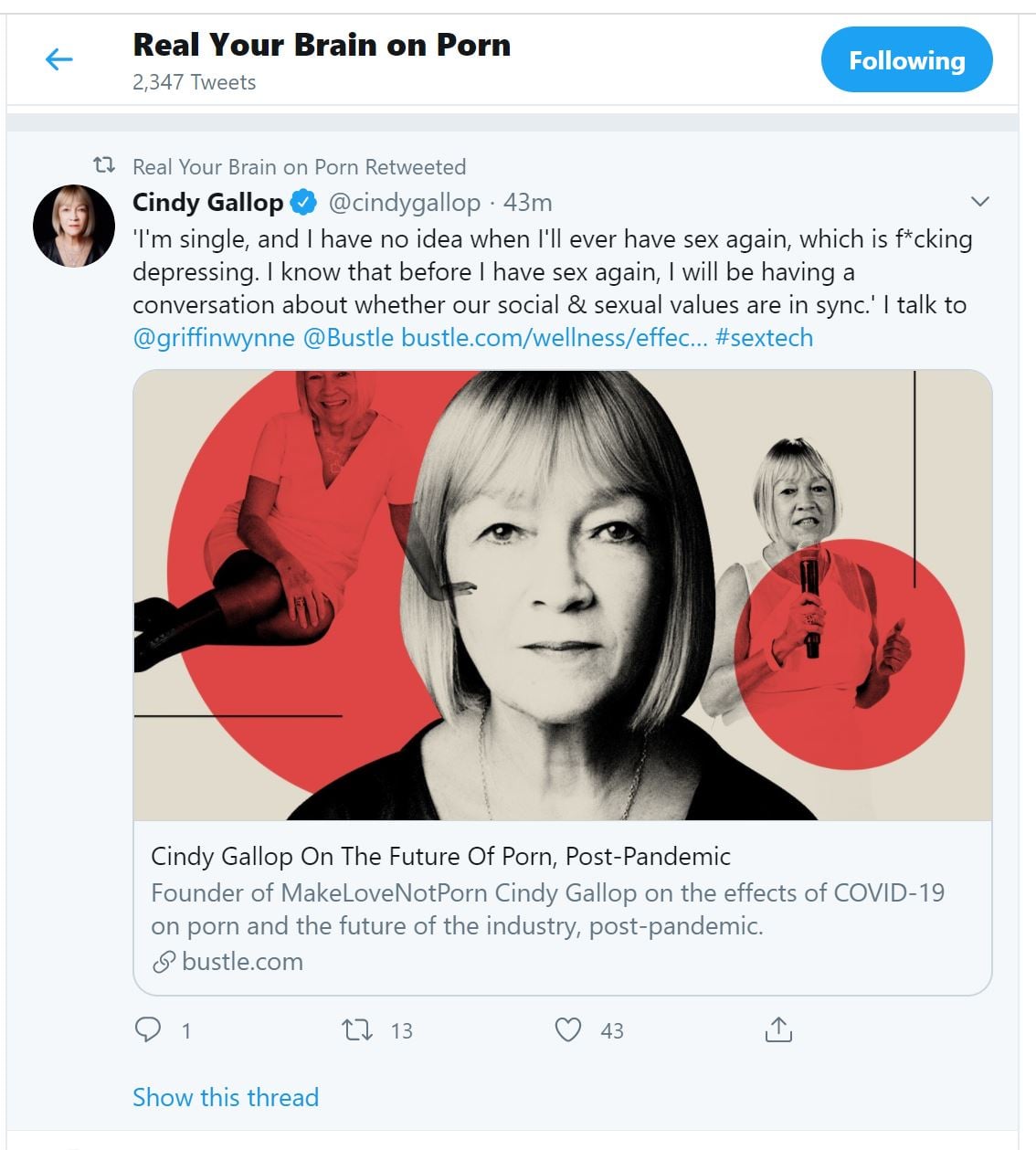
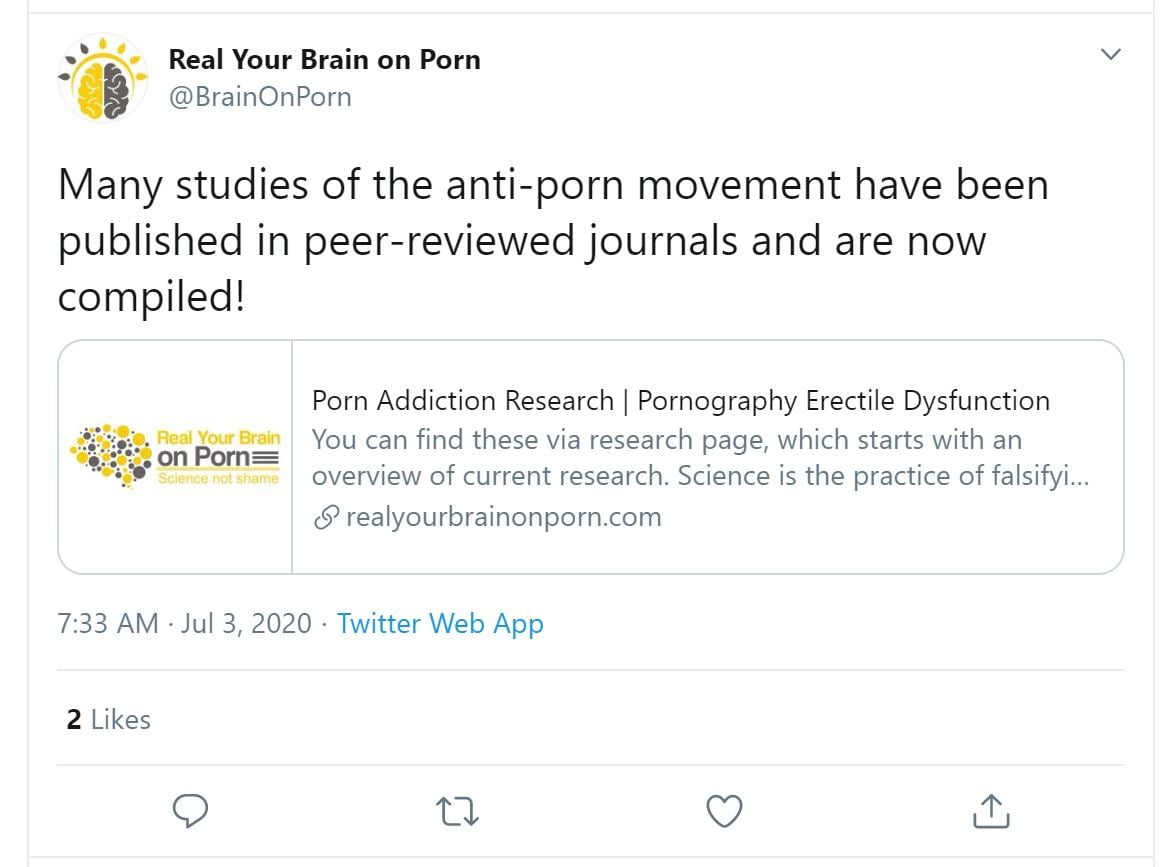
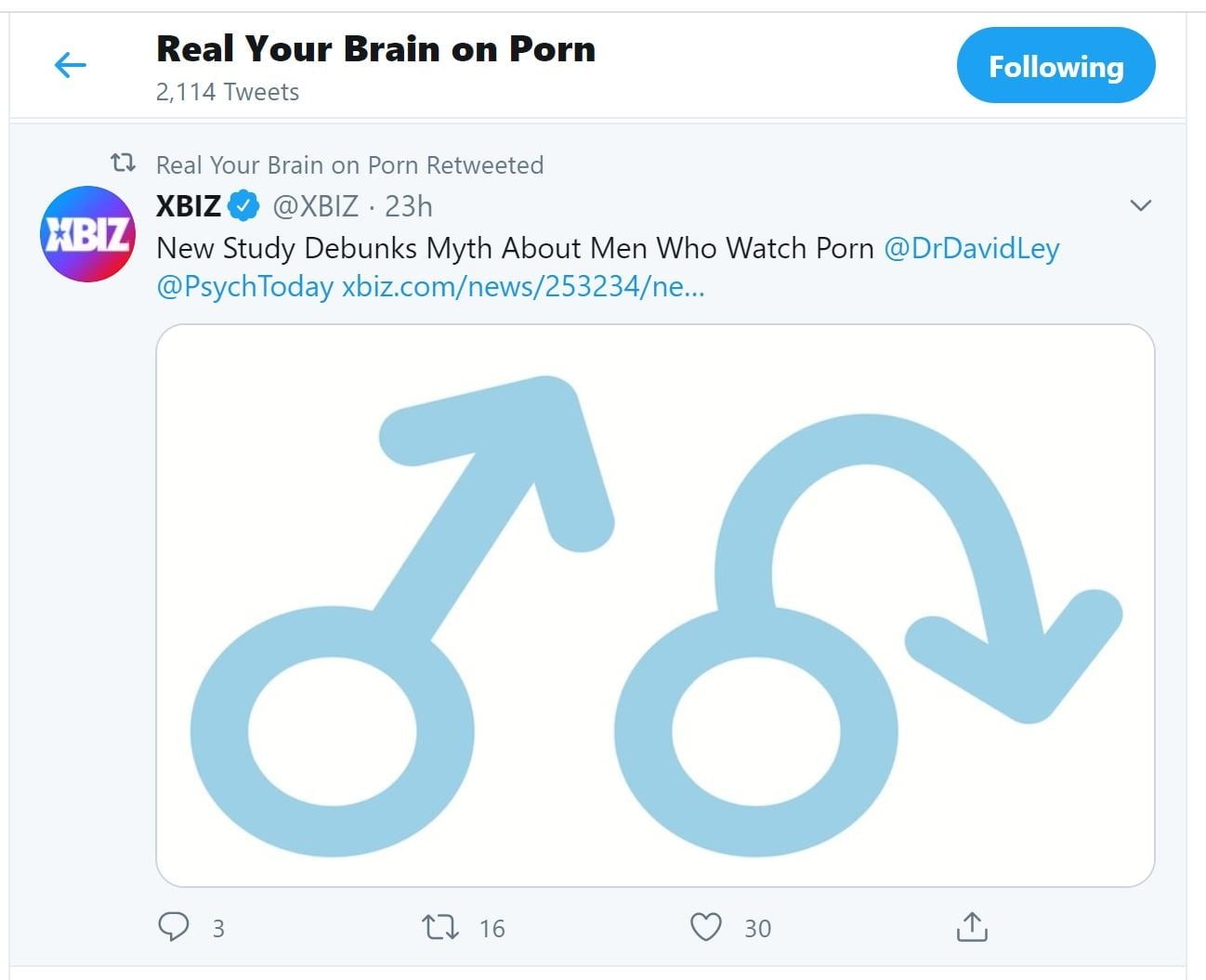

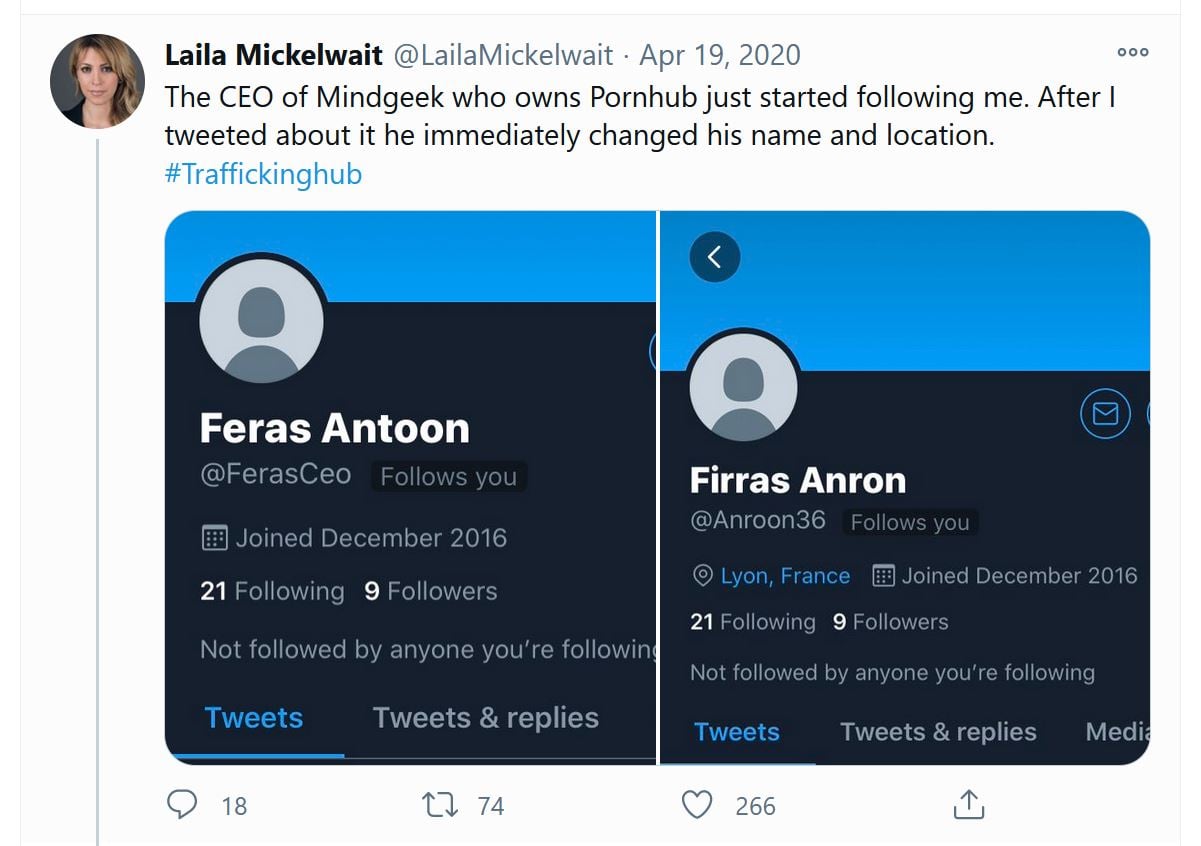

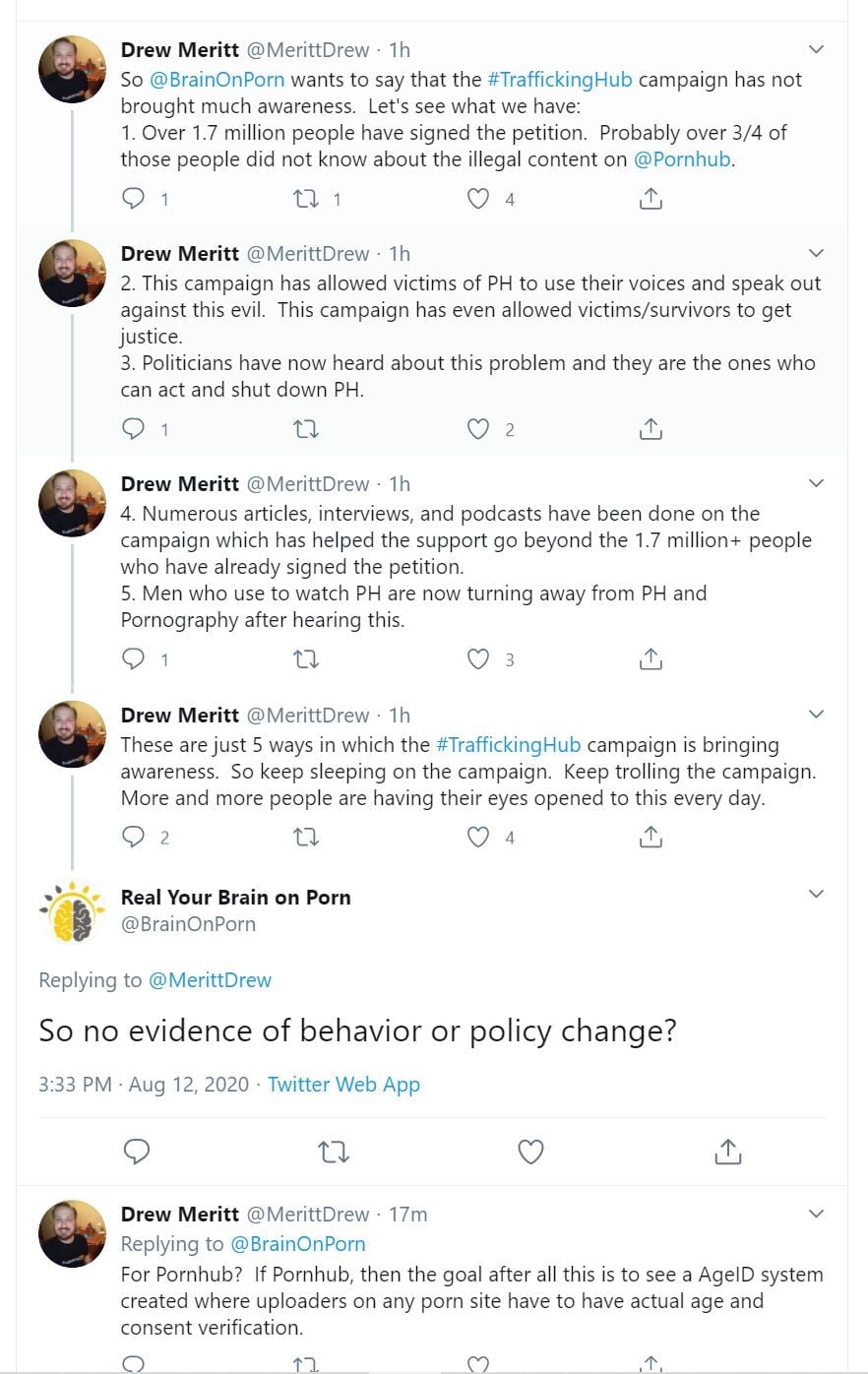
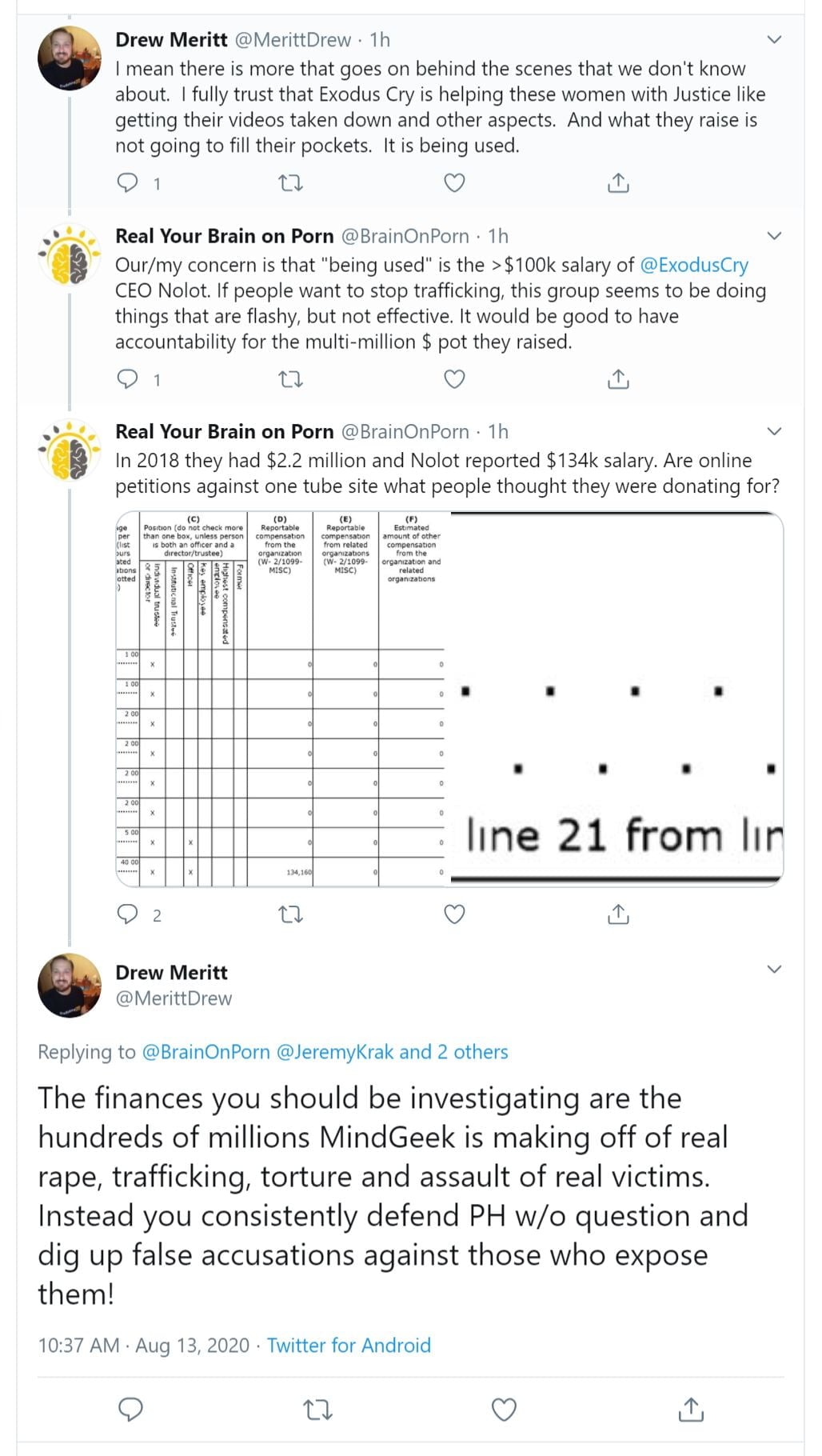
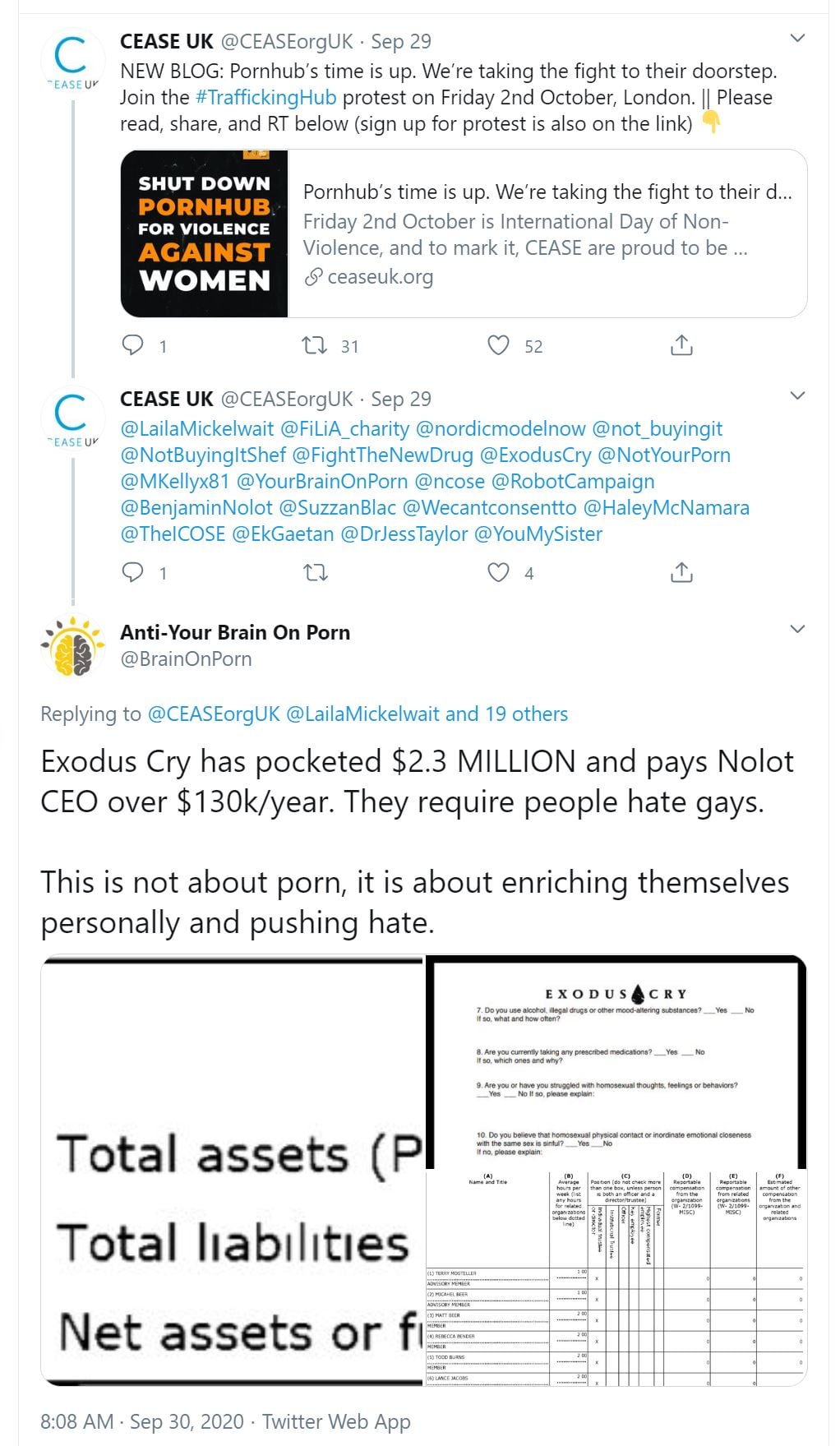
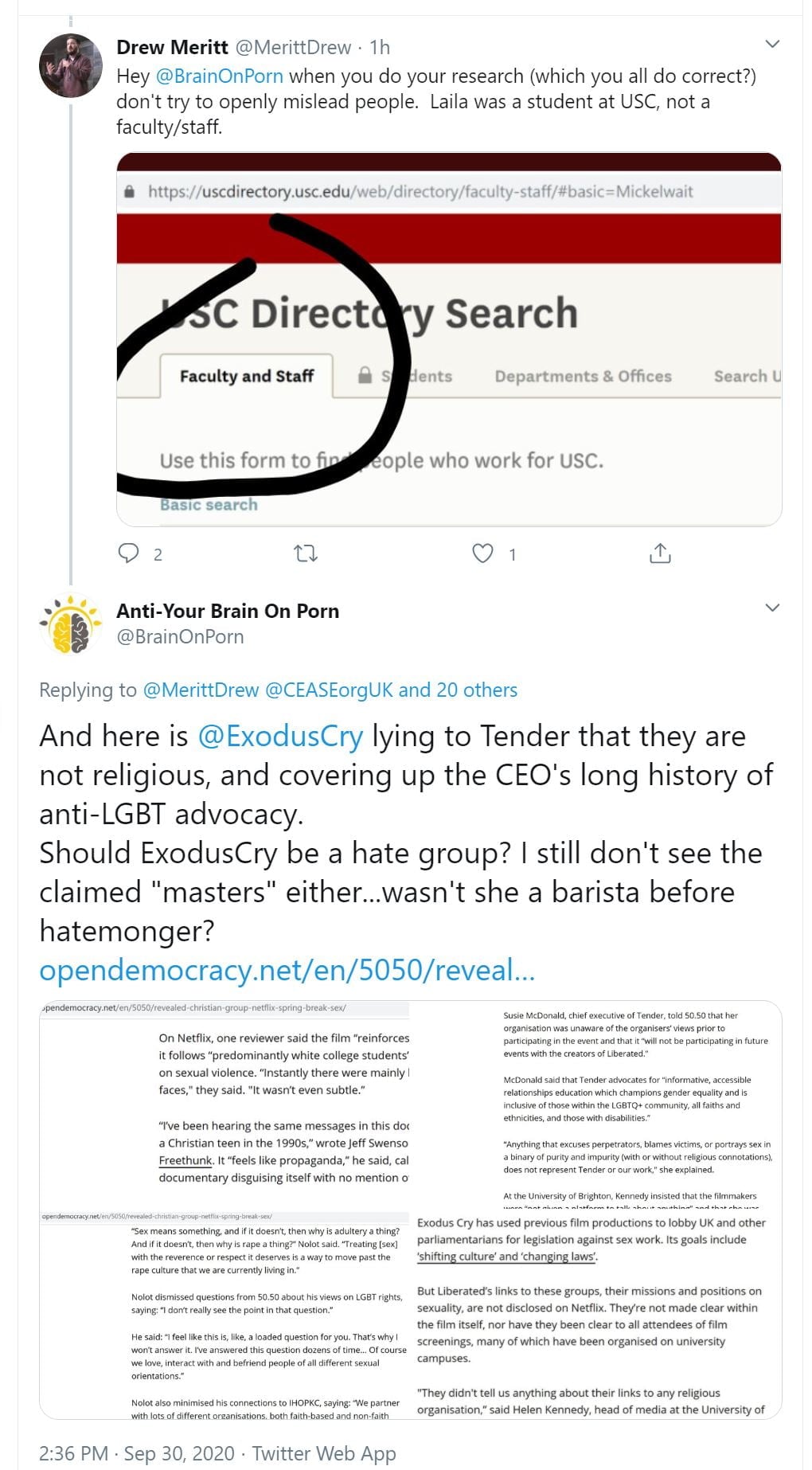
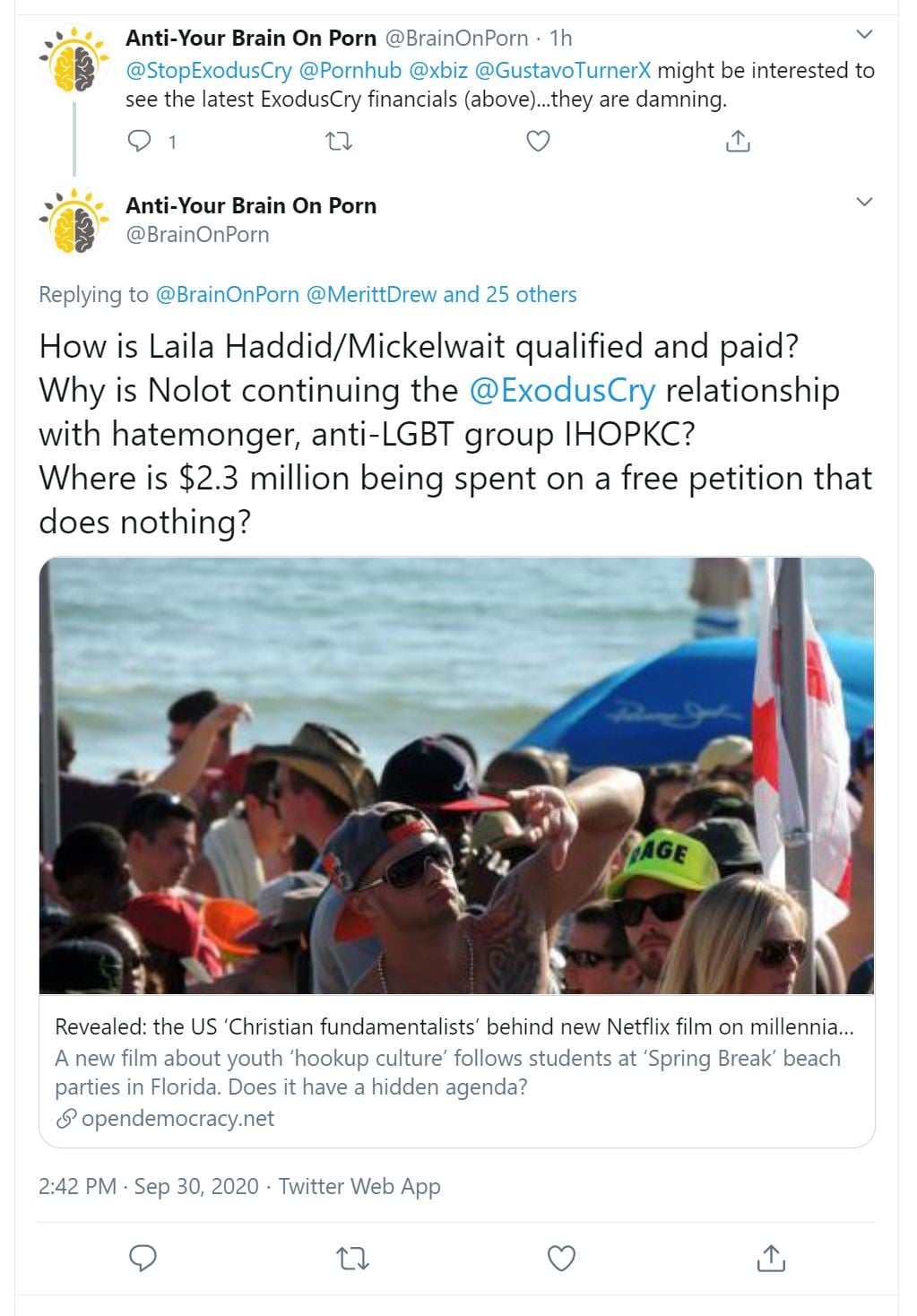
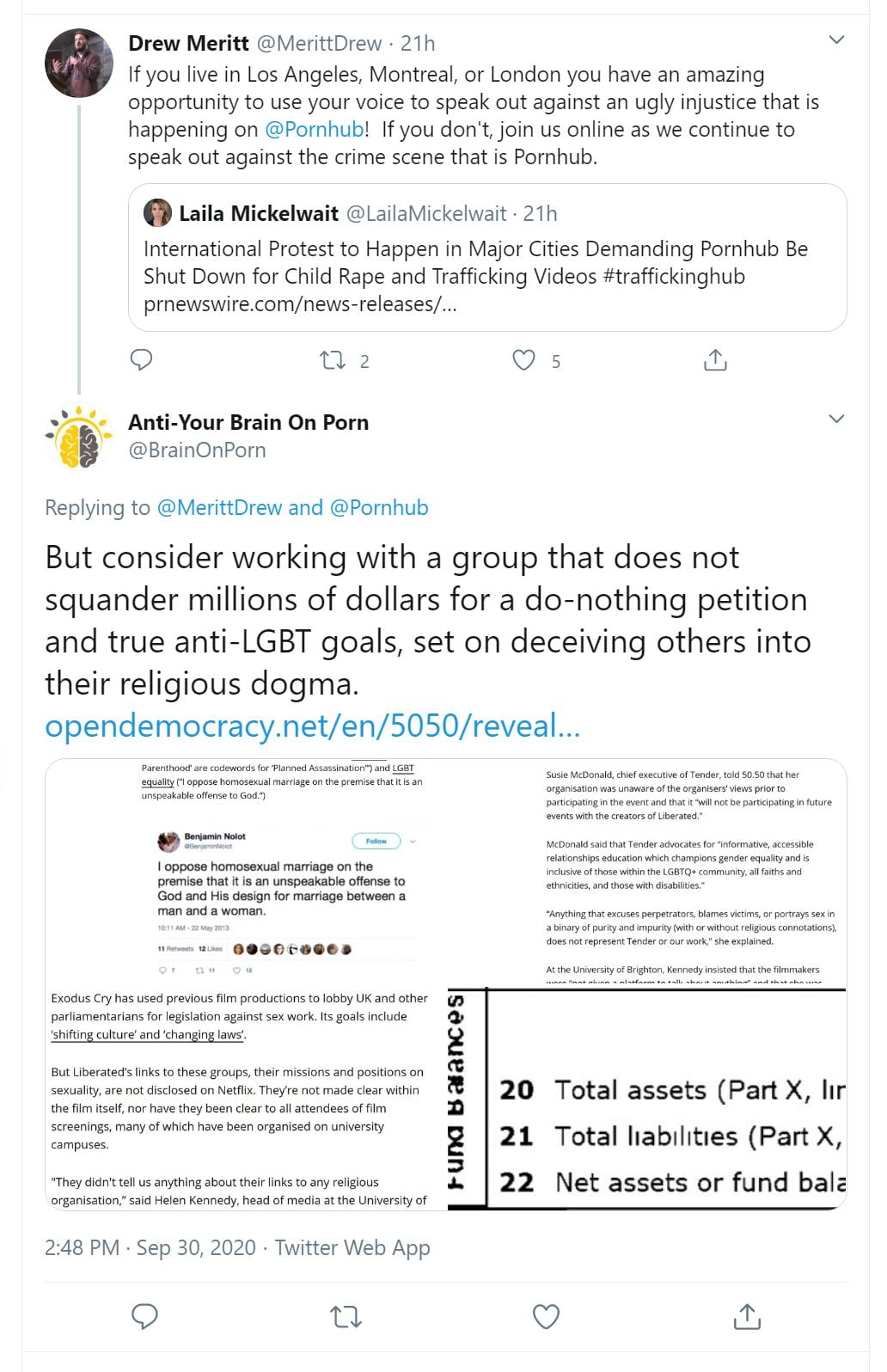
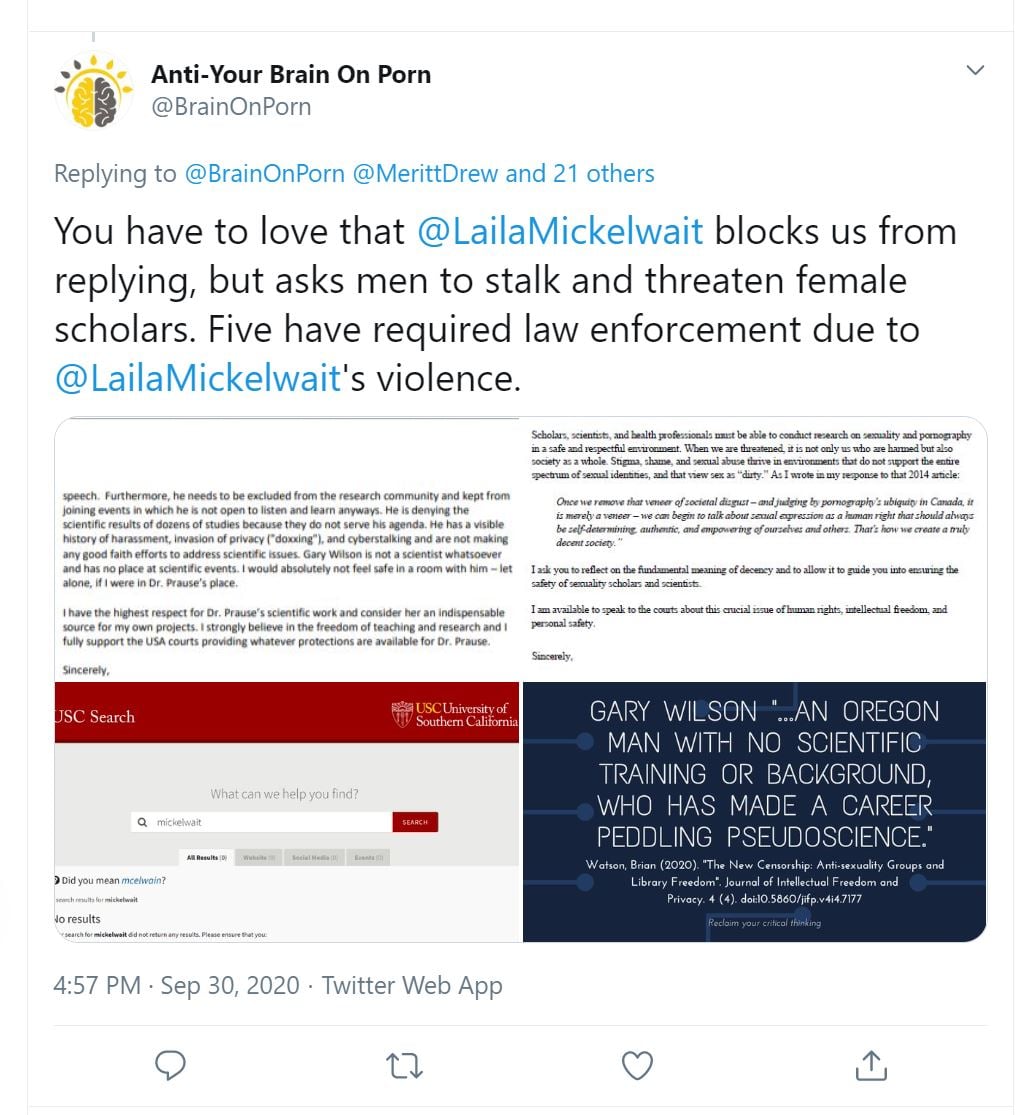
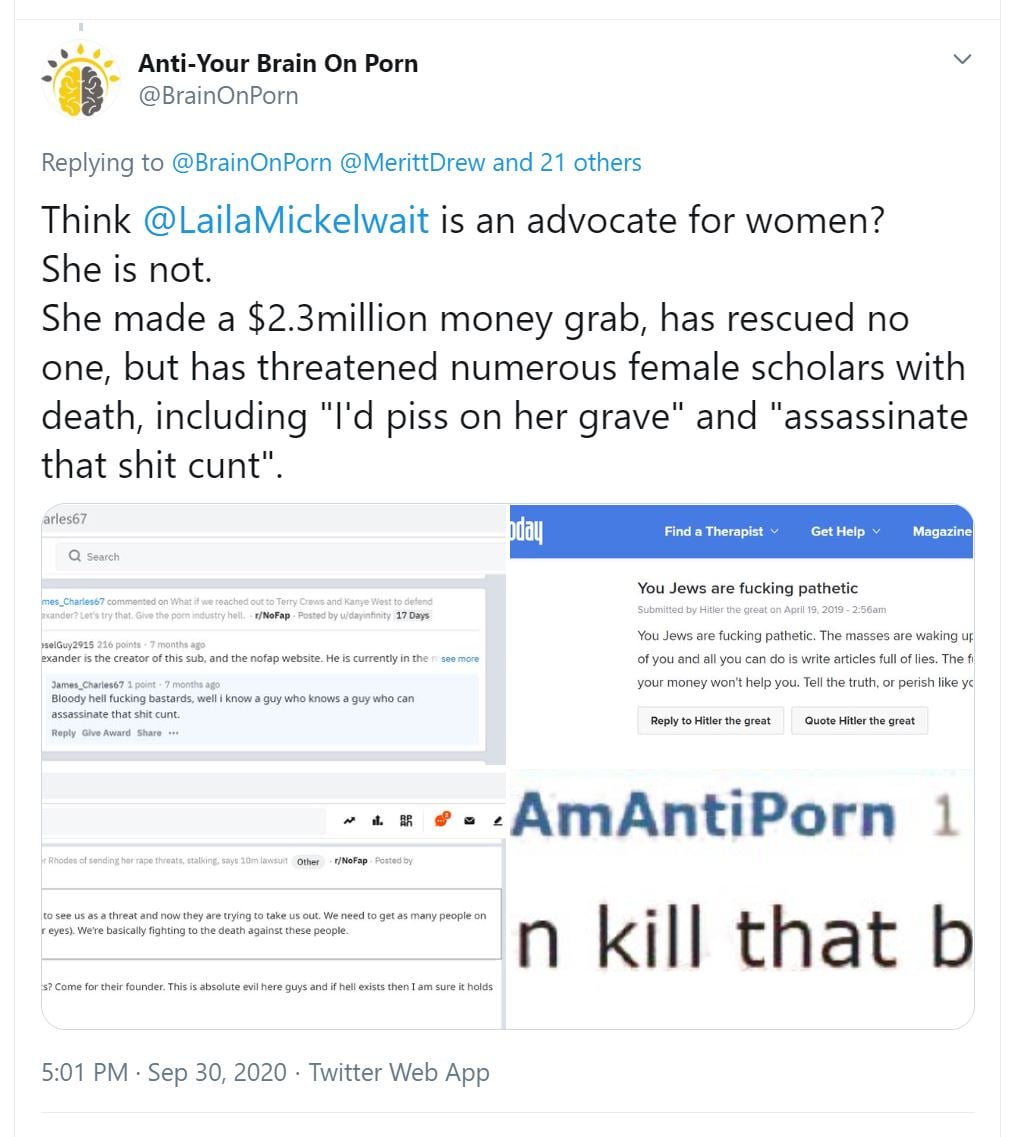
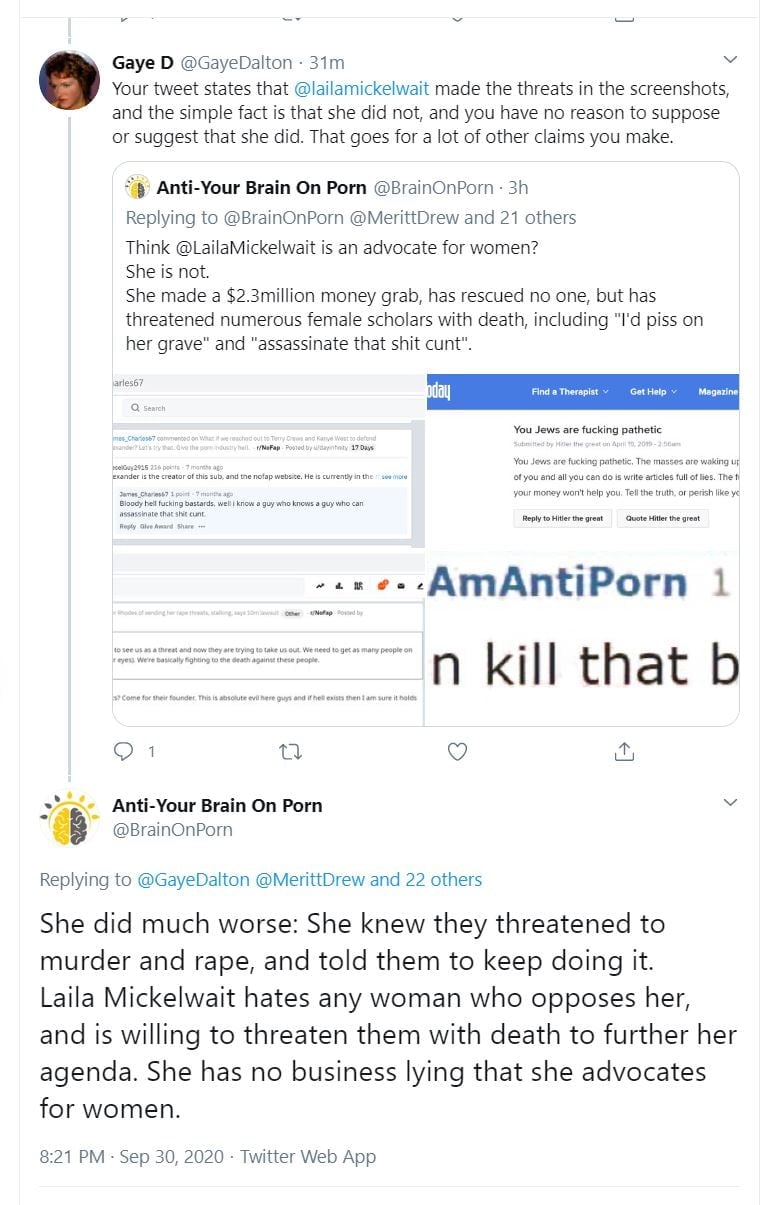
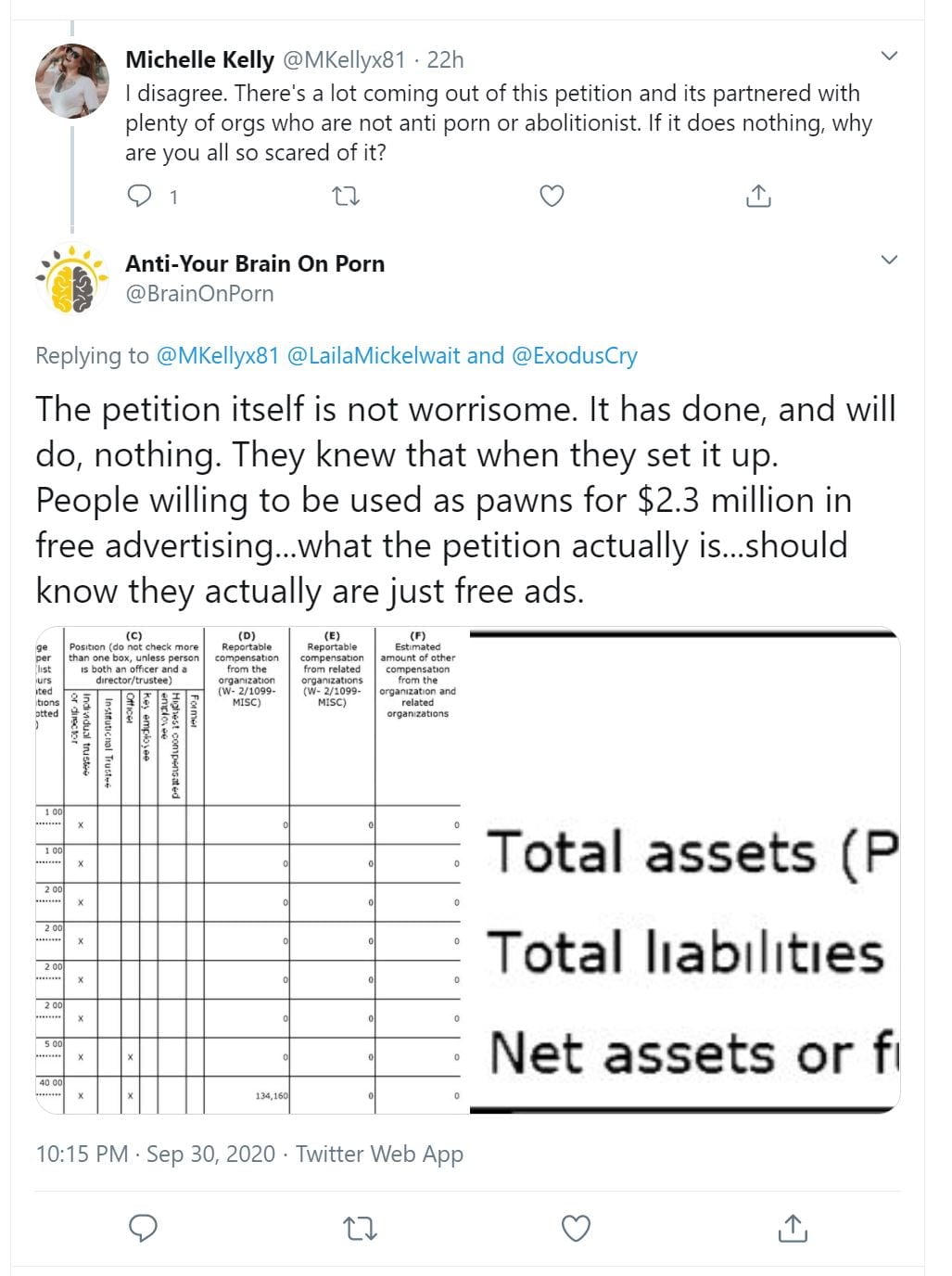
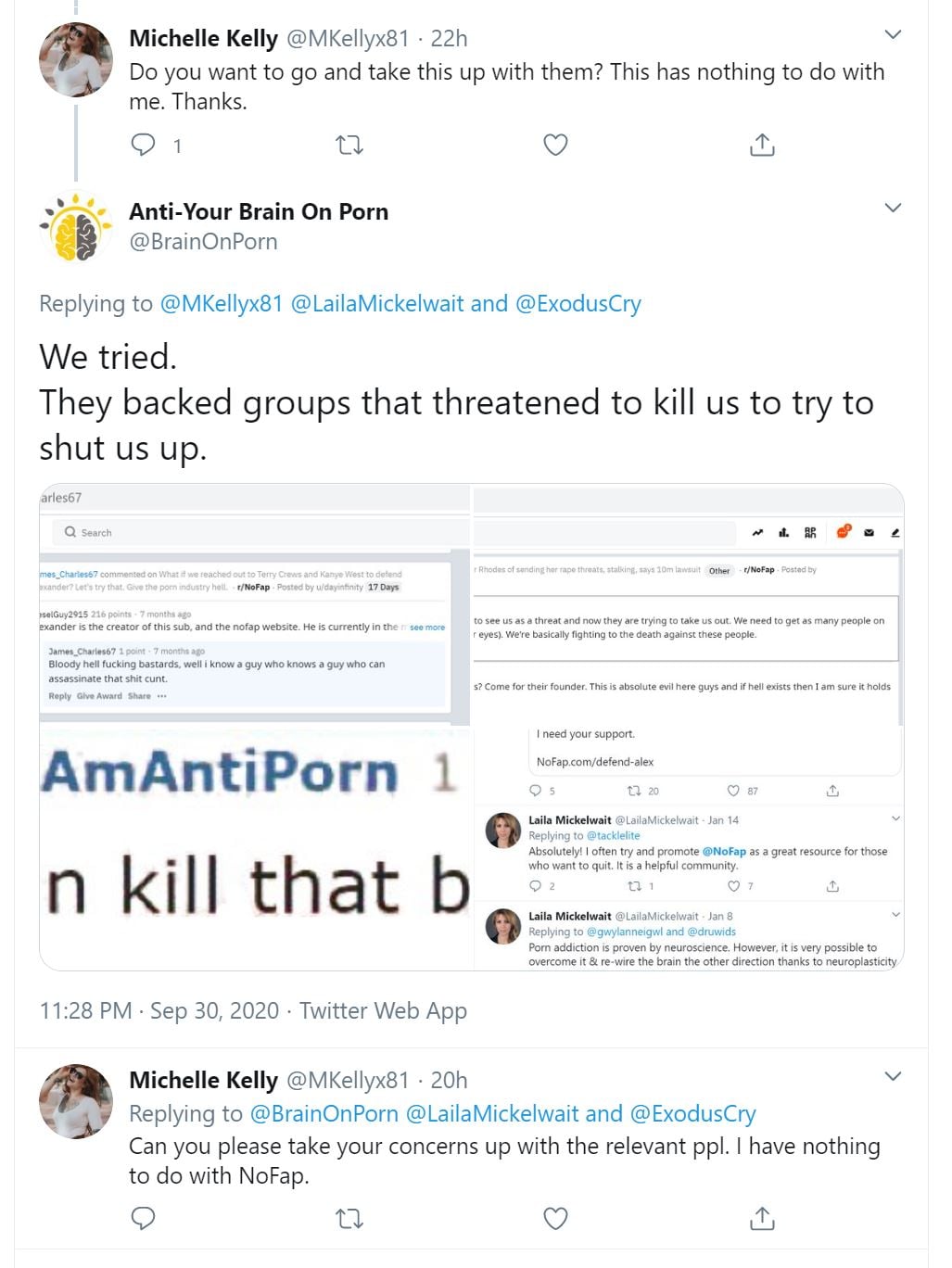
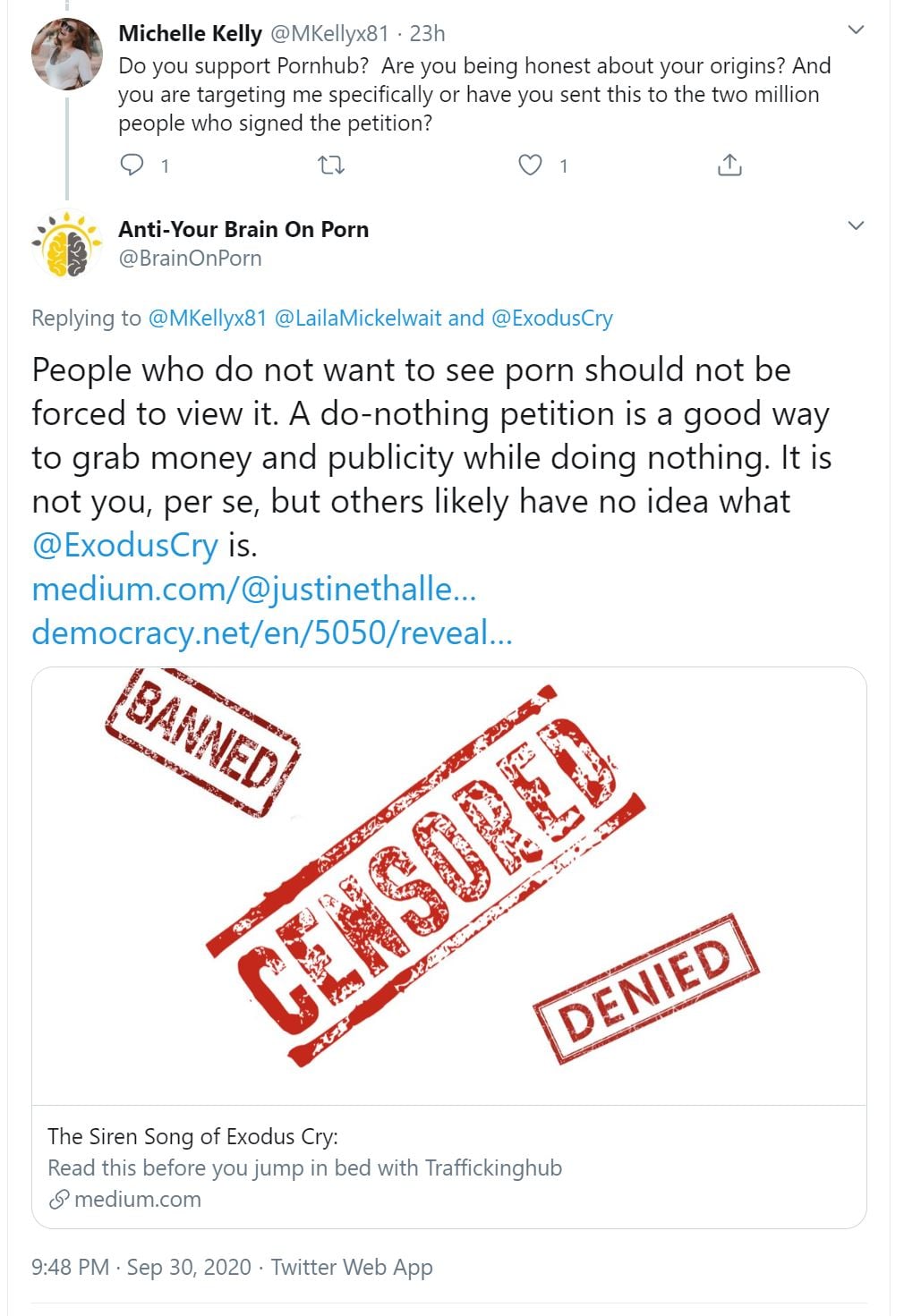

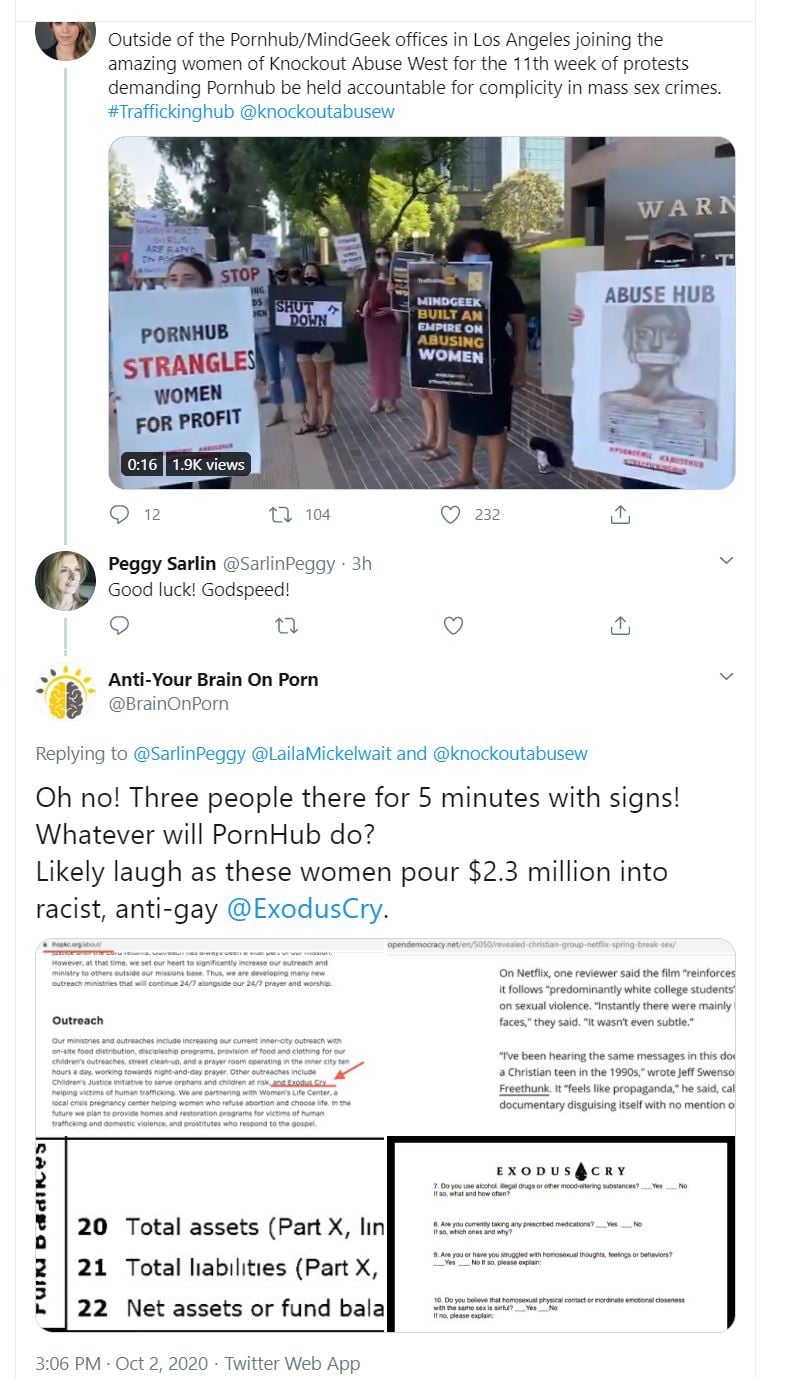
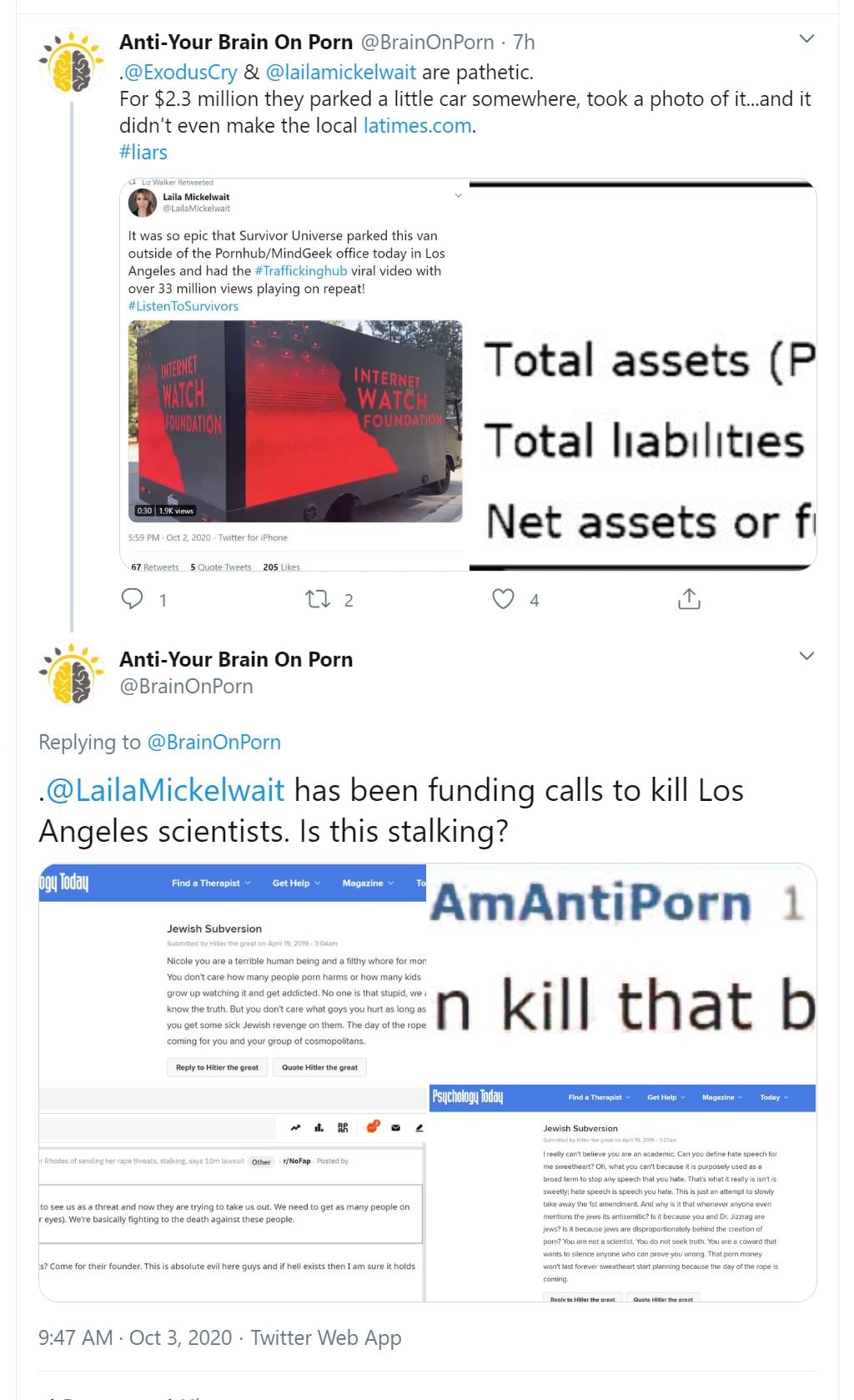
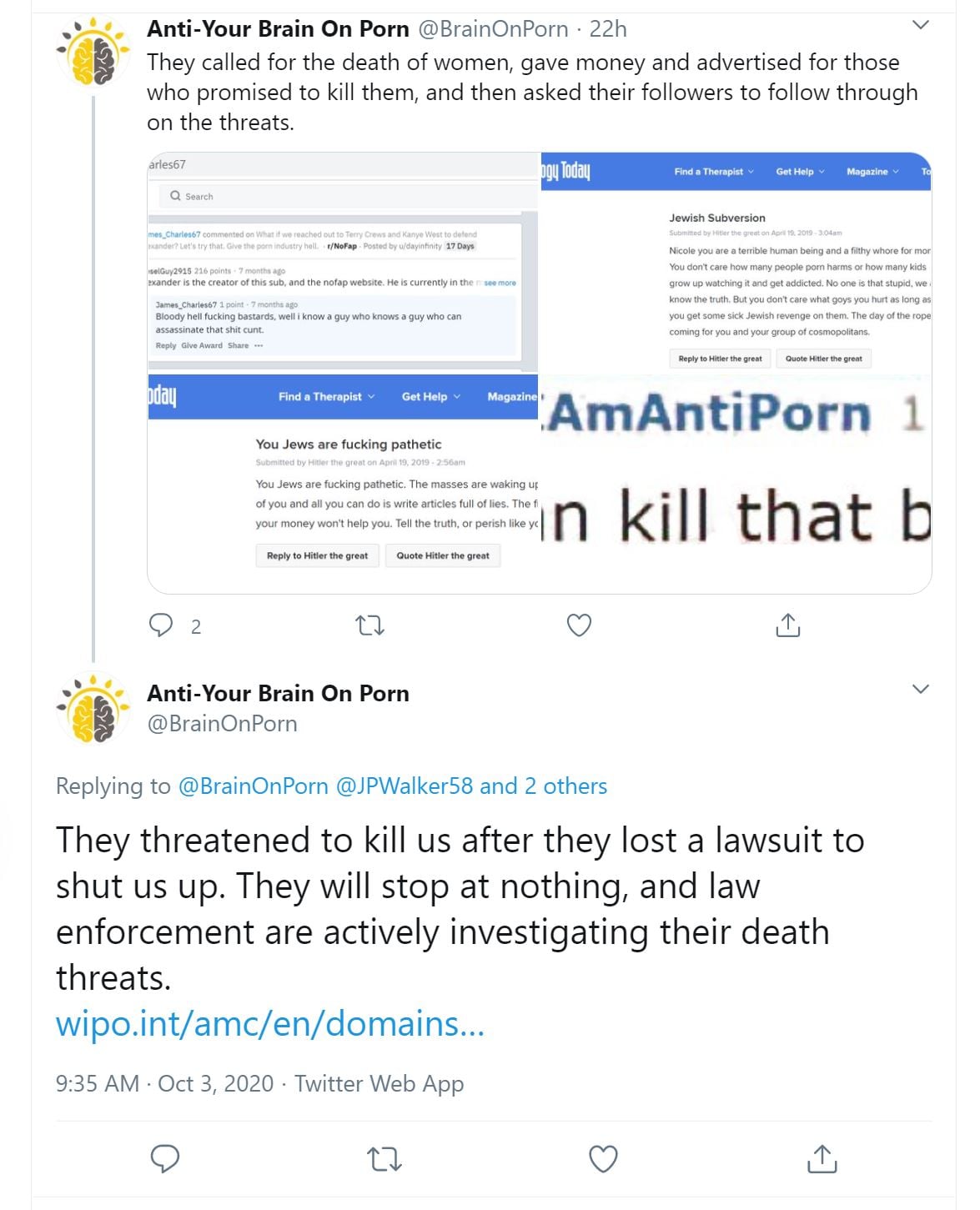
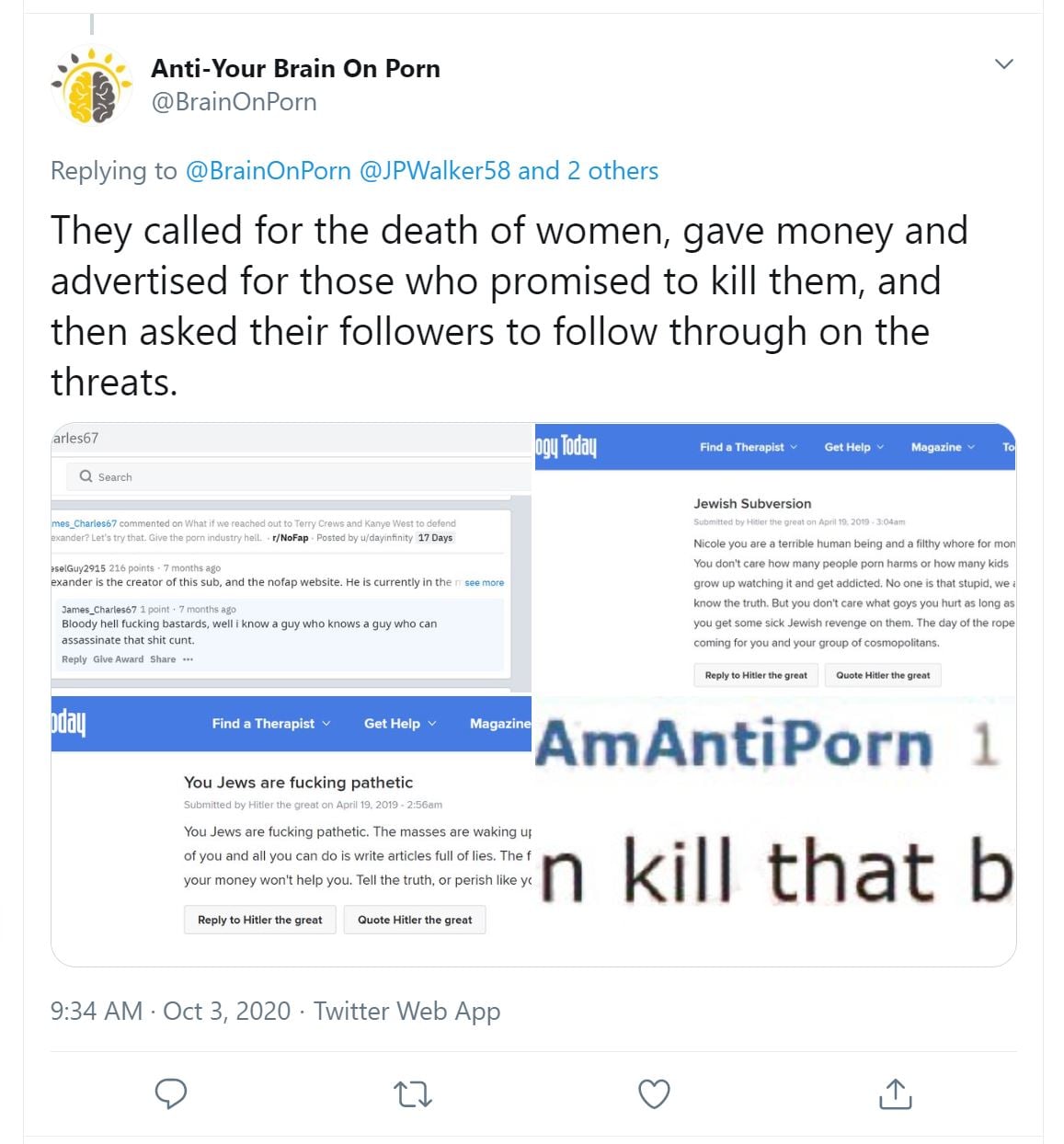
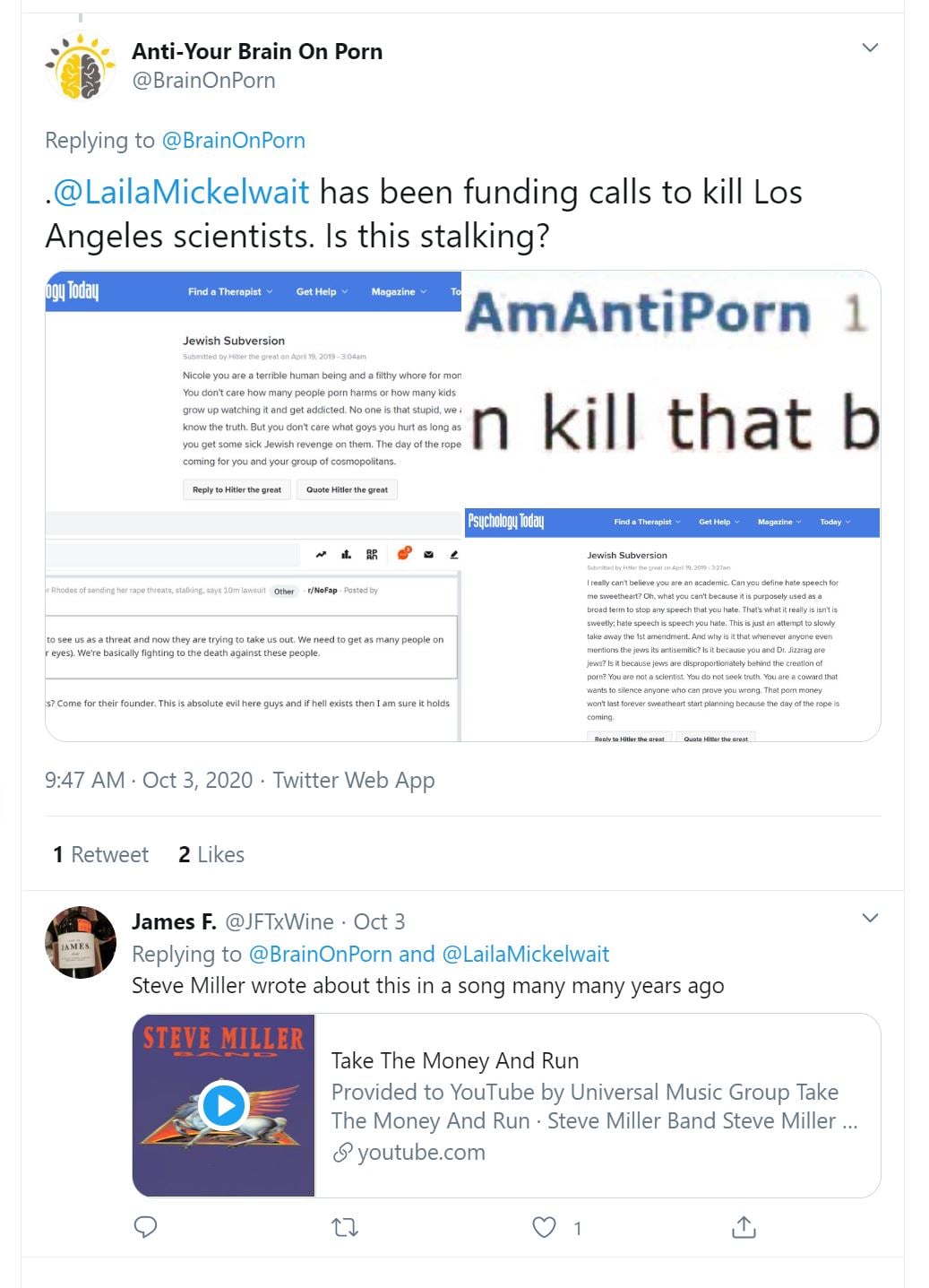
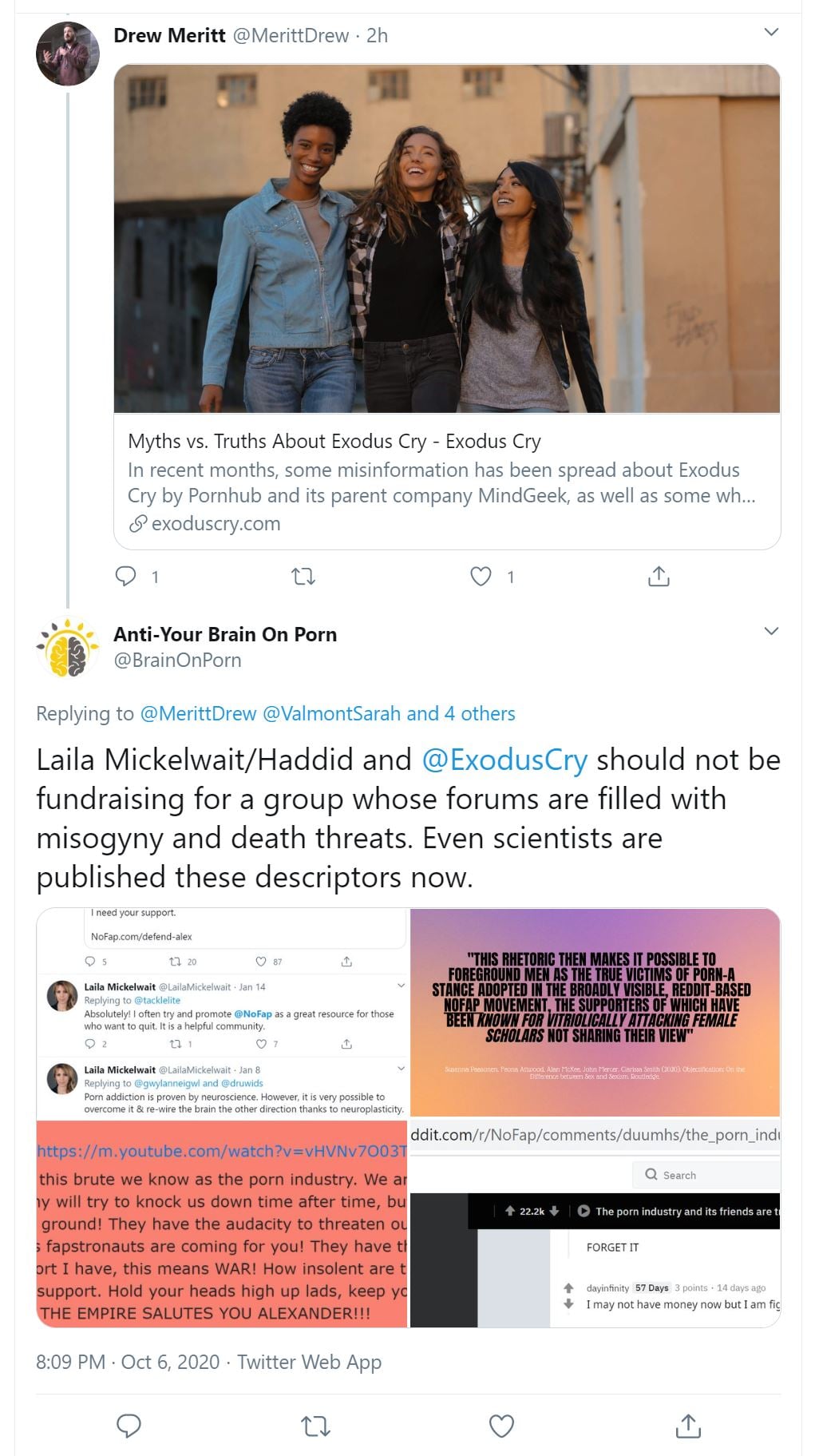
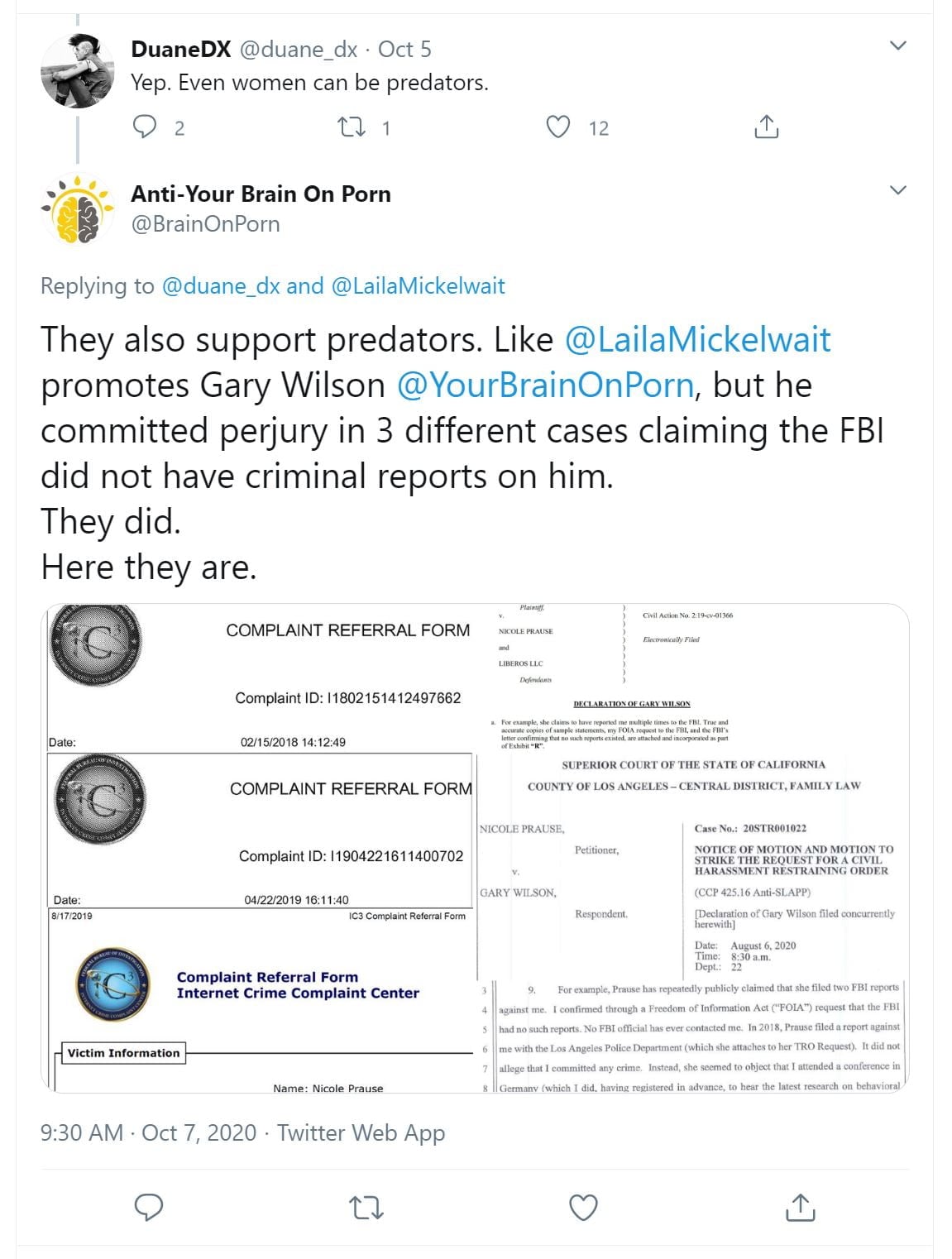
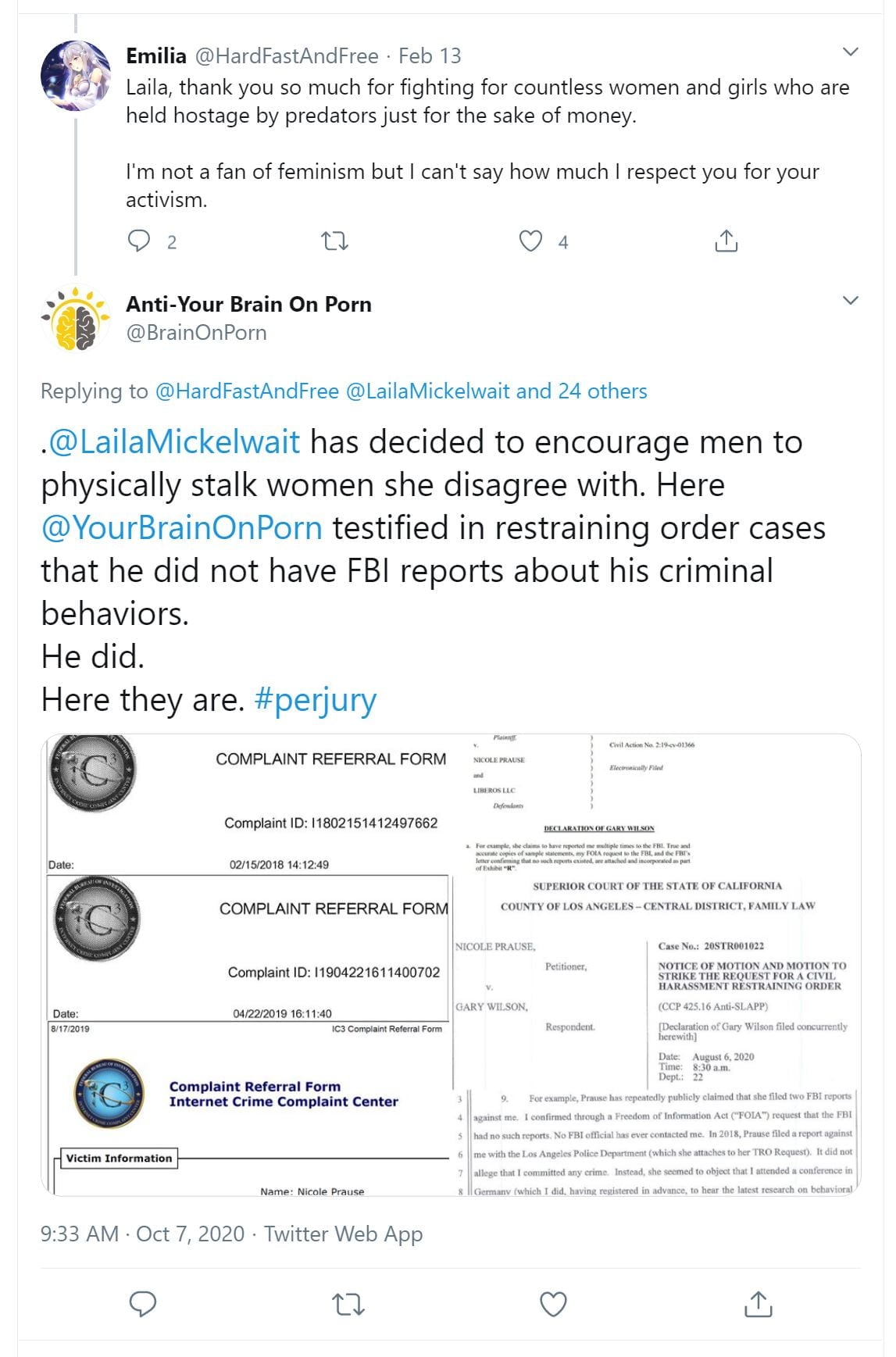

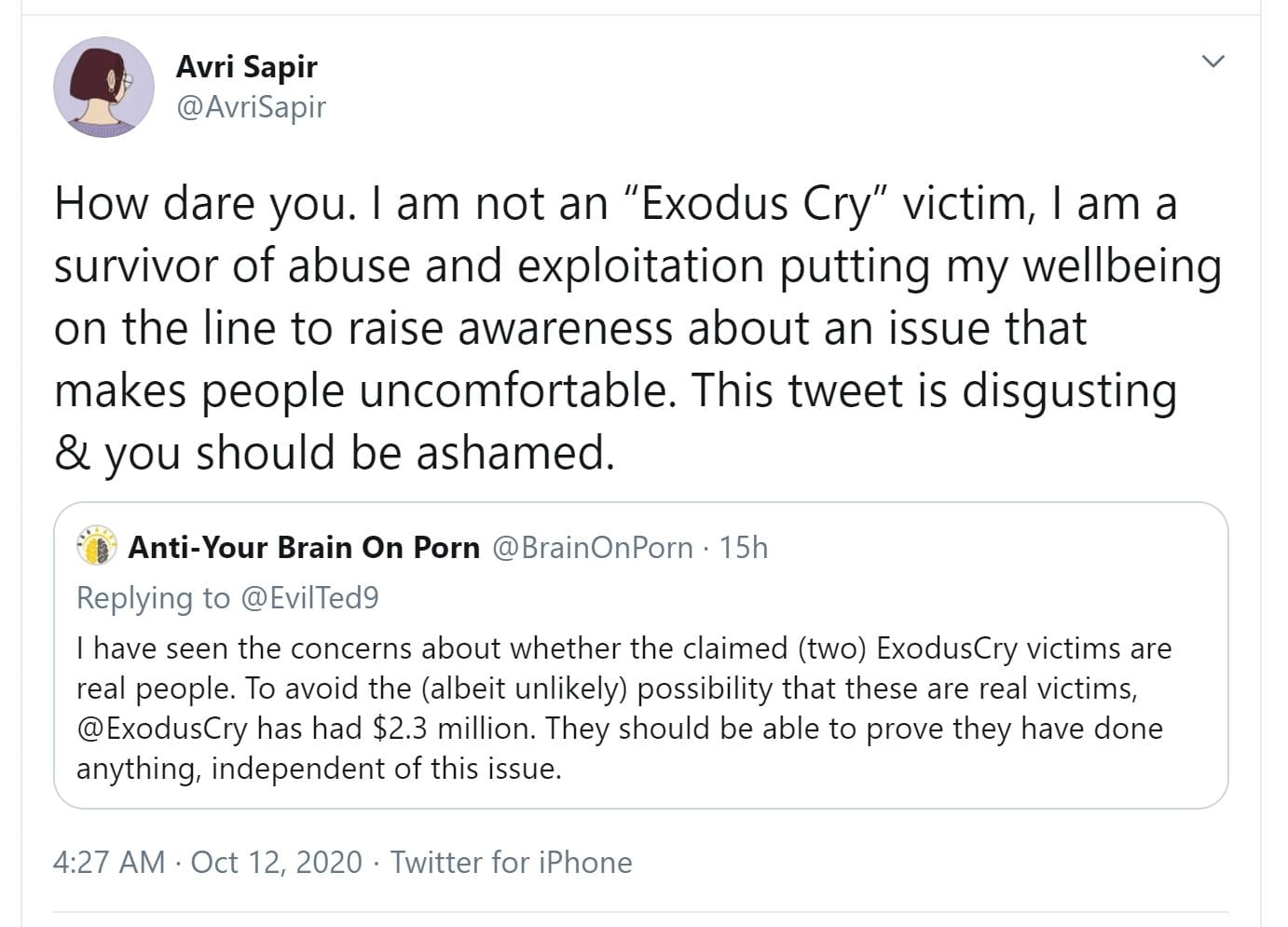
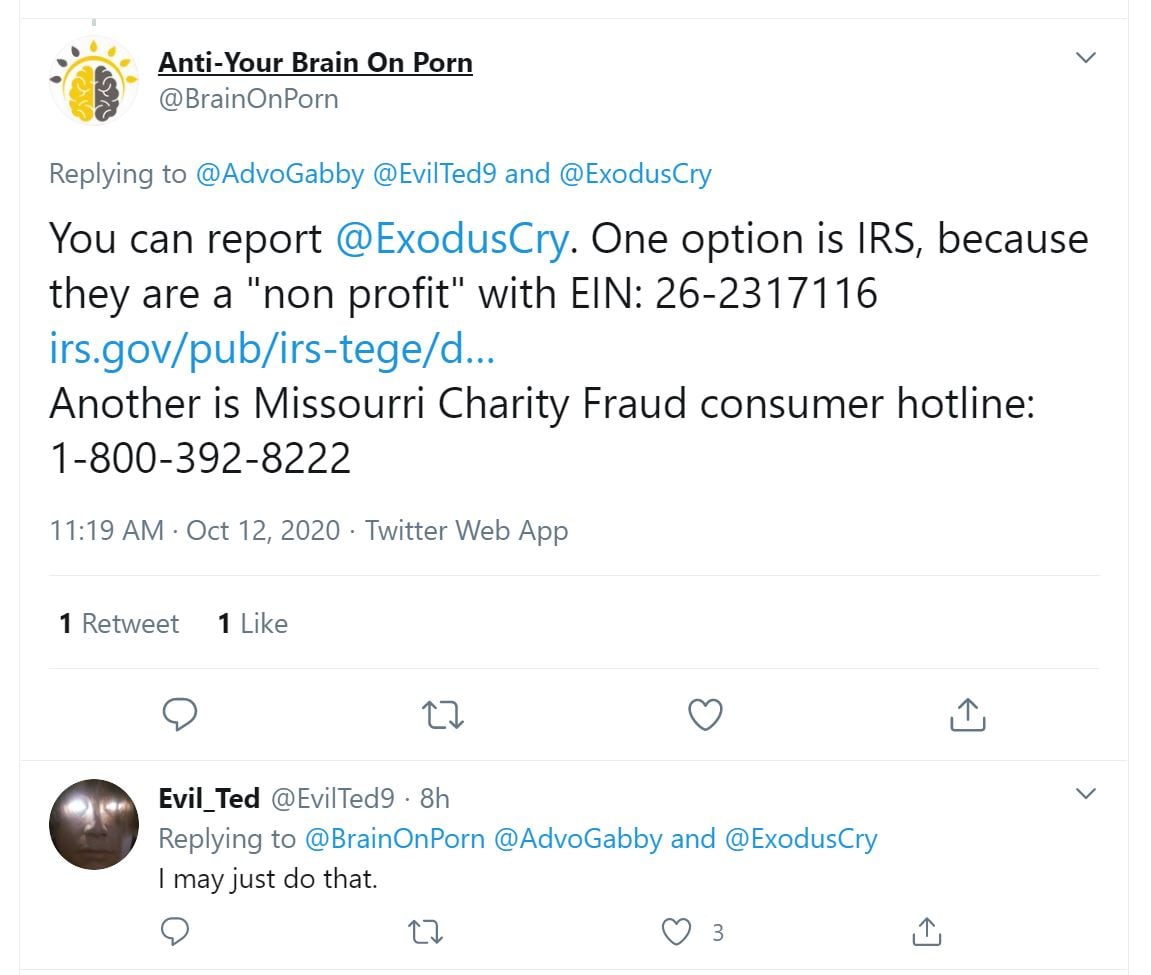
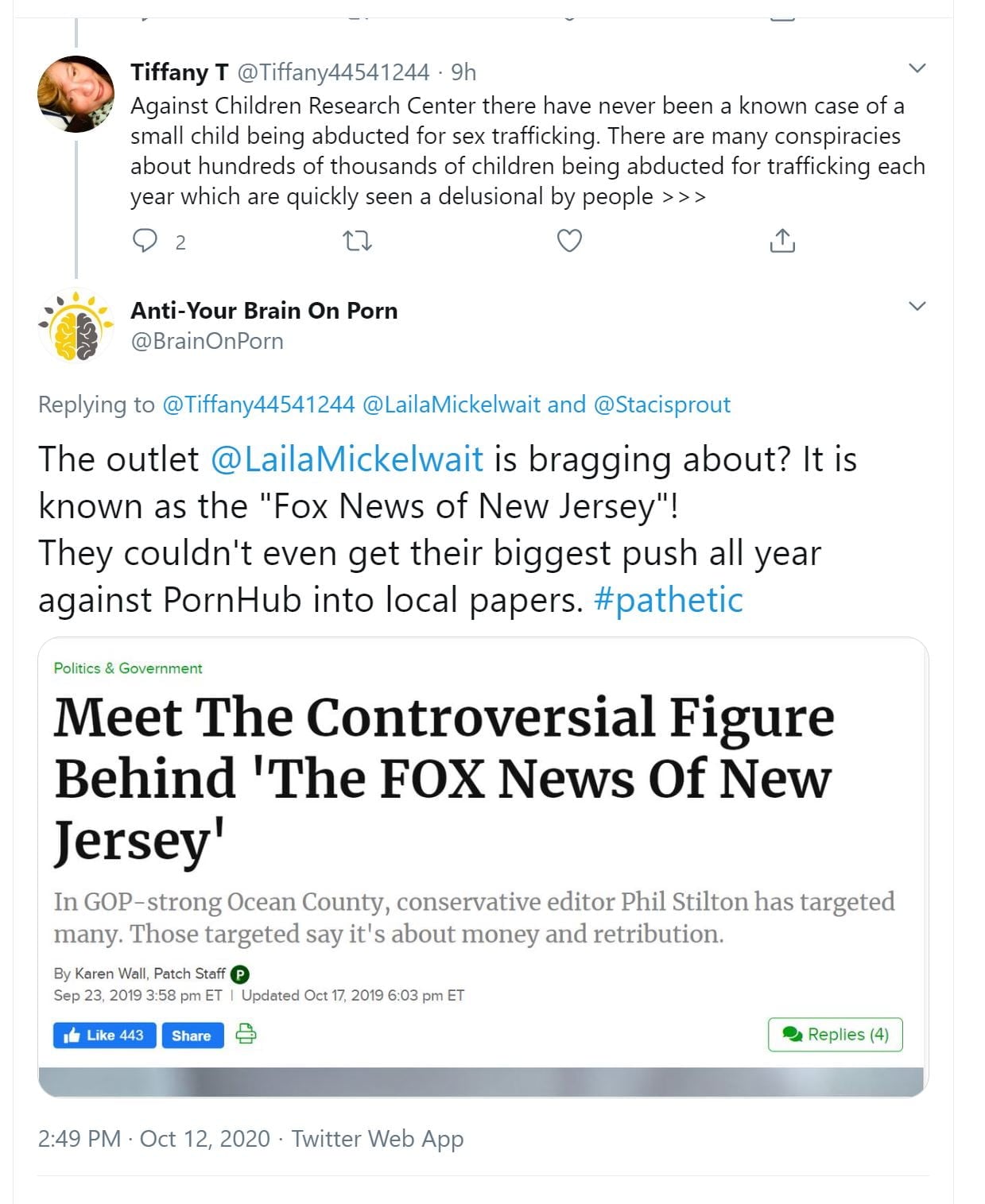
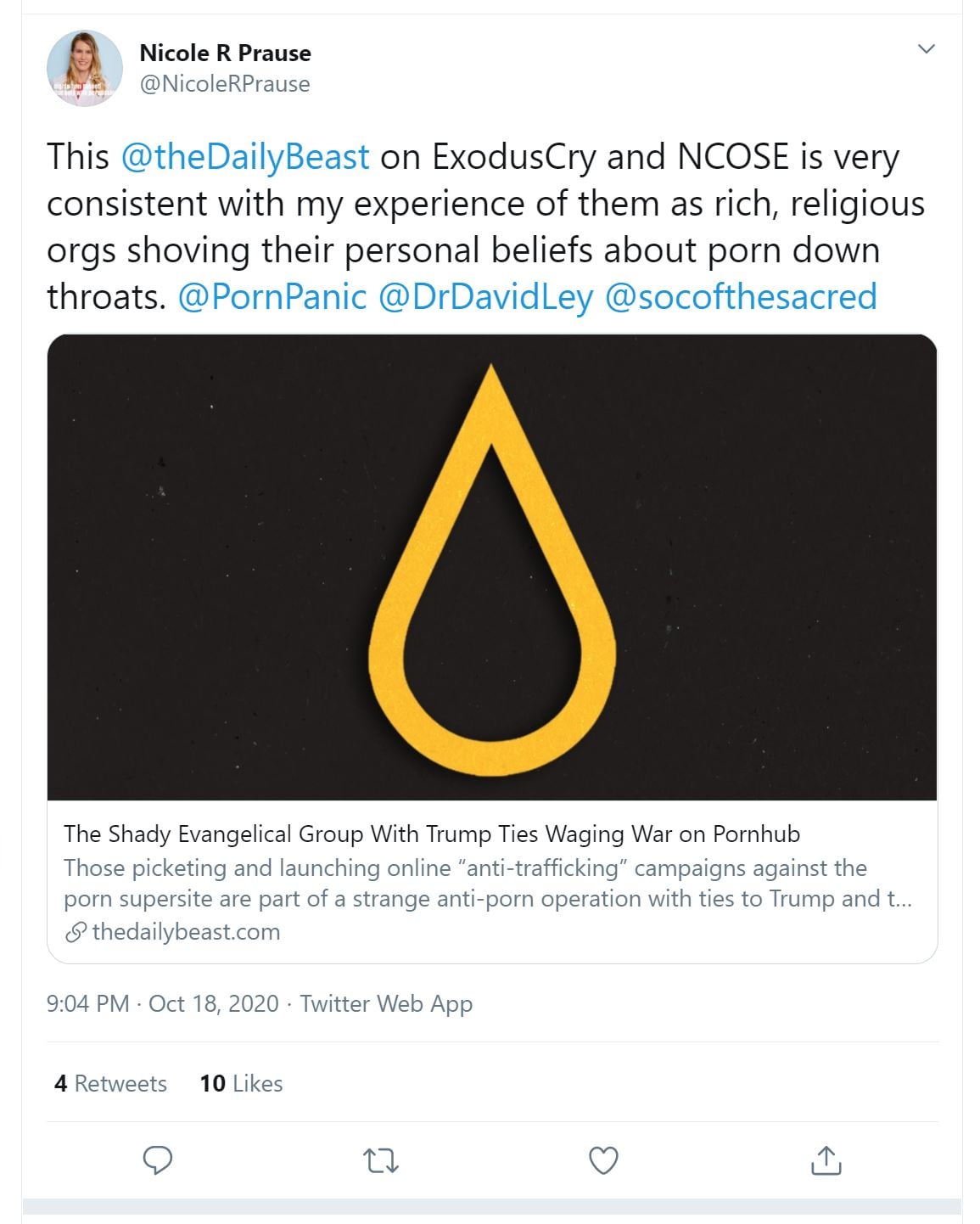
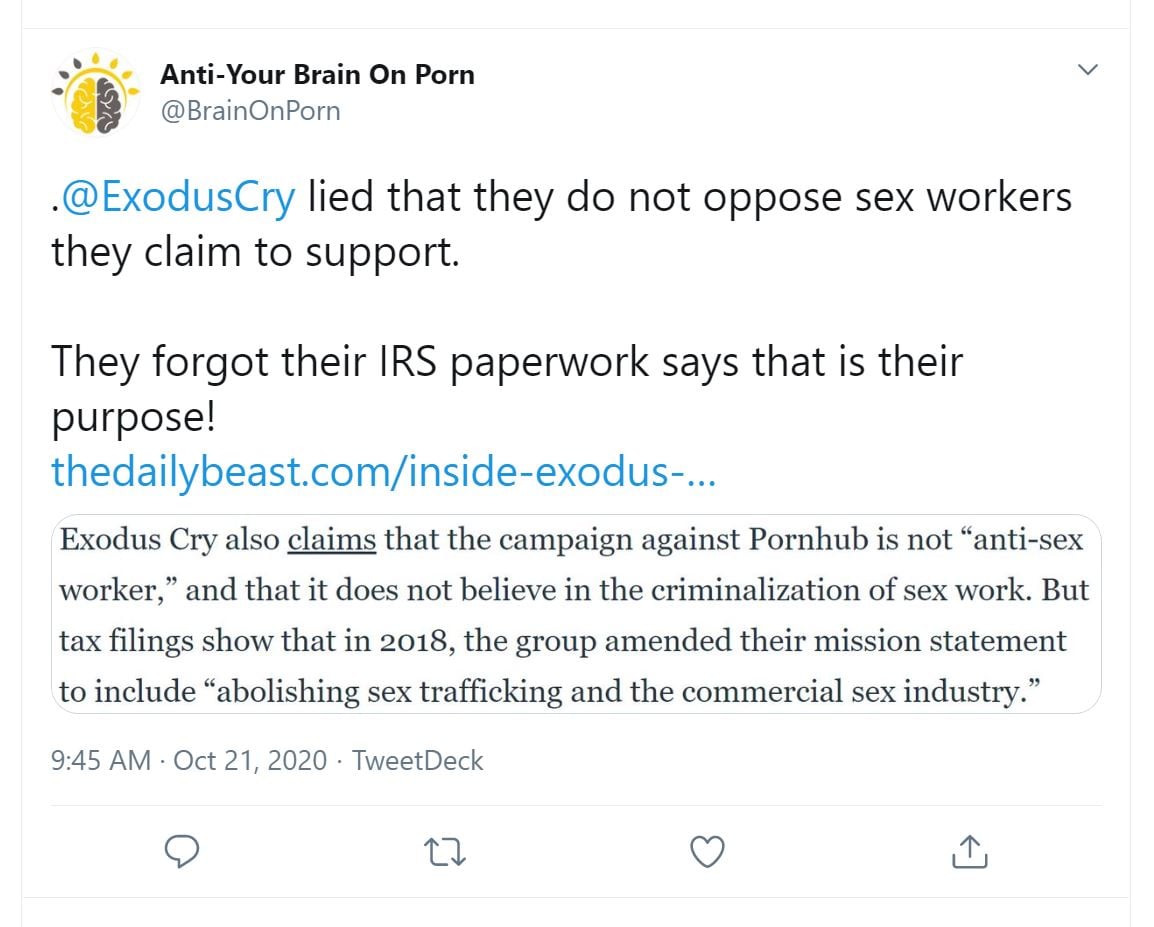
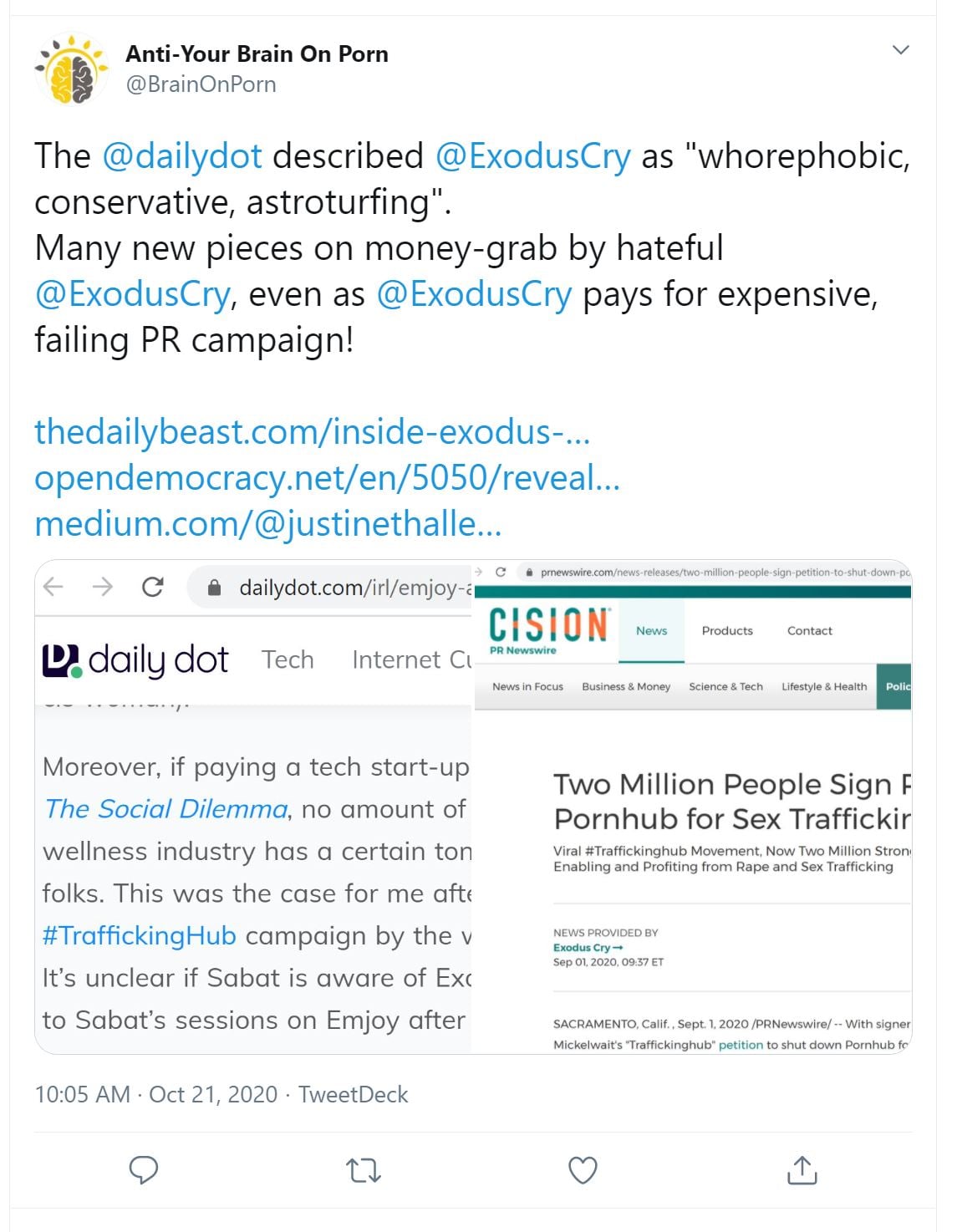
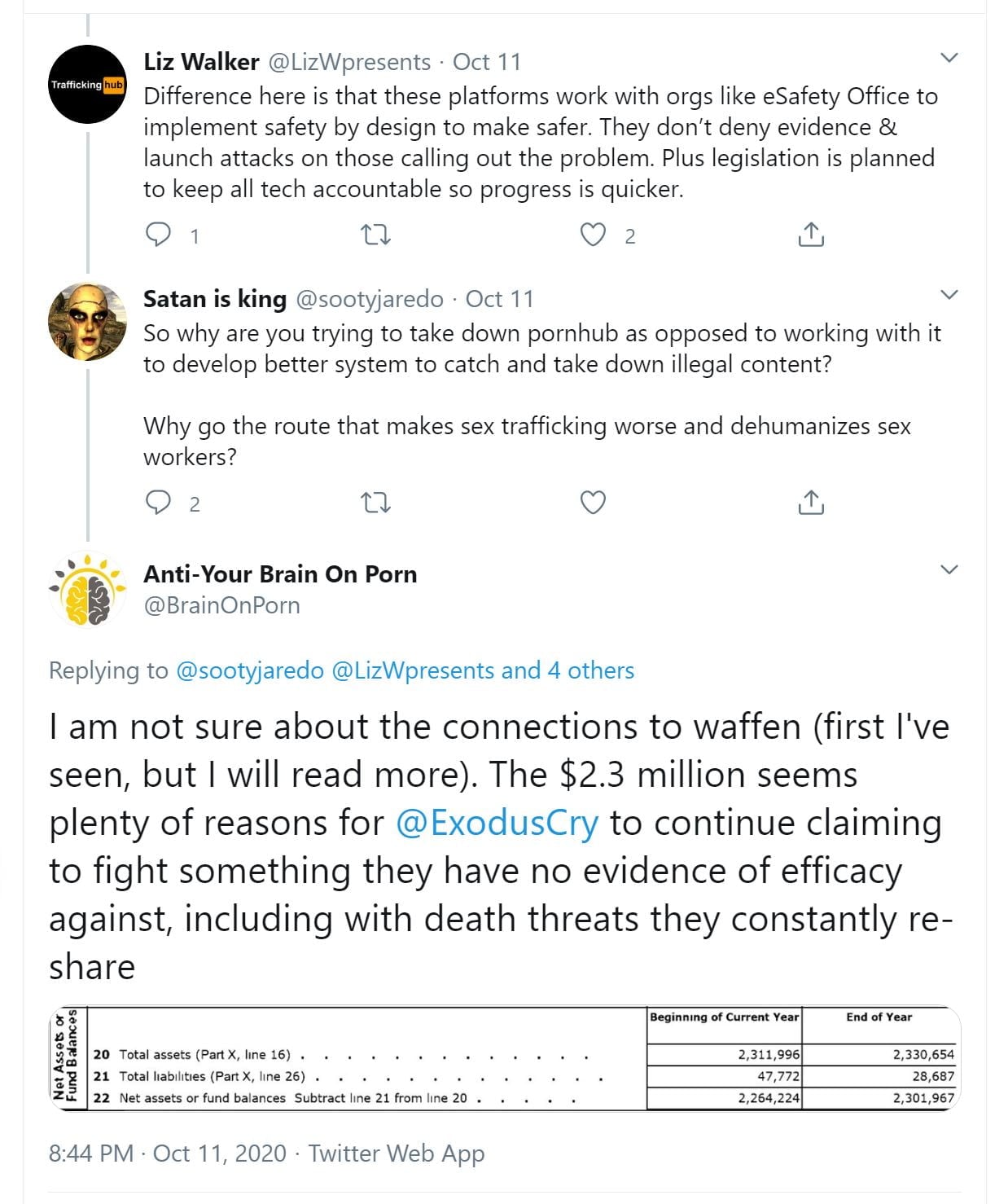
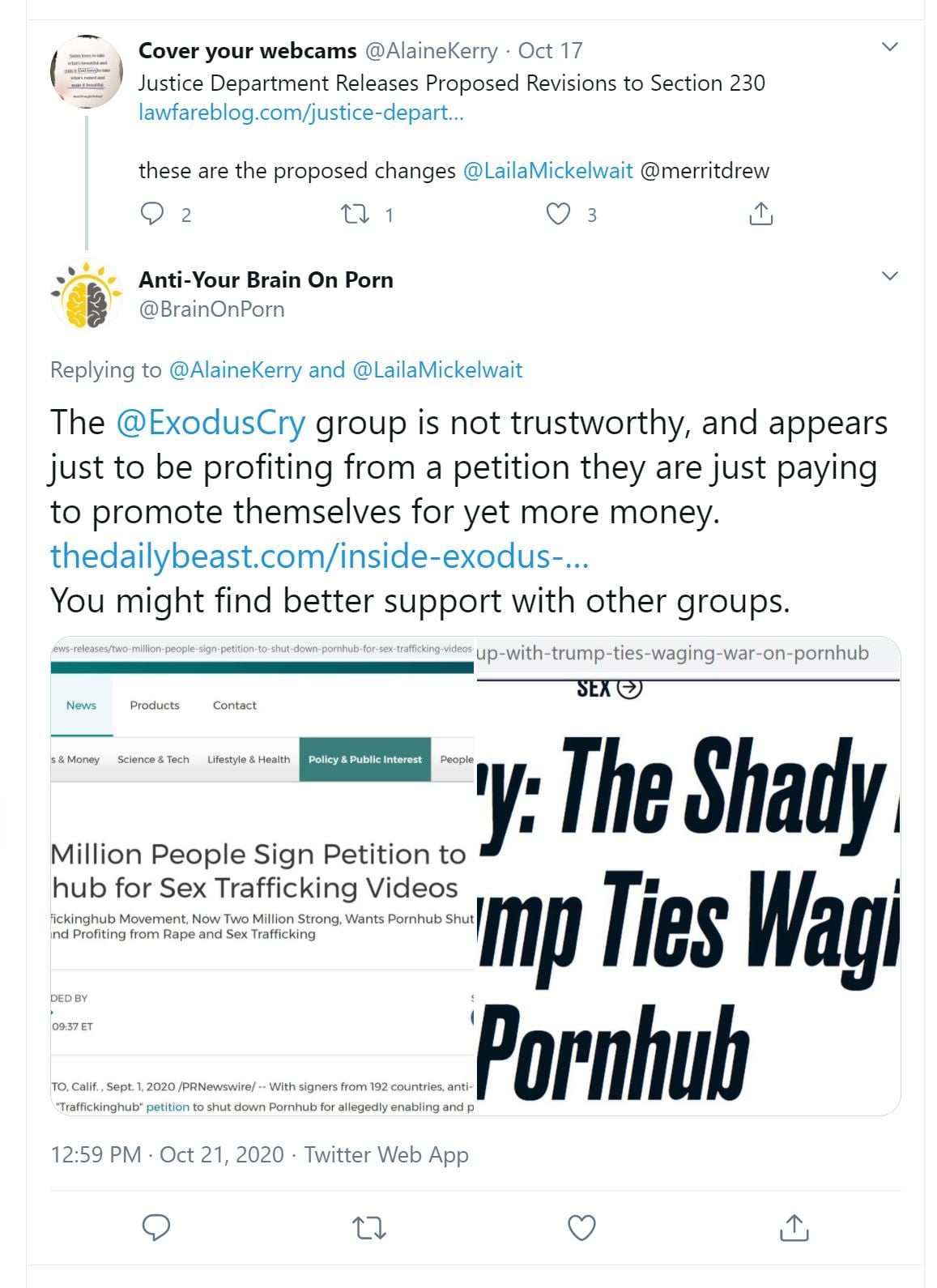
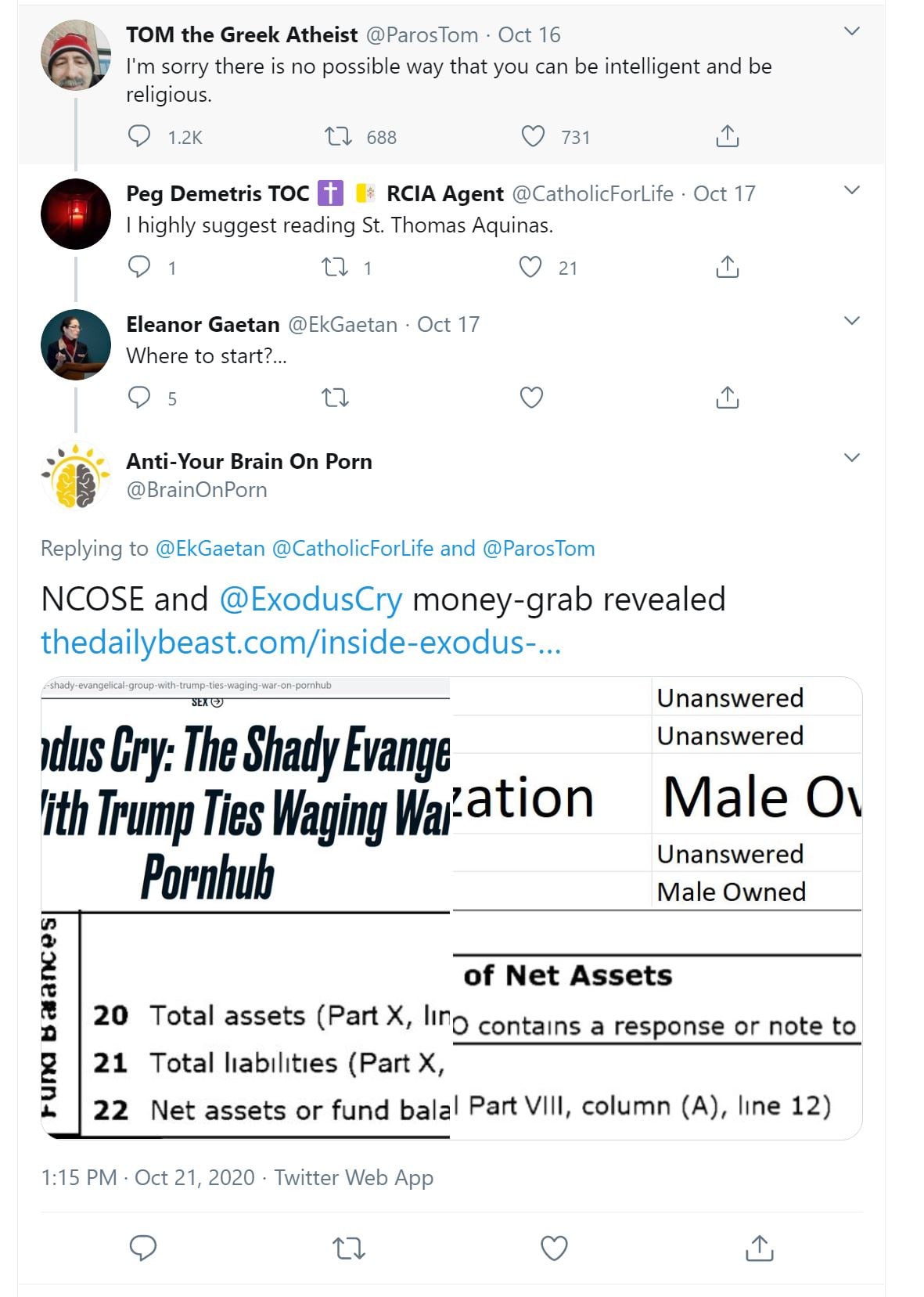
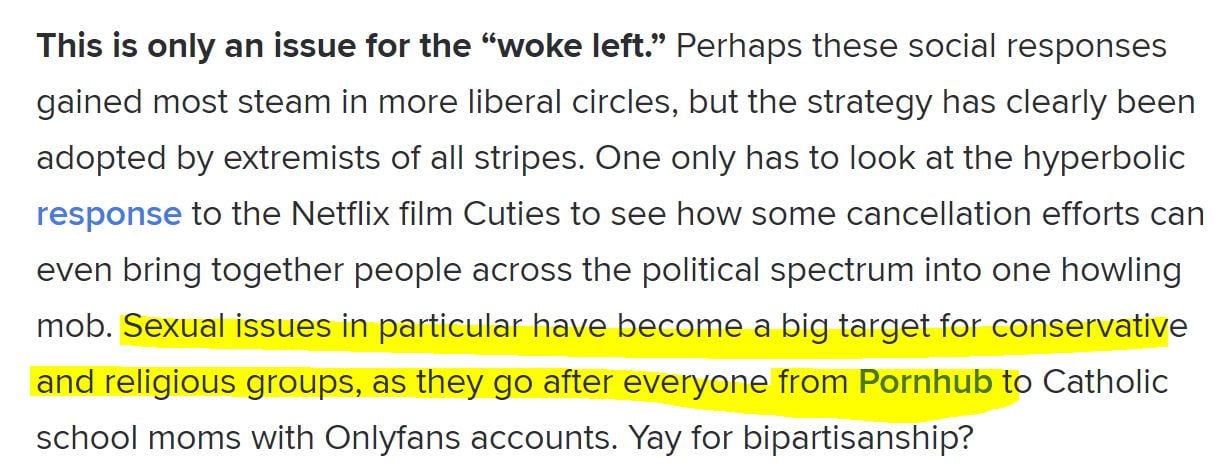
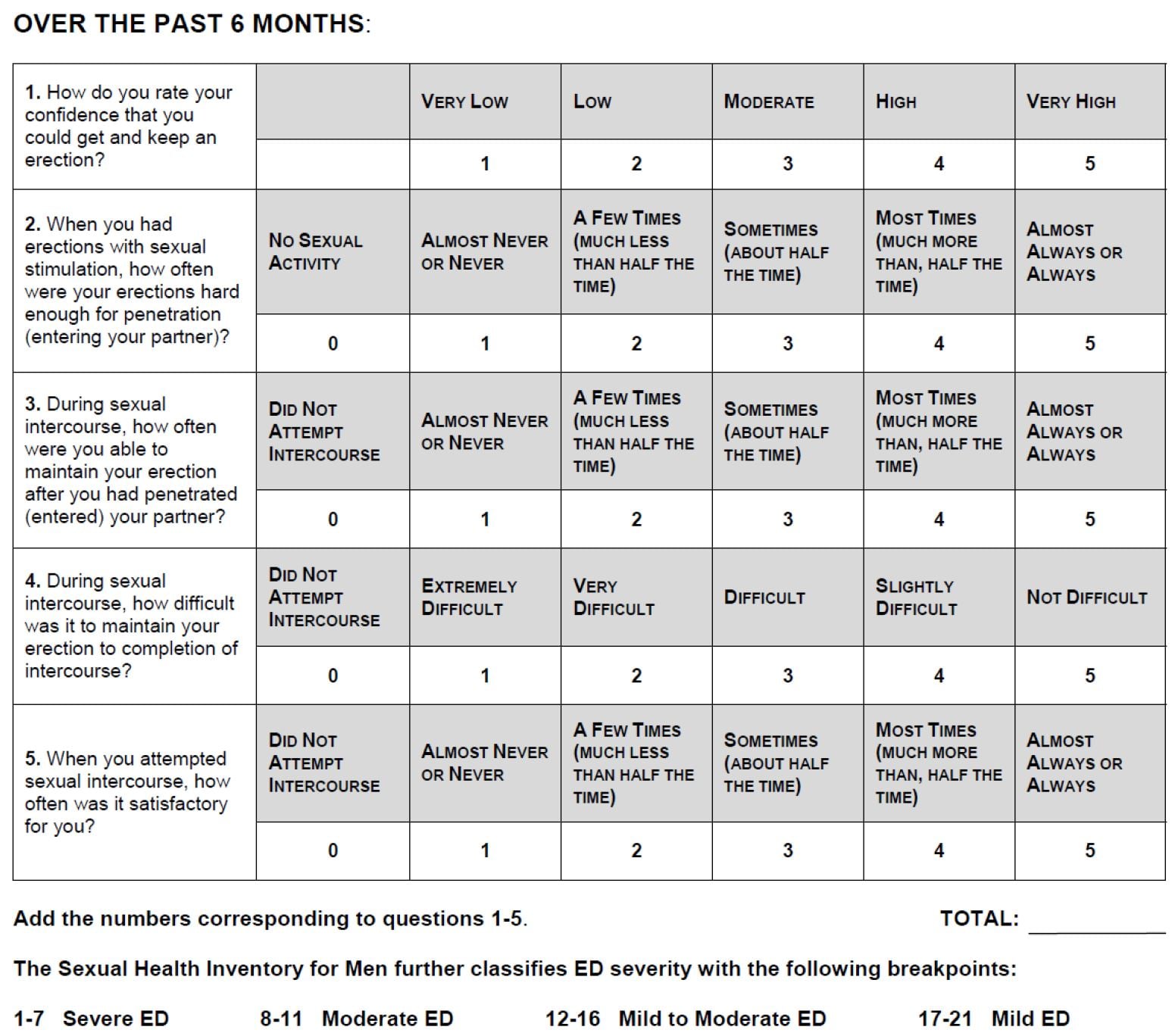


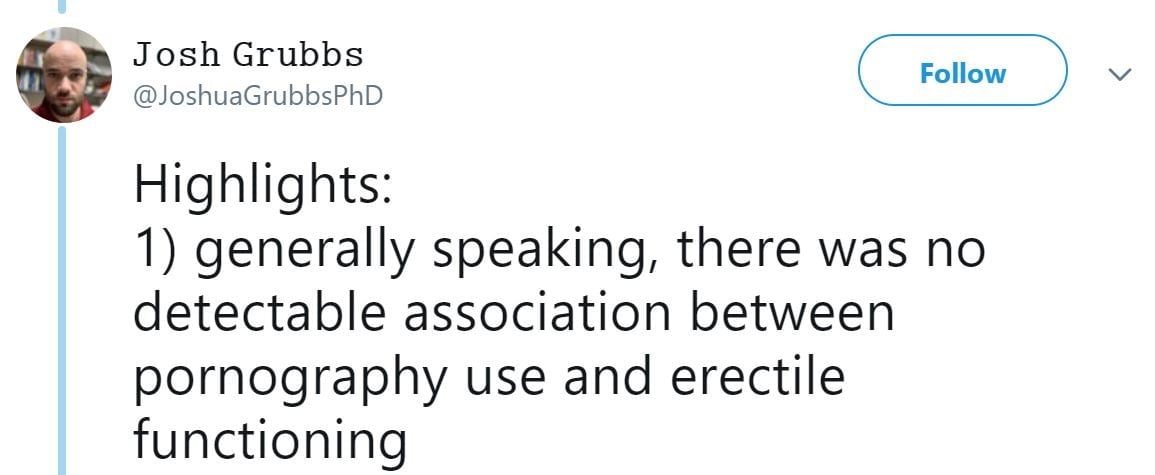

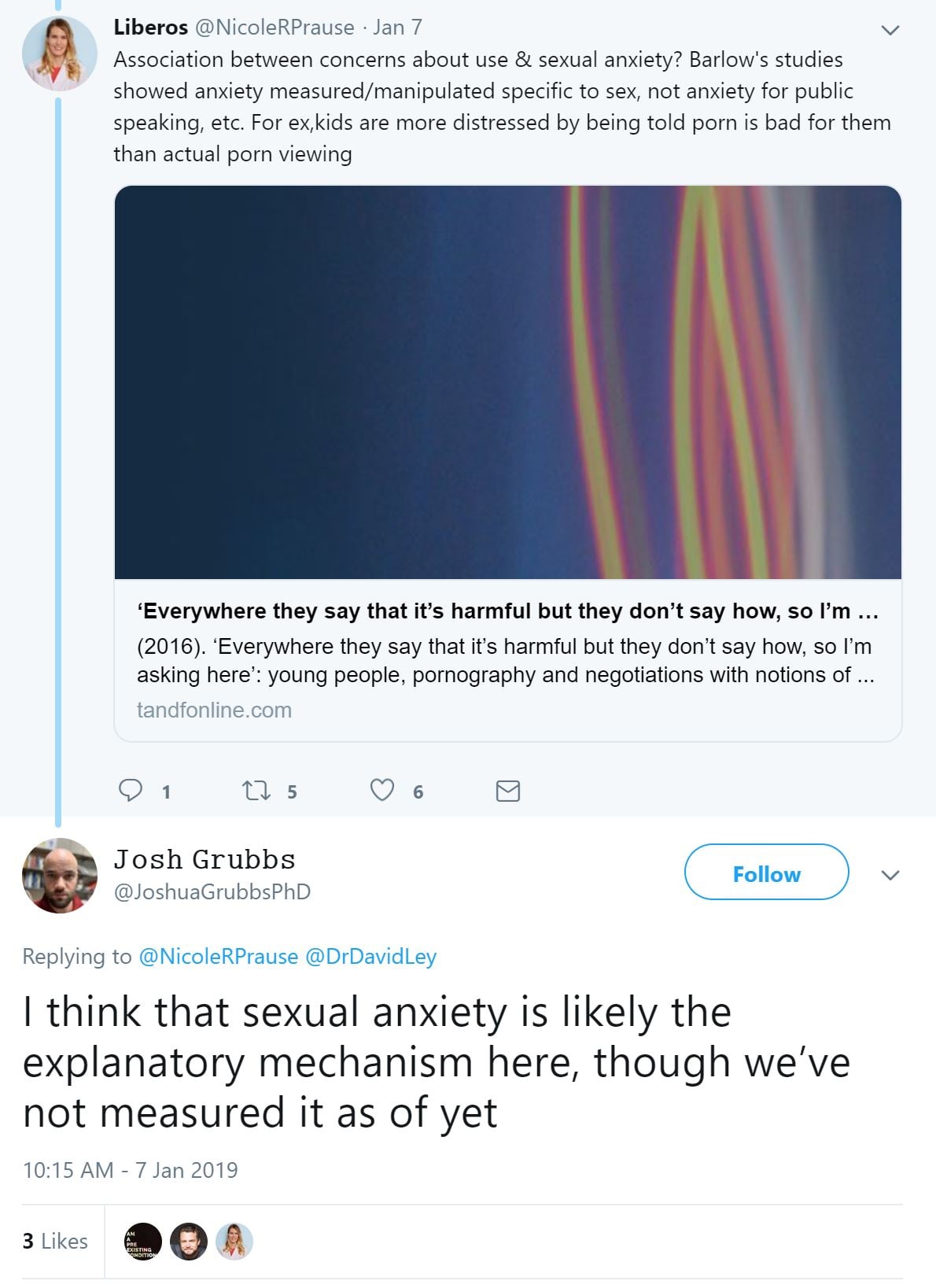
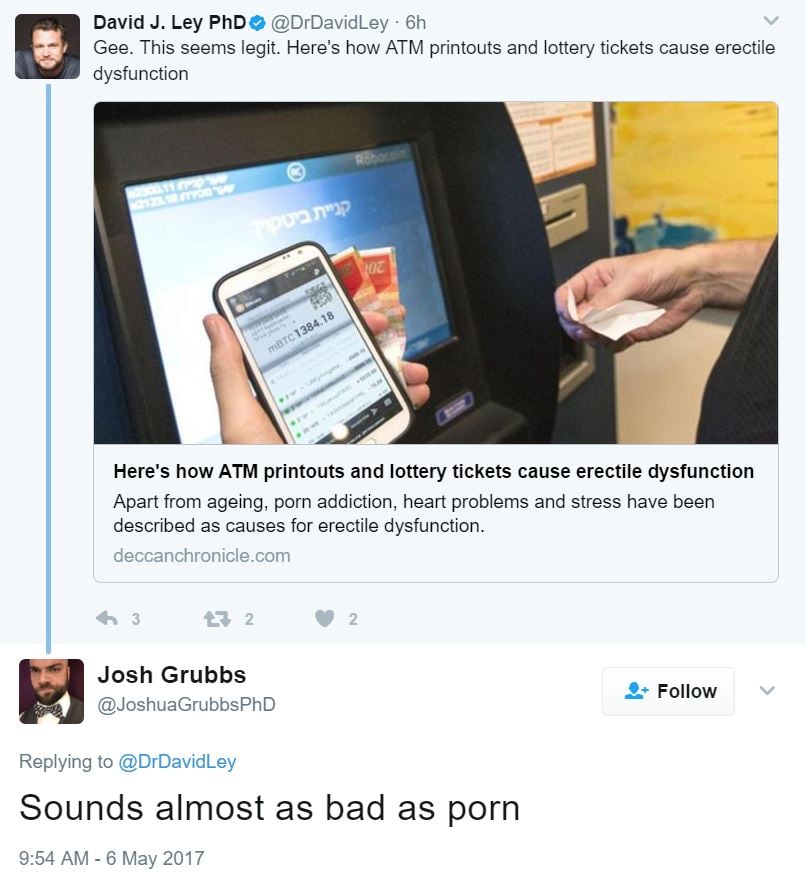
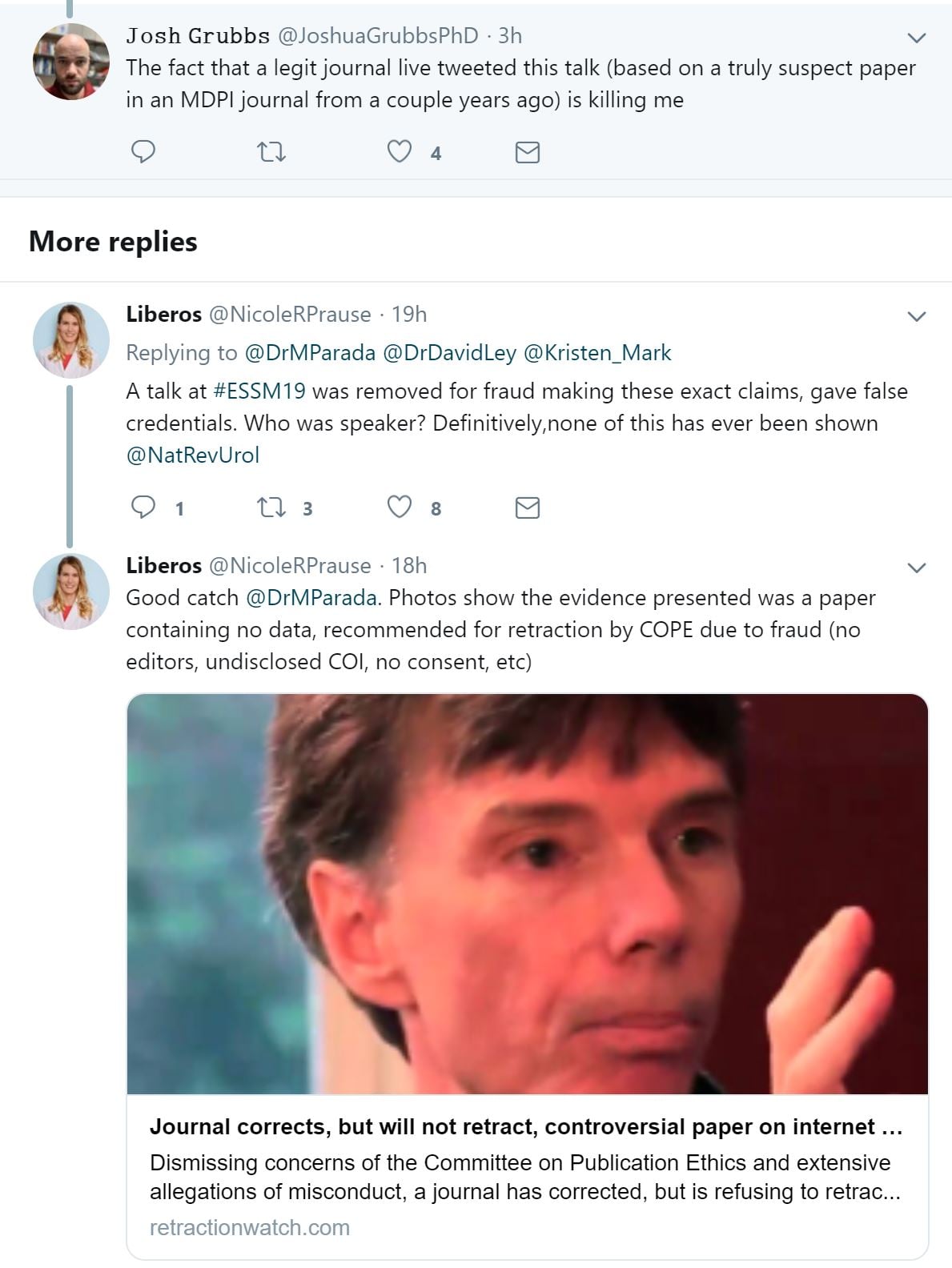
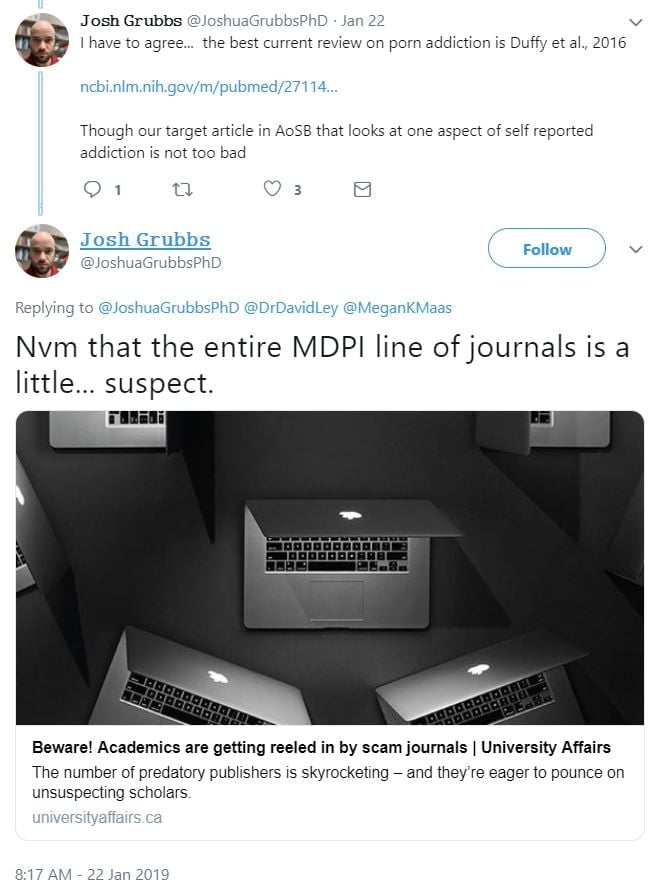
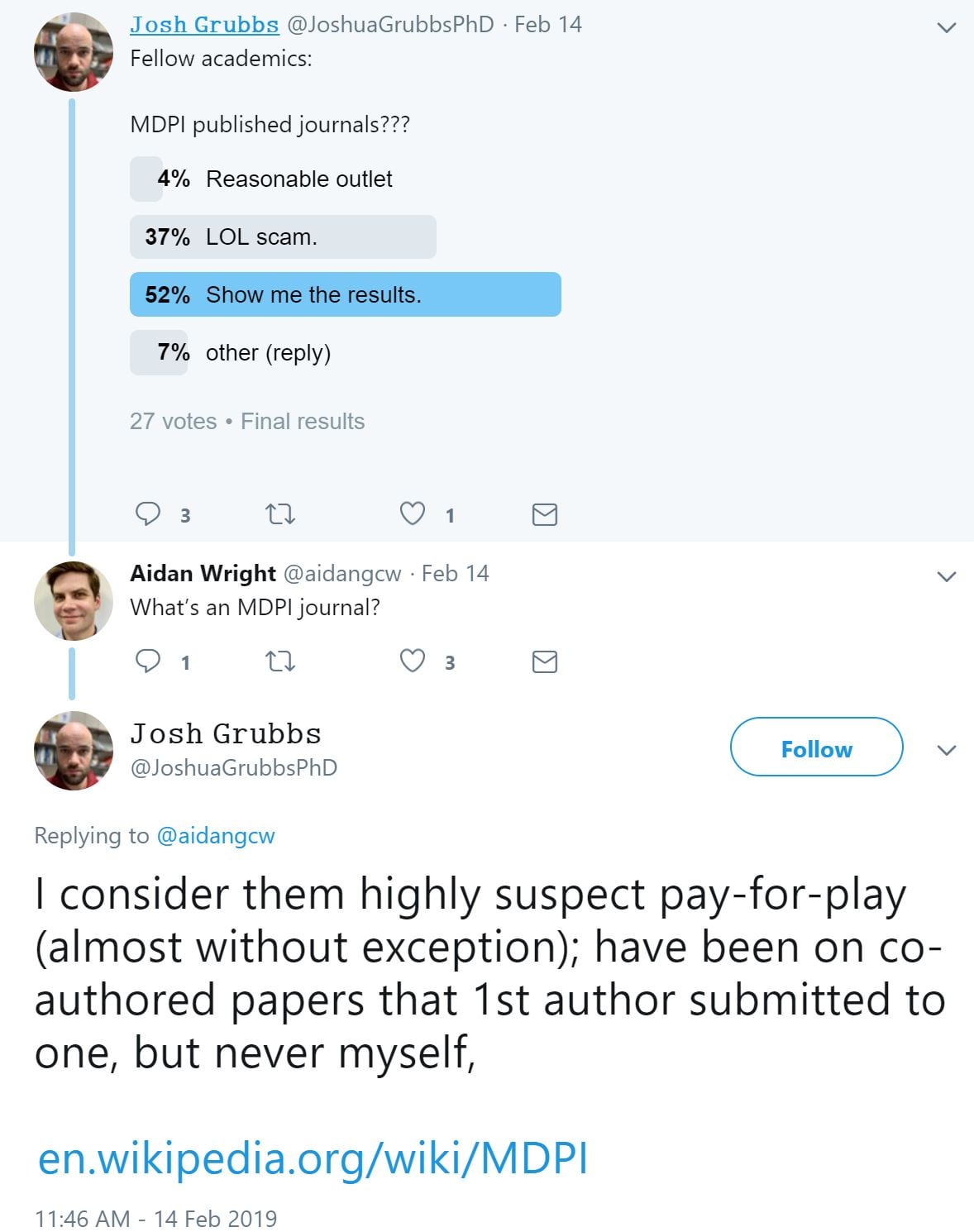
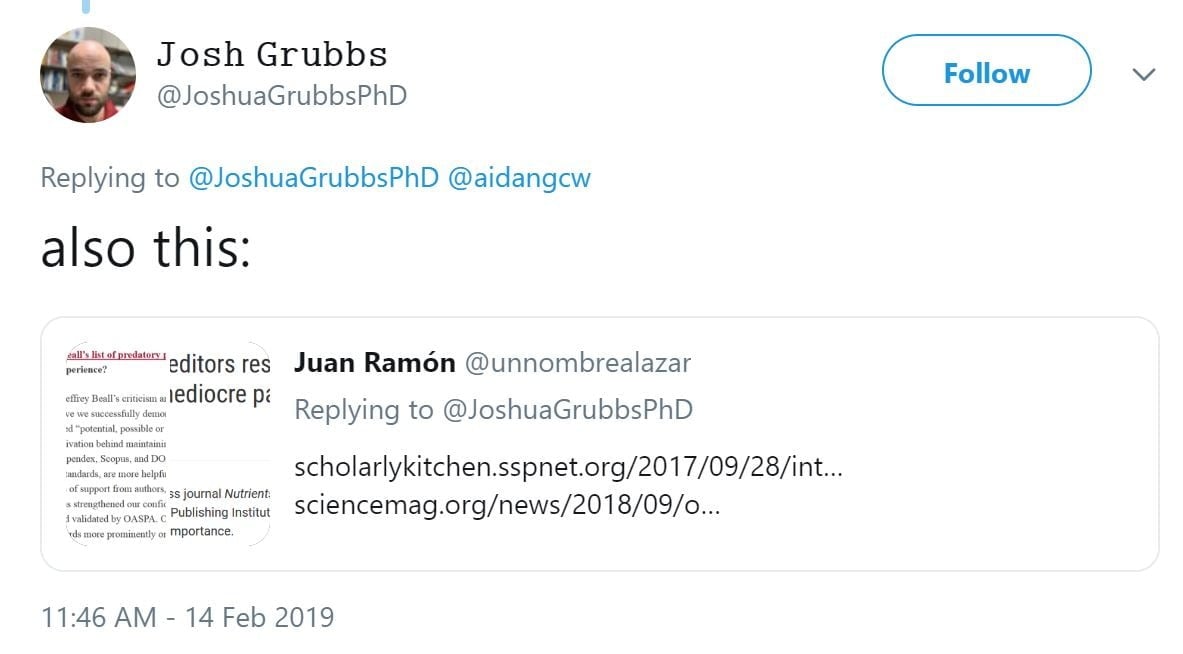
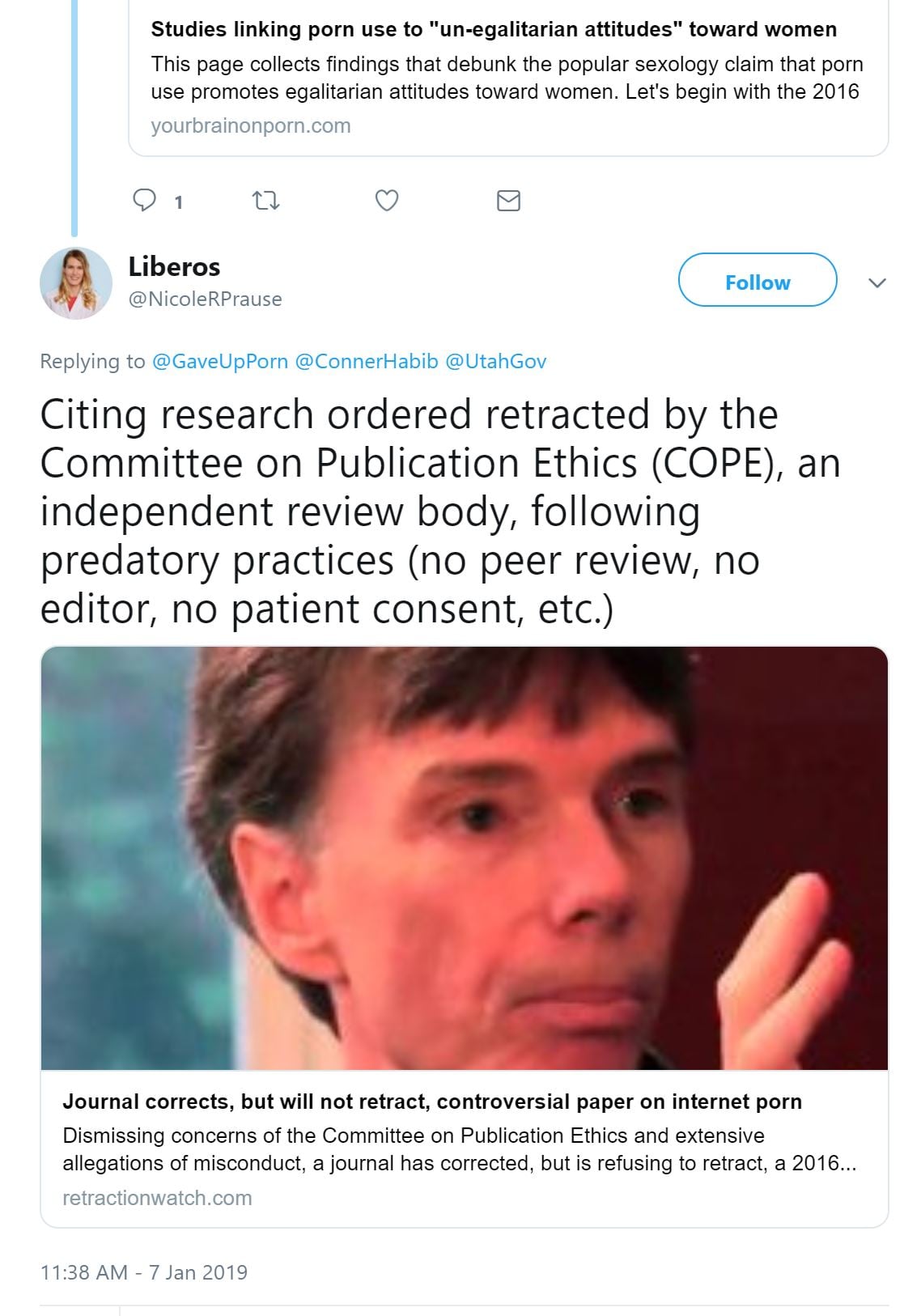
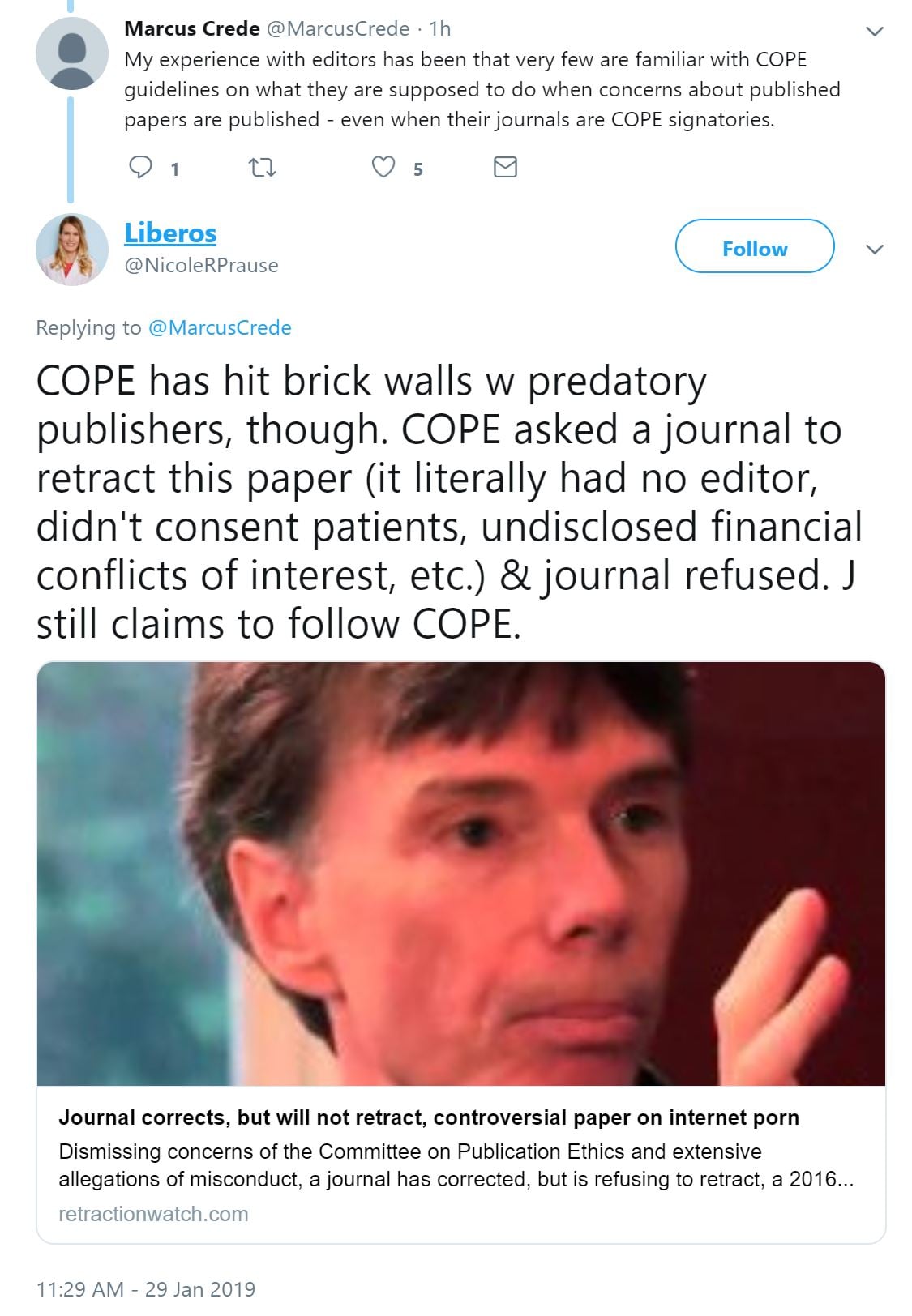
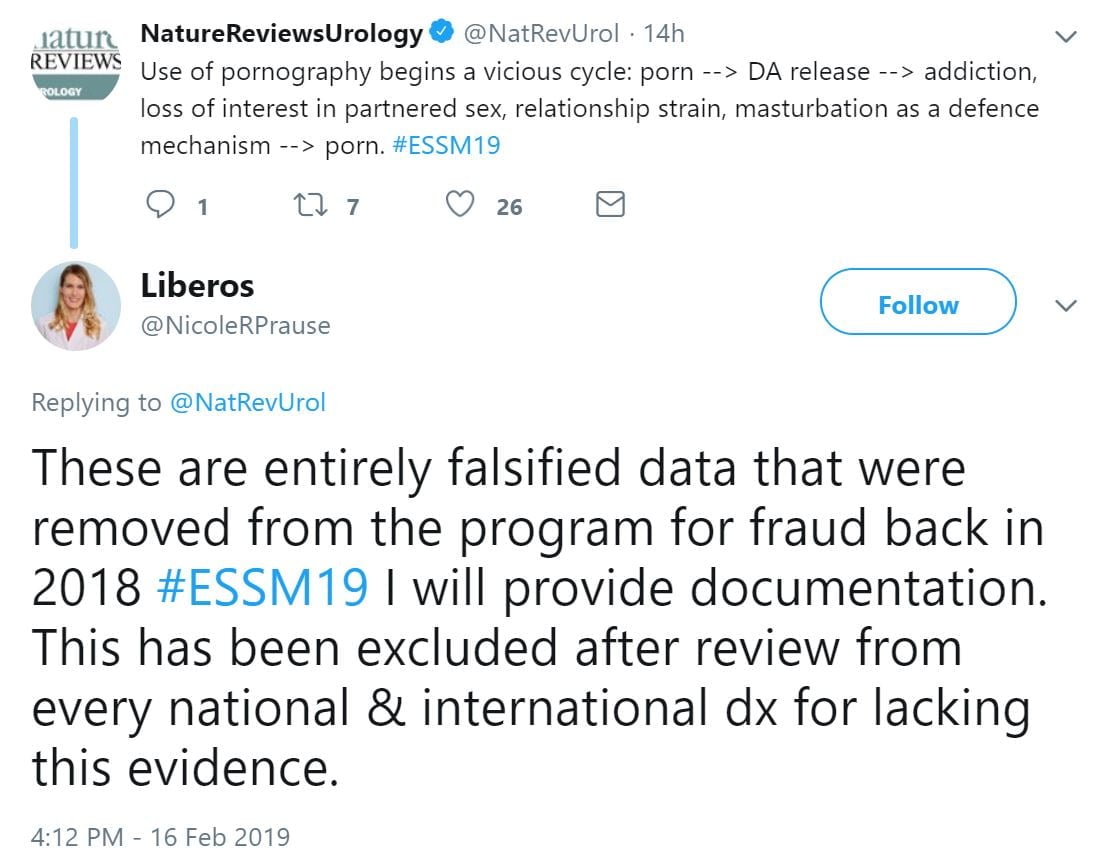
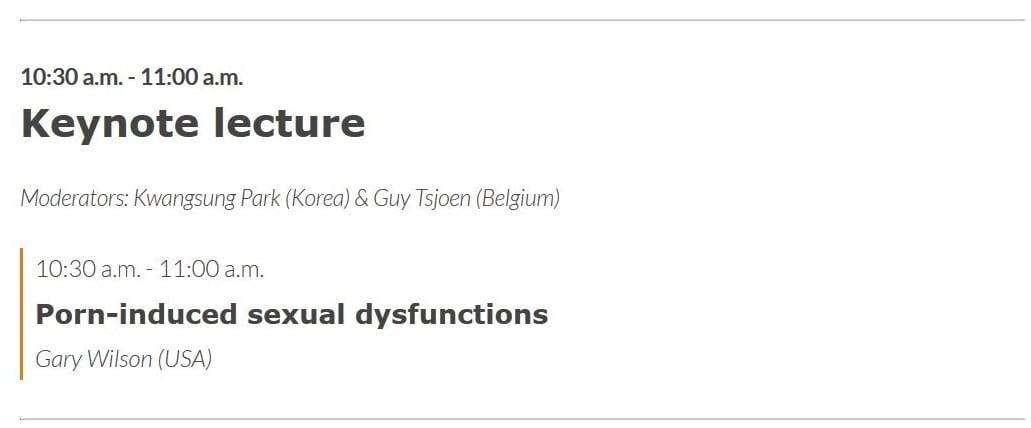
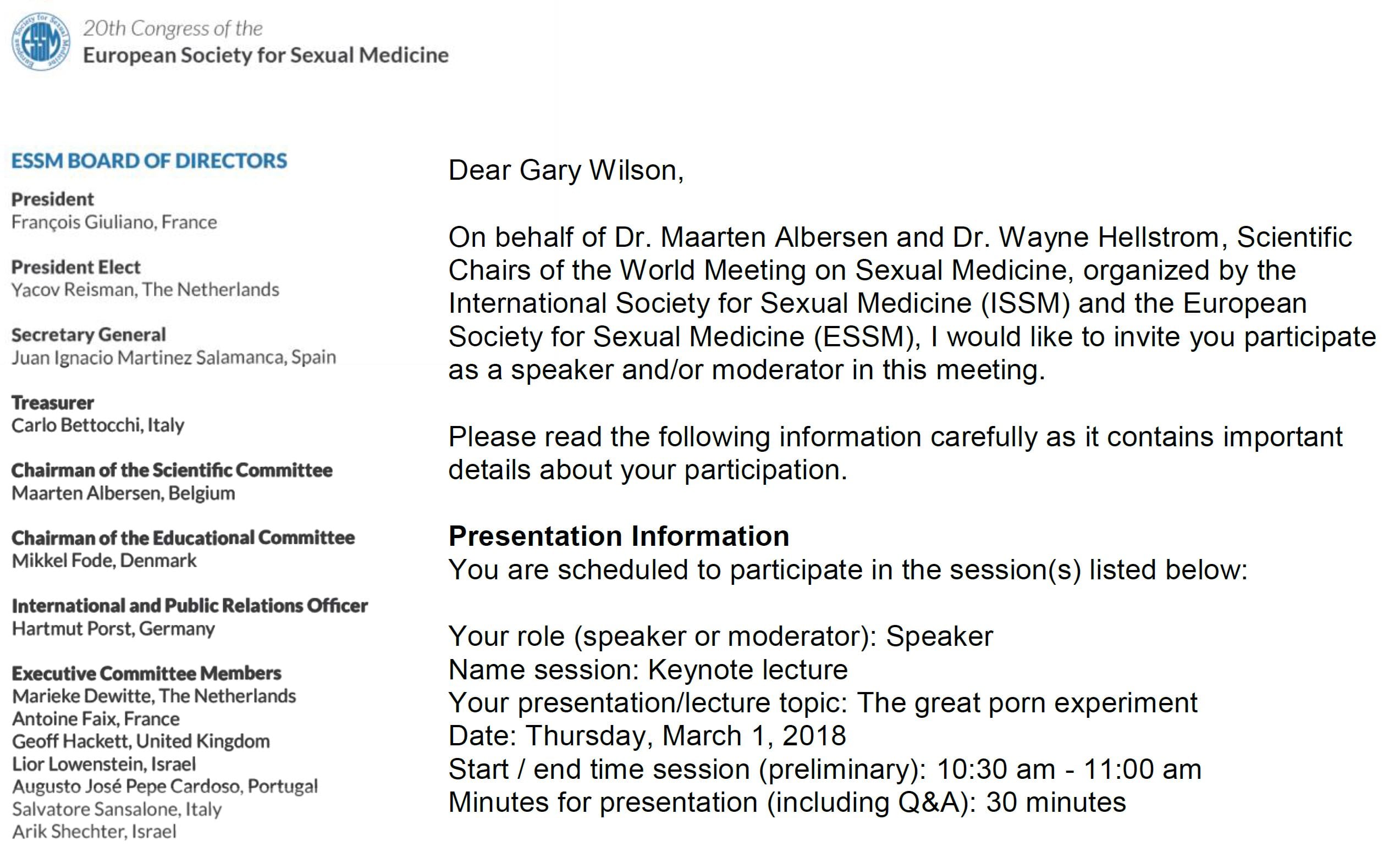
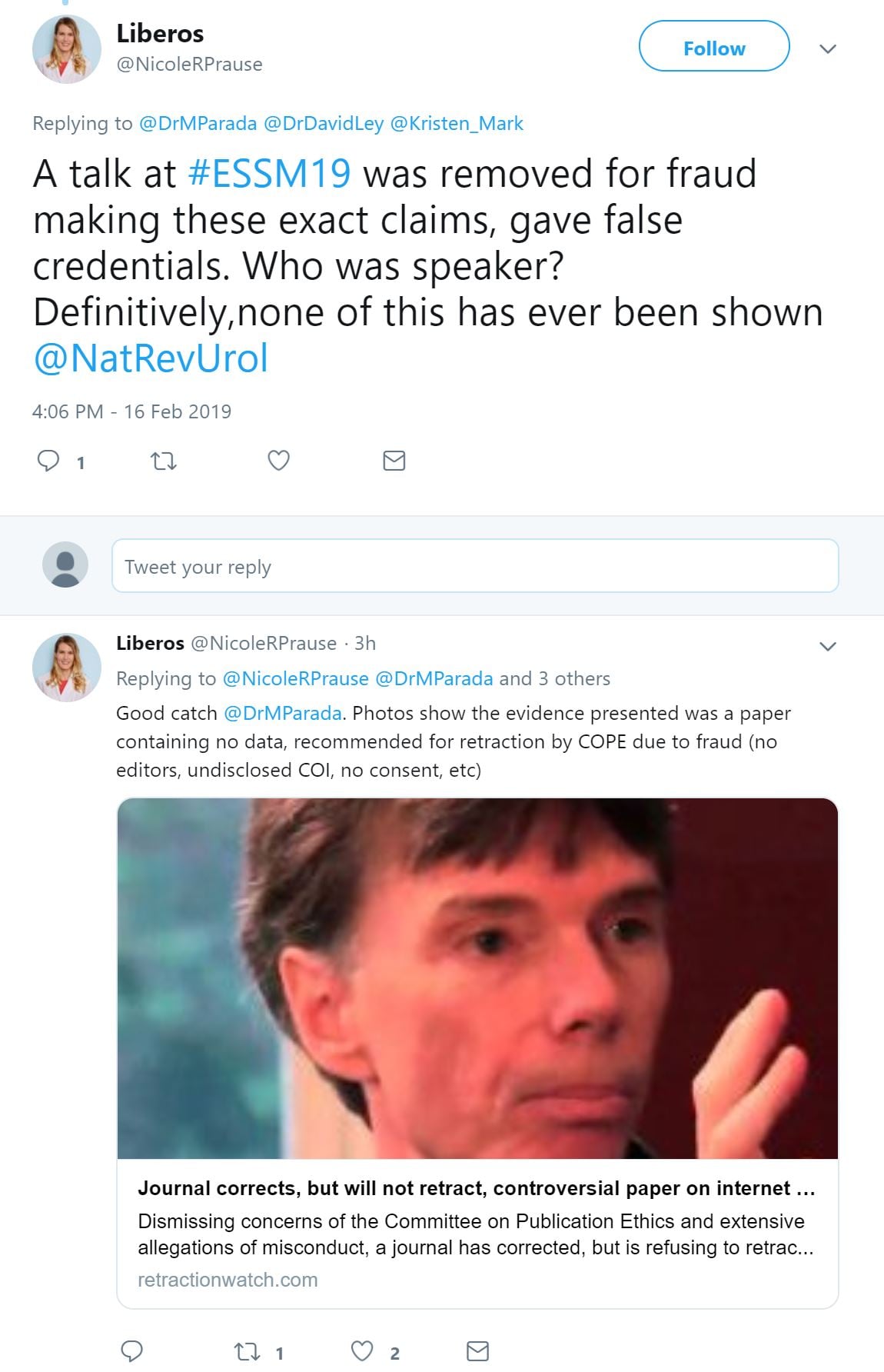
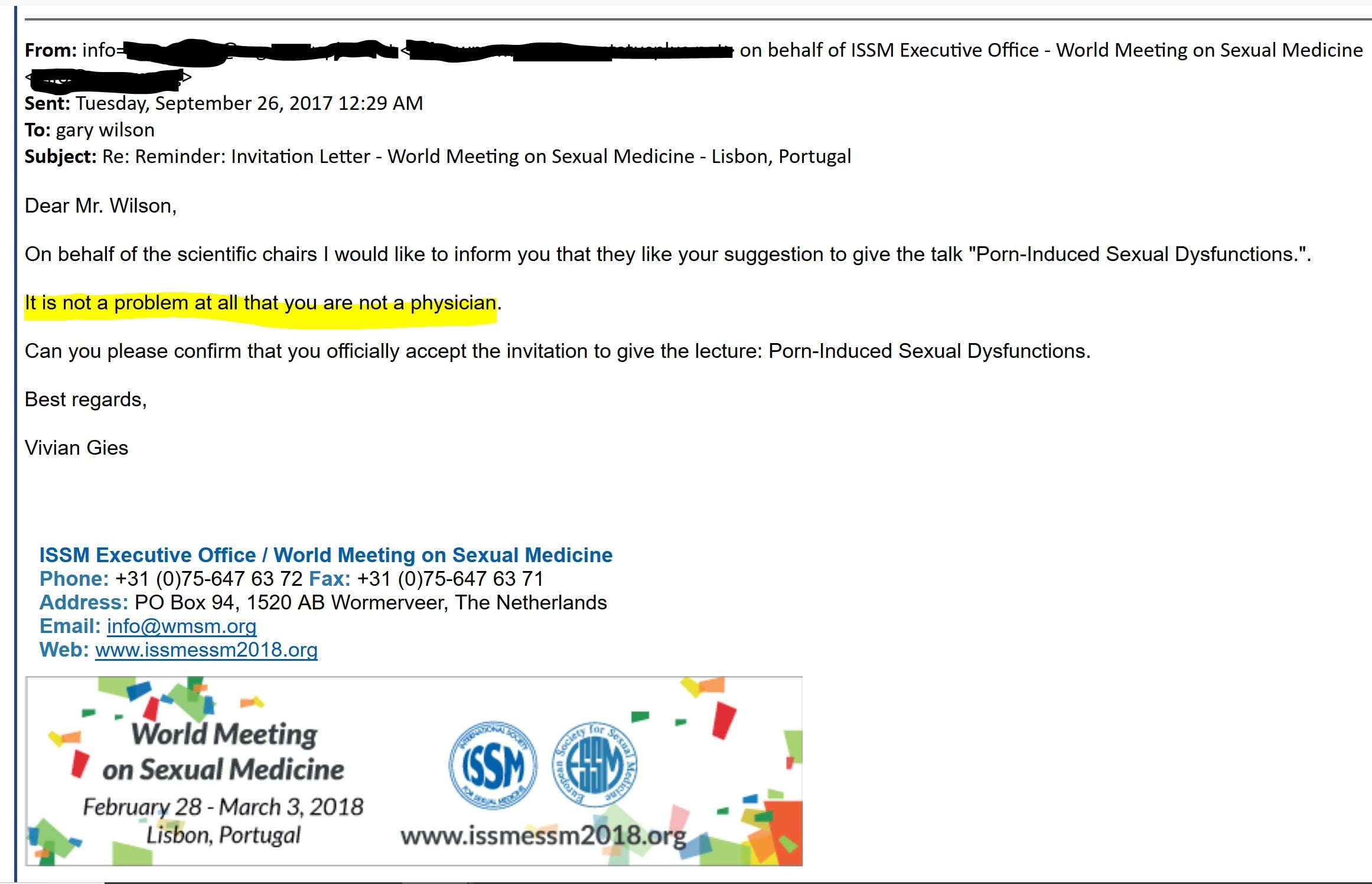
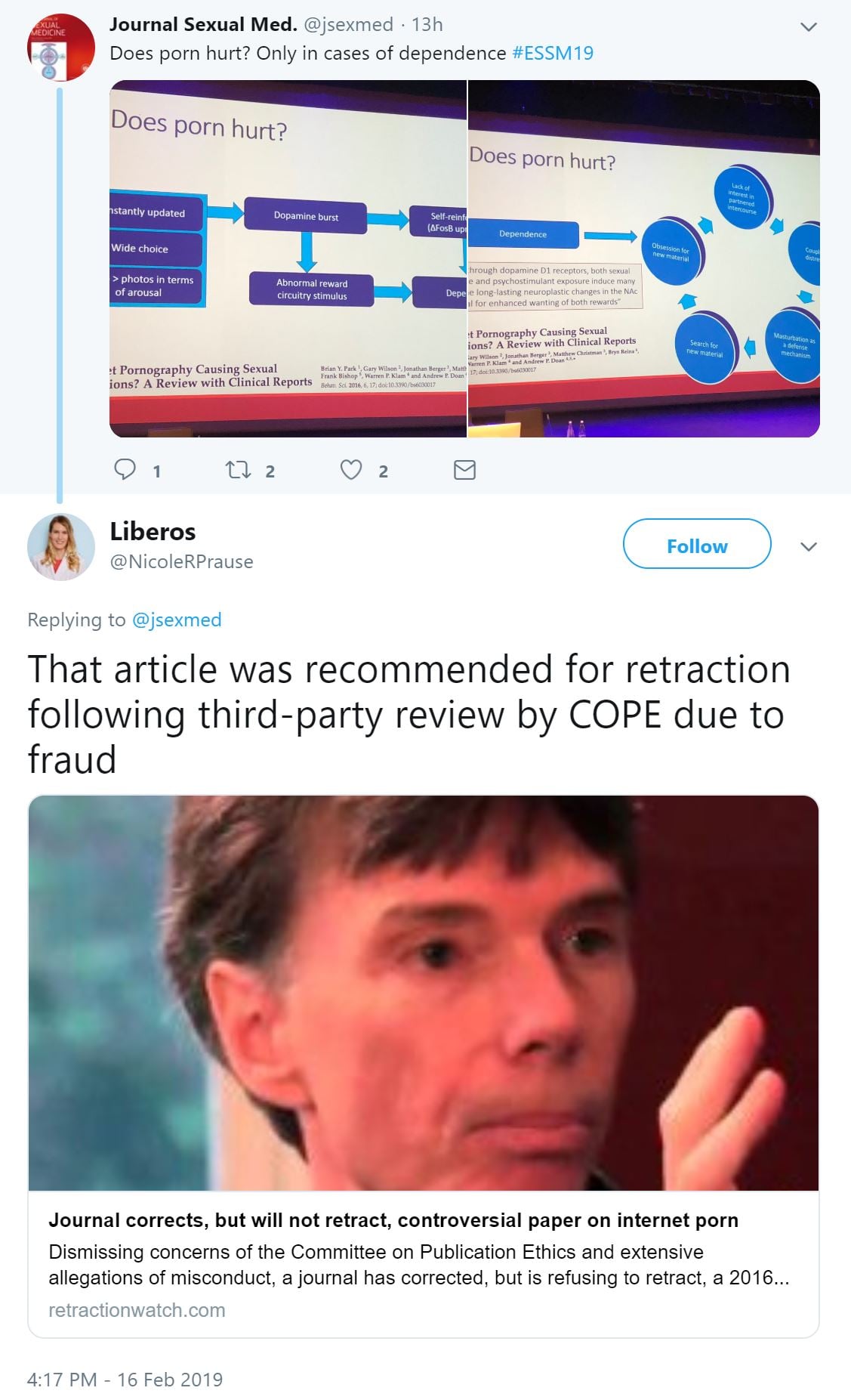
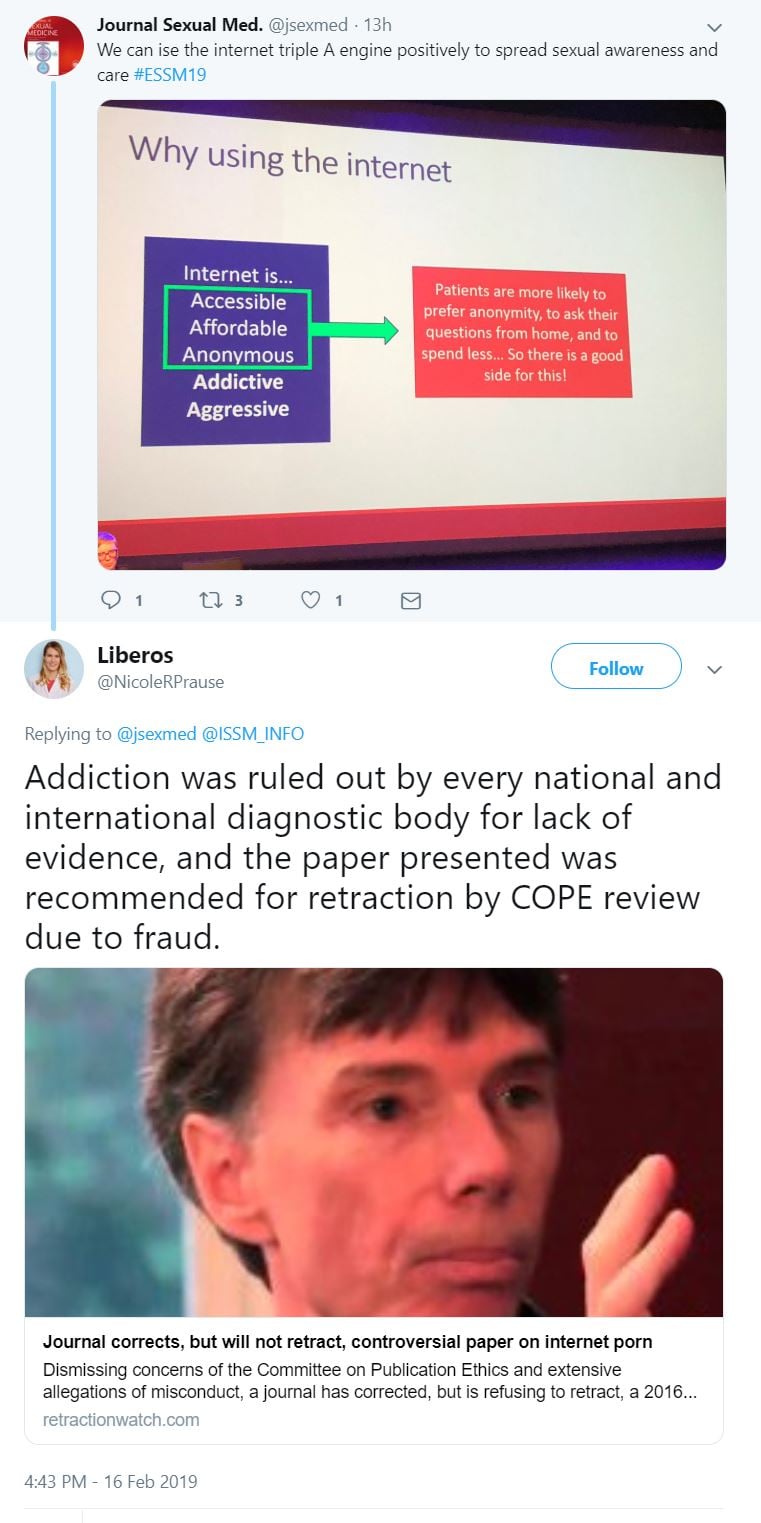
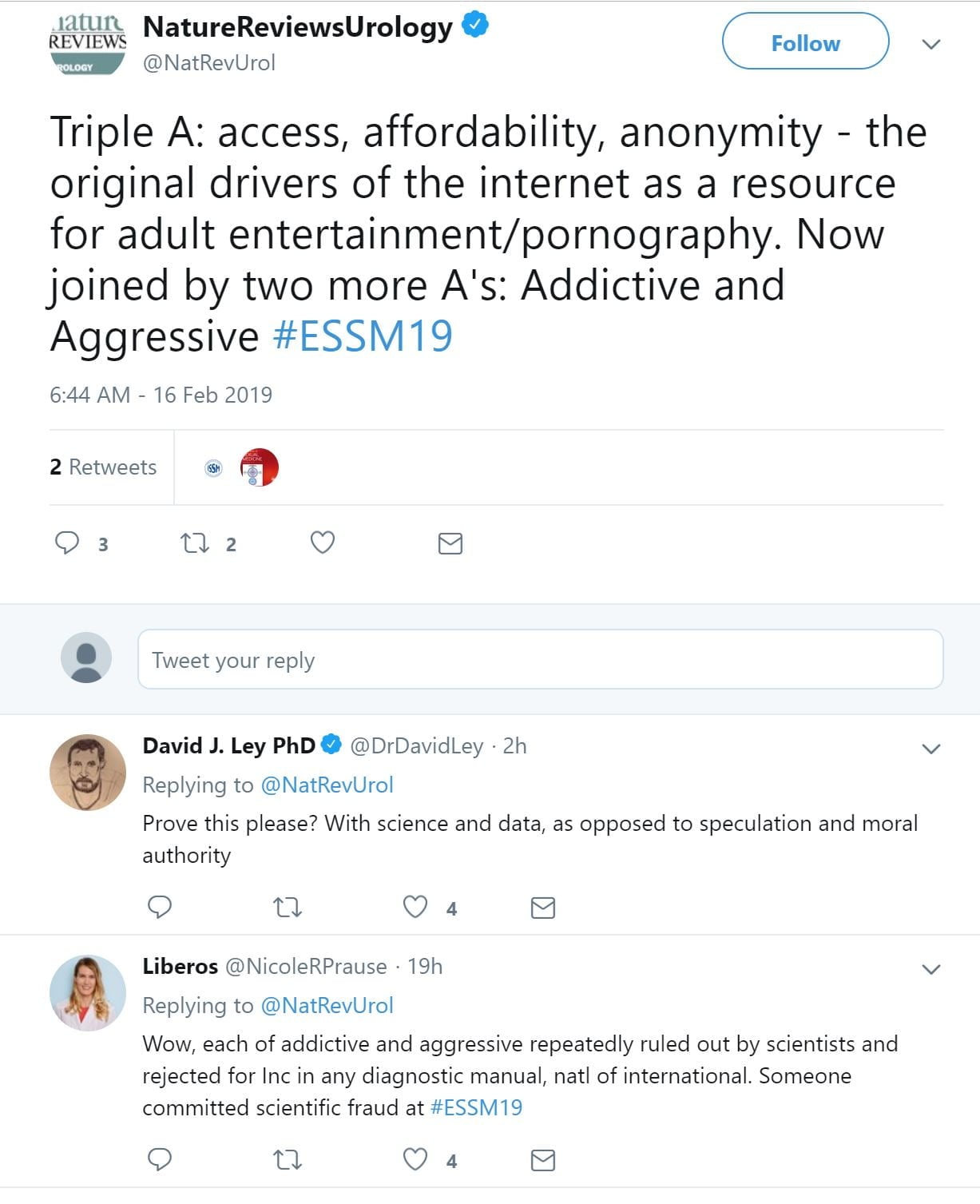

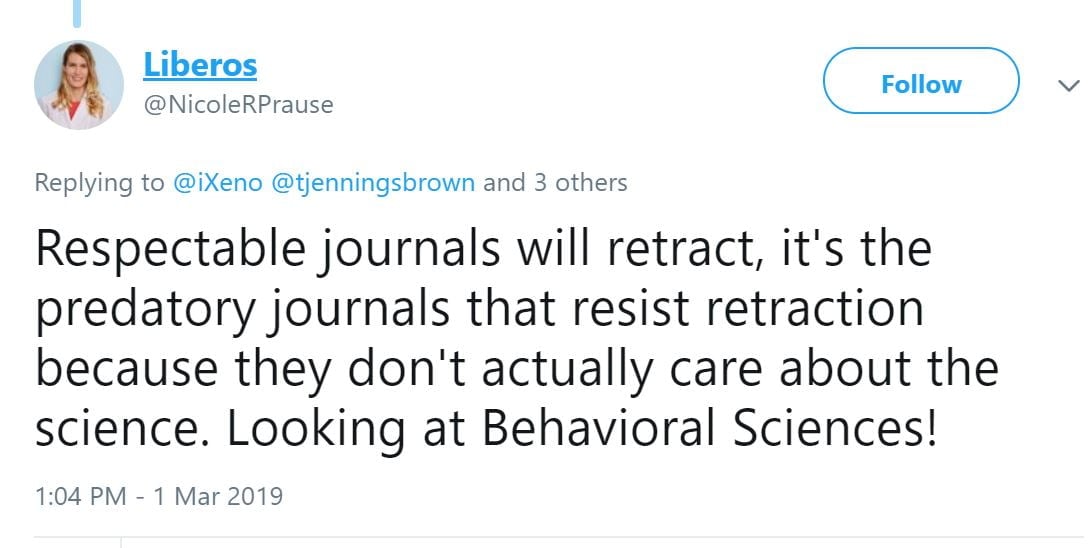
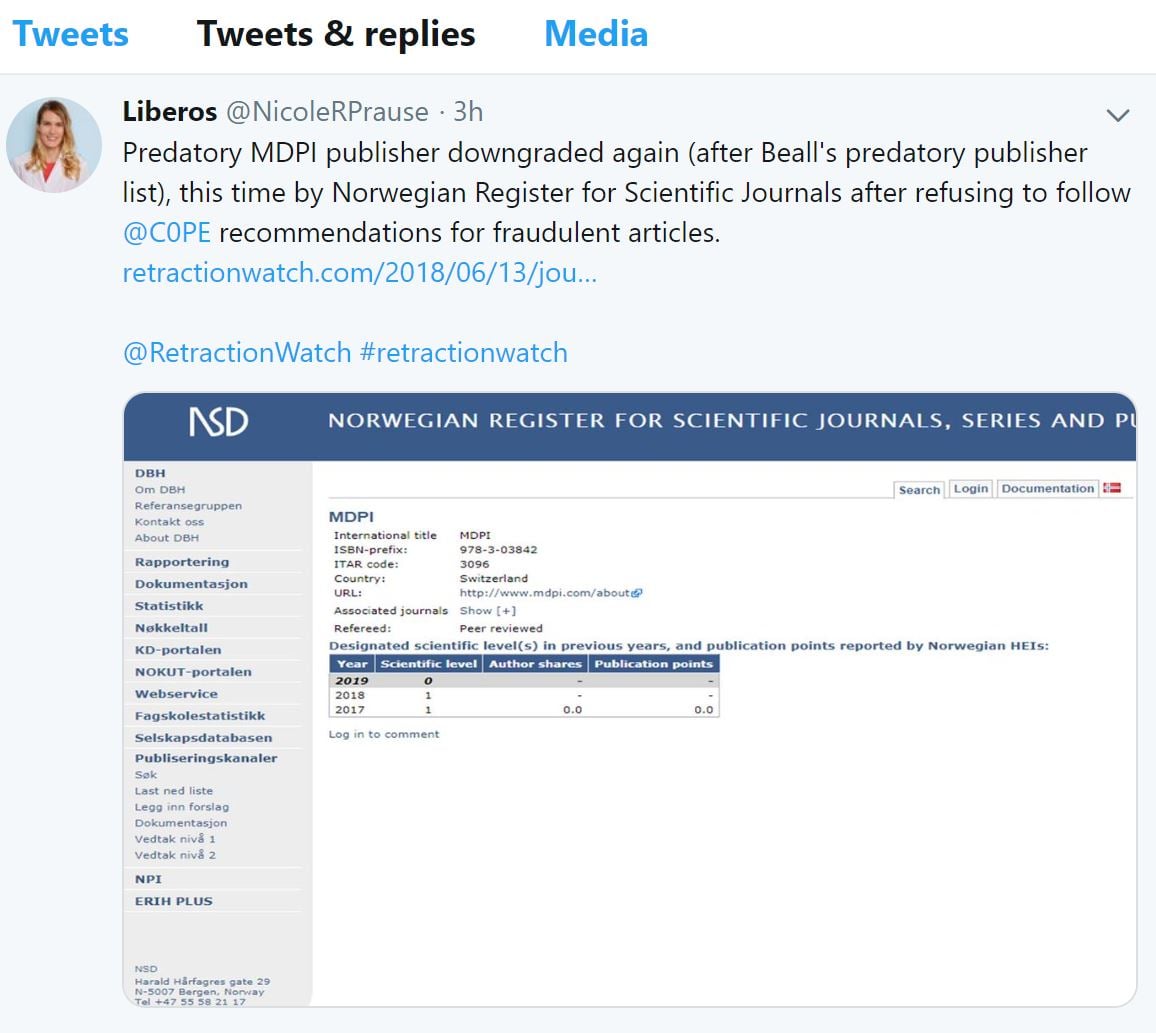
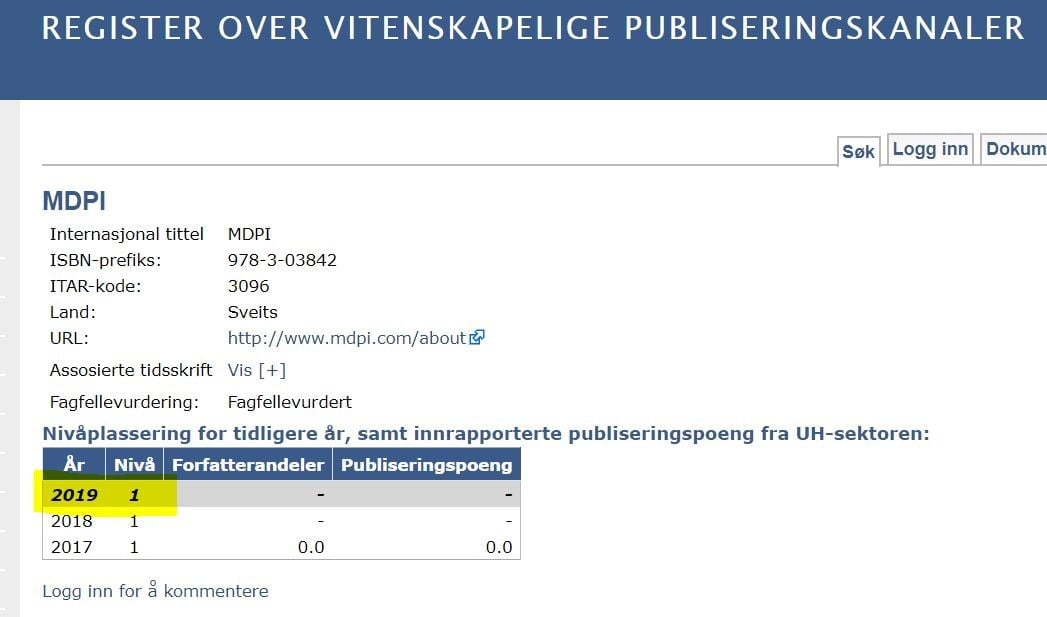
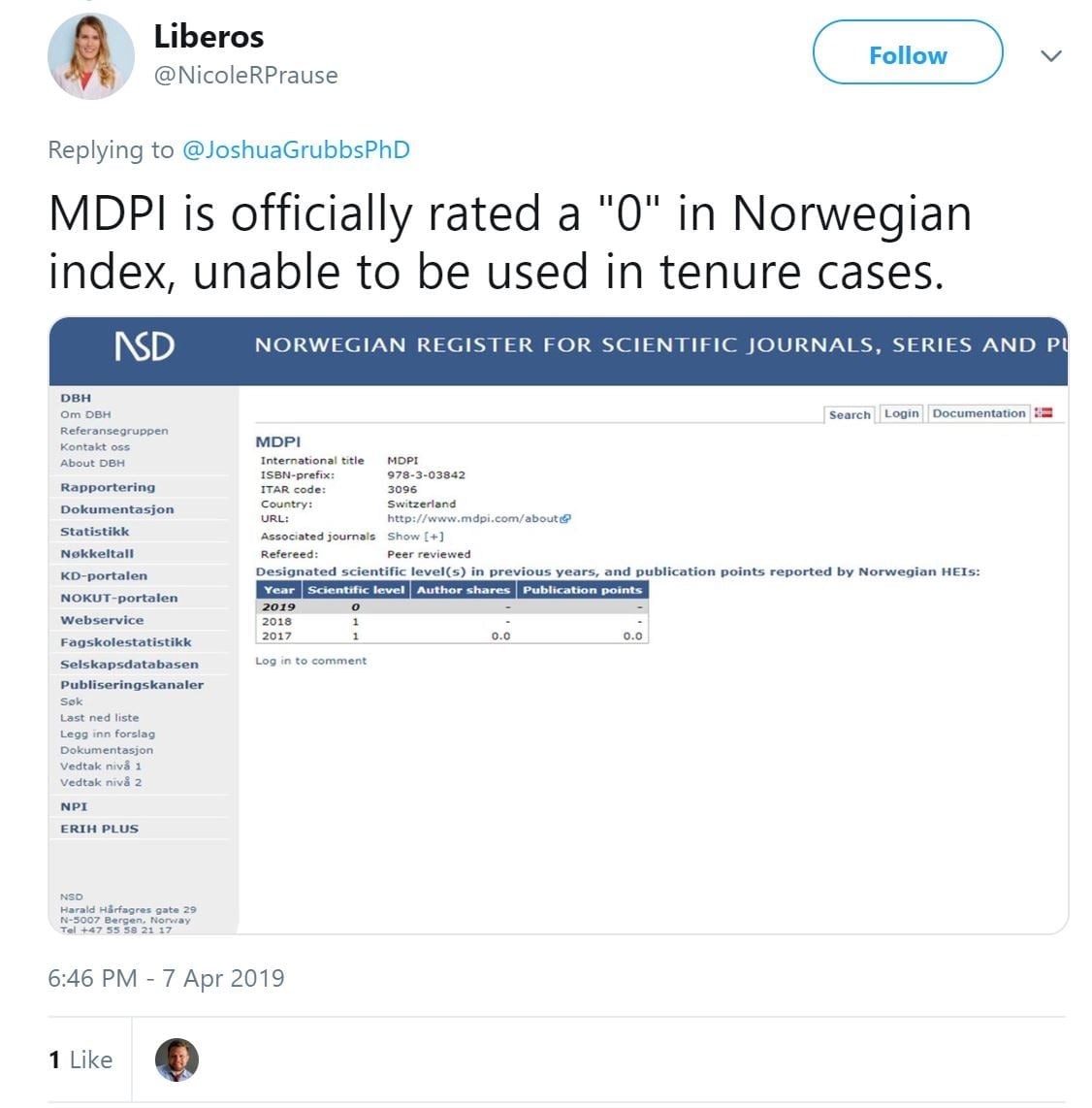
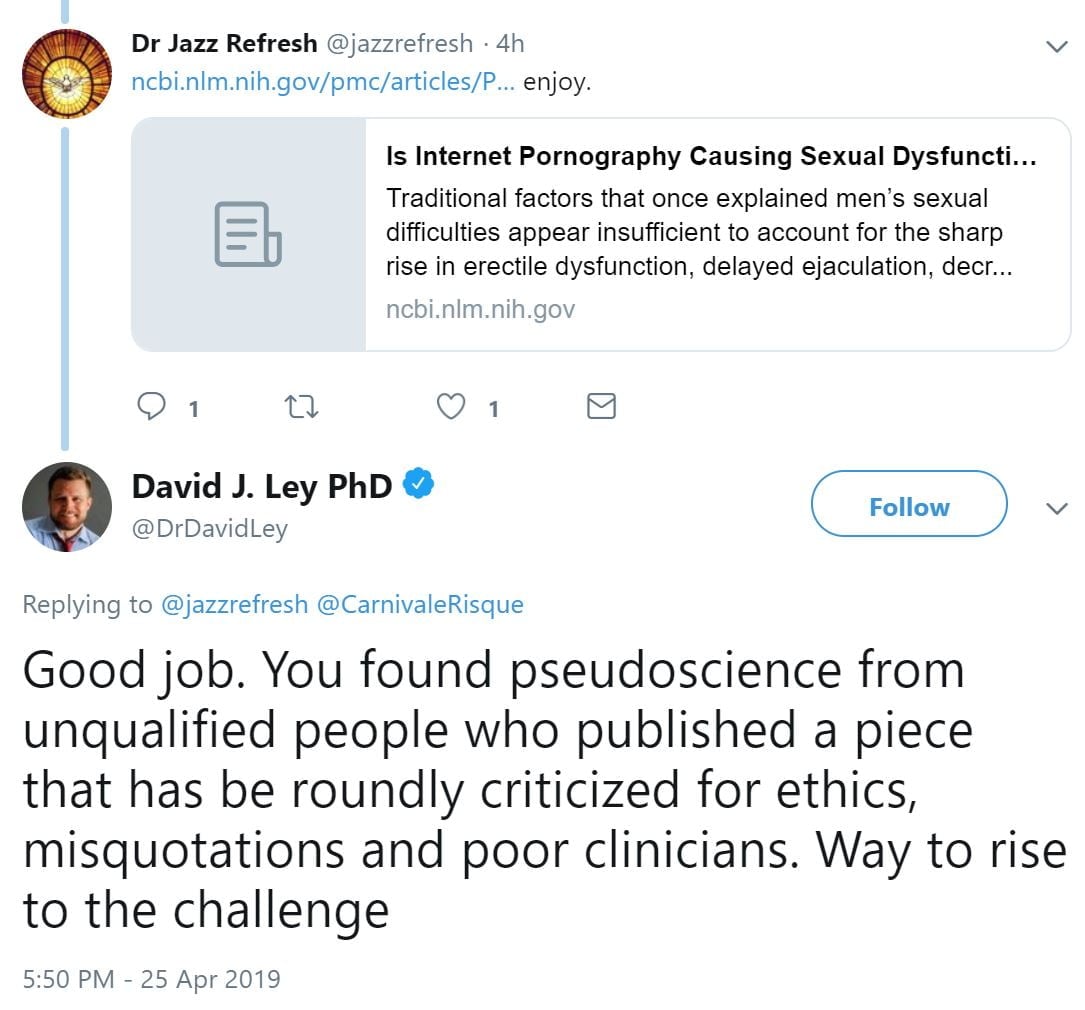
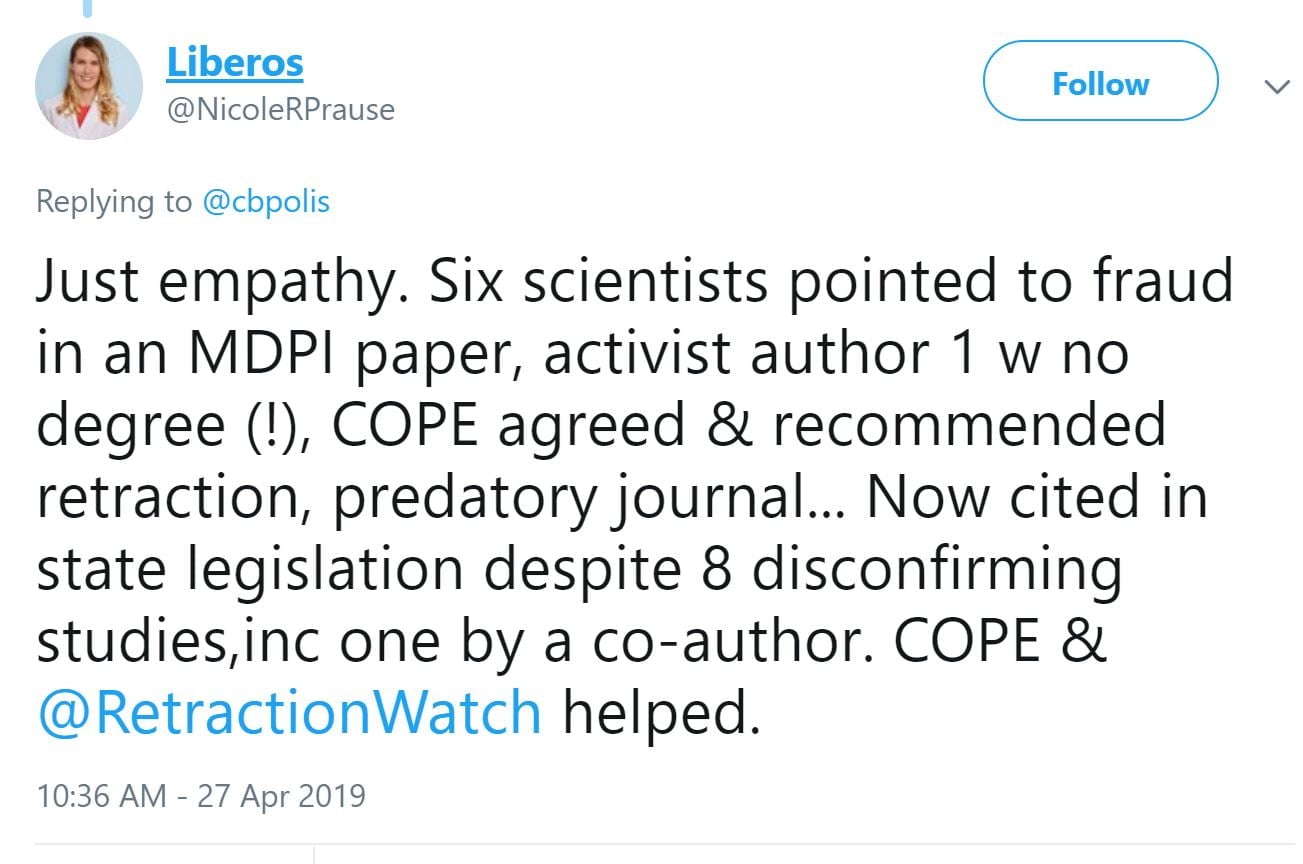
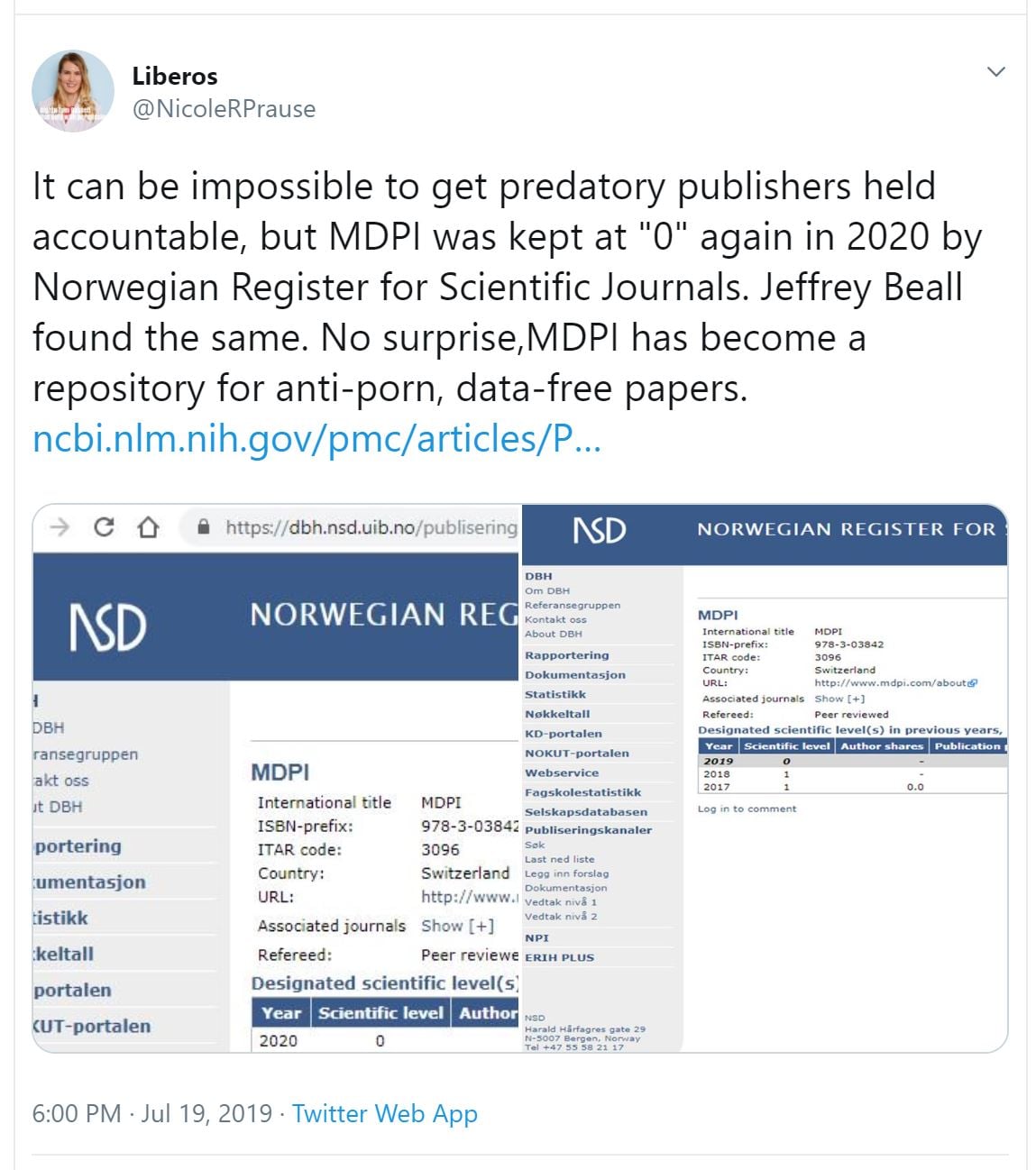
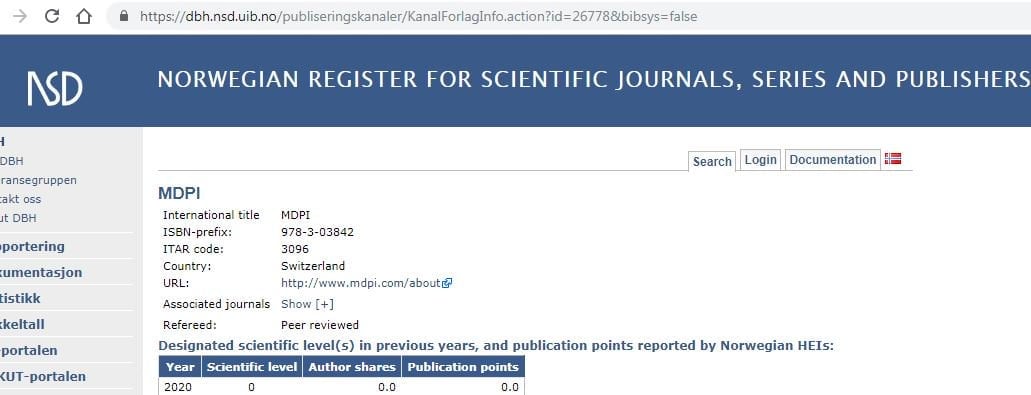
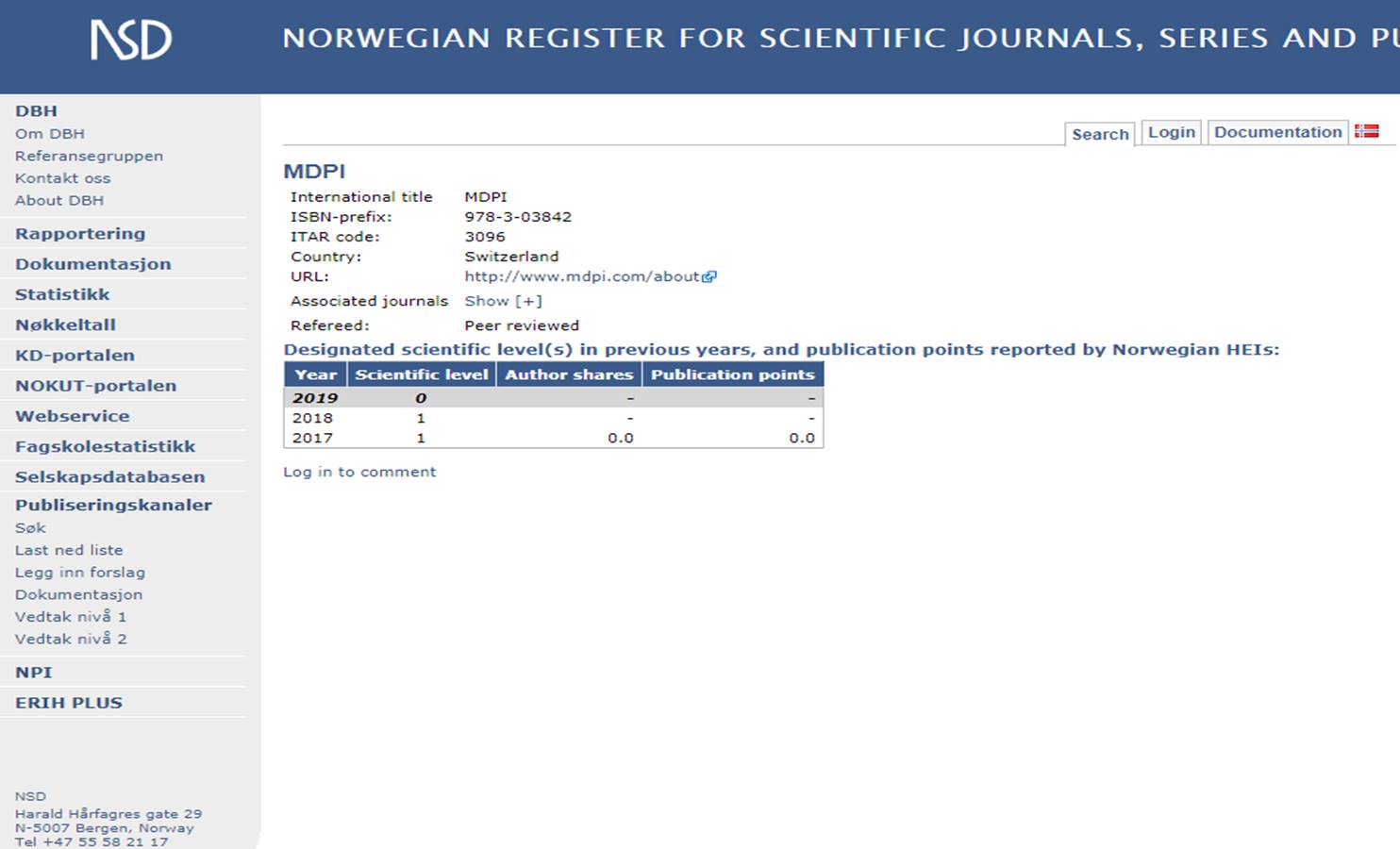
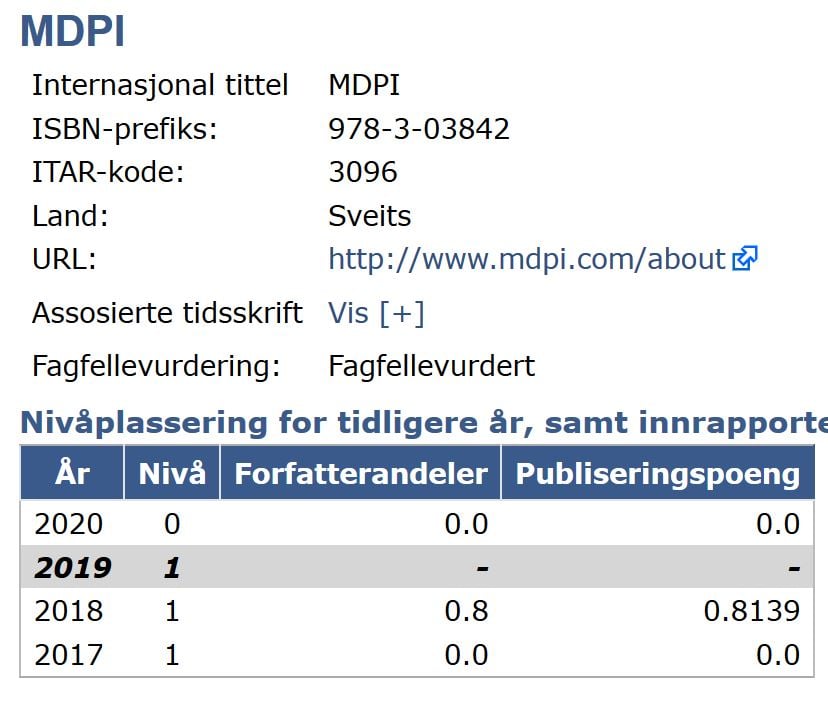
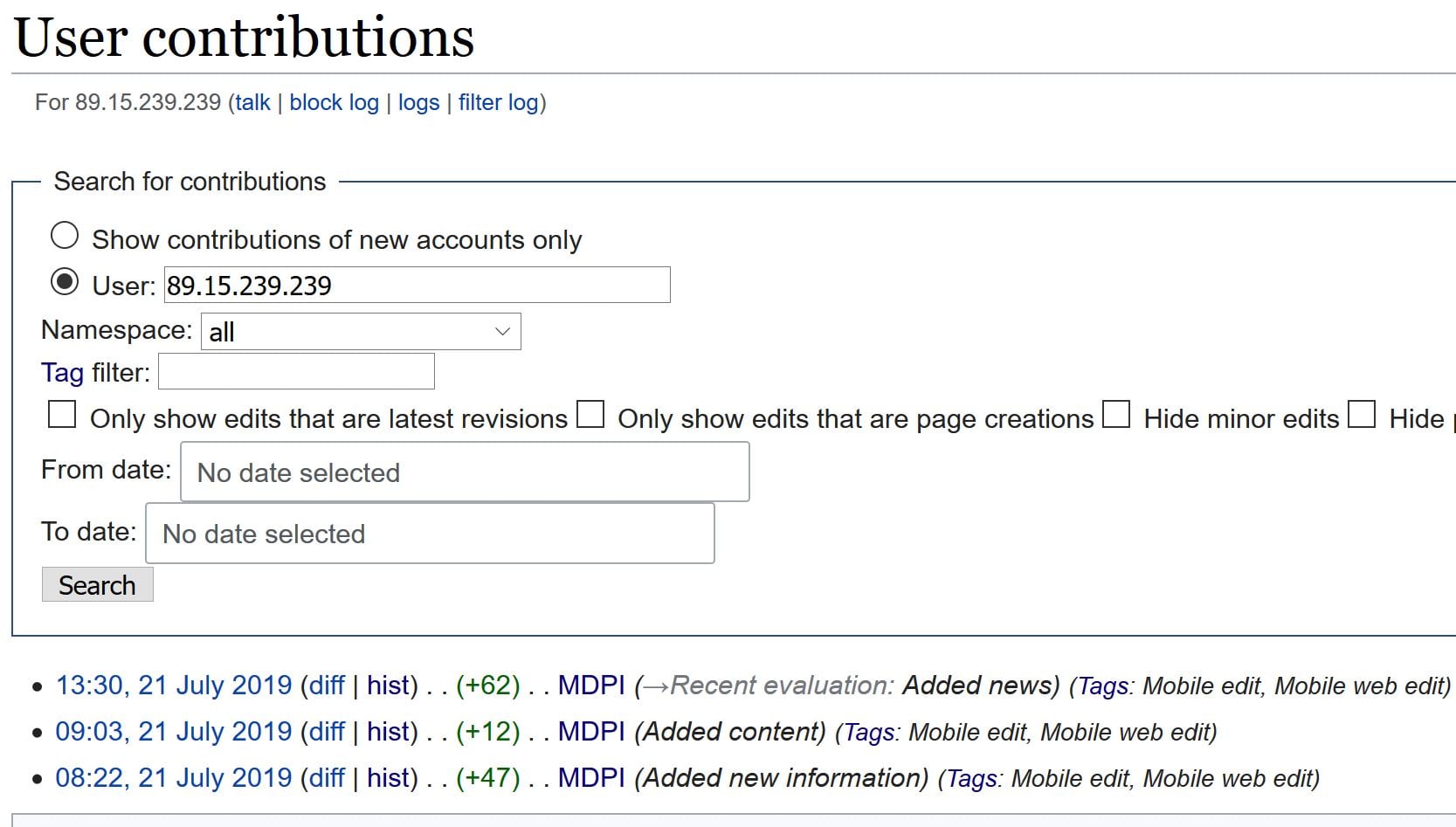
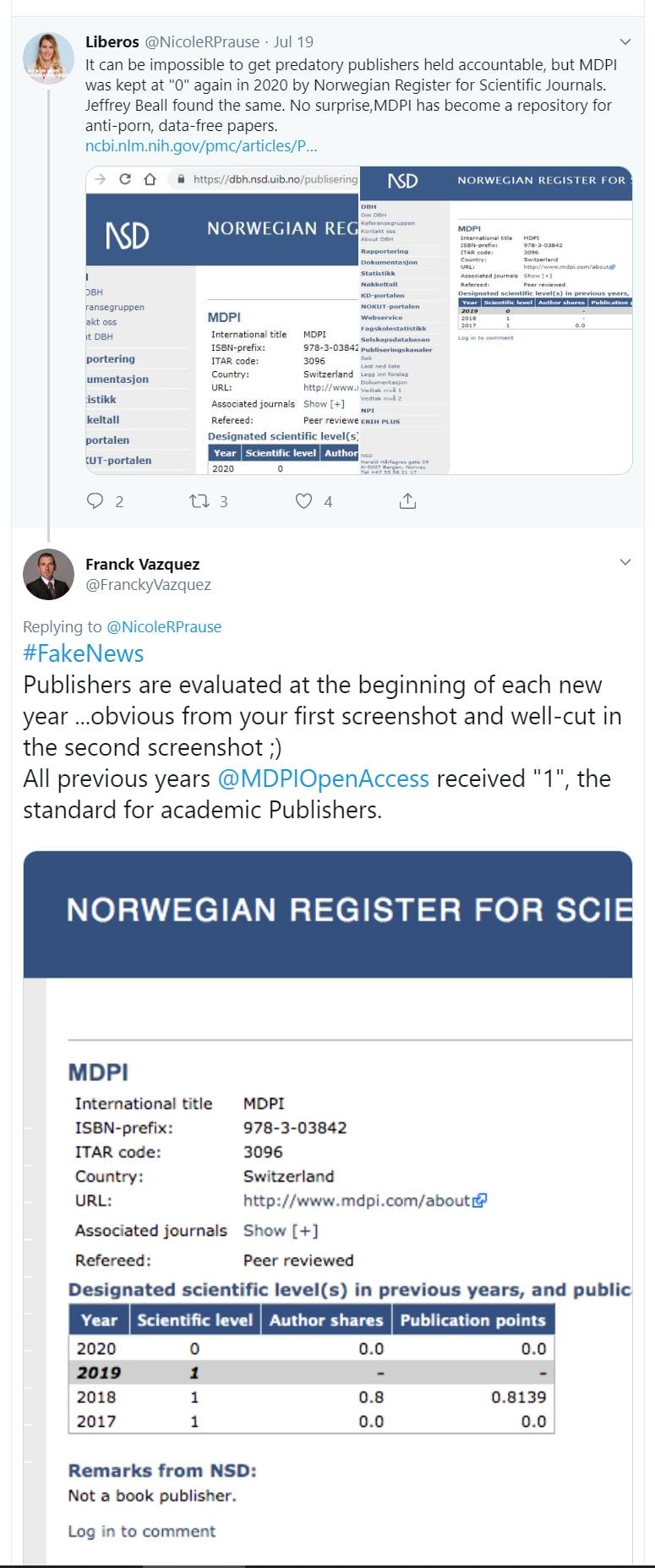
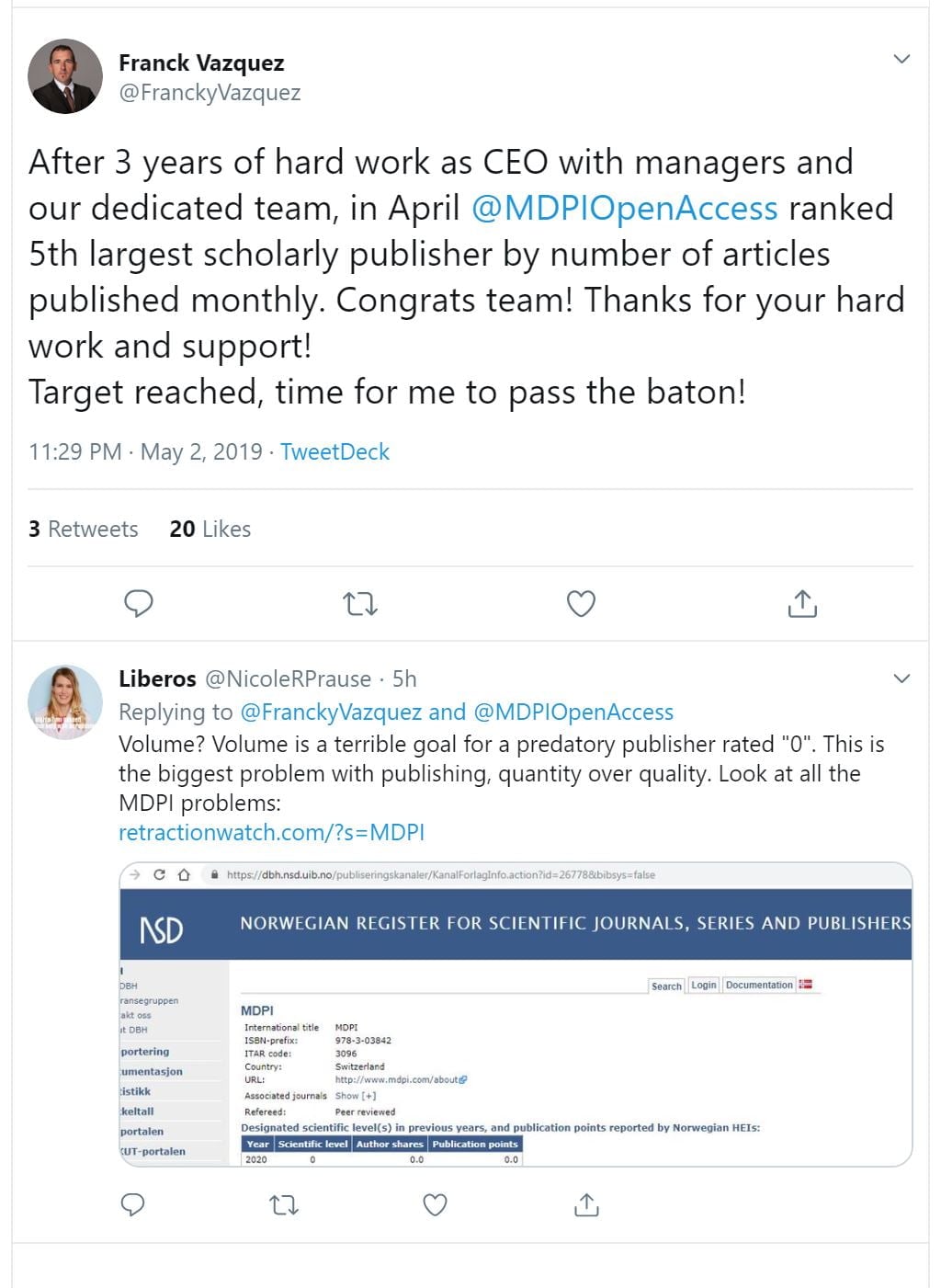
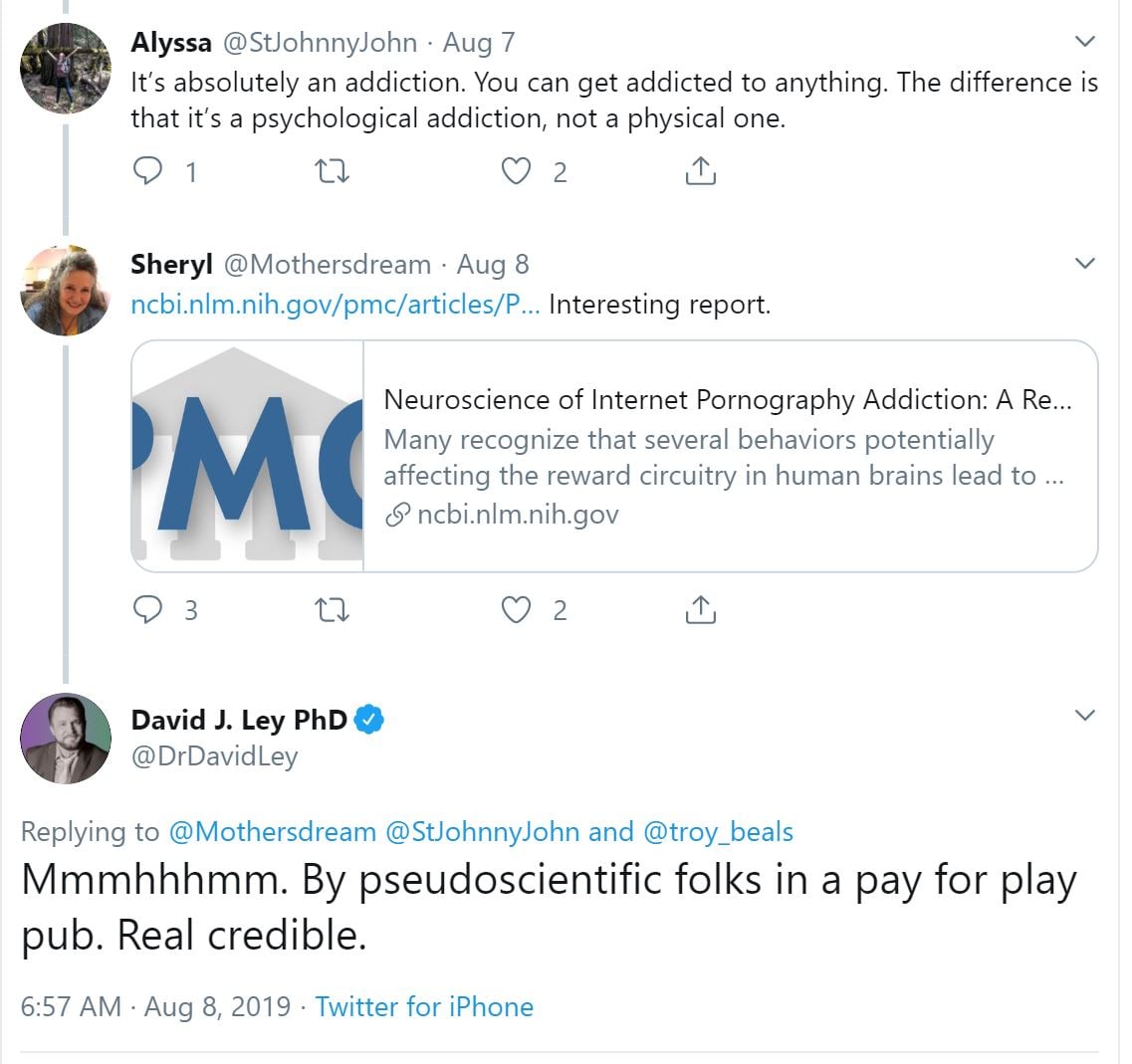
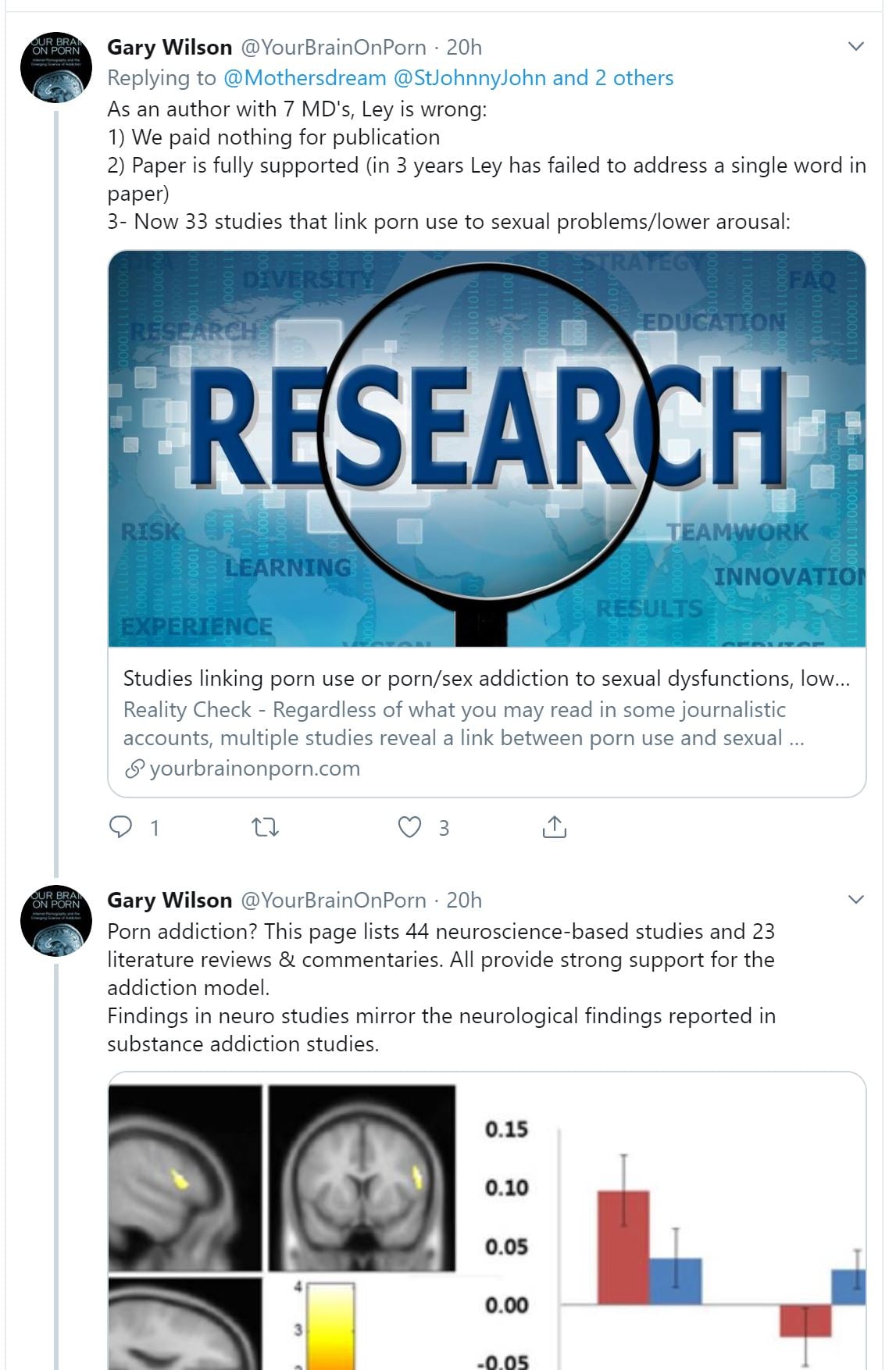
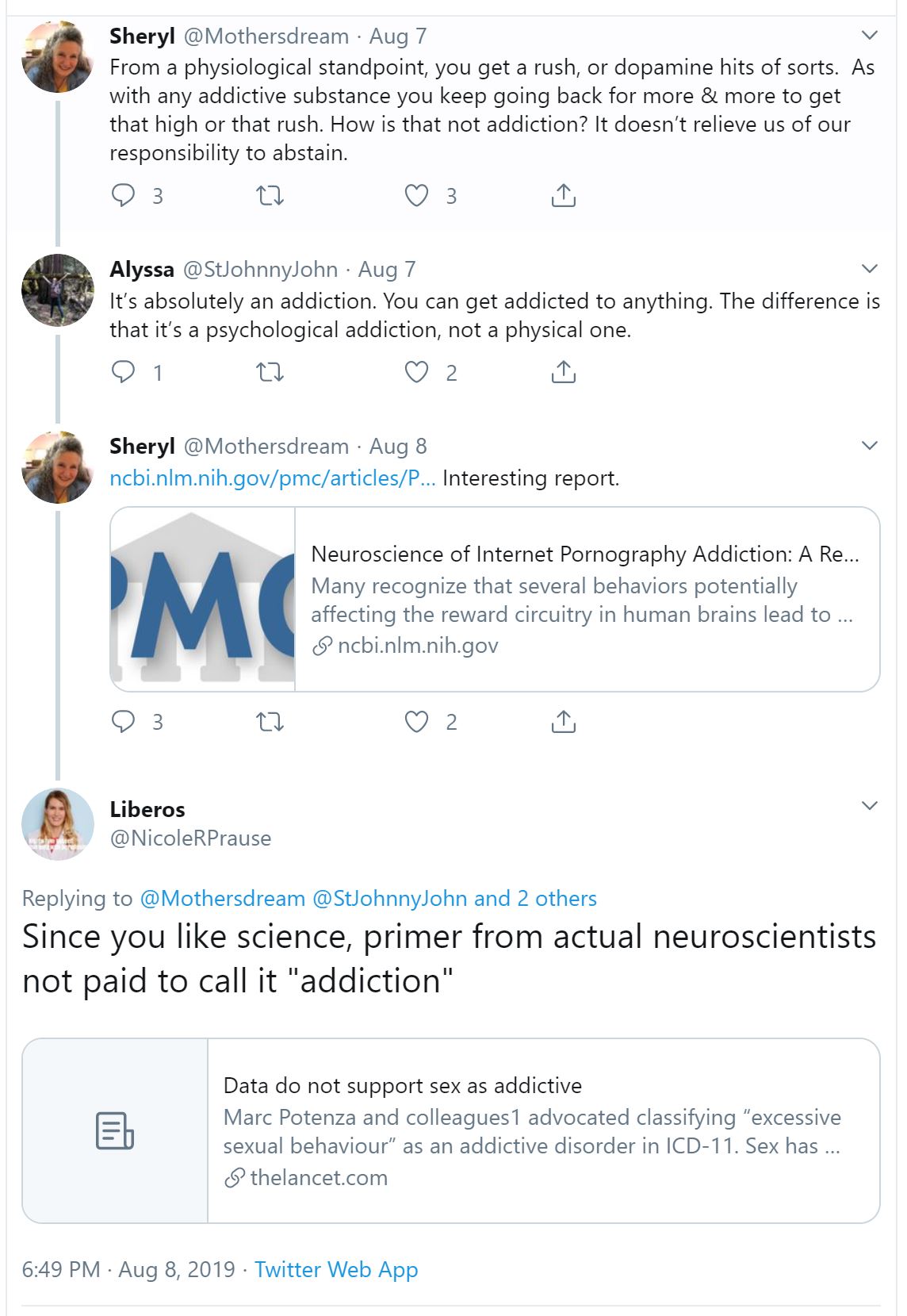
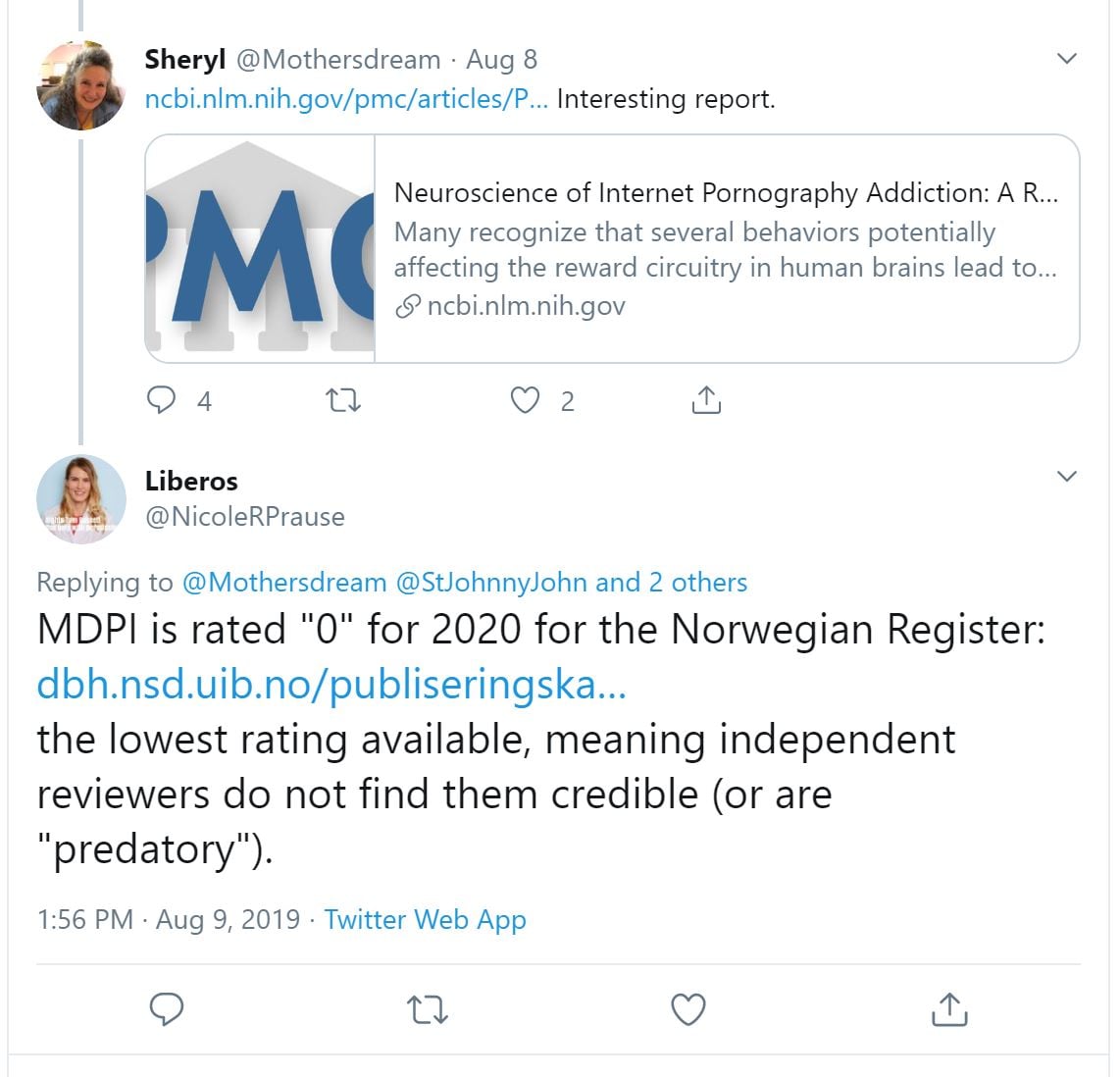


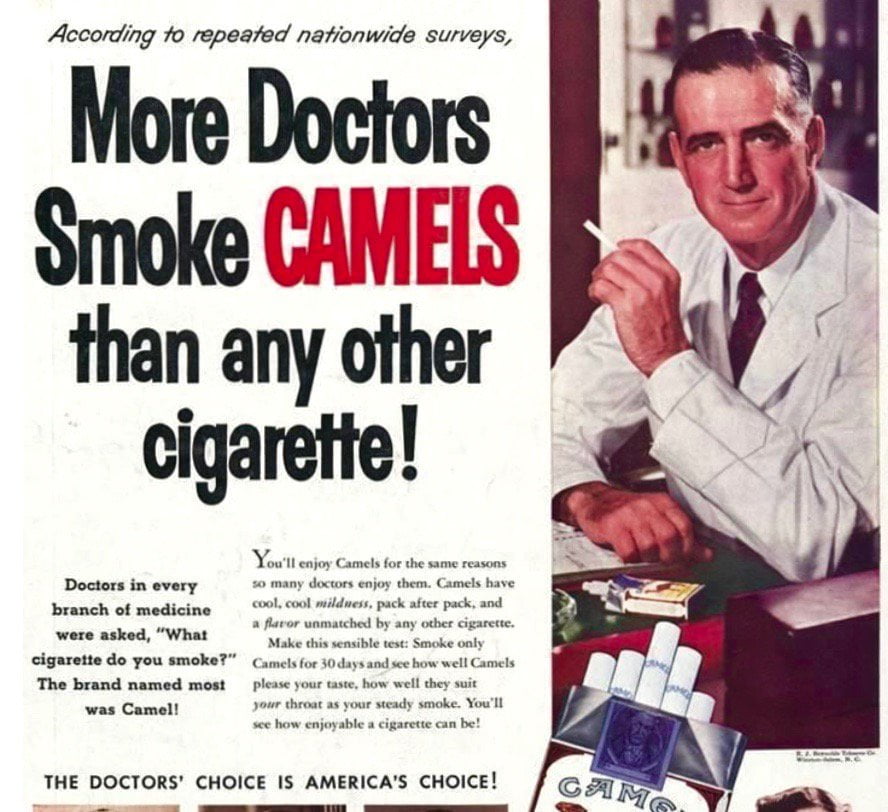

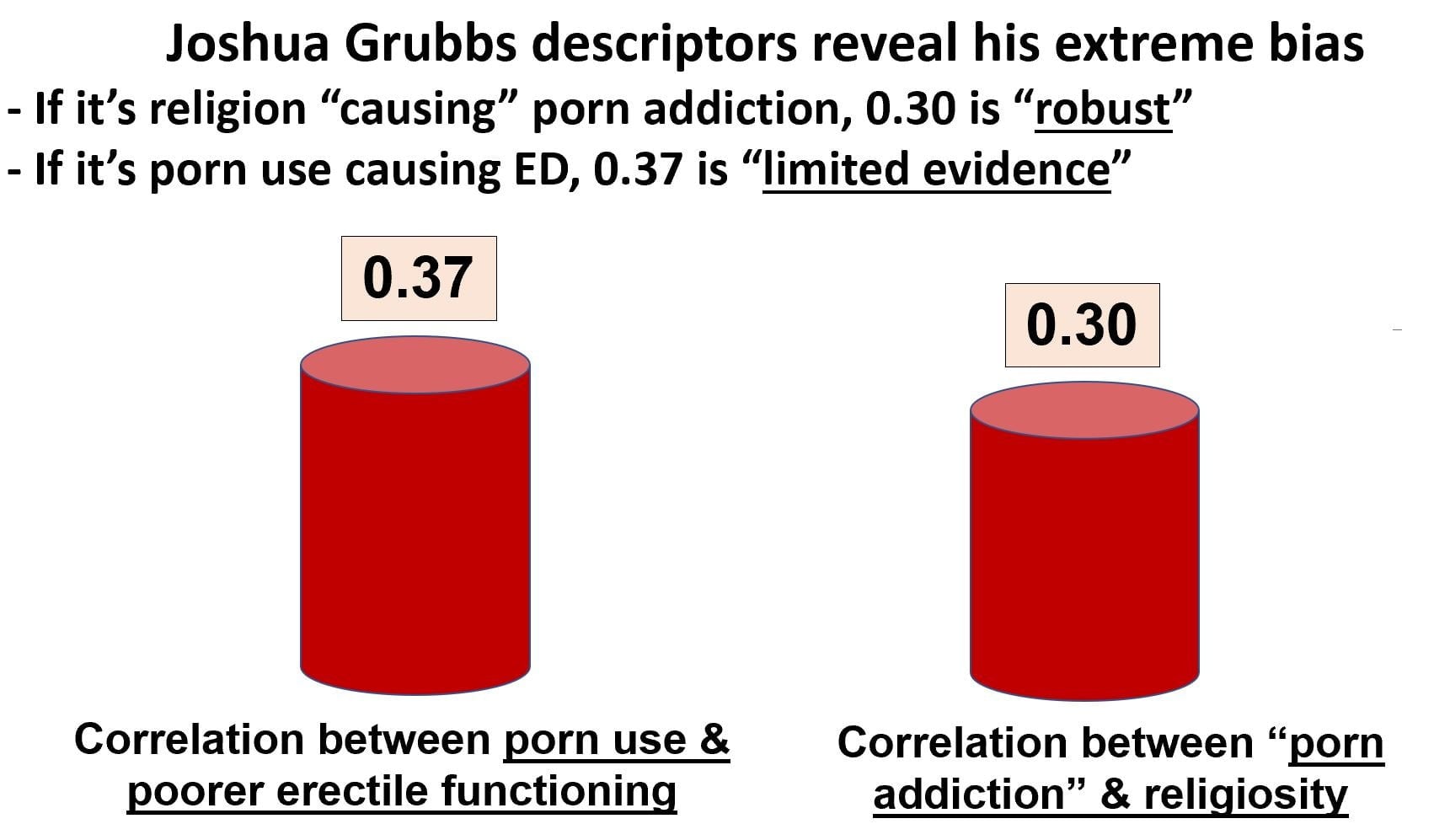
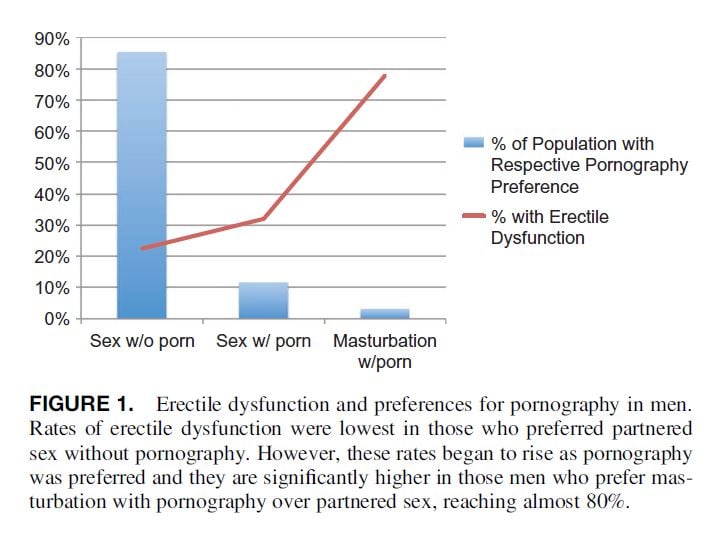
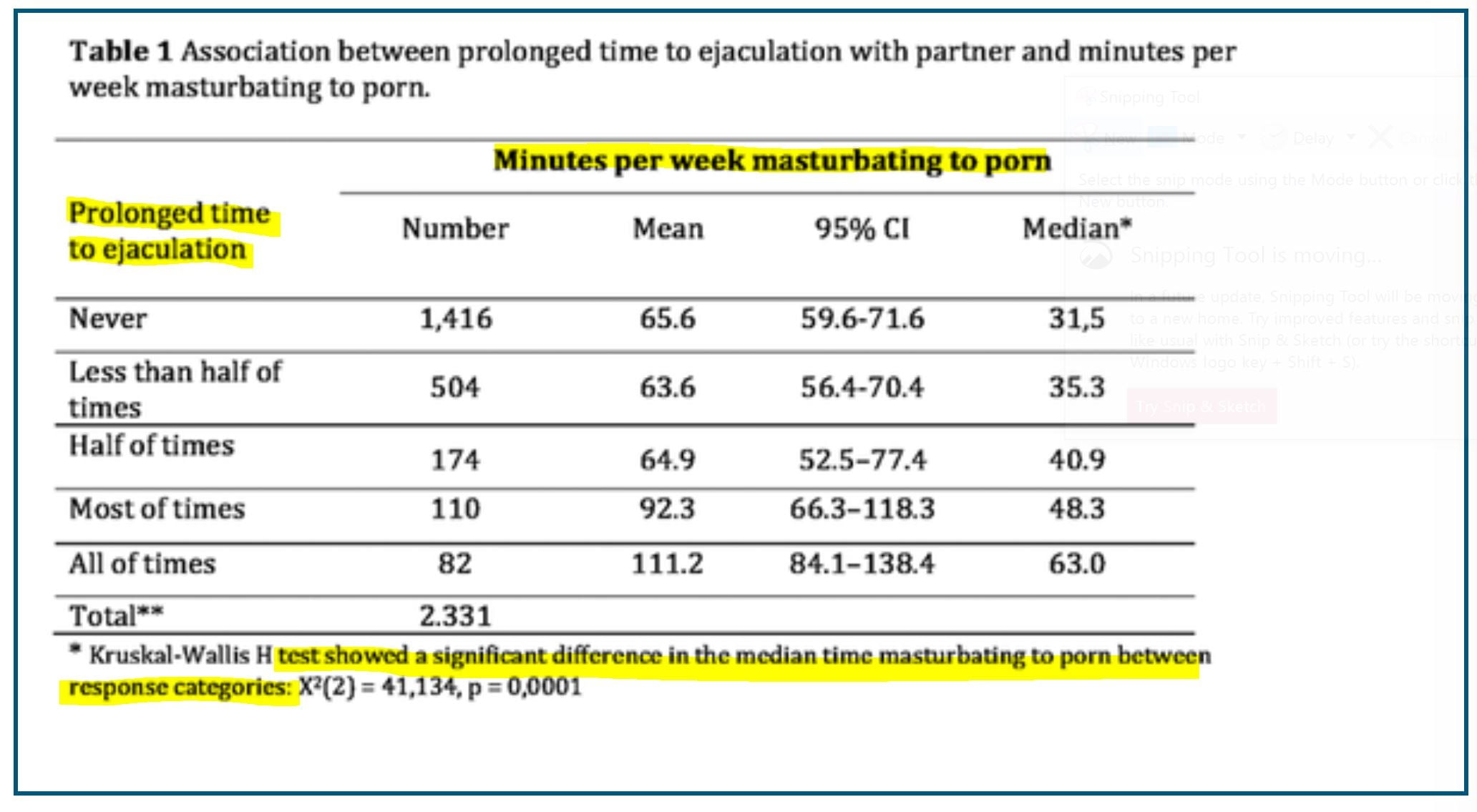
 List #2: Studies reporting links between porn use and poorer sexual or relationship satisfaction
List #2: Studies reporting links between porn use and poorer sexual or relationship satisfaction